Fast Track Immigration FTI-TTP
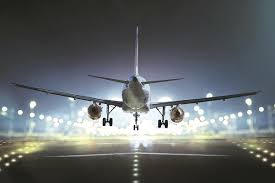
- 17 Jan 2025
In News:
The Government of India is launching the Fast Track Immigration Trusted Traveller Program (FTI-TTP) to streamline immigration at seven major airports.
Key Highlights:
- The initiative, inaugurated by Union Home Minister Amit Shah, aims to enhance the travel experience for Indian nationals and Overseas Citizen of India (OCI) cardholders.
- This comes seven months after the programme was first introduced at Indira Gandhi International (IGI) Airport, New Delhi. The airports included in this initial phase are: Mumbai, Chennai, Kolkata, Bengaluru, Hyderabad, Cochin and Ahmedabad
Objectives of FTI-TTP
- Provide seamless and secure immigration services.
- Reduce human intervention using automated e-gates.
- Align with the Viksit Bharat@2047 vision for modern infrastructure.
How the Programme Works
The FTI-TTP simplifies immigration with automated e-gates. Travellers must complete a one-time online registration to enroll. The process involves:
- Online Registration: Submit personal details and upload necessary documents via the official portal (https://ftittp.mha.gov.in).
- Biometric Submission: Fingerprints and facial images must be submitted at an airport or Foreigners Regional Registration Office (FRRO).
- Immigration Clearance via E-Gates:
- Passengers scan their boarding passes and passports at e-gates.
- Biometrics are automatically verified.
- Upon authentication, the e-gate opens, granting clearance.
Validity: Registration is valid for five years or until the registered passport expires, whichever comes first.
Who is Eligible?
The first phase of the FTI-TTP is open to:
- Indian nationals.
- OCI cardholders aged between 12 and 70 years.
- Children aged 12-18 can register using their parents’ email/phone number.
- ECR (Emigration Check Required) passport holders are not eligible.
Documents Required for Registration
- Passport-sized photograph (as per Indian passport specifications).
- Scanned copy of passport (front and back pages).
- Proof of current address.
- OCI card details (if applicable).
Key Points to Note
- Registration may take up to a month due to verification by field agencies.
- Applications with incorrect or outdated information may be rejected.
- In case of passport loss or expiry, travellers must reapply and submit fresh biometrics.
- Passports must have at least six months’ validity at the time of applying.
- For support, travellers can reach out via email at india.ftittp-boi@mha.gov.in.
Implementation Phases
The FTI-TTP will be implemented in two phases:
- Phase 1: Covers Indian citizens and OCI cardholders.
- Phase 2: Will extend to foreign travellers.
- The programme will be expanded to 21 major airports across the country.
Comparison with Similar Global Programmes
Several countries have implemented similar fast-track immigration systems:
United States: Global Entry
- Introduced in 2008.
- Offers self-service kiosks for pre-approved travellers.
- Requires background checks and in-person interviews.
United Kingdom: Registered Traveller Service
- Launched in 2015.
- Allows frequent visitors from select countries, including India, to use e-gates.
- Requires visa eligibility or multiple prior visits.
European Union: Smart Borders Initiative
- Implemented in 2016, with full deployment expected by 2024.
- Pre-registers biometric data for faster processing at Schengen Area borders.
Australia: SmartGate
- Started in 2007 for Australian and New Zealand passport holders.
- Uses automated kiosks for identity verification via passport scans and photos.
Saudi Arabia: Smart Travel System
- Launched in 2019.
- Uses automated e-gates for faster immigration clearance.
- Expanding as part of Vision 2030 to improve travel experience, particularly for Hajj pilgrims.
QS World Future Skills Index 2025
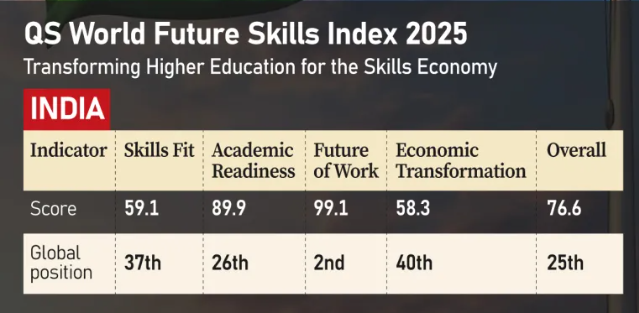
- 17 Jan 2025
In News:
The QS World Future Skills Index 2025, released by Quacquarelli Symonds (QS), evaluates countries' readiness to meet the evolving demands of the global job market. It assesses nations based on skill development, education, and economic transformation, highlighting their preparedness for emerging technologies, artificial intelligence (AI), and sustainability.
India’s Performance in the Index:
- Overall Ranking: India is ranked 25th globally, categorizing it as a “Future Skills Contender.”
- Future of Work Category: India ranked 2nd, only behind the United States, reflecting its preparedness for AI, digital, and green jobs.
- Economic Transformation: India scored 58.3, the lowest among the top 30 countries, reflecting challenges in innovation and sustainability.
- Skills Fit: India received a score of 59.1, the weakest among the top 30 nations, indicating a gap between workforce skills and industry requirements.
- Academic Readiness: India’s education system is struggling to keep pace with employer demands, necessitating curriculum reforms and stronger academia-industry collaboration.
Key Findings from the Report:
Strengths:
- Digital Readiness: India has demonstrated strong capabilities in integrating digital talent into the workforce.
- Youth Advantage: A large, young population provides a demographic dividend for sustained economic growth.
- Startup Ecosystem: India’s startup culture and government initiatives support technological advancement and innovation.
Weaknesses:
- Higher Education-Industry Gap: Mismatch between education and employer requirements, particularly in AI, green skills, and entrepreneurship.
- Limited R&D Investment: India’s research and development spending is 0.6% of GDP, far below the global average of 2.7%.
- Low Innovation in Sustainability: India scored 15.6 out of 100, ranking poorly in future-oriented innovation for sustainability.
Challenges and Concerns:
- Skilled Workforce Shortage: The National Skill Development Corporation (NSDC) estimates a 29 million skilled workforce gap in critical sectors such as healthcare, semiconductor manufacturing, and AI.
- Low Employability Rates: Only 25% of management professionals, 20% of engineers, and 10% of graduates meet global employability standards.
- Higher Education Accessibility: Many students face difficulties in accessing quality tertiary education, particularly in skill-intensive fields.
Opportunities for Growth:
- Leverage Demographic Dividend: India can capitalize on its young workforce to dominate skill-based industries while other nations struggle with aging populations.
- Policy Support:
- National Education Policy (NEP) 2020: Focuses on modular education and reskilling initiatives.
- ULLAS Program: Aims to expand lifelong learning and skill development.
- Technological Integration: Advancements in AI and digital learning can help modernize academic curricula and improve job readiness.
Recommendations for Improvement:
- Enhancing Academia-Industry Collaboration: Universities should prioritize problem-solving, entrepreneurship, and creativity to align education with employer needs.
- Increasing R&D Investment: Raising spending on research and development to promote innovation and sustainability.
- Expanding Access to Education: Bridging regional disparities in tertiary education through flexible and modular learning.
- Strengthening Policy Implementation: Ensuring effective execution of skilling programs to reduce the workforce-employability gap.
Eighth Pay Commission
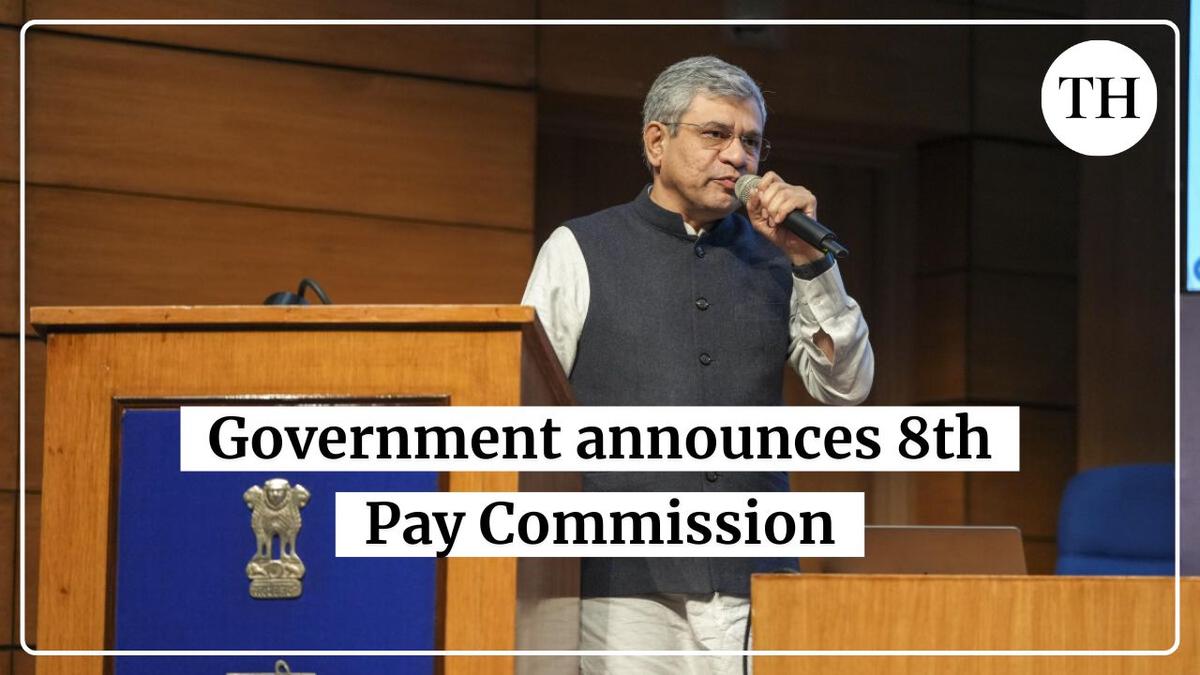
- 17 Jan 2025
In News:
The Union government has approved the constitution of the Eighth Pay Commission, benefiting 50 lakh central government employees and 65 lakh pensioners, including serving and retired defence personnel. The decision, taken ahead of the Delhi Assembly elections, aims to address long-standing demands from trade unions and employee organizations.
Key Features of the 8th Pay Commission
- Early Constitution: Although the Seventh Pay Commission's term ends in 2026, the early establishment of the Eighth Pay Commission ensures timely recommendations and implementation.
- Composition: The commission will have a Chairperson and two members, typically led by a retired Supreme Court judge.
- Terms of Reference (ToR):
- Revision of Pay: Recommend updates to salary structures and allowances.
- Addressing Pay Disparities: Resolve wage differences across various cadres.
- Market Parity: Align pay structures with industry standards.
- Pension and Retirement Benefits: Improve pension schemes and adjust them for inflation.
- Economic Impact Analysis: Assess how salary hikes contribute to economic growth.
- Stakeholder Consultations: Engage with governments and other stakeholders before finalizing recommendations.
Economic Implications of the 8th Pay Commission
- Employee Well-being: Higher wages will enhance the quality of life for government employees.
- Boost to Consumption: Increased salaries are expected to stimulate demand and support economic expansion.
- Ripple Effect on PSUs & States: Many public sector undertakings and state governments follow the central pay commission’s recommendations, potentially leading to wider economic benefits.
- Fiscal Considerations: The implementation of the Seventh Pay Commission in 2016-17 led to an expenditure increase of ?1 lakh crore. A similar rise in 2026-27 could impact fiscal space for capital expenditures.
Challenges and Concerns
- Implementation Delays: Past commissions have taken two years to submit recommendations, which could push implementation beyond 2027.
- Living Wage & Pension Issues: Existing formulas for minimum wage and pension calculations may need revision to reflect rising healthcare, education, and digital access costs.
- Financial Burden on the Exchequer: A significant increase in revenue expenditure could limit the government’s ability to invest in infrastructure and development projects.
Human Papillomavirus (HPV)
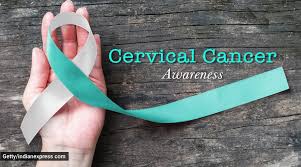
- 16 Jan 2025
In News:
January is Cervical Cancer Awareness Month, and the focus on this month underscores the critical importance of preventing cervical cancer, a disease responsible for significant mortality among women in India. At the heart of this prevention is the Human Papillomavirus (HPV) vaccine, which is recognized as the most effective measure to prevent cervical cancer and other HPV-related cancers. Despite its potential, the HPV vaccine remains out of reach for many due to its high cost and the need for greater awareness.
HPV and its Impact in India
HPV is responsible for 99.7% of cervical cancers worldwide, making it one of the primary causes of cancer in women. In India, cervical cancer is the third most common cancer among women, accounting for about 6-29% of all cancers in women. As of GLOBOCAN 2020, India alone has 20% of the global burden of cervical cancer, with over 123,000 cases and a 9.1% mortality rate.
Additionally, HPV can lead to several other cancers, including anal, vulvar, vaginal, penile, and throat cancers, making its vaccination vital for overall cancer prevention.
The HPV Vaccine: A Game-Changer
The HPV vaccine is the most effective tool to prevent infections caused by the virus and reduce the incidence of associated cancers. The vaccine works by stimulating the immune system to produce antibodies that neutralize the virus before it can cause damage. There are different types of vaccines authorized in India, including:
- Gardasil (protects against HPV types 6, 11, 16, and 18)
- Cervarix (a bivalent vaccine targeting HPV 16 and 18)
- Cervavac (India's first HPV vaccine, developed by the Serum Institute of India)
The vaccine is recommended for both males and females between 9 and 26 years, with a special focus on children aged 12 to 13 years, as the vaccine is most effective when administered before exposure to the virus. It’s also suitable for people who are immunocompromised or HIV-infected.
Challenges to HPV Vaccination in India
Despite the obvious benefits, the uptake of the HPV vaccine in India faces several barriers:
- High Costs: The price of the vaccine remains prohibitively high. For example:
- Gardasil 9 costs ?10,850 per dose.
- Gardasil 4 is priced between ?2,000 to ?4,000 per dose.
- Cervavac, the Indian-made vaccine, costs around ?2,000 per dose, which is more affordable but still out of reach for many.
- Awareness and Cultural Perceptions: There is a lack of awareness about HPV and its link to cervical cancer. Cultural factors, particularly around reproductive health, can also create reluctance to vaccinate, especially in rural or conservative areas.
- Limited Access: Currently, the vaccine is available through private practitioners and is not part of the National Immunisation Programme (NIP), limiting access to the broader population.
The Way Forward: National Immunisation and Awareness Campaigns
The National Technical Advisory Group on Immunisation (NTAGI) has recommended that the HPV vaccine be included in India’s National Immunisation Programme (NIP). This would enable broader access and affordability, especially for girls aged 9–14 years and ensure that a routine vaccination schedule is implemented at the age of 9 years. Some states like Punjab and Sikkim have already taken steps to introduce the vaccine in their state-level immunization programs.
Additionally, a nationwide HPV vaccination campaign could raise awareness about the vaccine and its benefits, helping to overcome the challenges of cost, safety concerns, and cultural perceptions. Regular cervical cancer screenings (such as Pap smears and HPV tests) should also be encouraged to identify precancerous changes early.
Cabinet Approves Establishment of ‘Third Launch Pad’ at ISRO's Sriharikota Facility
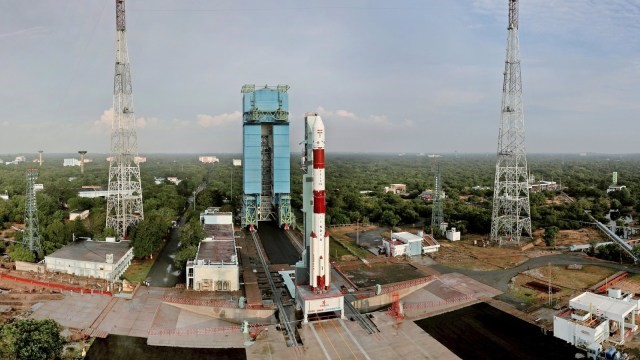
- 16 Jan 2025
In News:
The Union Cabinet, has approved the establishment of a Third Launch Pad (TLP) at the Satish Dhawan Space Centre (SDSC), located at Sriharikota, Andhra Pradesh. This project marks a significant step in enhancing India’s space capabilities and will support the Next Generation Launch Vehicles (NGLV) for ISRO’s evolving space exploration programs.
Key Features of the Third Launch Pad
The TLP will be built with an adaptable design, capable of supporting NGLV and LVM3 vehicles with semi-cryogenic propulsion. The launch pad will also serve as a standby for the Second Launch Pad (SLP) at Sriharikota. This addition will help ISRO meet its growing launch capacity needs, particularly for future human spaceflight missions and space exploration projects. It will facilitate higher launch frequencies, thus boosting the Indian space ecosystem.
Implementation Strategy and Timeline
The Third Launch Pad is planned to be developed within 48 months (4 years), with the total cost pegged at ?3984.86 Crore. The development will involve maximized industry participation and will utilize existing infrastructure at the launch complex. The project will also leverage ISRO’s experience gained from establishing the earlier launch pads.
The Importance of the Third Launch Pad
The TLP is designed to support the Next Generation Launch Vehicles (NGLV), a key part of ISRO’s vision for space exploration. The facility will not only accommodate heavier vehicles but will also ensure standby capacity for the Second Launch Pad (SLP). Its strategic location at Sriharikota ensures several advantages:
- Proximity to the Equator: This offers a substantial increase in payload capacity due to the additional push provided by the Earth's rotation.
- Safety and Accessibility: The site is free from major international maritime or airline routes, ensuring a safe flight path.
- Geographical Advantage: The launch pad is situated on the eastern coast, enabling launches in an easterly direction, maximizing the benefits of Earth’s rotational speed.
Future Plans for Indian Space Exploration
The establishment of the Third Launch Pad is crucial for the expanded vision of India’s space program, particularly in line with the Amrit Kaal period. ISRO aims to achieve ambitious milestones, such as the Bharatiya Antariksh Station (BAS) by 2035 and an Indian Crewed Lunar Landing by 2040. The NGLV will play a pivotal role in these plans, with features like:
- A three-stage vehicle and reusable first stage.
- Semi-cryogenic propulsion, using refined kerosene and liquid oxygen, which will increase payload capacity by three times at 1.5 times the cost of current vehicles.
The Role of Sriharikota in India’s Space Program
Sriharikota, the hub of ISRO’s launch operations, has been integral to India’s space exploration. Currently, the Indian Space Transportation Systems rely on two operational launch pads:
- First Launch Pad (FLP): Established over 30 years ago for PSLV and SSLV missions, FLP continues to support Polar Satellite Launch Vehicle (PSLV) and Small Satellite Launch Vehicle (SSLV) launches.
- Second Launch Pad (SLP): Built primarily for GSLV and LVM3 vehicles, SLP also serves as a standby for PSLV. Over its 20 years of operation, SLP has supported several national missions, including Chandrayaan-3, and is preparing for the Gaganyaan missions.
Does ‘Blood Money’ Have a Legal Standing?
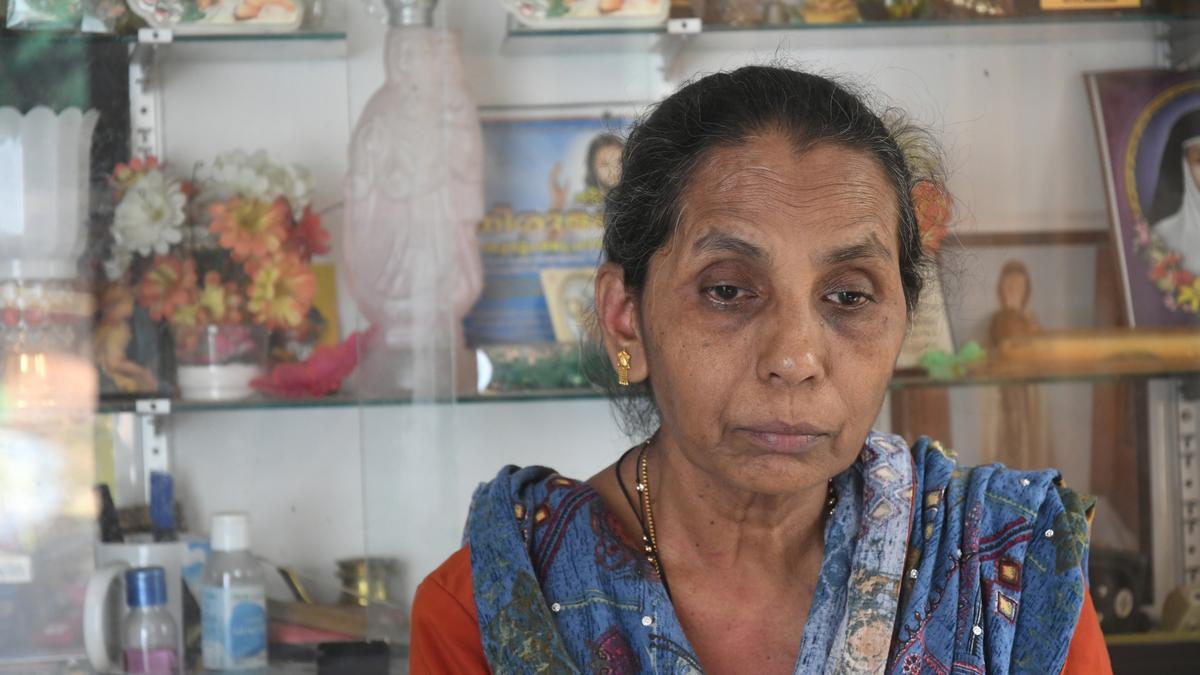
- 16 Jan 2025
In News:
The concept of ‘blood money’ has come under scrutiny recently, especially in the context of the death sentence awarded to Indian nurse Nimisha Priya from Kerala in Yemen. This case, where the focus is on monetary compensation paid to the victim’s family, has sparked renewed discussions on the practice of blood money.
What is ‘Blood Money’?
‘Blood money’ or diya is a term used in Islamic Sharia law and refers to a sum of money that the perpetrator of a crime must pay to the victim or the victim’s family, typically in cases of unintentional murder or homicide. The custom is designed to offer compensation to the family for the loss of income and alleviate their suffering, rather than placing a price on human life. This practice allows the victim’s family to forgive the accused and avoid retribution, called qisas, under the Sharia.
However, even when blood money is paid, the community or state retains the authority to impose a penalty or punishment, which could include imprisonment or other penalties, based on the seriousness of the crime.
How Does Blood Money Figure in Islamic Sharia Law?
In Islamic law, the amount of blood money varies based on several factors such as the victim’s gender, religion, and nationality. The following examples demonstrate the application of blood money in different Islamic countries:
- Saudi Arabia: In Saudi Arabia, blood money is part of traffic regulations, where the perpetrator must pay compensation to the heirs of victims who die in road accidents. While a Sharia court determines the amount of compensation, the police handle the determination of the guilty party. In workplace accidents, a special committee sets the amount. Saudi Arabia has considered reforming its laws to ensure equal compensation for men and women, Muslims and non-Muslims. However, efforts to amend the laws have not yet been fully implemented.
- Iran: In Iran, blood money differs based on the gender and religion of the victim. A woman’s compensation is typically set at half of that of a man’s. While the Supreme Court of Iran upheld a law to equalize compensation for all individuals in 2019, full implementation of the law has yet to be realized.
- Pakistan: Pakistan has incorporated provisions for diya and qisas in its legal system through the Criminal Laws (Amendment) Ordinance, 1991, aligning its practices with those of Islamic law.
- Yemen: In Yemen, parties involved can negotiate compensation, with judicial oversight ensuring fairness.
India’s Stand on ‘Diya’ and Blood Money
India does not include the provision for blood money in its formal legal framework. However, a similar concept exists in the form of plea bargaining, which allows the accused to negotiate with the prosecution in exchange for a reduced sentence or charge. Plea bargaining involves the defendant pleading guilty to a lesser offense in return for a concession, either in terms of the charges or the sentence.
Plea Bargaining in India:
Introduced under the Criminal Law (Amendment) Act, 2005, plea bargaining was added to the Code of Criminal Procedure, 1973. While it bears some resemblance to blood money in that it allows for compensation to the victim, it has significant limitations:
- It can only be applied to crimes punishable by imprisonment of less than seven years.
- It is not applicable to heinous crimes such as murder or rape, or offenses involving women or children under 14.
- The accused must voluntarily agree to plead guilty, with no coercion involved.
While plea bargaining may include compensation under Section 265E of the Code, discussions continue to refine this provision to make it more inclusive, similar to the reforms seen in Islamic countries regarding blood money.
Historical Practices Similar to Blood Money
Throughout history, various cultures have had practices similar to blood money. These include:
- Brehon Law (Ireland): In the 7th century, Brehon law established the concept of Éraic (body price) and Log nEnech (honor price). These were compensation systems that allowed for the amicable resolution of crimes, avoiding capital punishment.
- Galanas (Wales): Galanas in Welsh law determined compensation based on the victim's social status, where a blood fine was required in cases of murder, unless the killing was justified.
- Wergeld (Germany): The Wergeld system in early medieval Germany required compensation for homicide or grave offenses, often in monetary terms.
- Other Medieval States: Several medieval states established a standard payment for the victims’ families in the event of homicide or serious crimes, much like blood money.
Cases of Indians Pardoned with Blood Money
India has witnessed instances where blood money has been invoked for Indian nationals facing death sentences abroad:
- Arjunan Athimuthu (Kuwait, 2019): Arjunan’s death sentence was commuted to life imprisonment after his family paid ?30 lakh in blood money.
- Abdul Rahim (Saudi Arabia): Abdul Rahim, convicted for the murder of a Saudi boy in 2006, was pardoned after ?34 crore in blood money was paid. However, he has not been released from prison yet.
- UAE Cases:
- In 2017, 10 Indians were pardoned after paying 200,000 dirhams as blood money.
In 2009, 17 Indians on death row for the murder of a Pakistani national were pardoned after a blood money amount of nearly ?4 crore was paid.
US AI Hardware Export Restrictions and Impact on India

- 16 Jan 2025
In News:
Days before demitting office, the Joe Biden administration has released an expansive regulatory framework on the export of artificial intelligence (AI) hardware such as graphics processing units (GPUs), which could have far-reaching consequences for India’s AI ambitions.
Three-Tier Framework for AI Hardware Export Restrictions
- Tier 1: Closest US Allies
- Countries: Australia, Belgium, Canada, South Korea, UK, etc.
- No restrictions on computing power deployment.
- Minimal security requirements.
- Impact: Free access to AI technology for these nations.
- Tier 2: Majority of Countries (Including India)
- Countries: India, Brazil, South Africa, etc.
- Restrictions: Limited to importing approximately 50,000 advanced AI chips (around $1 billion) through 2027.
- Potential to Double Cap: If countries sign agreements to uphold strict security standards.
- Impact on India:
- Short-Term: Likely to fulfill current demand for 10,000 GPUs for the IndiaAI Mission.
- Long-Term: Challenges in scaling AI infrastructure, with possible delays in large AI data centers and difficulty acquiring large-scale GPUs.
- Tier 3: Countries of Concern (Restricted Nations)
- Countries: Russia, China, North Korea, Iran, etc.
- No Access to US AI Technology: Nearly total prohibition of AI tech exports.
Special Provisions for India and China
- General Validated End User (GVEU) status for India and China:
- India: Authorisation for civilian and military use, excluding nuclear applications.
- China: Only civilian use permitted under similar conditions.
Why the US Imposed These Restrictions?
- National Security: Prevent adversaries (China, Iran, Russia) from acquiring advanced AI technologies.
- US Technological Leadership: To protect US AI leadership and prevent loss of competitive edge.
- Trusted Ecosystem: Build secure and trusted AI environments for allied nations.
Impact on India
- Short-Term:
- IndiaAI Mission: Current procurement of 10,000 GPUs unlikely to be affected.
- Subsidized GPUs: Available for startups, academia, and researchers.
- Long-Term Concerns:
- Licensing Uncertainties: Possible delays in large-scale AI deployments and AI data centers.
- Impact on Large Firms: Companies like Reliance and Yotta may face challenges scaling up AI compute infrastructure.
- National AI Mission Challenges: Difficulty in acquiring enough GPUs for large-scale AI projects beyond 2027.
- Strategic Leverage: US could use AI export restrictions to negotiate trade deals or tariff adjustments.
Nvidia’s Criticism of the AI Diffusion Rules
- Overreach and Bureaucratic: Nvidia criticized the 200+ page regulatory framework as excessive, secretive, and bureaucratic.
- Harming US Competitiveness: Claims that the rules would hinder US innovation and global leadership, weakening the competitiveness of the US semiconductor and software industries.
- Contrast with Trump’s Approach: Praises the earlier Trump administration for fostering AI growth through industry competition without compromising national security.
Enforcement of the Rules
- Regulatory Control: Managed by the US Bureau of Industry and Security (BIS) under the Department of Commerce.
- Technology Access: Ensures AI chips and models do not reach adversaries or nations posing security risks.
Potential Impact on India’s AI Strategy
- AI Hardware Infrastructure: Challenges in large-scale AI hardware deployment.
- Competitive Disadvantage: Potential delays or downsizing of AI data centers could affect India’s competitiveness in AI technology.
- Strategic Partnerships: India may need to secure General National Validated End User authorizations to ensure uninterrupted access to advanced chips.
- AI Market Growth: India’s AI market projected to grow to $17 billion by 2027, with an annual growth rate of 25%-35%.
Ayushman Bharat Pradhan Mantri Jan Arogya Yojana (AB PM-JAY)
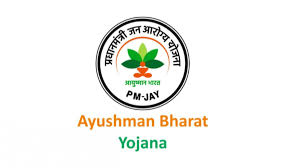
- 15 Jan 2025
In News:
Odisha has become the 34th state to implement the Ayushman Bharat Pradhan Mantri Jan Arogya Yojana (AB PM-JAY). The National Health Authority (NHA) of the Union Ministry of Health signed a Memorandum of Understanding (MoU) with the Department of Health and Family Welfare, Government of Odisha to onboard the state under the scheme.
Key Highlights:
- The scheme will be implemented alongside the existing Gopabandhu Jan Arogya Yojana in Odisha.
- It provides health coverage of Rs. 5 lakh per family per annum, with an additional Rs. 5 lakh for women members.
- Approximately 1.03 crore families will be covered under the scheme.
- Shri JP Nadda, Union Health Minister, emphasized that the scheme is the world’s largest and fastest-growing health coverage initiative.
- Shri Mohan Charan Majhi, Chief Minister of Odisha, highlighted that people will now have access to cashless treatment in over 29,000 empaneled hospitals.
About Ayushman Bharat PM-JAY:
- Launched in 2018 under the Ministry of Health & Family Welfare (MoH&FW).
- Targets 12 crore families (~55 crore beneficiaries).
- Provides cashless hospital coverage for secondary and tertiary care.
- Fully funded by the government, with cost-sharing between the Centre and states.
- Covers nearly 2,000 medical procedures, including major surgeries.
Since its inception, over 8.19 crore hospital admissions have been recorded, with ?1.13 lakh crore spent on healthcare for marginalized sections.
Commissioning of Three Indian Naval Combatants
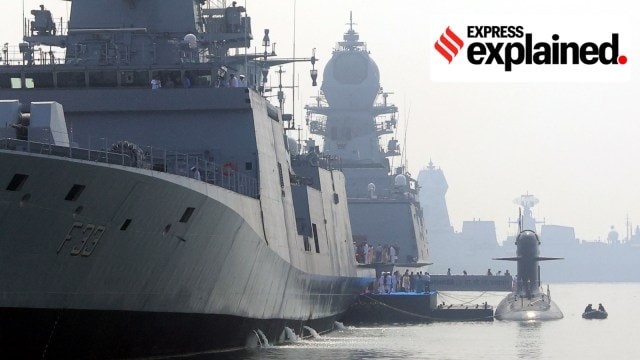
- 15 Jan 2025
In News:
In a major boost to India’s maritime defense capabilities, three frontline warships—INS Nilgiri, INS Surat, and INS Vaghsheer—were commissioned into the Indian Navy at the Naval Dockyard in Mumbai. This marks a significant step in India's self-reliance in defense manufacturing and strengthens its presence in the Indian Ocean Region (IOR).
INS Nilgiri: Project 17A Stealth Frigate
INS Nilgiri is the lead ship of the Project 17A class, an advanced version of the Shivalik-class frigates, designed for multi-mission capabilities in blue-water operations.
Key Features:
- Advanced stealth technology reducing radar and infrared signatures.
- Equipped with supersonic surface-to-surface missiles, Medium Range Surface-to-Air Missiles (MRSAM), upgraded 76 mm guns, and rapid-fire close-in weapon systems.
- Versatile roles in anti-surface, anti-air, and anti-submarine warfare.
- Constructed using integrated modular design for faster assembly.
- Other ships in this class—Himgiri, Taragiri, Udaygiri, Dunagiri, and Vindhyagiri—are under construction at Mazagon Dock Shipbuilders Limited (MDL) and Garden Reach Shipbuilders and Engineers (GRSE).
INS Surat: Project 15B Stealth Destroyer
INS Surat is the fourth and final guided missile destroyer under Project 15B, following INS Visakhapatnam, INS Mormugao, and INS Imphal. It represents an upgraded version of the Kolkata-class destroyers.
Key Features:
- AI-Enabled Operations: First Indian warship integrated with artificial intelligence solutions for enhanced combat efficiency.
- High-Speed Capability: Can exceed speeds of 30 knots (56 km/h).
- Advanced Armament: Equipped with modern surface-to-air and anti-ship missiles, torpedoes, and sophisticated network-centric warfare sensors.
- Strategic Role: Acts as a high-speed, maneuverable warship with increased strike capability and endurance.
Project 15B was initiated in 2011, with ships named after major Indian cities to symbolize national unity. These destroyers serve as critical assets in naval operations, ensuring dominance in maritime warfare.
INS Vaghsheer: Project 75 Scorpene-Class Submarine
INS Vaghsheer is the sixth and final Kalvari-class submarine built under Project 75, designed for stealth and versatile naval operations.
Key Features:
- Scorpene-Class Design: Developed in collaboration with the French Naval Group.
- Diesel-Electric Propulsion: Silent and highly maneuverable, making it one of the world’s most advanced attack submarines.
- Mission Capabilities: Specializes in anti-surface warfare, anti-submarine warfare, intelligence gathering, and special operations.
- Weapons Systems: Armed with wire-guided torpedoes, anti-ship missiles, and state-of-the-art sonar systems.
The Kalvari-class submarines continue India's legacy of submarine warfare, named after decommissioned Soviet-origin Foxtrot-class submarines post-Independence.
Iran's Capital Relocation
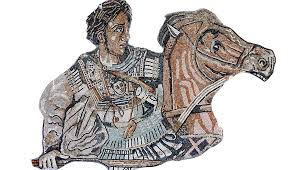
- 15 Jan 2025
In News:
Iran has announced plans to relocate its capital from Tehran to the Makran coastal region due to economic and environmental concerns.
Reasons Behind Relocation
- Overcrowding and Resource Constraints: Tehran, the capital for over 200 years since the Qajar dynasty (1794-1925), faces overpopulation, air pollution, water scarcity, and energy shortages.
- Strategic Importance of Makran: Located in Sistan and Baluchestan Province, Makran’s proximity to the Gulf of Oman enhances its potential for economic development.
- Economic and Maritime Significance: Home to key ports like Chabahar, Makran is vital for Iran’s petroleum reserves and coastal trade.
- Geopolitical Considerations: The development of Makran as an international trade hub could strengthen Iran’s economic ties with Central Asia and the Indian Ocean region.
About Makran
- Geographical Overview: A semi-desert coastal plateau shared by Pakistan and Iran, bordered by the Arabian Sea and the Gulf of Oman.
- Key Ports and Trade Routes: Gwadar (Pakistan) and Chabahar (Iran) serve as critical gateways to the Strait of Hormuz, a global oil supply route.
Alexander’s Invasion and Makran’s Historical Significance
Background of Alexander’s Invasion (327–325 BCE)
- Entry into India: Alexander, King of Macedonia (336-323 BCE), entered India via the Khyber Pass after conquering Kabul.
- Key Battles:
- Battle of Hydaspes (Jhelum): Faced and defeated King Porus, later reinstating him as an ally.
- Retreat at Hyphasis (Beas River): His army, exhausted and wary of the Nanda Empire’s strength, refused to march further east.
The Gedrosian Desert March
- Extreme Hardships: While retreating through the Makran Desert, Alexander lost a third of his army to dehydration, starvation, and exhaustion.
- Comparison with Cyrus the Great: Unlike Cyrus II, who failed to cross the desert, Alexander’s army endured the harsh terrain, albeit with heavy casualties.
Impact of Alexander’s Invasion on India
- Cultural and Trade Exchanges: Facilitated early Indo-Greek interactions and opened key trade routes linking South Asia and Europe.
- Greek Settlements: Established cities like Alexandria (Kabul) and Boukephala (Jhelum), influencing local governance and trade.
- Mauryan Expansion: Weakened regional rulers enabled Chandragupta Maurya to establish the Mauryan Empire.
- Influence on Art and Culture: Indo-Greek fusion led to the Gandhara School of Art, integrating Greek and Indian artistic traditions.
Israel-Hamas Ceasefire and Hostage Release Deal
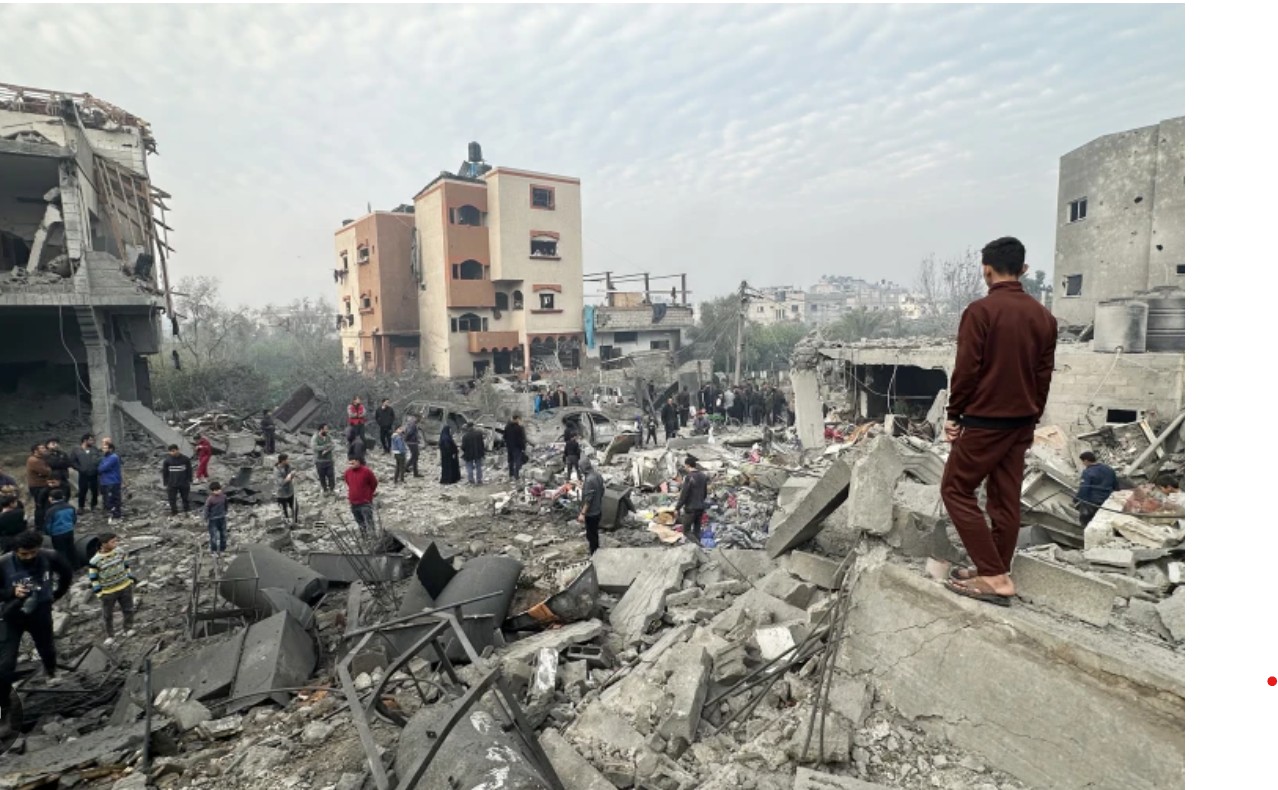
- 14 Jan 2025
In News:
Israel and Hamas have agreed on a Gaza ceasefire and hostage release deal after 15 months of war.
Key Highlights:
Ceasefire Agreement Details:
- Location: The deal was brokered in Doha, Qatar.
- Approval Process: The deal must be approved by Israel’s Cabinet to take effect.
- Mediators: The agreement was negotiated by Qatar, Egypt, and the United States, with their involvement ensuring the implementation of the deal.
Phases of the Deal:
- First Phase (42 Days):
- Release of 33 hostages by Hamas, including women, children, and elderly people.
- Hostage Exchange: Hostages will be exchanged for Palestinian prisoners in Israeli jails.
- Gaza Ceasefire and Withdrawal: Israeli forces will gradually withdraw from Central Gaza and move to the borders.
- Return of Displaced Palestinians: Displaced Palestinians will be allowed to return to Northern Gaza.
- Humanitarian Aid: 600 humanitarian aid trucks will be allowed into Gaza daily.
- Second Phase:
- Hostage Release: Negotiations will begin for the release of remaining hostages.
- Full Israeli Troop Withdrawal: Israel will fully withdraw its forces.
- Third Phase:
- Reconstruction of Gaza: Overseen by Egypt, Qatar, and the United Nations.
- Reopening of Border Crossings: For movement in and out of Gaza.
- Return of Hostage Bodies: Return of any bodies of hostages who died.
Background of the Israel-Hamas Conflict:
- Start: On October 7, 2023, Hamas launched an attack on Israel, called Operation Al-Aqsa Flood, causing significant casualties.
- Israeli Response: Israel launched Operation Iron Sword in retaliation.
- Casualties: The conflict resulted in 46,707 Palestinian deaths, mostly civilians, and 1,210 Israeli deaths.
About Gaza Strip:
- Location: A Palestinian enclave on the Mediterranean Sea, bordered by Israel and Egypt.
- Administration: The Gaza Strip is governed by Hamas since 2006.
- Movement Restrictions: Israel controls air space and shoreline, imposing restrictions. Egypt controls one border and also restricts movement.
Gaza Truce Deal:
- Nature: A proposed ceasefire to end the ongoing conflict.
- Primary Parties: Israel and Hamas.
- Supporting Nations: United States, Qatar, and Egypt.
- Significance:
- Aims to stop fighting and address the humanitarian crisis in Gaza.
- Potential to influence regional stability and Israeli politics.
- Marks an important moment in U.S. diplomacy under the Biden administration.
EmpowHER Biz – Sapno Ki Udaan
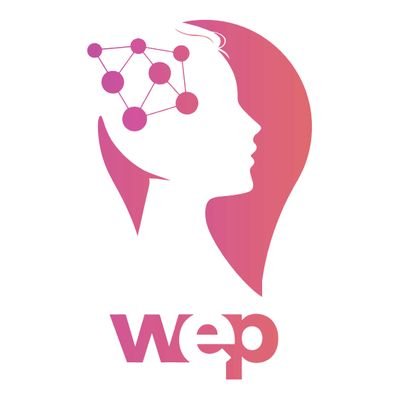
- 12 Jan 2025
In News:
The Women Entrepreneurship Platform (WEP) of NITI Aayog, in partnership with New Shop (India’s largest 24/7 convenience retail chain), launched the initiative EmpowHER Biz – Sapno Ki Udaan under the Award to Reward (ATR) program. This program aims to empower women entrepreneurs by providing them with the skills, resources, and mentorship needed to succeed in the organized retail sector. The collaboration seeks to create a robust retail ecosystem that supports women in overcoming barriers such as societal biases, limited access to financing, and a lack of mentorship.
Key Features of the Initiative:
- Target Participants: The program will select 50 women aged 18-35 through an online application process. Women from Delhi NCR, Punjab, Rajasthan, Uttar Pradesh, Haryana, Madhya Pradesh, and Gujarat will be considered.
- Top 20 Participants: The 20 best candidates will receive a 100% waiver on New Shop franchise fees, enabling them to operate their own retail businesses with reduced financial barriers.
- Program Objective: Equip women entrepreneurs with skills such as retail management, digital tools, financial literacy, and business development. Participants will also receive valuable mentorship to help them grow and scale their businesses.
- Focus on Retail: The initiative focuses on empowering women within the organized retail sector, creating a sustainable ecosystem that fosters growth and development for female entrepreneurs.
About Women Entrepreneurship Platform (WEP):
- Incubation & Transition: Established in 2018, WEP was incubated within NITI Aayog and transitioned into a Public-Private Partnership (PPP) in 2022.
- Purpose: WEP aims to empower women entrepreneurs by addressing challenges like information asymmetry and providing essential support in key areas such as:
- Access to Finance
- Market Linkages
- Training & Skilling
- Mentoring & Networking
- Compliance & Legal Assistance
- Business Development Services
- Collaboration: WEP partners with over 30 public and private sector organizations to develop scalable and impactful programs. Since 2023, the Award to Reward initiative offers a framework for stakeholders to create impactful programs for women entrepreneurs.
About New Shop:
- Business Model: New Shop operates over 200 round-the-clock convenience retail stores in high-density areas, including highways and gas stations. The company plans to expand into airports, railway stations, and other mass transit hubs.
- Franchising Vision: By 2030, New Shop aims to empower over 10,000 entrepreneurs in India through its franchising model. The partnership with WEP seeks to help women entrepreneurs access this growth opportunity.
Program Outcomes:
- Mentorship & Training: Participants will be mentored and trained on key aspects such as retail management, business development, and digital tools.
- Franchise Opportunity: Top participants will gain access to New Shop’s franchising ecosystem, providing them a ready-made business opportunity with lower entry barriers.
- Financial Assistance: The program will also provide financial resources to the women, helping them build their businesses with greater ease.
Future of Jobs Report 2025
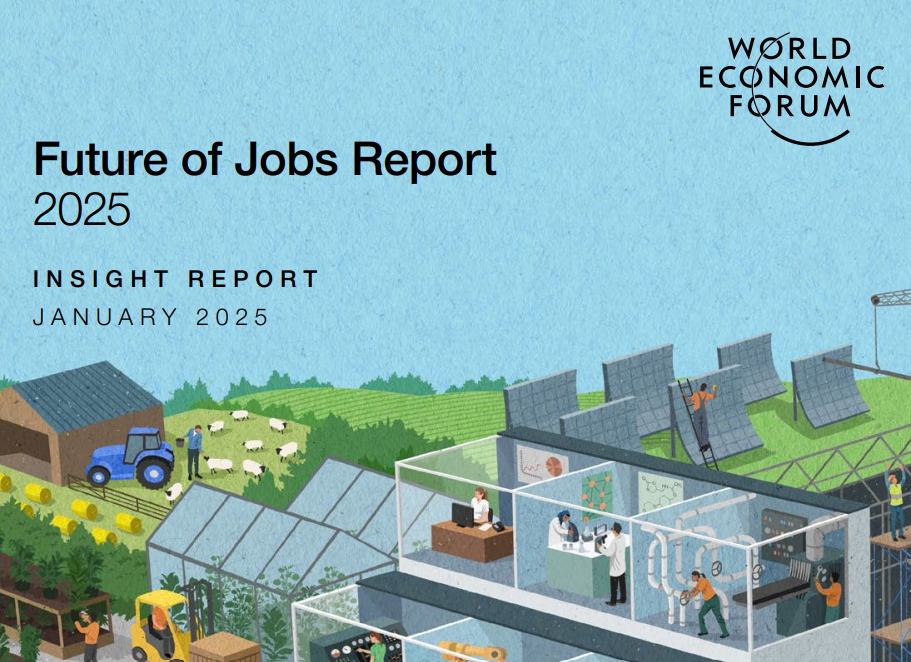
- 12 Jan 2025
In News:
The World Economic Forum's latest "Future of Jobs Report 2025" has highlighted significant trends and predictions for the global labor market by 2030.
Key Highlights:
Fastest Growing Jobs by 2030
The report identified the following jobs as the fastest-growing by 2030:
- Big Data Specialists
- FinTech Engineers
- AI and Machine Learning Specialists
- Software and Applications Developers
- Security Management Specialists
- Data Warehousing Specialists
- Autonomous and Electric Vehicle Specialists
- UI/UX Designers
- Delivery Drivers
- Internet of Things (IoT) Specialists
Job Disruption and Creation
- 22% of jobs globally will be disrupted by 2030 due to automation and technological advancements.
- 170 million new jobs are expected to be created, resulting in a net increase of 78 million jobs.
- Technological shifts, economic uncertainty, and demographic changes are expected to play significant roles in this transformation.
Skills in High Demand
- AI, Big Data, Cybersecurity: Skills related to artificial intelligence and big data are expected to see an 87% rise, while networks and cybersecurity skills are projected to increase by 70%.
- Creative Thinking, Flexibility: Skills like creative thinking, resilience, flexibility, and agility are also expected to see a significant rise, emphasizing the importance of soft skills in a technology-driven world.
Declining Jobs
The report lists the following positions as expected to decline by 2030:
- Postal Service Clerks
- Bank Tellers
- Data Entry Clerks
- Cashiers and Ticket Clerks
- Telemarketers
- Printing Workers
- Accounting and Bookkeeping Clerks
These roles are being replaced or transformed by automation and AI, which are reshaping traditional job functions.
Technological Advancements
- Digital Access: 60% of employers believe that expanding digital access will be the most transformative trend for businesses.
- AI and Robotics: Employers are investing heavily in AI, robotics, and energy technologies, creating a demand for skilled workers in these sectors.
- Energy Technologies: Jobs related to the green transition, including renewable energy and environmental engineering, will see an uptick as countries strive to meet climate goals.
Key Drivers of Change
- Technological Change: AI, machine learning, and automation will continue to reshape industries.
- Geoeconomic Fragmentation: Geopolitical tensions and economic shifts are prompting businesses to transform their models, leading to a greater demand for cybersecurity and security management roles.
- Aging Populations: The growing demand for healthcare services, especially in high-income economies, will result in more jobs in the care economy (e.g., nursing professionals, social workers).
- Green Transition: The global shift toward clean energy and environmental sustainability will create numerous opportunities for jobs in renewable energy and climate change mitigation.
Implications for India
- AI and Robotics Investment: Indian companies are leading the way in investing in AI, robotics, and autonomous systems.
- Growth Sectors: India’s rapidly developing tech sector will see a rising demand for AI, machine learning, and big data specialists.
- Disruptions in Traditional Jobs: Roles like postal clerks, cashiers, and data entry clerks in India are also expected to face significant reductions due to automation.
Challenges for Employment in India
- Skill Mismatch: There is a significant skill gap, with many workers lacking expertise in emerging fields like AI, cybersecurity, and data science.
- Digital Divide: Urban areas are adapting to new technologies faster than rural areas, which may widen employment disparities.
- Informal Sector: India’s large informal workforce faces challenges in transitioning to technology-driven jobs due to limited access to training and education.
Reskilling and Upskilling
- The WEF report emphasizes that 59% of the global workforce will need reskilling or upskilling by 2030 to remain competitive.
- Workers must adapt to new roles, especially in technology and the green transition, to meet the evolving demands of the job market.
Twigstats

- 12 Jan 2025
In News:
The tracing of genetic ancestry remains a challenging task due to the statistical similarity among populations across geographical regions. However, recent advances in genetic analysis, particularly the development of the Twigstats tool, are significantly enhancing our ability to reconstruct genetic histories at a very high resolution.
Key Insights from Genetic Research:
- Ancient DNA (aDNA): Prehistoric human ceremonial burials, mass grave mounds, and war graves are rich sources of ancient genetic material, offering key insights into population dynamics. These samples help us understand past migrations, cultural transitions, and the genetic legacy of ancient groups.
- Challenges in Ancestry Tracing:
- Populations often share many genetic similarities, complicating the task of tracing ancestry across regions.
- Ancient DNA samples are typically of lower quality compared to modern samples, limiting the precision of past genetic studies.
- The movement of genes across time and space, through processes like gene flow, adds complexity to the understanding of population ancestry.
Traditional Genetic Techniques:
- Single Nucleotide Polymorphisms (SNPs): Used to identify natural genetic variations, SNP analysis has been central to reconstructing genetic histories. However, it is limited by its reliance on high-quality samples and struggles with closely related groups.
- Haplotypes and Genealogical Trees: By analyzing shared DNA segments (haplotypes) and rare variants, researchers gain a more comprehensive understanding of population structure and ancestry, which can reveal shifts in population over time.
The Emergence of Twigstats:
- What is Twigstats?
- Twigstats is an advanced analytical tool that enhances the precision of ancestry analysis through time-stratified ancestry analysis, a method that allows for a more fine-grained look at genetic data.
- It is designed to address the limitations of traditional methods by integrating SNPs, haplotypes, and rare genetic variants, providing a more holistic view of ancestry.
- The tool is powered by statistical languages R and C++, which help researchers better manage and analyze complex genetic data.
- How It Works: Twigstats builds family trees by analyzing shared genetic mutations, identifying recent mutations that offer a clearer understanding of historical periods and events. It helps trace the evolution of populations and offers insights into their migrations, mixing, and cultural shifts.
Key Features and Impact of Twigstats:
- Time-Stratified Ancestry Analysis: Allows researchers to study how populations evolved over time, with a focus on specific historical periods.
- Enhanced Precision: Reduces statistical errors and enhances the precision of individual-level ancestry reconstruction.
- Higher-Resolution Mapping: Provides high-resolution genetic maps of migration patterns and admixture events across centuries.
Applications of Twigstats:
- Historical Case Studies: The tool has been used to study ancient genomes from Europe, particularly the Iron, Roman, and Viking Ages (500 BC to 1000 AD). It revealed the fine-scale genetic history of populations in regions like northern and central Europe, including the movement of Germanic and Scandinavian peoples.
- Viking Age Insights: Researchers were able to trace the early presence of Scandinavian-like ancestry in regions such as Britain and the Baltic before the traditionally believed start of the Viking Age. This suggests earlier interactions and migrations from Scandinavia, which aligns with historical records of Anglo-Saxon and Viking movements.
- Cultural Transitions: The analysis identified shifts in population genetics corresponding to cultural changes, such as the shift from the Corded Ware culture to the Bronze Age and the influence of the Wielbark culture.
Genetic Methods Used in the Study:
- Single Nucleotide Polymorphisms (SNPs): Commonly used to trace ancestry but requires high-quality samples.
- Haplotypes and Rare Variants: Offer more nuanced insights into population movements by considering combinations of genetic markers inherited together.
- Genealogical Tree Inference: Applied to both ancient and modern genomes, it provides detailed demographic and ancestry information, supporting the reconstruction of high-resolution genetic histories.
Case Study: India’s Genetic History (2009 Study)
- Researchers used SNP analysis to trace the genetic history of India, revealing two major ancestral groups:
- Ancestral North Indians (ANI): Genetically closer to Central Asian, European, and Middle Eastern populations.
- Ancestral South Indians (ASI): A distinct genetic group, showcasing India’s diverse population structure.
India’s First Organic Fisheries Cluster
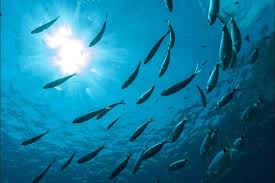
- 12 Jan 2025
In News:
The Union Minister, Department of Fisheries, Ministry of Fisheries, Animal Husbandry and Dairying Shri Rajiv Ranjan Singh inaugurated and laid the foundation for 50 key projects worth Rs. 50 crores under Pradhan Mantri Matsya Sampada Yojana (PMMSY) covering all North East Region States Except Arunachal Pradesh and Mizoram.
Key Highlights:
- Initiative: India’s first Organic Fisheries Cluster, launched under the Pradhan Mantri Matsya Sampada Yojana (PMMSY). The cluster focuses on sustainable aquaculture, promoting the production of antibiotic, chemical, and pesticide-free organic fish.
- Target Markets: Eco-conscious domestic and global markets.
Sikkim's Role as India’s First Organic State:
- Sikkim's Organic Commitment: Sikkim is the first Indian state to embrace 100% organic farming, covering 75,000 hectares of land.
- Vision: The Organic Fisheries Cluster aligns with Sikkim’s broader goal of promoting organic, sustainable agricultural practices.
Objective of Organic Fisheries Cluster:
- To prevent pollution and protect aquatic ecosystems by using ecologically healthy practices.
- Promotes sustainable fish farming methods, reducing environmental damage.
- Focus on species like amur carp and other carp varieties, aligning with the state’s success in organic farming.
Support from NABARD:
- The National Bank for Agriculture and Rural Development (NABARD) will provide financial and technical assistance.
- Key support includes:
- Infrastructure development.
- Formation of Fisheries-based Farmer Producer Organizations (FFPOs).
- Capacity building of local fishers and farmers.
PMMSY: A Comprehensive Fisheries Development Scheme:
- Investment: ?20,050 crore under PMMSY.
- Objective: To revolutionize India’s fisheries sector by promoting sustainable growth, enhancing fish production, and improving infrastructure.
- Implementation Period: FY 2020-21 to FY 2024-25.
- Key Goals:
- Boosting fish production and exports.
- Enhancing welfare of fishers and farmers.
- Promoting cluster-based development for better efficiency and competitiveness.
Cluster-Based Approach in Fisheries:
- Objective: To bring together geographically connected enterprises to enhance economies of scale.
- Impact: This approach improves financial viability, strengthens the fisheries value chain, and creates new business and livelihood opportunities.
- Types of Clusters: Includes Pearl, Seaweed, Ornamental Fisheries, Cold Water Fisheries, Organic Fisheries, and more.
Fisheries Focus in the North Eastern Region (NER):
- Fisheries Potential: The North Eastern Region (NER) has abundant freshwater resources and is a biodiversity hotspot.
- Growth: Inland fish production in the NER surged from 4.03 lakh tonnes (2014-15) to 6.41 lakh tonnes (2023-24), marking an impressive 5% annual growth.
- Investment in NER: Over ?2,114 crore invested through schemes like Blue Revolution and PMMSY.
- Key Projects:
- 50 projects worth ?50 crore to boost the region’s fisheries infrastructure, generating over 4,500 jobs.
- Projects include hatcheries, cold storage units, aquaculture parks, and fish kiosks.
India’s Global Fisheries Standing:
- India is the second-largest fish producer in the world, contributing 8% to global fish production.
- Top Rankings:
- Second in aquaculture production.
- Leading in shrimp production and exports.
- Third in capture fisheries.
Government Commitments and Schemes:
- Total Investment: Since 2015, the government has committed ?38,572 crore to fisheries development through key schemes like:
- Blue Revolution.
- Fisheries and Aquaculture Infrastructure Development Fund (FIDF).
- PMMSY.
- Pradhan Mantri Matsya Kisan Samridhi Sah-Yojana (PM-MKSSY).
- These initiatives aim to promote sustainable growth, create jobs, and enhance infrastructure in the fisheries sector.
Economic, Environmental, and Social Benefits:
- Economic Impact:
- Higher incomes for fishers and farmers through better production and export.
- Employment generation through infrastructure development.
- Environmental Impact: Reduced pollution and protection of aquatic ecosystems.
- Social Impact: Empowerment of local communities, fostering sustainable livelihoods.
Indonesia Becomes 10th Member of BRICS
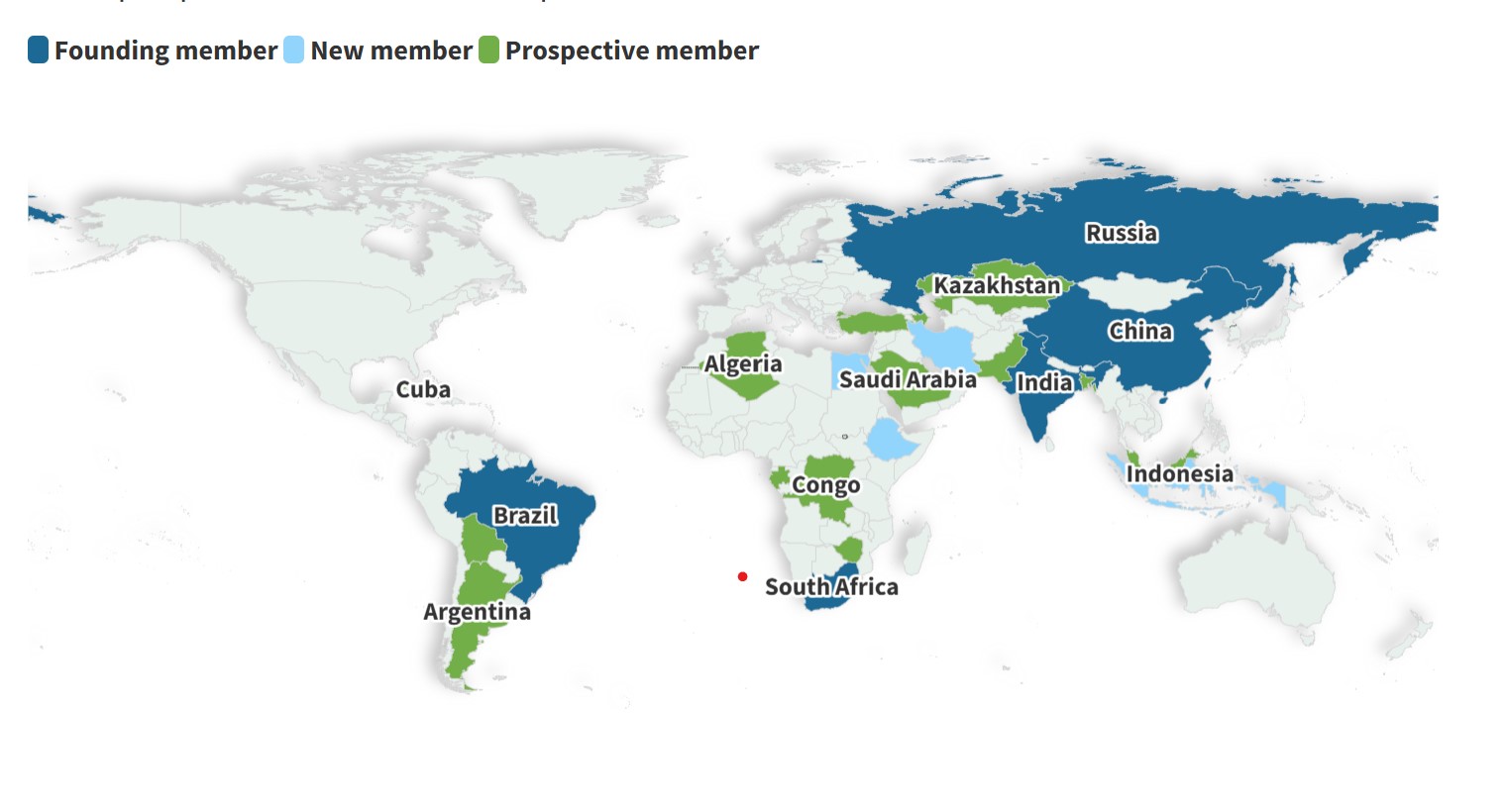
- 10 Jan 2025
In News:
In January 2025, Indonesia officially joined the BRICS group as its 10th member, signaling the expansion of this influential coalition of emerging economies. The addition of Indonesia, a Southeast Asian powerhouse, strengthens BRICS' global position and highlights the group's evolving dynamics.
BRICS Overview:
BRICS (Brazil, Russia, India, China, South Africa) is an informal intergovernmental group that fosters cooperation among major emerging economies. Initially coined as BRIC by economist Jim O'Neill in 2001, the group became BRICS in 2010 with the inclusion of South Africa. The bloc has grown steadily, with Indonesia now joining as its 10th member.
Recent Expansion:
- In 2023, invitations were extended to Saudi Arabia, Iran, UAE, Egypt, Ethiopia, and Argentina.
- By 2024, Iran, Egypt, Ethiopia, and UAE had joined as permanent members.
- Indonesia's membership was finalized in 2025, following its presidential elections and government formation.
Key Objectives of BRICS:
- Economic Growth: Promote trade, investment, and infrastructure development.
- Global Governance Reform: Advocate for equitable representation in global institutions like the UN and IMF.
- Cultural Exchange: Strengthen people-to-people connections and cultural ties.
- South-South Cooperation: Foster collaboration among developing nations.
BRICS Structure and Mechanisms:
- New Development Bank (NDB): Established in 2014, the NDB finances sustainable development projects in BRICS countries.
- Contingent Reserve Arrangement (CRA): A $100 billion safety net for financial crises.
- BRICS Academic Forum: Encourages academic collaboration across member states.
Global Influence and Economic Impact:
- Global Share: BRICS+ represents over 45% of the world’s population and 35% of global GDP (PPP-based).
- Strategic Position: The group acts as a counterbalance to the G7, challenging Western-dominated global financial systems.
- Financial Independence: BRICS aims to reduce dependence on the US dollar by facilitating local currency transactions and exploring a common currency.
- Technology Collaboration: Member countries, such as India and China, collaborate on digital payments and renewable energy technologies.
Indonesia’s Entry into BRICS:
Indonesia, the world’s fourth-most populous nation, strengthens BRICS’ representation in Southeast Asia. The country brings a robust economy and extensive trade networks, boosting the group's negotiating power. Indonesia’s membership was approved during the 2023 BRICS Summit and finalized in January 2025.
- Strategic Importance for Indonesia: The membership aligns with Indonesia's goals to enhance global cooperation, particularly with the Global South. It also reflects Indonesia's growing influence in international trade and geopolitics.
BRICS Challenges:
- Diverse Interests: Differences in economic priorities, such as India's ties with the US and Russia-China’s geopolitical rivalry, complicate consensus-building.
- Geopolitical Tensions: Disputes like the China-India border issue and Russia’s sanctions limit BRICS' ability to present a unified stance.
- Economic Sanctions and Internal Challenges: Countries like Russia face Western sanctions, while domestic issues in Brazil and South Africa divert attention from regional collaboration.
Significance of BRICS’ Expansion:
The expansion of BRICS marks a pivotal shift in global power dynamics, with a focus on South-South cooperation and equitable global governance. Indonesia’s membership further solidifies the group’s influence in Southeast Asia and adds to its efforts to challenge the dominance of Western-led financial institutions.
- Local Currency Use: The group promotes the use of local currencies for trade to reduce reliance on the US dollar.
- Global South Advocacy: BRICS champions the cause of developing nations, ensuring that emerging economies have a voice in global governance.
Recent and Upcoming BRICS Summits:
- 16th BRICS Summit (2024): Held in Kazan, Russia, with a focus on strengthening local currencies and promoting non-dollar transactions.
- 17th BRICS Summit (2025): Scheduled for July 2025 in Rio de Janeiro, Brazil, under the theme "Global South," with an emphasis on payment gateways to facilitate intra-BRICS trade.
Bharatpol
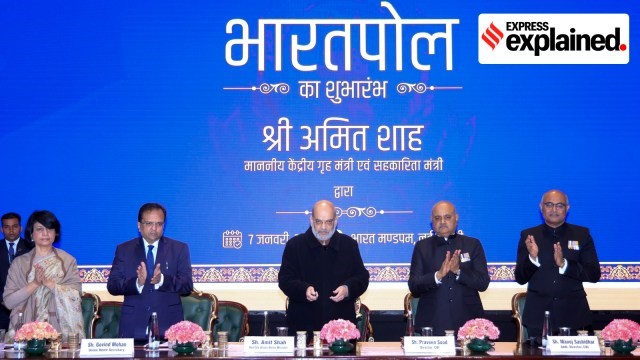
- 11 Jan 2025
In News:
Union Home Minister Amit Shah inaugurated the ‘Bharatpol’ portal, which aims to streamline international cooperation for law investigating agencies.
Key Highlights:
Bharatpol is a newly launched portal developed by the Central Bureau of Investigation (CBI) in India to facilitate faster and more efficient international cooperation between Indian law enforcement agencies and Interpol. It was inaugurated by Union Home Minister Amit Shah, to streamline the process of sharing criminal intelligence and coordinating efforts in transnational crimes like cybercrime, human trafficking, drug trafficking, financial fraud, and organized crime.
The portal aims to address the current challenges in international collaboration, which previously relied on slower communication methods such as letters, emails, and faxes, often leading to delays in investigations.
Key Features and Functions of Bharatpol:
- Unified Platform: Bharatpol integrates CBI as the National Central Bureau (NCB-New Delhi) with all Indian law enforcement agencies, from state police forces to higher authorities. This allows better coordination and quicker access to international resources.
- Simplified Request Mechanism: The portal provides a standardized method for frontline police officers to request international assistance from Interpol member countries, using templates for efficiency.
- Rapid Information Dissemination: Bharatpol enables the CBI to quickly share criminal intelligence and other pertinent information with law enforcement agencies across India, helping to tackle international criminal activities in real-time.
- Increase in Utilization of Interpol Notices: The portal makes it easier for Indian law enforcement agencies to issue and manage Red Corner Notices and other Interpol notices, which are essential tools in tracking criminals globally.
- Capacity Building and Training: Bharatpol includes resources for training law enforcement personnel, improving their ability to conduct investigations abroad and seek foreign assistance via Interpol.
How Bharatpol Works:
- Key Modules of Bharatpol:
- Connect: Facilitates the integration of Indian agencies with the Interpol NCB-New Delhi, creating a seamless communication channel.
- INTERPOL Notices: Supports the rapid issuance and processing of Interpol Notices like Red Corner Notices to locate criminals globally.
- References: Enables Indian agencies to seek and offer international assistance for investigations.
- Broadcast: Ensures quick availability of assistance requests from Interpol member countries, facilitating faster responses.
- Resources: Manages document exchanges and training materials to support the capacity-building efforts of law enforcement agencies.
Potential Benefits of Bharatpol:
- Enhanced Coordination: Bharatpol facilitates better collaboration between central, state, and Union Territory agencies, allowing for a more structured and efficient approach to international crime investigations.
- Faster Investigation: Real-time sharing of information and the use of Interpol notices will help in tracking criminals and criminal activities both in India and abroad.
- Simplified Extradition Process: By streamlining international communication, Bharatpol will assist in expediting the extradition of criminals to India for prosecution.
- Support for Transnational Crime Prevention: It will help address growing threats such as cybercrime, human trafficking, and organized crime by improving the ability of Indian law enforcement to collaborate globally.
Emergency Declared in Trinidad and Tobago
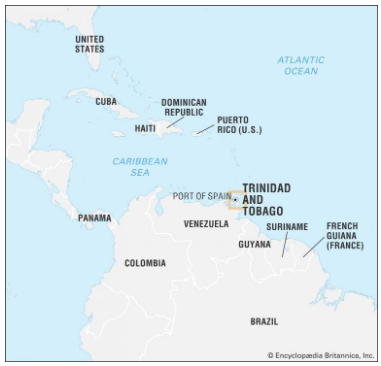
- 11 Jan 2025
In News:
- Trinidad and Tobago declared a state of emergency, in response to a surge in gang violence, which raised the annual death toll to the highest since 2013.
Trinidad and Tobago:
- Location: An island nation in the southern Caribbean, near Venezuela and Guyana.
- Capital: Port of Spain.
- Population: Approximately 1.5 million.
- Ethnic Composition: African (36.3%), Indian (35.4%), Mixed (22.8%), and others.
- Religions: Christianity (64%), Hinduism (18%), Islam (5%), and others.
- Independence: Gained from the UK on August 31, 1962, and became a republic in 1976.
- Member of: Caribbean Community (CARICOM), Commonwealth of Nations, and the United Nations.
- Major Rivers: Ortoire and Caroni.
- Geography:
- Total Land Area: 5,128 sq. km (Trinidad: 4,768 sq. km, Tobago: 300 sq. km).
- Climate: Tropical, with dry and rainy seasons.
- Highest Point: Mount Aripo.
- Natural Resource: Pitch Lake, the world’s largest asphalt reservoir.
- Mountain Range: Northern Range, part of the Andes extension.
Economic and Cultural Significance
- Exports: Major exporter of liquefied natural gas (LNG), methanol, ammonia, and petrochemicals.
- Culture: Known for Carnival, Calypso music, Soca, and the Steelpan (the only musical instrument invented in the 20th century).
- Infrastructure:
- Ports: Port of Spain, Point Lisas, Scarborough.
- Airports: Piarco International Airport (Trinidad) and A.N.R. Robinson International Airport (Tobago).
Engagement with India
- Trinidad and Tobago became the first Caribbean country to adopt India’s UPI platform.
- Both countries granted each other Most Favored Nation (MFN) status in 1997.
- Bilateral trade reached USD 368.96 million in FY 2023-24.
- The Indian diaspora constitutes about 42% of the population.
Past Emergency Declarations:
- 2014: State of emergency declared in response to gang violence.
- 2021: Emergency declared for Covid-19 restrictions.
- 2011: Limited state of emergency for drug-related crimes.
AI-Driven Inclusive Development and Economic Transformation
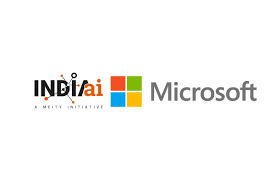
- 09 Jan 2025
In News:
IndiaAI, under the Digital India Corporation, has partnered with Microsoft to advance AI adoption in India for inclusive development and economic transformation. The collaboration focuses on skilling, innovation, AI safety, and responsible AI development, with a goal of fostering AI innovation across India, particularly in underserved rural and urban areas.
Key Highlights:
- Training 500,000 Individuals by 2026:
- Target Audience: Students, educators, developers, government officials, and women entrepreneurs.
- Goal: Empower these groups with foundational and advanced AI skills for economic opportunities and digital transformation.
- AI Catalysts (Centers of Excellence):
- Establishment of AI hubs in Tier 2 and Tier 3 cities to foster rural AI innovation.
- Objective to equip 100,000 AI innovators and developers through hackathons, community building, and creating an AI marketplace.
- AI Productivity Labs:
- Set up in 20 National Skill Training Institutes (NSTIs) across 10 states.
- Focus on training 20,000 educators and providing AI education to 100,000 students in 200 Industrial Training Institutes (ITIs).
- Support for Startups:
- Microsoft’s Founders Hub program will provide Azure credits, business resources, and mentorship to 1,000 AI startups in India, boosting innovation and growth in the Indian startup ecosystem.
- Development of Indic Language Models:
- Work on creating foundational AI models with support for Indic languages to address India’s linguistic diversity and cultural needs.
- AI Safety Institute:
- Focus on building frameworks, standards, and evaluation metrics for responsible AI development.
- Support for the creation of an AI Safety Institute in India to promote ethical and safe AI practices.
- Infrastructure & Research:
- Microsoft will also focus on enhancing cloud infrastructure and support for AI research through Microsoft Research India.
- AI-driven solutions will be developed for critical sectors like healthcare, education, and agriculture.
Investment and Strategic Goals:
- $3 Billion Investment:
- Microsoft has pledged $3 billion to expand AI and cloud infrastructure in India over the next 2 years. This investment will focus on:
- Building scalable infrastructure for AI applications.
- Enhancing cloud services and AI capabilities.
- Establishing new data centers across India, supporting the AI-first agenda.
- Microsoft has pledged $3 billion to expand AI and cloud infrastructure in India over the next 2 years. This investment will focus on:
- AI Skill Development:
- 10 million people will be trained over the next five years in AI skills, empowering the Indian workforce to adapt to AI technologies, driving job creation and economic growth.
- AI in India’s Economy:
- India aims to become a global leader in AI, with AI-powered solutions contributing to diverse sectors like finance, e-commerce, and manufacturing.
- Focus on economic growth through AI-powered industries and fostering entrepreneurship in underserved communities.
AI Technologies and Applications:
- Artificial Intelligence (AI) involves machines performing tasks that require human intelligence like decision-making, problem-solving, and learning from data.
- Machine Learning (ML): AI systems improve through data without being explicitly programmed.
- Natural Language Processing (NLP): AI systems understand and respond to human language.
- Computer Vision: AI systems analyze and interpret visual information.
- Robotics: AI powers automated tasks through robots in industries like manufacturing and healthcare.
- Cloud Infrastructure enables the scaling of AI systems:
- Cloud Computing provides on-demand access to computing power, essential for AI tasks requiring large amounts of data and processing power.
- Data Centers host AI models and data, and cloud services such as Microsoft Azure will support AI startups and businesses.
Expected Impact and Benefits:
- Inclusive AI Development: Focus on empowering women, students, and rural innovators to bridge the digital divide and promote economic empowerment.
- Startup Ecosystem: The collaboration will foster a robust AI startup ecosystem, promoting innovation and entrepreneurship through AI tools, Azure credits, and mentorship.
- Skill Development & Education: AI-driven skill training initiatives will prepare millions of individuals for the jobs of the future, particularly in the AI-driven economy, and support education reform.
- AI for Critical Sectors: Development of AI-enabled solutions to address challenges in sectors such as healthcare, education, and agriculture, driving social impact and economic growth.
AnemiaPhone

- 09 Jan 2025
In News:
AnemiaPhone, a technology developed by Cornell University researchers to accurately, quickly, and cheaply, assess iron deficiency, has been transferred to the Indian Council of Medical Research (ICMR) for integration into its programmes for anaemia, women’s health, and maternal and child health throughout the country.
Key Highlights:
- Technology Features:
- Portable, Rapid, and Affordable: AnemiaPhone is designed to detect iron deficiency efficiently at low cost.
- Requires a fingerstick (small blood sample).
- Results are available within minutes.
- Wireless: Data uploaded to a clinical database via mobile, tablet, or computer.
- Can be used by healthcare workers to assess iron deficiency on the spot and take action (guidance, triage, referral).
- Working Mechanism:
- A drop of blood is placed on a test strip.
- The reader processes the sample.
- Data is uploaded for immediate diagnosis and action.
- Test results assist in on-the-spot intervention by healthcare workers.
Anaemia and Iron Deficiency:
- Prevalence in India:
- Iron deficiency is a leading cause of anaemia.
- 50%-70% of pregnant women in India suffer from anaemia.
- 59% of women and 47% of children (6-59 months) in India suffer from anaemia (NFHS data).
- Consequences of Anaemia:
- Fatigue, dizziness, organ failure, complications in childbirth, and in severe cases, death.
- Contributes to higher maternal and child mortality rates in India.
- Impact on Health in India:
- India has one of the highest rates of anaemia in the world.
- Iron deficiency is a significant contributor to maternal deaths.
ICMR's Role and Integration into National Programs:
- ICMR and AnemiaPhone:
- The Indian Council of Medical Research (ICMR) has integrated AnemiaPhone into its Anaemia Mukt Bharat (Anaemia-Free India) program.
- The program focuses on eliminating anaemia by 2025 through screening, diagnosis, and treatment in women and children, especially in remote areas.
- Transfer of Technology:
- In November 2024, Cornell University transferred the technology to ICMR for free.
- This collaboration aims to improve health outcomes by sharing innovative health technologies.
Advantages of AnemiaPhone:
- Cost-Effective and Portable:
- Low-cost compared to traditional lab tests.
- Portable and can be used in remote and underserved areas.
- Quick Diagnosis: Results are processed in minutes, allowing healthcare workers to act without delay.
- No Need for Expensive Labs:
- Can be used at primary health centers or in door-to-door health surveys.
- Facilitates healthcare in rural or difficult-to-reach areas.
- Wireless and Easy to Use: The device is user-friendly and does not require extensive training.
Impact on Healthcare System:
- Improvement in Accessibility:
- Helps reduce the need for people to travel long distances for diagnosis, especially in rural areas.
- Ensures early diagnosis and treatment of iron deficiency and anaemia.
- Enhancing Maternal and Child Health: AnemiaPhone will contribute to reducing maternal and child mortality rates linked to anaemia.
Technology Testing and Development:
- Testing in India:
- AnemiaPhone has been tested in India and has shown accurate results in diagnosing iron deficiency.
- Single-use test strips help ensure accuracy and prevent contamination.
Global Health Context:
- Global Prevalence of Anaemia: More than 2 billion people worldwide suffer from anaemia, particularly pregnant women and young children.
- WHO’s Role: The World Health Organization (WHO) identifies anaemia as a major global health issue.
India-Malaysia Cooperation in Critical Minerals and Rare Earth Elements
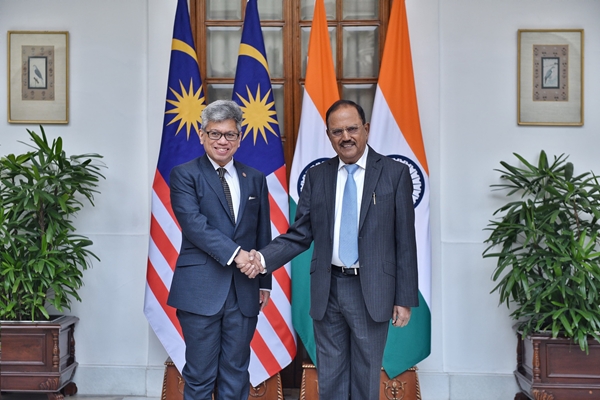
- 08 Jan 2025
In News:
- On January 7, 2025, during the inaugural India-Malaysia Security Dialogue in New Delhi, both countries agreed to enhance cooperation in critical minerals and rare earth elements (REEs).
- The meeting was co-chaired by India's National Security Adviser, Ajit Doval, and Malaysia’s Director General of the National Security Council, Raja Dato Nushirwan Bin Zainal Abidin.
- The agreement follows the upgrade of bilateral relations to a Comprehensive Strategic Partnership during Malaysian Prime Minister Anwar Ibrahim’s visit to India in August 2024.
- The dialogue also focused on other security aspects such as counter-terrorism, cyber security, and maritime security.
Importance of Critical Minerals and REEs:
-
- Critical Minerals: These are essential for a variety of industries like IT, energy, and defense. They are integral to manufacturing electric vehicle batteries, solar cells, and advanced electronics.
-
- Rare Earth Elements (REEs): Used in high-tech applications such as wind turbines, electric vehicle engines, and high-powered magnets. While their extraction is not rare, it is technically difficult due to their complex nature.
Strategic Relevance:
-
- Global Demand: The global demand for critical minerals is rising, and both countries see it as a strategic necessity to ensure a stable supply of these materials.
- Malaysia's Resources: Malaysia possesses significant deposits of non-rare radioactive earth ores, including essential REEs like Neodymium (Nd), Dysprosium (Dy), and Praseodymium (Pr). These elements are crucial in today’s technological innovations.
- India’s Dependence on Imports: India, which currently imports a substantial portion of its critical minerals, aims to diversify its supply chain by collaborating with Malaysia.
Sustainability and Ecological Accountability:
-
- Both countries recognize the environmental challenges of mining these critical resources. Malaysia aims to adopt responsible mining practices that minimize ecological harm.
- India seeks to ensure a supply chain that aligns with sustainable development goals, balancing economic needs with environmental responsibilities.
Enhancing Supply Chain Resilience:
-
- Diversification of Supply Chain: This partnership aims to reduce India’s dependency on a limited number of countries for critical minerals, enhancing resilience against global supply chain disruptions.
- Collaboration in Extraction and Processing: Both nations are exploring joint ventures in the exploration, extraction, and processing of critical minerals to boost their technological and economic standing globally.
Future Prospects:
-
- The institutionalization of this dialogue through annual meetings is expected to strengthen bilateral cooperation in the critical minerals sector.
- Increased cooperation is likely to enhance economic growth for both countries, aligning them strategically in the global minerals market as demand for these resources continues to soar.
Broader Security Cooperation:
-
- Beyond critical minerals, the India-Malaysia Security Dialogue explored enhanced collaboration in areas like counter-terrorism, cyber security, maritime security, and defense industries.
- This broadening of security cooperation complements the strategic minerals partnership, further solidifying the bilateral ties between the two nations.
Section 479 of the BNSS 2023

- 08 Jan 2025
In News:
Centre urges states, UTs to ensure undertrial prisoner relief in jails.
Key Highlights:
- Objective: The MHA has urged states and Union Territories (UTs) to implement provisions of Section 479 of the Bharatiya Nagarik Suraksha Sanhita (BNSS) 2023 to provide relief to undertrial prisoners (UTPs) in jails. This initiative aims to address issues such as long detention and overcrowding in prisons.
Key Provisions of Section 479 of BNSS, 2023
- Purpose: To offer relief to undertrial prisoners by mandating their release on bail or bond under specific conditions.
- Key Provisions:
- Subsection (1):
- Release on Bail: UTPs who have served half the maximum sentence for their offense (except offenses punishable by death or life imprisonment) are eligible for release on bail.
- Release on Bond for First-Time Offenders: First-time offenders, who have served one-third of the maximum sentence, are eligible for release on bond by the court.
- Subsection (3):
- Mandatory Application: It is the responsibility of the prison superintendent to apply to the concerned court for the release of eligible prisoners on bail or bond.
- Subsection (1):
- Superintendent’s Role:
- Prison superintendents are mandated to ensure timely applications for bail or bond are filed for eligible UTPs.
Implementation and Reporting
- MHA’s Advisory:
- On January 1, the MHA issued a letter to the Chief Secretaries, Director Generals, and Inspectors General of prisons in all states and UTs to ensure compliance with the provisions of Section 479 of BNSS.
- States and UTs were instructed to report the status of implementation in a prescribed format starting from January 1, 2025.
- Data to be Reported:
- First-Time UTPs: Number of first-time UTPs who have served one-third of their maximum sentence.
- Court Applications: Number of applications for bail filed by jail superintendents.
- Release on Bail: Number of UTPs released on bond or bail after meeting the eligibility criteria.
- Other UTPs: Number of UTPs who have completed half of their sentence, and the number of applications filed for their release.
- MHA’s Campaign:
- Launched on Constitution Day (November 26), this campaign encouraged states and UTs to identify eligible prisoners and file their bail applications, thus helping to reduce overcrowding in prisons and mitigate long-term detention.
Background and Context
- Why Section 479?
- Section 479 aims to reduce the prolonged detention of undertrials, some of whom may have already served significant portions of their maximum sentences. This will not only alleviate overcrowding in prisons but also expedite justice for prisoners who have spent extended periods in jail awaiting trial.
- Earlier MHA Initiatives:
- Prior to this directive, the MHA had issued an advisory on October 16, 2024, encouraging states and UTs to implement Section 479. A special push was also made during Constitution Day to move applications for the release of eligible prisoners.
- Expected Outcome:
- The measures are expected to significantly ease the challenges of overcrowded jails and provide timely relief to undertrials, especially first-time offenders. By enforcing these provisions, the government seeks to improve the judicial process for UTPs and contribute to a more effective and humane criminal justice system.
18th Pravasi Bharatiya Divas (PBD)
- 07 Jan 2025
In News:
The 18th Pravasi Bharatiya Divas (PBD) Convention will be held from January 8-10, 2025, in Bhubaneswar, Odisha.
Key Highlights:
- Theme 2025:
- The theme is "Diaspora’s Contribution to a Viksit Bharat", highlighting the vital role of the Indian diaspora in India's development into a prosperous and developed nation.
- Exhibitions:
- The convention will feature four major themed exhibitions:
- Vishwaroop Ram – The Universal Legacy of Ramayana: Showcasing the Ramayana’s influence through traditional and contemporary art forms.
- Diaspora’s Contribution to Technology and Viksit Bharat: Highlighting the global technological impact of the Indian diaspora.
- Spread and Evolution of the Indian Diaspora: Focused on the migration of Indians from Mandvi (Gujarat) to Muscat (Oman).
- Heritage and Culture of Odisha: A look into Odisha’s rich cultural traditions.
- The convention will feature four major themed exhibitions:
- Key Initiatives:
- Pravasi Bharatiya Express: PM Modi will flag off this special tourist train for the diaspora, covering key religious and tourist sites in India under the Pravasi Teertha Darshan Yojana.
- Pravasi Bharatiya Samman Awards (PBSA): Recognizing significant contributions by members of the Indian diaspora in various fields.
About Pravasi Bharatiya Divas (PBD):
- Origins:
- Celebrated on January 9 each year, marking Mahatma Gandhi's return to India from South Africa in 1915, symbolizing the contributions of migrants.
- First held in 2003, the event became biennial in 2015.
- Objectives:
- Recognizes the contributions of the Indian diaspora to India’s growth.
- Fosters engagement between India and its global diaspora.
- Strengthens India’s relations with host countries and promotes understanding of India’s culture and achievements.
Contributions of the Indian Diaspora to a Viksit Bharat:
- Economic Growth:
- The diaspora plays a pivotal role through remittances, investments, and connecting Indian businesses to global markets.
- Example: The development of a thorium-based fuel by a U.S.-based NRI is a significant step toward clean nuclear energy in India.
- Global Trade Linkages:
- Facilitating partnerships, investments, and knowledge exchange to expand India’s trade base and global market presence.
- Supporting Innovation: Diaspora-driven collaborations in emerging markets boost India’s entry into high-growth sectors, enhancing the country's development prospects.
- Cultural Contributions: Indian diaspora members serve as cultural ambassadors, promoting Indian traditions, art, and heritage globally (e.g., Diwali recognized as a public holiday in several U.S. states).
Challenges Faced by the Indian Diaspora:
- Cultural Integration: Struggles with balancing cultural identity and integrating into host societies can lead to alienation.
- Political and Religious Issues: Increasing politicization and religious biases, especially against Hindus and Sikhs, in countries like the USA and Europe.
- Legal and Citizenship Issues: Complicated visa statuses, restrictive immigration laws, and issues like the H-1B visa challenge the diaspora, despite their significant contributions.
- Remittance Challenges: Economic instability, exchange rate fluctuations, and banking hurdles affect the regular flow of remittances to India, impacting families dependent on them.
Government Initiatives for the Diaspora:
- National Pension Scheme for NRIs
- Overseas Citizenship of India (OCI) Card Scheme
- Pravasi Bhartiya Kendra
- Indian Community Welfare Fund (ICWF)
Pig-Butchering Scam
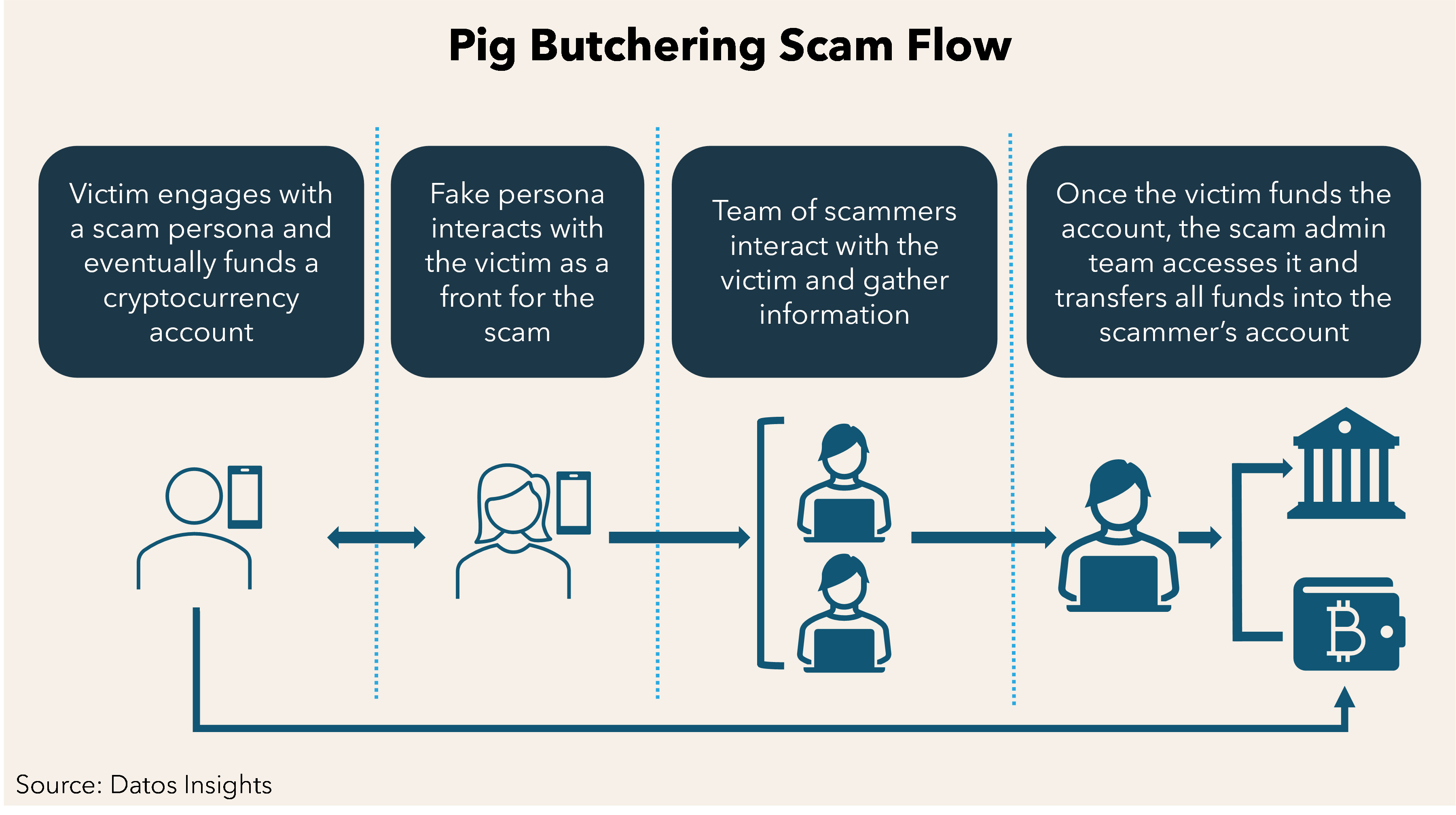
- 07 Jan 2025
In News:
In its annual report, the Union Home Ministry has warned the public against getting trapped in organised 'pig-butchering scams'.
Key Highlights:
- What is it?
- The Pig-Butchering Scam is a sophisticated form of cybercrime in which fraudsters deceive victims into investing in fake online trading platforms. The term "pig-butchering" is derived from the analogy of "fattening up" victims before stealing their money, much like preparing a pig for slaughter.
- How it works:
- Initial Contact: Scammers typically reach out to victims through social media platforms, dating apps, or deceptive ads on websites like Google and Facebook.
- Building Trust: Fraudsters create false friendships, using these connections to lure victims into investing in fake online trading apps. Cryptocurrency investments are often involved due to the ambiguity in the crypto market.
- The Scam: Victims are shown fabricated profits to encourage further investment. However, when they try to withdraw their funds, the money is stolen, and they realize the trading platform was fake.
- Features of the Scam:
- Use of fraudulent online trading platforms
- Fabricated blockchain transactions, making fund recovery nearly impossible
- Reliance on victims’ desire for quick financial gains
- Linked to money laundering and cyber slavery in some cases
- Origin of the Scam:
- The scam first appeared in China in 2016, where it was referred to as “sha zhu pan” (translated as "killing pig game").
- It is a form of Ponzi scheme, wherein organized scammers exploit victims by using fake online identities and offering false investment opportunities.
- How Cybercriminals Lure Victims:
- The scammer (host) contacts potential victims via social media, dating apps, or deceptive online advertisements.
- They build trust with the victim, enticing them into exploring online investments and cryptocurrency trading, often capitalizing on the lack of clarity in the crypto space.
- The victim is then persuaded to invest larger amounts in fake trades, believing they are making real profits.
- How the Scam is Executed:
- The scammer uses fake online trading platforms to create the illusion of profit.
- After building the victim’s confidence, the fraudster encourages larger investments.
- When victims try to withdraw their funds, they realize their money is gone, often with blockchain transactions making it nearly impossible to trace or recover the funds.
- Statistics on Cybercrime in India:
- In March 2024, the National Cybercrime Threat Analytical Unit recorded over 37,500 complaints related to cybercrime.
- The highest number of complaints (42%) were associated with WhatsApp (14,746), followed by Telegram (7,651), Instagram (7,152), Facebook (7,051), and YouTube (1,135).
- Union Home Ministry’s Response:
- The MHA has flagged pig-butchering scams as a global phenomenon that could involve large-scale money laundering and cyber slavery.
- The Ministry is collaborating with Google for intelligence sharing to flag suspicious digital lending apps and other forms of fraud.
- The Indian Cyber Crime Coordination Centre is working on capacity building to combat such scams and improve the response to cybercrimes.
Chhattisgarh’s Link between Forest Ecosystem and Green GDP

- 06 Jan 2025
In News:
In a first, the Chhattisgarh state has introduced an innovative plan that connects the ecosystem services of its forests with the Green Gross Domestic Product (Green GDP).
Key Highlights:
Chhattisgarh's Green GDP Initiative:
- First State in India to link forest ecosystem services with Green GDP.
- Forests cover 44% of Chhattisgarh's land area, playing a vital role in climate change mitigation.
- Key forest products (tendu leaves, lac, honey, medicinal plants) contribute significantly to the rural economy.
Green GDP:
- Definition: An adjustment of traditional GDP that accounts for environmental costs like resource depletion and ecosystem degradation.
- Formula:
- Green GDP = Net Domestic Product (NDP) − (Cost of Resource Depletion + Ecosystem Degradation)
- NDP = GDP − Depreciation of Produced Assets.
Importance of Green GDP:
- Traditional GDP overlooks the environmental cost, treating activities like deforestation as economic gains.
- Green GDP adjusts for sustainability, ensuring long-term economic growth aligns with environmental preservation.
Global Context & Initiatives:
- SEEA (System of Environmental-Economic Accounting): Developed by the UN to track economic-environment relationships.
- WAVES: World Bank initiative integrating natural capital into national economic accounts.
- Bhutan’s GNH: Emphasizes ecological sustainability in development.
Benefits of Green GDP for Chhattisgarh:
- Promotes sustainable development by integrating economic and environmental goals.
- Climate Change Mitigation: Forests help absorb CO2, playing a key role in carbon sequestration.
- Biodiversity Conservation: Supports sustainable use of resources, preserving ecosystems.
- Cultural Integration: Acknowledges forests' cultural and spiritual importance to local tribal communities (e.g., sacred groves).
Key Features of the Initiative:
- Valuing Ecosystem Services: Includes clean air (CO? absorption), water conservation, and biodiversity.
- Eco-tourism Promotion: Developing jungle safaris and national parks, boosting local employment.
- Scientific Assessments: Employing experts to quantify forest contributions to the economy.
Challenges of Green GDP Framework:
- Valuation Complexity: Difficult to assign monetary value to non-market environmental benefits like biodiversity.
- Data Gaps: Lack of comprehensive data on environmental degradation and resource usage.
- Implementation: Requires significant changes in accounting systems and policymaking.
- Forest Definition: Plantations like oil palm may be counted as forests, misleading environmental assessments.
- Political Resistance: States may manipulate data to secure funding, prioritizing plantations over natural forests.
- Local Integration: Difficulties in involving local bodies like Panchayats due to literacy and awareness gaps.
Future of Green GDP:
- Sustainable Resource Use: Encourages responsible consumption and production, aligning with SDG 12.
- Climate Action: Contributes to the reduction of fossil fuel reliance and promotes renewable energy, aligning with SDG 13.
- Green Investments: Stimulates green technologies and industries, fostering sustainable economic growth (SDG 8).
LEADS 2024 Report
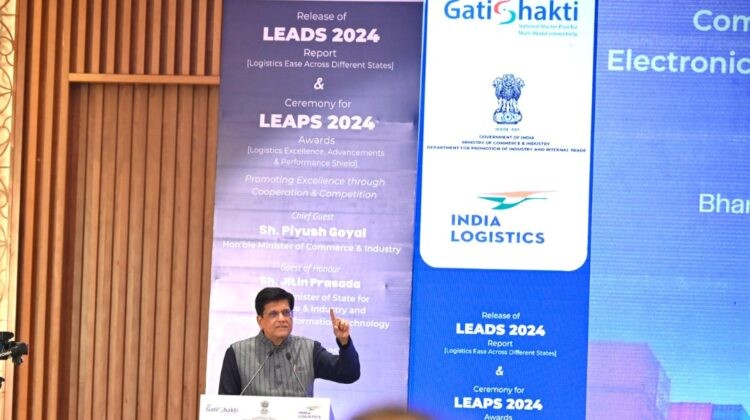
- 06 Jan 2025
In News:
- Launch of the Logistics Ease Across Different States (LEADS) 2024 report and the Logistics Excellence, Advancement, and Performance Shield (LEAPS) 2024 awards in New Delhi.
Key Highlights:
- Objective of LEADS 2024 Report:
- Evaluate logistics performance across Indian states and union territories.
- Provide actionable insights for logistics reforms to foster competitive federalism.
- Assess logistics infrastructure, services, regulatory environment, and sustainability efforts.
- Performance Evaluation:
Region Achievers Fast Movers Aspirers
Coastal States Gujarat, Karnataka, Maharashtra, Odisha, Tamil Nadu Andhra Pradesh, Goa Kerala, West Bengal
Landlocked States Haryana, Telangana, Uttar Pradesh, Uttarakhand Bihar, Himachal Pradesh, Madhya Pradesh, Punjab, Rajasthan Chhattisgarh, Jharkhand
North-Eastern States Assam, Arunachal Pradesh Meghalaya, Mizoram, Nagaland, Sikkim, Tripura Manipur
Union Territories Chandigarh, Delhi Dadra and Nagar Haveli & Daman and Diu, Jammu and Kashmir, Andaman and Nicobar Islands, Ladakh
Lakshadweep, Puducherry
- Key Remarks:
- Action Plans for Better Logistics: States should develop regional and city-level logistics plans, including for last-mile connectivity, to attract investments.
- Green Logistics: Advocate for sustainable logistics practices to ensure environmentally responsible growth.
- Public-Private Partnerships (PPP): Encourage PPPs to promote multi-modal hubs and streamline logistics infrastructure.
- Technological Integration: Push for the adoption of Artificial Intelligence, Machine Learning, and Data Analytics to enhance efficiency in logistics operations.
- Skill Development & Gender Inclusivity: Focus on workforce inclusivity and skill development to boost sectoral growth. Promote gender diversity in logistics.
- LEAD Framework: Urge logistics sectors to embrace the LEAD framework (Longevity, Efficiency, Accessibility, Digitalisation) for transformation.
- LEAD Framework and Recommendations:
- Longevity, Efficiency, and Effectiveness: Improve long-term logistics strategies.
- Accessibility and Accountability: Ensure better reach and transparent logistics practices.
- Digitalisation: Enhance digital transformation across logistics processes.
- About LEADS:
- Full Form: Logistics Ease Across Different States.
- Launched: 2018 by the Department for Promotion of Industry and Internal Trade (DPIIT), Ministry of Commerce and Industry.
- Purpose: To assess and improve logistics infrastructure and services across Indian states and UTs.
- Methodology: Based on over 7,300 responses from a pan-India survey and inputs from over 750 stakeholder consultations.
- LEAPS 2024 Awards: Recognized excellence in the logistics sector across categories such as air, rail, road, maritime freight service providers, startups, MSMEs, and educational institutions.
- PM GatiShakti Course: Launched a 15-hour online course on “PM GatiShakti Concept for Efficient Infrastructure Planning and National Development”, hosted on iGOT Karmayogi platform and UGC SWAYAM portal.
- Logistics Cost Framework Report: Unveiled a report on the logistics cost framework, aiming to accurately estimate logistics costs in India through a hybrid methodology, incorporating both EXIM and domestic cargo data.
- Significance of LEADS:
- Provides critical insights into logistics performance, helping States and UTs to improve infrastructure, services, and regulatory practices.
- Plays a key role in India's vision of becoming a $32 trillion economy by 2047 by improving logistics efficiency, sustainability, and global competitiveness.
Human Metapneumovirus (HMPV)
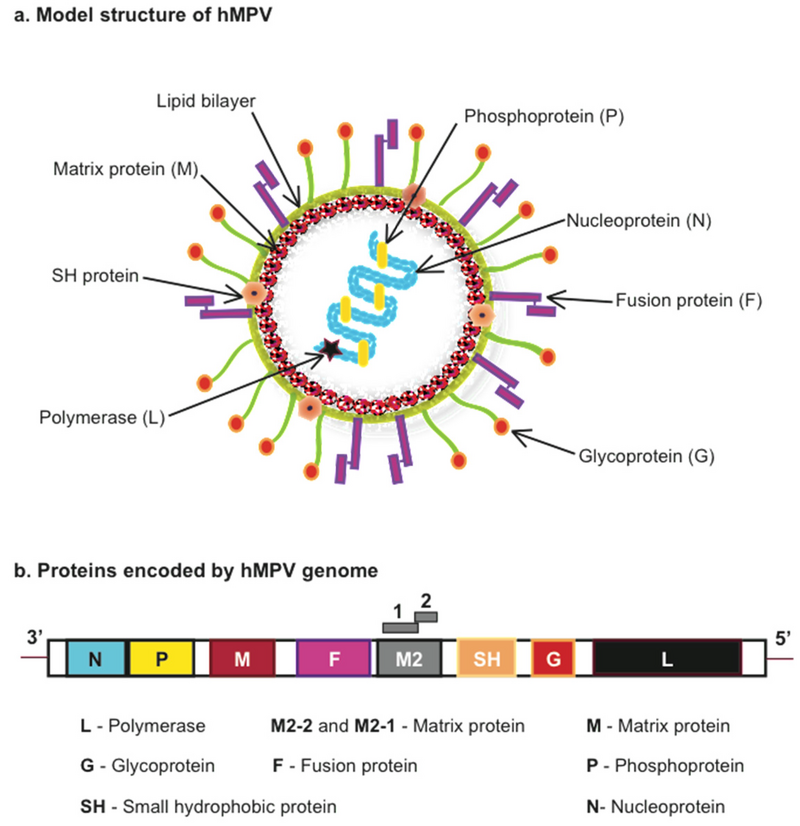
- 06 Jan 2025
In News:
Five years after the COVID pandemic, China is experiencing a surge in HMPV cases, particularly in children under 14 years of age
Key Highlights:
- What is HMPV?
- A respiratory virus from the Pneumoviridae family, discovered in 2001.
- Causes both upper and lower respiratory tract infections, similar to the common cold or flu.
- Origin and Discovery:
- Identified in the Netherlands in 2001 through genomic sequencing of respiratory samples.
- Risk Groups:
- Children under 5 years, especially infants.
- Elderly individuals (65+).
- Immunocompromised persons and those with chronic respiratory conditions (e.g., asthma).
- Symptoms:
- Common: Cough, runny nose, fever, sore throat.
- Severe: Wheezing, shortness of breath, potentially leading to bronchitis or pneumonia.
- Incubation Period: 3-6 days.
- Transmission:
- Spread via droplets from coughing or sneezing.
- Close contact (e.g., handshakes, hugs).
- Contaminated surfaces, touching face after contact.
- Treatment:
- No specific antiviral treatment or vaccine available.
- Symptom management: hydration, rest, OTC medications for fever and congestion.
- Severe cases may require hospitalization (oxygen therapy, IV fluids).
- Diagnosis:
- NAATs (Nucleic Acid Amplification Tests): Detect viral genetic material.
- Antigen-based immunoassays: For severe cases or outbreaks.
- Complications:
- Can lead to bronchiolitis, bronchitis, pneumonia, asthma, or COPD flare-ups.
- Risk of ear infections (otitis media) in some cases.
- Prevention:
- Hygiene: Regular handwashing, covering coughs/sneezes, maintaining personal hygiene.
- Physical Distancing: Avoid close contact, wear masks in crowded settings.
- Caution for Vulnerable Groups: Extra care for individuals with chronic respiratory conditions.
Global Situation:
- China: Experiencing a rise in HMPV cases, particularly among children under 14 years.
- India: No reported cases yet, but monitoring the situation closely.
Key Facts:
- HMPV is a winter virus commonly seen in colder months (winter and early spring).
- Estimated 10%-12% of respiratory illnesses in children are caused by HMPV.
- The virus is part of the Pneumoviridae family, alongside respiratory syncytial virus (RSV), measles, and mumps.
No specific antiviral treatment or vaccine for HMPV; antibiotics are ineffective.
National Sports Awards 2024
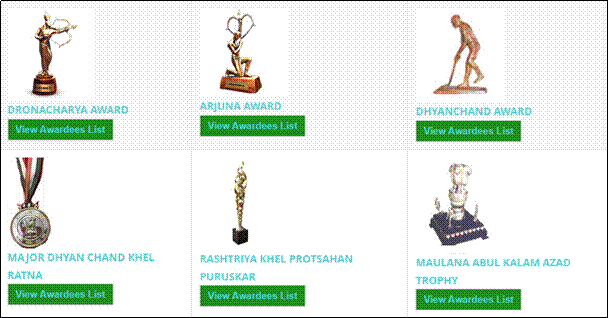
- 06 Jan 2025
In News:
The National Sports Awards 2024 were recently announced by the Ministry of Youth Affairs & Sports to celebrate excellence in Indian sports.
Key Highlights:
Major Dhyan Chand Khel Ratna Award
- This is India's highest sporting honor, renamed in 2021 after hockey legend Major Dhyan Chand.
- It’s awarded for exceptional performance in sports over a four-year period.
- 2024 Winners:
- Gukesh D (Chess)
- Harmanpreet Singh (Hockey)
- Praveen Kumar (Para-Athletics)
- Manu Bhaker (Shooting)
- The award includes a cash prize of Rs 25 lakh.
Arjuna Award
- Recognizes outstanding performance in sports over the previous four years and attributes like leadership, discipline, and sportsmanship.
- 2024 Winners: Various athletes across multiple disciplines received this honor.
Arjuna Award (Lifetime)
- Given to retired athletes who have not only excelled during their careers but also contributed to the promotion of sports post-retirement.
- 2024 Winners:
- Shri Sucha Singh (Athletics)
- Shri Murlikant Rajaram Petkar (Para-Swimming)
Dronacharya Award
- Given to coaches who have made a consistent and significant contribution by guiding sportspersons to excel at international events.
- The award includes a bronze statue of Dronacharya, a certificate, and a cash prize.
Maulana Abul Kalam Azad (MAKA) Trophy
- Awarded to the top-performing university in the Khelo India University Games.
- 2024 Winner: Chandigarh University.
Rashtriya Khel Protsahan Puruskar
- Recognizes individuals or organizations for their contribution to the promotion and development of sports.
- 2024 Winner: Physical Education Foundation of India.
These awards were selected by a committee led by Justice (Retd.) V. Ramasubramanian and include eminent sportspersons, journalists, and sports administrators. The winners will receive their awards from the President of India, marking a prestigious moment in Indian sports.
Rabbit Fever
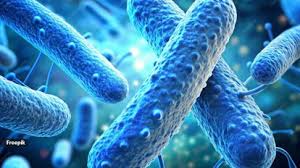
- 05 Jan 2025
In News:
Tularemia, commonly known as "rabbit fever," is a rare but highly infectious bacterial disease caused by Francisella tularensis. Though uncommon, it can lead to severe health complications if left untreated. Over recent years, cases of tularemia have been on the rise in the United States, drawing attention to the broader environmental and epidemiological factors influencing the disease’s spread.
Rising Incidence of Tularemia
Between 2011 and 2022, the United States saw a 56% increase in the annual average incidence of tularemia infections compared to the previous decade, according to the Centers for Disease Control and Prevention (CDC). Vulnerable populations include children aged 5 to 9, older men, and individuals of American Indian or Alaska Native descent. The increasing number of reported cases highlights the growing concern over this disease, despite its rarity.
Transmission Pathways
Tularemia is primarily transmitted through:
- Direct Contact with Infected Animals: Common carriers include rabbits, hares, and rodents, particularly those infected with Francisella tularensis. This presents a risk for individuals working closely with wildlife, such as hunters.
- Insect Bites: Ticks, especially in regions with high tick populations, and deer flies can spread the disease.
- Contaminated Food or Water: Consuming undercooked meat from infected animals or untreated water can lead to infection.
- Inhalation of Contaminated Dust or Droplets: This is a potential risk in agricultural or laboratory settings and can result in pulmonary tularemia.
Contributing Factors to the Rise in Cases
Several factors contribute to the increasing prevalence of tularemia:
- Climate Change: Rising temperatures are increasing tick activity and extending breeding seasons, allowing the bacteria to spread more easily.
- Habitat Encroachment: Deforestation and increased human interaction with wildlife are amplifying exposure to infected animals.
- Improved Diagnostic Tools: Advances in surveillance and testing methods have made it easier to detect tularemia, leading to more reported cases.
Early Symptoms and Diagnosis
Tularemia symptoms can vary depending on the route of infection. Symptoms typically appear 3 to 5 days post-exposure and may include:
- Sudden high fever (up to 104°F or 40°C)
- Chills, fatigue, and body aches
- Swollen lymph nodes, especially near the site of infection (e.g., under the arms or in the groin)
There are four primary forms of tularemia:
- Ulceroglandular: Characterized by skin ulcers and swollen lymph nodes.
- Glandular: Swollen lymph nodes without ulcers.
- Pneumonic: Lung infection, often resulting from inhalation.
- Typhoidal: A more systemic form, with symptoms like fever and abdominal pain.
Differentiating tularemia from other conditions such as flu, pneumonia, or lymphadenitis is key for diagnosis. A skin ulcer or swollen lymph nodes in individuals with recent exposure to wildlife or ticks is a critical diagnostic clue.
Treatment and Prognosis
Tularemia is treatable with antibiotics. First-line treatment includes streptomycin or gentamicin, while doxycycline or ciprofloxacin may be used for milder cases. Treatment typically lasts 10 to 21 days, and when initiated promptly, the disease has a high recovery rate and minimal complications. However, untreated cases can lead to chronic infections, lung abscesses, pneumonia, or severe sepsis, with mortality rates of 1-2% under treatment. Untreated severe cases can result in mortality rates between 30% and 60%.
Tularemia in India: A Potential Concern?
Tularemia is extremely rare in India, mainly due to the country's differing ecological conditions and limited interaction with the primary reservoirs of Francisella tularensis. However, awareness remains crucial, especially for individuals traveling to endemic regions or working in wildlife settings. Despite its rarity in India, the rising global incidence and changing environmental factors warrant continued vigilance.
Torrijos-Carter Treaties
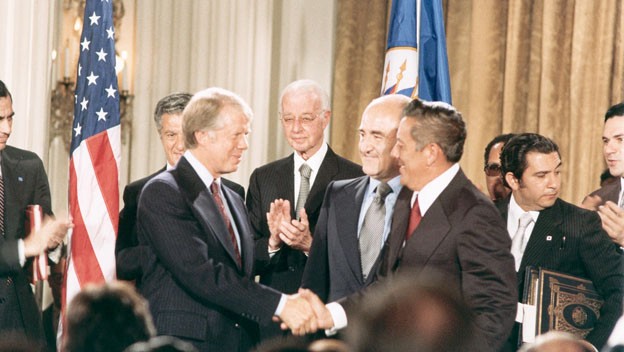
- 04 Jan 2025
In News:
Recently, Donald Trump threatened to take back the Panama Canal, calling the transfer treaty “foolish”.
Why Trump Called the Panama Canal Transfer 'Foolish'?
- Transit Fees:
- Trump expressed frustration over high transit fees imposed by the Panama Canal Authority (ACP) on U.S. vessels.
- In 2023, due to droughts affecting Lakes Gatun and Alhajuela (which are crucial for canal operations), the ACP reduced crossing slots by 36%, leading to an increase in transit fees for ships.
- Chinese Presence:
- Trump is also concerned about the growing Chinese influence in the Panama Canal region.
- In 2017, Panama became the first Latin American country to sign a Belt and Road Initiative (BRI) agreement with China, increasing Chinese investments.
- Hutchison Ports PPC, a subsidiary of a Hong Kong-based company, operates ports near the canal, raising concerns over China's influence on logistical operations and potential surveillance capabilities.
The Torrijos-Carter Treaties and Canal Transfer:
- Panama Canal Treaty (1977):
- The treaty transferred control of the Panama Canal from the U.S. to Panama by December 31, 1999.
- The U.S. would no longer control the canal, and Panama would assume full responsibility for its operation and defense.
- Permanent Neutrality Treaty (1977):
- Declared the canal to be neutral and open to vessels of all nations.
- U.S. Right to Defense: The U.S. retained the right to defend the neutrality of the canal and had priority passage in case of military emergencies.
Panama’s Response to Trump’s Criticisms:
- Defense of Transit Rates:
- President José Raúl Mulino rejected Trump’s claims, defending the transit fees as being in line with international standards and based on a transparent procedure.
- Sovereignty:
- Mulino emphasized Panama’s sovereignty over the canal, asserting that Panama’s control over the canal was non-negotiable. He categorically denied the presence of Chinese soldiers in the canal, stating that there would never be any.
China’s Response:
- China's Position:
- China's Foreign Ministry responded by emphasizing that the Panama Canal is a neutral passageway, a vital infrastructure for Panama and the global trade system.
- China affirmed its respect for Panama's sovereignty and denied any military presence in the canal area.
Implications and Future:
- Diplomatic Tensions:
- The issue of transit fees and foreign influence, particularly China's presence in the region, is likely to remain a point of diplomatic negotiation.
- Panama is expected to assert its sovereignty and seek international support to prevent any external interference in the canal’s operations.
- U.S. Influence:
- The U.S. might attempt to renegotiate terms related to the Panama Canal's operations, especially concerning transit fees and military rights, although Panama remains firm on maintaining control.
Torrijos-Carter Treaties:
- Significance:
- Panama Canal Treaty and Permanent Neutrality Treaty marked a major shift in U.S.-Latin America relations, ending U.S. control and restoring Panamanian sovereignty.
- The treaties also ensured the neutrality of the canal while maintaining U.S. military access in emergencies.
- Impact:
- The treaties were a symbol of Panama’s regained sovereignty and played a key role in stabilizing relations between the U.S. and Panama, as well as resolving tensions over control of the canal.
Open Data Kit (ODK) Toolkit
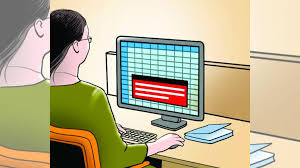
- 04 Jan 2025
In News:
- The Comptroller and Auditor General (CAG) of India has deployed the Open Data Kit (ODK) platform to enhance transparency in government spending and improve accountability in the delivery of government schemes.
- The toolkit is being used for designing, collecting, and managing data relevant to audits.
Key Highlights:
Objective:
- Enhance transparency in public spending.
- Improve accountability in government schemes and projects.
- Collect real-time beneficiary feedback to aid audit planning and identify areas needing additional review.
Key Features:
- End-to-end encryption: Ensures secure data management.
- Integration with CAG’s Operating System (OIOS): Facilitates seamless analysis and management of data.
- Multi-language support: Allows for surveys in multiple languages, making it more accessible to diverse beneficiaries.
- User-friendly interface: Simplifies the design and management of data collection processes for auditors.
Usage and Applications:
- Beneficiary surveys are a key tool for gathering data, helping CAG identify problem areas in government schemes.
- The ODK toolkit was recently deployed in audits of AIIMS institutions in Mangalagiri (Guntur) and Bibinagar (Hyderabad) to assess patient satisfaction and gather evidence for performance reviews.
Working Process:
- Surveys are designed on the ODK platform and deployed to beneficiaries.
- Data is collected in real-time and analyzed using the OIOS system to generate actionable insights for audits.
- Beneficiary feedback is used to evaluate scheme delivery and improve efficiency.
Significance:
- Facilitates data-driven decision-making in audits, ensuring that audits are more transparent and evidence-based.
- Improves the citizen-centric evaluation of government schemes by gathering direct feedback from beneficiaries.
- Enhances the performance review of key institutions like AIIMS, contributing to better service delivery.
- The introduction of the ODK toolkit is part of the CAG’s efforts to use digital tools for better governance and accountability in the public sector. This also aligns with the growing trend of using technology for governance and auditing.
Ramesh Chand Panel
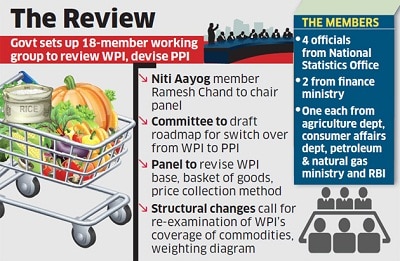
- 03 Jan 2025
In News:
The Government of India has formed an 18-member panel, headed by Ramesh Chand, a member of NITI Aayog, to revise the base year of the Wholesale Price Index (WPI) to 2022-23 from the current base year of 2011-12. The panel will also work on a roadmap for transitioning from WPI to the Producer Price Index (PPI).
Key Highlights:
Role and Mandates of the Panel:
- Revised Commodity Basket: The panel will recommend a new commodity basket for both WPI and PPI, reflecting structural changes in the economy.
- Review of Price Collection System: The panel will evaluate the current system for price collection and propose improvements.
- Computational Methodology: It will determine the computational methodology for both WPI and PPI to ensure accuracy in tracking price changes.
- The panel has been tasked with submitting its final report to the Office of the Economic Adviser at the Department for Promotion of Industry and Internal Trade (DPIT) within 18 months.
Understanding WPI vs. PPI:
- WPI (Wholesale Price Index) tracks the price of goods at the wholesale stage (i.e., goods sold in bulk to businesses), and excludes the service sector.
- Key Characteristics of WPI:
- Does not consider consumer-facing prices.
- Excludes services (about 55% of GDP).
- Can have double-counting bias due to multiple transactions before the final sale.
- Does not account for indirect taxes and may include export/import prices.
- Use: WPI helps in tracking bulk price movements between businesses, but doesn't fully represent consumer price inflation.
- Key Characteristics of WPI:
- PPI (Producer Price Index) tracks prices at various stages of production, considering both goods and services, and measures the average change in prices received by domestic producers.
- Key Characteristics of PPI:
- Excludes indirect taxes (making it more accurate for price movement tracking).
- Includes services, unlike WPI, giving a broader view of price trends across the economy.
- More aligned with international standards (System of National Accounts).
- Reflects prices before consumer consumption, providing a business-oriented perspective of price trends.
- Key Characteristics of PPI:
Why the Transition to PPI?
- The PPI is already used by major economies like the US, China, Germany, and Japan as it provides a more comprehensive measure of inflation from a producer’s perspective.
- It is expected to be a better indicator of inflationary trends in the overall economy, including both goods and services.
Challenges and Roadmap:
- The switch to PPI is complex, and the panel will need to ensure that the transition does not disrupt the current data collection and reporting systems. Both WPI and PPI will run concurrently until PPI stabilizes.
CGWB Report on Groundwater Contamination
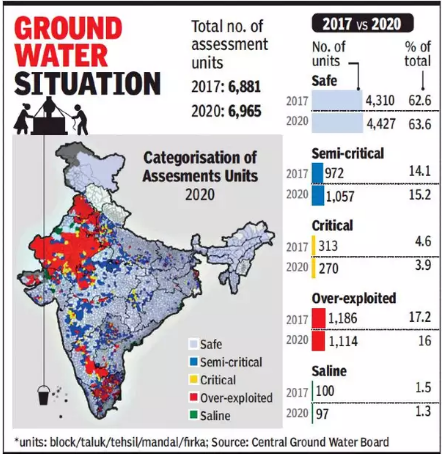
- 03 Jan 2025
In News:
The Central Ground Water Board (CGWB) report on groundwater quality reveals alarming levels of contamination in India's groundwater, with a focus on nitrate, fluoride, arsenic, and uranium. The report highlights the impact of agricultural practices, poor waste management, and urbanisation on water quality.
Key Highlights:
Nitrate Contamination:
- 440 districts in India report excessive nitrate levels in groundwater, with 20% of samples exceeding the permissible nitrate limit of 45 mg/L (WHO and BIS standards).
- High-risk regions: Rajasthan (49%), Karnataka (48%), and Tamil Nadu (37%) are the top states with high nitrate levels. Other affected states include Maharashtra, Telangana, Andhra Pradesh, and Madhya Pradesh.
- Causes: Nitrate contamination is mainly due to excessive use of nitrogen-based fertilizers, over-irrigation, and poor management of animal waste. Urbanisation and improper sewage systems exacerbate the problem.
Other Groundwater Contaminants:
- Fluoride contamination: A significant concern in Rajasthan, Haryana, Karnataka, Andhra Pradesh, and Telangana.
- Arsenic contamination: Elevated arsenic levels found in several states, especially in floodplains of the Ganga and Brahmaputra rivers (West Bengal, Jharkhand, Bihar, Uttar Pradesh, Assam, and Manipur).
- Uranium contamination: 42% of uranium-contaminated samples are from Rajasthan, and 30% from Punjab. Chronic exposure to uranium leads to kidney damage.
Groundwater Extraction and Availability:
- 60.4% of groundwater is being extracted across India.
- 73% of groundwater blocks are classified as in the ‘safe’ zone, an improvement from 67.4% in 2022.
Monsoon Impact:
- Nitrate contamination increases post-monsoon, with 32.66% of samples exceeding safe limits during the rainy season.
Health Implications:
- High nitrate levels, particularly dangerous for infants, can cause blue baby syndrome (methemoglobinemia).
- Long-term exposure to contaminants like fluoride and arsenic can lead to fluorosis and increase the risk of cancers and skin lesions.
Sources of Contamination:
- Agricultural practices: Excessive use of fertilizers, pesticides, and improper irrigation.
- Waste disposal: Leaking septic systems, sewage, and hazardous waste sites contribute to contamination.
- Urbanisation: Increased wastewater and sewage, along with poor waste management, worsen the issue.
Measures to Address Contamination:
- Jal Shakti Abhiyan (JSA) and Atal Bhujal Yojana (ABHY) aim to conserve and manage groundwater resources.
- National Aquifer Mapping and Management Program (NAQUIM) to assess and map aquifer systems.
- Pollution control programs: Under the Water (Prevention & Control) Act, 1974, and initiatives like sewage treatment plants and effluent treatment plants to manage wastewater.
- Public awareness: Campaigns like Swachh Bharat Mission and Catch the Rain educate communities on the importance of groundwater conservation.
Key Statistics:
- 56% of districts in India report groundwater nitrate levels exceeding the safe limit of 45 mg/L.
- Monsoon effects: Post-monsoon data shows a significant increase in contamination levels (32.66% vs. 30.77% pre-monsoon).
National e-Governance Awards (NAeG) Scheme 2025
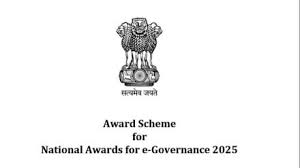
- 03 Jan 2025
In News:
- The Department of Administrative Reforms & Public Grievances (DARPG) has issued the guidelines for the 28th National e-Governance Awards (NAeG) 2025.
- Nominations for the awards can be submitted online via the official portal: www.nceg.gov.in.
Key Highlights:
- Award Categories: Nominations for the awards can be submitted under the following six categories:
- Government Process Re-engineering: Digital transformation through the use of technology to improve government processes.
- Innovation by Use of AI and New Age Technologies: Fostering citizen-centric services via artificial intelligence and other modern technologies.
- Best e-Gov Practices in Cyber Security: Recognizing excellence in e-Governance practices focused on cybersecurity.
- Grassroot Level Initiatives: Initiatives at the Districts, ULBs (Urban Local Bodies), or Gram Panchayats that deepen service delivery.
- Replication and Scaling Up of Successful Projects: Projects awarded in the past (such as NAeG or Prime Minister’s Awards) that have been successfully replicated or scaled.
- Digital Transformation using Data Analytics: Projects that leverage data analytics on digital platforms for enhancing governance.
- Eligibility: The awards are open to Central Ministries/Departments, State Governments, District Collectors, Research Institutions, and other relevant entities.
- Award Details:
- The NAeG 2025 will feature 16 awards:
- 10 Gold Awards.
- 6 Silver Awards.
- The NAeG 2025 will feature 16 awards:
- Incentives:
- Gold Award winners will receive a Trophy, Certificate, and an incentive of Rs 10 lakh.
- Silver Award winners will receive a Trophy, Certificate, and an incentive of Rs 5 lakh.
- The incentive will be used for further implementation of the awarded projects or bridging resource gaps in public welfare.
- Objective: The goal of the National Awards for e-Governance is to recognize and promote excellence in the implementation of e-Governance initiatives and digital transformation efforts across India.
Quad 20th Anniversary
- 03 Jan 2025
In News:
Quad Foreign Ministers reaffirmed their commitment to a free, open, and peaceful Indo-Pacific. Marked the 20th anniversary of Quad cooperation, originally formed to respond to the 2004 Indian Ocean earthquake and tsunami.
Key Highlights:
- What is the Quad?
- A strategic forum of the US, Japan, India, and Australia aimed at regional security and economic cooperation in the Indo-Pacific region.
- Founded on shared principles of democracy, human rights, rule of law, and countering China's influence.
- Origins:
- Quad traces its origins to the 2004 Tsunami relief efforts.
- Formed formally in 2007, but Australia withdrew in 2008 due to regional tensions. It rejoined in 2017 following strengthened US-Australia ties.
- Commitment to Regional Security:
- Focus on countering China’s assertive behavior in the Indo-Pacific.
- Ensuring maritime security, countering illegal fishing, promoting infrastructure, and advancing economic cooperation.
- Key Initiatives:
- IPMDA: Real-time monitoring of maritime activities.
- MAITRI: Capacity-building for maritime security.
- Quad Fellowship: Funds graduate-level STEM education in member countries.
- Open RAN: Promoting secure 5G infrastructure.
- Cancer Moonshot: Focus on cervical cancer prevention.
- Military and Naval Cooperation:
- Malabar Exercises: Joint naval drills between India, Japan, the US, and Australia.
- ASEAN and Regional Cooperation:
- Emphasis on ASEAN's central role in the Indo-Pacific region.
- Support for the Pacific Islands Forum and the Indian Ocean Rim Association (IORA).
- Future Developments:
- India to host the next Quad Summit in 2025.
- Continued focus on sustainable regional development, scientific collaboration, and disaster relief efforts.
- Significance of the Quad for India:
- Strategic Importance:
- Provides a platform to counter China's assertive policies, especially in the South China Sea and the "String of Pearls" strategy.
- Aligns with India’s Act East Policy, enhancing ties with East and Southeast Asia.
- Maritime Security: Ensures freedom of navigation and counters illegal activities like piracy and illegal fishing in India’s maritime domain.
- Economic Opportunities:
- Strengthens cooperation on infrastructure projects and trade initiatives, such as the Blue Dot Network.
- Post-COVID, Quad may aid India in attracting manufacturing units shifting from China.
- Scientific and People-to-People Collaboration: Supports STEM education and enhances soft power diplomacy through academic and cultural exchanges.
H-1B Visa
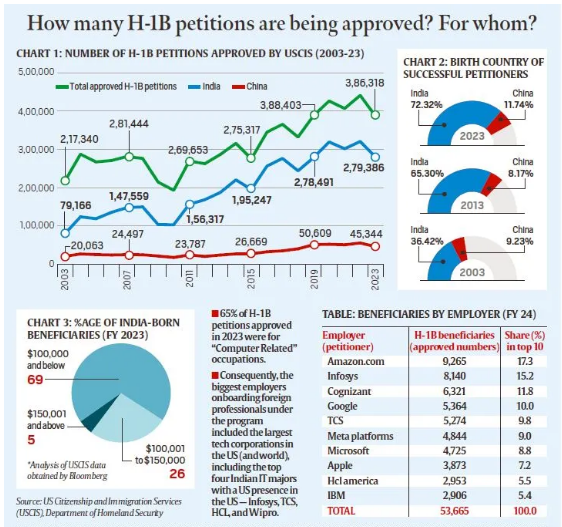
- 02 Jan 2025
In News:
In the weeks leading up to his return as US President, Donald Trump’s supporters are embroiled in a public dispute over skilled immigration and H-1B visas.
What is the H-1B Visa Program?
- Purpose and Overview:
- The H-1B visa is a non-immigrant visa allowing U.S. companies to employ foreign workers in specialized occupations like STEM (Science, Technology, Engineering, Mathematics) and IT, which require at least a bachelor’s degree.
- Introduced in 1990 to help U.S. employers fill positions when there’s a shortage of qualified domestic workers.
- It allows workers to stay in the U.S. for a maximum of six years, with the option to apply for permanent residence (Green Card) or leave for 12 months before reapplying.
- Annual Cap and Exemptions:
- 65,000 new visas are issued annually, with an additional 20,000 for those with a master’s degree or higher from a U.S. university.
- Certain petitions, such as for continuing employment or positions in higher education or nonprofit research, are exempt from the cap.
- Dominance of Indian Beneficiaries:
- Indians are the largest beneficiaries, accounting for over 70% of H-1B visa approvals annually since 2015, with China coming second at around 12-13%.
The Current Controversy
- Trigger for Debate:
- The controversy was sparked by Sriram Krishnan, a Chennai-born tech entrepreneur appointed as Donald Trump’s top AI adviser. His post on X (formerly Twitter) in November 2024, advocating for unlocking skilled immigration, led to backlash within Trump’s anti-immigration base.
- The Political Divide:
- Trump’s supporters, particularly from the MAGA (Make America Great Again) faction, voiced opposition to the H-1B visa program, arguing it undermines American workers and wages.
- This prompted pushback from pro-H-1B advocates like Elon Musk and Vivek Ramaswamy, who argue that the program is crucial for addressing the U.S.'s STEM talent shortages.
- Economic and Political Context:
- Immigration is a polarizing issue in the U.S., with a focus on low-skilled labor migration and its alleged effects on wages and job opportunities for American workers.
- Trump’s stance against low-skilled immigration echoes similar critiques about H-1B workers being employed at lower salaries in tech companies, which some claim depresses wages and reduces job opportunities for U.S. workers.
Criticisms of the H-1B Program
- Abuse of the System:
- Critics argue that companies exploit the H-1B program by hiring foreign workers, especially from India, at lower wages than American employees, particularly in tech industries.
- Elon Musk suggests that the program is “broken” and needs reform, proposing raising the minimum salary for H-1B workers to make it more expensive to hire overseas talent.
- Salary Disparities:
- Data from USCIS (U.S. Citizenship and Immigration Services) shows that 70% of H-1B petitions for Indian professionals in 2023 were for salaries below $100,000, while the median salary for U.S. IT professionals was $104,420.
- Impact on American Jobs:
- Critics argue that companies prefer to hire foreign workers at lower wages to save costs, despite the availability of qualified U.S. talent, thus taking away opportunities for American workers.
Support for the H-1B Program
- Filling the STEM Gap:
- Proponents, including Musk and Ramaswamy, argue that the H-1B visa is essential for filling the STEM skills gap in the U.S., given the global dominance of India and China in STEM fields.
- India and China lead the world in STEM graduates, with 2.55 million and 3.57 million, respectively, compared to the U.S. with 820,000.
- Proponents, including Musk and Ramaswamy, argue that the H-1B visa is essential for filling the STEM skills gap in the U.S., given the global dominance of India and China in STEM fields.
- Economic Benefits:
- The H-1B program helps U.S. companies access top global talent, boosting innovation and economic growth, especially in high-tech industries.
- Tech companies argue that without access to skilled foreign workers, they would struggle to fill critical positions in the technology sector.
Business Ready (B-READY) Report 2024
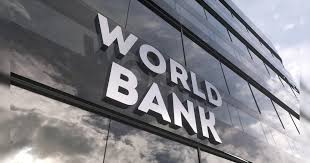
- 02 Jan 2025
In News:
- The B-READY report, launched by the World Bank in 2024, replaces the Ease of Doing Business (EoDB) index.
- Focus: It evaluates the global business environment to foster inclusive private sector growth, assessing 10 core topics covering a firm's lifecycle, such as business entry, taxation, labor, and international trade.
India’s Potential Challenges
- Business Entry: India faces multiple steps and incomplete digital integration, making it slower compared to benchmarks like Singapore, which achieves one-day registration at minimal cost.
- Labor Regulations: While India has introduced four labor codes, the implementation remains slow and inconsistent, affecting labor flexibility and compliance.
- International Trade: India struggles with customs delays, inconsistent enforcement, and high logistics costs, unlike countries like Germany and Singapore, which promote trade efficiently.
- Business Location: Regulatory delays and inconsistent approvals hinder the establishment of business facilities, affecting investment decisions.
- Public Services Gap: While regulations may be strong, there is often a gap in the provision of public services that support their effective implementation, leading to inefficiencies.
Key Strengths for India
- India is expected to score well in the areas of Quality of Regulations, Effectiveness of Public Services, and Operational Efficiency.
- The country shows promise in promoting digital adoption and aligning with global environmental sustainability practices, though gender-sensitive regulations need more emphasis.
Significance
- The B-READY report serves as an essential benchmark for assessing India's business environment, offering insights into regulatory reforms and operational efficiency.
- Key policy implications for India include the need to:
- Streamline business operations by digitizing registration and regulatory approval processes.
- Improve logistics and trade efficiency by reducing customs delays.
- Address labor market inefficiencies through better implementation of labor codes.
- Invest in public services and promote digital transformation for better compliance and operational ease.
- Focus on sustainability and inclusivity, ensuring gender-sensitive policies and fostering green business practices.
Global Findings from the B-READY Report
- Economies with strong regulatory frameworks and digital tools (e.g., Rwanda, Georgia) show that even countries with varying income levels can achieve high scores.
- High-income countries like Estonia and Singapore still have room for improvement, especially in areas like taxation and dispute resolution.
Comparison of B-READY with Ease of Doing Business (EoDB)
- Scope: B-READY is broader, covering a firm’s lifecycle and social benefits, while EoDB focused mainly on regulatory burdens.
- Indicators: B-READY uses 1,200 indicators from expert consultations and firm-level surveys, offering more comprehensive insights compared to the EoDB's limited metrics.
- Focus on Public Services: Unlike EoDB, which provided limited attention to public services, B-READY explicitly evaluates public service efficiency and operational effectiveness.
Policy Recommendations
- Streamline Business Operations: Inspired by countries like Singapore, India should simplify business registration and reduce delays in customs and regulatory approvals.
- Strengthen Public Services: Focus on improving tax portals, utility access, and dispute resolution systems through digital tools.
- Promote Sustainability: Encourage environmentally sustainable business practices and adopt gender-sensitive regulations to ensure inclusive growth.
- Peer Learning and Global Collaboration: Encourage India to learn from best practices in countries like Singapore and Estonia for effective reforms.
- Tailored Reforms: India must design policies addressing unique local challenges while adhering to global standards.
Metabolic Dysfunction-Associated Steatotic Liver Disease (MASLD)
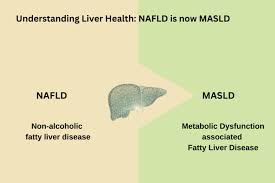
- 31 Dec 2024
In News:
Non-alcoholic fatty liver disease (NAFLD) has recently been renamed MASLD (Metabolic Dysfunction-Associated Steatotic Liver Disease), reflecting a shift in understanding of the disease's root causes and its broader implications.
Why the Name Change?
- The primary reason for renaming NAFLD to MASLD is to highlight the metabolic dysfunction as the primary cause of the disease.
- Previously, the term NAFLD focused on the absence of alcohol consumption, which inadvertently shifted attention away from the true contributors, like obesity, type 2 diabetes, and abnormal cholesterol levels.
- The term MASLD eliminates the stigma associated with "non-alcoholic," which may have misled people into thinking alcohol consumption was the only factor, even though metabolic issues are the central cause.
- The term MASLD shifts the focus towards metabolic dysfunction, making it easier for healthcare professionals to understand, diagnose, and treat the condition more effectively.
The Connection to Metabolic Dysfunction
- MASLD is strongly associated with metabolic issues such as abdominal obesity, insulin resistance, and high blood sugar. These metabolic problems are key contributors to liver fat accumulation.
- People with abdominal obesity are 2-3 times more likely to develop fatty liver disease. MASLD affects about 25% of the global population, and the rates increase significantly (up to 50-70%) in individuals with type 2 diabetes or obesity.
- By focusing on metabolic dysfunction, MASLD encourages addressing the root causes rather than just the symptoms, offering a more effective approach to treatment and prevention.
How is MASLD Diagnosed?
Advancements in non-invasive diagnostic methods have improved the ability to diagnose MASLD more easily and accurately, including:
- FibroScan: A non-invasive, painless test to measure liver fat and stiffness, replacing the need for liver biopsy.
- MRI and Ultrasound Techniques: Reliable methods for assessing liver fat and scarring.
- Blood Tests: Common tests like ALT, AST, and GGT assess liver function. Researchers are also exploring new markers like CK-18 fragments and the ELF score (Enhanced Liver Fibrosis) to improve diagnostic accuracy.
Implications for Patient Care
The renaming of NAFLD to MASLD has important implications for patient care:
- Targeted Treatments: By focusing on the metabolic roots, treatments such as weight loss, blood sugar management, and cholesterol control can be prioritized. These interventions help reduce the risk of long-term complications such as heart disease, liver failure, and cirrhosis.
- Earlier Diagnosis: MASLD encourages earlier recognition of the condition, which can lead to better management and improved long-term outcomes.
Prevention
Preventing MASLD involves avoiding foods that exacerbate liver fat buildup. Dr. Punit Singla, director at Marengo Asia Hospitals, emphasizes limiting or avoiding:
- Fast food, junk food, and processed foods
- Foods high in sugar, including red and processed meats
A healthier lifestyle with a balanced diet rich in whole grains, fruits, vegetables, and lean proteins can significantly help prevent or manage MASLD.
Pegasus Spyware

- 31 Dec 2024
In News:
For the first time, a court in the US has held Israel’s NSO Group liable for its intrusive spyware Pegasus, which could set up a measure of accountability for the company that it has, for long, allegedly downplayed.
Overview:
- Pegasus is a spyware developed by the Israeli company NSO Group.
- It has been used for surveillance, allegedly targeting journalists, activists, politicians, and government officials across the world, including India.
Recent Legal Developments:
- US Court Ruling (2024):
- A US court held NSO Group liable for using Pegasus to surveil 1,400 WhatsApp users, including 300 from India.
- NSO Group violated the Computer Fraud and Abuse Act (CFAA) and the California Computer Data Access and Fraud Act (CDAFA).
- The ruling may revive debates on the accountability of spyware use and its implications on privacy.
Use of Pegasus in India:
- Targeted Individuals (2021):
- 300 Indian numbers allegedly targeted, including journalists, politicians, Union Ministers, and civil society members.
- High-profile targets included opposition leaders, constitutional authorities, and activists.
- Government Denial:
- The Indian government denied involvement, stating allegations lacked substance.
- In Parliament, IT Minister Ashwini Vaishnaw rejected claims, asserting India’s surveillance laws prevent unauthorized surveillance.
- NSO Group Response:
- NSO Group denied the allegations, calling them “false and misleading” and citing doubts about the sources.
Investigations and Legal Actions:
- Supreme Court Inquiry:
- The Supreme Court appointed a committee of technical experts in 2021 to investigate claims.
- August 2022 Report: Found no conclusive evidence of spyware use on examined devices but noted lack of cooperation from the government.
- State-Level Investigations:
- West Bengal: Set up a Commission of Inquiry into Pegasus surveillance, later halted by the Supreme Court.
- Andhra Pradesh: The issue became political, with allegations that the previous government used Pegasus to monitor opposition figures.
Pegasus Spyware Features:
- Capability: Can hack iOS and Android devices to collect data, record conversations, capture photos, and access app data.
- Exploitation Method: Uses zero-day vulnerabilities to exploit iOS and Android devices covertly.
- Invisibility: Operates without user knowledge, often only detected through signs like browser closings after phishing links are clicked.
Controversial Use of Pegasus:
- Global Use: Though intended for fighting terrorism and crime, Pegasus has been misused for spying on journalists, politicians, human rights activists, and opposition leaders.
- India Specifics:
- Pegasus Project: Targeted Indian citizens, including activists, journalists, and politicians.
- Amnesty International: Confirmed use of Pegasus to target Indian phones.
India's Legal Framework for Surveillance:
- Telecommunications Act (2023): Empowers the government to control telecom services during emergencies, but requires authorization for lawful interceptions.
- IT Act (2000): Allows the government to monitor, intercept, or decrypt information through computer resources under certain conditions.
- Digital Personal Data Protection (DPDP) Act (2023): Aims to protect personal data, including provisions on surveillance, data breaches, and rights of individuals over their data.
Privacy and Surveillance Concerns:
- Impact on Fundamental Rights:
- Surveillance infringes on the right to privacy under Article 21 of the Constitution.
- Freedom of speech and expression (Article 19) may be curtailed, with surveillance being used to suppress dissent.
- Lack of Transparency:
- Surveillance often occurs without judicial or parliamentary oversight, leading to potential executive overreach.
- Inability to Seek Legal Remedies:
- Citizens targeted by surveillance cannot challenge it due to lack of awareness, undermining constitutional rights.
- Executive Overreach and Suppression of Free Expression:
- Pegasus revelations have raised concerns about surveillance targeting constitutional functionaries, suppressing free speech, and stifling open discourse.
India-Australia Economic Cooperation and Trade Agreement (Ind-Aus ECTA)
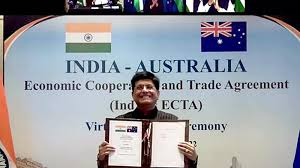
- 31 Dec 2024
In News:
The India-Australia Economic Cooperation and Trade Agreement (Ind-Aus ECTA) completes two years of remarkable success, driving mutual growth and showcasing the complementarity of both economies.
Key Achievements:
- Bilateral Merchandise Trade Surge:
- Trade increased from USD 12.2 billion (2020-21) to USD 26 billion (2022-23).
- Trade moderated slightly in 2023-24 to USD 24 billion, but exports from India to Australia grew by 14%.
- From April-November 2024, bilateral trade reached USD 16.3 billion.
- Preferential Import Utilization:
- Export utilization: 79%
- Import utilization: 84%
- Sectoral Growth:
- Textiles, chemicals, and agriculture sectors have seen significant growth.
- New export products: Gold studded with diamonds, turbojets.
- India’s imports: Metalliferous ores, cotton, wood products that fuel Indian industries.
- Geopolitical Strengthening:
- Enhanced relations in forums like Quad, Indo-Pacific Economic Framework (IPEF), Supply Chain Resilience Initiative (SCRI).
Key Features of the Agreement:
- Tariff Reductions:
- Australian goods: 85% tariff-free access to India (rising to 90% by 2026).
- Indian goods: 96% tariff-free access to Australia (rising to 100% by 2026).
- Access to Key Markets:
- India: Access to Australia's fast-growing market.
- Australia: Access to India's labor-intensive sectors like gems, jewelry, textiles, leather, furniture, food, agriculture.
- Services and IT:
- 135 sub-sectors covered in services.
- India gains market access in 103 sub-sectors with Most Favoured Nation (MFN) status in 31.
- Fast-tracked approval of medicines and elimination of double taxation for India's IT sector.
- Job Creation & Skill Exchange:
- Expected creation of 1 million jobs in India.
- Opportunities for Indian yoga teachers, chefs, and 100,000 students with post-study work visas.
Future Prospects:
- Comprehensive Economic Cooperation Agreement (CECA): Builds on ECTA to advance bilateral trade, with 10 formal rounds and ongoing inter-sessional discussions.
- Trade Target: Aim to reach AUD 100 billion in trade by 2030.
- Global Economic Impact: Strengthening the partnership will contribute to a more resilient and dynamic global economy, with deeper economic integration between India and Australia.
PM CARES Fund Contributions and Utilization (2022-23)
- 30 Dec 2024
In News:
The Prime Minister’s Citizen Assistance and Relief in Emergency Situations Fund (PM CARES Fund) received Rs 912 crore in contributions during the financial year 2022-23 as donations continued to pour in even after the Covid pandemic.
Key Highlights:
Contributions Received:
- Total contributions in 2022-23: Rs 912 crore.
- Voluntary contributions: Rs 909.64 crore.
- Foreign contributions: Rs 2.57 crore.
Interest Income:
- Total interest income for 2022-23: Rs 170.38 crore.
- From regular accounts: Rs 154 crore.
- From foreign contributions account: Rs 16.07 crore.
Refunds and Additional Inflows:
- Rs 225 crore in refunds, including:
- Rs 202 crore refund from procurement of 50,000 ventilators for government hospitals.
Disbursements:
- Total disbursed in 2022-23: Rs 439 crore:
- Rs 346 crore for PM CARES for Children.
- Rs 91.87 crore for procurement of 99,986 oxygen concentrators.
- Rs 1.51 crore for refunds.
- Rs 24,000 for legal charges, and Rs 278 for bank and SMS charges.
Cumulative Contributions (2019-23):
- Rs 13,605 crore received from 2019-20 to 2022-23.
- Voluntary contributions: Rs 13,067 crore.
- Foreign contributions: Rs 538 crore.
- Interest income over these years: Rs 565 crore.
About PM CARES Fund:
Formation and Purpose:
- Established: March 27, 2020, as a Public Charitable Trust under the Registration Act, 1908.
- Purpose: To address emergencies like COVID-19, natural disasters, and man-made calamities. It also supports healthcare infrastructure and essential facilities.
Governance and Structure:
- Chairperson: The Prime Minister (ex-officio).
- Trustees: Defence, Home, and Finance Ministers (ex-officio).
- Additional Trustees: Appointed by the PM, serving on a non-profit basis (e.g., Justice K T Thomas (retd.) and Kariya Munda).
Tax Exemptions:
- Donations are eligible for 100% tax exemption under Section 80G of the Income Tax Act, 1961.
- Donations qualify as Corporate Social Responsibility (CSR) expenditure under the Companies Act, 2013.
- The fund is exempt under the Foreign Contribution Regulation Act (FCRA), allowing it to receive foreign donations.
Reassessment of Conjugal Visits in Delhi Prisons
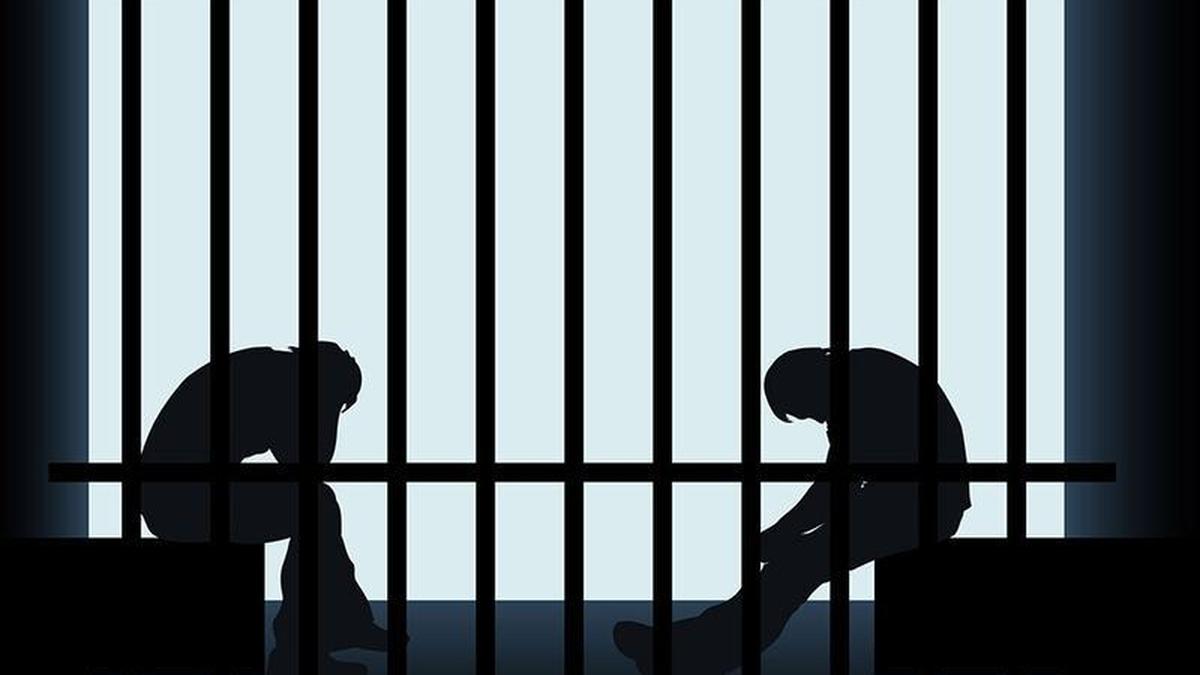
- 30 Dec 2024
In News:
- The Delhi government is reassessing the proposal to permit conjugal visits for prisoners, following the suspension of a similar initiative in Punjab.
- Delhi Chief Minister has sought further input from the Law Department and explored if similar schemes are implemented in other states.
Conjugal Visits - Definition & Context:
- Conjugal visits involve allowing prisoners to spend private time with their legal partners or spouses, including intimate relations, within prison premises.
- No national policy exists in India for conjugal rights of prisoners, leading to varied implementations across states.
Punjab’s Pilot Project - ‘Parivar Mulakat’:
- Ludhiana Central Jail introduced the 'Parivar Mulakat' programme in September 2022, allowing face-to-face meetings with family in designated rooms.
- The initiative was suspended shortly after its launch due to security concerns, particularly difficulty in conducting thorough body checks on visitors.
Challenges in Delhi:
- Overcrowded prisons in Delhi make it challenging to manage the logistical demands of conjugal visits, especially with up to 1,200 daily visitations.
- The Home Department has received proposals but no progress has been made over the past year.
Legal Precedents on Conjugal Rights:
- Punjab and Haryana High Court (2014) ruled that prisoners have a right to conjugal visits to facilitate procreation.
- Madras High Court (2018) allowed a life convict on parole for conjugal relations, and in 2023, a judge called for similar considerations for Tamil Nadu.
Human Rights Argument:
- Advocates argue that denying conjugal visits to prisoners violates basic human rights of both prisoners and their spouses, particularly those aged 21-50, who are often in sexually active years.
- Amit Sahni, a social activist, filed a PIL highlighting that most prisoners in Delhi are denied conjugal rights despite their eligibility.
Government’s Position:
- Delhi DG (Prisons) had argued that temporary leave such as parole and furlough serve the purpose of family ties, questioning the need for conjugal visits within prison.
Need for Legal Framework:
- Legal experts suggest the creation of a law and policy framework to regulate conjugal visits, ensuring clear guidelines for their implementation.
- S.D. Singh, a Supreme Court advocate, emphasized that conjugal visits should be legally recognized as a right, requiring formal legislation for consistent implementation.
Future Considerations:
- The Delhi government’s reassessment may lead to a policy that considers both human rights and security concerns in its decision on conjugal visits.
IIT Bombay Develops Painless Needle-Free Shock Syringes
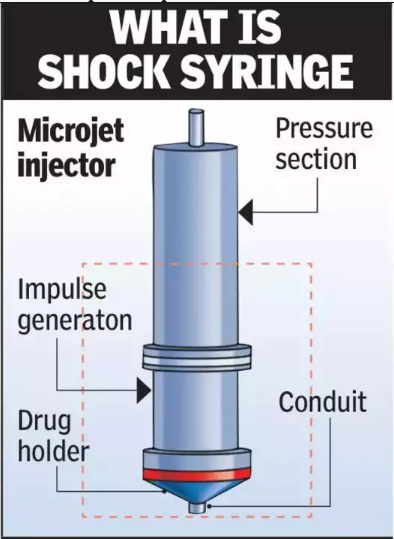
- 29 Dec 2024
In News:
Researchers at IIT Bombay, led by Viren Menezes from the Department of Aerospace Engineering, have developed a shockwave-based, needle-free syringe to deliver drugs painlessly and safely. The research was published in the Journal of Biomedical Materials and Devices.
Key Features of Shock Syringe:
- Unlike traditional syringes, the shock syringe uses high-energy shockwaves (traveling faster than the speed of sound) to deliver drugs, without the need for needles.
- The device is designed to reduce pain, tissue damage, and infection risk.
- The shock syringe aims to eliminate the discomfort and fear associated with needles.
How the Shock Syringe Works:
- The shock syringe is slightly longer than a ballpoint pen and contains a micro shock tube with three sections: driver, driven, and drug holder.
- Pressurized nitrogen gas is applied to the driver section, which creates a microjet of liquid drug. The microjet travels at speeds nearly twice as fast as a commercial airplane.
- The drug is then delivered through the nozzle of the syringe, penetrating the skin rapidly and gently.
Design Considerations:
- The syringe's nozzle has an opening of 125 μm (approximately the width of a human hair), ensuring a balance between precision and speed.
- Continuous monitoring of pressure ensures safe and effective drug delivery with minimal skin damage.
Testing and Results:
- Lab tests were conducted on rats, injecting three types of drugs:
- Anaesthetics (Ketamine-Xylazine): Shock syringe produced similar results to needles in terms of effect onset and duration.
- Viscous drugs (e.g., Terbinafine): The shock syringe outperformed needles, delivering the drug more deeply into the skin layers.
- Insulin for diabetic rats: The shock syringe lowered blood sugar levels more effectively and sustained the effect for a longer period.
- The skin analysis revealed less damage and inflammation with the shock syringe compared to traditional needles.
Advantages:
- Painless drug delivery: Patients experience little to no discomfort.
- Reduced tissue damage: The shock syringe causes less skin trauma and inflammation.
- Faster healing: Wounds from the injection heal quicker compared to traditional needles.
- Better drug absorption: Especially for viscous drugs, the shock syringe delivers more efficient and deeper drug penetration.
Potential Applications:
- The shock syringe could revolutionize immunization drives, making vaccinations faster and more efficient.
- It could significantly reduce the risk of bloodborne diseases caused by needle-stick injuries.
- The device is designed to perform over 1,000 injections, ensuring cost-effectiveness and reliability with minimal nozzle replacements.
Future Prospects:
- While promising, the future of shock syringes in clinical use depends on:
- Further innovation for human use.
- Obtaining regulatory approval.
- Ensuring the device’s affordability and accessibility.
PM- Ayushman Bharat Health Infrastructure Mission (PM-ABHIM) Scheme
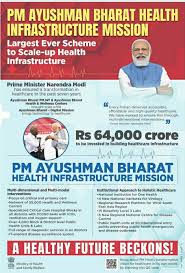
- 29 Dec 2024
In News:
- The Delhi High Court has ordered the signing of a Memorandum of Understanding (MoU) between the Union Ministry of Health and Family Welfare and the Delhi Government.
- This MoU will facilitate the implementation of the PM-Ayushman Bharat Health Infrastructure Mission (PM-ABHIM) in Delhi.
About PM-Ayushman Bharat Health Infrastructure Mission (PM-ABHIM):
- Scheme Type: Centrally Sponsored Scheme (CSS) with some Central Sector Components (CS).
- Total Outlay: Rs. 64,180 Crores for the period 2021-22 to 2025-26.
- Objective:
- To strengthen healthcare infrastructure across India, focusing on:
- Building capacities in health systems at primary, secondary, and tertiary levels.
- Preparing health systems to effectively respond to current and future pandemics/disasters.
- Key Focus Areas:
- Filling critical gaps in health infrastructure, surveillance, and health research in both urban and rural areas.
- Improving healthcare delivery across the entire continuum of care.
- Central Sector Components (CS) under the Scheme:
- 12 Central Institutions: To act as training and mentoring sites with 150-bedded Critical Care Hospital Blocks (CCBs).
- Strengthening NCDC: Boosting the National Centre for Disease Control (NCDC) and establishing 5 new regional NCDCs.
- Health Surveillance: Creation of 20 metropolitan health surveillance units and expansion of Integrated Health Information Portal across all States/UTs.
- Public Health Units: Operationalization of 17 new Public Health Units and strengthening 33 existing units at Points of Entry (Airports, Seaports, Land Crossings).
- Emergency Health Infrastructure: Establishment of 15 Health Emergency Operation Centres and 2 mobile hospitals.
- Research and Virology Institutes: Setting up a national institution for One Health, 4 new National Institutes for Virology, and 9 Biosafety Level III laboratories.
- Support for States/UTs under CSS Component:
- Health and Wellness Centres (HWCs):
- 17,788 rural HWCs: To be built in areas with populations of 5000 (plain) or 3000 (difficult terrain like hills, tribals, desert).
- 11,024 urban HWCs: Focus on slum and vulnerable areas with a population of 15,000-20,000.
- Block Public Health Units (BPHUs): Establishment of 3,382 BPHUs at the block level to strengthen healthcare accessibility.
- Integrated Public Health Labs (IPHLs): Setting up 730 IPHLs across districts for better health monitoring.
- Critical Care Hospital Blocks (CCBs): Establishment of 602 CCBs in districts with populations exceeding 5 lakh and referral linkages in other districts.
- Overall Goal: PM-ABHIM aims to significantly enhance healthcare infrastructure in India, making healthcare more accessible and effective, especially in rural and underdeveloped areas.
UN Approves New AU Force to Combat Al-Shabaab in Somalia
- 29 Dec 2024
In News:
- On January 19, 2024, the UN Security Council approved a new African Union (AU) force in Somalia to counter the Al-Shabaab terrorist group.
- The resolution was supported by 14 of 15 members, with the US abstaining due to concerns about funding.
- The new force will replace the African Union Transition Mission in Somalia (ATMIS) after its mandate ends on December 31, 2024.
New Mission - AUSSOM:
- The new mission is named African Union Support and Stabilization Mission in Somalia (AUSSOM).
- AUSSOM will continue supporting Somali forces in stabilizing the nation and combating terrorism.
- The mission's objective is to enhance security and stability in Somalia, addressing the challenges posed by Al-Shabaab and ISIL.
Mandate and Operations:
- AUSSOM allows for the deployment of up to 12,626 personnel, including 1,040 police officers, until June 2025.
- The force will focus on counterterrorism, maintaining security, and assisting the Somali government in stabilizing the country.
Financing:
- A hybrid funding approach will be used:
- 75% of the mission’s costs will be covered by the UN, and 25% will come from African Union and partner countries.
- The US raised concerns about the UN's disproportionate funding of the mission, which led to its abstention from voting.
Contributing Countries:
- Egypt has announced its participation in the new force.
- Burundi and Ethiopia will not be contributing troops to AUSSOM.
- Ethiopia has its own ongoing disputes with Somalia, particularly regarding its maritime deal with the breakaway Somaliland region.
Background on Somalia's Challenges:
- Somalia has faced decades of civil war, an insurgency by Al-Shabaab, and recurring climate disasters.
- The country is one of the poorest in the world, and its internal conflicts are exacerbated by clannism, which has fragmented its political and social structure.
Historical Context of Peace Missions in Somalia:
- Previous UN peacekeeping missions in Somalia (1992-1995) faced significant failures, notably the Battle of Mogadishu and the failure to prevent the 1993 massacre.
- The rise of Al-Shabaab in the mid-2000s has further escalated the conflict, and the mission of AUSSOM aims to address these continuing threats.
The Role of Clannism:
- Clannism has hindered the establishment of a unified government in Somalia, with clan rivalries leading to a lack of national cohesion.
- Clannism refers to the prevalence of clan-centric politics, where allegiance to clan and sub-clan interests often takes precedence over national cohesion. In Somalia, the major clans are Darod, Hawiye, Dir, and Rahanweyn.
Importance of AUSSOM:
- AUSSOM represents a strategic shift in the international approach to stabilizing Somalia, relying more on African-led initiatives for peace and security in the region.
Global Peacekeeping Operations:
- The UN peacekeeping mission has been active globally, with over 1 million personnel deployed across 70+ operations.
- Success stories like Sierra Leone (1999-2005) and Liberia (2003-2018) demonstrate the potential impact of well-executed peace missions, but past failures like in Somalia (1992-1995) and Rwanda (1994) underline the challenges faced.
India’s Contribution:
- India has contributed significantly to UN peacekeeping missions, deploying over 253,000 personnel in 49 operations since 1948.
- India’s contributions to missions in Somalia, Rwanda, Sierra Leone, and Sudan reflect its active role in global peacekeeping efforts.
China approves construction of World’s Largest Hydropower Dam on the Brahmaputra River
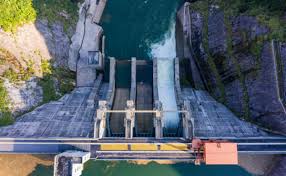
- 28 Dec 2024
In News:
China approved the construction of the world's largest dam, stated to be the planet's biggest infra project, on the Brahmaputra river in Tibet close to the Indian border, raising concerns in India and Bangladesh.
Key highlights:
Overview of the Project:
- Location: Lower reaches of the Yarlung Zangbo River (Tibetan name for Brahmaputra), where the river makes a U-turn in the Himalayan region before flowing into Arunachal Pradesh, India.
- Purpose:
- To support China’s carbon neutrality goals.
- To boost industrial growth and create jobs in Tibet.
- Expected to generate 300 billion kWh of electricity annually, over three times the capacity of the Three Gorges Dam in central China.
Significance:
- Scale: The dam is poised to be the world’s largest hydropower project, surpassing the Three Gorges Dam, and becoming the biggest infrastructure project globally, with an estimated cost of USD 137 billion.
- Engineering Challenges: The site is located in a seismic zone on the Tibetan plateau, prone to earthquakes, making construction and operational stability a major engineering challenge.
Concerns:
- Environmental Impact:
- Potential disruption to the local ecosystem and biodiversity.
- Risk of altering the river’s flow and course, which could impact agriculture and water resources downstream, particularly in India and Bangladesh.
- Geopolitical Risks:
- Water control: India and Bangladesh are concerned about China’s ability to control the water flow, with fears of China manipulating the flow to release excess water during conflicts, causing potential flooding in border areas.
- The project could also disrupt the hydrological cycle, affecting the region’s water availability, especially in Assam and Bangladesh.
Background:
- The Brahmaputra River is a trans-boundary river, flowing through China, India, and Bangladesh. Known by different names in these countries, it plays a vital role in the livelihoods of millions of people.
- China has already initiated hydropower generation on the upper reaches of the Yarlung Zangbo, with plans for additional projects upstream.
India-China Cooperation:
- China and India have an Expert Level Mechanism (ELM) in place since 2006 to manage trans-boundary river issues, under which China shares hydrological data with India, especially during the flood season.
- India is also constructing its own hydropower projects on the Brahmaputra in Arunachal Pradesh.
Potential Outcomes:
- Energy Generation: The dam could significantly contribute to China’s energy needs, providing a substantial amount of renewable energy.
- Regional Tensions: The dam’s construction may escalate tensions between China, India, and Bangladesh due to the control over water resources and environmental impact concerns.
Parker Solar Probe’s Closest-Ever Approach to the Sun

- 28 Dec 2024
In News:
NASA scientists announced that the Parker Solar Probe survived the closest-ever approach to the Sun. The craft was operating normally after it passed just 6.1 million km from the solar surface.
About the Parker Solar Probe:
- Launched: August 12, 2018, as part of NASA’s Living With a Star program.
- Named After: Eugene Newman Parker, a solar astrophysicist, marking the first NASA mission named after a living researcher.
- Mission Objectives:
- To study the Sun’s corona and the solar wind, investigating why the corona is hotter than the Sun’s surface.
- To explore the origins of solar winds and high-energy particles that impact space weather.
- To understand the structure and dynamics of plasma and magnetic fields around the Sun.
- To examine the mechanisms behind the acceleration and transportation of energetic particles.
Technological Feats:
- Heat Shield: Equipped with a 4.5-inch carbon-composite shield that withstands temperatures up to 1,377°C (2,500°F) while keeping the instruments cool at about 29.4°C (85°F).
- Speed: Travels at a speed of 692,000 km/h (430,000 mph), making it the fastest human-made object.
- Venus Flybys: Uses gravitational assists from Venus to gradually reduce its orbit and get closer to the Sun.
Historic Milestone:
- Closest Approach: On December 24, 2024, Parker Solar Probe reached a historic distance of 6.1 million km from the Sun's surface, the closest any human-made object has ever been.
- Comparison: If the Earth and Sun were 1 meter apart, Parker Solar Probe would be just 4 cm from the Sun.
- Temperature: At its closest, it endured temperatures up to 1,377°C.
Significance of the Mission:
- Scientific Contributions:
- Solar Wind: Helps scientists understand the origins of solar winds, which affect space weather and Earth’s technological systems.
- Corona Heating: Investigates why the Sun's corona is much hotter than its surface (a long-standing astrophysical mystery).
- Space Weather: Provides critical data for predicting space weather events that can impact satellites, communication systems, and power grids on Earth.
- Practical Implications:
- Improves understanding of space weather, potentially aiding in the protection of Earth’s infrastructure from solar storms.
- Technological and Engineering Marvel:
- Demonstrates advanced spacecraft technology that can withstand extreme conditions close to the Sun.
Recent Developments:
- Data Collection: As the probe passed through the Sun’s outer atmosphere (the corona), it collected valuable data expected to answer fundamental questions about solar behavior.
- Communication: Despite the extreme proximity to the Sun, the probe sent back a signal on December 26, confirming its status.
Key Dates:
- Launch: August 12, 2018.
- Closest Approach: December 24, 2024.
- Data Expected: Detailed telemetry data on January 1, 2025.
Exercise SURYA KIRAN
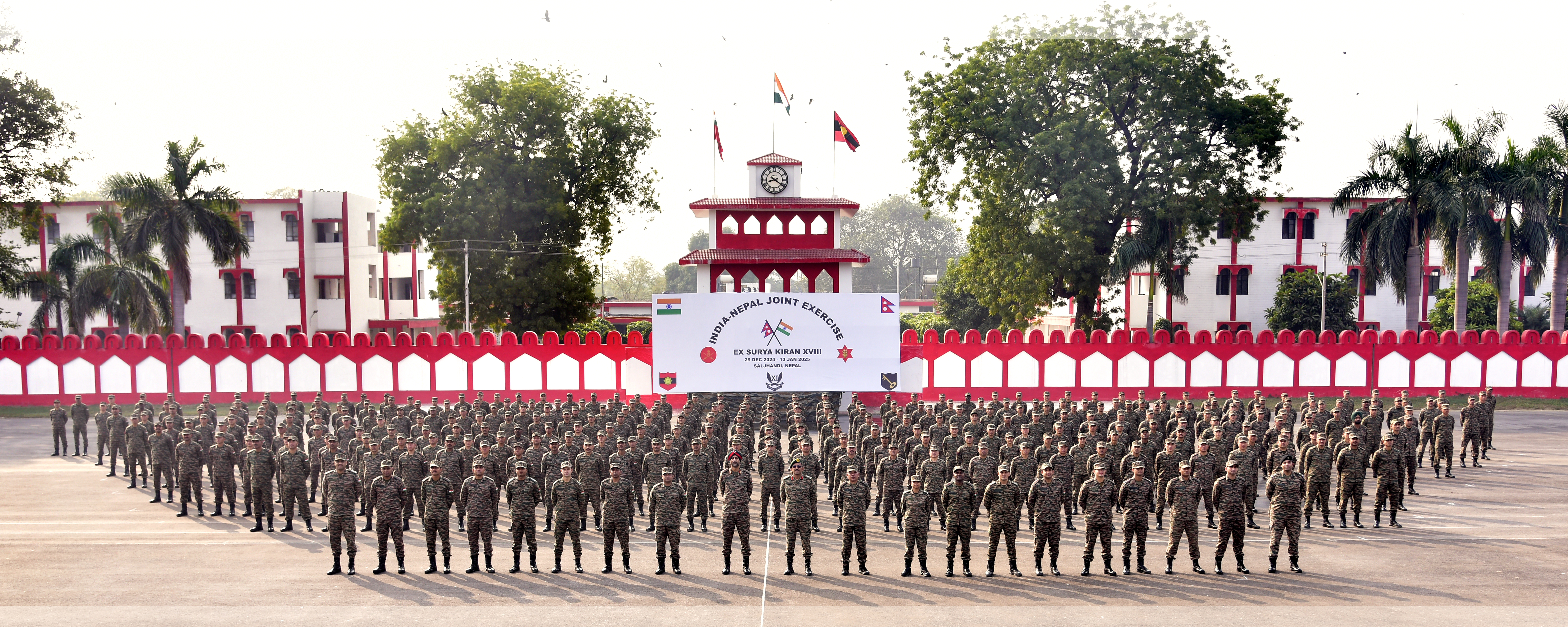
- 28 Dec 2024
In News:
Indian Army Contingent Departs for 18th Edition of Exercise SURYA KIRAN (India-Nepal Joint Military Exercise).
Key Highlights:
- Event Overview:
- Name: 18th Edition of Battalion-Level Joint Military Exercise SURYA KIRAN.
- Dates: 31st December 2024 to 13th January 2025.
- Location: Saljhandi, Nepal.
- Participants: Indian Army (334 personnel, led by a Battalion from the 11th Gorkha Rifles) and Nepal Army (Srijung Battalion).
- Objective of Exercise:
- Enhance interoperability in jungle warfare, counter-terrorism operations in mountainous terrain, and Humanitarian Assistance and Disaster Relief (HADR) under the UN Charter.
- Focus on operational preparedness, aviation training, medical aspects, and environmental conservation.
- Key Features:
- Training Focus: Improving combat skills and coordination to operate together in challenging situations.
- Exchange of Ideas: Soldiers from both nations will share best practices, enhance mutual understanding of operational procedures.
- Strengthening Bilateral Relations: Reinforces strong bonds of friendship, cultural linkages, and defense cooperation between India and Nepal.
- Significance:
- Historical Context: Exercise held alternately in India and Nepal since 2011.
- Enhances Combat Readiness: Prepares both armies to address shared security challenges and improve operational capabilities.
- Diplomatic Engagement: Fosters a productive professional environment between India and Nepal.
- Recent Developments:
- The exercise follows visits by General Upendra Dwivedi (Indian Army Chief) to Nepal and General Ashok Raj Sigdel (Nepali Army Chief) to India, strengthening military ties.
- Previous Editions:
- 17th Edition: Conducted in Pithoragarh, Uttarakhand (24th Nov - 7th Dec 2023).
Lighthouse Tourism in India
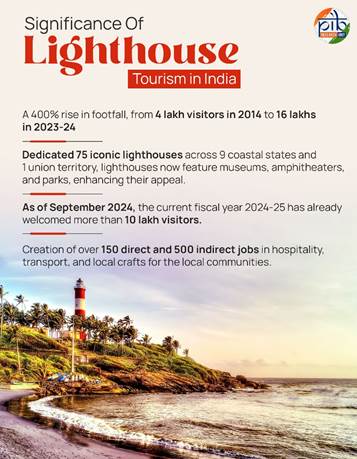
- 27 Dec 2024
In News:
Lighthouse tourism in India is rapidly emerging as an exciting and profitable segment of the country's travel and tourism industry. India's coastline, stretching over 7,500 kilometers, is home to 204 lighthouses, many of which are being transformed into vibrant tourist destinations, celebrating both India's rich maritime history and its natural beauty.
Key Highlights:
- Historical and Scenic Appeal: Lighthouses in India are often located in breathtaking coastal or island locations, offering panoramic sea views and access to surrounding natural beauty. Some of these structures are centuries old and are situated near significant cultural landmarks or UNESCO World Heritage Sites, adding cultural depth to the visitor experience.
- Economic Growth: As part of the broader Maritime India Vision (MIV) 2030 and Amrit Kaal Vision 2047, the Government of India is keen to transform these historic lighthouses into hubs of economic activity. By developing infrastructure, creating new tourism-related jobs, and fostering local entrepreneurship, lighthouse tourism aims to benefit coastal communities and boost India's tourism economy. As of 2023-24, 75 lighthouses across 10 states have been equipped with modern amenities, attracting 16 lakh visitors—a 400% increase from previous years.
- Government Initiatives:
- Lighthouse Festivals: The annual Indian Lighthouse Festival, inaugurated in 2023, serves as a key event to promote lighthouse tourism and cultural heritage.
- The 1st Indian Lighthouse Festival, “Bharatiya Prakash Stambh Utsav”, was inaugurated on 23rd September, 2023 by the Union Minister of Ports, Shipping & Waterways, Shri Sarbananda Sonowal and Goa Chief Minister, Shri Pramod Sawant at the historic Fort Aguada in Goa.
- The 2nd Indian Lighthouse Festival was held in Odisha. Union Minister of Ports, Shipping & Waterways, Shri Sarbananda Sonowal, was also joined by Odisha Chief Minister, Mohan Charan Majhi. Shri Sonowal dedicated two new lighthouses at Chaumuck (Balasore) and Dhamra (Bhadrak) and emphasized empowering coastal communities to preserve and promote lighthouses as part of India’s rich maritime heritage.
- Sagarmala Programme: This government initiative integrates infrastructure development with sustainable practices, ensuring that the growth of lighthouse tourism benefits local communities while preserving the environment.
- Tourism Infrastructure: The government has invested ?60 crore in enhancing these sites, providing facilities like museums, parks, amphitheaters, and more to enrich the visitor experience.
- Lighthouse Festivals: The annual Indian Lighthouse Festival, inaugurated in 2023, serves as a key event to promote lighthouse tourism and cultural heritage.
- Sustainable Development: The Indian government places a strong emphasis on eco-friendly tourism. This includes integrating lighthouses into broader coastal circuits and launching digital awareness campaigns to attract domestic and international tourists.
- Community Empowerment and Employment: Lighthouse tourism has already created direct and indirect employment, from hospitality to transportation, local handicrafts, and artisan work, with more than 500 jobs being generated. Local communities are being trained to offer skills in hospitality and tourism services.
Future Plans:
- Skill Development: Programs are being introduced to equip local people with the necessary skills to cater to the tourism industry.
- Sustainable Practices: Eco-friendly practices will continue to be emphasized to protect coastal ecosystems.
- Integration with Coastal Circuits: Lighthouses will become key points of interest in broader coastal tourism itineraries, further enhancing their appeal to tourists.
Operation Green Scheme
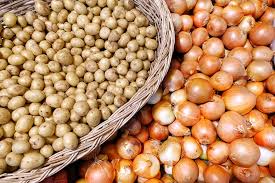
- 27 Dec 2024
In News:
The government’s flagship Operation Greens scheme, designed to stabilise crop prices and benefit farmers, has spent just 34 per cent of its allocated budget for 2024-25, according to a parliamentary report, even as onion farmers in Maharashtra reel from massive losses and potato shortages grip eastern states.
Key Highlights:
Overview:
- Launched: November 2018 under the Pradhan Mantri Kisan SAMPADA Yojana.
- Objective: Stabilize prices and improve farmers' income by enhancing the production and marketing of perishable crops, initially focusing on Tomato, Onion, and Potato (TOP).
- Expanded Scope (2021): Includes 22 perishable crops like mango, banana, ginger, apple, and shrimp.
- Implemented by: Ministry of Food Processing Industries (MoFPI).
- Funding: Managed by the National Agricultural Cooperative Marketing Federation of India (NAFED).
Key Aims:
- Reduce price volatility in agricultural markets.
- Minimize post-harvest losses.
- Strengthen farm-to-market linkages.
- Enhance farmers’ earnings by stabilizing market prices.
- Promote value addition and food processing.
Scheme Components:
- Short-term Interventions:
- Subsidies on transportation (50%) and storage (50%) to protect farmers from distress sales.
- Price stabilization during periods of surplus or shortage.
- Long-term Interventions:
- Development of farm-gate infrastructure like cold storage and processing facilities.
- Strengthening production clusters and Farmer Producer Organizations (FPOs).
- Building efficient agri-logistics systems.
- Promoting food processing and value addition capacities.
Key Features:
- 50% subsidy on transportation and storage costs for eligible crops.
- Projects eligible for 50% subsidy (up to ?50 crore per project), and for FPOs, a 70% subsidy.
- Demand-driven funding based on applications, with no fixed crop or state-wise allocation.
Key Findings from Parliamentary Standing Committee (PSC) Report (2024):
- Underutilisation of Budget: Only 34% (?59.44 crore) of the allocated ?173.40 crore for 2024-25 spent by October 2024, leaving 65.73% unspent.
- Slow Implementation: Out of 10 targeted projects, only 3 were completed by October 2024.
- Limited Impact on Price Stabilization:
- Onion prices fell by nearly 50% in Maharashtra, despite the scheme's intent to stabilize prices.
- Potato shortages in states like Odisha and Jharkhand due to weather-induced production dips in West Bengal.
- Inconsistent Policies: Export bans and fluctuating export duties caused frustration among onion farmers, undermining the scheme’s effectiveness in ensuring fair prices.
Impact on Farmers:
- Price Stabilization: Despite the scheme’s aims, price fluctuations continue to affect farmers, especially in Maharashtra with the onion price crash.
- Post-Harvest Losses: The scheme aims to reduce wastage by building infrastructure like cold storage, but challenges remain in implementation.
- Market Linkages: Attempts to connect farmers and FPOs with retail markets have not yet yielded significant results.
Operational Challenges:
- The scheme faces challenges in fulfilling its dual mandate of ensuring fair prices for farmers while keeping consumer prices affordable.
- The slow utilization of funds and incomplete infrastructure projects raise concerns about the effectiveness of the program.
- Inconsistent policy decisions, like the export ban and imposition of export duties, have contributed to farmer discontent.
Strengthening Fisheries Extension Services
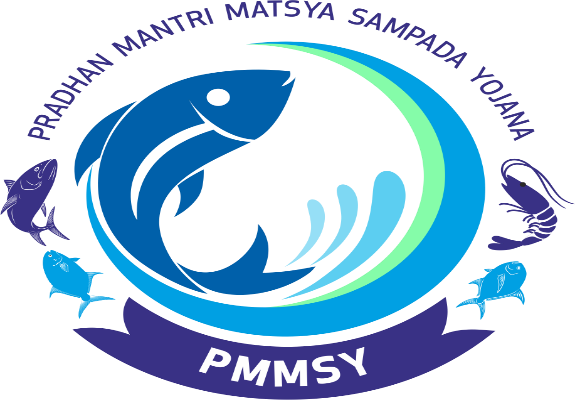
- 26 Dec 2024
In News:
India possesses diverse fisheries resources that provide livelihood opportunities to approximately three crore fishers and fish farmers. The country has witnessed an 83% increase in the national fish production since 2013-14, that stands at a record 175 lakh tons in 2022-23.
Importance of Fisheries Extension Services:
- Livelihood Support: Fisheries provide livelihoods to over 3 crore fishers and fish farmers in India. The sector's growth is crucial for enhancing sustainable practices and ensuring long-term productivity.
- Growth in Fish Production: India’s fish production has seen an 83% increase since 2013-14, reaching 175 lakh tons in 2022-23, with 75% of production coming from inland fisheries. India is the second-largest fish and aquaculture producer globally.
- Role of Extension Services: Extension services bridge the gap between scientific advancements and fishers, offering guidance on:
- Species lifecycle management
- Water quality management
- Disease control
- Sustainable rearing technologies and business models.
Government Initiatives to Strengthen Fisheries Extension:
- Matsya Seva Kendras (MSKs):
- Launched under PMMSY (Pradhan Mantri Matsya Sampada Yojana) in 2020, MSKs are one-stop centers providing comprehensive extension services.
- Support to Fish Farmers: MSKs offer:
- Disease testing, water, and soil analysis.
- Training on sustainable aquaculture practices.
- Technology infusion in seed/feed management.
- Focus on Inclusivity: Government assistance (up to 60%) is available for women and marginalized communities to set up MSKs.
- Examples:
- Thrissur, Kerala: Equipped with labs for water and microbial analysis.
- Maharashtra (Nasik and Sangli): Capacity-building efforts on seed/feed inputs.
- Collaborations: MSKs mobilize start-ups, cooperatives, and Fish Farmer Producer Organizations (FFPOs) to share best practices, including regenerative and conservation management in the face of climate change.
- Sagar Mitras:
- Role: Deployed in coastal states and union territories, Sagar Mitras act as a vital interface between the government and marine fishers.
- Functions:
- Collection and dissemination of daily marine catch data, price fluctuations, and market insights.
- Dissemination of important information: weather forecasts, fishing zones, local regulations, and hygienic fish handling.
- Provide support on disaster preparedness and natural calamities.
Enhancing Extension Services through Digital Platforms:
- AquaBazaar: A virtual learning platform initiated by the National Fisheries Development Board to provide expert guidance on:
- Seed production and breeding of commercially important fish species.
- Practical demonstrations to improve fishers' knowledge.
- Digital Outreach: Expanding such platforms will improve access to resources for fishers, especially in rural and remote areas.
Institutional Convergence and Capacity Building:
- Krishi Vigyan Kendras (KVKs): Fisheries extension services should be integrated with the over 700 Krishi Vigyan Kendras and state-level agricultural extension services for effective outreach.
- Formalizing the Sector: The World Bank-assisted project aims to create work-based digital identities for fishers and fish farmers, enhancing their access to extension services, training, and awareness programs.
Challenges in Fisheries Extension Services:
- Fragmented Initiatives: Multiple government schemes and programs lack institutional convergence, leading to inefficiencies in reaching the grassroots level.
- Digital Divide: Many rural and coastal areas face challenges in terms of digital literacy and internet connectivity, limiting the effectiveness of online platforms.
- Impact of Climate Change: Unpredictable weather patterns and resource depletion due to overfishing demand adaptive strategies and the promotion of climate-resilient practices.
Conclusion and Way Forward:
- Institutional Convergence: Combining existing extension machinery like Krishi Vigyan Kendras with fisheries extension services to leverage established networks and knowledge.
- Expand Digital Outreach: Platforms like AquaBazaar should be expanded to ensure wider access to expert knowledge, training, and best practices.
- Private Sector Collaboration: Encouraging public-private partnerships can enhance technology dissemination, capacity building, and resource mobilization in the fisheries sector.
- Focus on Sustainability: Developing climate-resilient and sustainable fisheries practices will be essential to address challenges posed by environmental changes and overfishing.
Private Aviation and Emissions

- 26 Dec 2024
In News:
Private aviation is releasing more than its ‘fair share’ of emissions.
Key Highlights:
- Aviation Sector's Global Emissions:
- The aviation sector contributed 2% of global CO2 emissions in 2022, around 800 Mt CO2 (International Energy Agency).
- If considered as a nation, aviation would rank among the top 10 emitters worldwide.
- Emissions from aviation have grown faster than other sectors like rail, road, or shipping in recent decades.
- Private Aviation and Its Impact:
- Private jets emit 5 to 14 times more CO2 per passenger than commercial flights and 50 times more than trains.
- Emissions from private aviation increased by 46% between 2019 and 2023.
- Each private flight contributes 3.6 tonnes of CO2 on average, intensifying global warming.
- Private aviation is responsible for significant nitrogen oxide (NOx) emissions and the creation of vapor trails, which further amplify environmental damage.
Trends in Private Aviation Growth:
- Global Trends:
- The number of private jets increased from 25,993 in December 2023 to 26,454 in February 2024.
- In the U.S., 69% of private aviation activity is concentrated.
- 8,500 more jets are expected to be delivered in the next 10 years globally.
- Private Aviation in India:
- 112 private planes were registered in India as of March 2024, placing it among the top 20 countries for private aircraft ownership.
- India's private aviation sector is expanding, driven by the growing billionaire and millionaire population.
- Private aircraft ownership in India stands at 1 per 1 lakh population, which is low compared to countries like Malta (46.51 per lakh) and the U.S. (5.45 per lakh).
Emission Reduction Efforts and Solutions:
- Sustainable Aviation Fuels (SAFs):
- SAFs are bio-based or waste-derived fuels that can reduce carbon emissions by up to 80% compared to conventional jet fuels.
- Airlines like SpiceJet (2018) and AirAsia (2023) have tested SAFs, but large-scale adoption is hindered by high costs and limited production.
- India aims to leverage its ethanol production chain, with potential to meet 15-20% of aviation fuel demand by 2050 if only surplus sugar is used.
- Hydrogen and Electric Aviation:
- Hydrogen offers a higher energy density than kerosene and emits only water vapor, making it a clean fuel alternative. However, hydrogen faces challenges with storage, infrastructure, and aircraft redesign.
- Battery-electric propulsion offers zero emissions but is currently limited by battery weight, energy density, and charging infrastructure.
India’s Policy and Initiatives:
- Government Initiatives:
- UDAN Scheme (Ude Desh ka Aam Nagrik) aims to enhance rural connectivity.
- NABH (Nextgen Airports for Bharat Nirman) seeks to increase airport capacity by five times.
- Sustainability Efforts:
- Indian airlines have tested SAFs, such as a 25% jatropha oil blend by SpiceJet in 2018.
- Ethanol for aviation fuel: India plans to use surplus sugar for ethanol, potentially fulfilling 15-20% of aviation fuel needs by 2050.
- Challenges to Decarbonisation:
- SAFs are costly and limited in availability.
- Hydrogen requires extensive infrastructure and aircraft redesign.
- Battery-electric solutions are currently unsuitable for long-haul flights due to energy limitations.
Viksit Panchayat Karmayogi Initiative
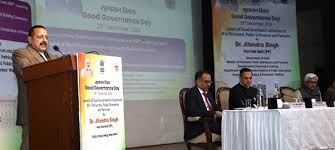
- 26 Dec 2024
In News:
On Good Governance Day, commemorating the 100th birth anniversary of former Prime Minister Atal Bihari Vajpayee, Dr. Jitendra Singh, the Union Minister of State for various departments, launched the ‘Viksit Panchayat Karmayogi’ initiative. This initiative is part of the broader ‘Prashasan Gaon Ki Aur’ campaign, which aims to empower Panchayati Raj Institutions (PRIs) at the grassroots level by enhancing the capacity and competence of elected representatives and officials.
Objective of the ‘Viksit Panchayat Karmayogi’ Initiative
The initiative seeks to strengthen PRIs by providing innovative tools and frameworks for capacity building and participatory governance. It will focus on equipping local leaders and officials with the necessary knowledge and tools to make effective decisions and implement sustainable development initiatives. Piloted in Odisha, Assam, Gujarat, and Andhra Pradesh, it uses e-learning platforms, AI-powered chatbots, and mobile apps to address knowledge gaps and improve service delivery at the local level. This program aligns with the government's mission to decentralize governance and promote citizen-centric and equitable development across rural India.
Other Key Initiatives Launched on Good Governance Day
- iGOT Karmayogi Platform Dashboard: A new dashboard on the iGOT Karmayogi platform, which empowers ministries, departments, and state administrators to monitor progress in capacity-building efforts. The enhanced dashboard includes customizable views, robust data filtering tools, and insights to optimize decision-making, marking the introduction of the 1600th e-learning course. This development is part of the Mission Karmayogi initiative to strengthen the civil service through continuous learning.
- CPGRAMS Annual Report 2024: The CPGRAMS Annual Report provided a review of the Centralized Public Grievance Redress and Monitoring System (CPGRAMS). This platform has been instrumental in resolving over 25 lakh grievances annually, leveraging advanced technologies and multilingual support. The report also highlighted the implementation of the Grievance Redressal Assessment and Index (GRAI), which has improved transparency, accountability, and the efficiency of public service delivery.
- Single Simplified Pension Application Form: A new digital pension system was launched, combining nine separate pension forms into a single, streamlined application. This digital transformation integrates e-HRMS with Bhavishya, reducing processing time and ensuring timely pension disbursement with real-time tracking and Aadhaar-based e-signatures. This system enhances the user experience for pensioners, making the process more efficient and transparent.
- Compendium of Pension Related Instructions 2024: Dr. Singh introduced a comprehensive Compendium of updated rules, procedures, and guidelines related to pensions. This document serves as a reference for pensioners and administrative personnel, ensuring clarity in the pension process and aligning with the government's vision of simplifying and streamlining pension systems.
Good Governance Day 2024 (Sushasan Diwas)
- Observed on: December 25 annually, marking the birth anniversary of Atal Bihari Vajpayee (1924–2018).
- Introduced in 2014: By the Bharatiya Janata Party (BJP) government under Prime Minister Narendra Modi.
- Purpose: To honor Vajpayee's contribution and promote good governance practices in India.
- Objective of Good Governance Day:
- Promote Government Accountability: Ensuring government actions and services are transparent and citizens benefit equally.
- Instill Good Governance Values: Encourages civil servants to practice effective and responsible governance.
- Bridge the Gap: Between citizens and the government through active participation.
- Theme for 2024: "India’s Path to a Viksit Bharat: Empowering Citizens through Good Governance and Digitalisation."
GenCast AI
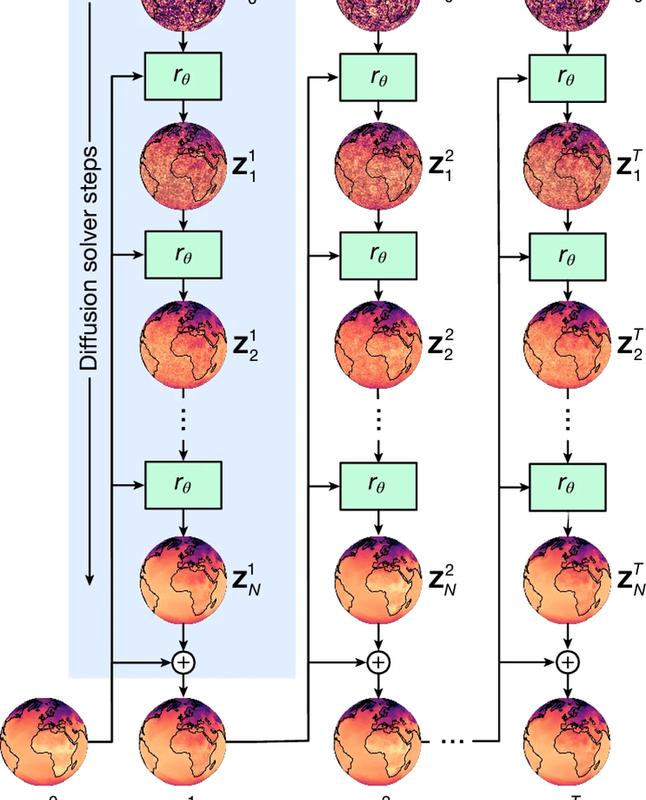
- 24 Dec 2024
In News:
Google’s GenCast AI is an advanced weather forecasting model developed by DeepMind that uses machine learning techniques to provide more accurate and longer-term weather predictions compared to traditional forecasting methods.
How GenCast Works:
- Training on Reanalysis Data:
- GenCast is trained on 40 years of reanalysis data (from 1979 to 2019). This data combines historical weather observations with modern weather forecasts, providing a comprehensive picture of past weather and climate conditions.
- Ensemble Forecasting with AI:
- Unlike traditional Numerical Weather Prediction (NWP) models, which run simulations based on physical laws and initial conditions, GenCast uses an ensemble forecasting approach where multiple predictions are generated by an AI model, not an NWP model.
- It produces a range of possible weather scenarios, each with different starting conditions, to reflect the uncertainty in weather forecasts.
- Neural Network and Diffusion Model:
- GenCast uses a neural network architecture with 41,162 nodes and 240,000 edges that process weather data. Each node accepts data, manipulates it, and passes it to another node, helping to refine and improve predictions.
- It uses a diffusion model, a type of AI model commonly used in generative AI. The model takes noisy input data, processes it through 30 refinement steps, and gradually produces a clearer forecast (de-noising the data).
- The result is a probabilistic forecast, such as "there's a 25% chance of rain in Chennai on December 25," rather than a deterministic forecast, which would provide exact quantities like "5 mm of rain."
- Faster Processing:
- The entire forecast process is incredibly efficient. GenCast can generate 50 ensemble forecasts at once with a spatial resolution of 0.25° x 0.25° (latitude-longitude) and temporal resolution of 12 hours.
- Using Google's TPU v5 units, it can produce these forecasts in just 8 minutes—far faster than traditional supercomputers, which can take several hours to run NWP simulations.
Key Features of GenCast:
- Better Performance on Extreme Weather: GenCast has shown superior accuracy in predicting extreme weather events, such as tropical cyclones, compared to traditional NWP models like those from the European Centre for Medium-Range Weather Forecasts (ECMWF).
- Probabilistic Forecasting: GenCast produces probabilistic forecasts, offering predictions like the likelihood of rain rather than precise measures, which helps with better preparation, especially for extreme weather events.
- Long-Term Forecasting: GenCast can generate forecasts for up to 15 days, which is longer than most traditional models, and is particularly useful for anticipating events like wind power generation and tropical cyclone tracking.
- Efficiency: GenCast's speed and resource efficiency set it apart from traditional NWP models, reducing forecast times dramatically.
Comparison with Traditional Weather Models:
- Numerical Weather Prediction (NWP): Traditional NWP models rely on solving complex physical equations to simulate the atmosphere and provide deterministic forecasts. These models require significant computational power and are typically limited to weather predictions for about a week.
- GenCast's Probabilistic Forecasts: In contrast, GenCast offers probabilistic predictions, making it better suited for providing early warnings about extreme weather, with better lead times for disaster preparation.
Future Developments:
While GenCast is impressive, Google acknowledges the importance of traditional NWP models for both supplying initial conditions and providing the foundational data needed to train AI models like GenCast. Ongoing collaboration with weather agencies is crucial to enhancing AI-based methods for weather prediction.
Overall, GenCast represents a significant leap forward in the use of AI for weather forecasting, with potential for greater accuracy, efficiency, and longer-term predictions compared to current methods.
National Human Rights Commission (NHRC)
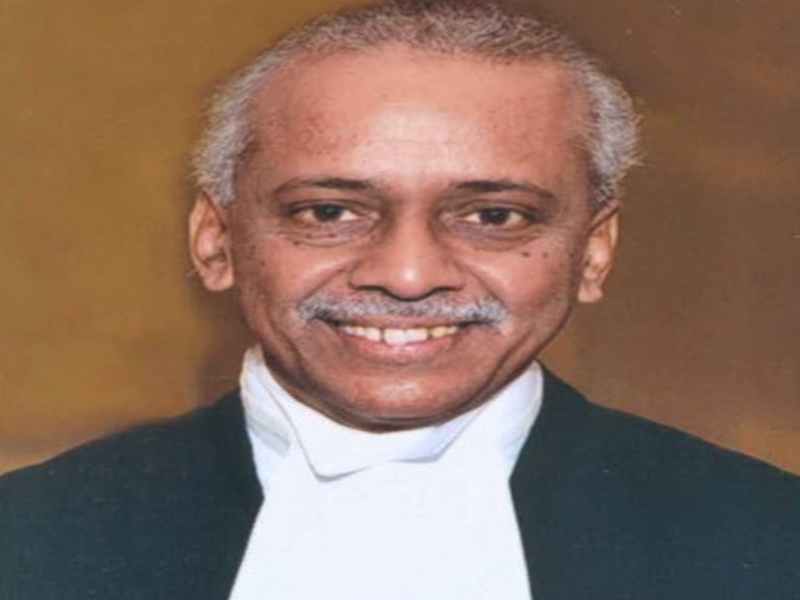
- 24 Dec 2024
In News
Justice V. Ramasubramanian, a retired Supreme Court judge, has been appointed as the new chairperson of the National Human Rights Commission (NHRC). This decision was made by President Droupadi Murmu, and it comes following the completion of Justice Arun Kumar Mishra's tenure as NHRC chairperson in June 2023. After Justice Mishra's retirement, Vijaya Bharathi Sayani served as the acting chairperson. Alongside Justice Ramasubramanian, Priyank Kanoongo and Dr. Justice Bidyut Ranjan Sarangi (Retd.) have also been appointed as members of the commission.
Justice Ramasubramanian had been appointed a judge of the Supreme Court in September 2019 and retired in June 2023. His appointment to the NHRC is seen as a significant development for human rights advocacy and protection in India.
National Human Rights Commission (NHRC)
Establishment and Legal Framework
- Formation Date: The NHRC was established on October 12, 1993, under the Protection of Human Rights Act (PHRA), 1993.
- Paris Principles: It was created in alignment with the Paris Principles (1991), which were endorsed by the UN General Assembly in 1993, aimed at setting standards for national human rights institutions.
- Statutory Body: NHRC is a statutory body, meaning it is established by law, with a primary function to safeguard human rights in India.
Objectives
The NHRC's primary objective is to promote and protect human rights as defined in Section 2(1)(d) of the PHRA, which include fundamental rights such as:
- Right to Life
- Right to Liberty
- Right to Equality
- Right to Dignity
These rights are guaranteed by the Indian Constitution and are essential to the protection of individuals' freedoms and welfare.
Composition of NHRC
- Chairperson: A former Chief Justice of India or a former Supreme Court judge serves as the chairperson.
- Members:
- One former or sitting Supreme Court judge.
- One former or sitting Chief Justice of a High Court.
- Three members, with at least one woman, who have experience in human rights matters.
- Ex-Officio Members: The chairpersons of various National Commissions (e.g., SC/ST, Women, Minorities) and the Chief Commissioner for Persons with Disabilities are also part of the NHRC.
Functions and Powers
The NHRC has several crucial functions and powers to ensure the protection and promotion of human rights:
- Inquiry into Human Rights Violations: The commission can inquire into violations of human rights by public servants or negligence in protecting rights.
- Recommendations: It can make recommendations on how to protect, promote, and effectively implement human rights within India.
- Review of Laws: NHRC assesses various laws, treaties, and international instruments related to human rights.
- Research and Awareness: It promotes research, publications, and awareness about human rights issues, including educating the public about their rights and safeguards.
- Inspection of Institutions: NHRC has the authority to visit and inspect institutions such as jails, detention centers, and other places of confinement to ensure the humane treatment of individuals.
The ‘No-Detention’ Policy and Its Evolution
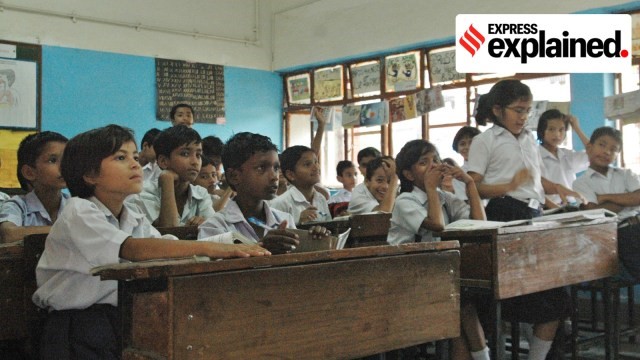
- 24 Dec 2024
In News:
The ‘no-detention’ policy was a significant part of India’s education reforms under the Right to Education (RTE) Act of 2009. This policy aimed to prevent the detention or expulsion of students until the completion of elementary education (Classes 1-8), with a focus on reducing dropout rates and ensuring every child receives at least basic education. However, the policy has been contentious, with arguments both for and against its implementation.
What was the ‘No-Detention’ Policy and Why Was It Introduced?
The RTE Act (2009) made education free and compulsory for children aged 6 to 14, under Article 21A of the Constitution. Section 16 of the Act specifically prohibited the detention or expulsion of students in elementary education (Classes 1-8). The rationale was to prevent the demotivation and fear of failure that might cause children to drop out of school, especially those from marginalized backgrounds. By promoting automatic progression through grades, the policy aimed to ensure that no child was left behind due to academic struggles.
Key to this system was Continuous and Comprehensive Evaluation (CCE), which assessed students on a holistic basis, beyond just formal exams, encouraging learning through regular feedback and assessments.
Amendments to the RTE Act (2017 and 2019)
In 2017, a Bill was introduced to amend the RTE Act, following concerns about the effectiveness of the ‘no-detention’ policy. The amended policy allowed for regular exams in Classes 5 and 8. If students failed, they would be given a re-examination within two months. If they still did not meet promotion criteria, detention could be enforced. This amendment empowered the Centre and states to decide whether to detain students in these grades.
The amendment came after criticism of the original policy for promoting students without sufficient learning progress. States like Madhya Pradesh and Punjab argued that no-detention was leading to poor academic performance, and called for a return to the traditional system of promoting students based on examination results.
Arguments for and Against the No-Detention Policy
Arguments for No-Detention:
- Reduced Dropout Rates: The policy helped ensure students, especially from disadvantaged backgrounds, continued in school without the fear of failure, leading to a drop in dropout rates.
- Holistic Development: It encouraged a child-centric learning approach where students were assessed on their overall development rather than just exam performance.
- Social Inclusivity: By promoting students regardless of performance, it was hoped that education would be more inclusive, preventing marginalization of students from lower socio-economic backgrounds.
Arguments Against No-Detention:
- Decline in Learning Outcomes: The policy led to a lack of motivation for students to perform academically. Without the accountability of exams, many students became less serious about their studies.
- Low Teacher Accountability: With automatic promotion, teachers had less incentive to ensure quality learning, leading to an overall dip in teaching standards.
- Impact on Educational Standards: Data indicated a decline in learning levels in government schools, as students were passed through the system without mastering the required skills.
In 2015, the Central Advisory Board of Education (CABE) conducted a study suggesting that more flexibility was needed in the policy, allowing schools to retain students who were significantly behind. However, there were differing views within the committee. Some members argued that detention had no proven benefits, and that the real issue was the poor quality of the education system itself.
In 2016, the TSR Subramanian Committee on the New Education Policy suggested continuing the no-detention policy until Class 5, citing evidence of reduced dropout rates and increased enrollment. However, other states pushed for scrapping it due to concerns over declining educational standards.
The Shift Toward Scrapping the No-Detention Policy
By 2019, the RTE Act was amended to give states the discretion to hold back students in Classes 5 and 8, if they failed to meet the promotion criteria. This change came after state feedback that the no-detention policy was having adverse effects on learning outcomes and teacher accountability.
In 2024, the Ministry of Education took further steps to formalize this shift by introducing new rules under the RTE Act Amendment. Students failing to meet the promotion criteria in Classes 5 and 8 will be given additional instruction and an opportunity for a re-examination. If they still fail, they can be detained, with specialized guidance provided to help them catch up.
Which States Continue or Scrapped the No-Detention Policy?
The decision to maintain or scrap the policy varies across states and union territories:
- States Retaining No-Detention Policy: Andhra Pradesh, Arunachal Pradesh, Goa, Karnataka, Kerala, Maharashtra, Odisha, Telangana, Uttar Pradesh, among others, continue to implement the no-detention policy, citing its role in minimizing dropouts and promoting inclusivity.
- States That Have Scrapped the Policy: Delhi, Punjab, Madhya Pradesh, Rajasthan, West Bengal, and Gujarat have already discarded the policy, opting for examinations and re-examinations in Classes 5 and 8 to ensure better academic accountability.
Why the Controversy?
The debate over the no-detention policy hinges on balancing academic accountability with social inclusivity. Supporters argue that it ensures children from marginalized communities receive their full elementary education, while opponents point to the decline in learning standards, especially in government schools, as a major issue.
In summary, while the no-detention policy was introduced with the noble aim of reducing school dropouts and ensuring every child completed at least elementary education, its effectiveness has been questioned due to concerns over declining learning outcomes. The recent changes represent a shift towards better accountability and quality in education, while still ensuring that children receive additional support before being detained.
Space Docking Experiment (SpaDeX) Mission
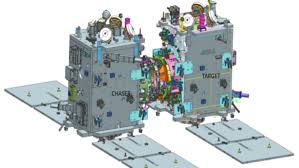
- 24 Dec 2024
In News:
The Indian Space Research Organisation (ISRO) is set to launch its Space Docking Experiment (SpaDeX) mission, a key milestone in India’s space capabilities. The mission will deploy two 220-kg satellites, SDX01 (Chaser) and SDX02 (Target), into a 740 km orbit using the PSLV-C60 rocket. SpaDeX aims to demonstrate the technology for satellite docking, a critical component for future space missions such as lunar exploration and the development of India's own space station, Bharatiya Antariksh Station (BAS).
Key Objectives of SpaDeX Mission:
- Primary Objective: To demonstrate the rendezvous, docking, and undocking of two small spacecraft (SDX01 and SDX02) autonomously.
- Secondary Objectives: Include testing electric power transfer between the docked spacecraft, composite spacecraft control, and post-docking payload operations.
The mission will see the two spacecraft gradually approach each other, performing a series of maneuvers, starting at a 20 km distance and closing to millimeter-scale distances before docking. Once docked, they will execute secondary tasks, such as scientific payload operations, using advanced technologies including high-resolution cameras, multi-spectral payloads, and radiation monitors.
Technological Innovations:
- Docking Mechanism: An indigenous, motor-driven, low-impact, androgynous docking system with capture, extension/retraction, and rigidization mechanisms. Both spacecraft are equipped with identical docking systems to simplify operations.
- Advanced Sensors: The spacecraft will use a Laser Range Finder (LRF), Proximity & Docking Sensors (PDS), and Rendezvous Sensors for precise distance measurement and to guide the docking process.
- Inter-Satellite Communication: The spacecraft will employ autonomous inter-satellite links (ISL) for real-time communication and data sharing.
- RODP Processor: This system, based on GNSS, ensures accurate position and velocity determination for the spacecraft during the docking procedure.
Significance of the SpaDeX Mission:
- Technological Milestone: SpaDeX positions India as the fourth country, after the US, Russia, and China, to develop space docking technology.
- Space Exploration: The successful demonstration will facilitate future space exploration, including Chandrayaan-4 and interplanetary missions.
- Modular Space Infrastructure: Space docking is essential for building multi-modular space stations, which allows the construction of large structures in space and enhances flexibility for future missions.
- Satellite Servicing: Docking enables satellite servicing, including repairs, refueling, and upgrades, which increases the operational lifespan of satellites.
SpaDeX Mission for India’s Space Station:
The SpaDeX mission is a crucial step towards India’s plans for the Bharatiya Antariksh Station (BAS). This will be India’s first modular space station, designed to conduct advanced scientific research, including in life sciences and medicine. BAS is expected to begin operations by 2035, and the development of docking technology is pivotal for its assembly and operation.
Mission Launch Details:
The PSLV-C60 rocket is set to launch the SpaDeX mission from Sriharikota. The mission is a demonstration of India's growing space capabilities and its indigenous technologies, including the Bharatiya Docking System (BDS).
Challenges and Technological Requirements:
The docking process requires extremely precise maneuvering, as the two spacecraft will be traveling at speeds of 28,800 km/h and must reduce their relative velocity to just 0.036 km/h before docking. This level of precision is crucial for future missions involving spacecraft servicing, crew transfers, and the construction of space infrastructure like BAS.
In addition to the docking demonstration, SpaDeX will carry 24 academic and startup payloads aboard the PSLV’s fourth stage, POEM (PSLV Orbital Experimental Module-4), offering a valuable platform for microgravity research.
Future Prospects:
The success of SpaDeX will pave the way for more complex missions, such as India’s lunar and Mars exploration programs, the development of the Bharatiya Antariksh Station, and international collaborations in satellite servicing and space infrastructure.
72nd North Eastern Council (NEC) Plenary Session
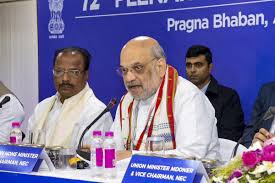
- 23 Dec 2024
Overview:
The 72nd Plenary of the North Eastern Council (NEC), concluded in Agartala, Tripura, marking the second time the city hosted this significant event since 2008. The plenary featured a series of high-level discussions focused on accelerating development and addressing the socio-economic challenges of the North Eastern Region (NER), which includes Arunachal Pradesh, Assam, Manipur, Meghalaya, Mizoram, Nagaland, Sikkim, and Tripura.
Key Highlights:
- Pre-Plenary Technical Sessions: Central ministries presented their developmental agendas for the NER, charting a path forward for the region's growth and addressing key challenges.
- Main Plenary:
- Presiding Officers: The session was chaired by the Union Home Minister and NEC Chairman, Shri Amit Shah, along with DoNER Minister, Shri Jyotiraditya M. Scindia, and Minister of State, Dr. Sukanta Majumdar.
- Participants: Governors, Chief Ministers, Chief Secretaries, Planning Secretaries, and high-ranking officials from all eight northeastern states will engage in strategic discussions to foster regional development.
- Agartala as Host:
- Agartala's selection as the venue signifies the evolving role of the city in regional development, as plenary sessions are usually held in Shillong and Guwahati.
- Significance of the NEC:
- The North Eastern Council (NEC), established in 1971, plays a pivotal role in the socio-economic development of the region. It was initially an advisory body but has evolved into a regional planning agency with a larger mandate.
- The NEC has contributed significantly to the development of critical infrastructure in the region, such as over 11,500 kilometers of roads, power generation through NEEPCO, and educational institutions like RIMS.
- Prime Minister's Vision for the NER:
- The Prime Minister’s vision for the region revolves around recognizing it as 'Ashta Lakshmi'—symbolizing immense potential and cultural richness. The NEC is central to realizing this vision through initiatives like the PM-DevINE scheme.
Key Achievements of the NEC:
- Over 11,500 kilometers of road construction, improving regional connectivity.
- Increased power generation capacity via projects managed by NEEPCO.
- Established institutions like the Regional Institute of Medical Sciences (RIMS) and others that cater to regional educational and technical needs.
Recent Focus and Shift in Governance:
- In the 72nd Plenary, the Union Home Minister highlighted a shift in the focus of police forces in northeastern states, urging them to focus not just on insurgency control but on ensuring the constitutional rights of citizens, reflecting a new governance phase in the region.
Strengthening Multimodal and Integrated Logistics Ecosystem (SMILE) program
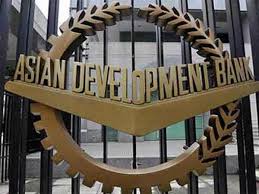
- 21 Dec 2024
On December 20, 2024, the Government of India and the Asian Development Bank (ADB) signed a $350 million policy-based loan aimed at expanding India's manufacturing sector and improving the resilience of its supply chains. This loan is part of the Strengthening Multimodal and Integrated Logistics Ecosystem (SMILE) program.
Key Points:
- Loan Agreement Signatories:
- Department of Economic Affairs (DEA), Ministry of Finance, Government of India
- Department for Promotion of Industry and Internal Trade (DPIIT), Ministry of Commerce and Industry
- Asian Development Bank (ADB)
- SMILE Program:
- Goal: Strengthen the logistics ecosystem to enhance India's manufacturing sector and improve supply chain resilience.
- Structure: The program includes two subprograms focusing on strategic reforms in logistics and infrastructure development.
- Key Features of the SMILE Program:
- Strengthening Multimodal Infrastructure: Enhances logistics infrastructure at the national, state, and city levels.
- Standardization: Improves warehousing and other logistics assets to attract private sector investment.
- External Trade Logistics: Enhances efficiencies in external trade logistics.
- Smart Systems: Adopts systems for efficient, low-emission logistics to promote sustainability.
- Expected Outcomes:
- Cost Reduction & Efficiency: Strategic reforms will reduce logistics costs and improve efficiency.
- Job Creation: Infrastructure development and reforms are expected to generate substantial employment opportunities.
- Gender Inclusion: The program promotes gender inclusion through economic growth initiatives.
- Impact on India’s Economy:
- The transformation of India’s logistics sector will enhance the competitiveness of the manufacturing sector and drive sustainable economic growth.
About the Asian Development Bank (ADB):
- Headquarters: Mandaluyong, Metro Manila, Philippines.
- Established: December 19, 1966.
- Members: 69 countries, including both regional (e.g., India, China) and non-regional (e.g., USA, Japan) members.
- Function: ADB promotes social and economic development in Asia and the Pacific, providing loans, grants, and technical assistance for development projects.
- Key Shareholders:
- Japan: 15.57%
- USA: 15.57%
- India: 6.32%
- China: 6.43%
- Australia: 5.77%
Specialised Investment Fund (SIF)
- 20 Dec 2024
In News:
SEBI has introduced a new asset class called Specialised Investment Fund (SIF), designed to bridge the gap between Mutual Funds (MFs) and Portfolio Management Services (PMS). This new asset class is targeted at informed investors who are willing to take on higher risks.
SIFs offer a blend of the flexibility seen in PMS and the regulatory framework governing MFs, making them suitable for investors seeking more customized and riskier investment strategies.
Key Features of SIF:
- Minimum Investment: The minimum investment threshold for SIFs is Rs. 10 lakh. However, accredited investors (who meet specific eligibility criteria) can invest with lower amounts.
- Expense Structure: SIFs will follow the same expense structure as mutual funds. For equity schemes up to Rs 500 crore in size, the maximum allowable fee is 2.25% of assets under management (AUM), with the cap decreasing as the fund size grows. This ensures transparency and keeps management fees in line with existing mutual fund norms.
- Investment Strategies: SIFs can offer a mix of open-ended, close-ended, and interval investment strategies. Specific details on permissible strategies will be released by SEBI in the future.
- Investment Restrictions:
- For debt instruments, a single issuer's exposure is capped at 20% of the total AUM. However, this can be raised to 25% with approval from the Asset Management Company (AMC)’s trustees and board of directors. Government securities are exempt from this limit.
- For equities, the exposure is capped at 10% of the total AUM, in line with the norms for mutual funds.
- Ownership in Companies: The maximum permissible ownership in any company is raised to 15%, including the MF exposure.
- REITs and InvITs: SIFs can invest a maximum of 20% of their AUM in Real Estate Investment Trusts (REITs) and Infrastructure Investment Trusts (InvITs). However, the exposure to a single issuer in these areas is limited to 10%.
- Branding and Marketing: SEBI mandates AMCs to distinguish SIFs clearly from MFs through distinct branding, advertising, and website presence. This helps in creating a clear differentiation between the two products for investors.
- Risk Management and Compliance: AMCs managing SIFs are required to have robust risk management systems, internal control systems, and expertise to handle the investments effectively. Trustees are responsible for ensuring that the AMC complies with all risk management, investor protection, and disclosure norms.
Regulatory Context:
- The regulations on SIFs are similar to those governing mutual funds, including taxation and other compliance requirements.
- SEBI also introduced the Mutual Fund Lite regulations to encourage the growth of passively managed funds, such as exchange-traded funds (ETFs) and index funds. These regulations are designed to reduce compliance burdens and lower the barriers to entry for new players in the mutual fund industry.
Significance of SIFs:
- Targeted Audience: SIFs cater to investors who are knowledgeable and willing to take on riskier investments, thereby filling a gap between traditional MFs (which are more conservative) and PMS (which offer highly customized solutions).
- Higher Flexibility: While SIFs maintain some regulations of MFs, they offer more flexibility in investment choices, allowing AMCs to explore more dynamic strategies.
- Investor Protection: By maintaining the same expense structure as mutual funds and ensuring compliance with regulatory frameworks, SEBI aims to protect investor interests while allowing for higher returns that come with riskier investments.
Parliamentary Standing Committee on Rural Development & Panchayati Raj (PSC) and MGNREGA
- 20 Dec 2024
In News:
Recently, the Parliamentary Standing Committee (PSC) on Rural Development and Panchayati Raj highlighted several issues within the Mahatma Gandhi National Rural Employment Guarantee Scheme (MGNREGS). The committee recommended reforms to address these challenges, especially concerning wage rates, workdays, payment systems, and infrastructure.
Key Challenges in MGNREGS Implementation:
- Wages Not Aligned with Inflation:
- MGNREGA wage rates have failed to keep pace with inflation, diminishing the purchasing power of rural workers. This discourages workers from completing the full 100 workdays.
- The wage guarantee of 100 days per household often falls short, especially during times of natural calamities or post-pandemic recovery.
- Revision of Permissible Works:
- The list of allowable work under MGNREGA is outdated and doesn't cover all rural needs, such as flood protection or land erosion management. Delayed revisions limit its effectiveness in addressing region-specific challenges.
- Delayed Payment of Wages:
- Issues like Aadhaar-based payment system (ABPS) glitches, inactive Aadhaar details, or frozen bank accounts often lead to delayed wage payments.
- The delay in wages undermines the scheme's goal of providing livelihood support.
- Unemployment Allowance:
- Those who apply for work but are not provided employment within 15 days are entitled to a daily unemployment allowance. However, this allowance is rarely paid, and when it is, the amounts are insufficient.
- Weak Social Audits:
- Social audits are a vital mechanism to ensure transparency and accountability. However, in the 2020-21 fiscal year, only 29,611 Gram Panchayats out of a total were audited, pointing to the weak social audit system.
- Lack of Ombudsman:
- Despite the provision for 715 ombudsmen, only 263 have been appointed. This reduces the oversight and accountability of the scheme.
Recommendations for MGNREGS Reform by the PSC:
- Revision of Wage Rates:
- Link MGNREGA wages to an inflation index, ensuring wages reflect the rising cost of living in rural areas.
- The base year (2009-2010) should be updated to align with current inflation trends.
- Increase Days of Work:
- The PSC recommended increasing the guaranteed workdays from 100 to 150 days. This will provide better livelihood security, especially in times of economic distress.
- Improvement in Payment Mechanisms:
- The committee recommended maintaining alternative payment systems alongside ABPS to prevent wage delays.
- A streamlined process should be put in place to ensure timely wage disbursement, reducing bureaucratic hurdles.
- National Mobile Monitoring System (NMMS):
- The committee stressed the importance of training programs to help beneficiaries effectively use the NMMS.
- It also suggested retaining alternative attendance methods to avoid exclusion due to technological barriers. NMMS helps enhance transparency and accountability by tracking attendance and work progress.
- Sufficient Fund Allocation:
- The committee emphasized the need for adequate financial allocations for MGNREGS to make it more effective in providing livelihood security to rural households.
Additional Context and Statistics:
- In 2024-25, the average wage increase under MGNREGA was just Rs 28/day.
- The MGNREGA wage increase for 2023-24 ranged from 2%-10%.
- The Consumer Price Index for Agricultural Labour (CPI-AL) is used to determine wage rates, although Dr. Nagesh Singh Committee (2017) recommended using the CPI Rural instead.
About the Parliamentary Standing Committee on Rural Development & Panchayati Raj (PSC):
- Established: August 5, 2004.
- Jurisdiction: The committee oversees the Ministry of Rural Development and the Ministry of Panchayati Raj.
- Composition: 31 members – 21 from Lok Sabha and 10 from Rajya Sabha.
- Functions:
- Reviews Demands for Grants and reports.
- Examines Bills referred by the Speaker or Chairman.
- Reviews the annual reports of relevant ministries.
- Considers national policy documents.
About MGNREGA:
- Launched: 2005 by the Ministry of Rural Development.
- Objective: Provides 100 days of unskilled manual work at minimum wages for rural households annually.
- Key Features:
- Legal Guarantee: Work must be provided within 15 days of request.
- Unemployment Allowance: If work isn't provided within 15 days, beneficiaries are entitled to a daily allowance.
- Women-Focused: At least one-third of beneficiaries are women.
- Social Audits: Mandated by the Gram Sabha for all projects under the scheme.
Masali Village in Gujarat
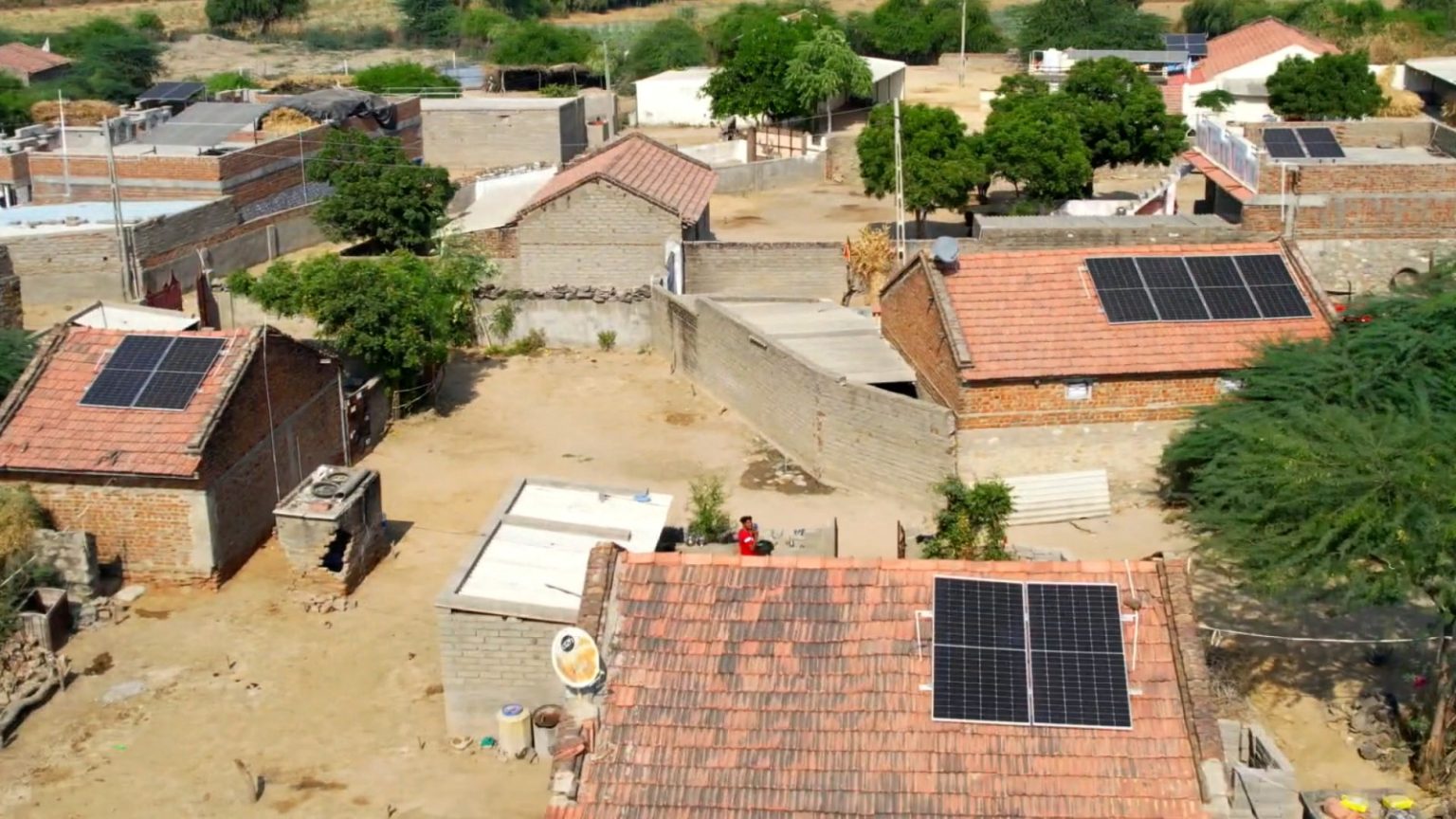
- 20 Dec 2024
In News:
In Gujarat, Masali village in Banaskantha district has become country’s first solar border village.
Key Highlights:
Location:
Masali village is located in Banaskantha district, Gujarat, approximately 40 kilometers from the Pakistan border. The village, with a population of around 800 people, has recently achieved a significant milestone by becoming India’s first fully solar-powered border village.
Solarization Initiative:
Under the PM Suryaghar Yojana, the village has installed solar rooftops on 119 houses. These solar installations collectively generate over 225 kilowatts of electricity, which is more than sufficient to meet the village’s energy needs. This initiative marks a step forward in solarizing border areas of India, promoting sustainability and reducing dependency on conventional energy sources.
Significance of the Initiative:
- India's First Solar-Powered Border Village: Masali village is the first of its kind in India, making it a model for other border regions to adopt renewable energy solutions.
- Promotes Renewable Energy: The transition to solar power encourages sustainability, reduces dependence on traditional fossil fuels, and supports India's renewable energy goals.
- Part of the Border Development Project: Masali is part of a broader government plan that aims to solarize 11 villages in Vav taluka and 6 villages in Suigam taluka, strengthening energy access in these strategically vital areas.
- Energy Security: By harnessing solar energy, the village enhances its energy reliability and self-sufficiency, especially in remote areas with limited access to the national grid.
PM Suryaghar Yojana: Launched in 2024, the PM Suryaghar Yojana aims to provide free electricity to eligible Indian households by subsidizing the installation of rooftop solar panels. Key features of the scheme include:
- A subsidy covering up to 40% of the installation cost of solar panels.
- Eligible families receive 300 free electricity units per month, saving up to Rs. 18,000 annually.
- The scheme is expected to save the government approximately Rs. 75,000 crore annually on electricity costs.
- It encourages the use of renewable energy, lowers carbon emissions, and reduces the electricity expenses for the government.
Eligibility for the Scheme:
- Indian citizens who own a house with a suitable roof for installing solar panels.
- Households must have a valid electricity connection and should not have received any prior subsidy for solar panels.
Broader Implications:
The successful solarization of Masali village is not just an energy achievement but also a significant step toward promoting renewable energy usage, enhancing energy security, and fostering sustainable development in India’s border regions. It is expected that other regions in Gujarat and across the country will follow this example, improving both local living conditions and national energy resilience.
Eastern Maritime Corridor (EMC)
- 19 Dec 2024
In News:
In mid-2024, India surpassed China as the largest importer of Russian oil. This milestone has been accompanied by the operationalization of a new maritime route, the Eastern Maritime Corridor (EMC), which connects Chennai in India to Vladivostok in Russia. The new sea route is significantly reducing both shipping times and costs, facilitating smoother commodity trade between the two countries, particularly crude oil shipments.
The Eastern Maritime Corridor (EMC)
The EMC, covering a distance of about 5,600 nautical miles, has reduced the shipping time between India and Russia’s Far East by up to 16 days. The Chennai-Vladivostok route now takes just 24 days, compared to over 40 days using the traditional St. Petersburg-Mumbai route. This reduction in transit time makes it a highly efficient route for transporting goods such as crude oil, coal, LNG, fertilizers, and other commodities. Additionally, this new corridor supports India’s maritime sector and aligns with the country’s broader vision for maritime growth and regional strategic engagement.
Key Features of the EMC:
- Efficiency and Cost Savings: The route cuts shipping time and distance, reducing costs associated with longer transit periods. For example, a ship traveling between Vladivostok and Chennai now takes only about 12 days at cruising speed, compared to the traditional route's 40+ days.
- Strategic Importance: Vladivostok is Russia’s largest Pacific port, and the corridor strengthens India's strategic presence in the region. This maritime route bypasses traditional chokepoints like the Suez Canal, offering faster, more direct access to key markets.
- Diversification of Trade: Besides crude oil, the EMC facilitates the transportation of coal, LNG, fertilizers, and metals, diversifying India's trade portfolio with Russia. It also helps maintain supply chains for essential goods.
- Boosting India’s Maritime Sector: The corridor supports India’s Maritime Vision 2030, which aims to enhance the efficiency and reach of India's maritime trade, a sector responsible for over 70% of the country’s trade value.
Economic and Strategic Impact:
- The new Eastern Maritime Corridor is particularly significant for India’s energy needs. As the world’s third-largest consumer of crude oil, India imports over 85% of its crude oil demand. The growing imports of Russian crude, especially the Urals grade, are crucial for securing India’s energy future. Additionally, Russia’s competitive pricing on crude, coupled with the savings on shipping costs through the EMC, makes Russian oil even more attractive.
- Beyond the economic benefits, the EMC also supports India’s broader strategic goals, including strengthening ties with Russia, a key partner in defense, nuclear cooperation, and regional geopolitics. The closer maritime links also help counterbalance China's growing dominance in the Pacific region, aligning with India's Act Far East Policy and enhancing trade and diplomatic engagement with East Asia and Russia.
Other Key Maritime Corridors Relevant to India:
- International North-South Transport Corridor (INSTC): A 7,200 km multimodal route linking the Indian Ocean with Russia, offering alternative trade routes to Europe and Central Asia.
- India-Middle East-Europe Economic Corridor (IMEC): A recent project announced at the G20 Summit, which connects India, the Middle East, and Europe via rail, road, and maritime links, fostering greater regional integration.
- Northern Sea Route (NSR): A 5,600 km Arctic route offering shorter transit times between the Barents and Kara Seas and the Bering Strait, gaining importance due to growing imports of Russian energy resources.
In conclusion, the Eastern Maritime Corridor is reshaping India-Russia trade dynamics, boosting economic ties and strategic cooperation between the two nations. By facilitating faster and cheaper transportation, the EMC is not only beneficial for trade in crude oil but also for a range of other commodities, positioning India as a key player in the evolving global trade network.
One Nation, One Election
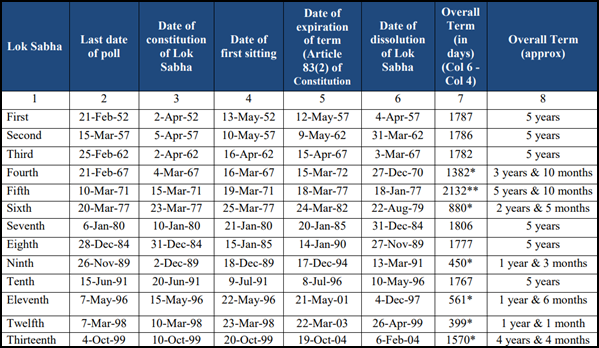
- 19 Dec 2024
In News:
The government has recently taken steps to implement "One Nation, One Election" by presenting two Constitution Amendment Bills in the Lok Sabha: the One Nation One Election – The Constitution 129th Amendment Bill 2024 and the Union Territories Laws Amendment Bill 2024.
Introduction to the Concept:
- Objective: Proposes synchronizing elections for Lok Sabha (national) and State Legislative Assemblies to be held on the same day.
- Purpose: Aims to reduce costs, minimize logistical challenges, and address governance disruptions caused by frequent elections.
- 2024 Report: The High-Level Committee Report on Simultaneous Elections, released in December 2024, outlines a roadmap for implementing this reform.
Historical Background:
- Previous Practice: From 1951 to 1967, Lok Sabha and State Assembly elections were conducted together.
- Disruptions: The practice was interrupted due to premature dissolutions and emergencies, leading to staggered elections across India.
High-Level Committee on Simultaneous Elections:
- Committee Formation: Headed by former President Ram Nath Kovind, formed on 2nd September 2023.
- Public Response: Over 21,500 responses, with 80% in favor.
- Political Party Responses: 32 political parties supported the idea, while 15 raised concerns about regional party marginalization.
- Expert Consultations: Majority of experts supported the reform, emphasizing resource optimization and reduced disruptions.
Committee Recommendations:
- Constitutional Amendments: Proposals to amend Articles 82A and 324A to enable simultaneous elections.
- Two-Phase Implementation:
- Phase 1: Synchronize elections for Lok Sabha and State Legislative Assemblies.
- Phase 2: Include Municipalities and Panchayats within 100 days.
- Single Electoral Roll: Creation of a unified electoral roll and EPIC for all levels of elections, reducing duplication and errors.
Rationale for Simultaneous Elections:
- Governance Consistency: Reduces focus on election preparation, allowing more attention to developmental work.
- Prevents Policy Paralysis: Mitigates disruptions caused by the Model Code of Conduct (MCC) during frequent elections.
- Resource Optimization: Reduces the need for personnel and resources for election duties, allowing better allocation to governance tasks.
- Preserves Regional Party Relevance: Local issues remain prioritized, ensuring regional parties' concerns are heard.
- Equitable Political Opportunities: Encourages diversification and inclusivity within political parties.
- Financial Benefits: Reduces the financial burden of conducting multiple elections, enhancing economic efficiency.
Conclusion:
- The concept of "One Nation, One Election" is a significant reform aimed at streamlining India's electoral processes. With broad public and political support, it promises improved governance, cost savings, and better resource management in the future.
Global Multidimensional Poverty Index (MPI) Report 2024

- 18 Dec 2024
In News:
The Global Multidimensional Poverty Index (MPI) Report 2024 was released by the United Nations Development Programme (UNDP) and the Oxford Poverty and Human Development Initiative (OPHI). The report focuses on the theme “Poverty Amid Conflict”, examining the interplay between violent conflict and multidimensional poverty.
Key Findings:
- Global Poverty Levels:
- 1.1 billion people (~18% of the global population) live in acute multidimensional poverty across 112 countries.
- India has the largest number of people living in multidimensional poverty, with 234 million people.
- Multidimensional Poverty Indicators:
- The MPI assesses poverty across three key dimensions:
- Health: Child mortality, malnutrition.
- Education: Years of schooling, school attendance.
- Living Standards: Access to clean water, sanitation, electricity, cooking fuel, housing quality, and ownership of basic assets.
- A person is considered MPI poor if they are deprived in one-third or more of the weighted indicators.
- The MPI assesses poverty across three key dimensions:
- Impact of Conflict:
- Countries experiencing violent conflict exhibit higher deprivations across all 10 MPI indicators when compared to non-conflict nations.
- 40% (455 million people) of those living in poverty are in conflict-affected regions. These regions include active war zones, fragile states, and areas with low peace.
- Child Poverty:
- 584 million children (27.9% of all children globally) are living in extreme poverty, highlighting the disproportionate impact on the younger population.
- In contrast, 13.5% of adults are living in extreme poverty.
- Regional Distribution:
- The regions with the highest poverty rates are Sub-Saharan Africa and South Asia, which together account for 83.2% of the global poor.
- Rural Poverty: A majority of the poor (83.7%, or 962 million people) live in rural areas, with 70.7% of the poor concentrated in rural parts of Sub-Saharan Africa and South Asia.
- Countries with the Highest Poverty:
- India: 234 million people.
- Pakistan: 93 million people.
- Ethiopia: 86 million people.
- Nigeria: 74 million people.
- Democratic Republic of the Congo: 66 million people. These five countries account for 48.1% of the global poor.
- Poverty Amid Conflict:
- The report underscores that 2023 witnessed the highest number of conflicts since World War II, leading to the displacement of 117 million people due to violent conflicts and other factors like natural disasters.
- Conflict zones continue to experience higher poverty, as nearly 40% of the world's poorest people live in these areas.
India's Poverty Situation:
- India's Poor Performance:
- India has 234 million people living in multidimensional poverty, making it the country with the largest share of the global poor.
- Regional Disparities: Poverty rates in rural areas remain high due to poor infrastructure, limited economic opportunities, and underdeveloped services outside of agriculture.
- Poor Nutrition: Malnutrition, especially among children, is a significant concern.
- Education: The quality of education remains subpar, especially in government-run schools, affecting learning outcomes.
- Water and Sanitation: Inadequate access to clean drinking water and sanitation is prevalent, especially in rural areas.
- Economic Setbacks: The COVID-19 pandemic worsened the economic situation, leading to job losses and reduced incomes.
Government Initiatives for Poverty Alleviation:
- National Food Security Act (NFSA): Provides subsidized food grains to 67% of India's population, targeting rural areas (75%) and urban areas (50%).
- Pradhan Mantri Ujjwala Yojana (PMUY): Aims to provide LPG connections to women from Below Poverty Line (BPL) families.
- Ayushman Bharat: Health insurance coverage up to ?5 lakh per family, designed to protect against catastrophic healthcare costs.
- POSHAN Abhiyaan: Focuses on reducing malnutrition, particularly among children, adolescent girls, pregnant women, and lactating mothers.
- Right to Education Act (RTE): Guarantees free and compulsory education for children between 6 and 14 years.
- Swachh Bharat Mission: Works to ensure universal sanitation coverage, including the construction of toilets and promoting cleanliness.
Schengen Zone Membership
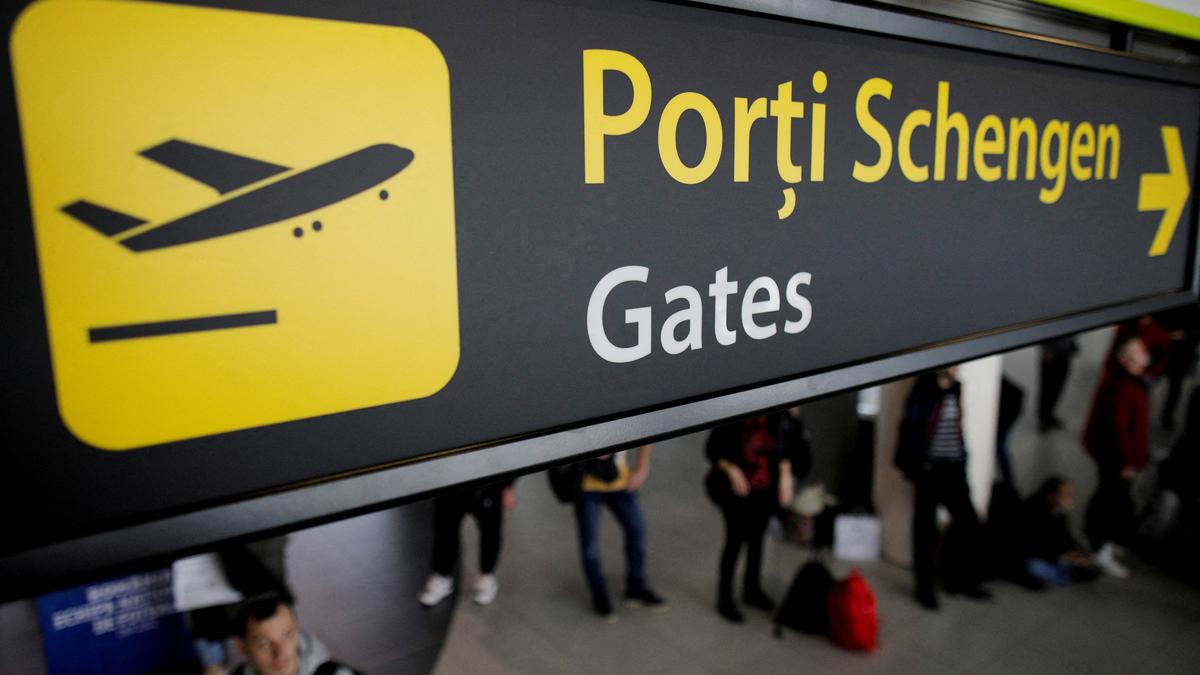
- 18 Dec 2024
In News:
Recently, the European Union (EU) cleared Bulgaria and Romania for full membership in the Schengen Zone, effective January 1, 2025. This marks the end of a 13-year wait for these Eastern European nations, which joined the EU in 2007.
Key Highlights:
- Schengen Integration: Until now, Bulgaria and Romania were partially integrated into the Schengen Zone, with air and sea travel without border checks since March 2024. However, land border controls were still in place due to Austria's objections, mainly due to concerns over migration and border security.
- Austria's Shift: Austria had blocked full entry for years but finally lifted its veto on December 9, 2024, after a border protection package was agreed upon. This package includes joint border guard deployment at the Bulgarian-Turkish border and temporary land border controls for six months.
Schengen Zone Details:
- What is the Schengen Zone?
- Created by the Schengen Agreement (1985) and the Schengen Convention (1990), it is the world’s largest area without internal border controls, allowing free movement across most EU countries and some non-EU countries. It currently includes 29 countries (25 EU states and 4 non-EU countries: Iceland, Liechtenstein, Norway, and Switzerland).
- Key Features:
- Free Movement: Over 425 million people can travel freely within the zone without border checks.
- Uniform Visa Policy: Short-term stays of up to 90 days are allowed for tourists and business travelers from outside the Schengen Area.
- Cross-Border Cooperation: The Schengen Information System (SIS) facilitates security and border management by sharing critical data between countries.
- Temporary Border Controls: Countries can temporarily reintroduce border controls for security reasons, after notifying other member states and the European Commission.
Bulgaria and Romania
- Bulgaria:
- Capital: Sofia
- Location: Southeastern Europe, bordered by the Black Sea, Romania, Turkey, Greece, North Macedonia, and Serbia.
- Political System: Parliamentary Republic
- Romania:
- Capital: Bucharest
- Location: Bounded by Ukraine, Moldova, Black Sea, Bulgaria, Serbia, and Hungary.
- Political System: Semi-Presidential Republic
Implications of Full Schengen Membership:
- Security and Unity: Romania and Bulgaria's full integration into the Schengen Zone is seen as a boost to both EU security and unity. It solidifies the EU's commitment to free movement while enhancing border security across Europe.
- Impact on Migration: With Bulgaria and Romania’s full membership, the EU’s border management system will be more integrated, helping to address ongoing migration challenges.
World Bank Report on Poverty in India
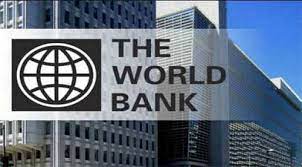
- 18 Dec 2024
In News:
The World Bank has set a clear mission: ending extreme poverty and boosting shared prosperity on a livable planet. This new edition of the biennial series, previously titled Poverty and Shared Prosperity, assesses the three components of the mission and emphasizes that reducing poverty and increasing shared prosperity must be achieved without high costs to the environment.
Extreme Poverty in India:
- Current Poverty Status (2024):
- 129 million Indians are living in extreme poverty, defined as earning less than $2.15 (?181) per day.
- This marks a significant improvement from 431 million in 1990, demonstrating progress in poverty alleviation.
- Poverty Trends:
- In 2021, there was a reduction of 38 million people in extreme poverty, bringing the total to 167.49 million.
- However, higher poverty standards (set at $6.85 (?576) per day) now show more Indians below the poverty line than in 1990, mainly due to population growth.
- Survey Methodology:
- The 2022-23 Household Consumption and Expenditure Survey (HCES) in India used the Modified Mixed Reference Period (MMRP) method to improve data accuracy.
- The report suggests the need for careful analysis of the survey data, which may impact future poverty estimates.
Global Poverty Trends:
- Slowdown in Poverty Reduction:
- Global poverty reduction has slowed considerably, with 700 million people (8.5% of the global population) living in extreme poverty in 2024.
- The slowdown is attributed to factors like low economic growth, the COVID-19 pandemic, and increased fragility.
- Challenges in Achieving Targets:
- The global extreme poverty rate is expected to be 7.3% in 2030, which is double the World Bank's target of 3%.
- At current rates, extreme poverty eradication by 2030 is unlikely. It could take decades to eradicate extreme poverty, and over a century to lift people above the $6.85/day threshold.
- Impact of Polycrisis:
- Polycrisis refers to the confluence of multiple crises—slow growth, climate risks, and increased uncertainty—making global poverty reduction more challenging.
- Global prosperity has also been impacted, with slower income growth, particularly after the pandemic.
India's Role in Global Poverty Reduction:
- Contribution to Global Poverty:
- India’s contribution to global extreme poverty is expected to decline significantly over the next decade. However, even if India eradicates its extreme poverty by 2030, the global extreme poverty rate would only fall from 7.31% to 6.72%, still above the UN SDG target of 3%.
Proposed Pathways for Addressing Poverty:
- Faster and Inclusive Growth:
- Focus on increasing labor productivity, income, and employment to boost economic growth inclusively.
- Climate Resilience:
- Strengthen risk management and mitigation efforts to protect vulnerable populations from climate shocks, ensuring that growth does not worsen environmental degradation.
Global Priorities:
- Low-Income Countries: Prioritize poverty reduction through investments in human, physical, and financial capital to foster growth.
- Middle-Income Countries: Focus on inclusive income growth that reduces vulnerability, and seek synergies such as cutting air pollution alongside poverty reduction.
- High-Income Countries: Accelerate climate mitigation efforts while managing the transition costs involved.
Atmanirbhar Clean Plant Programme
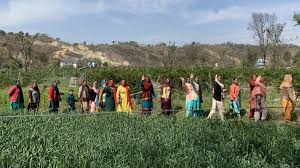
- 17 Dec 2024
In News:
Recently, the Government of India and the Asian Development Bank (ADB) signed a $98 million loan agreement to enhance horticulture crop productivity by improving plant health management. This initiative is part of India’s Atmanirbhar Clean Plant Programme (CPP), aiming to provide farmers with access to certified disease-free planting materials to improve yields, quality, and resilience, particularly against climate change impacts.
Key Highlights of the Loan Agreement
- Objective: Improve access to certified, disease-free planting materials for horticulture crops.
- Implementation: The project will be implemented by the Ministry of Agriculture and Farmers Welfare through the National Horticulture Board (NHB) and the Indian Council of Agricultural Research (ICAR).
- Focus: The initiative will enhance farmers’ productivity, resilience to climate change, and pest/disease management through the Atmanirbhar Clean Plant Programme (CPP).
About the Atmanirbhar Clean Plant Programme (CPP)
The Atmanirbhar Clean Plant Programme aims to tackle critical challenges in horticulture by ensuring farmers have access to high-quality, virus-free planting materials. The program is designed to:
- Enhance crop yields and quality.
- Promote climate-resilient varieties to help farmers adapt to rising temperatures and extreme weather events.
- Safeguard the environment by controlling plant diseases and pests proactively.
Key Components of the CPP
- Clean Plant Centers (CPCs): Establishment of nine world-class CPCs across India, equipped with advanced diagnostic labs and tissue culture facilities to maintain disease-free foundation planting materials.
- Certification Framework: A robust certification system will be introduced to ensure accountability in planting material production, including accreditation for private nurseries.
- Climate Resilience: Focus on developing and disseminating climate-resilient plant varieties, addressing the growing concerns over extreme weather events and changing pest behavior due to climate change.
Significance of the Loan Agreement
- Climate Adaptation: The project will help farmers mitigate the effects of climate change, including unpredictable weather patterns and altered pest/disease behaviors.
- Economic Impact: The initiative aligns with India's vision of self-reliance in horticulture (Atmanirbhar Bharat), boosting agricultural productivity and sustainability.
- Long-term Benefits: Improved farm productivity, sustainability, and economic well-being for farmers, especially in the face of climate change.
Global Horticulture Significance
- India’s Position: India is the second-largest producer of fruits and vegetables globally, contributing 33% to the agricultural GDP.
- Land Coverage: Horticulture occupies 18% of India’s agricultural land, yet its production surpasses that of food grains.
Implementation and Impact
- Implementation Period: The project will be executed from 2024 to 2030, with 50% financial assistance from ADB.
- Institutional Strengthening: The initiative will bolster India’s ability to manage plant health, integrating advanced diagnostic techniques and capacity-building for horticulture professionals.
African Swine Fever
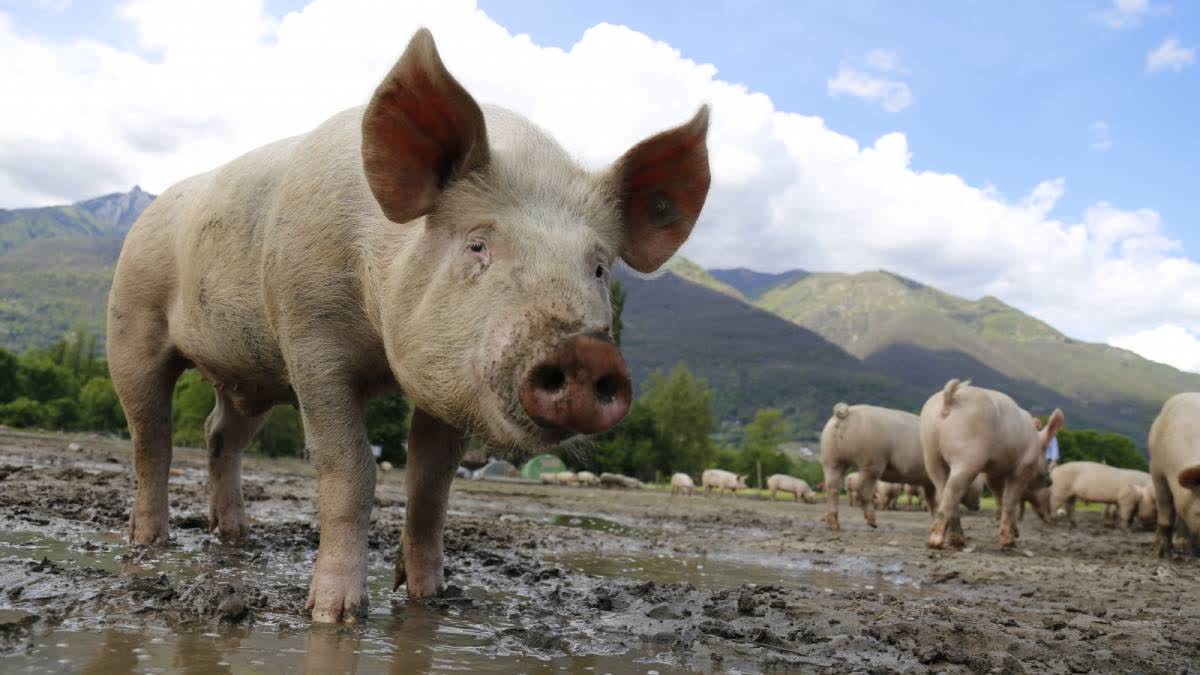
- 16 Dec 2024
In News:
African Swine Fever has been reported at two pig farms in Koottickal and Vazhoor grama panchayats in Kottayam district.
Action Taken:
- Culling of Pigs: All pigs in the affected farms and within a 1 km radius will be culled and disposed of according to Central Government guidelines.
- Infected Zone: A 1 km radius around the affected farms has been declared an infected zone.
- Surveillance Zone: A 10 km radius around the infected area has been designated a surveillance zone.
About African Swine Fever (ASF)
- African swine fever (ASF) is a highly contagious and hemorrhagic viral disease of domestic and wild pigs. It is a notifiable disease and its outbreak should be immediately reported to the higher authorities.
- ASF causes destructive effect on piggery due to high morbidity and mortality (up to 90-100 %). In India it was first confirmed in Arunachal Pradesh and Assam in February-March 2020.
- Currently, there is no effective vaccine available against ASF, so prevention by adopting strict biosecurity measures is the only way to prevent ASF.
CLINICAL SIGNS
- High fever (106-1080 F), lethargy and loss of appetite
- Increased respiration rate
- Blue-purple discoloration of skin of ears, abdomen and rear legs
- Discharge from the eyes and nose; bloody froth from the nose/mouth
- Constipation or bloody diarrhea
- Abortion
- Death of pigs in 6-15 days
Diagnosis: Confirmatory diagnosis in gov. laboratories
India-Australia CCEA
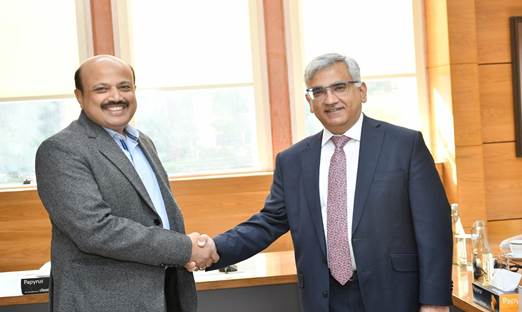
- 15 Dec 2024
In News:
The 3-day stocktake meeting took place in New Delhi, marking a significant step in strengthening the India-Australia trade and strategic partnership.
Key Highlights:
- Key Discussion Areas:
- Trade in goods and services.
- Mobility, agri-tech cooperation, and market access.
- Focus on ensuring the CECA delivers balanced benefits for both nations.
- Food security concerns and market access modalities aligned with India’s goals.
- Background on Negotiations:
- The discussions in New Delhi were a continuation of the 10th round of negotiations held in Sydney (August 2024).
- Both sides aimed to outline a path forward for the early conclusion of the CECA.
- Importance of CECA:
- CECA is a Free Trade Agreement (FTA) aimed at eliminating tariffs and liberalizing services sectors to enhance business opportunities and cooperation.
- It addresses five key areas: Goods, Services, Digital trade, Government procurement & **Rules of Origin/Product Specific Rules
- New areas under discussion include: Competition policy, MSMEs, Gender, Innovation, Agri-tech, Critical minerals & Sports
- Historical Context:
- CECA negotiations began in May 2011, were suspended in 2016, and resumed in September 2021.
- The India-Australia Economic Cooperation and Trade Agreement (ECTA) was signed in 2022, serving as a foundational agreement and a precursor to CECA.
- Trade Statistics (2023-24):
- India's imports from Australia: $16.2 billion.
- India's exports to Australia: $8 billion.
- Trade has grown significantly, with India being Australia’s 5th-largest trading partner.
- Regional Cooperation Initiatives:
- India and Australia are partners in several regional initiatives:
- Indo-Pacific Economic Framework for Prosperity (IPEF)
- Trilateral Supply Chain Resilience Initiative (SCRI) with Japan.
- India and Australia are partners in several regional initiatives:
- India's CECA with Other Countries:
- India has similar CECA agreements with several nations, including: Singapore, Malaysia, Thailand & New Zealand
- Future Prospects:
- The stocktake discussions have paved the way for further cooperation in areas such as agricultural innovation, market access, and supply chain resilience.
- Both nations are optimistic about the early conclusion of the CECA and the broader economic partnership.
This recent stocktake visit represents a significant step in the ongoing efforts to solidify trade ties and deepen economic cooperation between India and Australia under the framework of the Comprehensive Economic Cooperation Agreement.
100-Day Intensified Nationwide TB Campaign
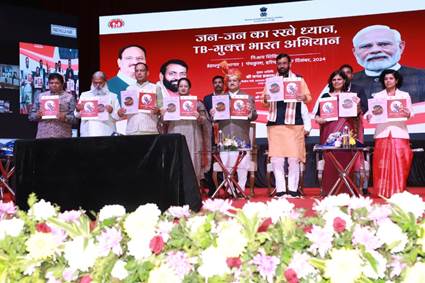
- 15 Dec 2024
In News:
- Union Health Minister Shri JP Nadda launched a 100-day intensified TB campaign in Panchkula, Haryana, aimed at reducing TB incidence and mortality. The campaign will focus on 347 high-risk districts across India.
Key Highlights:
- Campaign Goals:
- Find and treat missing TB cases, especially in high-risk groups.
- Significantly reduce TB-related deaths.
- Focus Areas:
- The campaign is part of India’s larger goal to eliminate TB before the 2030 SDG deadline.
- Strategies include early detection and rapid treatment of TB patients.
- Historical Context:
- TB was once seen as a "slow death" and patients were isolated.
- In 2018, the Prime Minister set the vision to end TB before 2030.
- Recent Government Initiatives:
- Ayushman Arogya Mandirs network of 1.7 lakh centers helps in early TB detection.
- Increased diagnostic infrastructure: Laboratories increased from 120 in 2014 to 8,293 today.
- Introduction of new drug regimens: Shorter and more effective treatments have increased the treatment success rate to 87%.
- Ni-kshay Support: Rs 3,338 crore transferred to 1.17 crore TB patients via direct benefit transfer.
- Key Achievements:
- TB decline rate in India has increased from 8.3% (2015) to 17.7% today, surpassing the global average.
- TB-related deaths have dropped by 21.4% over the past decade.
- Private Sector Involvement:
- Mandatory notification of TB patients by private practitioners has led to an 8-fold increase in TB case notifications.
- 4Ts Approach for TB Elimination: Test, Track, Treat, and Technology (use of advanced tools for diagnosis and treatment).
- New Initiatives:
- Ni-kshay Vahaan: Mobile vans to detect and treat TB patients in remote areas.
- Launch of national guidelines for a new drug-resistant TB regimen (BPaLM), which is a 4-drug combination therapy for multi-drug-resistant TB.
- Ni-kshay Poshan Yojana:
- Increase in nutritional support: Monthly support raised from Rs 500 to Rs 1000 per TB patient.
- The initiative also includes energy boosters for enhanced patient care.
- Mobile Diagnostics:
- Deployment of AI-enabled portable X-ray units and molecular tests to bring diagnostics closer to people, especially in remote areas.
- Monitoring and Data: Intensified data tracking via the Ni-kshay portal to provide timely updates to TB patients.
- Background of the Campaign:
- Part of the National TB Elimination Programme (NTEP).
- The 347 districts were selected based on indicators like death rates, presumptive TB examination rates, and incidence rates.
- Campaign Materials:
- Unveiling of Information, Education, and Communication (IEC) resources in regional languages.
- Honoring TB Champions and Ni-kshay Mitras during the event.
- Government’s Strategic Framework:
- India’s National Strategic Plan (NSP) for TB elimination (2017-2025).
- TB Harega Desh Jeetega Campaign and Pradhan Mantri TB Mukt Bharat Abhiyan.
- Tuberculosis (TB) Overview:
- TB is caused by Mycobacterium tuberculosis and primarily affects the lungs, spreading through the air.
- Mortality rate has decreased from 28 per lakh (2015) to 23 per lakh (2022).
Desert Knight Air Combat Exercise
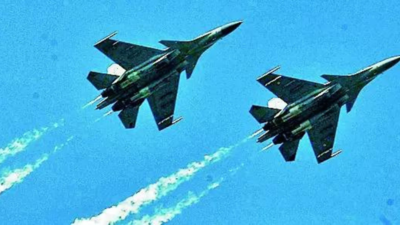
- 14 Dec 2024
In News:
India, France and UAE recently kicked off a major air combat exercise called “Desert Knight” over the Arabian Sea, strengthening trilateral defence cooperation and enhancing military interoperability amid the ongoing geopolitical churn.
Key Highlights:
- What It Is: A trilateral air combat exercise aimed at improving military interoperability and enhancing combat readiness among the participating nations.
- Nations Involved: India, France, and the UAE.
- Location: Conducted over the Arabian Sea, approximately 350-400 km southwest of Karachi.
- Aim of the Exercise:
- To strengthen trilateral defence cooperation among the three nations.
- To enhance combat skills and military interoperability of the air forces involved.
- Details of the Exercise:
- Duration: The exercise lasts for three days.
- The exercise involves large force engagement and intensive combat maneuvers in a realistic operational environment.
- Aircraft Involved:
- India: Deployed Sukhoi-30MKIs, Jaguars, IL-78 mid-air refuellers, and AEW&C (Airborne Early Warning and Control) aircraft from bases like Jamnagar.
- France: Deployed Rafale jets and other aircraft from Al Dhafra airbase.
- UAE: Deployed F-16 jets and other aircraft from Al Dhafra airbase.
Strategic Significance:
- The exercise is part of India’s efforts to build military interoperability with nations in the Persian Gulf region and strengthen defence ties with France and the UAE.
- Enhances combat readiness and strengthens cooperation against both traditional and non-traditional threats.
- Reflects the geopolitical shift and growing military cooperation in the Indo-Pacific region, especially in the context of China’s expansionist activities.
- Trilateral Framework: India, France, and the UAE launched a trilateral framework in 2022, focusing on areas like defence, technology, energy, and environment.
- Previous Exercises: In addition to Desert Knight, the countries also conducted their first trilateral maritime exercise in June 2023 to enhance cooperation in maritime security.
Broader Defence Relations:
- India-France: Long-standing strategic partnership with regular joint exercises like Shakti (army), Varuna (navy), and Garuda (air force).
- India-UAE: The defence relationship has grown significantly in recent years, with regular professional exchanges, combat exercises, and staff talks. India participates in the Desert Flag exercise at Al Dhafra airbase annually.
Switzerland Suspends MFN Clause in Tax Treaty with India
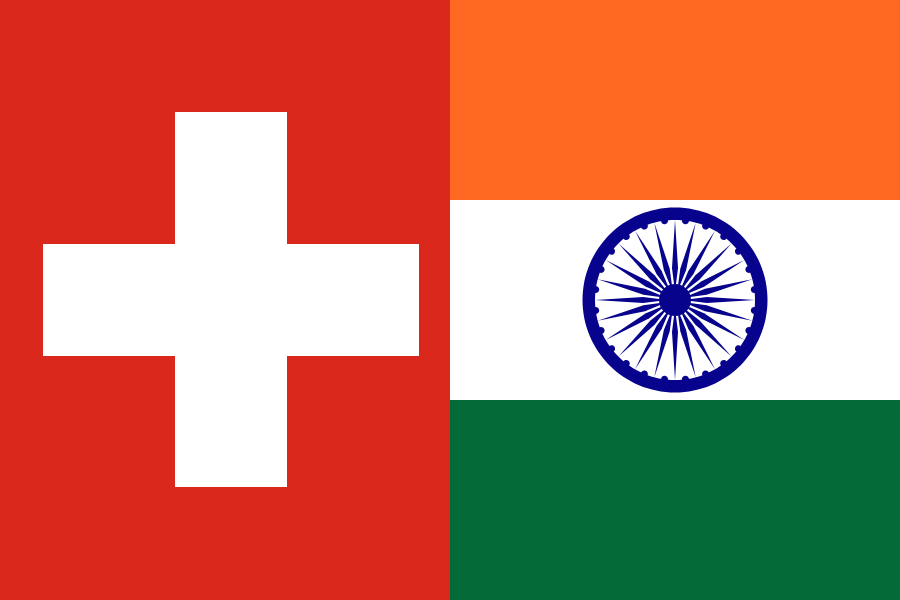
- 14 Dec 2024
In News:
Switzerland scraps MFN status to India, dividend income to face higher tax
Key Highlights:
- Reason for Suspension:
- The suspension follows a 2023 Supreme Court ruling in India, which clarified that the MFN clause in tax treaties is not automatically triggered when a country joins the OECD if the tax treaty with that country was signed before its OECD membership.
- The Court ruled that the Double Taxation Avoidance Agreement (DTAA) cannot be enforced unless it is notified under the Income-Tax Act, 1961.
- Details of the Suspension:
- Starting January 1, 2025, Switzerland will suspend the Most Favoured Nation (MFN) clause in its DTAA with India.
- The MFN clause was part of the India-Switzerland DTAA signed in 1994.
Impact of the Suspension:
- Higher Tax Liabilities for Indian Companies: Withholding tax on dividends from Switzerland will increase from 5% to 10% for Indian companies.
- Effects on Swiss Investments in India: Swiss companies will continue to face a 10% withholding tax on dividends from India, as per the India-Switzerland DTAA.
- Potential Re-evaluation of MFN Clauses by Other Countries: Other countries may reconsider how the MFN clause is applied in their tax treaties with India, following this development.
- No Change for Other Benefits: Other DTAA benefits and investments related to the European Free Trade Association (EFTA) will remain unaffected.
Most Favoured Nation (MFN) Clause Overview:
- Definition: The MFN principle ensures that favorable trading terms given by one WTO member country to another are extended to all other WTO members, promoting non-discrimination.
- Purpose: To ensure equal treatment among trading nations by preventing discrimination, and to promote fair trade and equitable market access.
- Key Features:
- Equal treatment in tariffs, quotas, and trade barriers.
- Members must extend the best terms to all other WTO members.
- Origin: The MFN principle was established after World War II as a cornerstone of the multilateral trading system under the WTO.
- Exceptions:
- Bilateral or regional trade agreements.
- Special access granted to developing countries.
- Non-WTO members (e.g., Iran, North Korea) are not bound by MFN rules.
- Removal of MFN:
- There is no formal procedure under the WTO to suspend MFN status.
- Countries are not obligated to notify the WTO when suspending or removing MFN treatment.
Recent Development:
- From January 1, 2025, Indian companies will face higher withholding tax (10%) on income sourced from Switzerland, as a result of the MFN clause suspension.
Empowering ASHA Workers
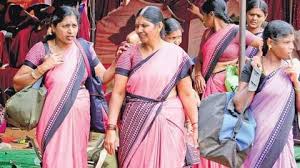
- 14 Dec 2024
In News:
ASHAs (Accredited Social Health Activists) are critical to India's healthcare system, particularly in rural and underserved areas. Since the program's launch in 2005, ASHAs have been integral in improving maternal health, increasing immunization rates, and promoting family planning and sanitation awareness. The network of ASHAs has grown to nearly 1 million members, making it one of the largest community health worker programs in the world.
Role of ASHAs: ASHAs work as community health activists, beyond basic healthcare delivery, by:
- Promoting health awareness.
- Mobilizing local participation in health programs.
- Increasing the utilization of existing health services.
They play a central role in improving maternal and child health, and their efforts have led to increased institutional deliveries and improved immunization rates in rural India.
Challenges Faced by ASHAs: Despite their essential role, ASHAs face several challenges:
- Inadequate compensation and delayed payments, which undermine motivation.
- Heavy workloads with insufficient support and resources.
- Social and economic marginalization, often leading to a lack of recognition and respect.
- Punitive systems that emphasize compliance and record-keeping, hindering autonomy.
This environment limits ASHAs' capacity to act as independent change agents, reducing their effectiveness in driving long-term health improvements.
Psychological Empowerment of ASHAs: To address these challenges, it's essential to empower ASHAs not just financially, but psychologically. Research in motivation theory, particularly Self-Determination Theory (SDT), provides a framework to achieve this. SDT emphasizes the importance of three key psychological needs:
- Autonomy: The need for ownership over one's work.
- Competence: The need to feel capable and effective in performing tasks.
- Relatedness: The need for social connection and recognition.
By fostering these three needs, ASHAs can become more intrinsically motivated and empowered to take ownership of their roles.
Strategies for Empowerment:
- Autonomy: Giving ASHAs more control over their work and decision-making can improve their engagement and efficacy. This can be achieved by reducing rigid monitoring and compliance systems.
- Competence: Providing continuous, quality training and resources will help ASHAs build the skills and confidence needed to perform their roles effectively. Digital tools and modern training programs can be used to enhance their capabilities.
- Relatedness: ASHAs should receive direct feedback from the communities they serve, fostering a sense of connection and accomplishment. Encouraging networks among ASHAs will also help combat isolation and provide peer support.
Government Efforts and Initiatives: The Indian government has recognized the need to support ASHAs through several initiatives:
- Increased remuneration and performance-based incentives.
- Insurance coverage under schemes like Ayushman Bharat.
- Training programs for skill development under the National Health Mission (NHM).
- Village Health Mapping and digital engagement platforms to enhance outreach and feedback mechanisms.
Moving Forward:
To further empower ASHAs, several key steps should be taken:
- Formalizing employment status: Transitioning ASHAs from volunteers to formal workers with benefits can ensure more stability and recognition.
- Improving compensation: Ensuring timely and adequate payments along with performance bonuses will incentivize ASHAs and increase job satisfaction.
- Enhancing infrastructure: Ensuring ASHAs have access to the necessary tools, medical supplies, and transportation to perform their tasks effectively.
- Digital integration: Expanding digital tools for data collection and communication can streamline their work and improve coordination with healthcare systems.
One Nation, One Election Bill
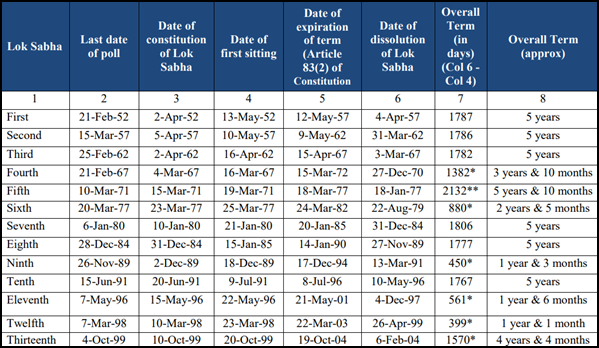
- 13 Dec 2024
In News:
The One Nation, One Election Bill has made significant progress in India, passing the Lok Sabha with 269 votes in favor and 198 votes against. The bill proposes the synchronization of elections for the Lok Sabha, State Legislative Assemblies, and local bodies (Panchayats and Municipalities), aiming to streamline the electoral process, reduce costs, and enhance governance.
Key Updates:
- The bill has been approved by the Union Cabinet and will be reviewed by a Joint Parliamentary Committee (JPC), whose report will be presented for further approval and discussion in Parliament.
- The process will unfold in two phases:
- Phase 1: Simultaneous elections for the Lok Sabha and State Legislative Assemblies.
- Phase 2: Synchronizing local body elections (Panchayats and Municipalities) within 100 days of the general elections.
Historical Context:
- 1951-1967: India previously conducted simultaneous elections for the Lok Sabha and State Assemblies until disruptions, such as premature dissolutions of assemblies, led to staggered elections after 1967.
- The One Nation One Election concept has been revived to address inefficiencies in the current system, especially the high cost of conducting frequent elections.
Advantages of the One Nation, One Election Bill:
- Cost Reduction: Synchronizing elections can significantly lower the financial burden by eliminating the need for multiple election cycles, reducing the deployment of resources like security personnel and election staff.
- Long-Term Governance Focus: Politicians can prioritize governance and policy implementation rather than election campaigning, fostering long-term stability.
- Increased Voter Turnout: Voter fatigue, caused by frequent elections, may reduce, leading to higher turnout as elections occur less often.
- Fairer Political Competition: Smaller regional parties could have a better chance to compete with larger national parties by reducing election-related costs.
- Efficient Use of Resources: Security forces and administrative resources can be deployed more effectively, avoiding the redundancy caused by multiple election cycles.
Disadvantages of the One Nation, One Election Bill:
- Synchronization Challenges: Aligning elections across a vast and diverse country like India, especially in states with unstable political situations, may prove difficult.
- Federalism Concerns: The implementation may require constitutional changes that could impact India's federal structure, potentially limiting the autonomy of states in election matters.
- Impact on Regional Issues: National issues could overshadow regional concerns, diluting the focus on state-specific matters.
- Challenges for Regional Parties: Larger national parties may dominate the electoral landscape, reducing the influence of regional parties and undermining the federal nature of the political system.
- Accountability Risks: Fixed terms without frequent elections might reduce public scrutiny of elected officials, affecting their accountability.
Constitutional Amendments Required:
The implementation of One Nation, One Election requires amendments to several key constitutional provisions:
- Article 83: Regarding the duration of the Lok Sabha, amendments are needed to synchronize the timing of dissolution.
- Article 85: Deals with the sessions and dissolution of Parliament, which needs to be aligned with the new system.
- Article 172: Pertains to the duration of State Legislatures, requiring amendments for synchronization.
- Article 174: Similar to Article 85, it governs the sessions and dissolution of State Legislatures, needing standardization.
Implementation Challenges:
- Logistical Complexity: Conducting simultaneous elections would require immense logistical coordination, including vast numbers of electronic voting machines and trained personnel.
- Political Accountability: Fixed terms may reduce the accountability that frequent elections bring, potentially leading to governance stagnation.
- Impact on Federalism: Amendments to the Constitution regarding state legislatures might face resistance from states concerned about their autonomy.
Disease X
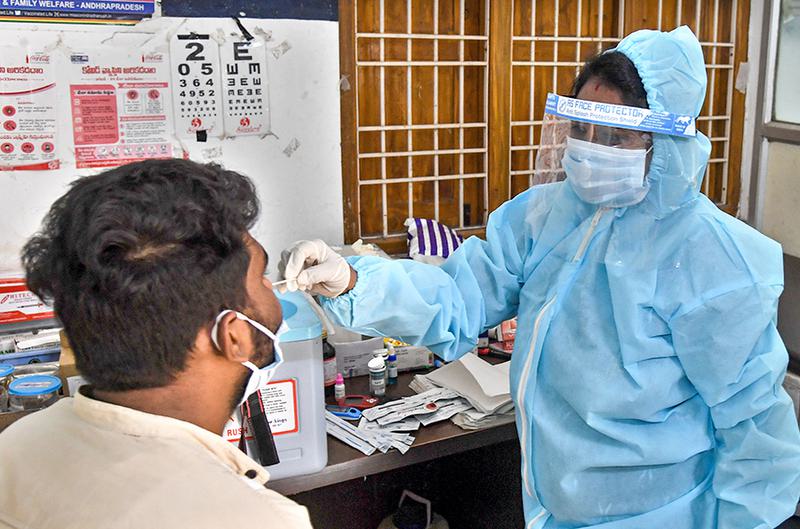
- 13 Dec 2024
In News:
The recent outbreak reported in the first week of December 2024 in the Democratic Republic of Congo, which has claimed over 400 lives and remains unclassified, has raised concerns that it could be an instance of Disease X.
What is Disease X?
- Definition: Disease X is a hypothetical, unidentified pathogen that has the potential to cause a global health crisis, either as an epidemic or pandemic.
- Origins: Could arise from zoonotic spillover (animal-to-human transmission), antimicrobial resistance, bioterrorism, or lab accidents.
- Severity: Predicted to be 20 times more lethal than SARS-CoV-2, with rapid transmission and significant mortality.
- Features: Represents unknown threats, including viruses, bacteria, fungi, or prions.
- Emergence Factors: Driven by deforestation, urbanization, climate change, and human-wildlife interactions.
Historical Context
- Conceptualization: The term was coined by the World Health Organization (WHO) in 2018, post the 2014–2016 Ebola outbreak, which revealed gaps in global health responses.
- Zoonotic Origins: Around 70% of emerging diseases since 1940 have zoonotic origins, linked to human encroachment on wildlife habitats.
WHO’s Priority Pathogen List
- Purpose: To focus global resources and attention on diseases with high epidemic or pandemic potential but lacking sufficient vaccines or treatments.
- Pathogens Listed: Includes Ebola, Marburg, Lassa fever, Nipah virus, Rift Valley fever, Zika virus, and Disease X.
- Criteria: These diseases have high mortality rates, potential for rapid spread, and inadequate preventive or therapeutic options.
Why Disease X is a Concern
- Unpredictability: Its emergence, transmission, and impact remain uncertain, making preparedness challenging.
- Globalization: Increased global travel and trade facilitate rapid spread of diseases across borders.
- Environmental Drivers: Climate change, urbanization, and deforestation disrupt ecosystems, bringing humans into closer contact with wildlife and pathogens.
Patterns in Emerging Diseases
- Zoonotic Spillover: The majority of emerging diseases originate from animals, with over 1.7 million undiscovered viruses in wildlife that could infect humans.
- Increased Outbreaks: Since the mid-20th century, the frequency of new diseases has risen, reflecting environmental, demographic, and global factors.
Challenges in Predicting Disease X
- Uncertainty: The vast pool of potential pathogens (viruses, bacteria, fungi, etc.) makes it difficult to predict the exact nature, origin, or timing of Disease X.
- Environmental and Climatic Changes: Climate change reshapes disease transmission dynamics, expanding the range of diseases like malaria and dengue.
- Technological and Knowledge Gaps: Many pathogens that could cause pandemics are still unidentified. Genomic sequencing and AI are advancing but cannot fully predict Disease X.
Global Preparedness Initiatives
- WHO's Role: WHO’s priority pathogen list and Pandemic Treaty aim to ensure coordinated, global responses to future outbreaks.
- Pandemic Fund: Supports strengthening health systems, especially in low-income countries.
- mRNA Vaccine Hubs: Enhance vaccine production capacity, particularly in developing countries.
- Coalition for Epidemic Preparedness Innovations (CEPI): Works on "prototype pathogen" platforms to create vaccines within 100 days of identifying a new disease.
Indian Initiatives for Disease Surveillance and Preparedness
- Integrated Disease Surveillance Programme (IDSP): Tracks outbreaks, monitors trends, and strengthens the country’s epidemic preparedness.
- National Institute of Virology (NIV): Focuses on researching viral pathogens and zoonotic diseases.
- Biotech Initiatives: Indigenous vaccine development and diagnostic tools are crucial for combating future outbreaks.
- Emergency Response Fund: Allocates resources to support immediate pandemic response efforts.
Key Challenges in Tackling Disease X
- Prediction Complexity: The interactions between humans, animals, and the environment are too complex to predict the exact nature of Disease X.
- Health Disparities: Low- and middle-income countries often lack the infrastructure to effectively combat pandemics, making them more vulnerable.
- Climate Change: Alters transmission dynamics, expanding the range of diseases carried by vectors like mosquitoes.
Way Forward
- Strengthening Surveillance: Implementing real-time genomic sequencing and AI-driven tools for early outbreak detection.
- Global Cooperation: Promoting equitable sharing of vaccines, diagnostics, and treatments to ensure timely and efficient responses.
- Public Health Infrastructure: Invest in strengthening healthcare systems, especially in high-risk regions like the Congo Basin.
- Research and Development: Focus on universal vaccines, diagnostic tools, and prototype pathogen platforms that can be quickly adapted to new diseases.
Indian Scientists Develop Novel Gene Therapy for Haemophilia
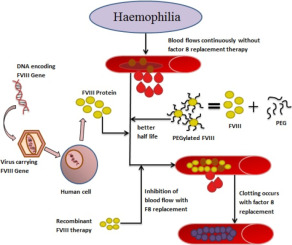
- 12 Dec 2024
In News:
Indian scientists have developed a successful gene therapy treatment for severe haemophilia A, a rare inherited blood disorder causing spontaneous, potentially fatal bleeding episodes.
Key Highlights:
Trial Success:
- The trial, conducted at Christian Medical College (CMC), Vellore, involved five patients from Tamil Nadu.
- Results: None of the five patients reported bleeding episodes for over a year after receiving the treatment. The follow-up period averaged 14 months.
- This marks a significant improvement, as haemophilia patients typically experience frequent bleeding episodes requiring regular treatment.
Gene Therapy as a One-Time Solution:
- Traditional treatments involve frequent injections of clotting factors to prevent bleeding.
- The new gene therapy offers a one-time solution, teaching the body to produce enough clotting factor to prevent hemorrhages.
Haemophilia A - Overview:
- Caused by the absence of Factor VIII, a critical blood-clotting protein.
- Hemophilia A primarily affects males (since it's an X-linked disorder), though some females with two defective X chromosomes can also develop the condition.
- Symptoms include prolonged bleeding from minor injuries or internal bleeding in joints and muscles.
Current Treatment Challenges:
- Haemophilia treatments can be expensive and require lifelong care, costing up to ?2.54 crore over a 10-year period.
- The therapy requires repeated infusions of clotting factors or synthetic alternatives, which can be burdensome.
Gene Therapy Details:
- The gene therapy used in this trial involves fusing stem cells with the gene for Factor VIII using a lentivirus vector (safer than other vectors like adenovirus).
- This therapy eliminates the need for repeated Factor VIII infusions, providing a more cost-effective and sustainable solution.
Global Context:
- India has one of the world’s largest haemophilia populations, with an estimated 40,000 to 100,000 patients.
- The success of this gene therapy in India could lead to localized production, reducing treatment costs and increasing accessibility to gene therapy in resource-constrained settings.
Comparison with Roctavian:
- Roctavian, the only FDA-approved gene therapy for haemophilia A, also uses gene delivery to produce Factor VIII, but requires immunosuppressive therapy and is not approved for children.
- In contrast, the Vellore trial's lentivirus-based approach is considered safer, especially for children, with the potential for broader application.
Railways (Amendment) Bill, 2024
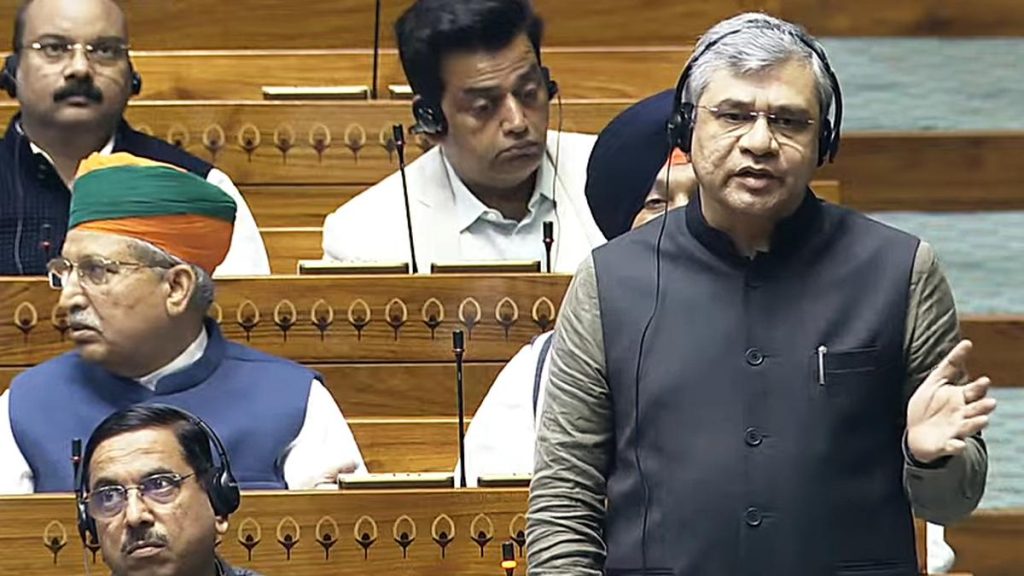
- 12 Dec 2024
In News:
The Railways (Amendment) Bill, 2024 was passed in the Lok Sabha on December 20, 2024, aiming to enhance the functioning and autonomy of Indian Railways.
Key Provisions:
- Repeal of the Indian Railway Board Act, 1905: The Bill repeals the 1905 Act and incorporates its provisions into the Railways Act, 1989, simplifying the legal framework by reducing the need to refer to two separate laws.
- Statutory Backing for Railway Board: The Bill provides statutory backing to the Railway Board, which previously lacked such a legal mandate. It grants the Union government the authority to determine the number of members, their qualifications, terms, and conditions of service.
- Decentralization of Power: The Bill aims to decentralize decision-making, granting greater autonomy to regional railway zones. This shift will allow more independence in budgeting, infrastructure projects, and recruitment, addressing long-standing calls for improved regional empowerment.
- Independent Regulator: The Bill proposes the creation of an independent regulator for overseeing tariffs, safety, and private sector participation. This idea has been supported by previous expert committees to encourage greater competition and transparency in the sector.
- Fast-Tracking Infrastructure and Services: The Bill will streamline approvals for new train services and infrastructure projects, helping meet demands from underserved regions, particularly in states like Bihar.
Objectives:
- Modernization of the Legal Framework: By incorporating the provisions of the 1905 Act into the 1989 Act, the Bill aims to simplify and modernize the legal architecture governing the railways.
- Empowerment of Railway Zones: Autonomy for railway zones is seen as a key step towards improving efficiency and accountability in operations.
- Private Sector Participation: The establishment of an independent regulator is expected to promote private participation in the railway sector, aligning with international standards.
Historical Context:
- The Indian Railways Act, 1890 established the foundations for Indian Railways as a government entity, which was further refined with the Indian Railway Board Act, 1905.
- This Bill aligns with recommendations from previous committees, including the Sreedharan Committee (2014) and the Committee on Restructuring Railways (2015), which have called for greater decentralization and autonomy for railway zones, as well as an independent regulatory body.
Challenges and Proposed Reforms:
- Financial Sustainability: The railways face challenges such as high operating costs, particularly from salaries and pensions, and losses in the passenger segment. Suggestions to improve finances include rationalizing passenger fares, enhancing freight revenue, and attracting private investment in infrastructure.
- Efficient Freight Operations: The Bill also addresses concerns about network congestion, especially for freight operations, and aims to increase the competitiveness of freight transport by improving infrastructure and reducing cross-subsidies from passenger fares.
Recommendations of various Committees on reforming the Railways
Regulatory Structure for Railway Sector
- Set up independent regulator to fix tariffs, promote competition, and protect consumer interests
Organisational structure of Indian Railways
- Corporatisation of Indian Railways
- Reorganise Railway Board to reflect a corporate business structure
- Envision the Railway Board as a policymaker alone
- Provide zones with full financial autonomy
Operations
- Separate core and non-core business (hospitals, schools, catering and security) of the Railways
- Permit private participation in some railway operations
Finances
- Clearly define social obligations and commercial business roles
- Restructure accounting procedure to reflect zone and route-wise profit and loss statements6,7,9
- Develop PPP models to attract private participation in: (i) developing and maintaining stations/ terminals, (ii) leasing of wagons, (iii) freight train operations, (iv) manufacturing of rolling stock, and (v) running non-core business operations
- Monetise railway assets
- Rationalise passenger tariffs
Regulatory Structure for Railway Sector
- Set up independent regulator to fix tariffs, promote competition, and protect consumer interests
Organisational structure of Indian Railways
- Corporatisation of Indian Railways
- Reorganise Railway Board to reflect a corporate business structure
- Envision the Railway Board as a policymaker alone
- Provide zones with full financial autonomy
Operations
- Separate core and non-core business (hospitals, schools, catering and security) of the Railways
- Permit private participation in some railway operations
Finances
- Clearly define social obligations and commercial business roles
- Restructure accounting procedure to reflect zone and route-wise profit and loss statements6,7,9
- Develop PPP models to attract private participation in: (i) developing and maintaining stations/ terminals, (ii) leasing of wagons, (iii) freight train operations, (iv) manufacturing of rolling stock, and (v) running non-core business operations
- Monetise railway assets
- Rationalise passenger tariffs
World Malaria Report 2024
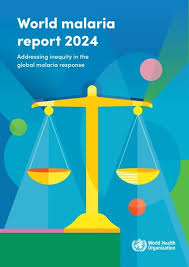
- 12 Dec 2024
In News:
The World Malaria Report 2024 released by the World Health Organization (WHO) highlights significant progress in malaria control, particularly in India, but underscores the continued burden of malaria in Southeast Asia, where India accounts for half of all malaria cases.
About Malaria:
- Cause: Malaria is caused by Plasmodium parasites, primarily P. falciparum and P. vivax, transmitted through bites from infected female Anopheles mosquitoes.
- Transmission: Non-contagious; transmitted via mosquito bites.
- Symptoms: Fever, chills, and headaches appear 10–15 days after the mosquito bite. In some individuals, the symptoms may be mild.
- Prevention: Includes vector control strategies like insecticide-treated bed nets and indoor spraying. Malaria is treatable with early diagnosis and prompt medication.
India’s Malaria Status:
- Progress:
- India has made significant strides in reducing malaria, with cases decreasing from 22.8 million in 2000 to 4 million in 2023, a reduction of 82.4%.
- Similarly, malaria-related deaths dropped by 82.9%, from 35,000 in 2000 to 6,000 in 2023.
- Exit from High-Burden-High-Impact (HBHI) Group:
- India exited this group in 2024, signaling its success in reducing malaria burden.
- Cases dropped by 69% (from 6.4 million in 2017 to 2 million in 2023), and deaths fell by 68% (from 11,100 to 3,500 in the same period).
Key Strategies Behind India's Success:
- Artemisinin-Based Combination Therapy (ACT): Used to treat malaria effectively.
- Long-Lasting Insecticidal Nets (LLIN): Widely deployed to control mosquito populations.
- Targeted Interventions: Focused on forested and tribal areas where malaria transmission is higher, particularly in states like Jharkhand, Odisha, and the North-East.
- Effective Monitoring: Ensures proper implementation of strategies and interventions.
WHO's Global Malaria Report 2024 Highlights:
- Global Burden: In 2023, there were 263 million malaria cases globally and 597,000 deaths. The African region remains the hardest hit, accounting for 95% of malaria deaths.
- Progress Since 2000: Malaria incidence and deaths have significantly decreased. The global number of malaria cases and deaths dropped substantially, with over 2.2 billion cases and 12.7 million deaths averted.
- Malaria-Free Countries: As of November 2024, 44 countries and one territory, including Egypt, have been certified malaria-free.
- Emerging Threats: Drug resistance (especially to Artemisinin) and insecticide resistance are growing concerns, affecting control efforts.
India and Southeast Asia:
- India contributes nearly half of the malaria cases in Southeast Asia, while Indonesia accounts for about one-third. Despite progress, India and Indonesia together accounted for 88% of malaria deaths in the region.
- South-East Asia Progress: The region reduced malaria cases by 82.4% from 22.8 million in 2000 to 4 million in 2023. Timor-Leste and Bhutan reported zero indigenous malaria cases in 2023.
Global Recommendations:
- WHO stresses the need for continued investment, innovative strategies, and targeted actions, especially in high-burden areas like Africa, to sustain progress and tackle remaining challenges, such as drug resistance, insecticide resistance, and new vector species like Anopheles stephensi, which thrives in urban areas.
Smuggling in India Report 2023-24
- 12 Dec 2024
In News:
The annual ‘Smuggling in India - Report 2023-24’ report, which highlights DRI’s performance and experience over the last financial year as well as trends in the field of anti-smuggling and commercial fraud, will be released during the celebration.
Major Narcotics Hubs and Routes:
- Afghanistan, Iran, and Pakistan (The Death Crescent):
- Primary source of heroin trafficked into India.
- Routes via Africa, the Gulf, and India-Pakistan border.
- Myanmar, Laos, and Thailand (The Death Triangle):
- Significant source of synthetic drugs and heroin.
- Drugs often enter India through porous northeastern borders (e.g., Assam, Mizoram).
- Vulnerable regions: Moreh, Churachandpur, Zokhawthar.
- Maritime Routes:
- India’s vast coastline provides opportunities for drug trafficking, often through concealed shipping containers and fishing vessels.
- Air Routes:
- Increased trafficking due to international air traffic.
- Smuggled drugs often concealed in luggage, courier packages, or ingested by mules.
Major Narcotics Trends and Seizures (FY24):
- Cocaine:
- Significant increase in trafficking, particularly from South America and Africa.
- 47 seizures, up from 21 in the previous year.
- Seized quantity: 107 kg.
- Methamphetamine:
- Spiked in northeastern states like Assam and Mizoram.
- Seized quantity in FY24: 136 kg; increased in the first half of FY25 with 123 kg.
- Hydroponic Marijuana:
- Increasing smuggling from the US, Thailand, and other countries.
- Black Cocaine:
- New form of cocaine coated with substances like charcoal or iron oxide to evade detection.
- Contraband Cigarettes:
- Smuggling through sea routes, especially from Southeast Asia and the Middle East.
- Seizures increased by 19% in FY25, reaching 3.95 crore sticks.
- Illicit Gold:
- Significant destination for gold smuggling from West Asia (UAE, Saudi Arabia).
- Seized quantity fell slightly (1,319 kg in FY24), with land and air routes being primary methods.
- Wildlife Smuggling:
- Seizures included 53.5 kg of elephant tusks, leopard skins, live pangolins, and more.
Challenges and Issues:
- Porous Borders:
- Smuggling across eastern borders with Bangladesh, Myanmar, and Nepal remains a significant challenge.
- Difficult terrain in these regions aids traffickers.
- Air and Sea Routes:
- Growing use of air and maritime routes due to faster movement of goods.
- Technology and Detection:
- Emergence of “black cocaine” challenges traditional detection methods.
Anti-Smuggling and Drug Control Efforts:
- International Cooperation:
- United Nations Office on Drugs and Crime (UNODC) and the International Narcotics Control Board (INCB) lead global efforts.
- Paris Pact Initiative targets Afghan opiate trafficking.
- Indian Initiatives:
- Narcotic Drugs and Psychotropic Substances Act (1985) provides legal framework.
- Narcotics Control Bureau (NCB) and Anti-Narcotics Task Force (ANTF) work together for enforcement.
- National Action Plan for Drug Demand Reduction and Nasha Mukt Bharat Abhiyaan focus on awareness and rehabilitation.
ABOUT DRI
- The Directorate of Revenue Intelligence (DRI) is the premier intelligence and enforcement agency on anti-smuggling matters under the aegis of Central Board of Indirect Taxes & Customs (CBIC), Government of India.
- It came into existence on 4th December 1957.
- With its Headquarters at New Delhi, 12 Zonal Units, 35 Regional Units and 15 Sub-Regional Units, DRI has been carrying out its mandate of preventing and detecting cases of smuggling of narcotic drugs & psychotropic substances, gold, diamonds, precious metals, wildlife products, cigarettes, arms, ammunitions & explosives, counterfeit currency notes, foreign currency, SCOMET Special Chemicals, Organisms, Materials, Equipment and Technologies) items, hazardous & environmentally sensitive materials, antiques etc. and taking punitive action against the organised crime groups engaged therein.
- DRI is also engaged in unearthing commercial frauds and instances of customs duty evasion.
Hyperloop Technology
- 12 Dec 2024
In News:
India’s first hyperloop test track (410 meters) completed by Indian Railways, IIT-Madras’Avishkar Hyperloop team and TuTr (incubated startup) at IIT-M discovery campus, Thaiyur in Chennai, Tamil Nadu.
India’s First Hyperloop Test Track:
- Location: IIT Madras’ Discovery Campus, Chennai.
- Collaboration: Indian Railways, IIT-Madras' Avishkar Hyperloop team, and TuTr Hyperloop (startup).
- Track Length: 410 meters.
- Test Speed: Initial successful test at 100 km/h; plans for 600 km/h in the next phase.
- Passenger Capacity: 40–100 passengers per pod, depending on design.
What is Hyperloop Technology?
- Concept: A high-speed transport system using pods in low-pressure vacuum tubes, designed to achieve speeds similar to aircraft (up to 1,100 km/h).
- Working:
- Magnetic Levitation (Maglev): Pods float on magnets, eliminating friction.
- Vacuum Tubes: Reduces air resistance for high-speed travel.
- Propulsion: Linear induction motors propel pods.
- Energy: Solar-powered, designed for zero emissions.
India’s Hyperloop Projects:
- Current Status:
- Successful testing of a 410-meter test track at IIT Madras.
- Ongoing feasibility studies for routes like Chennai Airport–Parandur, Mumbai–Pune, and Amritsar–Chandigarh.
- Phase 1 & 2: First phase involves a 11.5-kilometer track; future expansion to 100 km.
- Mumbai–Pune Corridor: Planned as India’s first full-scale Hyperloop system, aiming to reduce travel time from 3–4 hours to 25 minutes.
Benefits of Hyperloop:
- Speed: Capable of reaching speeds up to 1,100 km/h (operational speed around 360 km/h).
- Efficiency: Reduces travel time, energy-efficient with reduced air resistance and friction.
- Sustainability: Powered by renewable energy (e.g., solar power), offering zero emissions.
- Point-to-Point Travel: No intermediate stops, making it more time-efficient.
Challenges:
- Infrastructure Costs: Expensive to build the vacuum tubes, stations, and supporting systems.
- Land Acquisition: Difficulty in acquiring land, especially in densely populated areas.
- Regulatory Issues: Lack of a specific regulatory framework for such advanced transport systems.
- Technological Barriers: Complex engineering challenges, including development of maglev systems and vacuum seals.
Global Context:
- Origin: Concept proposed by Elon Musk in 2013.
- Worldwide Adoption: Hyperloop is being explored globally, with projects in the U.S., UAE, and Europe.
GG Tau A System

- 11 Dec 2024
In News:
GG Tau A System: Located about 489 light-years from Earth, this system is a triple-star setup that is between 1 to 5 million years old. This makes it an ideal system for studying the early stages of planetary formation.
Findings from the Discovery:
- Protoplanetary Disk: The system features a protoplanetary disk made of gas and dust, where new planets are forming. Researchers from NISER (National Institute of Science Education and Research), Odisha detected emissions from key molecules in the disk.
- Chemical Molecules: The molecules are frozen on tiny dust particles in the coldest regions of the disk (temperatures between 12 K and 16 K). These frozen molecules could serve as the building blocks for new planets.
Significance of the Discovery:
- Triple-Star Configuration: GG Tau A’s triple-star system is rare, and it has complex gravitational interactions among the three stars. This complicates how the gas and dust disk behaves and provides unique insights into planetary formation in multi-star systems.
- Study of Planet Formation: Traditionally, planets form around single stars or in binary systems. However, multi-star systems like GG Tau A present challenges for planet formation. Studying this system helps scientists understand how planets can form in more complex environments.
- Cold Conditions for Planet Formation: The study found that icy conditions in the disk are essential for the accumulation of materials that form planets. These low temperatures (below the freezing point of carbon monoxide) allow dust and gas particles to clump together, creating the foundation for exoplanets.
Broader Implications:
- Exoplanet Diversity: This research enhances our understanding of how planets form in different types of star systems, contributing to the study of exoplanets and their potential diversity across the universe.
- Astrophysics and Planetary Science: This discovery plays a crucial role in improving our knowledge of the early stages of planet formation, especially in complicated star systems like triple-star setups, which are rare but can provide valuable insights into how planetary systems evolve under unique conditions.
Research Tools:
- The team used advanced radio telescopes located in the Atacama Desert (Chile) to observe the emissions from the disk, highlighting the role of cutting-edge technology in space exploration and astronomical research.
Champions of the Earth Award
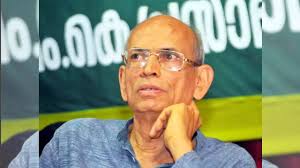
- 11 Dec 2024
In News:
- Madhav Gadgil, an Indian ecologist, received the UN Environment Programme (UNEP)'s Champions of the Earth Award in 2024.
- The Champions of the Earth Award is UNEP’s highest environmental honor, recognizing individuals, organizations, and governments for significant contributions to environmental protection and sustainable development.
Contributions of Madhav Gadgil:
- Work in Western Ghats:
- Gadgil is recognized for his seminal work in the Western Ghats, an ecologically sensitive region in India, which is a global biodiversity hotspot.
- He chaired the Western Ghats Ecology Expert Panel (WGEEP), formed by the Indian government to assess the impacts of population pressure, climate change, and development on the region.
- Recommendations by WGEEP:
- Ecologically Sensitive Area (ESA): Recommended declaring the entire Western Ghats range as an ESA.
- The WGEEP suggested dividing the Western Ghats into three Ecologically Sensitive Zones (ESZ) based on environmental sensitivity.
- Development Restrictions: Proposed a ban on activities like mining, quarrying, thermal power plants, and large-scale hydropower projects in the most sensitive zones (ESZ-1).
- Governance Recommendations: Suggested a bottom-to-top governance approach, beginning with Gram Sabhas, and the creation of a Western Ghats Ecology Authority (WGEA) for effective management.
- Impact of Gadgil’s Work:
- His research and recommendations have played a crucial role in shaping environmental policy and public opinion in India.
- The UNESCO World Heritage status for the Western Ghats in 2012 was a significant step in global recognition of the region’s ecological importance.
About the Champions of the Earth Award:
- History & Significance:
- Established in 2005, the award recognizes trailblazers working towards addressing the triple planetary crisis: climate change, biodiversity loss, and pollution.
- Since its inception, it has honored 122 laureates who have shown outstanding leadership in environmental conservation.
- 2024 Awardees:
- Madhav Gadgil (India) – for his work on the Western Ghats.
- Sonia Guajajara (Brazil) – for advocacy for Indigenous rights and environmental protection.
- Amy Bowers Cordalis (USA) – for her work in Indigenous rights and ecosystem restoration.
- Gabriel Paun (Romania) – for defending Europe’s old growth forests from illegal logging.
- Lu Qi (China) – for contributions to afforestation and combating desertification.
- SEKEM (Egypt) – for advancing sustainable agriculture.
Key Facts about UNEP:
- UN Environment Programme (UNEP):
- Established in 1972, UNEP is a leading global authority on environmental issues.
- UNEP aims to address climate change, nature and biodiversity loss, and pollution through scientific research, policy support, and public advocacy.
- UNEP is headquartered in Nairobi, Kenya and works closely with 193 Member States to tackle the planet’s most pressing environmental challenges.
Ayush Visa

- 11 Dec 2024
In News:
- Recently, the government introduced a separate category of Ayush Visa for foreigners seeking treatment under the Ayush systems of medicine (Ayurveda, Yoga, Unani, Siddha, and Homeopathy).
- The Ayush Visa is available in four sub-categories:
- Ayush Visa: For foreigners visiting India for therapeutic care and wellness treatment in accredited hospitals/wellness centers.
- Ayush Attendant Visa: For attendants accompanying patients seeking Ayush treatment.
- e-Ayush Visa: An electronic version of the Ayush Visa for convenience.
- e-Ayush Attendant Visa: For attendants accompanying patients on an e-Ayush Visa.
- Visa Statistics (as of December 4, 2024):
- 123 regular Ayush visas have been issued.
- 221 e-Ayush visas issued.
- 17 e-Ayush attendant visas issued.
- Advantage Healthcare India Portal:
- The Ministry of Health and Family Welfare launched the Advantage Healthcare India portal, an official platform for Medical Value Travel (MVT).
- The portal facilitates information for international patients seeking medical treatment and wellness services in India.
- The website for accessing the portal is www.healinindia.gov.in.
- Government's Objectives: The government aims to sensitize stakeholders involved in MVT, including Ayush facility providers, to ensure smooth services for international patients.
Human Rights Day 2024
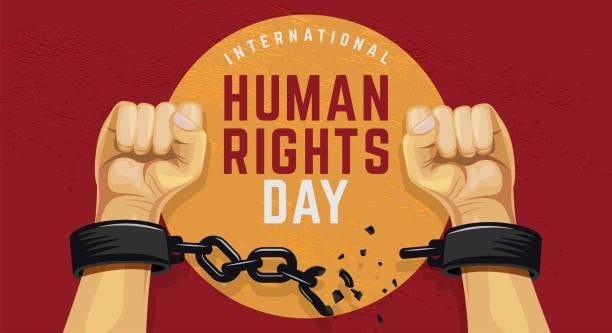
- 11 Dec 2024
In News:
Human Rights Day 2024 celebrated every year on 10th December is dedicated to promote protection of fundamental rights and freedom of all individuals.
Key Highlights:
- Purpose: Promote and protect human rights and freedoms worldwide.
- Theme (2024): “Our Rights, Our Future, Right Now” – highlights the importance of immediate action to protect and uphold human rights globally.
Historical Significance:
- Commemorates: The adoption of the Universal Declaration of Human Rights (UDHR) by the UN General Assembly in 1948.
- UN Resolution: Established by UN Resolution 423 (V) in 1950.
- First Observance: December 10, 1950.
- Father of Human Rights Day: Eleanor Roosevelt, for her pivotal role in drafting the UDHR.
Key Highlights:
- The UDHR:
- Adopted in 1948, it defines fundamental human rights for all individuals.
- Comprises 30 articles, addressing rights such as freedom, equality, and access to education, healthcare, and fair employment.
- Role of the UN: UN Human Rights Council (UNHRC): A body under the UN responsible for monitoring and promoting human rights worldwide, comprising 47 member states.
- Human Rights Day Focus in 2024:
- Emphasizes human rights education, particularly among the youth.
- Addresses emerging challenges like cybercrimes, AI impacts, and climate change.
- Reaffirms the importance of safeguarding human dignity globally.
Human Rights Declared by UDHR:
- Right to freedom and equality
- Right to life, liberty, and security
- Freedom from slavery and torture
- Right to recognition before the law
- Equal protection under the law
- Right to a fair trial
- Right to privacy and protection from attacks
- Right to work and fair employment
- Right to rest and leisure
- Right to education
- Right to an adequate standard of living
- Right to participate in government and cultural activities
AgeXtend
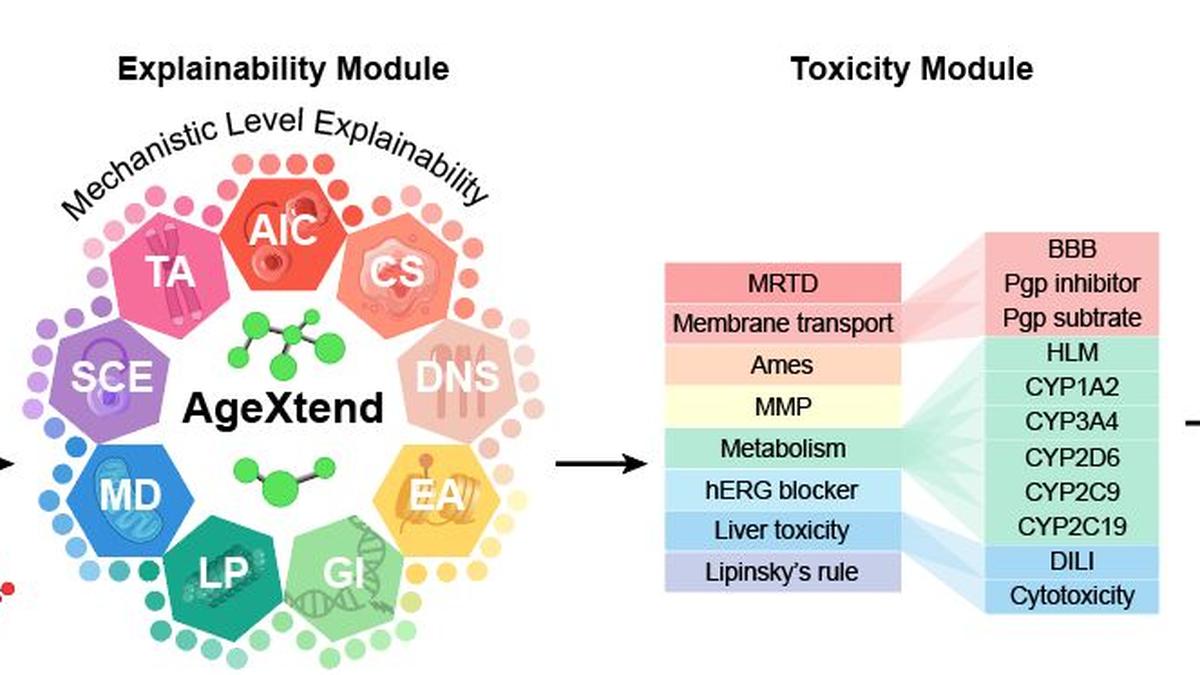
- 11 Dec 2024
In News:
- AgeXtend is developed by researchers at Indraprastha Institute of Information Technology – Delhi (IIIT-Delhi) to rapidly identify age-defying compounds, known as geroprotectors, to promote healthy aging.
Key Features of AgeXtend:
- What is AgeXtend?
- An AI-based platform designed to discover compounds with geroprotective (anti-aging) properties.
- Objective: To accelerate the identification of molecules promoting longevity by reducing the time and effort compared to conventional research methods.
- Development: Developed by researchers from the Indraprastha Institute of Information Technology (IIIT), Delhi.
- Working Mechanism:
- Scans over 1.1 billion compounds to predict, analyze, and validate molecules with anti-aging potential.
- Utilizes machine learning to determine efficacy, safety, and mechanisms of action.
- Experimental validation conducted using yeast, worms (C. elegans), and human cell models.
- Significance:
- The largest study on longevity, including compounds from commercial drugs, FDA-approved drugs, Ayurvedic, and Chinese medicine.
- Provides a scientific rationale for identifying geroprotective compounds, aiding targeted research.
- Open-source code and data promote collaboration and allow commercial exploration.
Platform Capabilities:
- AI Analysis:
- Uses bioactivity data from existing geroprotectors to predict new compounds with similar properties.
- Evaluates geroprotective potential, toxicity, and identifies target proteins and mechanisms of action for accuracy and safety.
- Unique Feature: Explains why a compound is considered geroprotective, revealing underlying mechanisms.
- Example Validation: Successfully identified benefits of metformin and taurine without prior knowledge, confirming the platform’s predictive power.
- Study Scale: The study involved scanning over 1.1 billion molecules, making it the largest study on longevity to date.
Open-Source and Commercial Use:
- Availability:
- The code and data are available as open-source for researchers and students. Commercial access is available for a fee.
- A Python package for AgeXtend is available via pip on pypi.org.
- Further Collaboration: The researchers have reached out to pharma companies to further investigate promising compounds.
- Exploring Natural Compounds: AgeXtend also explores natural compounds from the human microbiome, investigating their role in controlling cell aging.
Sora Turbo

- 10 Dec 2024
In News:
OpenAI officially launched Sora Turbo, its advanced text-to-video artificial intelligence (AI) tool, marking a significant development in the field of visual AI generation. This follows Google’s recent expansion of its video-generative AI tool, Veo, for Vertex AI customers. However, hours after Sora Turbo’s release, OpenAI temporarily disabled sign-ups due to overwhelming demand.
Key Features of Sora Turbo:
- Text-to-Video Generation: Users can input text prompts, and Sora Turbo will generate videos based on the provided descriptions. This makes it one of the first widely accessible AI-powered video generation models.
- Video Quality & Formats: Sora Turbo can generate videos in 1080p resolution, lasting up to 20 seconds. It supports both vertical and horizontal formats.
- Remix Options: Users can remix the AI-generated videos with their own assets, allowing for customization and extension of the content.
- Speed & Interface: The tool has been optimized for faster video generation compared to its previous version, with a new user interface designed to make the process more intuitive.
- Subscription Plans:
- ChatGPT Plus ($20/month): Users get up to 50 videos at 480p resolution per month or fewer videos at 720p resolution.
- ChatGPT Pro ($200/month): Offers 10 times more usage, with higher resolution and longer durations.
User Access and Availability:
- Access Requirements: To use Sora Turbo, individuals need to subscribe to either the ChatGPT Plus or ChatGPT Pro plans. The tool is included in these subscriptions without additional charges.
- Geographic Limitations: As of now, Sora Turbo is unavailable in the European Union, United Kingdom, and Switzerland.
Metadata & Safety Features:
- Transparency: All videos generated by Sora Turbo will include C2PA metadata for content provenance and authenticity, along with a visual watermark.
- Abuse Prevention: OpenAI has implemented safeguards to block the generation of harmful content, including child sexual abuse materials and sexual deepfakes.
Future Developments:
OpenAI has plans to offer tailored pricing for different users starting in early 2025. Additionally, Sam Altman, CEO of OpenAI, described Sora as a groundbreaking product, comparing it to the early days of GPT technology, and emphasized its potential for co-creation and innovative visual content generation.
INS Tushil Commissioned into the Indian Navy in Russia
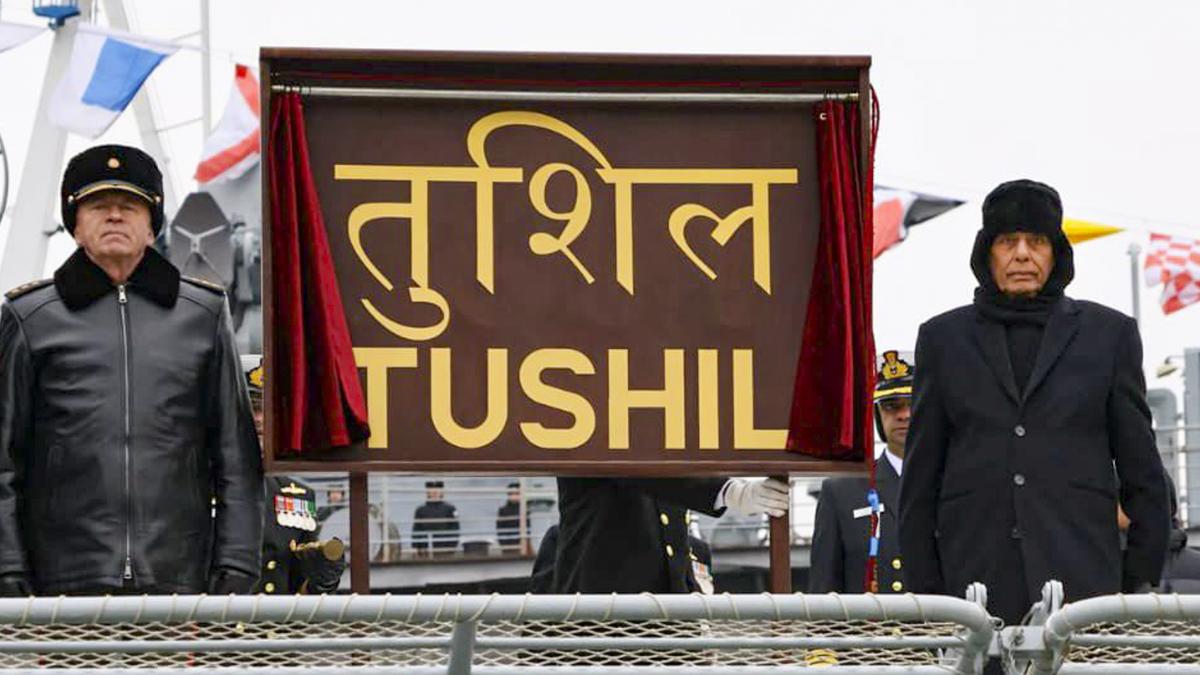
- 10 Dec 2024
In News:
Recently, the Indian Navy officially commissioned INS Tushil, a multi-role stealth guided missile frigate, at Kaliningrad, Russia. This marks a significant milestone in India-Russia defense cooperation and strengthens India’s maritime capabilities.
About INS Tushil:
- Class & Design: INS Tushil is the seventh ship in the Krivak III class (Project 1135.6) of frigates. It is part of an upgraded series, following the Talwar-class and Teg-class frigates, and was built at the Yantar Shipyard in Kaliningrad, Russia.
- Development & Contract: The construction was initiated under a 2016 contract between the Indian Government, JSC Rosoboronexport (a Russian defense company), and the Indian Navy. The ship incorporates 26% indigenous technology, highlighting growing cooperation between Indian and Russian industries.
- Key Features:
- Stealth Design: With advanced radar-absorbing features, it is less detectable by enemy radar.
- Weaponry: Equipped with BrahMos supersonic cruise missiles, Shtil Surface-to-Air Missiles, anti-submarine torpedoes, electronic warfare systems, and more.
- Versatility: Designed for blue-water operations, the ship can engage in air, surface, underwater, and electromagnetic warfare.
- Helicopter Deck: Supports operations of upgraded Kamov 28 and Kamov 31 helicopters.
- Speed: Capable of exceeding 30 knots.
Significance:
- Enhanced Naval Capabilities: The commissioning of INS Tushil boosts India’s defense strength in the Indian Ocean Region (IOR), a vital area for global maritime trade and security.
- Maritime Security: INS Tushil is designed to support India’s vision of maintaining stability in the IOR and to act as a deterrent against piracy and other maritime threats.
- Defense Cooperation: This commissioning exemplifies the growing defense ties between India and Russia, underscored by joint development, technology transfer, and shared expertise. The ship reflects a major step in India's self-reliance in defense, in line with the “Aatmanirbhar Bharat” initiative.
- Strategic Role in Global Defense: The ship is a key asset in the Indian Navy's efforts to secure maritime trade routes, enhance regional security, and provide humanitarian assistance in times of need.
Key Events & Facts:
- Construction Timeline: The keel of INS Tushil was laid in 2013, and it launched in 2021. After completing extensive sea and weapon trials in 2024, it was formally commissioned into the Navy.
- Collaborative Effort: The ship is a product of collaborative efforts between Indian and Russian industries, marking a significant achievement in joint defense manufacturing.
Governor of the Reserve Bank of India (RBI)
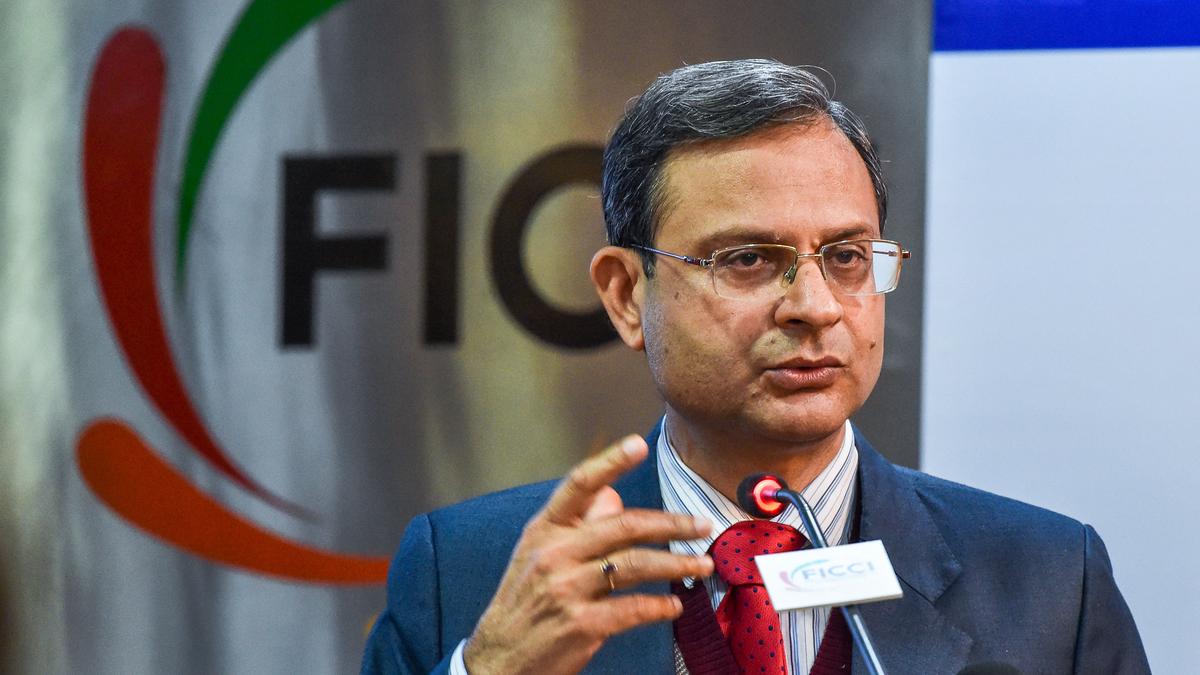
- 10 Dec 2024
In News:
Recently, the Government of India announced the appointment of Sanjay Malhotra as the 26th Governor of the Reserve Bank of India (RBI). He replaces Shaktikanta Das, whose six-year tenure ends on December 10, 2024.
Background of Sanjay Malhotra:
- Education & Early Career: Sanjay Malhotra is a 1990-batch IAS officer from the Rajasthan cadre. He holds a degree in Computer Science Engineering from the Indian Institute of Technology (IIT) Kanpur and a Master’s in Public Policy from Princeton University.
- Professional Experience: Malhotra has over 33 years of experience in various sectors including power, finance, taxation, information technology, and mines. He is currently serving as the Revenue Secretary in the Ministry of Finance, a position he has held since October 2022. Prior to this, he was Secretary of the Department of Financial Services.
- Monetary Policy and Challenges: As RBI Governor, Malhotra will inherit the responsibility of steering India's monetary policy, especially as inflation has been a persistent issue and economic growth has slowed. His first monetary policy review is expected in February 2025.
About the Appointment Process:
RBI Governors are appointed by the Government of India, and the appointment process involves the Financial Sector Regulatory Appointment Search Committee, which includes the Cabinet Secretary, the current RBI Governor, the Financial Services Secretary, and two independent members. The committee prepares a list of eligible candidates, interviews them, and the final decision is made by the Cabinet Committee on Appointments, chaired by the Prime Minister.
RBI Governors Eligibility Criteria
- The RBI Act, 1934 does not mention any specific qualification for the governor. People with different educational backgrounds were selected to head the institution. However, the governor traditionally is either a civil services personnel or an economist.
- Candidates should have prior experience in areas such as:
- Working with the International Monetary Fund (IMF) or World Bank.
- Serving as Chairman or General Manager of a bank.
- Holding significant positions in reputable financial or banking organizations.
- Working in the Ministry of Finance of the Government of India.
- The candidate must be an Indian citizen aged 35 years or older.
- The candidate cannot be a member of Parliament, State Legislature, or hold any other office for profit
Key Responsibilities of the RBI Governor:
- Monetary Policy: The RBI Governor chairs the Monetary Policy Committee (MPC), which is responsible for setting benchmark interest rates and managing inflation.
- Regulation of Financial Institutions: The Governor oversees the regulation of banks, non-banking financial companies (NBFCs), and other financial institutions.
- Currency Management: The Governor ensures the proper issuance of currency and the withdrawal of unfit notes.
- Crisis Management and Policy Execution: The Governor is pivotal in managing financial crises and ensuring the execution of policies related to foreign exchange and financial inclusion.
National Panchayat Awards 2024
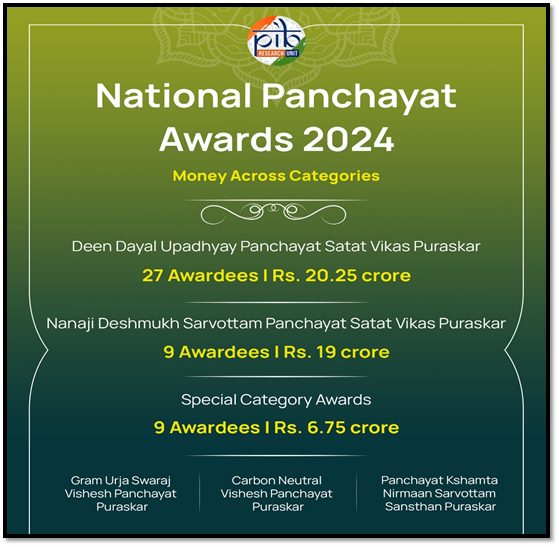
- 10 Dec 2024
In News:
The National Panchayat Awards 2024 celebrated the remarkable contributions of 45 Panchayats from across India for their role in driving sustainable and inclusive development in rural areas. The awards were presented on 11th December 2024 at Vigyan Bhawan, New Delhi, with President Smt. Droupadi Murmu and Union Minister of Panchayati Raj Shri Rajiv Ranjan Singh (Lalan Singh) presiding over the event.
Key Highlights:
- Categories of Awards: The awards focus on rural governance, social inclusion, environmental sustainability, and the achievement of the United Nations Sustainable Development Goals (SDGs) through Localization of SDGs (LSDGs).
- Deen Dayal Upadhyay Panchayat Satat Vikas Puraskar (DDUPSVP): Recognizes top-performing Gram Panchayats across 9 thematic areas like health, water, sanitation, and governance.
- Nanaji Deshmukh Sarvottam Panchayat Satat Vikas Puraskar: Awarded to the best Panchayats based on overall excellence across all LSDG themes.
- Gram Urja Swaraj Vishesh Panchayat Puraskar: Honors Panchayats for contributions to renewable energy.
- Carbon Neutral Vishesh Panchayat Puraskar: Awarded to Panchayats achieving net-zero carbon emissions.
- Panchayat Kshamta Nirmaan Sarvottam Sansthan Puraskar: Recognizes institutions supporting Panchayats in implementing LSDGs.
- Notable Achievements:
- Women’s Leadership: 42% of the award-winning Panchayats were led by women.
- States with Top Performers: States like Tripura, Odisha, and Maharashtra were prominently recognized for their achievements, especially in sustainability efforts like carbon neutrality and renewable energy adoption.
- Prize Distribution: A total of ?46 crore was awarded to the 45 winners, with funds directly transferred to their accounts.
Objectives:
The National Panchayat Awards aim to:
- Promote rural development through effective Panchayat governance.
- Encourage competition among Panchayats for improving public services and infrastructure.
- Recognize excellence in implementing sustainable development practices.
Key Themes of the Awards:
The awards are aligned with 9 LSDG themes that contribute to achieving 17 SDGs:
- Poverty-Free and Enhanced Livelihoods
- Healthy Panchayat
- Child-Friendly Panchayat
- Water-Sufficient Panchayat
- Clean and Green Panchayat
- Self-Sufficient Infrastructure
- Socially Just and Secured Panchayat
- Panchayat with Good Governance
- Women-Friendly Panchayat
The National Panchayat Awards 2024 underscore the significant role of Panchayats in shaping rural India by focusing on inclusive and sustainable development. The awards also promote the importance of localized governance in achieving SDGs, encouraging other Panchayats to adopt best practices and contribute to India's overall development goals.
Reforms in Merchant Shipping
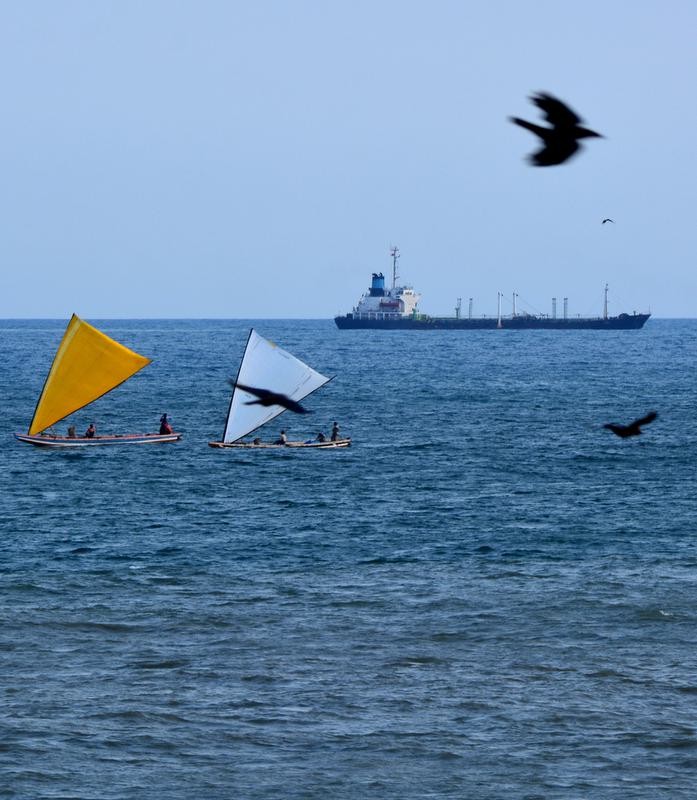
- 10 Dec 2024
In News:
The Government is preparing to introduce several significant bills aimed at driving much-needed reforms in the shipping industry. Key among them are the Merchant Shipping Bill, 2024 and the Coastal Shipping Bill, 2024, both of which promise to bring transformative changes to boost the sector.
Context and Need for Reforms:
- Outdated Framework: The Merchant Shipping Act, 1958, and the Coasting Vessels Act, 1838, fail to address the current needs of the shipping sector, particularly offshore vessels.
- Regulatory Gaps: Inadequate regulation of offshore vessels, maritime training institutions, and welfare provisions for seafarers on foreign-flagged ships.
- Global Alignment: Need to align with international maritime conventions and modernize administration for competitiveness and better governance.
- Investment and Growth: Outdated laws hinder foreign investment and ease of doing business, necessitating a regulatory overhaul.
Key Features of the Merchant Shipping Bill, 2024:
- Ease of Vessel Registration:
- Reduces ownership threshold for Indian entities from 100% to 51%, enabling NRIs, OCIs, and foreign entities to invest.
- Facilitates registration of vessels chartered by Indian entities under the "bareboat charter-cum-demise" system, promoting capital-deficient entrepreneurs.
- Temporary registration provisions for vessels destined for demolition, boosting India's ship recycling industry.
- Expansion of Vessel Scope:
- Broadens the definition of "vessel" to include all types of mechanized and non-mechanized crafts, such as submersibles, hydrofoils, and Mobile Offshore Units (MOUs).
- Ensures comprehensive regulatory oversight, particularly in the offshore sector, enhancing transparency and safety.
- Coastal Security:
- Strengthens coastal security by empowering authorities to issue instructions to all types of vessels, addressing vulnerabilities highlighted by incidents like the 26/11 Mumbai attacks.
- Marine Pollution Measures:
- Incorporates global standards like the MARPOL convention to address marine pollution.
- Introduces measures such as reducing sulphur content in marine fuel and banning single-use plastics on Indian ships.
- Launch of the ‘Swachh Sagar’ portal to ensure proper disposal of ship-generated waste.
- Seafarer Welfare:
- Expands welfare provisions to include Indian seafarers working on foreign-flagged ships, offering protections under the Maritime Labour Convention (MLC).
- Ensures better working conditions and safety standards for a growing workforce of Indian seafarers abroad.
- Maritime Training Regulations:
- Establishes a legal framework to regulate maritime training institutions, addressing the rise of unauthorized institutes post-liberalization.
- Ensures standardized, high-quality education and eliminates fraudulent practices.
Coastal Shipping Bill, 2024:
- Focus on Commercial Utilization of Coastal Waters:
- Distinguishes between the technical regulation of ships and the commercial utilization of Indian coastal waters.
- Aims to streamline licensing, operations, and coastal planning, enhancing the integration of inland and coastal shipping.
- Alignment with ‘Sagarmala’ Program: Supports the promotion of coastal shipping through better infrastructure and connectivity, in line with the government's ‘Sagarmala’ initiative, which boosts port connectivity and coastal trade.
International Conventions India Has Ratified:
- MARPOL: Focuses on preventing ship-based pollution.
- Maritime Labour Convention (MLC): Protects seafarers' rights and ensures fair working conditions.
- Bunker Convention: Addresses liability for oil pollution damage.
- Wreck Removal Convention: Mandates safe removal of shipwrecks.
- Civil Liability Convention: Establishes liability for oil pollution incidents.
Significance of the Reforms:
- Modernized Framework: Aligns India’s maritime laws with global standards for enhanced competitiveness.
- Economic Growth: Encourages foreign investment and entry into the shipping sector by removing regulatory barriers.
- Environmental Sustainability: Focus on combating marine pollution and ensuring sustainable shipping practices.
- Enhanced Safety and Security: Strengthens coastal security and ensures stringent safety regulations for vessels.
- Seafarers’ Welfare: Extends benefits and protections to Indian seafarers working globally, ensuring better working conditions.
- Maritime Education: Provides a robust regulatory framework to ensure high-quality, standardized maritime training.
Black holes in Webb data allay threat to cosmology’s standard model

- 09 Dec 2024
In News:
The James Webb Space Telescope (JWST), launched almost three years ago, has provided unprecedented insights into the early universe. Astronomers were surprised to find large, fully-developed galaxies when the universe was only 400-650 million years old, a timeframe previously thought to be too early for such structures.
The Challenge to the Standard Model:
- Cosmological Expectations: According to the standard model of cosmology, the first stars formed around 100-200 million years after the Big Bang, and galaxies began to form within the first billion years.
- Unexpected Findings: JWST observations seemed to show that galaxies were already large and well-formed much earlier than expected, raising questions about the timeline of galaxy formation.
New Study's Contribution:
- The Study: A study published in the Astrophysical Journal in August 2024, examined JWST data from the Cosmic Evolution Early Release Science (CEERS) Survey. They focused on galaxies from 650 to 1,500 million years after the Big Bang.
- Key Findings: One explanation for the unexpected size and number of early galaxies is that these galaxies formed stars much more efficiently than those in the modern universe. This could account for the larger-than-expected galaxies.
The Role of Black Holes:
- Impact of Black Holes: The study also explored the presence of black holes at the centers of early galaxies. These black holes, which emit significant light, were previously unaccounted for in the star mass estimations of galaxies. When the researchers removed the light from black holes (referred to as "little red dots"), they found that the galaxies were not as massive as initially thought.
- Correction to Previous Estimates: This adjustment in calculations helped align the data with the standard model of cosmology, sparing it from a major revision.
Implications for the Standard Model:
- Star Formation Efficiency: The study suggests that extreme conditions in the early universe, including abundant gas and less disruptive stellar events, could explain the higher efficiency of star formation.
- Cosmology's Stability: Despite earlier challenges to the standard model, the new findings support its predictions, showing that more efficient star formation and the role of black holes could explain the rapid growth of galaxies in the early universe.
Future Research Directions:
- Expanding Data Sets: The team plans to incorporate more data from JWST to study even earlier galaxies, which could help refine our understanding of galaxy formation in the early universe.
- Further Observations: As the team continues to explore galaxies from even earlier periods (around 400 million years after the Big Bang), they aim to strengthen their findings and provide further evidence to either support or challenge the current cosmological models.
RBI's Stance on De-dollarisation and Risk Diversification
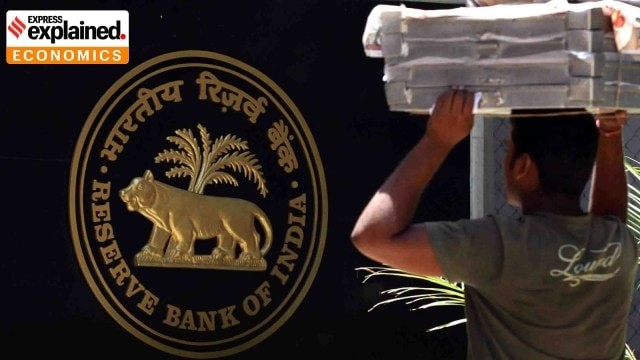
- 09 Dec 2024
In News:
- Governor Shaktikanta Das clarified that India is not pursuing "de-dollarisation," but rather aiming to diversify risk in trade. Measures like local currency trade agreements and Vostro accounts are intended to reduce reliance on the US dollar without eliminating it entirely.
- Objective: The goal is to de-risk India's trade, not to fully replace the dollar, especially amidst rising geopolitical tensions.
Key Highlights:
Vostro Accounts and Local Currency Trade:
- Vostro Accounts: These accounts, held by foreign banks in Indian rupees, facilitate transactions in local currencies, helping mitigate the risks of dollar dependency.
- International Currency Trade: By promoting trade in local currencies, the RBI seeks to reduce exposure to fluctuations in the dollar's value. However, these efforts have faced challenges due to India’s limited international presence in goods and services trade.
Gold Purchases by Central Banks:
- Surge in Gold Purchases: Global central banks, including the RBI, have significantly increased gold holdings. India added 27 tonnes in October 2024 alone, the largest increase among central banks.
- Motivations for Gold: The surge in gold buying reflects growing concerns about geopolitical risks, including the Ukraine war, and the potential for secondary sanctions. Gold is seen as a safe haven asset that diversifies reserves away from the US dollar.
Decline in Dollar Dominance:
- Global Shift: The share of the US dollar in global reserves has been gradually declining, partly due to the rise of the Chinese yuan. Central banks are increasingly turning to gold and alternative currencies as part of a diversification strategy.
- Impact on Emerging Markets: Countries like India are particularly motivated to reduce reliance on the dollar due to geopolitical tensions and economic vulnerabilities linked to the dollar’s dominance.
India’s Domestic Currency Trade Initiatives:
- Trade with Russia and UAE: India is actively exploring trade in domestic currencies with countries like Russia and the UAE to reduce dependence on the dollar. However, these efforts have faced slow uptake due to India’s trade deficit with most countries except the US.
- Challenges in Adoption: Despite efforts to internationalize the rupee, high transaction costs and lack of sufficient demand for rupee-based trade are significant barriers.
BRICS and Shared Currency Discussions:
- Geopolitical Complexity: BRICS nations, due to their geographical and economic diversity, have discussed the possibility of a shared currency, but no consensus has been reached.
- Reluctance Toward Yuan: India has resisted using the Chinese yuan for transactions, particularly for Russian oil imports, despite the yuan’s growing acceptance. This reflects India’s desire to maintain economic sovereignty and avoid over-reliance on a single currency.
Regional Implications of Dollar Volatility:
- Neighbourhood Impact: Countries like Sri Lanka, Bangladesh, Nepal, and Pakistan have experienced significant financial distress due to declining dollar reserves and surging oil prices, exacerbated by the Ukraine war.
- India’s Resilience: India’s strong dollar reserves have helped it maintain economic stability, but the country remains cautious of dollar volatility, particularly as oil prices rise.
Conclusion:
- Strategic Balance: India’s approach reflects a strategic balance of mitigating risks while ensuring global trade stability. The RBI’s emphasis on gold accumulation and pushing for rupee-based trade demonstrates a desire to reduce exposure to the dollar, but challenges like trade deficits and high transaction costs still hinder the full realization of these goals.
- Economic Sovereignty: Through these measures, India seeks to safeguard its economic sovereignty and financial stability in an increasingly unpredictable global economy.
Oilfields Amendment Bill, 2024
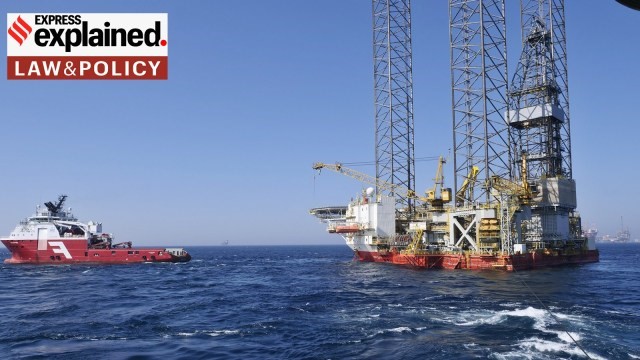
- 09 Dec 2024
In News:
To encourage domestic production of petroleum and other mineral oils, along with private investment in these sectors to reduce import dependence, the Rajya Sabha passed the Oilfields (Regulation and Development) Amendment Bill, 2024.
Key Details:
- Objective:
- Encourage domestic petroleum production.
- Reduce import dependence by promoting private investment in the oil sector.
- Key Amendments:
- Delinking petroleum from mining:
- The Bill separates petroleum and mineral oil production from mining activities.
- The Oilfields (Regulation and Development) Act, 1948, is amended to focus on mineral oils, distinct from the Mines and Minerals (Development and Regulation) Act, 1957.
- Expanded Definition of Mineral Oils:
- Includes hydrocarbons in various forms (natural gas, crude oil, petroleum, coal bed methane, and shale gas/oil).
- Excludes coal, lignite, and helium from the definition (falling under the Mines and Minerals Act).
- Petroleum Lease:
- Replaces the term "mining lease" with "petroleum lease."
- Covers activities such as exploration, development, production, and transportation of mineral oils.
- Private Investment:
- Provisions to attract private investment by clarifying rules for petroleum leases.
- Current mining leases remain valid without altering terms to the lessee's disadvantage.
- Decriminalization and Penalties:
- Replaces criminal punishment with financial penalties.
- Fines can go up to Rs. 25 Lakh, with additional penalties for ongoing violations.
- Rule-making Power of Central Government:
- Expands the Centre's authority over petroleum lease regulations, conservation, royalties, mergers, facility sharing, environmental protection, and dispute resolution.
- Delinking petroleum from mining:
- Significance of the Bill:
- Energy Access and Security: Ensures energy security by boosting domestic production.
- Attracting Investment: Creates a conducive environment for private sector investment.
- Environmental Safeguards: Provisions to control carbon emissions and promote renewable energy in oilfields.
- Opposition Criticism:
- State Rights on Mining: Concerns raised by opposition parties, particularly the DMK, about the reduction of state control over resource taxation (taxing mineral rights).
- Impact on Federal Balance: States traditionally manage mining rights under the Constitution’s State List (Entry 50). The Bill may shift control to the Union List (Entry 53), creating constitutional concerns.
- Environmental Concerns:
- Opposition figures like P.P. Suneer (CPI) argue for prioritizing public companies like ONGC, fearing privatization may worsen environmental governance.
- Adjudication of Disputes:
- Appeals against penalty decisions will be handled by the Appellate Tribunal, as per the Petroleum and Natural Gas Regulatory Board Act, 2006.
- Broader Significance:
- Energy Independence: Reduces reliance on fuel imports, fostering energy security and economic stability.
- Regulation: Strengthens the enforcement mechanism for petroleum operations while encouraging private participation.
Petroleum and Natural Gas Regulatory Board (PNGRB):
- Formation: Established under the Petroleum and Natural Gas Regulatory Board Act, 2006.
- Functions: Regulates refining, transportation, distribution, storage, marketing, and sale of petroleum products and natural gas.
- Role in the Bill: Ensures competitive markets for gas and handles appeals regarding regulatory decisions.
Markhor Spotted in North Kashmir's Baramulla
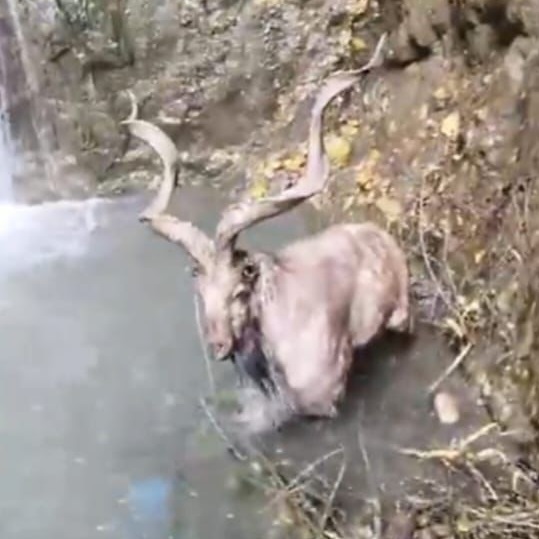
- 08 Dec 2024
In News:
Recently, a Markhor, a rare wild goat with spiral-shaped horns, was spotted in Noorkha village of Boniyar in Baramulla district, North Kashmir.The animal was seen near a waterfall in Noorkha, prompting locals to alert the authorities.
Key Highlights:
- The Markhor (Capra falconeri) is a large, wild goat species native to mountainous regions in Central and South Asia, including countries such as Pakistan, Afghanistan, India, and others.
- The species is considered endangered and is listed under Schedule I of the Wildlife Protection Act, 1972.
- The Markhor population in India is concentrated in areas like Shopian, Banihal Pass, Shamsbari, and Kazinag in Jammu and Kashmir.An estimated 300 Markhors live in Kashmir's dense pine and birch forests.
- Threats and Conservation Status:
- The Markhor faces threats due to human activities and natural factors, leading to a decline in its population.
- It is classified as 'Near Threatened' on the IUCN Red List and protected under the Indian Wildlife Protection Act and the Jammu and Kashmir Wildlife Protection Act.
- Significance of the Sighting:The sighting of the Markhor has excited both villagers and wildlife enthusiasts, as these animals are not typically found outside their natural habitats, particularly near human settlements.
Kawasaki Disease

- 08 Dec 2024
In News:
Comedian Munawar Faruqui recently opened up about a tough time in his life when his young son was diagnosed with Kawasaki disease.
What is Kawasaki Disease?
- Kawasaki disease is a rare condition that primarily affects children under the age of five.
- It causes inflammation in the blood vessels, including those that supply blood to the heart.
- With early treatment, most children recover without long-term health issues.
Possible Causes:
- The exact cause of Kawasaki disease is not well understood.
- Experts believe it may be triggered by a combination of genetic and environmental factors, including certain infections.
Symptoms: Kawasaki disease symptoms typically appear in two phases and may last for several weeks. Common symptoms include:
- High fever lasting more than five days.
- Red eyes without discharge.
- A rash on the body, particularly in the chest and groin area.
- Swollen hands and feet, sometimes accompanied by redness.
- Red, cracked lips and a swollen, red tongue.
- Swollen lymph nodes, particularly on one side of the neck.
Detection & Treatment:
- There’s no test that can directly detect Kawasaki disease. But healthcare providers can do tests that support a diagnosis of Kawasaki disease or rule out other possible illnesses.
- Treatment for Kawasaki disease includes:Immune globulin (IVIG), or human blood proteins you receive by IV. About 10% of children may not respond to the first dose of IVIG and will need a second dose or other medications.
Community and Individual Forest Rights in Anamalai Tiger Reserve (ATR)
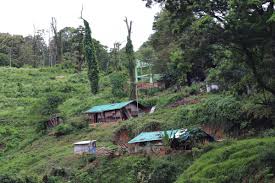
- 08 Dec 2024
In News:
- The Coimbatore District Collector, granted community and individual forest rights under the Forest Rights Act, 2006, to tribal settlements in the Anamalai Tiger Reserve (ATR) on December 6, 2024.These rights were handed over to three tribal settlements and 14 families at a function in Coimbatore.
Key Highlights:
- Community Forest Rights:
- Three tribal settlements in ATR—Nagaroothu I, Nagaroothu II, and Chinnarpathi—were granted community rights.
- These rights allow the settlements to collect forest produce excluding timber, such as mango, amla, honey, tamarind, and grass for making brooms.
- Individual Forest Rights:
- Individual rights were granted to 14 families from the Old Sarkarpathy tribal settlement.
- The families had requested these rights for traditional cultivation practices passed down by their ancestors.
- The individual rights were approved after the recommendation of a sub-divisional committee and scrutiny by a district-level committee.
- About the Forest Rights Act (FRA), 2006:
- Purpose: The FRA was enacted to address historical injustices faced by forest-dwelling communities and ensure their livelihood and food security.
- Key Provisions:
- Individual Rights: Self-cultivation, habitation, and in-situ rehabilitation.
- Community Rights: Access to grazing, fishing, water bodies in forests, and protection of traditional knowledge and customary rights.
- Eligibility: Rights can be claimed by any community or individual who has lived in the forest for at least three generations (75 years) before December 13, 2005.
- Critical Wildlife Habitats: The Act mandates that critical wildlife habitats in national parks and sanctuaries remain inviolate for wildlife conservation.
- Authorities Involved in Vesting Forest Rights:
- Gram Sabha: Initiates the process for determining the nature and extent of rights.
- Sub-Divisional Level Committee: Examines resolutions passed by the Gram Sabha.
- District Level Committee: Grants final approval for forest rights.
- Challenges with Forest Rights Implementation:
- The Xaxa Committee pointed out several challenges in the implementation of the FRA, such as:
- Arbitrary rejection of claims.
- Lack of deadlines for claims processing.
- Unaddressed rights of communities displaced by development projects.
- The Xaxa Committee pointed out several challenges in the implementation of the FRA, such as:
- About Anamalai Tiger Reserve:
- Located in the Anamalai Hills of Pollachi and Coimbatore District, Tamil Nadu, at an altitude of 1,400 meters.
- Established as a tiger reserve in 2007, it is surrounded by multiple protected areas like the Parambikulam Tiger Reserve, Chinnar Wildlife Sanctuary, and Eravikulam National Park.
- Biodiversity in Anamalai Tiger Reserve:
- Habitats: The reserve contains wet evergreen forests, semi-evergreen forests, moist deciduous forests, dry deciduous forests, and unique habitats like montane grasslands and marshy grasslands.
- Flora: The reserve is home to around 2,500 species of angiosperms, including species like balsam, orchids, and wild relatives of cultivated crops such as mango, jackfruit, cardamom, and pepper.
- Fauna: It supports various wildlife species, including tigers, Asiatic elephants, sambars, spotted deer, leopards, jackals, and jungle cats.
Sacred Groves
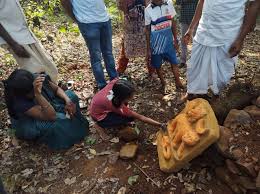
- 08 Dec 2024
In News:
Preserving India’s sacred groves can help country achieve its conservation & climate goals.
Sacred Groves in India:
- Sacred groves are forest patches that are culturally and spiritually important for various communities.
- They are known by different names across India: sarnas in Jharkhand, devgudis in Chhattisgarh, and orans in Rajasthan.
- Groves vary in size from small clusters of trees to expansive forests covering several acres.
Threats to Sacred Groves:
- Sacred groves are increasingly under threat due to deforestation, mining, and development activities.
- Many sacred groves are being displaced or degraded, putting biodiversity and cultural practices at risk.
Ecological and Cultural Importance:
- Sacred groves are rich in biodiversity and serve as important carbon sinks, contributing to climate change mitigation.
- They have been maintained by indigenous communities for centuries, creating a deep connection between people and nature.
- Sacred groves also play a crucial role in preserving indigenous spiritual practices and cultural heritage.
Contribution to Climate and Conservation Goals:
- India’s climate commitment of achieving net-zero emissions by 2070 requires the protection of forests, including sacred groves.
- Sacred groves, when properly managed, can help in carbon sequestration and climate change mitigation.
- Preserving these groves can support forest conservation and foster coexistence with wildlife, ensuring a balance between development and environmental preservation.
Role of Indigenous Communities:
- Indigenous communities have long used sacred groves to regulate the use of forest resources and ensure environmental sustainability.
- Before modern ecological concepts, sacred groves were seen as natural conservation practices guided by spiritual beliefs.
- This traditional wisdom can be leveraged to enhance conservation efforts in India.
Examples of Successful Sacred Grove Conservation:
- Waghoba Grove in Maharashtra:
- Located in Chinchwadi village, the Taata chi Vanrai grove is dedicated to Waghoba, the tiger deity, and covers eight acres.
- Local communities, including the Thakars, have successfully resisted illegal timber extraction and helped conserve the grove, witnessing the return of wildlife like leopards.
- Worship of Waghoba has played a significant role in preserving forest patches and fostering human-animal coexistence.
- Tadoba-Andhari Tiger Reserve:
- Sacred groves around the Tadoba Reserve, dedicated to Waghoba, are important in reducing human-wildlife conflicts by promoting spiritual ties with the forest.
Government and Community Efforts:
- The Jharkhand government introduced the concept of gherabandi (boundary walls) in 2019 to conserve sacred groves.
- In Chhattisgarh, the renovation of sacred groves has been undertaken to protect and restore these areas.
- Despite these efforts, challenges remain in involving local communities and integrating sacred groves into broader conservation policies.
The Role of OECMs in Sacred Grove Conservation:
- Sacred groves are considered part of Other Effective Area-Based Conservation Measures (OECMs), which are areas conserved for biodiversity outside protected regions.
- OECMs recognize the cultural, spiritual, and socio-economic value of these areas and promote sustainable conservation practices that benefit both biodiversity and local communities.
- Sacred groves play an essential role in achieving long-term biodiversity conservation and ecosystem services.
World’s Oldest Wild Bird Lays Egg at 74 in Hawaii
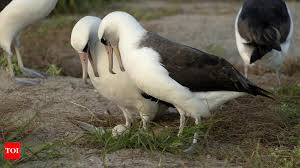
- 08 Dec 2024
In News:
Wisdom, the world’s oldest known wild bird, a Laysan albatross, has laid her estimated 60th egg at the age of 74. This remarkable event occurred at the Midway Atoll National Wildlife Refuge in the Pacific Ocean, part of the Hawaiian Archipelago.
Background on Wisdom and Laysan Albatrosses
Wisdom, first banded as an adult in 1956, has been a part of the albatross population in the Pacific for decades. Laysan albatrosses are known for their strong migratory habits and lifelong pair bonding.
The Life Cycle of the Laysan Albatross
The egg incubation process for Laysan albatrosses is shared between both parents and lasts around seven months. Once the chick hatches, it takes five to six months to develop before it is ready to take its first flight over the ocean. These seabirds, which predominantly feed on squid and fish eggs, spend the majority of their lives soaring across the open seas.
Wisdom’s longevity and success in raising up to 30 chicks over her lifetime have been notable achievements. While Laysan albatrosses typically live up to 68 years, Wisdom’s age surpasses this average by several years.
About the Laysan Albatross
The Laysan albatross (Phoebastriaimmutabilis) is a large seabird found across the North Pacific. The Northwestern Hawaiian Islands host nearly the entire population of Laysan albatrosses, with most breeding pairs found on islands like Laysan and Midway Atoll. These birds are known for their long-distance soaring capabilities, with some covering hundreds of miles a day without flapping their wings.
Laysan albatrosses have blackish-brown upper wings and backs, with flashes of white in their primary feathers. They are monogamous, forming lifelong bonds with a single mate. Despite their impressive flying ability and vast range, their population is currently listed as "Near Threatened" by the International Union for Conservation of Nature (IUCN).
Development Initiatives for North East Region (NER)
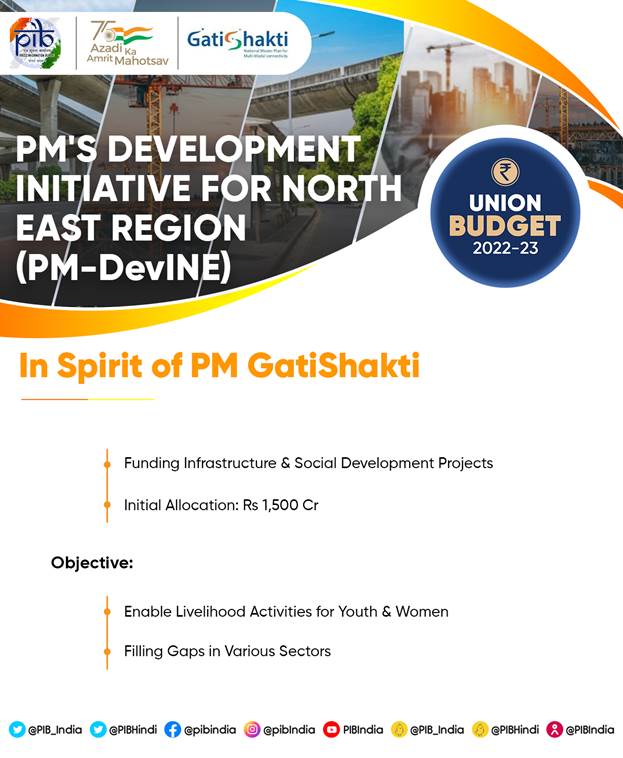
- 07 Dec 2024
In News:
Prime Minister’s Development Initiative for North East Region (PM-DevINE) was announced as a new Central Sector scheme, with 100% Central funding in the Union Budget 2022-23 with initial outlay of Rs.1500 crore.
PM-DevINE Scheme:
- Launched in 2022 as a Central Sector scheme, with 100% Central funding.
- Initial outlay: Rs. 1500 crore in the Union Budget 2022-23.
- Total outlay: Rs. 6600 crore for the period from FY 2022-23 to FY 2025-2026, approved by the Union Cabinet on 12 October 2022.
- Objectives:
- Fund infrastructure projects in the spirit of PM Gati Shakti.
- Support social development projects tailored to the felt needs of the NER.
- Enable livelihood opportunities for youth and women.
- Address development gaps in various sectors.
- 35 projects worth Rs. 4857.11 crore have been sanctioned under the scheme up to 30 November 2024, including 7 projects from the Union Budget 2022-23.
Industrialization Initiatives:
- North East Industrial Development Scheme (NEIDS):
- Launched on 1 April 2017, ended on 31 March 2022.
- Aimed at promoting industrialization in the NER.
- UNNATI Scheme:
- Launched on 9 March 2024 for enhancing regional infrastructure and promoting industrial growth.
- Provides specific incentives to industries, including:
- Capital Investment Incentive.
- Capital Interest Subvention.
- Manufacturing & Services Linked Incentive.
Budgetary Allocation for NER Development:
- Non-exempt Union Ministries/Departments are mandated to allocate at least 10% of their annual Gross Budgetary Allocation towards NER development.
- Between 2019-20 and 2023-24, these Ministries/Departments have incurred Rs. 3,53,412 crore towards the development of NER.
Role of State Governments and Central Support:The Government of India supplements state efforts with various schemes to promote industrialization and infrastructure development in the NER.
The PM-DevINE scheme, along with initiatives like UNNATI and the allocation of substantial funds by the central government, aims to accelerate the holistic development of NER. These efforts focus on infrastructure, social development, and industrialization, with specific emphasis on youth and women empowerment, ensuring long-term growth and prosperity for the region.
China Plus OneStrategy
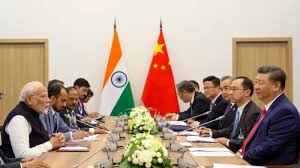
- 07 Dec 2024
In News:
India had ‘limited success’ in capturing ‘China Plus One’ opportunity.
Limited Success in ‘China Plus One’ Strategy:
- India has had limited success in attracting multinational companies looking to diversify their supply chains under the ‘China Plus One’ strategy, aimed at reducing dependence on China.
- Vietnam, Thailand, Cambodia, and Malaysia have been more successful in benefiting from this shift due to factors like lower labor costs, simplified tax laws, and proactive Free Trade Agreements (FTAs).
Geopolitical Context - US-China Trade Conflict:
- The fresh US-China trade conflict involves tit-for-tat restrictions, with the US imposing export controls on Chinese high-tech goods and China retaliating by banning key materials.
- India's Position: As a "connecting economy" not directly aligned with the US or China, India stands to benefit from trade diversions arising from this conflict.
Opportunities for India Amid Trade Diversion:
- NITI Aayog CEO BVR Subrahmanyam highlighted opportunities arising from trade diversion, particularly due to US trade policies under President-elect Donald Trump, which could potentially create an economic boom for India.
- India has opportunities to capture a larger share of the global trade, especially in sectors where it currently holds a small market share (less than 1% of world trade in many areas).
Trade Policy Challenges:
- Steel Import Duty Proposal: NITI Aayog Vice Chairperson cautioned against imposing high duties on steel imports, arguing that it could reduce India’s competitiveness and lead to negative consequences for domestic industries reliant on steel.
- The global steel market has been affected by oversupply from China, with India’s iron and steel exports experiencing a sharp decline in Q1 FY25 due to weak domestic demand.
Impact of US Tariffs:
- A general 10% tariff on all imports by the US would not have a major negative impact on India.
- However, a 60% tariff on China could open significant opportunities for India, especially in sectors where it competes directly with China. There might be short-term shocks but long-term benefits.
Ongoing Trade Fragmentation:
- The report noted that trade fragmentation is driven by strict export controls on Chinese goods, implemented by the US to curb China’s growth, particularly in high-tech sectors.
Sectoral Competitiveness:
- While China remains India's key competitor across most export sectors, countries like Brazil, Indonesia, and South Africa generally lag behind India.
- Malaysia and Thailand outperform India in select sectors such as electrical machinery.
Challenges in the EU Market - Carbon Border Adjustment Mechanism (CBAM):
- Iron and steel industry facehigh exposure under the CBAM for EU exports, with tariffs potentially rising by 20-35% due to carbon emissions-related regulations.
- Indian firms could experience higher compliance costs due to the requirement for detailed emissions reporting, impacting competitiveness in the European market.
‘Anna Chakra’ and SCAN Portal
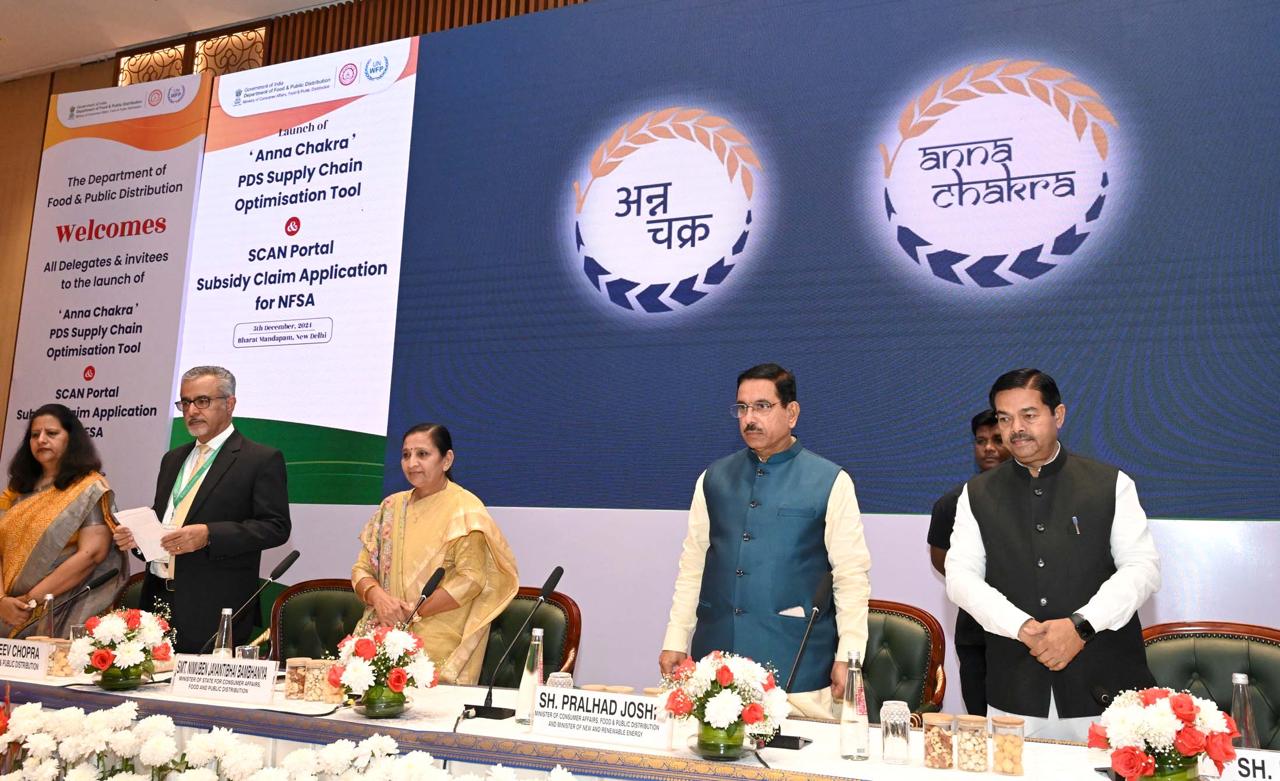
- 07 Dec 2024
In News:
The Union Minister of Consumer Affairs, Food and Public Distribution and New & Renewable Energy, launched ‘Anna Chakra’, the Public Distribution System (PDS) Supply chain optimisation tool and SCAN (Subsidy Claim Application for NFSA) portal a significant step towards modernizing the Public Distribution System and subsidy claim mechanisms of the States.
Anna Chakra: PDS Supply Chain Optimization Tool
- Purpose: A tool developed to enhance the efficiency of PDS logistics across India, optimizing food grain transportation.
- Collaboration: Developed by the Department of Food and Public Distribution, in collaboration with the World Food Programme (WFP) and IIT-Delhi’s Foundation for Innovation and Technology Transfer (FITT).
- Functionality: Uses advanced algorithms to identify optimal transportation routes for food grains.
- Key Features:
- Efficiency and Cost Savings: Achieves annual savings of Rs 250 crores by reducing fuel consumption, time, and logistics costs.
- Environmental Impact: Reduces transportation-related emissions by cutting transportation distance by 15-50%, contributing to a smaller carbon footprint.
- Wide Coverage: Impacts 30 states, 4.37 lakh Fair Price Shops (FPS), and 6,700 warehouses in the PDS supply chain.
- Technology Integration: Linked with the Freight Operations Information System (FOIS) of Railways and PM Gati Shakti platform, enabling geo-location mapping of FPS and warehouses.
SCAN Portal: Subsidy Claim Application for NFSA
- Objective: To streamline the subsidy claim process under the National Food Security Act (NFSA) 2013, ensuring better utilization of funds.
- Functionality: Provides a unified platform for states to submit food subsidy claims, reducing administrative complexity and delays.
- Key Features:
- Single Window Submission: Simplifies subsidy claim submission for states, enhancing coordination.
- Automated Workflow: End-to-end automation ensures efficiency, transparency, and faster settlements.
- Rule-Based Processing: Claims are scrutinized and approved through a rule-based system, speeding up the approval process.
Public Distribution System (PDS) Overview
- Purpose: Ensures food security by providing subsidized food grains to vulnerable populations under the NFSA, benefitting nearly 80 crore people.
- Management: A joint effort between the Central and State/UT Governments. The Food Corporation of India (FCI) handles procurement and transportation, while state governments manage local distribution.
- Commodities: Primarily wheat, rice, sugar, and kerosene, with some states also distributing pulses and edible oils.
Initiatives to Reform PDS in India
- One Nation One Ration Card (ONORC):
- Goal: To allow portability of ration cards, benefiting migrant workers and seasonal laborers.
- Features: Biometric authentication, digital payments, and enhanced inclusivity.
- SMART-PDS Scheme (2023-2026):
- Objective: To upgrade technology in PDS, including computerized FPS, point-of-sale (POS) machines, and GPS tracking for transparency and fraud reduction.
- Aadhaar and Direct Benefit Transfer (DBT):
- Purpose: Ensures proper beneficiary identification and cash transfers, allowing beneficiaries to purchase grains from the open market.
- Technology and Transparency Enhancements:
- GPS and SMS Monitoring: Ensures the proper delivery of food grains to FPS and provides citizens with updates via SMS.
PMeVIDYA DTH 24x7 Channel No. 31
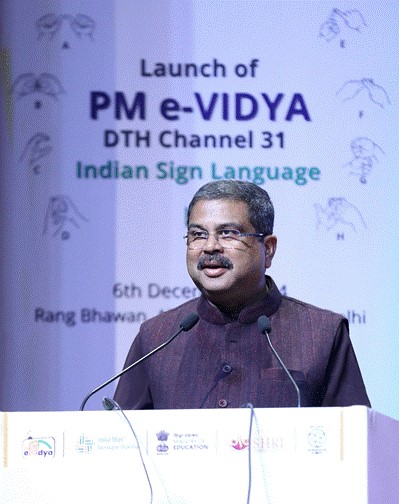
- 07 Dec 2024
In News:
Union Minister for Education, launched the PMeVIDYA DTH 24x7 Channel No. 31 dedicated to Indian Sign Language (ISL) on December 6, 2024, in New Delhi.
Channel Purpose and Vision:
- Objective: To bridge the communication gap between the hearing-impaired and hearing populations by promoting ISL.
- Significance: Channel 31 aims to unlock talent and ensure equal opportunities for all, making society more inclusive and progressive.
- ISL's Role: Pradhan emphasized the importance of alternative communication methods like ISL, which ensures that individuals with hearing impairments have equal access to education, employment, and societal participation.
Government's Focus on Inclusivity:
- Legal Framework: Pradhan highlighted the expansion of recognized disabilities from 7 to 21, making the legal framework more comprehensive.
- National Education Policy (NEP) 2020: The policy focuses on inclusive education, with particular attention to Children with Special Needs (CwSN). The NEP promotes the standardization of ISL and its inclusion in educational curricula.
- Employment and Cultural Expression: ISL is not only essential for communication but also contributes to cultural expressions like dance and drama. Pradhan emphasized that learning ISL would open employment opportunities and allow individuals to express themselves fully.
Importance of Channel 31:
- The launch of Channel 31 aligns with India’s commitment to ensuring equal rights and access to education, as enshrined in the Constitution.
- Pradhan urged for widespread adoption of ISL, ensuring that more people learn the language to better support the hearing-impaired community.
PM e-Vidya Initiative:
- Launch Date: PM e-Vidya was launched as part of the Atmanirbhar Bharat Abhiyaan on May 17, 2020, to bridge the digital divide and ensure inclusive education.
- Key Components:
- DIKSHA: A national platform providing e-content for all grades.
- DTH TV Channels: Initially started with 12 channels, now expanded to 200, offering supplementary education in multiple languages.
- SWAYAM: A platform for online courses and MOOCs for both school and higher education.
- Community Radio & Podcasts: These platforms are used for wider educational outreach, especially in rural and remote areas.
- e-Content for Teachers: Interactive videos and resources aimed at enhancing teacher education.
Channel Content:
- Channel 31 will provide 24x7 educational content for children with hearing impairments, teachers, and other stakeholders.
- The content will include school curricula, career guidance, skill training, mental health support, and promotion of ISL as a subject.
- The content will be available on YouTube, increasing its reach and accessibility.
RBI Cuts CRR, Keeps Repo Rate Unchanged
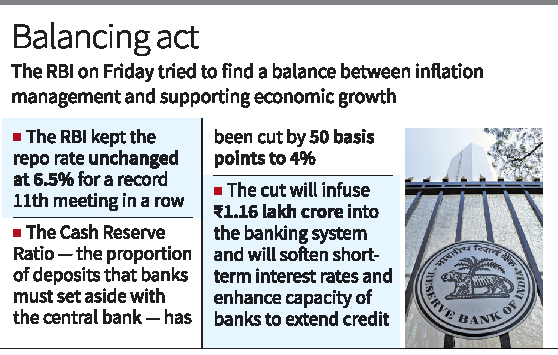
- 07 Dec 2024
In News:
The Reserve Bank of India (RBI) has recently made significant monetary policy decisions that could have a broad impact on the economy.
Key Highlights:
Cut in Cash Reserve Ratio (CRR)
- CRR Reduction: The RBI has reduced the CRR by 50 basis points (bps), from 4.5% to 4%.
- Impact on Banks: This move will free up ?1.16 lakh crore in liquidity, which banks can use to lend, boosting the credit flow in the economy.
- Objective: The CRR cut is aimed at easing the liquidity stress in the financial system, which has been tightening due to RBI's foreign exchange interventions.
- Bank Benefits: Banks will benefit as they don’t earn interest on the CRR, and the extra liquidity may help them reduce deposit rates. Additionally, it may encourage banks to pass on benefits to borrowers, particularly in terms of lending rates.
Repo Rate Kept Unchanged at 6.5%
- Decision: The MPC decided to keep the key policy rate, the Repo rate, unchanged at 6.5%, continuing its stance for the 11th consecutive meeting.
- Reasons for Keeping Repo Rate Steady:
- Persistent inflation, particularly food prices, is a key concern. Despite strong growth in sectors like rural consumption, inflation remains high and continues to affect disposable income.
- RBI Governor emphasized that durable price stability is essential for strong, sustained economic growth.
Impact on Borrowers
- Borrowing Costs: With the Repo rate unchanged, external benchmark lending rates (EBLR) linked to the Repo rate will not rise, providing relief to borrowers by keeping Equated Monthly Installments (EMIs) stable.
- Deposit Rates: However, the CRR cut may lead to a marginal reduction in deposit rates due to increased liquidity in the system.
Economic Growth Forecast Adjusted
- Reduced GDP Growth Estimate: The RBI has downgraded the GDP growth forecast for FY25 to 6.6%, down from the earlier estimate of 7.2%. This revision comes after the economy showed signs of slowdown in the second quarter of FY25.
- Growth Outlook: Despite the downgrade, the RBI remains cautiously optimistic about recovery driven by festive demand and rural consumption. Governor Das indicated that the slowdown had likely bottomed out and the economy is set to recover in the coming quarters.
Inflation Forecast Raised
- Inflation Outlook: The inflation estimate for FY25 has been revised upward to 4.8%, compared to the earlier forecast of 4.5%. This is largely due to rising food prices, which surged to a 14-month high of 6.21% in October.
- Inflationary Pressures: The MPC noted that inflation has remained above the RBI’s target of 4%, primarily driven by food inflation. As inflation impacts consumption, the RBI aims to balance growth support with inflation management.
Monetary Policy Stance
- Neutral Stance Retained: The RBI has maintained a ‘neutral’ stance, meaning it is neither tightening nor easing monetary policy drastically, focusing instead on bringing inflation closer to its target of 4%.
- Inflation Control: While the RBI is aware of the economic slowdown, it continues to prioritize inflation control to ensure price stability and support sustainable growth.
Global and Domestic Economic Context
- Global Factors: The RBI has also been cautious about global developments, including capital outflows and the impact of U.S. monetary policy on the Indian economy. A rate cut could have further weakened the rupee by narrowing the interest rate differential with the U.S.
- Domestic Concerns: Domestically, the economy faces challenges such as weak manufacturing growth and high inflation. The GDP growth in Q2 FY25 dropped to 5.4%, a seven-quarter low, highlighting concerns over demand and inflationary pressures.
BharatiyaVayuyanVidheyak Bill, 2024
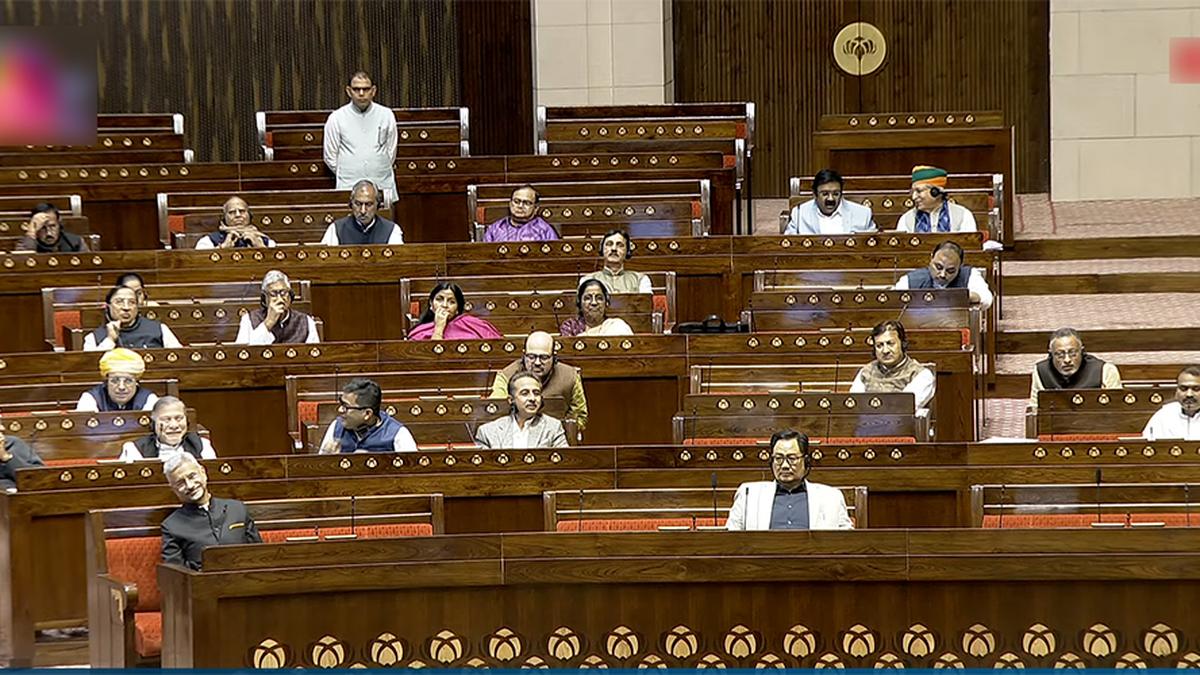
- 06 Dec 2024
In News:
In a significant move, the Indian Parliament passed the BharatiyaVayuyanVidheyak Bill, 2024 on December 5, 2024, bringing much-needed reforms to the aviation sector. The Bill, which replaces the Aircraft Act of 1934, aims to streamline aviation regulations and improve the ease of doing business in the industry.
Key Highlights of the BharatiyaVayuyanVidheyak Bill, 2024:
- Single-Window Clearance for Aviation Personnel: One of the major changes is the transfer of responsibility for the Radio Telephone Operator Restricted (RTR) certification from the Department of Telecom (DoT) to the Directorate General of Civil Aviation (DGCA). This move consolidates the certification process under a single authority, making it easier for aviation personnel like pilots, engineers, and flight dispatchers to obtain their licenses.
- Regulation of Aircraft Design: The Bill not only retains provisions for regulating aircraft manufacturing, maintenance, and repair, but also introduces new provisions to regulate aircraft design and the places where aircraft are designed.
- Enhanced Penalties for Violations: The Bill specifies severe penalties for violations, such as dangerous flying, carrying prohibited items (like arms or explosives), or littering near airports. Offenders may face imprisonment up to three years, fines up to ?1 crore, or both.
- Introduction of Second Appeal Mechanism: For the first time, the Bill introduces a second appeal process against decisions of regulatory bodies like the DGCA and BCAS, ensuring further scrutiny of decisions related to penalties.
- Improved Licensing Process: The shift of the RTR certification process from the DoT to DGCA aims to curb allegations of corruption associated with the previous system, where candidates often had to pay bribes to clear exams.
Organizational Setup and Authorities:
The Bill outlines the establishment of three key authorities under the Ministry of Civil Aviation:
- DGCA: Responsible for civil aviation safety, licensing, and ensuring compliance with international standards.
- BCAS: Ensures aviation security and develops relevant security measures.
- AAIB: Investigates aviation accidents and incidents.
The central government retains supervision over these bodies, with the power to modify or review their orders.
Criticisms and Concerns:
- Lack of Autonomy for DGCA: The DGCA, unlike independent regulators in other sectors (such as telecom or insurance), operates under direct government supervision. The lack of clear qualifications, selection process, and tenure for the DGCA Director General has raised concerns about the regulator's independence.
- Unilateral Appointment of Arbitrators: The Bill empowers the government to unilaterally appoint an arbitrator in certain cases, which has been criticized for potentially violating the right to equality under Article 14 of the Constitution. The Supreme Court has previously ruled that such unilateral appointments may be unconstitutional.
- Discretionary Criminal Penalties: The central government is granted the discretion to impose criminal penalties for rule violations, which some argue could undermine the principle of separation of powers, as it is the legislature's role to define criminal offenses and penalties.
- Exclusionary Hindi Title: Some critics argue that the Hindi title of the Bill may alienate non-Hindi-speaking populations, which make up a significant portion of India’s demographic.
India and Slovenia Announce Five-Year Collaboration Plan
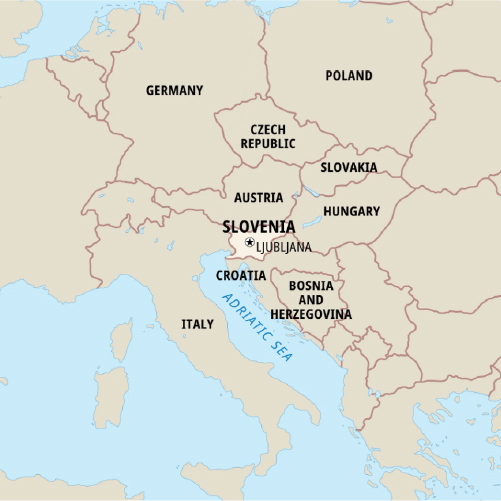
- 06 Dec 2024
In News:
India and Slovenia have announced a five-year scientific collaboration plan (2024-2029) to deepen ties in research and technology. The Programme of Cooperation (PoC) was finalized during a meeting between Dr. Jitendra Singh (Indian Minister for Science and Technology) and Dr. Igor Papi? (Slovenian Minister for Higher Education, Science, and Innovation) on December 5, 2024.
Key Highlights:
- Joint Research Focus: The collaboration will focus on hydrogen technologies, sustainable innovation, AI, renewable energy, and smart cities.
- Over 20 Successful Projects: More than 20 joint initiatives in sectors like health, AI, and energy have already been implemented.
- Future Areas of Collaboration: New research projects will be launched, further strengthening academic exchanges and scientific networks between the countries.
- Hydrogen Technologies: Both ministers emphasized hydrogen's role in global energy sustainability, marking it as a critical area for future research.
- Historical Partnership: This builds on a partnership dating back to a 1995 agreement, with initiatives like the Joint Working Group on Scientific and Technological Cooperation.
What is the Programme of Cooperation (PoC)?
- The Programme of Cooperation (PoC) is a formal agreement between two countries designed to enhance collaboration in specific sectors, such as science, technology, and innovation.
- In the case of India and Slovenia, the PoC for the period 2024–2029 aims to promote joint research efforts, academic exchanges, and partnerships in emerging fields like hydrogen technologies, sustainable innovation, and other transformative areas.
- The PoC serves as a structured framework for long-term cooperation, enabling both nations to develop networks among scientists and researchers while addressing global challenges through collaborative innovation.
PM Surya Ghar: Muft Bijli Yojana
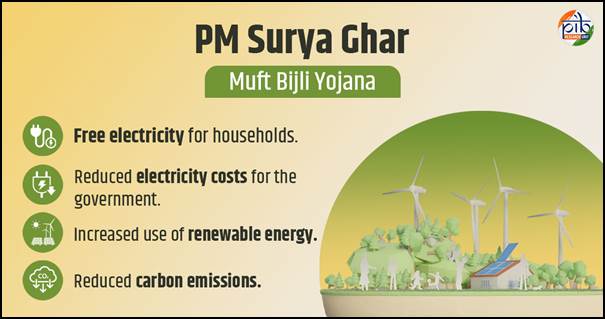
- 06 Dec 2024
In News:
The PM Surya Ghar: Muft Bijli Yojana, the world’s largest domestic rooftop solar initiative, is transforming India’s energy landscape with a bold vision to supply solar power to one crore households by March 2027.
Key Details:
Targeted Installations:
- 10 lakh installations by March 2025.
- 1 crore installations by March 2027.
Subsidy and Financing:
- Offers up to 40% subsidy for rooftop solar installations based on household electricity consumption.
- Collateral-free loans available for up to 3 kW solar systems at a 7% interest rate.
Key Benefits:
The PM Surya Ghar: Muft Bijli Yojana offers several significant benefits to participating households:
- Free Electricity for Households: The scheme provides households with free electricity through the installation of subsidized rooftop solar panels, significantly reducing their energy costs.
- Reduced Electricity Costs for the Government: By promoting the widespread use of solar power, the scheme is expected to save the government an estimated ?75,000 crore annually in electricity costs.
- Increased Use of Renewable Energy: The scheme encourages the adoption of renewable energy sources, contributing to a more sustainable and environmentally friendly energy mix in India.
- Reduced Carbon Emissions: The transition to solar energy under this scheme will help lower carbon emissions, supporting India's commitment to reducing its carbon footprint.
Eligibility Criteria:
1. The applicant must be an Indian citizen.
2. Must own a house with a roof that is suitable for installing solar panels.
3. The household must have a valid electricity connection.
4. The household must not have availed of any other subsidy for solar panels.
Impact
The PM Surya Ghar: Muft Bijli Yojana is expected to have far-reaching outcomes, both for individual households and the nation as a whole:
- Household Savings and Income Generation: Households will benefit from significant savings on their electricity bills. Additionally, they will have the opportunity to earn extra income by selling surplus power generated by their rooftop solar systems to DISCOMs. For instance, a 3-kW system can generate over 300 units per month on average, providing a reliable source of energy and potential revenue.
- Expansion of Solar Capacity: The scheme is projected to add 30 GW of solar capacity through rooftop installations in the residential sector, significantly contributing to India's renewable energy goals.
- Environmental Benefits: Over the 25-year lifetime of these rooftop systems, it is estimated that the scheme will generate 1000 BUs of electricity while reducing CO2 emissions by 720 million tonnes, making a substantial positive impact on the environment.
- Job Creation: The scheme is also expected to create approximately 17 lakh direct jobs across various sectors, including manufacturing, logistics, supply chain, sales, installation, operations and maintenance (O&M), and other services, thereby boosting employment and economic growth in the country.
Model Solar Village
- Under the "Model Solar Village" component of the scheme, the focus is on establishing one Model Solar Village per district throughout India.
- This initiative aims to promote solar energy adoption and empower village communities to achieve energy self-reliance.
- An allocation of ?800 crore has been designated for this component, with ?1 crore provided to each selected Model Solar Village.
- To qualify as a candidate village, it must be a revenue village with a population of over 5,000 (or 2,000 in special category states). Villages are selected through a competitive process, evaluated on their overall distributed renewable energy (RE) capacity six months after being identified by the District Level Committee (DLC).
- The village in each district with the highest RE capacity will receive a central financial assistance grant of ?1 crore.
- The State/UT Renewable Energy Development Agency, under the supervision of the DLC, will oversee the implementation, ensuring these model villages successfully transition to solar energy and set a benchmark for others across the country.
RangeenMachli App
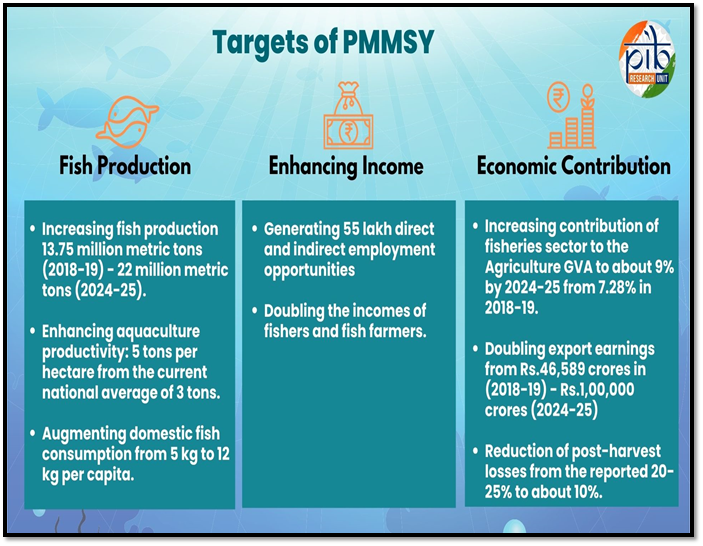
- 06 Dec 2024
In News:
The app was developed by the ICAR-Central Institute of Freshwater Aquaculture (ICAR-CIFA) with support from the Pradhan Mantri MatsyaSampada Yojana (PMMSY) under the Ministry of Fisheries, Animal Husbandry & Dairying, Government of India.
Key Highlights:
- Target Audience: The app caters to hobbyists, farmers, and professionals in the ornamental fish industry.
- Multilingual Support: The app offers content in eight Indian languages, making it accessible to a broad and diverse audience.
- Main Objectives:
- Provide information on popular ornamental fish species and their care.
- Promote local aquarium businesses through dynamic directories.
- Enhance knowledge of ornamental aquaculture techniques for fish farmers and shop owners.
- Serve as an educational tool for newcomers and professionals in the ornamental fish industry.
- Salient Features:
- Multilingual Content: Ensures broader reach and user accessibility.
- Comprehensive Fish Information: Offers detailed guidance on fish care, breeding, and maintenance.
- Find Aquarium Shops Tool: A directory updated by shop owners, helping users find reliable local aquarium shops and promoting local businesses.
- Educational Modules:
- Basics of Aquarium Care: Covers key aspects like aquarium types, filtration, lighting, feeding, and maintenance.
- Ornamental Aquaculture: Focuses on breeding and rearing ornamental fish, particularly for farmers.
- Economic and Social Impact:
- Promoting Local Businesses: The app encourages economic growth by increasing visibility for local aquarium shops and creating opportunities for business owners.
- Authenticity and Reliability: Users can access verified information, reducing the reliance on unverified sources and promoting healthier aquariums.
- Sustainability and Growth: The app’s features are designed to foster sustainability and growth in the ornamental fish trade by providing reliable information and empowering users.
Pradhan Mantri MatsyaSampada Yojana (PMMSY):
- Objective: Aimed at transforming the fisheries sector, improving fish production, productivity, quality, technology, infrastructure, and management, while strengthening the value chain and promoting the welfare of fishers.
- Launch: The scheme was launched in 2020 with an investment of Rs. 20,050 crores for a 5-year period (2020-21 to 2024-25).
- Focus Areas:
- Inland fisheries and aquaculture.
- Fisheries management and regulatory framework.
- Infrastructure and post-harvest management.
- Doubling fishers' and fish farmers' incomes.
- Components:
- Central Sector Scheme (CS): Fully funded by the central government.
- Centrally Sponsored Scheme (CSS): Partially funded by the central government and implemented by states.
- Sub-Schemes:
- Pradhan Mantri MatsyaKisanSamridhiSah-Yojana (PM-MKSSY): Launched under PMMSY to formalize the fisheries sector and support micro and small enterprises with over Rs. 6,000 crore investment (FY 2023-24 to 2026-27).
- Beneficiaries: Includes fishers, farmers, fish vendors, fisheries cooperatives, SC/STs, women, differently-abled persons, state and central entities, and private firms.
Fisheries Sector Contribution:
- Supports around 30 million people.
- India is the 3rd largest fish producer globally, with a fish production of 175.45 lakh tons in FY 2022-23.
- Contributes 1.09% to the Gross Value Added (GVA) of India and 6.72% to agricultural GVA.
Related Schemes:
- Fisheries and Aquaculture Infrastructure Development Fund (FIDF): Launched with a fund of Rs. 7,522.48 crore.
- Kisan Credit Card (KCC): Extended to fishers and farmers from FY 2018-19.
- Sustainable fisheries development.
- Doubling income and job creation in the sector.
- Boosting exports and agricultural GVA.
- Social and economic security for fishers.
Trade Watch Quarterly
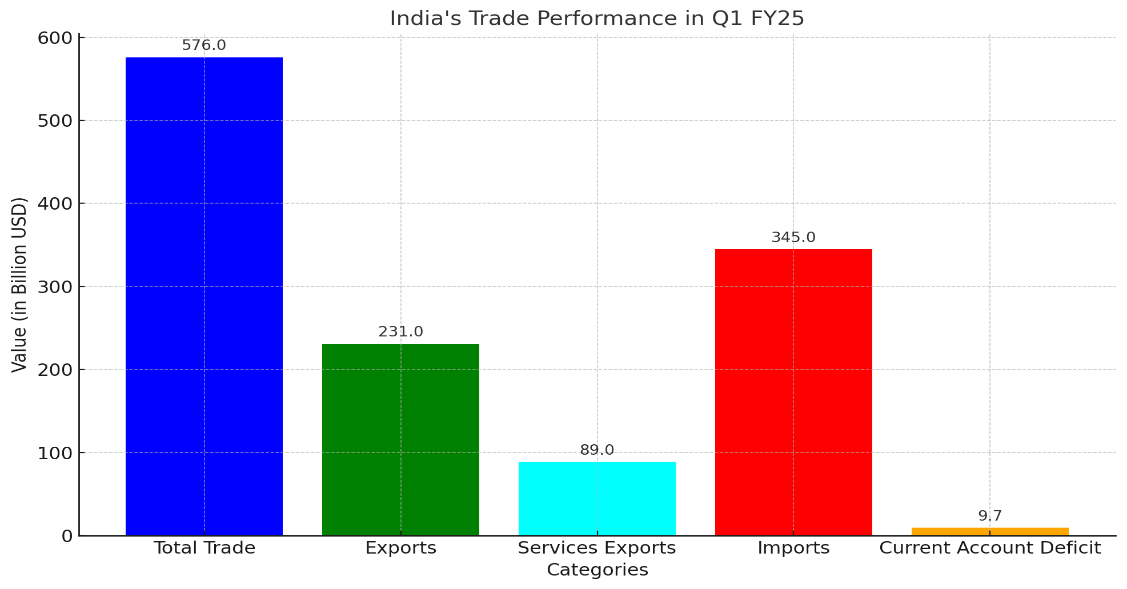
- 05 Dec 2024
In News:
NITI Aayog released its first quarterly report, Trade Watch Quarterly (TWQ), on December 4, 2024, focusing on India's trade developments during Q1 FY2024 (April-June).
Overview:
- Purpose: The publication aims to provide a comprehensive analysis of India’s trade performance, highlighting key trends, challenges, and opportunities.
- Target: To leverage insights for evidence-based policy interventions and foster informed decision-making, contributing to sustainable growth in India’s trade.
Trade Performance Highlights (Q1 FY24):
- Total Trade: $576 billion (5.45% YoY growth).
- Merchandise Exports: Growth was restrained due to declines in iron & steel, and pearls.
- Imports: Driven by high-value goods, including aircraft, spacecraft, mineral fuels, and vegetable oils.
- Services Exports: Displayed a surplus, particularly in IT services.
- Growth in Services Exports: A positive trend, rising by 10.09% YoY, particularly in IT services and business solutions.
Key Challenges for India’s Trade:
- Limited Success in China-Plus-One Strategy:Countries like Vietnam, Thailand, Malaysia have gained more from this strategy, benefitting from cheaper labor, simplified tax laws, and lower tariffs.
- CBAM (Carbon Border Adjustment Mechanism):Starting in 2026, CBAM will impose carbon taxes on imports like cement, steel, and fertilizers. India’s iron and steel industry could face significant risks due to this.
- Declining Share in Labor-Intensive Sectors:India’s global market share in labor-intensive sectors (e.g., textiles, leather) has declined despite a strong workforce.
- Geopolitical Instability (West Asia):
- Oil price hikes could increase India’s Current Account Deficit (CAD) and fuel inflation.
- Declining agricultural exports to markets like Iran further add to the challenges.
Strategic Recommendations for Overcoming Challenges:
- Infrastructure Modernization:
- Expansion of digital platforms like Trade Connect e-Platform to streamline processes and support exporters.
- Strengthening logistics via the National Logistics Policy.
- Export Incentives:Continuation of schemes like RoDTEP (Remission of Duties and Taxes on Exported Products) to maintain export competitiveness.
- Technological Integration:Leveraging digital trade to tap into high-growth sectors and foster innovation in trade.
- Strengthening FTAs (Free Trade Agreements):Focus on negotiating strategic FTAs with global partners (e.g., the UK and the EU) to reduce trade barriers and enhance global market access.
Geopolitical and Environmental Risks:
- U.S.-China Trade Tensions:Offers opportunities for India to diversify its supply chains, but also poses challenges in terms of overdependence on certain countries.
- Impact of CBAM:Risk to carbon-intensive Indian exports like steel and aluminium, which will face tariffs starting in 2026.
Sectoral Performance:
- Growing Sectors:
- IT Services: India’s market share of IT services reached 10.2%, continuing to be a strong contributor.
- Pharmaceuticals, Electrical Machinery, and Mineral Fuels: Significant contributors to export growth.
- Declining Sectors:Labor-Intensive Goods: Declines in global market share for textiles, pearls, and leather.
Pathway to $2 Trillion Exports by 2030:
- India's Export Aspirations:To achieve the target of $2 trillion in exports by 2030, India must address structural inefficiencies, diversify exports, and reduce trade barriers.
- Vision 2047:Aligning with India’s broader vision to become a developed nation, the report stresses the importance of strengthening trade, technology, and infrastructure to realize these ambitions.
- Trade's Role in Economic Growth:
- Trade is vital to India’s economic trajectory, contributing significantly to GDP growth.
- Through evidence-based policymaking, infrastructure modernization, and strategic global partnerships, India can achieve sustained growth in trade, leading to the realization of a Viksit Bharat (Developed India) by 2047.
Heat Shock Protein 70
- 05 Dec 2024
In News:
JNU scientists make big discovery that could change malaria, Covid-19 treatment.
Overview of the Discovery:
- Institution: Jawaharlal Nehru University (JNU), Special Centre for Molecular Medicine.
- Key Discovery: Identification of human protein Hsp70 as a critical factor in the spread of malaria and COVID-19.
- Research Collaboration: Involvement of Indian and Russian researchers.
- Outcome: Development of a small molecule inhibitor of Hsp70 that could act as a broad-spectrum treatment for multiple infections.
About Heat Shock Protein 70 (Hsp70):
- Definition: Hsp70 is a type of molecular chaperone protein.
- Function:
- Helps other proteins fold into their proper shapes.
- Prevents protein misfolding.
- Regulates protein synthesis and protects proteins from stress.
- Elevates during cellular stress to shield cells from damage.
- Role in Cellular Processes:
- Prevents protein aggregation and assists in protein transport across membranes.
- Plays a critical role in protein homeostasis and cell survival during stress conditions.
Hsp70's Role in Disease Spread:
- SARS-CoV-2 (COVID-19) Interaction:
- Hsp70 interacts with the spike protein of SARS-CoV-2 and human ACE2 receptors.
- Facilitates viral entry into human cells by stabilizing this interaction during fever (when Hsp70 levels rise).
- Malaria:Pathogens like malaria parasites rely on the host's machinery for survival, including Hsp70.
Research Findings and Implications:
- Published in: International Journal for Biological Macromolecules.
- Inhibition of Hsp70:
- Targeting Hsp70 can disrupt viral replication.
- In lab tests, Hsp70 inhibitor (PES-Cl) blocked SARS-CoV-2 replication at low doses.
- Potential for Broad-Spectrum Treatment:
- Hsp70 could be a target for treating multiple infections, not limited to COVID-19 or malaria.
- Prevention of Drug Resistance:
- Host-targeting antivirals are less prone to resistance as the virus cannot mutate the host protein (Hsp70).
- This approach could be especially beneficial for combating rapidly evolving viruses like SARS-CoV-2 and its variants (e.g., Omicron).
Host-Targeting Approach vs. Traditional Drugs:
- Host-Targeting: Targets the host cell machinery (e.g., Hsp70) rather than the virus itself.
- Reduces the likelihood of viral mutation-induced resistance.
- Traditional Drugs: Target the virus directly, which can lead to resistance, especially with rapidly mutating viruses.
Global Health and Pandemic Preparedness:
- Universal Tool for Infectious Diseases: The discovery could serve as a universal tool for managing infections during health emergencies.
- Collaboration and Importance: Highlights the significance of international collaboration in addressing global health challenges (e.g., Dr. Pramod Garg of AIIMS, Ph.D. scholar Prerna Joshi).
- Future Implications:Preparation for future pandemics, as the world must remain vigilant even post-COVID-19.
Donald Trump's Threat on BRICS and US Dollar

- 05 Dec 2024
In News:
- US President-elect Donald Trump threatens BRICS countries (Brazil, Russia, India, China, South Africa) with 100% import tariffs if they create a new currency or support an alternative to the US dollar as the global reserve currency.
- Trump emphasizes that attempts to undermine the US dollar’s dominance will face economic retaliation, asserting the US economy won’t tolerate such moves.
Background
- Weaponization of the Dollar: The US has increasingly used its financial influence to impose sanctions (e.g., Russia, Iran) and cut off countries from systems like SWIFT (Society for Worldwide Interbank Financial Telecommunication).
- Concerns: Countries are concerned about their vulnerability to US monetary policies, which can have global impacts (e.g., rising US interest rates causing economic instability in other countries).
Efforts to Reduce Dependence on the US Dollar
- BRICS Countries’ Initiatives:
- Russian President Putin criticizes the weaponization of the dollar.
- Brazil's President Lula advocates for a new BRICS currency to increase payment options and reduce vulnerabilities.
- India's Steps:
- The Reserve Bank of India (RBI) allows invoicing and payments in Indian rupees for international trade (since 2022), particularly with Russia.
- Prime Minister Modi supports increasing financial integration and cross-border trade in local currencies within BRICS.
- External Affairs Minister Jaishankar emphasizes the importance of mutual trade settlements in national currencies.
- China-Russia Trade: Over 90% of trade between Russia and China is settled in rubles and yuan due to their more balanced trade relations.
Internationalization of the Indian Rupee
- RBI's Role:
- In July 2022, RBI allowed export/import settlements in rupees, starting with Russia in December 2022.
- More than 19 countries, including the UK and UAE, have agreed to settle trade in rupees.
- Challenges:
- The Indian rupee currently accounts for only 1.6% of global forex turnover.
- India’s trade imbalance with Russia limits the effective use of rupee reserves.
- Indian banks are cautious due to the risk of US sanctions.
Global Trends in Currency Diversification
- Multipolarity in Finance: Emerging economies like China, India, and Brazil are advocating for a more decentralized financial system, moving away from US dominance.
- Declining Dollar Share: The US dollar’s share of global reserves is gradually decreasing, with non-traditional currencies like the Chinese yuan gaining ground.
Risks of Moving Away from the US Dollar
- Chinese Dominance: Concerns about increasing Chinese economic influence, especially within BRICS, as China pushes for more use of the yuan in trade.
- Liquidity and Volatility Issues: Alternatives to the dollar may face challenges like lower liquidity and increased exchange rate volatility.
- Implementation Challenges: Countries, especially those with trade imbalances, find it difficult to adopt local currencies for international trade.
Potential Impact of 100% US Tariff on BRICS Imports
- Global Trade Dynamics: A blanket tariff would likely encourage deeper intra-BRICS trade and accelerate the move towards de-dollarization.
- Impact on the US: Higher import costs for American consumers and potential trade diversification to third countries could hurt the US economy without revitalizing domestic manufacturing.
- Retaliation: BRICS countries might retaliate with tariffs on US goods, escalating trade tensions.
India’s Strategic Approach
- Diplomatic Engagement: India should clarify to the US that diversifying trade mechanisms is not anti-American but seeks financial stability and multipolarity.
- Leadership Role in BRICS: India should support financial reforms within BRICS that align with its interests while maintaining strong ties with the US.
- Promotion of Digital Currency: India should accelerate its Central Bank Digital Currency (CBDC) and strengthen international platforms like UPI to enhance its global financial presence.
International Debt Report 2024
- 05 Dec 2024
In News:
Recently released, World Bank’s "International Debt Report 2024" highlights a worsening debt crisis for developing nations, with 2023 marking the highest debt servicing levels in two decades, driven by rising interest rates and economic challenges.
Key Highlights:
Rising Debt Levels:
- Total external debt of low- and middle-income countries (LMICs) reached $8.8 trillion by the end of 2023, an 8% increase since 2020.
- For IDA-eligible countries (those receiving concessional loans from the World Bank), external debt rose by 18%, reaching $1.1 trillion.
Debt Servicing Costs:
- Developing nations paid a record $1.4 trillion in debt servicing costs (principal and interest) in 2023.
- Interest payments surged by 33%, totaling $406 billion, putting immense pressure on national budgets, especially in critical sectors like health, education, and environmental sustainability.
Interest Rate Increases:
- Interest rates on loans from official creditors doubled to 4% in 2023.
- Rates from private creditors rose to 6%, the highest in 15 years, exacerbating the financial burden on developing countries.
Impact on IDA-Eligible Countries:
- IDA countries faced severe financial strain, paying $96.2 billion in debt servicing, including $34.6 billion in record-high interest costs (four times higher than a decade ago).
- On average, 6% of their export earnings were allocated to debt payments, with some countries dedicating up to 38%.
Role of Creditors:
- Private creditors reduced lending, leading to more debt-servicing payments than new loans.
- In contrast, multilateral lenders like the World Bank provided additional support, with the World Bank contributing $28.1 billion.
- Multilateral institutions have emerged as crucial support systems, becoming "lenders of last resort" for poor economies.
Debt Data Transparency:
- Efforts to improve debt transparency led to nearly 70% of IDA-eligible economies publishing accessible public-debt data in 2023, a 20-point increase since 2020.
- Accurate debt data can reduce corruption and promote sustainable investment.
Global Financial Reforms:
- There is a growing call for global financial reforms to address the systemic challenges of developing nations facing rising debt burdens.
- Proposed measures include increased concessional financing, improved restructuring mechanisms, and the establishment of a Global Debt Authority for better debt management.
Impact on Climate and Development Goals:
- Debt servicing has become a larger financial burden than climate initiatives in many countries, with developing nations spending more on debt servicing than climate goals (2.4% of GDP vs. 2.1% for climate investments).
- To meet climate commitments under the Paris Agreement, climate investments would need to rise to 6.9% of GDP by 2030.
Debt Relief Initiatives:
- Programs like the Heavily Indebted Poor Countries (HIPC) Initiative and the Multilateral Debt Relief Initiative (MDRI) provide debt relief to the world’s poorest nations, helping them meet Sustainable Development Goals (SDGs).
- For instance, Somalia saved $4.5 billion in debt service after completing the HIPC program in December 2023.
Global Sovereign Debt Roundtable (GSDR):
- The GSDR brings together debtor nations and creditors (both official and private) to improve debt sustainability and address restructuring challenges.
- Co-chaired by the IMF, World Bank, and G20, the forum aims to find coordinated solutions for sovereign debt issues.
Overview of Global Plastic Treaty Negotiations

- 05 Dec 2024
In News:
The recent negotiations for a global treaty aimed at curbing plastic pollution, held in Busan, South Korea, concluded without reaching a legally binding agreement. This marked the fifth round of discussions since the United Nations Environment Assembly (UNEA) initiated the process in March 2022, with the goal of finalizing a treaty by the end of 2024. The failure to adopt a treaty was primarily due to disagreements over production cap goals and the elimination of specific plastic chemicals and products.
Key Points of Dispute
- Production Cap Goals: A coalition of over 100 countries, including many from Africa, Latin America, and the European Union, pushed for clear production cap goals in the treaty. They argued that such measures are essential for effective regulation of plastic pollution.
- Opposition from Oil-Producing Nations: Conversely, a group of “like-minded countries” such as Saudi Arabia, Kuwait, Russia, and Iran opposed these provisions. They contended that regulating production cuts exceeded the original mandate set by UNEA and could lead to trade restrictions disguised as environmental measures. India and China aligned with this coalition, emphasizing their concerns regarding economic impacts.
Draft Treaty Highlights
Despite the failure to finalize an agreement, discussions produced a draft text that included both consensus points and contentious issues:
- Consensus Points:
- Proposals for banning open dumping and burning of plastics.
- Definitions for various plastic types were suggested but lacked clarity on contentious terms like microplastics.
- Contentious Issues:
-
- The draft did not adequately address definitions for microplastics or recycling standards.
- References to single-use plastics were included but faced pushback from certain nations.
India’s Position
India articulated its stance focusing on several key areas:
- Development Rights: Emphasized the need for recognizing varying responsibilities among countries in managing plastic pollution while considering their developmental rights.
- Technical and Financial Support: Advocated for provisions ensuring technical assistance and financial support for developing nations to manage plastic waste effectively.
- Opposition to Production Caps: India opposed any articles that would impose caps on polymer production, arguing that such measures were not directly linked to reducing plastic pollution.
Future Steps
The negotiations will continue with plans to reconvene in 2025. In the meantime, global plastic production is projected to rise significantly, potentially tripling by 2050 if no urgent action is taken. The ongoing dialogue will need to address both environmental concerns and developmental needs to create a balanced approach toward managing plastic pollution globally.
Global Context and Initiatives
The need for a global treaty is underscored by alarming statistics:
- Over 462 million tons of plastic are produced annually, with a significant portion contributing to pollution.
- Microplastics have infiltrated ecosystems worldwide, affecting biodiversity and human health.
Countries like Rwanda and Austria have implemented successful measures to reduce plastic waste, serving as models for global efforts. Initiatives such as the UNDP Plastic Waste Management Program in India aim to enhance waste management practices while addressing environmental impacts.
SheSTEM 2024
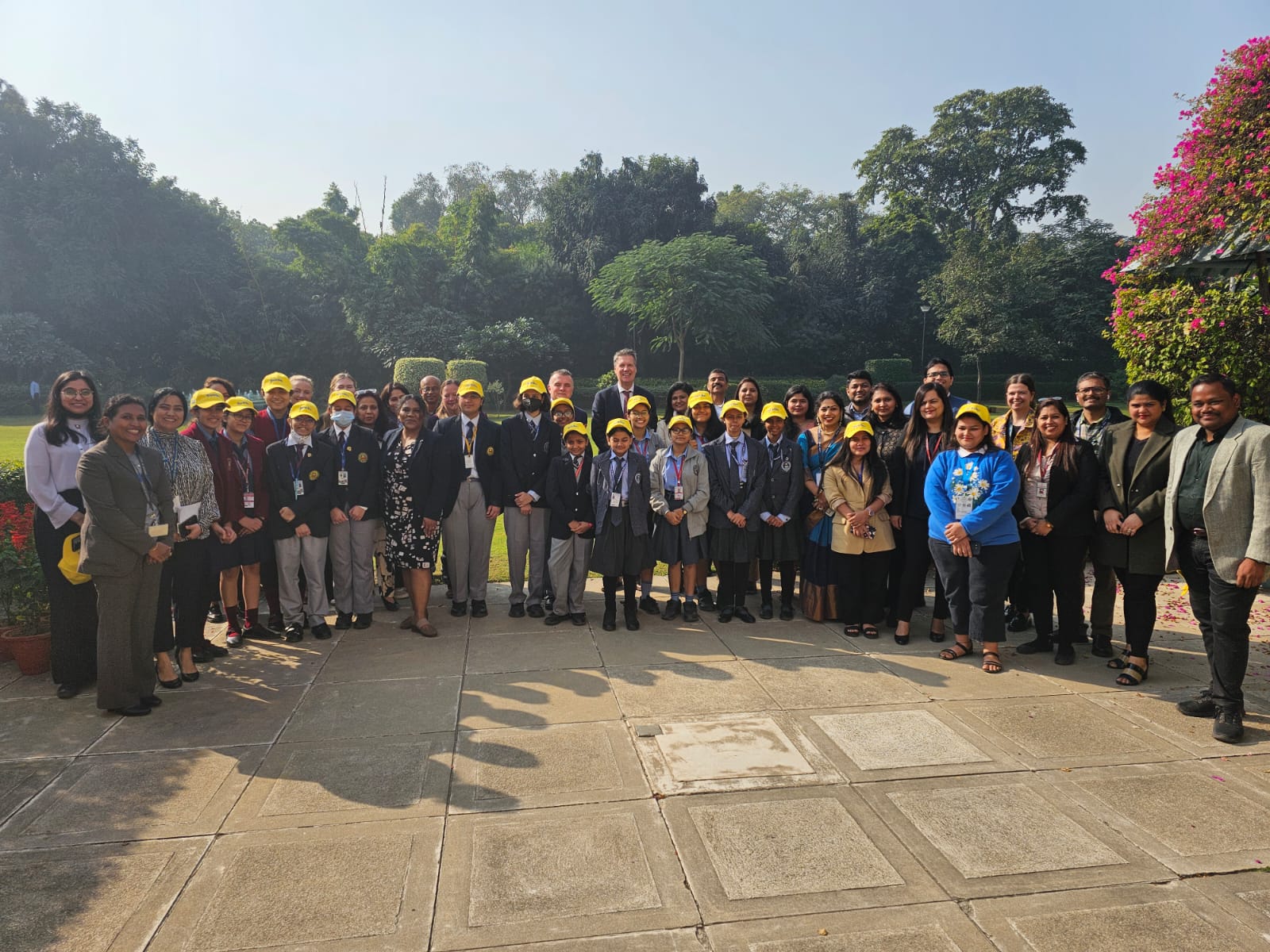
- 04 Dec 2024
In News:
Atal Innovation Mission (AIM), under the NITI Aayog and the Office of Science & Innovation, at the Embassy of Sweden, in partnership with Nordic collaborators - Innovation Norway, Innovation Centre Denmark, and Business Finland, announced the successful conclusion of SheSTEM 2024.
Key Highlights:
- Objective: To inspire youth, especially women, to explore careers in STEM (Science, Technology, Engineering, Mathematics) and promote innovative solutions for sustainability.
- Theme: Focus on Battery Technology and Energy Storage Systems (BEST), part of the India-Nordic BEST project, aimed at fostering sustainability through advanced energy solutions.
Key Features of the Challenge:
- Target Audience: Students from grades 6–12 across India.
- Participation: Over 1,000 submissions showcasing innovative energy storage solutions.
- Format: Students presented prototypes or concepts via a 2-minute video format.
- Focus Areas: Sustainability, energy storage, and innovative solutions to global challenges.
Significance of SheSTEM 2024:
- Youth Empowerment: Provides a platform for young innovators to showcase their ideas and contribute to global sustainability.
- Global Impact: Encourages collaboration between India and Nordic countries in academia, business, and government to explore energy storage and sustainable technologies.
- Women in STEM: Highlights the importance of gender inclusivity in STEM fields, particularly in sustainability and technology.
Key Facts about AIM (Atal Innovation Mission):
- Established: 2016 by NITI Aayog to foster innovation and entrepreneurship across India.
- Core Functions:
- Promote Entrepreneurship: Financial support, mentorship, and nurturing innovative startups.
- Promote Innovation: Creating platforms for idea generation and collaboration.
- Key Programs: Atal Tinkering Labs, Atal Incubation Centres, Atal New India Challenges, and Mentor India.
- Monitoring: Systematic monitoring of initiatives using real-time MIS systems and dashboards.
ICJ Hearing on Landmark Climate Change Case
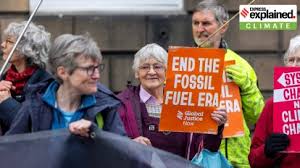
- 04 Dec 2024
In News:
- The International Court of Justice (ICJ) has begun hearings on a landmark climate change case, seeking an advisory opinion on the obligations of countries under international law regarding climate change.
- The case stems from a UN General Assembly (UNGA) resolution initiated by Vanuatu in March 2023, co-sponsored by 132 countries.
Background:
- Vanuatu, a small island nation, faces existential threats from rising sea levels.
- The resolution was passed to clarify climate obligations in light of international laws, including the UNFCCC, Paris Agreement, and other legal instruments like the UN Convention on the Law of the Seas, and the Universal Declaration on Human Rights.
Global Impact of the Case:
- The outcome of the case could influence global climate governance, particularly in the context of climate negotiations.
- It may broaden the legal basis for climate obligations and underscore the legal consequences for non-compliance.
India’s Position:
- India has voiced concerns about the judicial process being the best approach to tackle climate issues, advocating for diplomatic efforts.
- India is scheduled to make its submission on December 5, highlighting its preference for a collaborative, non-top-down approach in climate discussions.
Implications for Developed and Developing Countries:
- The case highlights the historical responsibility of developed countries for climate change due to their higher emissions.
- The ICJ's advisory opinion could reinforce the argument that developed countries' obligations extend beyond the UNFCCC and Paris Agreement, incorporating broader international legal frameworks.
Climate Litigation and Precedent:
- The ICJ ruling could set a precedent for climate litigation, potentially influencing over 2,600 ongoing climate lawsuits globally.
- Notable rulings include the European Court of Human Rights, which held Switzerland accountable for failing to meet emissions targets, and India's Supreme Court recognizing the right to be free from adverse climate impacts in 2023.
Record Participation and Importance of the Case:
- The ICJ has received over 90 written submissions, with 97 countries and 12 international organizations participating in the hearings.
- The case is significant for the growing number of climate-related lawsuits and the evolving nature of international climate law.
Future Prospects:
- The ICJ’s advisory opinion, though non-binding, could significantly impact future climate negotiations, particularly in terms of responsibility sharing and climate finance.
- The outcome could also influence calls for compensation for climate damages, especially from vulnerable states like small island nations.
Places of Worship (Special Provisions) Act, 1991

- 04 Dec 2024
In News:
The Places of Worship (Special Provisions) Act, 1991, is once again in focus, albeit in a context in which its objectives are being ignored. Civil suits questioning the religious character of mosques at Varanasi and Mathura are progressing apace. These developments show that legislation freezing the status of places of worship is inadequate to stop Hindu claimants from making determined legal efforts to achieve their goal of replacing them with temples.
Places of Worship (Special Provisions) Act, 1991:
- Objective: To preserve the religious character of places of worship as they existed on August 15, 1947, and prevent changes in religious identity.
- Key Provisions:
- Section 3: Prohibits conversion of a place of worship from one religion to another.
- Section 4(1): Ensures the religious character remains unchanged from August 15, 1947.
- Section 4(2): Terminates ongoing or future legal proceedings seeking to alter the religious character of a place of worship.
- Exemptions:
- Ayodhya dispute: Exempted, allowing ongoing litigation.
- Ancient monuments & archaeological sites: Not covered by the Act.
- Already settled disputes or those agreed upon before the Act came into force.
- Penalties: Violators can face up to 3 years of imprisonment or fines.
- Criticism: The Act has been challenged for limiting judicial review, imposing a retrospective cutoff date, and restricting religious rights.
Recent Legal Disputes:
- Gyanvapi Mosque (Varanasi):
- Claim: Hindu worshippers assert the right to worship deities (e.g., Ma Sringar Gauri, Lord Vishweshwar) within the mosque premises.
- Legal Basis: Claim that the mosque was built over an ancient Hindu temple.
- Court's Ruling: The court allows the case to proceed, stating that the aim is to assert worship rights, not change the mosque’s status.
- Archaeological Survey: ASI report confirms the existence of a temple before the mosque’s construction.
- Key Legal Outcome: The Places of Worship Act does not bar these suits as they aim to ascertain the religious character of the site, not alter it.
- Shahi Idgah Mosque (Mathura):
- Claim: Hindu groups assert the mosque was built over Lord Krishna’s birthplace.
- Historical Context: The dispute was settled by a compromise in 1968, which was implemented in 1974, where part of the land was given to the mosque.
- Current Legal Dispute: New suits challenge the 1968 agreement as ‘fraudulent’ and seek the entire land to be transferred to the deity.
- Court's Ruling: The Act is not applicable as the 1968 agreement predates the 1991 Act, and the dispute pertains to the compromise, not the religious character.
- Shahi Jama Masjid (Sambhal, Uttar Pradesh):
- Claim: Allegation that the mosque was built over a Hindu temple (Hari Har Mandir).
- Survey Request: Petitioners seek a survey to verify the site’s historical and religious character.
- Legal Context: The mosque is a protected monument under the Ancient Monuments Preservation Act, 1904.
Key Legal Interpretations:
- Court’s Role: Courts have ruled that the Places of Worship Act does not prohibit suits related to the religious character of a site if they are aimed at determining, not altering, that character.
- Interpretation of ‘Religious Character’: The Allahabad High Court stated that a structure can’t have dual religious character (both Hindu and Muslim), and the religious character of a place must be determined through evidence.
Political and Social Implications:
- Ongoing Controversy: The Gyanvapi and Mathura mosque disputes continue to fuel political and religious debates, as Hindu organizations seek to assert their claims, while mosque committees and Muslim groups resist changes.
- Public and Legal Attention: The legal and political landscape surrounding the Places of Worship Act remains contentious, with several legal suits challenging its applicability.
1984 Bhopal disaster
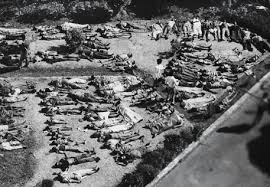
- 04 Dec 2024
In News:
Forty years after the Bhopal disaster on December 2-3, 1984, several hundred tonnes of toxic waste still remain around the ill-fated Union Carbide plant.
Overview of the incident:
The 1984 Bhopal disaster, one of the world’s worst industrial accidents, was caused by the release of methyl isocyanate (MIC) gas, which was a key component in the production of pesticides at the Union Carbide India Limited (UCIL) plant. However, the toxic legacy of the disaster extends far beyond MIC, with a range of other harmful substances lingering in the environment. These include:
- Methyl Isocyanate (MIC):Primary toxic agent: MIC is a highly toxic, volatile compound. Exposure can cause severe respiratory distress, eye irritation, pulmonary edema, and even death.
- Heavy Metals:The site of the plant is contaminated with various heavy metals, including:
- Mercury: Known to accumulate in the body and affect the nervous system, kidneys, and liver. Even small doses over time can lead to chronic health problems.
- Chromium: Exposure to high levels of chromium, particularly hexavalent chromium, is associated with lung cancer and damage to the respiratory system.
- Lead: A potent neurotoxin, lead can cause developmental delays, memory problems, and damage to the kidneys.
- Nickel: Can cause respiratory and lung cancers when inhaled in significant quantities.
- Copper: High levels of copper exposure can damage the liver and kidneys.
- Organic Compounds:Several organic chemicals were found at the site, including:
- Hexachlorobutadiene: A suspected carcinogen that can cause liver damage, kidney damage, and neurological issues upon exposure.
- Chloroform (Trichloromethane): Known for its effects on the central nervous system, exposure can lead to dizziness, loss of consciousness, and even death at high concentrations. It is also a possible carcinogen.
- Carbon Tetrachloride: A potent liver toxin, exposure can result in liver damage, cancer, and nervous system toxicity.
- Trichlorobenzene: These compounds are volatile and can spread through air and water, accumulating in fatty tissues and causing damage to organs like the liver and kidneys.
- Persistent Organic Pollutants (POPs):Some of the contaminants, particularly the organic compounds, are classified as persistent organic pollutants, which do not degrade easily in the environment. These can lead to:
- Cancer: Several of these compounds are carcinogenic.
- Neurological damage: Prolonged exposure can affect both the central and peripheral nervous systems.
- Reproductive and developmental disorders: Exposure has been linked to adverse effects on fertility and developmental health in humans.
- Environmental and Long-term Health Effects:
- Even decades later, contamination continues to affect the health of people living around the site, with high rates of cancers, birth defects, respiratory diseases, and other health issues. Water sources in the region remain unsafe due to heavy contamination with toxic chemicals. Persistent organic pollutants have been identified in local communities, indicating that the contamination continues to spread.
Retired Sportsperson Empowerment Training (RESET) Programme
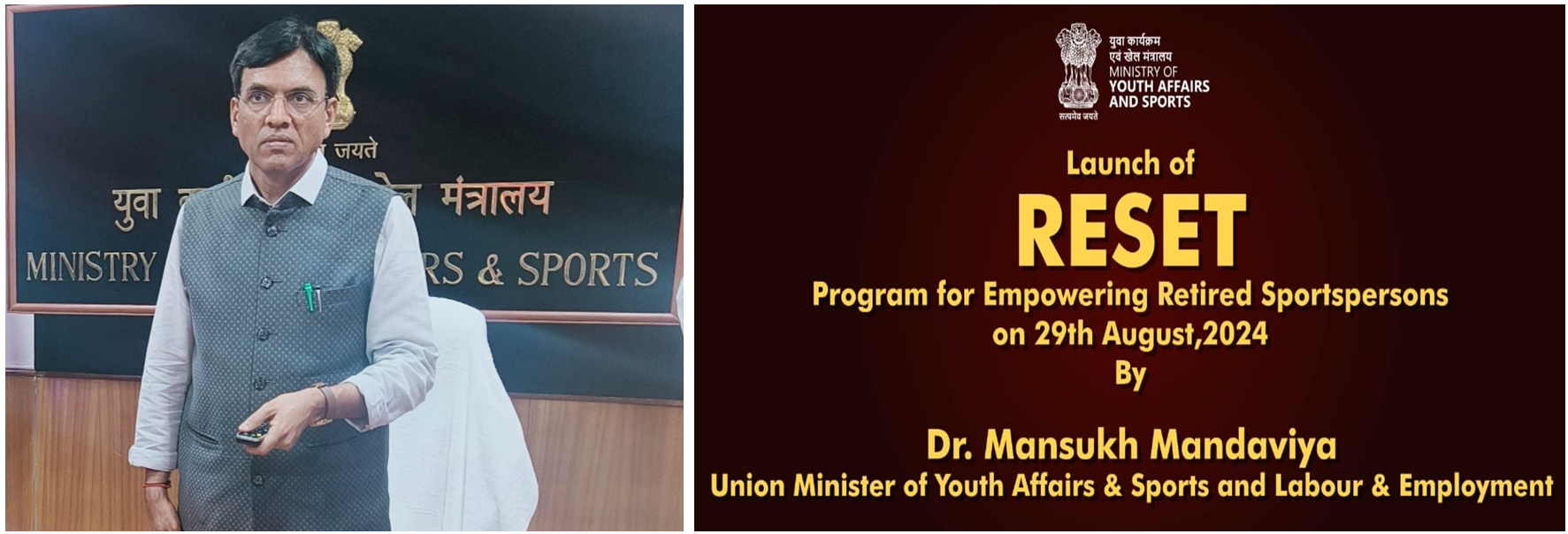
- 04 Dec 2024
In News:
At an event celebrating the National Sports Day, The Minister for Youth Affairs & Sports and Labour& Employment launched “Retired Sportsperson Empowerment Training” (RESET) Programme.
Key Highlights:
- Objective:
- Empower retired athletes through career development.
- Provide tailored education, internships, and skill enhancement.
- Address the human resource gap in the sports sector.
- Eligibility Criteria:
- Retired athletes aged 20-50 years.
- Winners of international medals or participants in international events.
- National/state-level medalists or participants in recognized competitions (e.g., National Sports Federations, Indian Olympic Association).
- Courses Offered (16 Courses):
-
- Strength & Conditioning Trainer
- Sports Nutritionist
- Sports Event Management
- Corporate Wellness Trainer
- Sports Masseur
- Sports Entrepreneurship
- Store Manager
- Fitness Centre Manager
- Physical Education Trainer
- Fitness Trainer
- Yoga Trainer
- Venue Supervisor
- Self-Defence Trainer
- Community Sports Trainer
- Camping & Trekking Guide
- Facility Caretaker
- Program Structure:
- Two levels based on educational qualifications:
- Class 12 and above
- Class 11 and below
- Hybrid learning mode:
- Self-paced learning via a dedicated portal.
- On-ground training and internships.
- Two levels based on educational qualifications:
- Internship and Placement:
- Internships offered in sports organizations, competitions, training camps, and leagues.
- Post-course placement assistance and entrepreneurial guidance.
- Implementing Agency:Lakshmibai National Institute of Physical Education (LNIPE) for the pilot phase.
- Importance:
- Provides sustainable career pathways for retired athletes.
- Utilizes the experience and skills of retired athletes to benefit future generations of athletes.
- Contributes to the growth of sports and nation-building.
- National Sports Day (29th August):
- Celebrated in honor of Major Dhyan Chand's birth anniversary.
- Promotes sports and physical fitness in India.
- Awards like Major Dhyan Chand Khel Ratna presented to honor excellence in sports.
26 Rafale-Marine Jets
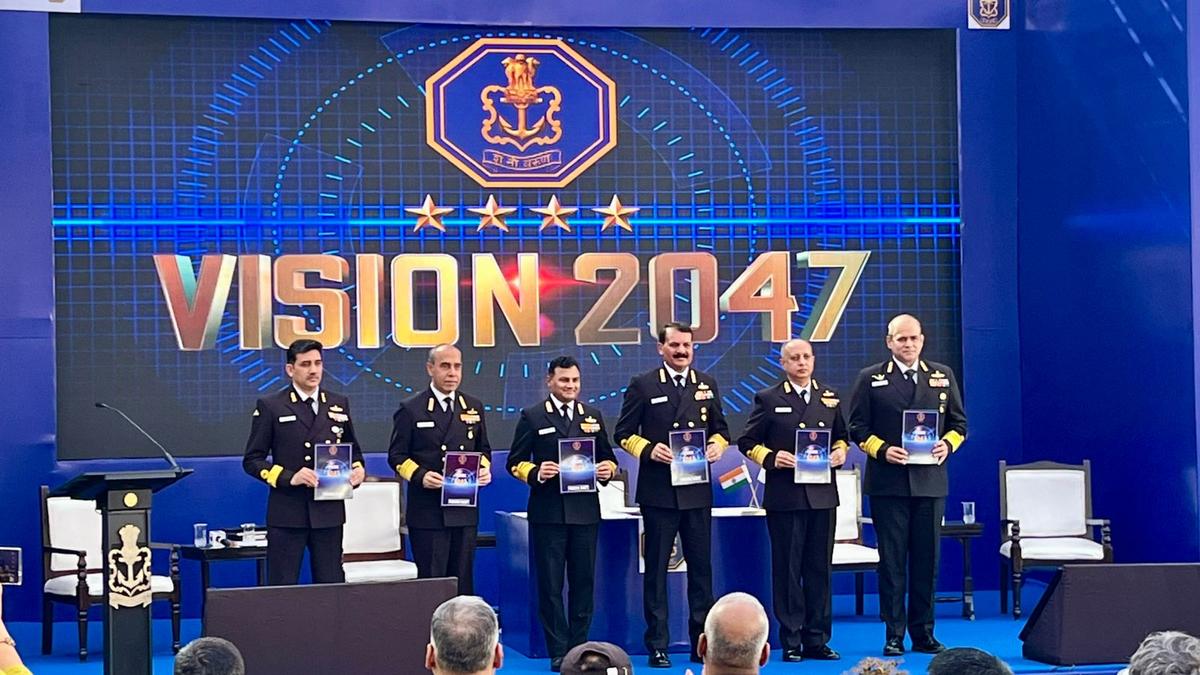
- 03 Dec 2024
In News:
- Deal for 26 Rafale-M jets nearing completion, with final formalities expected to be completed by January 2025.
- These jets are designed for naval operations and will be deployed on INS Vikrant and INS Vikramaditya.
- Rafale-M Features: Multi-role, advanced avionics, AESA radar, and armaments like Meteor, MICA, SCALP, EXOCET.
- Three Scorpene Submarines: Additional three Scorpene-class submarines to be procured from France.
- These are part of a repeat order to Mazagon Dock Shipbuilders Limited (MDL), with five of the earlier six already inducted into service.
Nuclear Capabilities:
- INS Arighaat: Successfully fired a Submarine-Launched Ballistic Missile (SLBM), marking a significant milestone for India's nuclear deterrence.
- Indigenous Nuclear Attack Submarine (SSN): India’s first indigenous SSN expected by 2036-37.
Strategic Maritime Engagement:
- Indian Ocean Region (IOR): Active monitoring of maritime activities, especially of China's PLA Navy and Chinese research vessels.
- Pakistan Navy Expansion: Acknowledged Pakistan’s efforts to become a 50-ship Navy, including the acquisition of 8 Chinese submarines. Indian Navy is adapting its plans to address this.
Nuclear Submarine Program (SSBN):
- INS Arihant: Conducted multiple deterrence patrols.
- INS Arighaat: Ongoing trials including the recent K4 SLBM test, with a range of 3,500 km.
Naval Vision 2047:
- Navy Chief released Vision 2047 document, outlining the future direction and growth of the Indian Navy.
Bilateral and Multilateral Engagements:
- Participation in various bilateral and multilateral exercises, including RIMPAC 2024 (Hawaii) and Russian Federation Navy’s Raising Day (St. Petersburg).
Madhya Pradesh’s 8th Tiger Reserve: Ratapani
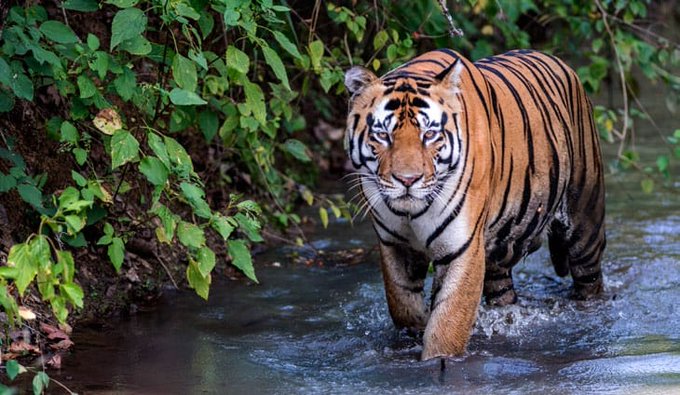
- 03 Dec 2024
In News:
Recently, the Ratapani Wildlife Sanctuary in Madhya Pradesh was officially declared a Tiger Reserve, making it the 8th such reserve in the state. This declaration follows approval from the Ministry of Environment, Forest and Climate Change through the National Tiger Conservation Authority (NTCA).
Key Details:
- Core Area: 763.8 sq. km
- Buffer Area: 507.6 sq. km
- Total Area: 1,271.4 sq. km
- Ratapani Tiger Reserve is located in the Raisen and Sehore districts, within the Vindhya hills, and is home to approximately 90 tigers.
- It also forms a crucial part of Madhya Pradesh’s tiger habitat and serves as a migration corridor from the Satpura ranges.
Economic and Ecotourism Benefits:
- The designation will boost ecotourism, generating employment and improving livelihoods for local communities.
- Eco-development programs will support residents, providing new opportunities and addressing the balance between conservation and human interests.
Wildlife Conservation and Management:
- The reserve will focus on habitat management, wildlife protection, and community engagement.
- The core area has been recognized as a critical tiger habitat under the Wildlife Protection Act, 1972.
- Efforts will include strengthening anti-poaching measures, improving surveillance, and enhancing prey base restoration.
Significance for Madhya Pradesh:
- This move places Madhya Pradesh as the "Tiger State of India", with significant conservation focus on the Ratapani and Madhav National Park (also in the process of becoming a tiger reserve).
- Madhya Pradesh now hosts 8 tiger reserves, contributing significantly to the country's overall tiger conservation efforts.
International Day of Persons with Disabilities 2024
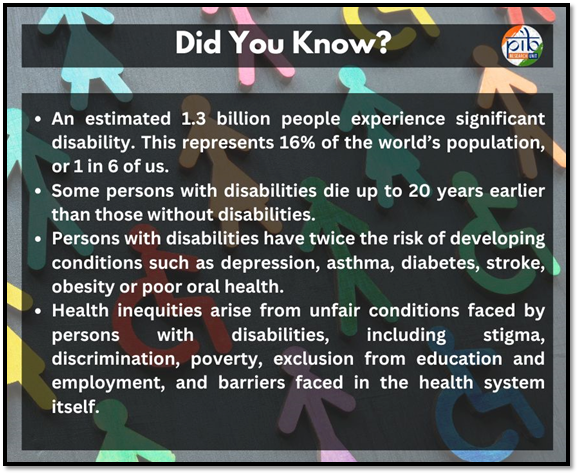
- 03 Dec 2024
In News:
- The International Day of Persons with Disabilities (IDPD), observed annually on December 3, celebrates the resilience, contributions, and leadership of persons with disabilities (PwDs) worldwide.
- Theme: “Amplifying the leadership of persons with disabilities for an inclusive and sustainable future”
History
- Proclamation: Established by the United Nations General Assembly in 1992 to promote the rights and well-being of persons with disabilities (PwDs).
- Convention on the Rights of Persons with Disabilities (CRPD): Adopted in 2006, further advanced the rights and well-being of PwDs and supports the 2030 Agenda for Sustainable Development.
Initiatives
Department of Empowerment of Persons with Disabilities
- In order to give focused attention to policy issues and meaningful thrust to the activities aimed at the welfare and empowerment of Persons with Disabilities (PwDs), a separate Department of Disability Affairs was carved out of the Ministry of Social Justice and Empowerment on May 12, 2012.
- The Department was renamed the Department of Empowerment of Persons with Disabilities on December 8, 2014.
- The Department acts as a nodal agency for matters pertaining to disability and persons with disabilities, including effecting closer coordination among different stakeholders: related Central Ministries, State/UT Governments, NGOs, etc., in matters pertaining to disability.
Accessible India Campaign
- The Accessible India Campaign (Sugamya Bharat Abhiyan), launched on December 3, 2015 aims to achieve universal accessibility for Persons with Disabilities (PwDs) across India.
- The key focus areas include improving Built Environment Accessibility in public spaces, enhancing Transportation Accessibility for independent mobility, creating an accessible Information and Communication ecosystem, and expanding Sign Language Access through interpreter training and better media support.
Deendayal Divyangjan Rehabilitation Scheme (DDRS)
- DDRS is a central sector scheme to provide grant-in-aid to non-governmental organizations (NGOs) for projects relating to the rehabilitation of persons with disabilities aimed at enabling persons with disabilities to reach and maintain their optimal, physical, sensory, intellectual, psychiatric, or socio-functional levels.
District Disability Rehabilitation Centre (DDRC)
- The District Disability Rehabilitation Centre (DDRC) aims to address the needs of persons with disabilities through a multifaceted approach.
- Its objectives include early identification and intervention, raising awareness, and assessing the need for assistive devices along with their provision and fitment, arrangement of loans for self-employment and more. Additionally, it acts as an outreach center for services provided by National Institutes and works to promote a barrier-free environment for individuals with disabilities.
Assistance to Persons with Disabilities for Purchase/Fitting of Aids/ Appliances (ADIP) Scheme.
- The main objective of the Scheme is to provide grants-in-aid to the various implementing agencies (National Institutes/Composite Regional Centers/Artificial Limbs Manufacturing Corporation of India.
Schemes For Implementation Of Rights of Persons With Disabilities Act 2016 (SIPDA)
- The Scheme for Implementation of the Rights of Persons with Disabilities Act, 2016 (SIPDA) is a comprehensive "Central Sector Scheme" that encompasses 10 sub-schemes following its revision during the Expenditure Finance Committee (EFC) meeting on 11th August 2021.
- This revised scheme, approved by the Hon'ble Finance Minister, is designed to operate from 2021–22 to 2025–26.
Divya Kala Mela
- The Divya Kala Mela is a national-level fair dedicated to Divyangjan and represents a significant milestone in India’s journey toward inclusivity and empowerment of the Divyangjan, or differently-abled individuals.
PM-DAKSH
- PM-DAKSH (Pradhan Mantri DakshtaAurKushaltaSampannHitgrahi) Yojana is a one-stop destination for Persons with Disabilities (PwDs), skill training organizations, and employers across India to be a part of the National Action Plan for Skill Development of Persons with Disabilities implemented by the Department of Empowerment of Persons with Disabilities (DEPwD). Under this portal, there are two modules:
- Divyangjan Kaushal Vikas: Skill training is conducted for PwDs through the portal across the country.
- Divyangjan Rozgar Setu: The platform aims to act as a bridge between PwDs and employers having jobs for PwDs. The platform provides geo-tagged based information on employment/earning opportunities within private companies as well as PwDs across India.
Network Readiness Index 2024
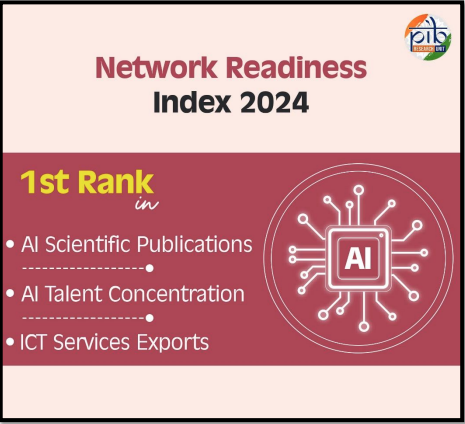
- 02 Dec 2024
In News:
- India has climbed 11 positions to secure 49th rank in the Network Readiness Index (NRI) 2024, compared to 60th in NRI 2023.
- This improvement reflects India’s significant progress in the digital and telecommunication sectors.
NRI 2024 Overview:
- The NRI 2024 report assesses the network readiness of 133 economies based on four pillars: Technology, People, Governance, and Impact, using 54 variables.
- Published by the Portulans Institute, Washington DC.
India's Leading Indicators:
- Top rankings:
- 1st Rank: ‘AI scientific publications’, ‘AI talent concentration’, and ‘ICT services exports’.
- 2nd Rank: ‘FTTH/Building Internet subscriptions’, ‘Mobile broadband internet traffic’, and ‘International Internet bandwidth’.
- 3rd Rank: ‘Domestic market scale’.
- 4th Rank: ‘Annual investment in telecommunication services’.
Digital Progress:
- India has demonstrated remarkable digital transformation, especially in technological innovation and digital infrastructure.
Economic Grouping:
- India ranks 2nd in the lower-middle-income countries group, following Vietnam.
Telecommunication Achievements:
- Tele-density has increased from 75.2% to 84.69% in the past decade, with 119 crore wireless connections.
- Internet subscribers have surged from 25.1 crore to 94.4 crore, aided by Digital India initiatives and rural broadband expansion.
- 5G Launch: In 2022, India launched 5G services, significantly boosting global mobile broadband speed rankings from 118th to 15th.
Future Vision:
- India’s Bharat 6G Vision aims to position the country as a leader in future telecom technologies, backed by strong infrastructure and investments in emerging technologies.
Telecom Reforms:
- Spectrum management, ease of doing business, and consumer protection reforms have strengthened India’s telecom sector, contributing to its improved network readiness ranking.
World AIDS Day 2024
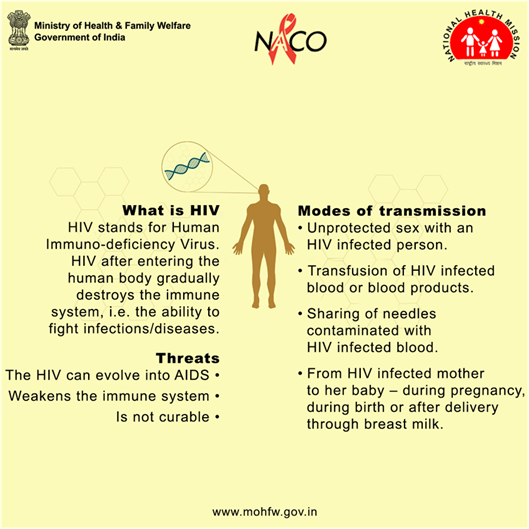
- 02 Dec 2024
In News:
World AIDS Day is observed annually on December 1 since 1988 to raise awareness about HIV/AIDS and demonstrate solidarity with affected individuals. It commemorates lives lost to AIDS and highlights progress and ongoing challenges in prevention, treatment, and care.
Key Highlights:
- 2024 Theme: "Take the Rights Path: My Health, My Right!"
- Focuses on healthcare access, human rights, and addressing systemic inequalities in HIV prevention and treatment services.
- Aims to empower individuals to manage their health and reduce stigma.
- Advocates for inclusivity and global cooperation to eradicate AIDS.
Global and National Perspective on HIV/AIDS
- Global Progress:
- According to UNAIDS Global AIDS Update 2023, significant strides have been made globally in reducing new HIV infections and improving treatment access.
- India has been acknowledged for its robust legal framework and financial investments in HIV control.
- India's HIV Statistics:
- Over 2.5 million people live with HIV in India.
- Annual new infections: 66,400, a 44% reduction since 2010.
- HIV prevalence among adults is 0.2%.
- Free lifelong treatment is provided to over 16 lakh people at 725 ART centers (as of 2023).
India’s Comprehensive HIV/AIDS Response
- Early Initiatives:
- India’s response to HIV/AIDS began in 1985 with sero-surveillance and blood safety measures.
- The National AIDS and STD Control Programme (NACP) was launched in 1992, evolving into one of the world’s largest HIV/AIDS control programs.
- Evolution of NACP:
- Phase I (1992-1999): Focused on awareness and blood safety.
- Phase II (1999-2007): Introduced direct interventions in prevention, detection, and treatment.
- Phase III (2007-2012): Expanded decentralized management at the district level.
- Phase IV (2012-2017): Increased funding and sustainability of interventions.
- Phase IV Extended (2017-2021): Passage of the HIV and AIDS (Prevention and Control) Act, 2017; introduction of the ‘Test and Treat’ policy; and response to the COVID-19 pandemic with IT innovations.
- NACP Phase V (2021-2026):
- Central Sector Scheme with an outlay of Rs. 15,471.94 crore.
- Goals: Reduce new HIV infections and AIDS-related deaths by 80% by 2025-26 from 2010 levels.
- Eliminate vertical transmission of HIV and syphilis, reduce stigma, and ensure universal access to STI/RTI services for vulnerable populations.
- Key strategies include community-centered approaches, technology integration, gender-sensitive responses, and public-private sector partnerships.
Key Objectives of NACP Phase V
- Prevention & Control:
- Ensure 95% of high-risk individuals access prevention services.
- Achieve the 95-95-95 targets: 95% of HIV-positive individuals know their status, are on treatment, and achieve viral suppression.
- Eliminate vertical transmission of HIV and syphilis.
- Reduce stigma and discrimination to less than 10%.
- STI/RTI Prevention:
- Universal access to high-quality services for at-risk populations.
Asia-Oceania Meteorological Satellite Users' Conference (AOMSUC-14)

- 02 Dec 2024
In News:
The 14th Asia-Oceania Meteorological Satellite Users' Conference (AOMSUC-14)was held in New Delhi, India, hosted by the India Meteorological Department (IMD) under the Ministry of Earth Sciences. This annual event brings together meteorologists, earth scientists, and satellite data users to discuss advancements in satellite technology for weather and climate monitoring.
Key Facts:
- Objective:
- Promote Satellite Observations: Highlight the importance of satellite data for meteorology and climatology.
- Advance Remote Sensing Science: Foster advancements in satellite technology and its application in weather forecasting and climate monitoring.
- Encourage Collaboration: Facilitate dialogue between satellite operators and users to enhance the use of satellite data across the Asia-Oceania region.
- Discuss Future Plans: Update on the current status and future plans of international space programs.
- Engage Young Scientists: Encourage the involvement of young researchers in satellite science and meteorology.
- Participants:
- Around 150 participants from various countries, including key international space organizations like WMO, NASA, ESA, JAXA, and other meteorological and space entities.
- The conference will feature oral presentations, poster sessions, panel discussions, and a training workshop focused on satellite data application.
- Significance of the Conference:
- Regional Cooperation: AOMSUC promotes stronger cooperation between countries in the Asia-Oceania region, addressing shared challenges in meteorology and satellite data usage.
- Improved Forecasting: Enhances satellite data utilization for more accurate weather forecasting, disaster prediction, and climate monitoring.
- Disaster Risk Management: Strengthens early warning systems for extreme weather events, improving disaster preparedness and response.
- Capacity Building: Offers training and workshops for local meteorologists, boosting the capacity of countries to use satellite data effectively for weather forecasting and climate services.
- Data Sharing: Encourages collaboration in satellite data sharing, facilitating better access to meteorological data across national borders.
- History of AOMSUC:The first AOMSUC was held in Beijing, China in 2010. Since then, the conference has been held annually in various Asia-Oceania locations and has become a leading event for the meteorological community.
KisanPehchaan Patra
- 02 Dec 2024
In News:
The Indian government is actively promoting the creation of digital identities for farmers through the KisanPehchaan Patra (Farmer ID). The initiative is an essential part of the Digital Agriculture Mission under the AgriStack initiative.
Key Details:
Objective:
- The main goal is to provide digital IDs linked to Aadhaar for farmers, capturing comprehensive agricultural data including land records, crop information, and ownership details.
- These digital identities are designed to enhance farmers' access to government schemes and digital agriculture services.
Farmer ID Creation Timeline:
- The government plans to create digital IDs for 11 crore farmers in phases:
- 6 crore farmers in FY 2024-25.
- 3 crore farmers in FY 2025-26.
- 2 crore farmers in FY 2026-27.
AgriStack Initiative:
- The AgriStack initiative aims to build a Digital Public Infrastructure (DPI) for the agriculture sector, which includes:
- Farmers' Registry.
- Geo-referenced village maps.
- Crop Sown Registry.
Implementation Strategy:
- Camp-mode approach: States have been instructed to organize field-level camps to ensure faster and inclusive registration of farmers.
- Financial Incentives:
- States will receive ?15,000 per camp for organizing these camps.
- Additionally, ?10 per Farmer ID issued.
- Funding is provided through the Pradhan Mantri KisanSamman Nidhi (PM-Kisan) scheme.
Benefits of Digital Farmer ID:
- Targeted Delivery of Benefits: Ensures subsidies and benefits reach legitimate farmers and eliminates duplication.
- Precision Agriculture: Supports data-driven policies for better crop planning, insurance, and market linkages.
- Financial Inclusion: Facilitates easy access to credit, loans, and crop insurance, empowering farmers financially.
- Better Monitoring: Helps in tracking the actual implementation of schemes and ensures that only eligible farmers benefit.
Progress in States:
- Advanced States: Gujarat, Madhya Pradesh, Maharashtra, and Uttar Pradesh have made significant progress in issuing digital Farmer IDs.
- Testing Phase: States like Assam, Chhattisgarh, and Odisha are still in the field-testing phase.
- Special Assistance Scheme: The Finance Ministry allocated ?5,000 crore in August 2024 to assist states in creating the Farmers' Registry, with funds available until March 2025.
Linkage with Land Records and Crop Data:
- The Farmer ID integrates with state land records and crop data, creating a dynamic and accurate database known as the Farmer’s Registry.
- This data helps in the development of better agricultural policies and decision-making.
Digital Agriculture Mission:
- The government approved a substantial outlay of ?2,817 crore for the Digital Agriculture Mission, which is intended to modernize agricultural practices and build robust digital infrastructure.
- The mission also includes the launch of the Digital Crop Estimation Survey (DGCES), which will help in crop estimation and better resource allocation.
National Policy on Female Labour Force Participation (FLFP)
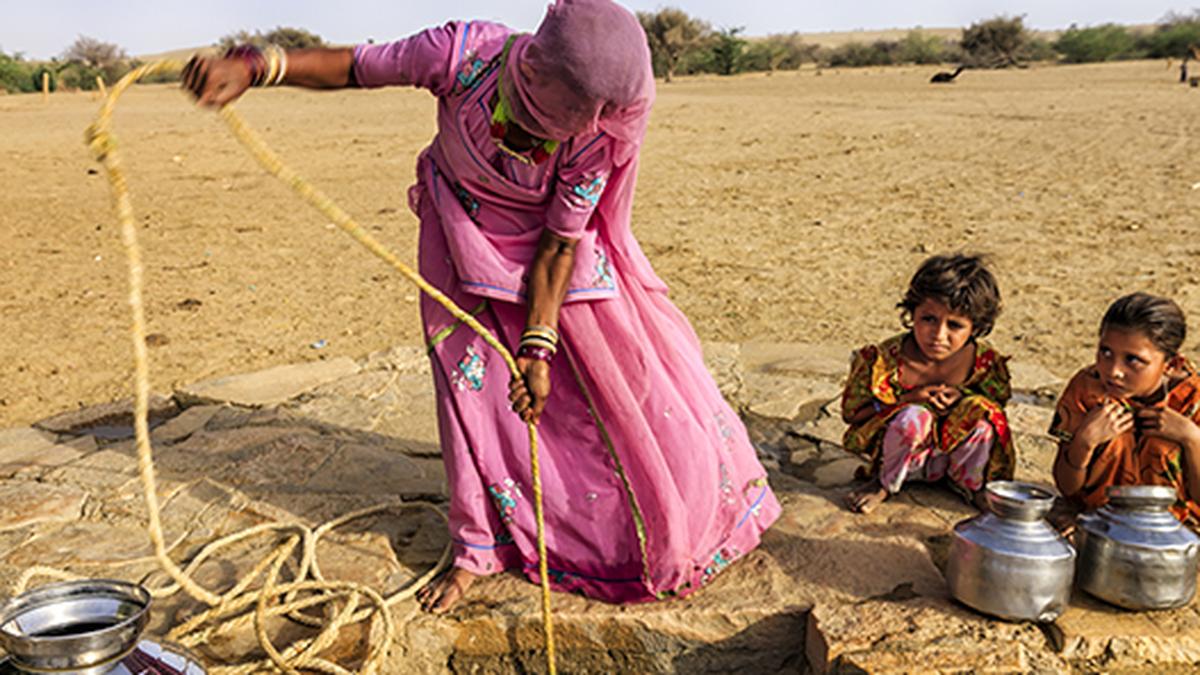
- 02 Dec 2024
In News:
- India is working on a national policy to enhance female labour force participation (FLFP), focusing on creating a supportive care economy structure.
- The policy is being developed by an inter-ministerial team involving the Ministries of Skill Development, Labour, Rural Development, and Women and Child Development.
- Goal: To reduce barriers for women, especially related to caregiving responsibilities, and increase their participation in the workforce.
Key Focus Areas:
- Care Economy: Involves both paid and unpaid caregiving services, such as childcare, eldercare, domestic work, and health services.
- The policy aims to formalize care work, addressing its undervaluation and encouraging women's workforce participation.
- Proposes a core skilling package for caregivers, particularly for childcare in rural and informal sectors.
- Childcare Facilities: Targeting women working under schemes like MGNREGS (Mahatma Gandhi National Rural Employment Guarantee Scheme).
Current Challenges:
- Post-marriage employment drop: Women face a significant decline in workforce participation after marriage, often due to caregiving roles.
- In India, 53% of women are outside the labour force, mostly due to unpaid domestic work, unlike only 1.1% of men.
- The gender divide in caregiving is stark: Women spend over 5 hours daily on unpaid domestic work (81% of females), compared to 12.4% of males.
Key Initiatives:
- Palna Scheme: Provides daycare through Anganwadi-cum-Crèche facilities for working parents, benefiting children aged 6 months to 6 years. 1,000 crèches are operational.
- Women’s Employment Data:
- In rural India, 36.6% of women participate in the workforce, compared to 23.8% in urban areas.
- Post-marriage, female employment drops by 12 percentage points, even without children.
- Improving Female Labour Force Participation (FLFP): Key to India's growth, as matching women’s workforce participation with men could boost GDP by 27% (IMF).
Barriers to Women’s Workforce Inclusion:
- Unpaid Care Work: Women's disproportionate share of household duties limits paid employment opportunities.
- Cultural Norms: Gender expectations restrict women’s access to employment, especially in rural areas.
- Educational Barriers: Limited access to education for girls restricts skill development, lowering job prospects.
- Health & Safety Issues: Health challenges and safety concerns at workplaces hinder women's workforce participation.
- Lack of Supportive Policies: Absence of parental leave and flexible work arrangements for women, especially in the informal sector.
Government Initiatives for Women’s Employment:
- BetiBachaoBetiPadhao: Promotes girl child education and empowerment.
- National Education Policy (NEP): Ensures gender equity in education.
- Maternity Benefit (Amendment) Act, 2017: Extends paid maternity leave to 26 weeks and mandates crèche facilities in large establishments.
- Labour Codes (2019-2020): Codifies labor laws to provide a framework for improving women’s workplace safety and employment opportunities.
Global Examples & Inspiration:
- Japan’s Womenomics: Aimed at increasing female participation, Japan's womenomics reforms have grown women’s labour force participation from 64.9% to 75.2% (2013-2023).
- Flexible Work Models: Countries like Netherlands encourage part-time and remote work, offering flexibility to manage work-life balance.
- Sweden’s Investment in ECCE: Investing 1% of GDP in Early Childhood Care and Education (ECCE) has significantly reduced women’s workforce exclusion.
Way Forward:
- National Women’s Urban Employment Guarantee Act (WUEGA): Promotes gender-balanced work environments and childcare facilities at work sites.
- Flexible Work Options: Encouraging remote work, parental leave, and childcare support will empower more women to balance caregiving and employment.
- Investment in the Care Economy: To reduce the care burden on women, substantial investment in ECCE and related sectors is essential to increase women’s participation and economic independence.
Shahi Jama Masjid in Sambhal
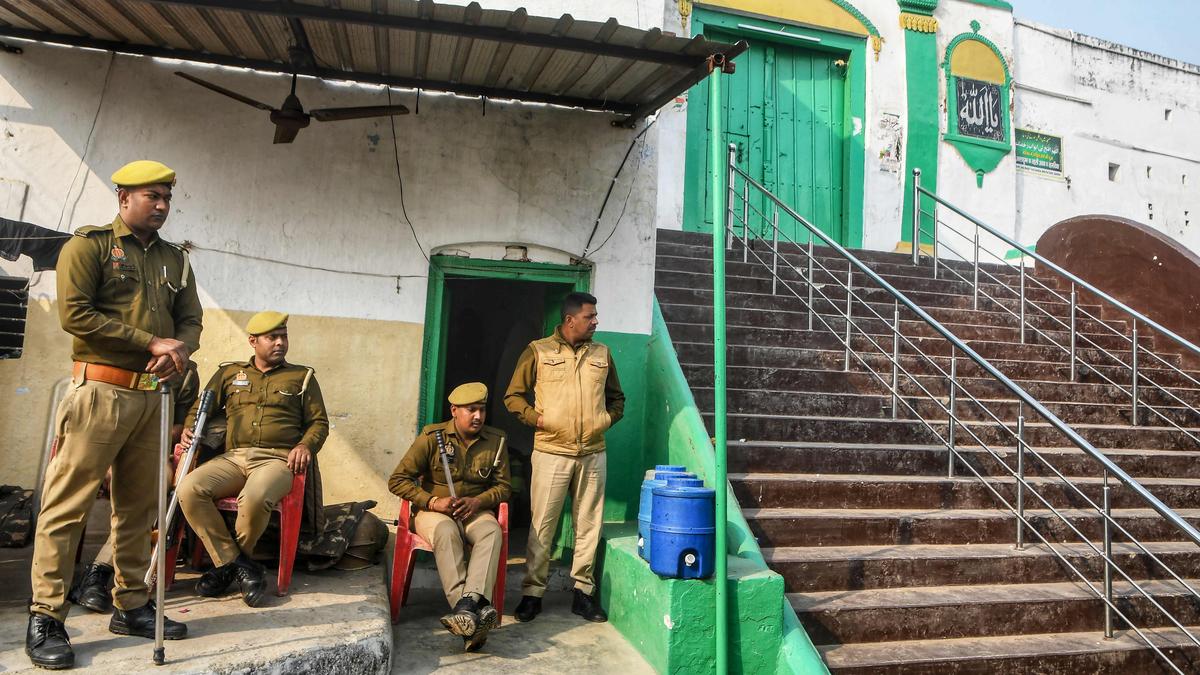
- 01 Dec 2024
In News:
The controversy surrounding the Shahi Jama Masjid in Sambhal, Uttar Pradesh, has intensified following claims that the mosque, built during the Mughal Emperor Babur's reign (1526–1530), was constructed over a Hindu temple, the Hari Har Mandir. This claim has led to legal battles and violent clashes, making it part of a broader series of disputes involving mosques built during the Mughal era, such as the Gyanvapi mosque in Varanasi and the Eidgah Masjid in Mathura.
Background and Legal Context:
The dispute began when a petition was filed in Sambhal's district court on November 19, 2024, claiming the Jama Masjid was built on the site of an ancient temple. The petitioners, led by Hari Shanker Jain, demanded a survey to ascertain the religious character of the site. This petition follows a pattern seen in similar cases in Varanasi, Mathura, and Dhar, where Hindu groups have raised similar claims about mosque sites. The court ordered a photographic and videographic survey of the mosque, which, initially carried out peacefully, later sparked violence on November 24 when the survey was accompanied by chanting crowds. This led to protests, stone pelting, and allegations of police firing, resulting in several deaths.
The Jama Masjid is a protected monument under the Ancient Monuments Preservation Act, 1904, and is listed as a Monument of National Importance by the Archaeological Survey of India (ASI). This gives the case legal and cultural sensitivity, as it involves both national heritage and religious sentiments.
Historical and Architectural Context:
The Shahi Jama Masjid in Sambhal was constructed by Mir Hindu Beg, a general under Babur, in the early 16th century. It is one of three mosques commissioned by Babur, alongside those in Panipat and Ayodhya. The mosque is noted for its architectural style, which includes a large square mihrab hall, a dome, and arches, constructed using stone masonry and plaster. Some historians argue that the mosque might be a Tughlaq-era structure modified during Babur's reign. Locally, Hindu tradition holds that the mosque incorporates elements of a Vishnu temple, believed to be the site of Kalki, the tenth avatar of Vishnu.
The Places of Worship Act, 1991:
The dispute has reignited debates about the Places of Worship (Special Provisions) Act, 1991, which mandates that the religious character of any place of worship as it existed on August 15, 1947, should be maintained, with the exception of the ongoing Babri Masjid dispute. The Act aims to prevent any further contests regarding religious sites, and Section 3 of the Act explicitly prohibits converting a place of worship into a site of a different religious denomination.
The petition filed in Sambhal seeks to alter the religious character of the mosque, directly contravening the Places of Worship Act. The petitioners have cited remarks by Supreme Court Justice D.Y. Chandrachud in 2022, suggesting that a survey to ascertain the religious character of a place might not violate the Act. This has led to petitions challenging the Act in the Supreme Court, including cases from Varanasi, Mathura, Dhar, and now Sambhal.
The Legal and Social Implications:
The ongoing dispute over the Shahi Jama Masjid highlights the tension between historical narratives, legal frameworks, and communal harmony. The Supreme Court has intervened in the matter, temporarily halting further proceedings in the trial court, urging that the mosque's management committee approach the Allahabad High Court. The Court emphasized the importance of maintaining peace and harmony and cautioned against any actions that could escalate tensions.
The case underscores the challenges of balancing India's rich historical heritage with its diverse religious communities. As the legal process unfolds, the outcome of the Sambhal dispute could set significant precedents for how similar cases are handled in the future.
Conclusion:
The Sambhal mosque dispute, much like the Gyanvapi and Ayodhya cases, brings to the forefront the complex intersections of history, religion, and law. It also raises critical questions about the application of the Places of Worship Act and its implications for preserving India's pluralistic society. The outcome of this case, alongside the pending petitions in other states, will be crucial in shaping the future of religious site disputes in India.
India-Cambodia Joint Military Exercise CINBAX
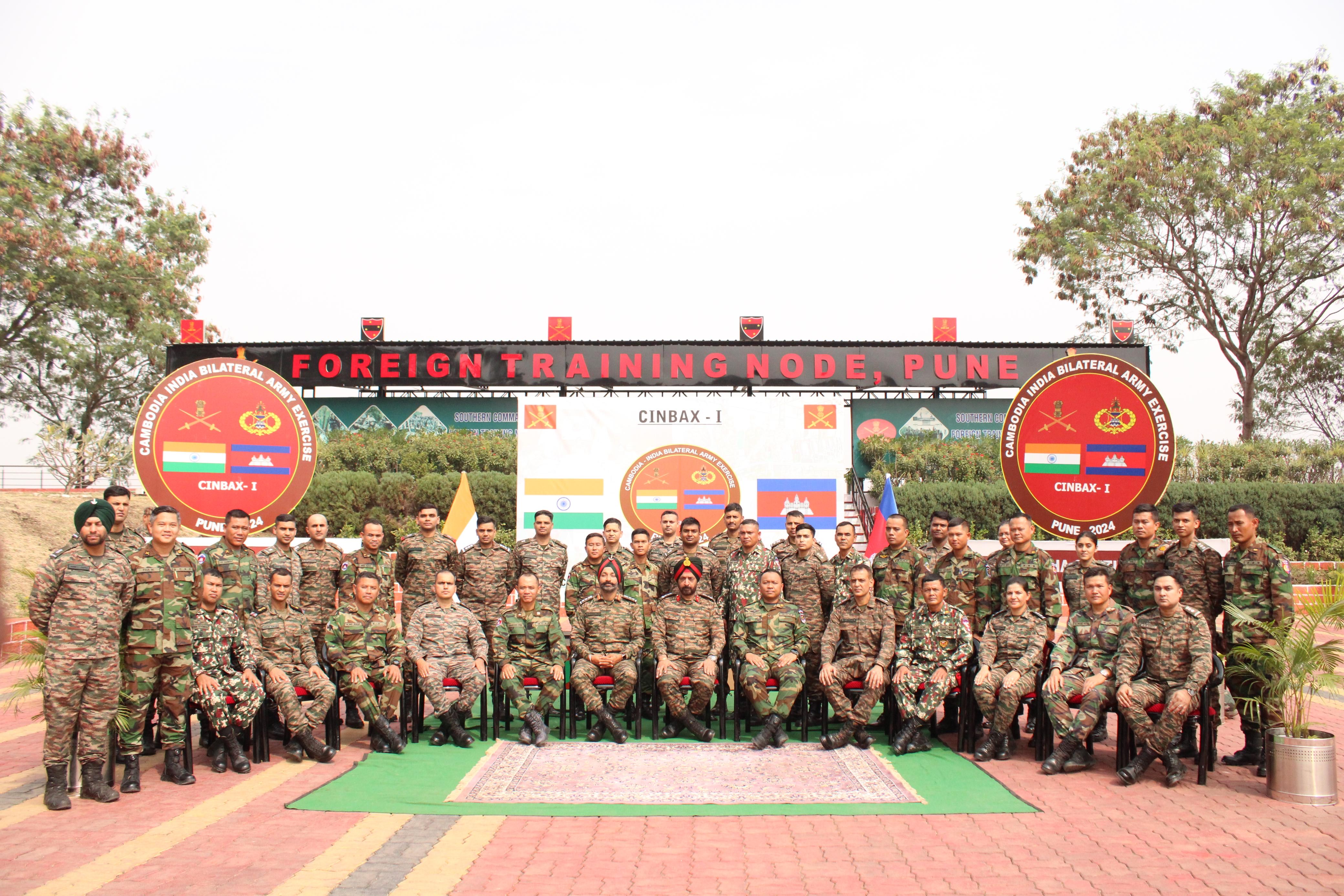
- 01 Dec 2024
In News:
The first edition of CINBAX (Counter-Terrorism Counter-Bio-Terrorism and Intelligence Operations Exercise) was launched on December 1, 2024, at the Foreign Training Node, Pune.
Key Details:
- Participants: 20 personnel from each side – the Indian Army and the Cambodian Army – focusing on enhancing cooperation for UN peacekeeping operations.
- Objective:
- Enhancing Trust and Interoperability: CINBAX aims to foster mutual trust, build camaraderie, and improve operational efficiency between the two armies in conducting peacekeeping operations under UN guidelines.
- Focus Areas: Joint Counter-Terrorism (CT) operations, Intelligence, Surveillance, and Reconnaissance (ISR), cyber warfare, logistics, casualty management, and disaster relief operations.
- Phases of the Exercise:
- Phase I: Orientation for Counter-Terrorism operations in the context of UN peacekeeping missions.
- Phase II: Conduct of tabletop exercises to simulate and plan response scenarios.
- Phase III: Finalization of plans and review of lessons learned, focusing on operational strategies and tactical decision-making.
- Key Topics Covered:
- Discussions on setting up a Joint Training Task Force for intelligence, surveillance, and reconnaissance.
- Exploring cyber warfare, hybrid warfare, and unconventional tactics.
- Strategies for managing logistics, casualties, and coordination during Humanitarian Assistance and Disaster Relief (HADR) operations.
- Promotion of Indigenous Defence Equipment:
- The exercise will showcase Indian-made weapons and defence equipment, supporting India’s commitment to Atmanirbhar Bharat (self-reliance in defence production).
- Objective: To highlight India's advanced military technology and indigenous defence capabilities.
- Significance for India-Cambodia Relations:
- The exercise strengthens military ties between India and Cambodia, contributing to improved cooperation in regional peacekeeping efforts.
- CINBAX marks a significant milestone in India-Cambodiadefence collaboration and sets the stage for future joint operations.
India-Cambodia Bilateral Relations
- Historical Context:
- India and Cambodia share strong religious, cultural, and linguistic ties, with Hindu rituals influencing Cambodian culture and Sanskrit and Khmer sharing common words.
- Diplomatic relations were established in 1952, even before Cambodia's independence from France.
- Key Developments:
- 1954: Prime Minister Jawaharlal Nehru visited Cambodia, initiating strong diplomatic ties, particularly during the Non-Aligned Movement.
- Post-1970s: India played a pivotal role in Cambodia's recovery from the Khmer Rouge regime. India was the first democratic country to recognize the Heng Samrin regime in 1981 and contributed to Cambodia's political reconciliation.
- 1980s: India facilitated dialogue for the Paris Peace Accord and contributed to the success of UNTAC elections in 1993.
- Strategic and Economic Cooperation:
- Defence: Enhanced cooperation in defence capacity building, military training, and infrastructure development.
- Trade: India exports pharmaceuticals, bovine meat, automobiles, and leather products to Cambodia. In return, Cambodia exports organic chemicals, apparel, and footwear to India.
- Mekong-Ganga Cooperation (MGC): Established in 2000, MGC includes Cambodia and aims to enhance cooperation in sectors like trade, education, tourism, and cultural exchanges.
- Recent Collaboration:
- India has extended financial assistance for infrastructure projects in Cambodia, especially in restoring and conserving cultural heritage sites like Angkor Wat.
- MoUs signed in bilateral cooperation, cultural exchanges, and development projects highlight the growing India-Cambodia strategic partnership.
Key Highlights on India’s Horticulture and Plant Health Management Initiatives
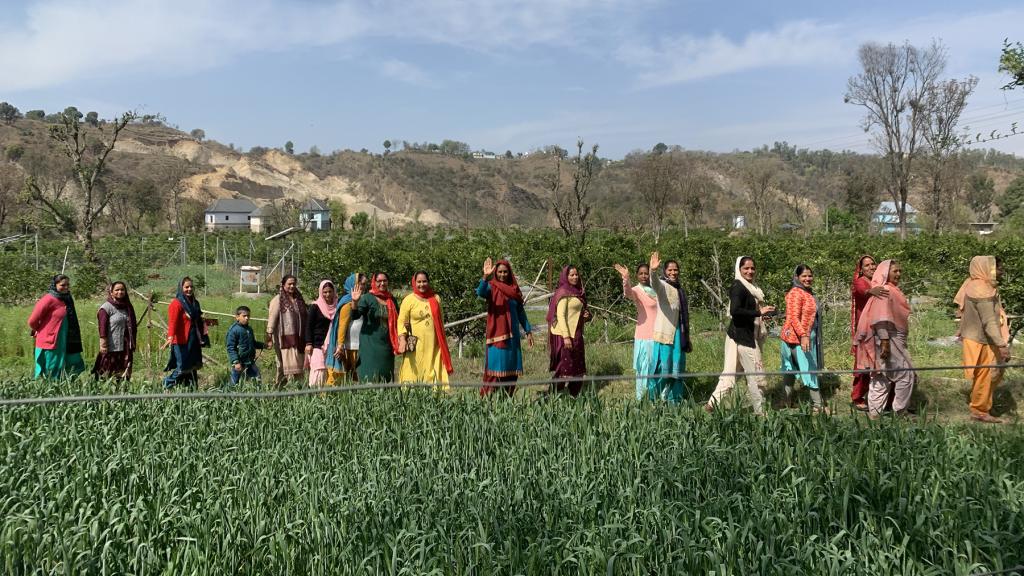
- 01 Dec 2024
In News:
Government of India and ADB sign $98 million loan to promote plant health management in India’s horticulture.
Key Highlights:
$98 Million Loan Agreement with ADB:
- India and the Asian Development Bank (ADB) signed a $98 million loan to enhance horticulture productivity and resilience.
- Objective: Improve farmers' access to certified, disease-free planting materials, which will increase crop yield, quality, and climate resilience.
- Focus Areas: The project aligns with India’s Atmanirbhar Clean Plant Programme (CPP), aiming to strengthen plant health management in horticulture.
Atmanirbhar Clean Plant Programme (CPP):
- Implemented under MIDH: The Clean Plant Programme is part of the Mission for Integrated Development of Horticulture (MIDH).
- Goal: To provide virus-free, high-quality planting materials to farmers, boosting horticultural crop yields and promoting climate-resilient varieties.
- Implementation Period: 2024-2030, with 50% financial support from ADB.
- Key Components:
- Establishment of 9 Clean Plant Centers (CPCs) with state-of-the-art diagnostic, therapeutic, and tissue culture laboratories.
- Certification Framework: Developing a regulatory framework under the Seeds Act 1966 to certify clean plants.
- Support to Nurseries: Infrastructure development for large-scale nurseries.
- Significance: The programme strengthens India's self-reliance in horticulture and enhances adaptability to climate change impacts.
Mission for Integrated Development of Horticulture (MIDH):
- Nodal Ministry: Ministry of Agriculture and Farmers Welfare.
- Focus: Holistic development of the horticulture sector, including fruits, vegetables, mushrooms, spices, and more.
- Funding Pattern:
- General States: 60% by Government of India (GoI), 40% by State Governments.
- North-Eastern and Himalayan States: 90% by GoI.
Horticulture Sector at a Glance:
- Contribution to Agricultural GDP: Accounts for 33% of the gross value.
- Land Coverage: Occupies 18% of agricultural land in India.
- Global Standing: India is the second-largest producer of fruits and vegetables globally.
- Surpassing Food Grains: Horticulture production exceeds food grain production, occupying much less land (25.66 million hectares vs. 127.6 million hectares for food grains).
Key Benefits of the CPP:
- Climate Resilience: Promotes climate-resilient plant varieties and helps farmers adapt to climate change.
- Innovation: Encourages the use of advanced testing techniques and builds institutional capacity.
- Long-term Impact: Expected to improve sustainability, productivity, and the economic well-being of farmers.
Additional Horticulture Initiatives:
- CHAMAN (Horticulture Assessment using Geo-informatics): A programme to estimate area and production of horticultural crops using scientific methods.
- Kisan Rail Services: Facilitates transportation of perishable horticultural products like fruits and vegetables.
- Capital Investment Subsidy Scheme: By the National Horticulture Board to support the sector’s growth.
Grievance Redressal Assessment and Index (GRAI) 2023
- 01 Dec 2024
In News:
- It was launched by Dr. Jitendra Singh, the Union Minister of State for Science & Technology, Earth Sciences, PMO, Personnel, Public Grievances, Pensions, Atomic Energy, and Space, along with Shri V. Srinivas, the Secretary of the Department of Administrative Reforms and Public Grievances (DARPG).
- This initiative, conceptualized by DARPG, aims to evaluate and rank central Ministries and Departments based on their grievance redressal mechanisms.
Key Aspects of GRAI 2023:
- Objective: GRAI 2023 was designed to provide a comparative assessment of Ministries and Departments based on their grievance redressal systems. It was created based on recommendations from the Parliamentary Standing Committee of the Ministry of Personnel, Public Grievances, and Pensions.
- Assessment Method: The index evaluates 89 Central Ministries and Departments across four dimensions:efficiency, feedback, domain&organisational Commitment
- It is calculated using data from the Centralised Public Grievance Redressal and Management System (CPGRAMS) from January to December 2023. Ministries are grouped into three categories based on the number of grievances received in 2023:
- Group A: Ministries/Departments with more than 10,000 grievances (28 Ministries/Departments)
- Group B: Ministries/Departments with 2,000 to 9,999 grievances (33 Ministries/Departments)
- Group C: Ministries/Departments with fewer than 2,000 grievances (28 Ministries/Departments)
- Top Performers:
- Group A: The Department of Agriculture and Farmers Welfare topped the rankings.
- Group B: The Office of the Comptroller & Auditor General of India led.
- Group C: The Department of Investment & Public Asset Management ranked first.
- It is calculated using data from the Centralised Public Grievance Redressal and Management System (CPGRAMS) from January to December 2023. Ministries are grouped into three categories based on the number of grievances received in 2023:
- Analysis: GRAI 2023 includes an in-depth analysis of the root causes of effective grievance redressal for each Ministry/Department, presented in a color-coded, easily understandable format.
- Advancements: The report outlines a roadmap for improving grievance redressal, emphasizing:
- Utilization of advanced technologies such as AI and Machine Learning (ML) for predictive analytics and data analysis.
- The introduction of features like IGMS 2.0 and TreeDashboard within CPGRAMS.
- Improved training for Grievance Redressal Officers (GROs) and more rigorous audits to increase accountability.
- Expansion of CPGRAMS integration to local governments, enhancing the grievance redressal system across all levels of governance.
Commonwealth Secretariat recognized CPGRAMS as a best practice in grievance redressal at its meeting in April 2024.
SASCI Scheme for Tourism Development
- 01 Dec 2024
In News:
Centre clears scheme for development of 40 tourist destinations across 23 States at a cost of ?3,295 crore.
Key Details:
- Focus Areas: The scheme encourages the development of lesser-known destinations such as Bateshwar (Uttar Pradesh), Ponda (Goa), Gandikota (Andhra Pradesh), and Porbandar (Gujarat) to reduce overcrowding at popular sites.
- Implementation Timeline: Projects must be completed within two years, with funding released in stages until March 2026.
- Key Features:
- Long-term interest-free loans for 50 years.
- States responsible for project execution and maintenance, often through public-private partnerships (PPP).
- The Ministry of Tourism will monitor progress, and 66% of the funds have already been released.
- Emphasis on sustainability and boosting local economies by creating jobs through tourism.
- States must provide land at no cost and ensure proper infrastructure like safety, connectivity, and utilities.
Selection Criteria for Projects:
- Consultation Process: Detailed regional consultations led to the selection of 40 projects from 87 proposals received by the Ministry of Tourism. West Bengal was the only state not submitting proposals.
- Evaluation Criteria: Projects were evaluated based on:
- Connectivity, tourism potential, and ecosystem.
- Financial viability and sustainability.
- Impact on local economy and job creation.
- Funding Pattern:
- A maximum of ?100 crore for each project, with higher funding considered for exceptional projects.
- Total funding capped at ?250 crore per state, allocated on a first-come, first-served basis.
Importance of the Scheme:
- Economic Growth & Employment: Projects are designed to stimulate local economies, create employment, and promote sustainable tourism.
- Global Branding: The scheme aims to brand and market tourist destinations on a global scale.
- Tourism Infrastructure Growth: It aims to improve the entire tourism value chain, including transportation, accommodation, activities, and services.
Tourism Sector Overview:
- Current Status:
- India ranks 39th among 119 countries in the Travel and Tourism Development Index (TTDI) 2024.
- Foreign Tourist Arrivals (FTAs) increased by 47.9% in 2023, with 9.52 million tourists.
- Tourism contributed 5% to India’s GDP in 2022-23 and created 76.17 million direct and indirect jobs.
- India earned ?2.3 lakh crore in foreign exchange in 2023 through tourism.
- Projected revenue from tourism to exceed $59 billion by 2028.
- Initiatives for Promotion:
- Swadesh Darshan Scheme: To develop theme-based circuits.
- Dekho Apna Desh Initiative (2020): Promotes domestic tourism.
- PRASHAD & HRIDAY Schemes: Focus on pilgrimage and heritage city development.
MGNREGA Job Card Deletions Issue:
- Context: A significant surge in deletions of job cards under MGNREGA (Mahatma Gandhi National Rural Employment Guarantee Act) raised concerns over transparency and workers’ rights.
- Reasons for Deletion:
- Permanent migration, duplicate cards, forged documents, and refusal to work.
- Aadhaar-based payment system (ABPS) implementation led to deletions for non-linked cards.
- Implications:
- Violation of workers’ legal right to employment, especially when deletions were made without due process.
- The "Not willing to work" designation undermines livelihood opportunities, especially in high unemployment rural areas.
- Recommendations for Reform:
- Strengthening verification processes and ensuring deletions follow due procedure.
- Empowering Gram Sabhas to review and approve deletions.
- Regular audits and better grievance redressal mechanisms.
Other Government Initiatives in Tourism:
- National Mission on Pilgrimage Rejuvenation and Spiritual, Heritage Augmentation Drive (PRASHAD): For holistic and sustainable development of pilgrimage tourism.
- Incredible India & E-Visa Initiatives: To attract more foreign tourists.
- Regional Connectivity Scheme (UDAN): Enhances air connectivity to remote tourist destinations.
- National Heritage City Development and Augmentation Yojana (HRIDAY): Preserves and rejuvenates heritage sites.
13th National Seed Congress (NSC)
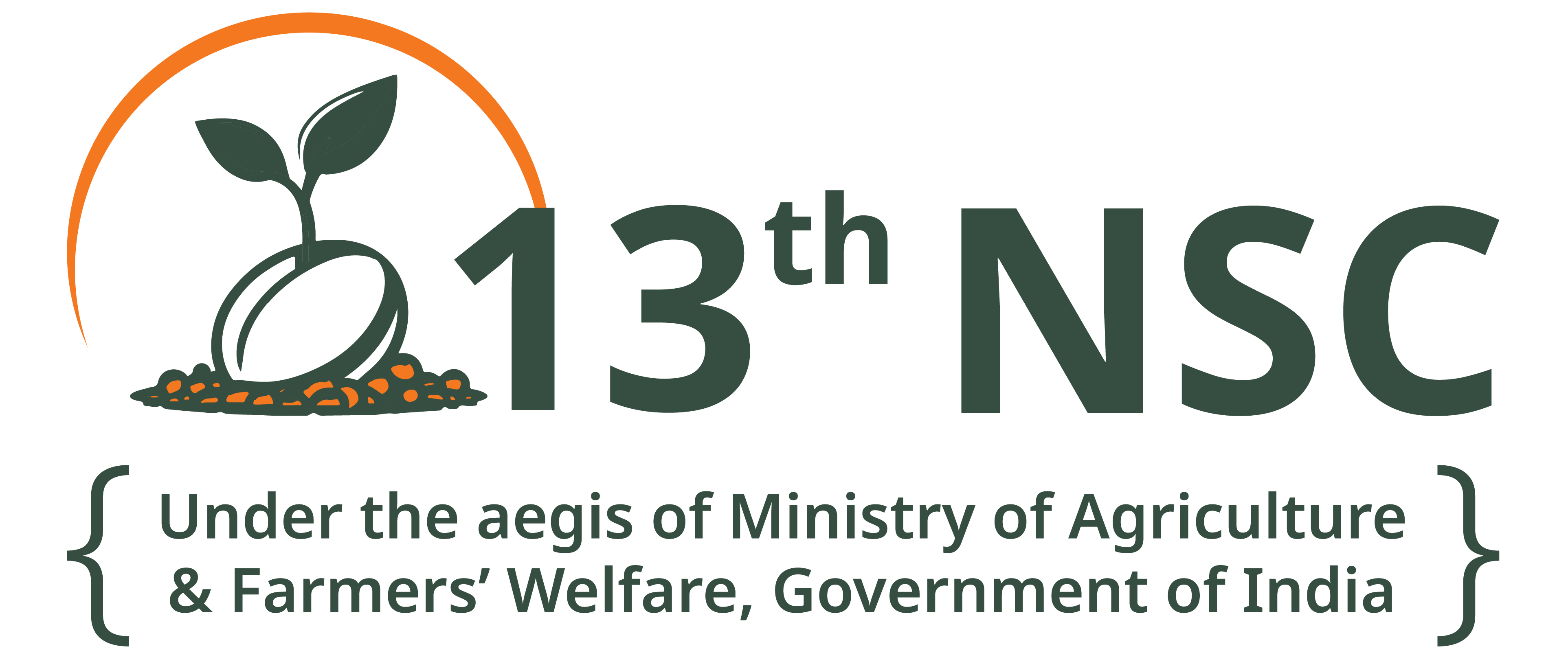
- 30 Nov 2024
In News:
- The 13th National Seed Congress (NSC), organized by the Ministry of Agriculture & Farmers' Welfare, concluded with significant discussions and outcomes focused on advancing India's seed sector.
- The theme for this year's congress, held in Varanasi, was "Innovating for a Sustainable Seed Ecosystem."
Key Highlights:
- Focus Areas:
- Seed Technologies and Biofortification: Emphasis on high-nutrition seeds like iron and zinc-enriched rice and Vitamin A-rich crops to combat malnutrition.
- Climate-Resilient Agriculture: Promoting practices like Direct Seeded Rice (DSR) and the development of stress-tolerant seed varieties to withstand climate change.
- Challenges in India’s Seed Ecosystem:
- Seed Replacement Rate (SRR): SRR in India is around 15-20%, with 100% for hybrid seeds, pointing to the need for higher adoption of certified seeds.
- Monoculture and Seed Market Monopoly: Issues like over-reliance on Bt cotton and domination by multinational companies (e.g., Bayer) in seed markets.
- Government Initiatives:
- National Seed Corporation (NSC): Produces foundation and certified seeds for over 600 varieties.
- Seed Village Programme (Beej Gram Yojana): Focus on improving the quality of farm-saved seeds.
- National Seed Reserve: Ensures seed availability during climatic disruptions.
- Policy Discussions:
- Proposed Seeds Bill: A new bill to regulate seed quality and promote sustainable practices.
- Public-Private Partnerships: Strengthening collaborations to improve seed production, accessibility, and quality.
- Outcomes:
- Biofortified Seeds: Increased development and distribution of nutrient-rich seeds.
- Climate-Resilient Seed Systems: Enhanced focus on developing crops that can withstand climate challenges.
- Public-Private Partnerships: Strengthening collaborations in seed technology and policy reform.
U.N. Peacebuilding Commission
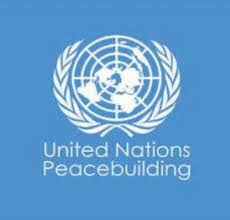
- 30 Nov 2024
In News:
India has been re-elected to the United Nations Peacebuilding Commission (PBC) for the term 2025–2026, continuing its strong commitment to global peace and stability.
UN Peacebuilding Commission (PBC)
It is an advisory body established by the UN General Assembly and UN Security Council in 2005. It is tasked with supporting peace efforts in conflict-affected countries by advising and recommending strategies for post-conflict recovery and long-term peacebuilding.
Composition of PBC:
- The PBC is composed of 31 member states, elected from the General Assembly, Security Council, and Economic and Social Council.
- It includes key financial and troop-contributing countries, which play a central role in shaping global peacebuilding initiatives.
Key Mandates of the PBC
- Coordination of Resources and Strategies:The Commission brings together all relevant actors to propose integrated strategies for post-conflict recovery and peacebuilding.
- Reconstruction and Development:It focuses on rebuilding conflict-affected countries through institution-building and supporting sustainable development efforts.
- Improving Coordination:The PBC ensures better coordination within and outside the UN, develops best practices, and secures predictable financing for early recovery initiatives.
- Sustaining Peace:The Commission promotes sustained international attention to peacebuilding efforts and offers political support to countries emerging from conflict, with their consent.
- Integrated Approach:The PBC advocates for an integrated approach that links security, development, and human rights as interrelated and mutually reinforcing.
- Bridging Role:It serves as a platform to connect UN bodies, Member States, national authorities, civil society, and other stakeholders, sharing good practices in peacebuilding.
India’s Contributions to UN Peacebuilding and Peacekeeping
India has been at the forefront of UN peacebuilding initiatives due to its long-standing commitment to international peace and stability.
- Largest Contributor of Personnel:India is one of the largest contributors of uniformed personnel to UN Peacekeeping. Currently, around 6,000 Indian military and police personnel are deployed across multiple missions in Abyei, Central African Republic, Cyprus, Democratic Republic of Congo, Lebanon, Middle East, Somalia, South Sudan, and Western Sahara.
- Sacrifices in Service:India holds the tragic distinction of having lost over 180 peacekeepers, the highest number from any troop-contributing nation. These sacrifices reflect India's enduring commitment to global peace.
- Financial Support:India contributes to the Peacebuilding Fund, the primary financial instrument for conflict prevention and peacebuilding, which supports countries transitioning from conflict to peace.
- Championing South-South Cooperation:India has actively promoted South-South cooperation, a model for post-conflict recovery that emphasizes shared learning and capacity-building among developing nations.
- Women in UN Peacekeeping:India has led efforts for gender parity in UN peacekeeping. In 2007, India became the first country to deploy an all-women contingent to a UN peacekeeping mission. It has since deployed Female Engagement Teams (FETs) and Female Formed Police Units (FFPUs) in Lebanon and the Democratic Republic of Congo.
- Training and Capacity Building:India has invested in capacity development for both the UN and host nations. The Centre for UN Peacekeeping (CUNPK) in New Delhi, established by the Indian Army, trains over 12,000 troops annually in peacekeeping operations. India also deploys Mobile Training Teams to share best practices with other countries.
India’s Pledges at the UN Peacekeeping Ministerial (2023)
At the UN Peacekeeping Ministerial held in Accra, Ghana (December 2023), India made significant pledges:
- To contribute an Infantry Battalion Group, along with various sub-groups and pre-deployment training courses, for the next two years.
- India’s ongoing commitment to strengthening peacekeeping efforts and supporting the UN’s peacebuilding agenda was reaffirmed.
Flexible UG Degree Completion Norms
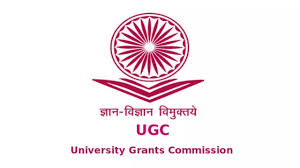
- 30 Nov 2024
In News:
- The University Grants Commission (UGC) has approved new guidelines for undergraduate (UG) degree completion, offering flexibility in the duration of academic programs.
Key Details:
- Two Options for Degree Completion:
- Accelerated Degree Programme:Students with exceptional academic performance or those completing additional credits can graduate earlier than the standard duration.
- Extended Degree Programme:Students facing personal, financial, or academic challenges can extend the time for degree completion without facing penalties.
- Objective:
- Enhance flexibility and a student-centric approach to higher education.
- Address challenges like balancing education with personal or professional commitments.
- Institutional Autonomy:Higher Education Institutions (HEIs) can implement these options based on available infrastructure and academic resources.
- Recognition of Flexibility:Degrees completed earlier or later will be treated on par with those completed within the standard duration.
- Alignment with Global Trends:This initiative aligns with global educational trends towards flexible learning paths.
- Support for Interdisciplinary Studies:The new regulations are expected to benefit students pursuing interdisciplinary studies or professional courses.
- NEP 2020 Alignment:The move is in line with the National Education Policy (NEP) 2020, which promotes learner-centric education and skill development.
- Impact:The decision is likely to provide more options for students, making higher education more accessible and tailored to individual needs.
Global Wage Report 2024-25
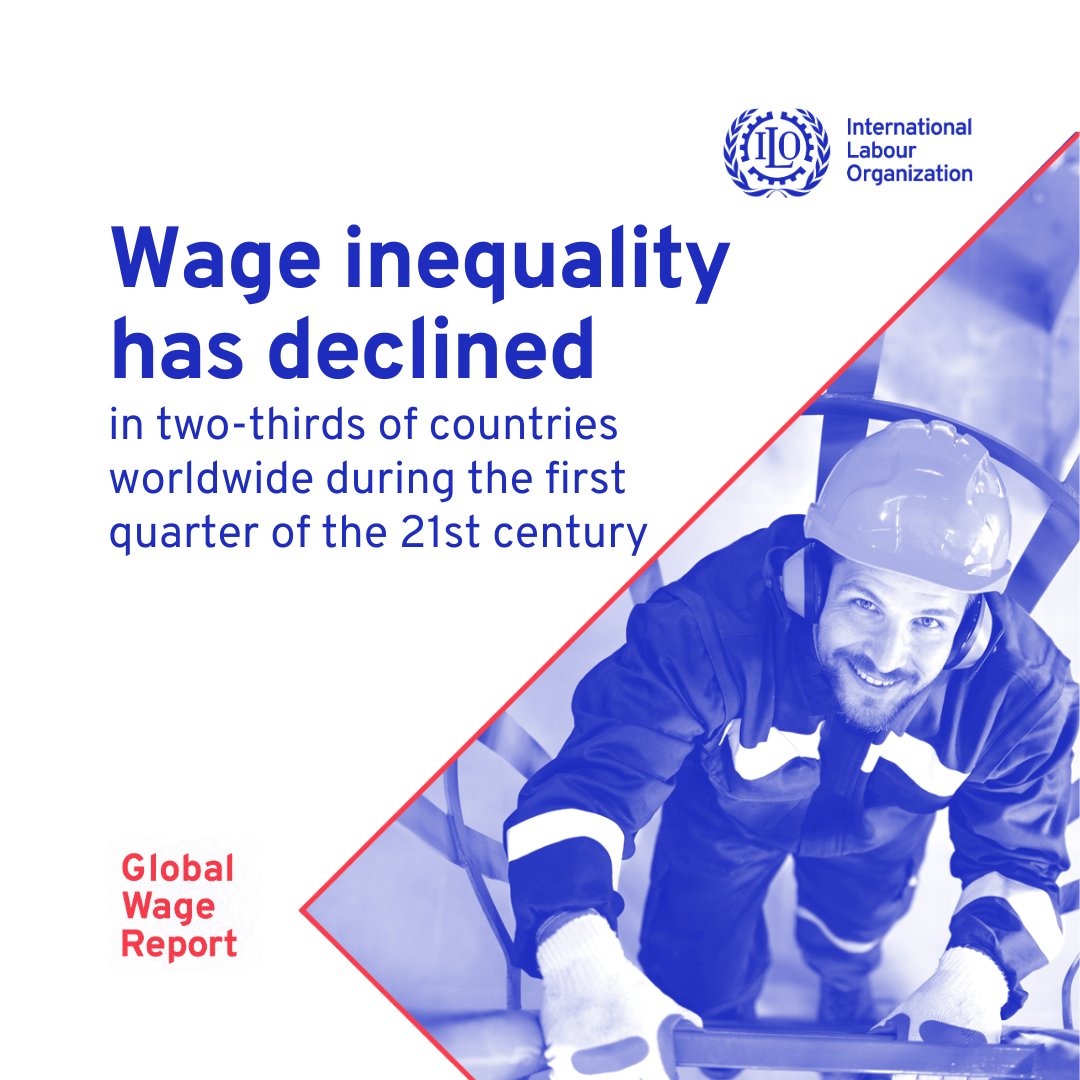
- 29 Nov 2024
In News:
A new report from the International Labour Organization (ILO) reveals that wage inequality has decreased in about two-thirds of all countries since 2000. Despite this positive trend, significant wage differentials persist worldwide.
Global Wage Inequality Trends:
- Wage inequality has decreased in about two-thirds of all countries since 2000.
- Average Annual Decrease in Wage Inequality:
- Ranges from 0.5 to 1.7% globally, depending on the measure used.
- More significant reductions have been observed in low-income countries, where the decrease has ranged from 3.2 to 9.6% over the past two decades.
- Wealthier Countries: Wage inequality has decreased at a slower pace:
- Upper-middle-income countries: annual decrease of 0.3 to 1.3%.
- High-income countries: annual decrease of 0.3 to 0.7%.
Global Real Wage Growth:
- Global real wages grew by 1.8% in 2023, with projections reaching 2.7% growth in 2024 (highest increase in over 15 years).
- This marks a recovery from the negative global wage growth of -0.9% in 2022 due to high inflation rates.
Regional Wage Growth:
- Emerging Economies: Saw stronger wage growth than advanced economies.
- Emerging G20 economies: 1.8% growth in 2022 and 6.0% growth in 2023.
- Advanced Economies: Faced real wage declines.
- G20 advanced economies: Declined by -2.8% in 2022 and -0.5% in 2023.
- Fastest Wage Growth: Observed in regions like Asia-Pacific, Central and Western Asia, and Eastern Europe.
Wage Inequality Persistence:
- Income Distribution: The lowest-paid 10% of workers earn just 0.5% of the global wage bill, while the highest-paid 10% earn nearly 38%.
- Wage Inequality in Low-Income Countries: Particularly high, with nearly 22% of wage workers classified as low-paid.
- Women and Informal Economy Workers: More likely to be among the lowest-paid workers, underscoring the need for targeted actions to close wage and employment gaps.
Non-Wage Workers:
- Globally, one in every three workers is a non-wage worker.
- In low- and middle-income countries, many workers are self-employed in the informal economy, which skews overall income inequality measures.
- Income inequality in these regions is higher when including self-employed workers, especially those in informal employment.
Policy Recommendations:
- Targeted Policies: To reduce wage inequality, countries need stronger wage policies and structural support for equitable growth.
- Focus Areas:
- Promote productivity and decent work.
- Formalization of the informal economy to help reduce income inequality.
- Inclusive Growth: The ILO emphasizes that national strategies should aim for inclusive economic growth to achieve fair wages and reduce wage gaps.
Key ILO recommendations include:
- Setting wages through social dialogue: wages should be set and adjusted through collective bargaining or agreed minimum wage systems involving governments, workers and employers.
- Taking an informed approach: wage-setting should take into account both the needs of workers and their families and economic factors.
- Promoting equality, and equal opportunity of treatment and outcomes: wage policies should support gender equality, equity and non-discrimination.
- Using strong data: decisions should be based on reliable data and statistics.
- Addressing root causes of low pay: national policies should reflect each country’s specific context and address the causes of low pay such as informality, low productivity and the under-valuing of jobs in sectors such as the care economy.
Mission Shukrayaan
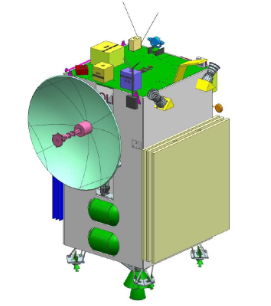
- 29 Nov 2024
In News:
ISRO received approval for its first Venus mission, Shukrayaan. The probe will undertake a detailed investigation of Venus, including its surface, atmosphere and geological structure.
Shukrayaan Mission (Venus Orbiter Mission):
- Launch Timeline: Scheduled for 2028.
- Objective: Investigate Venus to gather data on its surface, atmosphere, and geological structure.
- Scientific Focus: Study weather patterns, geological activities, and atmospheric composition (e.g., carbon dioxide and sulfuric acid clouds).
- Instrumentation: Equipped with synthetic aperture radar, infrared, and ultraviolet imaging devices to study Venus’s ionosphere.
- Significance: Offers global coverage of Venus, addressing gaps in previous missions' spatial coverage.
- Cost: Estimated at Rs 1,236 crore.
- Launch Vehicle: ISRO plans to use the LVM-3 (GSLV Mk III) rocket to launch the mission into an elliptical parking orbit (170 km x 36,000 km).
- Mission Data Processing: Data will be archived and disseminated through the Indian Space Science Data Center (ISSDC).
Chandrayaan 4 Mission:
- Collaborative Effort: Joint mission between India (ISRO) and Japan.
- Launch Objective: Land on the moon's south pole, with a focus on the region at 90°S (compared to previous missions at 69.3°S).
- Mission Details:
- Includes a rover weighing 350 kg (12 times heavier than previous rover).
- The rover will be equipped with advanced scientific tools for lunar exploration.
- Government Approval: Awaiting approval, with a target execution date of 2030.
Gaganyaan Mission (Human Spaceflight Program):
- Timeline: Unmanned flight in 2026, followed by a manned mission.
- Indian Space Station: Construction approved; to be completed by 2035, comprising five modules.
- Purpose: To serve as a transit facility for deep space exploration, including future lunar missions.
Mars Exploration Plans:
- Future Missions: Plans to send satellites to Mars and attempt a landing on the Martian surface.
- Significance: Demonstrates India’s growing ambitions in interplanetary exploration.
INSAT-4 Series of Satellites:
- Goal: Launch of new meteorological and oceanographic sensors to improve weather forecasts and disaster management.
- Technological Advancements: Need for India to catch up with global advancements in space-based sensors.
International Collaboration in Space:
- Chandrayaan 4: A collaboration between ISRO and Japan to explore the moon’s south pole, showcasing India's growing international cooperation in space exploration.
Strategic Importance of Shukrayaan:
- Contribution to Science: The mission’s global dataset will provide unique insights into Venus, enhancing the understanding of planetary atmospheres and geological processes.
- Potential for Discoveries: Research on Venus’s ionosphere and possible volcanic activity.
'Bal VivahMukt Bharat' Campaign
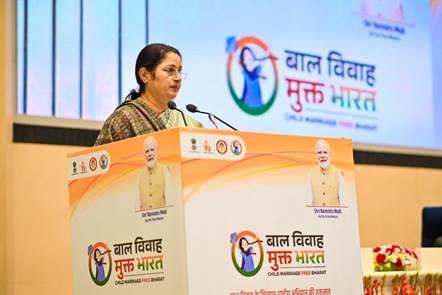
- 29 Nov 2024
In News:
- The Union Minister for Women and Child Development launched the “Bal VivahMukt Bharat” campaign aimed at eradicating child marriage in India.
- Goal: Reduce child marriage rates to below 5% by 2029.
- Focus: Engage multiple stakeholders, raise awareness, and leverage technology for eradication.
Target Areas:
- Target States: West Bengal, Bihar, Jharkhand, Rajasthan, Tripura, Assam, Andhra Pradesh.
- High-Burden Districts: Nearly 300 districts with higher rates of child marriage.
Child Marriage Free Bharat Portal:
- A digital platform to raise awareness, report cases, and track progress on child marriage prevention.
- Real-time tracking by Child Marriage Prohibition Officers (CMPOs).
Monitoring and Accountability:
- Central nodal officers and CMPOs will oversee the campaign’s implementation at state and district levels.
- The portal facilitates citizens’ participation by allowing complaints and providing information on legal remedies.
Progress and Impact:
- Child marriage rates have reduced from 47.4% (2005-06) to 23.3% (2019-21).
- The goal is to reduce these rates further to below 5% by 2029.
Awareness and Community Engagement:
- Public campaigns and community mobilization to challenge societal norms and change attitudes towards child marriage.
- The campaign will continue through various channels, including the BetiBachaoBetiPadhao initiative.
Legal Framework:
- Strengthening the Prohibition of Child Marriage Act (PCMA), 2006, which sets the legal marriage age at 18 for women and 21 for men.
- Penalties for those involved in child marriage include imprisonment and fines.
Key Challenges for Child Marriage:
- Poverty: Families may view early marriage as a financial relief.
- Cultural Norms: Deep-rooted societal beliefs about preserving family honor.
- Gender Inequality: Patriarchal systems view girls as burdens.
- Lack of Education: Limited access to schooling forces early marriages.
- Fear of Sexual Assault: Misguided belief that early marriage protects girls.
- Weak Law Enforcement: Corruption and inadequate resources hinder the law’s implementation.
- Pandemic Impact: Economic hardships during COVID-19 led to an increase in child marriages.
Related Initiatives:
- Prohibition of Child Marriage Act (PCMA), 2006: Strengthens child marriage laws and establishes CMPOs.
- Success Stories: Individuals like BuchaRamanamma, Durga, and Roshni Perween have inspired others by stopping their own child marriages and advocating for change.
Campaign and National Vision:
- The campaign aligns with the Prime Minister’s vision for a Viksit Bharat (Developed India) by 2047.
- It aims to empower women and girls, providing them with opportunities for education, health, and safety.
- Collective effort from the government, social organizations, and citizens is crucial to eliminating child marriage.
Eklavya Digital Platform
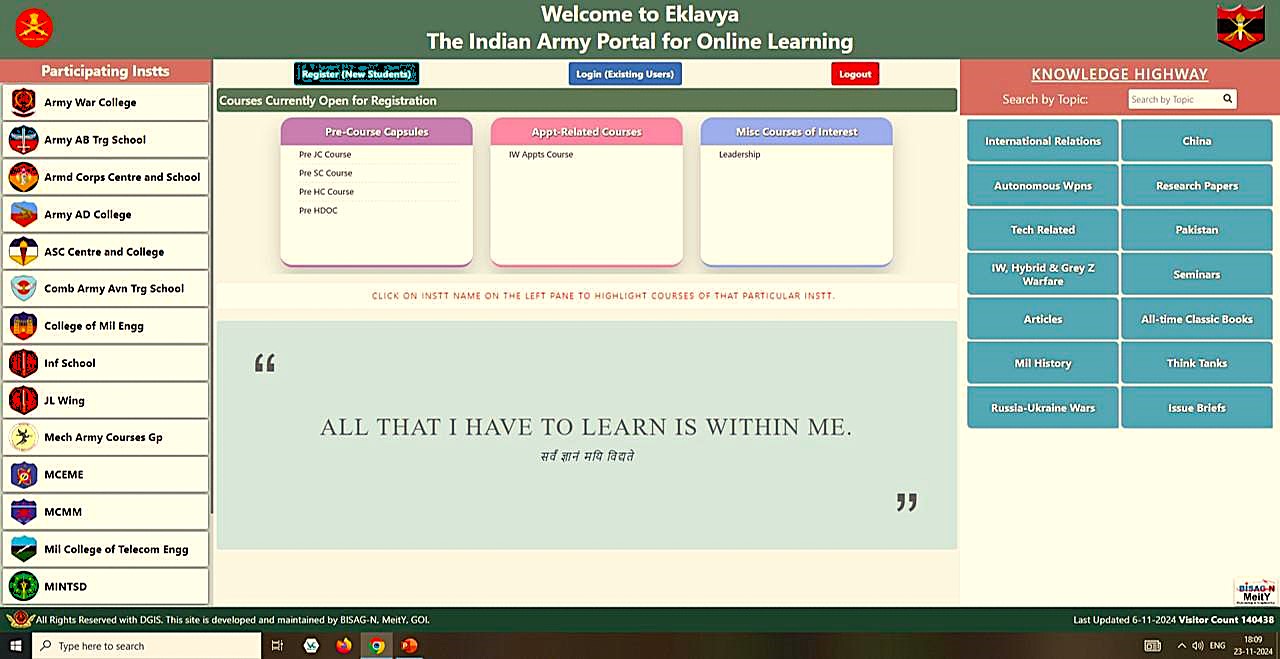
- 29 Nov 2024
In News:
- The Indian Army launched the “Eklavya” online learning platformnmunder the leadership of General Upendra Dwivedi, Chief of the Army Staff (COAS).
- It is part of the Army’s “Decade of Transformation” initiative and aligns with the theme for 2024, “Year of Technology Absorption.”
Platform Development:
- Developed by the Army Training Command (ATC) and sponsored by the Army War College.
- Created at zero cost in collaboration with the Bhaskaracharya National Institute of Space Applications and Geoinformatics (BISAG-N), Gandhinagar.
- Hosted on the Army Data Network with scalable architecture to integrate various training establishments.
Key Features:
- Supports multiple courses from 17Category ‘A’ Training Establishments of the Army.
- Allows student officers to register for several courses simultaneously.
- Aims to decongest physical courses and integrate contemporary, application-focused content.
Categories of Courses:
- Pre-Course Preparatory Capsules: Online study material for physical courses, allowing focus on contemporary topics during offline training.
- Appointment-Specific Courses: Online courses for officers appointed to specialized roles (e.g., information warfare, financial planning, etc.), helping them gain domain-specific expertise before posting.
- Professional Development Suite: Includes courses on strategy, leadership, operational art, finance, emerging technologies, etc., focusing on holistic officer development.
Knowledge Highway:
- A searchable database featuring journals, research papers, and articles to support continuous professional education and development.
Impact:
- Promotes continuous professional military education.
- Enhances the efficiency and specialization of officers, particularly in emerging domains.
- Streamlines training processes and integrates modern technology in the Army’s educational system.
Supreme Court Ruling on EVMs
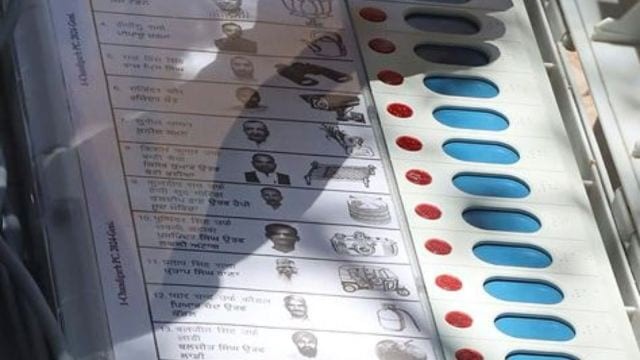
- 28 Nov 2024
In News:
The Supreme Court dismissed the PIL, remarking that EVMs are only questioned after electoral losses, not when elections are won. It emphasized that no evidence of tampering was found.
What Are EVMs and VVPATs?:
- EVMs: Electronic Voting Machines are used for conducting elections to the Parliament, state legislatures, and local bodies. They consist of two units: theControl Unit (operated by the polling officer) and the Ballot Unit (where voters cast their votes).
- VVPAT: The Voter Verifiable Paper Audit Trail enables voters to verify that their vote is recorded as cast. A slip is printed showing the candidate’s name, symbol, and serial number, visible for 7 seconds before being cut and stored in a sealed box.
Safeguards to Ensure EVM Integrity:
- Technical Safeguards:
- Microcontroller Security: EVMs use one-time programmable (OTP) microcontrollers, which cannot be altered after manufacturing.
- Standalone Operation: EVMs do not have wired or wireless connectivity, eliminating risks of remote tampering.
- Post-2013 Features: Advanced EVMs (M3) include tamper detection and mutual authentication protocols.
- Administrative Protocols:
- Randomized EVM Allocation: EVMs are randomly allocated to polling stations to avoid predetermined assignments.
- Mock Polls: Multiple mock polls are conducted to test the functionality of EVMs.
- Counting Procedures: EVMs are brought to counting tables under CCTV surveillance, and VVPAT slips are randomly cross-verified.
- Secure Storage: EVMs are stored under strict protocols, including double-lock systems, CCTV surveillance, and GPS-tracked transport.
Advantages of EVMs Over Ballot Papers:
- Elimination of Invalid Votes: EVMs ensure no invalid votes, a common problem with torn or mis-marked ballot papers.
- Prevention of Booth Capturing: EVMs restrict vote casting to 4 votes per minute, preventing fraudulent vote insertion.
- Accurate and Fast Counting: EVMs enable quick, error-free vote counting, reducing delays and human errors.
- Transparency: Voters can verify their votes through the VVPAT, and the vote count is displayed transparently without revealing candidate-wise results prematurely.
Evolution of EVMs in India:
- 1977: Concept of EVMs conceived.
- 1990: The Dinesh Goswami Committee recommended the use of EVMs.
- 2004: EVMs used nationwide in Lok Sabha elections.
- 2013: VVPAT was introduced to improve transparency.
- 2019: First nationwide use of EVMs backed by VVPAT.
India's Gig Economy
- 28 Nov 2024
In News:
The gig economy market is expected to grow at a compounded annual growth rate (CAGR) of 17 per cent to reach a gross volume of $455 billion by 2024, according to a white paper by the Forum for Progressive Gig Workers.
Key Sectors Supported by Gig Workers:
- E-commerce: Gig workers play a crucial role in driving growth in the e-commerce sector.
- Transportation and Delivery Services: These sectors are heavily dependent on gig workers for their operations and services.
Impact on Employment:
- Job Creation: The gig economy has the potential to create a significant number of jobs, especially in tier 2 and 3 cities, which are emerging as new growth hubs.
- Alternate Revenue Streams: Gig work provides diverse income opportunities for workers, especially for women, offering them a flexible mode of earning.
Contribution to GDP:
- The gig economy’s contribution is expected to add 1.25% to India’s GDP over time, highlighting its growing economic importance.
Technological Integration and Future Prospects:
- AI and Digital Innovation: Future growth is expected to be driven by the integration of artificial intelligence (AI), predictive analytics, and digital innovation, fostering sustainable and inclusive job opportunities.
Social and Economic Benefits:
- Women's Workforce Participation: The gig economy provides women with more earning opportunities and helps integrate them into the workforce.
- Welfare Initiatives: Platforms supporting gig workers are increasingly focusing on welfare initiatives, improving the overall working conditions in the sector.
Challenges and Opportunities:
- Challenges: The evolving dynamics between large companies and gig workers pose challenges in terms of worker rights and fair compensation.
- Opportunities: The growth of the gig economy presents opportunities for companies to innovate and create inclusive work environments, especially for underserved communities.
Future Developments:
- Formal Report: The Forum for Progressive Gig Workers plans to collaborate with global organizations to release a formal report with deeper insights and actionable recommendations for the future of gig work
Global Matchmaking Platform (GMP)
- 28 Nov 2024
In News:
- GMP was launched at COP29, on Energy Day, by the United Nations Industrial Development Organization (UNIDO) and the Climate Club.
- Aimed at accelerating industrial decarbonisation in heavy-emitting industries of emerging and developing economies (EMDEs).
- The platform addresses the annual funding gap of US$125 billion required to achieve net-zero emissions goals.
Key Highlights:
Support Mechanism:
- GMP operates as a support mechanism for the Climate Club, with the secretariat hosted by UNIDO.
- Activities are supported by the interim secretariat of the OECD and the International Energy Agency (IEA).
Key Objectives:
- Match country-specific decarbonisation needs with global technical and financial resources.
- Facilitate the decarbonisation of energy and emissions-intensive industrial sectors, such as steel, cement, chemicals, and aluminium.
- Offer assistance in policy development, technology transfer, and investment facilitation to promote low-carbon industrial practices.
Global Participation:
- Countries like Germany, Chile, Uruguay, Turkey, Bangladesh, and Indonesia are actively involved.
- Non-state actors include UNIDO, World Bank, Climate Investment Funds (CIF), and GIZ, supporting the platform’s initiatives.
Funding Gap:
- Industrial decarbonisation requires an increase in investments from US$15 billion (current) to US$70 billion by 2030, and US$125 billion by 2050, especially for sectors like steel and cement.
Climate Club Work Programme (2025-26):
- The GMP is part of the Climate Club's new work programme for 2025-26, focusing on:
- Advancing ambitious climate change mitigation policies.
- Transforming industries through decarbonisation.
- Boosting international climate cooperation.
Industrial Decarbonisation:
- Decarbonisation refers to reducing carbon dioxide (CO2) and greenhouse gas (GHG) emissions from industrial activities.
- Key sectors for decarbonisation include petroleum refining, chemical manufacturing, iron and steel, cement production, and the food and beverage sector.
Support for EMDEs:
- The platform focuses on helping emerging and developing economies overcome challenges such as lack of resources, technology, and capacity to adopt cleaner industrial methods.
- Climate finance is crucial to pilot and scale low-carbon technologies in these regions.
Future Role of GMP:
- The GMP will play a critical role in incorporating industrial decarbonisation into countries’ Nationally Determined Contributions (NDCs) for COP30.
- The platform aims to accelerate progress by connecting developing countries with finance, technology, and expertise to transition to low-emission industries.
E-Daakhil Portal
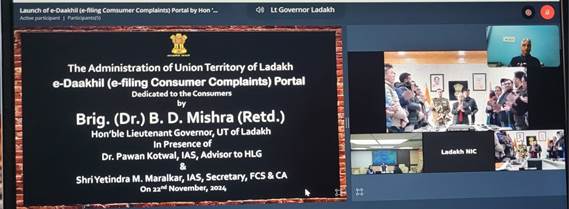
- 28 Nov 2024
In News:
- The E-Daakhil portal was launched by the Department of Consumer Affairs to promote consumer rights and ensure timely justice.
- The portal was launched nationwide with its final rollout in Ladakh on 22nd November 2024, making it operational across all states and union territories of India.
Background and Purpose:
- Introduced in September 2020, the portal was developed in response to the Consumer Protection Act 2019, which aims to address emerging consumer concerns.
- Aimed at providing a hassle-free, inexpensive, and speedy mechanism for filing consumer complaints, especially post the COVID-19 pandemic.
- E-Daakhil is an online platform that simplifies the grievance redressal process, allowing consumers to file complaints remotely, without the need for physical presence.
Portal Features:
- User-friendly interface: Simple and intuitive, allowing consumers to file and track complaints online.
- Registration process: Users can register through OTP on their mobile or an activation link via email.
- Paperless and transparent: The entire process, from filing complaints to tracking the case status, is digital and transparent.
- Consumers can file complaints, pay fees, and monitor the progress of their cases from the comfort of their homes.
Success and Impact:
- By the end of 2023, E-Daakhil was available in 35 states and union territories; with Ladakh being the latest addition in November 2024.
- Over 2.81 lakh users have registered, and 1.98 lakh cases have been filed, of which 38,453 cases have been disposed of.
Future Developments:
- E-Jagriti: A new initiative that will further streamline the case filing, tracking, and management process, reducing delays and paperwork.
- E-Jagriti aims to improve communication between parties, ensuring faster dispute resolution.
BioE3 Policy
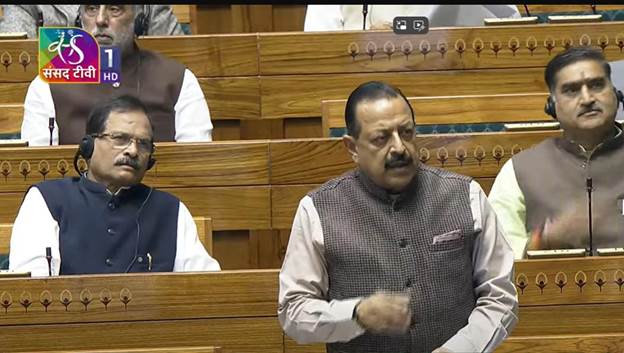
- 28 Nov 2024
In News:
The BioE3 Policy outlines guidelines and principles for enabling mechanisms for ‘Fostering High Performance Biomanufacturing’ in the country across diverse sectors.
Key Highlights:
Primary Objective:
- Set a framework for the adoption of advanced technologies and innovative research to promote biomanufacturing in India.
- Focus on enhancing efficiency, sustainability, and quality in biomanufacturing.
Alignment with National Goals:
- Supports India’s vision of Green Growth (Union Budget 2023-24) and Lifestyle for Environment (LiFE), promoting sustainability.
- Aligns with India’s goal of achieving a Net-Zero carbon economy.
- Supports the Biomanufacturing and Biofoundry initiative announced in the Interim Budget 2024-25.
Key Objectives:
- Revolutionize biomanufacturing for better product quality and environmental sustainability.
- Accelerate the development and commercialization of bio-based, high-value products.
- Foster high-performance biomanufacturing across diverse sectors.
Achievements of Indian Bioeconomy (2014-2023):
- Contribution to GDP: Bioeconomy contributes 4.25% to India’s GDP of $3.55 trillion (as of Dec 2023).
- Growth of Bioeconomy: From $10 billion in 2014 to $151 billion in 2023, surpassing 2025 target.
- Increase in Biotech Startups: From 50 startups in 2014 to 8,531 startups in 2023.
Implementation Strategy:
- Establish BioEnablers including Bio-AI Intelligence Hubs, Biofoundries, and Biomanufacturing Hubs across India.
- Bio-AI Intelligence Hubs will support research and innovation using data-driven approaches and AI to develop technologies for bio-based products.
- Biofoundries and Biomanufacturing Hubs will provide infrastructure to scale up bio-based technology for commercial applications.
Focus on Human Resource Development:
- Bio-Enablers will offer training and internships to build a skilled workforce with interdisciplinary and technical skills required for biomanufacturing.
Sectoral Focus Areas:
- Based on consultations, six thematic sectors of national importance have been identified for implementation:
- Bio-based chemicals and enzymes
- Functional foods and smart proteins
- Precision biotherapeutics
- Climate-resilient agriculture
- Carbon capture and utilization
- Futuristic marine and space research
- Sectoral Expert Committees are addressing challenges and gaps identified for each of these sectors.
Government Support:
- The DBT-BIRAC (Department of Biotechnology and Biotechnology Industry Research Assistance Council) has called for proposals to establish Biofoundries and Biomanufacturing Hubs in academia and industry.
- These hubs will support innovation and commercialization of biomanufacturing technologies.
National Mission on Natural Farming (NMNF)
- 27 Nov 2024
In News:
The Union Cabinet approved the launching of the National Mission on Natural Farming (NMNF) as a standalone Centrally Sponsored Scheme under the Ministry of Agriculture & Farmers' Welfare.
Key Highlights
Objective & Focus:
- Launch of NMNF by the Union Cabinet to promote chemical-free farming in India.
- Aim to improve soil health, reduce input costs, and produce nutritious food.
- Support the shift to natural farming (NF), emphasizing local knowledge and agro-ecological principles.
Financial Allocation:
- Total Outlay: ?2481 crore (Government of India share ?1584 crore, State share ?897 crore) until FY 2025-26.
Key Features of NMNF:
- Coverage: Targeting 15,000 clusters in Gram Panchayats, covering 7.5 lakh hectares and impacting 1 crore farmers.
- Bio-Input Resource Centres (BRCs): 10,000 BRCs to supply ready-to-use natural farming inputs.
- Krishi Vigyan Kendras (KVKs) and Agricultural Universities (AUs): Establishment of 2,000 model demonstration farms for hands-on training in natural farming techniques.
- Farmer Training: 18.75 lakh farmers to be trained in NF practices such as preparation of organic inputs like Jeevamrit and Beejamrit.
- Krishi Sakhis/CRPs: Deployment of 30,000 workers for farmer mobilization and awareness.
Implementation Strategy:
- Farmer Certification System: Providing easy, simple certification for marketing natural farming produce with dedicated branding.
- Monitoring: Real-time, geo-tagged monitoring of implementation through an online portal.
- Convergence with other government schemes and organizations for market linkages and support.
Natural Farming Practices:
- Zero Budget Natural Farming (ZBNF): Promote sustainable farming by using local livestock and diverse crop systems.
- Benefits: Reduce dependence on external inputs like chemical fertilizers and pesticides, rejuvenate soil quality, and increase resilience to climate risks (e.g., drought, floods).
- Encourage biodiversity, and improve soil carbon content and water-use efficiency.
Targeted Areas and Farmer Support:
- Focus on areas where NF practices are already being followed or where farmer producer organizations (FPOs) or self-help groups (SHGs) are active.
- Training through model demonstration farms will focus on practical, location-specific NF techniques tailored to regional agro-ecologies.
Impact on Agriculture and Environment:
- Environmental Impact: Encourages sustainable farming by reducing chemical exposure, improving soil health, and promoting climate resilience.
- Farmer Well-being: By reducing input costs and promoting nutritious food, it aims to improve farmer incomes and family health.
- Contributing to the long-term health of the environment, ensuring a healthy Mother Earth for future generations.
Challenges and Concerns:
- Soil Nutrient Compromise: Concerns that some crops, like rice, might require chemical fertilizers (e.g., NPK) for optimal growth, which may not be sufficiently replaced by organic manure alone.
- The shift to natural farming requires significant awareness and training to ensure sustainable and productive yields.
Institutional Framework:
- Ministry of Agriculture and Farmers’ Welfare is the implementing body.
- Collaboration with KVKs, AUs, and farmer organizations ensures grassroots level support and knowledge dissemination.
Extension of Ban on ULFA
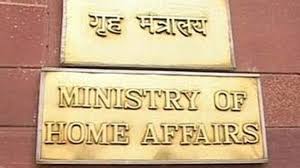
- 27 Nov 2024
In News:
- The Ministry of Home Affairs (MHA) extended the ban on United Liberation Front of Asom (ULFA) for five years under the Unlawful Activities Prevention Act (UAPA), 1967.
- The notification specifically includes all factions, wings, and front organizations associated with ULFA.
Reason for Extension:
- ULFA continues to pursue secessionist objectives (separation of Assam from India).
- The group is involved in criminal activities such as extortion, intimidation, and violent actions.
- ULFA has maintained links with other insurgent groups and continues to engage in illegal activities like the possession of arms and ammunition.
Peace Process:
- Pro-talks faction of ULFA, led by Arabinda Rajkhowa, signed a peace agreement with the central and Assam governments in December 2023.
- This faction has agreed to renounce violence, disband the organization, and join the democratic process.
- However, the hardline faction of ULFA, led by Paresh Baruah, remains active and continues its militant activities.
ULFA’s Formation and Objectives:
- ULFA was founded in 1979 with the goal of achieving the "restoration of Assam's sovereignty" through armed struggle.
- It has been a key player in the Assamese separatist movement for several decades.
Legal Framework:
- The UAPA (1967) empowers the government to declare an organization as unlawful or label individuals as terrorists if they engage in activities threatening India’s sovereignty, integrity, or promote terrorism and secession.
- The latest extension of the ban was made under Section 3(1) of UAPA.
Significance for Internal Security:
- This development is important for understanding insurgency and separatism in the Northeast and the government’s approach to national security and counterinsurgency.
- The ULFA issue highlights challenges in addressing regional insurgencies and the role of the UAPA in maintaining national integrity.
Socialist and Secular in Preamble

- 27 Nov 2024
In News:
Supreme Court upholds ‘secular, socialist’ in Preamble of the Constitution.
Key Highlights of the Supreme Court Judgment
- Judgment Overview:
- Supreme Court's Ruling: The Court upheld the inclusion of the terms ‘socialist’ and ‘secular’ in the Preamble of the Indian Constitution through the 42nd Amendment Act of 1976.
- Challenge: Petitioners, including BJP leader Subramanian Swamy, challenged the retrospective application of these terms, arguing they were not part of the original Preamble adopted in 1949.
- Court's Explanation:
- Socialist: The term represents a welfare state aimed at reducing inequality and ensuring social, political, and economic justice, but does not prescribe a specific economic policy (left or right).
- Secular: Denotes a state that treats all religions equally, ensuring religious freedom and neutrality in religious matters. It is linked to Articles 14, 15, and 16, which ensure equality and non-discrimination.
- Retrospective Application:The Court affirmed that Parliament’s amendment power under Article 368 extends to the Preamble, and the retrospective application of the terms was valid.
- Constitution as a ‘Living Document’:The Court emphasized that the Constitution is adaptable to societal changes and evolving needs. The inclusion of 'secular' and 'socialist' reflects India’s evolving democratic and social framework.
- Interpretation of Secularism and Socialism:
- Secularism in India refers to the state's neutral stance towards all religions, promoting religious harmony.
- Socialism signifies India’s commitment to ensuring equality of opportunity and promoting welfare policies, such as social justice and economic welfare.
Constitutional and Legal Framework
- Article 368: Grants Parliament the authority to amend the Constitution, including the Preamble. The Court affirmed that this power is unquestionable.
- Kesavananda Bharati Case (1973): Established the ‘basic structure doctrine,’ which means certain fundamental features of the Constitution cannot be altered. The inclusion of ‘secular’ and ‘socialist’ is in line with this basic structure.
- S.R. Bommai Case (1994): Reinforced the secular nature of the Indian state.
Preamble to the Constitution
- Definition: The Preamble is an introductory statement that outlines the fundamental values and goals of the Indian Constitution.
- Key Objectives: Justice (social, economic, political), Liberty (thought, expression, belief), Equality (status and opportunity), and Fraternity (national unity and dignity).
- Terms in the Preamble:
- Sovereign: India's independence in all matters.
- Socialist: Commitment to social justice and welfare.
- Secular: Equal respect for all religions.
- Democratic: Governance by the people, through elected representatives.
- Republic: Head of state elected, not hereditary.
42nd Amendment Act, 1976:
- Context: Introduced during the Emergency under Indira Gandhi's government.
- Key Changes: Added 'socialist' and 'secular' to the Preamble, revised 'Unity of the Nation' to 'Unity and Integrity of the Nation.'
- Significance: Strengthened constitutional values like inclusivity, equality, and justice.
Socialist and Secular Initiatives by Government
- Socialist Programs:
- MGNREGA: Rural employment guarantee.
- PDS: Food security system.
- Right to Education (RTE): Free, compulsory education.
- Housing Schemes: Awas Yojana for the economically weaker sections.
- Secular Programs:
- Minority Welfare: Scholarships and skill development.
- Religious Protection Laws: Protection of places of worship.
- Communal Violence Laws: Special courts for violence-related cases.
- Constitutional Safeguards: Equal rights for all religions under Articles 25-28.
Significance of the Supreme Court Judgment
- Reaffirmation of Constitutional Values: The inclusion of ‘socialist’ and ‘secular’ reinforces India’s commitment to equality, justice, and democratic principles.
- Legitimacy of Amendments: Affirms Parliament's constitutional power to amend the Preamble.
- Evolving Interpretation: Recognizes that the Constitution must evolve in response to societal and political changes.
Riyadh Design Law Treaty (DLT)

- 27 Nov 2024
In News:
- India reaffirms its commitment to inclusive growth and strengthening its intellectual property (IP) ecosystem.The signing of the treaty comes after nearly two decades of negotiations.
Key Highlights:
Purpose of the DLT:
- Aims to harmonize industrial design protection frameworks across multiple jurisdictions.
- Improves efficiency and accessibility of design registration processes.
Key Features of the DLT:
- Grace Period: A 12-month grace period after the first disclosure of the design, ensuring its validity for registration.
- Flexibility for Applicants: Provides relief measures such as relaxed deadlines, reinstatement of lost rights, and flexibility in adding priority claims.
- Simplified Processes: Includes simplified procedures for design renewals, assignment, and license recording.
- E-Filing Systems: Promotes the adoption of electronic filing systems and exchange of priority documents.
Benefits of DLT:
- Empowering SMEs and Startups: Helps small and medium-sized enterprises (SMEs) and startups protect designs globally, enhancing competitiveness and market growth.
- Reduced Administrative Burden: Standardizes procedures, making the design protection process less complex, more predictable, and affordable.
- Support for Developing Countries: Offers technical assistance for implementation in developing and least-developed countries.
Significance for India:
- India’s rich heritage of design and craftsmanship underscores the importance of design protection for sustainable economic growth.
- Design registrations in India have surged, with a 120% increase in domestic filings over the last two years.
Supporting Programs:
- The treaty’s provisions align with India’s initiatives like Startup India and the Startups Intellectual Property Protection (SIPP) Scheme to boost the protection and commercialization of designs for Indian innovators.
Broader Impact:
- DLT aims to integrate design protection with traditional knowledge and cultural expressions, further enhancing protection for India’s diverse creative sectors.
About WIPO:
- The World Intellectual Property Organization (WIPO), headquartered in Geneva, Switzerland, is a specialized UN agency established in 1967, promoting IP rights globally.
- India is a member of WIPO, which has 193 member countries.
Overview of Intellectual Property (IP):
- IP includes creations like inventions, industrial designs, literary and artistic works, symbols, and more, which are used in commerce.
- IP rights protect creators, allowing them to benefit from their work when commercially exploited.
India's First Constitution Museum

- 26 Nov 2024
In News:
Lok Sabha Speaker Om Birla and Union law minister Arjun Ram Meghwal inaugurated the country's first Constitution Museum at OP Jindal Global University in Sonipat.
Museum Features
- Centrepiece: A photolithographic copy of the Indian Constitution (one of 1,000 reproductions).
- 360-Degree Experience: A visual presentation that takes visitors through pre-Independence India.
- Multimedia Presentation: Chronologically details significant events leading to the drafting of the Constitution.
- Constituent Assembly Members:
- Nearly 300 sculptured busts of members who contributed to the making of the Constitution.
- Hologram of Dr. BR Ambedkar: Located in the mezzanine section, showcasing his philosophies through interactive displays.
- Art Installations:
- ‘We, The People of India’ by Rajesh P Subramanian: Represents unity in diversity.
- ‘Echoes of Liberty’ by Rahul Gautam: Combines constitutional manuscripts with contemporary design.
- ‘Triad of Unity’ by Harsha Durugadda: Symbolizes unity, justice, and sovereignty.
- ‘Insaaf Ki Devi’ by Nishant S Kumbhatil: Depicts Lady Justice, representing judicial impartiality.
- ‘Equality Before Law’ by Pradeep B Jogdand: Illustrates equality and justice principles.
- ‘Map’ by Deval Verma: Encourages visitors to reflect on value and beauty.
- ‘Freedom’ by KR Nariman: Pays tribute to the people who uphold constitutional values.
- ‘Founding Mothers’ by Rahul Gautam: Honors the 15 women members of the Constituent Assembly.
One Nation One Subscription (ONOS)
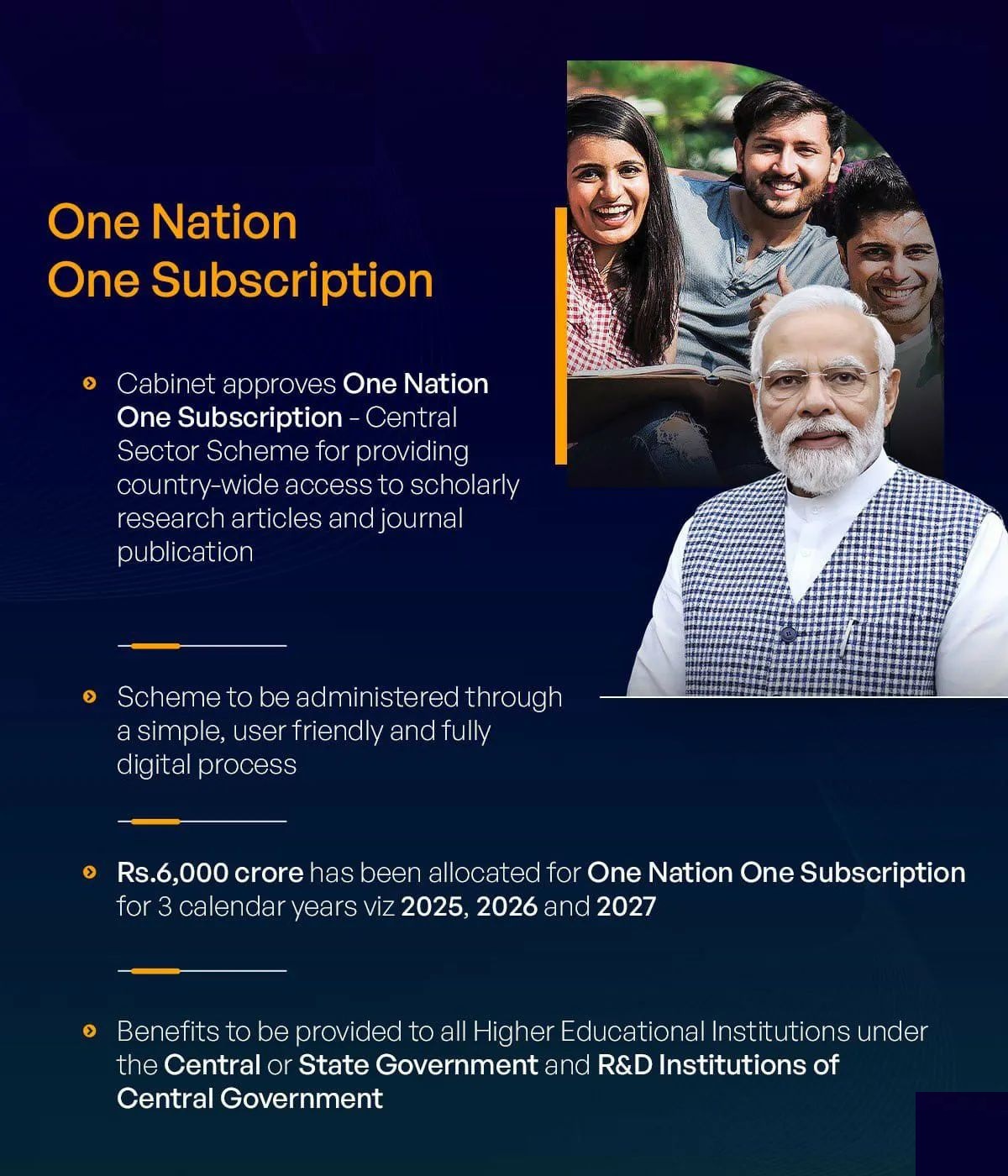
- 26 Nov 2024
In News:
Cabinet approves One Nation One Subscription (ONOS) Scheme.
Key Highlights:
- Objective: It is a new initiative to provide unified access to international scholarly research articles and journals for all government-managed higher education institutions and research institutions in India.
- Scheme Overview:ONOS aims to make nearly 13,000 scholarly journals accessible to over 1.8 crore students, faculty, researchers, and scientists in more than 6,300 institutions across India. These journals will cover all academic disciplines, promoting both core and interdisciplinary research, including in tier 2 and tier 3 cities.
- Digital Platform:The scheme will be implemented through a fully digital process, coordinated by the Information and Library Network (INFLIBNET), an autonomous center under the University Grants Commission (UGC). The platform will provide easy access to the journals and facilitate a streamlined subscription process.
- Investment and Coverage:A total of ?6,000 crore has been allocated for ONOS for three years (2025-2027). The scheme will cover major international publishers such as Elsevier, Springer, Wiley, and Oxford University Press. It will enable institutions to access 13,000 journals from 30 global publishers.
Benefits of the Scheme:
- Access to Top-Quality Research:ONOS will provide wide access to top-tier scholarly journals, benefiting institutions, researchers, and students across various fields. It will significantly improve the research environment in the country, especially for institutions that previously lacked the resources to access high-impact journals.
- Fostering Research and Development:The initiative aligns with India's vision of becoming an Atmanirbhar and Viksit Bharat by 2047, supporting the government's goals under the National Education Policy (NEP) 2020 and the Anusandhan National Research Foundation (ANRF). It will help foster a culture of research and innovation in Indian institutions.
- Inclusivity:The scheme will particularly benefit institutions in smaller towns and rural areas, helping bridge the knowledge gap between urban and rural academic institutions.
- Simplified Access:The scheme eliminates the need for separate subscriptions to individual journals by different institutions, streamlining access to high-quality content through a single platform.
Implementation Details:
- Platform and Process:The ONOS platform will allow institutions to access journals through a unified portal, providing easy and coordinated access. The Department of Higher Education (DHE)will be responsible for conducting awareness campaigns about the initiative, ensuring widespread utilization among students and faculty.
- Review Mechanism:The ANRF will monitor and periodically review the usage of ONOS and track the contributions of Indian authors in the journals, ensuring that the initiative continues to support India’s research landscape.
- Operational Date:The ONOS platform is set to become operational on January 1, 2025, providing comprehensive access to research materials for government-managed higher education and research institutions.
The One Nation One Subscription scheme is a major step towards enhancing India's position in the global research ecosystem. It will provide unparalleled access to scholarly resources, supporting research excellence and innovation across the country.
Proba-3 mission
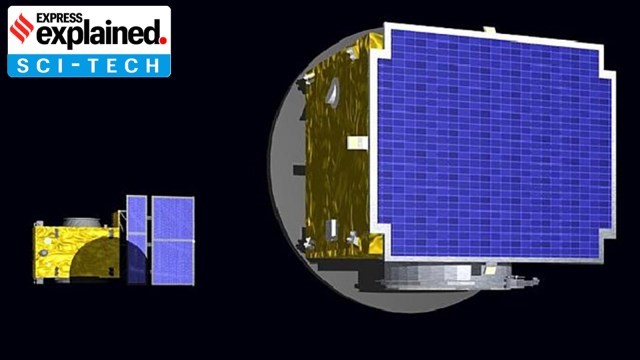
- 26 Nov 2024
In News:
The Indian Space Research Organisation (ISRO) will launch the European Space Agency’s Proba-3 mission on its PSLV rocket to study the solar corona, the outermost and hottest part of the Sun’s atmosphere, from Sriharikota on December 4.
Key Highlights:
- Mission Objective:The mission will study the Sun’s outermost and hottest atmosphere, the solar corona. The mission will also demonstrate the first-ever precision formation flying with two satellites working in tandem.
- Satellite Formation:Proba-3 consists of two satellites that will fly together, maintaining a fixed formation to study the Sun's corona.
What is Proba-3?
- Proba-3 is a solar mission developed by ESA, with an estimated cost of 200 million euros. The mission involves launching two satellites that will separate after launch, but fly in precise formation. The satellites will create a solar coronagraph, which blocks the Sun’s bright light to observe the solar corona, the Sun’s outermost atmosphere.
- Orbit: Proba-3 will orbit in a highly elliptical path (600 x 60,530 km) with an orbital period of 19.7 hours.
- Mission Duration: The expected mission life is two years.
What will Proba-3 Study?
The Sun's corona is extremely hot (up to 2 million degrees Fahrenheit), making it difficult to observe with conventional instruments. However, studying the corona is essential because it generates space weather phenomena such as solar storms and solar winds, which can impact satellite communications, navigation systems, and power grids on Earth.
Proba-3 will use three main instruments for its mission:
- ASPIICS (Association of Spacecraft for Polarimetric and Imaging Investigation of the Corona of the Sun):This coronagraph will observe the Sun’s outer and inner corona, similar to how the corona is visible during a solar eclipse. It features a 1.4-meter occulting disk to block the Sun’s light and facilitate close-up observations.
- DARA (Digital Absolute Radiometer):This instrument will measure the Sun’s total energy output (total solar irradiance).
- 3DEES (3D Energetic Electron Spectrometer):It will study electron fluxes as they pass through Earth's radiation belts, providing valuable data on space weather.
Why is Proba-3 Unique?
- Proba-3 is designed to mimic a natural solar eclipse, allowing continuous study of the Sun’s corona. Typically, solar scientists observe the corona for only about 10 minutes during an eclipse, occurring around 1.5 times a year. Proba-3 will provide up to six hours of data per day, equivalent to 50 eclipse events annually.
- The two satellites will maintain a precise formation, with one acting as an occulting spacecraft to cast a shadow, while the other (the coronagraph) stays in the shadow and observes the Sun’s corona. They will be positioned 150 meters apart, maintaining their formation autonomously.
- This artificial eclipse will enable scientists to study the corona and its less-understood features more effectively.
National Gopal Ratna Award 2024
- 26 Nov 2024
In News:
The Department of Animal Husbandry and Dairying (DAHD) declared the winners of the National Gopal Ratna Awards(NGRA); one of the highest National Awards in the field of livestock and dairy sector for the year 2024.
About the National Gopal Ratna Awards (NGRA):
- Purpose:Recognize and encourage individuals, AI technicians, dairy cooperatives, and farmer organizations in the livestock and dairy sector.
- Categories:
- Best Dairy Farmer (Indigenous Cattle/Buffalo Breeds)
- Best Artificial Insemination Technician (AIT)
- Best Dairy Cooperative/Milk Producer Company (MPC)/Dairy Farmer Producer Organization
- Addition (2024):Special awards for North Eastern Region (NER) to promote dairy development in the area, with winners in all three categories.
- and Prizes:
- Rs. 5 lakhs for 1st rank, Rs. 3 lakhs for 2nd rank, Rs. 2 lakhs for 3rd rank, and Rs. 2 lakhs for Special NER Award in the categories of Best Dairy Farmer and Best Dairy Cooperative/FPO/MPCs.
- For Best AIT, winners will receive a Certificate of Merit and a memento.
- Process:Winners selected from 2,574 applications via an online portal (https://awards.gov.in).
- The livestock sector is crucial for India's economy, contributing significantly to agriculture and providing livelihood, especially for small and marginal farmers, women, and landless laborers.
- Indigenous breeds have immense genetic potential, but their population and performance have been declining. To address this, the Rashtriya Gokul Mission was launched under the National Programme for Bovine Breeding and Dairy Development in 2014 to conserve and develop indigenous bovine breeds.
National Milk Day
- It is celebrated annually on November 26 in India to honor the significant contributions of milk and the dairy industry to the country's development.
- The day commemorates the birth anniversary of Dr VergheseKurien, the "Father of the White Revolution" in India, who played a pivotal role in transforming India into the largest producer of milk globally.
- National Milk Day was first celebrated on November 26, 2014, after the Indian Dairy Association (IDA), along with various dairy institutions across the country.
Nayi Chetna 3.0 – PahalBadlaav Ki
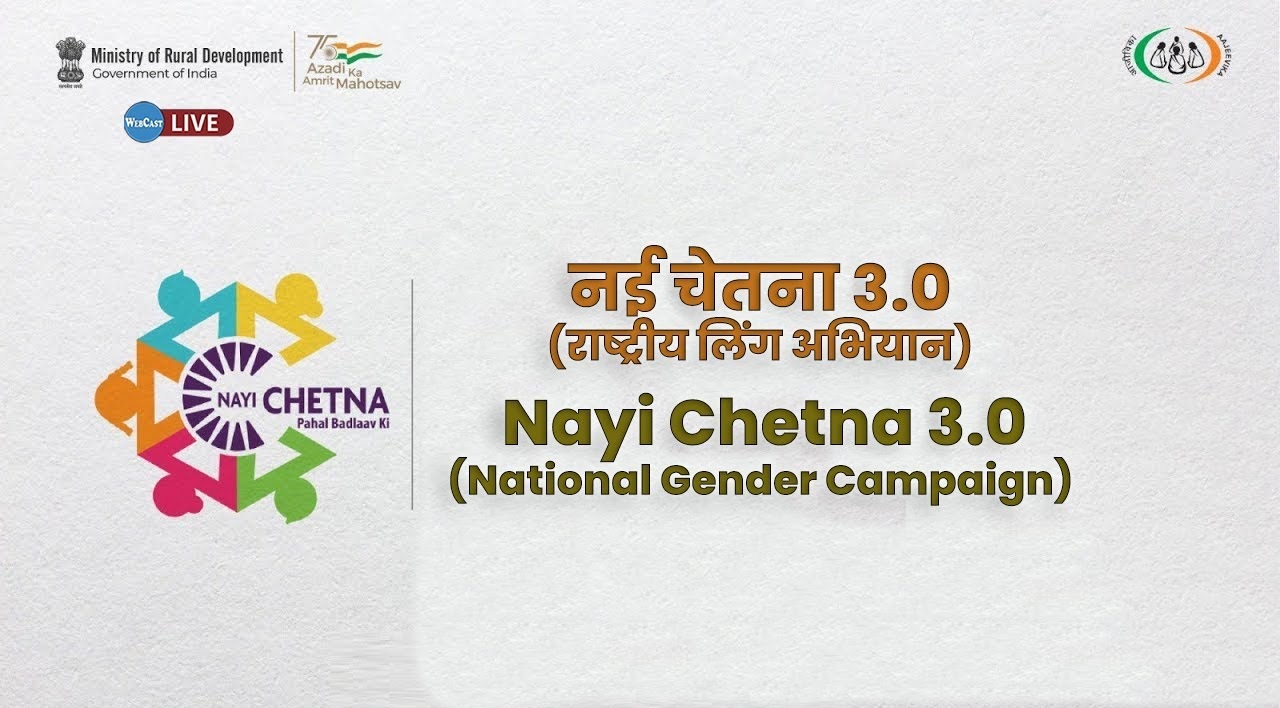
- 26 Nov 2024
In News:
Union Minister Shri Shivraj Singh Chouhan launches the third edition of ‘Nayi Chetna – PahalBadlaav Ki’ a month-long national campaign against gender-based violence in New Delhi.
Key Highlights:
- Organized by: Deendayal Antyodaya Yojana – National Rural Livelihoods Mission (DAY-NRLM) under the Ministry of Rural Development.
- Led by: DAY-NRLM’s extensive Self-Help Group (SHG) network.
- Aim of the Campaign: Raise awareness and encourage grassroots-level action to combat gender-based violence.
- Campaign Slogan: “EkSaath, EkAwaaz, HinsaKeKhilaaf” (United Voice Against Violence).
- Approach:
- Adopts a "whole-of-government" approach with collaboration from 9 key ministries:
-
- Ministry of Women and Child Development
- Ministry of Health and Family Welfare
- Department of School Education and Literacy
- Ministry of Home Affairs
- Ministry of Panchayati Raj
- Ministry of Social Justice and Empowerment
- Ministry of Youth Affairs and Sports
- Ministry of Information and Broadcasting
- Department of Justice
- Key Objectives:
- Raise awareness about all forms of gender-based violence.
- Mobilize communities to demand accountability and action.
- Facilitate access to timely intervention and support systems.
- Empower local institutions to take action against violence.
- Goals for Nayi Chetna 3.0:
- Generate widespread awareness about gender-based violence.
- Foster collective action at the grassroots level.
- Drive convergence among government ministries and community stakeholders.
- Create a sustainable and informed movement for gender equality and women’s empowerment.
Narasapur Crochet Lace Craft

- 25 Nov 2024
In News:
The Narasapur crochet lace craft, which has been a significant part of the cultural and economic fabric of the Godavari region in Andhra Pradesh, has recently been granted the prestigious Geographical Indication (GI) tag. The GI tag, registered by the Department of Promotion of Industry and Internal Trade (DPIIT) on March 1, 2024, acknowledges that this unique craft is geographically linked to the West Godavari and Dr. B.R. Ambedkar Konaseema districts in the Godavari region.
Key Details:
- Historical Background:
- The origins of the Narasapur crochet lace craft date back to 1844, when Macrae and his wife from Scotland introduced the lace-making technique to local women while they were associated with a Christian missionary in Dummugudem (now in Telangana).
- Over time, the craft became a crucial part of the region’s heritage and survived significant historical events like the Indian famine of 1899 and the Great Depression of 1929.
- Craftsmanship:
- The crochet lace is produced using thin threads and delicate crochet needles of varying sizes, resulting in intricate designs.
- The products made include doilies, pillow covers, cushion covers, bedspreads, table runners, and tablecloths, among others. These items are often exported to international markets like the US, UK, and France.
- Economic and Social Impact:
- The craft is predominantly carried out by women artisans, with over 15,000 women involved in its production. The GI tag is expected to revitalize the industry, especially after its stagnation due to the COVID-19 pandemic and competition from machine-made lace from China.
- The craft is also an important part of the Alankriti Lace Manufacturing Mahila Mutual Aided Co-operative Societies’ Federation Limited, which supports local women artisans and has revived operations at the Alankriti Lace Park in Narasapur.
- GI Tag Benefits:
- The Geographical Indication tag serves to protect the authenticity of the lace products, boost demand, and ensure better market recognition.
- It provides legal protection to the traditional craft, preventing unauthorized use of the term "Narasapur lace" by others and promoting the region's cultural heritage and economic growth.
- Future Outlook:
- With the GI tag, there is hope for increased demand for Narasapur lace products both in domestic and global markets, thus offering a fresh avenue for artisans to revive and sustain the craft.
- Alankriti Federation and other stakeholders are optimistic that the GI tag will significantly revitalize the local economy and empower women in the region.
Palparescontrarius

- 25 Nov 2024
In News:
Palparescontrarius is a species of antlion that was recently spotted for the first time in Tamil Nadu, on the Madras Christian College (MCC) campus. It is notable for being a large-sized adult antlion that resembles a dragonfly but has distinct characteristics that separate it from dragonflies, such as its clubbed antennae and fluttering flight.
Key Features of Palparescontrarius:
- Appearance:
- The adult Palparescontrarius is large and resembles a dragonfly in its general body structure.
- It has lacy wings, long clubbed antennae, and a slender, grayish body.
- Its wings are typically clear, although some species of antlions have spots on their wings.
- Flight and Behavior:
- Unlike dragonflies, Palparescontrarius has a distinct fluttering flight.
- It is a weak flier and can often be spotted at night near illuminated spots.
- Habitat and Lifestyle:
- Like other antlions, Palparescontrarius is found in dry, sandy regions and is mostly active at night.
- The larvae of this species are particularly known for their predatory behavior, as they trap ants and other small insects in cone-shaped pits they dig into the sand.
- Ecological Importance:
- Antlions, including Palparescontrarius, are harmless to humans and beneficial to the environment because they feed on ants and other insects, thus helping to control pest populations.
Breakthrough in Bacterial Computing
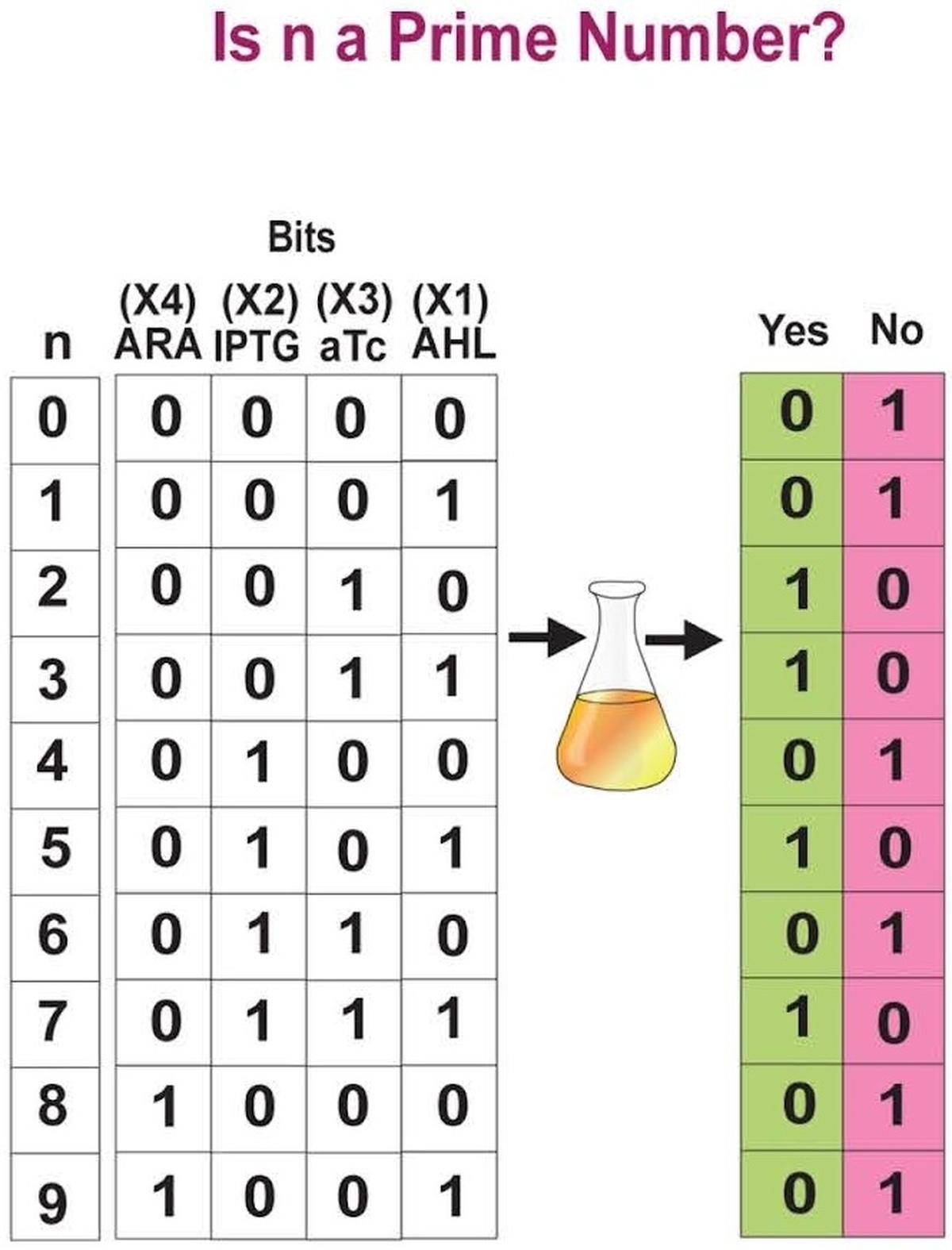
- 25 Nov 2024
In News:
Scientists at the Saha Institute of Nuclear Physics in Kolkatahave successfully engineered bacteria capable of solving mathematical problems, marking a major step forward in the field of synthetic biology and biocomputing. These engineered bacteria can function like artificial neural networks, performing tasks that were traditionally reserved for humans or conventional computers.
Key Highlights:
- Bacterial Computers:
- The research team introduced genetic circuits into bacteria, turning them into computational units capable of tasks like determining whether a number is prime or identifying vowels in an alphabet.
- These bacterial "computers" mimic artificial neural networks (ANNs), where each type of engineered bacterium (called a "bactoneuron") behaves like a node in a network, processing inputs to generate outputs.
- How it Works:
- The bacteria's genetic circuits are activated by chemical inducers, which represent binary 0s and 1s (the fundamental language of computing). The presence or absence of certain chemicals determines whether a bacterium expresses a specific fluorescent protein, representing the binary states.
- For example, when asked if a number between 0-9 is prime, the bacteria can express green fluorescent proteins (1) for "yes" or red fluorescent proteins (0) for "no", providing binary outputs that solve the problem.
- Complex Tasks:
- The team advanced to more complex tasks, such as asking the bacterial computers whether adding a number (like 2 + 3) results in a prime number or if a number's square can be expressed as the sum of factorials.
- In an even more complex test, the bacteria solved an optimization problem—calculating the maximum number of pieces a pie could be cut into with a given number of straight cuts. The bacteria’s fluorescent output represented binary numbers that were converted to decimal for the correct solution.
- Technical Details:
- The researchers used Escherichia coli (E. coli) bacteria, engineered with transcriptional genetic circuits, which recognize specific DNA sequences and trigger the expression of proteins based on the presence of chemical inducers.
- The system is similar to how ANNs work in traditional computing, where nodes (bactoneurons) take inputs, apply weights, and produce outputs based on activation functions.
- Implications and Future Prospects:
- Synthetic Biology & Biomanufacturing: This breakthrough could revolutionize industries such as pharmaceuticals and biomanufacturing by enabling biocomputers that perform specific tasks in a biological environment, potentially reducing reliance on silicon-based computers.
- Medical Applications: The ability of engineered bacteria to process data could lead to biocomputers capable of diagnosing diseases (such as cancer) at an early stage and even administering localized treatments.
- Understanding Intelligence: Bagh and his team hope to explore the biochemical nature of intelligence, pondering how intelligence could emerge from simple, single-celled organisms.
- Groundbreaking Research:
- The research, published in Nature Chemical Biology, has drawn significant attention in the synthetic biology community. Centre for Synthetic Biology highlighting the potential of bacteria programmed to solve complex problems.
This innovative work paves the way for future developments in biocomputing, where living organisms, instead of silicon chips, could be used to perform sophisticated calculations, offering new ways to think about computing, intelligence, and even the future of technology in medicine.
6th ASEAN-India Trade in Goods Agreement (AITIGA) Joint Committee Meeting
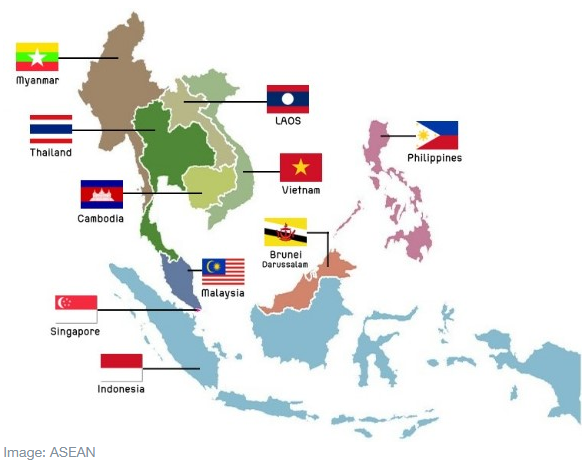
- 25 Nov 2024
In News:
The 6th ASEAN-India Trade in Goods Agreement (AITIGA) Joint Committee and related meetings for discussions on the review of the AITIGA were held recently in Vanijya Bhawan, New Delhi.
Key Highlights:
Key Negotiation Areas
- 8 Sub-Committees under the AITIGA Joint Committee discussed:
- Market access, rules of origin, SPS measures, standards and technical regulations.
- Customs procedures, economic and technical cooperation, trade remedies, and legal and institutional provisions.
- 5 Sub-Committees met physically during this round of negotiations.
Progress in Discussions
- Textual Discussions: Sub-Committees made progress in discussions on various provisions.
- Tariff Negotiations: Initial steps towards initiating tariff negotiations were covered.
High-Level Meetings Leading to AITIGA Review
- 21st ASEAN-India Economic Ministers Meeting: Held in September 2024 in Vientiane, Laos.
- 21st ASEAN-India Summit: Held in October 2024 in Vientiane, Laos.
Both meetings urged the Joint Committee to expedite negotiations and aim for the conclusion of the review in 2025.
Bilateral Meetings
- ASEAN delegates held separate bilateral meetings with Thailand and Indonesia to discuss bilateral trade issues.
- Indian and ASEAN Chief Negotiators met to align on the ongoing issues and future steps.
India's Review Demands
- Request for Review: India sought a review of AITIGA (implemented in 2010), citing disproportionate trade benefits favoring ASEAN countries.
- India’s Objectives:
- Enhanced Market Access: India pushed for ASEAN countries, especially Vietnam, to commit to greater market-opening for Indian goods.
- Stricter Rules of Origin (ROO): India requested more stringent ROO provisions to prevent Chinese goods from entering India via ASEAN countries at preferential rates.
Trade Relationship and Economic Impact
- Bilateral Trade:
- Total trade with ASEAN reached USD 121 billion in FY 2023-24.
- Trade during April-October 2024 was USD 73 billion, marking a 5.2% growth.
- Trade Deficit: India’s trade deficit with ASEAN widened from USD 4.98 billion in FY 2010-11 to USD 38.4 billion in 2023-24.
- ASEAN accounts for 11% of India’s global trade.
Future Outlook
- The next meeting of the AITIGA Joint Committee is scheduled for February 2025 in Jakarta, Indonesia.
- The review process aims to further enhance sustainable trade between India and ASEAN countries.
Access to Medicine Index Report 2024
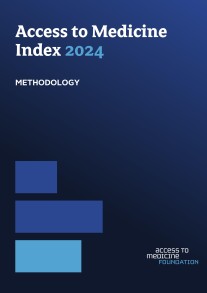
- 25 Nov 2024
In News:
- Recently, Access to Medicine Index Report 2024 was released by the Access to Medicine Foundation. The report evaluates 20 leading pharmaceutical companies on their efforts to expand access to medicines in low- and middle-income countries (LMICs).The biennial report has been published since 2008.
- Key Highlights:
- Key Areas of Evaluation
- Governance of Access: Companies’ leadership in addressing access issues.
- Research & Development (R&D): Focus on innovations for diseases prevalent in LMICs.
- Product Delivery: Efforts to ensure medicines and vaccines are accessible.
- Findings from the 2024 Report
- Gaps in Access for Low-Income Countries:
- Many pharmaceutical companies are adopting ‘inclusive business models,’ but outcomes are mixed, with transparent reporting still lacking.
- 61% of products lack specific access strategies for low-income countries.
- Exclusion from Clinical Trials:Only 43% of clinical trials take place in LMICs, despite these countries representing 80% of the global population.
- Limited Technology Transfers & Local Availability:
- Technology transfers and voluntary licensing are concentrated in countries like Brazil, China, and India.
- Sub-Saharan Africa (excluding South Africa) remains largely overlooked.
- Decline in R&D for Priority Diseases:
- Pharmaceutical companies are moving away from diseases like malaria, tuberculosis, and neglected tropical diseases, which disproportionately affect LMICs.
- Gaps in Access for Low-Income Countries:
- Key Issues in Accessing Medicines in LMICs
- Economic Barriers:
- High costs of essential medicines, including patented drugs, limit access for patients in LMICs with low purchasing power.
- Out-of-pocket expenditures lead to catastrophic financial consequences for families.
- Infrastructure Challenges:
- Poor transportation and cold chain infrastructure hamper the efficient distribution of medicines, especially in rural areas.
- Disruptions in supply chains (e.g., during pandemics) exacerbate medicine shortages.
- Regulatory Issues:Weak enforcement of regulatory frameworks results in the proliferation of substandard and counterfeit medicines, compromising treatment efficacy.
- Workforce Limitations:
- A shortage of trained healthcare professionals restricts appropriate prescription and management of medicines.
- Cultural beliefs and low health literacy further complicate adherence to treatments.
- Economic Barriers:
- Challenges Specific to LMICs
- Dual Burden of Diseases:
- LMICs face both infectious diseases and non-communicable diseases (NCDs), putting strain on fragile healthcare systems.
- 17 million people die from NCDs before age 70 annually, with 86% of these deaths occurring in LMICs.
- Need for Local Manufacturing:
- Strengthening local pharmaceutical manufacturing and distribution networks is crucial to ensure a reliable supply of essential medicines and reduce dependence on imports.
- Dual Burden of Diseases:
- Recommendations for Improving Access
- Companies should scale up efforts to bridge the health equity gap and use innovative approaches and local partnerships to improve access.
- Focus on increasing transparency in access reporting and addressing the lack of strategies for low-income countries.
- Pharmaceutical companies should refocus on diseases prevalent in LMICs, such as malaria and tuberculosis, and ensure that their R&D addresses the needs of these regions.
- Key Areas of Evaluation
Chagas Disease
- 24 Nov 2024
In News:
A recent study by Texas A&M University has uncovered a concerning new risk for dogs in Texas related to Chagas disease—the parasite Trypanosoma cruzi (T. cruzi), which causes the disease, can survive in dead kissing bugs (Triatominae). This discovery was published in the Journal of Medical Entomology in October 2024 and has raised alarms about how dead insects, which might be found in insecticide-treated dog kennels, could still pose a transmission risk for dogs.
Key Findings:
- Chagas Disease is primarily spread by kissing bugs, which carry T. cruzi in their gut. Dogs can contract the parasite by ingesting the bug's feces, especially when they lick their bite wounds.
- The study shows that even dead kissing bugs, which are often discarded in kennels, can still carry viable T. cruzi. This is particularly worrying in areas where insecticides are used to control the insects but dead bugs remain accessible to dogs.
- Researchers collected live and dead triatomines from six Texas kennels between June and October 2022, using both genetic testing and culture methods to assess whether the bugs were carrying live T. cruzi.
- 28% of the collected bugs tested positive for T. cruzi.
- A dead kissing bug (Paratriatomalecticularia) was found to still harbor live T. cruzi cultures, demonstrating that the parasite can survive even after the insect has died.
Transmission and Risks:
- Kissing bugs typically feed on the blood of animals like dogs, rodents, and raccoons, defecating near the bite site. If the dog licks the contaminated area, they can ingest the parasite-laden feces and become infected.
- The new discovery suggests that dead kissing bugs may pose a secondary transmission route for T. cruzi. Dogs that ingest these dead bugs, either in insecticide-treated areas or natural environments, could still contract the parasite.
- Researchers noted that dead bugs with intact gut contents showed a higher rate of infection than desiccated ones, which suggests that the condition of the bug after death impacts how long the parasite survives.
Implications for Management:
- The findings challenge current insecticide-based control methods. While insecticides kill the bugs, dead insects could still serve as a source of infection, necessitating new approaches for managing Chagas disease transmission in dog kennels.
- The study underscores the importance of regularly removing dead insects in kennels and reconsidering control strategies beyond just using insecticides.
About Chagas Disease:
- Chagas disease is caused by the Trypanosoma cruzi parasite, commonly found in the feces of kissing bugs. It can cause long-term heart and digestive issues if left untreated.
- The disease is common in parts of South America, Central America, and Mexico, but it has been increasingly reported in the southern United States.
- Treatment focuses on killing the parasite in the acute phase, but once it progresses to the chronic phase, treatment is aimed at managing symptoms.
Next Steps and Ongoing Research:
- The Texas A&M team plans to explore how long T. cruzi survives in dead triatomines and whether insecticides affect the parasite’s ability to persist. They are also looking into developing integrated pest management strategies for environments with high kissing bug activity.
- The study also forms part of a broader "One Health" approach, recognizing that both human and animal health are interconnected, and research on Chagas disease in animals can help inform public health strategies.
Imperial Eagle(Aquila heliaca)
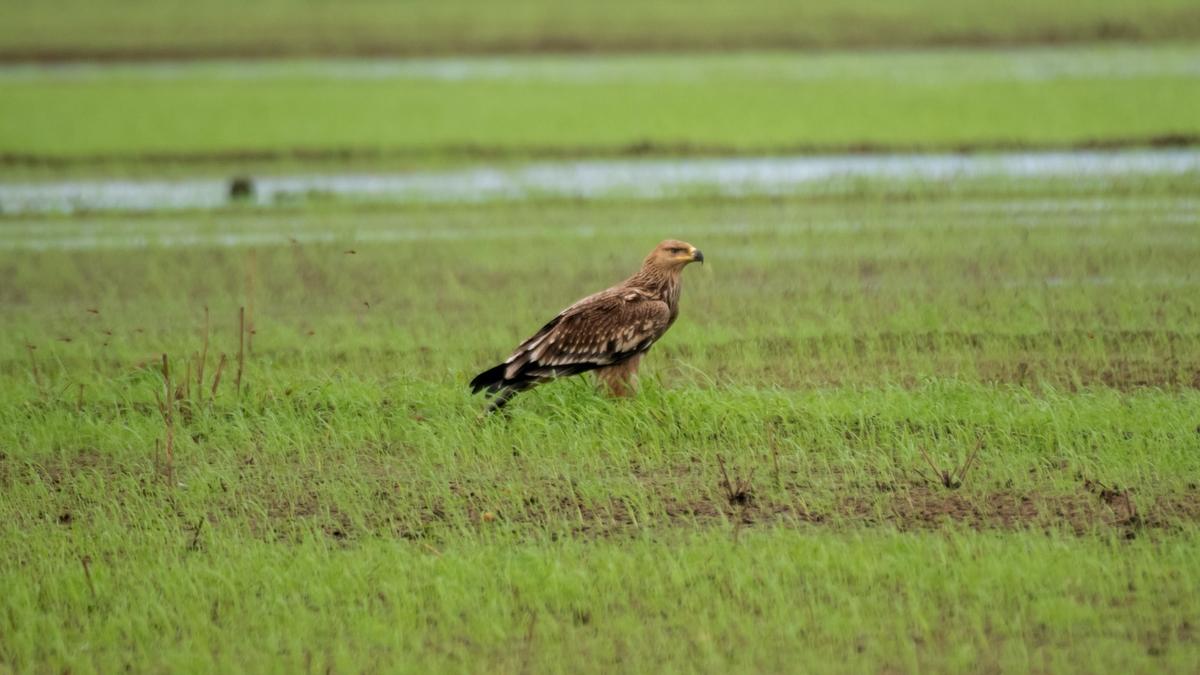
- 24 Nov 2024
In News:
- A rare Imperial Eagle (Aquila heliaca) was spotted in the PulluzhiKole wetlands. This marks a significant event as the species was last reported in Kannur in 2003.
Key Highlights:
- Habitat and Migration:
- The Imperial Eagle primarily breeds in southeastern Europe, west, and central Asia.
- During the winter months, it migrates to regions including northeastern Africa, West Asia, and parts of Southeast Asia.
- Conservation Status:The IUCN Red List lists the Imperial Eagle as a vulnerable species, indicating its potential risk of extinction, underscoring the need for its conservation efforts.
- Importance of Conservation:
- The Kole fields are a Ramsar-protected area, emphasizing their critical role in preserving migratory bird habitats.
- Ongoing conservation and observation efforts in these wetlands are essential for protecting the diverse bird species that use the area.
Features of the Imperial Eagle:
- Scientific Name: Aquila heliaca
- Physical Characteristics:
- Size: Length ranges from 68 to 90 cm, with a wingspan between 1.76 to 2.2 meters.
- Color: It has a pale golden crown and nape, with a grey base extending to the tail. Its wings feature prominent white "braces" on the scapulars.
- Sexual Dimorphism: Males are typically smaller than females.
- Habitat: Prefers old forests, mountainous regions, and riverside forests.
- Feeding: It has strong legs and curved talons for capturing and killing prey, and exceptional eyesight to spot prey from high altitudes.
- Conservation Efforts: Continued monitoring and protection of the Kole wetlands and other vital habitats are crucial for the survival of this vulnerable species and other at-risk birds.
Minke Whale
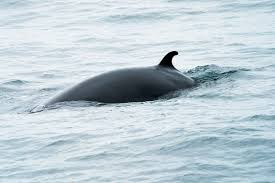
- 24 Nov 2024
In News:
Scientists have directly measured the hearing range of minke whales for the first time, finding that they can detect high-frequency sounds up to 90 kHz.
Key Highlights:
- Implication for Ocean Noise: The study suggests that baleen whales, including minke whales, may be more affected by anthropogenic ocean noise (e.g., naval sonar) than previously recognized, as their hearing range had been underestimated.
- Research Method: A novel catch-and-release technique was used to temporarily hold adolescent minke whales in Norway for auditory evoked potential (AEP) tests to measure their hearing sensitivity.
- Findings: Contrary to the belief that baleen whales are low-frequency specialists, minke whales can detect frequencies between 45 kHz to 90 kHz.
- Impact of Findings: The results could affect future regulations on ocean noise and its impact on marine mammals, as better hearing data is now available for baleen whales.
Minke Whale Overview:
- Family: Minke whales are members of the baleen or "great" whale family and are the smallest of the rorquals.
- Species: There are two recognized species:
- Common minke whale (Balaenoptera acutorostrata), found in various ocean basins.
- Antarctic minke whale (B. bonaerensis), found in the Southern Hemisphere.
- Subspecies:
- Dwarf minke whale: An unnamed subspecies of the common minke whale, mostly in the Southern Hemisphere.
- North Atlantic (B. a. acutorostrata) and North Pacific (B. a. scammoni) subspecies of common minke whales.
- Distribution: Minke whales are widely spread across tropical, temperate, and polar regions (65°S to 80°N), with common minke whales in all ocean basins and dwarf minke whales mostly in the Southern Hemisphere.
- Feeding Areas: They feed in cooler waters at higher latitudes and can be found both inshore and offshore.
- Conservation Status (IUCN):
- Common minke whale: Least Concern.
- Antarctic minke whale: Data Deficient.
Project Veer Gatha

- 24 Nov 2024
In News:
Over 1.76 crore school students from all 36 States and UTs participated in Project Veer Gatha 4.0.
Key Highlights:
- Activities: Students submitted poems, paintings, essays, videos, and other creative works in honor of the bravery and sacrifice of Armed Forces personnel.
- Objective: Instituted in 2021, the project aims to spread the inspiring stories of Gallantry Awardees to foster patriotism among students.
- Platform for Creativity: Students engage in creative projects based on the heroic deeds and sacrifices of Gallantry Award winners.
- Previous Editions:
- Edition 1 (2021): 8 lakh students.
- Edition 2 (2022): 19.5 lakh students.
- Edition 3 (2023): 1.36 crore students.
- School-Level Activities: Schools conducted various activities from 16.09.2024 to 31.10.2024, uploading 4 best entries per school to the MyGov portal.
- Awareness Programs: The Ministry of Defence organized virtual and face-to-face awareness sessions across schools.
- Winner Recognition:
- Past Editions: 25 winners in Editions I and II, and 100 winners in Edition 3.
- Project 4.0: 100 National winners, each receiving Rs. 10,000.
- District & State/UT Winners: 4 District-level and 8 State/UT-level winners will be felicitated by respective authorities.
- Collaborative Initiative: The project is a joint effort of the Ministry of Defence and Ministry of Education.
11th ASEAN Defence Ministers’ Meeting-Plus (ADMM-Plus)
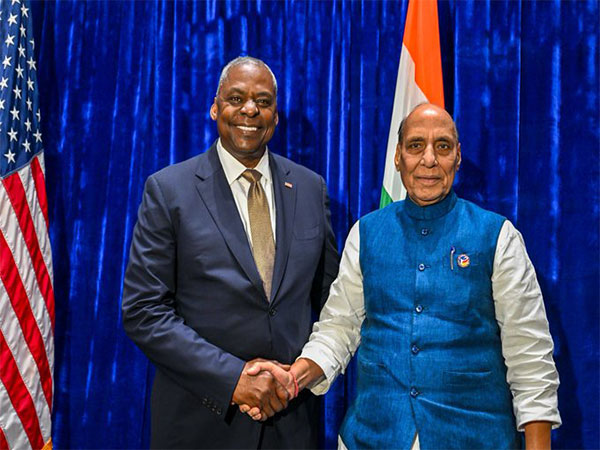
- 23 Nov 2024
In News:
The 11th ADMM-Plus held in Vientiane, Laos saw Union Defence Minister Rajnath Singh engage in discussions with his counterparts from the United States, Japan, and the Philippines.
Focus: The talks centered on strengthening defence partnerships, regional security, and enhancing cooperation among Indo-Pacific nations.
ASEAN Defence Ministers’ Meeting-Plus (ADMM-Plus):
- Platform for Dialogue: The ADMM-Plus is a key platform for ASEAN and its eight Dialogue Partners—Australia, China, India, Japan, New Zealand, Republic of Korea, Russia, and the United States.
- Establishment: The inaugural ADMM-Plus was held in HàN?i, Vietnam on 12 October 2010.
- Annual Meetings: Since 2017, the ADMM-Plus has met annually to enhance dialogue and cooperation amidst an increasingly complex regional security environment.
Objectives:
- Capacity Building: To aid ASEAN members in addressing shared security challenges.
- Promote Trust and Transparency: Enhance mutual trust and confidence between ASEAN and partner nations.
- Regional Peace and Stability: Focus on cooperation in defence and security to counter transnational security challenges.
- ASEAN Security Community: Contribute to realizing the ASEAN Security Community, as per the Bali Concord II, aiming for peace, stability, democracy, and prosperity in the region.
- Vientiane Action Programme: Facilitate ASEAN's efforts towards a peaceful, secure, and prosperous ASEAN with outward-looking relations with Dialogue Partners.
Cicada
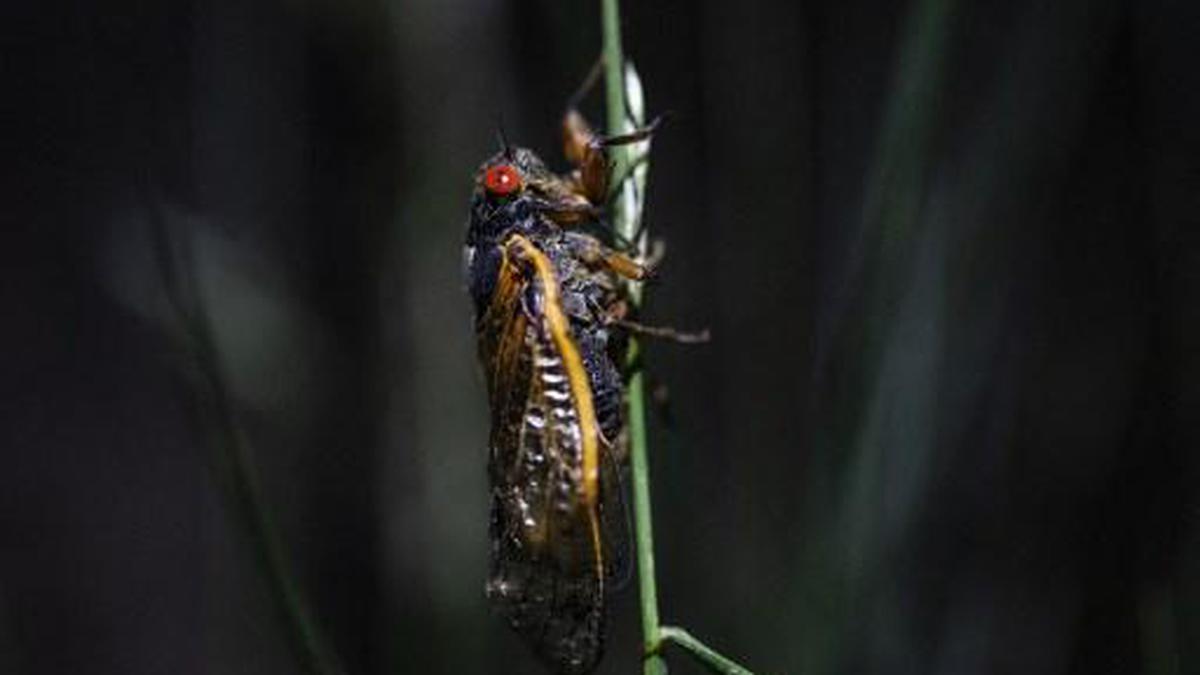
- 23 Nov 2024
In News:
North American cicadas have life cycles that last for prime numbers of years, putting pressure on the idea that humans created mathematics.
What are Cicadas?
- Classification: Cicadas are insects that belong to the order Hemiptera and the superfamily Cicadoidea.
- Physical Features: Hemipteran insects (also known as true bugs) have piercing-sucking mouthparts and two pairs of wings.
- Life Span: Cicadas spend the majority of their life underground, feeding on plant sap. Once they emerge from the soil, they have a short adult life span of about 2 to 4 weeks.
Habitat:
- Preferred Environment: Cicadas are typically found in natural forests with large trees and are considered canopy dwellers.
- Global Distribution: Cicadas are found on every continent except Antarctica. The highest genetic diversity of cicadas is found in India and Bangladesh, followed by China.
Cicada Emergence and Life Cycle:
- Life Cycle: Cicadas have a complex life cycle, involving long periods of underground development followed by brief adult emergence.
- Periodical Cicadas: There are species of cicadas that emerge in 13-year and 17-year cycles.
- Broods: Initially, 30 broods were categorized based on geography and emergence times, but currently, only about 15 broods remain active due to some broods becoming extinct.
- Unique Phenomenon: In April 2024, a rare event is expected where a trillion cicadas from two different broods will emerge simultaneously in the Midwest and Southeast regions of the United States.
Cicada's underground Development:
- Feeding on Sap: During their underground phase, cicadas feed on the sap of plants.
- Purpose of Long Development: Researchers believe the long development period helps cicadas evade above-ground predators by keeping them hidden in the soil.
Vulnerability after Emergence:
- Emergence Behavior: Once cicadas emerge, they construct a "cicada hut" to shed their nymphal skins, then climb onto nearby trees or vegetation.
- Predator Vulnerability: Adult cicadas are vulnerable to predators such as turtles and other forest creatures because they are clumsy and defenseless, making them easy prey for predators.
Significance of the 2024 Emergence:
- The coinciding emergence of cicadas from different broods (13-year and 17-year cycles) is a rare event that highlights the complexity and mathematical precision behind the cicada life cycle.
The science of plant communication

- 23 Nov 2024
In News:
More than any organism, plants understand the significance of communication the best.
Communication Through Chemical Warning (Volatile Organic Compounds - VOCs):
- Plants release volatile organic compounds (VOCs) when threatened, such as during herbivore grazing.
- VOCs act as distress signals, alerting neighboring plants to potential dangers.
- Neighboring plants respond by producing defensive compounds or toxins to deter herbivores.
- VOCs can travel through air and soil, enabling distant plants to prepare for threats, thereby enhancing survival across larger areas.
Wood Wide Web (Symbiotic Relationship with Mycorrhizal Fungi):
- Plants form a network with mycorrhizal fungi, connecting their roots in a symbiotic bond.
- This "Wood Wide Web" allows plants to communicate by sending chemical signals through their roots when under stress (e.g., pest attacks or drought).
- Fungi extend the root system and help share nutrients between plants, especially in times of distress.
- The network facilitates collective resilience and survival by ensuring nutrient sharing among plants.
Cooperative Behavior: Sharing Resources for Survival:
- Plants in close proximity, especially in dense forests, often share resources like water, nutrients, and light.
- When a plant detects a neighboring plant in distress, it prioritizes resource allocation to support its growth.
- This cooperative behavior promotes ecosystem stability and the overall health of forests.
- The mutual support system shows how cooperation enhances the survival of individual plants and the broader ecosystem.
Significance of Plant Communication in Ecosystem Health:
- Plants communicate through chemical signals, underground fungal networks, and cooperative behaviors.
- These interactions foster resilience, ensuring the survival of both individual plants and entire ecosystems.
- The silent communication among plants contributes to a dynamic, cooperative environment that thrives on mutual support.
GQ-RCP Platform
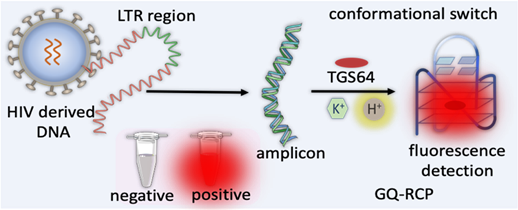
- 23 Nov 2024
In News:
Researchers have developed a technology for targeted better detection of HIV-genome derived G-Quadruplex (GQ).
Key Features of the GQ-RCP Platform
- Technology: GQ Topology-Targeted Reliable Conformational Polymorphism (GQ-RCP) platform developed by Jawaharlal Nehru Centre for Advanced Scientific Research (JNCASR).
- Detection Mechanism: Uses a fluorometric test to detect HIV-derived GQ DNA through reverse transcription and amplification.
- Advantage: Increases diagnostic reliability by reducing false positives associated with non-specific DNA probes.
- Process: pH-mediated transition of double-stranded DNA into GQ conformation for targeted detection.
- Flexibility: Initially designed for SARS-CoV-2, now adapted for HIV diagnosis.
About HIV
- Human Immunodeficiency Virus (HIV) attacks the immune system, specifically CD4 cells, weakening the body's ability to fight infections.
- Transmission: Spread through bodily fluids such as blood, semen, vaginal fluids, and breast milk.
- AIDS: Without treatment, HIV progresses to Acquired Immunodeficiency Syndrome (AIDS), where the immune system becomes severely damaged.
- Management: No cure; managed with antiretroviral therapy (ART), which controls viral replication.
Current HIV Situation in India
- Prevalence: As of 2021, ~2.4 million people living with HIV in India, with a 0.22% adult prevalence rate.
- Demographic Distribution: High prevalence among female sex workers (2.61%) and injecting drug users (5.91%). Women represent 39% of HIV-positive population.
- High-Prevalence States: Northeastern states have the highest prevalence (e.g., Mizoram - 2.70%) and southern states (e.g., Andhra Pradesh - 0.67%).
Government Initiatives on HIV
- National AIDS Control Program (NACP): Launched in 1992, aims for prevention, treatment, and care.
- Phase I (1992-1999): Focus on awareness, blood safety, and surveillance.
- Phase II (1999-2006): Expanded interventions for high-risk populations.
- Phase III (2007-2012): Increased targeted interventions and civil society involvement.
- Phase IV (2012-2021): Focused on integration of HIV services into public health systems.
- Phase V (2021-2026): Aim to reduce new infections and AIDS-related deaths by 80% by 2026.
- Legislative Framework: The HIV/AIDS Prevention and Control Act (2017) ensures the rights of people living with HIV and access to treatment without discrimination.
- International Support: India receives support from UNAIDS, WHO, the World Bank, and foundations like Bill & Melinda Gates Foundation.
Global Soil Conference 2024
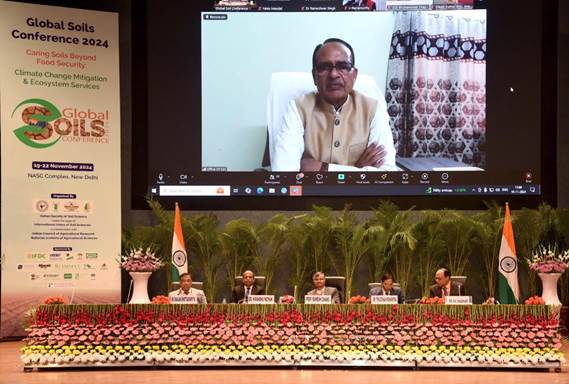
- 23 Nov 2024
In News:
- Global Soil Conference (GSC) 2024 held in New Delhi.
- Focused on soil health's importance for food security, climate change mitigation, and ecosystem services.
What is the Global Soil Conference 2024?
- Organizers: Indian Society of Soil Science (ISSS) in collaboration with the International Union of Soil Sciences (IUSS).
- Objective: Address sustainable soil/resource management challenges and foster global dialogue.
- Theme: "Caring Soils Beyond Food Security: Climate Change Mitigation & Ecosystem Services."
Key Highlights of GSC 2024:
- Soil Health Issues:
- Soil degradation threatens productivity and global food security.
- 30% of India's soil is compromised by erosion, salinity, pollution, and organic carbon loss.
- Soil erosion is linked to SDG 15 (Sustainable Development Goal 15), aiming to protect terrestrial ecosystems.
- SDG 15:
- Goals: Promote sustainable land use, combat desertification, halt land degradation, protect biodiversity.
Concerns Regarding Soil Health in India:
- Soil Degradation:One-third of India's land faces degradation due to poor farming practices.
- Soil Erosion & Fertility Loss:
- India loses 15.35 tonnes of soil/hectare annually.
- Results in crop losses, economic damage, and environmental issues like floods and droughts.
- Soil Salinity:Reduces water infiltration, nutrient uptake, and aeration, making land infertile.
- Low Organic Content:
- Organic carbon in Indian soil is 0.54%, which hampers fertility.
- Over 70% of soils are affected by acidity or alkalinity, disrupting nutrient cycles.
- Desertification:Reduces soil fertility, increases erosion, and worsens food insecurity.
- Diversion of Fertile Land:Fertile agricultural land is diverted for non-agricultural purposes.
India's Initiatives for Soil Conservation:
- Soil Health Card (SHC) Scheme:Provides farmers with soil nutrient information.
- Pradhan Mantri Krishi Sinchai Yojana:Focuses on efficient water use.
- Zero Budget Natural Farming & Natural Farming Mission:Promotes sustainable farming practices to protect soil health.
Guided Pinaka Weapon System
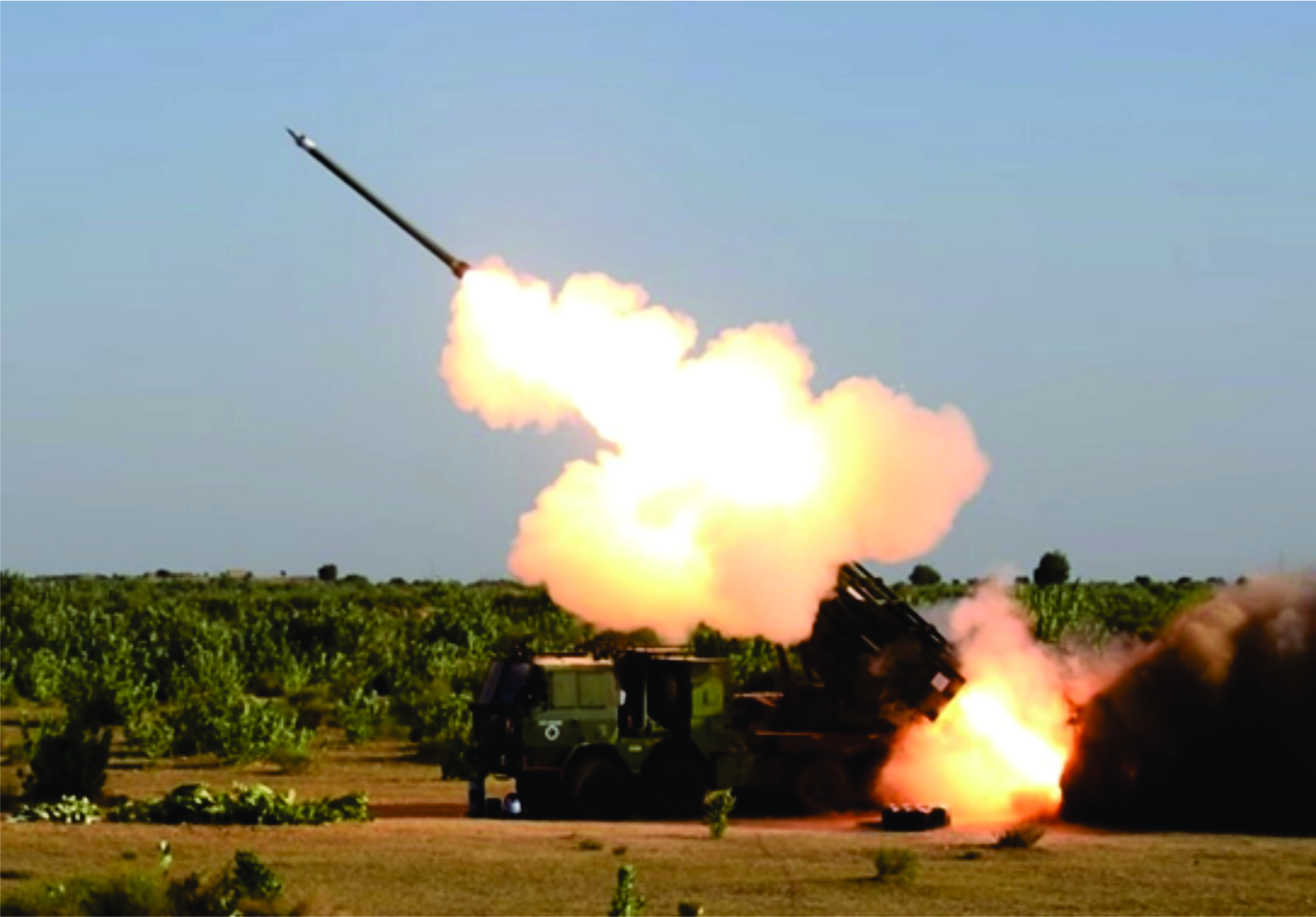
- 22 Nov 2024
In News:
Defence Research and Development Organisation (DRDO) has successfully completed the Flight Tests of Guided Pinaka Weapon System.
Key Details of the Flight Tests:
- Conducted as part of Provisional Staff Qualitative Requirements (PSQR) Validation Trials.
- Tests Phases: Flight tests were carried out in three phases at different field firing ranges.
- Parameters Assessed:
- Ranging (the distance the weapon can accurately target).
- Accuracy (precision of hits).
- Consistency (performance over multiple trials).
- Rate of Fire (ability to fire multiple rockets simultaneously in salvo mode).
Guided Pinaka Weapon System:
- Design and Development:
- Developed by Armament Research and Development Establishment (ARDE) in association with other DRDO labs and production agencies, including:
- Research Centre Imarat,
- Defence Research and Development Laboratory,
- High Energy Materials Research Laboratory,
- Proof & Experimental Establishment.
- Production Agencies: Munitions India Limited, Economic Explosives Limited, Tata Advanced Systems Limited, and Larsen & Toubro.
- Developed by Armament Research and Development Establishment (ARDE) in association with other DRDO labs and production agencies, including:
- Key Features:
- Pinaka: A multi-barrel rocket launcher system named after Lord Shiva’s bow.
- Mobility: Highly mobile, providing quick deployment in battlefield scenarios.
- Firepower: Capable of delivering concentrated firepower on enemy targets.
- Upgraded Version (Pinaka Mark II):
- Extended range: 70 to 80 km.
- Future range targets: 120 km and 300 km.
- Salvo Mode: Tested for the ability to launch 12 rockets simultaneously.
- Significance:
- Strategic Importance: The successful trials enhance the artillery firepower of the Indian Armed Forces.
- Completion of Pre-requisite Trials: The system has successfully completed all flight trials before its induction into the Indian Army.
Prasar Bharati’s OTT Platform – WAVES
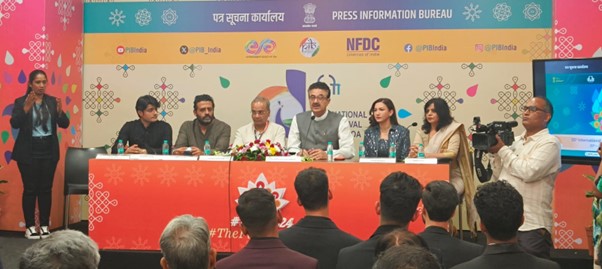
- 22 Nov 2024
In News:
Recently, Prasar Bharati launched its OTT platform WAVES, to cater to India’s increasing demand for digital streaming services.
Key Features of WAVES OTT Platform:
- Content Offered: A mix of classic content and contemporary programming, catering to various audiences.
- Target Audience: Aimed at Indians and those abroad wishing to stay connected to their Indian roots.
- Languages: Available in 12+ languages, including Hindi, English, Bengali, Marathi, Kannada, Malayalam, Telugu, Tamil, Gujarati, Punjabi, Assamese.
- Genres: Spanning 10+ genres, including infotainment, games, current affairs, and news.
- Free Access: Most content is available free to download and view, with exceptions for premium content.
- Additional Features:
- Video on demand.
- Free-to-play gaming.
- Radio streaming.
- Live TV streaming with 65 live channels.
- Online shopping via the Open Network for Digital Commerce (ONDC) supported e-commerce platform.
Content Highlights:
- Fauji 2.0: A modern adaptation of the iconic 1980s Shahrukh Khan show, focusing on lives of people who serve and protect India.
- Kakbhushandi Ramayana: An original show on DD National now available on WAVES, based on research of over 350 versions of the Ramayana worldwide. The show aims to provide a new portrayal of the epic, appealing to younger audiences.
Vision for WAVES OTT:
- WAVES aims to revive nostalgia while embracing modern digital trends.
- It serves as an inclusive platform that highlights Indian culture with an international outlook.
Rare Leucistic Peacock
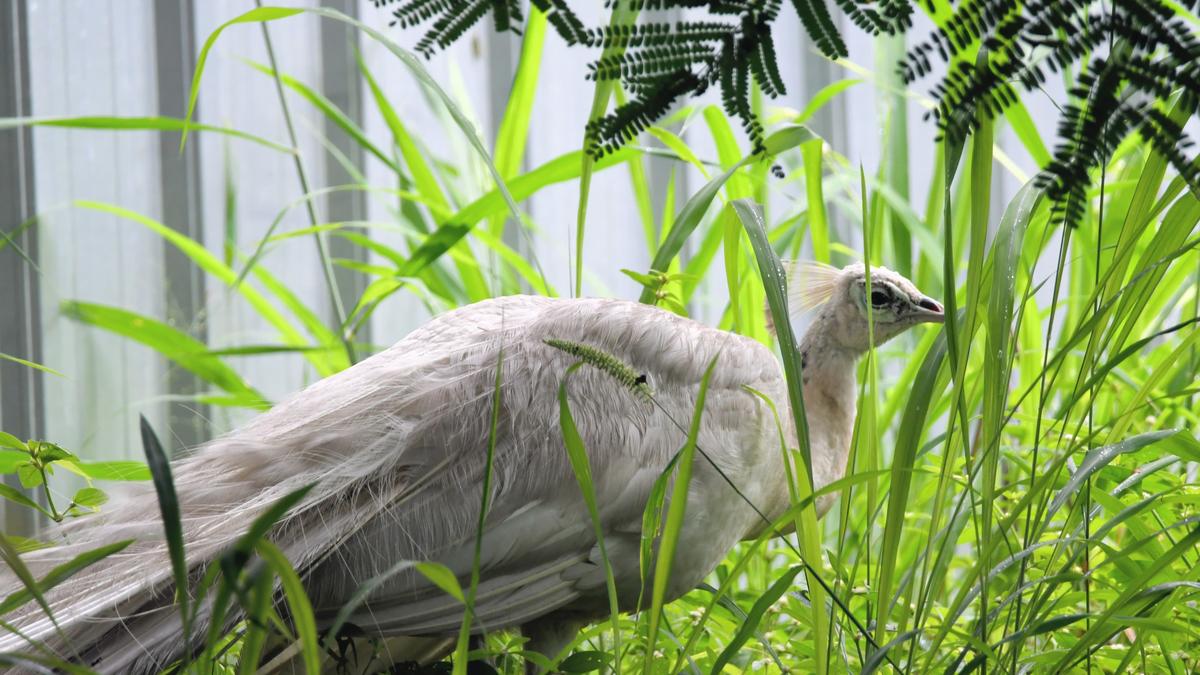
- 22 Nov 2024
In News:
Tamil Nadu Forest Department staff and members of a non-governmental organisation rescued a rare peacock with white feathers, caused by a genetic condition called leucism, in Coimbatore.
Key Highlights:
Incident Details:
- Species: Indian peacock (Pavocristatus), known for its beautiful plumage.
- Condition: The peacock was rescued due to a leg injury and its rare white plumage.
- Cause of White Plumage: The bird's white feathers are caused by leucism, a genetic condition that reduces pigmentation in feathers while leaving eye color unaffected.
Expert Insights:
- Leucism: It causes partial loss of pigmentation in animals. A leucistic animal retains normal eye color but has pale or white coloration.
- Distinction from Albinism: Unlike albinism, which results in a complete lack of melanin and often causes red or pink eyes, leucistic animals retain normal eye pigmentation.
- Identification of Leucism in Peacock: The bird’s dark eyes and pink bill and feet confirmed it as fully leucistic.
Peacock Species:
- Indian Peacock (Pavocristatus): The National Bird of India, native to India and Sri Lanka. It belongs to the Phasianidae family, which also includes pheasants, quails, and jungle fowl.
- Green Peacock (Pavomuticus): Found from Myanmar to Java.
Conservation Status:
- IUCN Status: Listed as Least Concern.
- Wildlife Protection Act, 1972: The Indian peacock is listed under Schedule I, offering it the highest level of legal protection in India.
India’s First AI Data Bank

- 22 Nov 2024
In News:
The Ministry of Science and Technologyrecently launched India’s first Artificial Intelligence (AI) data bank that is aimed at propelling innovation and boosting the country’s national securityat the 7th Edition of the ASSOCHAM AI Leadership Meet 2024.
-
- The event theme: “AI for India: Advancing India’s AI Development – Innovation, Ethics, and Governance”.
Key Highlights:
- Objective:
- Propel innovation and enhance national security.
- Provide access to diverse, high-quality datasets for creating scalable and inclusive AI solutions.
- Key Features of the AI Data Bank:
- Target Audience: Researchers, startups, and developers.
- Data Types: Satellite, drone, and IoT data.
- Purpose:
- To enhance national security through real-time analytics.
- Enable predictive analytics for disaster management and cybersecurity.
Strategic Importance of AI in India:
- National Security: AI to strengthen national security by providing real-time analytics from satellite, drone, and IoT data.
- AI for Development:
- AI’s role in reshaping sectors like governance, business, healthcare, education, and space exploration.
- AI as a tool for economic growth, addressing climate change, improving public service delivery, and ensuring national security.
- Ethics and Governance:
- Ensuring responsible AI use with optimal handling.
- Addressing algorithmic bias and data privacy through robust governance frameworks.
- Commitment to transparent and fair AI systems that empower people rather than replace them.
- AI in Disaster Management and Cybersecurity:
- Aligning with India’s goals to use AI for predictive analytics in disaster management.
- Enhancing cybersecurity through AI technologies.
Government’s Vision on AI:
- Empowering Citizens: AI must bridge divides and ensure equitable access to its benefits.
- AI as Backbone for Future Development: India’s focus on making AI an integral part of its future economic and technological growth.
Climate Change Performance (CCPI 2025)
- 22 Nov 2024
In News:
Recently, the Climate Change Performance Index (CCPI 2025) report was released at the annual UN climate conference in Baku.
Key Highlights:
- It is published by think tanks German watch, New Climate Institute, and Climate Action Network International.It was first published in 2005.
- It tracks the progress of the world’s largest emitters in terms of emissions, renewables, and climate policy.
India's Ranking in Climate Change Performance (CCPI 2025)
- India's Rank: 10th (Dropped two places from the previous year).
- Key Factors for India's High Rank:
- Low per capita emissions: 2.9 tons of CO2 equivalent (global average: 6.6 tons).
- Rapid deployment of renewables: India is a leader in solar energy projects, including large-scale solar and rooftop solar schemes.
- Renewable energy targets: Aims for 500 GW of renewable energy capacity by 2030.
- Energy efficiency standards: Introduced, but coverage remains inadequate.
- Electric vehicle (EV) deployment: Significant progress, especially in two-wheelers.
- Challenges for India:
- Heavy reliance on coal: India remains one of the top 10 countries with the largest developed coal reserves.
- Growth-oriented approach: Economic growth and energy demand continue to drive climate action, with limited change in climate policy expected.
- Future Pledges:
- Net-zero emissions by 2070.
- Global leadership in green energy.
CCPI 2025 Rankings Overview
Rank
Country
Key Points
1-3
Empty
No country performed well enough to achieve a "very high" rating.
4
Denmark
Leading climate actions but ranks 4th technically.
5
Netherlands
Strong climate performance, follows Denmark.
6
U.K.
Notable improvement due to coal phase-out and halting new fossil fuel licenses.
10
India
High performer, despite challenges like reliance on coal.
55
China
Largest emitter, heavily reliant on coal, ranks 55th despite promising plans.
57
U.S.
Second-largest emitter, ranks 57th with insufficient climate targets.
59
Argentina
Major climate policy setbacks, including potential exit from Paris Agreement.
64-67
Iran, Saudi Arabia, UAE, Russia
Lowest-ranked, major oil and gas producers with weak climate policies.
General Findings of the Report
- CCPI Methodology: Assesses 63 countries (plus the EU) responsible for 90% of global emissions based on their emissions, renewable energy efforts, and climate policies.
- Global Trends:
- No country has been able to secure a "very high" rating across all categories.
- Denmark and Netherlands are among the top performers.
- The U.K. shows significant progress with its coal phase-out and fossil fuel policies.
Indira Gandhi Prize for Peace, Disarmament, and Development
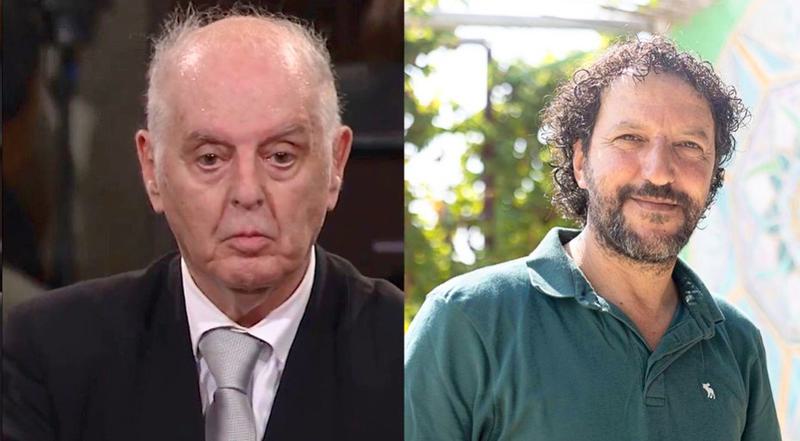
- 21 Nov 2024
In News:
- Daniel Barenboim (Classical Pianist and Conductor) and Ali Abu Awwad (Palestinian Peace Activist) were jointly awarded the Indira Gandhi Prize for Peace, Disarmament, and Development for 2023.
- Daniel Barenboim was recognized for fostering peace through musical and cultural dialogue initiatives.
- Ali Abu Awwad was honored for his advocacy of peace through dialogue via his organization Roots, which he founded after serving time in Israeli prison.
Significance of the Indira Gandhi Peace Prize:
- The award is given to individuals or organizations who have made outstanding contributions to international peace, disarmament, and development.
- It includes a monetary award of ?25 lakh and a citation.
About the Indira Gandhi Peace Prize:
- Established: 1986 by the Indira Gandhi Memorial Trust in memory of former Prime Minister Indira Gandhi.
- Objective: To honor sustained efforts towards international peace, the development of humanity, and the promotion of disarmament.
- Past recipients: Includes prominent figures and organizations such as Mikhail Gorbachev, UNICEF, Jimmy Carter, Angela Merkel, ISRO, and Sir David Attenborough.
2022 Awardees:
- The Indira Gandhi Peace Prize for 2022 was awarded to the Indian Medical Association and the Trained Nurses Association of India, in recognition of their contribution as COVID-19 warriors.
Key Takeaways:
- The Indira Gandhi Peace Prize is regarded as one of the most prestigious awards for promoting peace, disarmament, and development worldwide.
- Daniel Barenboim's musical initiatives and Ali Abu Awwad's work through dialogue exemplify efforts to bridge divides and promote peaceful resolutions to conflict.
Green World Awards 2024

- 21 Nov 2024
In News:
Coal India Limited (CIL) under the aegis of the Ministry of Coal, has been conferred with the esteemed Green World Environment Award in the Corporate Social Responsibility (CSR) category along with the distinguished tile of Green World Ambassador.
Key Highlights:
- Reason for the Award:
- The award was granted to CIL for its Thalassemia Bal SewaYojna, a CSR initiative aimed at providing permanent curative treatment for Thalassemia through Bone Marrow Transplants (BMT).
- The scheme provides financial assistance of up to ?10 lakh for BMT and has helped over 600 Thalassemia patients across India.
- Background of the Award:
- The Green Organization, an independent, non-political, non-profit environmental group, conferred the award.
- The organization has been recognizing and promoting environmental best practices and CSR initiatives globally since its establishment in 1994.
- CIL’s Role in CSR:
- CIL has been a pioneer in CSR, with its Thalassemia Bal SewaYojna being the first of its kind among public sector undertakings in India.
- The initiative partners with 17 prominent hospitals across India to provide stem cell transplants for Thalassemia patients.
- CIL’s Contribution to India's Energy Sector:
- CIL is responsible for producing over 80% of India's coal and contributes to 70% of the total coal-based power generation in the country.
- CIL accounts for 55% of India’s total power generation and meets 40% of the primary commercial energy requirements.
- Environmental Initiatives by CIL:
- CIL has adopted various measures to improve environmental sustainability, including:
- Expanding green cover over mined areas.
- Creating eco-parks and tourism spots.
- Providing mine water for domestic and agricultural use to surrounding villages.
- About Coal India Limited (CIL):
- Established: November 1975.
- Headquarters: Kolkata.
- Status: A Maharatna company and the largest coal-producing company in the world.
- Subsidiaries: CIL has seven producing subsidiaries and is a major corporate employer in India.
- About the Green Organization:
- Founded: 1994.
- Nature: Independent, non-political, non-profit organization.
- Objective: To recognize, reward, and promote environmental and CSR best practices worldwide.
- Initiatives: The Green World Awards are part of global efforts to encourage sustainability and corporate social responsibility.
- Significance of the Award:
- The Green World Environment Award highlights CIL’s commitment to social responsibility and environmental sustainability while maintaining its core role as an energy provider.
- The recognition underscores CIL’s leadership in integrating CSR initiatives with corporate operations to contribute to national development.
Bhu-Neer Portal
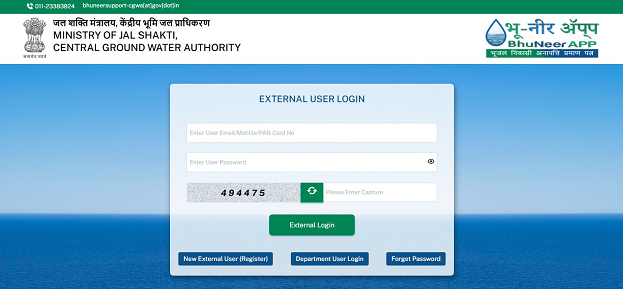
- 21 Nov 2024
In News:
- Minister of Jal Shakti, digitally launched the “Bhu-Neer” portal during the India Water Week 2024.
- Developed by the Central Ground Water Authority (CGWA), under the Ministry of Jal Shakti, in collaboration with the National Informatics Centre (NIC).
Key Highlights:
- Purpose of the Portal:
- Centralized platform for managing and regulating groundwater resources across India.
- Aims to ensure transparency, efficiency, and sustainability in groundwater usage, facilitating easier access to groundwater withdrawal permits.
Key Features:
- User-Friendly Interface: Simplified interface to streamline the application process for groundwater withdrawal.
- PAN-Based Single ID System: Allows seamless user registration, providing a unique identification for all stakeholders.
- NOC with QR Code: Enables verifiable and trackable compliance documents, ensuring authenticity.
- Improved Version: An enhanced version compared to the previous NOCAP system, with improved efficiency and features.
- Streamlined Process Flow: Simplifies the process for obtaining groundwater withdrawal permits.
Goals and Benefits:
- Promotes the sustainable use of groundwater and ensures compliance with legal frameworks at state and national levels.
- Supports Ease of Doing Business: Aligns with the Prime Minister’s vision by making the groundwater regulation process seamless and faceless, reducing bureaucratic delays.
Public Accessibility:
- The portal is now live and accessible to both project proponents and the general public.
- It offers services such as groundwater withdrawal related queries, tracking applications, and payment of statutory charges.
Impact on Groundwater Management:
- The platform is expected to bring improved groundwater regulation by providing centralized access to policies, compliance details, and sustainable practices related to groundwater use.
- It will contribute significantly to monitoring and sustainable management of India’s groundwater resources, crucial in light of increasing water scarcity.
Vision of the Portal:
- In line with the government’s broader goals of digitalization, transparency, and environmental sustainability, the “Bhu-Neer” portal marks a significant step in efficient water resource management.
India’s First Indigenous Antibiotic
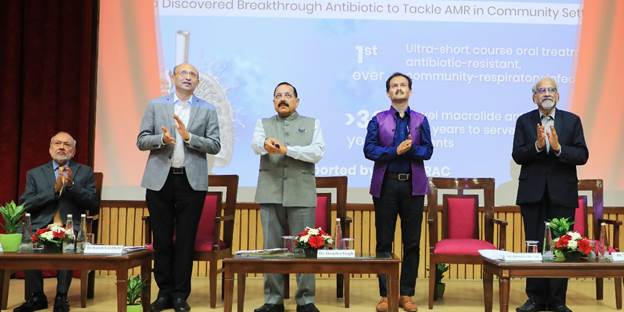
- 21 Nov 2024
In News:
- Nafithromycin is India's first indigenously developed antibiotic aimed at combating drug-resistant pneumonia, developed with support from the Biotechnology Industry Research Assistance Council (BIRAC).
- The drug is being marketed under the trade name "Miqnaf" by Wockhardt.
Significance in Combating Drug Resistance:
- Nafithromycin addresses Community-Acquired Bacterial Pneumonia (CABP), a serious disease caused by drug-resistant bacteria.
- Pneumonia is responsible for over 2 million deaths globally annually, with India facing 23% of the global burden.
- The drug is 10 times more effective than current treatments like azithromycin, requiring only three doses for effective treatment, offering a safer and faster solution.
Biotechnology Sector and Public-Private Collaboration:
- BIRAC, under the Department of Biotechnology, supported the research and development of Nafithromycin.
- This achievement underscores the public-private collaboration between the government and pharmaceutical industry, demonstrating India’s capacity to develop indigenous solutions for global health challenges.
Global Health Implications:
- Antimicrobial Resistance (AMR) is a growing global health crisis that prolongs illnesses and raises healthcare costs.
- The new antibiotic offers a vital solution to multi-drug-resistant pathogens, contributing significantly to global health.
- India’s leadership in addressing AMR positions the country as a major player in biotechnology innovation.
Importance for Vulnerable Populations:
- Vulnerable populations, including children, the elderly, and those with weakened immune systems (e.g., diabetes, cancer patients), are particularly affected by drug-resistant pneumonia.
- Nafithromycin offers a much-needed therapeutic option for these groups.
Impact of AMR Awareness:
- The launch coincides with World AMR Awareness Week, emphasizing the urgency of tackling antimicrobial resistance.
- Public awareness, fostered by the COVID-19 pandemic, has increased the focus on biotechnology and its potential to address global health challenges.
Future Prospects:
- Nafithromycin is awaiting final approval from the Central Drugs Standard Control Organization (CDSCO) for manufacturing and public use.
- The launch is expected to lead to future breakthroughs in antibiotic development and contribute significantly to improving public health.
UNICEF’s State of the World’s Children 2024 (SOWC-2024) Report
- 21 Nov 2024
In News:
The world is facing an unprecedented crisis with nearly half of all children – about 1 billion – living in countries that face a high risk of climate and environmental hazards, the UNICEF’s State of the World’s Children 2024 (SOWC-2024) report, said.
Key Highlights:
Environmental Hazards and Children’s Health:
- Children face an increasingly unpredictable and hazardous environment due to climate change, environmental crises, and frontier technologies.
- Nearly 1 billion children live in countries facing high risks from climate and environmental hazards.
- Children’s developing bodies are especially vulnerable to pollution, extreme weather, and environmental hazards.
- Air pollution, rising temperatures, and extreme weather events harm children's respiratory health, increase the spread of diseases like malaria and dengue, and impact food security and access.
Impact of Climate Change:
- Climate destabilization, biodiversity loss, and pollution are intensifying globally.
- Climate-related disasters (e.g., floods) affect water supplies, causing waterborne diseases, a leading cause of death in children under five.
- Extreme weather events, such as floods, can cause trauma, anxiety, and displacement for children.
- By the 2050s, more children will be exposed to extreme climate hazards compared to the 2000s.
- School closures, affecting 400 million children since 2022 due to extreme weather, disrupt education and hinder economic growth.
Projections for Child Survival and Life Expectancy:
- Newborn survival rates: Projected to rise by nearly 4 percentage points to over 98% globally by the 2050s.
- Probability of surviving to age 5: Expected to increase to 99.5%.
- Life expectancy: Expected to rise to 81 years for girls and 76 years for boys by the 2050s.
Child Population Trends by 2050:
- Global child population expected to stabilize at 2.3 billion by the 2050s.
- South Asia, Eastern/Southern Africa, and West/Central Africa will have the largest child populations, facing significant challenges in meeting children’s basic needs.
- These regions also face climate risks, inadequate digital infrastructure, and socio-economic challenges.
Technological Advancements:
- Artificial Intelligence (AI), neurotechnology, renewable energy, and vaccine breakthroughs could significantly improve childhood well-being.
- Digitalization: While it can empower children, it also exposes them to online risks, including sexual exploitation and abuse.
Socio-Economic Conditions and Inequality:
- 23% of children projected to live in low-income countries by 2050, a significant increase from 11% in the 2000s.
- GDP per capita in East Asia, Pacific, and South Asia expected to more than double from the 2020s to the 2050s.
- Growing inequalities between high- and low-income countries, particularly in terms of digital access and infrastructure.
Urbanization and Child Welfare:
- By the 2050s, nearly 60% of children globally will live in urban areas, up from 44% in the 2000s.
- Ensuring healthier and more secure urban environments is critical for improving future childhoods.
- Over 95% of people in high-income countries are connected to the internet, compared to just 26% in low-income countries, exacerbating inequalities.
Key Takeaways:
- Children are facing a more hazardous environment than ever before, influenced by climate change, technological developments, and demographic shifts.
- Proactive measures are needed to mitigate environmental risks, promote digital inclusion, and ensure equitable access to resources and opportunities for children globally.
India’s Polio Eradication Journey
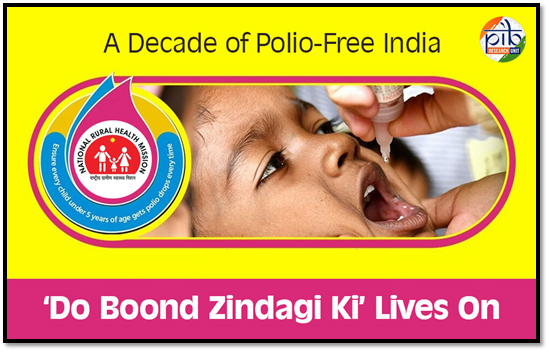
- 20 Nov 2024
In News:
India's achievement of becoming polio-free in 2014 stands as one of the most remarkable successes in global public health. This milestone, which was celebrated worldwide, represents decades of consistent efforts, collaboration, and innovative strategies, culminating in the elimination of wild poliovirus in the country.
Key Milestones in Polio Eradication
- Pulse Polio Programme Launch (1995):
- The Pulse Polio Immunization Programme was a game-changer, initiating large-scale vaccination campaigns across India, with the first nationwide campaign held on 2nd October 1994 (Gandhi Jayanti) in Delhi.
- The campaign used the Oral Polio Vaccine (OPV) and reached over 1 million children.
- The slogan "Do BoondZindagi Ki" (Two drops of life) became synonymous with India’s polio eradication efforts.
- Routine Immunization and System Strengthening:
- The Universal Immunization Programme (UIP), which launched in 1985, made polio one of the first diseases targeted for elimination. UIP is now one of the world’s largest immunization programs, aiming to provide vaccines against 12 preventable diseases, including polio.
- Cold chain management was improved through systems like the National Cold Chain Training Centre (NCCTE) and Electronic Vaccine Intelligence Network (eVIN), ensuring proper storage and distribution of vaccines.
- Inactivated Polio Vaccine (IPV) Introduction (2015):
- As part of the Global Polio Endgame Strategy, India introduced the Inactivated Polio Vaccine (IPV) in 2015 to provide enhanced protection, particularly against type 2 poliovirus.
- This move followed the global transition from trivalent OPV to bivalent OPV (which excludes the type 2 strain) and helped ensure continued protection against all forms of polio.
- Surveillance Systems:
- India implemented Acute Flaccid Paralysis (AFP) Surveillance to track unexplained paralysis in children, a symptom of polio.
- Environmental Surveillance, involving monitoring sewage water for poliovirus strains, played a critical role in identifying potential outbreaks and residual poliovirus transmission.
- Political Will & Community Engagement:
- Strong political commitment from both central and state governments ensured sustained resources and focus on the program.
- Community participation was also vital, with health workers and volunteers working to ensure vaccination coverage in the most remote areas.
The Final Leap: Certification and Maintenance
- 2011 marked the last case of wild poliovirus in Howrah, West Bengal, and India ramped up its surveillance and response efforts to ensure no further cases.
- India achieved polio-free certification from the World Health Organization (WHO) on 27th March 2014, after meeting strict criteria, including three years without wild poliovirus transmission and robust surveillance systems.
Post-Certification Efforts: Keeping Polio at Bay
Even after achieving polio-free status, India remains vigilant to maintain this achievement:
- Annual National Immunization Days (NID) and Sub-National Immunization Days (SNID) are held regularly to boost immunity levels and ensure no child is missed.
- Continuous surveillance and vaccination at international borders help prevent the risk of re-importation of the virus.
- Mission Indradhanush (MI), launched in 2014, aims to increase immunization coverage to 90%, focusing on hard-to-reach areas and improving vaccine coverage.
Ongoing Commitment to Immunization
India’s immunization programs continue to evolve:
- New vaccines like Rotavirus, Pneumococcal Conjugate Vaccine (PCV), and Measles-Rubella (MR) are being added to protect against other vaccine-preventable diseases.
- Mission Indradhanush’s intensified phase has played a crucial role in improving vaccination rates, particularly in underserved areas.
High-Altitude Sickness
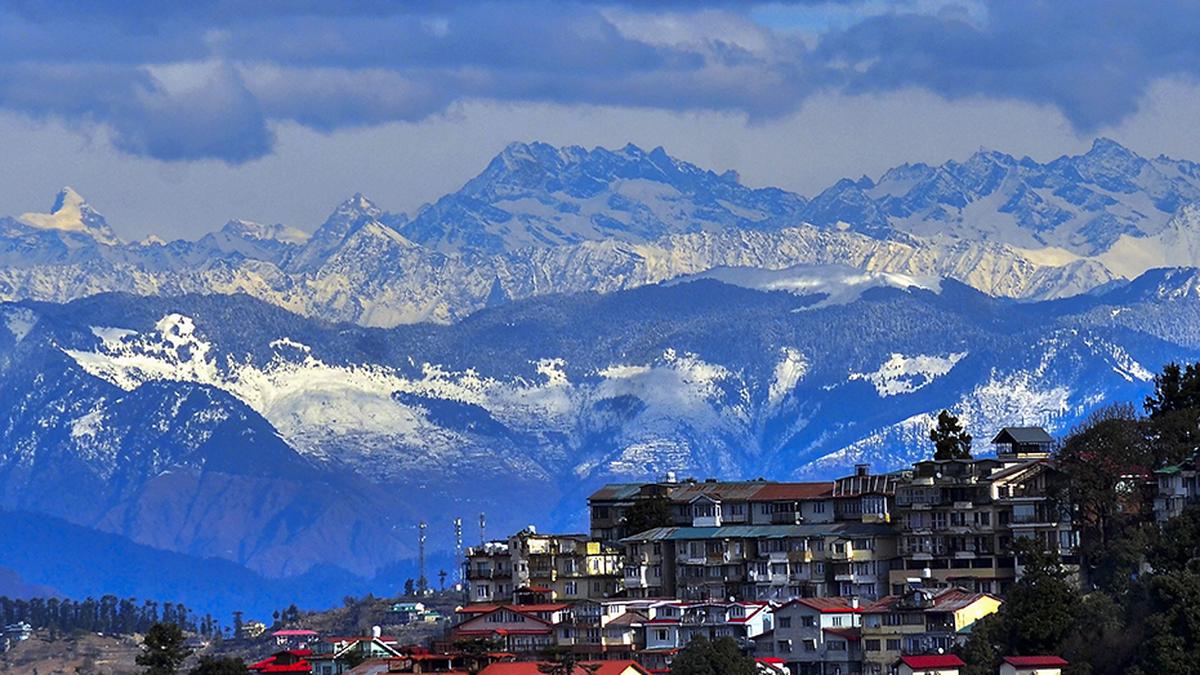
- 20 Nov 2024
In News:
In September, a trekker from Idukki, Kerala, died in Uttarakhand while attempting to scale Garur Peak due to respiratory failure. Every year, numerous tourists like this succumb to the effects of high-altitude sickness in the pristine but challenging inner Himalayas. These regions present hidden dangers due to their extreme altitudes, where thinner air and reduced oxygen can lead to potentially fatal conditions.
What is High-Altitude Sickness?
- Acute Mountain Sickness (AMS) occurs when the body struggles to acclimatize to high altitudes, typically above 8,000 feet (2,400 meters), where oxygen levels are lower.
- As altitude increases, oxygen levels decrease, leading to hypoxia (lack of oxygen). Early symptoms include:Headache, Nausea, Fatigue&Shortness of breath
- If untreated, AMS can develop into:
- High-altitude pulmonary edema (HAPE): Fluid accumulation in the lungs, leading to severe breathing problems.
- High-altitude cerebral edema (HACE): Fluid in the brain causing confusion, hallucinations, or coma.
- Both conditions are life-threatening and require immediate descent to lower altitudes.
Infrastructural Issues
- Many Himalayan regions lack adequate healthcare facilities beyond major towns like Shimla.
- Leh is an exception, with specialized facilities for high-altitude ailments, but most areas lack preventive health measures.
- Implementing health screenings at entry points to high-altitude zones (like Kinnaur or Lahaul-Spiti) could significantly improve prevention and response to AMS.
Mandatory Registration System for Tourists
- Tourist Registration: A system where tourists must register before entering remote mountain areas would allow authorities to monitor movements and provide timely medical assistance.
- Benefits:
- Quick emergency responses by having data on tourists' locations.
- Research support: Tracking demographic patterns and risk factors to better understand how altitude impacts different populations.
Early Intervention for High-Altitude Sickness
- Gradual Ascent: To allow the body to acclimatize, gradual ascent is crucial. Every 3-4 days, take a rest day and avoid increasing sleeping altitude by more than 500 meters/day.
- Medications: Doctors recommend:
- Acetazolamide to promote better oxygenation.
- Dexamethasone for reducing inflammation in severe cases.
- For those with a history of HAPE, Nifedipine may be used preventively.
- However, no medication guarantees immunity from AMS. Travelers with pre-existing conditions should consult a doctor before traveling.
Treatment Strategies
- Descent: The best treatment for AMS is to descend to lower altitudes (300-1,000 meters), where symptoms improve rapidly.
- Additional Measures: If available, supplemental oxygen or a portable hyperbaric chamber can help in emergencies.
- Medications like acetazolamide and dexamethasone can provide short-term relief but are not substitutes for descent.
Policy Recommendations
- Medical Infrastructure: Establish state-of-the-art medical facilities in high-altitude regions of the Himalayas.
- Research: Set up research centers to study high-altitude illnesses.
- Air-ambulance Services: Equip states with air-ambulance services for rapid medical evacuation in emergencies.
- Health and Safety Information: Provide accessible information on government websites and at check-in points to educate tourists on preventing and managing AMS.
Preventive Measures Before Scaling the Himalayas
- Acclimatization: Gradual ascent is essential for preventing AMS.
- Health Checks: Get a medical check-up to assess risk factors before travel.
- Medications: Consult a doctor for potential preventive medications.
- Hydration and Rest: Stay hydrated and take ample rest during the ascent.
- Monitor Symptoms: Be aware of early symptoms like headaches or nausea and stop ascending if they occur.
By addressing these measures, the risks associated with high-altitude sickness can be mitigated, improving safety for tourists and trekkers in the Himalayas.
Army Tactical Missile System (ATACMS)
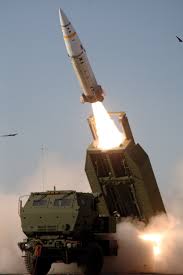
- 20 Nov 2024
In News:
- Russia reported that Ukraine fired six US-made Army Tactical Missile System (ATACMS) missiles at Bryansk, Russia, marking a significant escalation in the ongoing conflict.
- This came after US President Joe Biden authorized Ukraine to use long-range missiles to strike deeper inside Russian territory, easing previous restrictions on such weapons
About the Army Tactical Missile System (ATACMS)
- Overview:
- ATACMS is a surface-to-surface artillery weapon system designed to strike targets at much greater ranges than conventional artillery, rockets, or missiles.
- Manufacturer: Produced by Lockheed Martin, a leading US defense contractor.
- First Use: It was first used during the 1991 Persian Gulf War.
- Key Features:
- Guidance: ATACMS missiles are inertially guided ballistic missiles, capable of operating in all weather conditions.
- Range: Approximately 190 miles (305 km).
- Propulsion: It uses a single-stage, solid propellant for propulsion.
- Launch Platforms: Fired from platforms like the High Mobility Artillery Rocket System (HIMARS) and the M270 Multiple Launch Rocket System (MLRS).
- Payload: ATACMS missiles can carry cluster munitions, releasing hundreds of smaller bomblets over a targeted area, increasing their destructive power.
- Global Operators:Besides the US, ATACMS is also operated by countries such as Bahrain, Greece, South Korea, Taiwan, and the United Arab Emirates.
SanyuktVimochan 2024
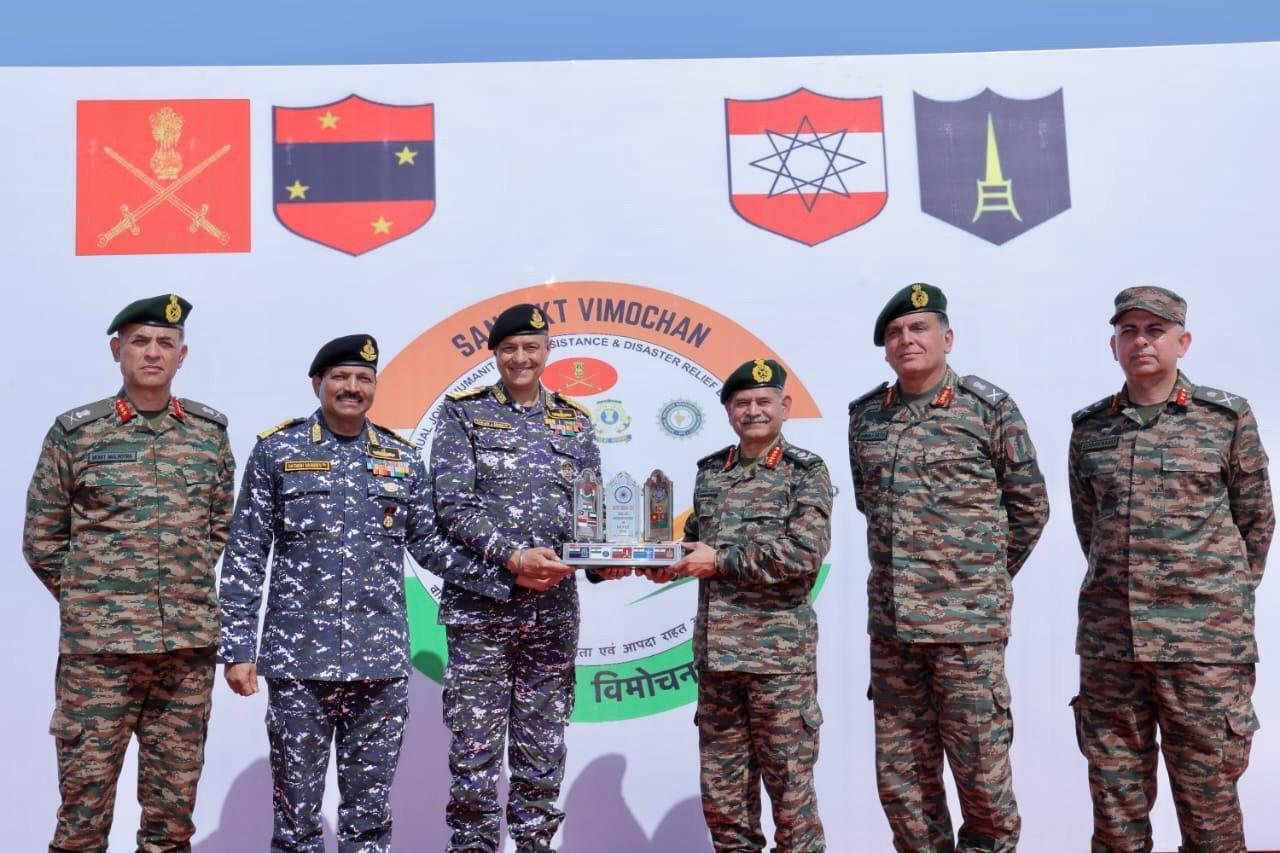
- 20 Nov 2024
In News:
Recently, the Indian Army successfully conducted the Multilateral Annual Joint Humanitarian Assistance and Disaster Relief (HADR) Exercise, 'SanyuktVimochan 2024' at Ahmedabad and Porbandar, Gujarat.
Key Highlights:
- Conducted by: Konark Corps of Southern Command, Indian Army.
- Day 1: Tabletop Exercise (TTX)
- Theme: 'Cyclone in Coastal Region of Gujarat'.
- Focused on simulating a cyclone scenario affecting the Okha-Porbandar coastline.
- Discussed disaster relief strategies and interagency cooperation to improve response readiness.
- Attended by senior officials from NDMA, Armed Forces, State Disaster Management, and industry representatives, including delegates from nine foreign countries.
- Day 2: Multi-Agency Capability Demonstration
- Held at Chowpatty Beach, Porbandar.
- Simulated Disaster Scenario: Coordinated response to a cyclone, showcasing joint operations by:
- Indian Army, Navy, Air Force, Coast Guard, NDRF, SDRF, and other Central and State agencies.
- Key actions demonstrated:
- Requisition and Surveillance: Civil administration’s request for Armed Forces' assistance, followed by area surveillance.
- Rescue Operations: Insertion of personnel to rescue casualties.
- Casualty Evacuation: Use of resources to evacuate and assist victims.
- Resuscitation and Rehabilitation: Restoration efforts for affected citizens.
- Industrial Display &Atmanirbhar Bharat Initiative:
- Showcased indigenous HADR equipment from Indian defense industries.
- Highlighted technological advancements and self-reliance in disaster management.
- SanyuktVimochan 2024 enhanced India's disaster response capabilities, ensuring a coordinated and effective approach to humanitarian assistance.
- The exercise also bolstered India’s leadership in global disaster relief, contributing to international best practices and collaborative efforts in humanitarian assistance and disaster response.
Sickle Cell Eradication

- 20 Nov 2024
In News:
- On the occasion of Janjatiya Gaurav Diwason 15th November 2024, Hon’ble Governor of Madhya Pradesh, and Chief Minister unveiled a commemorative postage stamp dedicated to "Sickle Cell Eradication - 2047" at PG College, Dhar.
- Significance:Focuses on India’s commitment to eradicate Sickle Cell Anemia by 2047, especially in tribal communities.
Sickle Cell Anemia Overview
- What is Sickle Cell Anemia?
- Genetic blood disorder leading to abnormal hemoglobin.
- Red blood cells become sickle-shaped, blocking blood flow and causing pain, organ damage, and reduced life expectancy.
- Symptoms:
- Chronic anemia causing fatigue, weakness, and pallor.
- Painful episodes (sickle cell crisis) resulting in intense pain in bones, chest, and limbs.
- Delayed growth and puberty in children.
- Treatment Processes:
- Blood Transfusions: Relieve anemia and reduce pain crises.
- Hydroxyurea: Reduces the frequency of painful episodes.
- Gene Therapy: Includes bone marrow or stem cell transplants and methods like CRISPR for treatment.
Challenges of Sickle Cell Disease (SCD) in India
- Tribal Population Impact:
- India has the world’s largest tribal population (~67.8 million, 8.6% of total population as per 2011 Census).
- Sickle Cell Disease (SCD) is identified as one of the top 10 health issues for tribal communities.
- Challenges:
- Limited diagnostic and treatment facilities in remote tribal regions.
- Lack of awareness about genetic counseling and preventive care.
- High treatment costs (e.g., CRISPR therapy costs USD 2-3 million).
- Bone marrow donor availability is a challenge.
Government Initiatives for SCD Management
- National Sickle Cell Anaemia Elimination Mission (2023):
- Objective: Eliminate SCD as a public health issue by 2047.
- Key Features:
- Community Screening: Mass screening to identify at-risk individuals.
- Genetic Counseling: Educating families on genetic nature of SCD.
- Advanced Diagnostics: Use of tools like HPLC for accurate diagnosis.
- Prenatal Testing: Partnership with organizations like Sankalp India.
- Newborn Screening: AIIMS Bhopal provides early detection.
- Technology: A mobile app and National Sickle Cell Portal for tracking data.
- Progress:Over 3.37 crore people screened, with 3.22 crore confirmed negative.
- Target Groups:Focus on children, adolescents, youth, and adults for screening, counseling, and care.
- National Health Mission (NHM) (2013):
- Emphasizes disease prevention and management, particularly for hereditary conditions like sickle cell.
- Facilitates medications like hydroxyurea for treatment.
- National Guidelines for Stem Cell Research (2017):Regulates stem cell therapies and allows Bone Marrow Transplantation (BMT) for SCD.
- National Guidelines for Gene Therapy (2019):Guidelines for gene therapies for inherited disorders, including CRISPR treatment for SCD.
- State Haemoglobinopathy Mission of Madhya Pradesh:Addresses screening and management challenges of SCD in the state.
Global Awareness and Observances
- World Sickle Cell Awareness Day:
- Observed on 19th June annually, with the 2024 theme: "Hope Through Progress: Advancing Sickle Cell Care Globally".
- Aimed at raising awareness about SCD struggles, improving patient care, and finding a cure.
Bharat NCX 2024
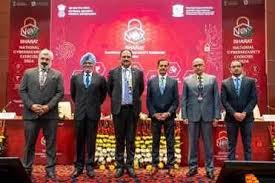
- 19 Nov 2024
In News:
The Bharat National Cyber Security Exercise (Bharat NCX 2024), inaugurated on November 18, 2024, is a key initiative aimed at strengthening India’s cybersecurity resilience. This 12-day exercise is designed to equip cybersecurity professionals and national leadership with the skills to manage complex cyber threats, enhance incident response capabilities, and improve strategic decision-making. The event is organized by the National Security Council Secretariat (NSCS) in collaboration with Rashtriya Raksha University (RRU).
Key Details of Bharat NCX 2024:
- Cyber Defense and Incident Response Training
- The exercise focuses on defensive cybersecurity skills, preparing participants to defend against cyberattacks.
- Live-fire simulations will provide hands-on experience with real-time cyberattacks on IT and Operational Technology (OT) systems.
- Strategic Decision-Making Simulations
- A core component is the Strategic Decision-Making Exercise, where senior management from across sectors will simulate decision-making in a national-level cyber crisis.
- This exercise enhances their ability to respond swiftly and strategically in high-pressure scenarios.
- CISO’s Conclave
- The CISO's Conclave brings together Chief Information Security Officers (CISOs) from government, public, and private sectors.
- The conclave will feature panel discussions on the latest cybersecurity trends and government initiatives, allowing professionals to exchange knowledge and collaborate.
- Bharat Cybersecurity Startup Exhibition
- An exhibition will highlight innovative cybersecurity solutions developed by Indian startups. This showcases the growing role of the private sector in strengthening India’s cybersecurity infrastructure.
- Leadership Engagement and Capacity Building
- Leadership engagement is a key feature, ensuring that high-level decision-makers are prepared to lead national cybersecurity efforts.
- The exercise will foster a unified approach to dealing with emerging cyber threats.
Significance for India’s Cybersecurity Strategy
- National Cybersecurity Resilience: Bharat NCX 2024 is a vital step in fortifying India’s cybersecurity defenses, preparing professionals and leadership to address the evolving cyber threat landscape.
- Collaboration and Innovation: The inclusion of industry stakeholders, startups, and leaders from various sectors underscores the importance of collaboration in developing innovative solutions to cybersecurity challenges.
- Capacity Building: The exercise aims to improve decision-making at all levels, helping India build a robust cybersecurity framework to secure its critical infrastructure and respond effectively to potential cyber crises.
Grand Commander of the Order of the Niger
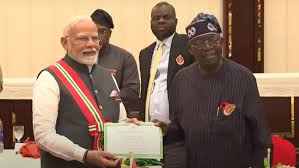
- 19 Nov 2024
In News:
PM Modi receives Nigeria’s second-highest national award.
Key Events and Achievements
- Award Conferred:
- Award Name: Grand Commander of the Order of the Niger (GCON).
- Significance: Nigeria’s second-highest national award, conferred on Prime Minister Narendra Modi.
- Historical Context: Modi becomes the second foreign dignitary to receive this award, after Queen Elizabeth in 1969.
Strategic and Developmental Ties Between India and Nigeria
- First Visit in 17 Years: Modi’s visit is the first by an Indian PM to Nigeria in 17 years, underscoring the significance of strengthening bilateral ties.
- Economic Cooperation:
- Over 200 Indian companies have invested around $27 billion in Nigeria across key sectors, making India a major economic partner.
- India has provided $100 million in development assistance through concessional loans and is actively involved in capacity-building training programs in Nigeria.
- MoUs Signed:
- Three Memoranda of Understanding (MoUs) were signed in the fields of:
- Cultural Exchange.
- Customs Cooperation.
- Survey Cooperation.
- Three Memoranda of Understanding (MoUs) were signed in the fields of:
- Relief Aid: Modi announced the dispatch of 20 tonnes of relief supplies to help Nigeria recover from the devastating floods that affected the country last month.
Diplomatic Discussions and Initiatives
- Strategic Partnership: Modi described the India-Nigeria partnership as one with immense potential in sectors like defence, energy, technology, trade, health, and education.
- Indian Expatriate Community: Modi acknowledged the 60,000-strong Indian diaspora in Nigeria, recognizing their role as a pillar of bilateral ties.
- Support for Africa:
- Modi highlighted India’s support for the African Union’s membership in the G20, an outcome of the India-hosted G20 summit in 2023.
- Nigeria’s Role: He noted Nigeria’s positive influence on Africa and its importance as a key partner in India’s Africa engagement.
Broader Implications for International Relations
- India-Nigeria Security Cooperation:
- The National Security Advisors (NSA) of India and Nigeria held in-depth discussions on counter-terrorism, extremism, and cybersecurity challenges.
- India and Nigeria are committed to jointly addressing global threats such as arms smuggling and international crime.
- India's Role as a Development Partner:
- India’s growing role as a development partner for African nations is becoming increasingly important, exemplified by Nigeria’s close ties with India.
- Global Diplomacy and Soft Power:
- Modi’s award and visit reflect India’s growing influence in Africa and its emphasis on fostering ties with resource-rich and strategically located nations like Nigeria.
- The Grand Commander of the Order of the Niger is also a reflection of the soft power India is wielding globally.
Key Facts about Nigeria:
- Location: Nigeria is located in West Africa, bordering Niger, Chad, Cameroon, and Benin, with access to the Atlantic Ocean.
- Significance:
- Known as the “Giant of Africa” due to its large population and economic power.
- It has the largest economy in Africa, largely driven by its oil reserves.
Graded Response Action Plan (GRAP-IV)
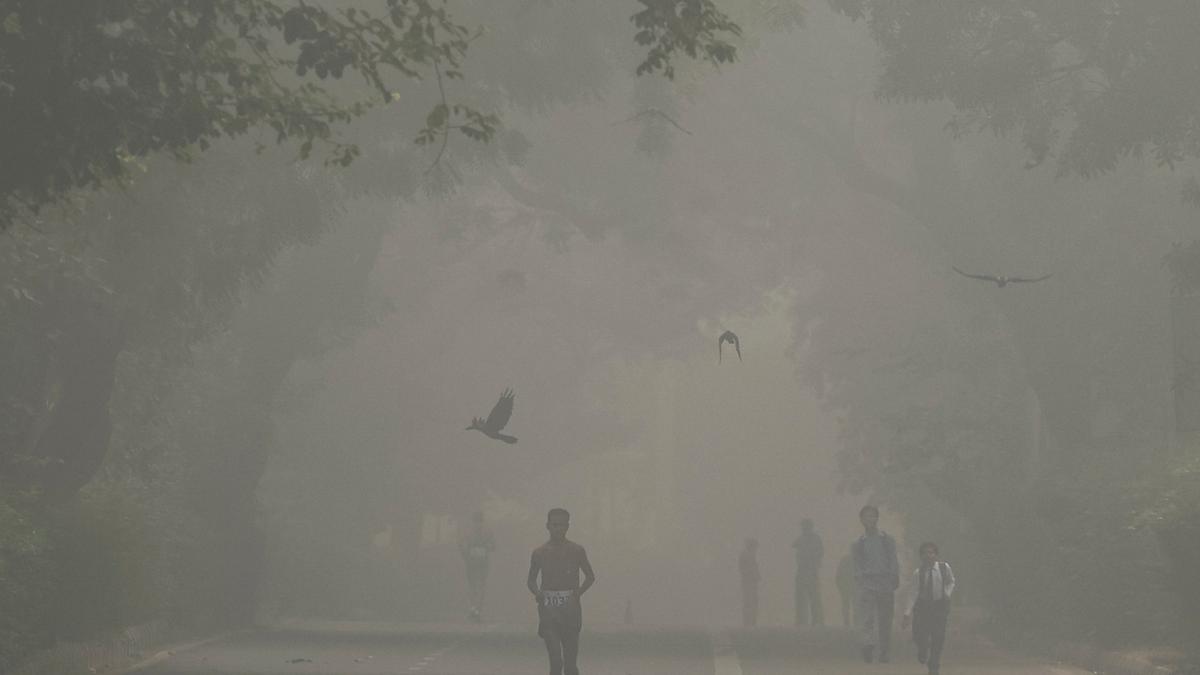
- 19 Nov 2024
In News:
As Delhi’s AQI worsened, the Commission for Air Quality Management issued the order to activate Stage-IV of the Graded Response Action Plan.
Restrictions Under GRAP-IV in Delhi-NCR
- Truck Movement:
- Banned except for essential goods and trucks using clean fuels (LNG, CNG, BS-VI diesel, or electric).
- Non-essential light commercial vehicles registered outside Delhi are also banned unless they are CNG or BS-VI diesel or electric vehicles (EVs).
- Delhi-registered BS-IV or older diesel vehicles (medium and heavy goods vehicles) are banned, except for those in essential services.
- Construction Activities:Suspension of all construction work, including public projects like highways, roads, flyovers, power lines, pipelines, etc.
- Schools and Work:
- Online classes for students of Classes 6 to 9 and Class 11.
- Work from home (WFH) recommendations for 50% office capacity in NCR.
- Central government employees may also be asked to work from home.
- Offline classes for Classes 10 and 12 continue, but schools for other classes must shift to online mode.
- Other Measures:
- State governments may impose additional measures such as:
- Closure of colleges.
- Odd-even vehicle scheme.
- Restrictions on non-essential commercial activities.
- State governments may impose additional measures such as:
About GRAP (Graded Response Action Plan)
- Purpose: A plan to reduce air pollution in the Delhi-NCR region based on AQI levels.
- Approved By: Supreme Court in 2016 (M.C. Mehta v. Union of India).
- Notified by MoEFCC: 2017.
- Implementation Authority: CAQM (Commission for Air Quality Management).
Stages of GRAP
GRAP is an incremental system, with measures activated as air quality deteriorates:
- Stage 1: Poor AQI (201-300) – Basic pollution control measures.
- Stage 2: Very Poor AQI (301-400) – Enhanced measures.
- Stage 3: Severe AQI (401-450) – Stricter actions like shutting down industries.
- Stage 4: Severe Plus AQI (Above 450) – Most stringent restrictions, as activated on November 18, 2024.
Air Quality Index (AQI)
- Introduced: 2014, by Central Pollution Control Board (CPCB).
- Categories:
- Good: 0-50
- Satisfactory: 51-100
- Moderately Polluted: 101-200
- Poor: 201-300
- Very Poor: 301-400
- Severe: 401-450
- Severe Plus: 451 and above (current status in Delhi).
- Pollutants Considered: PM10, PM2.5, NO?, SO?, CO, O?, NH?, and Pb.
- Measurement: 24-hour average values for PMs, and 8-hour averages for CO and O?.
Commission for Air Quality Management (CAQM)
- Established: Under the Commission for Air Quality Management in National Capital Region (NCR) Act, 2021.
- Mandate: To coordinate, research, and manage air quality issues in the NCR and adjoining areas.
- Composition: Includes government officials, technical experts, and NGO representatives.
- Jurisdiction: Covers Delhi and parts of Haryana, Uttar Pradesh, and Rajasthan.
Nepal-Bangladesh Power Transfer via India
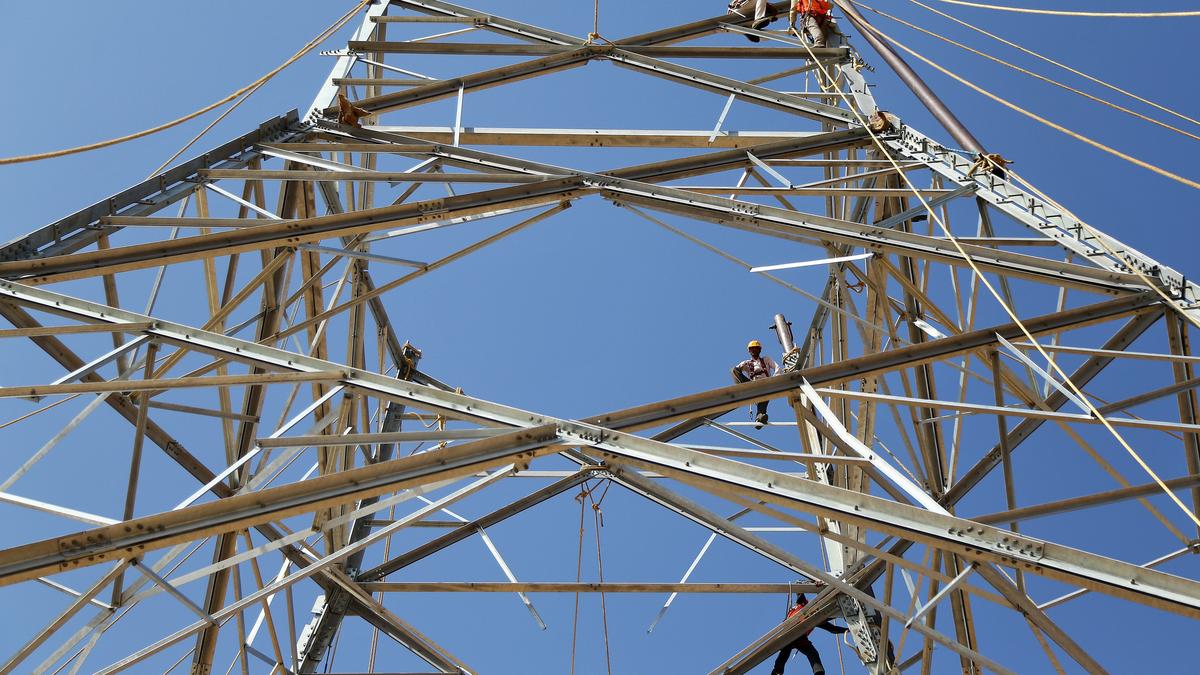
- 19 Nov 2024
In News:
Nepal starts exporting energy to Bangladesh with Indian grid support.
Significance of the Power Transfer:
- Energy Cooperation:
- A major step in regional energy cooperation among Nepal, India, and Bangladesh.
- Strengthens sub-regional connectivity in the power sector.
- Nepal’s Hydropower Potential:
- Nepal, a Himalayan nation, possesses untapped hydropower resources, and this agreement opens the door for future cross-border electricity cooperation.
- Nepal’s energy exports are a green energy initiative, supporting sustainable industrial growth in Bangladesh and regional prosperity.
- Electricity Crisis in Bangladesh:
- Bangladesh is facing an ongoing electricity shortage, worsened by the suspension of power supply from Adani’s Godda plant and the maintenance of the Payra thermal unit.
- The addition of 40 MW of Nepalese hydroelectric power aims to alleviate the energy shortfall in Bangladesh.
Tripartite Power Sales Agreement:
- Agreement Details:
- The agreement for power transfer was signed in October 2023 between:
- NTPC Vidyut Vyapar Nigam (NVVN) (India)
- Nepal Electricity Authority (NEA) (Nepal)
- Bangladesh Power Development Board (BPDB) (Bangladesh).
- Power Export: Nepal has started exporting 40 MW of electricity, which marks a significant milestone in trilateral power cooperation.
- The agreement for power transfer was signed in October 2023 between:
Key Entities Involved:
- NTPC Vidyut Vyapar Nigam (NVVN):
- A wholly owned subsidiary of NTPC Ltd. (National Thermal Power Corporation), created to facilitate power trading.
- NVVN is diversifying into renewables, e-mobility, and green fuel solutions.
- NTPC Ltd.:
- A Maharatna PSU under India’s Ministry of Power, established to develop power resources in India.
- Involved in large-scale power generation and clean energy initiatives
Guru Ghasidas-TamorPingla Tiger Reserve
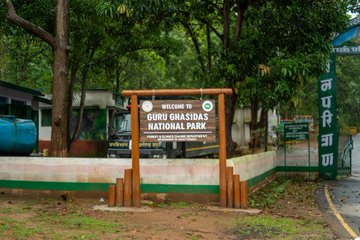
- 19 Nov 2024
In News:
The Guru Ghasidas-TamorPingla Tiger Reserve in Chhattisgarh has been officially notified as India's 56th tiger reserve, marking a significant milestone in the country's conservation efforts. Here's an overview of this new reserve:
Key Details:
- Location: The tiger reserve is located across the Manendragarh-Chirmiri-Bharatpur, Korea, Surajpur, and Balrampur districts of Chhattisgarh.
- Area: The reserve spans 2,829.38 square kilometers and includes both core and buffer zones.
- Core/critical habitat: 2,049.2 sq. km (includes the Guru Ghasidas National Park and TamorPingla Wildlife Sanctuary).
- Buffer zone: 780.15 sq. km.
- Rank: It is the third largest tiger reserve in India, after the Nagarjunasagar-Srisailam Tiger Reserve (Andhra Pradesh) and Manas Tiger Reserve (Assam).
Connectivity:
The reserve forms part of a landscape complex that extends over nearly 4,500 sq. km and is interconnected with other major tiger reserves:
- Sanjay Dubri Tiger Reserve (Madhya Pradesh) to the north.
- Bandhavgarh Tiger Reserve (Madhya Pradesh) to the west.
- Palamau Tiger Reserve (Jharkhand) to the east.
This connectivity supports greater wildlife movement, reducing the risk of inbreeding and strengthening the overall conservation efforts for the tiger population.
Biodiversity:
The Guru Ghasidas-TamorPingla Tiger Reserve is ecologically rich, harboring a wide array of species:
- 753 species have been documented, including:
- 230 bird species.
- 55 mammal species, including several threatened species such as tigers, leopards, sloth bears, and wolves.
- A variety of invertebrates, especially insects.
- The reserve's terrain includes dense forests, streams, rivers, and varied elevations, making it an ideal habitat for tigers and other wildlife.
Ecological Importance:
- Situated in the Chota Nagpur and Baghelkhand plateaus, the reserve has varied landscapes that contribute to its ecological diversity. The region's tropical climate and dense forests make it a critical habitat for tigers and other wildlife.
- The reserve's core area forms an important critical tiger habitat, providing a sanctuary for tigers to thrive with minimal human disturbance.
Conservation Impact:
With the addition of this tiger reserve, Chhattisgarh now boasts four tiger reserves, complementing the existing Udanti-Sitanadi, Achanakmar, and Indravati reserves. This bolsters the state's and the country's ongoing efforts to protect and conserve tigers, which are a keystone species in maintaining ecological balance.
Procedural Steps for Notification:
- Identification: The state government identifies a significant ecological area with potential for tiger conservation.
- NTCA Approval: After a thorough assessment, the National Tiger Conservation Authority (NTCA) evaluates and approves the proposal.
- State Notification: The state government officially notifies the area as a tiger reserve under the Wildlife Protection Act of 1972.
- Implementation: The state, with NTCA support, begins implementing conservation and management strategies.
Mystery mollusk
- 18 Nov 2024
In News:
- In a groundbreaking discovery, researchers have identified a new species of sea slug deep within the ocean’s midnight zone—a place that lies between 3,300 to 13,100 feet (1,000 to 4,000 meters) below the ocean's surface.
- The species, named Bathydeviuscaudactylus, is a glowing, swimming sea slug that exhibits several unique adaptations to survive in the extreme conditions of the deep ocean.
Key Features of BathydeviusCaudactylus
- Glowing Bioluminescence: One of the most striking features of this newly discovered mollusk is its ability to glow with bioluminescence. Bathydevius emits a soft, starry glow, an adaptation seen in only a few deep-sea species. The glowing feature plays a role in distracting predators and even includes the ability to detach glowing projections from its tail as a decoy.
- Unique Body Structure: Unlike most sea slugs that typically live on the seafloor, Bathydevius has evolved to thrive in the open water. It has a gelatinous, paddle-like tail and a large, bowl-shaped hood that covers its internal organs, making it appear somewhat like a “megaphone with a feathered tail.” This structure helps it capture prey, such as mysid shrimp, which it traps using its hood.
- Adaptations for Deep Sea Life: Bathydevius' transparent body, along with its ability to drift with ocean currents and flex its body to move vertically in the water column, allow it to navigate the depths of the midnight zone. Its hermaphroditic nature means it carries both male and female reproductive organs, allowing it to reproduce by attaching to the seafloor and laying eggs when needed.
Discovery and Exploration
- The unusual species was first encountered by researchers from the Monterey Bay Aquarium Research Institute (MBARI) during a deep-sea dive in February 2000 using a remotely operated vehicle (ROV) called Tiburon. Since then, more than 150 sightings have been made of the creature in the waters off the Pacific Coast of North America, ranging from Oregon to Southern California.
- Interestingly, similar creatures have been observed by the National Oceanic and Atmospheric Administration (NOAA) in the Mariana Trench, suggesting that Bathydevius may have a wider range than initially thought. A specimen was eventually collected for further study, revealing its identity as a nudibranch, a type of soft-bodied marine mollusk.
Survival Tactics and Behavior
- Prey Capture: Unlike typical sea slugs that scrape food from the seafloor, Bathydevius uses its large hood to trap crustaceans like mysid shrimp. This allows it to thrive in the open ocean where food can be harder to obtain.
- Defensive Mechanisms: When threatened, Bathydevius can glow with bioluminescence to distract predators. This glow, which creates a starry appearance across its back, has been seen in other deep-sea species but is rare in nudibranchs. Additionally, it can detach part of its tail (a glowing projection) to confuse attackers, similar to how lizards shed their tails as a defense mechanism.
- Reproduction and Movement: As a hermaphrodite, Bathydevius has the ability to self-fertilize or mate with other individuals. During reproduction, it descends to the seafloor and uses its foot to temporarily attach, releasing eggs before returning to its swimming lifestyle. It also relies on its flexible, transparent body to blend in with the surroundings and evade predators.
India Successfully Tests Long-Range Hypersonic Missile
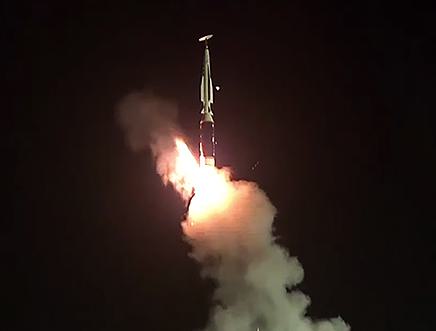
- 18 Nov 2024
In News:
- India has made a major advancement in its defense capabilities with the successful flight test of its first long-range hypersonic missile, marking a historic moment in the country's defense technology.
- The test was conducted, by the Defence Research and Development Organisation (DRDO), took place off the coast of Odisha from the Dr. A.P.J. Abdul Kalam Island.
- The missile has a range of over 1,500 km and is capable of carrying various payloads for all branches of the armed forces.
Key Highlights of the Test:
- Successful Trial: The missile successfully completed its flight test with high accuracy, confirmed by the data gathered from down-range ship stations. It performed a series of terminal maneuvers, validating its precision targeting capabilities.
- Speed and Range: The missile achieved hypersonic speeds (Mach 6), or six times the speed of sound, and is designed for a range of more than 1,500 km, far exceeding the capabilities of many conventional missiles.
- Indigenous Development: This missile is a product of DRDO's indigenous efforts, developed with contributions from the Dr. APJ Abdul Kalam Missile Complex in Hyderabad, as well as other DRDO laboratories and industry partners.
What are Hypersonic Missiles?
- Definition: Hypersonic missiles are defined as weapons that travel at speeds greater than Mach 5 (five times the speed of sound), or about 3,836 miles per hour (6,174 km/h). At such speeds, they are incredibly difficult to track and intercept, posing a challenge for traditional missile defense systems.
- Types:
- Hypersonic Glide Vehicles (HGVs): These are launched from rockets and glide towards their target.
- Hypersonic Cruise Missiles (HCMs): These missiles use air-breathing engines like scramjets for sustained flight at hypersonic speeds.
- Advantages: Hypersonic missiles offer several advantages, including:
- Responsive strike capability: They can target time-sensitive threats quickly and with high precision.
- Manoeuvrability: Unlike ballistic missiles, which follow a predictable parabolic trajectory, hypersonic missiles can change course mid-flight, making them harder to defend against.
- Challenges:
- Heat and air resistance: Traveling at such high speeds generates tremendous heat due to friction, presenting engineering challenges.
- Tracking and interception: Their low-altitude flight and high speeds make them harder to detect and intercept with existing missile defense systems.
- High costs: Developing and deploying hypersonic weapons comes at a higher cost than traditional missile systems.
Global Context of Hypersonic Weaponry
- Russia and China: Both Russia and China are leaders in hypersonic missile technology. Russia has already deployed the Kinzhal hypersonic missile in Ukraine, demonstrating its effectiveness in combat situations.
- United States: The U.S. is also making significant advancements, with contracts like the Long Range Hypersonic Weapon (LRHW), awarded to Lockheed Martin for continued development.
- Other Nations: Countries such as France, Germany, Australia, Japan, and Israel are also actively working on developing hypersonic missile systems.
WIPO 2024 Report

- 18 Nov 2024
In News:
India continues to make significant strides in intellectual property filings, ranking among the top 10 countries for patents, trademarks, and industrial designs.
India’s Performance in Global Intellectual Property (IP) Filings:
- Overall Growth: India continues to make significant strides in intellectual property filings, ranking among the top 10 countries for patents, trademarks, and industrial designs.
- Patent Applications: India recorded a +15.7% growth in patent applications in 2023, marking its fifth consecutive year of double-digit growth, placing it among the top contributors to global patent filings.
- Trademark Filings: India ranks 4th globally in trademark filings, reflecting the country’s growing focus on brand protection.
- Industrial Designs: India saw a 36.4% surge in industrial design applications, emphasizing creativity and design innovation.
India’s Global Patent Ranking:
- Global Rank: India ranks 6th globally for patent applications with 64,480 filings in 2023.
- Resident Filings: For the first time, over half (55.2%) of India’s patent applications were filed by residents, highlighting growing domestic innovation.
- Patent Grants: A 149.4% increase in granted patents in 2023 underscores the efficiency of India’s patent office and the rising quality of applications.
Key Metrics and Trends in Patents:
- Patent-to-GDP Ratio: India’s patent-to-GDP ratio grew from 144 in 2013 to 381 in 2023, signaling a knowledge-driven economy.
- Sectoral Diversity: India’s patent filings span diverse sectors, including agriculture, pharmaceuticals, IT, and renewable energy, showcasing the broad scope of innovation.
Surge in Industrial Design Applications:
- Growth Rate: A 36.4% increase in industrial design filings in 2023, reflecting a shift towards value-added industries focused on product design and functionality.
- Leading Sectors: Key sectors driving design filings include textiles, accessories, tools, machines, and health & cosmetics.
- Manufacturing Transformation: This growth signals India’s transition from basic manufacturing to a more design-driven, innovation-focused ecosystem.
Trademark Filings:
- Global Rank: India ranks 4th globally in trademark filings with a 6.1% increase over the previous year.
- Resident Filings: Nearly 90% of trademark filings in India were made by domestic entities, highlighting a strong focus on brand protection.
- Active Trademarks: India now has over 3.2 million active trademarks, the second-largest in the world, reflecting a competitive and dynamic domestic marketplace.
Sectoral Trends in Trademarks:
- Leading Sectors: Health (21.9%), agriculture (15.3%), and clothing (12.8%) were the top sectors for trademark filings, underscoring India’s leadership in pharmaceuticals, food production, and fashion.
- Global Expansion: The rise in trademark filings also mirrors the increasing global demand for Indian products and services.
India’s Contribution to Global IP Growth:
- Global Trend: In 2023, a record 3.55 million patent applications were filed worldwide, with India contributing significantly to this surge, particularly in emerging markets.
- Local Innovation Focus: India’s rising resident filings in patents and trademarks point to a shift towards local innovation, with more Indian businesses and startups protecting their intellectual property.
Government Initiatives Fueling IP Growth:
- National IPR Policy: Launched in 2016, this policy fosters innovation, improves IP awareness, and supports domestic IP development.
- Key Measures: Modernization of IP offices, improvements in procedural requirements, and IP education initiatives.
- Atmanirbhar Bharat: Government campaigns like Atmanirbhar Bharat have supported local innovation and made Indian businesses more IP-conscious.
- Startup India & Atal Innovation Mission: These initiatives have further strengthened India’s innovation ecosystem by promoting entrepreneurship, research, and technological advancement.
- Startup India: Over 1,49,000 recognized startups as of September 2024.
- Atal Innovation Mission: More than 10,000 Atal Tinkering Labs in schools and 3,500+ startups incubated across India.
Assam’s Semiconductor Plant
- 18 Nov 2024
In News:
A Semiconductor Plant has been set up in Morigaon, Assam, projected for completion by mid-2025.
Overview of the Morigaon Semiconductor Plant:
- Location: Morigaon, Assam.
- Investor: Tata Semiconductor Assembly and Test Pvt Ltd (TSAT).
- Investment: ?27,000 crore.
- Production Capacity: Expected to produce 48 million semiconductor chips daily.
- Technology: Utilizes advanced packaging technologies such as flip chip and Integrated System in Package (ISIP).
- Sectors Served: Automotive, electric vehicles, telecommunications, consumer electronics.
- Completion: Projected to be completed by mid-2025.
- Job Creation: Expected to generate 15,000 direct jobs and 11,000-13,000 indirect jobs.
- Market Reach: Will serve both domestic and international markets, enhancing India's position in the global semiconductor supply chain.
India's Semiconductor Industry and Market Growth:
- Market Size (2023): Estimated at $38 billion.
- Projected Growth: Expected to grow to $109 billion by 2030.
- Government Initiatives: Several initiatives have been launched to promote domestic semiconductor manufacturing, including the India Semiconductor Mission (ISM) and the Semicon India Program.
India Semiconductor Mission (ISM):
- Objective: To build a self-reliant semiconductor ecosystem in India.
- Launched: 2021 with a financial outlay of ?76,000 crore.
- Scope: Covers semiconductor fabs, packaging, display manufacturing, Outsourced Semiconductor Assembly and Testing (OSAT), sensors, and other critical components.
- Support Schemes: Includes Modified Schemes for setting up Semiconductor and Display Fabs, as well as support for Compound Semiconductors, Silicon Photonics, and Sensors.
Key Projects in Semiconductor Industry:
- Morigaon Facility: Part of the broader government-backed initiative to enhance semiconductor production in India.
- Other Facilities: New semiconductor units by Tata Electronics (Dholera, Gujarat), CG Power (Sanand, Gujarat), and KaynesSemicon Pvt Ltd (Sanand, Gujarat).
- Modernization: The Semi-Conductor Laboratory in Mohali is being modernized, alongside initiatives like the Scheme for Promotion of Manufacturing of Electronic Components and Semiconductors (SPECS) and the Production Linked Incentive (PLI) Scheme.
Strategic Importance of Semiconductors:
- Role in Modern Electronics: Semiconductors are critical for a wide range of devices like computers, smartphones, solar cells, LEDs, and integrated circuits.
- Global Dependence: The global semiconductor market has significant reliance on suppliers like Taiwan (44%), China (28%), and South Korea (12%).
- Global Shortage: The 2021 chip shortage highlighted the vulnerability of global supply chains, prompting efforts by countries to boost domestic semiconductor production.
Government Support for Semiconductor Manufacturing:
- Financial Incentives: The government offers fiscal support for setting up semiconductor manufacturing plants:
- 50% of project cost support under the Semiconductor Fab Scheme and the Display Fab Scheme.
- Support for Compound Semiconductors and Chips to Startup (C2S) initiatives.
- Training 85,000 engineers through the C2S Programme in collaboration with academic institutions, R&D organizations, and MSMEs.
e-Tarang System
- 18 Nov 2024
In News:
Recently, the Ministry of Defence launched the AI-enabled e-Tarang System.
Key Highlights:
- Development Collaboration: Created in partnership with Bhaskaracharya National Institute for Space Applications and Geo-informatics (BISAG-N).
- Purpose:
- Improve planning for interference-free operation of defence equipment during both wartime and peacetime.
- Enable automated, efficient planning and management of Defence Spectrum.
- Support the development of newer technologies in higher frequency bands.
- Facilitate rapid decision-making and integration of critical modern defence technologies.
BISAG-N Overview:
- Status: Autonomous Scientific Society under the Ministry of Electronics & Information Technology (MeitY), Government of India.
- Key Roles:
- Technology development and management.
- Research and development in geo-spatial technologies.
- National and international cooperation in geo-spatial fields.
- Capacity building and entrepreneurship development in geo-spatial technology.
- Core Domains:
- Satellite Communication
- Geo-informatics
- Geo-spatial Technology
Joint Electromagnetic Board (JEMB) – Annual Meeting Highlights:
- Chairperson: Air Marshal Jeetendra Mishra, Deputy Chief of Integrated Defence Staff (Operations).
- Attendees: Senior officers from the Indian Army, Navy, Air Force, DRDO, DDP, and industry.
- Agenda: Focused on joint operations and integration in several areas:
- Electronic Warfare (EW)
- Signature Management
- Emerging Technologies
- Electromagnetic Interference/Compatibility (EMI/EMC)
- Spectrum Management
- Human Resource Management
- Key Outcome:
- Introduction of the AI-enabled e-Tarang System to enhance Defence Spectrum management.
- Release of the Technical News Letter (TNL) 2024, outlining future technologies for modern warfare.
- Development of a roadmap to enhance Spectrum Warfare capabilities and integration of EW assets across the three Services.
- Successful joint EW exercise conducted in September 2024, promoting the principle of “Victory through Jointness”.
Objective of the Meeting:
- Goal: Achieve synergy in joint electronic warfare operations across the Services.
- Focus: Establish technology development and training priorities for the future.
Exercise PoorviPrahar
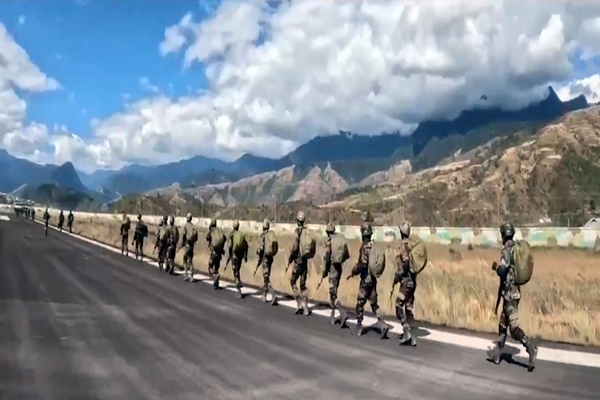
- 17 Nov 2024
In News:
- From November 10 to 18, 2024, the Indian Army is conducting a high-intensity tri-services exercise named PoorviPrahar in the forward areas of Arunachal Pradesh.
- The exercise aims to enhance the combat effectiveness and coordination between the Indian Army, Navy, and Air Force, focusing on integrated joint operations in the challenging mountainous terrain of the region.
About Exercise PoorviPrahar
Objective: The primary goal of Exercise PoorviPrahar is to hone the combat readiness and synergy across the three branches of the Indian Armed Forces. It is designed to improve their ability to conduct integrated joint operations, especially in the difficult terrain of Arunachal Pradesh, which is crucial due to the region's strategic location along India's eastern frontier.
Key Features of the Exercise:
- Multidomain Integration:The exercise involves land, air, and sea operations, demonstrating India's capability to conduct multi-domain operations. This showcases the Indian Armed Forces' preparedness to tackle threats across all three domains simultaneously.
- Advanced Military Platforms:
- Aircraft: Advanced fighter jets, reconnaissance aircraft.
- Helicopters: Including Chinook heavy-lift helicopters and Advanced Light Helicopters (ALH Rudra).
- Artillery: The exercise makes use of the M777 Ultra-Light Howitzers, which provide mobility and precision firepower in rugged terrains.
- Swarm Drones and Loitering Munitions: These cutting-edge technologies enable precision strikes and enhanced situational awareness, contributing to more flexible and adaptive operations.
- Technological Integration:
- The exercise integrates next-generation technologies like Swarm Drones, Loitering Munitions, and First-Person View (FPV) Drones. These tools enhance operational flexibility, improve situational awareness, and enable precision in strike capabilities, marking a significant advancement in India's military technology.
- Operational Coordination:A core component of the exercise is the development of a Common Operating Picture (COP). This system integrates real-time data from land, air, and sea operations, improving coordination and decision-making. The system relies on AI-driven analytics and satellite communications, enabling rapid information sharing and quicker response times.
- Tactical Focus on Mountain Warfare:Arunachal Pradesh, with its mountainous and rugged terrain, is the perfect setting for honing skills required for mountain warfare. The region’s proximity to India’s border with China makes it a critical area for India’s defense strategy.
Key Takeaways:
- Integrated Joint Operations: The exercise focuses on improving the coordination between the Army, Navy, and Air Force to execute seamless operations across land, air, and sea.
- Advanced Technology Integration: The exercise features the use of Swarm Drones, Loitering Munitions, and AI-driven systems to enhance precision, situational awareness, and overall operational flexibility.
- Mountain Warfare Expertise: Conducted in the mountainous terrain of Arunachal Pradesh, the exercise is crucial for preparing the Indian Armed Forces to operate effectively in such challenging landscapes.
- Strategic Posture: The exercise reaffirms India’s ability to defend its Eastern frontier and maintain a robust defense posture in the face of potential threats in the region.
Unified Complex Radio Antenna
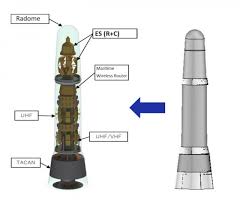
- 17 Nov 2024
In News:
- India and Japan recently signed a Memorandum of Implementation (MoI) to co-develop the UNICORN (Unified Complex Radio Antenna) mast for deployment on Indian Navy ships. This pact marks a significant milestone as it is India's first military technology transfer agreement with Japan.
- The deal follows a 2015 agreement on the transfer of defense equipment and technology, further strengthening defense ties between the two countries.
- The UNICORN mast is a cutting-edge communication and radar system designed to enhance the stealth characteristics of naval vessels. This agreement is seen as an important step towards deepening India-Japan defense cooperation.
What is UNICORN?
The UNICORN mast is an advanced, integrated antenna system that combines several communication and radar components into a single conical structure or radome (a radar-absorbing dome). It is designed to reduce the radar cross-section (RCS) of ships, improving their stealth capabilities.
Key features of the UNICORN mast include:
- Integration of multiple antennas: It consolidates various antennas used for tactical data links, communications, and navigation systems (e.g., TACAN - Tactical Air Navigation System).
- Stealth enhancement: By reducing the number of exposed components and consolidating them into a single radome, the mast significantly lowers the ship’s radar signature, making it harder to detect.
- Improved performance: The mast design minimizes mutual interference between antennas, enhances maintainability, and increases lightning resistance.
- Space efficiency: It saves valuable below-deck space and reduces ship-building time by integrating multiple systems into one mast.
The UNICORN system is currently deployed on Mogami-class frigates of the Japan Maritime Self-Defence Force.
India-Japan Defense Cooperation
- 2015 Defense Technology Transfer Agreement: This pact established a framework for defense cooperation between India and Japan, paving the way for joint projects like the UNICORN mast.
- Bilateral Military Exercises:
- Veer Guardian 2023: A bilateral exercise conducted between the Japan Air Self Defence Force (JASDF) and the Indian Air Force (IAF), which deepened defense interoperability between the two nations.
- Tarang Shakti 2024: The first multilateral air exercise hosted by the Indian Air Force, with Japanese fighter aircraft participating.
- Andaman and Nicobar Islands Development: Japan has also provided financial aid for infrastructure development in India’s strategically located Andaman and Nicobar Islands, contributing to enhancing India’s maritime security in the region.
Red-Headed Vulture
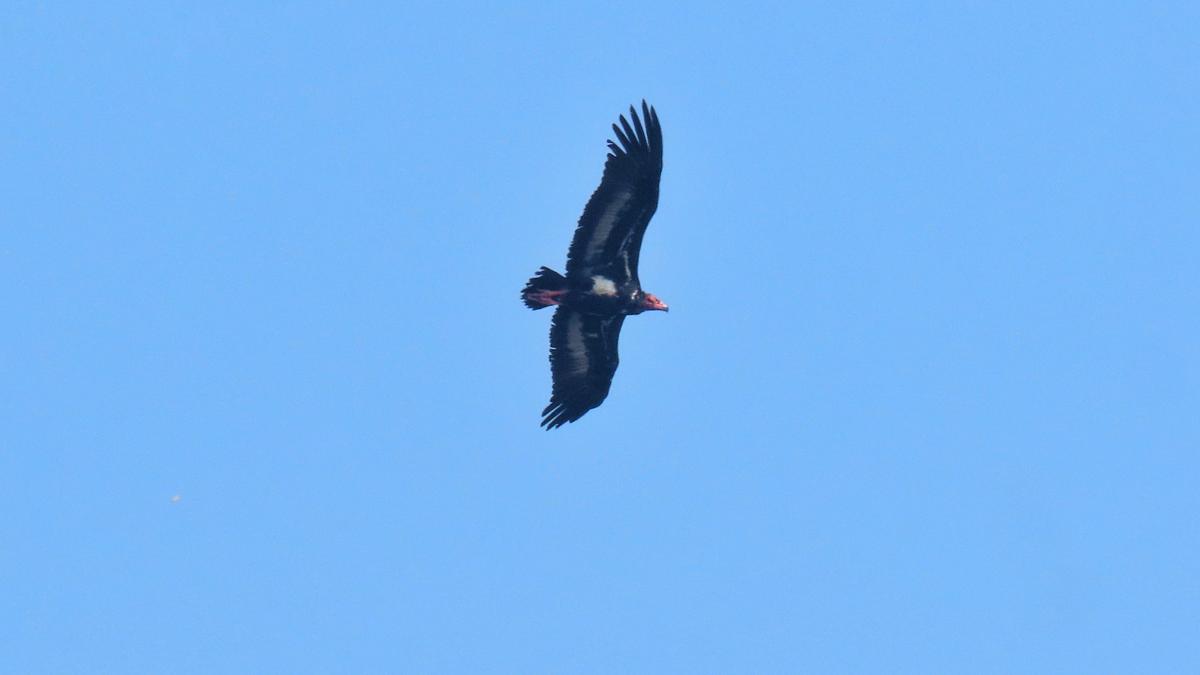
- 17 Nov 2024
In News:
- The Red-Headed Vulture, a critically endangered species, has been sighted for the first time in Kasaragod, Kerala, marking an important addition to the region’s avian biodiversity. This rare sighting occurred at Manhampothikunnu near Mavungal. Prior to this, the species was predominantly seen in the Wayanad region of Kerala.
- This discovery brings the total number of bird species recorded in Kasaragod to 407, showcasing the district's growing avian diversity.
About the Red-Headed Vulture:
- The Red-Headed Vulture (also known as the Asian King Vulture or Pondicherry Vulture) is one of the rarest and most critically endangered species of vultures in India. It is known for its distinctive scarlet red head and black body with a white patch on the abdomen.
- Physical Features: The bird is medium-sized, weighing around 5 kg, with a wingspan of up to 2.5 meters and a length of 80 cm. It is typically solitary, often found alone or with a mate.
- Distribution: Historically found in Central India, Nepal, Myanmar, Thailand, Vietnam, and parts of Kerala, Karnataka, and Tamil Nadu, the Red-Headed Vulture’s numbers have drastically declined in recent decades.
Conservation Status:
- IUCN Red List: The Red-Headed Vulture is classified as Critically Endangered.
- Wildlife Protection Act, 1972: It is listed under Schedule 1, offering it the highest level of legal protection.
- CITES: The species is also listed in Appendix II, indicating that it requires international conservation efforts to prevent it from becoming endangered.
Threats to Vultures:
- Diclofenac Poisoning: The significant decline in vulture populations in India, including the Red-Headed Vulture, is primarily due to the widespread use of diclofenac (a veterinary drug) to treat livestock. When vultures consume the carcasses of treated animals, they ingest the toxic drug, leading to kidney failure and death.
- Other threats include pesticide contamination, lead poisoning, habitat loss, and collisions with man-made structures like power lines and wind turbines.
Conservation Efforts in India:
- India has undertaken various efforts to protect vultures, including banning diclofenac in 2006 and expanding the ban to other harmful drugs like ketoprofen and aceclofenac in 2023.
- Vulture Conservation Breeding Centres (VCBCs): These centers are focused on captive breeding and reintroduction programs for vultures, helping to increase their populations. The Jatayu Conservation and Breeding Centre in Uttar Pradesh is one of the latest initiatives, set up to protect and rehabilitate vultures.
- Vulture Safe Zones have been created across India, providing safe habitats for vulture species to recover.
- Vulture Restaurant Initiative: In some regions, safe feeding centers (such as in Jharkhand) have been established, where vultures are provided uncontaminated carcasses, reducing their exposure to toxic substances.
- Legal Protection: Several species of vultures, including the Red-Headed Vulture, are protected under Schedule I of the Wildlife Protection Act, 1972, ensuring stringent legal measures against poaching and habitat destruction.
Global Conservation Efforts:
- India’s vulture conservation initiatives are part of a broader international effort under the SAVE (Saving Asia’s Vultures from Extinction) programme, which involves multiple regional and global organizations working to protect vulture species in South Asia.
Bali Jatra Cuttack Utsav 2024
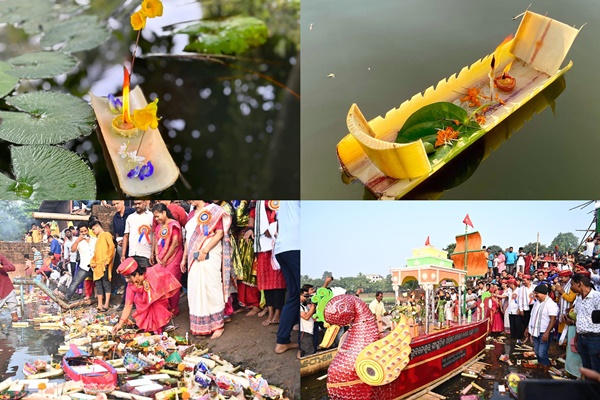
- 17 Nov 2024
In News:
- Bali Jatra 2024 is being held from November 15 to November 22 in Cuttack, Odisha.
- The festival celebrates Odisha’s ancient maritime history and its cultural and trade links with Southeast Asia.
- The event has gained international attention due to the participation of diplomats and cultural troupes from ASEAN, BIMSTEC, and Pacific Island countries.
Historical and Cultural Significance:
- Bali Jatra ("Voyage to Bali") commemorates the 2,000-year-old maritime trade routes between ancient Kalinga (modern-day Odisha) and Southeast Asia, including regions like Bali, Java, Sumatra, Borneo, Burma (Myanmar), and Sri Lanka.
- The festival honors the skills of Kalinga sailors who contributed to the prosperity of the region through trade, including commodities like pepper, cinnamon, cardamom, silk, camphor, gold, and jewelry.
- It highlights Odisha’s maritime legacy and the cultural exchanges between India and Southeast Asia, particularly the cultural influence of Odia merchants on Bali.
Commercial and Economic Aspects:
- Bali Jatra is Asia’s largest open-air trade fair, featuring over 2,500 stalls selling a variety of products including artisanal crafts, household items, and food.
- The event is a major commercial activity with business transactions estimated to exceed ?100 crore over the course of the festival.
- The festival provides an opportunity for both local and national traders to exhibit products at competitive prices.
Cultural Performances and International Participation:
- The festival includes daily cultural performances showcasing Odissi dance, Chhau dance, Bihu, Mahari, Gotipua, Sambalpuri, and Santali folk dances.
- This year, cultural troupes from countries like Indonesia, Thailand, and Sri Lanka have participated, enhancing the international profile of the festival.
- Diplomats, including Ambassadors, High Commissioners, and Heads of Mission from 14 countries attended the inaugural ceremony.
Historical Background of Bali Jatra:
- The festival is linked to Kartika Purnima, the full moon night of the month of Kartika, marking the annual migration of traders from Odisha to Southeast Asia.
- Traders used boats called Boitas to travel to distant lands, which is now symbolically represented in the festival.
- The event’s cultural significance extends to the recognition of Odisha’s historic maritime routes, with ports like Tamralipti, Manikpatna, Chelitalo, Palur, and Pithunda playing key roles in global trade from as early as the 4th century BC.
Kalinga's Maritime Influence:
- The Kalinga Empire (present-day Odisha) had significant influence over the Bay of Bengal, referred to as the Kalinga Sea.
- Kalinga’s dominance in maritime trade is reflected in Kalidasa's Raghuvamsa, where the King of Kalinga is called "Lord of the Sea."
- Kalinga's Boitas (ships) were instrumental in connecting India with the Southeast Asian archipelago, including Bali.
Cultural Linkages with Bali:
- Odisha's trade with Bali influenced the culture, religion, and architecture of the region.
- Balinese Hinduism today still reflects Indian influences, with worship of Hindu deities like Shiva, Vishnu, Brahma, and Ganesha.
- The MasakapankeTukad festival in Bali, similar to Bali Jatra in Odisha, is a tribute to the maritime ancestors of Bali and commemorates the long-standing cultural ties.
Recognition and Milestones:
- Bali Jatra 2022 achieved a Guinness World Record for creating the largest collection of origami sculptures.
- The festival has evolved from a traditional trade fair to an international cultural event that highlights Odisha’s historical role in global trade and cultural exchanges.
TarunerSwapno Scheme

- 17 Nov 2024
In News:
Chief Minister Mamata Banerjee has ordered an inquiry after some intended beneficiaries of the ‘Taruner Swapna’ scheme, an initiative of the TMC government, alleged that they did not receive Rs 10,000 meant for the purchase of tablets (mobile device with a touchscreen display, rechargeable battery, and mobile operating system).
Overview:
- Aimed at bridging the digital divide by providing ?10,000 to Class 11 and 12 students in West Bengal for purchasing smartphones/tablets.
- In FY 2024-25, ?900 crore allocated for the scheme, targeting 16 lakh students.
- The main objective of the scheme is to provide scholarship to the students. So that the student can use their scholarship to buy a smartphone and tablet and can get education through online medium.
- This scheme will prove to be effective in making the future of the students bright and will also prove to be effective in strengthening them technically.
- Eligibility criteria for the scheme:
- Applicant must be a permanent resident of West Bengal State.
- The applicant should be a student.
- Students of 11th and 12th will be eligible for this scheme.
- The annual income of the family of the applicant student should not exceed Rs 2 lakh.
- Students with backlog are not eligible as this grant is for one-time only.
- This scheme will make the students technically strong and they will be able to improve their future with technology.
- Students of government/government-aided/sponsored schools and madrassas can avail assistance.
- TarunerSwapno Yojana will bridge the digital divide among students and facilitate modern education.
Europe’s Digital Euro
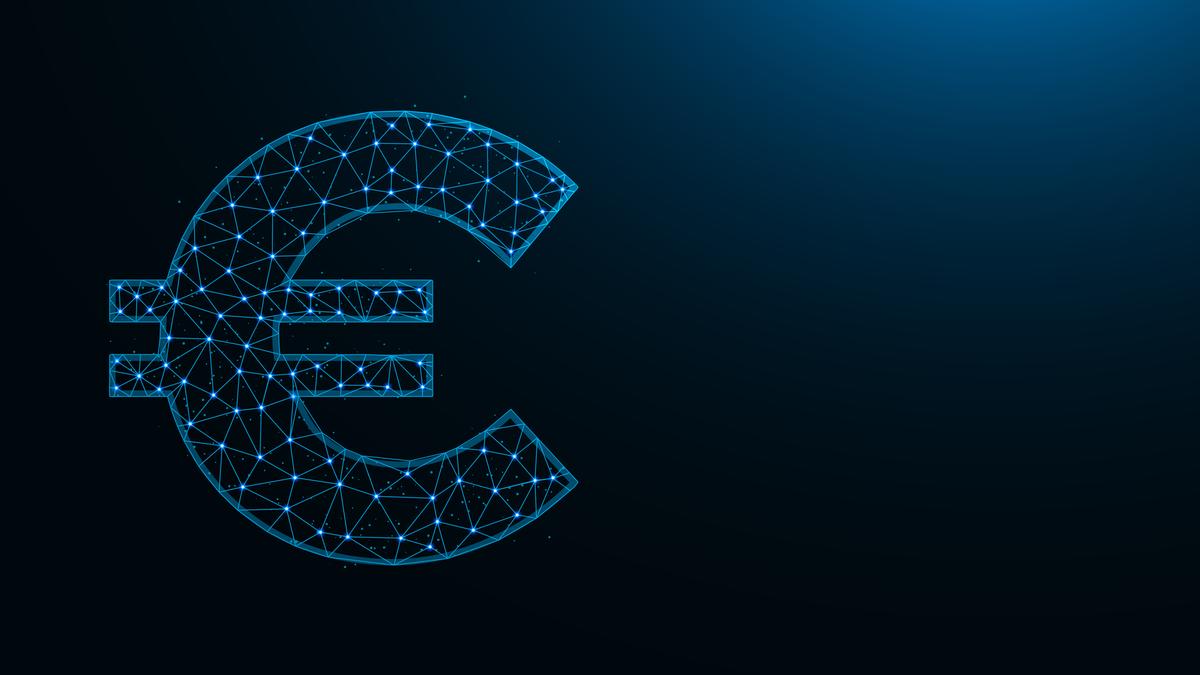
- 16 Nov 2024
In News:
The digital euro, a central bank digital currency (CBDC) being developed by the European Central Bank (ECB), aims to revolutionize Europe’s digital payment landscape. However, while the ECB has marketed it as a convenient, free, anonymous, and reliable alternative to existing cashless options like credit cards and mobile payment apps, the true purpose of the digital euro goes beyond these simplified claims.
Key Aspects of the Digital Euro
- Direct Issuance by the ECB: Unlike traditional digital payments that rely on intermediaries like banks or payment service providers, the digital euro is issued directly by the European Central Bank. This allows for peer-to-peer transactions without the need for third-party banks or payment gateways. It can be used for offline transactions, which is a major technical innovation that sets it apart from other digital currencies.
- A Digital Version of Cash: The digital euro is essentially a digital version of legal tender (cash), providing an alternative to cash in a world increasingly dominated by digital payments. Its key feature is direct payment between users, bypassing the traditional banking system. It aims to offer the same advantages as cash, such as anonymity, but with the convenience of digital transactions.
- Cost Reduction and Micro-Payments: The digital euro promises to lower transaction costs, especially for micro-payments that are currently prohibitively expensive using conventional bank transfers or digital services like PayPal. This cost efficiency is intended to enable new business models by lowering the friction in digital transactions, thus encouraging innovation in commerce.
The ECB’s Claims vs. the Real Motivation
While the ECB portrays the digital euro as a means to make payments easier, faster, and more secure, there is an underlying political and economic agenda that goes beyond improving consumer convenience.
- Sovereignty and Competition: One of the main drivers behind the digital euro is Europe’s desire to assert its digital sovereignty. The ECB positions the digital euro as a tool to strengthen the euro’s competitiveness against non-European payment providers, particularly those from the United States like PayPal, Apple Pay, and Google Pay. The EU is concerned that foreign companies may dominate the digital payment landscape, thereby reducing Europe's ability to control its own financial systems.
- This is a defensive measure to protect European financial interests. By creating a state-backed alternative to privately controlled digital payment systems, the EU aims to ensure that Europe does not become reliant on foreign corporations for essential services.
- Not About Citizens’ Convenience Alone: While the ECB frames the digital euro as a user-friendly solution for consumers, the real concern is about the control over digital currency. The digital euro offers a more centralized alternative compared to the decentralized nature of cryptocurrencies like Bitcoin. The ECB aims to harness the power of the state in regulating and controlling digital transactions, thus consolidating private property and ensuring the smooth functioning of Europe’s monetary policies.
- A Tool for Strengthening the Euro: The digital euro is also seen as part of Europe’s broader ambition to establish the euro as a dominant global currency. As the first fully-regulated digital currency issued by a central bank, it could position the euro to compete against other digital currencies, including the digital yuan or the U.S. dollar. The EU sees the digital euro as a way to expand its geopolitical influence by promoting its own currency as a global standard for digital payments.
Partnerships for Accelerated Innovation and Research (PAIR)
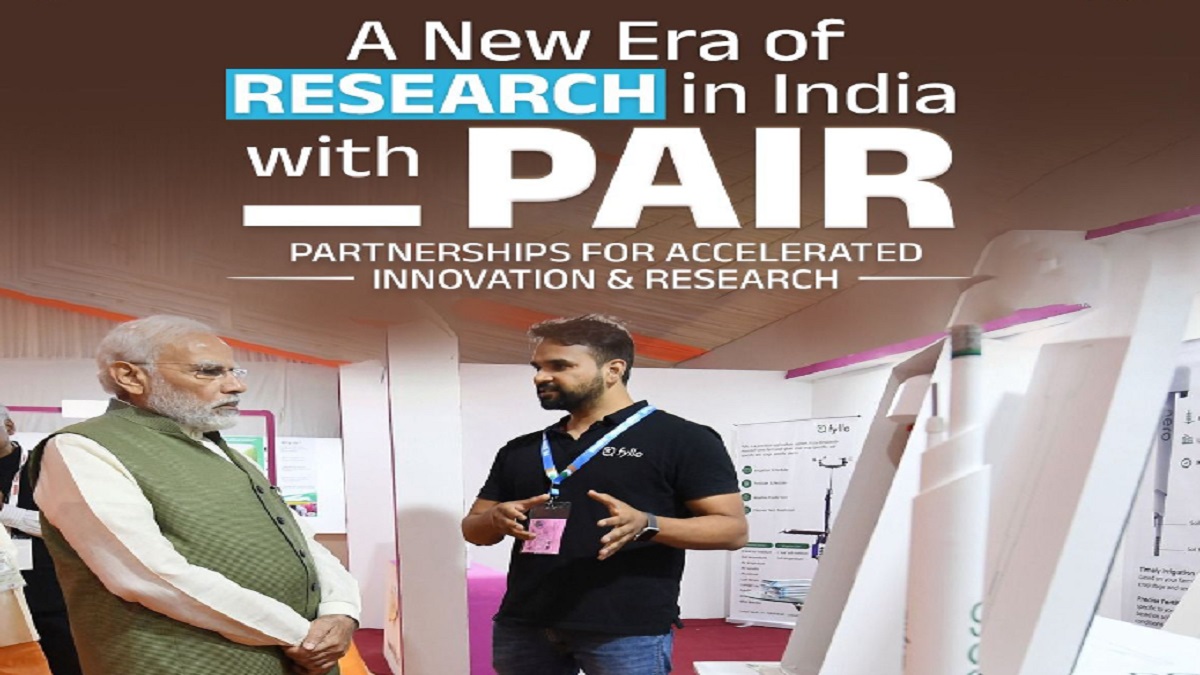
- 16 Nov 2024
In News:
The Anusandhan National Research Foundation (ANRF) has launched the Partnerships for Accelerated Innovation and Research (PAIR) program to significantly boost research and innovation across Indian universities, especially those with limited research infrastructure. The program is designed to bring about a transformative change in India's academic research ecosystem, aligning with the broader goals of the National Education Policy (NEP) 2020.
Key Details:
- Launch Date: November 2024
- Ministry/Department: Department of Science and Technology (DST)
- Objective:
- To elevate research capabilities in universities that have limited resources by pairing them with well-established, top-tier institutions.
- To foster collaborations that can help these emerging universities enhance their research quality, drive innovation, and make significant, globally competitive research contributions.
- Operational Model: Hub-and-Spoke Framework
- Hub Institutions: These are well-established, top-tier institutions that will serve as mentors to less-researched universities. The hubs will be selected from:
- The top 25 institutions in the National Institutional Ranking Framework (NIRF).
- Institutions of National Importance ranked in the top 50 NIRF.
- Spoke Institutions: These are emerging universities or institutions with limited research infrastructure. These will include:
- Central and State Public Universities ranked within the top 200 NIRF Overall.
- Top 100 NIRF University/State Public Universities.
- Select NITs and IIITs.
- Hub Institutions: These are well-established, top-tier institutions that will serve as mentors to less-researched universities. The hubs will be selected from:
- Funding:
- The program has a budget allocation of up to ?100 crore per PAIR network.
- Distribution of Funds:
- 30% for the Hub institution.
- 70% for the Spoke institutions.
- Private Institutions serving as hubs will need to contribute 25% of their allocated budget.
- Mentorship & Research Focus:
- Hubs will provide mentorship to spoke institutions, guiding them in various aspects of research such as access to resources, advanced infrastructure, and best practices.
- The collaboration is expected to enhance research capabilities, foster innovation, and encourage the development of collaborative networks across institutions.
- Regional Diversity & Inclusion:
- The program ensures regional diversity, with at least one spoke institution located outside the hub's state.
- It also allows the inclusion of one promising university from Category III institutions that may not meet the eligibility criteria but show potential for growth in research.
- Phase-wise Rollout:
- The first phase will focus on institutions ranked within the top 25 NIRF and Institutions of National Importance.
- Future phases will expand the scope, allowing more universities and institutions to participate.
- Goals Aligned with NEP 2020:
- Fostering Research Excellence: By partnering top institutions with emerging ones, PAIR seeks to improve the quality of research in India’s higher education sector.
- Promoting Regional Diversity: Ensuring a geographically diverse set of institutions participate in the research ecosystem.
- Strengthening Innovation: Helping universities in less-researched areas to compete on an international level, particularly in cutting-edge and impactful research.
- Program Implementation:
- Prospective Program Directors from eligible Hub institutions are invited to apply online for the program at ANRF PAIR Application Portal.
About ANRF:
- ANRF was established under the ANRF Act 2023 as an apex body to provide strategic direction for scientific research in India.
- With the formation of ANRF, the Science and Engineering Research Board (SERB), previously established under an act of Parliament in 2008, has been subsumed into ANRF.
Global Maritime Conference
- 16 Nov 2024
In News:
In a bid to enhance India’s clout in the global merchant shipping sector, the government recently hosted a two-day global maritime conference – Sagarmanthan: The Great Oceans Dialogue.
Key Highlights:
- Purpose of the Conference:
- To enhance India's maritime influence and position India as a key player in the global maritime sector, especially in merchant shipping and maritime trade.
- To showcase India's ambitions in expanding its role in global maritime trade, governance, and collaboration.
- India's Maritime Ambitions:
- Despite being the most populous nation and one of the largest global economies, India’s maritime clout has been relatively lower than expected.
- The dialogue aims to shift global attention towards India's growing role and contributions to maritime trade and shipping.
- India's Maritime Growth:
- India contributed to 16% of global maritime growth in 2023 and is on track to become the third-largest global economy within three years.
- As India’s economic and geopolitical influence expands, maritime governance will become increasingly significant, necessitating deeper international collaborations in commerce, connectivity, and trade.
- Focus Areas of the Dialogue:
- Global Maritime Trade: India's expanding role in international shipping, trade routes, and maritime security.
- International Collaborations: Promoting deeper engagement in maritime governance and policy-making ecosystems.
- Human Well-being: Highlighting the role of maritime trade in supporting human welfare, particularly in the context of sustainable development and climate change.
- Significance for India:
- The conference serves as a platform to discuss India’s aspirations, policies, and presence in global maritime affairs.
- It is an opportunity to strengthen maritime relations and address issues of global relevance such as trade routes, shipping governance, and environmental sustainability
Operation Dronagiri
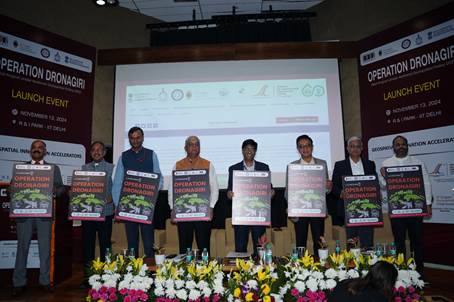
- 15 Nov 2024
In News:
- Recently, the Operation Dronagiri, launched under the National Geospatial Policy 2022 by the Department of Science and Technology (DST).
- Objective: It is a pilot project under India’s National Geospatial Policy 2022 aimed at showcasing the potential of geospatial technologies in sectors such as Agriculture, Livelihoods, and Logistics & Transport to improve quality of life and ease of doing business.
- Implementation:
- The first phase will cover five states: Uttar Pradesh, Haryana, Assam, Andhra Pradesh, and Maharashtra.
- Sectors Targeted: The focus will be on demonstrating the integration of geospatial data to solve real-world challenges in agriculture, transportation, and livelihoods.
National Geospatial Policy 2022
- Context: The National Geospatial Policy 2022 is aimed at liberalizing geospatial data and enabling widespread access and use of geospatial technologies across various sectors of governance, business, and development.
- Goals:
- Development of Geospatial Infrastructure: Promoting the creation of a robust infrastructure to make spatial data more accessible and usable.
- Geospatial Skill Development: Focus on creating a workforce proficient in geospatial technologies.
- Implementation of Standards: Establishing clear standards for geospatial data to ensure consistency and interoperability.
Role of Integrated Geospatial Data Sharing Interface (GDI)
- Launch: Alongside Operation Dronagiri, the Integrated Geospatial Data Sharing Interface (GDI) was also unveiled.
- Purpose: GDI is designed to facilitate seamless data sharing, access, and analysis of geospatial data.
- Key Features:
- Data Exchange: Enables smooth sharing of geospatial data for urban planning, disaster management, and environmental monitoring.
- Privacy and Security: Built with advanced data exchange protocols and privacy-preserving features to ensure secure data sharing.
- Collaboration: It will promote collaboration among stakeholders, including government agencies, industry, and startups, to unlock actionable insights for decision-making.
- Key Features:
Potential Applications of Geospatial Data
- Urban Planning: Assisting cities in designing efficient infrastructure.
- Disaster Management: Providing real-time data for better disaster response.
- Environmental Monitoring: Supporting initiatives for environmental protection and sustainability.
- Agriculture: Precision farming, crop monitoring, and improving supply chains.
- Logistics & Transport: Streamlining transportation networks, reducing traffic, and improving delivery systems.
Grand Challenge for Startups
- Objective: A Grand Challenge was announced as part of the initiative to support startups in developing Proofs of Concept (POCs) targeting specific problems in the focus sectors.
- Role of Startups: The challenge encourages innovation by early-stage and growth-stage startups in geospatial technology, offering mentorship, resources, and access to datasets.
- Geospatial Innovation Accelerators:
- The Geospatial Innovation Accelerators (GIAs) at prestigious institutions like IIT Kanpur, IIT Bombay, IIM Calcutta, and IIT Ropar will support this effort.
- Mentorship and Resources: These accelerators will provide the necessary support for startups to turn their innovations into scalable solutions.
Key Stakeholders and Operational Arms
- Geospatial Innovation Cell (DST): Responsible for overseeing the project’s implementation and execution.
- Navavishkar I-Hub Foundation (IITTNiF): Will manage the operational activities of Operation Dronagiri.
- Partnering Institutions: GIAs at IIT Kanpur, IIT Bombay, IIM Calcutta, and IIT Ropar will be the operational arms.
- Private Sector Involvement: Significant involvement of private sector companies, including startups, is crucial to ensuring the success and scalability of the project.
Impact and Significance
- Socioeconomic Benefits: The integration of geospatial data into agriculture, transport, and logistics will improve efficiency, reduce costs, and boost economic activity in critical sectors.
- Geospatial Innovation: The initiative marks a significant step towards making India a global leader in geospatial technology and positioning the country as a hub for innovative solutions using geospatial data.
- Government Engagement: The project will involve various government departments and corporates in a public-private partnership (PPP) model, similar to the successful implementation of the UPI payment system.
Mobility Arrangement for Talented Early-professionals Scheme (MATES)
- 15 Nov 2024
In News:
Australia has come up with a new scheme that allows talented young people from India to work in the country for some time.
What is the MATES Scheme?
- Full Name: Mobility Arrangement for Talented Early-professionals Scheme (MATES).
- Objective: To provide Indian university graduates and early-career professionals with an opportunity to live and work in Australia for up to two years.
- Establishment: The scheme is part of the Migration and Mobility Partnership Arrangement (MMPA) between Australia and India, signed on May 23, 2023.
- Launch Date: MATES will open for applicants in December 2024.
Eligibility Criteria
- Age: Applicants must be 30 years or younger at the time of application.
- Educational Qualifications: Must have graduated within the last two years from an eligible institution with a Bachelor’s degree or higher in one of the following fields:
- Renewable Energy
- Mining
- Engineering
- Information Communications Technology (ICT)
- Artificial Intelligence (AI)
- Financial Technology (FinTech)
- Agricultural Technology (AgriTech)
- English Proficiency: A minimum score of 6 overall in IELTS (or equivalent), with at least 5 in each module.
- Institutional Criteria: Graduates must be from the top 100 Indian universities as per the NIRF Ranking 2024 (e.g., Panjab University, Chandigarh University, Thapar Institute of Engineering, Lovely Professional University).
- Previous Participation: Applicants must not have previously participated in the MATES scheme.
Key Features of the MATES Scheme
- No Employer Sponsorship Required: Applicants are not required to have sponsorship from an Australian employer.
- Visa Duration: The visa allows a stay of up to 2 years in Australia, with multiple entries permitted.
- Dependents: Visa holders can bring dependents (spouse and children). Dependents will have work rights in Australia but will not count towards the annual cap.
- Visa Application Process:
- The visa will be granted through a ballot system (random selection).
- Application Fee: AUD 25.
- Shortlisted candidates will proceed to further formalities.
Program Features
- Targeted Sectors: MATES focuses on key sectors such as renewable energy, mining, engineering, ICT, AI, FinTech, and AgriTech, aligning with Australia’s demand for skilled professionals in these areas.
- Pilot Program: Initially, the scheme will offer 3,000 places per year for primary applicants.
- Work Flexibility: While the visa does not require applicants to work in their nominated field, it is designed to help young professionals expand their skills and network in Australia’s key industries.
Additional Benefits
- Career Development: Participants will gain international work experience, expanding their professional network and skills.
- Cultural Exchange: The scheme also promotes cultural exchange between India and Australia, fostering stronger bilateral relations.
- Pathway for Future Opportunities: Participants may apply for further temporary or permanent residence in Australia, provided they meet the eligibility requirements.
Impact and Significance
- Bilateral Cooperation: The MMPA, under which MATES is established, enhances migration and mobility between India and Australia while addressing concerns related to illegal migration.
- Youth Empowerment: The scheme offers young professionals a platform to develop their careers internationally, particularly in sectors of global relevance like AI, FinTech, and renewable energy.
- Skill Development: MATES aims to bridge skill gaps in Australia by attracting Indian professionals to key sectors where expertise is in high demand.
- Global Talent Mobility: This scheme supports the global mobility of young talent and strengthens the India-Australia economic and educational partnership.
Know Your Medicine (KYM) App

- 15 Nov 2024
In News:
Union Minister for Youth Affairs & Sports, Dr. Mansukh Mandaviya, has launched a nationwide appeal to strengthen the fight against doping in sports, urging athletes, coaches, and the entire sporting community to embrace the National Anti-Doping Agency (NADA) India's ‘Know Your Medicine (KYM)’ app.
Introduction to KYM App
- Launch: The app was launched by Dr. Mansukh Mandaviya, Union Minister for Youth Affairs and Sports, to combat doping in sports.
- Developer: National Anti-Doping Agency (NADA) India.
- Purpose: To prevent inadvertent doping by allowing athletes to check whether a medicine contains substances prohibited by the World Anti-Doping Agency (WADA).
Key Features of the KYM App
- Medicine Verification: The app enables athletes to verify if any medicine or its ingredients contain banned substances listed by WADA.
- Image and Audio Search: Unique search features help users easily search for specific sport-related information.
- Customizable Search: Users can select their sport category and receive relevant, sport-specific information.
- User-Friendly: Designed for athletes, coaches, and sports professionals to quickly verify medicines and ensure clean competition.
Importance of KYM App
- Supporting Clean Sports: The app promotes a fair and ethical sporting culture by reducing the risk of inadvertent doping.
- Integrity of Sports: Helps athletes avoid penalties or bans due to accidental doping, maintaining the integrity of the competition.
- Accessible Information: Provides easy access to information regarding medicines that may contain banned substances, which is crucial for athletes' health and careers.
NADA India's Mission
- Anti-Doping Awareness: The KYM app is part of NADA India’s broader initiative to educate athletes and raise awareness about the dangers of doping.
- Goal: To promote dope-free sports and ensure that athletes and coaches are equipped with the tools needed for compliance with anti-doping regulations.
NADA India: Background and Functions
- Established: NADA India was set up in November 2005 under the Societies Registration Act, 1860.
- Mission: To serve as the independent Anti-Doping Organization for India, aiming to create a doping-free sporting environment.
- Key Functions:
- Implementing Anti-Doping Code: Ensuring compliance with the World Anti-Doping Code among all sports organizations in India.
- Dope Testing Program: Coordinating a national dope testing program with stakeholders across various sports.
- Promoting Research and Education: Encouraging research on anti-doping and educating athletes on the importance of staying clean.
- Adopting Best Practices: Ensuring the implementation of high-quality standards for anti-doping programs.
Impact and Significance
- Preventing Doping: The KYM app helps prevent inadvertent doping incidents by providing athletes with the necessary tools to check their medicines.
- Supporting Athletes: It provides athletes with a reliable way to avoid banned substances in over-the-counter medications, thus safeguarding their careers.
- National and International Compliance: Supports India’s commitment to complying with international anti-doping norms, contributing to a global effort to maintain fairness in sports.
Operation Kawach
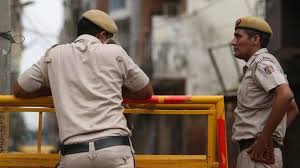
- 15 Nov 2024
In News:
The Delhi Police recently initiated Operation Kawach, arresting and detaining around 1,000 people in an attempt to crack down on various gangs and their operations in the wake of the recent incidents of shootings reported in the city.
Overview of Operation Kawach
- Objective: A crackdown on gang-related violence, drug trafficking, and other illegal activities like possession of firearms, banned drugs, and liquor.
- Agencies Involved:Delhi Police (Local Police, Special Cell, and Crime Branch)
- Duration: Initiated on November 12, 2024 (5 PM) and continued until November 13, 2024 (5 PM).
Key Details of the Operation
- Arrests and Detentions:
- Around 1,000 people detained.
- 486 people apprehended in Outer North Delhi (20% juveniles).
- Arrests made in Dwarka, Southwest, and North Delhi.
- Key Gangs Targeted:
- Associated with notorious gangs led by Lawrence Bishnoi, Neeraj Bawana, Kaushal Chaudhary, TilluTajpuria, Kala Jatheri, Manjeet Mahal, and Nandu gangs.
- Charges: Involvement in activities like:
- Possession of illegal firearms.
- Trafficking of liquor and banned drugs (NDPS Act).
- Theft and other criminal activities.
Significance of Operation Kawach
- Public Safety: Aimed at dismantling organized crime networks to enhance safety and reduce violence in Delhi.
- Impact on Gangs: Directly targets high-profile criminals, including those involved in gang wars and drug trafficking.
- Strategic Law Enforcement: Strengthens law enforcement capabilities, working in coordination across multiple police units.
Domestic Systemically Important Banks (D-SIBs)
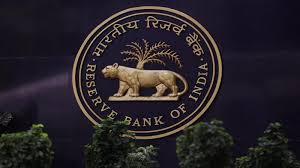
- 15 Nov 2024
In News:
The Reserve Bank of India (RBI) retained the State Bank of India, HDFC Bank and ICICI Bank as Domestic Systemically Important Banks (D-SIBs).
Overview of D-SIBs
- Definition: D-SIBs are banks that are 'Too Big to Fail' (TBTF) and their failure could significantly disrupt essential banking services, affecting the economy.
- RBI Classification: The Reserve Bank of India (RBI) has designated SBI, HDFC Bank, and ICICI Bank as D-SIBs.
- Bucketing System: These banks are classified into different buckets based on their systemic importance.
Importance of D-SIBs
- Systemic Importance: Banks are considered systemically important due to their:
- Size
- Cross-jurisdictional activities
- Complexity
- Interconnectedness with the economy
- Impact of Failure: Failure of a D-SIB could cause significant disruption in the banking system and economy, impacting services like payments, loans, etc.
Why D-SIBs are Created
- Risk of Disruption: The failure of a large bank can disrupt essential services and lead to a broader economic crisis.
- TBTF Perception: These banks are often perceived as Too Big to Fail, leading to an expectation of government support during crises. This creates moral hazard, encouraging riskier behavior.
Assessment and Selection of D-SIBs
- Two-Step Process:
- Step 1: Selection of banks based on their size, complexity, and interconnectedness. Only banks with systemic importance are assessed (e.g., banks with assets > 2% of GDP).
- Step 2: Calculation of systemic importance score based on a range of indicators. Banks above a certain threshold are classified as D-SIBs.
- Indicators: Size (measured by Basel III Leverage Ratio Exposure Measure), interconnectedness, substitutability, and complexity are key factors.
Bucket Allocation and Capital Requirements
- D-SIBs are assigned to five buckets based on their systemic importance score:
- Bucket 1: Lowest capital surcharge (e.g., ICICI Bank).
- Bucket 5: Highest capital surcharge.
- Additional Capital Requirements:
- SBI: Additional 0.80% CET1 (Common Equity Tier 1) on Risk-Weighted Assets (RWAs).
- HDFC Bank: Additional 0.40% CET1.
- ICICI Bank: Additional 0.20% CET1.
- The higher the bucket, the higher the capital surcharge.
Global Systemically Important Banks (G-SIBs)
- Global List: Identified by the Financial Stability Board (FSB) based on data from the previous year.
- 2023 G-SIB List includes banks like JP Morgan Chase, Bank of America, HSBC, etc.
- Capital Requirement for G-SIBs in India: Foreign G-SIBs with branch presence in India must meet additional CET1 requirements, proportional to their operations in India.
Key Terms
- Risk-Weighted Assets (RWAs): These are used to calculate the minimum capital a bank must hold. It accounts for the risk level of a bank’s assets.
- Common Equity Tier 1 (CET1): The highest quality of capital a bank can hold, primarily made up of common stock, to absorb losses in times of distress.
World Diabetes Day 2024
- 14 Nov 2024
In News:
- World Diabetes Day is observed on November 14th each year to raise awareness about diabetes, its prevention, and management.
- It was created by the International Diabetes Federation (IDF) and the World Health Organization (WHO).
- Significance: Commemorates the birthday of Sir Frederick Banting, who co-discovered insulin in 1922 alongside Charles Best.
- Theme (2024): "Access to Diabetes Care: Empowering Better Health for All".
History:
- Established in 1991 by the International Diabetes Federation (IDF) and World Health Organization (WHO).
- Recognized as a global observance by the UN in 2006.
- Activities: Awareness campaigns, health check-ups, educational seminars, and lighting of Blue Circle Monuments worldwide as a symbol of unity in the fight against diabetes.
Global Diabetes Data (2022):
- Total Diabetic Adults: 828 million globally.
- India's Share: 212 million (approximately 25% of global cases).
- Other Countries:
-
- China: 148 million.
- USA: 42 million.
- Pakistan: 36 million.
- Indonesia: 25 million.
- Brazil: 22 million.
Risk Factors for Diabetes:
- Global Factors: Obesity and poor diets are key contributors.
- India-Specific Factors: Dietary habits, lack of exercise, and socio-economic disparities contribute significantly to the high prevalence.
Untreated Cases:
- Global untreated cases (2022): 445 million (59% of diabetics globally).
- India untreated cases (2022): 133 million (64 million men, 69 million women).
- Complications: Untreated diabetes leads to severe health complications, including heart disease, kidney failure, and premature death.
Types of Diabetes:
- Diabetes Mellitus: The most common type of diabetes, characterized by issues with insulin production or its efficient use.
- Type 1 Diabetes (T1D):
- Autoimmune condition where the pancreas produces little or no insulin.
- Primarily affects children and young adults.
- Type 2 Diabetes (T2D):
- Insulin resistance combined with reduced insulin production.
- Often linked to lifestyle factors like obesity and physical inactivity.
- Gestational Diabetes:
- Occurs in pregnant women, leading to high blood sugar.
- Typically resolves after childbirth.
- Diabetes Insipidus:
- Imbalance of water regulation due to inadequate secretion or response to antidiuretic hormone (ADH).
- Leads to excessive urination and dehydration.
- Type 1 Diabetes (T1D):
Symptoms of Diabetes:
- Frequent urination.
- Excessive thirst and hunger.
- Unexplained weight loss.
- Blurred vision.
- Fatigue.
- Slow-healing wounds.
Role of Insulin in Managing Diabetes:
- Function of Insulin: A hormone produced by the pancreas that helps regulate blood glucose levels by facilitating glucose uptake into cells.
- In Type 1 Diabetes: Insulin injections or pumps are essential for survival.
- In Type 2 Diabetes: Insulin or oral medications may be prescribed alongside lifestyle modifications like diet and exercise.
Government Initiatives in India:
- National Programme for Prevention and Control of Cancer, Diabetes, Cardiovascular Diseases, and Stroke (NPCDCS): Focuses on awareness, early diagnosis, and management of diabetes.
- National Health Policy (2017): Aims to reduce premature deaths from non-communicable diseases by 25% by 2025.
- Ayushman Bharat – Health and Wellness Centres: Provides free screenings and consultations for diabetes and other non-communicable diseases.
- Eat Right Movement: Promotes healthier dietary habits to combat obesity and reduce diabetes risks.
- School Health Programs: Aims to educate children on healthy lifestyles to prevent the early onset of Type 2 diabetes.
Decline in African Elephant Population
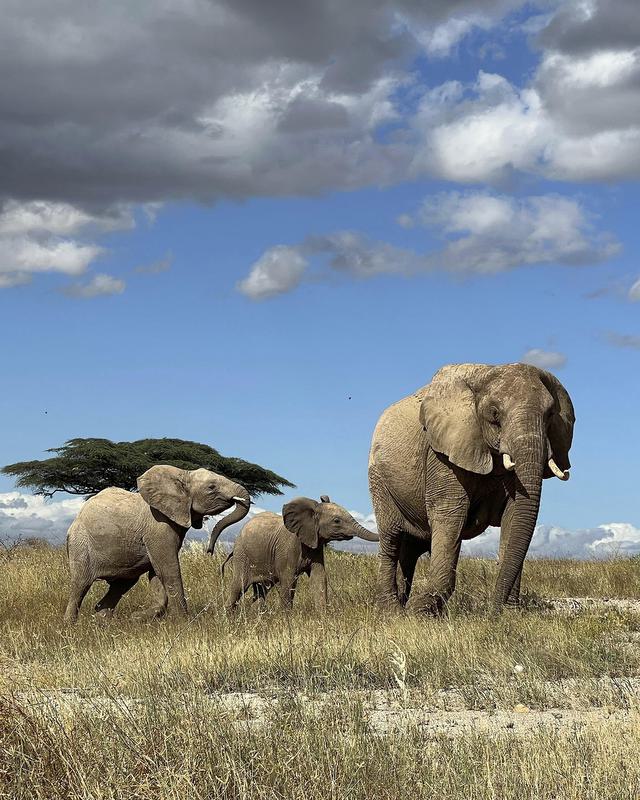
- 14 Nov 2024
In News:
- The population of African elephants has been declining rapidly, with data showing alarming drops across the African continent.
- Survey Period: The study covers population data from 475 sites in 37 countries over 52 years (1964-2016).
- Population Decrease:
- Savannah Elephants: A 70% decline on average across surveyed sites.
- Forest Elephants: A 90% decline on average across surveyed sites.
- Overall Impact: The study indicates a 77% average decline in elephant populations across both species.
Main Drivers of Decline
- Poaching: Illegal hunting for ivory and other body parts remains a major threat.
- Habitat Loss: Urbanization, agricultural expansion, and climate change are encroaching on the elephant’s natural habitats.
- Human-Elephant Conflict: Increased human settlements near elephant habitats lead to conflicts, further endangering elephant populations.
Species Overview
- Two Subspecies:
- Savannah Elephant (Loxodonta africana): Larger and more common, found in open savannas.
- Forest Elephant (Loxodonta cyclotis): Smaller and more elusive, found in dense rainforests.
- Conservation Status:
- Savannah Elephant: Endangered (IUCN).
- Forest Elephant: Critically Endangered (IUCN).
- CITES Listing: Both species are listed under CITES Appendix I, which bans international trade in endangered species.
Regional Impact
- Northern and Eastern Africa: These regions have seen drastic declines, particularly in the Sahel (Mali, Chad, Nigeria), where elephants have been extirpated (locally extinct) due to poaching and insufficient protection.
- Southern Africa: Positive Growth in some areas, particularly in Botswana, Zimbabwe, and Namibia, where elephant populations are growing due to strong conservation efforts.
Conservation Success
- Southern Africa: 42% of the surveyed sites showed increasing elephant populations, a testament to successful conservation strategies.
- Government and NGO Efforts: Successful population growth is often attributed to active management, including anti-poaching laws, protected areas, and conservation funding.
Elephant Behavior and Reproduction
- Social Structure: Elephants live in family units led by mature females, with strong social bonds.
- Low Sleep Time: Elephants sleep only 2 hours per day on average.
- Reproduction: They have a long gestation period of up to 2 years, and calves are cared for by mothers and allomothers (non-mother females).
Conservation Challenges
- Sustainability: Continued poaching and habitat destruction threaten to undo gains made in conservation.
- Fragmentation of Populations: With many elephants in isolated pockets, genetic diversity is declining, which could lead to long-term problems for species survival.
Jawaharlal Nehru Memorial Fund (JNMF)
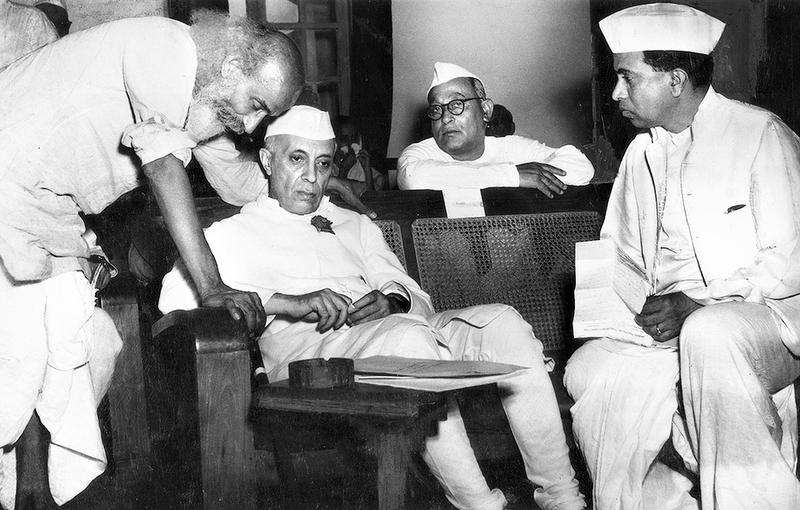
- 14 Nov 2024
In News:
Jawaharlal Nehru Memorial Fund to launch ‘Nehru Archive’ next year.
Nehru Archive Initiative
- Launch Date: The Nehru Archive will go online on November 14, 2025, coinciding with Jawaharlal Nehru's birth anniversary.
- Purpose: The archive will showcase less-known published and unpublished works of India’s first Prime Minister, Jawaharlal Nehru, including his speeches, letters to Chief Ministers, and other writings.
Archive Content
- Key Features:
- 100 volumes of The Selected Works of Jawaharlal Nehru.
- Letters to Chief Ministers (1947-1964), documenting Nehru's communication with state leadership.
- Nehru’s iconic books like:
-
-
- The Discovery of India
- Glimpses of World History
- Letters from a Father to His Daughter
- An Autobiography
- The Unity of India
- A Bunch of Old Letters
-
-
- Speeches from 1917 to 1964.
- Writings on Nehru by his contemporaries.
- Global archival material from international sources.
- Objective: The goal is to provide dynamic, continuously updated, open-ended access to Nehru’s work, making it the most important research source on Nehru.
Significance
- Educational and Intellectual Contribution: The archive will serve as a comprehensive, accessible source of information for students, scholars, and the general public to understand Nehru’s contributions to the making of modern India.
- Preservation of Legacy: It will preserve and promote Nehru’s intellectual legacy and his vision for India's development post-independence.
- Historical Importance: The archive will help contextualize Nehru’s leadership during critical periods of Indian history, including India’s independence, partition, and post-independence challenges.
Governance and Establishment of JNMF
- Founded: The Jawaharlal Nehru Memorial Fund (JNMF) was established in 1964 through a Deed of Declaration of Trust following a National Committee chaired by Dr. S. Radhakrishnan, then President of India.
- Purpose: To preserve and promote Nehru's legacy, especially his role in shaping modern India.
- Governance: The JNMF is governed by 14 trustees and is currently headed by Sonia Gandhi, the Chairperson of the Congress Parliamentary Party.
Sea Ranching Initiative off Vizhinjam Coast
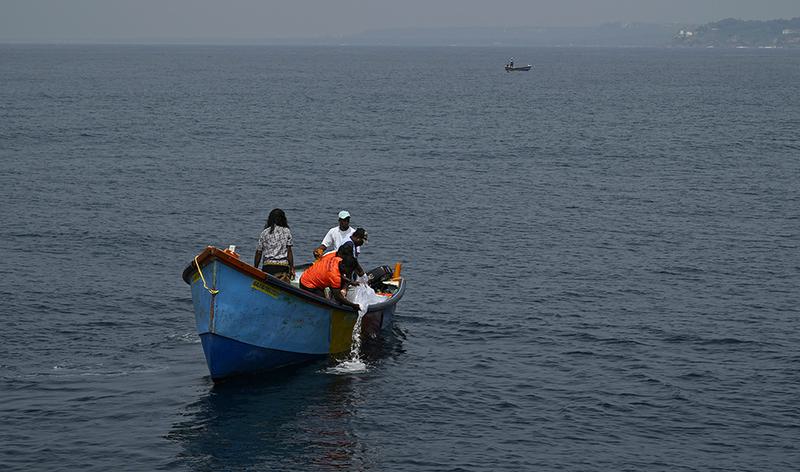
- 14 Nov 2024
In News:
- The State Fisheries Department in Kerala launched a sea ranching project by releasing 20,000 pompano (Trachinotus blochii) fingerlings off the Vizhinjam coast as part of the artificial reef project.
- Coordinates: The fingerlings were released near artificial reef modules placed 1.5 nautical miles off the coast.
- Follow-up to Artificial Reef Project: The release of fingerlings is a follow-up to the artificial reef project aimed at replenishing marine fishery resources and promoting sustainable fishing practices.
Project Details
- Fingerling Release: The first batch of 20,000 pompano was released as part of the broader initiative to release 10 lakh fingerlings (pompano and cobia) at 10 locations along the Thiruvananthapuram coast.
- Location and Quantity: At each location, 1 lakh fingerlings will be released, where artificial reefs have already been deployed under the Pradhan Mantri Matsya Sampada Yojana (PMMSY).
- Reef Design: Artificial reefs consist of 150 reef modules (triangular, flower, and pipe-shaped) created at 42 locations off 33 fishing villages in the Thiruvananthapuram district.
Objective and Benefits
- Marine Resource Replenishment: The primary aim is to replenish marine fishery resources in the region by enhancing biodiversity through the introduction of fingerlings.
- Sustainable Fishing: The project aims to promote sustainable fishing practices by supporting fish populations and ensuring long-term fishery health.
- Attraction of Fish Species: The artificial reefs have already attracted a variety of fish species, including tuna, trevally, and mackerel, enhancing the fishing ecosystem.
Implementation and Funding
- Scheme: The project is being implemented under the Pradhan Mantri Matsya Sampada Yojana (PMMSY), which focuses on sustainable fisheries development.
- Central Approval: The National Fisheries Development Board (NFDB) approved the ?3 crore funding for the initial phase in Thiruvananthapuram.
- Proposed Expansions:
- Phase II: A proposal for extending the artificial reef project to 96 villages in the districts of Kollam, Alappuzha, Ernakulam, and Thrissur with an estimated cost of ?29.76 crore.
- Phase III: A similar proposal for 96 villages in the northern districts of Malappuram, Kozhikode, Kannur, and Kasaragod with an estimated cost of ?25.82 crore.
Mission and Fingerlings Details
- Fingerlings:
- Pompano (Trachinotus blochii) and Cobia (Rachycentron canadum) fingerlings were reared at the Ayiramthengu fish farm.
- Each fingerling weighs between 8 to 10 grams.
- The release aims to stock marine areas with species that will contribute to biodiversity and fisheries sustainability.
Pradhan Mantri Matsya Sampada Yojana (PMMSY)
- Launched: PMMSY is a Centrally funded scheme under the Ministry of Fisheries, Animal Husbandry, and Dairying.
- Goal: The scheme focuses on sustainable fisheries development to enhance fisheries production, boost aquaculture, and promote responsible fishing practices.
- Funding: The scheme involves both Central and State Government funding for projects related to fisheries management, infrastructure development, and resource conservation.
Mission Fingerling
- Launched: 2017 by the Union Ministry of Agriculture and Farmers’ Welfare.
- Objective: To achieve the Blue Revolution by holistically developing and managing fisheries in India.
- Production Target: The mission aimed to increase fisheries production from 10.79 MMT (2014-15) to 15 MMT by 2020-21.
OECD Report on Indian Agricultural Policies
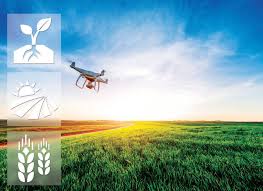
- 14 Nov 2024
In News:
- In 2023, the Organisation for Economic Co-operation and Development (OECD) revealed that Indian farmers faced the highest implicit taxation globally, amounting to USD 120 billion.
- Implicit Taxation: This taxation arises from government policies like export bans, duties, and price controls, aimed at lowering food prices for consumers but reducing the income of farmers.
- Export Restrictions: Key commodities affected include rice, sugar, onions, and de-oiled rice bran.
Impact on Indian Farmers
- Market Price Support (MPS):
- Negative MPS: In 2023, Indian agricultural policies resulted in a negative MPS of USD 110 billion.
- Farmers received lower prices than international market rates due to export bans and trade restrictions, impacting their income.
- Budgetary Support: Despite government subsidies and the Minimum Support Price (MSP) worth USD 10 billion, negative MPS outweighed positive support, leading to an overall loss for farmers.
- Farmer’s Share in Global Negative Support:
- India’s share of global negative price support in 2023 was 62.5%, a significant increase from 61% in 2000-02.
Global Agricultural Policy Trends
- Global Support: Total support for agriculture across 54 countries averaged USD 842 billion annually (2021-2023). However, there was a decline in support in 2022-23 from the pandemic-era peak.
- Challenges:
- Geopolitical Tensions (e.g., Russia-Ukraine war) and climate change are exacerbating global agricultural production and trade.
- Export Restrictions in various countries are distorting international agricultural markets.
- Farmer Protests across countries reflect the economic and social struggles of the farming community.
- Sustainability Issues: Global agricultural productivity growth is slowing, posing challenges to feeding a growing population sustainably.
India's Agricultural Policies
- Export Bans and Restrictions: These policies are intended to control domestic prices but undermine farmers’ income by lowering market prices for key agricultural products.
- Minimum Support Price (MSP): MSP is meant to protect farmers, but is often set below international market rates, leading to a negative price effect.
- Regulatory Constraints: Policies like the Essential Commodities Act (1955) and APMC Act (2003), though aimed at ensuring food security, often lead to price suppression for farmers.
- Price Depressing Policies: India's agricultural policies result in lower farm-gate prices due to price controls, government-set procurement prices, and lack of market access.
Negative Market Price Support (MPS)
- Historical Trends:
- From 2014-2016, India’s Producer Support Estimate (PSE) was -6.2%, driven mainly by negative MPS (-13.1%).
- The PSE measures the annual value of transfers to farmers, both from consumers and the government.
- Inefficiencies:
- Infrastructure Gaps: Poor infrastructure and high transaction costs lower the prices farmers receive.
- Inefficient Resource Allocation: Short-term subsidies for inputs (fertilizers, irrigation) don’t address long-term agricultural challenges like climate change and market access.
Government Support Programs
- Subsidies and Schemes:
- National Mission on Sustainable Agriculture (NMSA)
- Paramparagat Krishi Vikas Yojana (PKVY) for organic farming.
- Rashtriya Krishi Vikas Yojana (RKVY) to promote agricultural development.
- Digital Agriculture Mission and Unified Farmer Service Platform (UFSP) for modernizing agricultural practices.
- Sustainability Efforts:
- The government has introduced initiatives like AgriStack and Mission Organic Value Chain Development in the North East to enhance sustainable agricultural practices and reduce the negative impacts on farmers.
Global Context and Recommendations
- Environmental Public Goods Payments (EPGP): Only 0.3% of total producer support is dedicated to environmental sustainability, despite the growing need for climate-resilient agriculture.
- Sustainable Agricultural Practices: The OECD advocates for governments to tie producer support to sustainable farming practices, including the use of metrics like Total Factor Productivity (TFP) and Agri-Environmental Indicators (AEIs).
- TFP measures agricultural efficiency, while AEIs assess the environmental impacts of farming.
OECD Overview
- OECD Function: Founded in 1961, the OECD is an international organization of 38 countries that promotes prosperity, equality, and well-being through economic reports, data, and policy analysis.
- India’s Role: India has been an OECD Key Partner since 2007, engaging with the OECD on various policy issues, though it is not a member.
Global Nature Conservation Index (NCI) 2024
- 13 Nov 2024
In News:
India with an abysmal score of 45.5 (out of 100) has been ranked 176th in the Global Nature Conservation Index, 2024.
Key Highlights:
- India's Ranking:
- Ranked 176th out of 180 countries in the 2024 Global Nature Conservation Index (NCI).
- India is listed among the five worst performers, along with Kiribati (180), Turkey (179), Iraq (178), and Micronesia (177).
- Score: 45.5 out of 100, indicating significant conservation challenges.
- Key Factors Contributing to Low Rank:
- Inefficient land management practices.
- Rising threats to biodiversity, exacerbated by unsustainable development and climate change.
- Four Key Markers Assessed by the NCI:
- Land Management: Ineffective management leading to significant land conversion.
- Threats to Biodiversity: Habitat loss, fragmentation, and deforestation.
- Capacity and Governance: Need for stronger political will and better enforcement of conservation laws.
- Future Trends: Growing pressure from population density, climate change, and illegal wildlife trade.
- Sustainable Land Use Concerns:
- 53% of land has been converted for urban, industrial, and agricultural purposes.
- High use of pesticides and concerns over soil pollution.
- Sustainable nitrogen index of 0.77 indicates significant risks to soil health.
- Marine Conservation Issues:
- Only 0.2% of India’s national waterways are under protected areas, with no protected areas within its Exclusive Economic Zone (EEZ).
- Significant improvements needed in marine conservation despite 7.5% of terrestrial areas being protected.
- Deforestation and Habitat Loss:
- 23,300 sq. km of tree cover lost between 2001-2019 due to deforestation.
- Habitat fragmentation from agriculture, urbanization, and infrastructure development.
- Impact of climate change on sensitive ecosystems like alpine regions and coral reefs.
- Biodiversity Decline:
- Despite 40% of marine species and 65% of terrestrial species being within Protected Areas (PAs), many species continue to face population decline.
- 67.5% of marine species and 46.9% of terrestrial species are still experiencing population declines.
- Illegal Wildlife Trade:
- India is the fourth-largest illegal wildlife trading nation globally, with an estimated annual trade value of £15 billion.
- The NCI emphasizes the need for stronger enforcement and international cooperation to combat wildlife trafficking.
- Ecological Wealth Under Threat:
- India’s high population density (with a population that has doubled since the late 1970s) continues to put pressure on its ecological wealth.
- The country faces significant biodiversity challenges due to overpopulation and unsustainable development.
- Recommendations and Optimism:
- The NCI stresses the need for strong political will and commitment to sustainable development.
- India can improve its rank by strengthening conservation laws, improving governance, and securing funding for environmental initiatives.
- The NCI remains optimistic about India’s potential to address its conservation challenges and achieve more sustainable outcomes in the future.
- About the Nature Conservation Index (NCI):
- Developed by: Goldman Sonnenfeldt School of Sustainability and Climate Change (Ben-Gurion University) and BioDB.com (a biodiversity database).
- Purpose: Evaluates the conservation efforts of countries, using a data-driven approach to balance conservation and development.
- Key Focus Areas: Land management, biodiversity threats, governance, and future sustainability trends.
RBI's New Framework for Reclassification of FPI to FDI
- 13 Nov 2024
In News:
The Reserve Bank of India (RBI) directed foreign portfolio investors (FPIs) to obtain necessary approvals from the government and concurrence from the investee companies when their equity holdings go beyond the prescribed limits and they reclassify the holdings as foreign direct investment (FDI).
- Approval Requirement:
- FPIs (Foreign Portfolio Investors) must obtain necessary government approvals when reclassifying their foreign portfolio investments (FPIs) into Foreign Direct Investment (FDI).
- Approvals are mandatory, including those related to investments from countries sharing a land border with India.
- Investment Limits:
- According to FEMA (NDI) Rules, 2019, an FPI’s investment in an Indian company should not exceed 10% of the total paid-up equity capital (on a fully diluted basis).
- If the FPI exceeds this limit, it has 5 trading days from the settlement of trades to either divest or reclassify the excess holdings as FDI.
- Restrictions on Reclassification:
- Reclassification to FDI is not allowed in sectors where FDI is prohibited.
- FPIs must ensure compliance with FDI norms, such as entry routes, sectoral caps, investment limits, pricing guidelines, and other related conditions.
- Concurrence from Investee Companies:
- The FPI must obtain the concurrence of the investee company for reclassifying the investment into FDI.
- This ensures that the company adheres to conditions related to prohibited sectors, sectoral caps, and government approvals.
- Reclassification Procedure:
- The FPI must clearly state its intent to reclassify the investment to FDI and provide the necessary approvals and concurrence to its custodian.
- The custodian is responsible for freezing the FPI's purchase transactions in the investee company’s equity instruments until the reclassification is complete.
- Regulatory Adherence:
- The reclassification must follow the relevant provisions for FDI, including compliance with the Foreign Exchange Management Act (FEMA) and FDI guidelines.
India’s Vision of ‘Adaptive Defence’
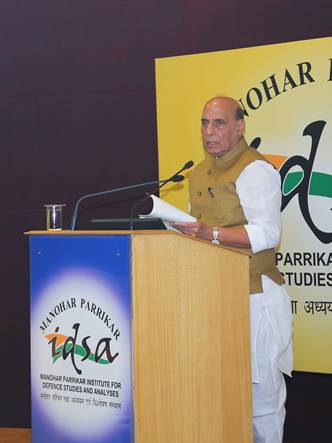
- 13 Nov 2024
In News:
- Defence Minister Shri Rajnath Singh introduced the concept of ‘Adaptive Defence’ at the inaugural Delhi Defence Dialogue (DDD).
- Adaptive Defence aims to prepare India's military for the rapidly changing landscape of modern warfare, with evolving threats and technologies shaping global security.
Key Aspects of Adaptive Defence:
- Strategic Approach:
- Adaptive Defence is an evolving strategy where military and defence systems continuously adjust to emerging threats, focusing on proactive preparedness rather than reactive responses.
- It is based on anticipating future threats, fostering flexibility, resilience, and agility in both strategic and tactical responses.
- Core Elements:
- Situational Awareness: The ability to understand and respond to dynamic, often unpredictable environments.
- Flexibility & Agility: At both the strategic and tactical levels to ensure swift and effective responses.
- Resilience: The capacity to recover and adapt quickly to unforeseen circumstances.
- Integration with Emerging Technologies: Emphasis on adopting cutting-edge technologies like AI, drones, and cybersecurity to stay ahead of adversaries.
The Changing Nature of Warfare:
- Grey Zone & Hybrid Warfare:
- Modern conflicts now often occur in the grey zone and involve hybrid warfare, blending traditional and non-traditional threats like cyber-attacks, terrorism, and psychological warfare.
- These new threats demand continuous adaptation in strategies, doctrines, and military operations.
- Technological Transformation:
- Drones and swarm technologies are reshaping warfare. India aspires to become a global hub for drones, leveraging these technologies for both economic and military growth.
- The increasing significance of Artificial Intelligence (AI), cyber capabilities, and quantum technologies in defence highlights the need for international collaboration in research and innovation.
- Psychological Warfare:
- The rise of information overload and psychological warfare challenges traditional defence paradigms. Manipulation of information to influence public opinion and disrupt decision-making processes is now a key threat.
Government Initiatives for Adaptive Defence:
- Institutional Strengthening:
- Establishment of the Chief of Defence Staff (CDS) and initiatives to enhance jointness among the three armed services (Army, Navy, Air Force) to create a unified strategic force.
- Reform of training curricula and emphasis on integrated operations to ensure readiness for new-age warfare.
- Focus on Self-Reliance:
- Strengthening the indigenous defence sector through initiatives like Make in India and the Aatmanirbhar Bharat campaign.
- Increasing foreign direct investment (FDI) in defence and promoting defence exports, with India currently exporting to over 100 nations.
- Drone Hub Vision:
- India aims to become the world’s drone hub, supporting R&D and fostering innovation to develop reliable certification mechanisms and enhance Indian intellectual property in the drone sector.
- Programs like iDEX (Innovations for Defence Excellence) and ADITI are rewarding innovation and driving India's defence sector towards greater self-sufficiency.
- Technology and Innovation:
- Focus on cybersecurity, AI, and quantum technologies to develop solutions that address both national and global security challenges.
- India is also working on Theaterisation, integrating the three services into a unified force structure for enhanced coordination and joint operations.
- Defence Acquisition and Export:
- Introduction of the Defence Acquisition Procedure 2020, establishment of Defence Industrial Corridors in Uttar Pradesh and Tamil Nadu, and a Positive Indigenisation List to boost self-reliance.
- India is actively increasing defence exports, aiming for Rs 50,000 crore worth of exports by 2029, with key export destinations including the USA, France, and Armenia.
Strategic Vision for the Future:
- Collaborative Approach:
- Given the interconnectedness of global security, the defence minister emphasized the importance of a collaborative approach in dealing with transnational threats.
- Cross-border issues, cyberspace threats, and the potential of quantum and nanotechnologies demand the sharing of knowledge and strategies across borders.
- Joint Military Vision:
- Jointness in defence strategy should go beyond national borders and should involve international cooperation in response to global security challenges.
- The need for interconnected solutions in the face of transnational threats underscores the importance of multilateral cooperation.
Sudden Resurgence of H5N1 in Cambodia
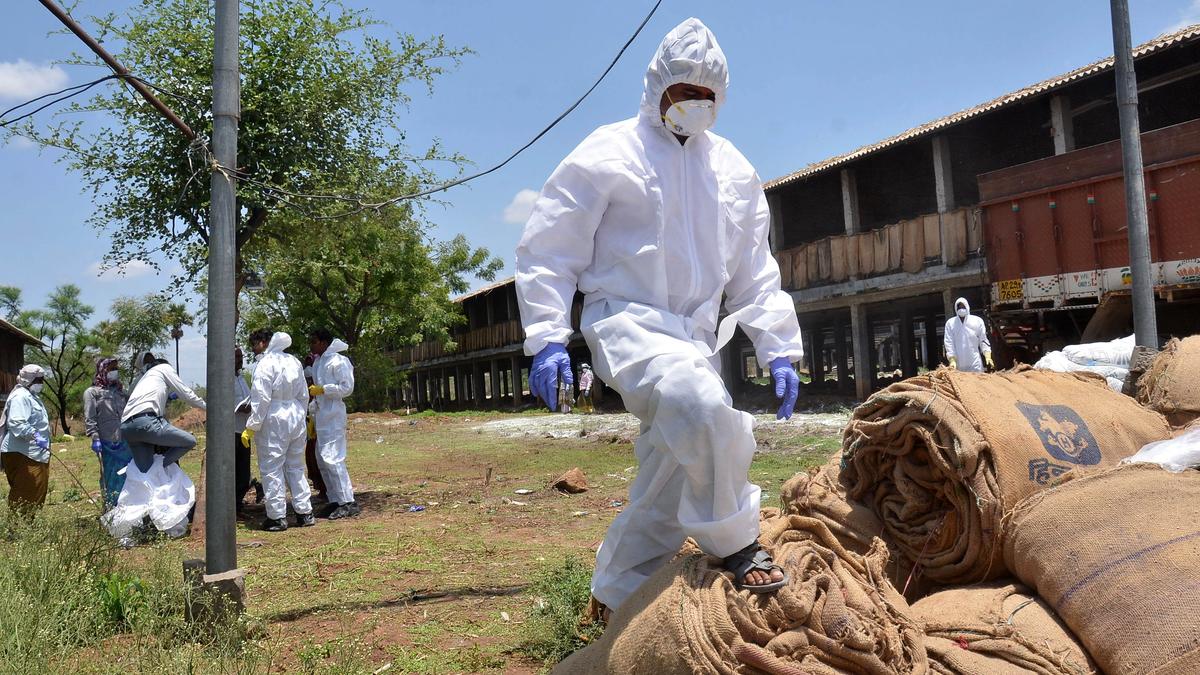
- 13 Nov 2024
In News:
- Cambodia saw a resurgence of H5N1 avian influenza cases after over 10 years of no human infections.
- From February 2023 to August 2024, 16 human cases were reported, with 3 deaths caused by the A/H5 clade 2.3.2.1c virus.
- Notably, 14 of these cases were caused by a novel reassortant virus, involving a mixture of clade 2.3.2.1c and clade 2.3.4.4b gene segments.
Key Points:
- Reassortment of the Virus:
- The reassortment between clades 2.3.2.1c (Southeast Asia) and 2.3.4.4b (global spread) has created a new strain.
- This reassortant virus is responsible for the second wave of infections in humans, starting in October 2023.
- Zoonotic Transmission:
- Investigations confirmed that direct contact with sick poultry or bird droppings was the primary source of human infections.
- There have been no reported cases of human-to-human transmission.
- The novel reassortant virus appears to have replaced the 2.3.2.1c strain in Cambodian poultry.
- Geographic Spread and Spillovers:
- Clade 2.3.2.1c was first reported in Cambodian poultry in March 2014. It continued to circulate in both poultry and wild birds.
- Clade 2.3.4.4b viruses began circulating in Cambodian live bird markets by 2021, co-existing with clade 2.3.2.1c.
- There were two key spillovers to humans:
- The first spillover in February 2023, associated with clade 2.3.2.1c, involved two related individuals, with one death.
- The second spillover, beginning in October 2023, involved the novel reassortant virus.
- Genetic Analysis and Mutation Concerns:
- Genetic sequencing showed significant changes in the hemagglutinin (HA) gene of viruses from human cases, indicating a shift from older local strains to newer sublineages.
- The PB2 627K mutation in the novel reassortant is concerning, as it is linked to increased mammalian adaptation and the potential for airborne transmission, particularly in mammals like ferrets.
- This mutation raises concerns about the virus’s ability to adapt to humans or other mammals.
- Environmental and Epidemiological Factors:
- The reassortment is believed to have been facilitated by:
- High-density poultry farming.
- Wild bird migration.
- Cross-border poultry trade in Southeast Asia.
- These factors heighten the risk of zoonotic transmission, emphasizing the need for continued vigilance in the region.
- The reassortment is believed to have been facilitated by:
- Surveillance and Response:
- One Health investigations linked human cases to infected poultry, highlighting the importance of rapid response through whole genome sequencing.
- The ongoing surveillance is critical, as the novel reassortant strain has already replaced clade 2.3.2.1c in Cambodian poultry.
- Public Health Recommendations:
- There is an urgent need to strengthen sustained surveillance of avian influenza in both poultry and wild birds, particularly in Southeast Asia.
- Public health strategies should focus on:
- Reducing human exposure to infected poultry.
- Promoting safe poultry handling practices.
- Encouraging early healthcare-seeking behavior in individuals with potential symptoms.
Accessibility for Disabled Persons
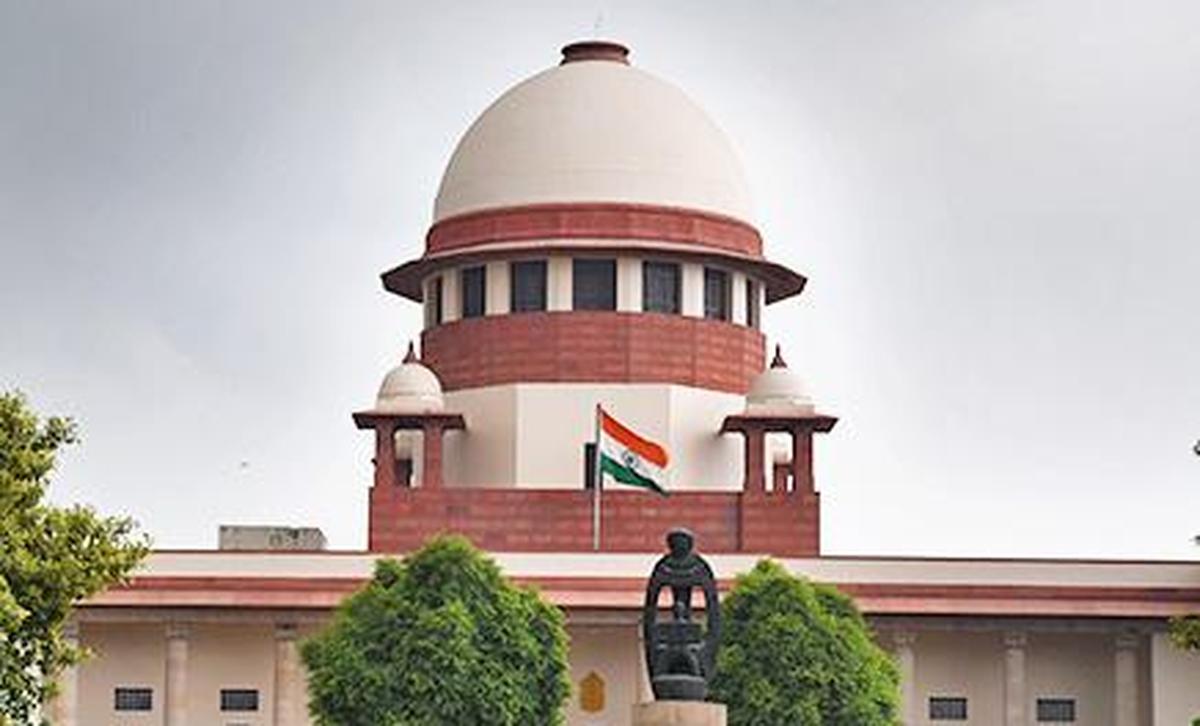
- 13 Nov 2024
In News:
Recently, the Supreme Court of India delivered a significant ruling affirming that the right of persons with disabilities (PwDs) to access environments, services, and opportunities is a fundamental human right. The judgment was made in the case of RajiveRaturi vs. Union of India &Ors. and is based on a report submitted by the Centre for Disability Studies (CDS) at NALSAR University of Law.
Key Points of the Judgment:
- Social Model of Disability:
- The Court upheld the social model of disability, which focuses on societal changes to ensure the full inclusion and participation of PwDs.
- The model emphasizes removing social barriers and creating an inclusive environment that accommodates all disabilities.
- Challenges Faced by PwDs: The ruling highlighted various challenges faced by PwDs, as identified in the CDS NALSAR report:
- Accessibility Barriers: Significant gaps exist in accessibility measures across public spaces such as courts, prisons, schools, and public transport.
- Intersectionality & Compounded Discrimination: PwDs often face multiple layers of discrimination, such as caste, gender, and socio-economic status, which compound their marginalization.
- Inconsistent Legal Framework: The RPwD Act (2016) mandates mandatory compliance for accessibility standards, but Rule 15 under RPwD Rules (2017) only offers self-regulatory guidelines, which the Court found insufficient.
- Court's Analysis of Rule 15:
- The Court declared Rule 15(1) of the RPwD Rules, 2017, as ultra vires, meaning it is inconsistent with the mandatory compliance intended by the RPwD Act.
- The Court stressed the need for stronger legal and regulatory enforcement to ensure access for PwDs.
- Principles of Accessibility: The Court outlined several essential principles for achieving accessibility:
- Universal Design: Environments and services should be universally accessible to all, including PwDs.
- Comprehensive Inclusion: All types of disabilities, both visible and invisible, should be addressed.
- Assistive Technology Integration: Using technology to support PwDs in daily activities.
- Stakeholder Consultation: PwDs and disability advocacy groups must be consulted in planning and designing accessible spaces.
- Two-Pronged Approach:
- The Court recommended a two-pronged approach:
- Ensure accessibility in existing infrastructure: Modify and update current institutions and services to become accessible.
- Design future infrastructure with accessibility in mind: Plan and build new spaces and services that are inclusive from the start.
- The Court recommended a two-pronged approach:
Legal and Policy Framework:
- Rights of Persons with Disabilities (RPwD) Act, 2016:
- The RPwD Act mandates various accessibility standards and provisions to protect and promote the rights of PwDs, in alignment with India’s obligations under the United Nations Convention on the Rights of Persons with Disabilities (UNCRPD), which India ratified in 2007.
- The Act defines a person with a benchmark disability as someone with at least 40% of a specified disability.
- International Obligations:
- The ruling reaffirmed the importance of Article 9 of the UNCRPD, which emphasizes the right of PwDs to access the physical environment, transport, and information and communication technologies.
- Government Initiatives: The judgment highlights several initiatives aimed at improving accessibility:
- Accessible India Campaign (Sugamya Bharat Abhiyan): A nationwide effort to make public spaces and services accessible to PwDs.
- Assistance for Aids and Appliances: Government schemes to provide PwDs with necessary aids and appliances.
- Unique Disability Identification Portal: A platform for PwDs to register and obtain a disability certificate.
Notable Judicial Precedents:
The Court referred to several previous rulings that recognized the right to accessibility:
- State of Himachal Pradesh v. Umed Ram Sharma (1986): The Court included the right to accessibility under the Right to Life (Article 21) of the Constitution.
- Disabled Rights Group v. Union of India (2017): The Court directed that educational institutions ensure reserved seats for PwDs.
Nano-Coating Technology for Fertilizer Efficiency

- 12 Nov 2024
In News:
A mechanically stable, biodegradable, hydrophobic nanocoating material can enhance the nutrient use efficiency of chemical fertilizers by tuning them for slow release, thereby limiting their interaction with the rhizosphere soil, water and microbes.
Development of Slow-Release Fertilizers:
- A biodegradable, hydrophobic nanocoating has been developed to enhance the nutrient use efficiency of chemical fertilizers.
- The nanocoating allows for slow release of nutrients, thus limiting excessive interaction with soil, water, and microbes, and optimizing fertilizer usage.
Coating Composition:
- The coating is made from nanoclay-reinforced binary carbohydrates, primarily chitosan (a biopolymer from chitin) and lignin (a plant-based polymer).
- These materials are low-cost, naturally derived, and eco-friendly, ensuring sustainability and reducing the environmental impact of fertilizer use.
Technological Innovation:
- The coating process involves using a drum rotor method to uniformly coat fertilizers, improving their efficiency.
- The tuning of hydrophobicity in the nanocoating alters the release kinetics of fertilizers, ensuring that nutrients are released in accordance with the crop’s nutrient uptake needs.
Sustainability and Biodegradability:
- The nanocoating is biodegradable, which ensures that it does not harm the environment post-application, unlike conventional chemical fertilizers that may lead to soil degradation and water pollution.
- Life cycle assessment confirms the product's long-term sustainability compared to traditional fertilizers.
Enhanced Crop Productivity:
- The slow-release coating enables a reduced fertilizer dose, while maintaining or even increasing crop yields, particularly for staple crops like rice and wheat.
- This technology facilitates higher agricultural output with fewer inputs, contributing to food security.
Industrial Viability:
- The mechanical stability of the coated fertilizers ensures they can withstand transportation and handling, making them suitable for large-scale industrial application.
- The rotary drum system used for coating ensures uniform application and superior mechanical performance, ensuring that the fertilizers are not damaged during the supply chain process.
Economic Benefits:
- The use of slow-release fertilizers can reduce overall fertilizer costs for farmers while enhancing yields, leading to improved socio-economic conditions for farmers.
- The technology holds potential for economic growth by boosting agricultural productivity and reducing the financial burden on farmers for chemical fertilizer inputs.
Global Relevance:
- The research is significant in the context of global sustainable development goals, aiming to reduce the over-reliance on conventional chemical fertilizers that contribute to soil degradation, water contamination, and greenhouse gas emissions.
Research Collaboration:
- This breakthrough was achieved by scientists from the Institute of Nano Science and Technology (INST), Mohali, in collaboration with the Department of Science and Technology (DST).
- The findings were published in the peer-reviewed journal Environmental Science: Nano, highlighting its scientific validation.
3rd Indian Space Conclave
- 12 Nov 2024
In News:
- The 3rd Indian Space Conclave, held in New Delhi, was a significant event for India's growing role in global space exploration and strategic partnerships.
- Organized by the Indian Space Association (ISPA), the conclave brought together key stakeholders from the government, industry, academia, and space agencies to discuss India’s space ambitions and the transformative role of space technologies.
Key Highlights:
Satcom as a Transformative Force for Digital India
- Emphasis on Satellite Communication (Satcom) is more than a mere tool—it's a transformative force driving Digital India by connecting every household, village, and remote area of the country.
- Satcom has a wide array of applications that extend across essential sectors such as telecommunications, disaster management, healthcare, education, and agriculture, particularly in underserved regions.
Indo-EU Space Collaboration
- The event also showcased India’s growing space partnerships, particularly with the European Union (EU). The EU Ambassador recognized India as a dynamic space power and highlighted shared goals in Earth observation, space security, and human spaceflight.
- Proposed joint initiatives include training programs, collaborative research, and satellite missions, such as the Proba-3 satellite launch by ISRO, focusing on observing the Sun.
- India’s trustworthiness as a partner in space was underscored by its role in the successful launch of the Proba-1 and Proba-2 missions for the EU, with Proba-3 marking India’s third contribution to EU space exploration.
Space Startups and Innovation
- The rise of space-focused startups in India, spurred by the 2020 space sector reforms, was another key highlight. India now has over 300 space startups, contributing to both economic growth and innovation in the space industry.
- These reforms have helped curb brain drain, with many talented Indian professionals returning from global agencies like NASA to join the expanding Indian space ecosystem.
India’s Long-Term Space Goals
- The Indian space program has ambitious long-term goals, including:
- Gaganyaan, India’s human spaceflight mission.
- A crewed lunar landing by 2040.
- The establishment of an Indian space station by 2035.
- Plans for space tourism by 2040.
- These initiatives demonstrate India’s commitment to becoming a global leader in space exploration and technological innovation.
Space Sector Reforms (2020)
- The Space Sector Reforms 2020 were designed to increase the participation of private players in India’s space activities. The creation of agencies like the Indian National Space Promotion and Authorization Center (IN-SPACe) and the strengthening of New Space India Limited (NSIL) have been pivotal in boosting India’s global space market share.
- IN-SPACe serves as an autonomous body fostering industry, academia, and startups, while NSIL handles commercial activities and promotes high-tech space-related ventures.
India's First Mars and Moon Analog Mission
- ISRO's First Mars and Moon Analog Mission was inaugurated in Leh, Ladakh. This mission simulates the conditions of space habitats, specifically focusing on Mars and Moon environments.
- Ladakh's unique climate—high altitude, low oxygen levels, and extreme temperature fluctuations—makes it an ideal location for testing life support systems, space habitat technologies, and sustainable resource utilization.
Key Aspects of the Analog Mission:
- Life support systems like hydroponics (space farming) and standalone solar power systems to support sustainable food production and renewable energy in space habitats.
- Circadian lighting to simulate daylight cycles, maintaining astronaut health and well-being.
- The mission’s goal is to understand the psychological and operational challenges of living in isolation and extreme conditions, preparing India for future interplanetary exploration.
State of Food and Agriculture 2024Report
- 12 Nov 2024
In News:
- India's annual hidden costs from agrifood systems total $1.3 trillion, the third-largest globally, after China ($1.8 trillion) and the US ($1.4 trillion).
- These costs are mainly driven by unhealthy dietary patterns leading to non-communicable diseases (NCDs), such as heart disease, diabetes, and stroke.
Major Contributors to Hidden Costs:
- Unhealthy Diets: Over 73% of India’s hidden costs stem from unhealthy dietary habits, including:
- Excessive consumption of processed foods and additives ($128 billion).
- Low intake of plant-based foods, fruits, and beneficial fatty acids ($846 billion).
- These dietary risks contribute to a significant health burden, increasing the prevalence of NCDs and reducing labor productivity.
Global Context:
- Global hidden costs of agrifood systems amount to $12 trillion annually.
- 70% of these costs (~$8.1 trillion) arise from unhealthy dietary patterns, which include high intakes of sugar, salt, and processed foods, contributing to diseases and economic losses.
Health Impacts:
- The report identifies 13 dietary risk factors that contribute to NCDs, including insufficient intake of whole grains, fruits, vegetables, and excessive sodium, with varying effects across different agrifood systems.
Environmental and Social Costs:
- Environmental Costs: High costs from unsustainable agricultural practices, including greenhouse gas emissions and nitrogen runoff. In some agrifood systems, environmental costs can reach up to 20% of GDP.
- Social Costs: High poverty rates among agrifood workers and undernourishment in systems like protracted crises and traditional agrifood systems contribute significantly to the hidden costs.
India’s Agrifood System Profile:
- India’s agrifood system faces significant challenges related to low wages, poor productivity, and poverty among agrifood workers, driven by distributional failures.
- Climate Change and Environmental Degradation: Issues like droughts, floods, and soil degradation threaten food security and agricultural sustainability in India.
Recommendations for Transformative Change:
- True Cost Accounting: Implementing this method can help better capture hidden costs and enable more informed decision-making for a sustainable agrifood system.
- Healthier Diets: Policies to make nutritious food more affordable and accessible to reduce health-related hidden costs.
- Sustainability Incentives: Encouraging practices that reduce greenhouse gas emissions, harmful land-use changes, and biodiversity loss, using labelling, certification, and industry standards.
- Consumer Empowerment: Providing accessible information about the environmental, social, and health impacts of food choices, ensuring even vulnerable households benefit from healthier options.
India’s Path Forward:
- India has several ongoing initiatives for sustainable agriculture, including:
- National Mission for Sustainable Agriculture (NMSA).
- Eat Right Initiative.
- Digital Agriculture Mission (DAM).
- However, challenges like climate change, soil degradation, and low productivity among smallholder farmers hinder progress toward sustainable food systems.
Key Focus Areas for India’s Agrifood Systems:
- Support for Smallholder Farmers: Enhancing access to technology, markets, and financial services for marginalized farmers.
- Sustainable Practices: Adoption of water-efficient practices, soil health restoration, and environmentally friendly farming methods.
- Collaboration with International Agencies: Cooperation with FAO, WFP, and others to strengthen agricultural reforms and support smallholder farmers.
Diclipterapolymorpha
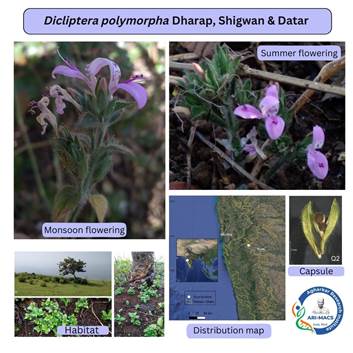
- 12 Nov 2024
In News:
A new species of Dicliptera, named Diclipterapolymorpha, has been discovered in the Northern Western Ghats of India.
Habitat and Location:
- Diclipterapolymorpha was found in the grasslands of Talegaon-Dabhade, a region known for its grasslands and fodder markets.
- The species thrives in the harsh climatic conditions of the Northern Western Ghats, an area vulnerable to summer droughts and frequent human-induced fires.
Unique Characteristics:
- The species is fire-resilient (pyrophytic), exhibiting a rare dual-blooming pattern:
- First Blooming: Occurs post-monsoon, typically from November to March/April.
- Second Blooming: Triggered by grassland fires in May and June, during which the plant produces dwarf flowering shoots.
- The inflorescence structure is unique in India, with its cymules developing into spicate inflorescences, a feature more commonly found in African species.
Taxonomy:
- The species is named Diclipterapolymorpha to reflect its diverse morphological traits.
- It is taxonomically distinct within the Dicliptera genus, with no known Indian species exhibiting similar characteristics.
Conservation Implications:
- The discovery highlights the need to carefully manage grassland ecosystems, as the species is adapted to fire but still vulnerable to habitat degradation.
- Human-induced fires are essential for the species' blooming cycle but must be managed to avoid overuse and degradation of habitat.
- The species' limited habitat range underscores the need for conservation efforts to protect the delicate ecosystems of the Western Ghats.
Publication:
- A research paper detailing the discovery of Diclipterapolymorpha has been published in the prestigious Kew Bulletin.
AntarikshaAbhyas 2024

- 12 Nov 2024
In News:
- ‘AntarikshaAbhyas – 2024’ is a three-day space exercise held from November 11-13, 2024, hosted by the Defence Space Agency (DSA), Headquarters Integrated Defence Staff.
- The exercise is the first of its kind and focuses on war-gaming the growing threats to space-based assets and services.
Objective of the Exercise:
- Enhance understanding of space-based assets and their operational dependencies.
- Identify vulnerabilities in military operations in case of denial or disruption of space services.
- Integrate India's space capabilities in military operations to secure national strategic objectives.
Participants:
- Defence Space Agency (DSA) and its allied units.
- Personnel from the Army, Navy, and Air Force.
- Specialist agencies under Headquarters Integrated Defence Staff, including:
- Defence Cyber Agency (DCA)
- Defence Intelligence Agency (DIA)
- Strategic Forces Command (SFC)
- Representatives from ISRO (Indian Space Research Organisation) and DRDO (Defence Research & Development Organisation).
Focus Areas:
- Space-based asset and service operational dependency.
- Securing national interests in space through technological innovation and development.
- Assessing space service vulnerabilities and impacts on military operations.
EV as a Service Programme
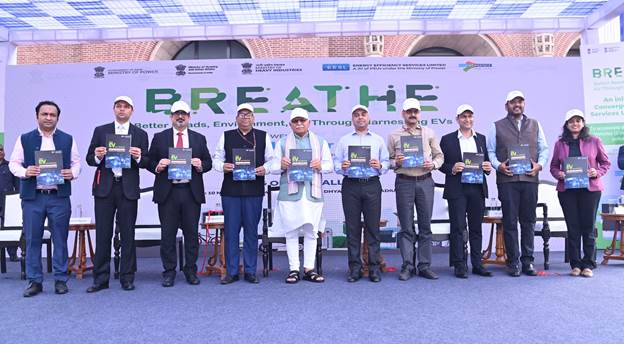
- 11 Nov 2024
In News:
- The 'EV as a Service'programme was launched by Shri Manohar Lal, Union Minister of Power and Housing & Urban Affairs, at the Major Dhyan Chand National Stadium.
- The initiative is spearheaded by Convergence Energy Services Limited (CESL), a subsidiary of Energy Efficiency Services Limited (EESL), to promote electric vehicles (EVs) in government offices.
Objective:
- The 'EV as a Service'programme aims to boost e-mobility within the government sector by deploying 5,000 electric cars in central and state government ministries, public sector enterprises (CPSEs), and various institutions over the next two years.
- The programme is designed to support India’s net-zero emissions goal by 2070 and advance the country's environmental sustainability vision.
Flexible Procurement Model:
- The programme utilizes a flexible procurement model, allowing government offices to choose from a range of E-Cars based on operational needs, making it adaptable for different government departments.
- It will help in reducing the reliance on fossil fuels, cutting carbon emissions, and contributing to energy security.
CESL’s Contribution:
- CESL has already deployed 2000 electric cars across India and is working on deploying around 17,000 electric buses.
- The 'EV as a Service'programme is a key step in helping India transition to clean mobility and reducing emissions from government fleets.
Alignment with National Initiatives:
- The launch complements the PM E-DRIVE Scheme, which aims to accelerate India’s transition to electric mobility.
- Vishal Kapoor, MD & CEO of CESL, emphasized that the initiative is helping to create a collaborative ecosystem involving manufacturers, fleet operators, policymakers, and users to scale up electric mobility in India.
Comics Commandos in Assam
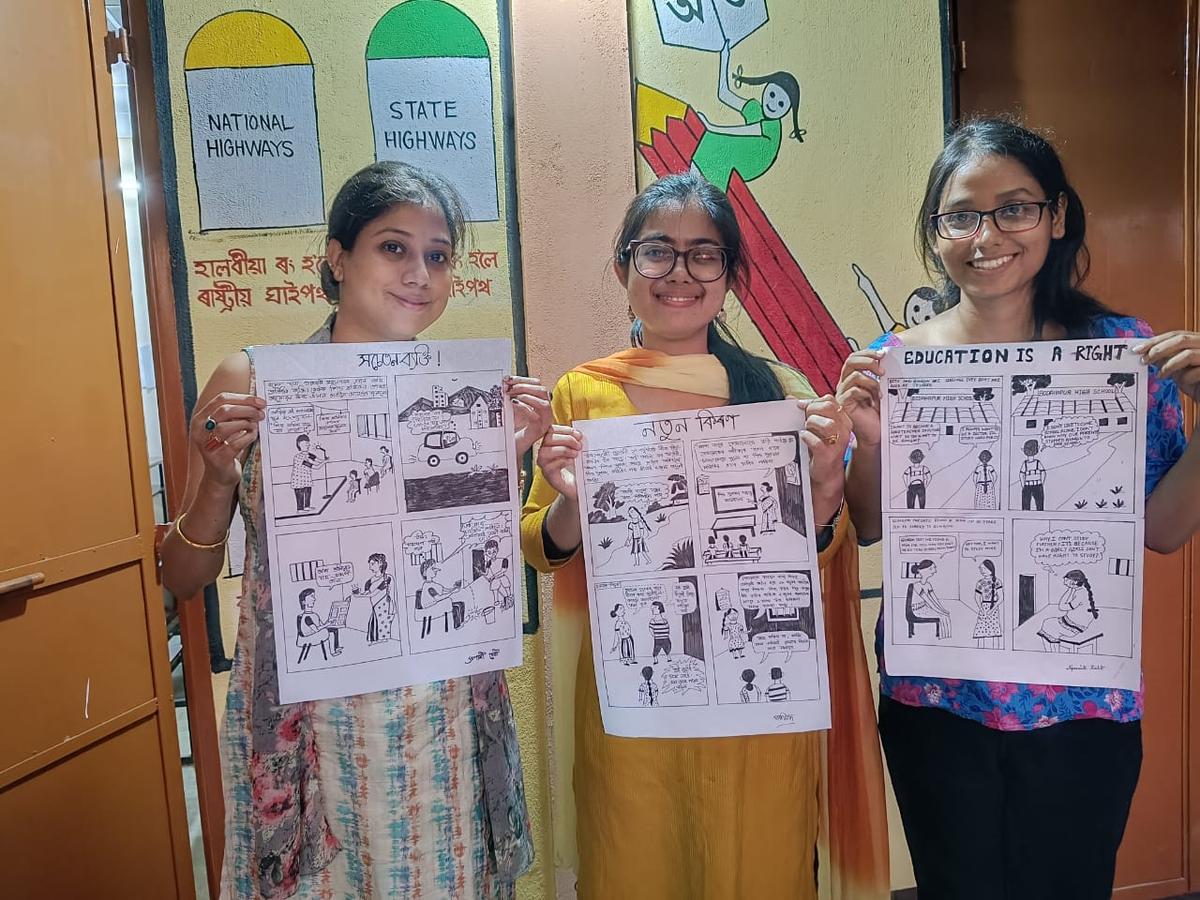
- 11 Nov 2024
In News:
- "Comics Commandos" is an innovative initiative launched in Goalpara district, Assam, aimed at combating child labour and child marriage through the creative medium of comics.
- The initiative trains 30 local youths to create comic strips that use humour and minimal text for effective communication and public engagement.
Purpose and Objectives:
- Primary Goal: To raise awareness about child labour and child marriage, two major social issues prevalent in the region, by using visual storytelling.
- The initiative aims to resonate with the local community, focusing on everyday struggles like economic hardship, child abuse, and the social norms that perpetuate these issues.
- Rising Dropout Rates: Assam has witnessed an increase in school dropout rates, from 3.3% in 2020-21 to 6.02% in 2021-22, exacerbated by economic pressures like poverty, which force children to work or marry early.
Execution and Approach:
- Training: Thirty local youths are trained to design caricatures and doodles for the comics, ensuring the messages are both simple and engaging for a broader audience.
- Visual Storytelling: The use of visuals over text helps overcome literacy barriers and makes the message more impactful and accessible.
- Community Involvement: The program collaborates with teachers and school committees to facilitate wider participation and support in creating social awareness.
Government Support:
- Chief Minister HimantaBiswaSarma initiated a state-wide campaign in 2023 against child marriage, with the ambitious goal of eradicating it by 2026. This initiative aligns with the state's broader efforts to address social issues.
Impact of the Initiative:
- Comics Commandos is being seen as an effective tool for community empowerment and awareness generation in a region that faces persistent social challenges.
- By involving local youths in the campaign, the initiative ensures community participation and ensures that the message is communicated in a culturally relevant manner.
- The program also empowers young people to use their creativity for social change, thus helping build leadership and social responsibility among the youth.
Arpactophiluspulawskii
- 11 Nov 2024
In News:
- Arpactophiluspulawskii, a new species of aphid wasp, was discovered in Nagaland (Khuzama district), marking the first record of the genus Arpactophilus outside Australasia.
- This significant discovery highlights the biodiversity of Northeastern India, a region known for its rich and unexplored fauna.
Importance of Discovery:
- The Zoological Survey of India (ZSI) researchers cataloged the species, marking a major range expansion for the genus Arpactophilus, previously only found in Australasia, including regions like New Caledonia.
- The discovery expands the genus’s known distribution by thousands of kilometers, suggesting ecological connections between Nagaland and the Australasian region.
Species Characteristics:
- Arpactophiluspulawskii is distinguished by its square-shaped head, an inverted V-shaped uplifted clypeus, and rust-colored body markings.
- It features a uniquely textured thorax, setting it apart from other species in the genus.
- The wasp was collected from an altitude of over 1,800 meters, indicating Nagaland’s ecological diversity at high altitudes.
Ecological Significance:
- The Arpactophilus genus is known for its unique nesting behavior: females use silk from their abdomen to create protective cells in old termite galleries or mud nests.
- The discovery suggests that Nagaland’s ecological conditions (e.g., high altitude, diverse habitat) support the presence of such specialized fauna, making the region an important site for entomological research.
Taxonomic Contribution:
- The species is named Arpactophiluspulawskii in honor of Dr. Wojciech J. Pulawski, a distinguished expert in wasp taxonomy.
Scientific and Research Implications:
- The discovery is expected to stimulate further entomological research in Northeastern India, especially in areas like Nagaland, which are often overlooked in global biodiversity studies.
- Researchers believe that this discovery could lead to the identification of other unknown species in the region, expanding our understanding of species distribution and the ecological connectivity between regions.
Parliamentary Panel's Review on Mechanism to Curb Fake News

- 11 Nov 2024
In News:
- The Parliamentary Panel on Communications and Information Technology is reviewing mechanisms to curb fake news, following the Bombay High Court striking down a provision of the amended Information Technology (IT) Rules, 2021.
- The controversial provision allowed the government to identify and flag "fake news" on social media through its Fact Check Unit (FCU).
- The panel, led by BJP MP Nishikant Dubey, has summoned representatives from News Broadcasters and Digital Association and the Editors Guild of India to discuss the issue on November 21, 2024.
Issue with the Amended IT Rules:
- The IT Rules, 2021 were amended in April 2022 to include “government business” under the definition of fake news, expanding the scope of content flagged by the FCU.
- This amendment was challenged by media bodies and individuals like comedian Kunal Kamra, leading to the Bombay High Court striking it down in 2024.
- The court deemed the provisions unconstitutional, citing concerns about transparency and the potential misuse of power.
Types of Fake News:
- Misinformation: False information spread unintentionally.
- Disinformation: Deliberately false information meant to deceive and cause harm.
Status of Fake News in India:
- India as a major spreader of misinformation: The World Economic Forum's Global Risks 2024 report identifies disinformation as a significant short-term risk, with India as one of the largest consumers and producers of false information.
- Social Media Influence: Platforms like Facebook, WhatsApp, Twitter, and YouTube are widely used in India for news dissemination, making them a breeding ground for fake news.
- Spread of Political and Religious Misinformation: Fake news often serves political or religious agendas, leading to societal polarization and conflict.
Government Efforts to Combat Fake News:
- IT (Intermediary Guidelines and Digital Media Ethics Code) Amendment Rules, 2023: This amendment expanded the scope of "fake news" to include “government business” and gave the FCU the authority to flag misleading content.
- Press Information Bureau (PIB) Fact Check Unit: The PIB continues to run a fact-checking initiative, but it lacks the authority to remove flagged content from social media platforms.
- Digital Literacy Campaigns: Programs like Pradhan Mantri Gramin Digital Saksharta Abhiyan (PMGDISHA) aim to improve digital literacy, especially in rural areas, to help citizens identify and avoid fake news.
National Education Day 2024
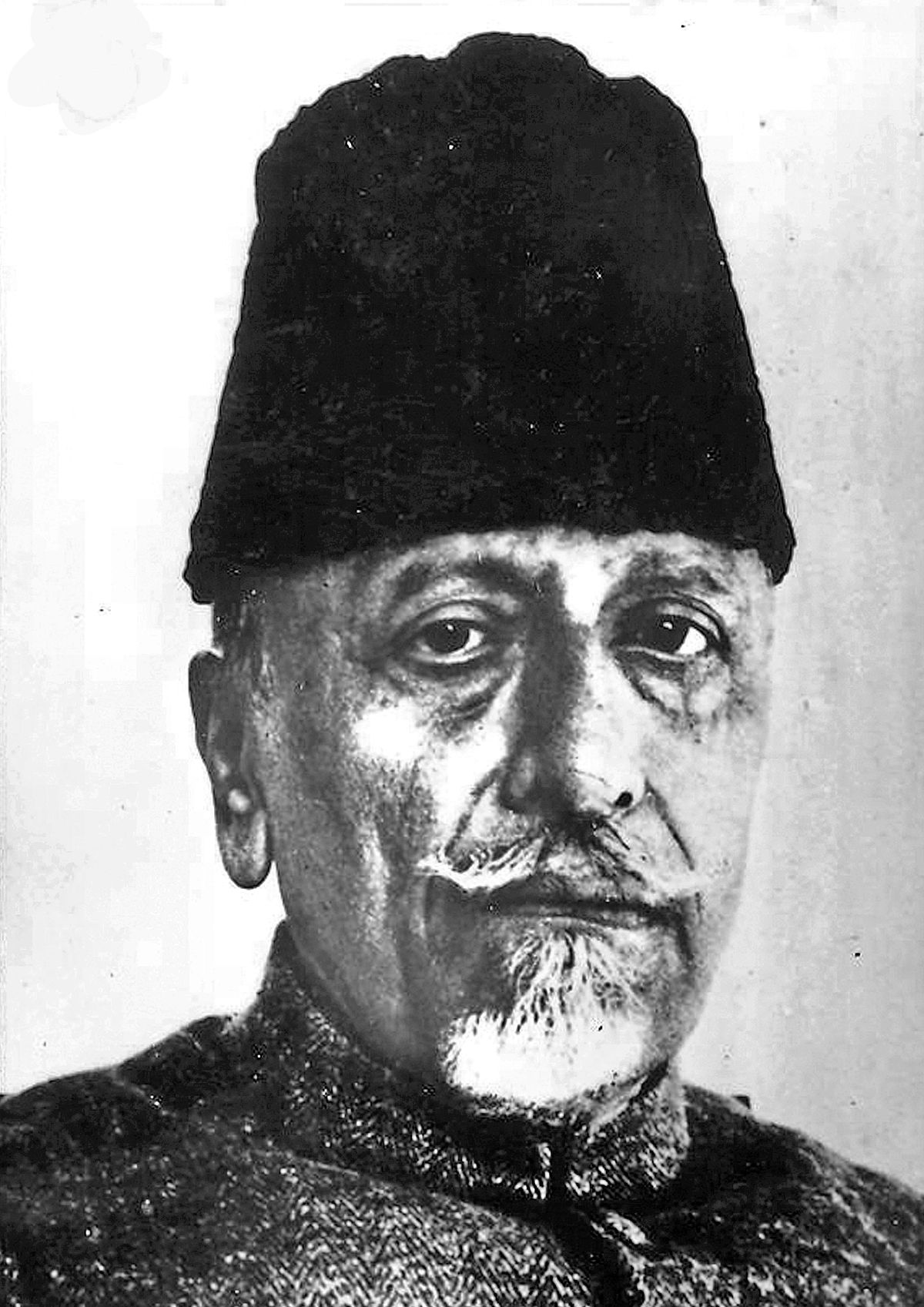
- 11 Nov 2024
In News:
National Education Day is celebrated annually on November 11 to honor the birth anniversary of Maulana Abul Kalam Azad, India's first Education Minister and a prominent freedom fighter, scholar, and educator.
Key Highlights:
- Establishment:
- The observance was instituted by the Ministry of Human Resource Development (now Ministry of Education) in 2008 to recognize Azad’s pivotal contributions to India’s education system and his vision for a progressive, educated society.
- Azad's Contributions to Education:
- Azad played a significant role in shaping India's post-independence educational landscape, establishing critical institutions such as:
- University Grants Commission (UGC)
- All India Council for Technical Education (AICTE)
- Indian Institutes of Technology (IIT), including IIT Kharagpur
- Indian Council for Cultural Relations (ICCR)
- Promoted scientific research, cultural institutions, and technical education.
- Azad played a significant role in shaping India's post-independence educational landscape, establishing critical institutions such as:
- Significance of National Education Day:
- Reflects India’s commitment to promoting quality and inclusive education.
- Emphasizes the importance of education in empowering individuals and fostering national progress.
- Highlights educational reforms, literacy, and equal access to education as tools for societal transformation and empowerment.
- Theme for 2024:
- Although not officially published yet, the theme is expected to focus on inclusive, high-quality education, underlining the need for educational systems that equip students with skills to thrive in a rapidly evolving world.
- Focus Areas:
- Promoting literacy, equal access to education, and educational reforms.
- Developing critical thinking, creativity, and emotional intelligence in students.
Indian Military Heritage Festival 2024
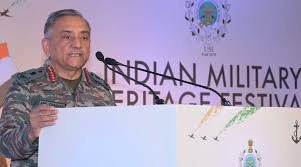
- 10 Nov 2024
In News:
- Chief of Defence Staff General Anil Chauhan inaugurated the 2nd edition of the Indian Military Heritage Festival (IMHF) on November 8, 2024, in New Delhi.
- The two-day festival engages global and Indian experts, corporations, academicians, and non-profits focusing on India’s national security, foreign policy, military history, and military heritage.
Launch of Project Shaurya Gatha:
- Project ‘Shaurya Gatha’ was launched to conserve and promote India’s military heritage.
- The initiative, spearheaded by the Department of Military Affairs and USI of India, focuses on education and tourism to highlight India’s military history and valor.
- Publications Released:
- General Chauhan released important military publications:
- "Because of this: A History of the Indo-Pak Air War December 1971" by Air Marshal Vikram Singh (Retd).
- "Valour and Honour", a joint publication by the Indian Army and USI of India.
- "War-wounded, Disabled Soldiers, and Cadets", a joint publication by USI and the War Wounded Federation.
- General Chauhan released important military publications:
- Festival's Significance:
- The festival addresses the gap in public awareness regarding India’s military heritage and security concerns.
- It aims to enhance understanding of India’s military traditions, security issues, and the country’s efforts toward self-reliance in military capabilities under the Aatmanirbhar Bharat initiative.
Zhurong Rover
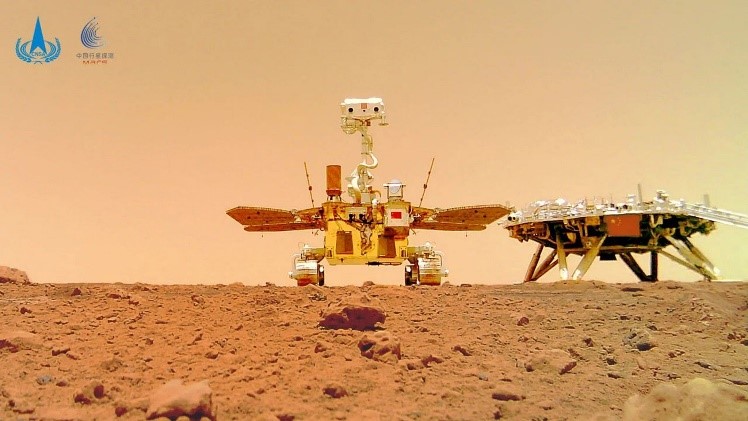
- 10 Nov 2024
In News:
Chinese rover helps find evidence of ancient Martian shoreline.
Mission Overview:
- Rover: Zhurong, part of China’s Tianwen-1 Mars exploration program.
- Mission Launch: Zhurong landed in 2021 in the Utopia Planitia region of Mars' northern hemisphere.
- Key Discovery: Evidence of an ancient ocean on Mars, suggesting a habitable past for the planet.
Key Findings:
- Geological Features Indicating a Coastline:
- Data from Zhurong and orbiting spacecraft (Tianwen-1 Orbiter, NASA's Mars Reconnaissance Orbiter) revealed geological features such as troughs, sediment channels, and mud volcano formations, suggesting the existence of a Martian coastline.
- Features indicate both shallow and deeper marine environments, supporting the idea of a past ocean.
- Age of the Ocean:
- The ocean likely existed around 3.68 billion years ago, with its surface potentially frozen in a geologically short period.
- The ocean is thought to have disappeared by 3.42 billion years ago.
Evolutionary Scenario of Mars:
- At the time of the ocean, Mars might have already begun transitioning away from a habitable planet, losing much of its atmosphere and becoming cold and dry.
- The ocean may have formed after Mars' climate began to change, suggesting that it was once more hospitable, possibly capable of supporting microbial life.
Implications for Life on Mars:
- The presence of water, a key ingredient for life, raises the possibility that Mars could have supported microbial life in its early history.
- When Mars had a thick, warm atmosphere, conditions might have been favorable for life, as microbial life would have been more likely to exist.
Significance of Zhurong's Contribution:
- Zhurong exceeded its original mission duration of three months, operating until May 2022, helping provide key data to understand Mars' ancient water history.
- The discovery adds to ongoing efforts to study the disappearance of water on Mars and its implications for the planet's habitability.
Future Exploration:
- Other studies, including seismic data from NASA’s InSight lander, suggest that liquid water might still exist deep beneath the Martian surface, hinting at the possibility of finding water in the planet's subsurface in the future.
World’s First CO? to Methanol Plant

- 10 Nov 2024
In News:
- NTPC has achieved the first-ever synthesis of CO? (captured from flue gas) and hydrogen (produced via a PEM electrolyzer) into methanol at its Vindhyachal plant.
- This marks a significant step in carbon management technology, aimed at advancing sustainable fuel production.
About CO?-to-Methanol Conversion:
- Carbon Dioxide Capture:
- CO? is captured from industrial sources, such as power plants, or directly from the atmosphere.
- Hydrogen Production:
- Renewable energy sources like solar or wind power are used to produce hydrogen through water electrolysis.
- Methanol Synthesis:
- The captured CO? is combined with hydrogen in the presence of a catalyst to produce methanol, typically under high pressure and temperature conditions.
Benefits of CO?-to-Methanol Conversion:
- Carbon Capture and Utilization (CCU):
- This technology reduces the impact of CO? on the atmosphere by converting it into useful products.
- Renewable Fuel Source:
- Methanol produced through this process can be used as a fuel for transportation, power generation, or as a feedstock for chemicals.
- Energy Storage:
- Methanol offers a more practical storage and transportation option than hydrogen, making it a potential energy storage solution and aiding the transition to hydrogen-based energy systems.
- Versatile Feedstock:
- Methanol is widely used in producing chemicals, solvents, and plastics, supporting various industrial applications.
What is Methanol?
- Brief: Methanol, also known as methyl alcohol or wood alcohol, is the simplest form of alcohol. It is a clear, colorless, and flammable liquid with a distinctive odor.
- Key Properties:
- Colorless, miscible with water, toxic if ingested, flammable.
QS World University Rankings
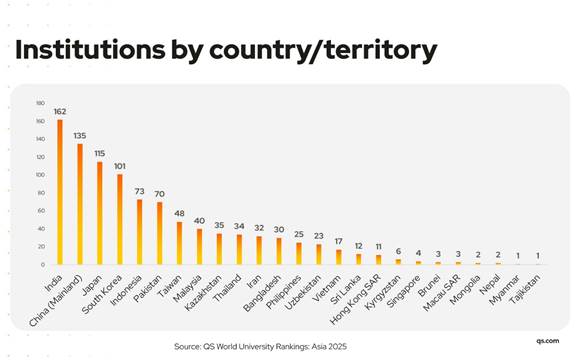
- 10 Nov 2024
In News:
The QS World University Rankings: Asia 2025 spotlights the top institutions in Eastern, Southern, South-Eastern, and Central Asia, emphasizing academic excellence, research, innovation, and internationalization.
India's Performance:
India has shown a remarkable upward trajectory, featuring:
- Two institutions in the Top 50:
- IIT Delhi ranked 44th (up from 46th), with a 99% employer reputation score.
- IIT Bombay ranked 48th, excelling with a 99.5% employer reputation score and 96.6% academic reputation score.
- Top 100 Institutions:
- IIT Madras (56th), IIT Kharagpur (60th), Indian Institute of Science (62nd), IIT Kanpur (67th), and University of Delhi (81st).
- Top 150 Institutions:
- IIT Guwahati, IIT Roorkee, Jawaharlal Nehru University, Chandigarh University (120th), UPES (148th), and VIT (150th).
Key Indicators for India:
- International Research Network and Citations per Paper contribute to India's growing global academic reputation.
- Papers per Faculty and Staff with PhD are India’s strongest indicators, reflecting robust research output and high teaching standards.
- Anna University achieved a perfect score of 100 in the Papers Per Faculty indicator, emphasizing high research output.
- North Eastern Hill University and University of Agricultural Sciences, Bangalore received a perfect score of 100 in the Faculty-Student Indicator.
Growth of Indian Institutions:
- India now has 46 institutions in the 2025 rankings, up from just 11 in 2015, marking a 318% increase over the past decade.
- India dominates Southern Asia with seven institutions in the top 10, showcasing the country's strengthening educational landscape.
India's Growing Global Influence:
- India's achievements underscore its commitment to academic excellence, competitiveness, and resilience in global higher education.
- Institutions like IIT Delhi and IIT Bombay highlight India’s ability to balance research productivity with high-quality teaching, enhancing its reputation as a global education hub.
One Sun One World One Grid (OSOWOG) Initiative
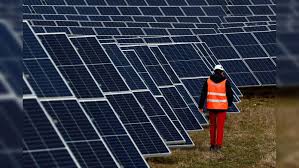
- 10 Nov 2024
In News:
- India is in talks with Oman, UAE, Saudi Arabia, Maldives, and Singapore to establish cross-border electricity transmission lines.
- This is part of the ambitious OSOWOG initiative to create a global renewable energy grid.
Key Points:
- Proposed by the Prime Minister of India at the 2018 International Solar Alliance (ISA) Assembly.
- Aims to create a transnational electricity grid that delivers power worldwide.
- Led by India and the UK, in collaboration with ISA and the World Bank Group.
Vision of OSOWOG:
- Connect regional grids through a common infrastructure for the transfer of renewable energy, focusing on solar power.
- Harness solar and other renewable energy from regions where the sun is shining and efficiently transmit it to areas of need.
- Aim to provide power to 140 countries using clean and efficient solar energy.
Phases of OSOWOG:
- Phase 1:
- Connect the Indian grid with grids in the Middle East, South Asia, and South-East Asia.
- Share solar and other renewable energy resources.
- Phase 2:
- Expand the interconnected grid to include renewable resources from Africa.
- Phase 3:
- Achieve a global interconnection aiming for 2,600 GW by 2050.
- Integrate as many countries as possible into a single renewable energy grid.
Global Collaboration:
- Involves national governments, international organizations, legislators, power operators, and experts.
- Focus on accelerating infrastructure development for a clean energy-powered world.
Adaptation Gap Report 2024
- 08 Nov 2024
In News:
The Adaptation Gap Report 2024, published by the United Nations Environment Programme (UNEP), underscores the urgent need for enhanced climate adaptation efforts, particularly through increased financial support for developing countries. The report, titled Come Hell and High Water, provides an annual assessment of global adaptation progress in planning, implementation, and financing.
Key Findings
- Adaptation Gap:
- The adaptation finance gap is estimated at $187–359 billion per year.
- Current adaptation finance falls short, with only $28 billion provided in 2022, meeting just 5% of projected needs.
- Adaptation Progress:
- International public adaptation finance to developing countries rose to $27.5 billion in 2022, up from $19 billion in 2019, reflecting progress toward the Glasgow Climate Pact's goal of doubling finance by 2025.
- Significance of Adaptation:
- Ambitious adaptation measures could reduce global climate risk by 50%.
- For instance, $16 billion annually in agriculture could prevent climate-induced hunger for 78 million people.
- Impact of Global Warming:
- According to UNEP's Emissions Gap Report 2024, global temperatures may increase by 2.6°C–3.1°C above pre-industrial levels by 2100.
- Developing countries face severe vulnerabilities, evidenced by recent floods in Nepal, Nigeria, and Chad.
- National Adaptation Plans (NAPs):
- While 171 countries have at least one adaptation policy, progress in implementation remains slow.
- 10 countries have shown no interest in developing adaptation policies.
Challenges in Adaptation Financing
- Financial Burden: Adaptation projects such as seawalls and resilient infrastructure are costly for developing nations.
- Funding Shortfalls:
- Developed nations have failed to meet financial commitments like the $100 billion goal set for 2020.
- The adaptation finance gap remains significant in non-private sector-funded areas, such as ecosystem preservation.
- High-Interest Loans: Much current funding relies on high-interest loans, increasing the debt burden for recipient countries.
Recommendations
- Adopt New Financing Goals: Establish an ambitious New Collective Quantified Goal for climate finance at COP29.
- Strategic Adaptation Financing:
- Shift from project-based to anticipatory and transformational financing.
- Invest in harder-to-finance areas like ecosystem preservation and cultural heritage.
- Alternative Financing Models: Encourage risk finance, resilience bonds, debt-for-adaptation swaps, and payments for ecosystem services.
Global and Indian Initiatives
Global Initiatives:
- Paris Agreement: Sets a global adaptation goal to enhance resilience.
- UAE Framework for Global Climate Resilience: Introduced at COP28, focusing on agriculture, water, and health adaptation targets.
- Adaptation Fund: Provides project funding for developing nations under the Kyoto Protocol.
Indian Initiatives:
- National Action Plan on Climate Change (NAPCC): Includes eight missions, such as the National Adaptation Fund for Climate Change (NAFCC).
- Sectoral Schemes:
- MISHTI: Mangrove initiative for shoreline protection.
- Amrit Dharohar: Enhances wetland ecosystems.
- India's adaptation spending accounted for 5.6% of GDP in 2021–2022.
PM Vishwakarma Yojana
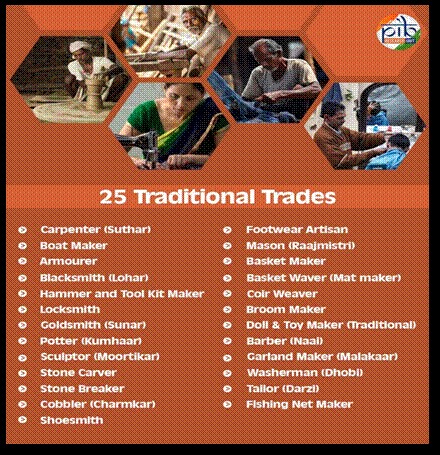
- 08 Nov 2024
In News:
The PM Vishwakarma Yojana is a landmark initiative by the Indian government aimed at revitalizing traditional craftsmanship and empowering artisans and craftspeople, often referred to as Vishwakarmas. Launched on September 17, 2023, during Vishwakarma Jayanti, the scheme highlights the government's commitment to preserving India's rich cultural heritage and supporting the unorganized sector.
Key Highlights
- Objective:
- To strengthen the Guru-Shishya tradition and improve the quality, reach, and marketability of products and services by artisans.
- To integrate Vishwakarmas into domestic and global value chains, making them self-reliant.
- To alleviate poverty by supporting rural and urban artisans across India.
- Financial Outlay:,Fully funded by the Union Government with a ?13,000 crore budget spanning five years (2023–2028).
- Eligibility:
- Open to rural and urban artisans and craftspeople involved in 18 traditional crafts, such as blacksmithing, goldsmithing, pottery, boat making, and carpentry.
- Covers 5 lakh families in the first year and aims to reach 30 lakh families over five years.
- Key Benefits:
- Financial Support:
- Collateral-free credit of ?1 lakh (first tranche) and ?2 lakh (second tranche) at a concessional 5% interest rate.
- Government provides 8% interest subvention upfront to banks.
- Toolkit Incentive: ?15,000 via e-vouchers for acquiring modern tools.
- Training and Skill Development: Basic and advanced skill training to create industry-ready manpower.
- Digital and Marketing Incentives: Encourages digital transactions and provides marketing support.
- Recognition: Beneficiaries receive a PM Vishwakarma Certificate and ID Card.
- Market Linkage: Facilitates better market access for artisan products.
- Financial Support:
- Achievements (as of Nov 4, 2024):
- 25.8 million applications received.
- 2.37 million artisans registered after verification.
- Over 1 million artisans benefited from toolkit incentives.
Significance
- Promotes inclusive development by supporting an underserved segment of the workforce.
- Recognizes and supports traditional skills passed down through generations, preserving India’s cultural diversity.
- Enhances productivity and competitiveness by integrating artisans into MSME sectors.
- Encourages sustainability through the promotion of handmade, eco-friendly crafts.
Key Institutions Involved
- Ministry of Micro, Small, and Medium Enterprises (MSME): Oversees implementation.
- Common Services Centres (CSC): Facilitates registration through biometric-based PM Vishwakarma Portal.
Challenges Addressed
- Lack of access to modern tools and financial support.
- Insufficient market linkages and exposure for traditional crafts.
- Limited opportunities for skill enhancement and product development.
Protected Planet Report 2024
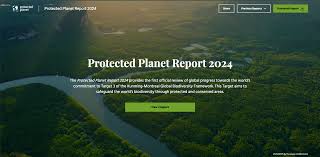
- 08 Nov 2024
In News:
The Protected Planet Report 2024, released by UNEP-WCMC and IUCN, evaluates global progress toward achieving Target 3 of the Kunming-Montreal Global Biodiversity Framework (KM-GBF). This target aims to conserve 30% of Earth's terrestrial, inland water, coastal, and marine areas by 2030.
Key Highlights of the Report
- Current Global Coverage
- Land and Inland Waters: 17.6% protected.
- Oceans and Coastal Areas: 8.4% protected.
- Progress since 2020: Minimal increase (<0.5% for both realms), equivalent to an area twice the size of Colombia.
- Remaining Challenges to Achieve Target 3 by 2030
- Land: An additional 12.4% of land area must be protected (equivalent to Brazil + Australia).
- Ocean: 21.6% more marine areas must be safeguarded (larger than the Indian Ocean).
- Key Gaps:
- Only 8.5% of protected areas on land are well-connected.
- Only one-fifth of the areas critical for biodiversity are fully protected.
- Biodiversity representation remains uneven, with some ecological regions having no protection at all.
- Governance and Effectiveness Issues
- Less than 5% of protected land and 1.3% of marine areas have management effectiveness assessments.
- Only 0.2% of protected land and 0.01% of marine areas have undergone equitable governance assessments.
- Indigenous governance covers less than 4% of protected areas despite Indigenous and traditional territories covering 13.6% of the terrestrial areas.
- Ocean Conservation Progress: Most progress is in national waters; however, areas beyond national jurisdiction (the high seas) remain underrepresented (<11% coverage).
- Data Deficiency: Insufficient data to measure biodiversity outcomes, equity, and governance in protected areas.
Importance of Target 3
- Biodiversity Benefits: Protected areas play a critical role in halting and reversing biodiversity loss.
- Ecosystem Services: These areas contribute to clean air, water, climate regulation, and food security.
- Cultural and Economic Significance: They uphold the rights of Indigenous Peoples and local communities, ensuring equitable governance and sustainable resource use.
Key Recommendations
- Accelerate Conservation Efforts:
- Expand protected and conserved areas with a focus on biodiversity hotspots.
- Ensure areas are ecologically connected and effectively managed.
- Strengthen Indigenous and Local Contributions:
- Recognize and support the stewardship of Indigenous Peoples and local communities.
- Ensure their voices and knowledge systems are integrated into conservation planning.
- Improve Governance and Equity:
- Address gaps in equitable governance and include rights-based approaches.
- Global Cooperation:
- Increase international financing to developing nations for biodiversity conservation.
- Foster cross-border partnerships and support data-sharing initiatives.
- Enhance Data Availability:
- Collect and disseminate data on the effectiveness of protected areas and their biodiversity outcomes.
India’s Role and Strategy
- Commitment to KM-GBF: India updated its National Biodiversity Strategy and Action Plan (NBSAP) to align with the KM-GBF goals, aiming to protect 30% of natural areas by 2030.
- Focus on Restoration: Prioritizes the restoration of forests, rivers, and other ecosystems to maintain essential resources like clean air and water.
- Indigenous Participation: India emphasizes integrating Indigenous territories into its conservation framework.
Adoption Awareness Month 2024

- 08 Nov 2024
In News:
Adoption Awareness Month is an annual event where CARA and all its stakeholders come together to raise awareness about the legal process of adoption.
Context
- Celebrated by: Ministry of Women and Child Development (MWCD) and the Central Adoption Resource Authority (CARA).
- When: November 2024.
- Theme: “Rehabilitation of Older Children through Foster Care and Foster Adoption.”
- Purpose: To raise awareness about legal adoption, foster care, and the rehabilitation of older children in India.
Objectives
- Promote Legal Adoptions:
- Create awareness about the legal framework and processes for adoption.
- Encourage prospective adoptive parents (PAPs) to adopt older children or children with special needs.
- Foster Care Focus:
- Highlight the importance of foster care as a rehabilitative measure for older children.
- Public Engagement:
- Engage various stakeholders, including adoptive families, PAPs, older adoptees, and the general public, to share experiences and insights.
Key Activities
- Nationwide Campaigns:
- Offline events in states like Ladakh, Assam, Mizoram, Maharashtra, Karnataka, and West Bengal.
- Mega event in Lucknow, Uttar Pradesh, on November 21, 2024.
- Online Initiatives (via MyGov India):
- Storytelling, poster making, slogan writing, pledges, and online surveys.
- Informative content on adoption and foster care shared via social media.
- Interactive Engagements:
- Cultural programs, competitions, Q&A sessions with PAPs, and discussions with stakeholders.
- Sharing of experiences by older adoptees and adoptive parents.
Significance of Adoption Awareness Month
- Focus on Older Children:
- Addresses challenges faced by older children in finding permanent families.
- Promotes inclusive adoption practices for children with special needs or in foster care.
- Stakeholder Involvement:
- Builds trust and awareness by sharing real-life adoption experiences.
- Encourages societal participation in the rehabilitation of vulnerable children.
- Policy Awareness:
- Educates the public about the legal adoption process under CARA.
- Highlights the benefits and responsibilities of foster care and adoption.
Central Adoption Resource Authority (CARA)
- Role: Apex body for regulating adoption in India under the MWCD.
- Key Function: Ensures legal, ethical, and transparent adoption processes for orphaned, abandoned, and surrendered children.
Challenges in Adoption and Foster Care
- Limited awareness about adopting older children or children with special needs.
- Cultural and societal barriers.
- Complexities in the legal adoption process.
Way Forward
- Streamlining Processes: Simplify legal procedures to make adoption and foster care accessible.
- Increased Awareness: Continued campaigns to reduce stigma and misinformation about adoption.
- Policy Support: Strengthen programs for foster care and ensure periodic evaluation of their impact.
One Rank One Pension (OROP) Scheme
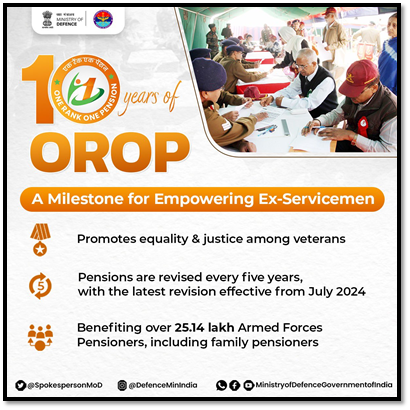
- 08 Nov 2024
In News:
As OROP completes the 10 years in 2024, it is essential to reflect on the immense benefits the scheme has brought to the armed forces community.
Overview:
- Implemented on: November 7, 2015.
- Announced in: Union Budget 2014, allocation of ?1,000 crore.
- Aim: To ensure uniform pension for military personnel retiring at the same rank with equal service duration, irrespective of retirement date.
- Significance: A landmark reform addressing a four-decade-long demand of ex-servicemen.
- Origin: Longstanding demand since the 1970s; first highlighted by the 3rd Central Pay Commission.
- Key Committees: K.P. Singh Dev Committee (1984) and Sharad Pawar Committee (1991) recommended reforms but faced financial and administrative hurdles.
Key Features:
The policy’s primary elements include:
- Re-fixation of Pensions: The pension of all past pensioners is re-fixed based on the pensions of personnel who retired in 2013, starting from July 1, 2014. This created a new benchmark for pensions, with all retirees getting equal benefits for their service.
- Periodic Revision: The pension is to be re-fixed every five years, ensuring that it continues to reflect changes in the pay and pension structure.
- Arrears Payments: Arrears of pension were to be paid in equal half-yearly installments, although the arrears for family pensioners and gallantry awardees were paid in a single installment.
- Safeguarding Above-Average Pension: For personnel drawing pensions higher than the average, their pensions are protected, ensuring that they do not lose out on the benefits of OROP.
- Inclusive of All Ex-Servicemen: The order covered all personnel who retired up to June 30, 2014, and provided a robust framework for revising pensions for all ranks, including family pensioners.
Impact:
- Veterans and Families:
- Benefited over 25 lakh ex-servicemen and families.
- Enhanced financial security, standard of living, and dignity.
- Emotional and Social Value:
- Strengthened trust between veterans and the government.
- Recognized sacrifices of armed forces personnel.
Okinawicius tekdi
- 07 Nov 2024
In News:
Researchers have recently discovered a new species of jumping spider in the Baner Hill area, underscoring the region's rich biodiversity and the growing need to preserve the natural landscapes around Pune.
About Okinawicius tekdi:
- The newly identified species, named Okinawicius tekdi, is a jumping spider that contributes to the growing diversity of India's spider population, now numbering 326 species of jumping spiders.
- The name "tekdi" comes from the Marathi word for "hill," reflecting the spider's habitat.
- The last time a spider species was identified in Pune was over three decades ago.
About Jumping Spiders:
- Jumping spiders belong to the family Salticidae and are known for their distinctive eight legs and remarkable jumping ability.
- These spiders possess a segmented body, a tough exoskeleton, and jointed legs.
- In addition to their agility, they are famous for spinning webs that they use to capture their prey.
World Cities Report 2024
- 07 Nov 2024
In News:
The World Cities Report 2024, released by UN-Habitat, highlights the urgent need for cities to address climate change, both as victims and major contributors.
Key Findings of the Report
- Temperature Increases by 2040: Nearly 2 billion people living in urban areas are projected to face at least a 0.5°C rise in temperature by 2040, exposing them to heatwaves and other climate-related risks.
- Urban Vulnerability and Climate Risk:
- Cities are disproportionately affected by climate change while being major contributors to greenhouse gas emissions, which exacerbates their vulnerability to events like floods, cyclones, and heatwaves.
- The urban population is facing a dual challenge: increased heat and extreme weather events such as flooding, cyclones, and erratic rainfall.
- Sea-Level Rise and Coastal Risks: Over 2,000 cities in low coastal areas, many located under 5 meters above sea level, are at heightened risk from sea-level rise and storm surges, potentially affecting more than 1.4 billion people by 2040.
- Riverine Flooding: Flood exposure in cities is growing 3.5 times faster than in rural areas, with 517 million people in urban areas projected to be exposed to riverine flooding by 2030.
- Investment Gap: Cities require between USD 4.5 trillion and USD 5.4 trillion annually to build and maintain climate-resilient systems, but current investments stand at only USD 831 billion, highlighting a massive funding shortfall.
- Decline in Urban Green Spaces: The average share of urban green spaces has dropped from 19.5% in 1990 to 13.9% in 2020, reducing cities' ability to absorb carbon, manage heat, and provide essential ecosystem services.
- Vulnerable Communities: Informal settlements and slums, often situated in environmentally sensitive areas, are disproportionately affected by climate impacts. These communities lack adequate infrastructure and are often unable to invest in necessary upgrades due to eviction fears or lack of legal recognition.
- Green Gentrification: While climate interventions like park creation can provide environmental benefits, they can also lead to green gentrification—displacing low-income households or increasing property values and rents, thus pricing vulnerable communities out.
Contributing Factors to Urban Global Warming
- Energy Consumption: Urban areas account for 71-76% of global CO? emissions from energy use, driven by dense populations, industrial activities, transportation, and high-energy demand for buildings.
- Industrial Activities: Urban industries and power plants release a variety of greenhouse gases (GHGs), including CO?, methane (CH?), and nitrous oxide (N?O).
- Land Use Changes: Urban expansion leads to deforestation and reduced carbon absorption, contributing to global warming. Urban land areas are expected to more than triple by 2050, accelerating environmental degradation.
- Waste Generation: Decomposing waste in landfills releases methane, a potent GHG, exacerbating the greenhouse effect.
- Urban Heat Island Effect: Urban Heat Islands (UHIs) occur when cities absorb and retain more heat due to their dense infrastructure (asphalt, concrete, and buildings), increasing local temperatures and energy consumption.
Impacts of Global Warming on Cities
- Heatwaves: Cities, especially in warmer regions like India, are experiencing more severe heatwaves and rising temperatures.
- Urban Heat Island Effect: UHIs increase the intensity of heatwaves, particularly in high-density cities, where buildings and roads trap heat, exacerbating energy demands and public health risks.
- Coastal Flooding: Rising sea levels threaten coastal cities with flooding and storm surges, displacing communities and disrupting economies.
- Wildfire Seasons: Warming temperatures and prolonged droughts increase the risk of wildfires in urban areas, particularly in forest-adjacent cities.
India's Climate Initiatives for Urban Areas
- Smart Cities Mission: Focuses on developing sustainable urban infrastructure, promoting smart technologies, and enhancing resilience to climate impacts.
- AMRUT Mission: Aims to provide basic infrastructure and sustainable urban development in cities, including water supply, sewage, and green spaces.
- Swachh Bharat Mission-Urban: Focuses on improving waste management and reducing pollution in urban areas.
- FAME India Scheme (Faster Adoption and Manufacturing of Hybrid and Electric Vehicles): Promotes electric vehicles to reduce urban air pollution and carbon emissions.
- Green Energy Corridor (GEC): Facilitates the integration of renewable energy sources into the national grid, encouraging clean energy use in urban centers.
21st India-US Military Cooperation Group (MCG) Meeting
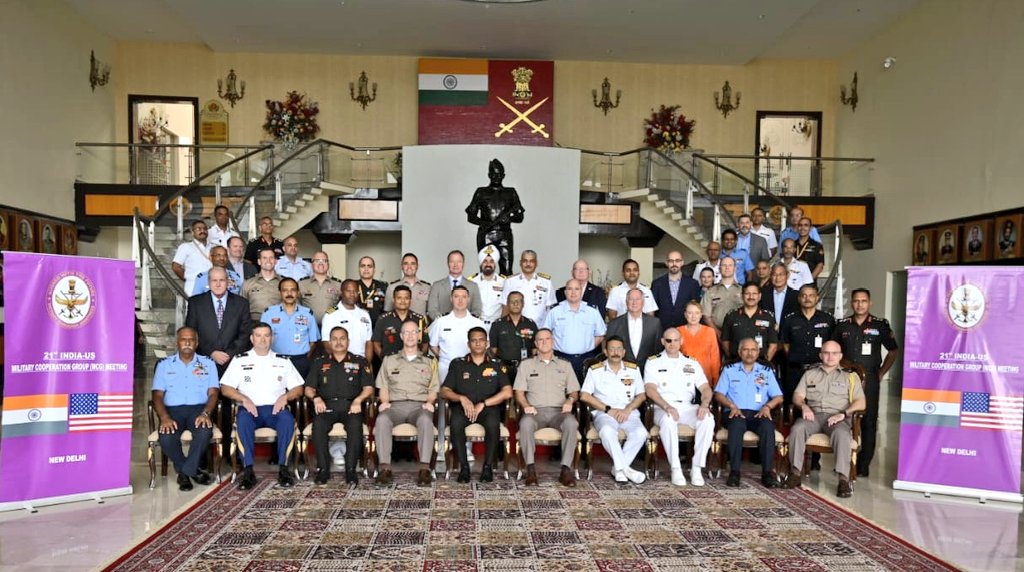
- 07 Nov 2024
In News:
- The 21st India-US Military Cooperation Group (MCG) meeting was held from November 5 to 6, 2024, at the Manekshaw Centre, New Delhi.
- The meeting focused on strengthening defence ties between India and the US, covering a wide range of topics aimed at improving military cooperation.
Key Areas of Discussion
- Capacity Building: The meeting discussed initiatives for enhancing defence capacity through training exchanges, joint exercises, and sharing best practices.
- Defence Industrial Cooperation: Both countries explored opportunities for collaborative defence industrial ventures and technology sharing.
- Joint Exercises: The advancement of joint military exercises was highlighted to boost readiness against both conventional and hybrid threats.
- Strategic Objectives: The meeting aimed to enhance interoperability between the two countries' armed forces, enabling more effective joint operations.
Commitment to Strengthen Indo-US Defence Ties
- Strategic Partnership: Both nations reaffirmed their commitment to strengthening the Indo-US defence partnership, recognizing the shared challenges in the Indo-Pacific region.
- Focus on Regional Security: The discussions underscored the importance of ensuring regional security and global stability in the face of emerging threats.
The Role of the MCG
- Purpose: The MCG forum serves as a key platform for enhancing strategic and operational defence collaboration between India and the US.
- Long-term Goals: The MCG aims to build mutual defence capabilities, counter emerging threats, and ensure the security of both nations and the wider region.
PM-Vidyalaxmi Scheme
- 07 Nov 2024
In News:
- The Union Cabinet, chaired by Prime Minister Narendra Modi, approved the PM Vidyalaxmi scheme to provide financial assistance to meritorious students for higher education.
- Objective: The scheme aims to ensure that financial constraints do not hinder students from pursuing quality higher education.
Key Features of the scheme:
- Eligibility:
- Students admitted to top 860 Quality Higher Education Institutions (QHEIs) are eligible.
- Includes both government and private institutions, as per the NIRF (National Institutional Ranking Framework) rankings.
- Loan Provision:
- Collateral-free and guarantor-free education loans for tuition fees and other course-related expenses.
- Loans up to ?7.5 lakhs will have a 75% credit guarantee from the government to encourage banks to offer loans.
- Interest Subvention:
- For students with an annual family income of up to ?8 lakhs (and not eligible for other scholarships or schemes), a 3% interest subvention will be provided on loans up to ?10 lakhs.
- This subvention applies during the moratorium period (when repayment is deferred).
- Preference for interest subvention is given to students in technical/professional courses and those from government institutions.
- Target Beneficiaries:
- Around 22 lakh students are expected to benefit from the scheme annually.
- The government has allocated ?3,600 crore for the period 2024-2025 to 2030-2031, with 7 lakh fresh students anticipated to receive the benefit each year.
- Digital Process:
- A unified “PM-Vidyalaxmi” portal will allow students to apply for loans and interest subvention in a simplified, transparent, and digital manner.
- Payment Method:
- Interest subvention will be paid via E-vouchers or Central Bank Digital Currency (CBDC) wallets.
Loan Product Features
- Collateral-free & Guarantor-free: Loans will be accessible without the need for collateral or a guarantor.
- Loan Coverage:
- The scheme will cover full tuition fees and other related expenses.
- Eligibility Criteria:
- Students enrolled in NIRF top 100 HEIs, state institutions ranked 101-200, and central government institutions are eligible.
- The list of eligible institutions will be updated annually based on the latest NIRF rankings.
Government's Commitment
- The scheme is a part of the National Education Policy 2020’s vision to enhance access to quality education through financial support.
- Additional Support:
- It complements the existing Central Sector Interest Subsidy (CSIS) and Credit Guarantee Fund Scheme for Education Loans (CGFSEL) under PM-USP.
- The CSIS scheme provides full interest subvention for students with an annual family income of up to ?4.5 lakhs, pursuing technical/professional courses.
India-Algeria Strengthen Defence Ties

- 06 Nov 2024
In News:
- The Chief of Defence Staff (CDS) of India recently visited Algeria, culminating in the signing of a significant Memorandum of Understanding (MoU) on defence cooperation.
- Objective: The MoU aims to strengthen the strategic and military ties between India and Algeria.
Recent Developments in India-Algeria Relations
- Important Visit: The CDS’s visit coincided with Algeria’s 70th anniversary of its revolution, celebrated on November 1st, with military parades and ceremonies highlighting Algeria’s historical and political legacy.
- Defence Cooperation:
- India re-established its defence wing in Algeria, and Algeria reciprocated by considering the establishment of its defence wing in India.
- India emphasized its role as a “Vishwa Bandhu” (global partner) and offered to share defence expertise and experiences with Algeria.
- Strategic Discussion: The MoU aims to enhance mutual understanding, laying the foundation for long-term defence collaboration across multiple sectors, including manufacturing under India’s 'Make in India' and 'Make for the World' initiatives.
- Global Peace Support: CDS reiterated India’s commitment to peaceful conflict resolution and expressed support for Algeria’s defence interests.
Significant Areas of India-Algeria Relationship
- Diplomatic Relations:
- India and Algeria established diplomatic ties in July 1962, the same year Algeria gained independence from French colonial rule.
- India supported Algeria's liberation movement and both countries have maintained close ties as part of the Non-Aligned Movement.
- Bilateral Trade:
- Trade peaked at USD 2.9 billion in 2018 but dropped to USD 1.5 billion by 2021 due to COVID-19 and Algeria’s import restrictions.
- Trade rebounded in 2022, increasing by 24% to USD 2.1 billion.
- Exports from India (2023-24): Rice, pharmaceuticals, granite.
- Imports from Algeria: Petroleum oils, LNG, calcium phosphates.
- Bilateral Agreements:
- 2015 MoU: Between All India Radio (AIR) and Algerian National Radio for cooperation in broadcasting.
- 2018 Space Cooperation Agreement: Focuses on satellite technology for applications like crop forecasting and disaster management.
- Visa Waiver Agreement (2021): Diplomatic and official passport holders are exempt from visa requirements.
- Cultural Engagement:
- International Day of Yoga (2024): Celebrated in Algeria at the Jardin d’Essai du Hamma, attracting over 300 participants.
- Space Cooperation:
- The 2018 India-Algeria Space Cooperation Agreement focuses on joint space science, technology, and applications.
- India has launched four Algerian satellites (2016), and the 2022 Joint Committee Meeting expanded satellite capacity building efforts.
- Algeria’s space agency has engaged with ISRO on satellite applications like crop forecasting and disaster management.
- Indian Community in Algeria:
- Approximately 3,800 Indians live in Algeria, working in various sectors, including technical and semi-skilled roles.
- The community includes 13 Overseas Citizens of India (OCI), 10 Persons of Indian Origin (PIOs), and 15 Indian students.
Spraying Diamond Dust to cool the Earth
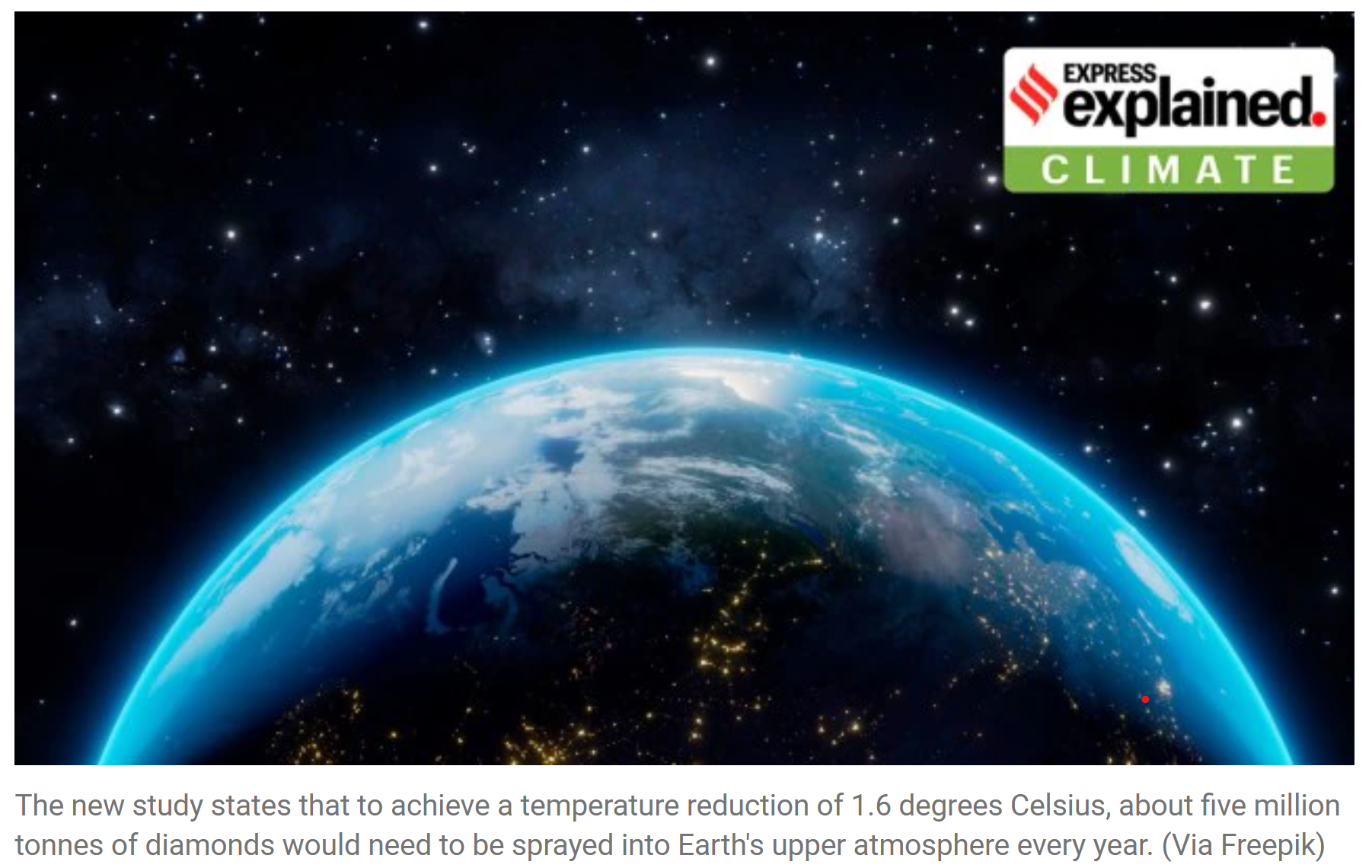
- 06 Nov 2024
In News:
- A new study in Geophysical Research Letters suggests that diamond dust could be more effective than any other material in reflecting solar radiation.
- Objective: The goal is to reduce global temperatures by 1.6°C by spraying approximately 5 million tonnes of diamonds annually into the atmosphere.
Background of Geoengineering Solutions:
- Geoengineering refers to large-scale interventions aimed at altering Earth's natural climate system to counteract global warming.
- One proposed solution involves spraying diamond dust in the Earth's upper atmosphere to cool the planet.
- This approach is part of Solar Radiation Management (SRM), which seeks to reflect sunlight away from Earth, thereby reducing global temperatures.
- Previous Materials Considered: Sulphur, calcium, aluminium, silicon, and other compounds have been studied to perform a similar function.
Context of Geoengineering and Climate Crisis:
- Inadequate Progress: Current efforts to mitigate global warming, such as reducing greenhouse gas emissions, have been insufficient. Global temperatures have continued to rise, and targets like the Paris Agreement's 1.5°C are increasingly out of reach.
- Rising Global Temperatures:
- 2023: Global temperatures were approximately 1.45°C higher than pre-industrial levels.
- Projected Challenge: To meet the Paris goal, global emissions must be reduced by at least 43% by 2030. However, current actions will likely result in only a 2% reduction by 2030.
Geoengineering Technologies:
- Geoengineering Methods:
- Solar Radiation Management (SRM): Reflects sunlight to cool Earth.
- Carbon Dioxide Removal (CDR): Involves capturing and storing CO?.
- SRM Techniques:
- SRM draws inspiration from natural events like volcanic eruptions, where large amounts of sulphur dioxide form particles that reflect sunlight.
- Mount Pinatubo (1991): One of the largest eruptions, which temporarily reduced global temperatures by 0.5°C due to the sulphur dioxide released.
Diamond Dust vs Other Materials:
- Study Comparison: Diamonds were found to be the most effective material compared to other compounds (sulphur, calcium, etc.) for reflecting solar radiation.
- Quantity Needed: To achieve a cooling of 1.6°C, 5 million tonnes of diamonds would need to be dispersed into the upper atmosphere each year.
Broader Geoengineering Context:
- Carbon Capture and Storage (CCS):
- CCS is already in practice, where CO? emissions from industries are captured and stored underground to reduce atmospheric carbon.
- However, CCS faces high costs and scalability issues, and safe storage sites for CO? are limited.
- Direct Air Capture (DAC): A more advanced method where CO? is directly removed from ambient air, but it faces even greater challenges in terms of infrastructure and cost.
VINBAX 2024 Exercise
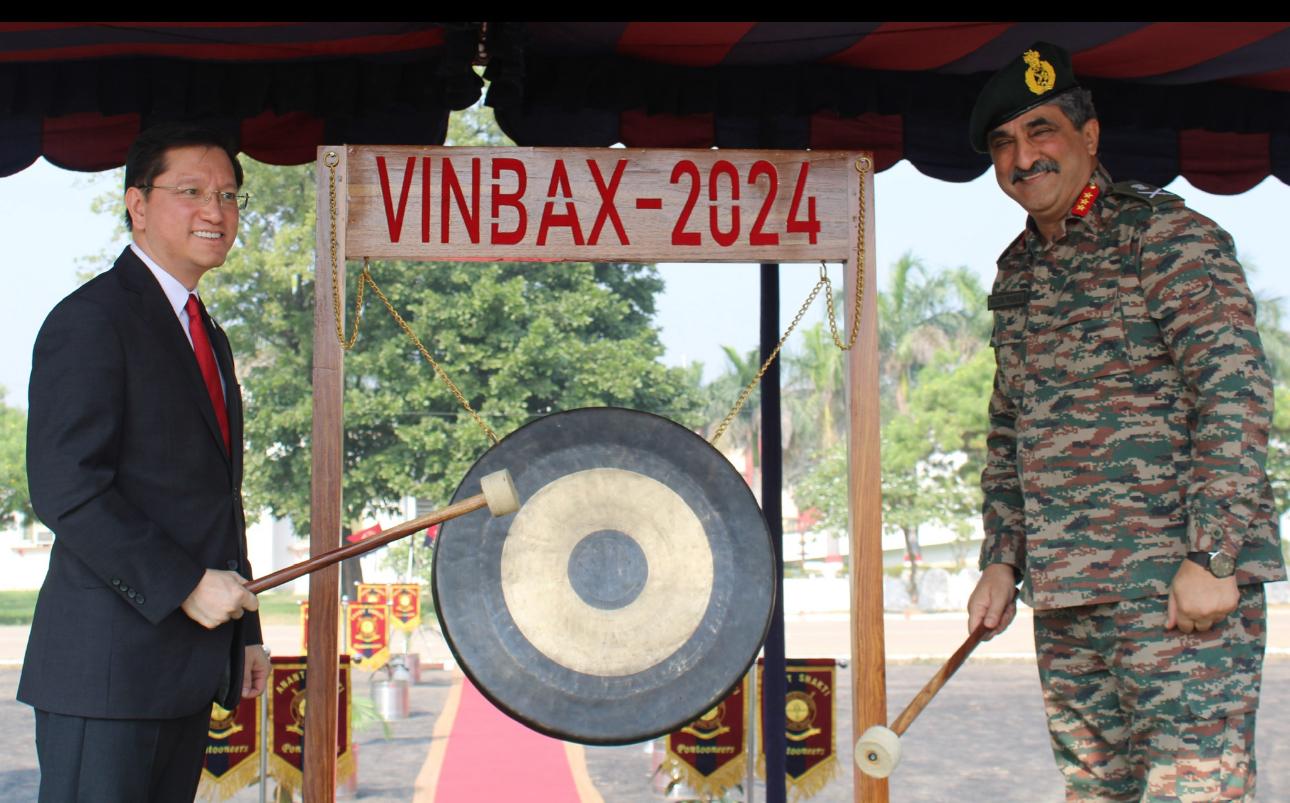
- 06 Nov 2024
In News:
The 5th Edition of Vietnam Indian Bilateral Army Exercise “VINBAX 2024” had commenced at Ambala.
Key Participants
- Indian Army: A contingent of 47 personnel from the Corps of Engineers, along with personnel from other arms and services.
- Vietnam People's Army: A similar-sized contingent representing Vietnam's military forces.
- Bi-Service Participation: For the first time, personnel from both Army and Air Force of India and Vietnam are participating.
Objectives of VINBAX 2024
- Joint Military Capability Enhancement:
- Focus on enhancing joint military capabilities of both countries, specifically in the deployment of Engineer Companies and Medical Teams.
- Peacekeeping Operations (UN Context):
- The exercise prepares both sides for United Nations Peacekeeping Operations (PKO), under Chapter VII of the UN Charter, which deals with peace enforcement actions.
- Humanitarian Assistance & Disaster Relief (HADR):
- The exercise includes a 48-hour validation exercise with demonstrations of Humanitarian Assistance and Disaster Relief (HADR) operations.
- The HADR component will include equipment displays to assess the technical standards of both contingents while executing disaster relief and humanitarian missions in peacekeeping contexts.
Key Activities & Events
- Field Training Exercise: The exercise includes a field training component, with a larger scope than previous editions, focusing on:
- Engineer Tasks.
- Medical Support.
- Disaster Relief Operations.
- Validation Exercise: A critical 48-hour validation exercise to test the preparedness of the two forces in providing HADR, including:
- Demonstrations of disaster relief operations.
- Equipment displays to showcase capabilities in managing and executing peacekeeping and humanitarian operations.
- Cultural Exchange: The exercise will also provide an opportunity for cultural exchange, where the troops will learn about the social and cultural heritage of each other.
Background of VINBAX
- Inception: VINBAX was first conducted in 2018 as part of the growing defense cooperation between India and Vietnam. The inaugural edition took place in Jabalpur, Madhya Pradesh.
- Alternating Locations: The exercise alternates between India and Vietnam every year.
- Previous Editions:
- 2023 Edition: Held in Vietnam.
- Current Edition: This is the 5th edition, conducted in India (Ambala and Chandimandir).
Indian Defense Engagements in Southeast Asia
- India-Indonesia Joint Special Forces Exercise (Garud Shakti 2024): Held from November 1-12, 2024, in Cijantung, Jakarta, strengthening ties with Indonesian special forces.
- Singapore-India Maritime Bilateral Exercise (SIMBEX 2024): Held from October 23-29, 2024, in Visakhapatnam, focusing on maritime security cooperation in the Indo-Pacific.
Proba-3 Mission
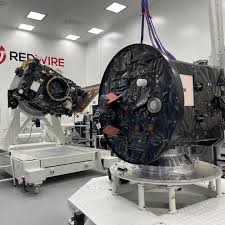
- 06 Nov 2024
In News:
Europe's Proba-3 mission to arrive in India for launch aboard PSLV-XL by ISRO
Key Highlights:
- Objective: The Proba-3 mission, led by the European Space Agency (ESA), aims to observe the Sun’s corona by creating an artificial solar eclipse. This will allow continuous observation of the Sun’s faint outer atmosphere, which is typically only visible during a natural solar eclipse.
- Key Features:
- Artificial Solar Eclipse: The two spacecraft will fly in formation to maintain a shadow between them, enabling the uninterrupted observation of the solar corona.
- Formation Flying: The satellites must maintain a precise formation with an accuracy of one millimetre, equivalent to the thickness of a fingernail.
Mission Details
- Launch Date: Scheduled for December 4, 2024.
- Launch Location: Satish Dhawan Space Centre near Chennai, India.
- Launch Vehicle: The PSLV-XL rocket developed by ISRO will be used for the launch.
- Spacecraft Mass: The combined mass of the two spacecraft is 550 kg.
- Orbit: The spacecraft will be placed in a highly elliptical orbit with a maximum altitude of 60,000 km to facilitate the precise formation flying.
- This high altitude minimizes Earth’s gravitational pull and reduces the amount of propellant required to maintain their positions during the mission.
Mission Significance
- Solar Observation: The primary objective is to observe the Sun’s corona, which has been challenging to study due to its faintness. The artificial eclipse will allow continuous data collection on solar activity.
- Formation Flying: This technology will allow the two satellites to maintain autonomous flight with millimetre-level precision, which is a significant advancement in satellite formation control.
- Six-Hour Observation Windows: Each formation flying session will last for up to six hours, during which the satellites will observe the Sun's corona.
Technological and Scientific Contributions
- ASPIICS Instrument: The ASPIICS (AStronomical PIcture Camera for the Intense Corona of the Sun) will be the mission's primary instrument, developed by the Royal Observatory of Belgium. It will provide crucial data on solar activity and space weather.
- International Collaboration: The mission is a collaborative effort involving 14 ESA member states and various organizations across Europe.
- Mission Control: The mission will be managed from the ESA’s European Space Operations Centre (ESOC) in Belgium, with significant pre-launch training and preparations already underway.
ISRO's Role and Historical Context
- Launch by ISRO: The Proba-3 mission will be ISRO’s first launch for ESA since 2001, marking an important milestone in India-Europe space cooperation.
- PSLV-XL Rocket: ISRO’s PSLV-XL rocket is known for its reliability and capability in deploying satellites into precise orbits. It is well-suited to carry the 550 kg Proba-3 duo into a highly elliptical orbit for the mission.
Minuteman III ICBM
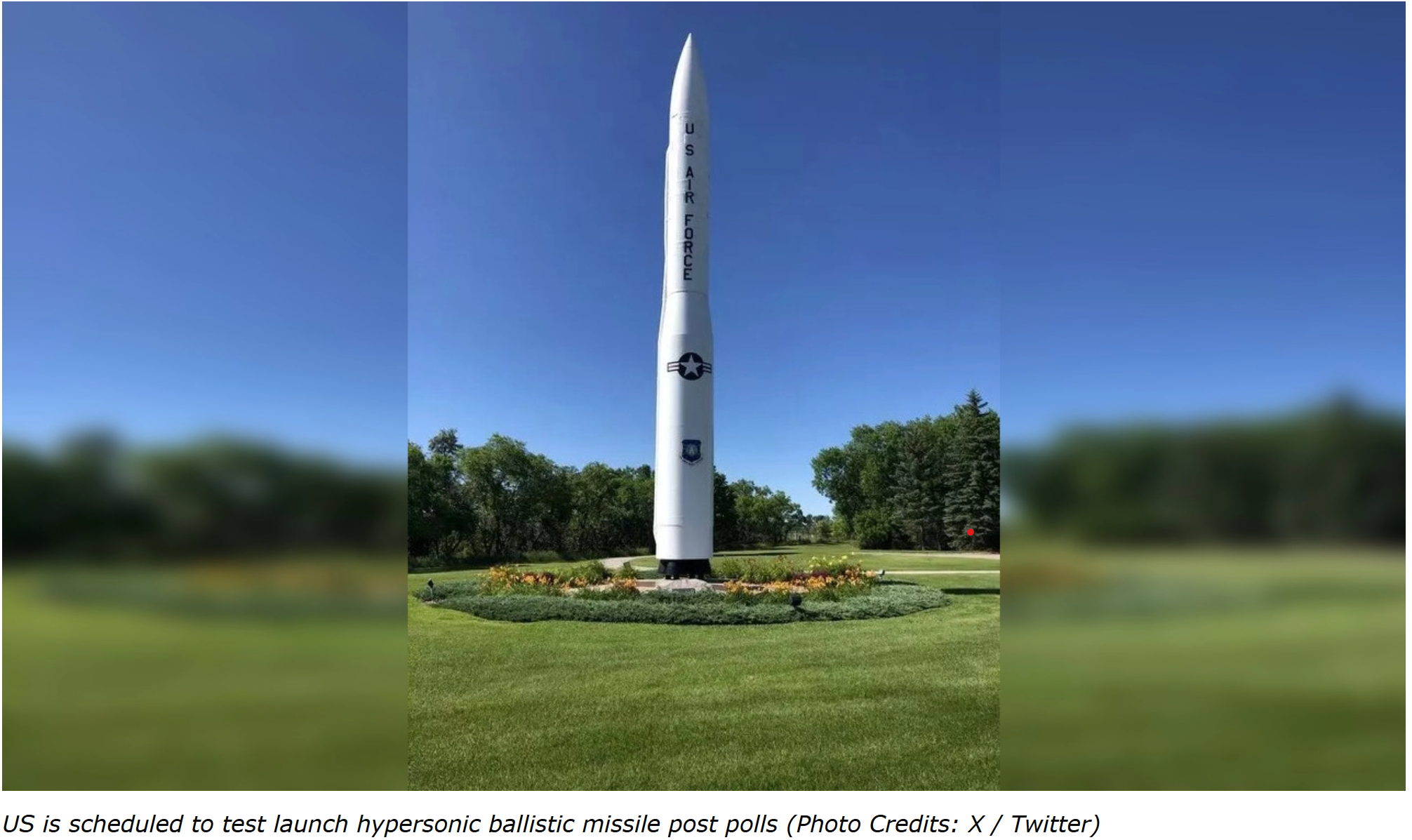
- 06 Nov 2024
In News:
The U.S. Army is scheduled to test launch a Minuteman III ICBM (Intercontinental Ballistic Missile) after the closure of voting on Election Day.
Missile Features
- Speed: Hypersonic, capable of reaching speeds up to 15,000 mph (Mach 23).
- Range: 13,000 km.
- Payload: Currently carries one nuclear warhead (as per arms control agreements with Russia), but originally designed for multiple independently targetable re-entry vehicles (MIRVs).
- Launch Time: Extremely fast, enabling near-instant global retaliation capabilities.
- Testing Reliability: Nearly 100% success rate in tests, with backup airborne launch controllers to ensure continuity of the retaliatory strike capability.
- Length: 18.2 meters.
- Diameter: 1.85 meters.
- Launch Weight: 34,467 kg.
- Type: Three-stage, solid-fuel missile.
Strategic Significance
- Land-Based Nuclear Deterrent: The Minuteman III is a key component of the U.S. nuclear triad, which includes land-based missiles, submarine-launched missiles (SLBMs), and strategic bombers.
- Cost-Effectiveness: The Sentinel weapon system (modernized Minuteman III) is viewed as the most cost-effective option for maintaining the land-based leg of U.S. nuclear deterrence until the planned Ground-Based Strategic Deterrent (GBSD) system replaces it in 2029.
- Global Reach: The missile can strike any target worldwide within minutes, demonstrating U.S. nuclear reach and power projection.
India's Green Leap
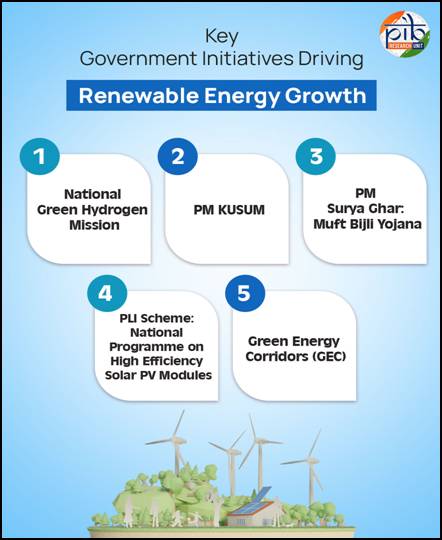
- 05 Nov 2024
In News:
India's journey toward a sustainable energy future has gained significant momentum with a series of policy reforms designed to reduce reliance on fossil fuels and accelerate the shift to clean energy. The recent Asia-Pacific Climate Report from the Asian Development Bank (ADB) highlights India's remarkable progress in reforming its fossil fuel subsidy system and its efforts to foster renewable energy, positioning the country as a leader in the region's green transformation.
Key Highlights from the Report:
India's Fossil Fuel Subsidy Reform
- India has successfully reduced fossil fuel subsidies by 85%, from a peak of $25 billion in 2013 to just $3.5 billion by 2023.
- The reform strategy is built on a "remove, target, and shift" approach, which involved phasing out subsidies on petrol and diesel from 2010 to 2014, followed by incremental tax hikes on these fuels through 2017.
- These fiscal changes created space for funding renewable energy projects, such as solar parks, electric vehicle initiatives, and infrastructure improvements.
Role of Taxation in Supporting Clean Energy
- Between 2010 and 2017, India introduced a cess on coal production and imports, which contributed significantly to funding clean energy projects. Approximately 30% of the cess was directed to the National Clean Energy and Environment Fund.
- This funding supported major renewable energy initiatives, including the National Solar Mission and Green Energy Corridor project, helping reduce the cost of utility-scale solar energy and expand off-grid renewable energy solutions.
- The introduction of the Goods and Services Tax (GST) in 2017 altered the financial landscape, redirecting the cess funds to GST compensation rather than directly to clean energy.
Government Schemes and Initiatives
- India is advancing its clean energy agenda through several key government schemes:
- National Green Hydrogen Mission: Aimed at establishing India as a leader in green hydrogen production.
- PM-KUSUM Scheme: Focused on promoting solar energy among farmers, allowing them to produce renewable power.
- PM Surya Ghar: Muft Bijli Yojana: A program designed to provide solar energy access to rural communities, reducing dependency on fossil fuels.
A Strategic Shift: From Subsidies to Clean Energy
- India’s subsidy reforms are an important part of its strategy to transition from a reliance on fossil fuels to a focus on renewable energy investments.
- These changes reflect India’s long-term goal of achieving net-zero emissions by 2070, as outlined in its climate action plans.
Global Significance of India’s Efforts
- The reduction in fossil fuel subsidies and the surge in clean energy investment serve as a model for other nations seeking to balance economic development with climate action.
- India’s approach demonstrates that policy reforms and innovative financing mechanisms can be used to accelerate the transition to a cleaner, greener economy while creating job opportunities and fostering economic growth.
IUCN’s First Global Tree Assessment
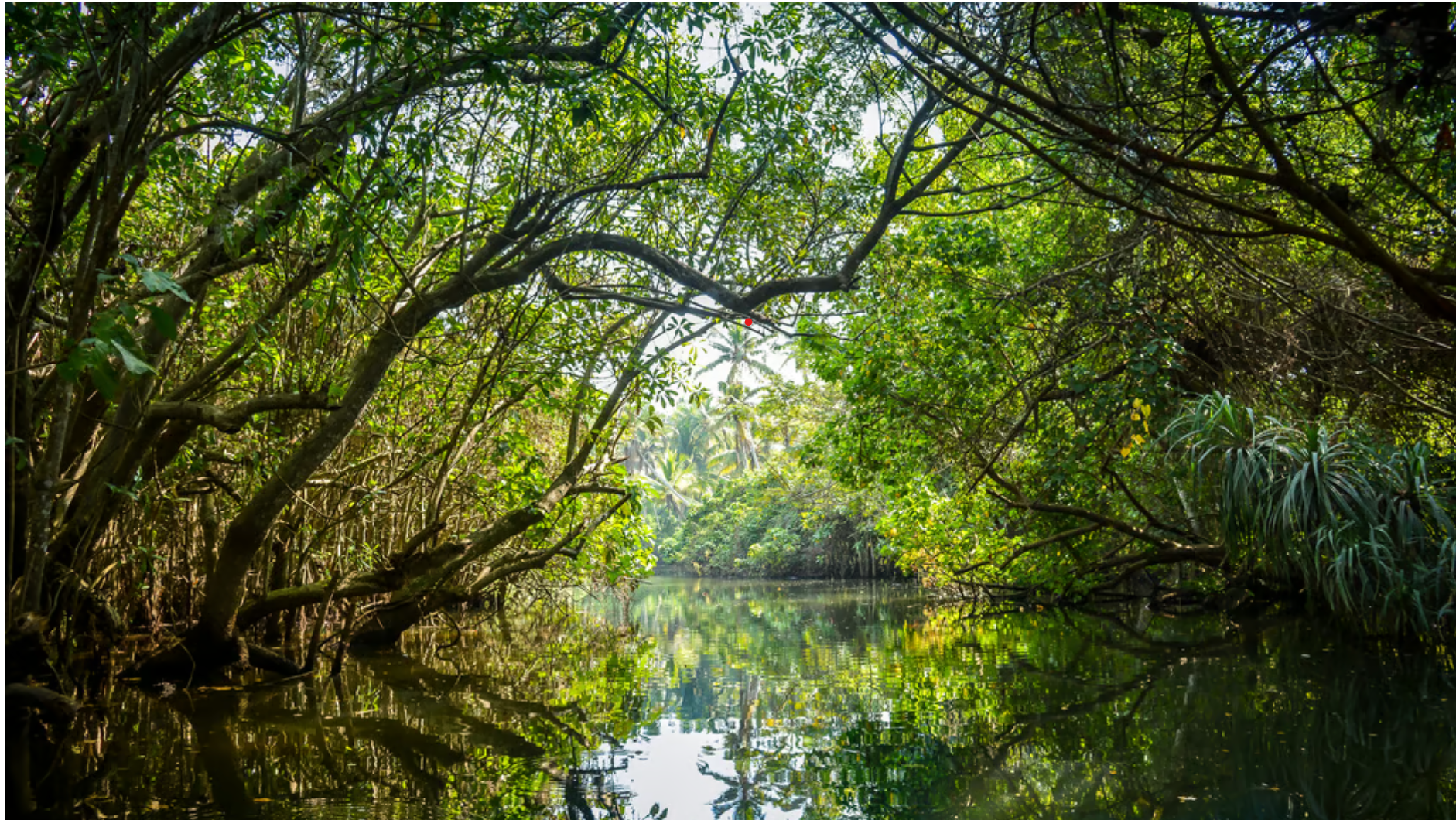
- 05 Nov 2024
In News:
More than one in three tree species threatened with extinction, finds IUCN’s first Global Tree Assessment
Key Highlights:
Global Tree Extinction Risk:
- 38% of the world’s tree species are now facing the risk of extinction — over one in three tree species is at risk.
- This means 16,425 out of 47,282 tree speciesanalyzed by the International Union for Conservation of Nature (IUCN) are under threat.
- Threatened tree species outnumber all threatened birds, mammals, reptiles, and amphibians combined, highlighting the urgent need for conservation action.
Key Drivers of Threat:
- Deforestation: The primary threat to trees is deforestation, driven by agriculture, livestock rearing, and urban development, especially in tropical regions.
- Climate Change: Rising sea levels and increasingly frequent storms exacerbate the threats, particularly in tropical regions and islands.
- Invasive Species & Pests: Non-native species, pests, and diseases are adding pressure to vulnerable tree populations.
Geographic Vulnerabilities:
- Islands are particularly vulnerable, with a high proportion of threatened species due to habitat destruction and urbanization.
- South America, which boasts the highest tree diversity, faces significant threats, with 3,356 out of 13,668 species at risk, mainly due to deforestation for agriculture.
Ecological and Economic Importance of Trees:
- Trees play a fundamental role in carbon, water, and nutrient cycles, and are critical for soil formation and climate regulation.
- The loss of trees poses a growing threat to thousands of other species of plants, fungi, and animals.
- Trees are essential for local communities, providing resources such as timber, medicines, food, and fuel. Over 5,000 species of trees are used for timber and construction, while more than 2,000 species are vital for food, fuel, and medicine.
Conservation Status:
- Tree species are threatened across 192 countries.
- The assessment is the first global analysis of the conservation status of trees, enabling better-informed conservation decisions.
Positive Actions and Strategies:
- Successful community-driven conservation efforts have had positive outcomes in places like the Juan Fernández Islands, Cuba, Madagascar, and Fiji.
- Some countries, including Ghana, Colombia, Chile, and Kenya, already have national strategies for tree conservation.
- Ex-situ conservation, such as seed banks and botanical gardens, is also crucial to safeguard species that may not survive in the wild.
Urgent Call for Action:
The IUCN Global Tree Assessment underlines the urgent need for enhanced conservation efforts, including:
- Habitat protection and restoration.
- Ex-situ conservation through seed banks and botanical gardens.
- Diversified and species-focused reforestation strategies.
- Supporting community-led conservation initiatives to safeguard vulnerable tree species.
Asia-Pacific Climate Report 2024
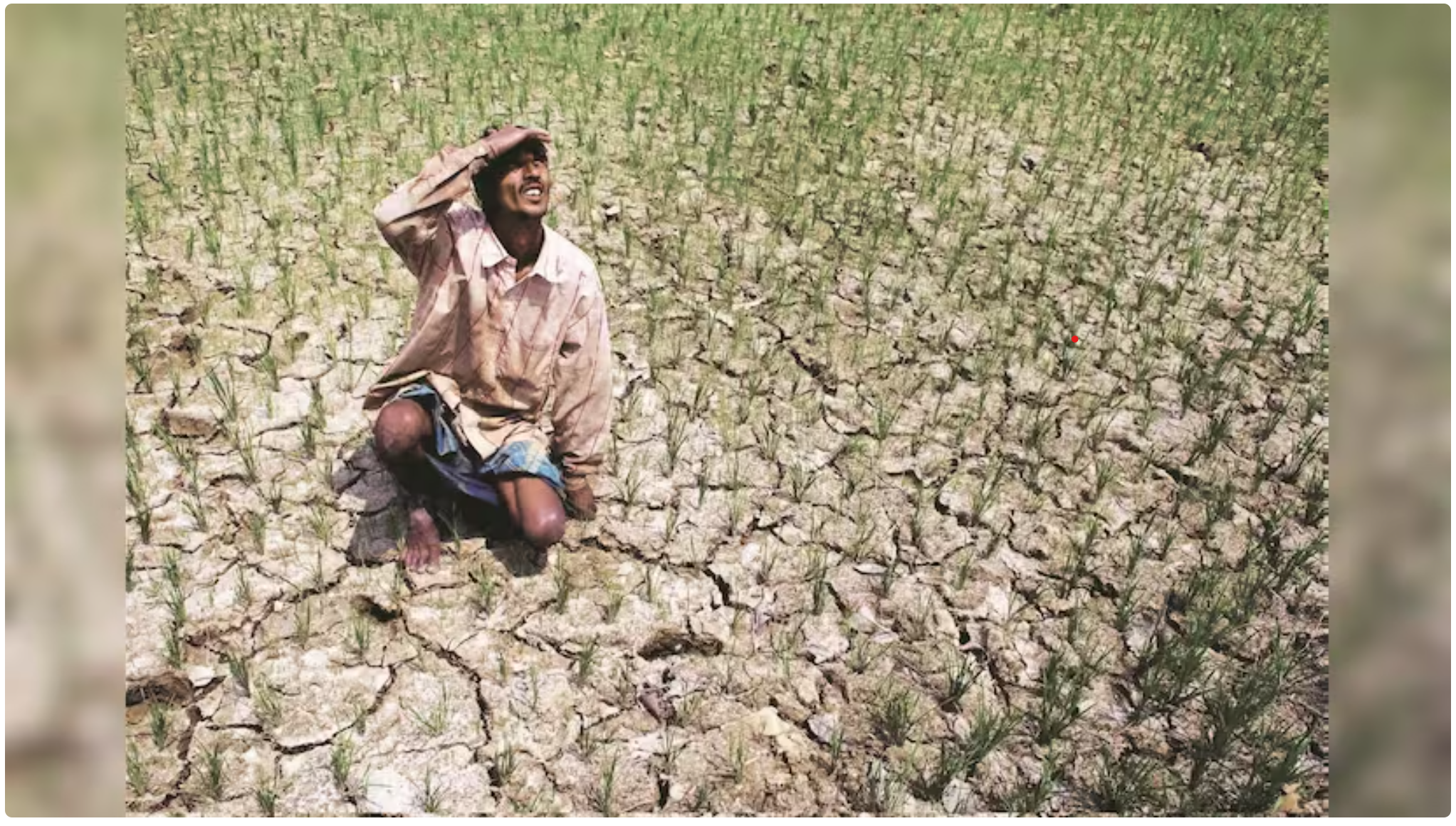
- 05 Nov 2024
In News:
Climate change to put APAC GDP on thin ice with 41% melt by 2100.
Key Highlights:
- Economic Losses Due to Climate Change:
- APAC Region: High-end greenhouse gas emissions could reduce GDP by 17% by 2070 and 41% by 2100.
- India: Projected to experience a 24.7% GDP loss by 2070, with neighboring countries like Bangladesh (30.5%), Vietnam (30.2%), and Indonesia (26.8%) facing even steeper declines.
- Major Drivers of Economic Losses:
- Sea-Level Rise: Up to 300 million people at risk of coastal flooding by 2070. Annual damages could reach $3 trillion by 2070.
- Labour Productivity: The APAC region could lose 4.9% of GDP from reduced labour productivity, with India facing a sharper 11.6% loss.
- Cooling Demand: Rising temperatures could reduce regional GDP by 3.3%, but India's cooling demands could cut its GDP by 5.1%.
- Flooding and Storms: Increased rainfall and storm intensity will exacerbate flooding and landslides, particularly in mountainous regions like the India-China border, where landslides could rise by 30-70% under severe warming.
- Impact on Key Sectors:
- River Flooding: By 2070, annual riverine flooding could cause $1.3 trillion in damages across the APAC, affecting over 110 million people. India could face over $1,100 billion in flood-related damages annually.
- Forest Productivity: Climate change could reduce forest productivity by 10-30% by 2070 across APAC. India could see losses over 25%, making it one of the hardest-hit countries, alongside Vietnam and Southeast Asia.
- Climate Risks and Vulnerabilities:
- Coastal Flooding: Coastal flooding could lead to widespread economic damage, with India expected to suffer significant losses, particularly in coastal areas.
- Ecosystem Threats: Intensified storms, rainfall, and landslides will affect ecosystems, forests, and agriculture across the region.
- Climate Change and Adaptation Needs:
- Investment Requirements: Developing Asia requires $102–431 billion annually for climate adaptation, far exceeding the $34 billion tracked from 2021 to 2022.
- Private Investment: The report highlights the need for greater private climate investment and regulatory reforms to attract capital for adaptation initiatives.
- Renewable Energy: APAC is well-positioned to embrace renewable energy for a net-zero transition, and the use of carbon markets could help achieve climate goals cost-effectively.
- Regional Net-Zero Goals and Progress:
- Net-Zero Targets: 36 out of 44 Asian economies have set net-zero emissions targets, but only 4 have legally committed to these goals. India and China target 2070 and 2060, respectively, while many OECD countries aim for 2050 targets.
- Policy Gaps: Developing Asia needs clearer policies and increased financing to meet climate ambitions. Institutions like ADB are crucial in supporting these efforts.
- Action Plan for the Future:
- Urgent Climate Action: The report stresses the importance of coordinated action to address escalating climate risks.
- Enhanced Adaptation Finance: There is a need to scale up adaptation-focused finance to tackle the growing climate challenges facing the region.
India's Vulnerability and Climate Challenges:
- Labour Impact: India is expected to experience a 11.6% GDP loss due to declining labour productivity, the highest among APAC countries.
- Cooling Demands: A 5.1% reduction in GDP due to increased cooling demand.
- Flood Damage: India’s flood-related losses could surpass $1.1 trillion annually by 2070, with damages to residential and commercial properties.
Bob Khathing
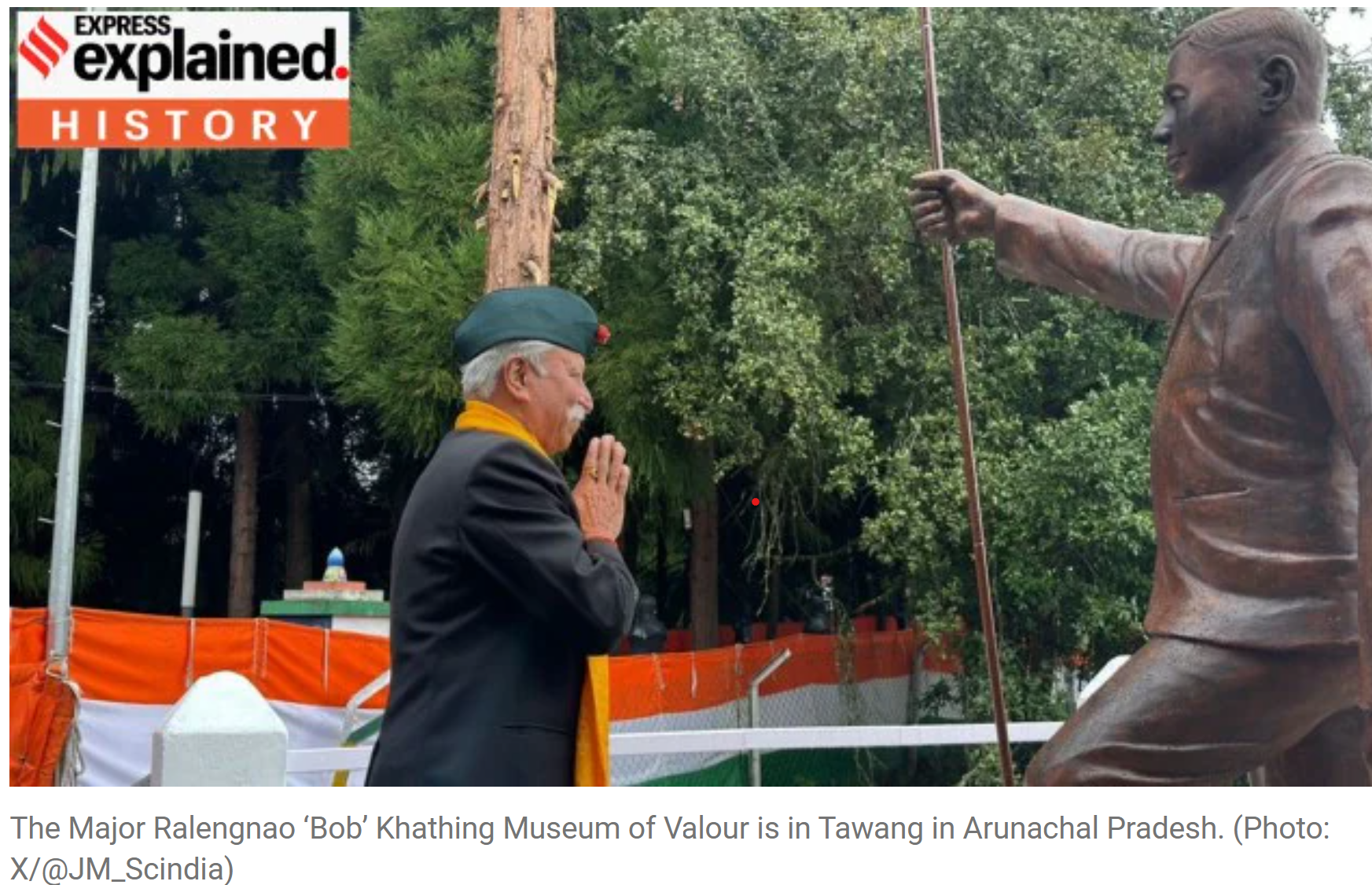
- 05 Nov 2024
In News:
- Defence Minister Rajnath Singh inaugurated the Major Ralengnao 'Bob' Khathing Museum of Valour in Tawang, Arunachal Pradesh, on October 31, 2023, coinciding with National Unity Day (Sardar Vallabhbhai Patel's birth anniversary).
- Significance: The museum honours Bob Khathing's contributions to India's security and the integration of Tawang into India.
Role in the Integration of Tawang:
- Tawang Expedition (1951): In January 1951, Major Bob Khathing, an officer of the Indian Frontier Administrative Service, led the expedition to peacefully integrate Tawang into India.
- Strategic Importance: At the time, there were concerns over Chinese intentions to enter Tibet and realign boundaries. Khathing's mission was crucial to prevent Chinese advances into the area.
- Expedition Details: Khathing set off with Assam Rifles troops from Charduar, Assam, and after overcoming extreme terrain and weather, he reached Tawang. On February 14, 1951, he hoisted the Indian flag, marking Tawang's official integration into India.
- Administrative Setup: Khathing established an administrative framework, including appointing Gaon Buras (village elders) to manage local governance.
Military Service and Recognition:
- World War II Service: Bob Khathing joined the Indian Army in 1939 and earned recognition for his role in the Second World War. He was awarded the Member of the British Empire (MBE) and the Military Cross (MC) for his bravery and leadership.
- Guerrilla Warfare: Khathing was part of the Victor Force, a British-led guerrilla unit tasked with countering the Japanese in Burma and India during WWII. Later, he became the adviser to SANCOL, a force set up to track Japanese forces in the region.
- Military Cross Citation: Khathing was praised for his tireless efforts in organizing local Naga support, gathering intelligence, and participating in successful ambushes, which played a critical role in defeating the Japanese.
Post-War Career and Civil Service:
- Ministerial Role in Manipur: After WWII, Khathing was demobilized and joined the interim government of Manipur, where he served as a minister in charge of the hill areas.
- Integration of Manipur: Following Manipur's merger with India in 1949, Khathing joined the Assam Rifles and served for two years before moving into civil administration.
- Key Positions: He served as Deputy Commissioner of Mokokchung (Nagaland), Development Commissioner in Sikkim, and Chief Secretary of Nagaland.
- Ambassadorship: In 1975, Khathing became India's ambassador to Burma, possibly the first person of tribal origin to hold such a position in independent India.
The Importance of His Contributions:
- Integration of Border Areas: Khathing’s role in integrating Tawang and securing India's northeastern frontier was pivotal in preventing further territorial disputes, especially with China.
- Institutional Development: He helped establish military and security institutions, including the Sashastra Seema Bal, Nagaland Armed Police, and the Naga Regiment, which played important roles in maintaining peace and security in the region.
- Heroic Leadership: Khathing's leadership, both as a soldier and civil servant, continues to be celebrated, symbolized by the Major Bob Khathing Museum of Valour.
NAMO DRONE DIDI
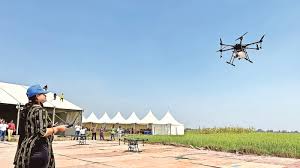
- 05 Nov 2024
In News:
Department of Agriculture & Farmers’ Welfare has released the Operational Guidelines of Central Sector Scheme “NAMO DRONE DIDI”
Key Highlights:
Objective:
- Empower women through Self-Help Groups (SHGs) by providing drones for agricultural rental services.
- Aim to support 14,500 SHGs from 2024 to 2026.
Scheme Overview:
- Type: Central Sector Scheme, under the Deendayal Antyodaya Yojana – National Rural Livelihood Mission (DAY-NRLM).
- Ministry: Ministry of Agriculture & Farmers Welfare.
- Target: Women SHGs for providing drone services in agriculture (e.g., nutrient and pesticide spraying).
Key Features:
- Financial Assistance:
- 80% subsidy (up to ?8 lakh) for SHGs to purchase drones.
- Loans for the remaining 20% via the National Agriculture Infra Financing Facility (AIF) with 3% interest subvention.
- Drone Package:
- Includes drones, spray assemblies, batteries, cameras, chargers, and measurement tools.
- Additional batteries and propellers allow up to 20 acres of coverage per day.
- Training Program:
- One SHG member will be selected for 15 days of mandatory training.
- Focus on drone operation and agricultural tasks (nutrient and pesticide spraying).
- Implementation & Oversight:
- Central Governance: Empowered Committee comprising secretaries from key ministries (Agriculture, Rural Development, Fertilizers, Civil Aviation, and Women and Child Development).
- State Level: Lead Fertilizer Companies (LFCs) will implement the scheme in coordination with state departments and SHG federations.
- Monitoring: IT-based Management Information System (MIS) through the Drone Portal for real-time tracking and fund disbursement.
- Financial Flexibility:
- SHGs can access loans through other Ministry of Rural Development schemes if needed.
Implementation Details:
- Governance: Central level oversight by the Empowered Committee and state-level execution by Lead Fertilizer Companies (LFCs).
- Ownership: Drones procured by LFCs will be owned by SHGs or their Cluster Level Federations (CLFs).
- Monitoring: The scheme will be tracked and managed through the Drone Portal, ensuring transparency and accountability.
LignoSat
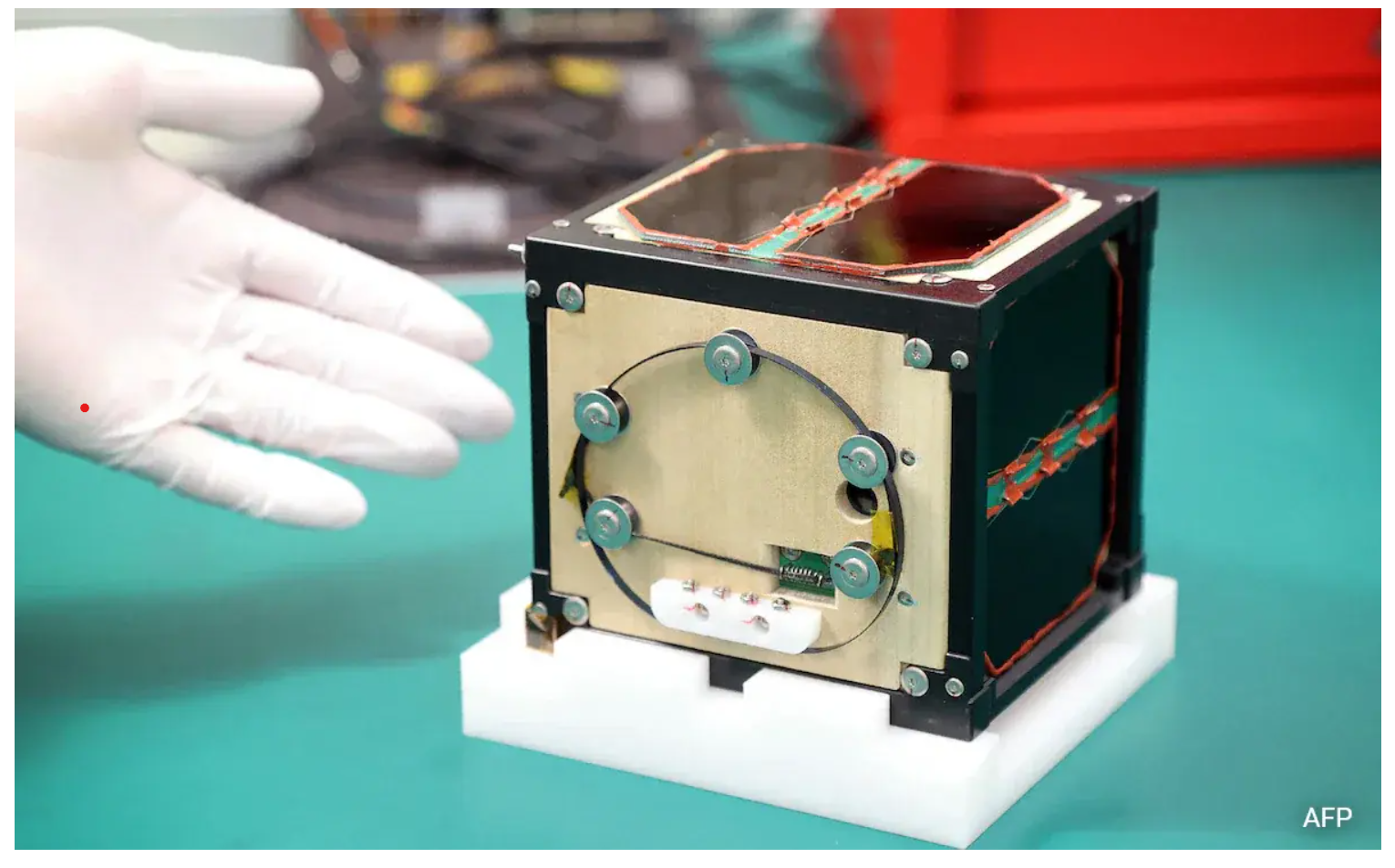
- 04 Nov 2024
In News:
The world's first wooden satellite, LignoSat, is set to launch from the Kennedy Space Center aboard a SpaceX rocket. This pioneering satellite is a collaborative effort between Kyoto University and Sumitomo Forestry Co., marking a significant step towards exploring more sustainable materials in space exploration.
Key Highlights:
- Purpose:The primary goal of LignoSat is to test the viability of using wood in space technology, with a focus on the eco-friendliness and cost-effectiveness of using renewable materials in satellite construction. The satellite will be tested aboard the International Space Station (ISS) to assess its durability, strength, and ability to withstand extreme space conditions.
- Material:The satellite is crafted from magnolia wood, chosen for its durability and adaptability. Magnolia was selected for its strength, making it a suitable candidate to endure the harsh conditions of space travel and the intense environmental factors faced in space exploration.
- Mission Details:Once launched, LignoSat will be sent to the ISS, where it will be released from the Japanese Experiment Module (Kibo). Researchers will collect data on the satellite’s performance, examining its ability to handle the challenges of space, including temperature fluctuations and physical strain.
- Environmental Benefits:One of the key advantages of wooden satellites is their environmental impact. Traditional metal satellites, when re-entering the Earth's atmosphere, can generate metal particles that contribute to air pollution. In contrast, wooden satellites like LignoSat are designed to be eco-friendly during reentry. Wood is a natural material that burns up more cleanly during reentry, reducing the potential for harmful atmospheric pollution.
Tumaini Festival
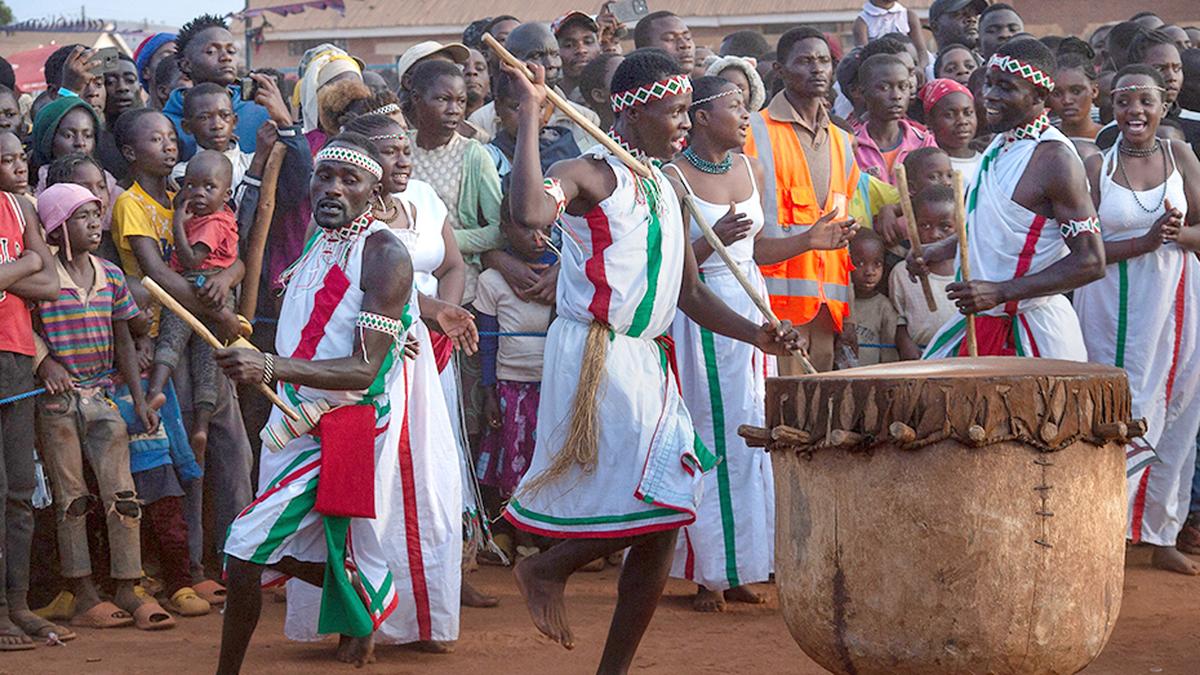
- 04 Nov 2024
In News:
- The Tumaini Festival is held annually in the Dzaleka Refugee Camp in Malawi, one of the world’s few music festivals hosted within a refugee camp. It brings together refugees and locals for cultural exchange, showcasing music, art, and crafts.
- Dates: The festival runs from Thursday to Saturday each year, typically in November.
- Founded: In 2014 by Congolese poet Menes La Plume.
Festival Highlights:
- The festival features performances from a diverse range of artists, including refugees and local Malawians, as well as artists from South Africa, Zimbabwe, and beyond.
- In 2024, performances included Jetu, a 72-year-old singer, and Vankson Boy V, a Congolese refugee, alongside other acts like Maveriq Mavo from South Africa.
- The festival aims to:
- Celebrate cultural exchange and community solidarity between refugees and locals.
- Humanize the refugee experience by allowing refugees and locals to share common experiences and celebrate cultural diversity.
- Challenge stereotypes by showing refugees as people with the same aspirations, talents, and desires as locals.
Significance of Dzaleka Refugee Camp:
- Location: Situated near Lilongwe, Malawi, Dzaleka was originally a prison before becoming a refugee camp in 1994.
- Capacity: Initially designed for 10,000 refugees, the camp now hosts over 60,000 individuals from countries like Democratic Republic of Congo (DRC), Rwanda, Burundi, Ethiopia, and Somalia.
- Role: Dzaleka has evolved into a hub for humanitarian aid, cultural exchange, and empowerment of its residents.
First Science Result from India's Aditya-L1 Mission
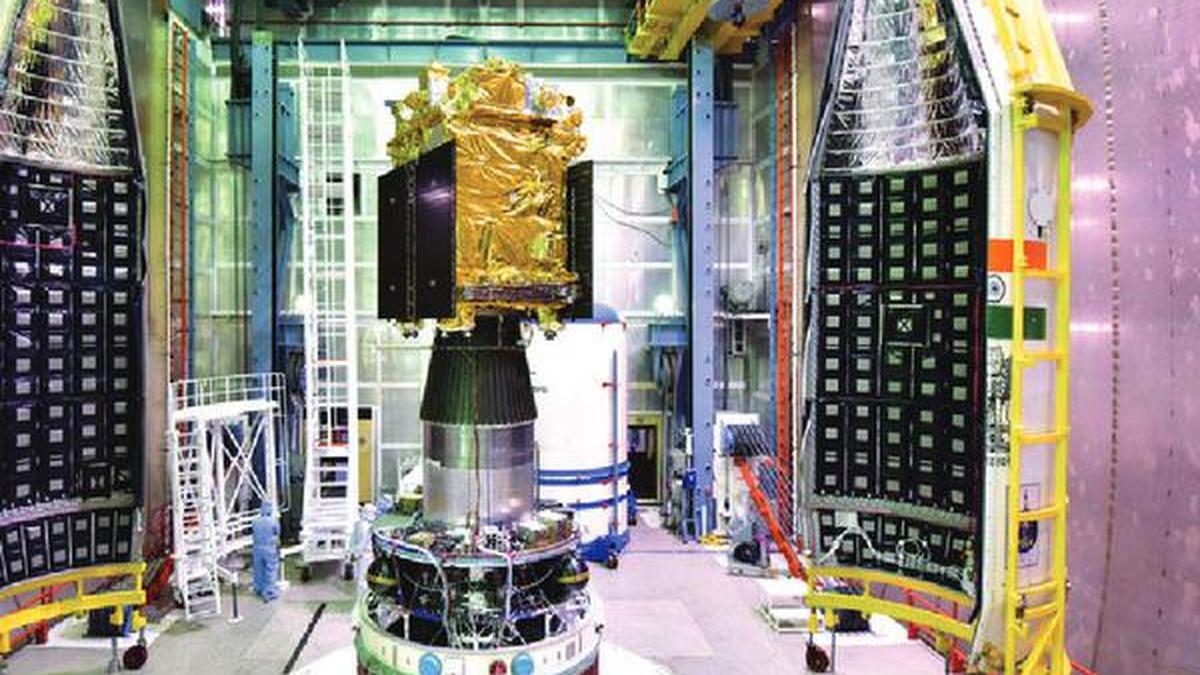
- 04 Nov 2024
In News:
- The Aditya-L1 mission, launched by the Indian Space Research Organisation (ISRO) on September 2, 2023, is India's first dedicated scientific mission to study the Sun.
- Primary Payload: The Visible Emission Line Coronagraph (VELC), developed by the Indian Institute of Astrophysics (IIAp), Bengaluru, is the spacecraft's main instrument.
Key Highlights:
- First Science Outcome:The first scientific result from the mission, involving VELC, has been released. It successfully estimated the onset time of a coronal mass ejection (CME) that occurred on July 16, 2023.
- CMEs are massive solar eruptions that can disrupt electronics in satellites and communications on Earth.
- Key Findings:
- VELC's Role: The VELC payload was crucial in observing the CME close to the solar surface, providing a detailed understanding of its onset.
- CMEs are typically observed in visible light after they have traveled far from the Sun. However, VELC’s unique spectroscopic observations allowed scientists to study the CME much closer to the Sun's surface.
- Publication:The results will be published in the Astrophysical Journal Letters.
- Future Significance:
- As the Sun approaches the maximum phase of its current solar cycle (No. 25), CMEs are expected to become more frequent. Continuous monitoring with VELC will provide valuable data for understanding these events.
- Monitoring the thermodynamic properties of CMEs near the Sun is essential to understand their source regions and behavior.
- Mission Details:
- The spacecraft is in a halo orbit around the Lagrange Point 1 (L1), about 1.5 million kilometers from Earth.
- Mission Lifetime: 5 years.
Kodo Millet
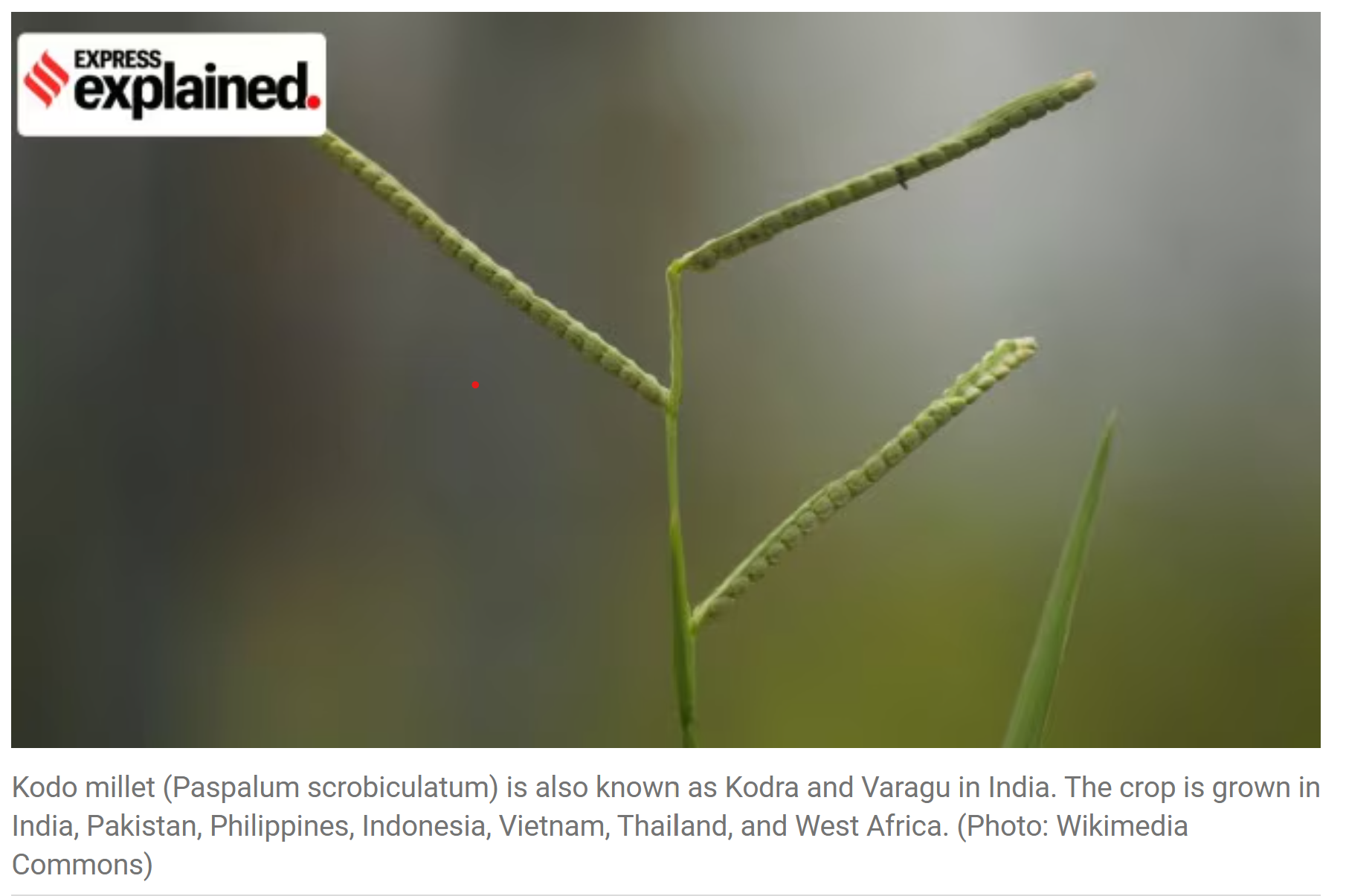
- 03 Nov 2024
In News:
Kodo millet is a staple food for many tribal and economically weaker sections in India. It is one of the 'hardiest crops, drought tolerant with high yield potential and excellent storage properties,' according to researchers
Background on Kodo Millet:
- Kodo millet (Paspalum scrobiculatum), also known as Kodra or Varagu, is a hardy, drought-tolerant crop widely grown in India, especially in Madhya Pradesh.
- It is a staple food for many tribal and economically weaker sections of India and is used to make various dishes like idli, dosa, and rotis.
- Kodo millet is valued for its high yield, nutritional benefits (rich in vitamins, minerals, antioxidants), and storage properties.
Incident in Bandhavgarh Tiger Reserve:
- 10 elephants from a herd of 13 died over three days in Madhya Pradesh’s Bandhavgarh Tiger Reserve.
- The cause of death was suspected to be mycotoxins associated with kodo millet, particularly Cyclopiazonic Acid (CPA), which is toxic to animals.
Historical Cases of Kodo Poisoning:
- The first human cases of kodo poisoning were reported in 1922 in the Indian Medical Gazette.
- Animals, including elephants, have also been affected by kodo millet consumption, with documented deaths as early as 1983.
- Cyclopiazonic Acid (CPA), a mycotoxin, was identified as the cause of kodo poisoning in the 1980s.
Why Does Kodo Millet Become Poisonous?
- Kodo millet is grown in dry and semi-arid regions and is vulnerable to fungal infections, particularly Ergot fungus, which produces CPA.
- When the crop encounters rainfall during maturing and harvesting, fungal infection can lead to "poisoned kodo," known locally as 'Matawna Kodoo' or 'Matona Kodo'.
- The mycotoxins in the infected millet are stable and resistant to standard food processing techniques.
Impact of Mycotoxins on Animals:
- Symptoms of poisoning: Vomiting, giddiness, unconsciousness, rapid pulse, cold extremities, limb tremors.
- Nervous and cardiovascular systems are primarily affected, causing liver dysfunction, heart damage, and gastrointestinal issues.
- In severe cases, consumption of infected kodo millet can cause death due to cardiovascular collapse and organ failure.
- Similar symptoms of depression and loss of mobility were observed in animal studies, including in mice.
Solution to Kodo Toxicity:
- Biocontrol agents (organisms that fight harmful pathogens) can help reduce fungal growth and mycotoxin production in kodo millet.
- Good agricultural practices: Sorting, proper storage in airtight containers, and avoiding moisture exposure during threshing can minimize contamination.
- Post-harvest management: Removing infected grains is crucial to preventing the spread of the disease.
Detection of Mycotoxins in Kodo Millet:
- Challenges: Mycotoxins are often undetectable by sight, and traditional methods like chromatography are time-consuming.
- Rapid detection tools: Enzyme-linked immunosorbent assays (ELISA), lateral flow assays (LFAs), and biosensors offer faster, on-site methods for detecting mycotoxins in kodo millet.
Centre for Science and Environment
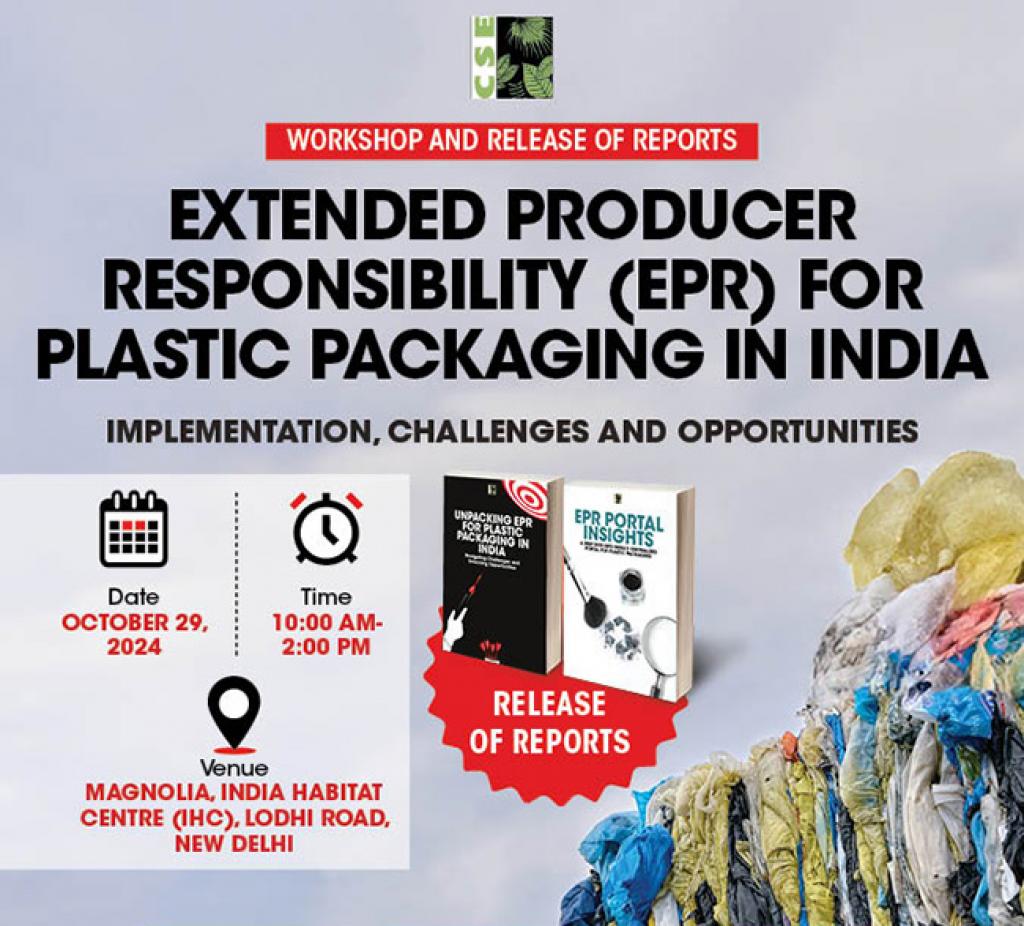
- 03 Nov 2024
In News:
Centre for Science and Environment release a report on Extended Producer Responsibility (EPR) for Plastic Packaging
Key Findings:
- EPR Guidelines (2022) were a step towards enforcing the "polluter pays" principle, but the system faces significant issues in its implementation and registration processes.
- Centre for Science and Environment (CSE) report, released on October 29, 2024, highlights gaps in the EPR system for plastic packaging and suggests corrective actions.
EPR Guidelines Overview:
- Issued by: Union Ministry of Environment, Forest and Climate Change (MoEFCC).
- Objective: Hold producers, importers, brand owners (PIBOs), and plastic waste processors (PWPs) responsible for managing plastic packaging waste.
- Key Requirements:
- PIBOs must register on a centralized portal and set targets for collection, recycling, and reuse of plastic packaging.
- Registration involves compliance with targets on end-of-life recycling and recycled content usage.
Problems Identified in the Current EPR System:
- Low Registration and Enrollment:
- 41,577 registrations on the EPR portal, but a significant discrepancy in the type of stakeholders registered.
- 83% of registered entities are importers, 11% are producers, and only 6% are brand owners.
- Producers contribute 65% of the plastic packaging in the market but have low registration.
- Absence of Key Polluters:
- Manufacturers of virgin plastics are notably absent from the portal, despite being required to register.
- Fraudulent Practices:
- 700,000 fake certificates were generated by plastic recyclers, far exceeding the actual certificate generation capacity.
- The Central Pollution Control Board (CPCB) found that such fraudulent activities are undermining the integrity of the system.
- For example, end-of-life co-processing units (e.g., cement plants) claimed to have processed 335.4 million tonnes per annum of plastic waste, while their actual capacity is just 11.4 million tonnes per annum.
- Underreporting and Mismanagement:
- Despite 23.9 million tonnes of plastic packaging being introduced into the market, the CPCB’s estimation of plastic waste generation (4.1 MT annually) is underestimated.
- Lack of Stakeholder Representation:
- Urban local bodies and informal waste collectors—key contributors to plastic waste management—are not included in the EPR framework, which limits their incentives and support.
Recommendations for Improvement:
- Incorporate the Informal Sector:
- Recognize informal waste collectors and waste management agencies in the EPR framework to improve traceability and ensure better waste management.
- Eliminate Fraudulent Practices:
- Strict actions need to be taken against fraudulent recyclers and fake certificate issuers to restore credibility to the EPR system.
- Establish Fair Pricing for EPR Certificates:
- Undertake baseline cost studies to determine the true costs of plastic waste management, ensuring fair pricing for recycling certificates and preventing undervaluation.
- Standardize Packaging:
- Focus on product standardization to ensure that packaging materials are uniform and easily recyclable.
- Strengthen Monitoring:
- Improve oversight on the registration process and ensure that all polluters (producers, importers, brand owners) comply with the system’s guidelines.
EPR and Plastic Waste Management: Context and Importance
- Extended Producer Responsibility (EPR) is a policy approach where the responsibility of managing the entire lifecycle of plastic products (from production to disposal) lies with the producer.
- It is an essential part of India’s Plastic Waste Management Rules (2016), which mandate the recycling and proper disposal of plastic packaging waste.
Key Elements of EPR:
- Producer Accountability: Producers are responsible for the take-back, recycling, and final disposal of plastic packaging.
- Waste Minimization: Encourages reducing waste at the source by promoting sustainable packaging designs.
- Lifecycle Approach: Considers the entire lifecycle of the product, focusing on sustainability from production to disposal.
- Polluter Pays Principle: Ensures that the cost of waste management is borne by those responsible for generating the waste.
National Biodiversity Strategy and Action Plan (NBSAP) 2024-2030
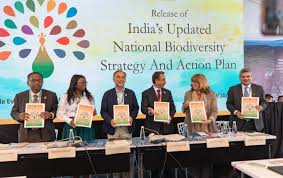
- 03 Nov 2024
In News:
The updated NBSAP was released by India at the 16th Conference of Parties (COP16) to the Convention on Biological Diversity (CBD).
Overview of the NBSAP (2024-30):
- Title:Updated National Biodiversity Strategies and Action Plan: A Roadmap for Conservation of India’s Biodiversity.
- Objective: To provide a comprehensive roadmap for biodiversity conservation, aligning with global frameworks like the Kunming-Montreal Global Biodiversity Framework (KMGBF).
Key Features of the Updated NBSAP:
- Alignment with Global Frameworks:
- The Kunming-Montreal Global Biodiversity Framework (KMGBF) adopted in 2022 aims to halt and reverse biodiversity loss by 2030.
- India’s updated NBSAP aligns with KMGBF’s goals, focusing on biodiversity conservation, sustainable resource use, and ensuring fair benefit-sharing.
- 23 National Biodiversity Targets:
- The targets are focused on three key themes:
- Reducing threats to biodiversity
- Ensuring sustainable use of biodiversity
- Enhancing tools for biodiversity implementation
- The targets are focused on three key themes:
- Key Domains of Focus:
- Area-based conservation: Protecting ecosystems and habitats.
- Ecosystem resilience: Enhancing the ability of ecosystems to withstand environmental stressors.
- Recovery and conservation of threatened species.
- Conservation of agrobiodiversity: Ensuring the sustainability of agricultural biodiversity.
- Sustainable management of biodiversity.
- Enabling tools and solutions: Including financial and technical support for implementation.
- Financial Plan and Expenditure:
- Biodiversity Expenditure Review (BER) estimated an average annual expenditure of Rs 32,20,713 crore (FY 2017-2022) for biodiversity conservation.
- Future funding requirements (FY 2024-2030) estimated at Rs 81,664.88 crore annually at the central government level.
- Biodiversity Finance Plan suggests financing solutions, including public finance, corporate social responsibility (CSR), Ecological Fiscal Transfer (EFT), and Access and Benefit Sharing (ABS) mechanisms.
- Capacity Building:
- The NBSAP stresses the need for capacity building across various levels—national, state, and local.
- Focus on skills acquisition for biodiversity management and enhancing knowledge to implement conservation strategies.
Implementation Framework:
- Multi-Level Governance:
- At the national level, the Ministry of Environment, Forest, and Climate Change (MoEFCC) will oversee implementation with involvement from 22 other ministries.
- State-level: Involves State Biodiversity Boards and Union Territory Biodiversity Councils.
- Local level: Community-driven efforts through Biodiversity Management Committees.
- BIOFIN and Resource Mobilization:
- India is recognized as a leading country in the implementation of the Biodiversity Finance Initiative (BIOFIN).
- Encouragement for private entrepreneurs, businesses, and international donors to invest in biodiversity through innovative financial instruments like:
- Green Bonds
- Green Funds
- Payment for Ecosystem Services (PES)
- Incentives for Financial Solutions:
- India aims to explore funding from corporate social responsibility (CSR), ecological fiscal transfers, and access and benefit sharing mechanisms to meet the financial needs for biodiversity conservation.
Challenges and Strategies:
- Challenges India Faces:
- Habitat fragmentation
- Pollution
- Illegal wildlife trade
- Adverse effects of climate change
- Strategic Responses:
- The updated NBSAP provides strategies to address these challenges, ensuring comprehensive conservation and sustainable use of biodiversity.
First in the World Challenge

- 03 Nov 2024
In News:
ICMR announces ‘First in the World Challenge’ to encourage scientists to find innovative ideas to tackle health issues.
Key Highlights:
- Objective:
- Encourage bold, out-of-the-box ideas for solving difficult health problems.
- Aim to foster novel and groundbreaking biomedical innovations (vaccines, drugs, diagnostics, interventions, etc.).
- Target projects that are “first of their kind” and have never been tried or tested globally.
- Key Features of the Initiative:
- Focus on Groundbreaking Innovations:
- Emphasis on high-risk, high-reward ideas with potential for significant global health impact.
- Excludes proposals aiming for incremental knowledge or process innovation.
- Scope of Research:
- Breakthroughs in biomedical and health technologies such as:
- Vaccines
- Drugs/Therapeutics
- Diagnostics
- Interventions
- Breakthroughs in biomedical and health technologies such as:
- Focus on Groundbreaking Innovations:
- Funding & Support:
- Provides funding for projects at various stages, from proof-of-concept to prototype development and final product.
- Support for projects that have the potential to lead to “first-of-its-kind” biomedical innovations.
- Application Process:
- Open to individual researchers or teams (from single or multiple institutions).
- Teams must designate a Principal Investigator responsible for the project’s technical, administrative, and financial aspects.
- Selection Criteria:
- A selection committee will be formed with:
- Experts, innovators, policymakers, and distinguished scientists with an outstanding research record.
- Proposals evaluated based on originality, impact potential, and innovation.
- A selection committee will be formed with:
About the Indian Council of Medical Research (ICMR)
- History:Founded in 1911 as the Indian Research Fund Association (IRFA), renamed ICMR in 1949.
- Role & Mandate:
- Ministry of Health and Family Welfare, Government of India.
- Formulates, coordinates, and promotes biomedical research in India.
- Focus on improving public health and addressing national health challenges.
- Vision:“Translating Research into Action for Improving the Health of the Population.”
Wildlife Crime Control Bureau (WCCB)
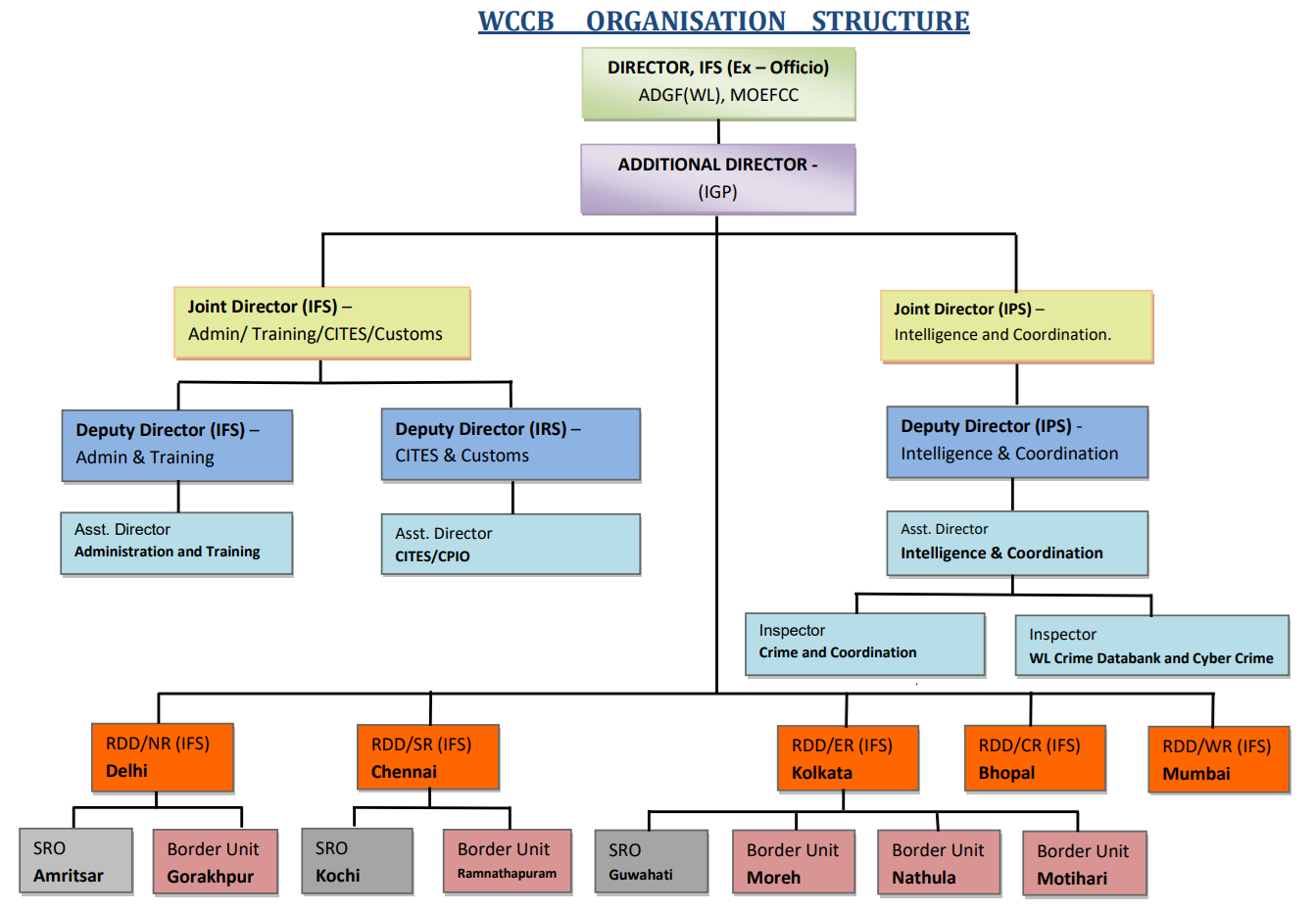
- 03 Nov 2024
In News:
The Wildlife Crime Control Bureau (WCCB) of the Ministry of Environment, Forest and Climate change has constituted a team to enquire into the death of ten elephants in Bandhavgarh Tiger Reserve of Madhya Pradesh. The team is conducting an independent enquiry in the matter.
- Incident Overview:
- Ten elephants found dead in Bandhavgarh Tiger Reserve, Madhya Pradesh, between October 29-31, 2024.
- Preliminary cause of death suspected to be poisoning; final cause pending postmortem and toxicological analysis.
- Government Actions:
- Union Government:
- The Wildlife Crime Control Bureau (WCCB) has set up a team to conduct an independent investigation into the deaths.
- Madhya Pradesh Government:
- Constituted a five-member State-level inquiry committee, headed by the Additional Principal Chief Conservator of Forests (APCCF, Wildlife).
- Committee includes members from civil society, scientists, and veterinarians.
- The State Tiger Strike Force (STSF) is conducting field investigations, combing surrounding areas for further clues.
- Other Involved Authorities:
- The Principal Chief Conservator of Forests (PCCF) and Chief Wildlife Warden of Madhya Pradesh are directly supervising the inquiry in Bandhavgarh.
- Senior officials from the National Tiger Conservation Authority (NTCA) have visited the site for discussions and investigation.
- Union Government:
About Wildlife Crime Control Bureau (WCCB):
- Mandate:
- Combats organized wildlife crime through intelligence gathering and coordination with enforcement agencies.
- Develops wildlife crime data and assists in prosecutions.
- Provides capacity building for wildlife crime enforcement agencies.
- Operations & Initiatives:
- Conducts operations like SAVE KURMA, THUNDERBIRD, WILDNET, and more to counter wildlife crimes.
- Nodal Ministry: Ministry of Environment, Forest and Climate Change.
- Headquarters: New Delhi.
PARAKH RashtriyaSarvekshan 2024
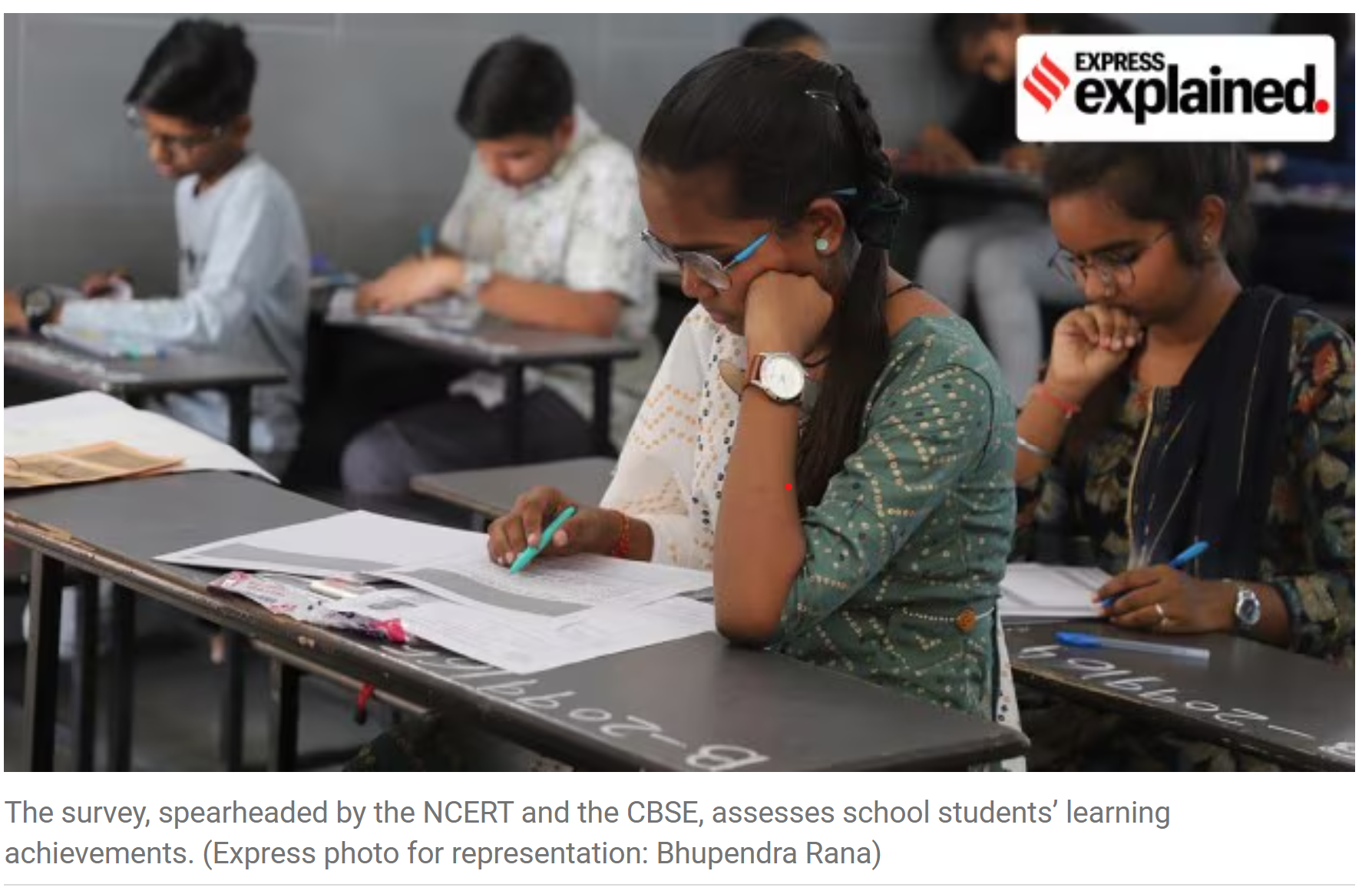
- 02 Nov 2024
In News:
The National Achievement Survey (NAS), a nationwide survey meant to assess students’ learning progress, will be held on December 4 this year under a new name – PARAKH RashtriyaSarvekshan 2024. This year’s assessment involves a few changes from the last round in 2021.
Overview of PARAKH RashtriyaSarvekshan 2024:
- New Name: The National Achievement Survey (NAS) is now rebranded as the PARAKH RashtriyaSarvekshan 2024.
- Date: The survey will be held on December 4, 2024.
- Purpose: To assess students’ learning achievements across India.
- Organizing Bodies: Spearheaded by NCERT and CBSE.
What Does the Survey Assess?
- Assessment Focus: Evaluates students’ learning outcomes in various subjects.
- Survey Methodology: Uses multiple-choice questions to assess a sample of students.
- Target Groups: Students from government, government-aided, and private schools across every district in India.
History of NAS and PARAKH:
- NAS History: Conducted every three years since 2001 to capture learning progress.
- Involvement of Classes:
- 2001-2014: Included Classes 3, 5, and 8.
- 2014-15: Class 10 was introduced.
- 2017 and 2021: Covered Classes 3, 5, 8, and 10.
- Report Cards: Provides national, state, and district-level performance data.
Changes in 2024 Survey (PARAKH RashtriyaSarvekshan):
- Targeted Classes:
- Class 3 (End of foundational stage)
- Class 6 (End of preparatory stage)
- Class 9 (End of middle stage)
- Exclusion of Class 10: Unlike previous years, Class 10 students are not part of this year's assessment.
- Subjects Assessed:
- Class 3 & 6: Language, Mathematics, and The World Around Us (Concepts of Science, Social Science, and Environmental Education).
- Class 9: Language, Mathematics, Science, and Social Science.
Alignment with National Education Policy (NEP) 2020:
- NEP Structure: Aligns with the NEP 2020 framework, categorizing educational stages:
- Class 1-2: Foundational stage
- Class 3-5: Preparatory stage
- Class 6-8: Middle stage
- Class 9-12: Secondary stage
- The shift to Class 6 and 9 for this year’s survey matches the NEP's stage-wise educational framework.
Key Differences in 2024 Assessment:
- Survey Scale: In 2024, 75,565 schools and 22.9 lakh students from 782 districts will participate.
- 2021 Assessment Data:
- The 2021 survey revealed a drop in learning outcomes post-COVID-19.
- Class 3 students showed a performance below the national average in all states.
- Class 5: Only Punjab and Rajasthan had scores above the national average.
PARAKH's Role:
- PARAKH (Performance Assessment, Review, and Analysis of Knowledge for Holistic Development) was established in 2023 as the National Assessment Centre to oversee such achievement surveys.
- Mandate: One of PARAKH’s primary roles is to organize national surveys like the PARAKH RashtriyaSarvekshan.
Significance of the Survey:
- Data Utilization: The survey helps in shaping educational policies based on real-time data on student learning levels.
- Competency-Based Assessment: This year’s survey is focused on competency-based assessments, aligning with the goals of NEP 2020.
- Policy and Planning: The data helps in designing interventions to address regional or subject-wise disparities in education quality.
Hwasong-19
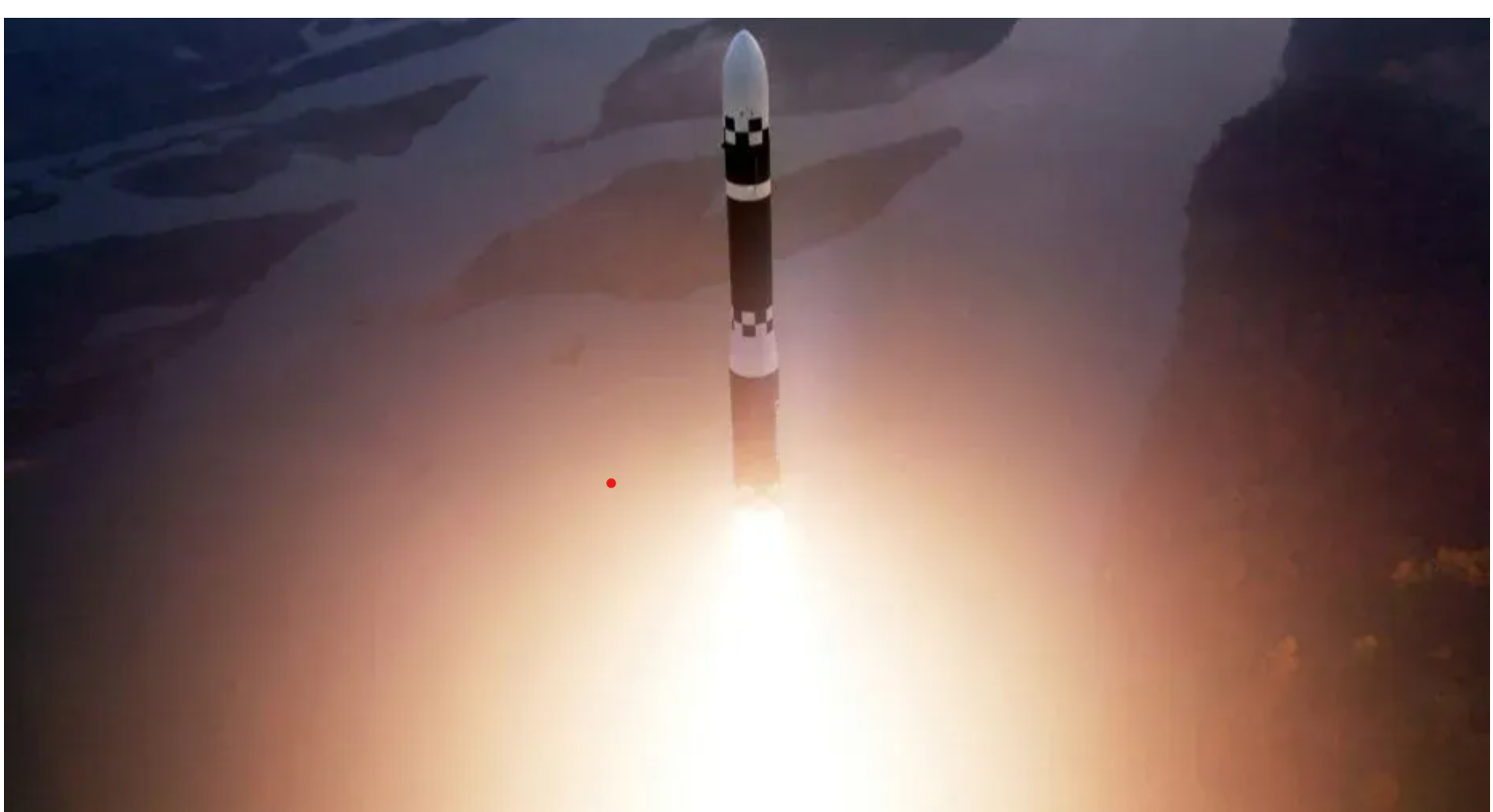
- 02 Nov 2024
In News:
- North Korea recently announced the successful test-firing of its latest intercontinental ballistic missile (ICBM), the ‘Hwasong-19’.
- Claims by North Korea: The missile was described as ‘the world’s strongest strategic missile’ and a ‘perfected weapon system’ by North Korean state media.
Key Features of the Hwasong-19:
- Solid-Fuel Propulsion: The Hwasong-19 reportedly uses solid-fuel propulsion, which enables quicker launches and greater secrecy. This contrasts with liquid-fuel missiles, which take longer to prepare and are more visible.
- Enhanced Performance: The missile is said to have improved altitude and flight duration compared to previous North Korean ICBMs, marking significant progress in missile technology.
- Size: The Hwasong-19 is estimated to be 28 meters long (92 feet), which is notably larger than many other ICBMs, including those from the U.S. and Russia, which are typically under 20 meters (66 feet).
Strategic Implications:
- Reach and Targeting: The Hwasong-19 is believed to have a range of over 13,000 kilometers, which is sufficient to target the U.S. mainland, signaling a significant advancement in North Korea’s missile capabilities.
- Nuclear Capability: While specific details on the missile’s payload remain undisclosed, the Hwasong-19 could potentially be equipped with a nuclear warhead, enhancing North Korea's strategic deterrence.
Impact on Regional and Global Security:
- US-North Korea Tensions: The launch occurred against the backdrop of ongoing U.S.-North Korea tensions, particularly over North Korea’s nuclear and missile programs. The missile could potentially alter the regional security dynamics, especially in East Asia.
What is an ICBM?
- ICBM Definition: An intercontinental ballistic missile (ICBM) is a long-range missile capable of carrying nuclear warheads (or other payloads) across continents.
- Range and Speed: ICBMs typically have a minimum range of 5,500 km (3,400 miles), with some capable of reaching up to 16,000 km or more, making them far faster and more capable than other ballistic missiles.
- Launch Mechanism: ICBMs are launched from land or submarine platforms, traveling through space before re-entering the Earth’s atmosphere and targeting distant objectives.
- Comparison with India's Agni-V: India’s Agni-V ICBM, which has a range of over 5,000 km, is often compared to North Korea’s missile systems.
Asset Recovery Interagency Network–Asia Pacific (ARIN-AP)
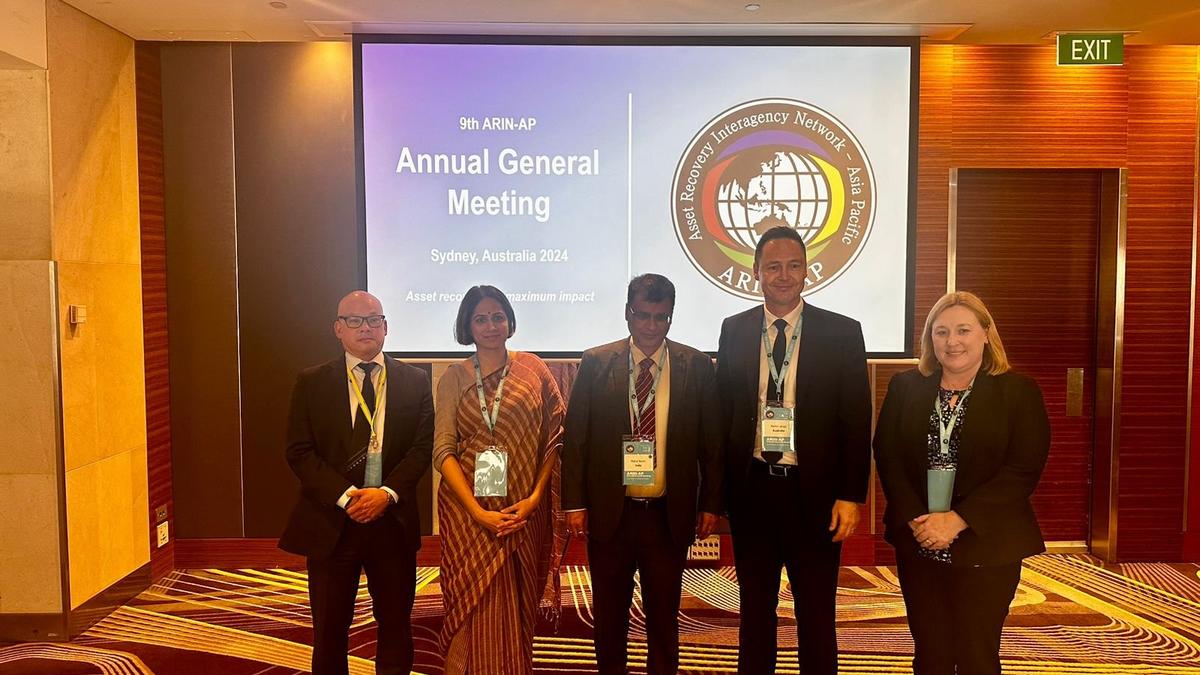
- 02 Nov 2024
In News:
- India, represented by the Directorate of Enforcement (ED), has joined the Steering Committee of the Asset Recovery Interagency Network-Asia Pacific (ARIN-AP).
- Leadership Role: India will assume the presidency of ARIN-AP and host the Annual General Meeting (AGM) in 2026, providing a platform for global cooperation in asset recovery and tackling economic crimes.
ARIN-AP Overview:
- Establishment: ARIN-AP is a multi-agency network formed to address the proceeds of crime across the Asia-Pacific region.
- Network Goals: Its mission is to facilitate cross-border collaboration in the areas of asset tracing, freezing, and confiscation.
- Membership: ARIN-AP includes 28 member jurisdictions and 9 observers, and operates as a key component of the Global CARIN Network (Camden Asset Recovery Inter-Agency Network).
- Functioning: ARIN-AP operates through a network of contact points that enable intelligence exchange among member agencies, promoting effective communication and coordination for asset recovery.
Significance of ARIN-AP's Work:
- Combating Economic Crimes: ARIN-AP enhances the efforts of law enforcement agencies in tracing and recovering assets linked to criminal activities, including both movable and immovable assets.
- Informal Exchange of Intelligence: The network allows for the informal exchange of intelligence between agencies, which often accelerates the identification and recovery of proceeds of crime. This can later lead to formal actions through bilateral or multilateral agreements.
- Global Impact: With over 100 jurisdictions in the broader CARIN Network, ARIN-AP plays a key role in global efforts to combat fugitive economic offenders and illicit financial flows.
India’s Contribution and Alignment with G-20 Priorities:
- India’s Leadership: India’s presidency in ARIN-AP will enhance its leadership in asset recovery, facilitating closer cooperation with regional and international law enforcement agencies.
- G-20 Alignment: This role aligns with India’s priorities under the G-20 framework, particularly focusing on the Nine-Point Agenda aimed at tackling fugitive economic offenders and improving asset recovery mechanisms.
Discovery of the First "Black Hole Triple" System
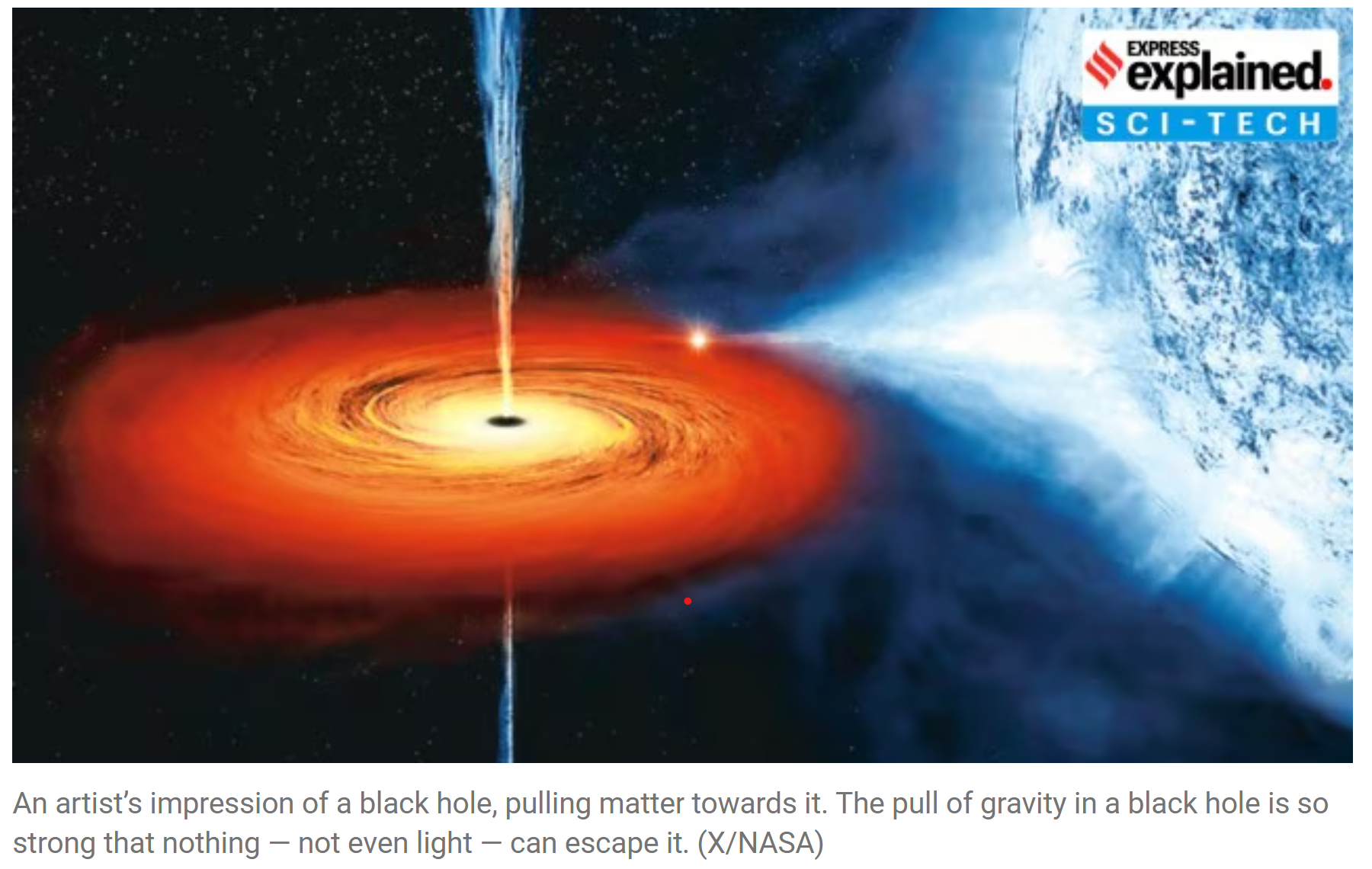
- 02 Nov 2024
In News:
Scientists have discovered a "black hole triple" system, which is a rare configuration in space involving one black hole and two stars.
Overview of the Discovery:
- Location: The system is located 8,000 light years away from Earth, in the constellation Cygnus.
- Key Features:
- A black hole at the center, currently consuming a star that is spiraling very close to it.
- A second, more distant star that orbits the black hole every 70,000 years, and another star that orbits it every 6.5 days.
What is a Black Hole Triple System?
- Black Hole and Two Stars: Unlike typical binary systems (comprising a black hole and one other object), this system contains a black hole surrounded by two stars, one nearby and one far away.
- V404 Cygni: The central black hole in the system is the V404 Cygni, one of the oldest known black holes, roughly 9 times the mass of the Sun.
Significance of the Discovery:
- Questions on Black Hole Formation: The discovery raises new questions about how black holes are formed. Traditionally, black holes are thought to form after the explosion of a massive star (supernova), but this system does not follow that model.
- New Formation Theory: Researchers suggest the black hole may have formed via a "direct collapse" process, where a star collapses into a black hole without undergoing a supernova explosion. This is referred to as a "failed supernova".
- In a failed supernova, the star's collapse happens too quickly for the explosive outer layers to be ejected, leading to the formation of a black hole without the typical violent explosion.
Implications for Other Binary Systems:
- The black hole’s gradual consumption of one of its stars may imply that some binary black hole systems could have originally been triple systems, with one star eventually being consumed by the black hole.
Research and Collaboration:
- Study: The discovery was made by researchers at California Institute of Technology (Caltech) and Massachusetts Institute of Technology (MIT).
- Published in: The findings were published in Nature in October 2024.
Additional Context:
- Distance: The system is about 8,000 light years away, which is vast but still observable with advanced telescopes.
- Mystery of the "Failed Supernova": The concept of a failed supernova offers new insights into the life cycle of massive stars and their transformation into black holes.
ISRO's Analogue Space Mission in Ladakh
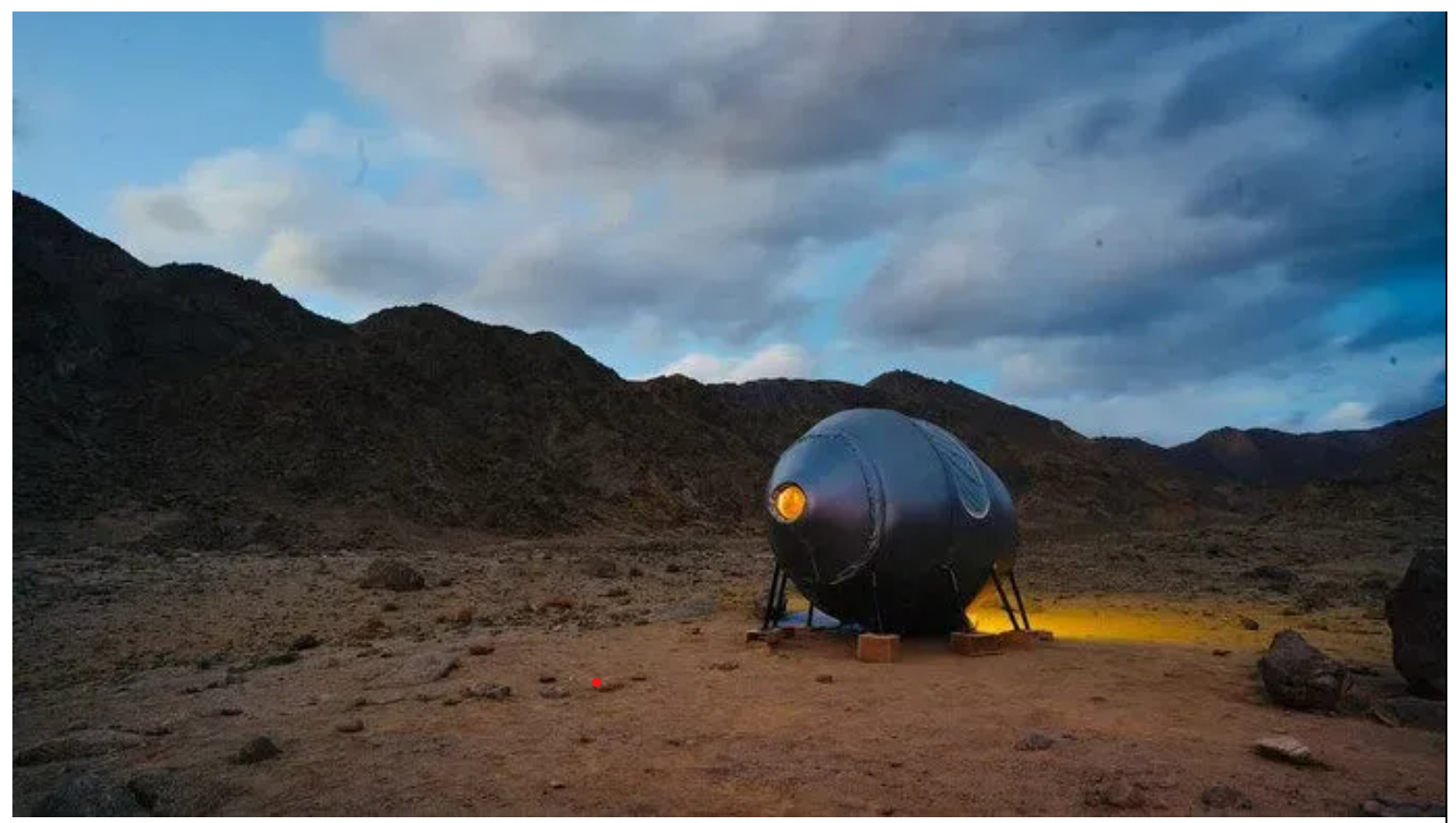
- 02 Nov 2024
In News:
In a significant leap for the country’s space exploration aspirations, India has embarked on its first analogue space mission in Leh, a landmark step that will attempt to simulate life in an interplanetary habitat to tackle the challenges of a base station beyond Earth.
Mission Overview:
- Objective: To simulate living conditions in an interplanetary habitat, addressing challenges astronauts may face during deep-space missions (e.g., Moon, Mars).
- Goal: Study long-term isolation, habitat design, resource management, and psychological effects on astronauts.
- Partners: ISRO’s Human Spaceflight Centre, AAKA Space Studio, University of Ladakh, IIT Bombay, Ladakh Autonomous Hill Development Council.
Rationale for Ladakh:
- Geological Similarities: Ladakh’s terrain mirrors Martian and lunar surfaces, making it ideal for testing space technologies.
- Climate: Cold, dry, high-altitude conditions simulate the extreme environments of space.
- Focus Areas: Testing habitat construction, microbial studies, and survival strategies for long-duration space travel.
What are Analogue Space Missions?
- Definition: Simulated space missions on Earth designed to replicate the conditions of space exploration.
- Purpose:
- Test technologies (e.g., life support, habitat design, in-situ resource utilization).
- Study human behavior, psychological impacts of isolation, and operational readiness for extended space travel.
- Relevance: Crucial for preparing astronauts for missions to the Moon, Mars, or asteroids.
Significance of Analogue Missions:
- Technological Testing: Analogue missions help in evaluating systems for habitat design, life support, and health monitoring.
- Human Factors: They provide insights into crew health, teamwork under pressure, and performance during isolation.
- Psychological Studies: Address the impact of confinement, isolation, and communication delays on astronauts.
- Training: Participants (analogue astronauts) are trained for real-world space missions by conducting scientific experiments and managing emergencies.
Global Examples of Analogue Missions:
- NASA’s NEEMO: An underwater mission simulating microgravity conditions to train astronauts for space tasks.
- SIRIUS Program (UAE): Focuses on the psychological impacts of long-duration space isolation, featuring international collaborations.
- Arctic Mars Analogue Svalbard Expedition (AMASE): Uses the extreme Arctic environment of Svalbard to test Mars exploration technologies and procedures.
Relation to India’s Space Aspirations:
- Gaganyaan Mission: ISRO’s human spaceflight mission aiming to send Indian astronauts into space.
- Interplanetary Exploration: The analogue mission supports India’s broader goal of advancing human space exploration and technology development for Mars and beyond.
Melanistic Tigers
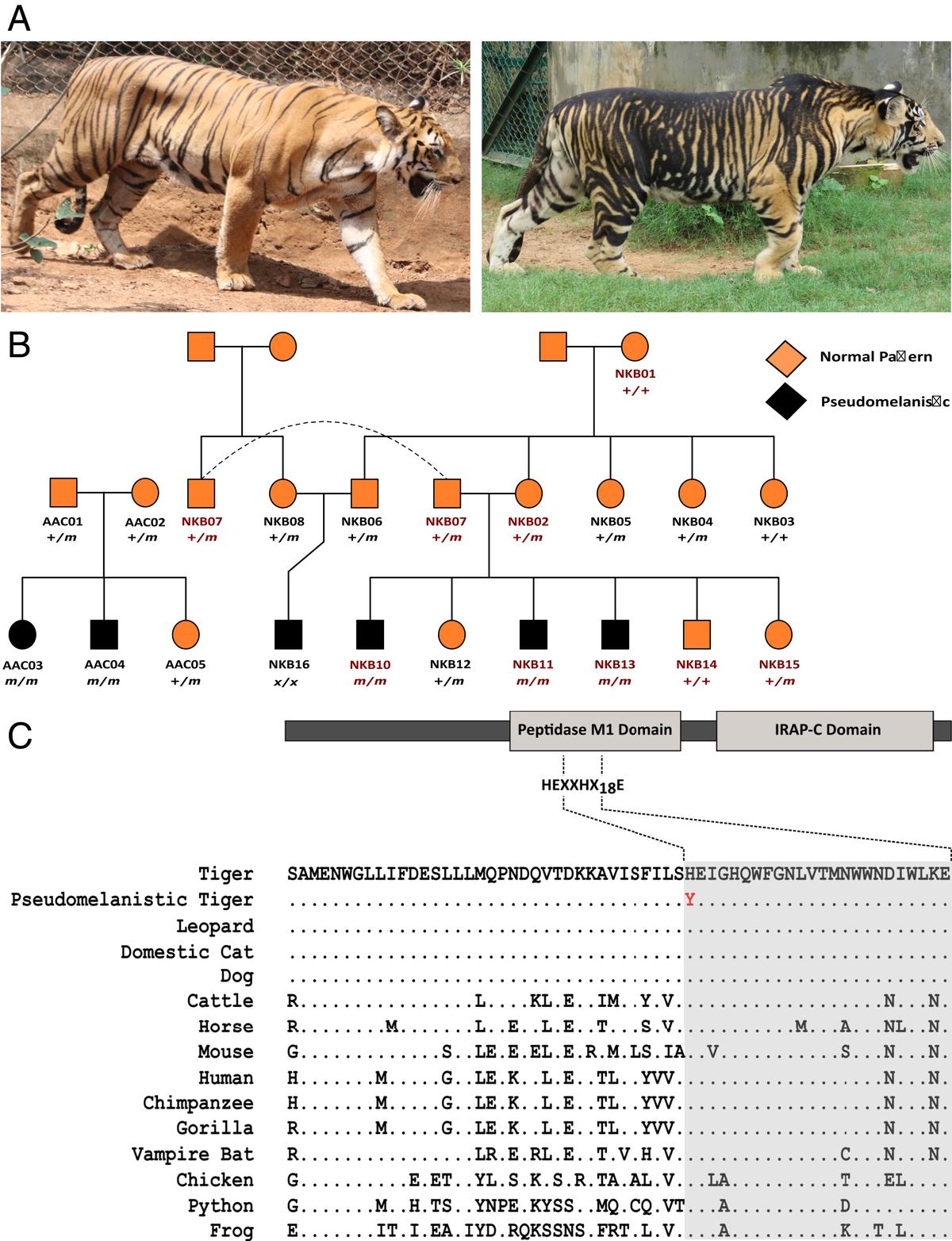
- 01 Nov 2024
In News:
- Odisha government relocated a tigress from Maharashtra’s Tadoba-Andhari Tiger Reserve to Similipal Tiger Reserve, Odisha, to address inbreeding issues among the tiger population.
- The tigress is part of a genetic diversification plan to remedy the increasing number of pseudo-melanistic tigers in the region.
Pseudo-melanistic Tigers:
- Pseudo-melanistic tigers, often referred to as "black tigers," exhibit a darker coat with broader, more prominent stripes.
- The mutation leads to the appearance of a mostly black fur, with occasional white-orange stripes.
Genetic Basis:
- This coloration is due to a mutation in the Taqpep gene, which causes the widening and darkening of stripes on the tiger's coat.
- The mutation is linked to genetic drift and inbreeding within the isolated Similipal population.
Historical Context:
- These tigers were once considered mythical until the 1700s, with sightings only being documented in the 1990s and 2017-18.
- The first confirmed genetic evidence of the black tiger appeared when a cub was born in captivity at Oklahoma City Zoo in the 1970s.
Distribution and Prevalence:
- Pseudo-melanistic tigers are predominantly found in Similipal Tiger Reserve, with 27 out of 30 tigers in Odisha exhibiting the trait.
- Other instances of such tigers exist in captivity, such as in Nandankanan Zoological Park (Bhubaneswar) and Arignar Anna Zoological Park (Chennai), both tracing ancestry to Similipal.
Genetic Studies:
- A 2021 study by the National Centre for Biological Sciences (NCBS) linked the Taqpep gene mutation to the unique appearance of these tigers.
- The mutation causes a missense change in the gene, replacing Cytosine with Thymine (C1360T), altering the tiger’s coat pattern.
High Frequency of Mutation in Similipal:
- Genetic analyses indicate a high frequency of the Taqpep gene mutation in Similipal tigers, with a 60% chance that a tiger born there will carry the mutated gene.
- Inbreeding and genetic isolation have contributed to this phenomenon, as Similipal’s tiger population is geographically cut off from other populations.
PM rolls out Ayushman Bharat for Citizens aged 70 and above

- 01 Nov 2024
In News:
Prime Minister Narendra Modi has expanded the Ayushman Bharat Pradhan Mantri Jan Arogya Yojana (PM-JAY) to provide health coverage to citizens aged 70 years and above, regardless of their income or economic status. This move is aimed at addressing the healthcare challenges faced by India's elderly population, which has been growing rapidly.
Key Highlights of the Ayushman Bharat Expansion:
- Health Coverage for Elderly:
- Ayushman Vaya Vandana Card: This new health card offers Rs 5 lakh annually for individuals aged 70 and above. The coverage is shared within the family, so if there are multiple elderly beneficiaries in one household, the total cover will be split.
- Scope: This initiative is designed to provide a safety net for elderly people, many of whom had previously been unable to access treatment due to high costs.
- Significance of the Scheme:
- India’s elderly population is rapidly growing, with the number of people over 60 expected to reach 319 million by 2050, up from 103 million in 2011.
- The expansion of PM-JAY to include those aged 70+ is a critical step in making universal health coverage more inclusive as India’s population ages.
- Eligibility and Registration:
- Individuals aged 70 years and above must register on the PM-JAY portal or through the Ayushman app. Those who already have an Ayushman Bharat card must complete an eKYC process to receive the new card and coverage.
- Exclusions: The scheme is not available in Delhi and West Bengal, as these states have not adopted the Ayushman Bharat scheme.
- Financial Details:
- The initial outlay for this expansion will be Rs 3,437 crore, covering the remainder of the current financial year and the next year.
- Cover for Overlapping Health Schemes: Elderly individuals who are already covered under other government schemes (e.g., CGHS, Ex-Servicemen Contributory Health Scheme) will have the option to either continue with their current coverage or choose Ayushman Bharat. Those with ESIC or private insurance can access both Ayushman Bharat and their existing cover.
- Coverage Scope:
- The expansion is expected to benefit approximately 6 crore individuals across 4.5 crore families.
- Existing Coverage: Around 1.78 crore elderly people are already covered under the scheme. Additional coverage will be provided to those not currently included in the scheme.
- Interoperability with Other Schemes:
- Those under the Central Government Health Scheme (CGHS), Ex-Servicemen Contributory Health Scheme (ECHS), or other similar schemes will need to choose between their current insurance and the Ayushman Bharat scheme.
- However, individuals enrolled in Employees' State Insurance Corporation (ESIC) can have both their existing cover and the Ayushman Bharat coverage.
- Rollout and Reach:
- The scheme will be implemented across 33 states and Union Territories, except Delhi, Odisha, and West Bengal.
- Over 29,600 hospitals, including more than 12,600 private facilities, are empanelled to provide treatment under PM-JAY.
Other Key Announcements:
- U-WIN Portal: A pan-India digital platform for routine vaccinations, aimed at enhancing the efficiency of vaccination programs.
- Critical Care Facilities: The Prime Minister also launched critical care infrastructure, including new facilities in AIIMS Bhubaneswar, Kalyani, and super-specialty units in Himachal Pradesh and Madhya Pradesh.
LiDAR (Light Detection and Ranging)
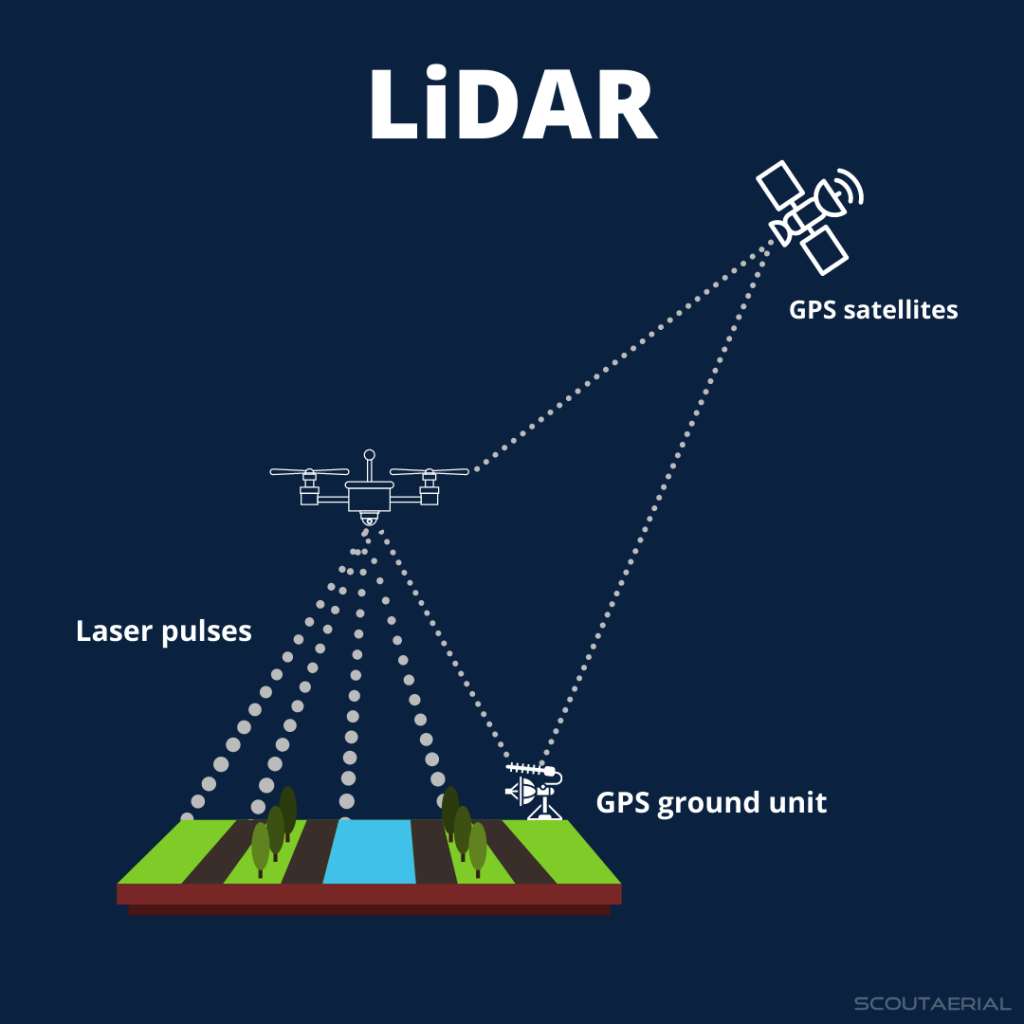
- 01 Nov 2024
In News:
LiDAR (Light Detection and Ranging) is a cutting-edge remote sensing technology that uses laser pulses to measure distances and create detailed 3D maps of Earth's surface. This technology has recently played a crucial role in discovering a lost Mayan city hidden under the dense Mexican jungle.
What is LiDAR?
- Definition: LiDAR is a remote sensing technology that uses pulsed laser light to measure distances and generate precise 3D models of Earth’s surface.
- Components: The system includes a laser, a scanner, and a GPS receiver. It is usually mounted on an aircraft to map large areas of terrain.
- Data Accuracy: LiDAR can create high-resolution 3D models with vertical accuracy up to 10 cm, making it highly precise for mapping ground elevation.
How LiDAR Works
- Laser Emission: LiDAR sends out rapid laser pulses toward the ground.
- Reflection: These pulses hit the Earth’s surface, reflecting off features like vegetation, buildings, and terrain.
- Measurement: The time it takes for the laser light to travel to the ground and back is measured, allowing the system to calculate the distance between the sensor and the surface.
- Point Cloud Data: The reflected light data is collected as a "point cloud", representing all the surfaces it hits, including trees, buildings, and other features.
- Refinement: This point cloud can be processed into a Digital Elevation Model (DEM), stripping away vegetation and structures to reveal the “bare earth,” which highlights features like roads, buildings, and hidden settlements.
Why LiDAR is Useful for Archaeologists
- Large-Scale Surveying: Traditional archaeological methods often involve labor-intensive fieldwork, such as walking over every square meter and manually cutting through thick vegetation. LiDAR, however, allows researchers to quickly survey vast areas of land, even through dense jungle, from the comfort of a lab.
- Visibility Under Vegetation: LiDAR’s ability to penetrate dense foliage and reveal features beneath the surface is a game changer. Even thick tree canopies that obscure the ground are no match for the laser pulses, which can pass through gaps to illuminate hidden structures.
The Discovery of the Lost Mayan City
- The City of Valeriana: Using publicly available LiDAR data from a forest monitoring project in 2013, archaeologist Luke Auld-Thomas discovered a lost Mayan city in Mexico’s Campeche region. The city, named Valeriana, had been hidden for centuries by the thick jungle.
- City Features: The city has all the hallmarks of a Classic Maya political capital, including:
- Multiple enclosed plazas
- Broad causeways
- Temple pyramids
- A ball court
- A reservoir formed by damming a seasonal watercourse
- Historical Significance: Valeriana is believed to date back before 150 CE and may have been a key political and cultural center in the Maya civilization.
Applications of LiDAR Beyond Archaeology
- Geography and Mapping: LiDAR is widely used to generate precise, three-dimensional data about the Earth’s surface, helping geographers and planners.
- Environmental Monitoring: It is also used in forest monitoring, flood risk assessment, and environmental conservation.
- Urban Planning and Engineering: Engineers use LiDAR for creating highly accurate topographical maps and planning infrastructure projects.
Anti-Counterfeiting Ink developed using Luminescent Nanomaterials
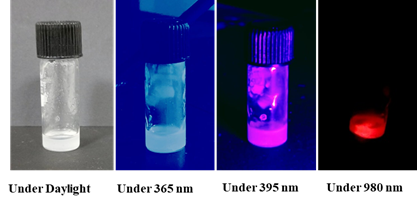
- 01 Nov 2024
In News:
- A novel anti-counterfeiting ink has been developed using luminescent nanomaterials, which significantly enhances security in currency, certificates, medicines, and branded goods.
- The ink utilizes the luminescent properties of rare earth ions and bismuth, enabling excitation-dependent luminescence under different light sources, providing a robust solution to combat counterfeiting.
Key Features:
- Multi-Wavelength Luminescence:
- The ink exhibits distinct colors when exposed to various wavelengths of light:
- Vibrant blue under 365 nm UV light
- Pink under 395 nm UV light
- Orange-red under 980 nm near-infrared (NIR) light
- These varying color emissions make it difficult for counterfeiters to replicate, as traditional covert tags are visible only under UV light and can be easily duplicated.
- The ink exhibits distinct colors when exposed to various wavelengths of light:
- Enhanced Durability:
- The ink remains effective under a wide range of conditions, including varying light, temperature, and humidity, ensuring long-term usability without degradation.
- Simple Application Method:
- The luminescent nanomaterials are synthesized through a co-precipitation method at 120°C.
- The resulting nanomaterials are then mixed into commercially available PVC ink using sonication, allowing for easy dispersion of nanoparticles.
- The ink is applied using screen printing to create patterns and texts that exhibit distinct color changes under different lighting conditions.
- Security Features:
- The ink combines rare earth ions with bismuth emissions, boosting its encryption and decryption capabilities. This creates a high level of security for applications on high-value items.
Applications:
- Currency and Certificates: Enhances the authenticity of financial instruments and official documents.
- Branded Goods: Protects products from counterfeiting and fraud.
- Medicines: Helps verify the authenticity of pharmaceutical products, preventing the distribution of fake medicines.
Benefits:
- Verification: Both consumers and manufacturers can easily verify the authenticity of products, providing an accessible solution to counterfeiting.
- Practical Solution: The ink offers a practical, reliable, and non-invasive method for detecting counterfeit products, addressing a global challenge in various industries.
Report of The Lancet Countdown on Health and Climate Change, 2024
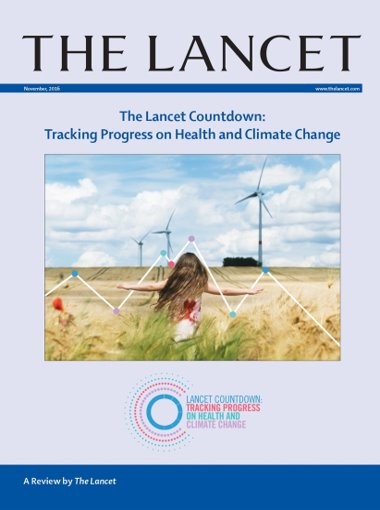
- 30 Oct 2024
In News:
The 2024 edition of The Lancet Countdown on Health and Climate Change presents critical insights into the intersection of health and climate change.
Key Findings from the 2024 Report
- Air Pollution and Mortality in India:
- In 2021, air pollution was responsible for 1.6 million deaths in India.
- Fossil fuels (coal and liquid gas) were identified as major contributors, accounting for 38% of these deaths.
- India was ranked as the second-highest emitter of PM2.5 globally in 2022, contributing 15.8% of consumption-based and 16.9% of production-based PM2.5 emissions.
- Impact of Heat Stress:
- In 2023, India experienced 2400 hours (or 100 days) of moderate to high heat stress, particularly during light outdoor activities like walking.
- Heatwaves have become more frequent, with adults over 65 years experiencing 8.4 heatwave days per year, a 58% increase from 1990-1999.
- This increased heat exposure has led to a loss of 181 billion labor hours globally, translating into an economic loss of approximately $141 billion.
- Global and National Trends in Air Pollution:
- PM2.5 is particularly hazardous because it is fine enough to enter the lungs and bloodstream, leading to severe health risks like respiratory and cardiovascular diseases.
- Nitrogen Dioxide (NO?), Sulphur Dioxide (SO?), Carbon Monoxide (CO), and Ozone (O?) were identified as other pollutants contributing to poor air quality in India.
- Health Impact of Extreme Weather:
- The 2023 heatwave was one of the hottest years on record, exacerbating health risks worldwide, especially for the elderly.
- Droughts and heatwaves also contributed to a rise in food insecurity, affecting millions globally.
- Disease Transmission and Climate Change:
- Dengue transmission potential rose by 85% from 1951-1960 to 2014-2023.
- Coastal areas suitable for the spread of Vibrio pathogens, which cause cholera, expanded by 23%, affecting over 210 million people.
- Health Effects of Fossil Fuel Pollution:
- Continued reliance on fossil fuels worsens air quality, leading to health problems such as respiratory diseases, cardiovascular issues, and adverse pregnancy outcomes.
Government Efforts to Tackle Air Pollution in India
- National Clean Air Programme (NCAP):
- NCAP is a national strategy to reduce air pollution across India, with specific action plans for 131 non-attainment cities. The initiative is supported through various central government schemes such as:
- Swachh Bharat Mission (Urban)
- Atal Mission for Rejuvenation and Urban Transformation (AMRUT)
- Smart City Mission
- Faster Adoption and Manufacturing of Hybrid and Electric Vehicles (FAME-II)
- NCAP is a national strategy to reduce air pollution across India, with specific action plans for 131 non-attainment cities. The initiative is supported through various central government schemes such as:
- Bharat Stage VI (BS-VI) Emission Norms:
- BS-VI standards aim to significantly reduce vehicular pollution, lowering permissible limits for NOx and particulate matter (PM) emissions from vehicles.
- System of Air Quality and Weather Forecasting and Research (SAFAR):
- SAFAR measures air quality and provides forecasts for metropolitan cities based on real-time data, helping authorities take preventive actions.
- Promotion of Renewable Energy:
- India achieved a record 11% of electricity from renewable energy in 2022. However, 71% of India’s electricity still comes from coal, underscoring the need for a faster transition to cleaner energy sources.
CRS Mobile App

- 30 Oct 2024
In News:
- Recently, the Union Home Minister Amit Shah launched the Civil Registration System (CRS) mobile app.
- The app aims to integrate technology with governance by making the registration of births and deaths more accessible, seamless, and hassle-free.
Key Features of the App:
- Anytime, Anywhere Registration: Citizens can register births and deaths from anywhere and at any time, in their State’s official language.
- The app is designed to significantly reduce the time required for registration, making it more efficient and convenient for users.
Legal and Policy Background:
- The Registration of Births and Deaths (Amendment) Act, 2023 mandates that all births and deaths in India, occurring from October 1, 2023, must be digitally registered through the Centre’s portal: dc.crsorgi.gov.in.
- This move is part of the broader effort to digitize civil records and create a centralized database.
Benefits of Digital Registration:
- Digital Birth Certificates: The new system will issue digital birth certificates which will serve as a single document to prove the date of birth for various services, such as:
- Admission to educational institutions
- Applying for government jobs
- Marriage registration
- Centralized Database: The integration of birth and death data into a centralized database will help update critical records such as:
- National Population Register (NPR)
- Ration cards
- Property registration
- Electoral rolls
National Population Register (NPR) Integration:
- The data collected through the CRS app will assist in updating the National Population Register (NPR), which was first collected in 2010 and updated in 2015 through door-to-door enumeration.
- The NPR serves as the first step toward the creation of the National Register of Citizens (NRC) under the Citizenship Act, aimed at identifying Indian citizens.
Belt and Road Initiative (BRI)
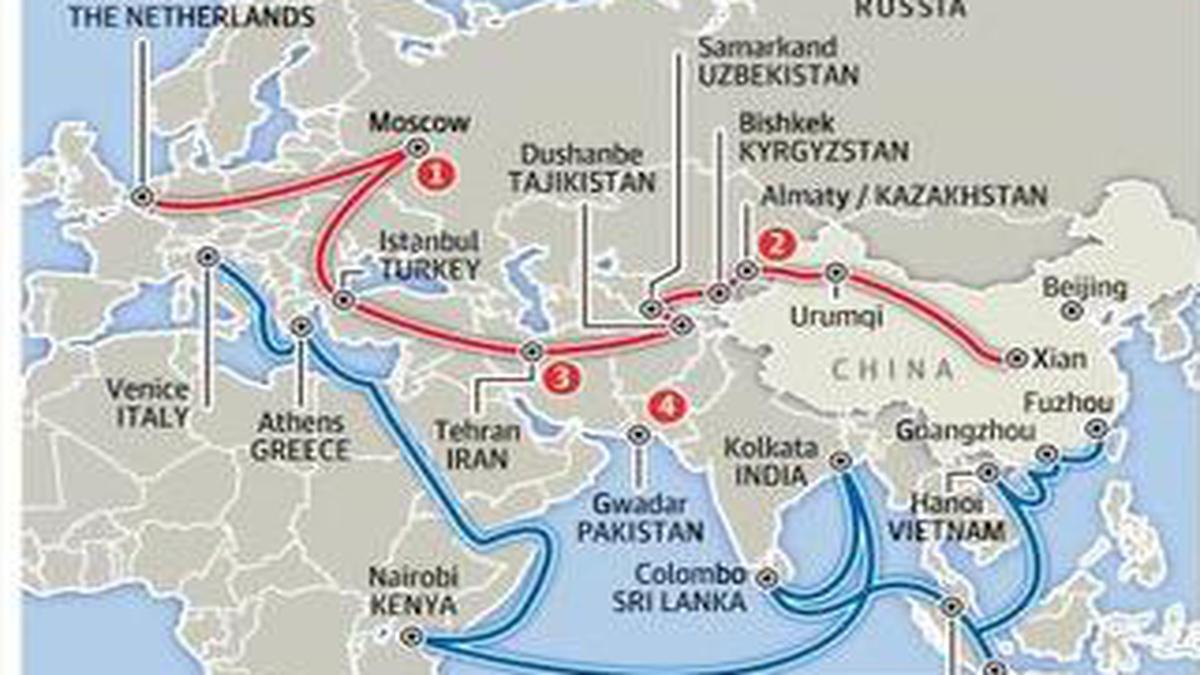
- 30 Oct 2024
In News:
- Brazilhas opted not to join China’s Belt and Road Initiative (BRI), becoming the second BRICS country after India to reject the multi-billion-dollar infrastructure project.
- Brazil prefers to explore alternative ways to collaborate with Chinese investors without signing a formal treaty, aiming to avoid the perceived risks of the BRI.
BRICS and India’s Role:
- Brazil’s decision follows India’s long-standing opposition to the BRI, particularly due to the China-Pakistan Economic Corridor (CPEC) passing through Pakistan-occupied Kashmir, which India views as a violation of its sovereignty.
- India has consistently argued that BRI projects should adhere to international norms, good governance, and transparency, emphasizing that such initiatives should be financially sustainable and not lead to debt traps.
Brazil’s Broader Economic Strategy:
- Brazil aims to balance its relationship with China, which is a major economic partner, but without being bound by the BRI. This decision reflects broader concerns within Brazil about the long-term financial sustainability of BRI projects, especially after witnessing debt crises in other countries like Sri Lanka.
Global Context and the BRI's Impact:
- The BRI, launched by China in 2013, spans several infrastructure sectors and has expanded globally, but it has faced criticism for its potential to trap smaller nations in unsustainable debt.
- India and Brazil’s resistance to the BRI highlights growing skepticism among emerging economies about the long-term implications of joining China's flagship project.
Ayurveda Day 2024
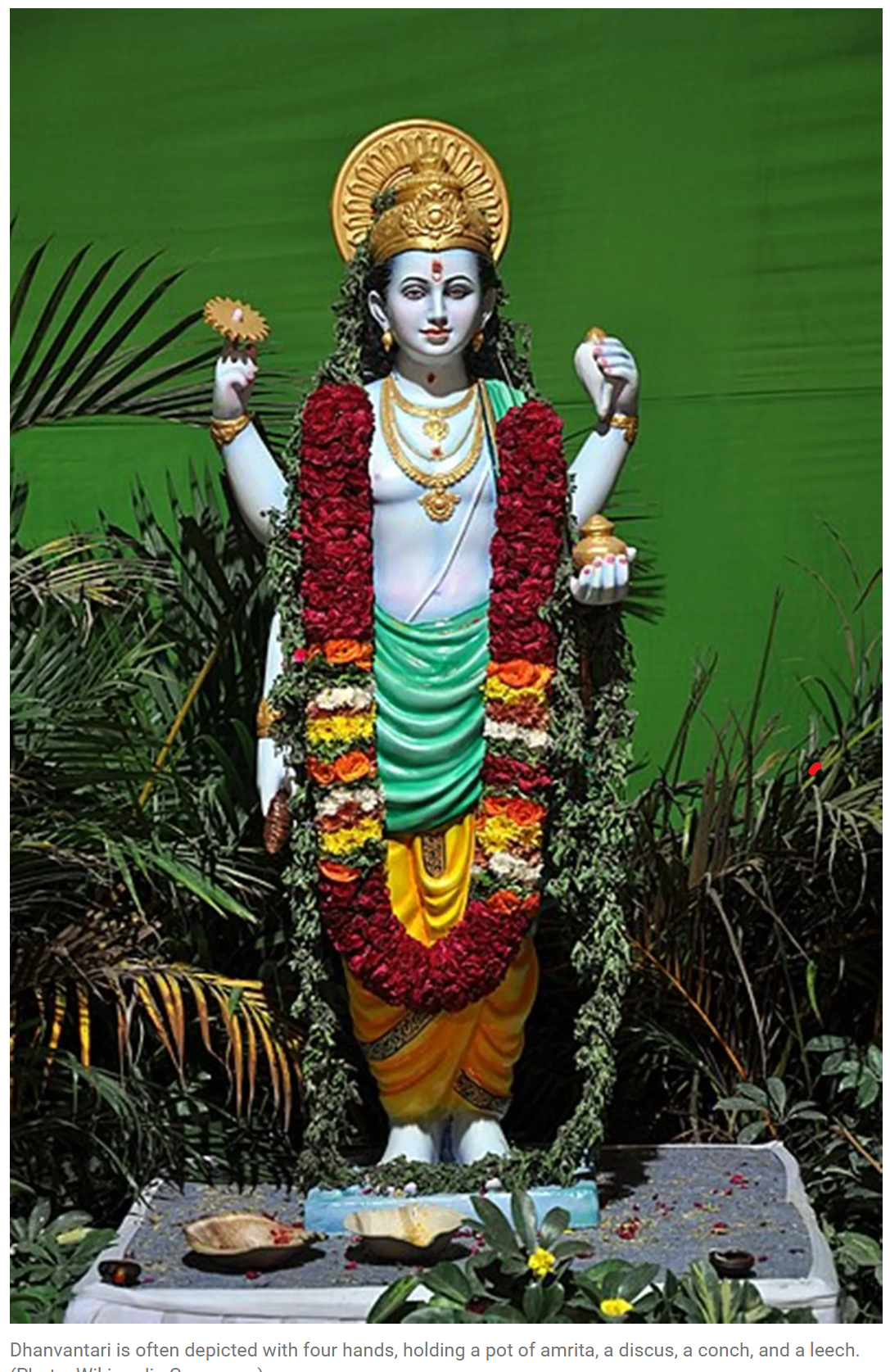
- 30 Oct 2024
In News:
Celebrated on 29th October 2024, marking the 9th Ayurveda Day, with the theme “Ayurveda Innovations for Global Health”.
- Global Participation: Over 150 countries participating, reflecting Ayurveda's growing global influence.
- Venue: Major events held at the All India Institute of Ayurveda (AIIA), New Delhi.
Key Highlights:
Significance of Ayurveda and its Global Outreach
- Ancient System: Ayurveda is one of the oldest healthcare systems, focusing on holistic well-being, rooted in Vedic traditions, and dating back over 5,000 years.
- Global Recognition: Recognized in 24 countries and Ayurveda products exported to over 100 countries.
- International Cooperation: Collaborative efforts through forums like BRICS, SCO, BIMSTEC, and WHO to integrate Ayurveda into global health policies.
Role of Dhanvantri in Ayurveda Day
- Dhanvantari Jayanti: Ayurveda Day coincides with Dhanteras, marking the birth anniversary of Lord Dhanvantri, considered the divine physician.
- Cultural & Religious Significance: Worshiped for promoting health and longevity, Dhanvantri symbolizes the healing powers of Ayurveda.
Innovations and Relevance of Ayurveda
- Research and Innovation: The theme emphasizes scientific advancements in Ayurveda to address global health challenges such as non-communicable diseases (NCDs), mental health, antimicrobial resistance (AMR), and geriatric care.
- Startup Ecosystem: Focus on fostering innovation through Ayurveda startups, particularly in the North Eastern states and across India.
Ayurveda’s Role in Addressing Global Health Issues
- Non-Communicable Diseases (NCDs): Ayurveda offers preventive and holistic treatment for diseases like diabetes, hypertension, and cardiovascular conditions.
- Mental Health: Ayurveda promotes balance in the mind, body, and spirit, with methods addressing stress, anxiety, and depression.
- Antimicrobial Resistance (AMR): Emphasizing traditional medicinal plants and natural remedies to combat resistance to antibiotics.
- Geriatric Health: Ayurveda's role in managing aging and enhancing quality of life through rejuvenation therapies.
Focus Areas for Ayurveda Innovation
- Women’s Health: Developing Ayurvedic solutions tailored for women's health issues, including reproductive health and hormonal balance.
- Workplace Wellness: Integrating Ayurveda in workplace settings to improve mental and physical health.
- School Wellness Programs: Promoting Ayurvedic practices in schools to boost immunity and overall health of children.
- Food Innovation: Modernizing Ayurvedic dietary concepts, focusing on nutritional balance and preventive health.
Government Initiatives and Digital Transformation
- Ayush Digital Platforms: Initiatives like Ayush Grid, Ayurgyan Scheme, Ayush Research Portal, and Namaste Portal are enhancing accessibility to Ayurvedic knowledge.
- WHO Integration: Ayurveda's inclusion in the WHO ICD-11 Traditional Medicine Module facilitates global standardization and recognition.
- I Support Ayurveda Campaign: A public awareness campaign aiming to garner over 250 million votes in support of Ayurveda.
Ayurvedic Education and Research
- Research Centers: Government-supported centers like the Research Centre for Innovation in Ayurveda Biology and WHO Global Traditional Medicine Centre advancing Ayurveda's global integration.
- Academic Contributions: Institutes like National Institute of Ayurveda, Institute of Teaching and Research in Ayurveda, and North Eastern Institute of Ayurveda and Homeopathy are leading innovation and education in Ayurveda.
Ayurveda and Sustainable Development Goals (SDGs)
- SDG 3 (Good Health and Well-being): Ayurveda contributes significantly to public health, with a focus on preventive care and holistic health.
- Universal Health Coverage (UHC): Ayurveda supports affordable, accessible healthcare solutions, complementing the global health agenda.
'Act4Dyslexia' Campaign
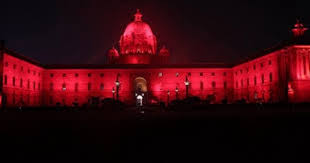
- 29 Oct 2024
In News:
- On October 27, 2024, prominent landmarks such as Rashtrapati Bhawan, Parliament House, India Gate, and the North and South Blocks in Delhi were illuminated in red to raise awareness for Dyslexia and other learning disabilities.
- Similar illuminations took place in major cities like Patna, Ranchi, Jaipur, Kohima, Shimla, and Mumbai, highlighting the importance of dyslexia awareness.
Key Highlights:
- Collaboration for Awareness:
- The campaign is organized in collaboration with UNESCO Mahatma Gandhi Institute of Education for Peace and Sustainable Development (MGIEP) and the ChangeInkk Foundation.
- Its goal is to remove stigma and foster understanding of dyslexia and other learning disabilities, which affect 20% of India’s population—around 35 million students.
- Flagging off the ‘Walk4Dyslexia’:
- The ‘Walk4Dyslexia’ event, aimed at promoting collective action for dyslexia awareness, was flagged off by Shri Rajesh Aggarwal, Secretary of the Department of Empowerment of Persons with Disabilities (DEPwD), along with Mr. Shombi Sharp, UN Resident Coordinator in India.
- The walk was organized by ChangeInkk Foundation, UNESCO MGIEP, Orkids Foundation, and Soch Foundation.
- Growth of the Campaign:
- The Act4Dyslexia campaign saw a significant expansion in 2024, with over 1,600 walks held across the country, from state capitals to villages, engaging over 4 lakh participants.
- The campaign mobilized 2 billion steps in support of dyslexia awareness, with 150+ organizations joining forces.
- Focus on Equal Rights and Opportunities:
- Dyslexia and other specific learning disabilities (SLDs) were officially recognized under the Rights of Persons with Disabilities Act, 2016. This law mandates equal educational and employment opportunities for individuals with disabilities.
- The National Education Policy (NEP) 2020 further emphasizes inclusive education, calling for early identification, teacher capacity building, and necessary support and accommodations.
- Understanding Dyslexia:
- Dyslexia is often misunderstood as a sign of being a "slow learner", but people with dyslexia often excel in areas like logical reasoning, problem-solving, and innovation.
- Notably, 40% of self-made millionaires have dyslexia, and historical figures like Albert Einstein were also dyslexic.
- Global Impact:
- The campaign aligns with the Sustainable Development Goals (SDGs), aiming to unlock the untapped potential of individuals with learning disabilities, thereby contributing to societal development at a global level.
New Disability Certificate Rules (RPwD Rules, 2024)
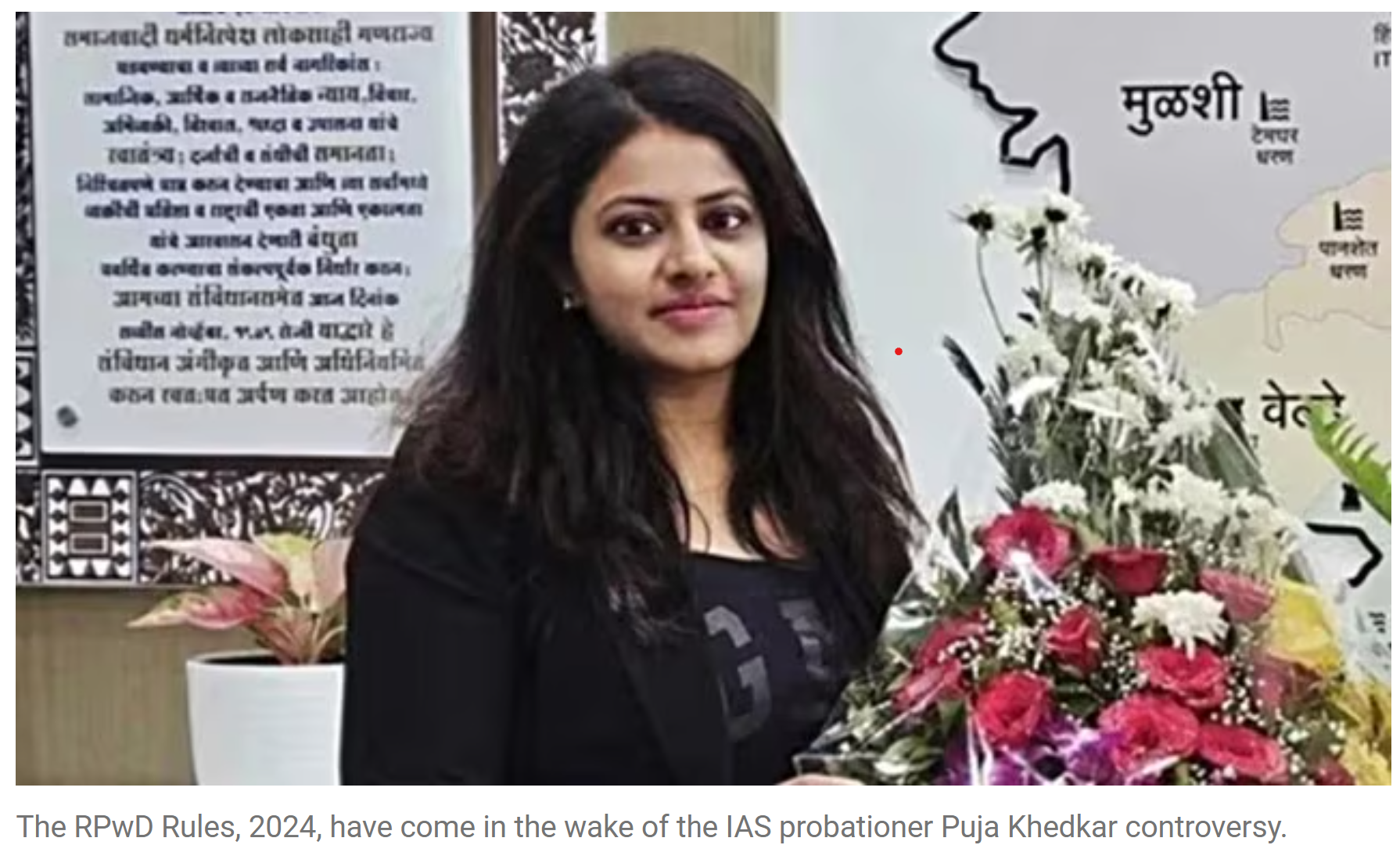
- 29 Oct 2024
In News:
- The Rights of Persons with Disabilities (RPwD) Rules, 2024, were amended by the Union Government in the wake of the Puja Khedkar controversy, where an IAS probationer was dismissed for alleged forgery in her disability and caste certificates.
- National Platform for the Rights of the Disabled (NPRD) has called for a rollback of the new rules, citing that they make the process of obtaining disability certificates more stringent and cumbersome.
Key Changes Under the New RPwD Rules, 2024
- Authority for Issuing Disability Certificates:
- Only a designated medical authority or a notified competent medical authority at the district level can issue disability certificates.
- NPRD had proposed that experts from non-profits also be authorized to carry out checks, but this suggestion was not accepted.
- Colour-Coded UDID Cards:
- The new rules introduce colour-coded UDID cards to represent levels of disability:
- White (general disability)
- Yellow (moderate disability)
- Blue (severe disability with 80% or higher).
- The new rules introduce colour-coded UDID cards to represent levels of disability:
- Mandatory Online Applications:
- Applicants are now required to apply for disability certificates online, which could be problematic for individuals who lack access to the internet, smartphones, or are digitally illiterate.
- The NPRD has urged the government to retain the option for in-person applications.
- Extended Time for Certificate Issuance:
- The new rules extend the time for issuing disability certificates from one month to three months.
- Reapplication Requirement:
- If there is no action taken on an application for two years, the applicant will have to reapply, which the NPRD considers unacceptable, as it punishes disabled individuals for system failures.
NPRD's Concerns
- Regressive and Burdensome:NPRD believes the amendments are regressive, adding more hurdles for genuine persons with disabilities to access certificates, which are crucial for identification and entitlement to services.
- Lack of Accountability:The NPRD argues that the rules do not address the systemic issues highlighted by the Puja Khedkar case, such as the lack of accountability at various levels in the certification process.
- Online Application Issues:Many people from the disabled community may struggle with technical jargon used in online applications and may not have the resources to complete the process digitally.
- Delay in Issuance:Extending the time for issuing certificates to three months could create delays for those in urgent need of certification for services or entitlements.
Mission for Integrated Development of Horticulture (MIDH)
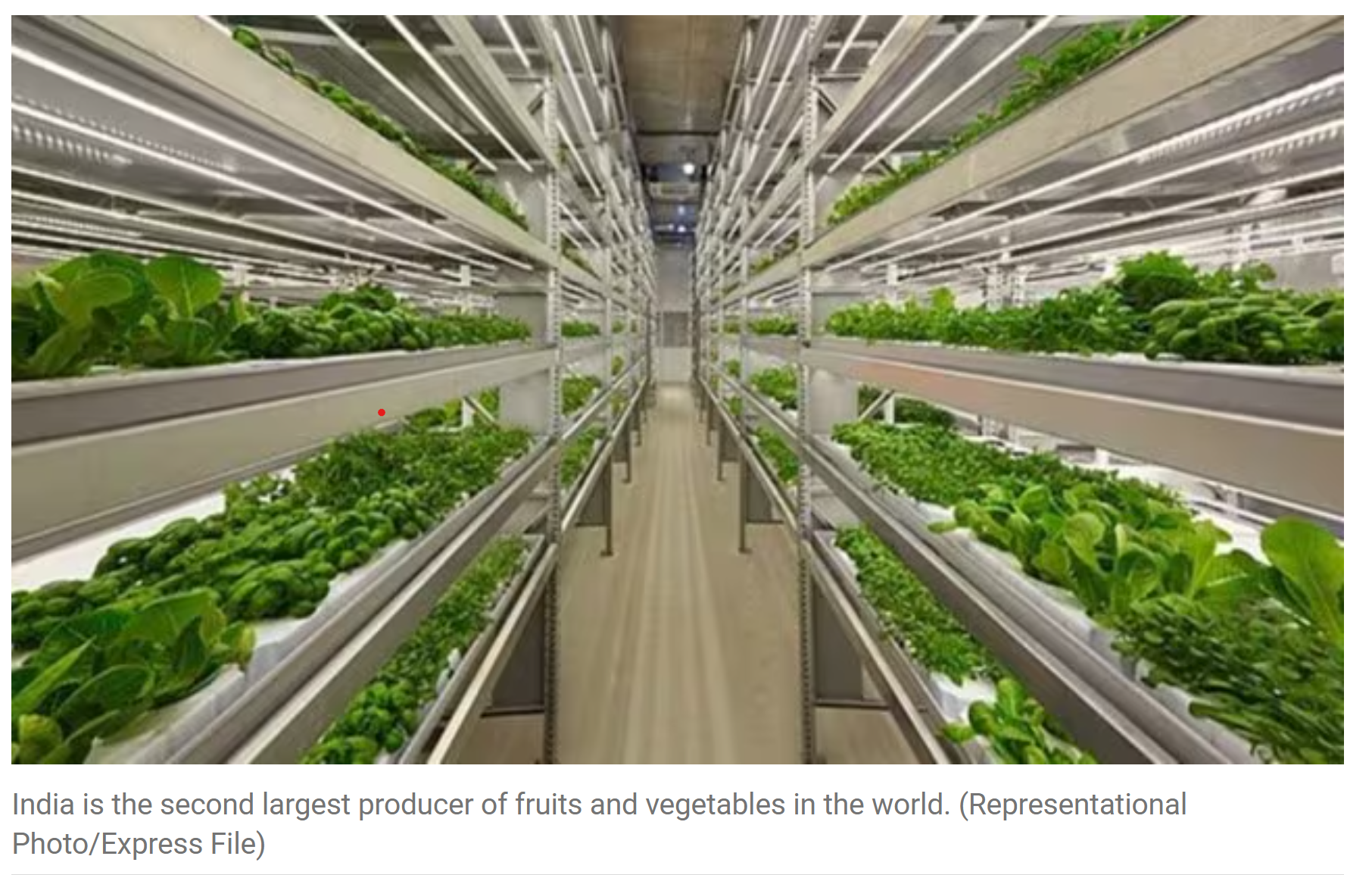
- 29 Oct 2024
In News:
- The Union Government has decided to introduce four new components under the Mission for Integrated Development of Horticulture (MIDH), aimed at promoting modern farming techniques:Hydroponics, Aquaponics, Vertical Farming&Precision Agriculture
Key Features of MIDH:
- MIDH is a Central Sponsored Scheme (CSS) aimed at the integrated development of various horticulture crops, including:
- Fruits, vegetables, root and tuber crops, mushrooms, spices, flowers, aromatic plants, coconut, cashew, cocoa, and bamboo.
- The scheme focuses on pre-production, production, post-harvest management, processing, and marketing activities.
Revision of Operational Guidelines and Cost Norms:
- The Ministry of Agriculture and Farmers' Welfare is revising the MIDH operational guidelines and cost norms, which were last updated in April 2014.
- The revised guidelines are expected to be released within one month.
- Cost norms are likely to increase by 20% compared to the existing rates, addressing concerns from various states about outdated guidelines.
Reason for Revision:
- Several states, including Odisha, have raised concerns over the old rates under MIDH. For example, Odisha’s Agriculture Minister highlighted that the state was still using 10-year-old rates.
- The Union Cabinet had already approved the rationalization of all CSS operating under the Ministry into two umbrella schemes:
- Pradhan Mantri Rashtriya Krishi Vikas Yojana (PM-RKVY)
- Krishonnati Yojana (KY)
Growth in India's Horticulture Sector:
- India’s horticulture production has significantly increased in recent years:
- Total production reached 334.60 million metric tonnes in 2020-21, up from 240.53 million metric tonnes in 2010-11.
- India is now the second largest producer of fruits and vegetables globally, surpassing food grain production.
- MIDH Annual Budget:The annual allocation for MIDH in the current financial year (2024-25) is ?2,000 crore.
Greenhouse Gas Levels Hit Record High in 2023: World Meteorological Organization (WMO)
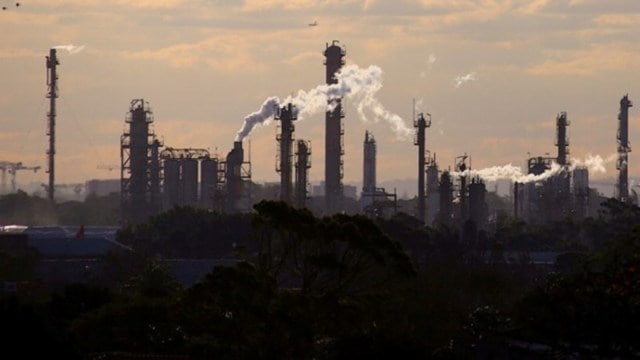
- 29 Oct 2024
In News:
According to the WMO, the last time the earth had a similar CO2 concentration was 3-5 million years ago, when temperatures were 2-3°C higher and sea levels were 10-20 metres higher than they are now
Key Highlights:
- Record High Greenhouse Gas (GHG) Levels:
- In 2023, annual mean carbon dioxide (CO2) levels rose by 2.3 parts per million (ppm), reaching a new record of 420 ppm.
- This marks the 12th consecutive year with an increase of over 2 ppm in CO2 levels.
- Historical Context:
- CO2 levels not seen in 3-5 million years, when temperatures were 2-3°C higher, and sea levels were 10-20 meters higher than they are today.
- Key GHGs at Record Highs:
- The globally averaged surface concentrations of CO2, methane, and nitrous oxide all reached new highs in 2023.
- Contributors to the Increase in CO2:
- Natural Variability: Natural factors such as large vegetation fires and reduced carbon absorption by forests contributed to higher CO2 levels.
- Human Activity: High fossil fuel emissions from human and industrial activities also played a major role.
- El Niño Phenomenon: The El Niño event led to higher temperatures and drier conditions, exacerbating the rise in GHG levels through increased wildfires and reduced carbon absorption by land sinks.
- Climate Feedback Loop Concerns:
- The WMO warned of a vicious cycle:
- Climate change could cause ecosystems to become larger sources of GHGs.
- Wildfires could release more carbon, and warmer oceans may absorb less CO2, leading to more CO2 remaining in the atmosphere, accelerating global warming.
- The WMO warned of a vicious cycle:
- Radiative Forcing:
- Radiative forcing (the warming effect on climate) from long-lived GHGs has increased by 51.5% from 1990 to 2023, with CO2 contributing 81% of this increase.
- Methane Concerns:
- Methane saw its largest three-year increase between 2020 and 2022.
- This increase was linked to warmer temperatures and wetter land conditions during the 2020-2022 La Niña conditions, which caused an uptick in methane emissions from natural wetlands.
- Long-Term Impact of CO2:
- Given CO2's long atmospheric lifetime, even with rapid emissions reductions, the warming effect will persist for several decades.
C-295 Aircraft
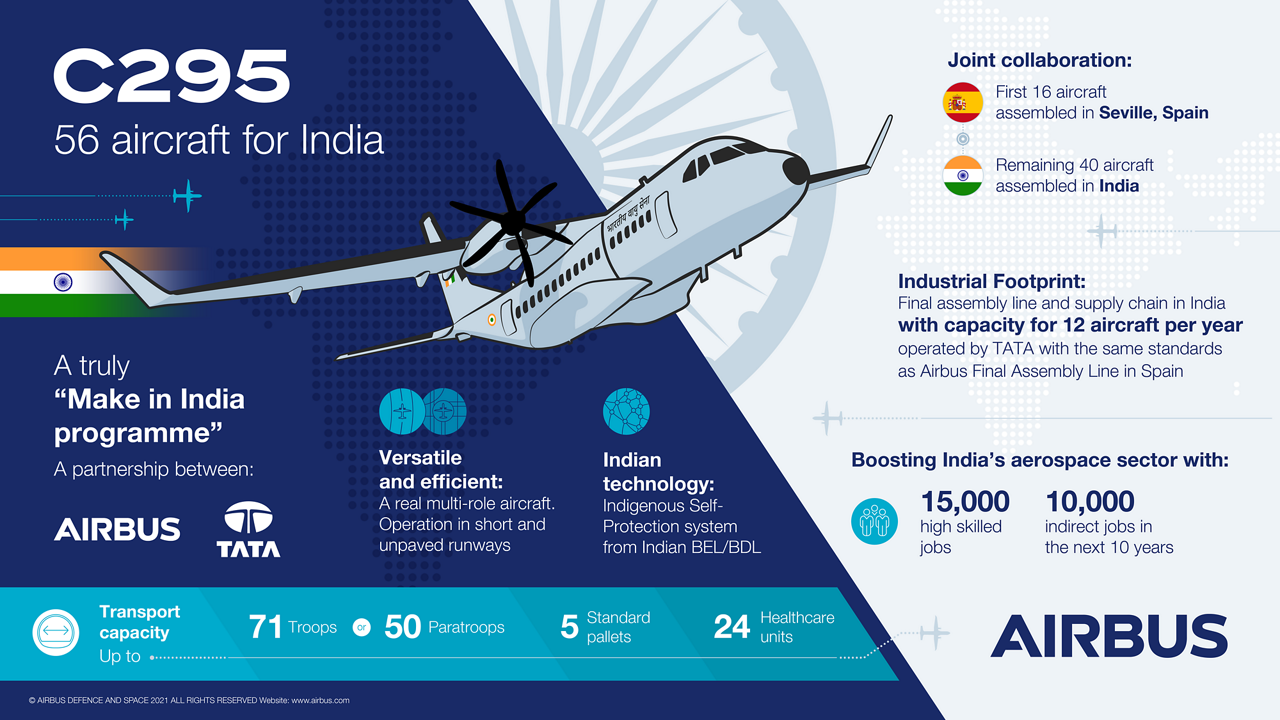
- 29 Oct 2024
In News:
- Recently, PM Narendra Modi inaugurated the Final Assembly Line (FAL) plant in Vadodara, Gujarat, for the manufacturing of the C-295 aircraft.
- The plant is a joint venture between Tata Advanced Systems Ltd (TASL) and Airbus.
- This is the first private sector final assembly line for military aircraft in India.
Key Details:
- Manufacturing Timeline
- Contract: In September 2021, India signed a ?21,935 crore deal with Airbus Defence and Space to procure 56 C-295 aircraft to replace the IAF’s ageing Avro-748 fleet.
- Production Plan:
- The first 16 aircraft will be delivered from Airbus’s plant in Seville, Spain, between September 2023 and August 2025.
- The remaining 40 aircraft will be produced in India by TASL, with the first “Made-in-India” C-295 rolling out in September 2026.
- The entire fleet (56 aircraft) is expected to be delivered by August 2031.
- Key Features and Specifications
- Type: Tactical transport aircraft with a capacity of 5 to 10 tonnes.
- Maximum Speed: 480 km/h.
- Cabin Dimensions: 12.7 meters (41 feet 8 inches), the longest unobstructed cabin in its class.
- Passenger Capacity: Can accommodate up to 71 seats.
- Cargo Handling: Rear ramp door for quick loading/unloading and para-dropping.
- Short Take-off and Landing (STOL): Capable of operating from airstrips as short as 2,200 feet.
- Significance for the Indian Air Force (IAF)
- The C-295 will enhance the medium-lift tactical capability of the IAF.
- It will replace the ageing Soviet-origin AN-32 aircraft, which are nearing the end of their operational life.
- The C-295 will bridge the capability gap in troop and cargo transport over short and medium distances.
- Indigenous Content
- Indigenous Electronic Warfare Suite: All 56 aircraft will be equipped with an indigenous electronic warfare suite, developed by Bharat Electronics Ltd (BEL) and Bharat Dynamics Limited (BDL).
- Made-in-India Components: 96% of the work that Airbus does in Spain will be done at the Vadodara plant, making it one of the highest-ever indigenous contributions for an aircraft in India.
- Global Operations of the C-295
- The C-295 is operational in various challenging terrains worldwide, including:
- Brazilian jungles, Colombian mountains (South America)
- Deserts of Algeria and Jordan (Middle East)
- Cold climates of Poland and Finland (Europe)
- Military operations in Chad, Iraq, and Afghanistan.
- The C-295 is operational in various challenging terrains worldwide, including:
- Roles and Capabilities
- Tactical Transport: Can transport troops and supplies from main airfields to forward operating airfields.
- Short Take-off and Landing (STOL): Capable of operating from short, unprepared airstrips.
- Low-level Operations: Can conduct low-speed, low-level missions at 110 knots.
- Other Missions: Suitable for casualty evacuation, special missions, disaster relief, and maritime patrol.
ISRO’s First Electric Propulsion-Led Spacecraft (TDS-1)
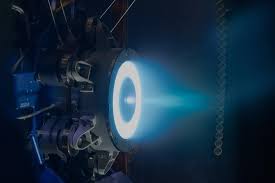
- 28 Oct 2024
In News:
India's first home-grown electric propulsion satellite to be launched in Dec.
Key Highlights:
- Objective of TDS-1:
- Purpose: To demonstrate electric propulsion technology for satellite steering, using solar-powered ionized gas.
- Goal: Reduce reliance on chemical fuel, making satellites lighter and more efficient.
- Key Benefits of Electric Propulsion:
- Weight Reduction: The technology can significantly cut down satellite mass. For example, a satellite weighing 4 tonnes could be reduced to around 2 tonnes.
- Fuel Efficiency: By using electric propulsion, the need for chemical fuel is minimized, allowing for a more efficient journey to geostationary orbit.
- Technology Details:
- Fuel Used: Gases like Argon are ionized using solar power to create propulsion.
- Process: The ionized gas is expelled at high speeds to generate thrust, pushing the satellite towards its desired orbit.
- Historical Context:
- The technology was first used in GSAT-9 (South Asia Satellite) in 2017 but with imported Russian components.
- TDS-1 marks the first fully indigenous development of electric propulsion technology by ISRO, highlighting India’s increasing space autonomy.
- Significance for India’s Space Program:
- Self-Reliance: TDS-1 reflects ISRO’s growing capacity to develop advanced space technologies domestically.
- Future Prospects: This breakthrough is expected to lead to more efficient satellite designs, enhancing India’s competitiveness in the global space industry.
Emissions Gap Report 2024
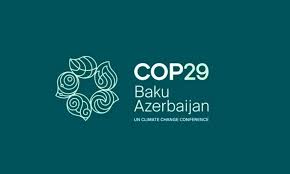
- 28 Oct 2024
In News:
The United Nations Environment Programme (UNEP) recently published the Emissions Gap Report 2024, in anticipation of the COP29 meeting of the UNFCCC to be held in Baku, Azerbaijan.
Key Highlights:
- Current Trajectory of Global Warming:
- If countries continue with current environmental policies, global temperatures are expected to rise by 3.1°C above pre-industrial levels.
- This is significantly higher than the Paris Agreement target of limiting global warming to well below 2°C, with an effort to cap it at 1.5°C.
- Paris Agreement at Risk:
- Even if all Nationally Determined Contributions (NDCs) are fully implemented (including both unconditional and conditional emissions reduction targets), the world would still experience 2.6°C of warming by 2030.
- This presents a major challenge to achieving the Paris Agreement’s climate goals.
- Urgent Need for Action:
- To limit global warming to 1.5°C, greenhouse gas emissions must peak before 2025 and decline by 43% by 2030.
- The report highlights the emission gap between current pledges and what is required to meet the 1.5°C goal.
- Record High Emissions:
- Global greenhouse gas emissions hit a record 57.1 gigatons of CO? equivalent in 2023.
- This represents an increase of 1.3% compared to 2022, continuing the upward trend from the previous decade.
- India’s Emissions:
- India’s greenhouse gas emissions grew by 6.1% between 2022 and 2023.
- Per capita emissions in India were 2.9 tCO?e in 2022, significantly lower than China (11 tCO?e) and the U.S. (18 tCO?e).
- G20 Countries’ Contribution:
- G20 countries, excluding the African Union, contributed 77% of global emissions in 2023.
- The six largest emitters (including China, U.S., and India) were responsible for 63% of global emissions.
- This shows a significant imbalance in emissions, with developed countries having much higher per capita emissions compared to developing nations like India and Africa.
- Necessary Emissions Cuts:
- To keep the 1.5°C target within reach, global emissions need to be cut by at least 7.5% annually until 2035.
- Cost of bridging the emissions gap: Achieving net-zero by 2050 will require USD 900 billion to USD 2.1 trillion annually, approximately 1% of global GDP.
- Emission Reduction Pathways:
- Renewable Energy: Scaling up solar and wind energy technologies could contribute up to 27% of the required emissions reductions by 2030.
- Forest Conservation: Protecting and restoring forests could provide 20% of the required emissions reductions by 2030.
- Other crucial measures include improving energy efficiency, transitioning to electric vehicles, and focusing on fuel switching in key sectors like transport, industry, and buildings.
- Disparities in Emissions:
- Despite changes over the past two decades, large disparities remain between emissions across regions.
- Developed countries have three times higher per capita emissions compared to the global average, while India, the African Union, and least developed countries continue to have much lower emissions.
- Call to Action:
- UNEP Executive Director Inger Andersen urged countries to act now, stating: “No more hot air, please.” The urgency is to ramp up climate pledges and ensure stronger actions in the upcoming COP29 talks in Baku, Azerbaijan (November 2024), where nations must work to get on a 1.5°C pathway.
United Nations Environment Programme (UNEP)
- Established: 1972, following the United Nations Conference on the Human Environment in Stockholm.
- Headquarters: Nairobi, Kenya.
- Governing Body: The United Nations Environment Assembly (UNEA), which is the world’s highest-level decision-making body on environmental matters, with 193 Member States.
- Programs & Initiatives: UNEP leads global efforts on climate action, ecosystem restoration, clean seas, and supports the Sustainable Development Goals (SDGs).
- Reports: UNEP publishes crucial assessments like the Emissions Gap Report, Global Environment Outlook, and Adaptation Gap Report, influencing global environmental policies.
Hong Kong Discovers Dinosaur Fossils
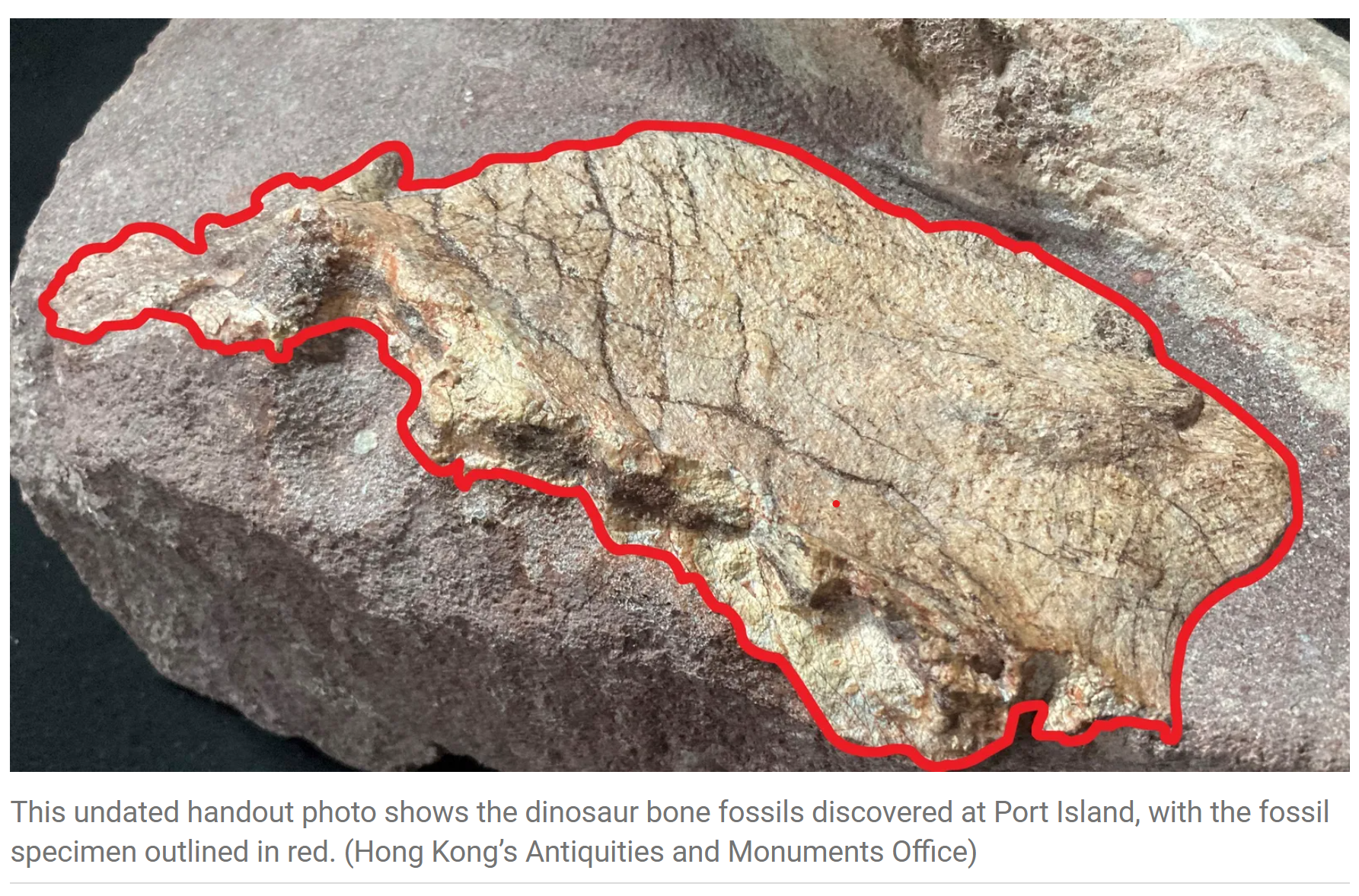
- 28 Oct 2024
In News:
Hong Kong discovers dinosaur fossils for the first time
Key Details:
-
- Significance: This marks the first-ever discovery of dinosaur fossils in Hong Kong.
- Time Period:The fossils date back to the Cretaceous Period, approximately 145 million to 66 million years ago.
- Fossil Details:The fossils belong to a large dinosaur, but further studies are required to determine the exact species.Initial analysis suggests the dinosaur may have been buried by sand and gravel after death, later being washed to the surface by a flood before being buried again.
- Site and Protection:Port Island, part of a geopark, is closed to the public to facilitate ongoing fossil investigations and excavation work.
- Geological and Archaeological Importance:The discovery underscores the significance of Hong Kong's geoparks and its role in preserving and showcasing natural history.This finding contributes to global understanding of prehistoric life, especially in the Cretaceous period.
2024 Global Nature Conservation Index (NCI)
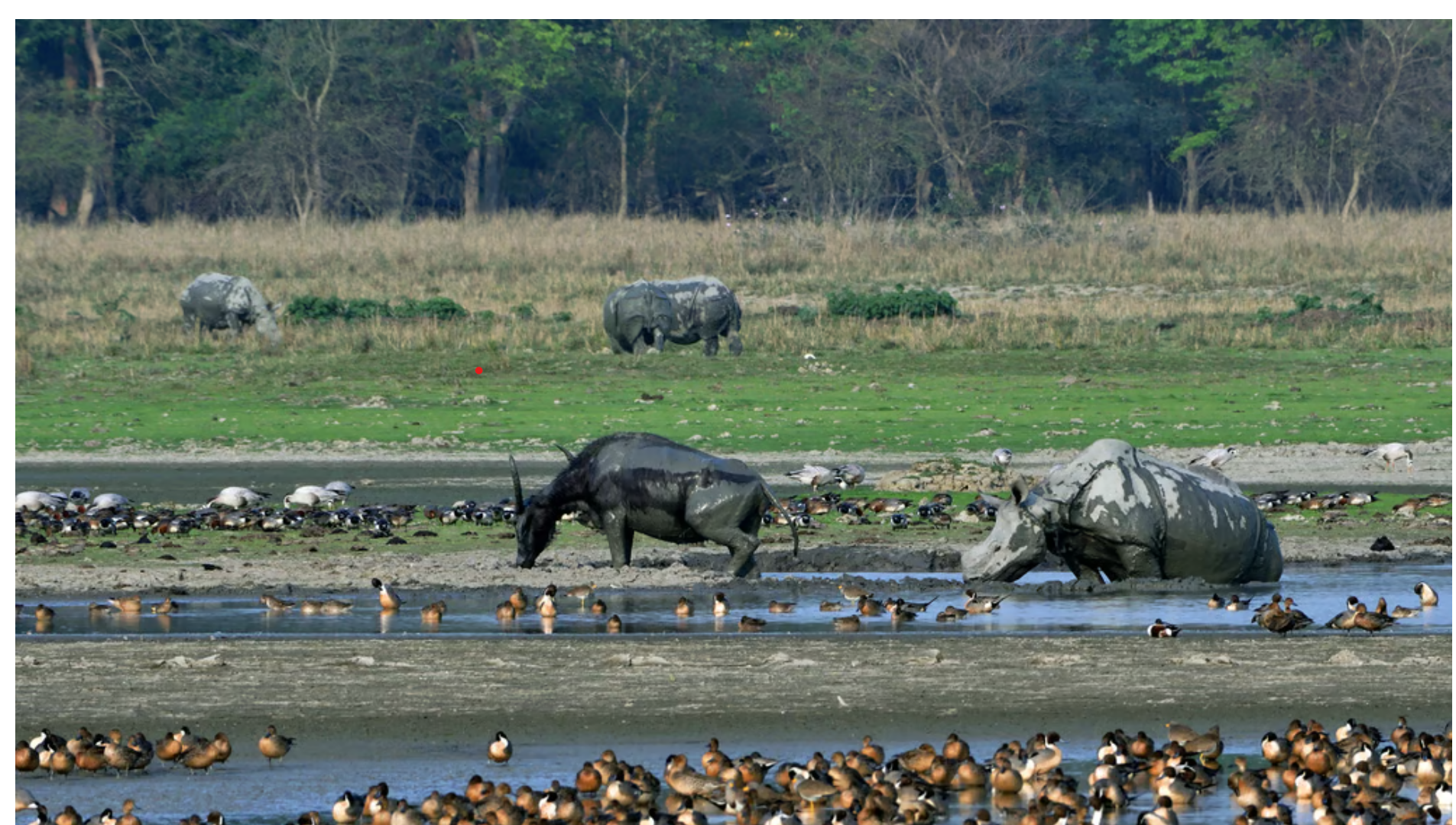
- 28 Oct 2024
In News:
India with an abysmal score of 45.5 (out of 100) has been ranked 176th in the Global Nature Conservation Index, 2024.
India's Ranking and Score:
- Rank: India ranks 176th out of 180 countries.
- Score: 45.5 out of 100.
- Context: India is listed among the five "worst performers," alongside Kiribati (180), Turkey (179), Iraq (178), and Micronesia (177).
Key Factors Affecting India’s Ranking:
- Inefficient Land Management: The main contributing factor to India's low ranking.
- Threats to Biodiversity: Rising threats due to habitat loss, deforestation, climate change, and pollution.
- Deforestation: Between 2001 and 2019, India lost 23,300 sq. km of tree cover, exacerbating biodiversity loss.
Focus Areas of the Nature Conservation Index (NCI):
- Land Management: Inefficient land use practices, with 53% of land converted for urban, industrial, and agricultural purposes.
- Biodiversity Threats: Habitat loss, fragmentation, and declining populations of marine and terrestrial species.
- Governance and Capacity: Challenges in enforcement of laws and governance structures that support conservation.
- Future Trends: India faces both opportunities and challenges, given its high population density and rapid development.
Key Findings:
- Land Conversion and Urbanization: High rates of land conversion (53%) for development purposes, contributing to habitat loss.
- Soil Pollution: Issues with pesticide use and soil pollution (low nitrogen index of 0.77), affecting soil health.
- Marine Conservation: Only 0.2% of national waterways and none within the Exclusive Economic Zone (EEZ) are protected.
- Deforestation Impact: Loss of 23,300 sq. km of forest between 2001-2019.
- Biodiversity Decline: Despite 40% of marine species and 65% of terrestrial species in protected areas, biodiversity continues to decline—67.5% of marine species and 46.9% of terrestrial species face population decreases.
Marine and Terrestrial Conservation:
- Marine Areas: Need for greater investment in marine conservation, as India's marine protected areas (MPAs) are limited.
- Protected Areas: While 7.5% of India’s terrestrial area is protected, significant threats like climate change and habitat fragmentation persist.
Biodiversity and Climate Change:
- Climate Change Risks: Impacts on vulnerable ecosystems, including coral reefs and alpine regions, further threaten biodiversity.
- Population Growth: India’s rapidly growing population (one of the highest in the world) places constant pressure on natural resources and ecosystems.
Illegal Wildlife Trade:
- Global Ranking: India is the fourth-largest illegal wildlife trader globally, with an annual trade worth approximately £15 billion.
- Call for Action: Stronger enforcement of wildlife protection laws and international cooperation are crucial to combat illegal wildlife trade.
SDGs and India’s Conservation Challenges:
- SDG 14 (Life Below Water) and SDG 15 (Life on Land): India faces significant challenges in meeting these Sustainable Development Goals, particularly in protecting marine life and terrestrial ecosystems.
Recommendations for Improvement:
- Stronger Political Will: Political commitment is essential for passing laws that promote sustainable development and biodiversity conservation.
- Enforcement and Funding: Increased funding for environmental initiatives and better enforcement of conservation policies are necessary to address the conservation challenges.
- Sustainable Development: Integrating sustainable land use practices and improving governance structures for conservation are key areas for focus.
New Space Missions and Developments
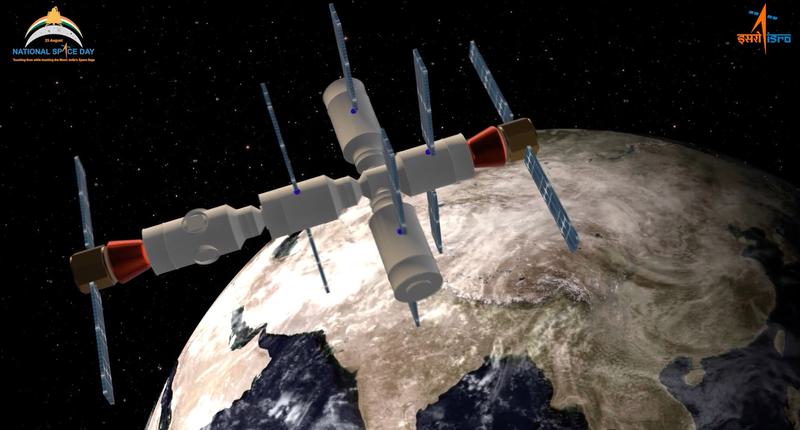
- 28 Oct 2024
In News:
The Space Commission also approved a joint moon mission with Japan called the Lunar Polar Exploration Mission. For LUPEX, ISRO is developing a different moon lander than the one it used for Chandrayaan-3
New Space Missions and Developments
- Chandrayaan-4 (Moon Mission):
- Type: Sample-return mission.
- Launch: Expected by 2027.
- Cost: ?2,104 crore.
- Objective: Sample collection of moon soil and rock to return to Earth.
- Mission Details: Two LVM-3 launch vehicles will launch components that will dock in Earth orbit before heading to the moon. The samples will be sent back using a bespoke canister.
- Lunar Polar Exploration Mission (LUPEX):
- Collaboration: Joint mission with Japan.
- Objective: Exploration of lunar poles with a new lander design, intended for potential crewed missions in future.
- Venus Orbiter Mission:
- Launch Window: March 2028.
- Cost: ?1,236 crore.
- Objective: Study Venus' surface and atmosphere to understand planetary evolution in the Solar System.
- Next Generation Launch Vehicle (NGLV):
- Development Budget: ?8,240 crore for first three development flights.
- Objective: A new launcher developed with private sector collaboration for future space missions.
Cabinet Approvals for Space Initiatives
- Human Spaceflight Programme (Gaganyaan):
- Four new missions under Gaganyaan, including an uncrewed Gaganyaan flight.
- Focus on developing technologies for India’s first space station, Bharatiya Antariksh Station (BAS), planned by 2028.
- Space-Based Surveillance (SBS) Missions:
- Phase 3: Approval for building 21 ISRO satellites, with 31 additional satellites by private companies.
- Total Cost: ?26,968 crore.
- Development of a Third Launch Pad:
- To support the NGLV and additional space missions at Sriharikota.
Upcoming Satellite Missions
- NISAR (NASA-ISRO Synthetic Aperture Radar):
- Launch: Early 2025 on a GSAT launch vehicle.
- Purpose: Earth observation using advanced radar technology.
- Issue: Protective coating added due to high temperatures during testing.
- Proba-3 (European Space Agency):
- Launch: November 29, 2024, aboard PSLV-XL.
- Objective: Study the Sun’s corona using two satellites in formation, mimicking an eclipse to capture unique solar data.
Private Sector Involvement
- Manastu Space & Dhruva Space:
- Collaboration: Testing green propulsion technology for the LEAP-3 mission.
- Technology: Hydrogen-peroxide-based green propulsion system.
- Launch: LEAP-3 mission in 2025.
- Bellatrix Aerospace:
- Project: Prototype satellite for ultra-low earth orbit at 200 km altitude.
- Ananth Technologies:
- Achievement: First private company to assemble, integrate, and test Space Docking Experiment (SpaDEx) satellites for ISRO.
Space Science and Research Updates
- Chandrayaan-3:
- Findings: The crater where Chandrayaan-3 landed is older than the South Pole-Aitken Basin (4.2-4.3 billion years old).
- Data Source: Optical High-Resolution Camera (Chandrayaan-2) and Pragyaan rover (Chandrayaan-3).
- Astrosat (India’s First Space Observatory):
- Mission Life: Expected to last two more years (originally planned for 5 years).
- Significance: Contributed to over 400 published papers based on multi-wavelength space observatory data.
ISRO-DBT Agreement for Biotechnology Experiments in Space
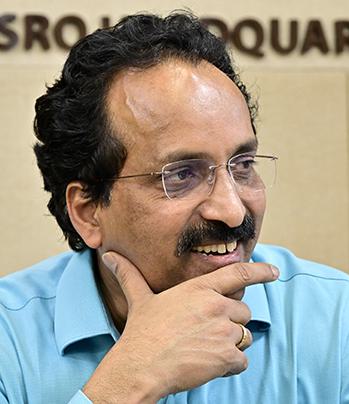
- 27 Oct 2024
In News:
- The Indian Space Research Organisation (ISRO) and the Department of Biotechnology (DBT) have signed an agreement to conduct biotechnology experiments on the upcoming Bharatiya Antariksh Station (BAS).
- Timeline for BAS:
- The BAS is expected to be operational from 2028-2035, with the initial module launches slated for 2028 and full expansion by 2035.
- It will be located at an altitude of 400 km above Earth and will support 15–20-day missions in space.
Focus Areas of Research
- Health Impact:
- Weightlessness & Muscle Health: Studying the effects of zero-gravity on muscle loss during space missions.
- Radiation Effects: Investigating how space radiation impacts astronaut health over long durations.
- Bio-Manufacturing:
- Algae Studies: Exploring algae for potential use in nutrient-rich, long-lasting food sources and biofuel production.
- Food Preservation: Identifying algae varieties that can help preserve food for longer periods in space.
- Integration with Gaganyaan Mission:
- Experiments may also be conducted during uncrewed test flights for the Gaganyaan mission (India’s first crewed mission to space, scheduled for 2025-2026).
BioE3 (Biotechnology for Economy, Environment and Employment) Policy
- Objective: The BioE3 policy aims to boost bio-manufacturing in India, which is projected to contribute $300 billion to the Indian economy by 2030.
- Key Focus Areas:
- High-Value Bio-Based Products: Promotes the development of bio-based chemicals, biopolymers, enzymes, and smart proteins.
- Climate-Resilient Agriculture & Carbon Capture: Aims to strengthen agricultural practices to withstand climate change and promote carbon capture technologies.
- Healthcare & Nutrition: Focuses on advancements in biotherapeutics, functional foods, and regenerative medicine.
- Marine & Space Biotechnology: Encourages research in space and marine biotechnology for new applications.
- Innovation & Entrepreneurship: Supports R&D-driven entrepreneurship through the establishment of bio-manufacturing hubs, bio-AI centers, and biofoundries.
- Employment Growth: Aims to create skilled jobs in the growing bioeconomy, promoting green growth and sustainable industries.
Bharatiya Antariksh Station (BAS) Overview
- Structure: The station will consist of:
- Command Module
- Habitat Module
- Propulsion Systems
- Docking Ports
- Objective: To support long-term research in space life sciences and bio-manufacturing, with a focus on human health, food sustainability, and biotechnology innovations.
21st Livestock Census
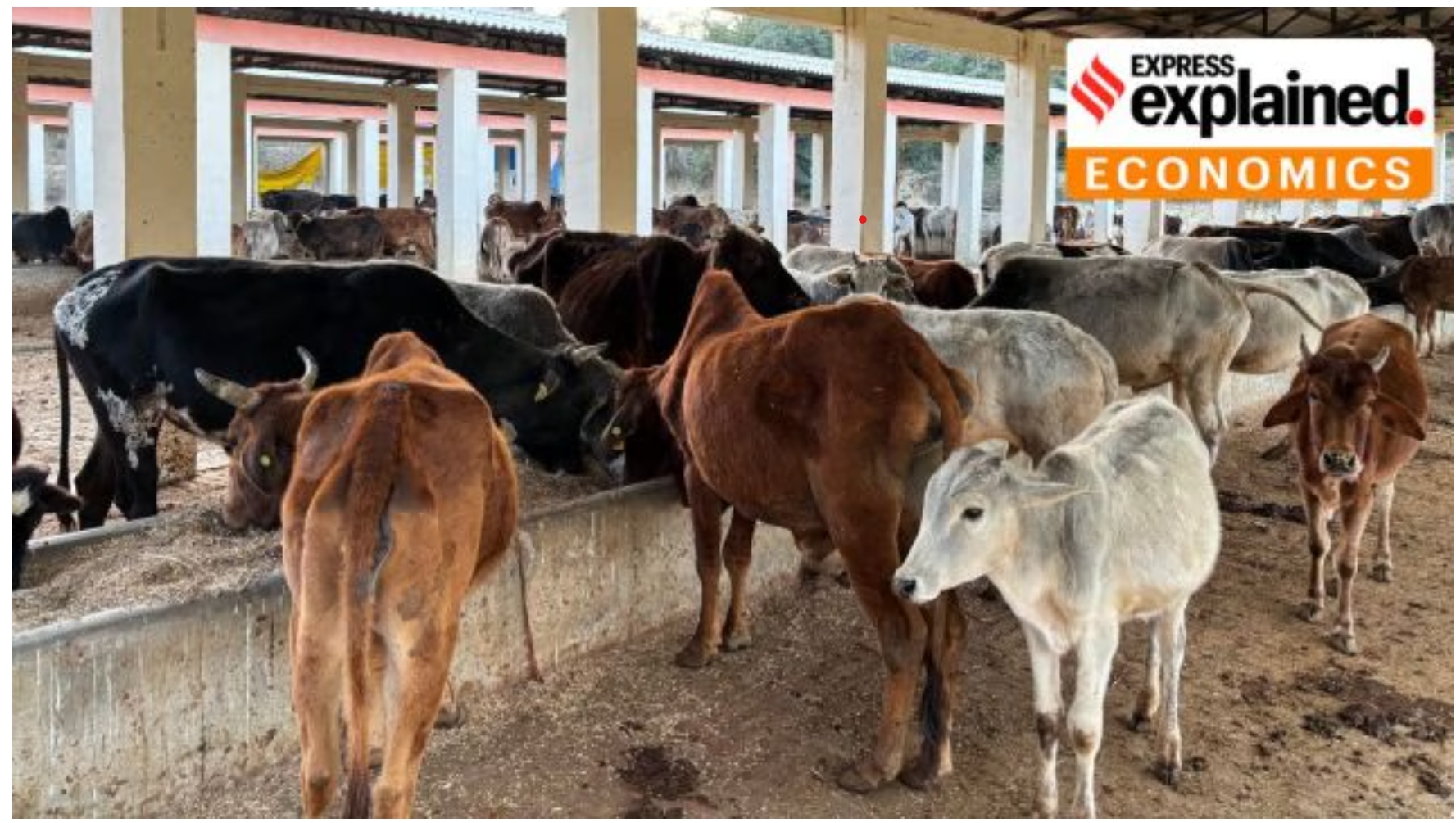
- 27 Oct 2024
In News:
The Livestock Census is a crucial tool for understanding the current status of India’s livestock sector and its contribution to the economy and society.
What is the Livestock Census?
- The Livestock Census is a nationwide survey conducted every five years to assess the number, species, breed, age, sex, and ownership status of domesticated animals and poultry, including stray animals.
- Purpose: It helps in collecting comprehensive data about the livestock population and their role in the economy and society.
- First Census: The first livestock census was conducted in 1919, and this is the 21st edition.
- Next Census: The 21st Livestock Census will be conducted between October 2024 and February 2025 by approximately 87,000 enumerators across 30 crore households in India.
Animals Covered in the Census
- The census will account for 16 species of animals, including:
- Cattle, Buffalo, Mithun, Yak, Sheep, Goat, Pig, Camel, Horse, Ponies, Mule, Donkey
- Dog, Rabbit, Elephant
- Poultry: Fowl, Chicken, Duck, Turkey, Geese, Quail, Ostrich, and Emu
- The census will also collect data on 219 indigenous breeds of these species recognized by the ICAR-National Bureau of Animal Genetic Resources (NBAGR).
Objectives of the Livestock Census
- Economic Contribution: The livestock sector contributes approximately:
- 30% of the Gross Value Added (GVA) of the agricultural sector
- 4.7% of India's overall GVA
- It plays a crucial role in rural employment, particularly in poultry and animal husbandry.
- Policy Formulation and Planning:
- The data from the census is critical for formulating and implementing policies related to livestock, ensuring sustainable growth in the sector.
- It helps in monitoring and estimating GVA from livestock.
- Sustainable Development Goals (SDGs):
- Provides vital data for tracking the progress towards Goal 2 of SDGs (Zero Hunger) and Target 2.5, which focuses on maintaining genetic diversity in livestock, particularly addressing local breeds at risk of extinction (Indicator 2.5.2).
- Sectoral Monitoring:
- The census helps in monitoring the performance and health of India’s livestock sector, which is vital for ensuring food security, rural livelihoods, and economic growth.
Key Features of the 21st Livestock Census
- Digitization:
- Like the 2019 Census, this year’s census will be fully digitized, with data collected via a mobile application.
- Digital Monitoring: A dashboard will monitor progress at various levels, and the latitude and longitude of the data collection locations will be recorded.
- A software-based livestock census report will be generated to streamline analysis.
- New Data Points:
- For the first time, data on pastoral animals and pastoralists will be collected, focusing on their socio-economic status and livestock holdings.
- Granular Data: The census will gather information on:
- Proportions of households that rely on livestock for major income.
- Gender-based data on stray cattle.
- Extended Scope:
- In addition to animal population statistics, the census will also focus on the socio-economic contributions of the livestock sector, gender inclusion, and employment.
Significance of the Livestock Census
- A Comprehensive Livestock Profile:
- Provides a holistic view of livestock population and the interlinkages between animal husbandry, agriculture, and rural economies.
- Assists in the management and preservation of indigenous animal breeds.
- Informed Decision-Making:
- Helps policymakers, researchers, and development organizations in formulating strategies for sectoral growth, genetic diversity preservation, and livelihood enhancement for rural communities.
- Monitoring Livestock Health:
- The census helps in tracking the health and sustainability of India’s livestock population, which is essential for ensuring food security and preventing animal diseases.
Findings of the 2019 Livestock Census
- Total Livestock Population: 535.78 million
- Cattle: 192.9 million
- Goats: 148.88 million
- Buffaloes: 109.85 million
- Sheep: 74.26 million
- Pigs: 9.06 million
- Other species contributed a small fraction to the total livestock population (0.23%).
Launch of 'Abhay'
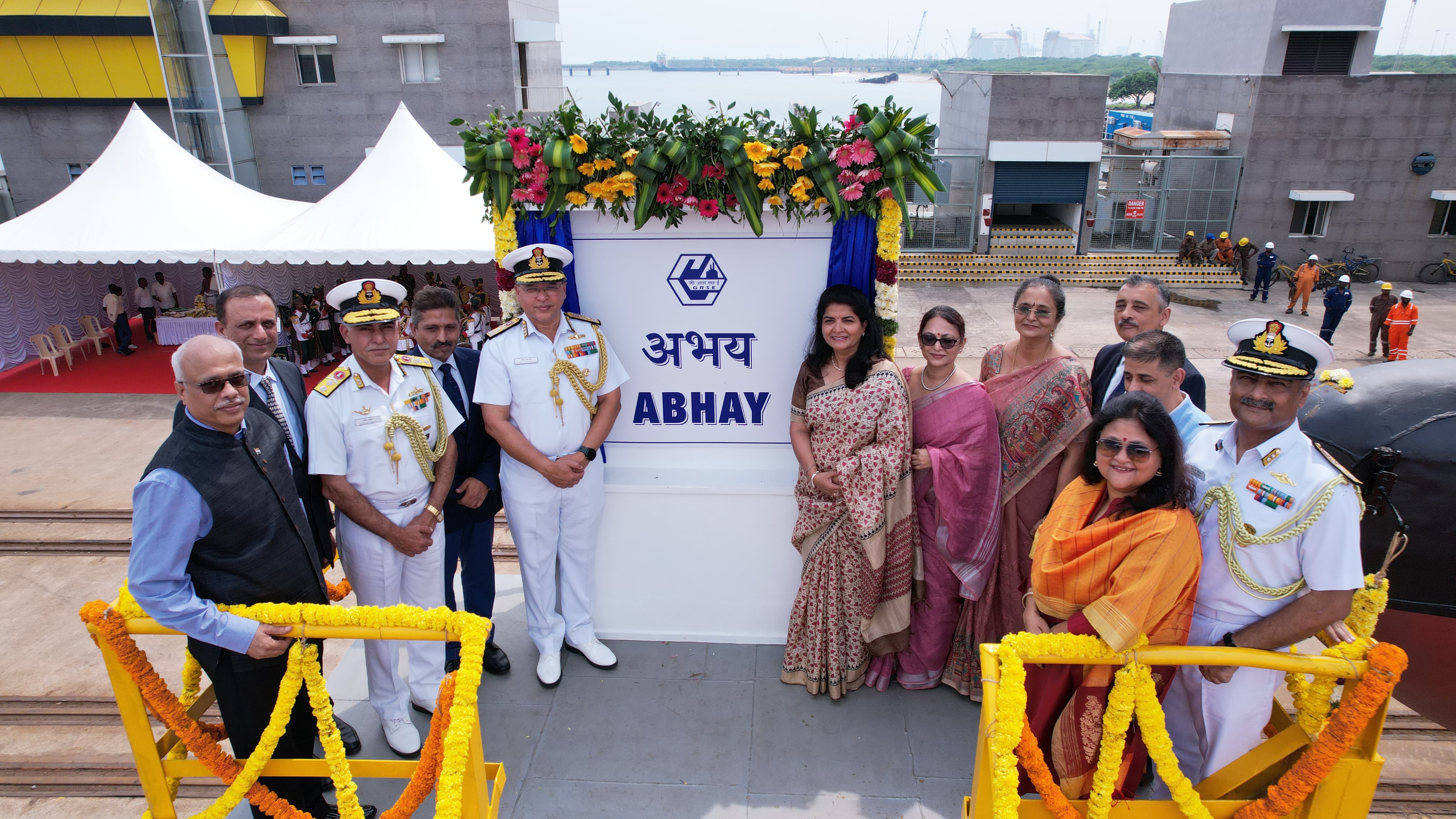
- 27 Oct 2024
In News:
Recently, ‘Abhay’, the seventh ship in the Anti-Submarine Warfare Shallow Water Craft (ASW SWC) series was launched.
Key Details:
Project Background
- Contract Details: The Ministry of Defence (MoD) signed a contract with Garden Reach Shipbuilders & Engineers (GRSE), Kolkata, in April 2019 for the construction of eight ASW SWC ships.
- Class of Ships: The Arnala-class ships are intended to replace the older Abhay-class ASW Corvettes currently in service with the Indian Navy.
- Purpose: These ships are designed for anti-submarine warfare (ASW) operations in coastal waters and to conduct Low-Intensity Maritime Operations (LIMO) and mine-laying activities.
Design and Features of 'Abhay'
- Dimensions:
- Length: 77 meters
- Width: 10 meters
- Speed and Endurance:
- Maximum speed: 25 knots
- Endurance: 1800 nautical miles (NM).
- Propulsion: Waterjet-propelled, offering agility and swift response in tactical situations.
- Indigenous Content: Over 80% indigenous content, supporting India’s Aatmanirbhar Bharat (self-reliant India) initiative in defence manufacturing.
Capabilities of the ASW SWC
- Anti-Submarine Warfare:
- Designed to conduct subsurface surveillance and anti-submarine operations in coastal waters.
- Equipped with advanced sonar systems, including Hull-Mounted Sonar and Low-Frequency Variable Depth Sonar for enhanced underwater surveillance.
- Armament and Equipment:
- Torpedoes and ASW rockets for anti-submarine operations.
- Mines for mine-laying operations.
- Close-in Weapon System (CIWS): 30 mm for close-range defence against aerial and surface threats.
- 12.7 mm Stabilized Remote-Control Guns for additional defensive capability.
Strategic Importance
- Coastal Defence: The ASW SWC ships enhance the Navy’s capability to defend India’s extensive coastline and exclusive economic zone (EEZ) against submarine threats.
- Operational Role:
- In addition to anti-submarine warfare, these ships can conduct Low-Intensity Maritime Operations (LIMO), which include operations against non-traditional threats.
- Mine-laying capability to disrupt enemy naval operations.
- Advanced Detection: These ships are equipped to track both surface and underwater targets, enabling them to coordinate operations with aircraft, strengthening maritime security.
Center for Generative AI, Srijan
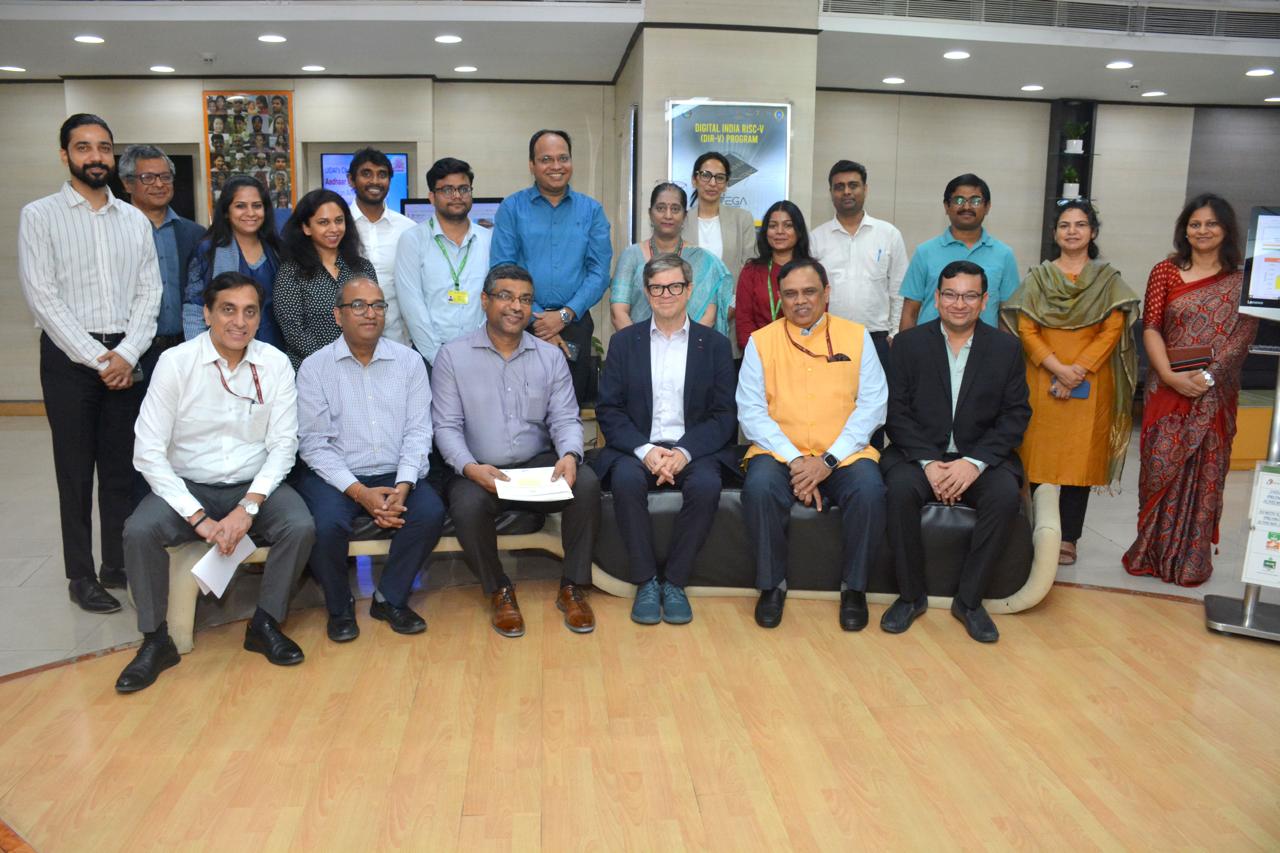
- 27 Oct 2024
In News:
IndiaAI and Meta have announced the establishment of the Center for Generative AI, Srijan (????) at IIT Jodhpur, along with the launch of the “YuvAi Initiative for Skilling and Capacity Building” in collaboration with the All India Council for Technical Education (AICTE), for the advancement of open source artificial intelligence (AI) in India.
Key Initiatives Launched
- Center for Generative AI, Srijan (????) at IIT Jodhpur:
- Focus on Generative AI (GenAI) research and innovation.
- Meta’s support for ethical and responsible development of AI technologies.
- Aim to empower researchers, students, and practitioners with the tools for responsible AI deployment.
- Focus Areas: Open science, AI policy advisory, and indigenous AI application development.
- YuvAi Initiative for Skilling and Capacity Building:
- Target: Empower 100,000 students and young developers (ages 18-30) with AI skills.
- Core Focus: Leveraging open-source Large Language Models (LLMs) for real-world solutions.
- Skills Development: Generative AI, open-source tools, and sector-specific AI applications (healthcare, education, agriculture, smart cities, mobility, and financial inclusion).
- Partnership: Collaboration with AICTE (All India Council for Technical Education).
Strategic Goals and Outcomes
- Research and Innovation:
- Strengthen India’s AI ecosystem through groundbreaking research and collaborations.
- Focus on open-source AI and indigenous AI solutions for national challenges.
- Empower India to lead in AI through ethical and responsible AI deployment.
- AI Talent Development:
- Bridge the AI talent gap by training young developers in open-source AI technologies.
- Develop AI solutions for critical sectors like healthcare, education, agriculture, smart cities, and financial inclusion.
- Program Components:
- GenAI Resource Hub with courses, case studies, and open datasets.
- Unleash LLM Hackathons for students to propose AI solutions for real-world challenges.
- Support for AI startups through an Innovation Accelerator.
Sectoral Focus and Impact
- Healthcare: AI for diagnostics, personalized medicine, and healthcare delivery.
- Education: AI tools for enhancing learning outcomes and personalized education.
- Agriculture: AI solutions for precision farming, pest control, and crop management.
- Smart Cities: AI in urban planning, traffic management, and public services.
- Mobility: AI applications in transportation, logistics, and urban mobility.
- Financial Inclusion: AI in fintech, digital payments, and financial services for underserved populations.
Additional Programs and Opportunities
- AICTE Collaboration: Mobilizing technical institutions across India to build AI capabilities.
- Master Training Activation Workshops: To introduce foundational AI concepts to students.
- Mentorship and Grants: Top AI solutions from hackathons will receive mentoring, seed grants, and market support.
- Student Startups: AI Innovation Accelerator will incubate 10 student-led AI startups experimenting with open-source models.
Pandemic Fund Project
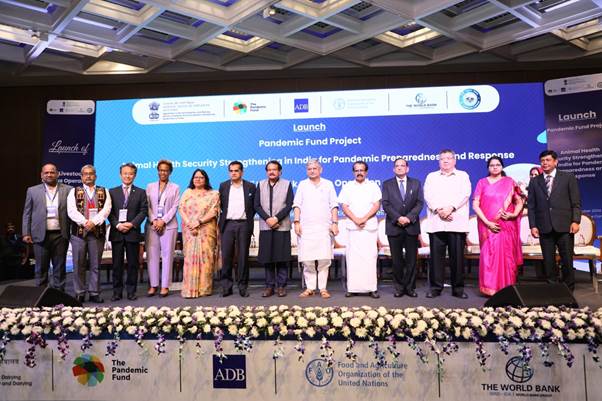
- 27 Oct 2024
In News:
Recently, the Union Minister Shri Rajiv Ranjan Singh, Ministry of Fisheries, Animal Husbandry and Dairying launched the Pandemic Fund Project on "Animal Health Security Strengthening in India for Pandemic Preparedness and Response"in New Delhi.
Key Highlights:
Launch of Pandemic Fund Project
- Objective: Strengthening animal health security in India to enhance pandemic preparedness and response.
- Funding: $25 million initiative funded by the G20 Pandemic Fund.
- Location: New Delhi, Ministry of Fisheries, Animal Husbandry, and Dairying.
Context and Importance
- Livestock Sector: Crucial for socio-economic upliftment, contributing to employment and rural development.
- Growth in Livestock Sector: Significant progress in the last 9 years through schemes like the National Animal Disease Control Program (NADCP).
- Key Diseases Targeted:
- Foot and Mouth Disease (FMD): Aimed at eradication, with over 90.87 crore vaccines administered.
- Brucellosis: Over 4.23 crore vaccines administered.
Objectives of the Pandemic Fund Project
- Enhanced Disease Surveillance: Includes genomic and environmental monitoring for early warning systems.
- Laboratory Infrastructure Development: Upgradation for better diagnosis and disease management.
- Cross-Border Collaboration: Strengthening partnerships for global monitoring of zoonotic diseases.
- Integrated Monitoring System: Creation of a robust system for managing zoonotic diseases, with a focus on early detection and containment.
Documents Released for Strengthening Animal Health
- Standard Veterinary Treatment Guidelines (SVTG):
- Best practices for veterinary care to improve livestock health and productivity.
- Supports national action plans, especially for combating antimicrobial resistance.
- Crisis Management Plan (CMP) for Animal Diseases:
- Framework for effective response and containment during animal disease outbreaks.
- Ensures timely mitigation of animal disease crises.
One Health Approach
- Integration of Human, Animal, and Environmental Health: Key to preventing and managing future health crises.
- Zoonotic Risks: The project emphasizes reducing zoonotic disease transmission from animals to humans, crucial given the origins of many recent public health emergencies.
Implementation and Collaboration
- The project will be executed in collaboration with global institutions:
- Asian Development Bank (ADB)
- Food and Agriculture Organization (FAO)
- World Bank
Chanakya Defence Dialogue 2024
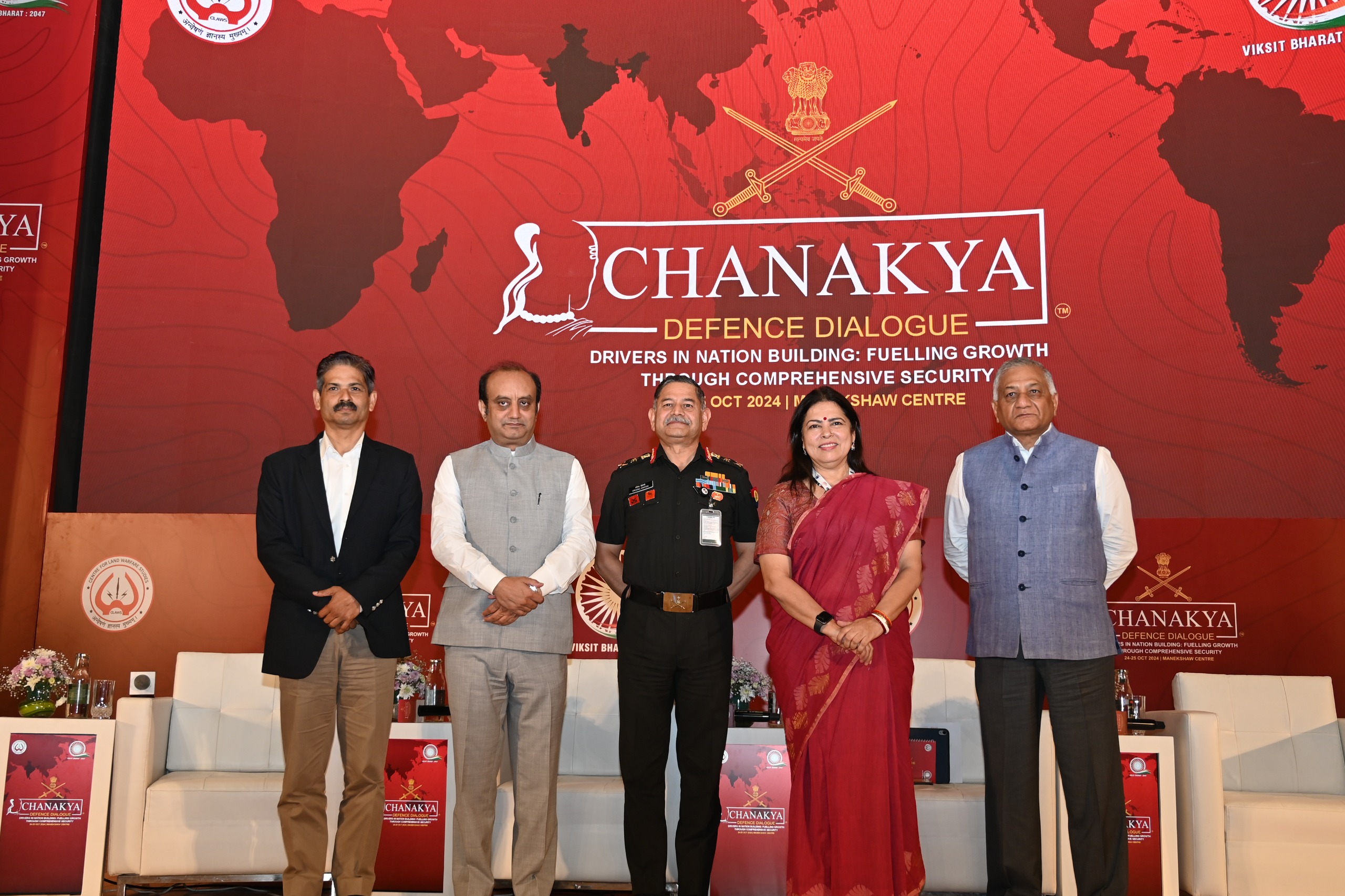
- 26 Oct 2024
In News:
- Recently, the Chanakya Defence Dialogue (CDD) 2024, second edition, was held at the Manekshaw Centre, New Delhi.
- Theme: "Drivers in Nation Building: Fueling Growth Through Comprehensive Security."
- Focus: Discussions on integrating national security into India's development trajectory and global strategy for a Viksit Bharat by 2047.
Key Objectives:
- The dialogue aimed to explore India’s strategic directions and development priorities by fostering discussions between policymakers, strategic thinkers, defence experts, and academia.
- Highlighted the link between national security and economic growth, stressing how security frameworks are vital for national progress.
Key Sessions and Discussions:
- Session 1: Social Cohesion and Inclusive Growth: Pillars of a Secure Nation:
- Focused on internal security, social unity, and inclusive development.
- Panelists discussed the role of community engagement, countering terrorism, and law enforcement reforms.
- Emphasized the need for integrating social progress and addressing challenges like separatism and terrorist narratives.
- Panelists called for evidence-based policies for equitable growth and stronger security frameworks to protect the country from internal threats.
- Session 2: Blurring Frontiers: The Convergence of Technology & Security:
- Addressed the intersection of technology and national security.
- Topics included AI, quantum computing, IoT, and blockchain for improving cyber resilience and data protection.
- Panelists emphasized the need to balance technological innovation with strong security measures, particularly in cybersecurity and critical infrastructure protection.
- Session 3: Ground-breakers: Shaping Land Warfare, Reflections for the Indian Army:
- Explored the integration of emerging technologies like AI, unmanned systems, and cyber warfare tools in enhancing military readiness.
- Focused on indigenous defense technologies under the Atmanirbhar Bharat initiative, promoting self-reliance and reducing dependency on foreign technologies.
- Emphasized multi-domain operations and the challenges of adapting to evolving security threats, especially from advanced cyber and space warfare.
Strategic Insights:
- Economic Growth & Security: The dialogue highlighted that national security and economic growth are interlinked, with a strong military infrastructure crucial for sustaining development.
- Role of Technology: Technological advancements like AI, space technology, and cybersecurity are pivotal for enhancing India's defense capabilities and strategic posture in a rapidly evolving global security landscape.
- Inclusive Security: Emphasized social cohesion and inclusive growth as key components of national security, acknowledging that a unified society contributes significantly to national resilience.
- Global Diplomacy: India’s global leadership in multilateral forums, its stance on peacekeeping, and its role in promoting sustainable development were discussed as part of the country’s soft power strategy.
Precision Medicine, Biobanks, and Regulatory Challenges in India

- 26 Oct 2024
In News:
Precision medicine is bringing in a new era of personalised healthcare. The field began to take concrete shape when scientists were wrapping up the Human Genome Project.
Introduction to Precision Medicine:
- Precision Medicine is a novel approach to healthcare that tailors treatments and preventive strategies based on an individual’s genetics, environment, and lifestyle, instead of using a one-size-fits-all approach.
- It leverages technologies like genomics, gene editing (CRISPR), and mRNA therapeutics to address various diseases such as cancer, chronic diseases, and genetic disorders.
- Recent breakthroughs include gene therapy for restoring vision and stem cell transplants for reversing diabetes, demonstrating the transformative potential of precision medicine.
Role of Biobanks in Precision Medicine:
- Biobanks are repositories storing biological samples (blood, DNA, tissues) along with associated health data. These samples are crucial for research and development of personalized treatments.
- Large and diverse biobanks are essential for ensuring that precision medicine benefits a wide demographic, as data from homogenous groups could limit the applicability of findings.
- Recent studies using biobank data have led to breakthroughs, such as identifying rare genetic disorders and developing organoid models for high-throughput drug screening.
Precision Medicine and Biobanks in India:
- Market Growth: India’s precision medicine market is growing at a CAGR of 16%, expected to surpass USD 5 billion by 2030, contributing 36% to the national bioeconomy.
- Policy Framework: The government’s BioE3 policy aims to promote biomanufacturing, with a focus on precision therapeutics and related technologies like gene editing and cancer immunotherapy.
- Biobank Initiatives:
- Genome India Programme: Completed sequencing of 10,000 genomes from 99 ethnic groups, aimed at identifying treatments for rare genetic diseases.
- Phenome India Project: Focused on collecting 10,000 samples for improving prediction models for cardio-metabolic diseases.
- Paediatric Rare Genetic Disorders (PRaGeD) Mission: Aiming to identify genes that could help develop targeted therapies for genetic diseases in children.
Regulatory and Ethical Challenges in Biobanking:
- India’s biobanking regulations are inconsistent, hindering the full potential of precision medicine. Unlike countries like the U.K., U.S., and Japan, which have comprehensive laws addressing issues like informed consent, data protection, and privacy, India lacks a cohesive regulatory framework.
- Informed Consent Issues: In India, participants provide samples without full knowledge of how their data will be used, who will have access to it, and for how long it will be stored. This lack of transparency undermines public trust in biobank research.
- Ethical Concerns: Without a clear regulatory framework, there is a risk of misuse of biological samples, such as non-consensual data sharing and sample mishandling.
- International Implications: The absence of robust laws allows foreign pharmaceutical companies to access Indian biobank data and samples without ensuring that the Indian population benefits from the resulting research or profits.
Global Comparison of Biobank Regulations:
- International Standards: Countries like the U.K., U.S., and Japan have established comprehensive biobank regulations, addressing:
- Informed consent for sample collection and data usage.
- Privacy protection and secure storage of genetic information.
- Withdrawal rights for participants at any stage of research.
- India’s biobank regulations lack clear provisions for data protection and participant rights, limiting the effectiveness of research and undermining public confidence in biobanks.
Microfinance Institutions (MFIs)
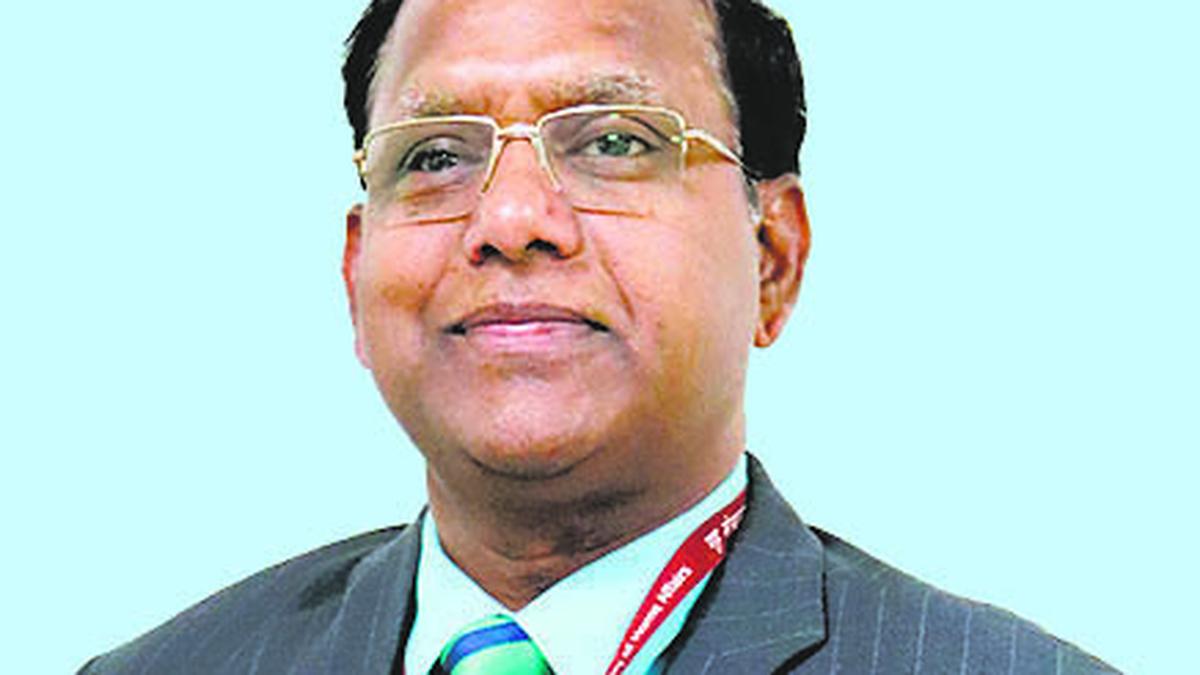
- 26 Oct 2024
In News:
Recently, the Financial Services Secretary stated that Microfinance institutions (MFIs) have played a crucial role in fostering financial inclusion but they should refrain from any reckless lending.
Microfinance Institutions (MFIs) and Financial Inclusion:
- MFIs provide small loans and financial services to low-income and marginalized groups, particularly those without access to formal banking services.
- Goal: To promote financial inclusion and empower marginalized communities, especially women, by enabling them to become self-sufficient and improve their socio-economic status.
- In India, over 168 MFIs serve around 3 crore clients across 29 states and 563 districts.
- The sector has grown significantly and is crucial for empowering Self-Help Groups (SHGs) and Joint Liability Groups (JLGs) to access credit and other financial services.
Concerns over Reckless Lending:
- The Financial Services Secretary, emphasized that MFIs should avoid reckless lending practices that could harm both borrowers and the sector.
- Poor underwriting and irresponsible lending could lead to unsustainable debt, especially for Self-Help Groups (SHGs) and Joint Liability Groups (JLGs) with limited financial literacy.
- Key Advice: Lending practices must be responsible, careful, and should aim to empower borrowers, not exploit their limited understanding.
Government Programs Supporting MFIs:
- SHG-Bank Linkage Programme: Over 77 lakh SHGs with a total loan outstanding of ?2.6 lakh crore, benefiting around 10 crore households.
- Lakhpati Didi Yojana: Aimed at empowering women, this scheme helps transform SHG members into women entrepreneurs.
Challenges Facing Microfinance Institutions:
- Regulatory Scrutiny: Many MFIs face scrutiny for high interest rates and non-compliance with borrower assessments. The RBI has urged MFIs to reassess lending practices.
- Over-Indebtedness: Many borrowers take loans from multiple MFIs, leading to unsustainable debt. As of March 2024, over 12% of borrowers had multiple loans, risking defaults.
- Low Financial Literacy: A significant challenge is low financial literacy among borrowers, which increases the risk of defaults and harms the reputation of MFIs.
RBI Guidelines on Microfinance (2022):
- Collateral-Free Loans: For households with income up to ?3 lakh, loans should be collateral-free.
- Repayment Cap: Monthly loan repayments should not exceed 50% of the borrower’s monthly income.
- Flexibility in Repayment: MFIs must offer flexible repayment options and ensure proper income assessment.
- Interest Rate Cap: The RBI has implemented guidelines to limit excessive interest rates charged by MFIs.
Government Schemes for Microfinance:
- Pradhan Mantri Mudra Yojana (PMMY): Provides financial assistance to non-corporate, non-farm small/micro enterprises.
- National Rural Livelihoods Mission (NRLM): Promotes rural livelihoods through the formation and capacity building of Self-Help Groups (SHGs).
- Deen Dayal Upadhyaya Antyodaya Yojana: Focuses on the empowerment of rural poor through skill development and income generation.
- Credit Guarantee Fund for Micro and Small Enterprises (CGTMSE): Provides guarantee cover to micro and small enterprises.
Way Forward for Microfinance Sector:
- Responsible Lending: MFIs must prioritize affordable lending practices, ensuring borrower’s repayment capacity is carefully assessed to avoid over-indebtedness.
- Enhancing Financial Literacy: MFIs should focus on financial education for borrowers, enabling them to make informed choices.
- Adherence to Regulatory Guidelines: MFIs should comply strictly with RBI regulations, including interest rate caps and borrower income assessments, to enhance sector transparency and trust.
- Malegam Committee Recommendations: Implementing suggestions like capping interest rates, tracking multiple loans, and improving transparency to prevent over-indebtedness.
- Diversifying Funding Sources: To reduce vulnerability to economic downturns, MFIs should work on diversifying their funding sources, reducing dependence on external capital.
Environmental Ship Index (ESI)
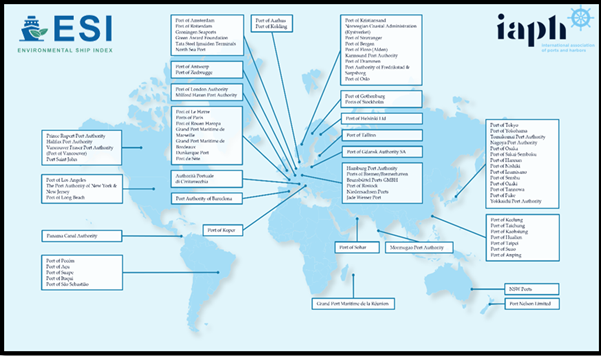
- 26 Oct 2024
In News:
- Mormugao Port Authority (MPA) has been globally recognized as an incentive provider on the Environmental Ship Index (ESI) platform, acknowledged by the International Association of Ports and Harbours (IAPH).
- Mormugao is India's first port to implement Green Ship Incentives through the ESI, contributing to global efforts to reduce maritime air emissions.
‘Harit Shrey’ Scheme:
- Launched in October 2023, the ‘Harit Shrey’ scheme provides discounts on port fees based on the Environmental Ship Index (ESI) scores of commercial vessels.
- Ships with higher ESI scores (indicating better environmental performance) are rewarded with incentives to encourage eco-friendly practices in shipping.
ESI and Global Efforts for Emission Reduction:
- The Environmental Ship Index (ESI) is a global system to evaluate and reward ships based on their environmental performance, particularly their emissions of nitrogen oxides (NOx) and sulphur oxides (SOx).
- The 2023 IMO greenhouse gas strategy aims to reduce the carbon intensity of international shipping by at least 40% by 2030.
Incentives and Benefits:
- The Harit Shrey scheme has already benefitted several vessels, promoting greenhouse gas emission reductions and contributing to sustainable maritime operations.
- The scheme aligns with global sustainability goals, particularly in reducing the carbon footprint of shipping operations.
Sustainability Recognition:
- The Mormugao Port Authority has submitted the Harit Shrey scheme for consideration in the IAPH Sustainability Awards under the World Port Sustainability Programme (WPSP), reflecting its commitment to environmental sustainability.
The Environmental Ship Index (ESI):
- ESI is a system that evaluates and rewards ships for better environmental performance than the standards set by the International Maritime Organization (IMO).
- Ships are assessed based on their emissions of NOx and SOx, with greenhouse gas reporting also included in the evaluation.
Main Features of ESI:
- Port-Centric: Developed as a port-to-port system, where ports can offer incentives based on the ESI score.
- Voluntary Participation: Shipowners participate voluntarily to demonstrate their vessels' environmental performance.
- Automated Calculation: The ESI score is automatically calculated and updated.
- Incentives: Ships with higher ESI scores may receive benefits such as reduced port fees and priority berthing.
Great Indian Bustard (GIB)
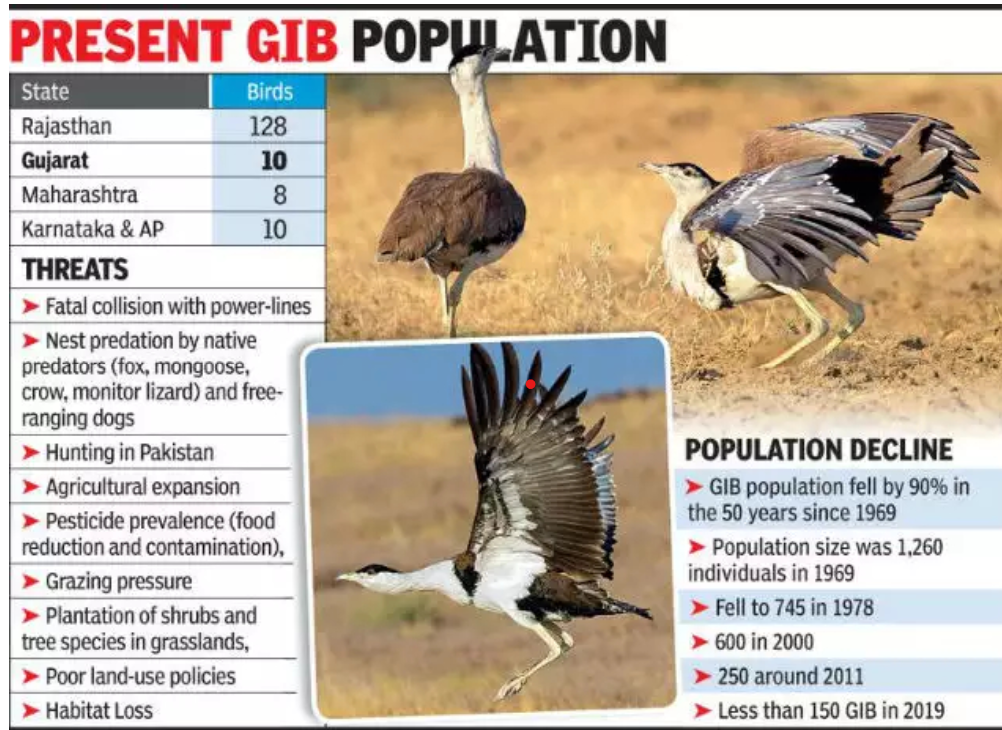
- 25 Oct 2024
A critically endangered Great Indian Bustard (GIB) chick was successfully born through artificial insemination (AI) at a breeding center in Jaisalmer, Rajasthan, marking a crucial step in efforts to save the species.
Endangered Status:
- The Great Indian Bustard is classified as critically endangered with fewer than 150 individuals left in the wild in India.
- About 90% of these birds are found in the desert areas of Rajasthan, with smaller populations in Gujarat, Maharashtra, Andhra Pradesh, and Karnataka.
Main Threats to the Species:
- Habitat Loss: The primary threat is the loss of habitat, which is often perceived as wasteland and is diverted for infrastructure projects like roads and development.
- Slow Reproductive Rate: The bustard’s low reproductive rate exacerbates its risk of extinction.
Conservation Efforts: Bustard Recovery Program
- In 2016, the Union Ministry of Environment, Forests and Climate Change launched the Bustard Recovery Program to focus on captive breeding and creating a sustainable environment for the reintroduction of GIBs into the wild.
- A dedicated GIB breeding center was set up at the Desert National Park in Jaisalmer, Rajasthan, as part of this initiative.
- Protection Status of GIB:
- IUCN: Critically Endangered
- CITES: Appendix 1
- Convention on Migratory Species (CMS): Appendix I
- Wildlife (Protection) Act, 1972: Schedule I
- It is also the state bird of Rajasthan, emphasizing its importance in the region’s biodiversity.
Introduction to Innovative Cancer Detection Technique

- 25 Oct 2024
In News:
- Scientists have developed an ultrasound-based technique for detecting cancer, aiming to replace traditional biopsies, which are invasive and painful.
- Promising Alternative: The method uses high-energy ultrasound to release biomarkers (RNA, DNA, and proteins) from cancerous tissue into the bloodstream, allowing for early cancer detection with minimal discomfort.
- Presented at Acoustical Society Conference: The technique was discussed at the joint meeting of the Acoustical Society of America and Canadian Acoustical Association in May 2024.
Traditional Cancer Detection vs. New Ultrasound Approach
- Current Gold Standard - Biopsy: Traditionally, cancer is diagnosed using biopsies, where a tissue sample is extracted using a needle from suspected cancerous areas. Although effective, biopsies are invasive, painful, and carry some risks.
- Ultrasound as a Non-Invasive Alternative: The new method involves using high-frequency ultrasound waves to break off cancerous tissue into droplets, which are then released into the bloodstream. The biomarkers in the droplets can be analyzed for cancerous mutations.
- Enhanced Sensitivity: This ultrasound-based technique increases the levels of genetic and vesicle biomarkers in blood samples by over 100 times, enabling the detection of cancers and specific mutations that are otherwise undetectable in blood.
Key Findings of the Research
- Single Cancer Cell Detection: The technique allows for the detection of a single cancer cell in blood samples. It works by passing ultrasound waves through isolated blood samples, which break apart circulating cancer cells, releasing biomarkers into the blood.
- Cost-Effective: Traditional methods for detecting circulating cancer cells are costly (e.g., the ‘CellSearch’ test costs $10,000). In contrast, this ultrasound method can detect cancer with a much lower cost, around $100 (?8,400).
- Potential for Early Diagnosis: The research shows promise for detecting cancer at an early stage, even before symptoms appear, using blood samples.
Challenges and Next Steps
- Need for Large-Scale Clinical Trials: While the technique shows potential, large cohort studies involving diverse patient groups across different geographies and ethnicities are needed to validate the approach.
- Long-Term Study for Effectiveness: Further research is required to ensure the accuracy and reliability of the technique across various cancer types and to determine the ideal biomarker thresholds for early detection.
- Regulatory Approval and Commercialization: If the clinical trials yield positive results, the method could be commercially available in approximately five years, following regulatory approval.
Understanding Cancer and Its Types
- Cancer Definition: Cancer refers to the uncontrolled growth of abnormal cells that can form tumors and spread to other parts of the body.
- Types of Cancer:
- Carcinoma: Cancer originating in epithelial cells (e.g., breast, lung, prostate cancer).
- Sarcoma: Affects connective tissues like bones and muscles.
- Leukemia: Affects blood-forming tissues, leading to abnormal white blood cell production.
- Lymphoma: Begins in immune cells, including Hodgkin and non-Hodgkin lymphoma.
- Melanoma: Cancer of pigment-producing skin cells.
- Key Differences Between Normal and Cancer Cells:
- Cancer cells grow uncontrollably and evade immune detection.
- Cancerous cells accumulate chromosomal abnormalities, unlike normal cells, which follow regulated growth patterns.
National Workshop on SATHI Portal
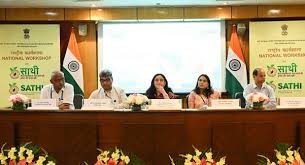
- 25 Oct 2024
In News:
Recently, the Department of Agriculture & Farmers' Welfare (DA&FW) organised a National Workshop on the SATHI (Seed Authentication, Traceability, and Holistic Inventory) Portal in New Delhi.
Key Highlights:
Purpose & Focus
- SATHI Portal: Focuses on Seed Authentication, Traceability, and Holistic Inventory to enhance seed certification, improve seed traceability, and streamline the seed supply chain.
- Primary Objective: Ensure availability of high-quality seeds to farmers through a transparent and efficient seed management system.
Key Features of the SATHI Portal
- Seed Certification: Aims to streamline seed certification processes across states for faster and more accurate seed certifications.
- Seed Traceability: Enhances transparency and traceability of seeds to ensure quality and authenticity.
- Inventory Management: The portal facilitates seed inventory management, helping farmers and stakeholders access reliable and transparent seed information.
- Technological Integration: Developed by the National Informatics Centre (NIC), the portal incorporates technology-driven solutions to minimize transactional time for registrations, approvals, and certifications.
Phase-II Rollout
- Focus on seed inventory management, with the objective of offering farmers reliable access to certified seed varieties.
- It aims to integrate state-specific seed processes into the national framework for greater standardization and efficiency.
Workshops & Technical Sessions
- NIC and ICAR Presentations: Covered the core components of the SATHI Portal, including:
- Seed Law Enforcement
- DNA Fingerprinting for ensuring seed authenticity.
- Seed Laboratory Processes to uphold quality control.
- Review of Phase-I: Discussions on achievements of Phase-I, focusing on improvements in seed certification processes across states.
- State Experiences: 10 state representatives shared insights on their experiences with the portal, discussing both benefits and challenges in the implementation phase.
Role of NIC & Technology
- The National Informatics Centre (NIC) is the technology partner behind the SATHI Portal, which is designed to enhance the efficiency of seed certification and inventory management.
- The portal contributes to larger digital initiatives like the Digital Agriculture Mission and Unified Farmer Service Platform (UFSP), which aim to support agricultural development through technology.
Chenchu Tribe
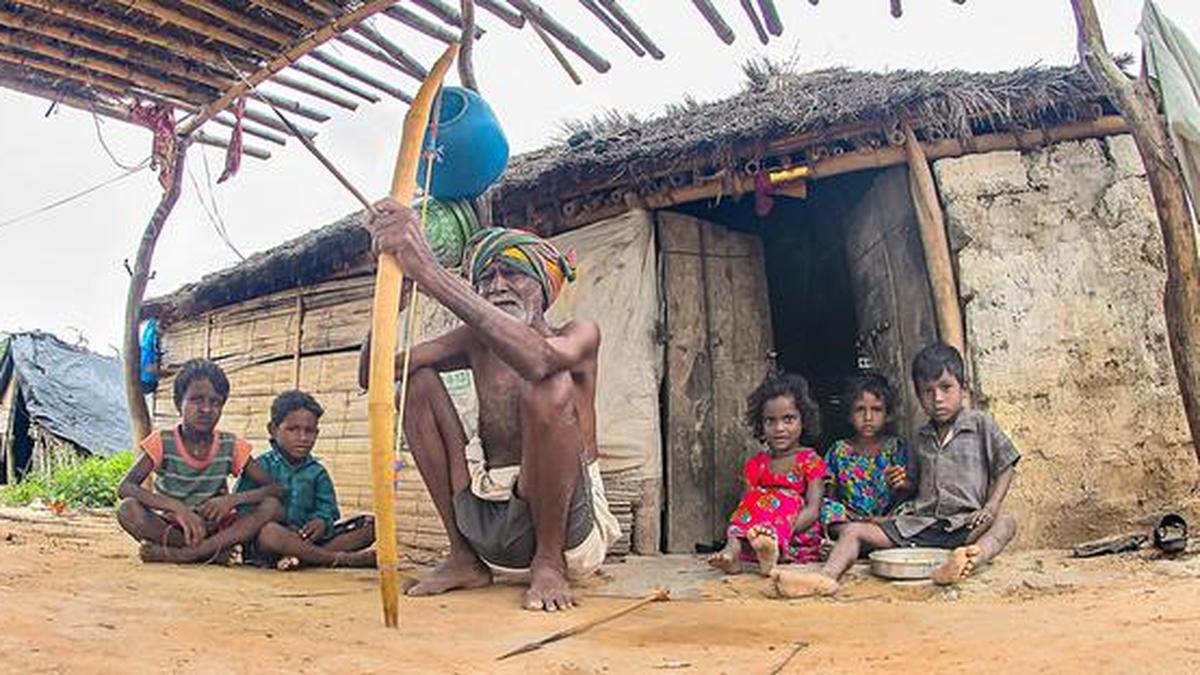
- 25 Oct 2024
In News:
The Chenchus of Penukumadugu have lived in the dense Nallamala forests for centuries, their existence intertwined with the wilderness around them. However, their inability to keep up with the relentless pace of modernisation has led to dwindling work opportunities under the MGNREGA.
Chenchu Tribe Overview
- Location: Primarily in the dense Nallamala forests, Andhra Pradesh (AP).
- Tradition: Historically hunter-gatherers, now relying on subsistence farming.
- Vulnerable Status: Classified as one of the 12 Particularly Vulnerable Tribal Groups (PVTGs) in Andhra Pradesh due to low literacy, stagnant population growth, and limited access to development.
- Livelihood: Dependent on forest resources (Non-Timber Forest Produce - NTFP) and agricultural labor.
Impact of MGNREGS (Mahatma Gandhi National Rural Employment Guarantee Scheme)
- MGNREGS Chenchu Special Project: Launched in 2009 to address specific needs of the Chenchus, such as physical strength, food insecurities, and cultural practices.
- Before Discontinuation: Provided 180 days of work per person annually, which helped Chenchus access regular income, improving food security and living conditions.
- Post-Discontinuation (2022):
- The project was integrated into a nationwide MGNREGS framework, reducing workdays to the standard 100 days per household.
- Consequences: Many Chenchus stopped engaging with MGNREGS due to bureaucratic hurdles (Aadhaar and bank linkage), reduced job days, and irregular wage payments.
- Only 1,500 out of 4,000 enrolled households currently participate in MGNREGS work.
Key Issues Post-MGNREGS Reform
- Aadhaar & Bank Account Challenges:
- Lack of literacy and digital skills makes the Aadhaar-based system intimidating.
- Many Chenchus are excluded from PDS and health benefits due to missing or unlinked Aadhaar cards.
- Absence of mobile phones and access to banks makes wage disbursement difficult.
- Irregular Payments & Trust Issues:
- The shift to bank payments has created trust issues, as many Chenchus are illiterate and cannot verify wage deposits.
- Distance from banks (up to 30 km) adds to the difficulty in accessing payments.
Forest Rights and Wildlife Conservation
- Forest Dependency: The Chenchus continue to depend on the forest for food and livelihood, but increasing restrictions due to wildlife conservation (e.g., Nagarjuna-Srisailam Tiger Reserve) have further curtailed their access to forest produce.
- Forest Rights Act (FRA): Many Chenchus have land pattas under the FRA but lack resources or support to utilize their land effectively due to the discontinuation of MGNREGS.
Government and Policy Response
- PVTG Initiatives: Various government initiatives like PM PVTG Mission, Viksit Bharat Sankalp Yatra, and Janjatiya Gaurav Divas aim to uplift PVTGs, but their impact remains limited without proper implementation of specialized support programs like the MGNREGS Chenchu Special Project.
United Nations Day 2024
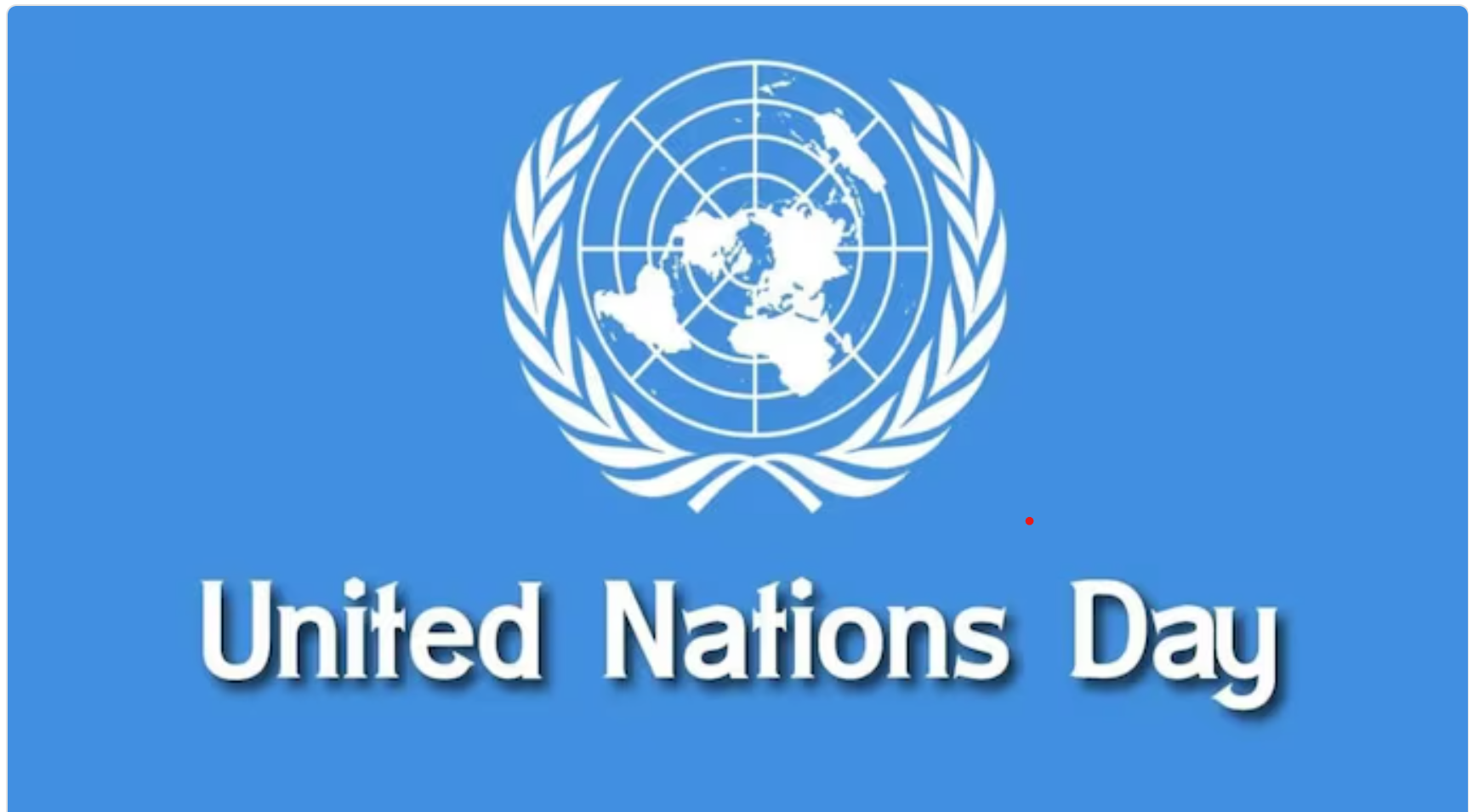
- 25 Oct 2024
In News:
United Nations Day is celebrated each year on October 24 to mark the anniversary of the UN Charter's entry into force, aiming to raise awareness about the goals and achievements of the international body.
Key Highlights:
- Purpose: Celebrates the anniversary of the UN Charter coming into effect on October 24, 1945, after World War II.
- Goal: Raise awareness about the UN’s objectives and accomplishments.
UN Charter Overview
- Signing & Implementation:
- Signed on June 26, 1945, in San Francisco.
- Came into effect on October 24, 1945.
- India ratified the UN Charter on October 30, 1945.
- Predecessor: The League of Nations, created in 1919 after WWI, aimed at promoting international cooperation and peace.
- Content:
- Foundational document of the UN, binding all member states.
- Establishes principles of international relations, including equality of nations and the prohibition of force between countries.
- Amended three times: 1963, 1965, and 1973.
UN's Core Objectives
- Peace and Security: Maintaining global peace and preventing conflicts.
- Humanitarian Aid: Providing assistance to those in need.
- Human Rights: Protecting and promoting human rights globally.
- International Law: Upholding the rule of law on the global stage.
Main Organs of the UN
- General Assembly (UNGA):
- Comprises all 193 Member States, each with one vote.
- Main policy-making body, addressing international issues covered by the UN Charter.
- Security Council (UNSC):
- Consists of 15 members (5 permanent, 10 elected for two-year terms).
- Permanent members: China, France, Russia, UK, USA.
- India has been elected to the UNSC eight times.
- Economic and Social Council (ECOSOC):
- Composed of 54 members elected by the General Assembly.
- Coordinates policy and addresses economic, social, and environmental issues.
- Trusteeship Council:
- Established to oversee trust territories transitioning to independence.
- International Court of Justice (ICJ):
- The only international court resolving disputes between UN member states.
- Handles contentious cases and provides advisory opinions.
- Secretariat:
- Led by the Secretary-General, appointed by the General Assembly based on Security Council recommendations.
- Acts as the chief administrative body of the UN.
Note: Most UN organs, including the UNGA, UNSC, ECOSOC, Trusteeship Council, and Secretariat, are based in New York, while the ICJ is located in The Hague, Netherlands.
Nobel Peace Prize 2024
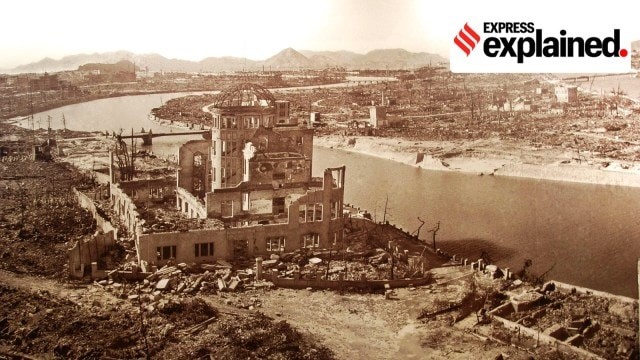
- 24 Oct 2024
In News:
The Nobel Peace Prize has been awarded to Nihon Hidankyo, an organisation of survivors of the Hiroshima-Nagasaki bombings. In doing so, the Nobel Committee has highlighted the power of their testimonies and the need for disarmament.
Key Points about Nihon Hidankyo and the Hibakusha Movement
- Nihon Hidankyo:
- Established on August 10, 1956, as the nation-wide organization for survivors of the Hiroshima and Nagasaki bombings.
- Focuses on the welfare of Hibakusha (A-bomb survivors), promoting nuclear disarmament, and advocating for compensation for victims.
- Works to share the stories and experiences of Hibakusha, both within Japan and globally.
- Hibakusha (Bomb-affected People):
- Survivors of the atomic bombings of Hiroshima and Nagasaki in 1945.
- Played a pivotal role in the global nuclear disarmament movement.
- Their testimonies have helped create the "nuclear taboo," ensuring nuclear weapons have not been used since 1945.
Role of Hibakusha in Nuclear Disarmament
- Global Impact:
- The bombings ignited a global movement for nuclear disarmament.
- Hibakusha's advocacy has highlighted the human cost of nuclear weapons, shaping international policy and promoting the nuclear taboo.
- Nihon Hidankyo’s Advocacy:
- The organization has been instrumental in documenting the effects of nuclear weapons and advocating for their abolition.
- Testimonies from Hibakusha have been key in raising awareness about the catastrophic humanitarian consequences of nuclear warfare.
Nobel Committee's Recognition and Current Nuclear Challenges
- Recognition of Hibakusha's Work:
- The Nobel Committee awarded the Peace Prize to Nihon Hidankyo for its role in promoting nuclear disarmament and for contributing to the nuclear taboo.
- The nuclear taboo is under increasing pressure as new countries seek nuclear weapons and existing powers modernize their arsenals.
- Current Nuclear Landscape:
- The US and Russia continue to maintain large nuclear stockpiles, with the US planning to spend over $1 trillion on upgrading its nuclear capabilities by the 2040s.
- New Threats: Geopolitical tensions, including regional conflicts, raise concerns about the resurgence of nuclear arms races.
Previous Nobel Peace Prizes for Disarmament
- Past Laureates:
- 1974: Former Japanese Prime Minister Eisaku Sato awarded for Japan's commitment to non-nuclear weapons policy.
- 2017: International Campaign to Abolish Nuclear Weapons (ICAN) awarded for its efforts to draw attention to the humanitarian consequences of nuclear weapons and push for a nuclear ban treaty.
- Link with Alfred Nobel’s Vision:
- Alfred Nobel, the founder of the Peace Prize, made his fortune with the invention of dynamite and sought to use his wealth to promote peace, especially through disarmament.
IMF's World Economic Outlook (WEO)
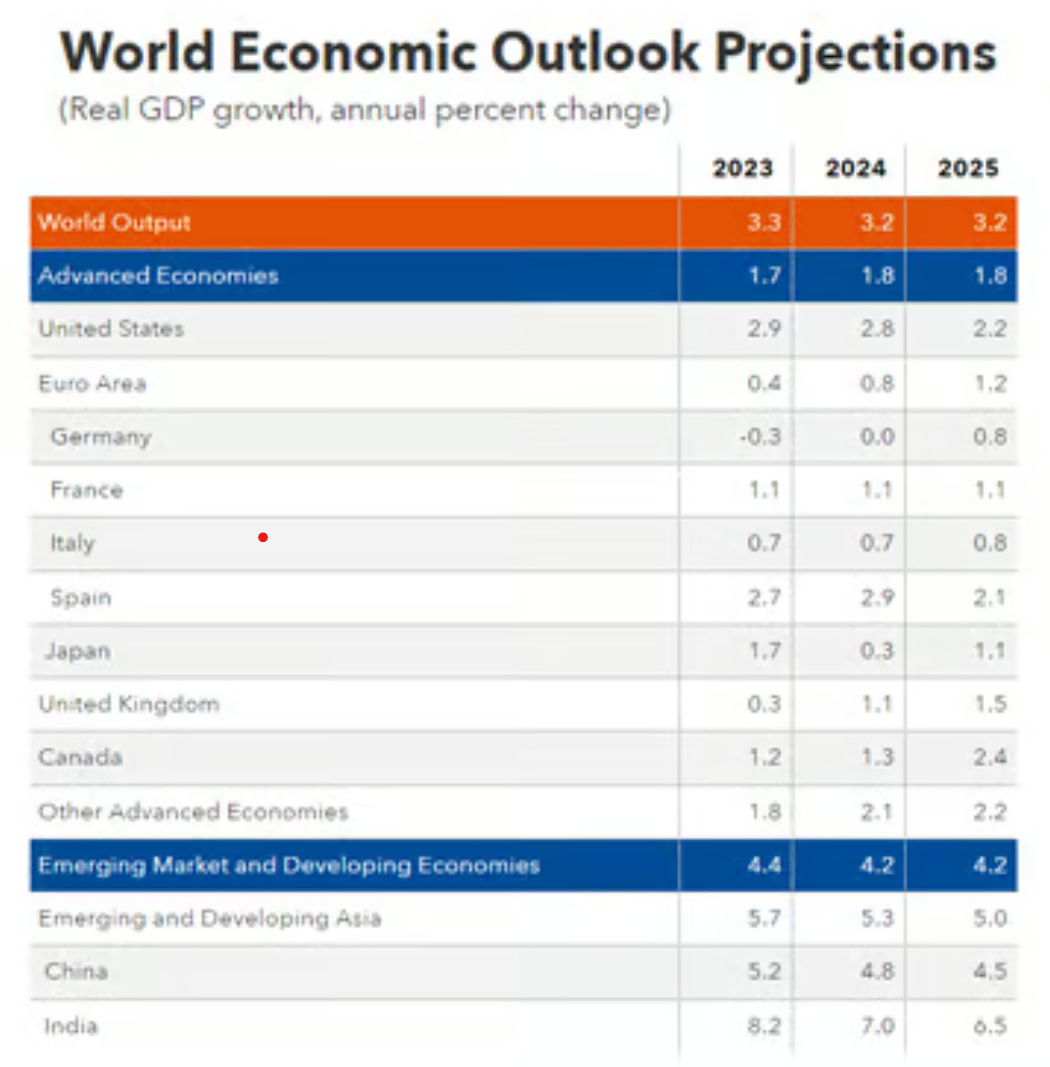
- 24 Oct 2024
In News:
- The International Monetary Fund (IMF) has maintained India’s GDP growth forecast at 7% for FY2024, marking a moderation from 8.2% in 2023.
- FY2025 Projection: Growth is expected to slow further to 6.5% in FY2025.
- India’s growth is expected to be stronger than most other large economies, yet the downward revision reflects challenges in the global economy and moderation in domestic economic momentum.
Global Economic Growth Projections:
- Global Growth (2024-2025): Global growth is projected at 3.2% in 2024 and 2025, which is stable but modest. This growth rate is largely unchanged from previous IMF forecasts.
- Long-Term Outlook: The IMF's long-term projection for global growth is 3.1%, which is considered subpar compared to pre-pandemic growth rates, signaling a potential era of low growth.
Key Risks and Uncertainties:
- The IMF highlights several downside risks to global growth, including:
-
- Monetary tightening: Central banks' high-interest rate policies to combat inflation could have long-term negative effects on economic growth and financial stability.
- Geopolitical Tensions: Ongoing conflicts, such as the Russia-Ukraine war, could disrupt global supply chains and trade, exacerbating inflation and slowing growth.
- China’s Economic Slowdown: China, the world’s second-largest economy, is facing a slower growth trajectory, especially in its real estate sector, which is dragging down its overall growth.
- Structural Challenges: The aging population and weak productivity are long-term growth inhibitors in many advanced economies, adding uncertainty to future growth prospects.
-
- Inflation and Monetary Policy:
- The IMF's inflation forecast shows global inflation cooling:
- 2023: Global inflation is expected to reach 6.7%.
- 2024: It is forecast to fall to 5.8%, with advanced economies expected to return to inflation targets sooner than emerging markets.
- 2025: A further decline to 4.3%.
- The primary driver of disinflation is not interest rate hikes but the unwinding of pandemic-related shocks, supply chain improvements, and the gradual return of labor supply.
- Monetary Policy: Central banks are likely to ease policies once inflation nears target levels, but risks of further commodity price spikes or geopolitical tensions could delay this.
- The IMF's inflation forecast shows global inflation cooling:
US and Europe Growth:
- Emerging Markets and Developing Economies:
- Growth Outlook: The IMF forecasts growth in emerging markets and developing economies at 4.2% for 2024 and 2025, with a slight moderation to 3.9% by 2026.
- Emerging Asia: Growth in emerging Asia (led by India and China) is expected to slow, from 5.7% in 2023 to 5% in 2025.
- India’s Relative Strength: India’s growth continues to outperform many emerging economies, though the slowdown from 8.2% in 2023 to 7% in 2024 reflects global economic headwinds.
- Income Inequality Risks:
- The IMF warns that low growth over an extended period (4+ years) could exacerbate income inequality within countries, as sluggish growth affects job creation and wage growth.
- Countries with slow economic recovery are likely to see a widening gap between rich and poor, undermining social cohesion and stability.
PM Young Achievers’ Scholarship Award Scheme for Vibrant India (PM YASASVI)
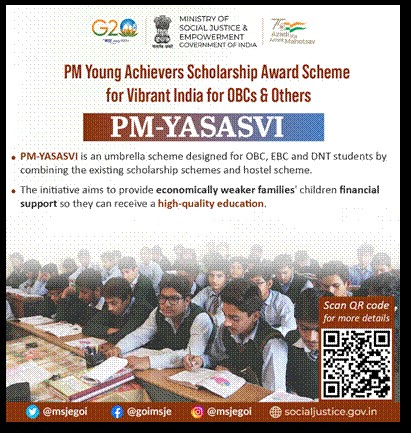
- 24 Oct 2024
In News:
With a vision of "Sabka Sath, Sabka Vikas", the Ministry of Social Justice and Empowerment has implemented the PM Young Achievers Scholarship Award Scheme for Vibrant India (PM-YASASVI).
- Objective of PM-YASASVI:
- The scheme aims to provide financial support and educational opportunities to students from Other Backward Classes (OBC), Economically Backward Classes (EBC), and Denotified Tribes (DNT).
- The goal is to help these students overcome financial barriers and pursue quality education, fostering a more inclusive and equitable society.
- Consolidation of Earlier Schemes:
- PM-YASASVI integrates multiple previous scholarship schemes:
- Dr. Ambedkar Post-Matric Scholarship for EBCs.
- Dr. Ambedkar Pre-Matric and Post-Matric Scholarship for DNTs.
- This consolidation aims to streamline the process and increase the impact on vulnerable groups.
- Key Components of the Scheme:
- Pre-Matric Scholarship: For students in Class 9-10 with annual family income below ?2.5 lakh. Provides ?4,000 annually.
- Post-Matric Scholarship: For students pursuing higher education, with academic allowances ranging from ?5,000 to ?20,000 based on course type.
- Top Class School Education: For meritorious students, offering ?1.25 lakh annually for students from OBC, EBC, and DNT categories in Classes 9-12.
- Top Class College Education: Covers tuition, living expenses, and educational materials for students in top institutions.
- Construction of Hostels for OBC Boys and Girls: Provides hostel facilities to socially and educationally backward students near government institutions.
- Scope and Financial Allocation (2023-24):
- Pre-Matric Scholarship: ?32.44 crore allocated to states and UTs for the year 2023-24, benefiting 19.86 lakh students.
- Post-Matric Scholarship: ?387.27 crore allocated for the year, benefiting 27.97 lakh students.
- Top Class School Education: ?6.55 crore for 2,602 students.
- Top Class College Education: ?111.18 crore for 4,762 students.
- Hostel Construction: ?14.30 crore allocated for the construction of hostels, accommodating 1,146 students.
- Key Benefits:
- Financial Assistance: Reduces the financial burden on students from marginalized communities, enabling them to continue their education without financial stress.
- Inclusive Education: Supports students from disadvantaged backgrounds, ensuring that they can access quality education from school through to higher education.
- Promotion of Merit: Focuses on meritorious students, ensuring that academic excellence is supported at all levels, from school to top-class institutions.
- Selection Process:
- The YASASVI Entrance Test (YET) is conducted by the National Testing Agency (NTA) for candidate selection under the scheme.
- Eligible students must appear for this test, and the results determine scholarship awards.
- Eligibility Criteria:
- The scheme is open to OBC, EBC, and DNT students with a family income not exceeding ?2.5 lakh annually.
- Additional specific eligibility criteria may apply for different scholarships under the scheme.
- Application Process:
- Interested students can apply for scholarships via the National Scholarship Portal (scholarships.gov.in), which is the official platform for application submission.
E. coli Outbreak Linked to McDonald's Burgers

- 24 Oct 2024
In News:
- An E. coli outbreak has been linked to McDonald's burgers in the United States. The infection has affected at least 10 states.
E. coli in India:
- Prevalence: E. coli infections are common in India, especially during the summer and rainy seasons, when there is an increase in gastrointestinal infections.
- Transmission: E. coli spreads mainly through contaminated food and water.
- National statistics: Over 500 outbreaks of diarrhoeal diseases were reported in India in 2023. E. coli is one of the most common pathogens causing gastrointestinal infections in India.
- ICMR data: According to the latest report from the Indian Council of Medical Research (ICMR), E. coli was found in 23.19% of patient samples from tertiary care hospitals across India.
- FSSAI's Role: The Food Safety and Standards Authority of India (FSSAI) is establishing a network of 34 microbiology labs to test food for pathogens like E. coli, salmonella, and listeria.
Symptoms of E. coli Infection:
- Common symptoms include:
- High fever (over 102°F)
- Persistent diarrhoea, sometimes bloody
- Vomiting
- Dehydration due to fluid loss
- Severe cases may lead to acute kidney injury.
Treatment of E. coli Infections:
- E. coli is treated with antibiotics, but medical consultation is necessary before taking any medication.
- Antimicrobial resistance is a growing concern, as E. coli's susceptibility to antibiotics, including carbapenem, has declined from 81.4% in 2017 to 62.7% in 2023.
When to Seek Medical Attention:
- Consult a doctor if:
- Diarrhoea lasts more than a couple of days.
- Frequent visits to the toilet (every half hour to an hour).
- Bloody diarrhoea.
- Vomiting frequently or inability to retain fluids.
Food Safety Measures:
- The FSSAI is working to improve food safety by implementing better testing protocols for microbial contamination in food products across India.
Cyberfraud Losses and Economic Impact

- 24 Oct 2024
In News:
- ?1.2 lakh crore is the projected financial loss due to cyber frauds in India over the next year (2024), according to the Indian Cyber Crime Coordination Centre (I4C) under the Union Home Ministry.
- This could amount to 0.7% of India’s GDP.
- Mule Accounts:
- Mule accounts are a significant contributor to cyber frauds. These accounts are used to facilitate money laundering and illegal transactions.
- On average, around 4,000 mule accounts are identified daily by I4C.
- Mule accounts typically facilitate the transfer of funds out of India, often through cryptocurrency transactions.
- Sources of Cyber Scams:
- A majority of frauds are linked to Chinese entities or China-based operations, with about half of the cybercrime complaints originating from China.
- Other major hubs for cyber frauds include Cambodia, Myanmar, and Laos, which house call-centre-like scam compounds.
- Azerbaijan has also been identified as a new hotspot for such scams.
- International Dimension:
- Fraudulent withdrawals have been reported from ATMs in Dubai, Hong Kong, Bangkok, and Russia using mule accounts.
- The international nature of these scams often involves routing stolen funds through various countries, using methods like cryptocurrency exchanges.
- Cybercrime and Terror Financing:
- Cyber scams have potential ramifications beyond financial losses; they can be used for terror financing and money laundering.
- Cryptocurrency is a common medium for laundering money, with an example cited of ?5.5 crore laundered through 350 transactions in a short span.
- ATM Hotspots and Fraudulent Withdrawals:
- 18 ATM hotspots have been identified across India where fraudulent withdrawals occur.
- Fraudsters exploit these locations to withdraw money, often using mule bank accounts and cross-border ATM networks.
- Government Response:
- The Ministry of Home Affairs (MHA) is working to combat these frauds by convening meetings with the Union Finance Ministry and the Reserve Bank of India (RBI).
- The objective is to curb the operation of mule accounts and strengthen the banking system to prevent such frauds.
- Banks are being urged to flag unusually high-value transactions or accounts with low balances that are engaging in suspicious activity.
- Fraudulent Calls and Scam Compounds:
- Indian fraudsters, in collaboration with international scam rings, use Indian mobile phone numbers to deceive citizens.
- Countries like Cambodia, Myanmar, Laos, and Azerbaijan have been identified as hubs for investment scams involving fraudulent calls.
- Helpline and Cyber Fraud Reporting System:
- The Citizen Financial Cyber Fraud Reporting and Management System (part of I4C) and the 1930 helpline provide mechanisms to report financial frauds.
- ?11,269 crore in financial frauds was reported during the first half of 2024 via these channels.
- The system also involves cooperation with over 200 financial intermediaries, including banks and wallets.
Tenkana

- 23 Oct 2024
In News:
- A team of arachnologists has discovered a new genus of jumping spiders, Tenkana, found across southern India and northern Sri Lanka.
- The discovery includes two previously known species, Tenkanamanu and Tenkanaarkavathi, and introduces a new species, Tenkanajayamangali, from Karnataka.
Name and Origin:
- The name Tenkana comes from the Kannada word for "south," reflecting the geographical region where all known species of this genus are found—southern India and northern Sri Lanka.
- The genus belongs to the Plexippina subtribe of jumping spiders, which is distinct from related genera like Hyllus and Telamonia.
Key Findings:
- Tenkanajayamangali was first discovered in Devarayanadurga reserve forest, Tumakuru district, Karnataka, at the origin of the Jayamangali river.
- The new species was identified through genetic analysis and physical examination, showing it did not match any known species.
Physical Characteristics:
- The male and female Tenkanajayamangali exhibit distinct physical differences.
- The male has pale hairs covering most of its carapace, while the female is grey with a pattern.
- The ocular area of T. jayamangali is uniformly covered with white hairs, in contrast to T. arkavathi and T. manu, which have distinctive markings.
Habitat and Distribution:
- Tenkana spiders are typically ground-dwelling and prefer dry, open habitats like short grasses, leaf litter, and rocky outcrops.
- These spiders have been observed in Tamil Nadu, Puducherry, Karnataka, Telangana, Andhra Pradesh, and some areas in Sri Lanka.
- The male and female spiders of T. jayamangali were discovered in different regions, 2 km apart, at the hilltop and foothills of the same forest.
Ecological and Behavioral Insights:
- The Tenkana genus is considered endemic to India, with species observed in diverse regions such as Bengaluru, Yercaud (Tamil Nadu), and Bannerghatta (Karnataka).
- These spiders are found in complex microhabitats, like shaded short grasses with dry leaf litter or rocky outcrops in relatively dry habitats.
- The movement of Tenkana spiders resembles that of Stenaelurillus, another ground-dwelling spider species.
Amazon Future Engineer Program (Phase 3)
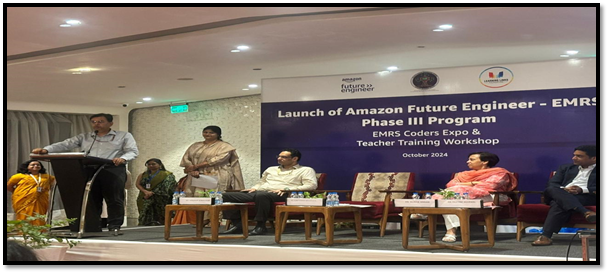
- 23 Oct 2024
In News:
- The National Education Society for Tribal Students (NESTS) launched the third phase of the Amazon Future Engineer Program in 50 Eklavya Model Residential Schools (EMRS).
- Schools involved are spread across Andhra Pradesh, Gujarat, Karnataka, Madhya Pradesh, Odisha, Telangana, and Tripura.
Program Focus Areas:
- Emerging Technologies: The third phase introduces tribal students to key areas like:
- Blockchain technology
- Artificial Intelligence (AI)
- Coding and block programming
- The program is designed to equip students with skills in computer science fundamentals.
Teacher Training:
- A four-day in-person training workshop for teachers was conducted to empower them with the skills necessary to teach emerging technologies effectively.
- Teachers also participated in the EMRS Coders Expo, showcasing top student coding projects from the previous academic year.
Target Audience:
- Students: The program targets students from grades 6 to 9. Class 10 students will participate in project-based virtual sessions aligned with the CBSE AI Skills Curriculum.
- The goal is to enhance students' understanding of computer science and technology and prepare them for STEM (Science, Technology, Engineering, Mathematics) careers.
Program Expansion:
- Future Plans: The program will be rolled out in the next phase to cover a total of 410 EMRSs across India.
- Impact: Over 7,000 students in grades 6 to 8 have already benefited from the program’s introduction to computer science and block programming.
Key Goals of the Program:
- Empower Tribal Students: Provide tribal students with modern technological skills to prepare them for future STEM careers.
- Capacity Building: Equip both teachers and students with the knowledge and skills to engage with emerging technologies.
- Fostering Technological Literacy: The initiative aims to foster technological literacy and modernize education in tribal areas.
Recognition:
- During the event, Top 3 Student Coding Projects were felicitated for their creativity and innovation.
- The Top 3 IT Teachers were also recognized for their dedication in guiding students through the program.
Partnership with Amazon:
- The program is a collaboration between NESTS and Amazon, showcasing a joint effort to improve educational access and technological skill development among tribal students.
India-Pakistan Kartarpur Corridor Agreement Renewal
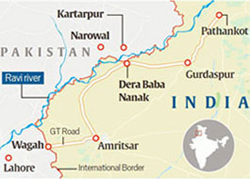
- 23 Oct 2024
In News:
- India and Pakistan have extended the Sri Kartarpur Sahib Corridor Agreement for another five years (until 2029).
- Purpose: The extension ensures uninterrupted operation of the corridor, allowing Indian pilgrims to visit Gurdwara Darbar Sahib Kartarpur in Pakistan.
- Significance: The extension reflects continued cooperation between India and Pakistan, with potential implications for improving bilateral relations.
Background of Kartarpur Corridor:
- Inception: The agreement was first signed on October 24, 2019, to allow visa-free access for Indian pilgrims to Gurdwara Darbar Sahib Kartarpur near Narowal in Pakistan.
- Pilgrimage Details:
- Eligibility: Indian nationals and Overseas Citizens of India (OCI) cardholders can visit the gurdwara on a daily basis.
- Return on Same Day: Pilgrims must return on the same day.
- No Religious Restrictions: Pilgrims of any faith can use the corridor.
- Capacity: Up to 5,000 pilgrims per day can visit the gurdwara.
- Historical Importance: The corridor facilitates the Sikh community's access to a key religious site, located just 4.7 km from the India-Pakistan border.
- Service Charge Dispute:
- Pakistan's Service Fee: Pakistan continues to charge a $20 service fee (approx. ?1,680) per pilgrim, which India has consistently urged Pakistan to waive.
- Pakistan’s Justification: Pakistan maintains the fee to cover the $17 million spent on refurbishing the gurdwara and developing infrastructure for the corridor.
- Geopolitical Context and Timing:
- Recent Developments: The agreement renewal follows External Affairs Minister S. Jaishankar’s visit to Pakistan to attend the Shanghai Cooperation Organization (SCO) Council of Heads of Government meeting.
- Improved Bilateral Relations: Jaishankar’s visit marked the first visit by an Indian foreign minister to Pakistan in nearly nine years, signaling potential thaw in relations, despite the lack of formal bilateral dialogue.
- Strategic and Religious Importance:
- Religious Diplomacy: The Kartarpur Corridor is viewed as a confidence-building measure and a symbol of religious diplomacy, particularly for the Sikh community.
- Historical Legacy: The corridor links Gurdwara Darbar Sahib Kartarpur in Pakistan to Gurdwara Dera Baba Nanak in India, facilitating access to a site of immense religious significance for Sikhs.
- Implications for India-Pakistan Relations:
- No Formal Bilateral Talks: Despite the successful renewal of the agreement, formal talks between India and Pakistan remain suspended, particularly after India’s revocation of Article 370 in Jammu and Kashmir in 2019, which led to a diplomatic freeze.
- Pakistan's Diplomatic Stance: Pakistan had recalled its high commissioner from India in August 2019, and tensions have remained high since then.
- Potential for Future Engagement:
- Diplomatic Channels Opened: The renewal of the Kartarpur agreement and Jaishankar’s visit suggest that diplomatic channels are still open, and there may be scope for further engagement if both sides take steps to address outstanding issues.
IMF retains India’s growth projection at 7% for FY25
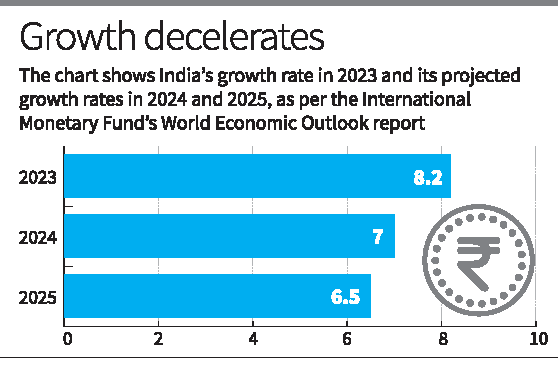
- 23 Oct 2024
In News:
The International Monetary Fund (IMF) has revised India's GDP growth forecast for the fiscal year 2024-25 to 7%, up by 20 basis points from its previous estimate of 6.8%.
- India’s Growth Projections:
- Current Fiscal Year (FY2024-25): India’s GDP growth is projected at 7%, unchanged from June 2024 estimates.
- Next Fiscal Year (FY2025-26): Growth expected at 6.5%.
- Growth Decline from FY2023 (8.2%): The slowdown is attributed to the exhaustion of pent-up demand post-pandemic and the economy returning to its potential.
- Global Economic Growth:
- World Output: Projected global growth at 3.2% in both 2024 and 2025.
- Advanced Economies: U.S. GDP growth revised upward to 2.8% in 2024 and 2.2% in 2025.
- Emerging Markets & Developing Economies: Growth revised upwards, largely due to stronger economic activity in Asia, with China and India being key contributors.
- Global Inflation and Monetary Policy:
- Inflation Decline: Global inflation has decreased from its peak of 9.4% in Q3 2022 to 3.5% projected by end-2025.
- Inflation Outlook: Despite reductions in inflation, price pressures persist in some regions.
- Monetary Policy Tightening: IMF acknowledges challenges due to tight monetary conditions in several economies and their potential impacts on labor markets.
- Global Risks and Challenges:
- Geopolitical Tensions: Ongoing Russia-Ukraine war and escalating conflicts in West Asia (e.g., Lebanon) have increased geopolitical risks, potentially affecting commodity markets.
- Protectionism: Growing protectionist policies worldwide are a risk to global trade and economic stability.
- Sovereign Debt Stress: Debt burdens in several countries could become a source of instability.
- Weak Chinese Economy: Slower-than-expected recovery in China remains a significant concern for global economic growth.
- Monetary Policy Risks: Prolonged tight monetary policies in some countries could impact labor markets and economic recovery.
- IMF’s Policy Recommendations for Medium-Term Growth:
- Monetary Policy Neutrality: Countries should adopt a neutral monetary policy stance to balance growth and inflation control.
- Fiscal Policy Adjustment: Build fiscal buffers after years of loose fiscal policy to ensure stability.
- Structural Reforms: Implement structural reforms to boost productivity and cope with challenges like aging populations, the climate transition, and the need for youth employment.
- India’s Economic Outlook - Key Drivers:
- Rural Consumption Growth: The upward revision of India's FY2024-25 GDP forecast to 7% is driven by improved consumption, especially in rural areas.
- Upward Revisions for 2023: The increased growth forecast also reflects positive carryover effects from India's 8.2% growth in 2023.
- Emerging Asia's Growth: The growth outlook for emerging Asia is supported by India and China, though long-term growth prospects for China are weaker (projected to slow to 3.3% by 2029).
- Global Economic Outlook:
- World Growth Projections: Global growth is expected to remain at 3.2% in 2024 and 3.3% in 2025.
- Diverging Growth Rates: Growth across economies is converging as output gaps close, particularly in advanced economies (e.g., U.S. labor market cooling, euro area recovery).
Z-Morh Tunnel Project in Kashmir
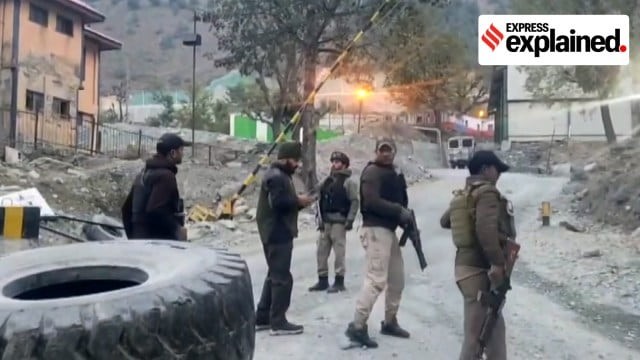
- 22 Oct 2024
In News:
Seven people were killed in Jammu and Kashmir when suspected militants targeted the workers of infrastructure company APCO Infratech, which is constructing the Z-Morh tunnel on the Srinagar-Sonamarg highway. This is the first militant attack on a key infrastructure project in Jammu and Kashmir. In the past, militants have not targeted such infrastructure projects in the region.
What is the Z-Morh Tunnel?
- Length: 6.4 kilometers
- Connection: Links Sonamarg (a popular tourist destination) with Kangan town in central Kashmir’s Ganderbal district.
- Construction Site: Located near Gagangir village, ahead of Sonamarg.
- Naming: The tunnel gets its name from the Z-shaped road near the construction site.
Importance of the Z-Morh Tunnel
- All-Weather Connectivity: The tunnel is crucial for year-round access to Sonamarg, particularly in the winter when the road is often blocked by snow avalanches.
- Location: Situated at 8,500 feet above sea level, the tunnel provides a safe, all-weather route for tourists and locals, especially during winter months when access to Sonamarg is typically limited.
Strategic Importance
- Part of Zojila Tunnel Project:
- The Z-Morh tunnel is integral to the larger Zojila tunnel project, which aims to provide all-weather connectivity from Srinagar to Ladakh.
- The Zojila Tunnel, under construction at an altitude of around 12,000 feet, will connect Sonamarg (Kashmir) to Drass (Ladakh) and is expected to be completed by December 2026.
- Military and Strategic Significance:
- The Z-Morh tunnel is crucial for rapid military mobilization between Srinagar, Kargil, Leh, and Drass regions.
- It ensures quick access for military personnel to the Ladakh border, particularly in areas of heightened security like Siachen Glacier and the Turtuk sub-sector (on the Pakistan border).
- The tunnel will reduce dependence on air transport for troop and supply movements to forward areas, leading to cost savings and extended aircraft lifespan.
The case for a nature restoration law in India

- 22 Oct 2024
In News:
The Nature Restoration Law (NRL), which was enacted by the European Union (EU), is an inspiring model from which India can draw points to tackle its growing environmental crises.
Background of the NRL in the EU
- The Nature Restoration Law (NRL) was enacted by the European Union (EU) to restore ecosystems and combat biodiversity loss.
- Adopted on June 17, 2024, by the EU’s Environmental Council.
- Key objectives:
- Restore 20% of EU’s land and sea areas by 2030.
- Achieve full restoration of all ecosystems by 2050.
- Part of the EU’s Biodiversity Strategy for 2030 and European Green Deal.
- Target Areas:
- Forests, agricultural lands, rivers, urban spaces.
- Restoration measures include:
- 25,000 km of free-flowing rivers.
- Planting 3 billion trees by 2030.
- Global Impact: NRL is a critical tool in reversing Europe’s biodiversity loss, where 80% of habitats are in poor condition.
Environmental Crisis in India
- Land Degradation:
- 29.7% of India’s total geographical area is affected by land degradation (as per ISRO’s Desertification and Land Degradation Atlas, 2018-19).
- 97.85 million hectares of land degraded, with a significant increase since 2003-05.
- Major desertification hotspots in Gujarat, Karnataka, Maharashtra, and Rajasthan.
- Desertification: A growing concern, affecting 83.69 million hectares in 2018-19.
- Ongoing Efforts:
- Green India Mission, Pradhan Mantri Krishi Sinchayee Yojana, and National Afforestation Programme have had positive effects.
- Integrated Watershed Management Programme is the second-largest watershed programme globally.
Need for a Comprehensive Nature Restoration Law in India
- The scale of India’s environmental challenges requires a comprehensive nature restoration law similar to the EU’s NRL.
- The law should have legally binding targets to restore degraded landscapes and ensure ecosystem sustainability.
Key Features of an Indian Nature Restoration Law
- Restoration Targets:
- 20% of degraded land to be restored by 2030.
- Full restoration of ecosystems (forests, wetlands, rivers, agricultural lands, urban spaces) by 2050.
- Wetland Restoration:
- Target restoring 30% of degraded wetlands by 2030.
- Priority wetlands like Sundarbans and Chilika Lake play critical roles in biodiversity and carbon sequestration.
- Biodiversity in Agriculture:
- Promote agroforestry and sustainable agriculture practices.
- Use biodiversity indicators (e.g., butterfly or bird index) to monitor progress.
- River Restoration:
- Focus on free-flowing rivers such as the Ganga and Yamuna.
- Address pollution, obstructions, and ecosystem damage in major rivers.
- Urban Green Spaces:
- Ensure no net loss of urban green spaces.
- Promote urban forests in cities like Bengaluru and Delhi, where urban heat islands and air quality degradation are prominent.
Economic and Social Benefits of Ecosystem Restoration
- Global Economic Impact:
- Nature restoration could generate $10 trillion annually by 2030 (World Economic Forum estimate).
- Benefits for India:
- Agricultural Productivity: Restoring degraded land will enhance farm productivity.
- Water Security: Improved land restoration will contribute to better water availability.
- Job Creation: Millions of rural jobs could be created through ecosystem restoration efforts.
- Contributing to SDGs:
- The law would help India meet SDG 15 (sustainable management of forests, combating desertification).
- Climate Change Mitigation:
- Restoring ecosystems can help India enhance its carbon sinks, which is crucial for meeting Paris Agreement targets.
- Degraded lands lose their capacity to absorb carbon dioxide, contributing to global warming.
Caenorhabditis elegans (C. elegans)
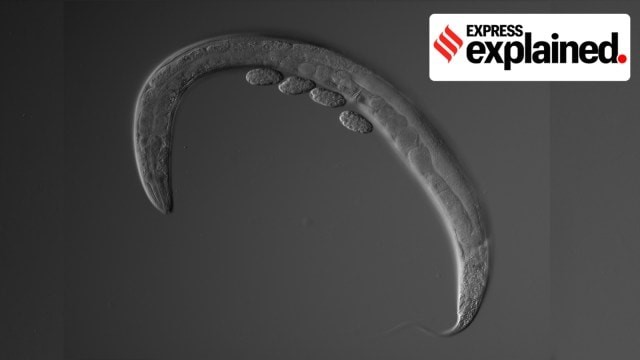
- 22 Oct 2024
In News:
The tiny nematode Caenorhabditis elegans (C. elegans) has played an outsized role in scientific discovery, contributing to four Nobel Prizes over the years.
Key Discoveries from C. elegans Research
- C. elegans and Cellular Processes:
- The worm has helped scientists understand programmed cell death (apoptosis), a vital process in development and disease. This work contributed to the 2002 Nobel Prize in Physiology or Medicine, addressing how cells are instructed to kill themselves and how this process goes awry in conditions like AIDS, strokes, and degenerative diseases.
- Gene Silencing and RNA Interference:
- In 2006, a Nobel Prize was awarded for the discovery of gene silencing via RNA interference (RNAi), a process first explored using C. elegans. This discovery led to the development of a new class of RNA-based drugs.
- Cellular Imaging Techniques:
- In 2008, C. elegans contributed to breakthroughs in cellular imaging, as its use helped invent cellular “lanterns” that allowed scientists to visualize the inner workings of cells, earning a Chemistry Nobel.
- Gary Ruvkun’s 2024 Nobel:
- Gary Ruvkun’s Nobel Prize in Physiology or Medicine in 2024 was the fourth in a series of Nobel recognitions stemming from C. elegans research, reinforcing its role in fundamental biological discoveries.
Key Facts About Caenorhabditis elegans (C. elegans):
- Size: 1 millimeter long.
- Life Cycle: Completes in 3-5 days.
- Cell Count: 959 cells.
- Genome: First multicellular organism to have its full genome sequenced in 1998.
- Sexual Reproduction: Hermaphroditic (self-fertilizing) and male.
- Scientific Role: Used to study genetics, developmental biology, neuroscience, and cell biology.
- Nobel Prize Contributions: Four Nobel Prizes, including those in Physiology, Medicine, and Chemistry, for advancements in cell death, gene silencing, and imaging.
IAEA’s 2024 Climate Change and Nuclear Power Report
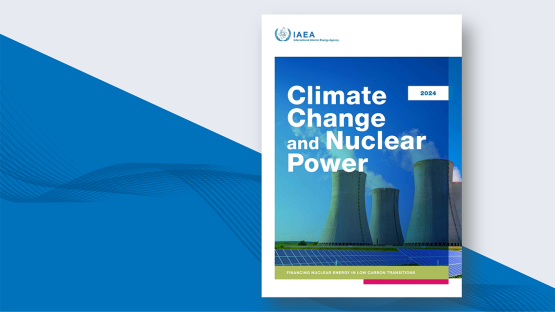
- 22 Oct 2024
In News:
- The 2024 edition of the IAEA’s Climate Change and Nuclear Power report has been released, highlighting the need for a significant increase in investment to achieve goals for expanding nuclear power.
- The new report was launched last week on the margins of the Clean Energy Ministerial (CEM) in Brazil.
Key Highlights:
- Nuclear Power's Role in Climate Change Mitigation:
- Nuclear energy is gaining global interest as nations seek to enhance energy security and decarbonize economies.
- To meet net-zero emissions by 2050, nuclear power is projected to play a pivotal role, with a projected capacity increase of 2.5 times the current level by mid-century in the IAEA's high case scenario.
- Investment Needs for Nuclear Expansion:
- Annual investment required to meet the IAEA's high case scenario (2050 nuclear capacity) is USD 125 billion, a significant increase from USD 50 billion annually from 2017-2023.
- If the aspirational goal to triple nuclear capacity (as pledged by over 20 countries at COP28) is to be met, USD 150 billion annually would be necessary.
- Challenges in Financing: Upfront capital for nuclear power plants is expensive, posing challenges, especially in market-driven economies and developing countries.
- Private Sector and Multilateral Support:
- The private sector will need to play a larger role in financing nuclear projects.
- The IAEA is engaging with multilateral development banks to improve financing options for developing countries to invest in nuclear energy.
- Private finance initiatives: In September 2024, 14 major financial institutions signaled readiness to help fund nuclear newbuild projects.
- Nuclear Financing at Clean Energy Ministerial (CEM):
- The IAEA report was launched during the 15th CEM in Brazil, a high-level forum for advancing clean energy technologies.
- Key stakeholders from Brazil, the IAEA, the International Energy Agency (IEA), and the U.S. discussed strategies for securing nuclear power financing, especially in the context of COP29 (2024) where clean energy financing will be a key focus.
- Nuclear Energy in the EU’s Sustainable Financing:
- The EU taxonomy for sustainable activities now includes nuclear power, facilitating the issuance of green bonds for nuclear projects in Finland and France (2023).
- EDF received €4 billion in green bonds and around €7 billion in green loans (2022-2024).
- Investment in Nuclear Power:
- To meet global climate goals, nuclear power capacity must increase by 1.8 times by 2035.
- Effective financing mechanisms are crucial to scale up nuclear power and develop the workforce and supply chains needed for the energy transition.
- Policy Reform and International Partnerships:
- The report advocates for policy reforms and international partnerships to bridge the financing gap and accelerate nuclear power deployment, particularly in emerging markets and developing economies.
- Focus on technologies such as small modular reactors (SMRs), which could play a role in the energy transition.
- Key Areas to Support Nuclear Growth:
- Robust regulatory frameworks and new delivery models are essential to unlock investments.
- Development of skilled labor and effective stakeholder engagement is crucial for the expansion of nuclear energy.
- Energy System Modelling and Planning:
- The IAEA’s energy system modelling tools assist countries like Brazil in planning nuclear power projects, including cost analyses for electricity generation and financing strategies.
Role of the International Atomic Energy Agency (IAEA):
- Mandate: The IAEA is the leading international body for promoting the safe, secure, and peaceful use of nuclear energy and technologies.
- Functions:
- Nuclear safeguards: Ensuring nuclear activities remain peaceful and preventing the diversion of nuclear materials for weapons purposes.
- Assisting member states with technical support, knowledge sharing, and strengthening nuclear safety and security.
- The IAEA also supports capacity-building and emergency response in case of nuclear or radiological incidents.
- Structure:
- The IAEA General Conference is made up of all 178 member states, meeting annually to approve budgets and policies.
- The Board of Governors (35 members) meets several times a year to oversee the agency's activities and appointments.
- Headquarters: Vienna, Austria
- The IAEA is part of the United Nations family, reporting to both the UN General Assembly and the Security Council.
Egypt becomes 2nd country in 2024 to be declared ‘malaria-free’
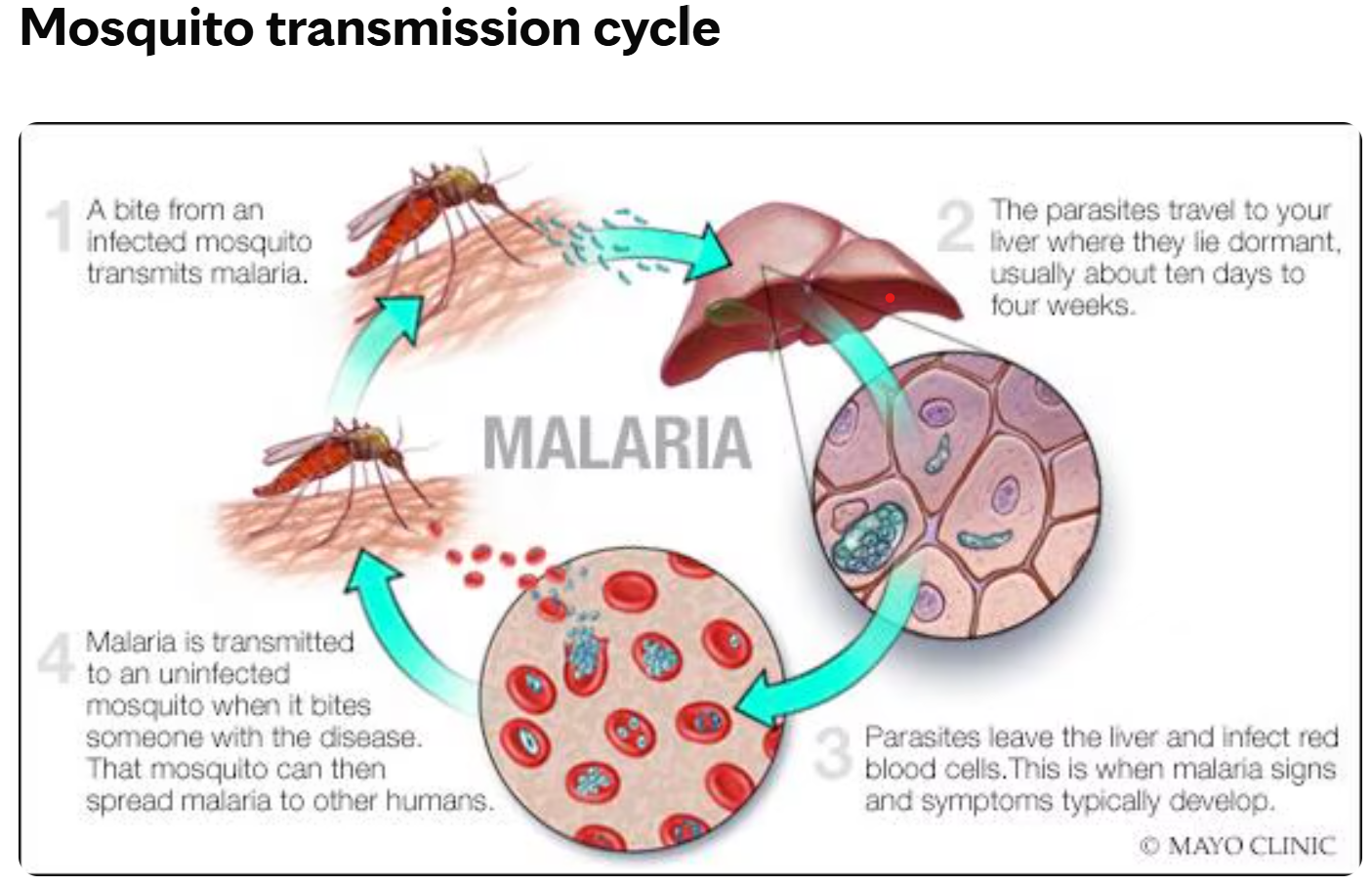
- 22 Oct 2024
In News:
Egypt was officially declared ‘malaria-free’ by the World Health Organization (WHO).
Key Highlights:
- Egypt became the second country (after Cabo Verde) to be certified malaria-free in 2024.
- It is the fifth African country to achieve this milestone, joining Morocco, UAE, and Cabo Verde in the malaria-free list.
- WHO Certification Criteria:
- A country is certified malaria-free if it can prove the Anopheles mosquito-borne malaria transmission chain has been broken for at least three years.
- The country must also have the capacity to prevent the re-establishment of transmission.
- About Malaria:
- Malaria is an acute febrile illness caused by Plasmodium parasites, transmitted through the bites of infected female Anopheles mosquitoes.
- It is a life-threatening disease primarily found in tropical countries.
- Symptoms include fever, headache, and chills, which can be mild and difficult to diagnose.
- Prevention mainly involves vector control interventions, and treatment involves early diagnosis and use of antimalarial drugs.
Russia's Izdeliye 305 (LMUR) Missile
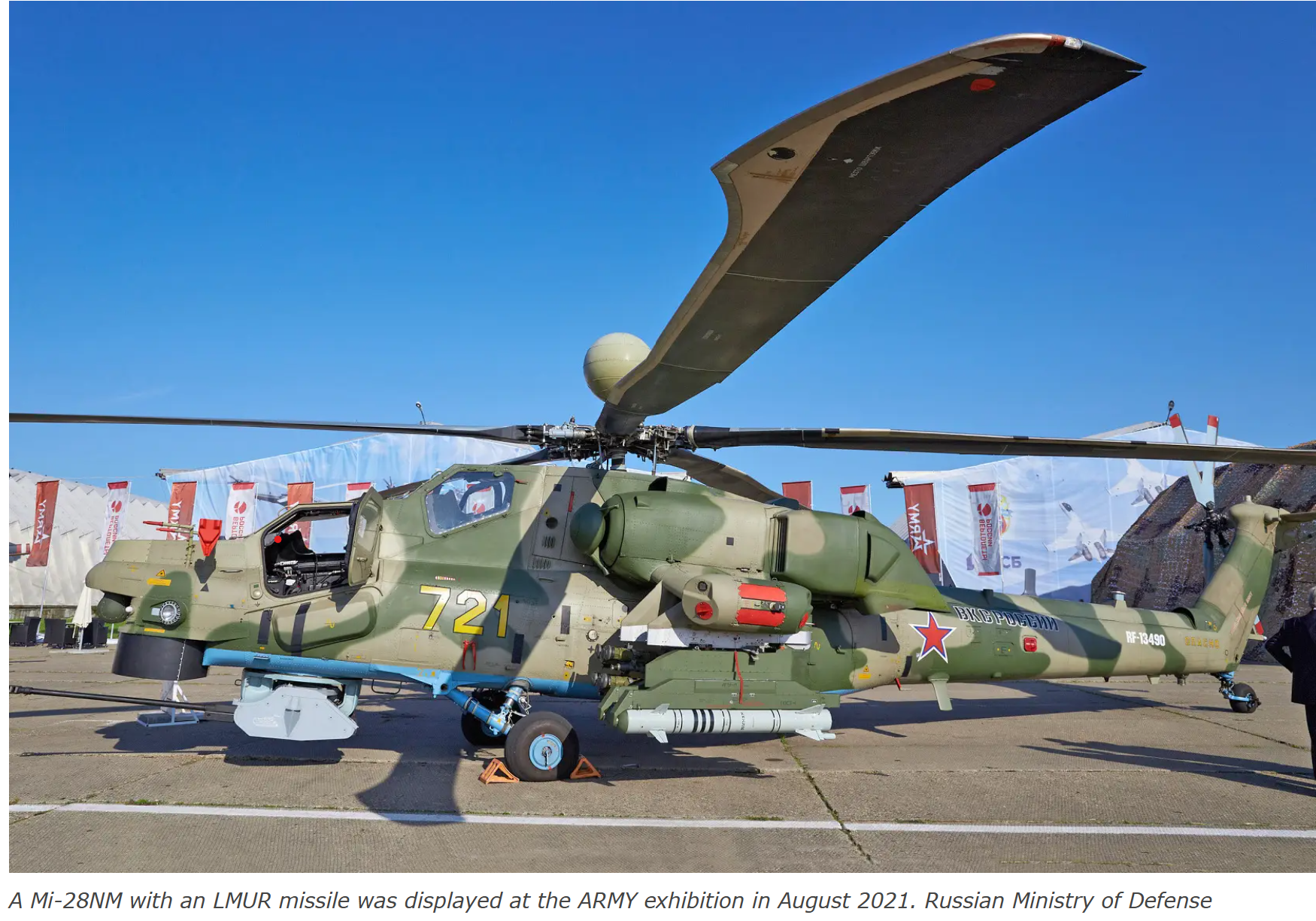
- 21 Oct 2024
In News:
Russian state corporation Rostec has claimed that its Light Multipurpose Guided Rocket, also known as Izdeliye 305 or “Product 305,” has demonstrated remarkable resistance to jamming and interference on the battlefield in Ukraine.
Missile Overview
- Name: Izdeliye 305 (Product 305), also known as LMUR (Light Multipurpose Guided Rocket)
- Primary Use: Deployed by Russia’s Mi-28NM and Ka-52M attack helicopters.
- Function: Designed to target and destroy armored vehicles, fortifications, pillboxes, and watercraft with high precision.
Key Features
- Sniper-Like Accuracy: The missile is touted for its exceptional precision in targeting, making it one of Russia’s most successful guided weapons.
- Resistance to Jamming: The missile’s control channel has shown remarkable resistance to enemy electronic warfare (EW) systems, making it effective even in contested environments.
- No instances of the missile's control channel being suppressed during the ongoing Ukraine conflict.
- Versatile Guidance Systems: The missile operates in several modes:
- Fire-and-Forget: The missile locks onto the target before launch and operates autonomously post-launch.
- Remote Control Mode: The operator guides the missile to the target after it locks onto coordinates and transmits live imagery to the operator’s screen.
- Inertial + Homing Mode: The missile initially flies inertially toward target coordinates, then activates its homing system for final target guidance.
- High Explosive Warhead: Equipped with a 25-kg high-explosive fragmentation warhead, the LMUR is effective against a variety of targets.
Technical Specifications
- Weight: 105 kg (231 lbs)
- Range: Up to 9 miles, double the range of traditional Russian anti-tank missiles, providing the tactical advantage of engaging from beyond line-of-sight.
- Warhead: 25 kg high-explosive fragmentation for effective target destruction.
- Guidance: A combination of inertial navigation, satellite positioning, thermal imaging, and a two-way communication channel for real-time control.
Deployment and Use
- Helicopter Integration: Primarily used on Mi-28NM and Ka-52M attack helicopters, and also on the Mi-8MNP-2 for special operations.
- Combat Experience:
- The missile was actively used in Ukraine where it played a key role in countering Ukraine’s NATO-backed counteroffensive operations.
- It was previously tested in Syria against various targets, showcasing its capabilities before full operational deployment in 2022.
Significance in Ukraine Conflict
- Impact on Ukrainian Forces: The missile’s long range and resistance to EW have made it a critical component of Russia’s aerial operations, hampering Ukraine’s battlefield progress, particularly against heavily fortified positions and NATO-backed counteroffensive efforts.
Strategic Advantage: The missile’s ability to engage targets from a distance while evading jamming attempts gives it a significant edge in modern warfare.
National Water Awards 2023

- 21 Oct 2024
In News:
The Hon’ble President of India Smt. Droupadi Murmu will confer the 5th National Water Awards 2023 on October 22nd 2024 at Vigyan Bhawan, New Delhi.
Organizing Body:
- Ministry: Ministry of Jal Shakti
- Department: Department of Water Resources, River Development, and Ganga Rejuvenation (DoWR, RD & GR)
- Purpose: To recognize and honor individuals, organizations, and bodies that have made significant contributions to water conservation and management.
Award Categories
- Best State
- Best District
- Best Village Panchayat
- Best Urban Local Body
- Best School or College
- Best Industry
- Best Water User Association
- Best Institution (other than school or college)
- Best Civil Society Organization
Winners
- Best State:
- 1st Prize: Odisha
- 2nd Prize: Uttar Pradesh
- 3rd Prize (joint): Gujarat & Puducherry
- Other Awards: Winners in the remaining categories have been recognized, with citations, trophies, and cash prizes provided in certain categories.
Objectives of the National Water Awards
- Promote Water Conservation: Raise awareness about the importance of water and encourage effective water usage practices.
- Recognize Efforts: Celebrate the work of individuals, institutions, and organizations contributing to the government’s vision of a ‘Jal Samridh Bharat’ (Water-rich India).
- National Campaign: Under the guidance of Hon’ble Prime Minister, the Ministry of Jal Shakti has been working to spread awareness on water management and conservation through extensive national campaigns.
History and Background
- The National Water Awards (NWAs) were launched in 2018 by the DoWR, RD & GR to foster awareness and action on water-related issues.
- Awards were given for 2019, 2020, and 2022, but there were no awards in 2021 due to the COVID-19 pandemic.
- The awards aim to inspire best practices in water usage, conservation, and management across India, involving government bodies, industries, communities, and civil society.
Significance
- The National Water Awards serve as a platform to recognize the innovative initiatives taken by various stakeholders in addressing water challenges.
The awards contribute to furthering the government’s mission of achieving sustainable water management practices across the nation.
Funga Taxonomic Kingdom
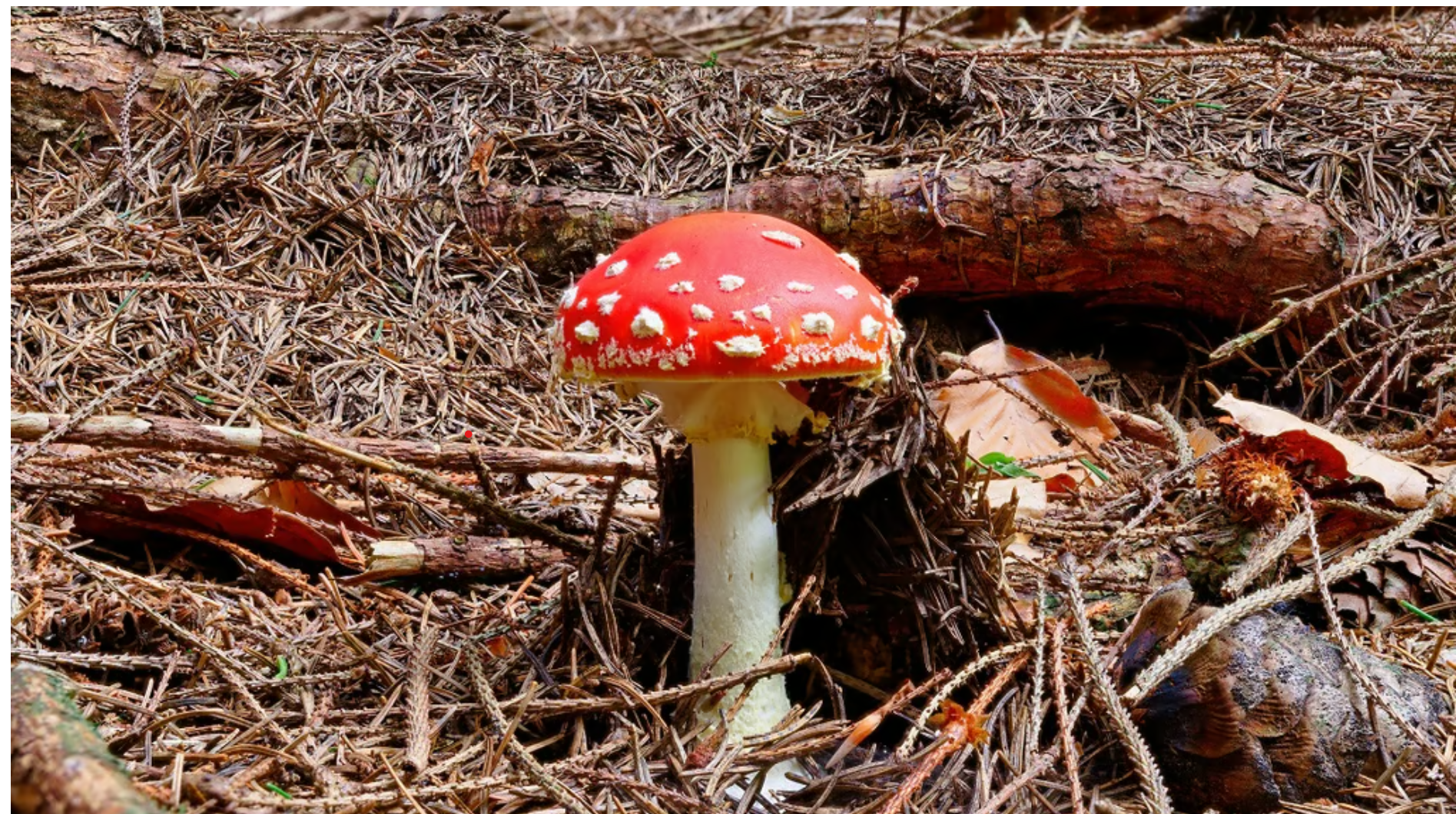
- 21 Oct 2024
In News:
- Chile and the United Kingdom have prepared a proposal to recognize fungi as an independent kingdom, termed "Funga", alongside flora (plants) and fauna (animals).
- This will be presented at the 16th Conference of Parties (COP16) of the UN Convention on Biological Diversity (CBD), to be held in Cali, Colombia in October 2024.
- Why Funga?
- Fungi (e.g., mushrooms, moulds, yeast, lichen) play crucial ecological roles, but have historically been overlooked in conservation strategies.
- Fungi contribute significantly to decomposition, forest regeneration, carbon sequestration, and the global nutrient cycle.
- The recognition aims to strengthen fungal conservation by integrating fungi into global legislation and policies.
- Ecological Importance of Fungi:
- Decomposition: Fungi break down organic matter, facilitating nutrient recycling in ecosystems.
- Symbiotic Relationships: Many fungi form crucial symbiotic relationships with plants (e.g., mycorrhizal associations) and animals.
- Climate Mitigation: Boreal forest fungi absorb large amounts of carbon through symbiosis with plants, playing a role in mitigating climate change.
- Pollution Remediation: Fungi can help clean polluted soils by breaking down toxins.
- Food Production: Fungi are essential for producing common foods like bread, cheese, wine, beer, and chocolate.
- Health: Fungi produce antibiotics (e.g., penicillin) and aid in mammalian digestion.
- Scientific Recognition:
- In August 2021, the International Union for Conservation of Nature (IUCN) recognized fungi as one of the three kingdoms of life, alongside plants and animals.
- The 3F initiative (Flora, Fauna, and Funga), led by Giuliana Furci, aims to promote the international recognition and protection of fungi.
- Diversity and Research Gaps:
- Only 8% of the estimated 2.2 to 3.8 million fungal species have been formally described.
- Approximately 2,000 new fungal species are discovered annually, indicating the vast underexplored diversity of fungi.
- Threats to Fungi:
- Fungi face significant threats from deforestation, climate change, pollution, overharvesting, and fungicide use.
- These threats disrupt the symbiotic relationships fungi share with plants and animals, leading to ecosystem instability.
- Nitrogen enrichment in soils and habitat loss further exacerbate these risks.
Key Facts About Fungi
- Biological Characteristics:
- Fungi are eukaryotic organisms with rigid cell walls made of chitin (distinct from the cellulose found in plant cell walls).
- They are heterotrophic, meaning they absorb nutrients from their environment through external digestion (secreting enzymes to break down organic material before absorption).
- Reproductive Strategies:
- Fungi reproduce both asexually (via spores) and sexually, ensuring their proliferation across ecosystems.
- Growth Form:
- Fungi grow primarily as mycelium, a network of hyphae (filamentous structures) that helps in nutrient absorption and environmental interaction.
- Symbiotic Relationships:
- Fungi form mycorrhizal relationships with plants, enhancing nutrient exchange, and lichen associations with algae, providing mutual benefits in extreme environments.
WHO Approves First Mpox Diagnostic Test for Emergency Use

- 21 Oct 2024
In News:
- The World Health Organization (WHO) has listed the Alinity m MPXV Assay under its Emergency Use Listing (EUL) procedure.
- The test, developed by Abbott Molecular Inc., will help expand diagnostic capacity in countries experiencing Mpox outbreaks, particularly in Africa.
- Importance of Early Diagnosis:
- Early diagnosis enables timely treatment and virus control.
- It is critical for improving Mpox surveillance, especially in areas with high transmission.
Current Mpox Situation
- Global Context:
- Over 30,000 suspected cases reported in Africa in 2024.
- India has reported 30 cases since the WHO declared Mpox a global health emergency in August 2024.
- Testing Capacity:
- Limited testing capacity and delays in confirming cases have been a significant barrier to controlling the spread, especially in Africa.
- In India, 35 laboratories are currently equipped to test suspected Mpox cases.
Mpox Diagnostic Test Details
- Alinity m MPXV Assay:
- A real-time PCR test that detects monkeypox virus (MPXV) DNA from skin lesion swabs.
- Used by trained clinical laboratory personnel proficient in PCR techniques.
- Helps confirm suspected Mpox cases from pustular or vesicular rash samples.
- WHO's Role:
- The Emergency Use Listing (EUL) procedure accelerates the availability of life-saving products during public health emergencies.
- WHO aims to increase access to quality-assured diagnostics in regions most affected by Mpox.
About Mpox
- What is Mpox?
- Zoonotic disease caused by the monkeypox virus, part of the Orthopoxvirus genus (family Poxviridae).
- Closely related to smallpox, but generally less severe in humans.
- Transmission:
- Spread via physical contact with infected lesions, body fluids, or contaminated materials.
- Can also spread through animal bites, or activities like hunting, skinning, or eating infected animals.
- Two Clades:
- Clade I: Predominantly in Central and East Africa.
- Clade II: More common in West Africa; linked to the 2022 outbreak.
- Symptoms:
- Rashes, blisters, fever, sore throat, headache, muscle aches, back pain, swollen lymph nodes.
- Lesions typically scab over as they heal.
- Most people experience mild symptoms, but children, pregnant women, and immunocompromised individuals are at greater risk.
Treatment and Prevention
- No Specific Cure:
- Supportive care (e.g., pain relief, hydration) is recommended.
- In some cases, antivirals like tecovirimat (developed for smallpox) may be used under exceptional circumstances.
- Vaccination:
- Three smallpox vaccines are recommended for at-risk individuals: MVA-BN, LC16, and OrthopoxVac.
- Mass vaccination is not recommended by WHO.
New 'Lady Justice' Statue in the Supreme Court
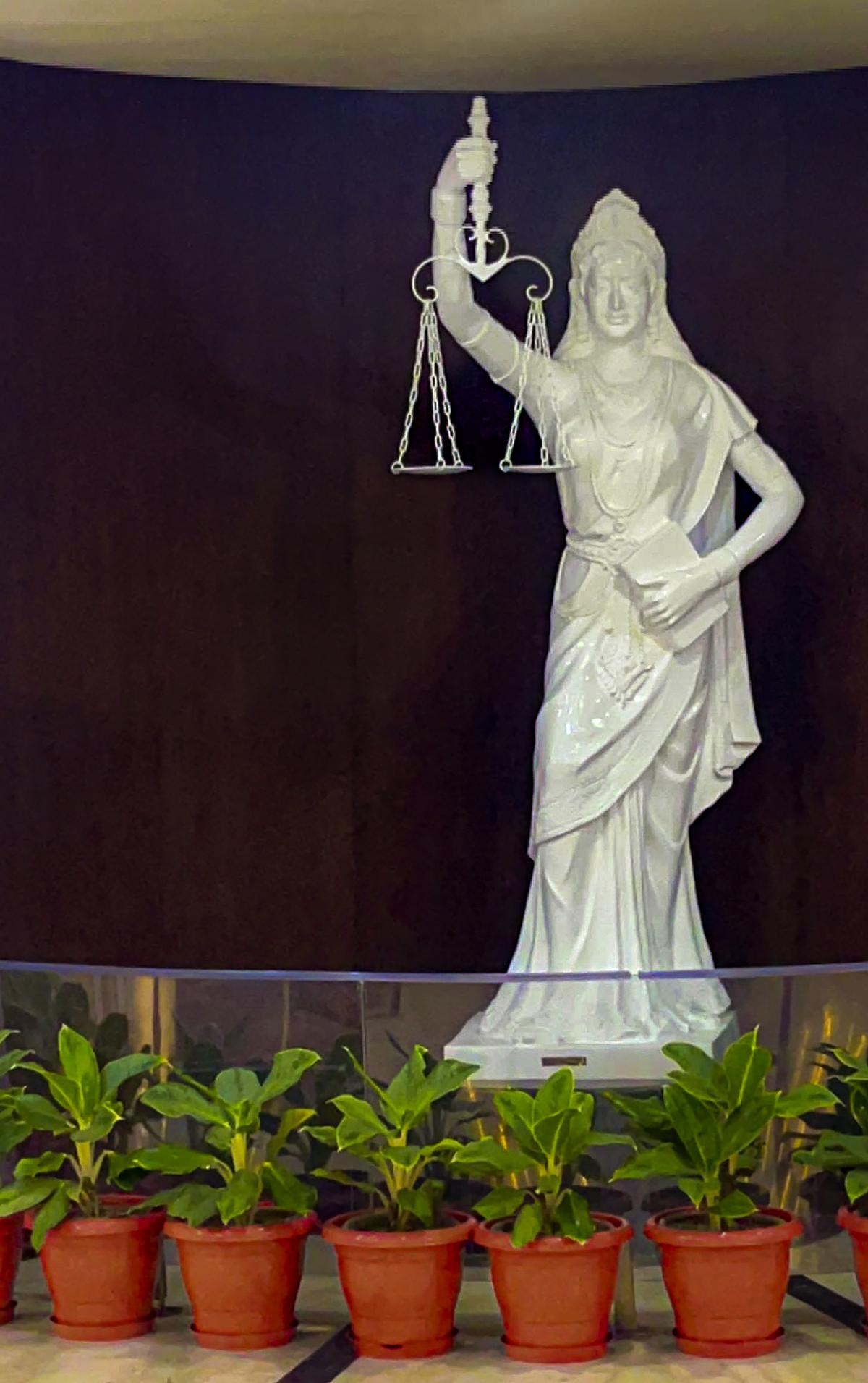
- 21 Oct 2024
In News:
Recently, the Chief Justice of India unveiled the ‘new lady justice’ statue in the Supreme Court premises that replaced the ‘original lady justice’. The new statue is clothed in a saree, has shed the blindfold and holds scales on one hand and the Indian Constitution on the other.
Symbolism of the New Statue
- Design:
- Clad in a saree, symbolizing Indian tradition.
- No blindfold, with open eyes, conveying that justice "sees" all equally.
- Holds the Indian Constitution in one hand and scales of justice in the other.
- Significance:
- Aimed at decolonization of the judiciary, replacing colonial symbols with representations that reflect India's identity and values.
- The open eyes represent that justice is not blind, addressing social diversity, discrimination, and constitutional provisions for upliftment of underprivileged sections.
- The Constitution in place of a sword symbolizes its supremacy in India’s legal system.
Historical Context of Lady Justice
- Origin:
- Rooted in Roman mythology; Justitia, the goddess of justice, symbolized by scales, sword, and a blindfold.
- Blindfold added in the Renaissance as a satire on corrupt legal systems but later reinterpreted as a symbol of impartiality, representing justice without bias, irrespective of wealth, power, or social status.
- Scales: Balance in weighing both sides before judgment.
- Sword: Authority and power of law, to protect and punish.
Rationale for Change in India
- Colonial Legacy:
- The 'lady justice' symbol became prominent during British rule, reflecting colonial influence in India's legal system.
- Decolonial Intent:
- The shift from Western attire (robe) to a saree connects the statue to Indian traditions.
- Open eyes emphasize that Indian justice is not blind and addresses social inequalities directly.
- The Constitution's prominence underscores its role as the supreme guiding document in the Indian legal system.
Current Judicial System Challenges
- Pending Cases:
- Over 5 crore cases are pending across courts in India.
- Supreme Court recently dismissed a petition for a three-year timeline to resolve the backlog, citing the overwhelming volume of cases.
- Urgent Reforms Needed:
- Finalize the Memorandum of Procedure:
- Still pending after 8 years; addresses transparency and accountability in judicial appointments.
- Representation in Judiciary:
-
- Backward classes, SCs, STs, and minorities are underrepresented in higher judiciary (less than 25%), and women are underrepresented (less than 15%).
- Appointments should reflect India's social diversity.
-
- Vacancies in Courts:
-
- High Courts operate at 60-70% strength, contributing to a massive case backlog of over 60 lakh cases.
- Lower courts have 4.4 crore pending cases; vacancies must be filled by states promptly.
- Priority for Constitutional Cases:
-
- Cases concerning the constitutional validity of laws and individual liberty should be prioritized by the judiciary.
Conclusion
- The new Lady Justice statue is not just a symbolic change but reflects a broader effort to realign India’s judiciary with its social and constitutional values.
- To ensure fair and prompt justice, there is an urgent need to address systemic delays, fill vacancies, and improve diversity in judicial appointments.
- Only then will the judiciary truly embody the principles of impartiality and justice, as represented by the new statue.
COP16 to the Convention on Biological Diversity (CBD)
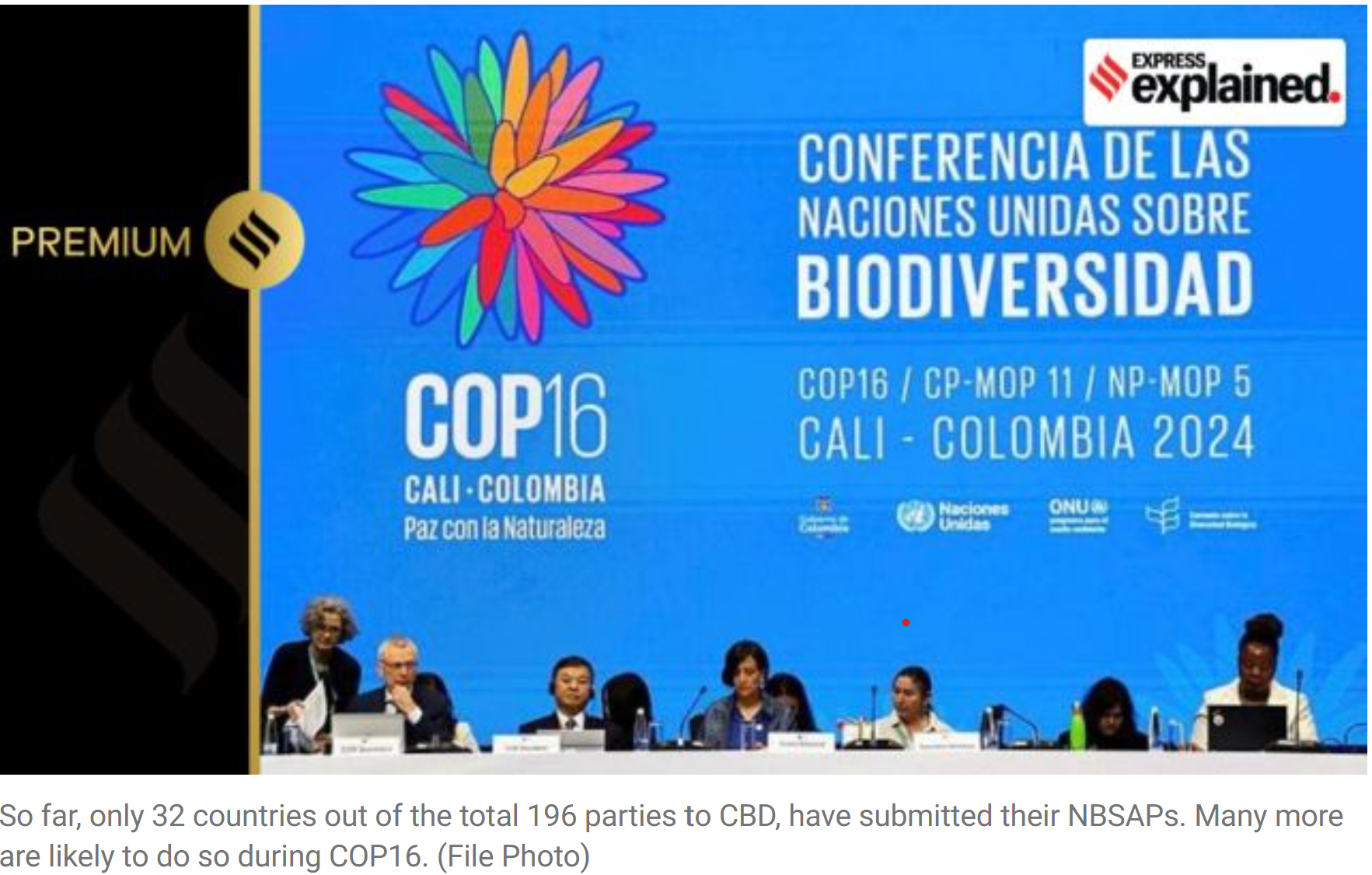
- 20 Oct 2024
In News:
The 16th Conference of the Parties (COP16) to the Convention on Biological Diversity (CBD) will take place in Cali, Colombia, from October 21, 2024. This marks the first gathering since the adoption of the Kunming-Montreal Global Biodiversity Framework (KMGBF) in 2022.
About Convention on Biological Diversity (CBD)
- Adopted in 1992, the CBD is the most comprehensive international treaty focused on biodiversity conservation, the sustainable use of natural resources, and the fair sharing of benefits derived from genetic resources. It has been ratified by 196 countries, making it a key global instrument for biodiversity governance.
Key Objectives of the CBD
- Conservation of Biodiversity: Protecting genetic, species, and ecosystem diversity.
- Sustainable Use of Resources: Ensuring resources are used in a way that does not deplete or degrade biodiversity.
- Fair Sharing of Benefits: Ensuring that benefits from genetic resources are shared equitably with countries of origin.
Notable Frameworks within CBD
- Nagoya Protocol (2010): Establishes a framework for the fair and equitable sharing of benefits from the utilization of genetic resources.
- Cartagena Protocol (2000): Regulates the transboundary movement of living modified organisms (LMOs) resulting from modern biotechnology.
The Kunming-Montreal Global Biodiversity Framework (KMGBF)
- Adoption: The KMGBF was adopted at COP15 in 2022, following the Kunming Declaration.
- Targets: The framework includes 23 targets for 2030 and 4 global goals for 2050, aimed at reversing biodiversity loss and promoting sustainability.
- Notably, the 30x30 Target aims for 30% of the world’s land and oceans to be conserved by 2030. This is a key agenda item at COP16.
- The framework also emphasizes equitable access to genetic resources and the sharing of benefits from their use (Target 13).
Challenges and Issues at COP16
- Benefit-Sharing from Digital Sequence Information (DSI):
- A key issue is the fair sharing of benefits from digital sequence information (DSI) on genetic resources. The adoption of a global mechanism for this issue is still pending, as negotiations between developed and developing countries remain unresolved.
- Developed nations advocate for unrestricted access to genetic materials in exchange for voluntary contributions to a global fund.
- Developing nations seek a more equitable system, aligned with the CBD's principles of fair benefit-sharing.
- A key issue is the fair sharing of benefits from digital sequence information (DSI) on genetic resources. The adoption of a global mechanism for this issue is still pending, as negotiations between developed and developing countries remain unresolved.
- 30x30 Target Progress:
- The 30x30 target, which aims to conserve 30% of land and oceans by 2030, is far from being met:
- 17.5% of land and 8.4% of oceans are currently under protection.
- Concerns persist about the effectiveness of these protected areas, as studies suggest they may not be sufficient for long-term biodiversity conservation.
- The 30x30 target, which aims to conserve 30% of land and oceans by 2030, is far from being met:
- Financial Commitments (Target 19):
- Developed countries have pledged $20 billion annually for biodiversity financing by 2025. However, progress is slow:
- By September 2024, only $8.2 billion (41% of the target) had been committed.
- COP16 will assess whether this target can be met, with further announcements expected.
- Developed countries have pledged $20 billion annually for biodiversity financing by 2025. However, progress is slow:
- Implementation Gaps:
- Countries are required to set national targets aligned with the KMGBF. As of COP16, only 100 parties have submitted their targets, and 30 countries have updated their National Biodiversity Strategies and Action Plans (NBSAPs).
- A significant implementation gap remains in translating these targets into concrete actions.
Focus Areas for COP16
- Strengthening the 30x30 Target:
- COP16 will push for enhanced efforts to meet the 30x30 conservation goal. There is a need for better management and monitoring of protected areas to ensure they contribute to biodiversity preservation.
- Finalizing Benefit-Sharing Mechanism:
- Countries will focus on finalizing the multilateral benefit-sharing mechanism for genetic resources and DSI. The goal is to ensure that countries benefiting from genetic resources share those benefits with the countries of origin, addressing the issue of biopiracy and ensuring equitable access.
- Financial Commitment and Tracking:
- The financial shortfall for biodiversity conservation will be a critical discussion point. Effective monitoring of the biodiversity finance tracker will be needed to ensure that developed countries meet their $20 billion/year commitment.
- Addressing Implementation Gaps:
- There is a need to enhance monitoring and reporting mechanisms, improve national strategies, and align financial support with on-ground conservation efforts.
eShram-One Stop Solution
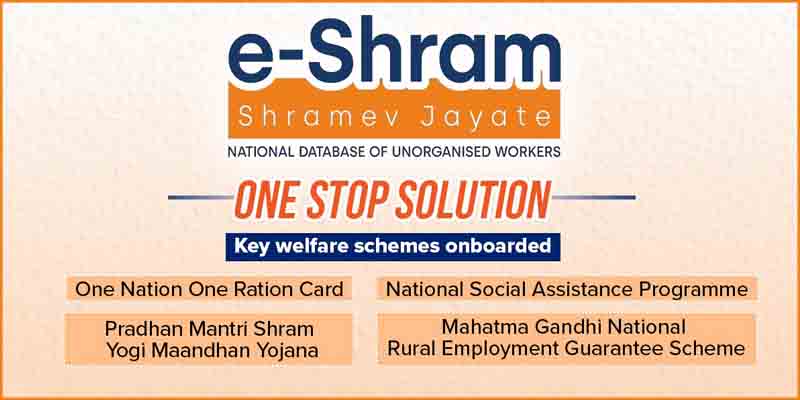
- 20 Oct 2024
In News:
- The ‘eShram-One Stop Solution’ will be launched on 21 October 2024 by the Union Minister of Labour & Employment and Youth Affairs & Sports.
- Objective: To provide easy access to various social security and welfare schemes for unorganized workers in India.
Key Features
- Mediator Platform: The eShram-One Stop Solution will act as an intermediary to facilitate the integration of multiple government schemes for unorganized workers, ensuring efficient access to services and support.
- Information Integration: It will integrate data on beneficiaries across various social security and welfare programs meant for unorganized workers, providing a single point of access.
- Target Group: Aimed at unorganized workers, including daily wage earners, migrants, and others who do not have regular formal employment.
Benefits
- Awareness & Accessibility: The platform will make unorganized workers aware of various government schemes tailored to their needs, helping them access benefits more easily.
- Effective Scheme Implementation: The eShram-One Stop Solution will aid in the identification and implementation of welfare schemes for faster saturation and coverage.
Integration with Existing Schemes
- 12 Integrated Schemes: Currently, 12 social security schemes from different ministries/departments have already been mapped with eShram.
eShram’s Progress So Far
- Launch: eShram was launched on 26 August 2021.
- Achievements: Over 30 crore unorganized workers have been enrolled, highlighting the widespread impact and popularity of the initiative among the target population.
Kala-azar Disease
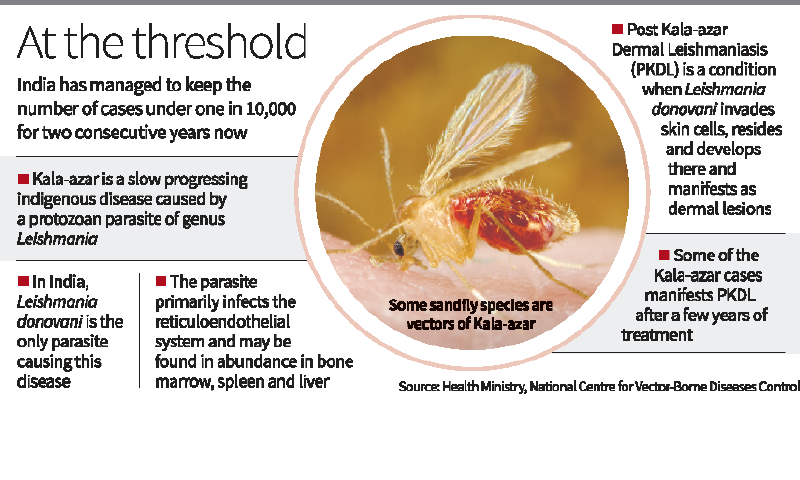
- 20 Oct 2024
In News:
India to seek WHO certification for eliminating disease.
Overview of Kala-Azar (Visceral Leishmaniasis)
- Cause: Kala-azar is caused by the protozoan parasite Leishmania donovani, transmitted by the bite of infected female sandflies (Phlebotomus argentipes in India).
- Symptoms: Includes irregular fevers, weight loss, swelling of the spleen and liver, severe anaemia. If untreated, it is fatal in over 95% of cases.
- Affected Areas: Historically, Bihar, Jharkhand, West Bengal, and parts of Uttar Pradesh report the highest number of cases, with Bihar alone accounting for over 70% of India's cases.
India's Achievement in Kala-Azar Control
- Current Status:
- India has managed to maintain Kala-azar case numbers below 1 per 10,000 population for two consecutive years.
- This meets the WHO's criteria for elimination certification.
- 2023 and 2024 Statistics:
- 2023: 595 cases and 4 deaths.
- 2024 (so far): 339 cases and 1 death.
WHO Certification for Elimination
- WHO's Target: The World Health Organization aims to eliminate Kala-azar as a public health problem by 2030.
- Elimination Criteria: A country can be certified when:
- Local transmission is interrupted for a specified period.
- There is a system in place to prevent re-emergence of the disease.
- Global Context: Bangladesh is the first country to have eliminated Kala-azar, receiving WHO certification in October 2024, after reporting fewer than 1 case per 10,000 people for three consecutive years.
India's Kala-Azar Elimination Strategies
- National Health Policy (2002): Initially set the target to eliminate Kala-azar by 2010, revised multiple times, and is now aiming for 2030.
- Key Strategies:
- Active Case Detection: Identification and treatment of all cases.
- Vector Control: Targeting sandfly breeding grounds through insecticides and environmental management.
- Community Awareness: Educating the public on disease prevention and early diagnosis.
- Improved Surveillance: Ensuring rapid diagnosis and treatment access, including the use of the rK39 diagnostic kit.
- Integrated Vector Management: Combining insecticide spraying with environmental changes to reduce sandfly populations.
Challenges and Areas of Focus
- Root Causes: Persistent issues like poverty, inadequate sanitation, and malnutrition contribute to the spread of Kala-azar, particularly in rural, impoverished areas.
- Long-term Solutions:
- Strengthen vector control and improve sanitation.
- Address socio-economic factors like poverty and displacement.
- Invest in research for vaccines and new treatments.
Public Health Impact and the Way Forward
- Elimination Milestone: If India continues to reduce cases, it will join Bangladesh in eliminating Kala-azar as a public health threat.
- Sustaining Gains:
- Surveillance and quick response to new cases remain critical.
- Expand access to rapid diagnostic tools and effective anti-parasitic treatments.
- Focus on inter-sectoral convergence, integrating efforts from various government sectors, including health, sanitation, and housing.
Naseem-Al-Bahr 2024
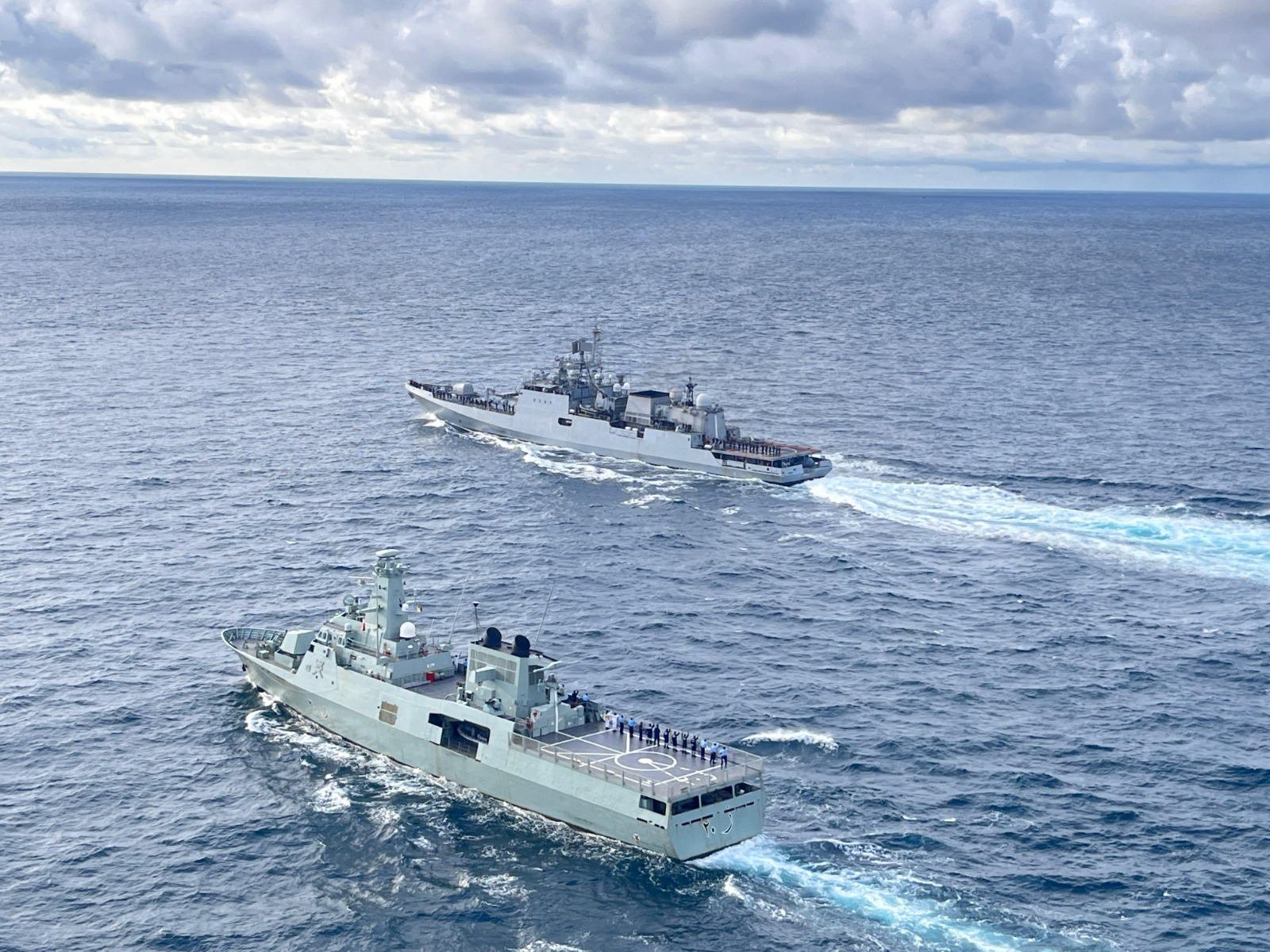
- 20 Oct 2024
In News:
Indo-Oman bilateral naval exercise Naseem-Al-Bahr was held in Goa from October 2024.
Naseem-Al-Bahr Exercise Overview
- Indian and Omani Participants:
- Indian Navy: INS Trikand (warship) and Dornier Maritime Patrol Aircraft.
- Royal Navy of Oman: Vessel Al Seeb.
- Initiation: Launched in 1993, marking a long-standing strategic partnership between India and Oman.
- Structure: The exercise is conducted in two phases:
- Harbour Phase:
- Professional Interactions: Subject Matter Expert Exchanges (SMEE), planning conferences.
- Social & Sports Engagements: Informal activities to foster mutual understanding.
- Sea Phase:
- Naval Operations:
- Gun firings at surface inflatable targets.
- Close-range anti-aircraft firings.
- Replenishment at Sea Approaches (RASAPS).
- Helicopter Operations: INS Trikand’s helicopter performed cross-deck landings and Vertical Replenishment (VERTREP) with RNOV Al Seeb.
- Aircraft Support: Dornier aircraft provided Over-the-Horizon Targeting (OTHT) data to enhance operational coordination.
- Naval Operations:
- Harbour Phase:
Key Highlights of the 2024 Exercise
- Interoperability: The exercise focused on improving operational coordination and enhancing mutual understanding of naval practices.
- Cohesion: The Indian Navy Sea Riders embarked on RNOV Al Seeb to further strengthen the bilateral relationship.
Strategic Significance
- Strengthening Ties: Naseem-Al-Bahr reaffirms the strong strategic relationship between India and Oman.
- Regional Collaboration: This exercise exemplifies India's growing collaboration with like-minded nations in the Indian Ocean Region (IOR).
- Broader Defence Relations:
- Oman is the first GCC country to conduct such bilateral naval exercises with India.
- Both countries also engage in other defence exercises:
- Army: Al Najah.
- Air Force: Eastern Bridge.
Trade Relations Between India and Oman (2022):
- Oil: India is the second-largest market for Oman's crude oil exports, following China.
- Non-oil Exports: India is Oman's fourth-largest market for non-oil exports, after UAE, US, and Saudi Arabia.
- Imports: India is the second-largest source of Oman's imports, following the UAE.
- Ongoing Trade Agreement: Both nations are currently negotiating a trade agreement to further boost bilateral economic cooperation.
Musaned Digital Platform

- 19 Oct 2024
In News:
Saudi Arabia Launches Musaned Digital Platform to Ensure Wage Protection for Foreign Workers.
Key Highlights:
- Purpose of Musaned:
- Musaned is a digital platform launched by Saudi Arabia to ensure wage protection and improve working conditions for foreign workers, particularly those in domestic (household) employment.
- The platform aims to safeguard workers' rights, create a stable working environment, and reduce illegal immigration.
- Coverage:
- The platform benefits foreign workers from 10 African countries (including Sudan, Ethiopia, Kenya) and 9 Asian countries (including India, Bangladesh, Pakistan, Vietnam, the Philippines, and Sri Lanka).
- Key Features:
- Employment Contract Access: Workers can check and track their employment contracts and receive updates via the Musaned labour app.
- Financial Transaction Tracking: The platform monitors financial transactions between employers and foreign workers, ensuring employers meet their contractual obligations.
- Integration with Benefits: Musaned can be linked to contract insurance and health benefits, providing additional protection for workers.
- Objectives:
- Wage Protection: Ensures timely and fair wages for foreign workers.
- Human Rights Protection: Promotes human rights by holding employers accountable for fulfilling their obligations.
- Vision 2030 Alignment: Supports Saudi Arabia’s Vision 2030 by improving the work environment and contributing to legal labor migration.
- Impact:
- The platform is expected to help secure workers’ rights, especially for domestic workers, and provide a more transparent, accountable framework for employment relations in the country.
Musaned is a significant step by Saudi Arabia to enhance the security and welfare of foreign workers, aligning with the Kingdom's broader goals of economic reform and social development under Vision 2030. The platform will provide greater transparency, protect workers’ rights, and contribute to a more regulated and sustainable labor market.
National Green Hydrogen Mission

- 19 Oct 2024
In News:
- The Union Government has sanctioned three pilot projects under the National Green Hydrogen Mission to explore the use of green hydrogen in steel production.
- The initiative aims to demonstrate safe and efficient hydrogen-based steelmaking processes, validate their technical feasibility, and evaluate economic viability for low-carbon steel production.
- Objectives of the Scheme:
- Identify and test advanced technologies for utilizing green hydrogen in the steel sector.
- Demonstrate safe and secure operation of hydrogen-based steel production.
- Validate technical and economic feasibility, contributing to decarbonization of iron and steel manufacturing.
- Pilot Project Components:
-
- 100% Hydrogen-based Direct Reduced Iron (DRI) using vertical shaft furnaces.
- Hydrogen use in Blast Furnace to reduce coal/coke consumption.
- Hydrogen injection in vertical shaft-based DRI units.
-
- Sanctioned Pilot Projects:
- Matrix Gas and Renewables Ltd
- Capacity: 50 tons per day (TPD).
- Consortium Partners: Gensol Engineering Ltd, IIT Bhubaneswar, Metsol AB (Sweden).
- Simplex Castings Ltd
- Capacity: 40 TPD.
- Consortium Partners: BSBK Pvt. Ltd., Ten Eight Investment, IIT Bhilai.
- Steel Authority of India Ltd (SAIL)
- Capacity: 3,200 TPD (Ranchi).
- Financial Support:
- Total Government Funding: ?347 crore for the three projects.
- These pilot projects are expected to be commissioned within the next three years and may serve as a blueprint for scaling up such technologies in India.
- About the National Green Hydrogen Mission:
- Launched: January 4, 2023.
- Total Budget: ?19,744 crore (up to FY 2029-30).
- Primary Goal: Establish India as a global hub for green hydrogen production and export while fostering decarbonization in sectors like steel, mobility, and energy.
- Key Features of the Mission:
- SIGHT (Strategic Interventions for Green Hydrogen Transition):
- Supports domestic manufacturing of electrolysers and promotes the production and use of green hydrogen.
- Expected Outcomes by 2030:
- Green Hydrogen Production: At least 5 million metric tons (MMT) annually.
- Renewable Energy: Addition of 125 GW in renewable energy capacity.
- Investment: Over ?8 lakh crore in green hydrogen technologies.
- Employment: Creation of 6 lakh jobs.
- Reduction in Fossil Fuel Imports: Savings of over ?1 lakh crore.
- GHG Emissions Reduction: Avoidance of nearly 50 MMT of annual greenhouse gas emissions.
- SIGHT (Strategic Interventions for Green Hydrogen Transition):
- Phase-wise Implementation:
- Phase I (2022-26): Focus on demand creation and initial deployment in existing hydrogen-using sectors (like steel and mobility).
- Phase II (2026-30): Expansion to new sectors with a push toward commercialization of green hydrogen.
The National Green Hydrogen Mission aims to significantly decarbonize India’s steel sector and other industries by leveraging hydrogen technology. With ?347 crore allocated for pilot projects in steelmaking, the initiative sets the stage for scalable, low-carbon steel production, contributing to India's clean energy transition and supporting its goal to become a global leader in green hydrogen.
Next Generation Missile Vessels (NGMV)

- 19 Oct 2024
In News:
GE’s LM2500 Marine Engines to Power Indian Navy’s Next Generation Missile Vessels (NGMV)
Key Highlights:
- Engine Selection:
- General Electric’s LM2500 marine gas turbines have been chosen to power the Indian Navy's Next Generation Missile Vessels (NGMV), currently being built by Cochin Shipyard Limited (CSL).
- Project Details:
- Number of Vessels: Six NGMVs are under construction.
- Contract Value: ?9,805 crore, awarded by the Defence Ministry.
- Delivery Schedule: The first deliveries are expected to commence in March 2027.
- Key Components and Suppliers:
- GE Aerospace will deliver six LM2500 engine kits to Hindustan Aeronautics Limited (HAL) for assembly and testing at their Industrial and Marine Gas Turbine Division in Bengaluru.
- GE will also supply the composite base, enclosure, and a full set of auxiliary systems for the gas turbines.
- LM2500 Marine Gas Turbine:
- The LM2500 turbine is known for its reliability and high power output, making it ideal for the NGMV mission.
- Top Speed: 35 knots (64 km/h).
- It is central to the propulsion system, meeting the stealth and power demands of the new missile vessels.
- Capabilities of NGMVs:
- Role: Designed for offensive missions, the NGMVs will be equipped for anti-surface warfare, maritime strike operations, and sea denial.
- Speed & Stealth: Capable of speeds up to 35 knots while maintaining stealth, these vessels will be difficult for enemy ships to detect.
- Weapons: They will carry a variety of anti-surface weapons, including the BrahMos supersonic cruise missile, loitering munitions, unmanned vehicles, and other guided weapons.
- Operational Roles:
- Offensive: The NGMVs will engage in attacking enemy warships, merchant ships, and land-based targets.
- Defensive: They will also be used for local naval defense operations, including the seaward defense of offshore development areas and defending choke points.
- Strategic Importance:
- The NGMVs will significantly enhance India’s maritime strike capability and provide a formidable presence in strategic sea routes, especially in regions like choke points and offshore development areas.
- Cochin Shipyard’s Role:
- After successfully constructing INS Vikrant, India’s first indigenous aircraft carrier, CSL is now focusing on the NGMV project, along with building anti-submarine warfare shallow water crafts for the Indian Navy, currently in various stages of construction.
- Partnerships:
- In 2023, GE Aerospace and HAL signed a Memorandum of Understanding (MoU) to expand their collaboration on marine gas turbines, including assembly, inspection, and testing (AIT) of the LM500 turbines.
- To date, GE Aerospace has delivered 24 marine gas turbine kits to HAL, supporting India’s Make-In-India initiative.
- Global Impact:
- The LM2500 gas turbine is used by 714 vessels globally, reinforcing its reputation for reliability and availability in critical maritime defense systems.
First Chief Minister of J&K UT Takes Charge
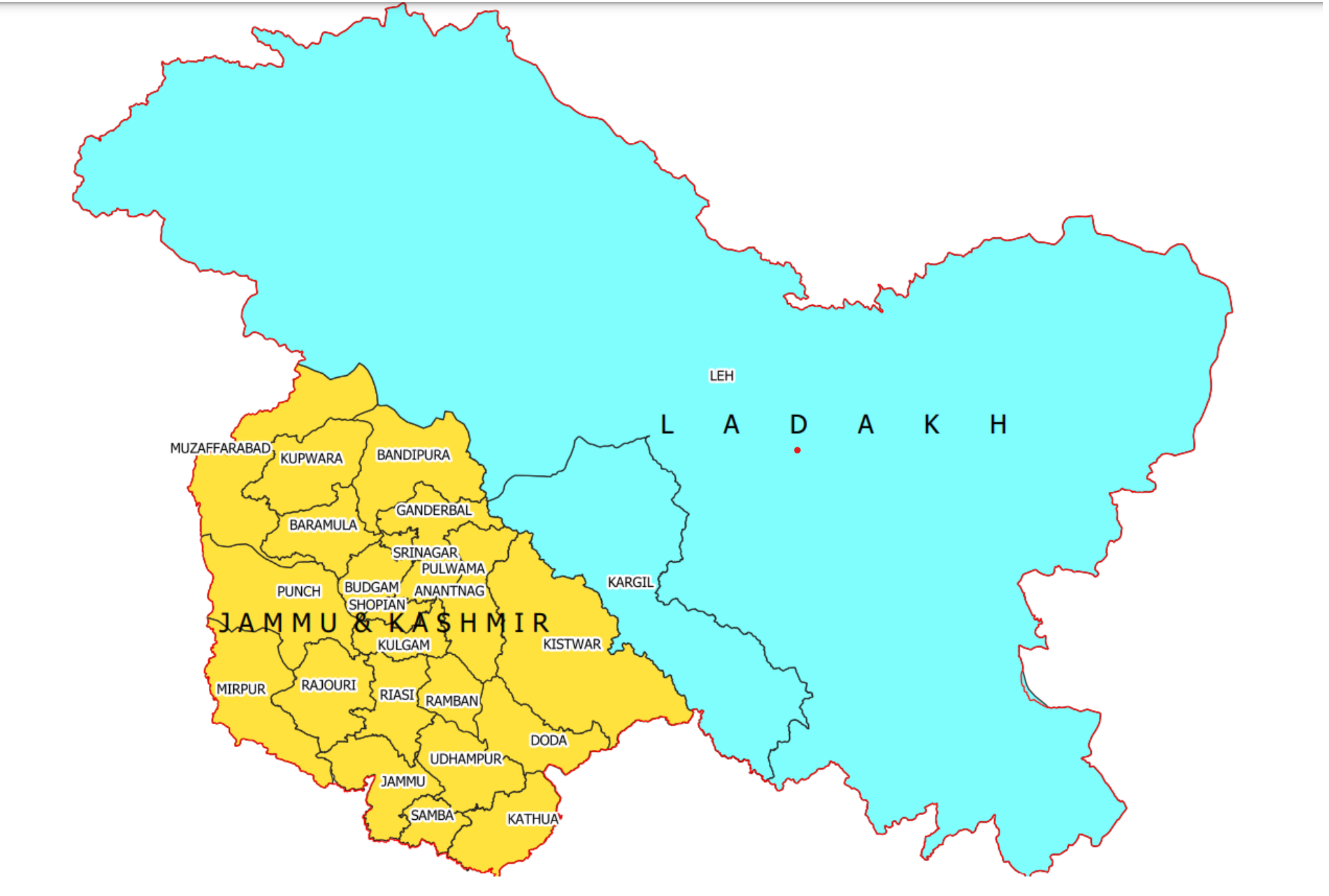
- 19 Oct 2024
In News:
Omar Abdullah sworn in as J&K CM; Surinder Kumar Choudhary is Deputy CM
Key Highlights:
- Omar Abdullah’s Political Context:
- This marks Omar Abdullah's second term as Chief Minister, after his tenure in 2009.
- He becomes the first Chief Minister of Jammu and Kashmir after the region’s special status was revoked and it was reorganized as a Union Territory in 2019.
- Challenges as CM of a Union Territory:
- Omar Abdullah acknowledged the unique challenges of serving as Chief Minister in a Union Territory and expressed hope that J&K’s Union Territory status would be temporary.
- Public Service and Security Measures:
- In his first official instructions, Abdullah asked the Director General of Police (DGP) to avoid creating “green corridors” or traffic halts during his movements. He also requested the minimization of sirens and aggressive security gestures, emphasizing minimal public inconvenience.
- Legal Context:
- Oath of Office: As per Article 164(3) of the Indian Constitution, the Chief Minister and other ministers are sworn in by the Governor or Lieutenant Governor in Union Territories.
- Abdullah is the first CM of the Union Territory of Jammu and Kashmir post the abrogation of Article 370 and the transition of J&K from a state to a Union Territory in 2019.
- Revocation of President's Rule:
- President’s Rule (under Article 356) was revoked following the election results, signaling the restoration of a functioning elected government after direct central governance in the region.
Karmayogi Saptah – National Learning Week
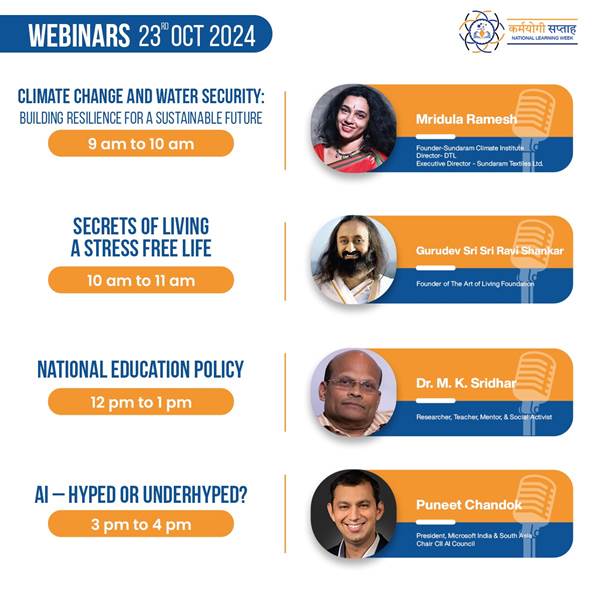
- 19 Oct 2024
In News:
Prime Minister Narendra Modi launched the ‘Karmayogi Saptah’ - National Learning Week on 19th October at Dr. Ambedkar International Centre, New Delhi.
Key Highlights:
- Context:
- The National Learning Week is a key event in the ongoing Mission Karmayogi initiative, aimed at building a civil service rooted in Indian ethos with a global outlook.
- Objective:
- To promote capacity building for civil servants through competency-linked learning.
- To align civil servants with national goals and foster a "One Government" approach.
- About National Learning Week (NLW):
- Largest learning event for civil servants, focused on individual and organizational growth.
- Encourages lifelong learning and continuous professional development.
- Provides fresh impetus to the Mission Karmayogi initiative, launched in September 2020, aimed at a future-ready, citizen-centric civil service.
- Learning Targets for Karmayogis:
- Each civil servant (Karmayogi) must complete at least 4 hours of competency-linked learning during the week.
- Learning opportunities include:
- Role-based modules on iGOT (Integrated Government Online Training platform).
- Webinars, public lectures, and policy masterclasses by prominent experts.
- Focus on improving skills for citizen-centric service delivery.
- Workshops & Seminars:
- Ministries, departments, and organizations organized domain-specific workshops and seminars.
- The goal is to enhance skills and knowledge, fostering better public service delivery.
- Outcomes:
- Strengthened alignment of civil servants with national priorities and goals.
- Enhanced individual competencies to better address citizen needs.
- A stronger commitment to continuous learning within the civil service.
Indian Development and Economic Assistance Scheme (IDEAS)
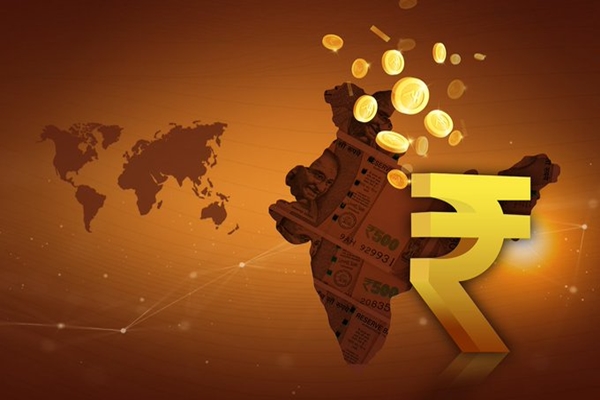
- 18 Oct 2024
In News:
- India has extended a ?487.60 crore Line of Credit (LoC) to Mauritius for financing a water pipeline replacement project.
- This initiative is part of the Indian Development and Economic Assistance Scheme (IDEAS), which supports developmental projects in partner countries through concessional loans.
About the IDEAS Scheme
- Origin: Launched in 2003-04 as the India Development Initiative, later renamed as IDEAS Scheme.
- Objective: To promote India’s political, economic, and strategic interests by providing developmental assistance to developing countries.
- Administering Body: The scheme is managed by the Ministry of External Affairs (MEA) with support from the Exim Bank.
Key Features of the IDEAS Scheme
- Lines of Credit (LoCs):
- Provides LoCs to developing countries for funding projects in various sectors, including:
- Infrastructure
- Water supply
- Education
- Other key developmental areas.
- Provides LoCs to developing countries for funding projects in various sectors, including:
- Project Recommendations:
- Projects funded under the scheme are recommended by MEA and are aimed at bolstering socio-economic development in the partner countries.
- Concessional Financing:
- The scheme offers concessional terms for the financing of these projects, reducing the financial burden on the recipient countries.
- Diplomatic and Strategic Benefits:
- The IDEAS scheme strengthens India’s diplomatic ties and fosters goodwill with countries in the Global South.
- Focus on Development:
- It aims to support key developmental goals in partner countries while advancing India's role as a leader in global development cooperation.
Significance
- The Mauritius water pipeline project is a part of the larger efforts under IDEAS to support infrastructure and socio-economic development in partner nations, helping to improve the quality of life and fostering closer bilateral relations.
Scam se Bacho Campaign
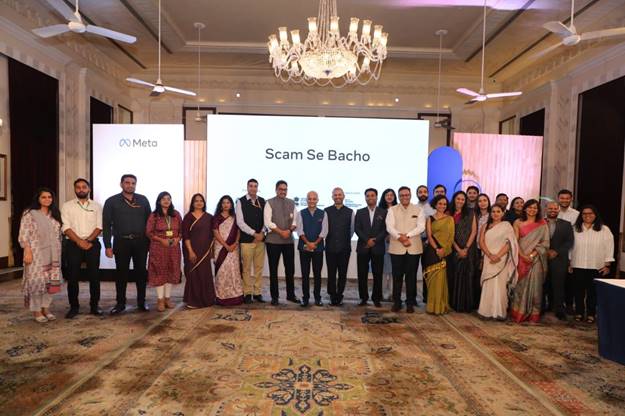
- 18 Oct 2024
In News:
Government and Meta join forces for "Scam se Bacho" Campaign to tackle rising online scams.
Key Details
- The "Scam Se Bacho" initiative aims to create a safer, more secure digital India by empowering users to protect themselves against growing cyber threats, contributing to the resilience of India’s digital progress.
- Objective: To combat rising online scams and cyber frauds by promoting digital safety and vigilance across India.
- Partners:
- Meta (formerly Facebook)
- Ministry of Electronics and Information Technology (MeitY)
- Ministry of Home Affairs (MHA)
- Ministry of Information and Broadcasting (MIB)
- Indian Cyber Crime Coordination Centre (I4C)
Purpose and Vision
- Goal: Empower Indian citizens with the knowledge and tools to protect themselves from online scams and cyber threats.
- Strategic Focus:
- Foster a culture of digital safety and vigilance.
- Align with the Digital India initiative, which has seen extraordinary growth in digital services, including 900 million internet users and leadership in UPI transactions.
- The campaign aims to build a national movement to safeguard citizens, emphasizing the importance of cyber literacy and digital security.
Key Points
- Growing Cybersecurity Threats:
- India has seen a surge in cyber frauds, with 1.1 million cases reported in 2023.
- The government is committed to addressing these threats through stronger cybersecurity measures and enhancing digital literacy.
- Meta’s Role:
- Meta’s global expertise in online safety will be leveraged to equip citizens with the knowledge to prevent cyber scams.
- Meta’s collaboration with the government aims to extend the reach of the campaign nationwide.
Features of the "Scam Se Bacho" Campaign
- Nationwide Reach:
- The initiative targets India’s 900 million internet users, making it a comprehensive national effort.
- Government Support:
- Backed by key ministries to ensure alignment with national digital and cybersecurity goals under Digital India.
- Whole-of-government approach to raise awareness on cyber safety.
- Educational Focus:
- The campaign emphasizes educating citizens on how to recognize and prevent online scams and threats.
Justice Sanjiv Khanna Appointed as Next Chief Justice of India
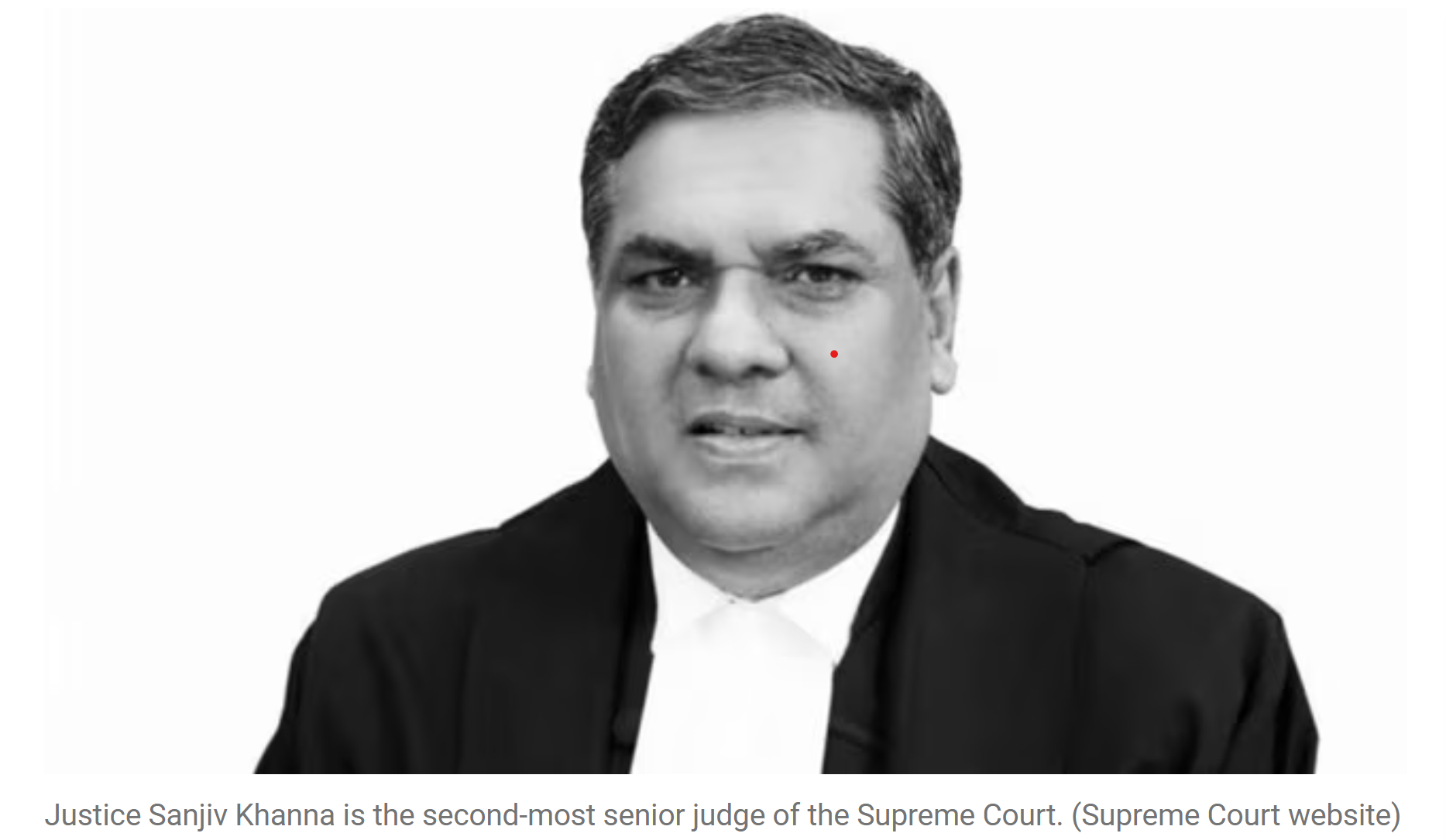
- 18 Oct 2024
In News:
Justice Sanjiv Khanna Appointed as Next Chief Justice of India, Will Assume Office on November 11
- Appointment:
- Justice Sanjiv Khanna has been appointed as the 51st Chief Justice of India by President Droupadi Murmu.
- He is set to take office on November 11, 2024, succeeding Chief Justice D.Y. Chandrachud, who is retiring on November 10, 2024.
- Tenure:
- Justice Khanna's tenure will be relatively short, lasting only six months, as he is scheduled to retire on March 13, 2025.
Career and Background
- Education and Early Career:
- Justice Khanna is a graduate of Delhi University’s Campus Law Centre.
- He enrolled as an advocate in 1983 and primarily practiced before the Delhi High Court.
- Prior to his elevation to the Delhi High Court in 2005, he served as the Senior Standing Counsel for the Income Tax Department and the standing counsel for civil matters for the Delhi government.
- Judicial Career:
- Supreme Court Appointment: Justice Khanna was appointed to the Supreme Court in January 2019, despite not having served as Chief Justice of a High Court. He was elevated over other senior judges from the Delhi High Court, such as Justices Rajendra Menon and Pradeep Nandrajog, whose names were initially recommended but not forwarded to the government.
- Key Contributions:
- Justice Khanna has been part of several significant rulings, including:
- February 2024: Part of the five-judge bench that struck down the Electoral Bond Scheme as unconstitutional.
- 2023: Contributed to upholding the abrogation of Article 370 of the Constitution.
- 2023: Authored a ruling granting the Supreme Court the power to directly grant divorce under Article 142 on the grounds of "irretrievable breakdown of marriage."
- Justice Khanna has been part of several significant rulings, including:
- Administrative Role:
- Justice Khanna currently serves as the Executive Chairman of the National Legal Services Authority (NALSA).
Process of Appointment of Chief Justice of India (CJI)
- Seniority Principle: The CJI is typically the senior-most judge of the Supreme Court.
- Memorandum of Procedure (MoP): The Law Ministry requests a recommendation from the outgoing CJI for his successor.
- Presidential Appointment: After receiving the recommendation, the President of India formally appoints the new CJI.
- Tenure and Retirement: The CJI serves until the age of 65. Upon retirement, the senior-most judge becomes the next CJI.
- Merit and Integrity Considerations: In addition to seniority, merit and integrity play crucial roles in the selection process for the CJI.
Hand-in-Hand Investment Forum
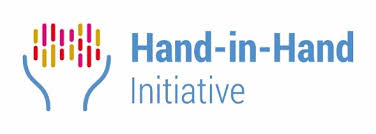
- 18 Oct 2024
In News:
Recently, the Director-General of the Food and Agriculture Organization (FAO) inaugurated the third Hand-in-Hand Investment Forum.
Purpose and Goals
- Objective: To accelerate the transformation of agrifood systems to address global challenges:
- Eradicate poverty (SDG 1)
- End hunger and malnutrition (SDG 2)
- Reduce inequalities (SDG 10)
- Target: Focuses on improving the lives of poor and vulnerable populations by:
- Raising incomes
- Enhancing nutritional status and overall well-being
- Strengthening resilience to climate change
Key Features of the HIH Initiative
- Launched: 2019 as a flagship program by the Food and Agriculture Organization (FAO).
- Primary Focus Areas:
- Geospatial and analytics-driven approach: Utilizes advanced geospatial modeling, biophysical, socio-economic data, and analytics to identify key territories for intervention.
- Market-based transformation: Aims to create sustainable, market-based solutions for agricultural development and food systems transformation.
- Value Chain Development: Focus on developing value chains for priority commodities to boost incomes and food security.
- Agro-Industry Building: Strengthening agro-industries and introducing efficient water management and precision agriculture systems.
- Digitalization: Introducing digital services for better agricultural planning and productivity.
Key Areas of Intervention
- Agricultural Transformation: Identifying territories with the highest potential for transformation.
- Sustainable Management: Focus on sustainable practices in forestry, fisheries, and land management.
- Climate Resilience: Building systems to mitigate the effects of climate change and reduce vulnerability.
- Food Loss Reduction: Addressing food losses and waste across agricultural value chains.
Global Participation
- Member Countries: 72 countries have joined the initiative, collaborating on shared goals for agrifood systems transformation.
The Hand-in-Hand Investment Forum
- Purpose: A platform to mobilize investments for the successful implementation of agrifood transformation programs under the HIH initiative.
- Event: The third Hand-in-Hand Investment Forum was recently opened by the FAO Director-General to discuss challenges and solutions for global agrifood system transformation.
About the Food and Agriculture Organization (FAO)
- Established: October 1945, it is the oldest permanent specialized agency of the United Nations.
- Mandate:
- Improve nutrition.
- Increase agricultural productivity.
- Raise the standard of living in rural areas.
- Contribute to global economic growth.
- Headquarters: Rome, Italy.
- Members: 194 Member States and the European Union.
Key Role of FAO:
- FAO leads international efforts to combat hunger and malnutrition worldwide.
- Supports member countries in implementing agricultural and food security programs.
Strategic Importance
- The Hand-in-Hand Initiative is integral to FAO’s mandate, focusing on countries with the most pressing needs due to poverty, hunger, or crises (natural or man-made).
- It enhances cooperation among nations to tackle global food security challenges, with a particular emphasis on countries with limited national capacities.
Strengthening Teaching-Learning and Results for States (STARS)
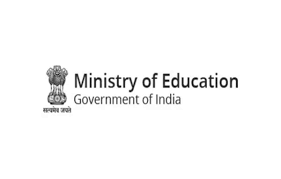
- 18 Oct 2024
In News:
The Department of School Education & Literacy (DoSE&L), Ministry of Education, hosted a two-day Strengthening Teaching-Learning and Results for States (STARS) knowledge sharing workshop in Bhopal, Madhya Pradesh.
- Event Overview:
- Two-day workshop hosted by the Department of School Education & Literacy (DoSE&L), Ministry of Education.
- Focus areas: School-to-Work Transition and Strengthening the Assessment System.
- Key Objectives:
- To enhance school-to-work transitions.
- To discuss strengthening educational assessment systems.
- Align education with future workforce needs as per the National Education Policy 2020.
Day 1: School-to-Work Transition
Panel Discussions:
- Policy Frameworks:
- Role of National Education Policy 2020, National Curriculum Framework (NCF), and National Credit Framework (NCrF) in school-to-work transitions.
- Focus on integrating skill education into school curricula, fostering multidisciplinary learning, and continuous evaluation to meet industry standards.
- Emphasis on internships, apprenticeships, and flexible learning pathways.
- Curriculum Integration:
- Need for integrated efforts across departments and aligning curriculum with industry demands.
- Focus on strengthening 21st-century skills in CBSE schools.
- Career Counselling and Psychometric Analysis:
- Focus on using psychometric assessments for career counselling and preparing students for future work environments.
- Work-Based Learning:
- Discussed partnerships with industry for work-based learning.
- Effective collaborations between schools and industry for internships, placements, and best practices.
Day 2: Strengthening Assessment System
- Psychometric Analysis & Career Counselling:
- Smt. Idzes Angmo Kundan (Principal Secretary, Maharashtra) presented the 3 P approach to career choices: Personal Interest, Parental Approach, and Possible Opportunities.
- Enhancing Student Outcomes:
- Discussed improving student outcomes by strengthening assessment systems.
- Shared innovations in educational assessments.
- Highlighted innovative assessment practices for future education.
- VSK Implementation (Chhattisgarh):
- Discussed VSK modes, data analysis, and strategies for integrating assessment outcomes with learning objectives.
- Strengthening Assessment Cells:
- Advocated for the establishment of assessment cells.
- Discussed best practices and challenges in strengthening assessment cells across states.
World Energy Outlook 2024
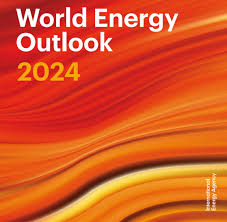
- 17 Oct 2024
In News:
The International Energy Agency's (IEA) World Energy Outlook 2024 offers an in-depth analysis of global energy trends, emphasizing the shift towards clean energy, growing energy demand, and the effects of geopolitical conflicts.
Key Highlights:
- Economic Growth:
- India was the fastest-growing major economy in 2023 with a 7.8% growth rate.
- On track to become the world’s third-largest economy by 2028.
- Surpassed China in 2023 to become the most populous country globally, despite a fertility rate below replacement level.
- Energy Demand Surge:
- India is projected to experience the highest increase in energy demand over the next decade.
- By 2035, India’s total energy demand is expected to rise by 35%, driven by rapid industrialization, urbanization, and increased living standards.
- Urbanization and Infrastructure Growth:
- Over 12,000 cars are expected to be added to Indian roads daily by 2035.
- Built-up space is set to increase by over 1 billion square meters annually, surpassing the total built space of South Africa.
- Industrial Expansion:
- Iron and steel production is expected to grow by 70% by 2035.
- Cement output is set to increase by 55%.
- Air conditioner stock to grow more than 4.5 times, with electricity demand from cooling expected to exceed Mexico’s total consumption in 2035.
- Energy Supply & Coal:
- India’s electricity generation capacity is projected to nearly triple to 1,400 GW by 2035.
- Coal remains a dominant energy source despite growth in renewables:
- Coal-fired power capacity will increase by 60 GW by 2030.
- Coal will continue to account for over 30% of electricity generation even as solar PV expands.
- By 2035, coal use in industries like steel and cement will grow by 50%.
- Renewable Energy & Clean Tech:
- India is on track to become a global leader in renewable energy, with a nearly 3x increase in electricity generation capacity.
- The country is expected to have the world’s third-largest installed battery storage capacity by 2030.
- By 2030, low-emission energy sources (solar, wind, nuclear) are expected to generate over 50% of India’s electricity.
- Electric Vehicles & Oil Demand:
- The rapid adoption of electric vehicles (EVs) is expected to peak India’s oil demand by the 2030s, reducing reliance on oil for transportation.
- Oil demand for transport will decline as EVs proliferate, though demand for oil in other sectors (e.g., petrochemicals) will continue.
- Net Zero Target:
- India aims to achieve net-zero emissions by 2070.
- By 2035, clean energy generation could be 20% higher than current policy projections, thanks to electric mobility, hydrogen use, and improved energy efficiency.
- CO2 emissions are projected to be 25% lower than under the Stated Policies Scenario (STEPS).
- Policy Support:
- India’s clean energy goals are backed by government initiatives, such as:
- PM-KUSUM scheme for solar energy in agriculture.
- National Solar Mission.
- Production Linked Incentive (PLI) Scheme to boost domestic solar PV manufacturing.
- India’s clean energy goals are backed by government initiatives, such as:
- Global Energy Trends:
- Geopolitical Risks: Global energy security remains affected by geopolitical tensions (e.g., Russia-Ukraine conflict, Middle East tensions).
- Energy Transition: Global shift toward clean energy, with solar and wind power investments accelerating.
- Oil & Gas Surplus: Oil and LNG supply expected to increase, putting downward pressure on prices by the late 2020s.
- Electric Mobility: EVs projected to account for 50% of new car sales by 2030.
- Energy Efficiency: Despite efforts, global targets for doubling energy efficiency by 2030 are unlikely to be met with current policies.
IEA Overview:
- The International Energy Agency (IEA) provides analysis and policy advice on energy security, economic development, and environmental sustainability.
- Established in 1974, it now includes 31 member countries and 13 association countries, including India.
- Major publications: World Energy Outlook, India Energy Outlook, World Energy Investment Report.
India’s Semiconductor Market Projected to Surpass $100 Billion by 2030
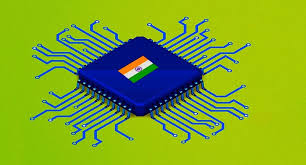
- 17 Oct 2024
In News:
India's semiconductor market is poised to exceed $100 billion by 2030, according to a report from the India Electronics and Semiconductor Association and Counterpoint Research. Currently valued at $45 billion in 2023, the market is projected to grow at an annual rate of 13%, driven by demand in mobile handsets and IT sectors, which together account for over 75% of revenues.
Key Highlights:
- Growth Drivers: The growth is supported by strong demand for electronics and government initiatives like the production-linked incentive scheme. Semiconductors are essential for various industries, including electronics, defense, healthcare, and automotive.
- Importance of Semiconductors: These materials, which include silicon and germanium, are crucial for electronic devices. They can conduct electricity under certain conditions, making them fundamental in transistors, integrated circuits, and devices like LEDs and solar cells.
- Global Context: The global semiconductor supply chain has shown vulnerabilities, particularly during the chip shortage of 2021. Major producers include Taiwan (44% market share), China (28%), South Korea (12%), the U.S. (6%), and Japan (2%). Countries are now focusing on building domestic chip industries to reduce dependency on a few key suppliers.
Factors Favoring India's Growth in Semiconductors:
- Skilled Workforce: India has a vast pool of STEM graduates, providing a skilled workforce for semiconductor manufacturing and design.
- Cost Advantage: Lower labor costs and efficient supply chains position India favorably for semiconductor manufacturing.
- Supply Chain Diversification: India is becoming a hub for back-end assembly and testing operations, with potential for front-end manufacturing.
- Government Support: Initiatives like Semicon India and the India Semiconductor Mission aim to create a robust semiconductor ecosystem, offering substantial fiscal incentives for companies.
Government Initiatives:
- Semiconductor Fab Scheme: Provides 50% project cost support for semiconductor manufacturing.
- Display Fab Scheme: Offers similar support for display manufacturing.
- Chips to Startup (C2S) Programme: Trains 85,000 engineers across academic and R&D institutions.
- Recent approvals for the establishment of semiconductor plants in Gujarat and Assam further bolster this initiative.
Nobel Prize for Economics 2024

- 17 Oct 2024
In News:
The winners of this year’s Economics Nobel, or the Sveriges Riksbank Prize awarded for economic sciences, Daron Acemoglu, Simon Johnson and James Robinson (AJR), pioneers in new institutional economics, emphasised the role of institutions in the direction of development.
The Great Divergence
- Definition: Refers to the economic and political development gap between the West and East, particularly during the 17th and 18th centuries.
- Key Factors:
- Industrialization in Western Europe enabled the projection of political power globally.
- Colonial institutions established during this period have long-lasting effects on post-colonial nations.
Role of Institutions in Development
- Nobel Prize Winners: Daron Acemoglu, Simon Johnson, and James Robinson (AJR) awarded for their work in new institutional economics.
- Institutions Defined: Set of rules constraining human behavior, ensuring law and order, and preventing coercion.
- Types of Institutions:
- Extractive Institutions: Concentrate wealth among elites, historically prevalent in colonized regions (e.g., Sub-Saharan Africa, Latin America).
- Inclusive Institutions: Promote broader participation in economic growth, more common in countries like the U.S., Canada, and Australia.
Research Contributions
- Natural Experiments: AJR used historical data to show how differing colonial practices influenced economic outcomes.
- Key Findings:
- Areas with landlord-based colonial systems had lower agricultural investment and productivity.
- Regions under direct colonial rule lagged in infrastructure like schools and health centers.
Implications of AJR's Work
- Economic Institutions: Reflect collective choices shaped by political power, which can be either de jure (formal) or de facto (informal).
- Challenges in Reform: Conflicting interests often hinder agreement on the nature of beneficial institutions.
Critical Perspectives
- Skepticism of AJR's Framework: Some scholars argue that AJR's emphasis on Western liberal institutions overlooks the complexities of historical contexts, including corruption and systemic inequalities in early U.S. history.
- Modern Economic Dynamics: AJR caution against assuming that inclusive institutions will automatically lead to prosperity, as evidenced by concerns regarding China's future growth under extractive political systems.
Insights from Nobel Prize Research
- Key Focus Areas:
- Institutional structures in colonized countries significantly shape economic prosperity.
- Example of Nogales, Arizona, and Nogales, Mexico illustrates the impact of institutions on economic opportunities.
About the Nobel Prize Recipients
- Daron Acemoglu:
- MIT professor and co-author of influential works on power and prosperity.
- Advocates for democracy's role in economic growth while acknowledging its challenges.
- Simon Johnson:
- Former IMF chief economist, current MIT professor.
- Emphasizes the complexity of addressing entrenched poverty due to institutional frameworks.
- James A. Robinson:
- University of Chicago professor, co-author of works on economic disparity.
- Highlights historical transitions toward inclusive societies and their importance in economic development.
Nobel Prize in Economic Sciences
- Established: 1968 by the Swedish central bank.
- Purpose: Complement existing Nobel Prizes, recognizing contributions to economic sciences.
- Notable Previous Laureates: Include Claudia Goldin (2023) for gender pay gap research and Abhijit Banerjee et al. (2019) for poverty alleviation studies.
SAMARTH Scheme
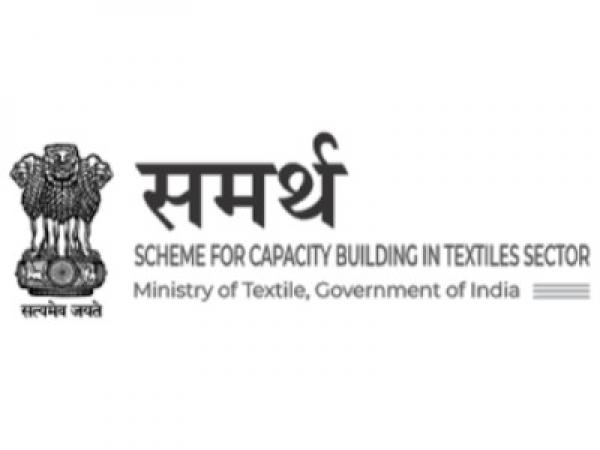
- 17 Oct 2024
In News:
Samarth is a demand-driven and placement-oriented umbrella skilling program of the Ministry of Textiles. Samarth Scheme has been extended for two years (FY 2024-25 and 2025-26) with a budget of Rs. 495 Crore to train 3 lakh persons in textile-related skills.
Key Details:
- Scheme Name: Samarth (Scheme for Capacity Building in Textile Sector)
- Nodal Ministry: Ministry of Textiles
- Extension Period: FY 2024-25 and 2025-26
- Budget: ?495 Crores
- Target: Train 3 lakh individuals in textile-related skills
Objectives
- Skilling Programs: Provide demand-driven, placement-oriented training.
- Industry Support: Encourage job creation in organized textile and related sectors.
- Skill Enhancement: Focus on upskilling and reskilling in traditional sectors (handloom, handicraft, silk, jute).
Implementation
- Implementing Partners:
- Textile Industry/Industry Associations
- Central/State government agencies
- Sectoral Organizations (e.g., DC/Handloom, Central Silk Board)
- Current Achievements:
- Total Trained: 3.27 lakh candidates
- Employment Rate: 2.6 lakh (79.5%) have secured jobs
- Women Empowerment: 2.89 lakh (88.3%) women trained
Scheme Features
- Coverage: Entire textile value chain, excluding spinning and weaving.
- Training Focus:
- Entry-level skilling
- Upskilling/reskilling existing workers in apparel and garmenting
- Beneficiaries: Handicraft artisans and job seekers in the textile sector.
Background
- Cabinet Approval: The scheme is a continuation of the Integrated Skill Development Scheme from the 12th Five Year Plan.
- Implementation Agency: Office of the Development Commissioner (Handicrafts).
Advancements of Research & Global Opportunities for Holistic Ayurveda - AROHA-2024
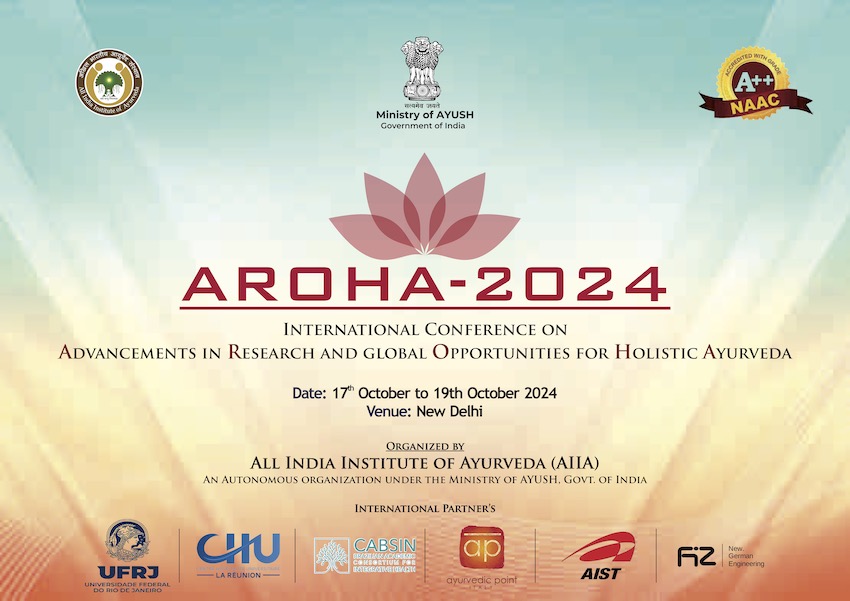
- 17 Oct 2024
In News:
All India Institute of Ayurveda, New Delhi is organising its first-ever international conference - Advancements of Research & Global Opportunities for Holistic Ayurveda - AROHA-2024.
Key Details:
- Theme: "Advancements in Research & Global Opportunities for Holistic Ayurveda"
- Conference Goals
- Position Ayurveda as a key pillar of global health and wellness.
- Facilitate dynamic exchanges among scholars, industry leaders, and practitioners.
- Explore the integration of traditional Ayurvedic wisdom with modern scientific advancements.
- Agenda Highlights
- Topics Covered:
- Ayurveda and ethnomedicine
- Quality control and standardization
- Diagnosis and drug delivery
- Evidence-based understanding and globalization
- Topics Covered:
- Institute Background
- All India Institute of Ayurveda (AIIA): Apex institute for Ayurveda with NAAC A++, NABH, and ISO accreditations.
- Facilities: 200-bed referral hospital, 44 specialty departments.
- Global Collaborations: Partnerships with institutions in 17 countries, including London School of Hygiene and Tropical Medicine and Western Sydney University.
- Innovations: Focus on research, drug development, and scientific validation of Ayurvedic practices.
- Participant Benefits
- Networking Opportunities: Engage with experts in Ayurveda and holistic healthcare.
- Learning Experiences: Attend plenary sessions, round table discussions, and exhibitions on medicinal plants and startups in Ayurveda.
- Recognition: Awards for contributions to Ayurveda.
- Research and Innovation Focus: Discussions on technology integration, including AI and bioinformatics.
DigiLocker Partners with UMANG

- 16 Oct 2024
In News:
The National e-Governance Division (NeGD) has announced the integration of the UMANG app with DigiLocker- India’s Digital Wallet. This collaboration aims to provide citizens with seamless access to a wide range of government services bringing greater convenience and allowing users to manage multiple services through a single platform.
UMANG app
- The UMANG app is accessible to all Android users with an expansion to iOS in the pipeline.
- The UMANG mobile app is an all-in-one single, unified, secure, multi-channel, multi-lingual, multi-service mobile app.
- It provides access to high-impact services of various organizations of the Union and States.
Simplified Citizen-Government interaction
This integration makes it easier for citizens to interact with the Government in an efficient, digital-first manner. DigiLocker has always been a pioneer in simplifying access to personal and official documents, and after integration with UMANG, it has expanded the range of services you can access on the go.
About DigiLocker
DigiLocker is a flagship initiative under the Digital India program aimed at providing secure cloud-based storage of essential documents. By integrating with e-governance services such as UMANG, DigiLocker further is committed to further enhance accessibility and ease of living.
World Food Day 2024
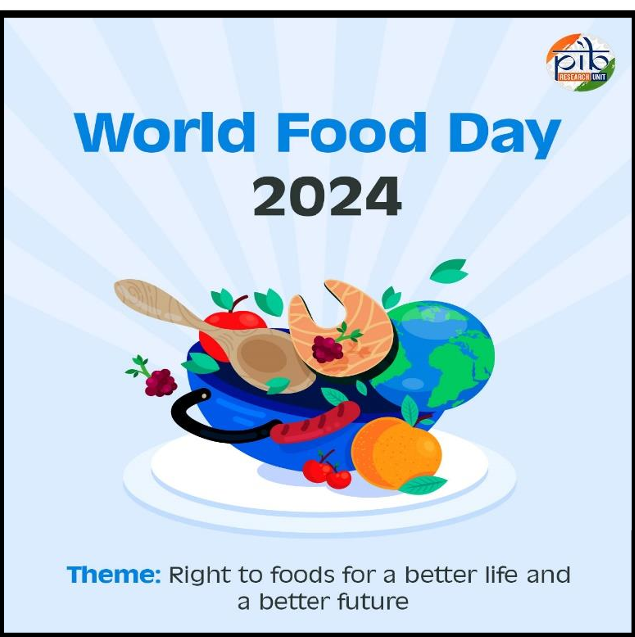
- 16 Oct 2024
In News:
World Food Day, observed annually on October 16, has its roots in the establishment of the Food and Agriculture Organization (FAO) by the United Nations in 1945.
Significance: World Food Day emphasizes the critical need to address global hunger and promote resilient food systems capable of overcoming challenges like climate change and economic disparities.
Introduction
- Food is vital for life, health, and well-being.
- Despite sufficient global food production, millions lack access to nutritious food.
- World Food Day serves as a reminder of ongoing challenges in achieving food security.
History and Theme
- Origins: Established by the Food and Agriculture Organization (FAO) in 1945, officially recognized in 1979.
- First Celebration: Took place in 1981 with the theme "Food Comes First."
- 2024 Theme: "Right to Food for a Better Life and a Better Future," highlighting that food security is essential for dignity and health. It emphasizes the need for sustainable practices and equitable distribution.
India’s Commitment to Food Security
- India has made significant strides in combating hunger through various programs aimed at malnutrition and poverty alleviation.
- Key initiatives include:
- National Food Security Act (NFSA): Provides subsidized food grains to 75% of the rural and 50% of the urban population, benefiting about 81 crore individuals.
- Pradhan Mantri Garib Kalyan Anna Yojana (PMGKAY): Offers free food grains to approximately 81.35 crore beneficiaries, extending support during the COVID-19 pandemic for an additional five years.
- PM POSHAN Scheme: Aims to improve children's nutritional status in government schools with a budget of ?12,467.39 crores for 2024-25.
- Antyodaya Anna Yojana (AAY): Focuses on the most vulnerable populations, supporting over 8.92 crore individuals and empowering women.
- Rice Fortification: Distribution of fortified rice through the Public Distribution System has improved nutritional intake for millions.
- Price Stability Initiatives: The government manages price volatility of essential commodities using the Price Stabilization Fund (PSF) and ensures affordability through strategic product launches.
Global Recognition of Indian Cuisine
- The Indian Thali has been recognized for its nutritional and sustainable qualities by the WWF Living Planet Report.
- Its plant-based composition contributes to lower resource use and reduced greenhouse gas emissions.
- If globally adopted, India’s dietary patterns could significantly lessen the environmental burden.
Significance
- India’s comprehensive initiatives reflect its dedication to food security and improving citizens' quality of life.
- By enhancing agricultural productivity and supporting vulnerable populations, India makes strides towards eradicating hunger.
- On World Food Day, these efforts underline India's commitment to achieving Sustainable Development Goal 2: Zero Hunger, while serving as a model for global food security initiatives.
PM GatiShakti National Master Plan
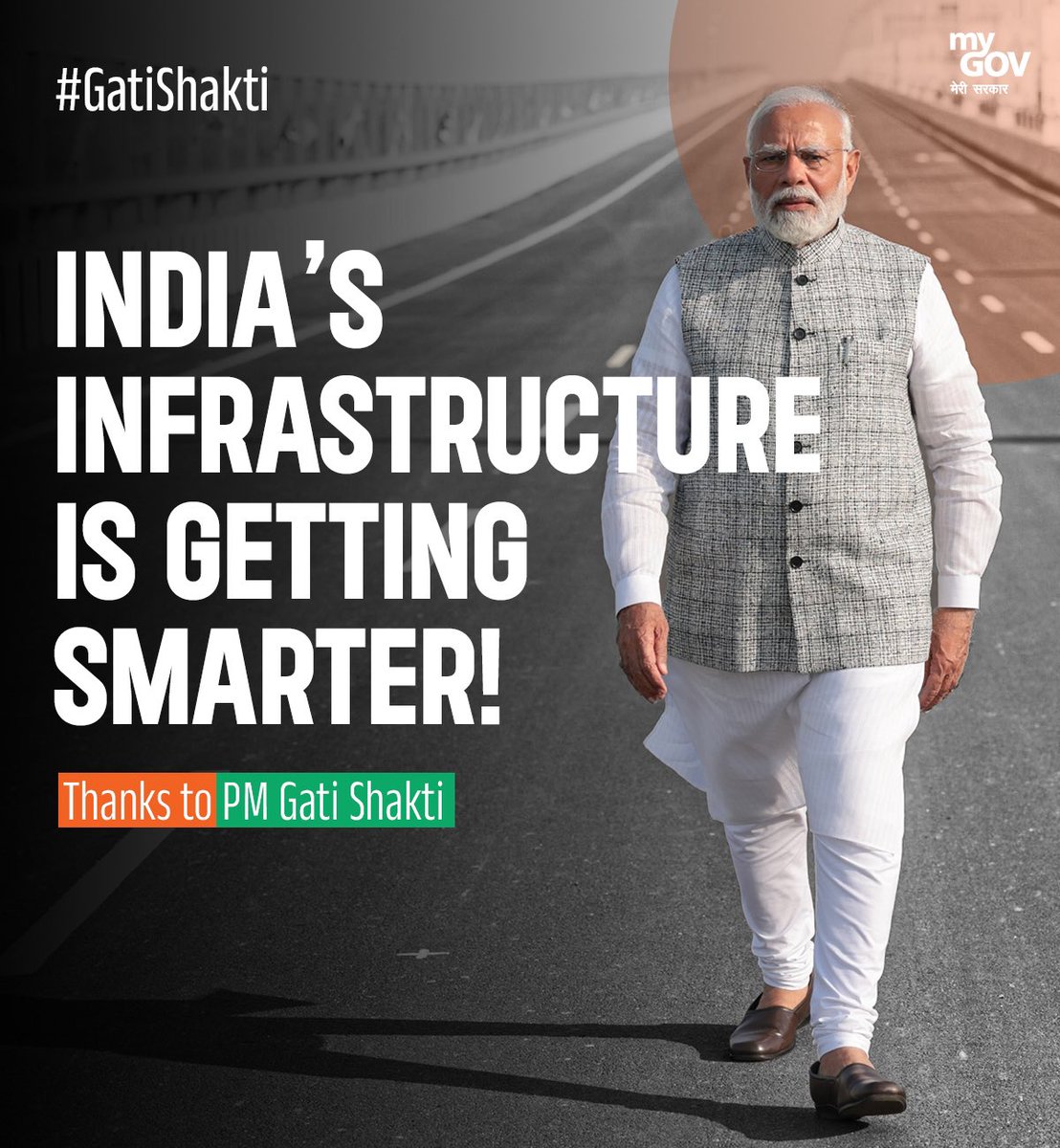
- 16 Oct 2024
In News:
- The Prime Minister commended the completion of three years of the PM GatiShakti National Master Plan, calling it a transformative initiative for India’s infrastructure development.
- Key Benefits: The plan enhances multimodal connectivity and improves efficiency across various sectors, contributing to logistics, job creation, and innovation.
Overview of PM GatiShakti National Master Plan
- Launch Date: October 2021
- Objective: A transformative initiative worth ?100 lakh crore aimed at revolutionizing India’s infrastructure over five years.
- Development Tool: Created as a Digital Master Planning tool by the Bhaskaracharya National Institute for Space Applications and Geoinformatics (BISAG-N).
- GIS Platform: Utilizes a dynamic Geographic Information System to integrate action plans from various ministries into a comprehensive database.
- Goals: Accelerate project completion, reduce timelines, and enhance India’s global competitiveness by addressing inter-ministerial challenges.
Key Features
- Digital Integration: A digital platform coordinating the efforts of 16 ministries for seamless infrastructure planning.
- Multi-Sector Collaboration: Incorporates initiatives from major programs like Bharatmala and Sagarmala.
- Economic Zones Development: Focuses on key areas such as textile clusters and pharmaceutical hubs to boost productivity.
- Technology Utilization: Employs advanced spatial planning tools and ISRO satellite imagery for data-driven project management.
Core Sectors Driving the Plan
- The National Master Plan is centered around seven primary sectors that enhance economic growth and connectivity, supported by sectors like energy transmission and social infrastructure.
Six Pillars of PM GatiShakti
- Comprehensiveness: Integrates various initiatives through a centralized portal, ensuring efficient planning.
- Prioritisation: Allows ministries to prioritize projects based on national importance and resource allocation.
- Optimisation: Identifies infrastructure gaps and selects the most efficient transportation routes.
- Synchronisation: Ensures coordinated efforts across ministries to avoid delays.
- Analytical Capabilities: Offers extensive data layers for improved spatial planning and decision-making.
- Dynamic Monitoring: Uses satellite imagery for real-time project tracking and adjustments.
Achievements of PM GatiShakti
- District-Level Expansion: Extended to 27 aspirational districts, with plans for 750 in the near future.
- Technological Integration: Enhanced real-time infrastructure planning using geospatial tools.
- Global Outreach: The GatiShakti tool showcased to 30 countries and highlighted at international conferences.
- Social Sector Benefits: Identified areas for new healthcare facilities and improved planning in various districts.
- Rural and Urban Development: Implemented projects for irrigation and city logistics in multiple states.
- Employment Initiatives: Utilized for setting up training institutes near industrial clusters.
Announcement of AI Centres of Excellence
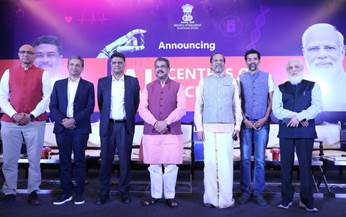
- 16 Oct 2024
In News:
Union Minister for Education, Shri Dharmendra Pradhan, announced the establishment of three AI Centres of Excellence (CoE) focused on Healthcare, Agriculture, and Sustainable Cities in New Delhi.
Key Details:
- Establishment of Three AI-CoEs:
- Focus Areas:
- Healthcare: Led by AIIMS and IIT Delhi.
- Agriculture: Led by IIT Ropar, Punjab.
- Sustainable Cities: Led by IIT Kanpur.
- Collaboration: CoEs will work with industry partners and start-ups.
- Focus Areas:
- Financial Commitment:
- Total Approved Budget: ?990 crore for FY 2023-24 to FY 2027-28.
- Purpose: Support the establishment and operation of the CoEs.
- Vision and Impact:
- Pradhan emphasized the CoEs' role as solution providers for global public good.
- Expected to create a new generation of job and wealth creators.
- Aims to strengthen India's credentials in the global AI landscape.
- Leadership and Implementation:
- Apex Committee: Co-chaired by Shri Sridhar Vembu (Zoho CEO).
- Committee includes industry leaders and academic heads.
- Shri K. Sanjay Murthy highlighted the importance of interdisciplinary research and collaboration.
- Future Prospects:
- Dr. Vembu noted the CoEs will enhance the health of villages and cities, nurture talent, and generate opportunities.
- The initiative aligns with India's vision of "Viksit Bharat" (Developed India).
- Presentation and Film:
- Insights into the development of AI-CoEs presented by Smt. Saumya Gupta.
- A short film titled "Make AI in India and Make AI work for India" was showcased.
The establishment of these Centres of Excellence in AI signifies a major step toward fostering an effective AI ecosystem in India, aimed at developing scalable solutions and enhancing human resources in critical sectors.
e-Migrate Portal
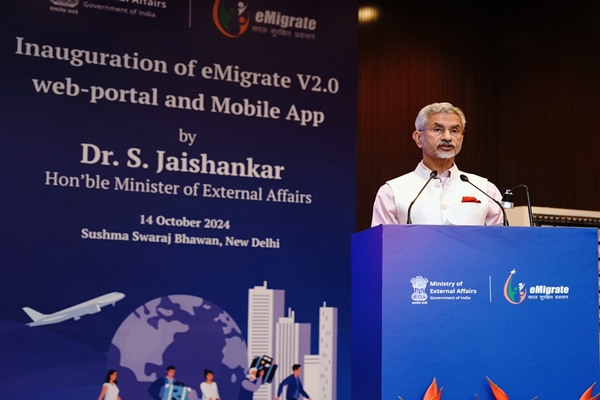
- 15 Oct 2024
In News:
Recently, the Union Ministers for External Affairs and Labour and Employment launched the upgraded e-Migrate portal and mobile app, aimed at enhancing the migration experience for Indian workers seeking employment abroad. This initiative reflects the Indian government's commitment to ensuring the safety and welfare of its migrant workforce, aligning with global migration goals under the 2030 Agenda for Sustainable Development.
About e-Migrate Portal
The e-Migrate portal is an online platform designed to facilitate and manage the migration of Indian workers. It promotes safe and legal mobility channels by providing a transparent framework for migrant workers, including:
- Information Access: Comprehensive resources to help migrants understand the migration process.
- Documentation Support: Tools to assist with necessary paperwork.
- Helpline Support: A 24/7 multilingual helpline that addresses issues faced by workers, particularly in the Gulf region.
- Awareness Campaigns: Initiatives to educate workers about their rights and responsibilities abroad.
The upgraded version of the portal, launched in October 2024, features enhanced functionality to better serve Indian migrants.
Key Features of e-Migrate v2.0
- Multilingual Helpline: Offers real-time support in multiple languages, ensuring that urgent issues are resolved efficiently.
- Integration with Digilocker: Facilitates secure, paperless submission of essential documents, such as passports and employment contracts.
- Social Security Net: Enhances social security measures for migrants, including insurance policies and partnerships with the State Bank of India for fee-free digital payment services.
- Mobile App: Introduced for the first time, this app provides easy access to services, including a job search marketplace for overseas employment opportunities.
- Rural Accessibility: Collaboration with Common Service Centres (CSCs) aims to expand immigration services to rural areas in local languages, making the platform more accessible to diverse populations.
Significance
The e-Migrate portal aligns with the United Nations' Sustainable Development Goal 10, which promotes orderly and responsible migration. By fostering safe migration practices, this initiative seeks to empower Indian workers and protect their rights while contributing to the country's international workforce.
Mission for Advancement in High-Impact Areas - Electric Vehicle (MAHA-EV) Mission
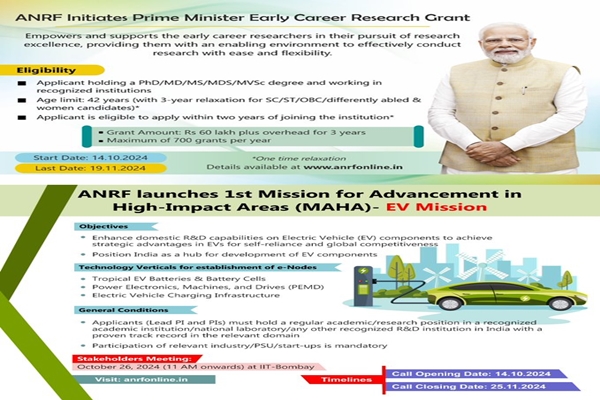
- 15 Oct 2024
In News:
The Anusandhan National Research Foundation (ANRF) has officially launched its first two initiatives: the Prime Minister Early Career Research Grant (PMECRG) and the Mission for Advancement in High-Impact Areas - Electric Vehicle (MAHA-EV) Mission. These initiatives aim to enhance India’s research landscape and support innovation in critical sectors.
Prime Minister Early Career Research Grant (PMECRG)
- Objective: The PMECRG is designed to empower early career researchers by providing flexible funding and support for high-quality innovative research. It aims to foster creativity and drive technological progress, positioning India as a global leader in science and technology (S&T).
- Significance: This grant recognizes the essential role of young researchers in advancing India's scientific agenda. By investing in their development, ANRF aims to cultivate a vibrant research ecosystem that encourages groundbreaking discoveries.
Mission for Advancement in High-Impact Areas - Electric Vehicle (MAHA-EV) Mission
- Focus: The MAHA-EV Mission targets the development of key technologies for electric vehicles, specifically in areas such as tropical EV batteries, power electronics, machines and drives (PEMD), and charging infrastructure.
- Goals:
- Reduce Import Dependency: By fostering domestic innovation in EV components.
- Global Leadership: Positioning India as a leader in the electric vehicle sector, aligning with the government's Atmanirbhar Bharat (self-reliant India) vision.
- Collaboration: The mission is designed to encourage multi-institutional and multi-disciplinary collaboration to address critical scientific challenges, thereby enhancing the competitiveness of India's EV sector.
Significance of Both Initiatives
- Bridging Gaps: Both initiatives aim to bridge the gap between academic research and industrial applications, a key goal of ANRF. This alignment is crucial for translating research into practical applications that benefit society.
- Strategic Interventions: These programs reflect the discussions held during the ANRF's Governing Board meeting, which emphasized global positioning in key sectors, capacity building, and fostering an innovation ecosystem.
- Long-term Vision: The initiatives contribute to India's goal of achieving a Viksit Bharat (Developed India) by 2047, accelerating the country's progress toward a sustainable and technologically advanced future.
The launch of the PMECRG and MAHA-EV Mission marks a significant step in enhancing India's research ecosystem. By supporting early career researchers and advancing electric vehicle technologies, ANRF is poised to drive innovation, foster collaboration, and strengthen India’s position on the global scientific stage. These initiatives reflect a commitment to sustainable development and technological leadership, paving the way for transformative advancements in various sectors.
Haber-Bosch process
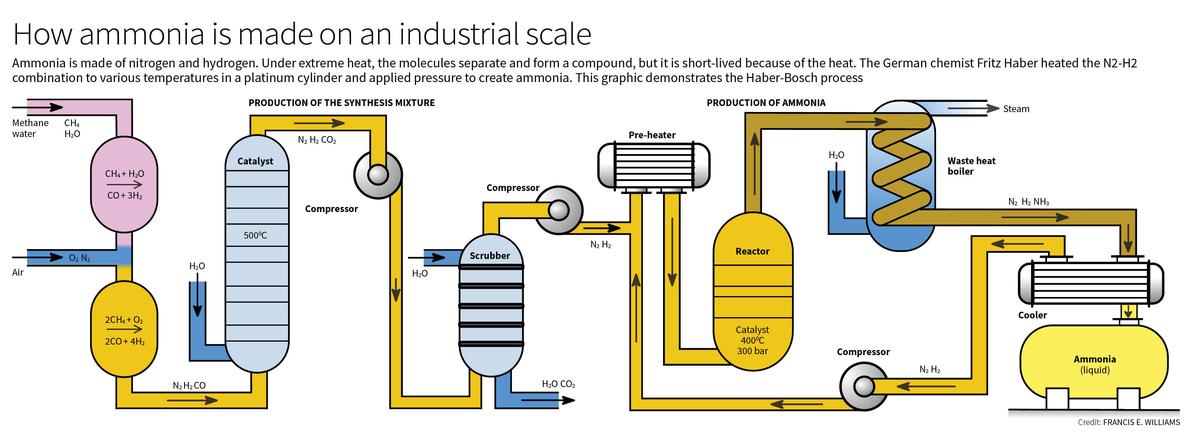
- 15 Oct 2024
In News:
The Haber-Bosch process has fundamentally transformed agricultural practices and global food production, enabling the conversion of atmospheric nitrogen into ammonia, which is essential for fertilizers.
The Nitrogen Molecule
- Composition: Nitrogen primarily exists as molecular nitrogen (N?) in the atmosphere, where two nitrogen atoms are bonded with a strong triple bond. This bond is very stable and requires significant energy (946 kJ/mol) to break, rendering N? largely inert and unavailable for direct use by plants.
Nitrogen in Nature
- Natural Fixation: In nature, the energy required to break the N? bond is typically provided by phenomena like lightning, which converts nitrogen to reactive forms such as nitrogen oxides (NO and NO?). These can subsequently form nitric acid when they react with water, depositing reactive nitrogen through rainfall.
- Microbial Processes: Certain bacteria, including Azotobacter and Rhizobia, can fix atmospheric nitrogen into reactive forms, supporting plant growth. Azolla, a fern with a symbiotic cyanobacterium, also helps in nitrogen fixation.
The Nitrogen Cycle
- Plant Uptake: Plants absorb reactive nitrogen in the form of ammonium (NH??) and nitrate (NO??) from the soil, essential for synthesizing proteins and other vital compounds. Humans and animals rely on plants for their nitrogen intake.
- Cycle Completeness: While nitrogen is returned to the soil through excretion and decomposition, some is lost back to the atmosphere as N?. This loss contributes to the depletion of soil nitrogen, especially in crops that do not fix their own nitrogen.
Ammonia Production
- Haber-Bosch Process: This process synthesizes ammonia from nitrogen and hydrogen under high pressure and temperature, using a catalyst to enhance efficiency. Initially developed by Fritz Haber and scaled by Carl Bosch, this method became the backbone of modern fertilizer production.
Benefits and Downsides of Fertilizers
- Food Security: The Haber-Bosch process has significantly increased food production, contributing to a remarkable rise in global food supply and preventing widespread hunger. It is estimated that one-third of the world’s population relies on fertilizers produced via this process for their food.
- Environmental Impact: The widespread use of nitrogen fertilizers can lead to environmental issues:
- Excess Nutrients: Over-application can result in nutrient runoff into water bodies, causing eutrophication, which depletes oxygen and harms aquatic life.
- Acid Rain: Reactive nitrogen can contribute to acid rain, affecting soil health and biodiversity.
- Soil Degradation: Continuous fertilizer use without adequate replenishment of nutrients can degrade soil quality over time.
While the Haber-Bosch process is crucial for modern agriculture and food security, it also presents significant environmental challenges. The balance between using fertilizers effectively and sustainably is essential to ensure that technological advancements do not come at the cost of ecological health. As such, addressing food security requires not just technological innovation, but also thoughtful political and social engagement to manage resources responsibly.
India's Renewable Energy Capacity Hits 200 GW Milestone
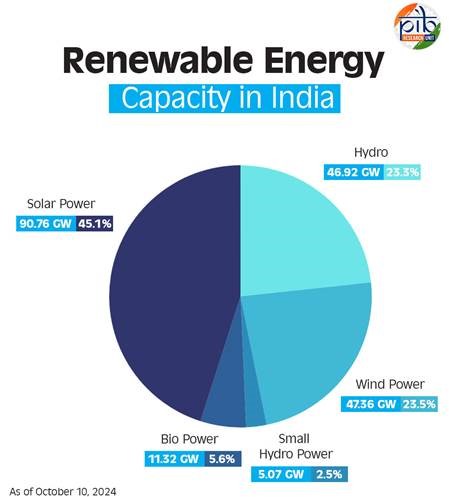
- 15 Oct 2024
In News:
India has recently celebrated a landmark achievement in its renewable energy sector, with its total renewable energy capacity surpassing 200 GW as of October 10, 2024. This milestone, reported by the Central Electricity Authority, showcases the country’s growing commitment to clean energy and its strategic shift towards a more sustainable future.
Overview of India’s Renewable Energy Landscape
As of October 2024, India's total electricity generation capacity stands at 452.69 GW, with renewable sources contributing a substantial 201.45 GW, representing 46.3% of the overall capacity. This shift highlights India’s increasing reliance on cleaner, non-fossil fuel energy.
Key contributors to this capacity include:
- Solar Power: Leading with 90.76 GW, capitalizing on India's abundant sunlight.
- Wind Power: Following closely at 47.36 GW, leveraging the country’s vast wind corridors.
- Hydropower: Large hydro projects add 46.92 GW, while small hydro contributes an additional 5.07 GW.
- Biopower: Incorporating biomass and biogas energy, contributing 11.32 GW.
Together, these resources are pivotal in reducing dependence on fossil fuels and enhancing energy security.
Leading States in Renewable Energy Capacity
Certain states are at the forefront of this renewable energy expansion:
- Rajasthan: 29.98 GW, benefiting from ample land and sunlight.
- Gujarat: 29.52 GW, driven by robust solar and wind initiatives.
- Tamil Nadu: 23.70 GW, utilizing favorable wind conditions.
- Karnataka: 22.37 GW, supported by a mix of solar and wind projects.
Key Schemes and Programs
The Indian government has introduced numerous initiatives to accelerate renewable energy capacity, aiming for 500 GW from non-fossil sources by 2030. Notable programs include:
- National Green Hydrogen Mission
- PM-KUSUM Scheme
- PM Surya Ghar Scheme
- Production-Linked Incentive (PLI) for solar PV modules
These efforts reflect the government's commitment to fostering a sustainable energy future while addressing the challenges posed by climate change and energy security. Here are some other ongoing key initiatives:
- Notification of a trajectory for renewable energy power bids of 50 GW per annum by Renewable Energy Implementation Agencies (REIAs) from FY 2023-24 to FY 2027-28.
- Foreign Direct Investment permitted up to 100 percent under the automatic route to attract investments.
- Waiver of Inter-State Transmission System charges for solar and wind power projects commissioned by June 30, 2025; green hydrogen projects until December 2030; and offshore wind projects until December 2032.
- Announced Renewable Purchase Obligation trajectory until 2029-30, including separate RPO for Decentralized Renewable Energy.
- A Project Development Cell has been established to attract and facilitate investments in the renewable sector.
- Standard Bidding Guidelines issued for tariff-based competitive bidding for procurement of power from grid-connected solar, wind, and wind-solar projects.
- Ultra Mega Renewable Energy Parks are being set up to provide land and transmission for large-scale renewable energy projects.
- Cabinet approval for a Viability Gap Funding scheme for offshore wind energy projects, facilitating the installation and commissioning of 1 GW of offshore wind energy capacity along the coasts of Gujarat and Tamil Nadu.
- Issued Electricity (Rights of Consumers) Rules, 2020, for net-metering up to 500 kilowatts or the electrical sanctioned load, whichever is lower.
- The “National Repowering and Life Extension Policy for Wind Power Projects, 2023” has been released.
- “Strategy for Establishment of Offshore Wind Energy Projects” outlines a bidding trajectory of 37 GW by 2030.
- Offshore Wind Energy Lease Rules, 2023, notified to regulate the grant of leases for offshore wind energy development.
- Procedure for Uniform Renewable Energy Tariff (URET) has been established.
- Standard & Labelling (S&L) programs for Solar Photovoltaic modules and grid-connected solar inverters have been launched.
- A transmission plan has been prepared to augment transmission infrastructure until 2030.
- The Electricity (Late Payment Surcharge and Related Matters) Rules have been notified.
- Green Energy Open Access Rules 2022 have been issued to promote renewable energy.
- Launched the Green Term Ahead Market (GTAM) to facilitate the sale of renewable energy power through exchanges.
- Orders issued to ensure that power is dispatched against Letters of Credit or advance payment for timely payments to renewable energy generators.
ITU World Telecommunication Standardization Assembly 2024

- 15 Oct 2024
In News:
- Prime Minister Narendra Modi inaugurated ITU WTSA 2024 and India Mobile Congress 2024, at Bharat Mandapam, New Delhi.
- First Time in India: WTSA hosted for the first time in India and the Asia-Pacific region.
- Participants: Over 3,000 industry leaders, policy-makers, and tech experts from more than 190 countries expected.
ITU WTSA 2024
- Significance: Governing conference for the standardization work of the International Telecommunication Union (ITU), held every four years.
- Focus Areas: Discussion on standards for next-generation technologies including:
- 6G
- Artificial Intelligence (AI)
- Internet of Things (IoT)
- Big Data
- Cybersecurity
- Opportunities for India: Enhances India’s role in shaping the global telecom agenda; insights into Intellectual Property Rights and Standard Essential Patents for startups and research institutions.
India Mobile Congress 2024
- Theme: "The Future is Now"
- Technological Focus: Highlight advancements in:
- Quantum Technology
- Circular Economy
- 6G and 5G use cases
- Cloud and Edge Computing
- IoT and Semiconductors
- Cybersecurity
- Green Technology
- Satellite Communication and Electronics Manufacturing
Importance for India
- Showcase of Innovation: A platform for India’s innovation ecosystem, demonstrating advancements in digital technology.
- Global Collaboration: Facilitates collaboration between government, industry, and academia to address global telecommunication challenges.
THAAD Missile Defence System
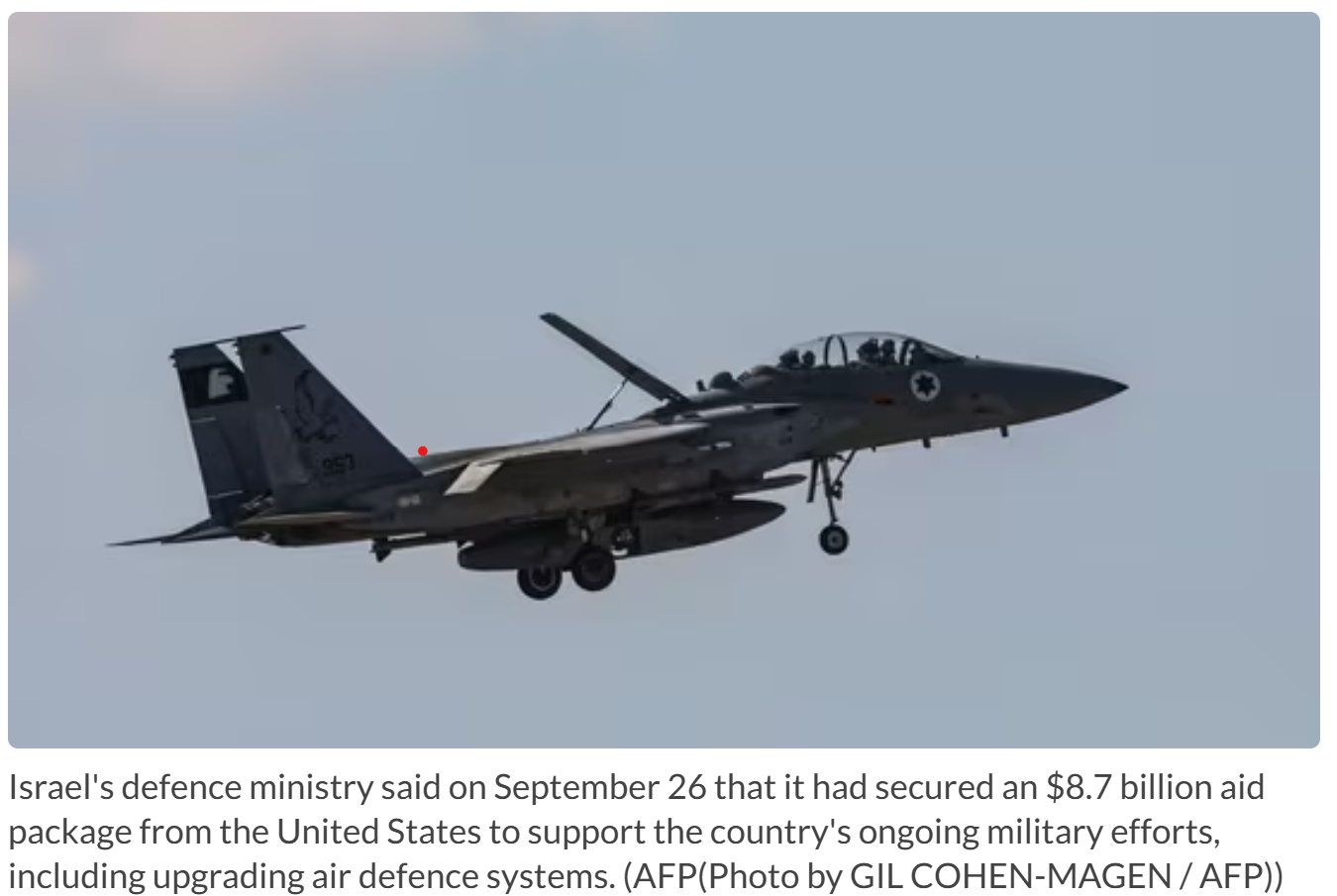
- 14 Oct 2024
In News:
The US pledged its THAAD missile defence system as well as several troops to Israel after Iran warned the country to not get involved.
In a new boost to Israeli forces, the United States will send a Terminal High Altitude Area Defence battery (THAAD) and troops to Israel amid its ongoing offensive against the Hezbollah.
THAAD battery:
- The Terminal High Altitude Area Defence system (THAAD) is an American anti-ballistic missile defence system. It can shoot down short, medium and intermediate range missiles in it's sphere.
- The THAAD has a “hit to kill” approach which blasts missiles as they before they enter their target zone during their descent.
- The THAAD was developed by the US after their experience of Iraq's Scud missile attacks during the Persian Gulf War in 1991. Out of a total of 88 Scud missiles, Iraq fired 42 into Israel and 46 into Saudi Arabia, killing many American soldiers in barracks as well.
- The first proposal for the THAAD was submitted to the US Defence Ministry in 1987 and a series of tests resulting in failures, finally led to a successful version in 1999.
- In 2008, the US deployed an early missile warning radar, a part of the THAAD system to Israel. Similar deployments were also made in 2012 and 2019, aiding Israel's ability to emerge as a military power in the Middle East.
Wayanad’s New X-Band Radar
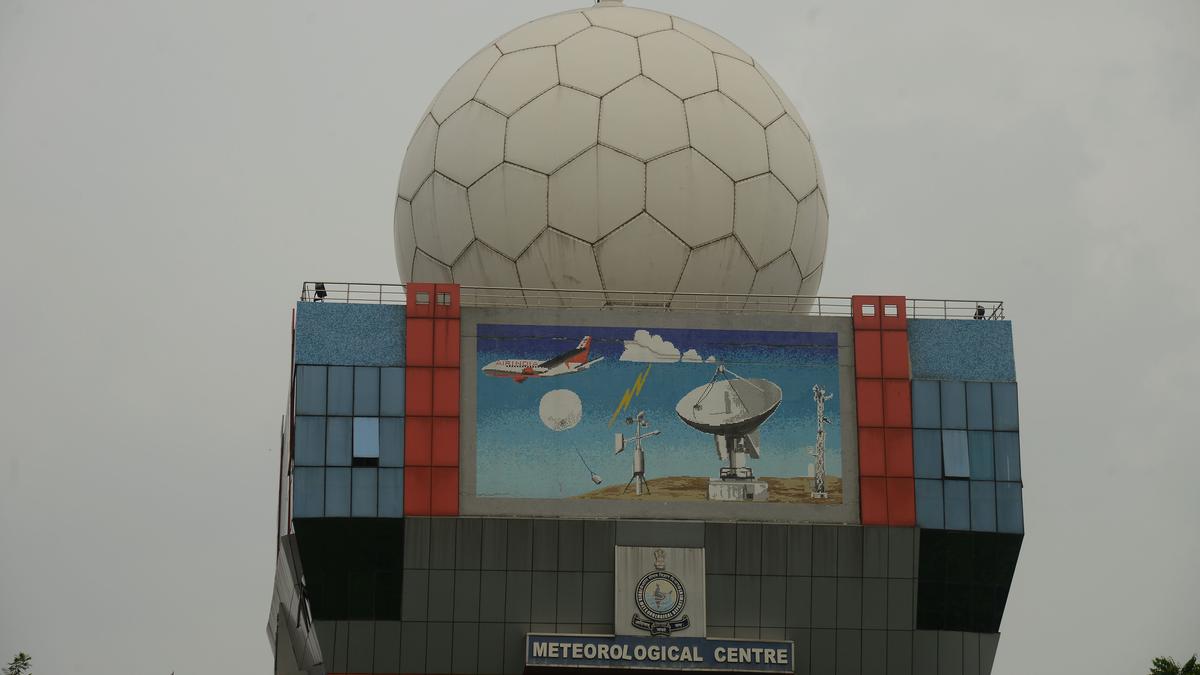
- 14 Oct 2024
In News:
- Following devastating floods and landslides in July 2024 that resulted in over 200 fatalities in Wayanad, Kerala, the Union Ministry of Earth Sciences approved the installation of an X-band radar to enhance monitoring and early warning systems.
- Impact of Events: The floods were exacerbated by heavy rains, leading to significant debris flows and landslides, highlighting the need for advanced meteorological tools.
What is Radar?
- Definition: Radar stands for "Radio Detection and Ranging." It uses radio waves to determine the distance, velocity, and characteristics of objects.
- Functioning: A transmitter emits radio signals that reflect off objects, returning to a receiver for analysis. This technology is crucial in meteorology for monitoring weather patterns.
X-Band Radar Specifics
- Operating Frequency: X-band radar operates at 8-12 GHz, corresponding to wavelengths of 2-4 cm. This allows it to detect smaller particles, such as raindrops and soil.
- Advantages: The shorter wavelengths provide higher resolution images but have a limited range due to faster signal attenuation.
- Applications: In Wayanad, the radar will monitor particle movements like soil, enabling timely landslide warnings through high temporal sampling.
India’s Radar Network
- Historical Context: India has utilized radar for meteorological purposes since the early 1950s. The first indigenous X-band radar was established in 1970.
- Current Infrastructure: India operates both X-band and S-band radars (2-4 GHz) for various meteorological functions. The X-band network includes storm detection and wind-finding capabilities.
- Future Plans: The Indian government plans to add 56 more Doppler radars under the ?2,000-crore "Mission Mausam," enhancing weather forecasting capabilities across the country.
NISAR Satellite
- Collaboration: NISAR (NASA-ISRO Synthetic Aperture Radar) is a joint satellite project between NASA and ISRO, set to launch in 2025.
- Capabilities: It will feature L-band and S-band radars to monitor Earth’s landmass changes, further supporting environmental monitoring and disaster management.
Global Hunger Index 2024
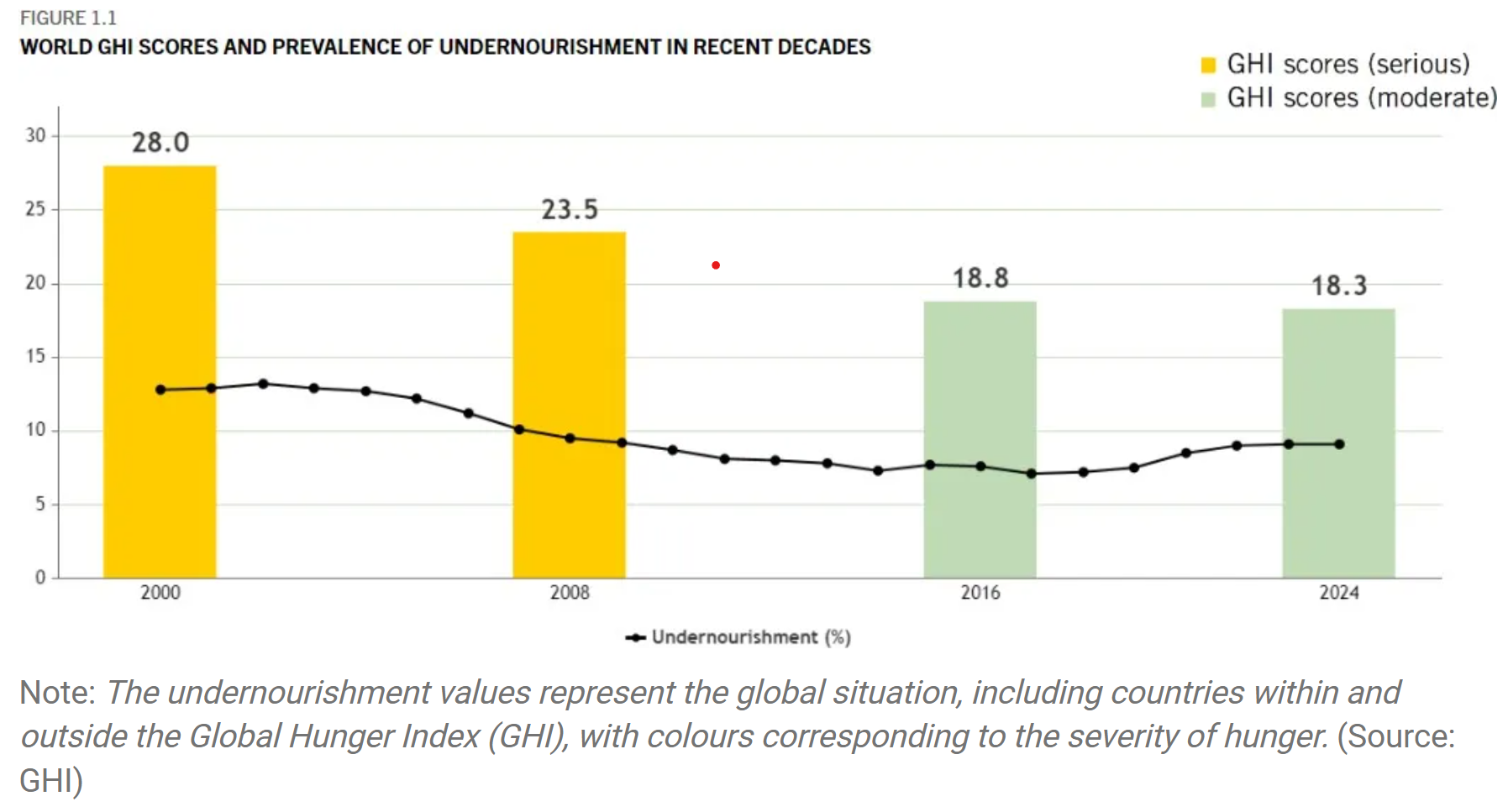
- 14 Oct 2024
In News:
The 2024 Global Hunger Index (GHI) emphasizes food as a fundamental human right, alongside air and water.
Key Highlights:
- Current Crisis: Despite adequate food production globally, around 350 million people face extreme hunger, with 49 million on the brink of famine.
- Statistics: Over 820 million people are chronically undernourished, and malnutrition claims the lives of five million children under five each year.
Top 10 Countries Most Affected by Hunger (2024)
- Somalia: GHI Score 44.1 (GHI 2000: 63.3)
- Yemen: GHI Score 41.2 (GHI 2000: 41.6)
- Chad: GHI Score 36.4 (GHI 2000: 50.5)
- Madagascar: GHI Score 36.3 (GHI 2000: 42.3)
- Democratic Republic of the Congo: GHI Score 34.9 (GHI 2000: 47.2)
- Haiti: GHI Score 34.3 (GHI 2000: 39.8)
- Niger: GHI Score 34.1 (GHI 2000: 53.1)
- Liberia: GHI Score 31.9 (GHI 2000: 48.0)
- Central African Republic: GHI Score 31.5 (GHI 2000: 48.0)
- Korea (DPR): GHI Score 31.4 (GHI 2000: 43.7)
India's Position
- Ranking: India ranks 105th in the GHI 2024, categorized as having a "serious" hunger situation.
- GHI Score: India’s score stands at 27.3, showing some improvement from a score of 38.4 in 2000 (previously classified as "alarming").
Key Concerns in India
- Undernourishment: 13.7% of the population is undernourished.
- Child Stunting: 35.5% of children under five are stunted.
- Child Wasting: 18.7% of children under five experience wasting.
- Child Mortality: 2.9% of children do not survive to age five.
Global Hunger Index (GHI):
A tool measuring hunger across countries based on four indicators:
-
- Undernourishment
- Child Wasting
- Child Stunting
- Child Mortality
- Data Sources: The GHI is based on data from credible organizations like the FAO, WHO, and UNICEF, as well as government surveys.
Hunger Indicators Explained
- Undernourishment: Reflects the overall food access situation.
- Child Wasting: Indicates acute malnutrition; a critical health issue.
- Child Stunting: Reflects chronic malnutrition; significant public health concern.
- Child Mortality: Represents the most severe consequence of hunger.
The 2024 GHI report reveals that while progress has been made in addressing hunger globally, significant challenges remain, particularly in countries like India and the most affected nations. Addressing these issues is crucial for achieving the goal of zero hunger by 2030.
Jipmer Launches ‘Tele-MANAS’ Mental Health Helpline
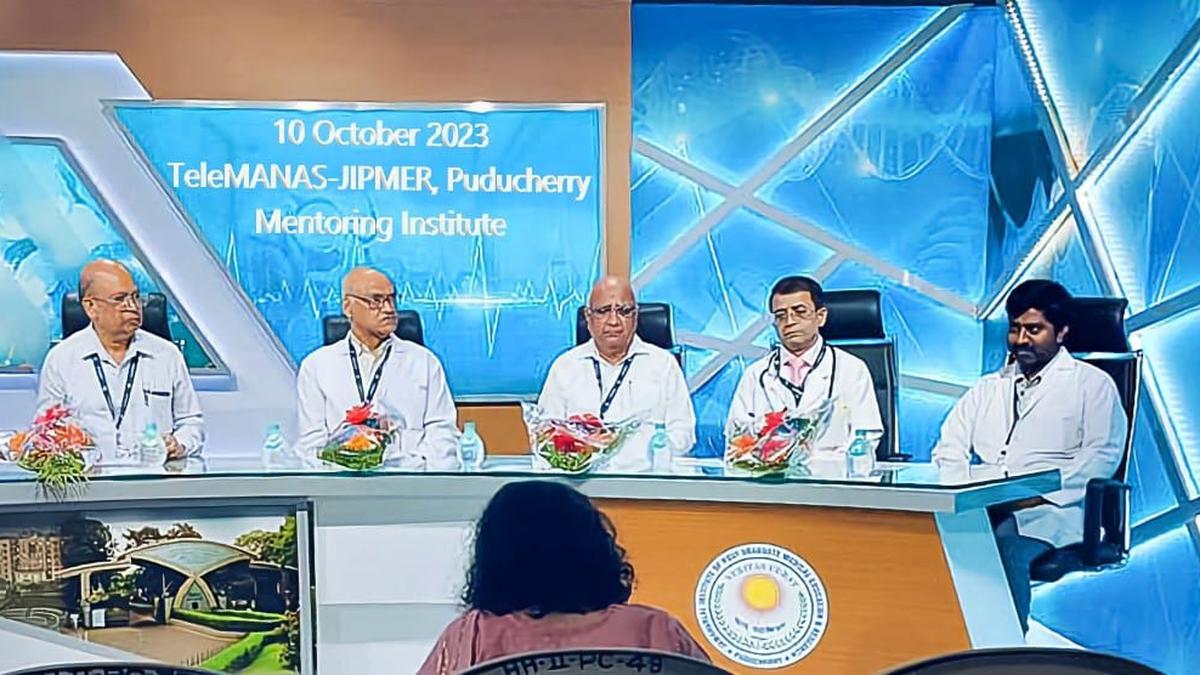
- 14 Oct 2024
In News:
- Jipmer (Jawaharlal Nehru Institute of Postgraduate Medical Education and Research) has launched the "Tele-MANAS" (Tele Mental Health Assistance and Networking Across States) helpline, a toll-free service (14416) aimed at providing mental health support.
- This initiative is part of the National Tele Mental Health Programme (NTMHP), launched by the Union Ministry of Health and Family Welfare.
Purpose and Need:
- With an estimated 1 in 10 people in India suffering from mental illness, and about 1% experiencing severe conditions, the service addresses significant gaps in mental health access, particularly in rural and remote areas.
- The helpline aims to provide immediate support for issues such as anxiety, depression, and emotional distress.
Training and Operations:
- Jipmer will train qualified counsellors who will subsequently train additional counsellors to expand the reach of the service.
- Counselors will be available 24/7, including holidays, to ensure continuous support.
Support Structure:
- Trained counselors will serve as the first point of contact for individuals seeking help, providing responses, suggestions, and necessary referrals to advanced mental health facilities.
- Jipmer will supervise the program, ensuring regular retraining and maintaining service quality.
Integration with National Programs:
- The initiative is coordinated by the National Institute of Mental Health and Neuro Sciences (NIMHANS), which acts as the National Apex Centre for the NTMHP.
- It includes a comprehensive information library on mental health and guidance for managing early signs of stress and emotional challenges.
Impact on Mental Health Services:
- The program aims to enhance the overall quality of mental health services across states and union territories in India, making them more accessible to a larger population.
- Emphasizes the importance of mental health as a public health priority.
New Cancer Therapy Target
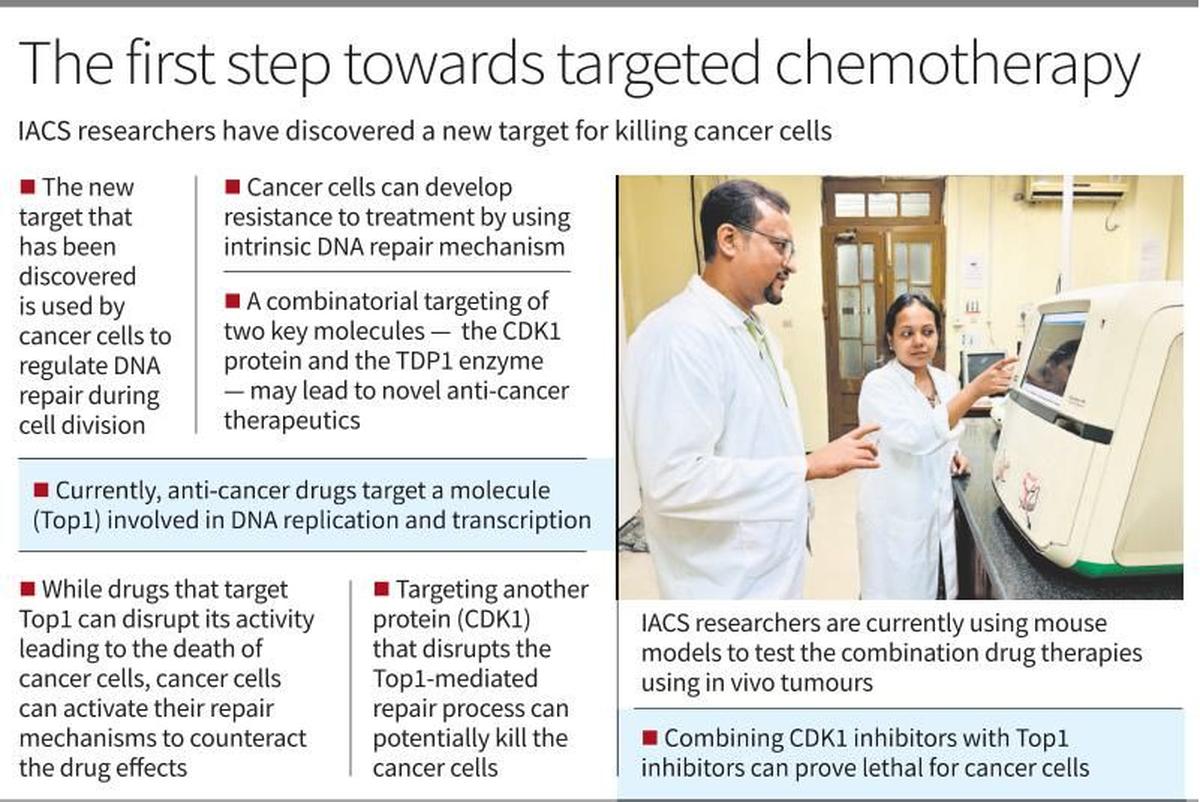
- 11 Oct 2024
In News:
Scientists have identified a promising new target for cancer treatment by activating a DNA repair enzyme called TDP1. This approach suggests a combination therapy that could serve as a potential precision medicine for patients resistant to current treatments.
- Current Treatment Limitations:
- Existing anticancer drugs (e.g., Camptothecin, Topotecan, Irinotecan) target Topoisomerase 1 (Top1), essential for DNA replication and transcription.
- Cancer cells frequently develop resistance to these single-agent therapies, necessitating alternative treatment strategies.
- Research Insights:
- Conducted by scientists at the Indian Association for the Cultivation of Science (IACS), Kolkata, under the Department of Science and Technology (DST).
- The study focused on how cancer cells repair DNA during cell division and respond to chemotherapy targeting Top1.
- Key Findings:
- The research, published in The EMBO Journal 2024, highlights two critical proteins:
- Cyclin-dependent kinase 1 (CDK1)
- Tyrosyl-DNA phosphodiesterase 1 (TDP1)
- CDK1 regulates the DNA repair process, while TDP1 helps cancer cells survive by repairing drug-induced Top1 damage.
- The research, published in The EMBO Journal 2024, highlights two critical proteins:
- Mechanism of Action:
- TDP1 repairs Top1 that is trapped during the S phase of DNA replication.
- The role of TDP1 during the mitotic phase was previously unknown; CDK1 phosphorylates TDP1, enhancing its repair capabilities.
- Phosphorylation is crucial for efficient DNA repair, allowing cancer cells to withstand Top1-targeted chemotherapy.
- Potential for Combination Therapy:
- Targeting both CDK1 and TDP1 could help overcome drug resistance and improve treatment efficacy.
- Suggested use of CDK1 inhibitors (e.g., avotaciclib, alvocidib) alongside Top1 inhibitors may disrupt DNA repair and halt the cell cycle, increasing cancer cell mortality.
- Research Implications:
- Phosphorylation of TDP1 by CDK1 is essential for managing DNA damage in cancer cells.
- Inhibiting CDK1 may induce chromosome instability, effectively targeting cancer cells.
- The combination of CDK1 and Top1 inhibitors aims to enhance cancer treatment effectiveness.
- Future Directions:
- Identifying CDK1 and TDP1 as potential targets paves the way for developing new cancer therapies that inhibit DNA repair mechanisms.
- Further studies using animal models are ongoing to validate this innovative approach for precision medicine in treating resistant cancers.
NABARD Survey on Rural Financial Inclusion
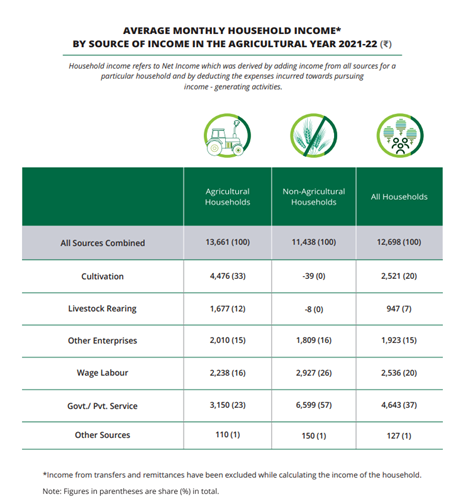
- 11 Oct 2024
In News:
NABARD has published the findings from its second All India Rural Financial Inclusion Survey (NAFIS) for 2021-22, which offers primary data based on a survey of 1 lakh rural households, covering various economic and financial indicators in the post-COVID period.
Survey Overview:
- Inaugural survey conducted for 2016-17, results released in August 2018.
- Aims to analyze changes in rural economic conditions since 2016-17.
- Included all 28 states and Union Territories of Jammu & Kashmir and Ladakh.
Insights from NAFIS 2021-22
- Increase in Average Monthly Income:
- Average monthly income rose by 57.6% from Rs. 8,059 (2016-17) to Rs. 12,698 (2021-22).
- Nominal CAGR of 9.5%, with annual nominal GDP growth at 9%.
- Agricultural households earned Rs. 13,661; non-agricultural households earned Rs. 11,438.
- Salaried employment contributed 37% to total income; cultivation contributed one-third for agricultural households.
- Rise in Average Monthly Expenditure:
- Average monthly expenditure increased from Rs. 6,646 (2016-17) to Rs. 11,262 (2021-22).
- Agricultural households reported higher consumption (Rs. 11,710) compared to non-agricultural households (Rs. 10,675).
- Expenditure exceeded Rs. 17,000 in states like Goa and Jammu & Kashmir.
- Increase in Financial Savings:
- Annual average financial savings grew to Rs. 13,209 in 2021-22 from Rs. 9,104 in 2016-17.
- 66% of households saved in 2021-22, up from 50.6% in 2016-17.
- 71% of agricultural households reported savings, compared to 58% of non-agricultural households.
- States like Uttarakhand (93%) and Uttar Pradesh (84%) had high saving rates, while Goa (29%) and Kerala (35%) had lower rates.
- Kisan Credit Card (KCC) Coverage:
- 44% of agricultural households possessed a valid KCC.
- Among larger landholders and those with recent agricultural loans, 77% reported having a KCC.
- Insurance Coverage:
- Households with at least one insured member increased from 25.5% (2016-17) to 80.3% (2021-22).
- Vehicle insurance was most common (55%), followed by life insurance (24%).
- Pension Coverage:
- Households with at least one member receiving any form of pension rose from 18.9% to 23.5%.
- 54% of households with members over 60 years old reported receiving a pension.
- Financial Literacy:
- Good financial literacy increased by 17 percentage points, from 33.9% to 51.3%.
- Sound financial behavior improved from 56.4% to 72.8%.
Conclusion
- The NAFIS 2021-22 highlights significant advancements in rural financial inclusion since 2016-17.
- Improvements in income, savings, insurance coverage, and financial literacy are notable.
- Government welfare schemes (e.g., PM Kisan, MGNREGS) have positively impacted rural lives.
- Continued support and investment in rural development are essential for economic empowerment and financial security in India's rural population.
Colombo Security Conclave
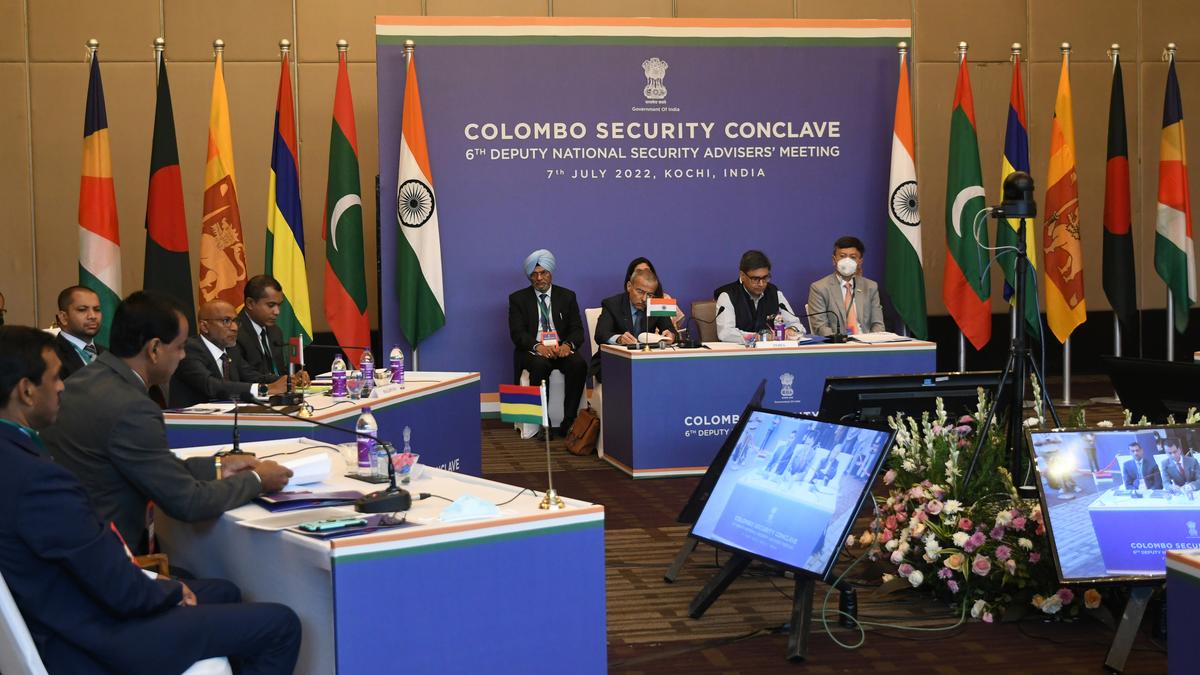
- 11 Oct 2024
In News:
The Colombo Security Conclave (CSC) reached a milestone on August 30, 2024 with India, Sri Lanka, the Maldives and Mauritius signing a Charter and a memorandum of understanding, for the establishment of the CSC secretariat.
Key Facts:
Background of CSC:
- Originally called the NSA Trilateral on Maritime Security, the CSC was established in 2011 among India, Sri Lanka, and the Maldives. The initiative aimed to bolster maritime security in the Indian Ocean Region.
Membership:
- The founding members include India, Sri Lanka, and the Maldives. Mauritius joined in 2022, and Bangladesh became a member in 2024. Seychelles participates as an observer state.
Goals of CSC:
The CSC aims to foster cooperation in five main areas:
- Maritime safety and security
- Counterterrorism and prevention of radicalization
- Combating trafficking and transnational organized crime
- Cybersecurity and safeguarding critical infrastructure
- Humanitarian assistance and disaster relief
Defence Exercises:
- In November 2021, India, Sri Lanka, and the Maldives held Exercise Dosti XV in the Maldives, marking their first joint military exercise in the Arabian Sea under the CSC framework.
Unexpected Transformation of the Sahara Desert
- 10 Oct 2024
In News:
The Sahara Desert, one of the driest regions globally, is undergoing a surprising transformation due to an extratropical cyclone that impacted northwestern Africa on September 7-8, leading to patches of green across Morocco, Algeria, Tunisia, and Libya.
Key Details:
- Satellite Observations: NASA's satellite images reveal extensive greenery sprouting in areas typically known for drought conditions, as reported by NASA’s Earth Observatory.
- Flourishing Vegetation: Climate researcher Sylwia Trzaska noted that shrubs and trees are thriving in low-lying regions like riverbeds. Peter de Menocal, president of the Woods Hole Oceanographic Institution, highlighted that plant life can quickly respond to significant rainfall, transforming dunes into vibrant landscapes.
- Historical Context: Research indicates that the Sahara was once a lush environment with lakes and vegetation between 11,000 and 5,000 years ago. Recent heavy rains have replenished normally dry lakes.
- Rainfall Dynamics: The unusual rainfall event is attributed to the northward shift of the Intertropical Convergence Zone (ITCZ), which has moved further north than usual, resulting in equatorial-like downpours in the Sahara. Some areas experienced over half a foot of rain, surpassing typical annual precipitation levels.
- Impact of Rain Patterns: While the rains primarily affected less populated regions, severe flooding has resulted in over 1,000 fatalities and impacted around four million people across 14 African nations, according to reports from the World Food Programme and Associated Press.
- Climate Change Factors: Experts suggest that the repositioning of the ITCZ may be connected to record-high ocean temperatures and climate change, potentially altering rainfall patterns across Africa.
- Future Projections: As global ocean temperatures stabilize, de Menocal predicts that the rain belt may revert to a more southerly position, potentially crossing the equator.
- Sahara Desert Facts:
o The Sahara is the world's largest hot desert, spanning approximately 4,800 km in length and 1,800 km in width.
o It covers about 31% of the African continent, extending across 11 North African nations, including Algeria, Egypt, Mali, Morocco, Western Sahara, Tunisia, Chad, Libya, Mauritania, Niger, and Sudan
Universal Postal Union

- 10 Oct 2024
In News:
The Universal Postal Union (UPU) is set to assess the integration of the Unified Payment Interface (UPI) with cross-border remittances via the global postal network, according to a recent official announcement.
About the Universal Postal Union
The UPU is a specialized agency of the United Nations and serves as the main platform for international cooperation in the postal sector. Established by the Treaty of Bern in 1874, it stands as the second oldest international organization in the world.
Functions
The UPU coordinates postal policies among its member nations and oversees the global postal system. It establishes the rules for international mail exchanges and makes recommendations aimed at enhancing the volume and quality of mail, parcel, and financial services. Additionally, it plays an advisory, mediating, and liaison role while providing technical assistance when necessary.
Membership
Any member state of the United Nations is eligible to join the UPU. Non-member countries can also become UPU members, subject to approval by at least two-thirds of the existing member nations. Currently, the UPU comprises 192 member countries.
Structure
The UPU consists of four main bodies:
1. The Congress: The highest authority of the UPU, convening every four years.
2. The Council of Administration: Responsible for ensuring the continuity of UPU operations between Congresses and supervising activities related to regulatory, administrative, legislative, and legal matters.
3. The Postal Operations Council: Acts as the technical and operational hub of the UPU, composed of 48 member countries elected during Congress.
4. The International Bureau: Functions as the secretariat, providing logistical and technical support to the other UPU bodies.
The headquarters of the Universal Postal Union is located in Bern, Switzerland.
Caracal
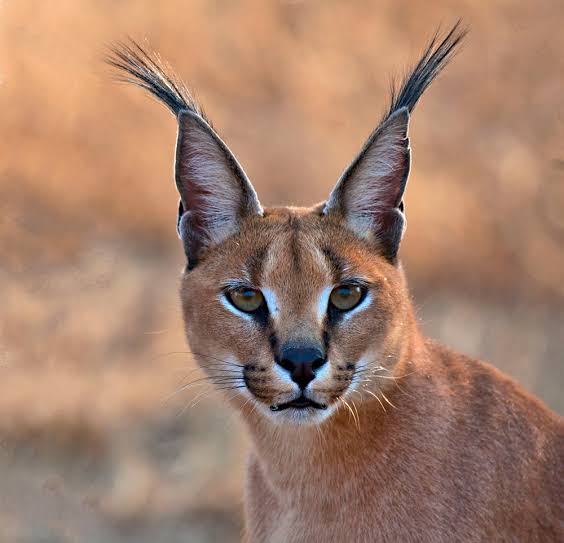
- 10 Oct 2024
In News:
The Gujarat government has recently announced plans to establish a Caracal Breeding and Conservation Center in the Chadva Rakhal area of Kutch, with a budget of ?10 crore.
About the Caracal
- The caracal, known locally as "siya gosh" (meaning "black ear" in Persian), is a reclusive and primarily nocturnal feline celebrated for its agility and remarkable skill in catching birds mid-flight.
- In terms of nesting, caracals typically utilize abandoned porcupine burrows or rock crevices for denning and are often found with their young hidden among dense vegetation. They tend to live in small groups, and their elusive behavior makes them hard to spot in the wild.
Habitat and Distribution
Caracals inhabit various environments, including woodlands, savannahs, and scrub forests. In India, suitable habitats are found in regions such as Kutch, the Malwa Plateau, the Aravalli hills, and Bundelkhand. This species is also present in numerous countries across Africa, the Middle East, Central Asia, and South Asia.
Threats to Survival
The caracal faces significant threats from extensive hunting, illegal wildlife trade, and the destruction of its natural habitats.
Conservation Status
According to the IUCN, the caracal is classified as "Least Concern." In India, it is protected under Schedule I of the Wildlife (Protection) Act, 1972.
RBI's Recent Monetary Policy Review
- 10 Oct 2024
In News:
The Reserve Bank of India (RBI) maintained its benchmark interest rate at 6.5% for the 10th consecutive monetary policy review since April 2023. The policy stance was shifted to “neutral,” indicating potential for a future rate cut.
Monetary Policy Committee (MPC) Overview
- The decision to keep interest rates unchanged was supported by a majority of five out of six members of the MPC, which convened for three days starting October 7.
- The change in policy stance from “withdrawal of accommodation” to “neutral” was unanimously agreed upon.
Focus Areas
- The MPC emphasized the need for a durable alignment of inflation with targets while supporting economic growth.
- Macroeconomic parameters for inflation and growth were described as well balanced.
Inflation Insights
- A moderation in headline inflation is expected to reverse in September, likely remaining elevated due to adverse base effects.
- Retail inflation was below the central bank’s median target of 4% in July and August.
Growth Projections
- The RBI maintained its 7.2% GDP growth projection and a 4.5% average inflation estimate for 2024-25, with risks evenly balanced.
- Second-quarter inflation projection was revised down to 4.1% from 4.4%, while a rise to 4.8% is expected for the October to December quarter.
Domestic Growth and Investment
- Domestic growth remains robust, with private consumption and investment growing together.
- This growth has provided the RBI with the capacity to prioritize inflation control to achieve the 4% target.
Risks to Inflation
The Governor highlighted that unexpected weather events and escalating geopolitical conflicts pose significant upside risks to inflation.
National Maritime Heritage Complex (NMHC)
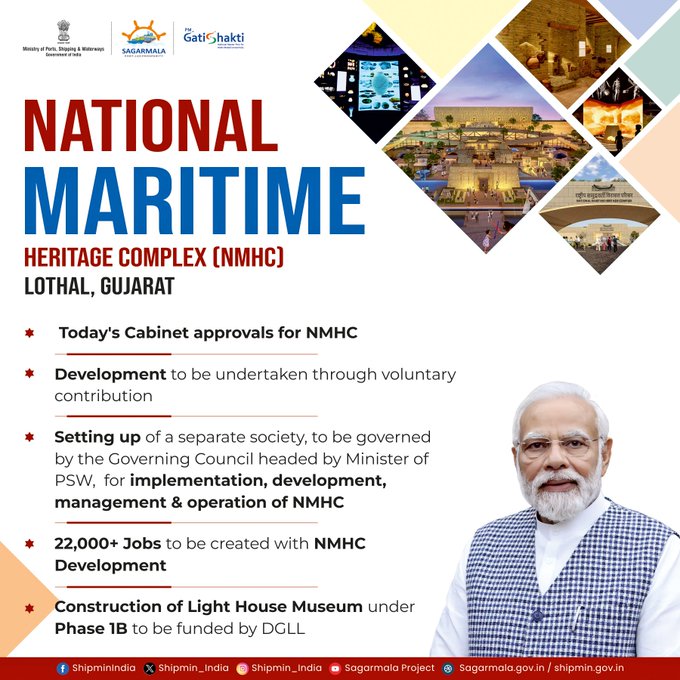
- 10 Oct 2024
In News:
The Union Cabinet has approved the development of NMHC in Lothal, Gujarat, under the Sagarmala programme.
- Purpose and Vision Aimed at showcasing India’s 4,500-year-old maritime heritage using an edutainment approach with modern technology.
Employment Generation
- Expected to create approximately 22,000 jobs: 15,000 direct and 7,000 indirect.
Project Phases
- Phase 1A
- Features a museum with 6 galleries, including:
- A large Indian Navy & Coast Guard gallery with external naval artifacts.
- Replica of Lothal township surrounded by an open aquatic gallery.
- A jetty walkway.
- Phase 1B
- Expansion includes:
- 8 additional galleries.
- The world's tallest Light House Museum.
- Bagicha complex with facilities for 1,500 cars, a food hall, and a medical center.
- Phase 2
- Development of Coastal States Pavilions by respective states and union territories.
- Hospitality zone featuring maritime-themed eco-resorts and museuotels.
- Recreation of ancient Lothal City and establishment of a Maritime Institute with hostel.
- Creation of four theme-based parks:
- Maritime & Naval Theme Park
- Climate Change Theme Park
- Monuments Park
- Adventure & Amusement Park
Governance and Management
- Governing Council
- Chaired by the Minister of Ports, Shipping & Waterways, overseeing project implementation and operation.
- Separate Society
- A dedicated society will manage future phases, governed under the Societies Registration Act, 1860.
Benefits and Funding
- Beneficiaries
- Local communities, tourists, researchers, government bodies, educational institutions, cultural organizations, conservation groups, and businesses.
- Funding
- Construction of the Light House Museum in Phase 1B will be financed by the Directorate General of Lighthouses and Lightships (DGLL).
Sagarmala Programme
- Objective
- A flagship initiative aiming to transform India’s maritime sector by enhancing logistics performance and fostering port-led development and coastal community upliftment.
- Background
- Approved in March 2015, the programme focuses on utilizing India’s extensive coastline and waterways for economic growth.
Pradhan Mantri Awas Yojana-Gramin (PMAY-G)
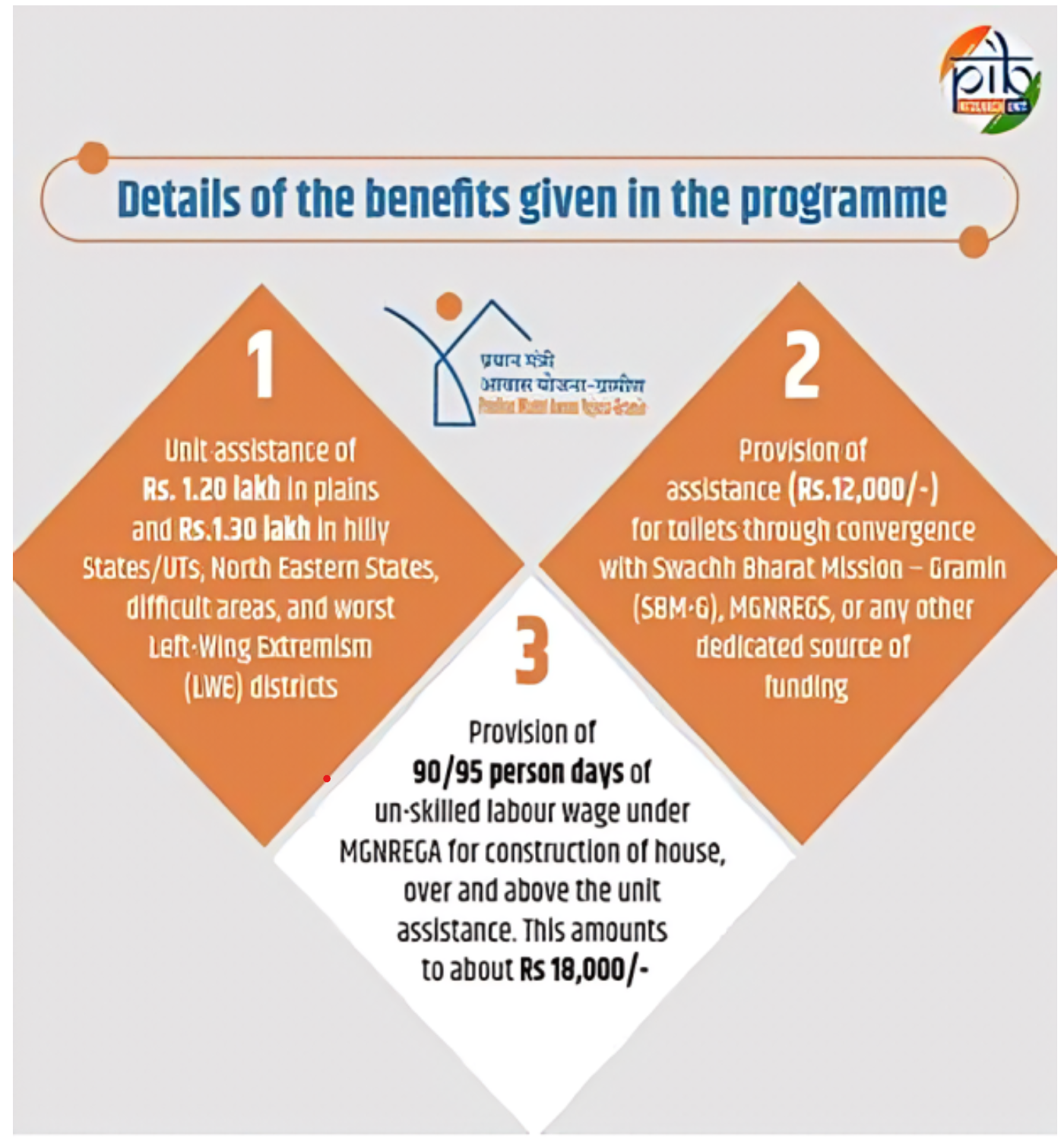
- 09 Oct 2024
Recent Initiatives:
- The Indian government has launched a nationwide survey of kutcha houses.
- Introduction of the Awas Sakhi mobile app to streamline housing assistance.
Purpose of the Kutcha House Survey
- Identify Housing Needs: The survey aims to collect data on families living in kutcha (temporary) houses, enabling targeted support for those in need.
- Support for Awas Sakhi App: The survey will enhance the functionality of the Awas Sakhi app, facilitating the application process and providing beneficiaries with vital housing information.
Overview of PMAY-G
- Launch: Initiated in 2016, PMAY-G aims to provide secure housing for the poorest communities.
- Beneficiary Selection Process: A comprehensive three-stage validation, including the Socio-Economic Caste Census 2011, Gram Sabha approvals, and geo-tagging, ensures that aid reaches those most deserving.
Benefits for PMAY-G Beneficiaries
- Financial Assistance:
- ?1.20 lakh for families in plain areas.
- ?1.30 lakh for families in hilly regions, including northeastern states and union territories.
- Support for Sanitation:
- An additional ?12,000 for toilet construction, aligned with the Swachh Bharat Mission – Gramin or MGNREGS.
- Employment Opportunities:
- Provision of 90/95 days of unskilled wage employment through MGNREGA for house construction.
- Access to Basic Amenities:
- Connections for water, LPG, and electricity facilitated through relevant schemes.
- Cost Sharing Structure:
- Expenses are shared in a 60:40 ratio for plain areas and a 90:10 ratio for northeastern states and selected Himalayan states. The Centre covers 100% of costs for other Union Territories.
Progress Under PMAY-G
- Targets: The government aims to construct 2.95 crore houses.
- Current Status: As of August 2024, 2.94 crore houses have been sanctioned, with 2.64 crore completed, enhancing living conditions for millions in rural areas.
Recent Developments
- In August 2024, the Union Cabinet approved funding for two crore additional houses at existing assistance rates.
- Eligibility Criteria Changes:
- Individuals owning bikes or scooters are now eligible.
- The income limit for eligibility has been raised from ?10,000 to ?15,000 per month.
Future Goals
- This initiative, spanning FY 2024-2029, aims to address ongoing housing demands, benefiting approximately 10 crore individuals by providing safe, hygienic, and socially inclusive housing.
2024 Nobel Prize in Chemistry
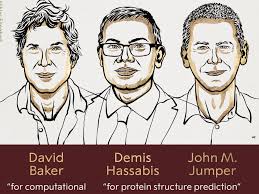
- 09 Oct 2024
In News:
U.S. Scientists David Baker and John Jumper and Britain’s Demis Hassabis won the 2024 Nobel Prize in Chemistry, for their work on understanding the protein structures.
Prize Distribution
- David Baker: Awarded half of the Prize for pioneering work in computational protein design.
- Demis Hassabis and John Jumper: Jointly awarded the other half for their revolutionary contributions to protein structure prediction using artificial intelligence.
Significance of Achievements
- The advancements in protein science represent a major milestone for healthcare and biotechnology.
- These innovations have unlocked new possibilities for designing proteins, potentially leading to breakthroughs in medicine, agriculture, and more.
David Baker's Innovations
- Baker has achieved the significant feat of creating entirely new types of proteins, enhancing our understanding of protein functionality.
- In 2003, he designed a novel protein using amino acids and custom software methods, which opened avenues for rapid protein creation.
- Applications include pharmaceuticals, vaccines, nanomaterials, and tiny sensors.
AI Contributions by Hassabis and Jumper
- Demis Hassabis and John Jumper employed advanced artificial intelligence to address the challenge of predicting complex protein structures.
- In 2020, they introduced the AI model AlphaFold2, which can predict the structure of nearly all identified proteins (approximately 200 million).
Notable Facts about the Nobel Prize in Chemistry
- The Nobel Prize in Chemistry has been awarded 116 times to 197 laureates from 1901 to 2024.
- Frederick Sanger and Barry Sharpless are the only recipients to have won the Prize twice.
- The inaugural Prize was awarded in 1901 to Jacobus H. van ‘t Hoff for his work on chemical dynamics and osmotic pressure.
- Marie Curie became the first woman to win the Prize in 1911 for her discovery of radium and polonium.
- Venkatraman Ramakrishnan, a citizen of Indian origin, received the Prize in 2009 for his research on ribosomes.
2024 Nobel Prize in Physics
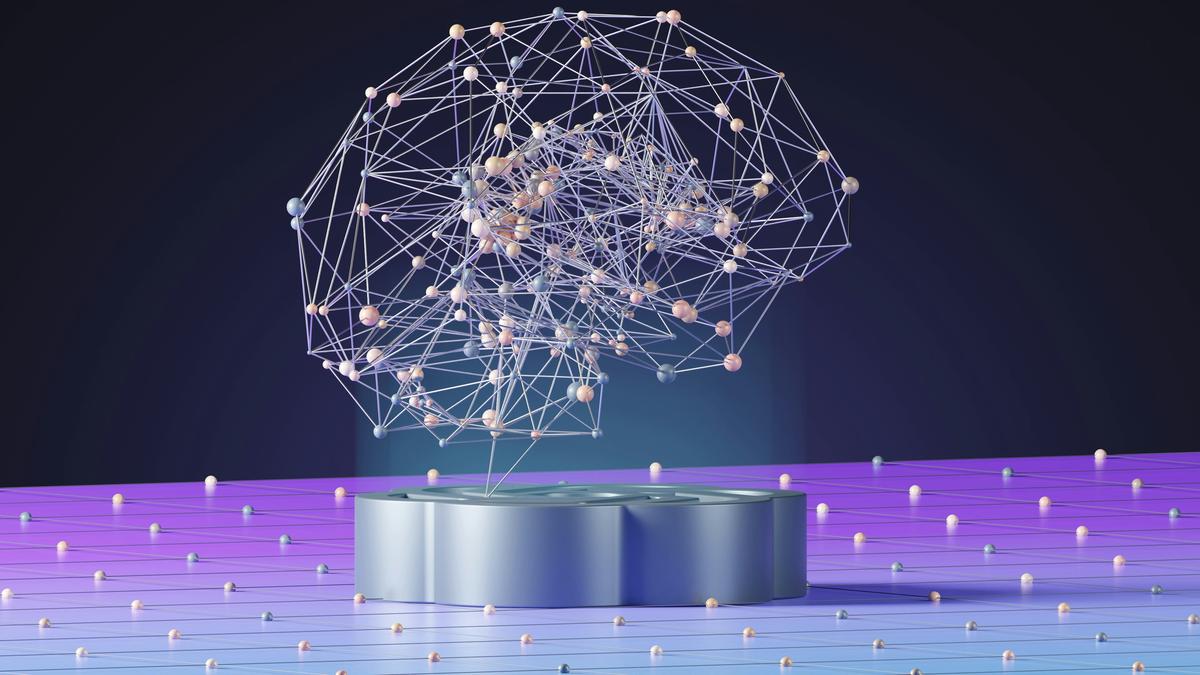
- 09 Oct 2024
In News:
John Hopfield and Geoffrey Hinton won the 2024 Nobel Prize for physics “for foundational discoveries and inventions that enable machine learning with artificial neural networks”. Their work lies at the roots of a large tree of work, the newest branches of which we see today as artificially intelligent (AI) apps like ChatGPT.
Significance of ANNs
- Definition: ANNs are collections of interconnected nodes that mimic the networks of neurons in animal brains, enabling machines to process data, recognize patterns, and learn.
- Applications: Integral to AI applications such as facial recognition, language translation, and numerous fields including physics, chemistry, and medicine.
Historical Context
- Hopfield Network:
- Developed by John Hopfield in 1983.
- Based on Donald Hebb's neuropsychological theory of learning, emphasizing how connections between neurons strengthen through repeated interactions.
- Capable of storing and reconstructing images by adjusting node connections to achieve a low-energy state, effectively denoising input.
- Boltzmann Machine:
- Geoffrey Hinton's work on deep-learning machines, building on Ludwig Boltzmann's statistical mechanics.
- Introduced the concept of generative AI through networks that differentiate between probable outcomes.
- Developed Restricted Boltzmann Machines (RBMs) in the 2000s, enhancing learning efficiency through layered networks.
Evolution and Current State of ANNs
- Technological Progress: ANNs have evolved significantly, transitioning from individual computers to distributed networks like the cloud.
- Current Variants: Innovations include transformers, backpropagation, and long short-term memory techniques, making ANNs more capable and widely accessible.
Concerns and Risks
- Ethical Considerations: Rapid advancements in AI raise concerns about safety, misinformation, and job displacement.
- Expert Opinions: Both Hopfield and Hinton have expressed worries about the implications of AI systems surpassing human intelligence and the potential for misuse.
Trachoma
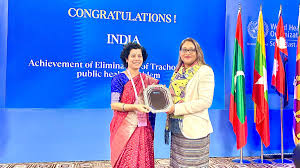
- 09 Oct 2024
In News:
The World Health Organization (WHO) has now recognised that India has successfully eliminated trachoma, a bacterial infection that affects the eyes, as a public health problem.
WHO Declaration:
- India has eliminated Trachoma as a public health problem (2024).
- Third country in the South-East Asia Region to achieve this milestone.
Trachoma Overview:
- Bacterial infection caused by Chlamydia Trachomatis.
- Contagious; spreads through contact with infected secretions.
- Can lead to irreversible blindness if untreated.
- Considered a neglected tropical disease.
Global Impact:
- WHO estimates 150 million affected worldwide; 6 million at risk of blindness.
- Most prevalent in underprivileged communities with poor living conditions.
Historical Context in India:
- Leading cause of blindness in the 1950s-60s.
- National Trachoma Control Program launched in 1963.
- Control efforts integrated into the National Program for Control of Blindness (NPCB).
Statistics:
- Blindness due to Trachoma was 5% in 1971; now reduced to less than 1%.
- Implementation of the WHO SAFE strategy (Surgery, Antibiotics, Facial hygiene, Environmental cleanliness).
Milestones:
- India declared free from infective Trachoma in 2017.
- Continued surveillance for cases from 2019 to 2024.
National Trachomatous Trichiasis (TT) Survey:
- Conducted in 200 endemic districts (2021-2024) under NPCBVI.
- Mandated by WHO to confirm elimination status.
MACE Observatory
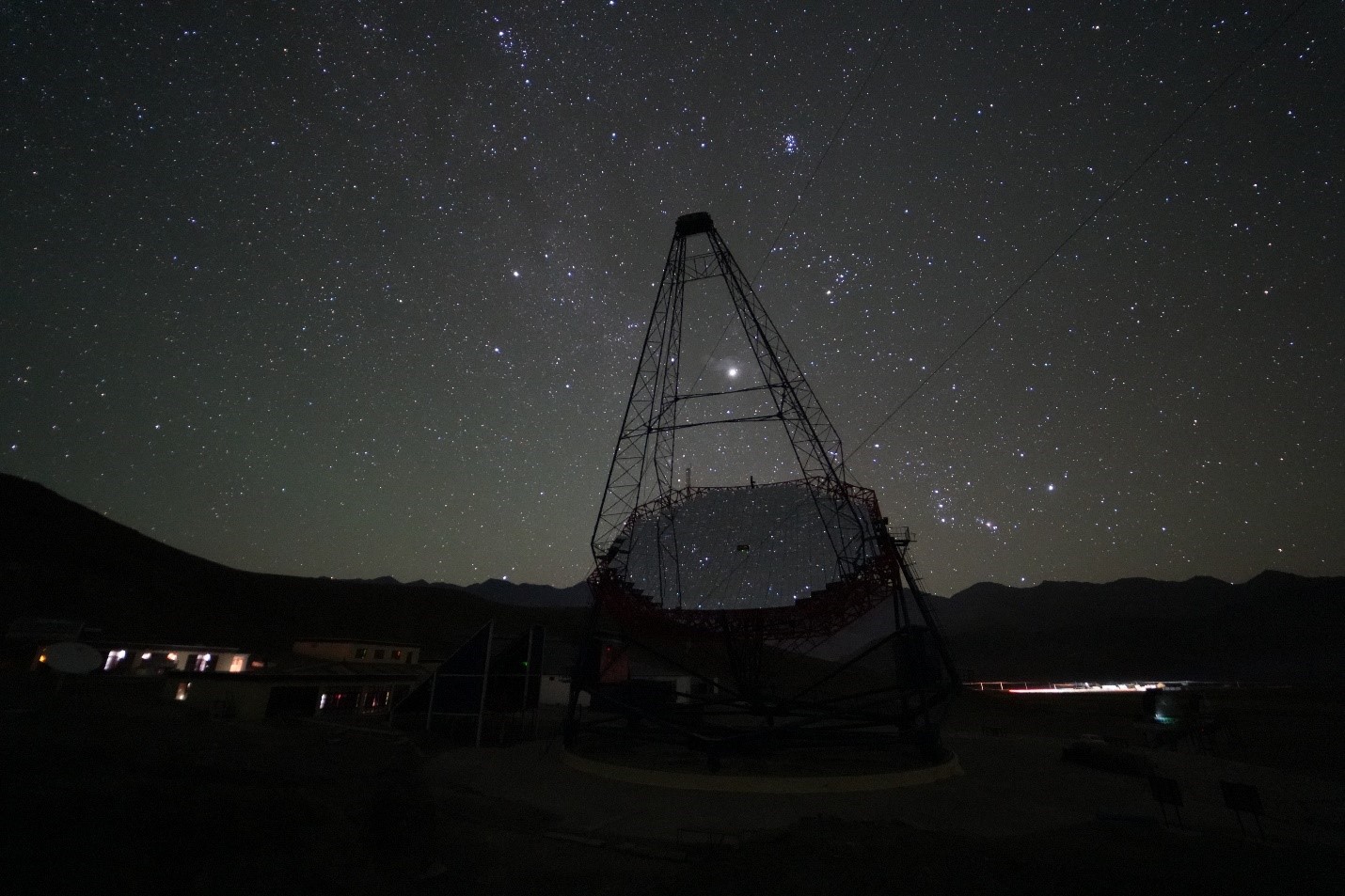
- 09 Oct 2024
In News:
The MACE Observatory was recently inaugurated by the Secretary of the Department of Atomic Energy (DAE) and Chairman of the Atomic Energy Commission in Hanle, Ladakh.
About MACE Observatory
- Name: Major Atmospheric Cherenkov Experiment (MACE) Observatory.
- Significance:
- Largest imaging Cherenkov telescope in Asia.
- Highest imaging Cherenkov observatory in the world.
- Location: Situated at approximately 4,300 meters altitude in Hanle, Ladakh.
- Indigenous Development:
- Built by the Bhabha Atomic Research Centre (BARC).
- Supported by the Electronics Corporation of India (ECIL), Hyderabad, and other Indian industry partners.
Scientific Contributions
- Research Focus:
- Enhances understanding in astrophysics, fundamental physics, and particle acceleration mechanisms.
- Observes high-energy gamma rays to investigate cosmic phenomena like supernovae, black holes, and gamma-ray bursts.
- Global Impact:
- Aims to foster international collaborations in space research.
- Strengthens India’s position in the global scientific community.
Socio-Economic Role
- Local Impact: Contributes to the socio-economic development of Ladakh, promoting scientific awareness and opportunities.
Understanding Cherenkov Radiation
- Definition: A blue glow emitted when charged particles (e.g., electrons and protons) travel faster than light in a specific medium.
- Historical Note: Named after Pavel Cherenkov, who, along with Ilya Frank and Igor Tamm, received the Nobel Prize in Physics in 1958 for his work in demonstrating and explaining this phenomenon.
UK-Mauritius Treaty on Chagos Archipelago
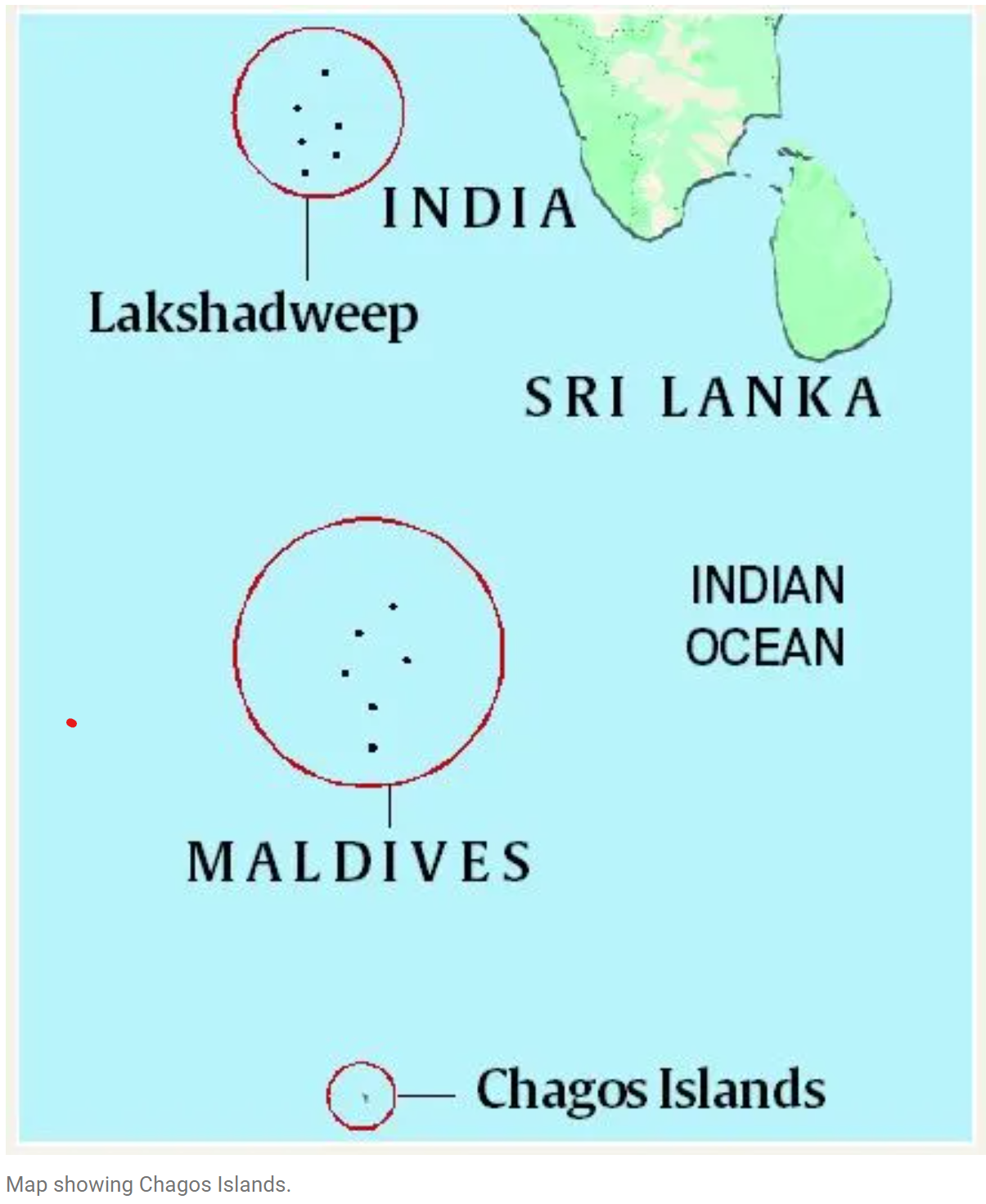
- 08 Oct 2024
In News:
The United Kingdom said it would cede sovereignty of the strategically important Chagos Islands to Mauritius, calling it a “historic political agreement”. The UK has long controlled Chagos and the Diego Garcia military base located there, jointly operating it with the United States.
Background of the Chagos Archipelago
Historical Context
- The Chagos archipelago consists of 58 islands located about 500 km south of the Maldives.
- Initially uninhabited, the islands were populated in the late 18th century through the importation of slave labor.
- The islands were ceded to Britain from France in 1814, and in 1965, the UK established the British Indian Ocean Territory (BIOT), which includes Chagos.
Controversy Over Sovereignty
- Mauritius, a former British colony, claims that the detachment of Chagos from its territory during its independence in 1968 was illegal.
- The UK compensated Mauritius with a grant but retained control, establishing a military base on Diego Garcia.
Strategic Importance of Diego Garcia
Military Significance
- Diego Garcia has been a crucial U.S. military base since its operational status began in 1986.
- It played a key role in U.S. military operations during conflicts in the Gulf, Iraq, and Afghanistan.
- The base enables rapid response to crises and supports regional security, especially in light of U.S. interests in monitoring key trade routes like the Malacca Strait.
Geopolitical Implications
- The presence of the U.S. military in the Indian Ocean is vital for countering security threats, particularly regarding China's growing influence.
Recent Developments: The UK-Mauritius Agreement
Key Features of the Treaty
- On October 3, 2023, the UK agreed to cede sovereignty of the Chagos Islands to Mauritius, marking a significant political shift.
- The treaty allows Mauritius to resettle Chagossians (excluding Diego Garcia) and establishes a trust fund for their benefit.
- Despite this, the UK retains control over Diego Garcia for an initial period of 99 years.
Implications of the Agreement
- The resolution of the sovereignty issue may strengthen Western commitments to a stable and free Indo-Pacific region.
- If unresolved, tensions could push Mauritius toward seeking alliances with alternative powers like China.
India’s Position and Interests
Support for Mauritius
- India has historically supported Mauritius in its claims over Chagos, reflecting its stance against colonial legacies.
- In 2019, India voted in favor of Mauritius at the UN General Assembly regarding the Chagos dispute.
Strategic Partnerships
- With increasing Chinese assertiveness in the Indian Ocean, India has been strengthening its ties with Mauritius.
- Recent initiatives include the inauguration of an India-built airstrip and jetty in Agaléga, enhancing connectivity and support for Mauritius.
Conclusion
The UK-Mauritius treaty over the Chagos Archipelago marks a significant turning point in colonial legacies and geopolitical alliances in the Indian Ocean. For India, supporting Mauritius aligns with its broader strategic interests and enhances its influence in a region marked by competing global powers. As the dynamics evolve, India's role in fostering regional stability and partnerships will be crucial.
44th Session of Codex Committee on Nutrition and Foods for Special Dietary Uses
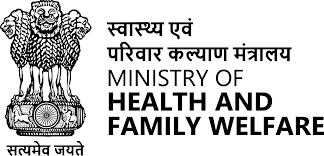
- 08 Oct 2024
In News:
India Participates in 44th Session of Codex Committee on Nutrition and Foods for Special Dietary Uses
Key Contributions:
- Nutrient Reference Values:
- Advocated for reference values for ages 6 to 36 months.
- Suggested combining NRV-R values by averaging those for 6-12 months and 12-36 months.
- This proposal was accepted by the committee.
- Probiotic Guidelines:
- Emphasized the need to update FAO/WHO probiotic guidelines, which are two decades old.
- Highlighted the lack of international harmonization in probiotic regulations affecting global trade.
- Committee agreed to revisit guidelines and requested FAO and WHO to conduct a literature review on probiotics.
- Discussion on Sweetness Assessment:
- Disagreed with the EU’s sensory testing proposal for carbohydrate sources in Follow-up Formula, citing lack of scientific validation.
- Supported by USA, Canada, and others; this led to the committee discontinuing the topic for now.
- Noted that ISO 5495 or other methods could be used in the absence of harmonized methods.
- Delegation:
- Included representatives from the Food Safety and Standards Authority of India, Ministry of Health and Family Welfare, and Ministry of Women and Child Development.
- Advocated for various food safety, consumer health, and trade-related issues.
- Outcome:
- India’s suggestions were officially incorporated into the final report, significantly influencing global food safety and nutrition standards.
- Additional Announcements:
- FAO/WHO plans for a Joint Statement on Healthy Diet Principles.
- Updates on reviewing benefits and risks of Alternative Animal Source Foods (A-ASFs).
- FAO introduced a new “Food and Diet” domain on its FAOSTAT database.
Marburg Virus
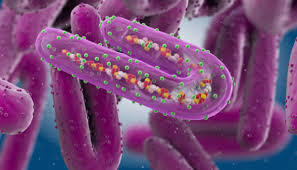
- 08 Oct 2024
In News:
- Definition:
- Marburg virus is one of the deadliest pathogens known to infect humans, causing severe hemorrhagic fever.
- Current Situation in Rwanda:
- Rwanda reported its first Marburg case late last month.
- At least 46 individuals have been infected, with 12 reported deaths.
- Approximately 80% of infections are among medical workers.
- The outbreak poses a significant threat to Rwanda’s fragile healthcare system, which has only 1,500 doctors for over 13 million people.
Characteristics of Marburg Virus
- Deadliness:
- Marburg virus disease (MVD) has case fatality rates ranging from 24% to 88%, depending on the strain and case management.
- The first outbreak occurred in Marburg, Germany, in 1967, with subsequent outbreaks primarily in Africa.
- Family:
- Marburg belongs to the filovirus family, which includes Ebola.
- Both viruses are clinically similar and can cause high-fatality outbreaks.
Transmission
- Initial Infection:
- Human infections initially occurred through prolonged exposure to mines or caves inhabited by Rousettus bats (notably the Egyptian fruit bat).
- Human-to-Human Transmission:
- MVD spreads directly through contact with blood and bodily fluids of infected individuals.
- Indirect transmission can occur via contaminated surfaces and materials (bedding, clothing).
- Risk for Medical Workers:
- Medical workers treating MVD cases are frequently infected, especially when infection control measures are inadequate.
Symptoms of Marburg Virus Disease (MVD)
- Incubation Period: Symptoms can appear 2 to 21 days after infection.
- Initial Symptoms: High fever, Severe headache, Muscle ache, Watery diarrhea, Abdominal pain and cramping, Vomiting
- Hemorrhagic Symptoms:
- Many patients develop bleeding from various sites, including the digestive system (fresh blood in feces and vomit), nose, gums, and vagina.
- Fatalities often occur due to severe blood loss and shock, typically 8 to 9 days after symptom onset.
Prevention and Treatment
- Current Status:
- No approved vaccines or specific treatments exist for MVD.
- Supportive Care:
- Rehydration (oral or intravenous fluids) and symptom management improve survival rates.
- Experimental Treatments:
- Rwanda is seeking experimental vaccines and treatments to address the outbreak.
- The US-based Sabin Vaccine Institute provided 700 doses of an experimental Marburg vaccine for healthcare professionals on the frontlines.
Genome Editing and Hereditary Cancers
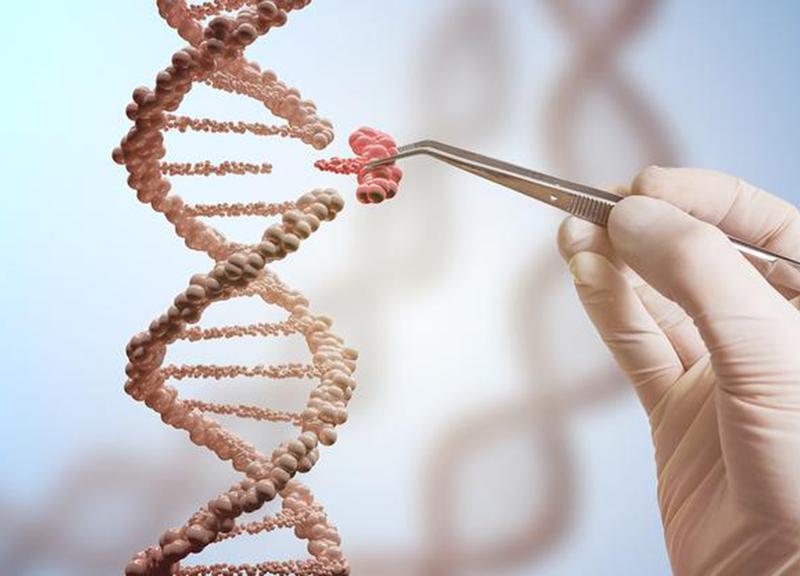
- 08 Oct 2024
In News:
The International Agency for Research on Cancer’s estimates of the burden of 36 cancers in 185 countries suggest one in five individuals has a lifetime risk of developing cancer.
- Impact of CRISPR on Cancer Research:
- CRISPR screens have revolutionized the study of BRCA genes through high-throughput functional genetic analysis.
- Researchers use CRISPR-Cas9 to create specific mutations in BRCA genes, studying their effects on DNA repair and cancer development.
- Cancer Statistics:
- One in five individuals has a lifetime risk of developing cancer (International Agency for Research on Cancer).
- In 2022, there were approximately 20 million new cancer cases and 9.74 million cancer-related deaths; projections suggest these could rise to 32 million new cases and 16 million deaths by 2045, with Asia potentially accounting for half of the cases.
- Genetic Mutations and Inheritance:
- All cancers stem from genetic mutations; about 10% of cancer cases may involve inherited mutations.
- Specific inherited mutation prevalence:
- 20% in ovarian cancer patients.
- 10% in breast, colorectal, lung, and prostate cancers.
- 6% in cervical cancer.
- BRCA Genes Overview:
- The BRCA1 and BRCA2 genes, discovered in 1994 and 1995, are crucial for understanding hereditary cancer syndromes.
- Mutations in BRCA genes significantly increase the risk of breast, ovarian, and prostate cancers.
- BRCA mutations are estimated to occur in 1 in 400 individuals, with higher prevalence (1 in 40) among Ashkenazi Jews due to genetic bottlenecks and founder effects.
- Importance of Genetic Testing:
- Testing for BRCA mutations helps identify individuals at higher risk, enabling personalized prevention strategies such as increased surveillance or preventive surgery.
- The American Society of Clinical Oncology recommends testing for 15 genes related to breast and ovarian cancer risk.
- Targeted Therapies:
- PARP inhibitors represent a new class of chemotherapy drugs effective for cancers with BRCA mutations.
- Clinical trials show promising results, especially when combined with platinum-based chemotherapy.
- Advancements in Understanding Cancer Genes:
- CRISPR technology has improved our understanding of cancer-related genes, enabling researchers to study the effects of specific mutations.
- Studies have identified how different mutations influence responses to therapies like PARP inhibitors.
- Recent Research Findings:
- Research from the Wellcome Sanger Institute identified over 3,000 genetic changes in the RAD51C gene that could significantly increase breast and ovarian cancer risk.
- Variants disrupting RAD51C function can increase ovarian cancer risk six-fold and aggressive breast cancer risk four-fold.
- Risk Spectrum:
- Genetic risk is a spectrum based on how mutations affect protein function.
- Large-scale variant analysis is vital for personalized medicine and cancer prevention.
- Role of Population Studies:
- Population prevalence studies help identify hereditary cancer risks and inform genetic screening for at-risk individuals.
- Early cancer detection allows for better healthcare decisions and potential preventive therapies.
- Goals for Cancer Management:
- The ultimate aim is to reduce cancer morbidity and mortality, leading to healthier lives for individuals and families.
Nobel Prize in Physiology or Medicine 2024: MicroRNA Research

- 08 Oct 2024
Overview
The 2024 Nobel Prize in Physiology or Medicine was awarded to Victor Ambros and Gary Ruvkun for their groundbreaking discovery of microRNA and its crucial role in post-transcriptional gene regulation. This award highlights their individual contributions to understanding how microRNAs influence gene expression, significantly advancing the field of molecular biology.
What are MicroRNAs?
MicroRNAs (miRNAs) are small, non-coding RNA molecules typically 19-24 nucleotides long. They regulate protein production by interacting with messenger RNA (mRNA), ultimately influencing how much protein is synthesized from genetic information.
The Process of Gene Regulation
Gene expression involves two primary steps:
- Transcription: DNA is copied into mRNA in the nucleus.
- Translation: mRNA is translated into proteins by ribosomes with the help of transfer RNA (tRNA).
MicroRNAs play a critical role in regulating this process, particularly after transcription, by silencing mRNA and thereby controlling protein production.
Pioneering Research
Background
In the late 1980s, Ambros and Ruvkun utilized the model organism Caenorhabditis elegans, a small roundworm, to explore developmental processes. They focused on mutant strains, lin-4 and lin-14, which displayed abnormal development.
Key Discoveries
- Victor Ambros: Ambros cloned the lin-4 gene and discovered that it produced a short RNA molecule that did not code for proteins. This finding suggested that lin-4 could inhibit lin-14’s activity.
- Gary Ruvkun: Ruvkun investigated the regulation of the lin-14 gene and determined that lin-4 did not prevent the production of lin-14 mRNA. Instead, it inhibited protein production later in the gene expression process. He identified crucial segments in lin-14 mRNA essential for its inhibition by lin-4.
Collaborative Findings
Their subsequent experiments demonstrated that lin-4 microRNA binds to lin-14 mRNA, effectively blocking the production of lin-14 protein. Their findings were published in 1993 and laid the foundation for the understanding of microRNA.
Impact and Recognition
Initially, the significance of their discoveries was not widely recognized, as it was thought that microRNA regulation was specific to C. elegans. However, Ruvkun’s later identification of the let-7 gene, a microRNA found in various animal species, broadened the understanding of microRNAs' universal role in gene regulation.
Current Understanding
Today, it is known that humans possess over a thousand genes that code for different microRNAs. These molecules are crucial in regulating gene expression across multicellular organisms.
Applications and Future Directions
MicroRNAs can fine-tune gene expression, influencing various cellular functions despite similar genetic backgrounds. Abnormal microRNA regulation has been linked to diseases such as cancer and genetic disorders. While the Nobel Committee acknowledged that practical applications of miRNA research are still developing, understanding these molecules is vital for future research and therapeutic advancements.
Maritime Exercise Malabar 2024
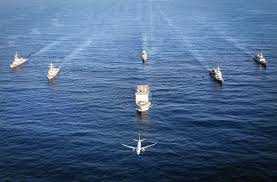
- 07 Oct 2024
In News:
Maritime Exercise Malabar 2024, Commencing at Visakhapatnam on 08 Oct Hosted by India, USA, Australia and Japan in Participation.
Background
- Origins: Initiated in 1992 as a bilateral naval drill between the United States and Indian Navy.
- Evolution: Has grown into a key multilateral exercise aimed at enhancing interoperability and addressing maritime challenges in the Indian Ocean and Indo-Pacific region.
Participating Naval Assets
- India: Various platforms, including:
- Guided missile destroyers
- Multi-purpose frigates
- Submarines
- Fixed-wing maritime reconnaissance aircraft
- Fighter aircraft and helicopters
- Australia:
- HMAS Stuart (Anzac Class Frigate)
- MH-60R helicopter
- P-8 Maritime Patrol Aircraft
- United States:
- USS Dewey (Arleigh Burke-Class Destroyer)
- Integral helicopter
- P-8 Maritime Patrol Aircraft
- Japan:
- JS Ariake (Murasame-class Destroyer)
Focus Areas of the Exercise
- Operational Enhancements:
- Discussions on special operations
- Surface, air, and anti-submarine warfare
- Subject Matter Expert Exchange (SMEE)
- Maritime Operations:
- Anti-submarine warfare
- Surface warfare
- Air defense exercises
- Emphasis: Improving situational awareness in the maritime domain.
Special Events
- Distinguished Visitors’ Day: Scheduled for October 9, 2024.
- Hosted by Vice Admiral Rajesh Pendharkar, Flag Officer Commanding-in-Chief, Eastern Naval Command.
- Joint Press Conference: Co-chaired by heads of delegations from all participating nations during the Harbour Phase.
Significance
- Comprehensive Exercise: Malabar 2024 is expected to be the most detailed edition to date, featuring complex operational scenarios and enhanced cooperation among the naval forces of the participating countries.GS Paper
DefConnect 4.0
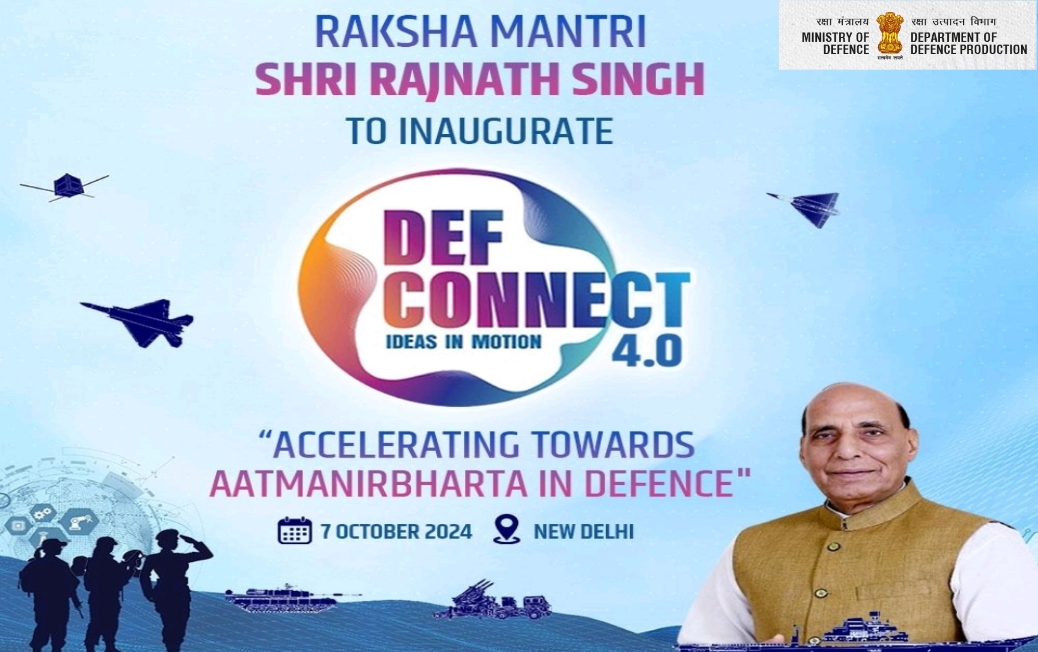
- 07 Oct 2024
In News:
- DefConnect 4.0 was inaugurated by Union Defence Minister Rajnath Singh on October 7, 2024, at Manekshaw Centre, Delhi Cantonment.
- Organizer: Hosted by Innovations for Defence Excellence - Defence Innovation Organisation (iDEX-DIO) under the Department of Defence Production, Ministry of Defence.
Purpose and Focus
- Advancing Indigenous Innovation: Aims to enhance India’s defense ecosystem by promoting self-reliant defense technologies.
- Participants: Involves Armed Forces, Defence Public Sector Undertakings (DPSUs), start-ups, MSMEs, academia, incubators, investors, and policymakers.
Technology Showcase
- Exhibitions: iDEX innovators showcased cutting-edge technologies, products, and capabilities.
- Collaboration and Dialogue: Encourages partnerships and discussions to drive defense innovation and long-term collaborations.
Special Sessions
- Budget Insights: Focused on key takeaways from recent budget announcements impacting the defense innovation ecosystem.
- Semiconductor Domain: Highlighted initiatives and opportunities within the semiconductor sector.
Path Forward: Vision for 2047
- Viksit Bharat Goal: Aligns with India’s vision of becoming a global leader in defense innovation by 2047.
- Government Initiatives: Supports local talent and indigenous solutions through programs like iDEX.
iDEX Impact
- Defence India Start-up Challenges: 11 editions launched, garnering over 9,000 applications.
- Collaborations: Engages with over 450 start-ups/MSMEs on significant defense projects.
- Contribution to Self-Reliance: Supports the goal of achieving self-reliance in the defense and aerospace sectors.
India’s Tripartite Agreement
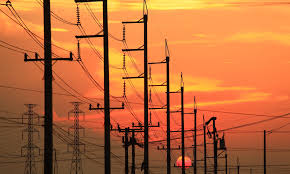
- 07 Oct 2024
In News:
Nepal, India, and Bangladesh have signed a tripartite agreement to facilitate cross-border electricity trade, enabling Nepal to export surplus electricity to Bangladesh via India.
Key Details of the Agreement
- Export Period: The agreement allows for electricity exports from June 15 to November 15 each year.
- Initial Export Volume: In the first phase, Nepal will export 40 MW of hydroelectricity to Bangladesh through Indian territory.
- Electricity Rate: The fixed rate per unit of electricity is set at 6.4 cents.
- Projected Revenue: Nepal is expected to earn approximately $9.2 million annually from this trade.
This agreement aims to enhance regional cooperation in energy trade and support sustainable development in the participating countries.
Increasing Frequency of Typhoons in Southeast Asia
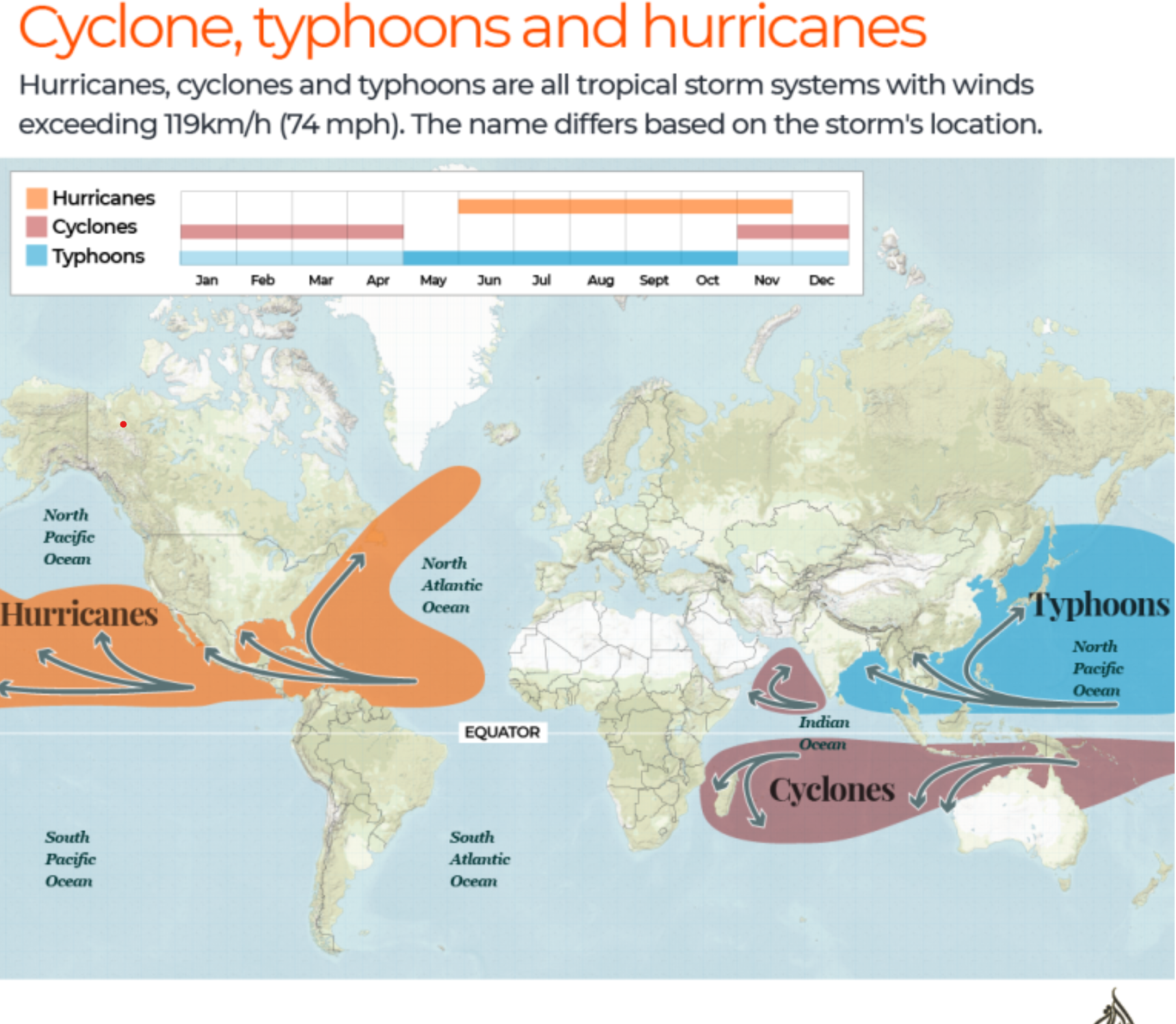
- 07 Oct 2024
In News:
Overview of Typhoons
- Definition: A typhoon is a type of cyclone with wind speeds of 119 km/h or more, forming over warm ocean waters near the equator.
- Mechanism: As warm, moist air rises from the ocean, it creates a low-pressure system, leading to the characteristic circular wind patterns: anticlockwise in the Northern Hemisphere and clockwise in the Southern Hemisphere.
Recent Typhoon Events
- Typhoon Yagi: The most powerful tropical cyclone in Asia in 2024, with peak winds of 260 km/h. It caused significant destruction across Myanmar, Vietnam, Laos, and Thailand, displacing around 631,000 people and resulting in over 500 fatalities.
- Typhoon Bebinca: Reached wind speeds of 151 km/h, classified as a Category 1 storm, impacting eastern China with heavy rainfall and forcing evacuations for over 414,000 residents.
- Typhoon Shanshan: Affected Japan, bringing severe weather conditions.
Why are Typhoons more frequent?
- Rising Sea Surface Temperatures:
- Global warming has raised ocean temperatures, providing more energy for typhoon formation and intensification.
- Atmospheric Circulation Changes:
- Alterations in patterns, such as the weakening of the Walker Circulation, affect the frequency and paths of typhoons.
- El Niño and La Niña Effects:
- The El Niño-Southern Oscillation significantly influences typhoon activity. El Niño years often lead to increased typhoon occurrences in Southeast Asia, while La Niña can enhance cyclone activity in the Western Pacific.
- Increased Atmospheric Moisture:
- Higher global temperatures result in more evaporation, adding moisture to the atmosphere, which fuels stronger storms and increases rainfall intensity.
- Geographical Vulnerability:
- Southeast Asia’s location near warm ocean currents makes it a hotspot for typhoon activity, particularly along its extensive coastlines.
- Marine Heat Waves:
- Climate change has led to more frequent marine heat waves, causing extreme ocean warming, which contributes to intensified storms.
- Weaker Land-Sea Temperature Gradients:
- Changes in temperature differences between land and sea can prolong storm duration and severity.
- Urbanization and Environmental Degradation:
- Rapid urban development and the destruction of coastal ecosystems, like mangroves, diminish natural barriers against storm impacts.
Humanitarian Impact and Response
- The increasing intensity and frequency of typhoons have precipitated severe humanitarian crises in affected regions. The need for international cooperation in disaster response has become critical, involving collaboration among governments, civil societies, and humanitarian organizations to provide aid and support for those affected.
- Understanding the multifaceted reasons behind the rising frequency of typhoons is crucial for developing effective strategies to mitigate their impacts and enhance community resilience in Southeast Asia.
Mpox Diagnostic Test
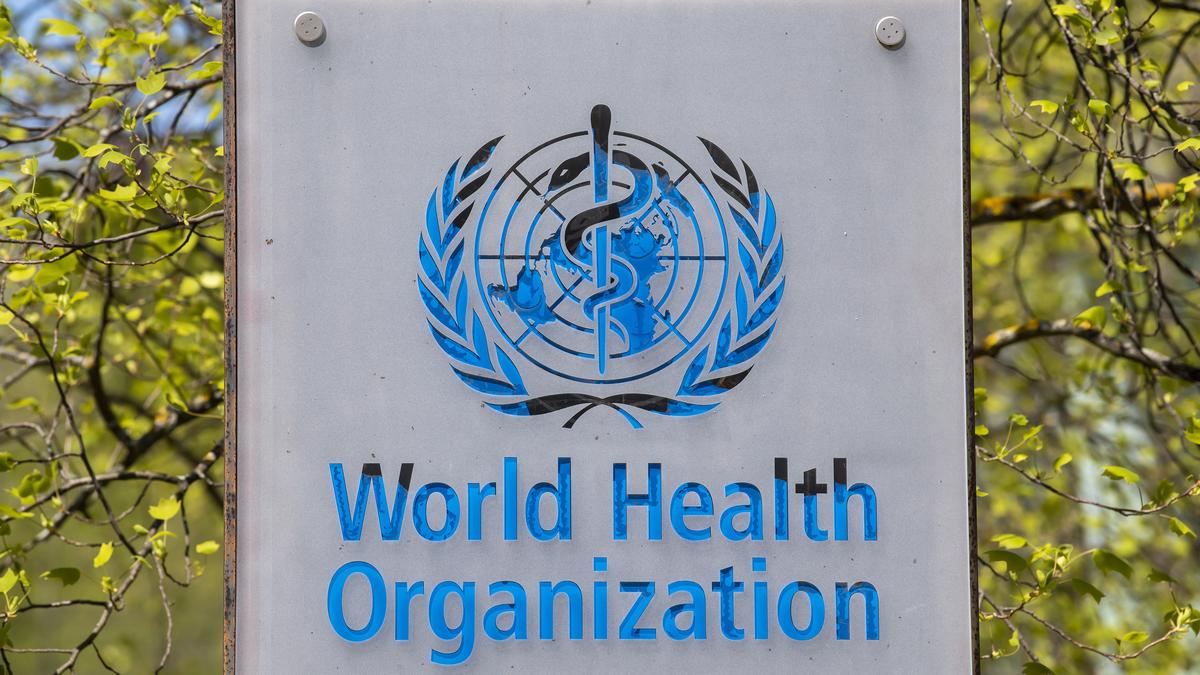
- 06 Oct 2024
In News:
In an important move to improve global access to Mpox testing, the World Health Organization (WHO) has listed the first Mpox in vitro diagnostic under its Emergency Use Listing procedure.
- Context of Mpox Outbreak:
- Since January 2022, mpox has spread to 121 countries.
- By September 2024, there were 103,048 confirmed cases and 229 deaths.
- Diagnostic Test Approval:
- WHO approved Abbott Laboratories’ PCR diagnostic test, Alinity MPXV assay, for emergency use.
- This test detects mpox virus DNA from skin swabs, intended for trained lab personnel.
- Emergency Use Listing (EUL) Procedure:
- Allows WHO to expedite approval of unlicensed vaccines, treatments, and diagnostic tests during public health emergencies.
- In August, WHO called for manufacturers to submit diagnostic tools to aid low-income countries.
- Current Testing Landscape:
- Limited testing capacity has hindered response, especially in Africa, where over 30,000 suspected cases were reported in 2024.
- 35 laboratories in India are now equipped to test suspected mpox cases.
- Importance of Early Diagnosis:
- Early detection facilitates timely treatment and control of the virus, essential in outbreak areas.
- Characteristics of the Alinity MPXV Assay:
- Utilizes real-time PCR to detect mpox virus (clade I/II) DNA from lesion materials.
- Designed for skilled laboratory personnel familiar with PCR techniques.
- Ongoing Efforts:
- WHO is reviewing three additional mpox diagnostic tests and negotiating with more companies to enhance availability.
- Efforts include addressing the spread of a new variant, clade Ib, which is affecting more women and children.
- Public Health Implications:
- Expanding access to diagnostics is vital for managing the mpox outbreak and protecting populations, particularly in underserved regions.
- WHO emphasizes the importance of quality-assured medical products in containing the virus spread.
Discovery of New Hammerhead Shark Species
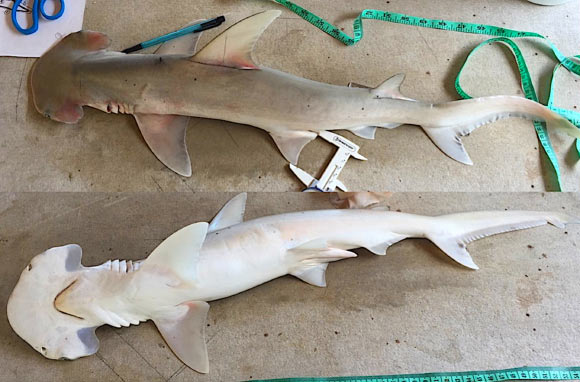
- 06 Oct 2024
In News:
A team of marine biologists led by a Florida International University researcher has described a new species of the shark genus Sphyrna from the Caribbean and the Southwest Atlantic.
- New Species: Named Sphyrna alleni (common name: shovelbill shark).
- Habitat: Found in coastal waters, estuaries, coral reefs, and seagrass beds from Belize to Brazil, with confirmed presence in:
- Caribbean: Belize, Panama, Colombia, Trinidad and Tobago.
- Southwestern Atlantic: Brazil.
- Characteristics:
- Small species, less than 1.5 m in length.
- Distinctive flat, shovel-shaped head lacking indentations on the anterior edge.
- Different from Sphyrna tiburo:
- More rounded anterior margin.
- Absence of lobules on the posterior margin.
- Higher precaudal vertebral count (80-83 vs. ~73 in Sphyrna tiburo).
- Evolutionary Insight: Possible sister lineage to Sphyrna vespertina, suggesting Sphyrna tiburo diverged later.
- Conservation Status:
- Hammerhead sharks are highly threatened, primarily due to overfishing.
- Most species, except Sphyrna gilberti, are listed as Vulnerable, Endangered, or Critically Endangered by the IUCN.
- Current IUCN assessment of Sphyrna tiburo as Globally Endangered may need reevaluation considering the new findings.
- Management Recommendations:
- Increased management efforts needed for Sphyrna alleni, particularly restrictions on gillnets and trawls, which significantly impact this species.
- Publication: Findings reported in the journal Zootaxa.
Shanghai Cooperation Organisation (SCO)
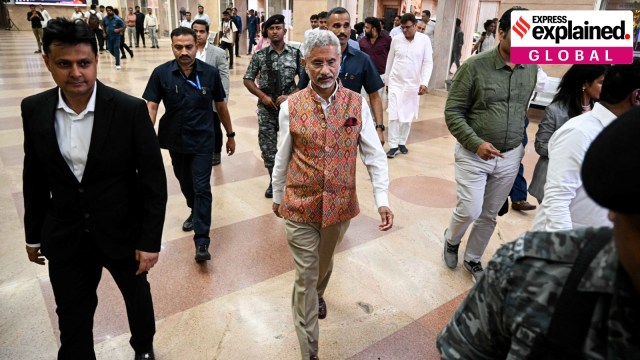
- 06 Oct 2024
In News:
- External Affairs Minister S. Jaishankar will attend the Shanghai Cooperation Organisation (SCO) Heads of Government meeting in Islamabad on October 15-16, 2023.
- This marks the first visit by an Indian External Affairs Minister to Pakistan since Sushma Swaraj in 2015.
Context of the Visit:
- The visit is primarily for the SCO meeting, reflecting India's focus on regional cooperation mechanisms.
- No bilateral meetings have been scheduled as of now, although Jaishankar's presence is based on "reciprocity" following Pakistan's participation in an earlier SCO meeting in India.
SCO Overview:
- Established on June 15, 2001, in Shanghai; evolved from the "Shanghai Five" formed in 1996.
- Original members included China, Russia, Kazakhstan, Kyrgyzstan, Tajikistan, and later Uzbekistan.
- Current members: India, Pakistan, Iran, and others, with Afghanistan and Mongolia holding Observer Status.
Significance of the SCO:
- Focuses on security cooperation, primarily among Asian nations.
- Seen as an alternative to Western international frameworks, especially with heavyweights like Russia and China positioning against US influence.
- India's inclusion alongside Pakistan in 2017 reflects the geopolitical jostling between Russia and China.
Geopolitical Dynamics:
- While SCO promotes cooperation, underlying tensions remain, particularly between India and Pakistan, and India and China.
- The organization has limited tangible outcomes due to member states' rivalries and differing interests.
India's Objectives in SCO:
- Provides a platform for enhancing relations with Central Asian countries, addressing common security concerns.
- Involves participation in the Regional Anti-Terrorist Structure (RATS) to combat terrorism and drug trafficking.
India-Pakistan Relations:
- Jaishankar's visit is seen in light of ongoing tensions; India shares difficult relations with both China and Pakistan.
- India canceled a summit under its presidency last year, opting for a virtual format instead.
Implications for Regional Politics:
- The visit comes shortly after the Jammu and Kashmir Assembly elections, with potential implications for India-Pakistan ties.
- Despite attending the SCO meeting, there is little expectation of progress in the India-Pakistan peace process.
- Recent statements from the Indian government criticize Pakistan for hosting wanted individuals, reflecting ongoing diplomatic tensions.
Strategic Importance:
- Participation in SCO allows India to engage with key regional players, including Russia, China, and Central Asian leaders.
- The meeting serves as preparation for India's participation in upcoming BRICS discussions, emphasizing the interconnectedness of these groupings.
Global Strategic Preparedness, Readiness and Response Plan (SPRP)
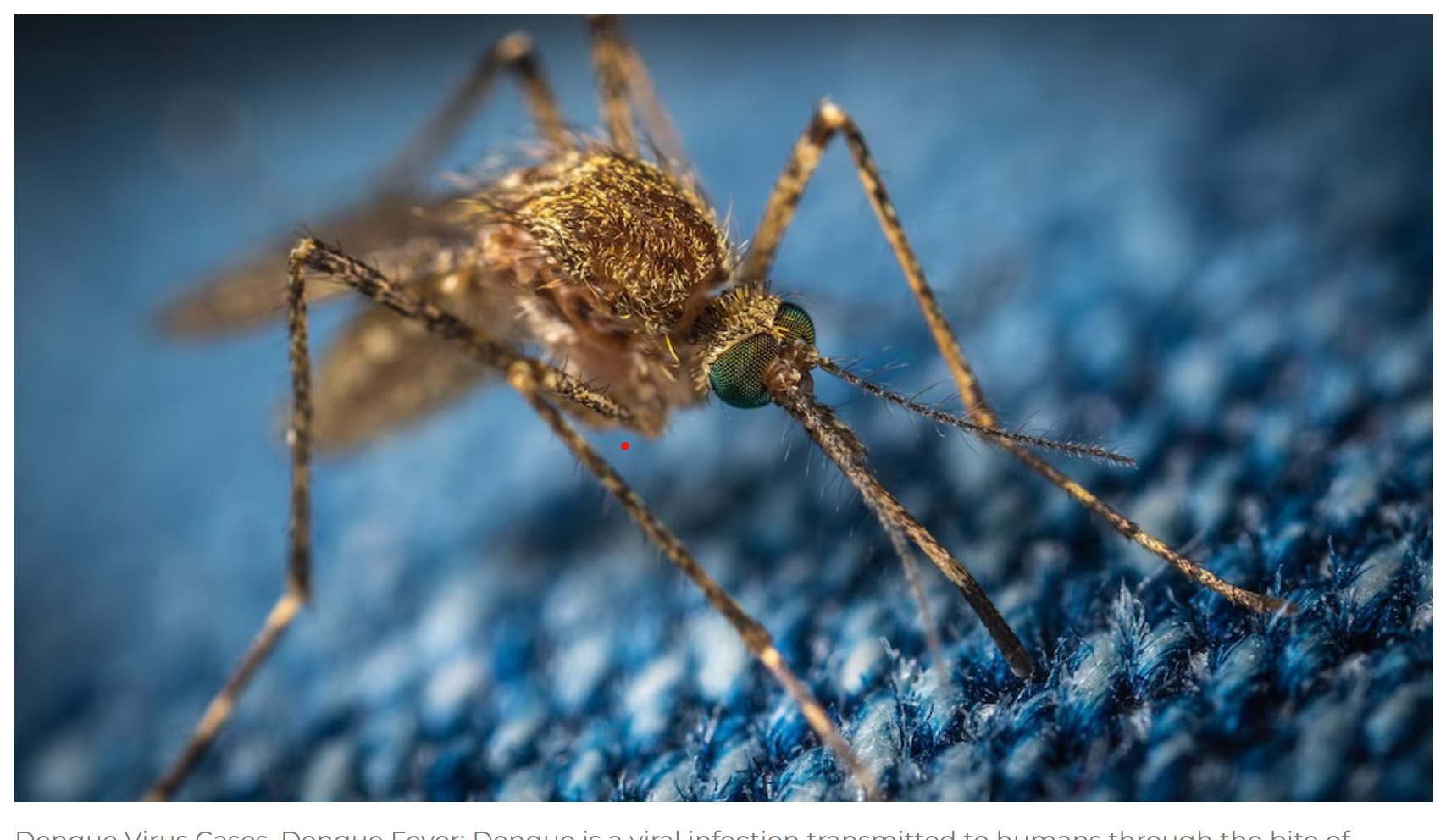
- 06 Oct 2024
In News:
The World Health Organization (WHO) launched the Global Strategic Preparedness, Readiness and Response Plan (SPRP) to tackle dengue and other Aedes-borne arboviruses.
Key Highlights:
- Purpose:
- Tackle dengue and other Aedes-borne arboviruses (e.g., Zika, chikungunya).
- Reduce disease burden, suffering, and deaths globally.
- Background:
- Rapid geographical spread of dengue due to:
- Unplanned urbanization.
- Poor water, sanitation, and hygiene practices.
- Climate change.
- Increased international travel.
- An estimated 4 billion people at risk, projected to increase to 5 billion by 2050.
- Significant increase in dengue cases; 12.3 million reported by August 2023, nearly double the total from 2022.
- Rapid geographical spread of dengue due to:
- Global Impact:
- Dengue endemic in over 130 countries, particularly affecting:
- South-East Asia.
- Western Pacific.
- Americas.
- Africa facing compounded health crises due to conflicts and disasters.
- Dengue endemic in over 130 countries, particularly affecting:
- Emergency Grade: WHO has graded the global dengue situation as grade 3, the highest emergency level.
- Key Components of SPRP:
- Emergency Coordination: Leadership and coordination activities for outbreak response.
- Collaborative Surveillance: Tools for early detection and control, including strengthened surveillance and epidemiological analysis.
- Community Protection: Engaging communities in local prevention and response measures.
- Safe and Scalable Care: Ensuring resilient health services for adequate patient care.
- Access to Countermeasures: Promoting research for better treatments and vaccines.
- Implementation Timeline: Over one year until September 2025, requiring US$ 55 million for health preparedness and response efforts.
- Alignment with Other Initiatives:
- Supports the Global Vector Control Response 2017-2030.
- Linked to the Global Arbovirus Initiative (2022) targeting mosquito-borne diseases.
- Call to Action:
- Encourages collaboration among government agencies, healthcare providers, and communities.
- Emphasizes the need for innovation and improved vector control strategies.
This plan aims to mobilize a coordinated response to the escalating threat of dengue and related diseases, emphasizing the role of all stakeholders in public health.
Very Short Range Air Defence System (VSHORAD)
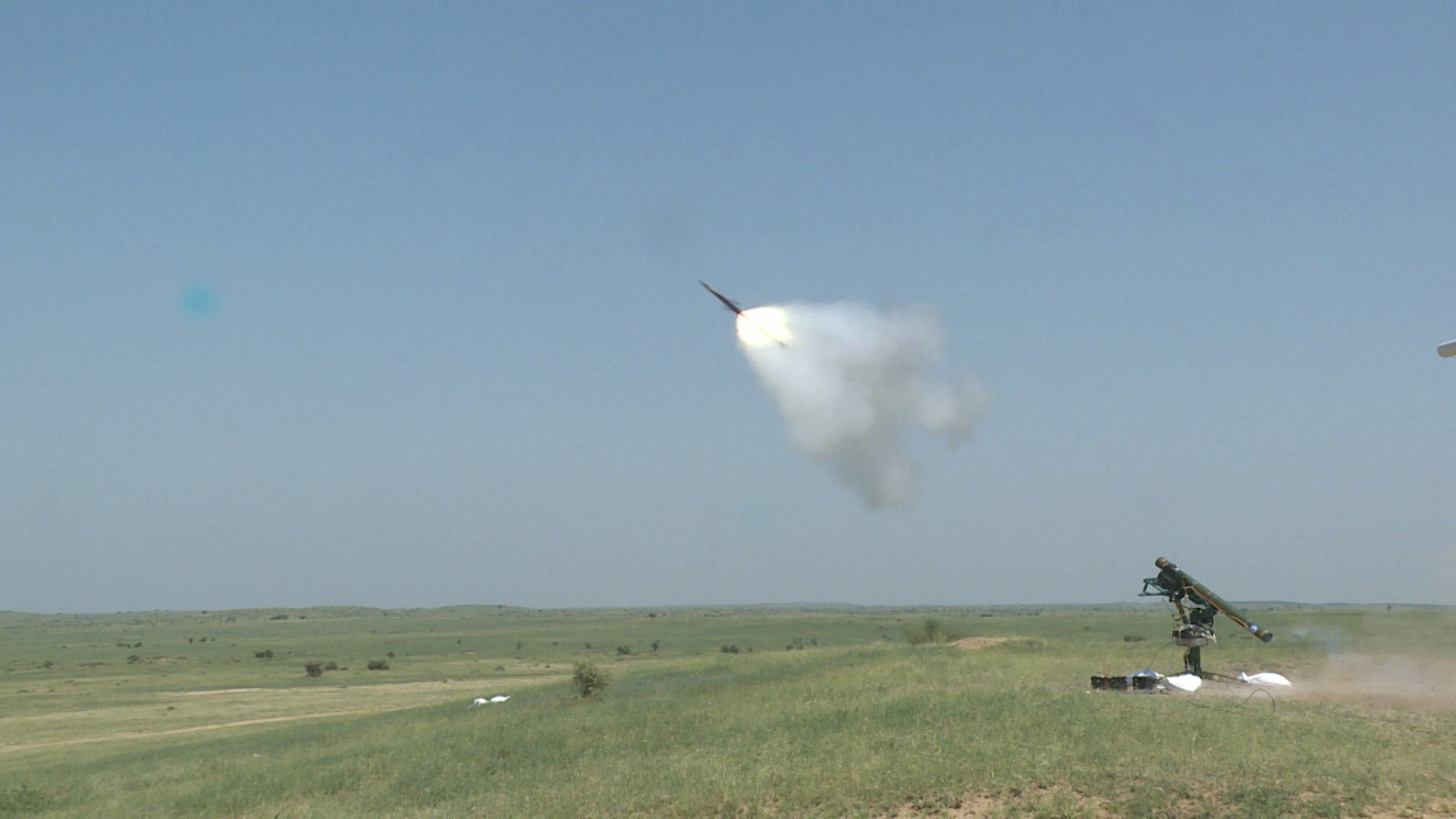
- 06 Oct 2024
In News:
DRDO completed development trials of the 4th Generation miniaturised Very Short Range Air Defence System (VSHORAD).
Key Details:
- Trial Location: Conducted at Pokhran Field Firing Ranges, Rajasthan.
- Importance: VSHORAD addresses the Indian Army's need to replace legacy Igla systems, with past efforts making little progress.
- Recent Procurement: Army acquired small volumes of Igla-S through emergency procurement.
- Production Collaboration: Two production agencies involved in Development cum Production Partner (DcPP) mode for VSHORAD missiles.
- Trial Dates: Successful tests held on October 3 and 4, 2024.
Key Performance Metrics:
- Maximum Range and Altitude: Interception against high-speed aerial targets.
- Hit-to-Kill Capability: Demonstrated success in engaging targets in various scenarios (approaching, receding, crossing).
System Overview:
- Type: Fourth generation man-portable air defence system (MANPADS).
- Developer: Research Centre Imarat (RCI) in collaboration with other DRDO labs and industry partners.
Capabilities:
- Designed to neutralise low altitude aerial threats at short ranges.
- Features include Dual-band IIR Seeker, miniaturised Reaction Control System, and integrated avionics.
- More portable and lightweight than existing missile systems in the Army's arsenal.
Pradhan Mantri-Kisan Samman Nidhi (PM-KISAN) Scheme
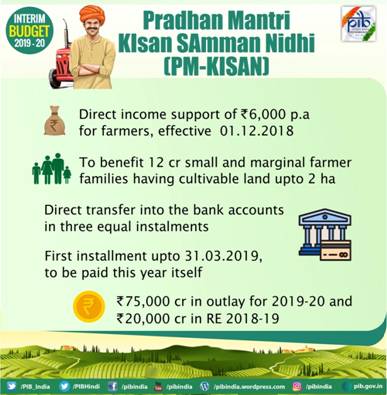
- 05 Oct 2024
In News:
The Prime Minister of India is set to announce the 18th installment of the PM-KISAN scheme in Washim, Maharashtra. This will benefit over 9.4 crore farmers nationwide, with the government allocating more than ?20,000 crore for this initiative.
About PM-KISAN
The Pradhan Mantri Kisan Samman Nidhi (PM-KISAN) is a Central Sector Direct Benefit Transfer (DBT) initiative aimed at providing income support to farmers.
Key Features:
- Financial Assistance: The scheme offers ?6,000 annually to small and marginal farmer families, distributed in three equal installments.
- Eligibility: Initially targeted at families with up to 2 hectares of cultivable land, the scope was later broadened to include all farmer families, regardless of land size.
- Family Definition: The definition of a family under this scheme includes the husband, wife, and minor children.
- Identification of Beneficiaries: State governments and Union Territory administrations are responsible for identifying eligible farmer families based on the scheme's guidelines.
- Direct Transfers: The funds are directly credited to the beneficiaries' bank accounts.
Exclusion Criteria
Certain categories of individuals are not eligible for benefits under the PM-KISAN scheme, including:
- Institutional Land-holders: Those who hold land under institutional ownership.
- High-Profile Government Officials: This includes former and current holders of constitutional posts, ministers, members of legislative assemblies, mayors, and district panchayat chairpersons.
- Government Employees: Serving or retired officers and employees of central or state government ministries and departments are excluded.
- Pensioners: Retired pensioners receiving a monthly pension of ?10,000 or more, as well as those in the previously mentioned categories, are also ineligible.
- Income Tax Filers: Individuals who have paid income tax in the last assessment year.
- Registered Professionals: Professionals such as doctors, engineers, lawyers, chartered accountants, and architects who are engaged in practice and registered with professional bodies.
India's BRAP 2024 Alignment with World Bank's B-READY Index
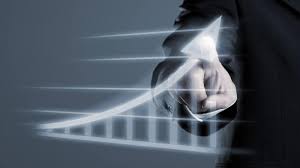
- 05 Oct 2024
In News:
- The Indian government plans to align indicators of the BRAP 2024 index with the World Bank’s B-READY index to enhance business readiness rankings.
- State Involvement: States have been instructed to address gaps identified in the B-READY evaluations to improve their global rankings.
- Indicators Included: The upcoming 2024 BRAP rankings, prepared by the Department for Promotion of Industry and Internal Trade, will incorporate specific indicators from the B-READY index.
- Enterprise Survey Launch: An enterprise survey for the B-READY index in India is set to start in October, with support from the Ministry of Statistics and Programme Implementation.
- Participation Timeline: Although B-READY rankings will commence in 2024, India’s participation will begin in 2026. The initial rankings will cover 54 countries, expanding to 120 in 2025 and 180 in 2026.
- Successor to Previous Rankings: The B-READY index replaces the Ease of Doing Business rankings, which were discontinued in 2021 due to irregularities. It considers a broader range of factors in its assessments.
- Benchmark for Global Institutions: The B-READY framework will serve as a benchmark for global financial institutions and multinational companies to evaluate a country’s regulatory and policy environment.
- Historical Improvement: India improved its Ease of Doing Business ranking from 142 in 2014 to 63 in 2020.
- Technical Understanding: A team of government officials is tasked with understanding the technical aspects of the B-READY index to formulate strategies for improving India’s score.
- Lifecycle Parameters: The new index tracks ten parameters throughout a firm's lifecycle, including business entry, utility services, and labor, focusing on real-world applications rather than just legal changes.
- Recent BRAP Rankings: The BRAP 2022 rankings were recently announced, with Andhra Pradesh and Kerala achieving the top positions.
Co-district Initiative
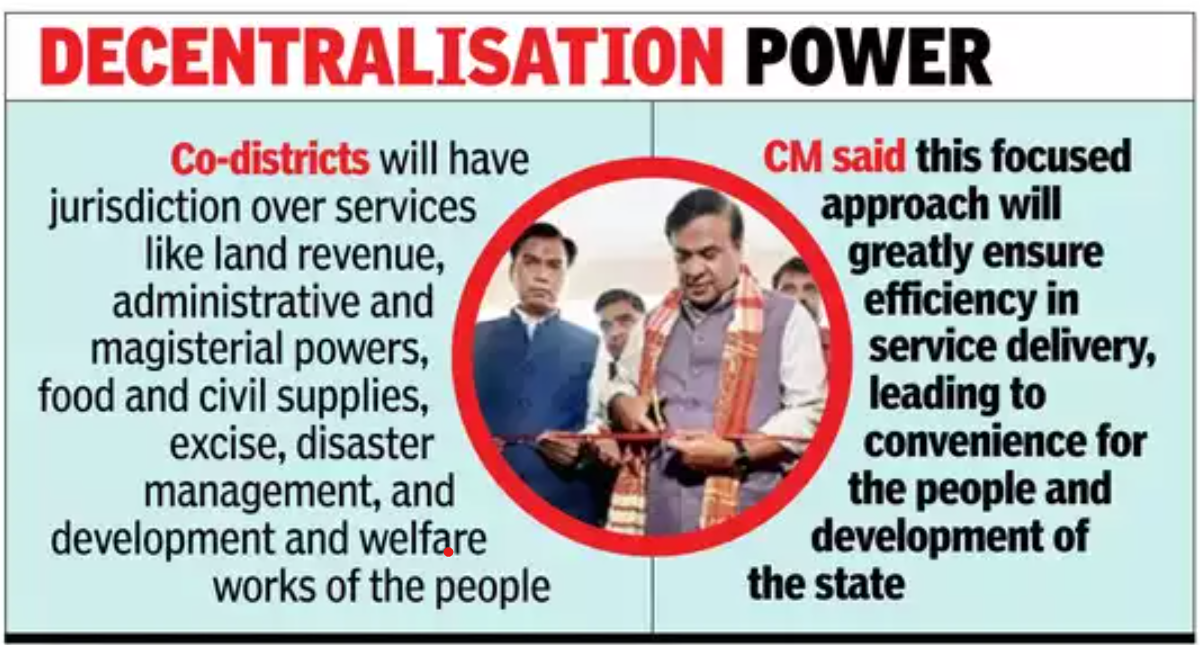
- 05 Oct 2024
In News:
Assam has launched an innovative administrative initiative by inaugurating 21 'co-districts' as part of its Phase 1 rollout, which began on Friday and will extend into Saturday, ultimately introducing a total of 39 co-districts. This new structure replaces the previous system of 24 civil sub-divisions, aiming to bring governance closer to the citizens.
About the Co-District Initiative
- Structure: Co-districts serve as smaller administrative units within the larger district framework, each headed by an Assistant District Commissioner.
- Objective: This unique initiative, the first of its kind in India, seeks to enhance accessibility to governance and address administrative challenges faced by district administrations.
- Scope: The government plans to establish co-district offices in all 126 assembly constituencies in Assam.
Functions and Powers
The co-districts will handle a variety of important functions, including:
- Land Revenue Matters: Managing land-related issues and revenue collection.
- Development and Welfare Work: Overseeing development projects and welfare programs.
- Excise and Disaster Management: Addressing excise-related matters and coordinating disaster response efforts.
- Administrative Control: Co-districts will have authority over all departmental activities within their jurisdiction.
- Magisterial Powers: Commissioners will be empowered to issue permissions for events and manage other administrative tasks.
- Routine Administrative Tasks: Responsibilities include issuing ration cards, caste certificates, and land sale permissions.
India-U.S. MoU on Critical Minerals Supply Chains
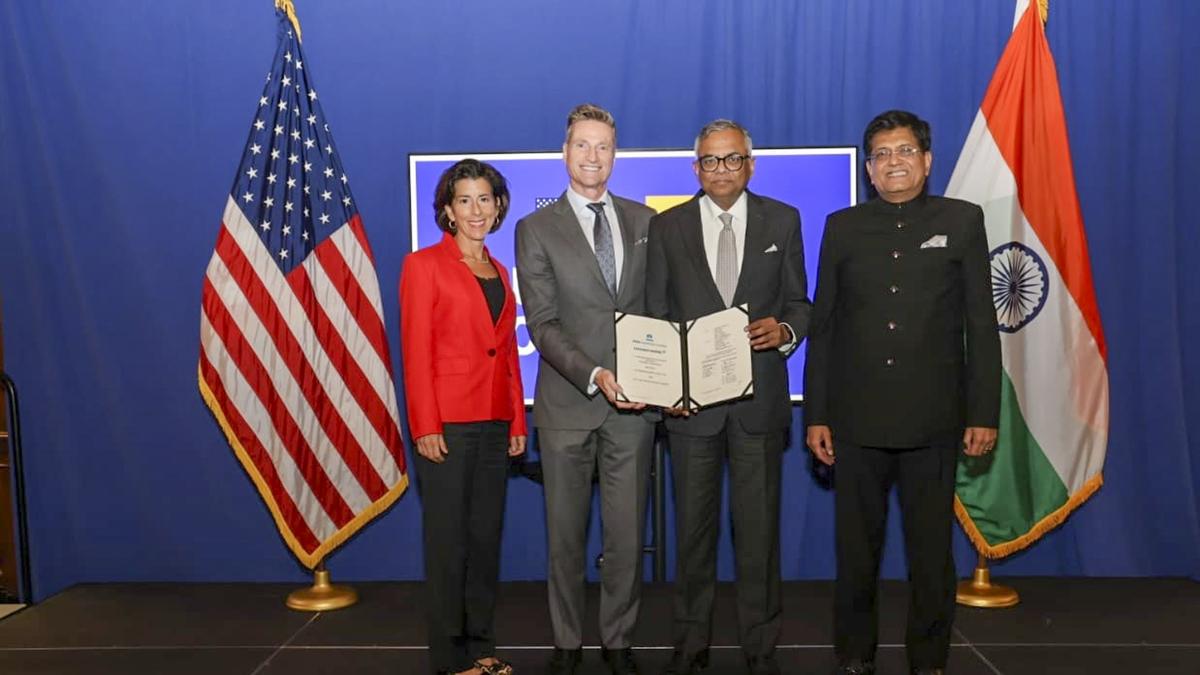
- 05 Oct 2024
In News:
- The sixth Commercial Dialogue took place in Washington on October 4, 2024, led by Indian Union Minister of Commerce Piyush Goyal and U.S. Commerce Secretary Gina Raimondo.
- MoU Signing: A day prior, the leaders signed a memorandum of understanding (MoU) aimed at expanding and diversifying critical minerals supply chains to enhance resilience.
- Focus Areas:
- Identification of equipment, services, policies, and best practices for the development of U.S. and Indian critical minerals, covering:
- Exploration
- Extraction
- Processing and refining
- Recycling and recovery
- Identification of equipment, services, policies, and best practices for the development of U.S. and Indian critical minerals, covering:
- Context: This agreement follows China's export restrictions on gallium and germanium, critical for the semiconductor industry, and its ban on technology related to rare earth magnets and critical materials extraction.
- Strategic Goals:
- Promote open supply chains, technology development, and investment flows for green energy.
- Explore collaboration with other mineral-rich countries, particularly in Africa and South America.
- Progress on Semiconductor Supply Chains:
- Continued efforts to establish resilient semiconductor supply chains since the previous MoU.
- Completion of a "readiness assessment" by the U.S. Semiconductor Industry Association and India Electronics Semiconductor Association.
- Commitment to foster investments, joint ventures, and technology partnerships.
- Innovation Handshake: Success of roundtables in San Francisco and New Delhi aimed at enhancing innovation ecosystems and startup collaboration.
- Strategic Clean Energy Partnership: Discussions from the EIN Roundtable in March 2024 informed the U.S.-India Strategic Clean Energy Partnership meeting.
- IPEF Supply Chain Agreement: Significant progress noted in the IPEF ministerial meeting, focusing on semiconductors, chemicals, and critical minerals, particularly batteries and healthcare products.
- Future Collaborations:
- Focus on expanding U.S. Department of Commerce presence in India with approximately 70 Foreign Commercial Service staff.
- Plans for a U.S. trade mission to India in March 2025 aimed at supporting U.S. SMEs owned by underserved communities.
- Domestic Solar Manufacturing Protection: India reinstated the Approved List of Models and Manufacturers (ALMM) order to protect local solar PV module production against cheaper imports from China.
- Economic Context:
- The Economic Survey 2023-24 highlights China's expanding manufacturing trade surplus and its restrictive actions affecting India's access to solar equipment.
- India’s Production Linked Incentive (PLI) schemes have invested over $4.5 billion to bolster clean energy manufacturing but require additional policies to safeguard these investments.
Status of Elephant in India 2022-23
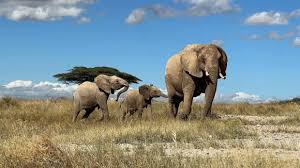
- 05 Oct 2024
In News:
- Shelved Census Report: The Environment Ministry has delayed the release of the elephant census report, “Status of Elephant in India 2022-23,” due to a lag in the Northeast census, with publication on hold until at least June 2025.
- Population Decline: Preliminary data from the report indicates significant drops in elephant populations across several regions:
- Southern West Bengal: 84% decline
- Jharkhand: 64% decline
- Odisha: 54% decline
- Kerala: 51% decline
- Developmental Threats: The report cites “mushrooming developmental projects,” including unregulated mining and infrastructure development, as major threats to elephant populations.
- Methodological Concerns: The Environment Ministry noted that refined counting methods could explain some discrepancies, suggesting new data may not be directly comparable to previous censuses conducted every five years since the 1990s.
- Old Counting Methods:
- Pre-2002: Elephants were counted using the “total direct count” method, which involved simple head counts but lacked scientific rigor for larger populations.
- 2002: Introduction of the “indirect dung count” method, where dung samples were used to estimate density based on decay rates.
- Sample Block Counts: Modified methods involved surveying limited areas (5 sq km) to improve detection accuracy.
- Elephants vs. Tigers: In 2021, a harmonized approach for estimating elephant and tiger populations was proposed, utilizing a similar block and co-variate methodology for both species.
- Genetic Mark-Recapture: The 2022-23 elephant census employed a genetic mark-recapture model using dung samples to identify individual elephants.
- Impact of Delay: Experts argue that withholding the available data hinders conservation efforts and governance. Delays could exacerbate the plight of elephant populations, particularly in regions facing specific threats, such as mining in Odisha.
Key Findings of the Unreleased Report:
- Overall Decline: The overall elephant population has decreased by 20% since 2017, with some areas reporting reductions of up to 41%.
- Regional Impact:
- Southern West Bengal, Jharkhand, and Odisha have seen losses of nearly 1,700 elephants.
- The Western Ghats region indicates an 18% decline.
- Northeast Region: The census for this area relies on extrapolated data from 2017, with approximately one-third of India's elephants located there.
- Contributing Factors: Habitat fragmentation, poaching, and human-elephant conflicts due to developmental activities are major threats.
- Conservation Recommendations: Strategies to strengthen elephant corridors, restore habitats, and enhance community involvement in conservation are vital.
- Challenges in the Northeast: Urban development, mining, and agriculture significantly threaten elephant movement and survival, underscoring the need for targeted conservation strategies.
- Conservation Status of Elephants in India:
- Leading States: Karnataka, Assam, and Kerala have the highest elephant populations.
- Conservation Status: Elephants are classified as Endangered on the IUCN Red List and are protected under multiple international conventions.
- Threats to Elephants:
- Habitat Loss: Rapid human population growth is diminishing elephant habitats.
- Fragmentation: Habitat disruption from construction and development projects is prevalent.
- Unlawful Killing: Human-elephant conflict often leads to retaliatory killings.
- Poaching: Targeting of male elephants for tusks continues to threaten genetic diversity.
- Conservation Measures:
- Financial support under various government schemes for habitat conservation and human-elephant conflict resolution.
- Establishment of 33 Elephant Reserves across 14 states.
- Collaborative efforts with railways and power departments to mitigate risks.
- Regular elephant census every five years by the Wildlife Institute of India (WII) for monitoring populations.
USCIRF Report on India: Key Highlights
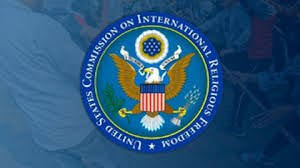
- 04 Oct 2024
In News:
The United States Commission on International Religious Freedom (USCIRF), a Washington DC-based bipartisan U.S. federal government agency, has released a country update on India, flagging “collapsing religious freedom conditions”.
- Agency Overview:
- The United States Commission on International Religious Freedom (USCIRF) is an independent, bipartisan U.S. federal commission established under the 1998 International Religious Freedom Act (IRFA).
- Its primary functions include reviewing global religious freedom violations, providing policy recommendations to U.S. leaders, and publishing annual reports.
- Current Concerns:
- USCIRF's latest report indicates a “collapse” in religious freedom conditions in India, particularly worsening throughout 2024, especially around national elections.
- Legal and Policy Changes:
- Strengthening of discriminatory legislation, including:
- State-level anti-conversion and anti-terrorism laws.
- Implementation rules for the 2019 Citizenship (Amendment) Act (CAA).
- Passage of a State-level Uniform Civil Code (UCC) Bill in Uttarakhand.
- Strengthening of discriminatory legislation, including:
- Violations and Incidents:
- Expropriation of Places of Worship:
- Authorities have facilitated the construction of Hindu temples on former mosque sites.
- Increased attacks on religious minorities, particularly following the consecration of the Ayodhya temple in January 2024.
- Targeting of Religious Minorities:
- Arrests of Christians accused of forced conversions under anti-conversion laws.
- Anti-cow slaughter laws exploited by vigilante groups to target Muslims, Christians, and Dalits, often with little to no legal repercussions for perpetrators.
- Expropriation of Places of Worship:
- Recommendations:
- USCIRF urges the U.S. State Department to designate India as a “Country of Particular Concern” due to severe violations of religious freedom.
About USCIRF
- Composition: Comprised of nine commissioners appointed by the U.S. President or Congressional leaders, supported by non-partisan staff.
- Objective: To monitor and recommend actions on religious freedom violations aligned with international human rights standards.
Indian push needed to end AIDS as a global health threat by 2030: UNAIDS
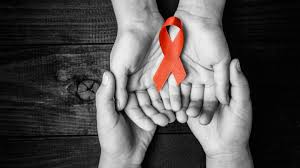
- 04 Oct 2024
In News:
The UNAIDS Director recently highlighted the crucial role India plays in the global fight against HIV/AIDS, asserting that without its significant contributions, achieving the Sustainable Development Goal of ending AIDS as a public health threat by 2030 is unlikely.
Understanding HIV/AIDS
- HIV (Human Immunodeficiency Virus) is a virus that attacks the immune system, specifically targeting CD4 cells, which diminishes the body's ability to combat infections and diseases.
- When HIV progresses to its most severe form, it is diagnosed as AIDS (Acquired Immunodeficiency Syndrome), characterized by a severely compromised immune system, leading to life-threatening infections and cancers.
- The virus is transmitted through contact with infected bodily fluids, including blood, semen, and breast milk. While there is currently no cure, antiretroviral therapy (ART) can effectively manage HIV and prevent its progression to AIDS.
India’s Progress in Combating HIV/AIDS
- From 2010 to 2023, India has made significant strides in reducing annual new HIV infections by 44%, surpassing the global average.
- Additionally, AIDS-related deaths in India have decreased by nearly 80% during the same period, also exceeding global trends. However, challenges persist, with approximately 68,000 new infections reported in 2023, translating to around 185 daily.
- The Global AIDS Strategy emphasizes the need for 80% of prevention services to be delivered by community-led organizations, which are essential for reaching key populations but require sufficient resources and support.
About UNAIDS
UNAIDS, established in 1996, coordinates global efforts to combat HIV/AIDS and supports those affected. Headquartered in Geneva, Switzerland, it unites the efforts of 11 UN organizations and works in collaboration with various global and national partners to end the AIDS epidemic by 2030.
Key aspects of UNAIDS include:
- Global Mandate: To coordinate responses, support countries in prevention and treatment, and advocate for human rights and equality in access to services.
- Targets: The "90-90-90" targets aimed for 2020 sought to ensure that 90% of people living with HIV were diagnosed, 90% of those diagnosed were on treatment, and 90% of those on treatment achieved viral suppression.
- Current Strategy: The 2021-2026 Global AIDS Strategy focuses on eliminating inequalities that drive HIV and aims to ensure that 30 million people are on treatment by 2025.
- Funding and Advocacy: Funded by governments, private foundations, and corporations, UNAIDS organizes key campaigns, including World AIDS Day, to raise awareness and promote advocacy.
PM Internship Scheme
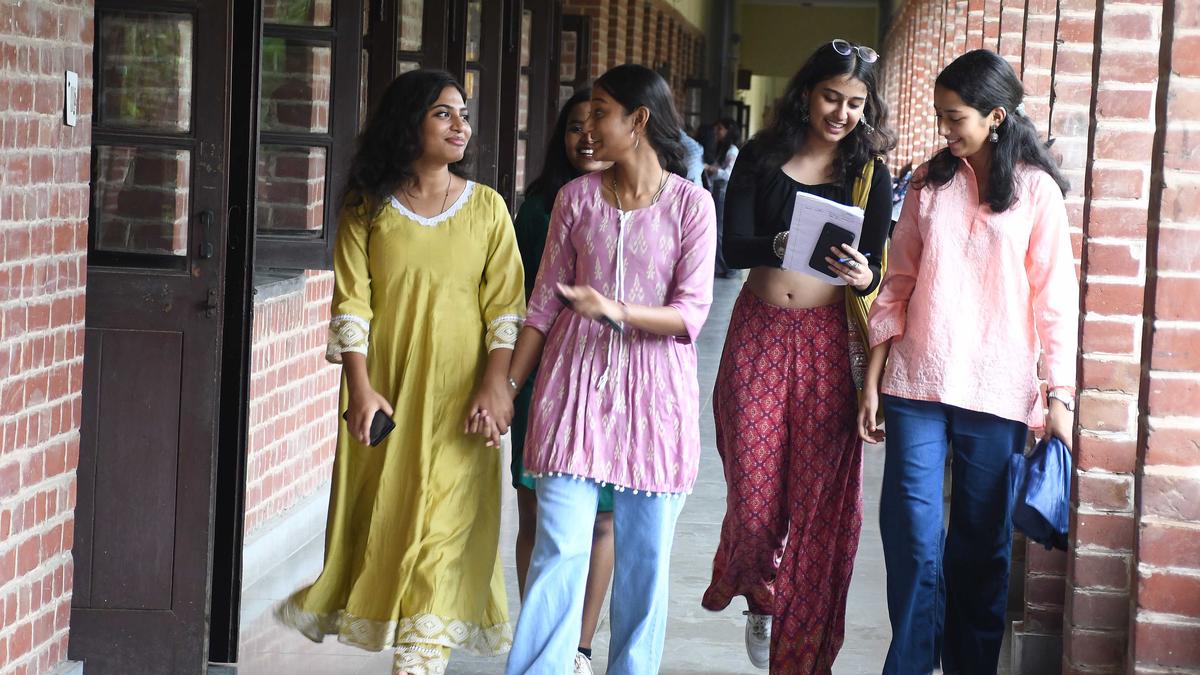
- 04 Oct 2024
In News:
The Prime Minister’s Internship Scheme, announced by Union Finance Minister Nirmala Sitharaman during her Budget speech on July 23, was launched on October 3. The PM Internship Scheme aims to provide internship opportunities to one crore youth in the top 500 companies over the next five years.
Companies will upload their internship positions, and candidates can submit applications starting October 12.
What is the Prime Minister’s Internship Scheme?
The PM Internship Scheme will enhance youth employability in India by offering them hands-on exposure to real-world business environments. The scheme represents a transformative opportunity to bridge the skills gap and drive sustainable growth in India.
A monthly stipend of ?4,500 will be provided to the interns from the central government via DBT (Direct Benefit transfer), with an additional ?500 offset provided by the company’s CSR fund.
Who is eligible for the PM internship scheme?
- Candidates aged between 21 and 24 years who are not engaged in full-time employment are eligible for the one-year internship programme.
- Internships are available to those who have passed class 10 or higher.
- Individuals from families with government jobs are excluded
- The scheme is not open to post-graduates
- A candidate who graduated from premier institutes such as IIT, IIM, or IISER, and those who have CA, or CMA qualification would not be eligible to apply for this internship.
- Anyone from a household that includes a person who earned an income of ?8 lakh or more in 2023-24, will not be eligible.
How to apply for the PM internship scheme?
- Interns can register in the portal and apply for internships. The portal, pminternship.mca.gov.in, is likely to be opened up for youngsters to enroll for consideration by companies on October 12. This window will be open till October 25 for the first batch of internships. Candidates must share and self-certify some data about their educational qualifications and residential pin codes.
- Candidates’ data will be matched with companies’ needs and locations using Artificial Intelligence tools, and a shortlist of candidates will then be generated for companies to consider.
- The portal is designed to streamline the application process and make candidate selection more transparent. Applicants can check the status of their applications in the portal once they have applied to the available posts.
What is the benefit of the scheme?
The scheme is to provide on-job training to youth and an exposure to real-life work environment. The scheme will also benefit the industry by creating a pipeline of skilled, work-ready youth who can be employed post-internship both in large as well as micro, small and medium enterprise.
National Mission on Edible Oils – Oilseeds (NMEO-Oilseeds)

- 04 Oct 2024
In News:
Cabinet Approves National Mission on Edible Oils – Oilseeds (NMEO-Oilseeds) (2024-25 to 2030-31).
Objective:
- Achieve self-reliance in edible oil production in seven years.
Financial Outlay:
- ?10,103 crore for the mission period.
Key Goals:
- Increase primary oilseed production from 39 million tonnes (2022-23) to 69.7 million tonnes by 2030-31.
- Boost domestic edible oil production to 25.45 million tonnes, meeting 72% of projected requirements.
Focus Areas:
- Enhance production of key oilseed crops: Rapeseed-Mustard, Groundnut, Soybean, Sunflower, Sesamum.
- Improve extraction efficiency from secondary sources (e.g., Cottonseed, Rice Bran).
Strategies:
- Promote high-yielding, high oil content seed varieties.
- Extend cultivation to rice fallow areas and encourage intercropping.
- Use advanced technologies like genome editing for seed development.
SATHI Portal:
- Launch of an online 5-year rolling seed plan for timely seed availability.
- Coordination with cooperatives, Farmer Producer Organizations (FPOs), and seed corporations.
Infrastructure Development:
- Establish 65 new seed hubs and 50 seed storage units.
- Develop over 600 Value Chain Clusters across 347 districts, covering over 1 million hectares annually.
Support for Farmers:
- Access to high-quality seeds, training on Good Agricultural Practices (GAP), and pest management advisory.
Environmental Benefits:
- Promote low water usage, improve soil health, and utilize crop fallow areas.
Background Context:
- India relies on imports for 57% of its edible oil demand.
- Previous initiatives include the National Mission on Edible Oils – Oil Palm (NMEO-OP) and significant increases in Minimum Support Price (MSP) for oilseeds.
- Imposition of 20% import duty on edible oils to protect local producers.
The NMEO-Oilseeds mission aims to enhance domestic oilseed production, reduce import dependency, and improve farmers' incomes while contributing to environmental sustainability.
Annual Survey of Industries (ASI) Results for 2022-23
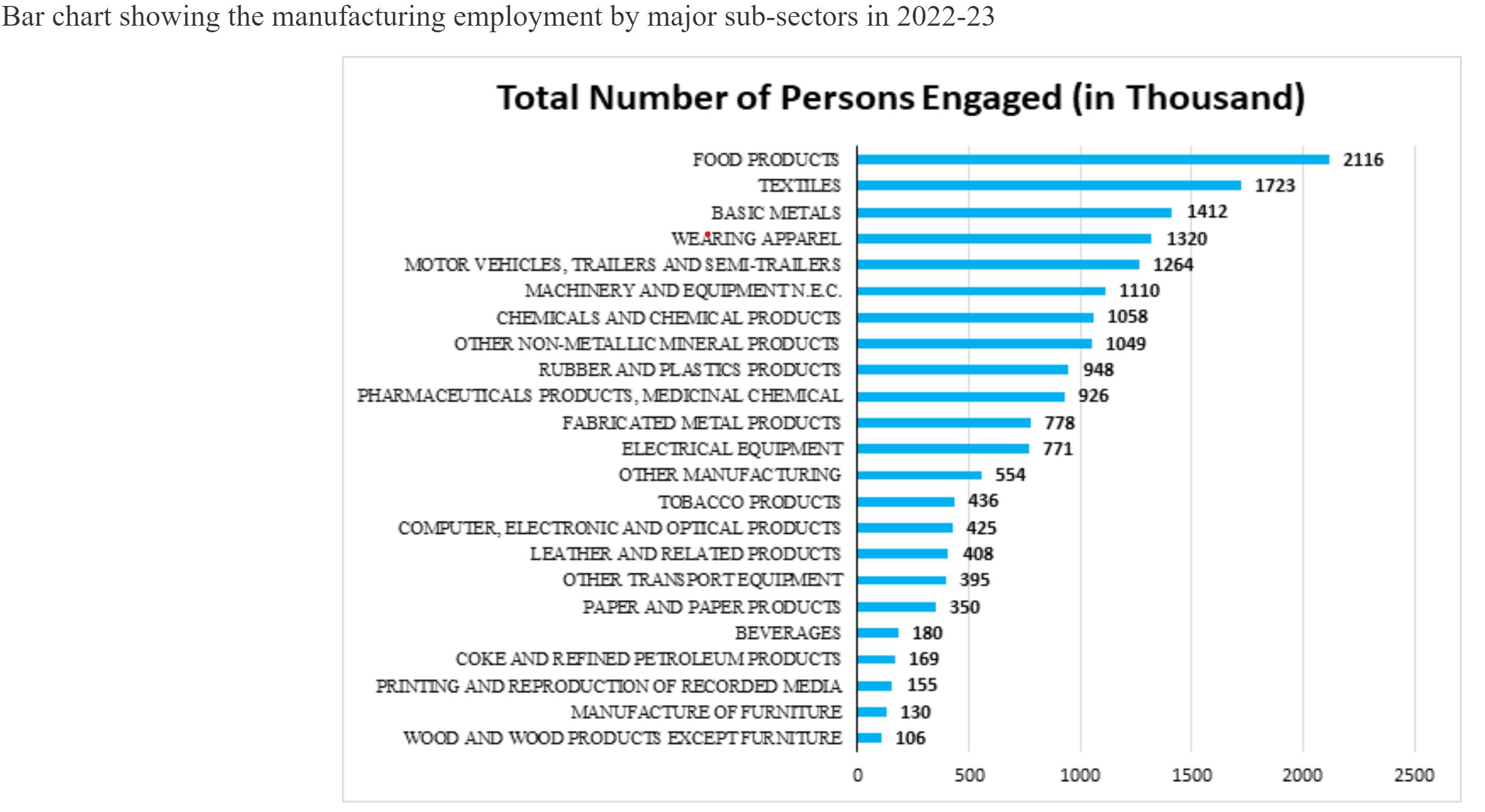
- 03 Oct 2024
In News:
- The Ministry of Statistics and Programme Implementation (MoSPI) has released the results of the Annual Survey of Industries (ASI) for the financial year 2022-23 (April 2022 to March 2023).
- The fieldwork for this survey was conducted from November 2023 to June 2024.
- The ASI provides critical insights into the dynamics of the manufacturing sector, covering aspects such as output, value added, employment, and capital formation.
Key Highlights
- Gross Value Added (GVA): Increased by 7.3% in current prices for 2022-23 compared to the previous year.
- Industrial Output: Grew by over 21% in 2022-23 compared to 2021-22.
- Employment: Estimated employment in the sector rose by 7.4% over the previous year, surpassing pre-pandemic levels.
The growth in key economic parameters such as invested capital, input, output, GVA, and wages indicates a robust recovery in the industrial sector. Notably, industries like Basic Metal Manufacturing, Coke & Refined Petroleum Products, Food Products, Chemicals, and Motor Vehicles were significant contributors, accounting for about 58% of total output and showing a 24.5% increase in output and 2.6% in GVA.
State Contributions
- Top GVA Contributors:
- Maharashtra
- Gujarat
- Tamil Nadu
- Karnataka
- Uttar Pradesh
Together, these states contributed over 54% of the total manufacturing GVA.
- Highest Employment States:
- Tamil Nadu
- Maharashtra
- Gujarat
- Uttar Pradesh
- Karnataka
Collectively, these states accounted for about 55% of total manufacturing employment in 2022-23.
Survey Details
The ASI encompasses various industrial units, including:
- Factories registered under the Factories Act, 1948.
- Bidi and cigar manufacturing establishments.
- Electricity undertakings not registered with the Central Electricity Authority.
- Units with 100 or more employees registered in the Business Register of Establishments.
The survey employs a comprehensive sampling strategy, dividing units into Central and State Samples to ensure accurate representation. Key components of the data collection include:
- Central Sample: Includes all units in less industrially developed states and specific industrial categories.
- State Sample: Comprises selected units based on employee count and other criteria.
Industrial Classification
Since 1959, the ASI has adopted various classifications to categorize industries. The current classification, NIC 2008, is based on the UN's international standards and has been in use since 2008-09.
Data Collection and Reliability
Data collection is conducted via a dedicated web portal, following the Collection of Statistics Act. Various quality checks ensure reliability, with the Relative Standard Errors (RSE) for important estimates remaining within acceptable limits.
Modified PKC-ERCP project
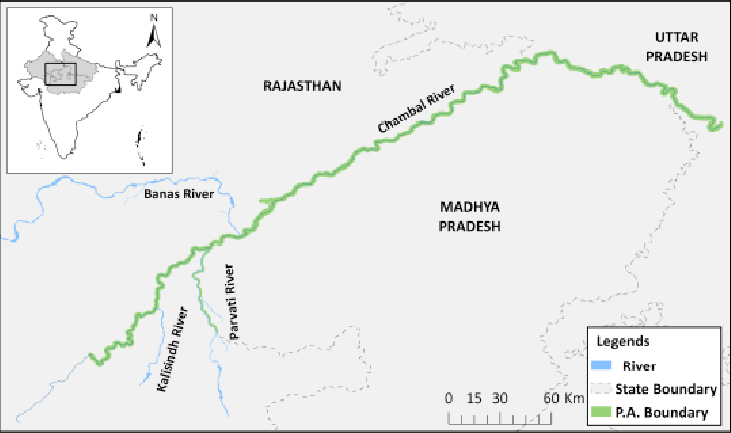
- 03 Oct 2024
In News:
Madhya Pradesh and Rajasthan governments signed an agreement for the implementation of the Rs 72,000 crore Parbati-Kalisindh-Chambal river linking project.
Modified PKC-ERCP Project Overview
- Signatories: Rajasthan, Madhya Pradesh, and the Union Ministry of Jal Shakti signed a MoU for implementation.
- Project Type: Inter-state river linking initiative.
- Integration: Combines the long-standing Parbati-Kalisindh-Chambal (PKC) project with the Eastern Rajasthan Canal Project (ERCP) under India's National Perspective Plan for interlinking rivers.
Objectives and Benefits
- Water Supply: Aims to provide drinking and industrial water to 13 districts in eastern Rajasthan and the Malwa and Chambal regions of Madhya Pradesh.
- Irrigation: Expected to irrigate approximately 5.6 lakh hectares across both states.
- Groundwater Management: Focus on improving groundwater levels and enhancing socio-economic conditions in rural Rajasthan.
Project Components
- Detailed Project Report (DPR): Currently under preparation, will outline water sharing, cost distribution, and implementation strategies.
- Historical Context:
- PKC Project: Proposed in 1980 as part of a national plan, initially focused on diverting water from Kalisindh and Newaj rivers to Chambal.
- ERCP: Proposed by Rajasthan in 2019 to optimize water resources by redistributing surplus monsoon water from various sub-basins to deficit areas.
Geographic Focus
- Beneficiary Districts in Rajasthan: Includes Alwar, Bharatpur, Dholpur, Karauli, and others.
- River Systems Involved:
- Chambal River: Originates in Madhya Pradesh, flows through Rajasthan, and joins the Yamuna.
- Kalisindh and Parbati Rivers: Serve as sources for water diversion.
Implementation Challenges
- Dependable Yield Issues: The original project proposal was based on a 50% dependable yield, contrary to the 75% norm, which was unacceptable to Madhya Pradesh. This led to discussions and revisions.
- Task Force Recommendations: Integrated discussions led to the proposal of the Modified PKC-ERCP, addressing both states' concerns.
Significance of the Project
- National Perspective Plan (NPP): Part of a larger initiative to manage water resources effectively across India, aiming to address water scarcity and improve irrigation.
- Support for Industrial Development: Enhances water availability for the Delhi-Mumbai Industrial Corridor, fostering economic growth.
PM E-DRIVE Scheme
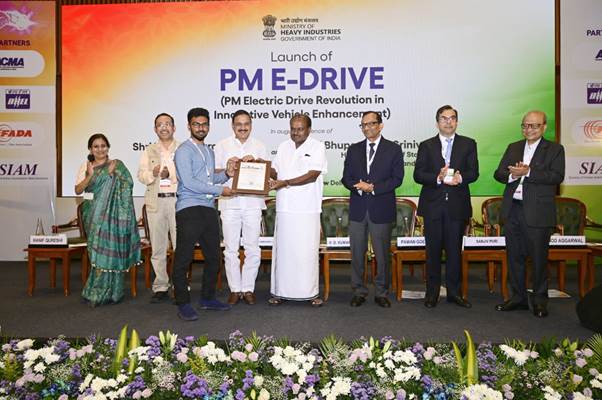
- 03 Oct 2024
In News:
The Union Cabinet approved the PM Electric Drive Revolution in Innovative Vehicle Enhancement (PM E-DRIVE) Scheme to promote electric mobility in the country.
Objective:
- Accelerate electric vehicle (EV) adoption
- Establish essential charging infrastructure
- Promote cleaner and sustainable transportation
Key Highlights
- Significant Occasion: Launched on the eve of Mahatma Gandhi's 155th Birth Anniversary, aligning with the vision of ‘Swachh Bharat’ and ‘Swachh Vahan’.
- Financial Commitment: Union Cabinet approved a financial outlay of ?10,900 crore for the scheme over two years (approved on September 11, 2024).
Key Features of the PM E-DRIVE Scheme
- Subsidies/Demand Incentives:
- Total of ?3,679 crore allocated for:
- 24.79 lakh electric two-wheelers (e-2Ws)
- 3.16 lakh electric three-wheelers (e-3Ws)
- 14,028 electric buses (e-buses)
- Total of ?3,679 crore allocated for:
- E-Voucher Introduction:
- Aadhaar-authenticated e-vouchers for EV customers
- Simplifies access to incentives, with real-time generation for dealers.
- E-Ambulances:
- ?500 crore allocated for deployment
- Standards to be developed with relevant ministries.
- E-Buses:
- ?4,391 crore for 14,028 e-buses in nine major cities
- Focus on replacing scrapped state transport unit buses.
- E-Trucks:
- ?500 crore for incentivizing electric trucks
- Scrapping certificates required for incentives.
- Public Charging Stations:
- ?2,000 crore to install:
- 22,100 fast chargers for electric four-wheelers (e-4Ws)
- 1,800 for e-buses
- 48,400 for e-2Ws/3Ws
- ?2,000 crore to install:
- Test Agency Modernization:
- ?780 crore for upgrading Ministry of Heavy Industries test agencies to accommodate new EV technologies.
India’s Oil Imports from Saudi Arabia and Russia
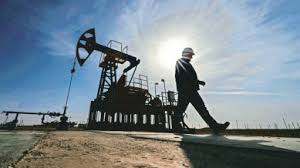
- 03 Oct 2024
Context
- India’s crude oil imports are influenced by refinery maintenance cycles, which affect demand.
- August saw a dip in oil demand due to pre-maintenance preparations, but September recorded a recovery.
September Oil Import Trends
- Saudi Arabia:
- Imports rose 39.8% month-on-month to 0.73 million barrels per day (bpd), the highest since March.
- Saudi market share increased to 15.5% in September from 11.7% in August.
- Riyadh is reducing prices to regain lost market share, as earlier imports had plummeted to a multi-year low (0.42 million bpd in June).
- Russia:
- Remains India’s largest oil supplier with imports increasing by 6.4% from August to 1.88 million bpd.
- Russian crude constituted 40.2% of India’s total crude imports of 4.68 million bpd in September.
- Iraq:
- Supplied 0.87 million bpd, accounting for 18.7% of total imports.
- UAE:
- Oil imports increased by 18.6% month-on-month to 0.49 million bpd, the highest since June 2022.
Market Dynamics
- Price Sensitivity: Indian refiners are highly price-sensitive, which could lead to increased competition among suppliers.
- Potential for Increased Russian Imports: With Indian refiners expected to secure larger long-term contracts for Russian oil, further increases in imports from Russia are anticipated.
Strategic Implications
- Saudi Arabia is concerned about losing market share to Russia, especially as India’s refiners are currently favoring discounted Russian crude.
- Increased competition may benefit Indian refiners through better pricing from various suppliers.
Economic Context
- India, as the world's third-largest oil consumer with over 85% import dependency, is significantly affected by global oil price fluctuations.
- Although discounts on Russian crude have decreased, the overall savings from purchasing large volumes remain significant for Indian refiners.
The evolving landscape of India’s oil imports highlights the competitive dynamics among major suppliers, particularly Saudi Arabia and Russia, and underscores India’s strategic importance as a key market in the global oil sector.
Cruise Bharat Mission

- 01 Oct 2024
In News:
The central government launched the five-year Cruise Bharat Mission, aiming to boost cruise tourism in India to 1 million passengers and create 400,000 jobs by 2029.
Mission Goals
- Passenger Traffic: Increase from 0.5 million to 1 million sea cruise passengers by 2029.
- River Cruise Passengers: Grow from 0.5 million to 1.5 million.
- Job Creation: Generate 400,000 jobs in the cruise sector.
- Infrastructure Expansion:
- International cruise terminals: From 2 to 10.
- River cruise terminals: From 50 to 100.
- Marinas: From 1 to 5.
Implementation Phases
- Phase 1 (2024-2025):
- Conduct studies and master planning.
- Form alliances with neighboring countries.
- Modernize existing cruise terminals and destinations.
- Phase 2 (2025-2027):
- Develop new cruise terminals and marinas.
- Activate high-potential cruise locations.
- Phase 3 (2027-2029):
- Integrate cruise circuits across the Indian Subcontinent.
- Continue developing infrastructure and enhancing cruise experiences.
Strategic Focus Areas
- Sustainable Infrastructure:
- Develop world-class terminals, marinas, and water aerodromes.
- Emphasize digitalization (e.g., facial recognition) and decarbonization (shore power).
- Create a National Cruise Infrastructure Masterplan 2047.
- Operational Efficiency:
- Streamline operations using digital solutions (e.g., e-clearance and e-visa facilities).
- Cruise Promotion & Circuit Integration:
- Focus on international marketing and investment.
- Host events like the "Cruise India Summit."
- Form alliances with neighboring countries (UAE, Maldives, Singapore).
- Regulatory and Financial Policies:
- Establish tailored fiscal and financial policies.
- Launch a National Cruise Tourism Policy.
- Capacity Building & Employment:
- Create a Centre of Excellence for cruise-related economic research.
- Develop National Occupational Standards to enhance youth employment opportunities.
Expected Outcomes
- Tourism Growth: Position India as a global cruise destination.
- Cultural Promotion: Highlight the cultural, historical, and natural heritage of Bharat through cruise circuits.
- Community Benefits: Ensure inclusive growth for local communities and stakeholders in the cruise sector.
The Cruise Bharat Mission is set to redefine India's cruise tourism landscape, focusing on infrastructure development, operational efficiency, and promoting cultural heritage, while ensuring economic growth and job creation for the future.
BharatGen Initiative
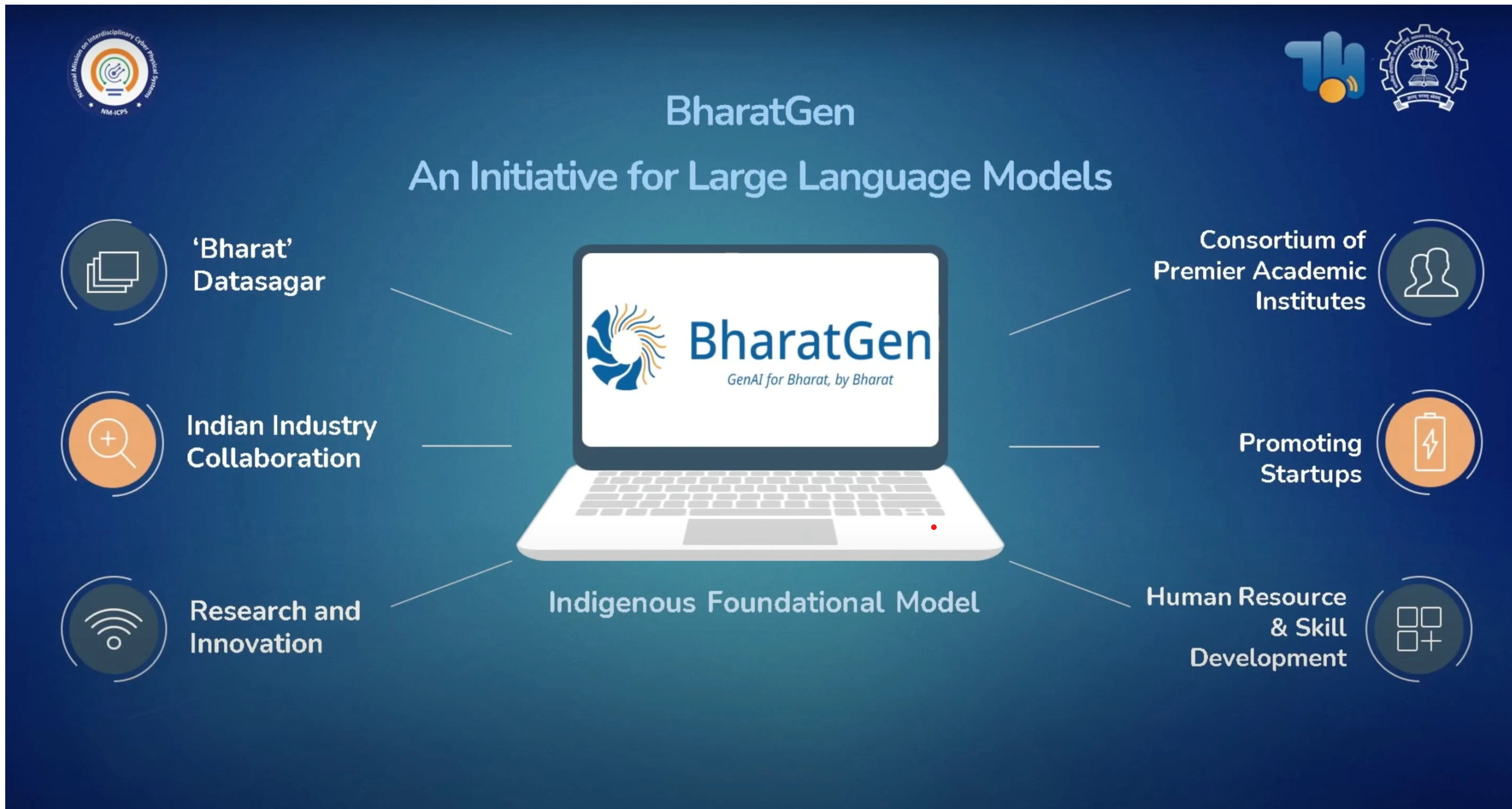
- 01 Oct 2024
In News:
BharatGen is a pioneering generative AI initiative launched in New Delhi, aimed at revolutionizing public service delivery and enhancing citizen engagement, with Dr. Jitendra Singh, Union Minister of State, in virtual attendance.
- Significance
- Represents India's commitment to advancing homegrown technologies.
- Positions India as a global leader in generative AI, similar to achievements with UPI and other innovations.
- Marks the world's first government-funded Multimodal Large Language Model project focusing on Indian languages.
- Leadership and Implementation
- Spearheaded by IIT Bombay under the National Mission on Interdisciplinary Cyber-Physical Systems (NM-ICPS).
- Collaboration with the TIH Foundation for IoT and various academic partners, including IITs and IIMs.
- Key figures involved include Prof. Shireesh Kedare (Director, IIT Bombay) and Prof. Ganesh Ramakrishnan (consortium leader).
- Core Objectives
- Deliver generative AI models as a public good, prioritizing socio-cultural and linguistic diversity.
- Address broader needs such as social equity, cultural preservation, and inclusivity.
- Make AI accessible for industrial, commercial, and national priorities.
- Key Features
- Multilingual and Multimodal Models: Capable of handling text and speech in multiple languages.
- Bhartiya Data Sets: Focus on India-centric data collection and training.
- Open-Source Platform: Promotes collaboration and innovation in AI research.
- Ecosystem Development: Fosters a robust AI research community.
- Project Timeline and Impact
- Expected completion in two years, with benefits for government, private, educational, and research institutions.
- Ensures coverage of India’s diverse linguistic landscape through multilingual datasets.
- Emphasis on data sovereignty to strengthen control over digital resources.
- Alignment with National Goals
- Supports the Atmanirbhar Bharat vision by reducing reliance on foreign technologies.
- Aims to strengthen the domestic AI ecosystem for startups, industries, and government agencies.
- Focuses on democratizing access to AI for innovators and researchers.
- Research and Community Engagement
- Data-efficient learning for languages with limited digital presence.
- Development of effective models with minimal data through research collaborations.
- Initiatives to foster an AI research community, including training programs and hackathons.
- Future Roadmap
- Key milestones outlined up to July 2026, focusing on:
- Extensive AI model development and experimentation.
- Establishment of AI benchmarks tailored to India’s needs.
- Scaling AI adoption across industries and public initiatives.
- Key milestones outlined up to July 2026, focusing on:
Joint Military Exercise KAZIND-2024
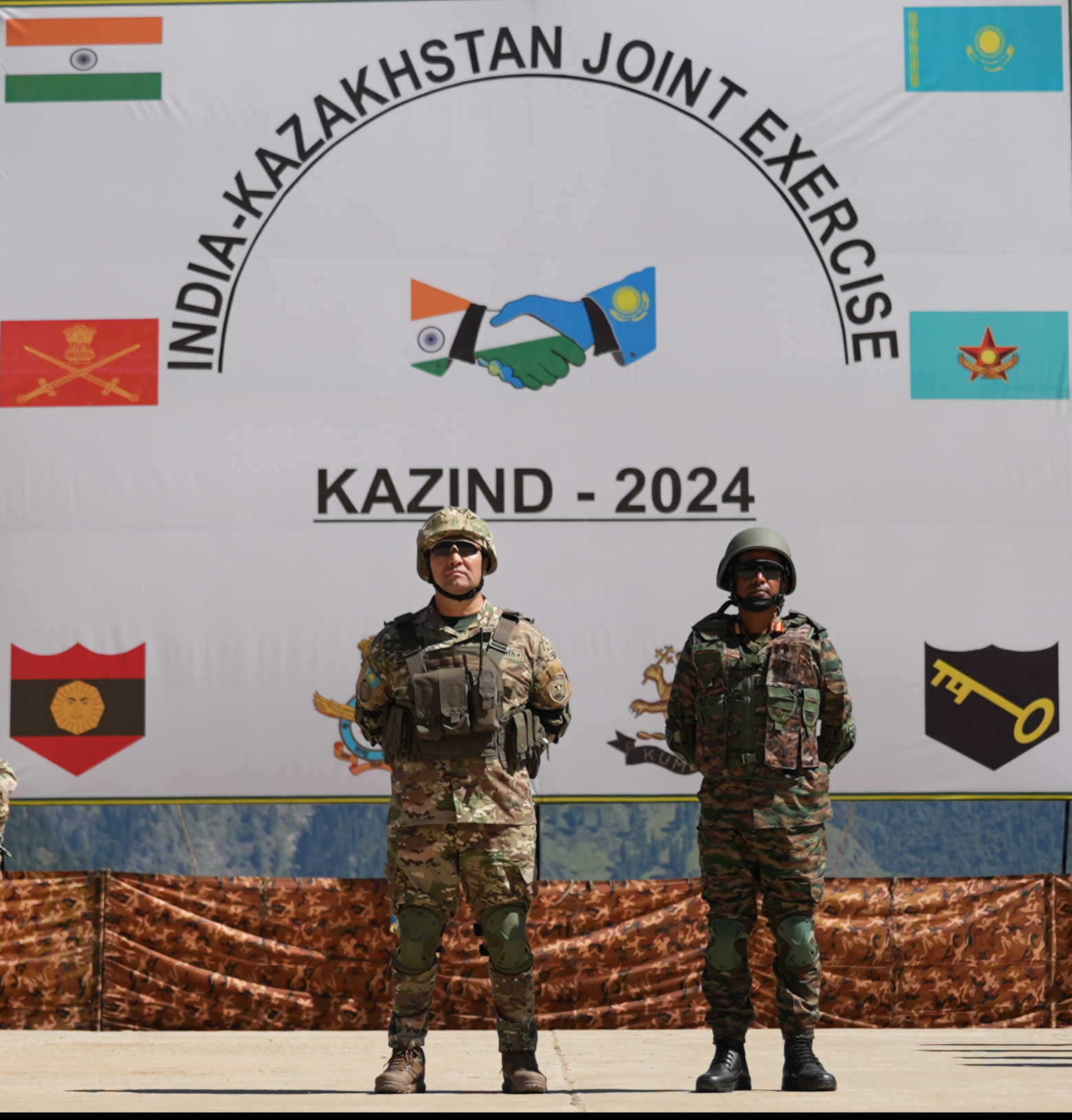
- 01 Oct 2024
In News:
The 8th edition of the India-Kazakhstan Joint Military Exercise, KAZIND-2024, has commenced in Auli, Uttarakhand, running from September 30 to October 13, 2024.
Key Details:
- Joint Exercise KAZIND-2024 has been held annually since 2016.
- Last edition of the Joint Exercise was held at Otar, Kazakhstan from 30th October to 11th November 2023.
Participants:
- India:
- 120 personnel from KUMAON Regiment of the Indian Army
- Additional support from other arms and Indian Air Force
- Kazakhstan:
- Personnel primarily from Land Forces and Airborne Assault Troopers
Aim:
- Enhance joint military capability for counter-terrorism operations
- Focus on sub-conventional scenarios under Chapter VII of the UN Charter
Focus Areas:
- Operations in semi-urban and mountainous terrains
- High physical fitness levels
- Rehearsal and refinement of tactical drills
- Sharing best practices
Tactical Drills:
- Joint response to terrorist actions
- Establishment of a Joint Command Post
- Creation of an Intelligence and Surveillance Centre
- Securing helipad/landing sites
- Combat free fall and Special Heliborne Operations
- Cordon and Search operations
- Employment of drones and counter-drone systems
Outcomes Expected:
- Sharing of tactics, techniques, and procedures for joint operations
- Development of interoperability between the two armies
- Strengthening of bonhomie and camaraderie
- Enhancement of defense cooperation and bilateral relations between India and Kazakhstan.
Armed Forces (Special Powers) Act (AFSPA)
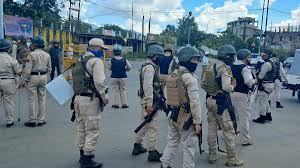
- 01 Oct 2024
In News:
- The Manipur government has extended the Armed Forces (Special Powers) Act (AFSPA) in the hill districts of the State for another six months.
- Effective October 1, the provisions of the Act will be extended to the whole State, except 19 police station limits in seven valley districts, thus maintaining the status quo, since three such notifications were passed since March 2023.
- It added that the “disturbed area” status could not be reviewed and a detailed ground assessment could not be done as “the sister security agencies are preoccupied with maintenance of law and order” and “it will be premature to arrive at any conclusion or decision on such sensitive matter without detailed assessment.”
Overview of the Armed Forces (Special Powers) Act (AFSPA)
- Enactment: The AFSPA was passed by Parliament and approved by the President on September 11, 1958.
- Context: It was introduced in response to rising violence in the North-eastern States, which state governments struggled to control.
Key Provisions of AFSPA
- Powers Granted:
- The Act empowers armed forces and Central Armed Police Forces in "disturbed areas" to:
- Kill anyone acting against the law.
- Arrest and search premises without a warrant.
- Receive protection from prosecution and legal action without Central government sanction.
- The Act empowers armed forces and Central Armed Police Forces in "disturbed areas" to:
- Issuance of Notifications:
- Both State and Union governments can issue notifications regarding AFSPA.
- The Ministry of Home Affairs issues "disturbed area" notifications for Arunachal Pradesh and Nagaland.
Definition of Disturbed Areas
- Criteria:
- A disturbed area is declared under Section 3 of AFSPA, indicating the need for armed forces' assistance in maintaining civil order.
- Factors leading to the declaration can include:
- Conflicts among different religious, racial, linguistic, or regional groups.
- Authority to Declare:
- The Central Government, the Governor of the State, or the administrator of a Union Territory can declare an area as disturbed.
- Duration:
- Once designated as disturbed, the area remains classified as such for three months, as per The Disturbed Areas (Special Courts) Act, 1976.
- State Government Input:
- State governments can recommend whether AFSPA should continue in their region.
Colombo Security Conclave (CSC)
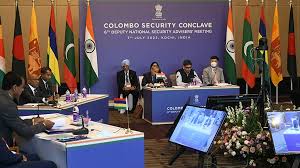
- 03 Sep 2024
In News:
The Colombo Security Conclave (CSC) recently marked a significant milestone with the signing of the Charter and the Memorandum of Understanding (MoU) for the establishment of its Secretariat in Colombo. This initiative aims to strengthen regional security collaboration among member states.
Key Features of the Colombo Security Conclave
- Member States: The CSC comprises five member countries:
- India
- Bangladesh
- Sri Lanka
- Maldives
- Mauritius
Additionally, Seychelles participates as an observer nation.
- Core Objectives: The primary goal of the CSC is to enhance regional security by addressing transnational threats and challenges that are common concerns for member states. This includes a collaborative approach to ensure stability and safety in the region.
Origin and Evolution
- The CSC originated as the Trilateral for Maritime Security Cooperation, established through trilateral meetings among National Security Advisors (NSAs) and Deputy NSAs from India, Maldives, and Sri Lanka starting in 2011.
- The initiative faced a setback after 2014 due to heightened tensions between India and the Maldives.
- It was revived and rebranded as the CSC in 2020, expanding its membership to include Mauritius and, more recently, Bangladesh.
Structure and Cooperation
- The conclave facilitates interactions among NSAs and Deputy NSAs of member countries, fostering dialogue and cooperation on security matters.
- Cooperation under the CSC is organized around five key pillars:
- Maritime Safety and Security
- Countering Terrorism and Radicalization
- Combating Trafficking and Transnational Organized Crime
- Cybersecurity and Protection of Critical Infrastructure
- Humanitarian Assistance and Disaster Relief
Permanent Secretariat
- The establishment of a permanent Secretariat in Colombo is expected to enhance coordination and streamline operations among member states, bolstering the efficacy of the CSC in addressing regional security issues.
7 New Schemes to Boost Farmer Income
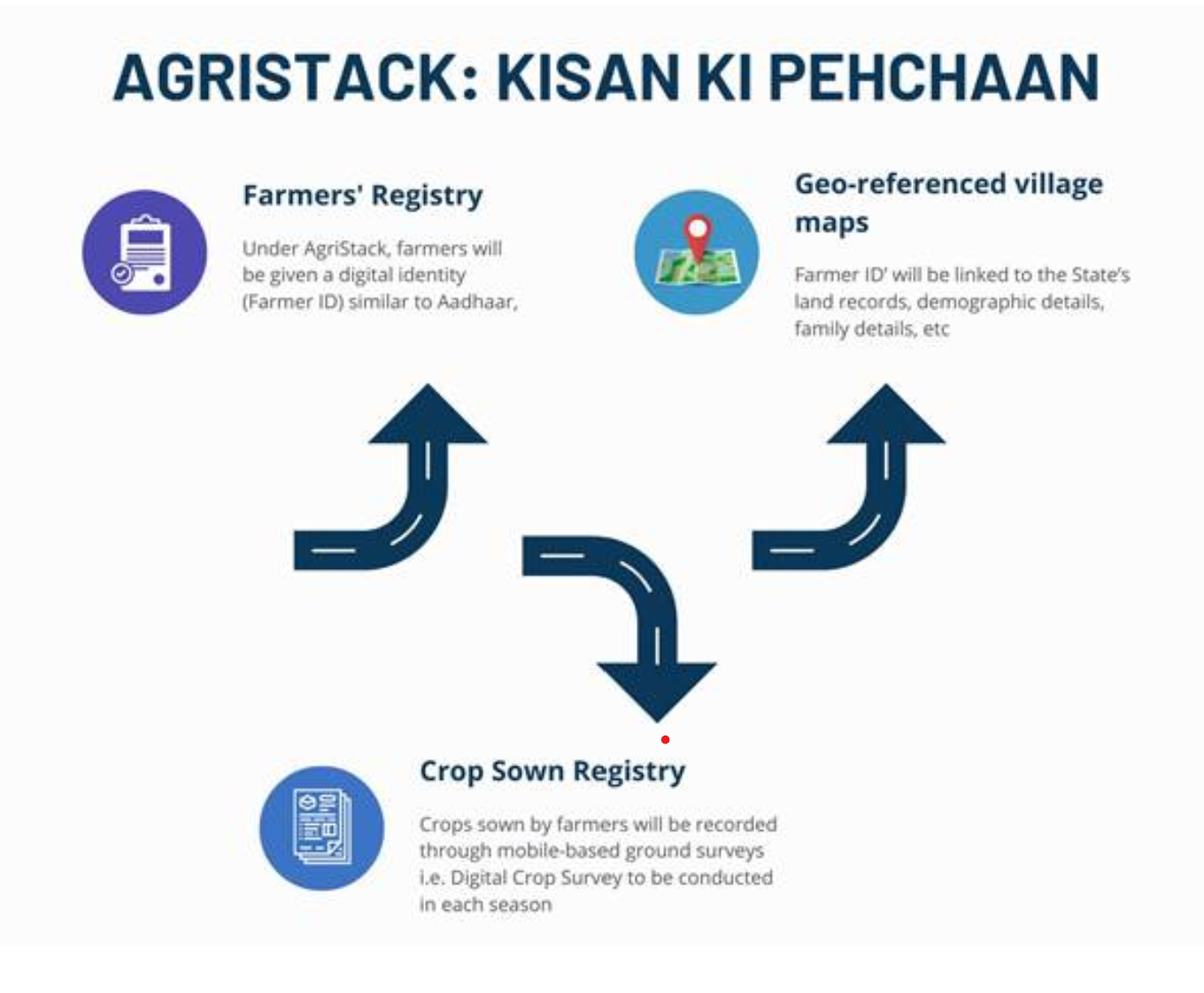
- 03 Sep 2024
In News:
The Union Cabinet chaired by Prime Minister, Shri Narendra Modi, approved seven schemes to improve farmers’ lives and increase their incomes at a total outlay of Rs 14,235.30 Crore.
1. Digital Agriculture Mission: based on the structure of Digital Public Infrastructure, Digital Agriculture Mission will use technology for improving farmers’ lives. The Mission has a total outlay of Rs 2,817 crores. It comprises two foundational pillars
1. Agri Stack
- Farmers registry
- Village land maps registry
- Crop Sown Registry
2. Krishi Decision Support System
- Geospatial data
- Drought/flood monitoring
- Weather/satellite data
- Groundwater/water availability data
- Modelling for crop yield and insurance
The Mission has provision for
- Soil profile
- Digital crop estimation
- Digital yield modelling
- Connect for crop loan
- Modern technologies like AI and Big Data
- Connect with buyers
- Bring new knowledge on mobile phones
2. Crop science for food and nutritional security: with a total outlay of Rs 3,979 crore. The initiative will prepare farmers for climate resilience and provide for food security by 2047. It has following pillars:
- Research and education
- Plant genetic resource management
- Genetic improvement for food and fodder crop
- Pulse and oilseed crop improvement
- Improvement of commercial crops
- Research on insects, microbes, pollinators etc.
3. Strengthening Agricultural Education, Management and Social Sciences: with a total outlay of Rs 2,291 Crore the measure will prepare agriculture students and researchers for current challenges and comprises the following
- Under Indian Council of Agri Research
- Modernising agri research and education
- In line with New Education Policy 2020
- Use latest technology … Digital DPI, AI, big data, remote, etc
- Include natural farming and climate resilience
4. Sustainable livestock health and production: with a total outlay of Rs 1,702 crore, the decision aims to Increase farmers income from livestock and dairy. It comprises the following
- Animal health management and veterinary education
- Dairy production and technology development
- Animal genetic resource management, production and improvement
- Animal nutrition and small ruminant production and development
5. Sustainable development of Horticulture: with a total outlay of Rs 1129.30 crore the measure is aimed at increasing farmers’ income from horticulture plants. It comprises the following
- Tropical, sub-tropical and temperate horticulture crops
- Root, tuber, bulbous and arid crops
- Vegetable, floriculture, and mushroom crops
- Plantation, spices, medicinal, and aromatic plants
6. Strengthening of Krishi Vigyan Kendra with an outlay of Rs 1,202 crore
7. Natural Resource Management with an outlay of Rs 1,115 crore
Current State of Mental Healthcare in India

- 03 Sep 2024
Overview
India’s mental healthcare landscape is evolving, with increasing awareness and decreasing stigma around mental health issues. However, access to mental healthcare remains a significant challenge due to a shortage of professionals. Here are the key points:
Current State of Mental Healthcare in India
- Rising Demand: Shifts in societal attitudes have led to more individuals seeking mental health support. Awareness and willingness to access treatment have notably increased.
- Professional Shortage: Despite the rising demand, there are only 0.75 psychiatrists per one lakh population, far below the World Health Organization’s recommendation of three per lakh. As of the latest data, India has about 9,000 psychiatrists, while an estimated 36,000 are needed to meet the standard.
- Slow Workforce Growth: Approximately 1,000 psychiatrists enter the workforce annually, but with attrition and unemployment, it could take around 27 years to reach the WHO target without intervention.
- Comparative Analysis: India has one of the lowest psychiatrist-to-population ratios among BRICS nations, trailing only Ethiopia. However, it performs better than many South Asian countries.
Limitations of Current Data
- Outdated Survey: The data largely relies on the National Mental Health Survey (NMHS) conducted between 2015 and 2016, which is based on a limited sample size of around 40,000 people across 12 states.
- Narrow Focus: The NMHS primarily addressed specific mental illnesses and overlooked milder conditions, emotional issues, and vulnerable populations like prisoners and the homeless.
- Need for Updated Research: A second NMHS is scheduled for release next year, which may provide more comprehensive data and insights.
Improvements in Awareness and Attitudes
- Positive Attitudinal Shift: A study by the LiveLoveLaugh Foundation found significant improvements in how Indians perceive mental health. For instance, the percentage of people believing that individuals with mental illnesses can handle responsibilities rose from 32% in 2018 to 65% in 2021.
- Willingness to Seek Help: Over 90% of respondents in 2021 indicated they would seek treatment for themselves or support others in doing so, a substantial increase from 54% in 2018.
- Increased Awareness: Awareness of mental health issues has grown, with 96% of respondents in 2021 recognizing mental health compared to 87% in 2018.
Conclusion
While India is making strides in reducing stigma and increasing awareness around mental health, the critical shortage of mental health professionals poses a significant barrier to accessing timely care. Addressing this issue requires targeted policy interventions and incentives to boost the supply of mental health professionals and improve the overall infrastructure for mental healthcare in the country.
Digital Agriculture Mission
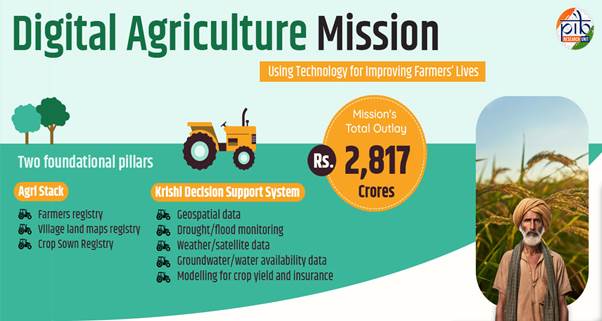
- 03 Sep 2024
Introduction
India's digital revolution has significantly transformed governance and service delivery in recent years by creating digital identities, secured payments and transactions. This progress has paved the way for a thriving digital ecosystem across various sectors, including finance, healthcare, education, and retail, positioning India as a leader in citizen-centric digital solutions.
For a similar transformation of the Agriculture Sector, the Union Cabinet Committee, chaired by Prime Minister Narendra Modi approved the 'Digital Agriculture Mission' with a substantial financial outlay of Rs. 2,817 Crore, including a central government share of Rs. 1,940 Crore, on September 2, 2024.
The Digital Agriculture Mission is designed as an umbrella scheme to support various digital agriculture initiatives. These include creating Digital Public Infrastructure (DPI), implementing the Digital General Crop Estimation Survey (DGCES), and supporting IT initiatives by the Central Government, State Governments, and Academic and Research Institutions.
The scheme is built on two foundational pillars:
- Agri Stack
- Krishi Decision Support System.
Additionally, the mission includes ‘Soil Profile Mapping’ and aims to enable farmer-centric digital services to provide timely and reliable information for the agriculture sector.
AgriStack: Kisan ki Pehchaan
AgriStack is designed as a farmer-centric Digital Public Infrastructure (DPI) to streamline services and scheme delivery to farmers. It comprises three key components:
1. Farmers' Registry
2. Geo-referenced village maps
3. Crop Sown Registry
- A crucial feature of AgriStack is the introduction of a 'Farmer ID', similar to Aadhaar card, serving as a trusted digital identity for farmers.
- These IDs, created and maintained by the State Governments/ Union Territories, will be linked to various farmer-related data, including land records, livestock ownership, crops sown, and benefits availed.
- The implementation of AgriStack is progressing through partnerships between the Central and State Governments, with 19 states having signed MoUs with the Ministry of Agriculture. Pilot projects have been conducted in six states to test the creation of Farmer IDs and the Digital Crop Survey.
- The six states include Uttar Pradesh (Farrukhabad), Gujarat (Gandhinagar), Maharashtra (Beed), Haryana (Yamuna Nagar), Punjab (Fatehgarh Sahib), and Tamil Nadu (Virudhnagar).
Key targets include:
- Creating digital identities for 11 crore farmers over three years (6 crore in FY 2024-25, 3 crore in FY 2025-26, and 2 crore in FY 2026-27)
- Launching the Digital Crop Survey nationwide within two years, covering 400 districts in FY 2024-25 and all districts in FY 2025-26
2. Krishi Decision Support System
- The Krishi Decision Support System (DSS) will integrate remote sensing data on crops, soil, weather, and water resources into a comprehensive geospatial system.
3. Soil Profile Mapping
Under the mission, detailed soil profile maps on a 1:10,000 scale for approximately 142 million hectares of agricultural land have been envisaged, with 29 million hectares of soil profile inventory already being mapped.
- Further under the Digital Agriculture Mission, the Digital General Crop Estimation Survey (DGCES) will be used for crop-cutting experiments to provide precise yield estimates, enhancing agricultural production accuracy.
- The mission is expected to create direct and indirect employment in agriculture, providing opportunities for around 2,50,000 trained local youth and Krishi Sakhis.
- By leveraging modern technologies like data analytics, AI, and remote sensing, the mission will improve service delivery for farmers, including streamlined access to government schemes, crop loans, and real-time advisories.
Key Components of the Mission
The Digital Agriculture Mission focuses on grassroots implementation, targeting farmers as the primary beneficiaries. Some of the key benefits of the mission include:
- Digital authentication for accessing services and benefits, reducing paperwork and the need for physical visits.
- Enhanced efficiency and transparency in government schemes, crop insurance, and loan systems through accurate data on crop area and yield.
- Crop map generation and monitoring for better disaster response and insurance claims.
- Development of digital infrastructure to optimize value chains and provide tailored advisory services for crop planning, health, pest management, and irrigation.
Digital Public Infrastructure for Agriculture
- Union Finance Minister Nirmala Sitharaman announced in the Union Budget 2024-25 that the Government, in partnership with states, will implement Digital Public Infrastructure (DPI) for agriculture over the next three years.
- This initiative will cover farmers and their lands, with a digital crop survey for Kharif planned for 400 districts this year. The goal is to update registries with details of 6 crore farmers and their lands.
- The Union Budget 2023-24 had previously introduced the DPI for agriculture, which aims to provide comprehensive data on farmers, including demographic details, land holdings, and crops sown. The DPI will integrate with state and central digital infrastructures to offer a range of farmer-centric services, including information on livestock, fisheries, soil health, and available benefits.
Conclusion
- The Union Cabinet also approved six major schemes alongside the Digital Agriculture Mission, with a total outlay of Rs 14,235.30 crore.
- These initiatives include Rs 3,979 crore for Crop Science aimed at ensuring food security and climate resilience by 2047, and Rs 2,291 crore for strengthening Agricultural Education, Management, and Social Sciences to support students and researchers. Rs 1,702 crore is allocated for Sustainable Livestock Health and Production to boost incomes from livestock and dairy, while Rs 1,129.30 crore is designated for Sustainable Development of Horticulture to increase income from horticulture. Additionally, Rs 1,202 crore will be invested in strengthening Krishi Vigyan Kendra, and Rs 1,115 crore towards Natural Resource Management.
- These comprehensive approaches leverage digital technologies to enhance productivity, efficiency, and sustainability in India's agricultural sector, potentially transforming the lives of millions of farmers across the country. By extending the digital revolution to agriculture, India aims to further solidify its position as a global leader in innovative, technology-driven solutions for critical sectors of the economy.
Supreme Court of India
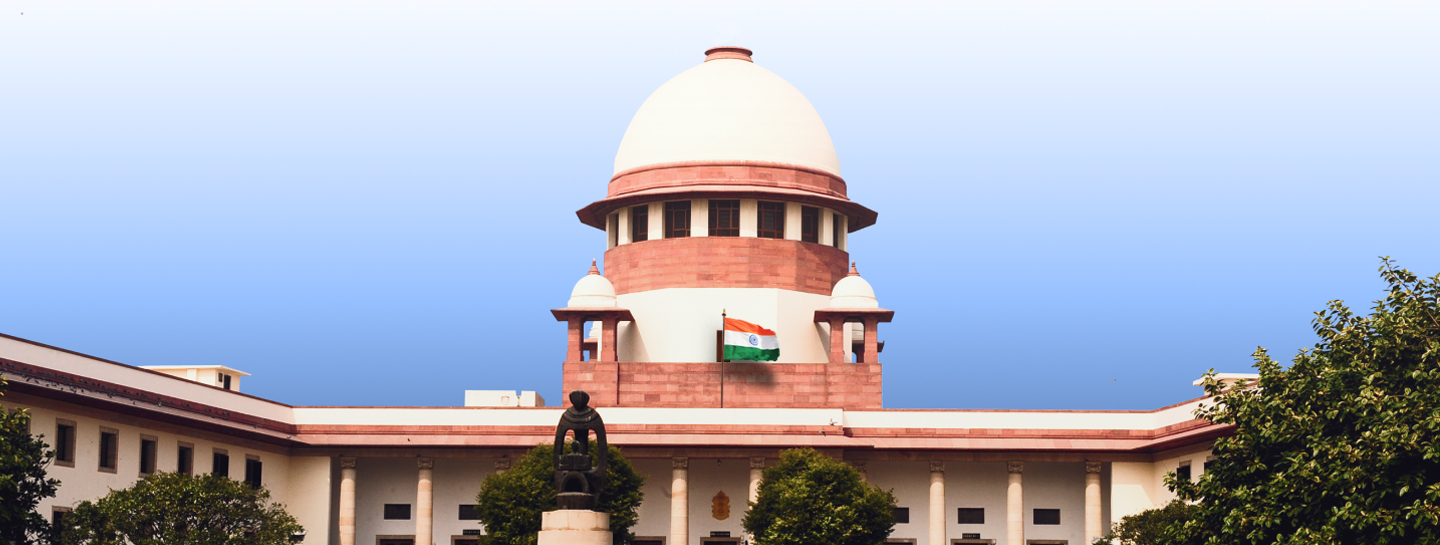
- 02 Sep 2024
In News:
On August 31, 2024, Prime Minister Narendra Modi inaugurated the National Conference of District Judiciary at Bharat Mandapam, New Delhi. This event marked the 75th anniversary of the Supreme Court of India, highlighted by the unveiling of a commemorative stamp and coin.
Supreme Court of India: History and Key Insights
The Origins of the Judiciary
- The concept of law, or Dharma, in ancient India was significantly influenced by the Vedas, which outlined rules of conduct and rituals in the Dharma Sutras. These texts addressed the duties of individuals and the rights of kings, forming the foundation of Hindu Law. The earliest systematic examination of jurisprudence can be found in Kautilya's Artha Sastra (circa 300 B.C.), particularly its third chapter, which discusses legal transactions and disputes.
Establishment of the Supreme Court
- The Regulating Act of 1773, enacted by the British Parliament, initiated the establishment of the Supreme Court of Judicature at Calcutta, with its Letters of Patent issued on March 26, 1774. This court had the authority to hear all complaints and lawsuits involving His Majesty’s subjects in Bengal, Bihar, and Orissa. Additional Supreme Courts were later established in Madras (1800) and Bombay (1823).
- The Indian High Courts Act of 1861 replaced these Supreme Courts with High Courts in various provinces, which became the highest judicial authorities until the Federal Court of India was created under the Government of India Act 1935. After India gained independence in 1947, the Supreme Court of India was formally established on January 26, 1950, with its inaugural session held on January 28, 1950.
- The Supreme Court's rulings are binding across India, and it possesses the power of judicial review to ensure that legislative and executive actions align with constitutional provisions and fundamental rights.
Structure and Functioning
- Initially, the Supreme Court operated for only a few hours each day and convened for 28 days a year. Today, it functions extensively, meeting approximately 190 days annually. The court was temporarily housed in the Parliament House before moving to its current location on Tilak Marg, New Delhi, in 1958.
- The court's architecture symbolizes justice, featuring a prominent dome and spacious corridors. It began with a Chief Justice and seven judges, with Parliament later increasing this number as the workload grew. Currently, the Supreme Court includes a Chief Justice and 30 judges.
Appointment and Qualifications of Judges
- Judges are appointed by the President of India, based on recommendations from a committee of senior judges (Collegium System). A candidate must be a citizen of India and have served as a High Court judge for at least five years or as an advocate for ten years. The age of retirement for judges is 65 years.
Judicial Independence and Removal
- Judicial independence is constitutionally protected. A Supreme Court judge can only be removed by the President on grounds of proven misbehavior or incapacity, following a resolution supported by a two-thirds majority in both Houses of Parliament.
Judicial Salaries and Provisions
- Judges’ salaries and pensions are defined by the Supreme Court Judges (Salaries and Conditions of Service) Act, 1958, and are charged to the Consolidated Fund of India.
Acting Chief Justice
- In the absence of the Chief Justice, the President appoints another judge as the Acting Chief Justice, as stipulated in Article 126.
Post-Retirement Opportunities
- While retired judges cannot practice law in India, they often serve in governmental roles, such as leading commissions. There have been calls for a "cool-off" period before such appointments.
Ad Hoc Judges
- Ad hoc judges may be appointed when necessary, and must meet the qualifications for Supreme Court judges. Retired judges can also be called back to serve temporarily.
Courts of Record
- Both the Supreme Court and High Courts are classified as courts of record, with the authority to punish for contempt as per Article 129.
Seat of the Supreme Court
- The Supreme Court is based in Delhi but can convene anywhere in India, with such decisions made by the Chief Justice in consultation with the President.
Samudra Pratap
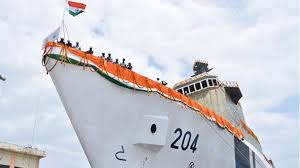
- 02 Sep 2024
In News
Recently, the Indian Coast Guard (ICG) proudly launched the first indigenously built Pollution Control Vessel, ‘Samudra Pratap’, in Goa.
Key Highlights of the Launch
- Vessel Details:
- Built by Goa Shipyard Limited (GSL), the vessel is specifically designed to combat oil spills along India’s coastlines.
- Dimensions: Length: 114.5m, Breadth: 16.5m, Displacement: 4170 T.
- The keel laying ceremony took place on November 21, 2022.
- Contract and Construction: GSL signed a contract worth Rs 583 crores for the construction of two Pollution Control Vessels for the ICG. This marks the first instance of such vessels being designed and built entirely in India.
- Significance of the Vessel: ‘Samudra Pratap’ stands as a testament to India's shipbuilding capabilities, showcasing GSL's expertise in producing advanced Pollution Control Vessels and reinforcing India's commitment to indigenization in defense manufacturing.
Queers can open Joint Bank Accounts
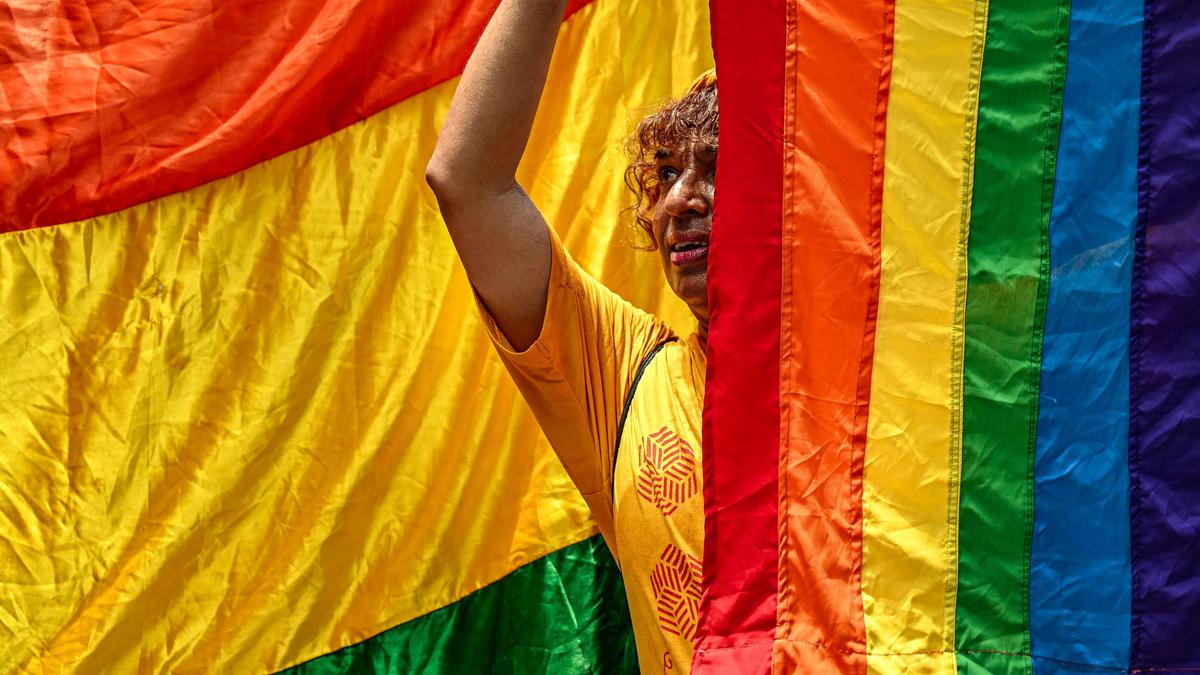
- 02 Sep 2024
In News:
Recently, the Union Government issued an advisory that LGBTQIA+ individuals and queer couples can open joint bank accounts. They can nominate each other as beneficiaries.
Key Details:
- Supreme Court Background:
- In October 2023, the Supreme Court of India urged the government to consider equal entitlements for partners in queer relationships.
- This was part of a judgment that did not recognize same-sex marriage but suggested enabling joint bank accounts and beneficiary nominations.
- Clarification from the Department of Financial Services:
- Issued on August 28, 2023, confirming no restrictions on opening joint accounts for the queer community.
- The Reserve Bank of India also clarified this to Scheduled Commercial Banks on August 21.
- Private Banks' Initiatives:
- Some banks, like Axis Bank, have been allowing joint accounts and beneficiary nominations for LGBTQIA+ couples since September 2021.
- Axis Bank expressed support for the Finance Ministry's advisory, noting alignment with its inclusive banking initiative.
- Government Committee Formation:
- In April 2023, a six-member committee was established to define entitlements for queer couples.
- Chaired by the Cabinet Secretary, it includes Secretaries from various ministries.
- The committee can co-opt experts if needed.
Project NAMAN
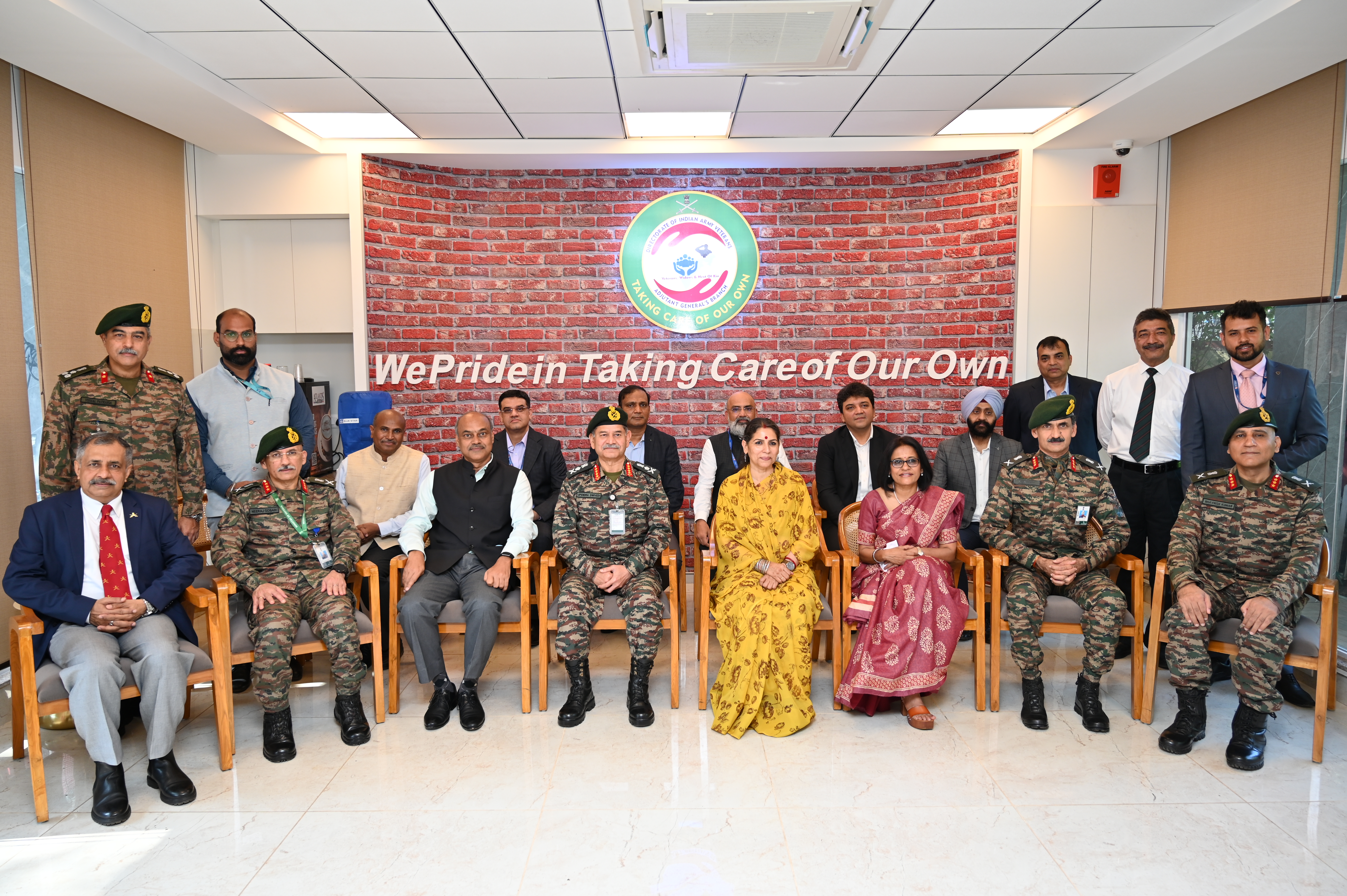
- 02 Sep 2024
In News:
- The Indian Army launched the first phase of Project NAMAN, aimed at supporting Defence Pensioners, Veterans, and their families.
- Key Features of Project NAMAN:
- Implements the SPARSH (System for Pension Administration Raksha) digital pension system.
- Streamlines pension processes and provides accessible facilitation points for Veterans and Next of Kin (NOK).
- Importance:
- Ensures care and support for veterans and their families.
- Services extended to residents of military stations and surrounding localities.
- Establishment of Common Service Centres (CSCs):
- Tripartite MoU signed between:
- Indian Army’s Directorate of Indian Army Veterans
- CSC e-Governance India Limited
- HDFC Bank Limited
- CSCs provide:
- SPARSH-enabled pension services
- Government to Citizen (G2C) services
- Business to Consumer (B2C) services
- Tripartite MoU signed between:
- Phase One Deployment:
- 14 CSCs established in key locations: New Delhi, Jalandhar, Leh, Dehradun, Lucknow, Jodhpur, Bengdubi, Gorakhpur, Jhansi, Secunderabad, Saugor, Guntur, Ahmedabad, Bangalore.
- Future expansion plans for approximately 200 centres nationwide in the next 2-3 years.
- Infrastructure Support:
- HDFC Bank provided necessary IT infrastructure.
- Local military stations contributed physical facilities.
- Community Engagement:
- Concept developed based on feedback from the Defence community.
- Promotes camaraderie among serving and retired Armed Forces personnel.
- Management of CSCs:
- Each CSC managed by a Village Level Entrepreneur (VLE) selected from veterans or NOKs by Local Military Authorities (LMAs).
- VLEs receive training from CSC e-Governance India Limited.
- HDFC Bank offers monthly grants of ?20,000 for the first 12 months to support VLEs.
- Conclusion:
- Project NAMAN reflects the Indian Army's commitment to veteran welfare.
- Offers SPARSH-centric services and entrepreneurial opportunities for Veterans and NOKs, empowering them to contribute to their communities.
Foot-and-Mouth Disease (FMD)
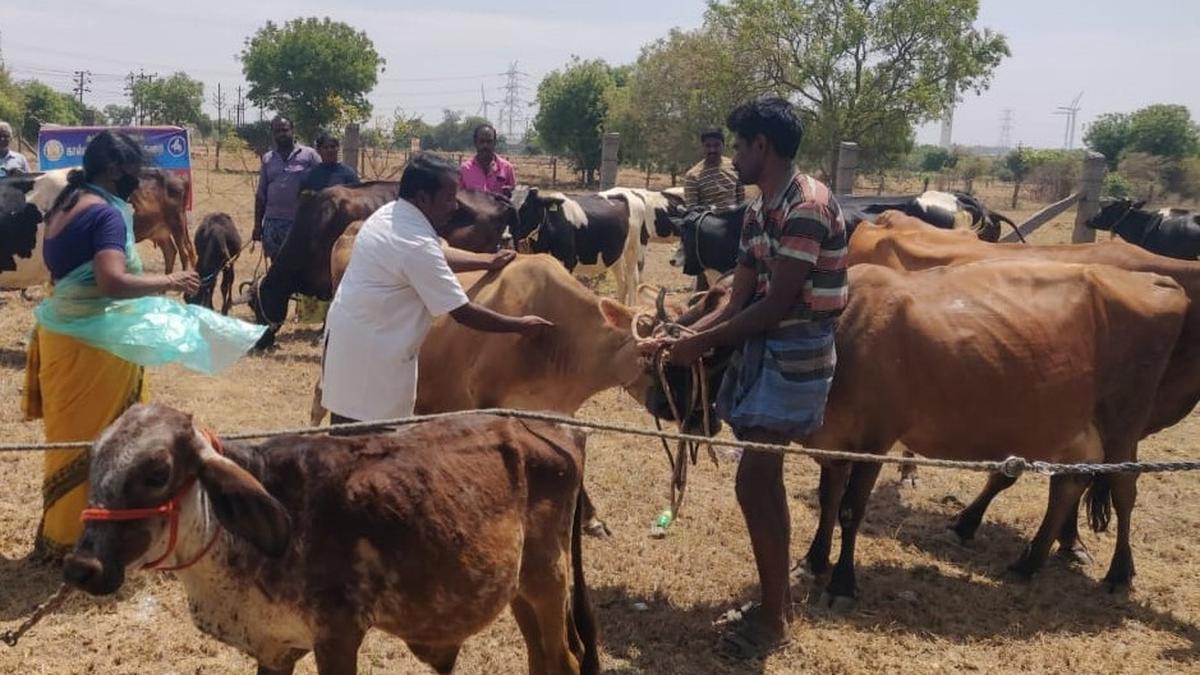
- 01 Sep 2024
In News:
- Establishment of Disease-Free Zones:
- The Union government plans to create FMD-free zones in eight states: Karnataka, Tamil Nadu, Andhra Pradesh, Telangana, Uttarakhand, Punjab, Haryana, Maharashtra, and Gujarat.
- Aim: Expand export opportunities for Indian animal products and enhance global market presence.
- Vaccination Efforts:
- Advanced vaccination initiatives are underway in the identified states, as stated by Alka Upadhyaya, Secretary of the Department of Animal Husbandry and Dairying.
- Collaborative Workshop:
- A workshop on ‘Animal Infectious Disease Prioritisation’ was held in collaboration with the Food and Agriculture Organisation.
- Focus: Prioritized 20 major animal infectious diseases based on severity, transmissibility, and national importance.
- Action Plan:
- Formulated focusing on five critical areas:
- Coordination
- Communication
- Monitoring and surveillance
- Prevention and control
- Therapeutics and socio-economic planning
- Formulated focusing on five critical areas:
- Regional Disease Prioritization:
- Strengthening regional-level prioritization of animal diseases for tailored control strategies.
- Overview of FMD:
- Highly contagious viral disease affecting cloven-hoofed animals like cattle, swine, sheep, and goats, but not horses or cats.
- Significant economic impact due to its effect on livestock production and trade.
Key Characteristics of FMD:
- Transmission:
- Virus present in excretions and secretions; aerosolized virus can infect other animals via respiratory or oral routes.
- Symptoms:
- Fever, blister-like sores on the tongue, lips, and hooves.
- High mortality in young animals, with production losses noted even post-recovery.
- Vaccination:
- Available vaccines must be matched to specific virus types/subtypes.
Repairability Index for Mobile and Electronic Sectors

- 01 Sep 2024
In News:
- The Department of Consumer Affairs (DoCA), Government of India, has established a committee of experts to create a framework for the Repairability Index.
- Objective:
- Enhance consumer transparency regarding product repairability.
- Promote sustainable practices in the tech industry.
- National Workshop:
- Held on August 29, 2024, focusing on the Right to Repair in the Mobile and Electronics Sector.
- Aimed to gather industry stakeholders to agree on evaluating components for the Repairability Index.
- Key Goals:
- Address the rapid demand and short lifespan of mobile and electronic devices.
- Provide essential repair information and ensure access to spare parts, even for discontinued products.
- Repairability Index:
- A consumer-focused tool that helps in making informed product decisions based on repairability.
- Aims to standardize repairability assessments, enabling easier product comparisons.
- Consumer Empowerment:
- The index fosters mindful consumption and sustainability.
- Ensures affordable repair options and improves overall consumer satisfaction by addressing information gaps.
- Key components of the Repair Ecosystem:
- Comprehensive Repair Information: Access to repair manuals/DIYs, diagnostics, and a list of necessary tools and parts.
- Accessible Spare Parts: Easily identifiable and timely delivery of spare parts.
- Affordable Tools: Inexpensive, widely available, and safe tools for consumers.
- Modular Design: Key components designed for independent access and modularity.
- Economic Feasibility: Ensuring that the cost of repair parts and labor is affordable for consumers.
Taking into account the above necessities the committee is expected to recommend enabling framework for Policies/Rules/Guidelines which support repairability and integration of repairability index with the extant regulatory provisions in mobile and electronics sector to enhance consumer experiences in reusing the mobile and electronics products they own.
The committee will submit a comprehensive report including a framework for repairability index in Indian context by 15th November, 2024.
India's Biotech Revolution

- 01 Sep 2024
In News:
The Indian Cabinet has recently approved the BioE3 (Biotechnology for Economy, Environment, and Employment) proposal, a significant move to advance the country’s biotechnology sector.
Scheduled to take effect on April 1, 2025, the BioE3 policy aims to capitalize on India's biotechnology potential by focusing on six key areas: bio-based chemicals, functional foods, precision biotherapeutics, climate-resilient agriculture, carbon capture, and marine/space research.
Current Status of India’s Biotechnology Sector
India ranks among the top 12 biotechnology destinations globally and is the third-largest in the Asia-Pacific region. As of 2024, India's Bioeconomy is valued at an estimated USD 130 billion. The sector is integral to India’s goal of becoming a USD 5 trillion economy by 2024, with biotechnology contributing about 3% to the global market share.
Biotechnology Categories in India:
- Biopharmaceuticals: India is a major supplier of low-cost drugs and vaccines, leading in biosimilars with the highest number of approvals.
- Bio-Agriculture: India dedicates approximately 55% of its land to agriculture, holding the fifth-largest area of organic agricultural land worldwide. The sector's contribution to the Bioeconomy is expected to grow from USD 10.5 billion to USD 20 billion by 2025.
- Bio-Industrial: Biotechnology is enhancing industrial processes, manufacturing, and waste disposal.
- Bio IT & BioServices: India excels in contract manufacturing, research, and clinical trials, hosting the highest number of US FDA-approved plants outside the US.
Government Initiatives:
- 100% foreign direct investment (FDI) is permitted in greenfield pharma and medical devices.
- The National Biotechnology Development Strategy 2021-25 aims to make India a global leader in biotechnology, targeting a USD 150 billion Bioeconomy by 2025.
- The Department of Biotechnology has established 51 Biotech-KISAN hubs to connect farmers with scientific advancements.
- The Union Budget 2023-24 includes INR 10,000 crore for 500 ‘waste to wealth’ plants under the GOBARdhan scheme.
- The GenomeIndia Project focuses on sequencing and analyzing the Indian population’s genomes to aid public health.
Challenges and Recommendations
Challenges:
- Regulatory Hurdles: The complex approval process for GMOs and overlapping regulatory bodies slow down progress.
- Funding Issues: Limited funding and high risks deter investment. The biotechnology sector receives only 0.05% of India's GDP from the Central Government.
- Infrastructure Gaps: Inadequate research facilities and cold chain infrastructure hamper progress.
- IP Concerns: Intellectual property protection remains weak, affecting innovation.
- Global Competition: Indian firms face stiff competition from established global players.
- Talent Shortages: A brain drain and skills mismatch impede growth.
- Ethical Dilemmas: Ethical issues related to GMOs and gene editing pose challenges.
Recommendations:
- Regulatory Streamlining: Establish a unified Biotechnology Regulatory Authority and adopt a risk-based assessment approach.
- Innovative Funding: Create a Biotechnology Investment Fund with public-private partnerships.
- Talent Development: Launch skill development programs and integrate biotech training into various disciplines.
- Infrastructure Investment: Develop shared high-end research facilities and upgrade cold chain infrastructure.
- IP Strengthening: Enhance the IPR regime and establish a Biotech Patent Pool.
- Leverage Make in India: Expand the Production Linked Incentive (PLI) scheme to cover more biotech products and establish specialized manufacturing corridors.
Unified Pension Scheme
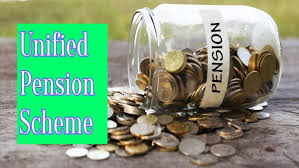
- 01 Sep 2024
In News:
The new Unified Pension Scheme (UPS), set to launch on April 1, 2025, aims to provide improved old age income security. Around 23 lakh Central government employees will benefit from this new scheme, and those currently under the National Pension System (NPS) will have the option to switch to UPS. States can also adopt the UPS for their employees, but they will need to secure funding from their own resources.
Key Components of UPS
The UPS introduces several enhancements to pension benefits:
- Pension Benefits: Employees will receive half of their average basic pay over the final 12 months of service as a monthly pension after completing a minimum of 25 years of service. For those with less than 25 years, the pension will be proportionately reduced, with a minimum pension of ?10,000 for those with at least 10 years of service.
- Family Pension: A family pension equivalent to 60% of the employee's pension will be provided to dependents upon the employee's death.
- Inflation Adjustment: Pension incomes will be adjusted in line with the consumer price trends for industrial workers, similar to the dearness relief provided to current government employees.
- Superannuation Payout: In addition to gratuity, a lumpsum superannuation payout will be given, amounting to 1/10th of the employee’s monthly emoluments for every six months of service.
Differences from the Current System
The new UPS combines features from the Old Pension Scheme (OPS) and NPS:
- Old Pension Scheme (OPS): Employees who joined before January 1, 2004, are covered under OPS, which guarantees a pension of 50% of the last drawn salary, adjusted for dearness allowance. It also offers a family pension of 60% of the last drawn pension, with provisions for commutation and additional increases for pensioners over 80 years of age.
- National Pension System (NPS): Introduced in 2004, NPS replaced OPS for new employees, shifting from a defined benefits system to a defined contribution scheme. Employees and the employer contribute a percentage of the salary to market-linked securities, with no guaranteed pension amount, only a corpus that must be used to buy an annuity upon retirement.
The UPS aims to blend the certainty of OPS with the funded approach of NPS. While employees' contributions will be capped at 10% of their salary, the government will contribute 18.5%, with potential adjustments over time. The government will cover any shortfall between investment returns and pension promises.
Reasons for the Change
The transition to UPS addresses concerns raised by government employees and political pressure regarding the NPS. Employees have criticized NPS for its lack of guaranteed pension benefits compared to OPS. The issue has become politically significant, with opposition parties promising to revert to OPS in various states.
In March 2023, Finance Minister Nirmala Sitharaman announced a review of NPS led by former Finance Secretary T.V. Somanathan. Though the review’s findings are yet to be made public, the introduction of UPS reflects a compromise balancing employee expectations with fiscal prudence.
Reactions and Future Impact
Central government employees generally welcome the UPS, recognizing it as a step toward addressing the shortcomings of NPS. However, there are concerns about the contributory nature of UPS and the absence of a commutation option like in OPS. Economists are analyzing the scheme's financial implications, with an expected additional cost of ?7,050 crore this year for the government. Future pension payouts may increase but are anticipated to be manageable with higher revenue growth.
The UPS marks a significant shift in pension policy, aiming to provide greater financial security for government employees while managing fiscal responsibilities.
New Target for Cancer Treatment Discovered by IACS Scientists
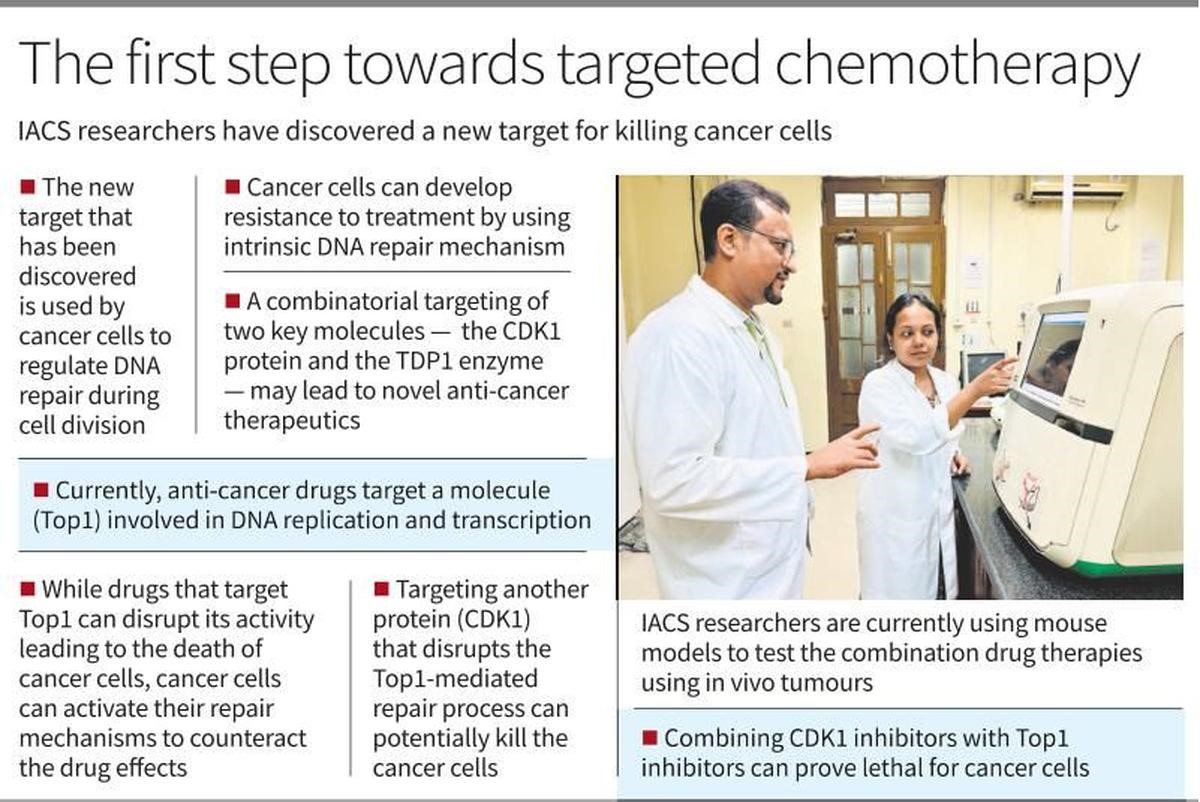
- 01 Sep 2024
In News:
In a significant breakthrough, scientists at the Indian Association for the Cultivation of Science (IACS) in Kolkata have identified a new target for cancer therapy. Their study, recently published in The EMBO Journal, focuses on how cancer cells manage DNA repair during cell division, potentially paving the way for more effective treatments.
Key Findings
The researchers explored how cancer cells respond to topoisomerase 1 (Top1)-targeted chemotherapy. Top1 inhibitors, such as camptothecin, topotecan, and irinotecan, disrupt DNA replication and transcription, causing damage that usually leads to cell death. However, cancer cells can sometimes develop resistance by employing internal DNA repair mechanisms, primarily involving a protein called TDP1.
Mechanism of Action
Top1 is crucial for relaxing DNA supercoils during cell division, a process necessary for accurate chromosome segregation. Drugs targeting Top1 can kill cancer cells by preventing this relaxation. Nonetheless, cancer cells counteract this damage with TDP1, which repairs the DNA and promotes cell survival.
The IACS team discovered that TDP1's function is influenced by its phosphorylation status, which changes during the cell cycle and drug treatment. This modification helps TDP1 detach from chromosomes during cell division, a mechanism that helps cells survive despite the presence of chemotherapy drugs.
Novel Therapeutic Approach
The researchers propose a novel approach that combines inhibitors of two key molecules: CDK1 protein and TDP1 enzyme. CDK1 plays a critical role in regulating the cell cycle, while TDP1 is involved in repairing DNA damage. By inhibiting both, the researchers aim to disrupt the cancer cell's ability to repair DNA damage caused by Top1 inhibitors.
This combinatorial targeting strategy could enhance the effectiveness of cancer treatments. While Top1 inhibitors induce DNA damage, CDK1 inhibitors could prevent the repair of this damage or halt the cell cycle, making it difficult for cancer cells to survive. This dual-target approach may also help overcome resistance mechanisms that cancer cells develop against single-agent therapies.
Clinical Implications
CDK1 inhibitors, including avotaciclib, alvocidib, roniciclib, riviciclib, and dinaciclib, are currently in various stages of clinical trials. These drugs can be used alone or in combination with other DNA-damaging agents. Combining CDK1 inhibitors with Top1 inhibitors holds promise for significantly improving cancer treatment outcomes by targeting different aspects of the cell cycle and DNA replication.
Although the study was conducted using human breast cancer cells, the findings suggest potential benefits for patients with other types of cancer, such as ovarian, colorectal, and small cell lung cancers (SCLC). SCLC, in particular, is associated with tobacco smoking and could potentially benefit from this new combinatorial approach.
Conclusion
The IACS study opens new possibilities for cancer treatment by targeting DNA repair mechanisms in cancer cells. By combining CDK1 and Top1 inhibitors, the researchers aim to enhance the effectiveness of chemotherapy and overcome resistance. Further research, including clinical trials, will be essential to validate these findings and develop personalized cancer therapies that could improve patient outcomes across various cancer types.
Recent Announcement on Dark Matter Research
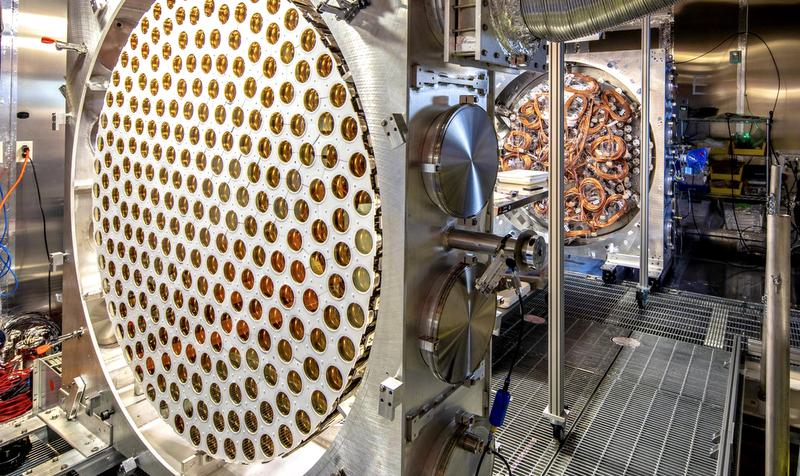
- 30 Sep 2024
In News:
Recently two representatives from the LUX-ZEPLIN (LZ) experiment, working 1.5 km underground at the Sanford Underground Research Facility in South Dakota, announced that they had placed the tightest restrictions yet on the identities of dark matter particles, resulting in a null finding that clarified which identities these particles could not have, leading to a sense of resignation rather than disappointment among the physics community, as similar experiments like XENON-nT in Italy and PandaX-4T in China have yielded empty results for decades despite significant efforts.
Background on Dark Matter
- Definition: Dark matter makes up most of the universe's mass, contributing to its structure.
- Composition: Likely consists of previously unknown particles that:
- Do not interact with photons.
- Remain stable over billions of years.
- Key Question: Can dark matter interact with atomic nuclei and electrons?
Experimental Strategies
- Proposed Method:
- Introduced by physicists Mark Goodman and Ed Witten in 1985.
- Concept: Use a “sail” (a chunk of metal) deep underground to detect dark matter interactions.
- Objective: Measure unknown mass and interaction rate (cross-section) of dark matter particles.
Scattering Cross-Section
- Concept:
- Similar to light interaction with different media (vacuum, glass, rock).
- Cross-sections indicate how readily a particle can scatter.
- Previous Limits: Proposed limits as small as 10−38cm210^{-38} text{cm}^210−38cm2.
- Current Achievements: Recent experiments have ruled out cross-sections as small as 10−44cm210^{-44} text{cm}^210−44cm2.
Challenges Ahead
- Neutrino Interference:
- As detectors increase in size, they also detect more noise from neutrinos, complicating dark matter detection.
- Both PandaX-4T and XENONnT report issues with neutrino signals.
- Resignation in Community:
- Scientists had hoped for clearer results before facing the challenge of distinguishing dark matter from neutrinos.
Alternative Research Avenues
- Focus on Lighter Particles:
- Exploring dark particles lighter than atomic nuclei for easier detection.
- Technological Development:
- Advancing technologies to measure minimal energy transfers using special materials.
Conclusion
- Ongoing Effort: The search for dark matter continues to unite scientific disciplines and require innovative approaches.
- Human Ingenuity: The pursuit reflects a broader effort to understand the universe, drawing on collective expertise and creativity.
NAMASTE programme
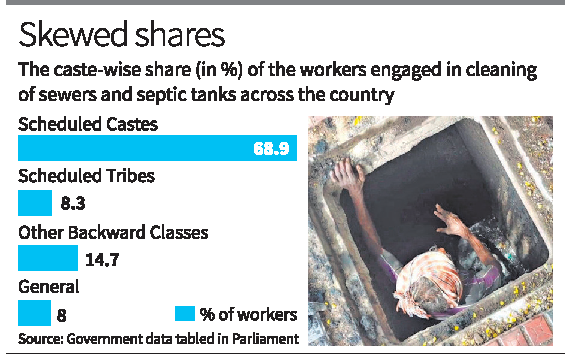
- 30 Sep 2024
In News:
A recent government survey has shed light on the demographics of workers engaged in the hazardous cleaning of urban sewers and septic tanks across India. This initiative, part of the Ministry of Social Justice and Empowerment's NAMASTE programme, highlights significant disparities within this labor sector.
Key Findings
- Community Representation: An overwhelming 91.9% of the 38,000 workers profiled belong to marginalized communities:
- Scheduled Castes (SC): 68.9%
- Other Backward Classes (OBC): 14.7%
- Scheduled Tribes (ST): 8.3%
- General Category: 8%
- Mortality Rates: Between 2019 and 2023, at least 377 individuals died while performing hazardous cleaning tasks, underscoring the dangers associated with this work.
The NAMASTE Programme
- Objective: The NAMASTE programme aims to mechanize sewer work to prevent fatalities linked to manual cleaning. It seeks to transition workers into safer, more sustainable roles as "sanipreneurs" by providing safety training, equipment, and capital subsidies.
- Background: This programme replaces the earlier Self-Employment Scheme for Rehabilitation of Manual Scavengers (SRMS), focusing on the more technical aspects of hazardous cleaning rather than manual scavenging.
- Namaste is a Central Sector Scheme of the Ministry of Social Justice and Empowerment (MoSJE) as a joint initiative of the MoSJE and the Ministry of Housing and Urban Affairs (MoHUA).
- The Scheme has been approved with an outlay of Rs. 360 crore for four years from 2022-23 to 2025-26.
- NAMASTE aims to achieve the following outcomes:
- Zero fatalities in sanitation work in India
- All sanitation work is performed by skilled workers
- No sanitation workers come in direct contact with human faecal matter
- Sanitation workers are collectivized into SHGs and are empowered to run sanitation enterprises
- All Sewer and Septic tank sanitation workers (SSWs) have access to alternative livelihoods
- Strengthened supervisory and monitoring systems at national, state and ULB levels to ensure enforcement and monitoring of safe sanitation work
- Increased awareness amongst sanitation services seekers (individuals and institutions) to seek services from registered and skilled sanitation workers
Progress and Coverage
- Implementation: Since the scheme's inception, 3,326 urban local bodies (ULBs) have begun profiling workers, with many reporting minimal or no workers engaged in hazardous cleaning.
- Data Collection: The government is gathering data from over 3,000 ULBs across 29 states and union territories to better understand the scope and risks associated with this labor.
AVGC: The Future of Media & Entertainment Industry
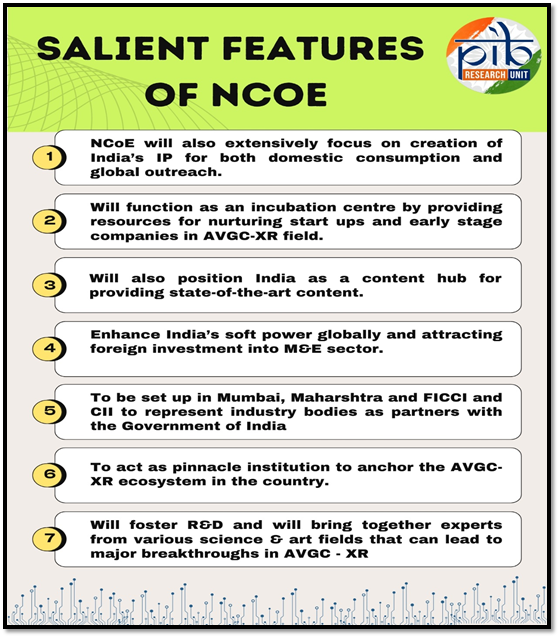
- 30 Sep 2024
Introduction
- The AVGC (Animation, Visual Effects, Gaming, Comics) sector is set to be the future of the media and entertainment industry.
- According to the FICCI-EY 2024 report, India now boasts the second-largest anime fan base globally and is projected to contribute 60% to the worldwide growth in anime interest in the coming years.
- In a significant step toward making India a global hub for AVGC, the Union Cabinet recently approved the establishment of a National Centre of Excellence (NCoE) for Animation, Visual Effects, Gaming, Comics, and Extended Reality (AVGC-XR) in Mumbai.
NCoE Background
- NCoE will be set up as a Section 8 Company under the Companies Act, 2013 in India with Federation of Indian Chambers of Commerce & Industry and Confederation of Indian Industry representing the industry bodies as partners with the Government of India.
- The establishment of the NCoE follows the Union Minister of Finance and Corporate Affairs 2022-23 budget announcement, which proposed the creation of an AVGC task force in the country.
- NCoE AVGC aims at creating a world class talent pool in India to cater to the Indian as well as global entertainment industry.
- Provisionally named the Indian Institute for Immersive Creators (IIIC), this center aims to revolutionize the AVGC sector and foster innovation in immersive technologies.
- It will be modeled after renowned institutions like the Indian Institutes of Technology (IITs) and Indian Institutes of Management (IIMs).
Objective of NCoE (IIIC)
Boasting a growth rate of 25% and an estimated value of ?46 billion by 2023 (FICCI-EY Report 2023), the animation industry in India is thriving and offers a promising future for passionate young talent.
Below are some of the key objectives of the NCoE (IIIC):
- Focusing of creating Indian IP
- Leveraging our cultural heritage in new age
- Create a multiplier effect in the industry
- An industry led initiative, in partnership with state and academia
- Integrated focus on education, skilling industry, development, innovation
- Hub and spoke model of development to be followed
- IIIC as the hub and several center’s as its spokes dedicated innovation and research fund to promote start-up ecosystem
Conclusion
The Union Cabinet's approval of the National Centre of Excellence (NCoE) for AVGC marks a pivotal step in strengthening India’s media and entertainment industry. This initiative is set to boost the economy while creating new job opportunities in the rapidly growing AVGC sector. As a global hub for filmmaking, India's advancements in technology and infrastructure will enable the production of high-quality content, positioning the country as a leader in technological innovation and creativity.
MARBURG VIRUS OUTBREAK IN RWANDA
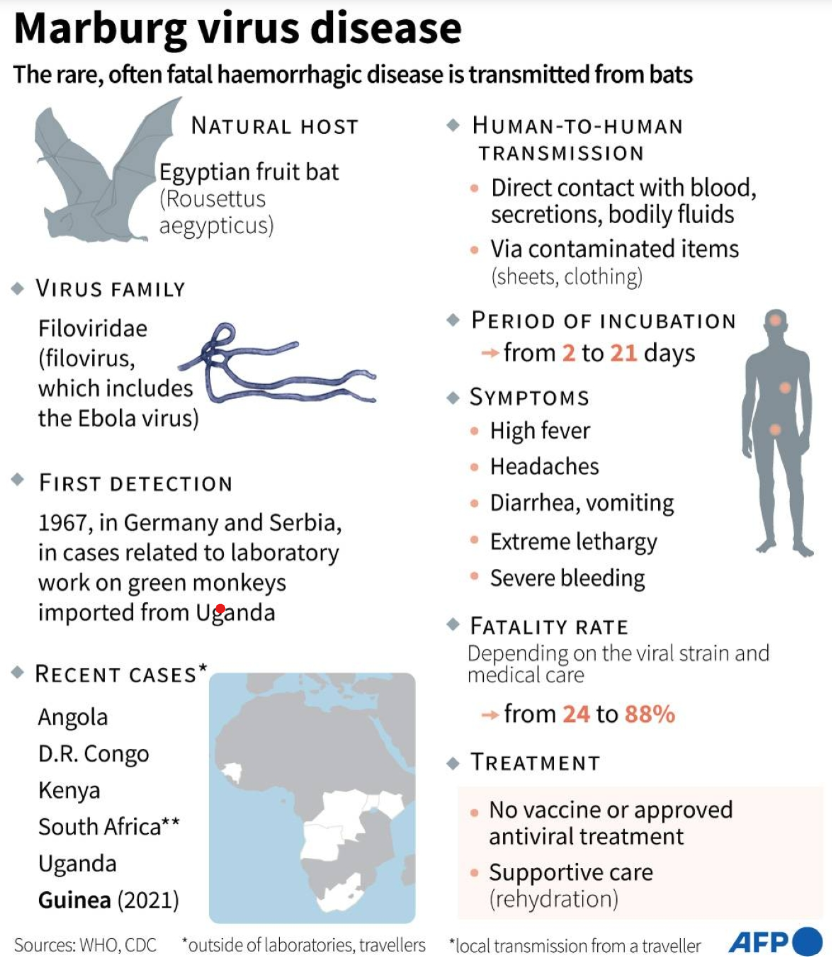
- 30 Sep 2024
In News:
Rwanda is currently facing an outbreak of Marburg virus disease (MVD), leading to six fatalities, primarily among healthcare workers.
What is Marburg Virus Disease?
Marburg virus disease is a severe and often fatal illness first identified in 1967 in Germany. It is caused by the Marburg virus, which is primarily transmitted to humans through contact with infected animals, particularly fruit bats.
Current Situation in Rwanda
The ongoing outbreak has claimed six lives, most of whom were healthcare professionals. The Minister of Health has emphasized the need for heightened preventive measures and community vigilance.
Symptoms and Transmission
Common symptoms of MVD include high fever, severe headache, watery diarrhea, abdominal pain, and vomiting. The virus spreads through direct contact with the blood, secretions, and bodily fluids of infected individuals.
Available Treatments and Supportive Care
There is currently no specific treatment for Marburg virus disease. Supportive care, including symptom management and hydration, is critical, and early medical attention is essential for those exhibiting symptoms.
Preventive Measures and Recommendations
To prevent the spread of MVD, individuals should:
- Practice good hygiene.
- Avoid contact with infected persons.
- Ensure thorough cooking of animal products.
- Use protective equipment when caring for sick patients.
Global Context and Pandemic Risk
While Marburg virus disease poses a significant mortality risk and can spread between humans, its pandemic potential is lower than that of more contagious viruses. Rapid containment efforts are essential to prevent wider outbreaks.
INDIA DESERVES PERMANENT UNSC SEAT: BHUTAN
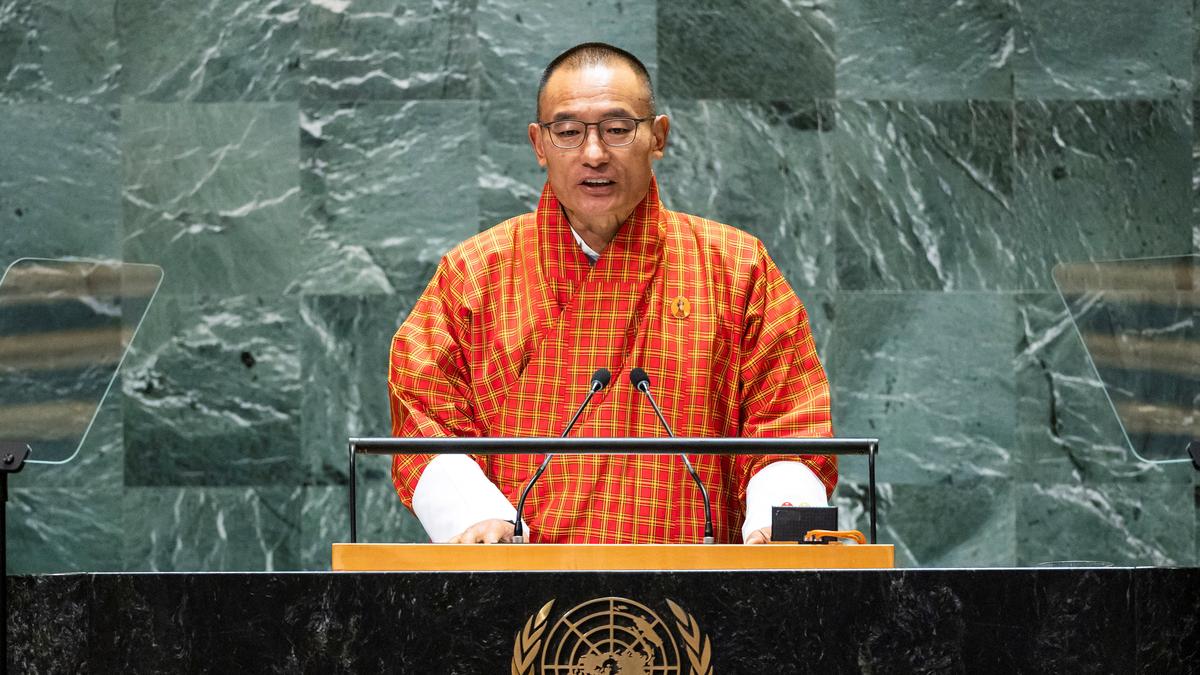
- 30 Sep 2024
In News:
With its significant economic growth and leadership of the Global South, India deserves a permanent seat at the UN Security Council, says Bhutan’s Prime Minister Tshering Tobgay.
Key Highlights:
- Economic Growth: Highlights India’s significant economic growth and its leadership in the Global South as justifications for this status.
- International Backing: India’s bid gains momentum with support from several UN Member States, including France, the UK, and the U.S.
- Need for Reform: Bhutan emphasized that the UNSC is outdated and must evolve to reflect contemporary geopolitical and economic realities.
- Advocacy for Representation: Bhutan has long called for a more representative and effective Security Council, backing India’s inclusion at the high table.
About UN Security Council (UNSC)
- Composition: Total of 15 member states.
- 5 permanent members (P5): China, France, Russia, the United Kingdom, and the United States (with veto rights).
- 10 non-permanent members elected for two-year terms.
- Election of Non-Permanent Members:
- Elected on a regional basis:
- 5 seats for African and Asian states.
- 2 seats for Latin American and Caribbean states.
- 1 seat for Eastern European states.
- 2 seats for Western European and other states.
- Elected on a regional basis:
- Presidency:
- Rotates monthly among members, following the English alphabetical order of country names.
- Primary Functions:
- Maintain international peace and security.
- Investigate and resolve disputes.
- Impose sanctions and authorize the use of force.
- Establish peacekeeping missions.
- Make recommendations to member states.
- Meeting Schedule:
- Regular meetings at UN headquarters in New York.
- Can convene at any time in response to emergencies.
- Decision-Making:
- Requires affirmative votes from at least 9 of the 15 members.
- Any of the P5 can veto resolutions, raising concerns about the Council's effectiveness.
- Subsidiary Bodies:
- Includes committees, working groups, and sanctions committees focused on specific issues like counter-terrorism, nuclear non-proliferation, and peacekeeping operations.
- Reforming the UN Security Council (UNSC)
- Charter Amendments:
- Reforming the UNSC requires amendments to the UN Charter.
- Voting Requirements:
- An amendment must be adopted by a two-thirds majority of the General Assembly.
- It must also be ratified by two-thirds of UN member states, including all permanent members of the UNSC.
- Charter Amendments:
Paryatan Mitra and Paryatan Didi
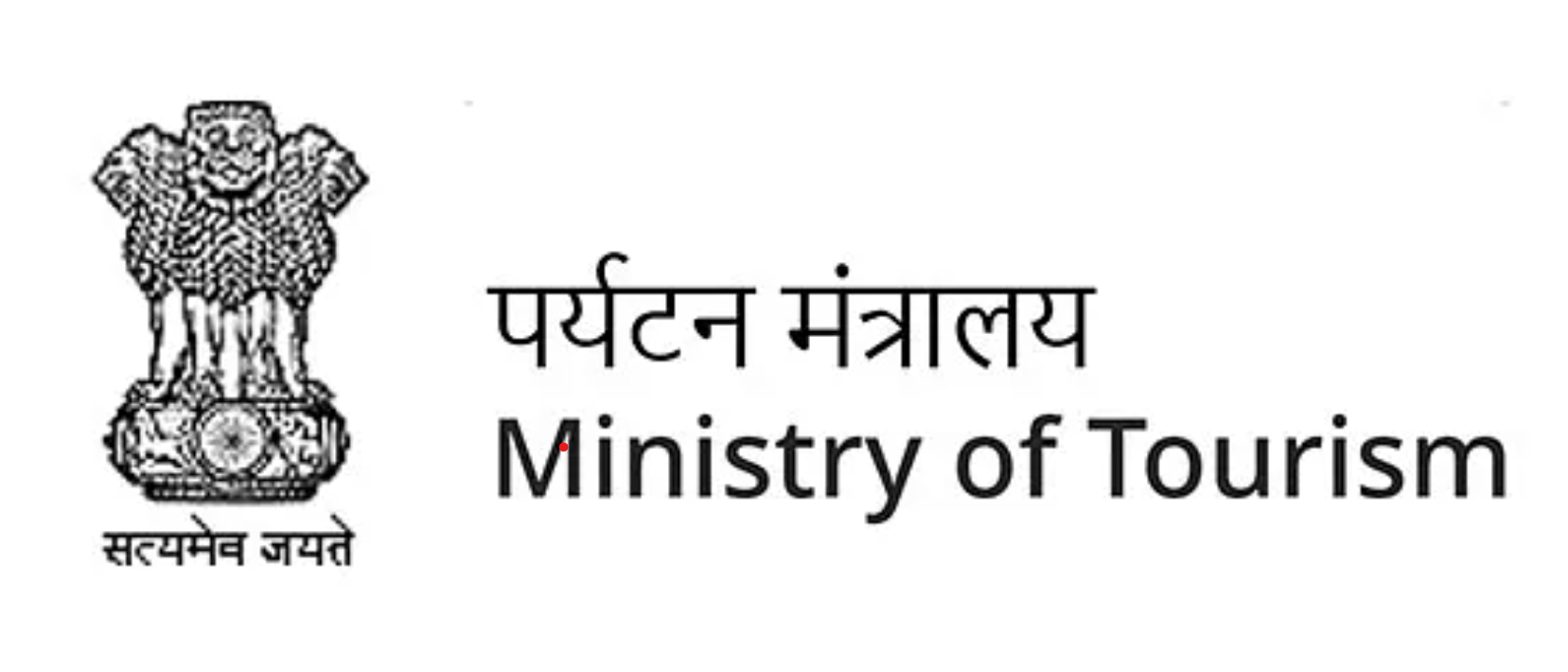
- 29 Sep 2024
In News:
- The Ministry of Tourism, Government of India, launched the national responsible tourism initiative ‘Paryatan Mitra & Paryatan Didi’ on September 27, 2024, coinciding with World Tourism Day.
- Vision: Aligned with the Prime Minister's vision to use tourism as a tool for social inclusion, employment, and economic development.
Pilot Locations
- Destinations: The initiative is piloted in six tourist destinations:
- Orchha (Madhya Pradesh)
- Gandikota (Andhra Pradesh)
- Bodh Gaya (Bihar)
- Aizawl (Mizoram)
- Jodhpur (Rajasthan)
- Sri Vijaya Puram (Andaman & Nicobar Islands)
Objectives and Training
- Enhancing Tourist Experience: The program aims to connect tourists with ‘tourist-friendly’ individuals who serve as local ambassadors and storytellers.
- Training Focus: Individuals interacting with tourists—such as cab drivers, hotel staff, street vendors, and students—receive training on:
- Importance of tourism and hospitality
- Cleanliness and safety
- Sustainability practices
- Local stories and attractions
Empowering Women and Youth
- Target Groups: Emphasis on training women and youth to develop tourism products such as:
- Heritage walks
- Food and craft tours
- Nature treks and homestays
- Employment Opportunities: Aims to enable locals to secure jobs as homestay owners, cultural guides, and adventure guides.
Digital Literacy
- Training in Digital Tools: Participants are also educated in digital literacy to enhance visibility of their offerings to tourists.
Impact and Recognition
- Training Success: Since the program's pilot in August 2024, approximately 3,000 individuals have been trained.
- Local Enthusiasm: Increased local interest in participating in tourism training programs and contributing to the tourism ecosystem.
- Future Recognition: The Ministry plans to award dedicated badges to Paryatan Mitra and Didi participants, ensuring tourists can identify those committed to providing exceptional experiences.
ETURNAGARAM WILDLIFE SANCTUARY
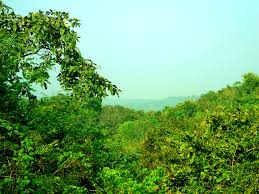
- 29 Sep 2024
In News:
A rare collision of two cyclones has led to significant environmental impact, including the flattening of thousands of trees within the sanctuary.
Key Details:
- Location: Situated in the Mulugu district of Telangana, near the borders of Maharashtra and Chhattisgarh. Approximately 100 km from Warangal and 250 km from Hyderabad.
- Establishment: Declared a wildlife sanctuary in 1952 by the Nizam government of Hyderabad.
- Area: Covers around 806 square kilometers.
Geographic Features
Rivers:
- Dayyam Vagu: A significant water source that divides the sanctuary into two parts.
- Godavari River: Flows through the sanctuary, contributing to its rich biodiversity.
Flora
- Vegetation: Dense tropical dry deciduous forest.
- Key Species: Includes teak, bamboo, madhuca, and terminalia trees, creating a lush habitat.
Fauna
- Wildlife: Home to diverse species such as:
- Mammals: Tiger, leopard, panther, wolf, wild dogs, jackals, sloth bear, chousingha, blackbuck, nilgai, sambar, spotted deer, and four-horned antelope.
- Reptiles: Notable for its population of mugger crocodiles and snakes, including cobras, pythons, and kraits.
Cultural Significance
- Temple: The famous Sammakka-Saralamma Temple is located within the sanctuary.
INDIA TO SUPPORT TRINIDAD AND TOBAGO IN DEVELOPING UPI-LIKE PAYMENT SYSTEM

- 29 Sep 2024
In News:
- NPCI International Payments Limited (NIPL) has partnered with Trinidad and Tobago's Ministry of Digital Transformation to create a payment platform for person-to-person and person-to-merchant transactions.
- Modeling on UPI: The new digital payments system will be based on India’s Unified Payments Interface (UPI), which is widely recognized as a leading digital payment solution.
- Role of NPCI: NIPL, a quasi-government body under the Reserve Bank of India, manages India’s retail payment systems, including UPI.
Previous Initiatives
- Global Expansion: Earlier in 2024, NIPL also committed to establishing digital payment systems in Peru and Namibia, leveraging the UPI model.
- Ongoing Talks: NIPL is exploring opportunities with additional countries in Africa and South America to assist in building their payment infrastructures.
Significance:
- UPI has emerged as a transformative force in India's financial landscape, registering nearly 15 billion transactions in August 2024, with an estimated value of USD 245 billion.
- This strategic partnership aims to empower Trinidad and Tobago to establish a reliable and efficient real-time payments platform for both person-to-person (P2P) and person-to-merchant (P2M) transactions, expanding digital payments in the country and fostering financial inclusion.
India’s Commitment to Social Determinants of Health at UNGA
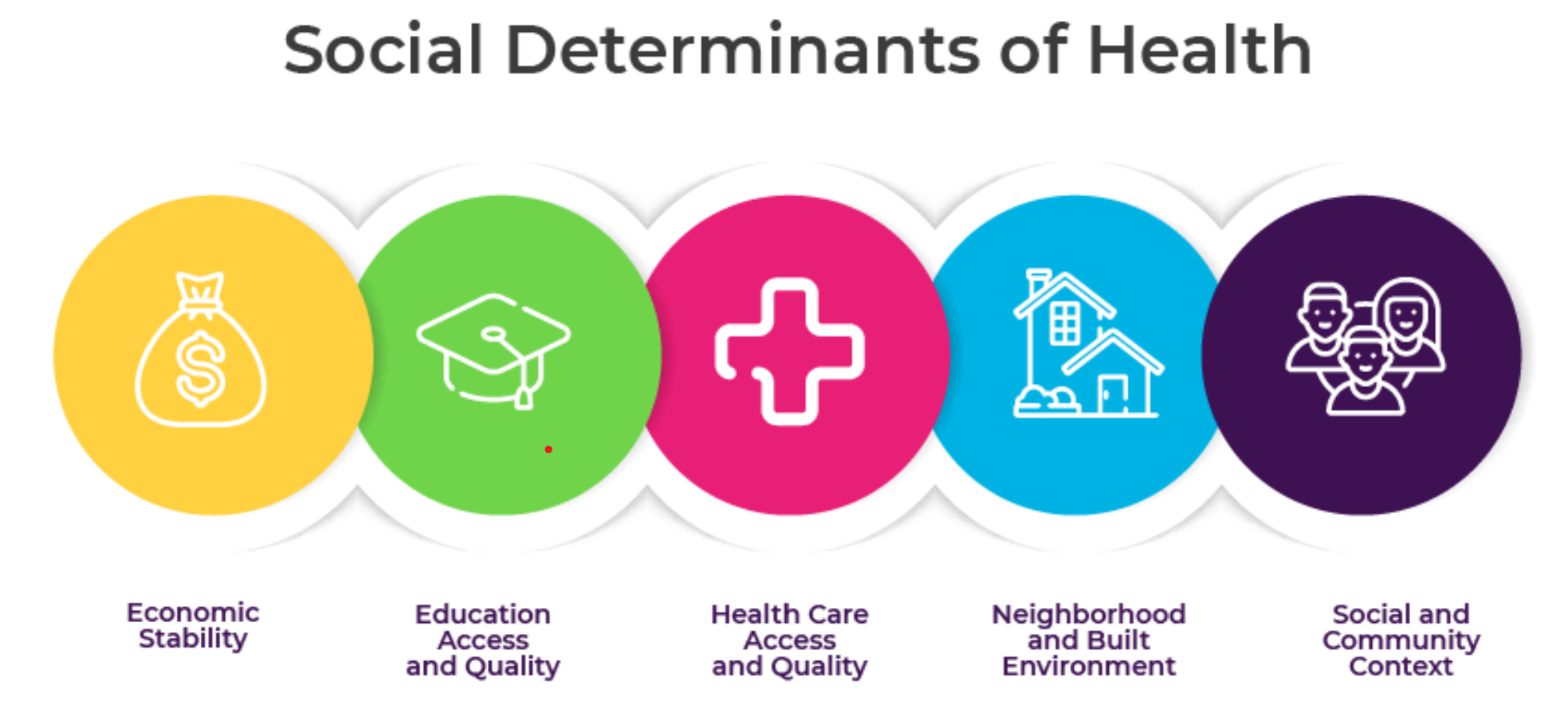
- 29 Sep 2024
In News:
- Union Minister of State for Health and Family Welfare, represented India at the G20 Joint Finance-Health Task Force meeting during the 79th UN General Assembly.
- Focus: The session emphasized the importance of investing in health and addressing social determinants of health (SDH) through initiatives like debt-for-health swaps.
Key Highlights:
- Role of SDH: Underscored how social determinants such as housing, sanitation, water access, and income security are crucial for health investment priorities.
- Flagship Programs: India’s notable initiatives include:
- Ayushman Bharat: The world’s largest health insurance scheme.
- Swachh Bharat Mission: Aiming for a cleaner India.
- Jal Jeevan Mission: Ensuring water access for all.
- Pradhan Mantri Awas Yojana: Promoting housing for all.
- Impact of PM-JAY: Highlighted improvements in access to healthcare and outcomes, especially for non-communicable diseases.
Data and Policymaking
- Importance of Data: Stressed the need for enhanced data availability and standardization on SDH indicators to support effective policymaking.
- Unified Approach: Called for G20 nations to collaborate on data collection and analysis for better health systems globally.
Exploring Debt-for-Health Swaps
- Potential Mechanism: Discussed debt-for-health swaps as a means to relieve financial pressure while promoting health equity.
- Next Steps: Emphasized the need for stakeholder engagement and pilot programs to ensure effective implementation.
Conclusion
- Global Leadership: India reaffirmed its commitment to health equity through evidence-based policies and partnerships.
- Shared Vision: Advocated for a unified effort towards achieving “Health for All,” highlighting the significance of investments in social determinants of health.
About Social determinants of health (SDOH)
- SDOH are non-medical factors that affect a person's health, well-being, and quality of life. They include the conditions in which people are born, grow, work, live, and age.
- SDOH also include the broader systems that shape everyday life, such as economic policies, social norms, and political systems.
- Some examples of SDOH include:
- Safe housing, transportation, and neighborhoods
- Racism, discrimination, and violence
- Education, job opportunities, and income
- Access to nutritious foods and physical activity opportunities
- Polluted air and water
- Language and literacy skills
GST COMPENSATION CESS
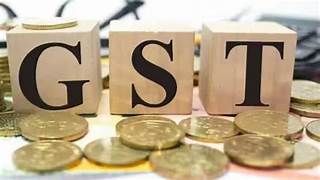
- 29 Sep 2024
In News:
- GST compensation cess likely to continue beyond January 2026, with potential rebranding and new end-use defined.
- Revenue Collection: Estimated Rs 20,000 crore expected from the cess by February 2026, with recent receipts of Rs 12,068 crore in August 2024.
- Cess Nature: The compensation cess, originally intended for revenue shortfall, cannot merge with the 28% GST slab due to regulatory limitations.
Financial Context
- RBI Study Insights: Weighted average GST rate decreased from 14.4% at launch to 11.6%, now even below 11%, raising concerns among states.
- State Concerns: Many states, including Punjab and Kerala, seek a 2-5 year extension for the compensation period to stabilize finances.
Regulatory Framework
- Cess Legislation: GST Compensation Cess is governed by the Goods and Services Tax (Compensation to States) Act, 2017, initially set for five years.
- Taxpayer Obligations: All suppliers of designated goods/services must collect the cess, except exporters and those under the composition scheme.
Distribution Mechanism
- Calculation of Compensation: Based on projected revenue growth (14%) against actual revenue, with payments distributed bi-monthly.
- Surplus Distribution: Any surplus in the compensation fund post-transition period will be shared between the Centre and states.
Future Considerations
- Ministerial Panel: A panel established by the GST Council will recommend the cess's future and revenue sharing post-compensation.
- Tax Expert Opinions: Some experts argue against pursuing the revenue-neutral rate, suggesting broader tax base expansion instead.
- Revenue Gap Solutions: Options for addressing compensation fund deficits include revising cess formulas, increasing rates, or market borrowing.
IBSA (INDIA, BRAZIL, SOUTH AFRICA) GROUPING
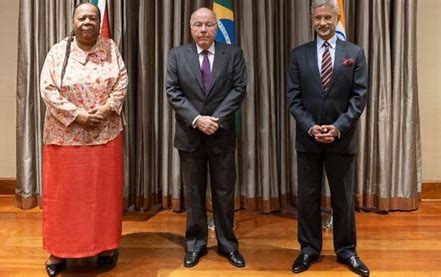
- 28 Sep 2024
In News:
In a significant move for global security, the Foreign Ministers of the IBSA (India, Brazil, South Africa) grouping issued a strong declaration against terrorism during the 79th UN General Assembly in New York. This declaration condemned terrorism in all its forms and reaffirmed the collective responsibility of the international community to eliminate terrorist safe havens worldwide.
Key Points from the IBSA Declaration:
- Universal Threat: The ministers stressed that terrorism is a threat that transcends borders, cultures, and governments.
- Rule of Law: They emphasized that counter-terrorism efforts must adhere to international law, particularly the UN Charter and human rights laws, ensuring civil liberties are respected.
- International Framework: A call was made for establishing a comprehensive international counter-terrorism framework, with the United Nations at its core, to coordinate global efforts against terrorism.
- Cross-Border Security: The declaration highlighted the need for stringent actions against the movement of terrorists and the financing of terrorist networks, condemning groups like Al-Qaeda, ISIS/Daesh, Lashkar-e-Tayyiba (LeT), and Jaish-e-Mohammad (JeM).
- Comprehensive Convention: A renewed commitment to accelerate the adoption of the Comprehensive Convention on International Terrorism at the UN was emphasized, aiming to create a unified legal framework for combating terrorism.
POLITICAL DECLARATION ON ANTIMICROBIAL RESISTANCE (AMR)
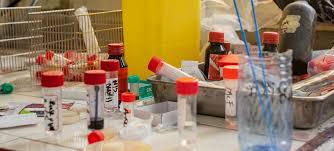
- 28 Sep 2024
In News:
World leaders have officially adopted the Political Declaration on Antimicrobial Resistance (AMR) at the UN High-Level Meeting, highlighting the urgent need for coordinated global action to combat AMR, which claims 1.27 million lives annually. This declaration recognizes drug-resistant tuberculosis (DR-TB) as a critical component of the global AMR response, marking a significant moment in the fight against antimicrobial resistance.
Key Highlights of the Declaration
- DR-TB Priority: The declaration emphasizes the severe burden that DR-TB imposes on health systems, especially in low- and middle-income countries (LMICs), and the potential reversal of progress made against tuberculosis and the Sustainable Development Goals.
- Global Death Reduction Target: A target to reduce global deaths associated with AMR by 10% by 2030 and a funding goal of USD 100 million to help at least 60% of countries establish funded AMR plans by 2025.
- Support for Vulnerable Groups: Recognition of the socioeconomic challenges faced by those affected by AMR, affirming the need for integrated, person-centered healthcare, including support to reduce stigma.
- Independent Panel for Action: Agreement to establish an independent panel to provide evidence for actions against AMR by 2025.
Commitment to Action
The Stop TB Partnership applauds this commitment and urges UN Member States to provide necessary funding for implementing the declaration's commitments. The partnership aims to work closely with governments and civil society to translate these commitments into concrete actions.
Challenges of Antimicrobial Resistance
AMR poses a significant threat, particularly in LMICs, where it exacerbates existing healthcare challenges:
- Increased Infections: Medical facilities often become hotspots for treatment-resistant infections, making routine procedures riskier. In LMICs, about 11% of surgical patients experience infections.
- Lack of Resources: Access to clean water, proper diagnostics, and antimicrobial medicines is often limited, increasing vulnerability to drug-resistant infections.
- Impact of Conflicts: AMR complicates treatment in conflict zones, where drug-resistant infections spread rapidly among displaced populations, further emphasizing the need for peaceful resolutions.
Economic Implications of AMR
The economic case for addressing AMR is compelling:
- Without a stronger response, AMR could lead to an additional $412 billion in healthcare expenditures annually over the next decade, along with $443 billion in losses due to workforce participation and productivity declines.
- Implementing critical AMR interventions is considered a “best buy,” with a potential return of $7 to $13 for every dollar invested.
AYUSHMAN BHARAT DIGITAL MISSION (ABDM)

- 28 Sep 2024
In News:
Over 67 crore Ayushman Bharat Health Accounts (ABHA) have been created in the past three years under the Ayushman Bharat Digital Mission (ABDM). The digital healthcare mission marked its three-year anniversary.
Key Highlights:
- Launch Date: September 27, 2021.
- Vision: Establish a robust digital health infrastructure to enhance healthcare accessibility, efficiency, and transparency.
- Duration: A transformative three-year journey aimed at revolutionizing India’s digital healthcare ecosystem.
Objectives and Background
- Alignment with National Health Policy: The mission stems from the National Health Policy (2017), emphasizing accessibility and the integration of digital technologies.
- Building Blocks:
- National Health Stack (2018) introduced unique health identifiers and verified registries.
- National Digital Health Blueprint (2019) provided guidance for implementing ABDM.
Key Features of ABDM
- Unique Health Identifier (ABHA ID): Assigns a unique ID to every individual for managing health records.
- Healthcare Professionals Registry (HPR): Comprehensive database of healthcare professionals across all systems of medicine.
- Health Facility Registries (HFR): Repository of public and private health facilities, including hospitals, clinics, and pharmacies.
- Health Information Exchange and Consent Manager (HIE-CM): Allows secure access and sharing of health records based on informed consent.
- Unified Health Interface (UHI): Facilitates the discovery and delivery of health services.
- National Health Claims Exchange (HCX): Standardizes the insurance payment process for quicker claims.
- Data Privacy and Security: Ensures confidentiality and security of health-related information in compliance with the Digital Personal Data Protection Act, 2023.
- Interoperability: Enables seamless data exchange among stakeholders, supported by key gateways (HIE-CM, NHCX, UHI).
- Transparency: Offers individuals access to both public and private health services, ensuring transparent pricing and accountability.
Key Initiatives
- Scan and Share: QR-code based OPD registration reduces wait times and improves data accuracy.
- Digital Health Incentive Scheme (DHIS): Financial incentives to encourage participation in the ABDM ecosystem, launched on January 1, 2023.
- Microsites for Private Sector Adoption: Operationalized 106 microsites to facilitate ABDM adoption among private providers.
- End-to-End ABDM Adoption Pilot: Aimed at digitizing healthcare facilities across India, with 131 selected for participation.
Achievements
- Health Accounts Creation: Over 67 crore Ayushman Bharat Health Accounts (ABHA) established, linking 42 crore health records.
- Ecosystem Participation: Involvement of 236 private entities and leading public institutions, enhancing interoperability.
- Healthcare Facility Registration: 3.3 lakh health facilities and 4.7 lakh healthcare professionals registered.
Moving Towards Transformation
- Collaborations: Partnerships with IIT Kanpur and Maharashtra University of Health Sciences to drive digital health education and public goods development.
- Training Initiatives: Introduction of a WhatsApp Chatbot for stakeholder training on digital health practices.
- Digital Health Standards: Launched by the National Accreditation Board of Hospitals to promote digital health technology adoption.
- Integration of eSwasthya Dham Portal: Extends ABDM benefits to Char Dham Yatris.
Vision for the Future
ABDM aims to create a seamless digital health ecosystem, ensuring every Indian citizen has access to their health records through a unique ABHA ID. The initiative includes:
- Clinical Decision Support System (CDSS): Aids healthcare professionals in improving clinical decision-making and patient outcomes.
INDIA-UZBEKISTAN BILATERAL INVESTMENT TREATY (BIT)
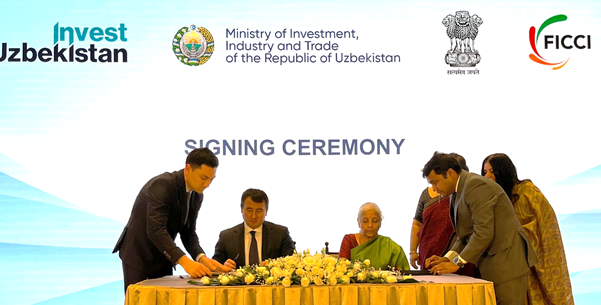
- 28 Sep 2024
In News:
India and Uzbekistan signed the Bilateral Investment Treaty (BIT) aimed at boosting the confidence of investors of both the countries.
Key Highlights:
- Investor Protections:
- Assured Protection: The BIT guarantees protection for investors from both countries, aligning with international standards.
- Minimum Standards: It establishes a minimum standard of treatment and non-discrimination for investors.
- Dispute Resolution: An independent arbitration forum will be available for dispute settlement.
- Investment Safeguards:
- Protection from Expropriation: The treaty safeguards investments from unjust expropriation.
- Transparency and Compensation: Provisions are included for transparency and compensation for losses incurred.
- Regulatory Balance: While protecting investors, the treaty maintains a balance with the state's right to regulate, ensuring adequate policy space for both countries.
Economic Context
- Shared Commitment: The BIT reflects the commitment of both nations to foster economic ties and create a resilient investment environment.
- Expected Outcomes: It is anticipated that the treaty will facilitate increased bilateral investments, benefiting businesses and economies in India and Uzbekistan.
- Current Investment Landscape: As of August 2024, Overseas Direct Investment (ODI) from India to Uzbekistan stands at $20 million, with Indian investments notable in sectors such as pharmaceuticals, amusement parks, automobile components, and hospitality.
India and Bilateral Investment Treaties
BITs are reciprocal agreements between two countries designed to promote and protect foreign private investments within each other's territories.
- Key Guarantees Established:
- National Treatment: Foreign investors are treated on par with domestic companies.
- Fair and Equitable Treatment: Investors receive treatment aligned with international law.
- Protection from Expropriation: Limits the ability of a country to seize foreign investments without appropriate compensation.
- Status of BITs in India
- Historical Context:
- Until 2015, India had signed BITs with 83 countries, with 74 currently in force. These agreements were based on the Indian Model BIT established in 1993.
- Revisions and Current Approach: In 2015, India revised its Model BIT text. Since then, India has:
- Signed new BITs/Investment Agreements with four countries.
- Entered negotiations with 37 countries/blocks for new agreements.
- Terminated older BITs with 77 countries, with only six remaining in force.
- Historical Context:
- Key Features of the Revised Model BIT
- Investor Protection:
- Provides robust protection for foreign investors in India and Indian investors abroad.
- Balances investor rights with government obligations.
- Investor Confidence:
- Enhances investor confidence by ensuring non-discriminatory treatment and a level playing field.
- Establishes an independent arbitration forum for dispute resolution.
- Investment Definition:
- Adopts an "enterprise"-based definition of investment to encompass various forms of investment.
- Dispute Settlement Provisions:
- Refined Investor-State Dispute Settlement (ISDS) provisions require investors to exhaust local remedies before seeking international arbitration.
- Limits arbitration tribunals to awarding monetary compensation only.
- Regulatory Authority Preservation:
- Excludes government procurement, taxation, subsidies, compulsory licenses, and national security from BIT coverage, ensuring the government retains regulatory authority.
- Investor Protection:
- Strategic Impact
- Preferred FDI Destination: The revised BIT aims to position India as a preferred destination for foreign direct investment (FDI).
- Protection of Outbound FDI: It also focuses on safeguarding outbound investments made by Indian entities.
GLOBAL INNOVATION INDEX (GII) 2024
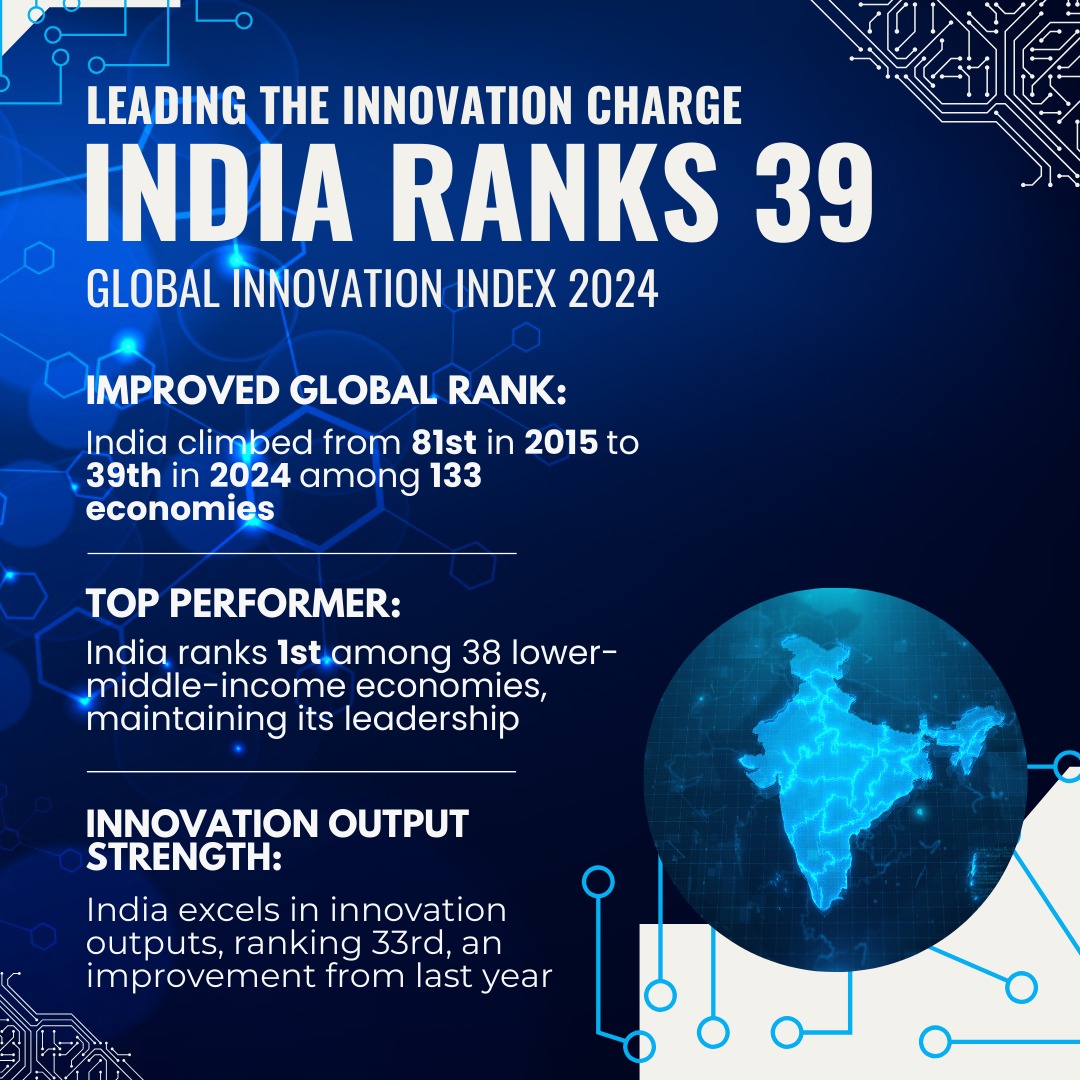
- 28 Sep 2024
In News:
- India has moved up to 39th place among 133 economies in the GII 2024, showcasing significant progress from its 81st position in 2015.
Key Details:
- Regional Leadership: India ranks first among the 10 economies in Central and Southern Asia, highlighting its emerging leadership in innovation within the region.
- Lower-Middle-Income Economies: India is also the top-ranked lower-middle-income economy in the GII.
- WIPO Science & Technology Ranking: India holds the 4th position in the World Intellectual Property Organization (WIPO) Science & Technology Cluster Ranking, indicating robust innovation capabilities.
- Top Science & Technology Clusters: Major Indian cities—Mumbai, Delhi, Bengaluru, and Chennai—are recognized among the world’s Top 100 S&T clusters, emphasizing urban centers' roles in fostering innovation.
- Intangible Asset Intensity: India ranks 7th globally in intangible asset intensity, reflecting a strong focus on knowledge-based assets and intellectual property.
Context and Significance of GII
- Purpose of GII: The GII evaluates innovation ecosystems of 133 economies, providing insights into trends that drive economic and social change through innovation.
- Global Leaders: The top five most innovative economies according to the GII 2024 are Switzerland, Sweden, the US, Singapore, and the UK.
- Fastest Climbers: India is among the fastest climbers in the GII over the past decade, alongside China, Turkey, Vietnam, and the Philippines.
Overview of WIPO
- Foundation and Mission: The World Intellectual Property Organization (WIPO), established in 1974 and part of the UN since then, aims to support global innovators and creators, ensuring the safe journey of their ideas to market.
- Membership: WIPO comprises 193 member states, including a diverse range of developing and developed countries, facilitating a broad exchange of intellectual property knowledge.
- Headquarters: Geneva, Switzerland.
WORLD TOURISM DAY 2024
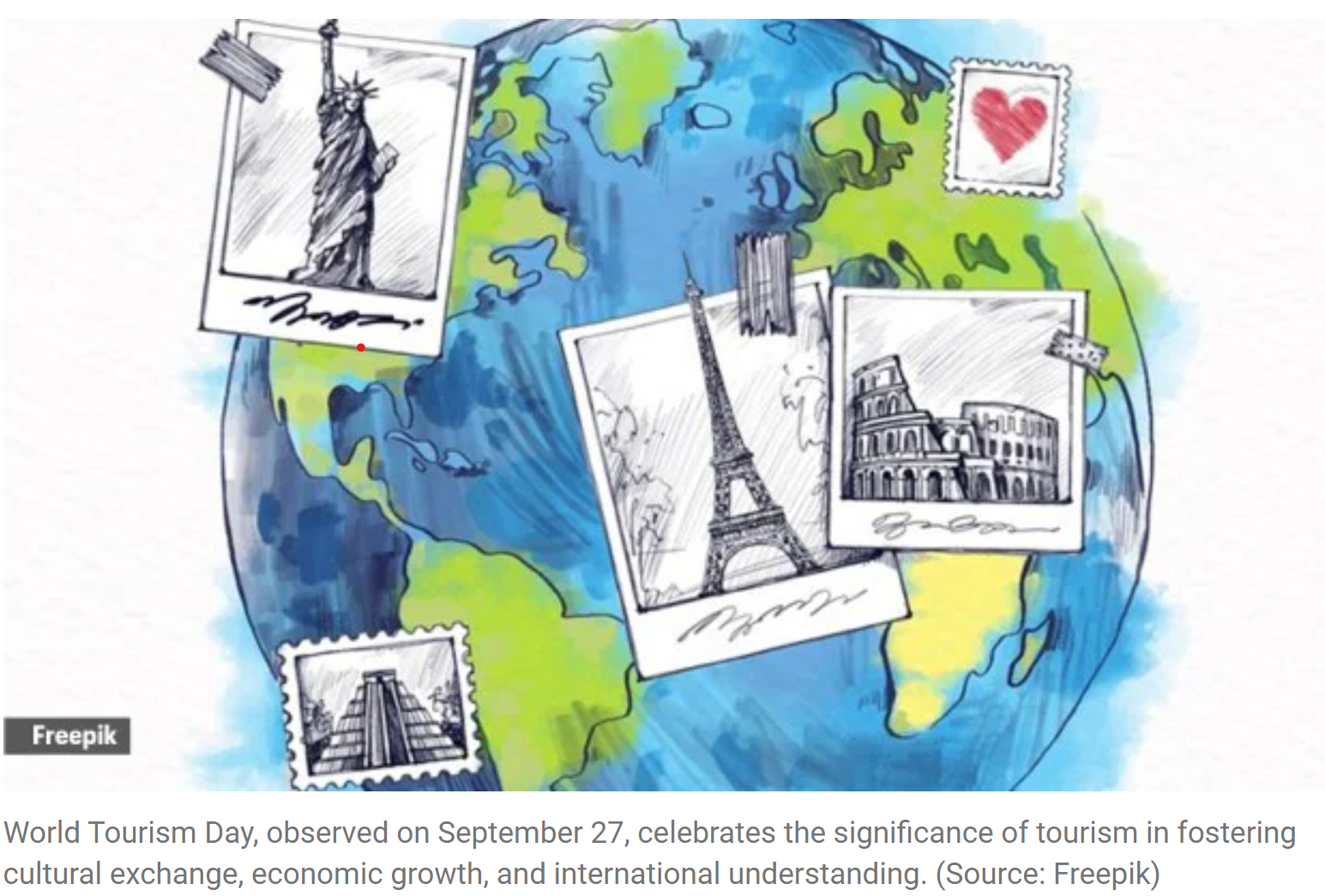
- 27 Sep 2024
In News:
The Ministry of Tourism celebrated World Tourism Day on September 27, 2024, under the theme “Tourism and Peace.” The focus was on how tourism fosters global peace by encouraging cross-cultural interactions and understanding.
Key Details:
- World Tourism Day, established in 1980 by the United Nations World Tourism Organisation (UNWTO), celebrates the global impact of tourism and raises awareness about its economic, social, and cultural significance.
- This day celebrates the diverse experiences that tourism offers and commits to making travel more inclusive, sustainable, and beneficial for all; here’s all you need to know about the day.
- The date, September 27, was chosen to commemorate the adoption of UNWTO statutes in 1975
- The theme for World Tourism Day 2024 is “Tourism and Peace,” which will highlight the association between tourism and world peace, with the United Nations emphasising the significance of comprehending diverse cultures and encouraging sustainable tourism.
World Tourism Day: Significance and Celebrations
- World Tourism Day is a global event that celebrates the role of tourism in bridging cultural gaps, enhancing mutual understanding, and driving economic development.
- It focuses on responsible tourism practices, celebrating diverse cultural heritage, and addressing environmental sustainability and fair distribution of benefits.
- Events include seminars, workshops, and conferences on the theme of the year, cultural festivals, exhibitions, and public performances.
- Educational campaigns and community outreach activities raise awareness about responsible travel, supporting local economies, and protecting natural environments.
Note:
- The World Economic Forum, in its recently released Travel and Tourism Development Index (TTDI), shares the top countries gaining popularity in the travel and tourism industry.
- Notably, in Southeast Asia, India ranks 39th as the TTDI’s top lower-middle-income economy. India’s strong Natural (6th), Cultural (9th) and Non-Leisure (9th) resources drive its travel industry, with the country’s being only one of three to score in the top 10 for all the resources pillars.
- The TTDI measures the set of factors and policies that enable the sustainable and resilient development of the T&T sector, which in turn contributes to the development of a country. Among the 119 countries, here are the top 10 countries for travel and tourism in 2024 attracting travellers from all over the globe.
PLANETARY BOUNDARIES AND OCEAN ACIDIFICATION
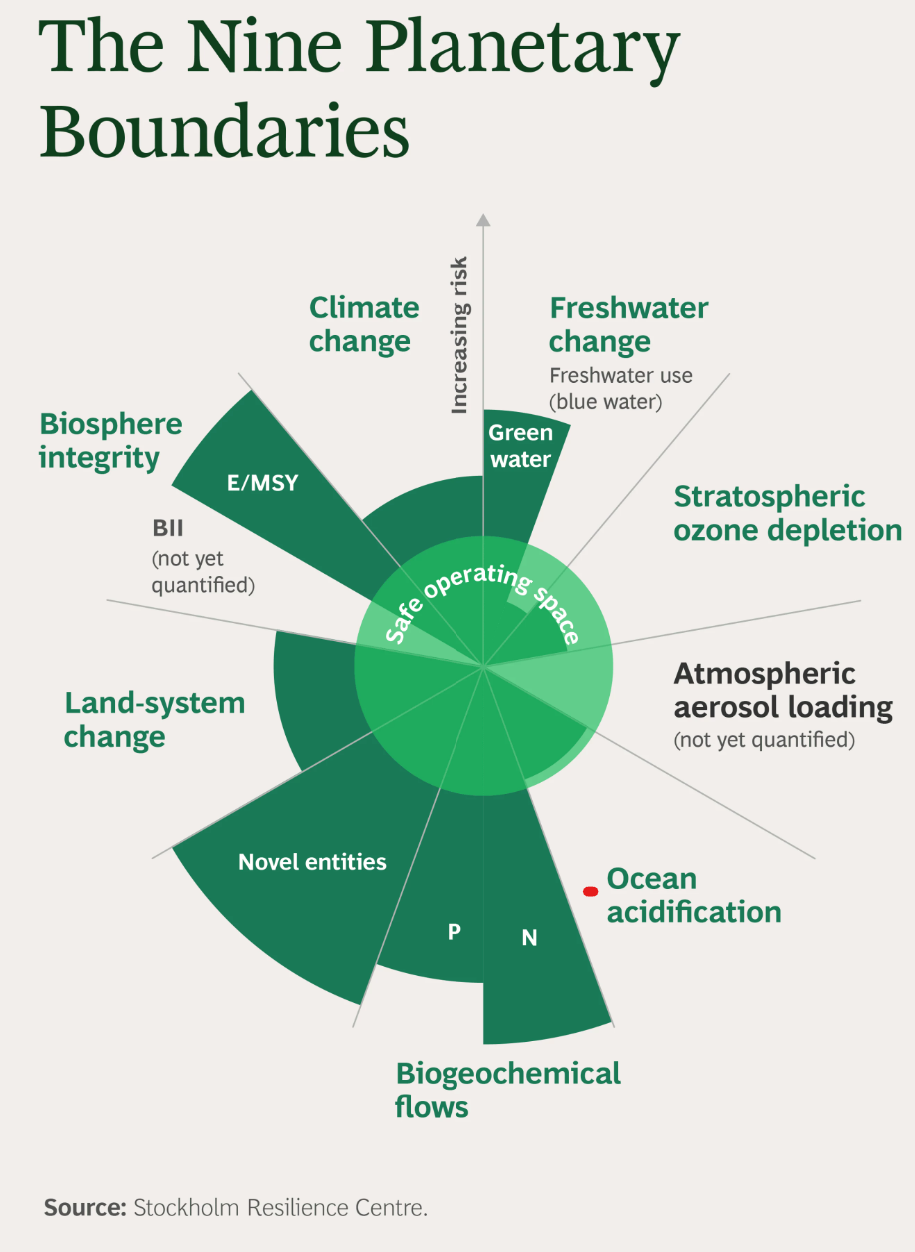
- 27 Sep 2024
In News:
A new report from the Potsdam Institute for Climate Impact Research (PIK) indicates that the world's oceans are nearing critical acidity levels.
- Key Findings:
- Nine Crucial Factors: The report identifies nine essential elements for sustaining life on Earth.
- Exceeded Limits: Six of these factors have already surpassed safe limits due to human activities.
- Ocean Acidification: This is poised to become the seventh boundary breached.
- Crossed Boundaries:
- Factors Affected:
- Climate change
- Loss of natural species and habitats
- Depletion of freshwater resources
- Increase in pollutants, including plastics and agricultural chemicals
- Factors Affected:
- Causes of Ocean Acidification:
- Primarily driven by rising carbon dioxide (CO2) emissions from burning fossil fuels (oil, coal, gas).
- Implications of Acidification:
- Damage to corals, shellfish, and phytoplankton, disrupting marine ecosystems.
- Threats to food supplies for billions of people.
- Reduced capacity of oceans to absorb CO2, exacerbating global warming.
- Ozone Layer Status:
- Currently not close to being breached; showing recovery since the banning of harmful chemicals in 1987.
- Air Quality Concerns:
- A ninth boundary related to particulate matter is near danger limits.
- Improvements in air quality are noted, but industrializing nations still face pollution risks.
- Tipping Points:
- Crossing these boundaries could lead to irreversible and catastrophic consequences for humanity and future generations.
- All boundaries are interconnected; breaching one can destabilize the entire system.
- Opportunities for Solutions:
- Addressing critical issues, such as limiting temperature rise to 1.5 degrees Celsius above pre-industrial levels, can have widespread benefits across multiple environmental challenges.
Planetary boundaries
- The planetary boundaries were introduced in 2009 to define the global environmental limits within which humans can safely live.
- Johan Rockström, former director of the Stockholm Resilience Centre, led a group of 28 renowned scientists to identify the nine processes that regulate the stability and resilience of the Earth system.
- Climate Change: Greenhouse gas concentrations, primarily CO2, are the primary metric here. Exceeding the recommended levels risks amplifying global warming.
- Ocean Acidification: Oceans absorb CO2, leading to decreased pH levels. This boundary measures the carbonate ion concentration, vital for marine life like corals.
- Stratospheric Ozone Depletion: The ozone layer protects life from harmful ultraviolet radiation. This boundary emphasizes the ozone concentration in the stratosphere.
- Nitrogen and Phosphorus Cycles: Excess nitrogen and phosphorus, often from fertilizers, can disrupt ecosystems. Here, the focus is on their flow into the environment.
- Freshwater Use: Freshwater is vital for life. This boundary pinpoints the annual consumption of freshwater resources.
- Land-System Change: As we modify landscapes, particularly through deforestation, we alter habitats and carbon storage capabilities. This threshold concerns the amount of forested land remaining.
- Biodiversity Loss: Biodiversity underpins ecosystem resilience. This metric observes the extinction rate of species.
- Atmospheric Aerosol Loading: Aerosols influence climate and human health. This boundary examines their density in the atmosphere.
- Chemical Pollution: Synthetic chemicals can harm ecosystems and human health. This boundary reviews their concentration and spread.
PARAM Rudra Supercomputers
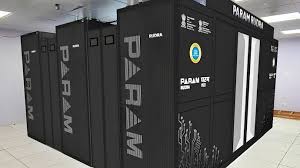
- 27 Sep 2024
In News:
Recently, the Prime Minister of India launched three Param Rudra Supercomputing Systems and a High-Performance Computing (HPC) system for weather and climate research via a virtual event.
PARAM Rudra Supercomputers
- Development: Indigenously developed under the National Supercomputing Mission.
- Deployment Locations:
- Delhi: Inter University Accelerator Centre (IUAC) focuses on material science and atomic physics.
- Pune: Giant Metre Radio Telescope (GMRT) will explore Fast Radio Bursts (FRBs) and other astronomical phenomena.
- Kolkata: S N Bose Centre drives advanced research in physics, cosmology, and earth sciences.
High-Performance Computing (HPC) System
- Purpose: Tailored for weather and climate research.
- Location:
- Indian Institute of Tropical Meteorology (IITM), Pune.
- National Center for Medium Range Weather Forecast (NCMRWF), Noida.
- System Names: 'Arka' and 'Arunika', reflecting their solar connection.
Significance of the HPC System
- Enhanced Predictive Capabilities:
- High-resolution models improve accuracy and lead time for: Tropical cyclones, Heavy precipitation, Thunderstorms, Hailstorms, Heat waves, Droughts and Other critical weather phenomena
National Supercomputing Mission (NSM)
- Launch and Goals
- Launched in 2015 to position India among world-class computing power nations.
- Aims to connect national academic and R&D institutions with a network of over 70 high-performance computing (HPC) facilities.
- Implementation
- Managed by the Department of Science and Technology (DST) and the Department of Electronics and Information Technology (DeitY), Government of India.
- Estimated cost: Rs 4,500 crore over 7 years.
- Supports initiatives like 'Digital India' and 'Make in India'.
- Current Status
- India ranks 74th globally in supercomputing, with only 9 supercomputers out of more than 500 worldwide.
- The mission addresses the growing computing demands of the scientific community and aligns with international technology trends.
- Infrastructure and Networking
- Envisions a supercomputing grid with over 70 HPC facilities networked via the National Knowledge Network (NKN).
- NKN connects academic institutions and R&D labs through a high-speed network.
ASIA POWER INDEX
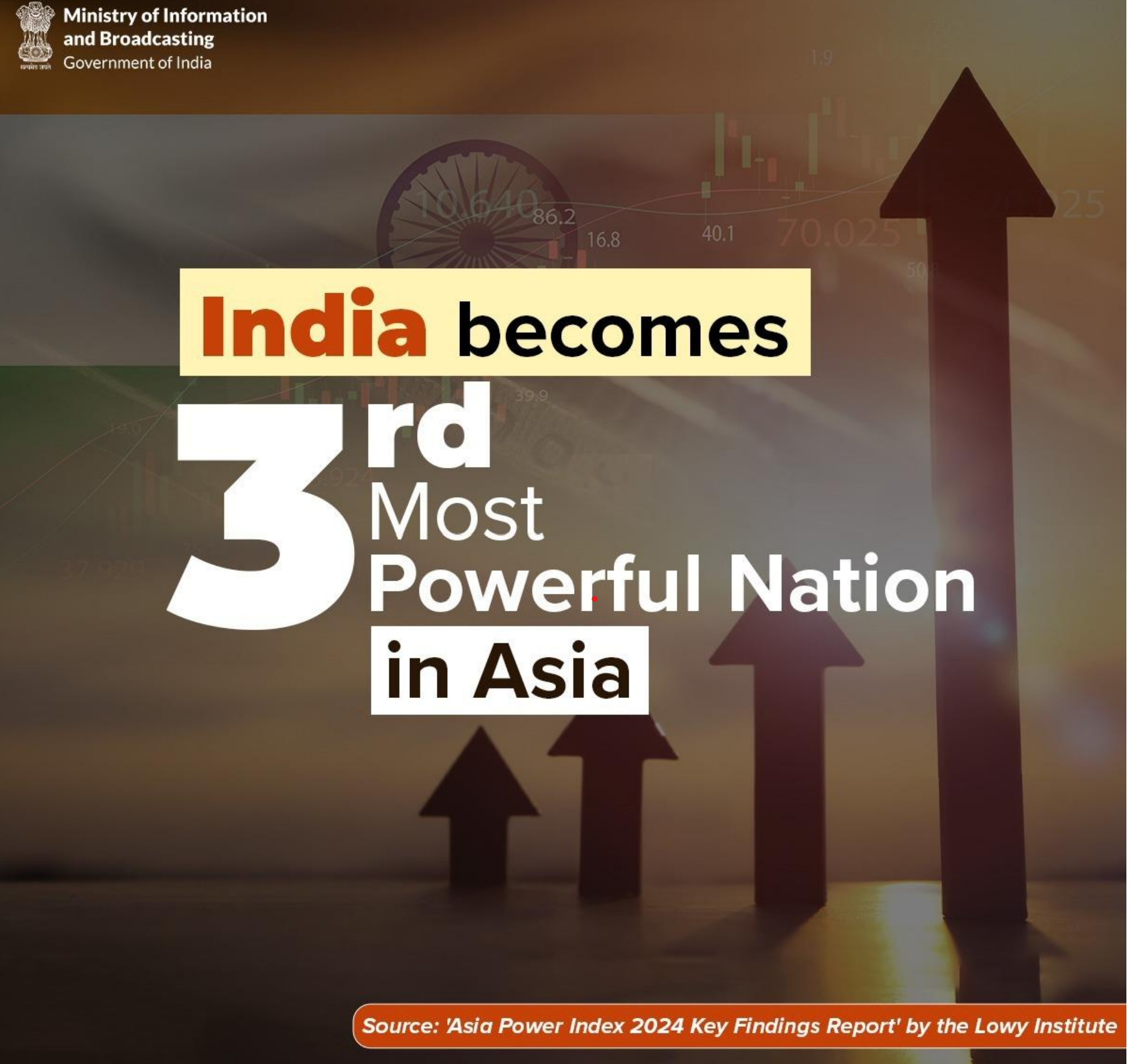
- 26 Sep 2024
In News:
In a major shift, India surpassed Japan to become the third-largest power in the Asia Power Index, reflecting its increasing geopolitical stature. This achievement is driven by India's dynamic growth, youthful population, and expanding economy, solidifying its position as a leading force in the region.
Key Factors Behind India’s Rise:
- Economic Growth: India has shown remarkable post-pandemic economic recovery, contributing to a 4.2-point rise in its Economic Capability. India’s massive population and strong GDP growth reinforce its standing as the world’s third-largest economy in PPP terms.
- Future Potential: India’s Future Resources score increased by 8.2 points, signalling a potential demographic dividend. Unlike its regional competitors, particularly China and Japan, India benefits from a youthful population that will continue to drive economic growth and labour force expansion in the coming decades.
- Diplomatic Influence: Prime Minister Narendra Modi’s leadership has garnered greater international recognition. India’s non-aligned strategic posture has allowed New Delhi to navigate complex international waters effectively. India ranked 6th in terms of diplomatic dialogues in 2023, reflecting its active engagement in multilateral forums.
- Further, India’s large population and economic capabilities offer it substantial promise. India’s score in Cultural Influence has also remained relatively strong, underpinned by its global diaspora and cultural exports.
- In addition, India’s role in multilateral diplomacy and security cooperation has been a point of emphasis. India's participation in dialogues, as well as its leadership in the Quad, has allowed it to play a significant role in regional security dynamics, albeit outside of formal military alliances.
Asia Power Index
- The Asia Power Index, launched by the Lowy Institute in 2018, is an annual measure of power dynamics in the Asia-Pacific region.
- It evaluates 27 countries across the Asia-Pacific, examining their ability to shape and respond to the external environment.
- The 2024 edition offers one of the most comprehensive assessments of power distribution in the region to date. Timor-Leste has been included for the first time, reflecting its growing importance in Southeast Asia.
- The Index focuses on both the material capabilities of states and the influence they exert on the international stage.
Criteria and Parameters of Power Measurement
Power in the Asia Power Index is divided into resource-based and influence-based determinants:
- Resource-Based Determinants:
- Economic Capability: The core economic strength of a country, measured through indicators like GDP at purchasing power parity (PPP), technological sophistication, and global economic connectivity.
- Military Capability: Evaluates conventional military strength based on defense spending, armed forces, weapon systems, and signature capabilities like long-range power projection.
- Resilience: The internal capacity to deter threats to state stability, including institutional robustness, geopolitical security, and resource security.
- Future Resources: Forecasts the future distribution of resources, including economic, military, and demographic factors projected for 2035.
- Influence-Based Determinants:
- Economic Relationships: The capacity to exercise leverage through trade, investment, and economic diplomacy.
- Defense Networks: The strength of alliances and partnerships, measured through military cooperation and arms transfers.
- Diplomatic Influence: The extent of a country's diplomatic reach, participation in multilateral forums, and foreign policy ambition.
- Cultural Influence: The ability to shape international public opinion through cultural exports, media, and people-to-people ties.
A country's overall power score is derived from a weighted average of these eight measures, encompassing 131 individual indicators. The results offer a nuanced understanding of how countries convert their resources into influence within the Asia-Pacific.
10 YEARS OF MAKE IN INDIA
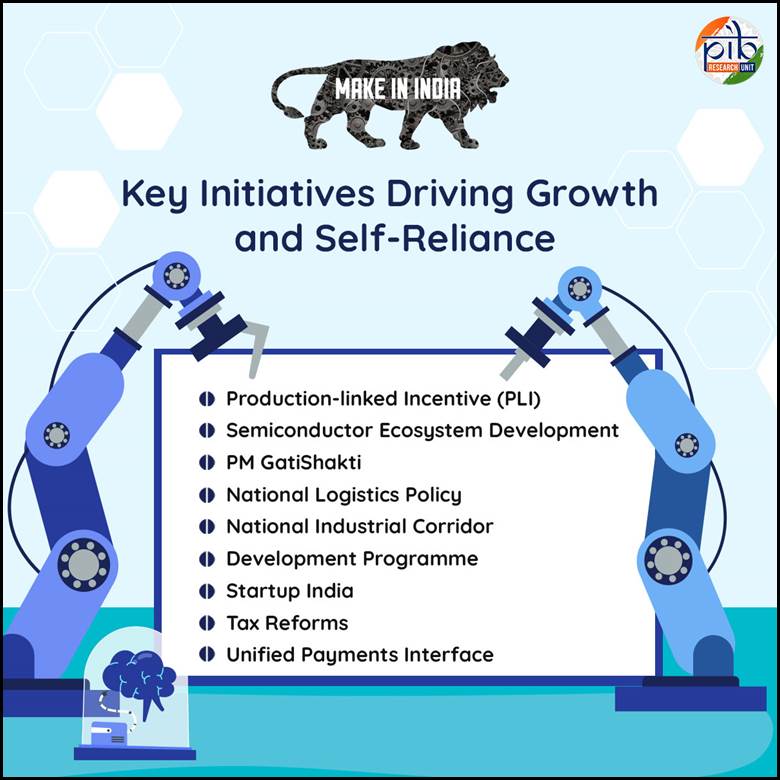
- 26 Sep 2024
In News:
The “Make in India” initiative has completed 10 years. It was launched by Prime Minister Narendra Modi on September 25, 2014.
KEY TAKEAWAYS:
- The ‘Make in India’ campaign aims to facilitate investment, foster innovation, enhance skill development, protect intellectual property & build best in class manufacturing infrastructure.
- “Make in India” was designed to transform India into a global hub for design and manufacturing.
- Seen as an important ‘Vocal for Local’ initiative, its objective is twofold. Firstly, to boost India’s manufacturing capabilities and secondly to showcase its industrial potential on a global stage.
- The “Make in India 2.0” phase encompassing 27 sectors – both manufacturing and service.
4 pillars of “Make in India” initiative:
- New Processes: To enhance the business environment, promote entrepreneurship and startups – ‘ease of doing business’ became a crucial factor.
- New Infrastructure: Development of industrial corridors, smart cities, integrating state-of-the-art technology and high-speed communication to create world-class infrastructure, improving intellectual property rights (IPR) infrastructure etc.
- New Sectors: Opening of Foreign Direct Investment (FDI) in sectors like Defence Production, Insurance, Medical Devices, Construction, and Railway infrastructure.
- New Mindset: In order to support industrial growth and innovation – the government embraced a role as a facilitator rather than a regulator. The Government partners with industry in the economic development of the country.
Key Initiatives to enable Make in India initiative
Production linked Incentive (PLI) Schemes: The primary goals of the PLI Schemes are to attract substantial investments, incorporate advanced technology, and ensure operational efficiency. These schemes cover 14 key sectors aimed at fostering investment in cutting-edge technology and promoting global competitiveness.
PM GatiShakti: It is a strategic initiative aimed at achieving Aatmanirbhar Bharat and a US $5 trillion economy by 2025 through the creation of multimodal and last-mile connectivity infrastructure. PM GatiShakti is a transformative approach for economic growth and sustainable development. The approach is driven by 7 engines, namely:
- Railways
- Roads
- Ports
- Waterways
- Airports
- Mass Transport
- Logistics Infrastructure
Semiconductor Ecosystem Development: It encompasses four key schemes:
- Modified Scheme for Setting Up Semiconductor Fabs in India
- Modified Scheme for Setting Up Display Fabs in India
- Modified Scheme for Setting Up Compound Semiconductors, Silicon Photonics, Sensors Fabs, and Discrete Semiconductors, along with Semiconductor Assembly, Testing, Marking, and Packaging (ATMP) / OSAT Facilities in India
- Design Linked Incentive (DLI) Scheme
It aims to foster the development of a sustainable semiconductor and display ecosystem in the country.
The Semicon India Programme aims to provide a significant impetus to semiconductor and display manufacturing by facilitating capital support and promoting technological collaborations.
National Logistics Policy: Introduced to complement the PM GatiShakti National Master Plan. It focusses on enhancing the soft infrastructure of India’s logistics sector.
The Comprehensive Logistics Action Plan (CLAP) was rolled out. The key areas which it addresses are logistics systems, standardization, human resource development, state engagement, and logistics parks.
The National Industrial Corridor Development Programme: Aims to create “Smart Cities” and advanced industrial hubs.
Startup India: Several programs aimed at supporting entrepreneurs, building a robust startup ecosystem, and transforming India into a country of job creators instead of job seekers were rolled out.
Implementation of the Goods and Services Tax (GST): As India’s tax reforms, it is seen as crucial in the context of the Make in India initiative.
Unified Payments Interface: For India’s digital economy growth, it is seen as one of the key initiatives to enable ease of doing business.
Ease of Doing Business: The efforts aim to simplify regulations, reduce bureaucratic hurdles, and create a more business-friendly environment, significantly boosting investor confidence and supporting the objectives of the Make in India initiative.
China test-fires an intercontinental ballistic missile into the Pacific Ocean
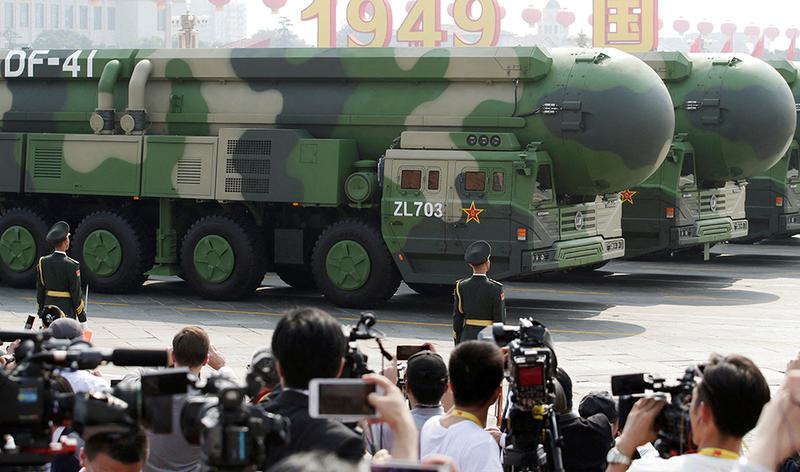
- 26 Sep 2024
In News:
China stated that it test-launched an intercontinental ballistic missile, firing it into the Pacific Ocean in its first such exercise in decades.
- Launch Details:
- The missile carried a dummy warhead and fell into a designated area in the high seas.
- The specific flight path and landing location were not disclosed.
- Testing Objectives:
- The launch tested weapon performance and troop training levels, achieving its expected objectives.
- Historical Context:
- This is the first ICBM test over the Pacific Ocean in over 40 years.
- China's first ICBM, the DF-5, was test-fired in 1980.
- ICBM Specifications:
- The latest ICBM, likely the DF-41, has an estimated range of 12,000 to 15,000 kilometers (7,400 to 9,300 miles), capable of reaching the US mainland.
- Strategic Messaging:
- Analysts interpret the test as a warning to the US, suggesting direct intervention in Taiwan could expose the American homeland.
- The test signals China's ability to engage multiple fronts simultaneously.
- Regional Tensions:
- Recent weeks have seen heightened tensions with Japan, the Philippines, and Taiwan due to military incursions and exercises.
- International Norms:
- There is a global expectation to notify nations of long-range missile launches to avoid miscalculations. China has limited agreements regarding this, primarily with Russia.
- Military Buildup:
- Under Xi Jinping, China has enhanced its nuclear capabilities and revamped the PLA’s Rocket Force.
- Recent satellite imagery indicates the construction of hundreds of ICBM silos in China’s deserts.
- Future Projections:
- As of 2023, China has over 500 operational nuclear warheads, projected to exceed 1,000 by 2030 according to the Pentagon.
- Implications of the Test:
- The ICBM test may be aimed at demonstrating military readiness despite recent corruption scandals within the Rocket Force.
About ICBMs:
- An intercontinental ballistic missile (ICBM) is a long-range ballistic missile system primarily designed for nuclear weapons delivery. They are powerful and destructive weapons, capable of travelling vast distances at incredibly high speeds.
- Key features of ICBMs:
- Range: Range greater than 5,500 kilometres with maximum ranges varying from 7,000 to 16,000 kilometres.
- Speed: ICBMs can travel at speeds exceeding 20,000 kilometres per hour.
- Payload: Typically designed to carry nuclear warheads, though they could potentially be used to deliver other types of weapons, such as chemical or biological weapons.
- Deployment: ICBMs can be launched from silos underground, mobile launchers on land, or submarines at sea.
- Countries having operational ICBMs: Russia, United States, China, France, India, United Kingdom, Israel and North Korea.
INDIA'S BIOE3 POLICY AND SMART PROTEINS
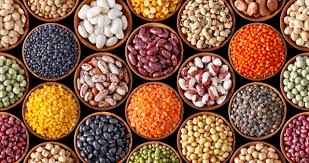
- 26 Sep 2024
In News:
The Indian government recently approved the Biotechnology for Economy, Environment, and Employment (Bioe3) Policy, which prioritizes the production of "smart proteins". This initiative aligns with broader national goals of achieving a sustainable, circular bioeconomy and a Net Zero carbon economy.
What Are Smart Proteins?
Smart proteins are alternative proteins derived from unconventional sources such as:
- Algae
- Fungi
- Insects
- Fermentation processes
- Lab-grown cells
This category also includes plant-based proteins, designed to replicate the taste and nutritional value of animal products without the need for livestock farming.
Environmental Benefits
The production of smart proteins offers significant environmental advantages:
- Water Use: 72-99% less water compared to conventional meat.
- Land Use: 47-99% less land required.
- Water Pollution: 51-91% reduction in pollution.
- Greenhouse Gas Emissions: 30-90% fewer emissions.
Health and Safety
With rising incomes, India's protein consumption has increased, from 9.7% of calories in 1991 to 11% in 2021. Smart proteins:
- Enhance food safety by reducing the risk of zoonotic diseases.
- Foster ethical consumption and align with traditional Indian dietary preferences.
Objectives of the BioE3 Policy
The Bioe3 Policy aims to:
- Foster high-performance biomanufacturing.
- Promote sustainable growth and innovation in biotechnology.
- Support the transition towards a Net Zero carbon economy.
By emphasizing the development of smart proteins, the Bioe3 Policy represents a strategic move towards a more sustainable and resilient food system in India.
ACHIEVING GLOBAL NUCLEAR DISARMAMENT
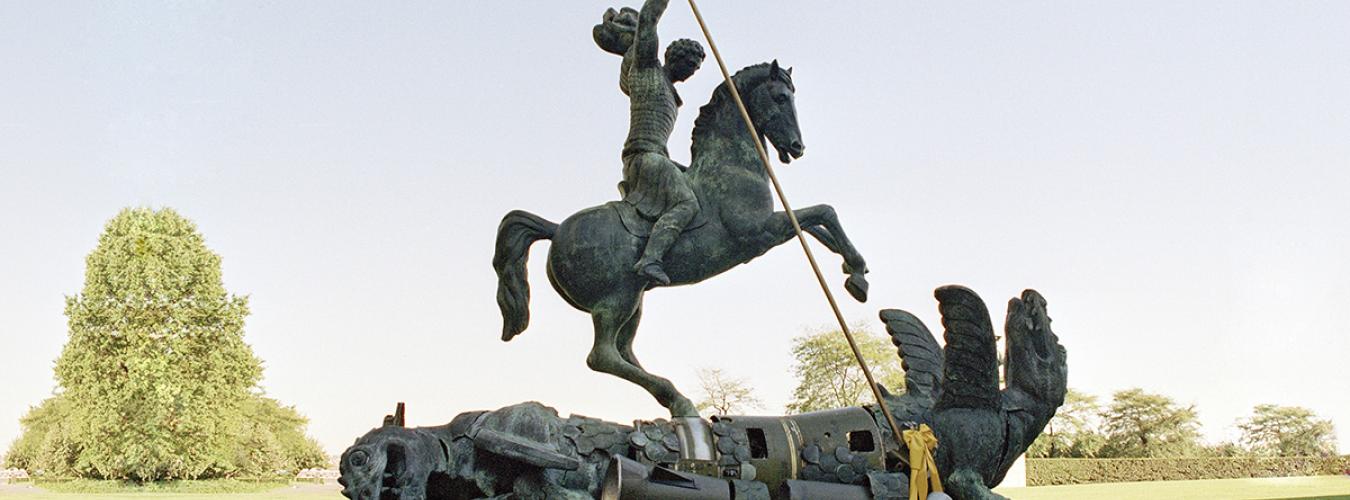
- 26 Sep 2024
Overview
Global nuclear disarmament remains a top priority for the United Nations, initially emphasized in the General Assembly’s first resolution in 1946. Despite historical efforts, approximately 12,100 nuclear weapons still exist today, with ongoing modernization plans in many countries.
Key Historical Milestones
- 1945: Atomic bombings of Hiroshima and Nagasaki, killing an estimated 213,000 people.
- 1946: First UN resolution identifies nuclear disarmament as a key goal.
- 1959: General Assembly endorses the goal of general and complete disarmament.
- 1963: Opening of the Partial Test Ban Treaty.
- 1978: First Special Session of the General Assembly dedicated to disarmament.
- 1996: Comprehensive Nuclear-Test-Ban Treaty opens for signature.
- 2017: Adoption of the Treaty on the Prohibition of Nuclear Weapons.
Recent Developments
- 2019: U.S. withdrawal from the Intermediate-Range Nuclear Forces Treaty.
- 2023: Russia suspends participation in the New START Treaty, raising concerns over arms control.
The International Day for the Total Elimination of Nuclear Weapons
- Established: December 2013, following a high-level meeting on nuclear disarmament.
- Observed: Annually on September 26.
- Purpose: Raise awareness about the dangers of nuclear weapons and promote their total elimination.
Goals of the International Day
- Enhance public education on the humanitarian risks associated with nuclear weapons.
- Mobilize international efforts towards a nuclear-weapon-free world.
Continuing Challenges
- The doctrine of nuclear deterrence remains central to the security policies of nuclear-armed states and their allies.
- No nuclear weapons have been destroyed under a treaty framework, and current disarmament negotiations are stagnant.
- Growing frustration among UN Member States over the slow progress in nuclear disarmament.
NAGAR VAN YOJANA (NVY)
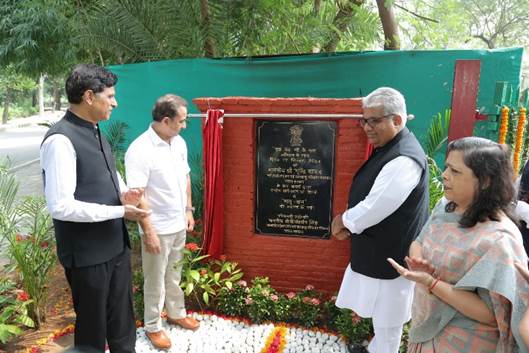
- 25 Sep 2024
In News:
Recently, the Ministry of Environment, Forest and Climate Change, Government of India achieved a 100-Day Target of 100 Nagar Vans under Nagar Van Yojana (NVY) with the objective to Enhance Urban Greenery.
Key Details:
- Launch: Initiated in 2020 to enhance urban greenery, improve quality of life, and foster social cohesion.
- Financial Support: Offers ?4 lakh per hectare for creation and maintenance of urban forests.
- Area Specification: Nagar Van areas range from 10 to 50 hectares.
- Coverage: Applicable to all cities with Municipal Corporations, Municipalities, and Urban Local Bodies (ULBs).
Achievements
- 100-Day Target: The Ministry of Environment, Forest and Climate Change achieved a target of 100 Nagar Vans, surpassing it with the approval of 111 Nagar Vans in just 100 days.
- Geographic Spread: These 111 Nagar Vans are distributed across six states and one Union Territory.
Features of Nagar Vans
- Biodiversity Focus: Emphasis on planting fruit-bearing, medicinal, and native species to attract wildlife and maintain ecological balance.
- Community Involvement: Engages citizens, students, and stakeholders through tree planting, educational programs, and sustainable management.
- Design Elements: Each Nagar Van includes two-thirds tree cover and features components like Biodiversity Parks, Smriti Vans, Butterfly Conservatories, Herbal Gardens, and Matri Vans.
Future Goals
- Expansion Plans: Target to develop 1,000 Nagar Vans by 2027, supported by the National Compensatory Afforestation Management and Planning Authority (National CAMPA).
- Environmental Impact: Aims to protect forest land from degradation and address urban environmental issues such as air pollution and habitat loss.
Ek Ped Maa Ke Naam Campaign
- Launch Date: Introduced on June 5, 2024, during World Environment Day.
- Purpose: Encourages tree planting as a tribute to mothers, fostering a culture of environmental stewardship.
- Tree Planting Goals: Aims to plant 80 crore trees by September 2024 and 140 crore by March 2025.
- Tracking Efforts: Participants can document their planting through the MeriLiFE portal, where over 75 crore saplings have been recorded.
Recent Initiatives
- Tree Plantation Drive: A recent drive on September 17, 2024, aimed at creating Matri Vans in newly approved Nagar Vans, highlighting community and governmental collaboration for sustainable urban development.
INDIA’s FIRST MISSION TO VENUS
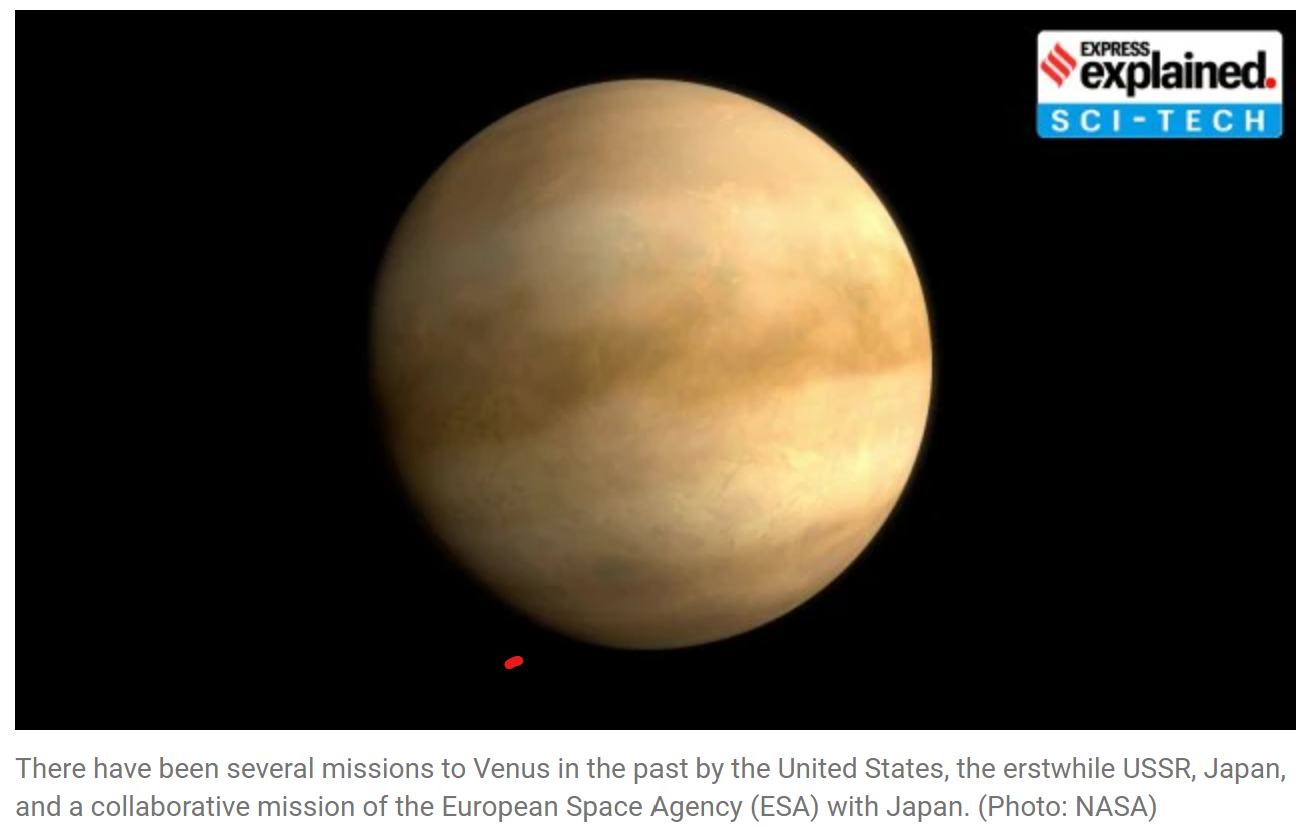
- 25 Sep 2024
In News:
India is set to launch its first mission to Venus in March 2028, following the recent approval from the Union Cabinet. This mission, led by the Indian Space Research Organisation (ISRO), marks India’s second interplanetary endeavor after the successful Mars Orbiter Mission in 2013.
Importance of Studying Venus
- Earth's Twin: Venus is often referred to as Earth’s twin due to its similar mass, density, and size. Understanding Venus can provide insights into Earth’s own evolution.
- Extreme Conditions: The planet has a surface temperature around 462°C and an atmospheric pressure similar to that found deep under Earth’s oceans. Its atmosphere consists primarily of 96.5% carbon dioxide and features clouds of sulfuric acid.
- Historical Water Presence: Venus may have had water in the past, leading scientists to explore how it transitioned to its current hostile environment, likely due to a runaway greenhouse effect.
Mission Overview
- Launch Timeline: The mission will utilize a strategic launch window when Earth and Venus are closest, occurring every 19 months. It was initially planned for 2023 but is now set for 2028.
- Payload: The mission will carry around 100 kg of scientific instruments, including 17 Indian and 7 international experiments.
- Journey to Venus: After exiting Earth's orbit, the spacecraft will take about 140 days to reach Venus.
Aero-Braking Technique
- First-time Use: This mission will employ aero-braking, a technique to adjust the spacecraft’s orbit by skimming through Venus's atmosphere, creating drag that reduces altitude.
- Target Orbit: The satellite will initially be in a highly elliptical orbit of 500 km x 60,000 km and will be gradually lowered to an orbit of either 300 x 300 km or 200 x 600 km over about six months.
Scientific Payloads
- Synthetic Aperture Radar: For imaging the surface of Venus.
- Thermal Camera: To study temperature variations.
- Interplanetary Dust Analysis: Investigating dust particle flow.
- High-Energy Particle Studies: Examining particles entering the atmosphere and their ionization effects.
- Atmospheric Composition Study: Assessing the structure, variability, and thermal state of Venus’s atmosphere.
Which countries are trying to study Venus?
- There have been several missions to Venus in the past by the United States, the erstwhile USSR, Japan, and a collaborative mission of the European Space Agency (ESA) with Japan.
- The US has planned at least two more missions to Venus in the future — DaVinci in 2029 and Veritas in 2031 — and the ESA has planned the EnVision mission for 2030.
INDIA ATTENDS IPEF MINISTERIAL MEETING
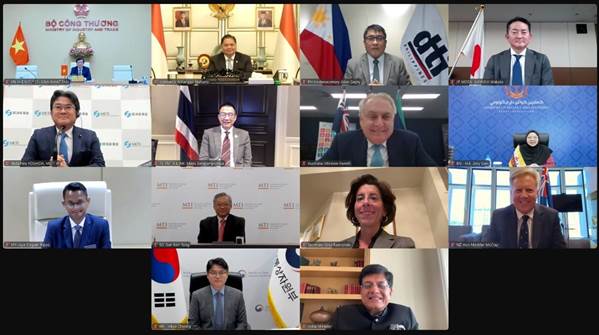
- 25 Sep 2024
In News:
Recently, the Union Commerce and Industry Minister Piyush Goyal joined a virtual meeting of the Indo-Pacific Economic Framework for Prosperity (IPEF) alongside representatives from 13 other partner countries. This meeting marked the third gathering focused on the framework's key pillars: Supply Chain Resilience, Clean Economy, and Fair Economy.
Key Agreements and Future Steps
- Entry into Force of Agreements:
- The IPEF partners celebrated the upcoming implementation of the Clean Economy Agreement and the Fair Economy Agreement on October 11 and October 12, 2024, respectively. These agreements aim to enhance economic cooperation and deliver tangible benefits to member nations.
- Supply Chain Resilience:
- The ministers discussed the progress in operationalizing the Supply Chain Agreement, emphasizing collaborative efforts to create more competitive and resilient supply chains. Key actions include:
- The formation of action plan teams for critical sectors like semiconductors, critical minerals, and chemicals, addressing vulnerabilities revealed during the COVID-19 pandemic.
- India's election as Vice Chair of the Supply Chain Council, which aims to streamline communication and cooperation among member countries.
- The ministers discussed the progress in operationalizing the Supply Chain Agreement, emphasizing collaborative efforts to create more competitive and resilient supply chains. Key actions include:
- Clean Economy Initiatives:
- The Clean Economy Agreement focuses on energy security, climate resilience, and reducing fossil fuel dependence. Ministers acknowledged the advancement of eight Cooperative Work Programs (CWPs) addressing topics such as hydrogen and carbon markets.
- The first IPEF Investor Forum, held in Singapore, facilitated discussions on investment opportunities in climate-friendly technologies.
- Fair Economy Measures:
- The Fair Economy Agreement aims to bolster anti-corruption measures and improve tax administration efficiency. Upcoming workshops will address foreign bribery laws and public procurement oversight.
- India highlighted its own anti-corruption measures and commitment to transparency under Prime Minister Modi's leadership.
About IPEF
Launched on May 23, 2022, in Tokyo, IPEF includes 14 countries: Australia, Brunei, Fiji, India, Indonesia, Japan, South Korea, Malaysia, New Zealand, Philippines, Singapore, Thailand, Vietnam, and the USA. The framework seeks to enhance economic engagement, stability, and prosperity across the Indo-Pacific region through its four key pillars: Trade, Supply Chain Resilience, Clean Economy, and Fair Economy.
SPICED SCHEME
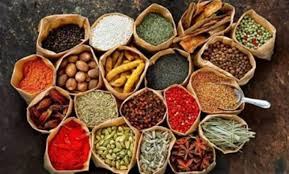
- 25 Sep 2024
In the News
The Union Ministry of Commerce and Industry has authorized the SPICED scheme (Sustainability in Spice Sector through Progressive, Innovative, and Collaborative Interventions for Export Development), which will run until 2025-26.
Overview
This initiative aims to expand the cultivation area and enhance the productivity of both small and large cardamom. It will also focus on improving the quality of spices for export through advancements in post-harvest processes and promoting value-added spice exports.
Key Objectives:
- Increase cardamom production and boost export potential.
- Improve post-harvest quality to meet export standards and ensure compliance with safety and quality regulations.
India holds the position of the largest producer, consumer, and exporter of spices globally.
Cardamom
Cardamom is sourced from the seeds of the Elettaria cardamomum plant (commonly known as green or true cardamom) and is a member of the ginger family. It is known for its unique, robust flavor that combines both spicy and sweet notes. There are two primary varieties: Small Cardamom and Large Cardamom.
Small Cardamom:
- Origin: Native to the evergreen forests of South India's Western Ghats.
- Major Producers: Primarily grown in Kerala, Karnataka, and Tamil Nadu.
- Growing Conditions: Thrives in loamy soil with thick shade, requires temperatures between 10°C and 35°C, and needs 1500 to 4000 mm of annual rainfall.
Large Cardamom:
- Distribution: Mainly cultivated in the Sub-Himalayan regions of Northeast India, Nepal, and Bhutan.
- Major Producers: Key production areas include Sikkim, Arunachal Pradesh, and the Darjeeling district of West Bengal.
- Growing Conditions: Prefers high altitudes (600 to 2000 meters), with average rainfall of 3000-3500 mm, and temperatures ranging from 6°C to 30°C. Well-drained, loamy soils rich in organic matter are ideal.
About the Spices Board of India
Established in 1987 under the Ministry of Commerce and Industry, the Spices Board of India serves as the apex organization for the promotion and export of a diverse array of spices, including black pepper, both small and large cardamom, ginger, turmeric, cinnamon, cumin, and fenugreek. The Board was formed by merging the Cardamom Board (1968) and the Spices Export Promotion Council (1960). Its headquarters is located in Kochi, Kerala.
Ideas4LiFE Initiative
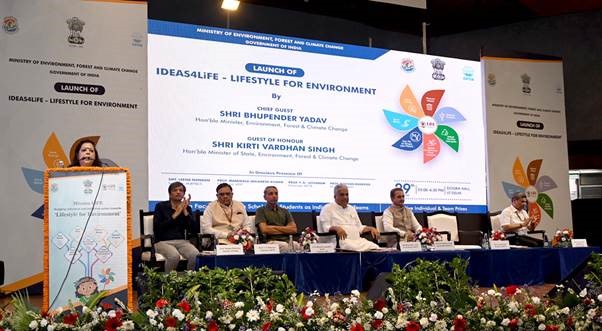
- 25 Sep 2024
In News:
The Ideas4LiFE portal was launched by Union Minister for Environment, Forest and Climate Change, at IIT Delhi.
- Purpose: Designed to invite innovative ideas related to products and services that promote environmentally friendly lifestyles.
- Development Partner: Created in collaboration with UNICEF YuWaah.
Key Features of the Ideas4LiFE Portal
- Themes: Aligned with Mission LiFE, focusing on:
- Water Conservation
- Energy Efficiency
- Waste Reduction
- E-Waste Management
- Minimizing Single-Use Plastics
- Embracing Sustainable Food Practices
- Fostering Healthy Lifestyles
- Recognition: Winning ideas will be awarded attractive prizes for both individuals and institutions.
Engagement and Outreach
- Submissions: As of now, the portal has received approximately 3,300 registrations and over 1,000 ideas.
- Social Media Impact: The initiative has garnered 46.5 million impressions and a reach of 13.5 million through social media under the hashtag #Ideas4LiFE.
Collaboration with Educational Institutions
- Partnerships: Collaborations with the University Grants Commission (UGC), All-India Council for Technical Education (AICTE), and various educational institutions to promote the Ideathon among students and researchers.
- Objective: Encourage the academic community to contribute innovative, citizen-focused ideas that support sustainable living.
Future Plans
- Evaluation Process: Submitted ideas will be evaluated by a jury, leading to the announcement of shortlisted and winning ideas.
- Implementation: Winning ideas will be included in a national repository, allowing stakeholders, including government bodies and private entities, to nurture and scale these innovations.
Mission LiFE Context
- Definition: Mission LiFE (Lifestyle For Environment) is a campaign initiated at UN Climate Change Conference COP26 in 2021.
- Goals:
- Mobilize at least one billion people for environmental protection.
- Make 80% of villages and urban local bodies environment-friendly by 2028.
- Promote small, everyday actions to combat climate change.
- Philosophy: Emphasizes the P3 model—Pro Planet People—uniting individuals in the commitment to environmental stewardship.
SWACHH BHARAT MISSION 2.0
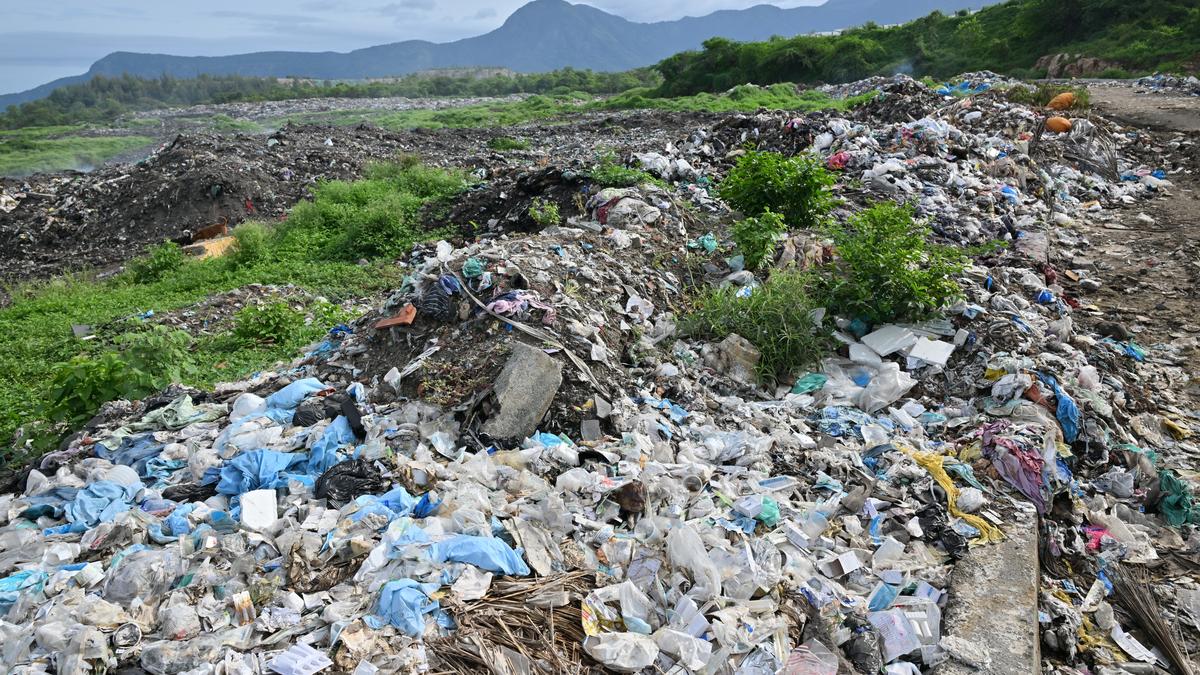
- 24 Sep 2024
Mission Overview:
- Launched on October 1, 2021, as the second phase of the Swachh Bharat Mission.
- Aims for "Garbage-Free Status" in all urban areas by 2026.
- Focuses on 100% source segregation, door-to-door waste collection, and scientific waste management.
Legacy Waste Issues:
- Legacy waste consists of improperly collected and stored solid waste, often found in landfills and abandoned sites.
- Approximately 15,000 acres of prime land are buried under nearly 16 crore tonnes of legacy waste in India.
- The mission seeks to convert legacy dumpsites into green zones and establish scientific landfills to manage untreated waste.
Current Progress:
- Of 2,424 identified dumpsites (each with over 1,000 tonnes of waste), only 470 have been fully remediated (16% reclaimed).
- 1,224 sites are under ongoing remediation, while 730 remain untouched.
- Out of 28,460 acres of affected land, 4,552 acres have been reclaimed, with 23,908 acres still to be addressed.
State Performance:
- Tamil Nadu: 837 acres reclaimed (42% of its total dumpsite area).
- Gujarat: Leads in percentage, reclaiming 75% of its landfill area (698 out of 938 acres).
Financial Aspects:
- Central assistance of ?3,226 crore has been approved for remediation efforts.
- States and Union Territories must provide a matching share to access these funds.
Challenges:
- Legacy waste management involves complexities such as radiological characterization, leachate management, and fire control.
- Current municipal solid waste generation in India is around 150,000 tonnes per day.
Historical Context:
- The original Swachh Bharat Mission (SBM-U 1.0) launched on October 2, 2014, focused on making urban areas Open Defecation Free (ODF).
GREENLAND LANDSLIDE AND GLOBAL SEISMIC WAVES

- 24 Sep 2024
In News:
Massive Greenland landslide sent seismic waves around earth for 9 days. One year ago, roughly 25 million cubic metres of ice and rock splashed into the Dickson Fjord in Greenland and displaced the water enough to give rise to a 200-metre high mega-tsunami; in this way, a melting glacier led to a planet-wide tremor, and researchers warn that it may not be the last
Seismic Observations
- Detection: Unusual seismic signals recorded by stations worldwide, characterized by a single frequency, unlike typical earthquake vibrations.
- Classification: Initially termed a "USO" (unidentified seismic object) due to its atypical properties.
- Duration: Waves persisted for nine days, unlike typical aftershock patterns.
Investigation Efforts
- Collaboration: Involved over 68 researchers from 40 universities across 15 countries.
- Data Sources: Combined seismic data, satellite imagery, water level monitors, and a classified bathymetric map from the Danish Navy.
- Conclusion: The seismic waves resulted from a massive landslide caused by the collapse of Hvide Støvhorn peak, which triggered a series of events leading to the tsunami.
Mega-Tsunami and Seiche
- Tsunami Details:
- Created by the avalanche crashing into the fjord, displacing water significantly.
- Resulted in waves that reflected off fjord walls, reaching heights of nearly 110 meters due to the fjord's unique shape.
- Seiche Phenomenon:
- Oscillations in the fjord persisted for over nine days, reflecting the energy from the landslide.
- Maximum amplitude of the seiche recorded at 7.4 meters, with a frequency of 11.45 MHz.
Climate Context
- Global Warming Impact: Thinning glaciers contributed to instability in the region, making such landslides more likely.
- Future Predictions: Researchers warn of increased frequency and scale of similar events as climate change continues to affect Arctic and subarctic regions.
Key Takeaways
- The Greenland landslide serves as a reminder of the unpredictable consequences of climate change, including massive geological events.
- The incident highlights the interconnectedness of natural systems and the potential for localized events to have global repercussions.
ROBOTIC MULES AND HIGH-ALTITUDE INNOVATIONS IN THE ARMY
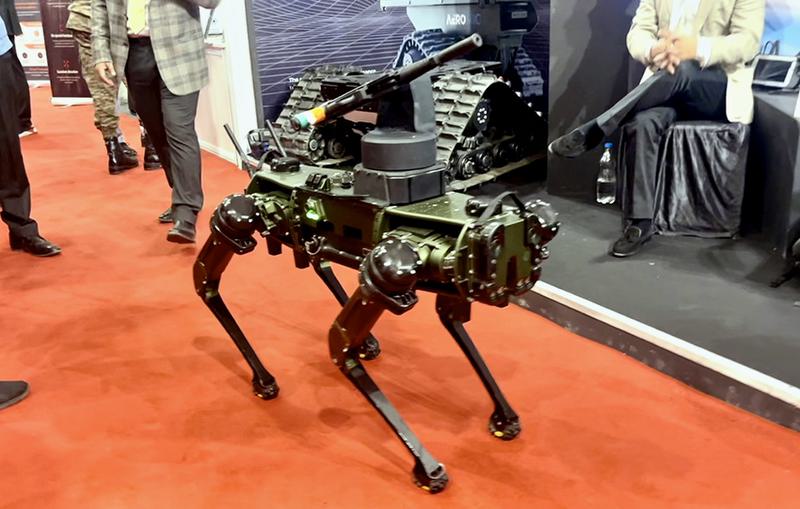
- 24 Sep 2024
In News:
The Army has inducted 100 robotic mules, known as Multi-Utility Legged Equipment (MULE), under the fourth tranche of emergency procurements (EP).
- Purpose: These robotic mules are designed for surveillance and transporting light loads across challenging terrains, especially in high-altitude areas.
- Specifications:
- Endurance: Capable of operating for up to three years.
- Temperature Range: Functions effectively in extreme temperatures from -40°C to +55°C.
- Payload Capacity: Can carry up to 15 kg.
- Mobility: Can climb stairs, steep hills, and traverse obstacles; waterproof and able to cross rivers.
- Sensing Abilities: Equipped with electro-optics and infrared capabilities for object recognition.
- Control Mechanisms: Operable via an easy-to-use remote control, Wi-Fi, or Long-Term Evolution (LTE) connections.
- Mission Programming: Can be programmed for specific missions using waypoints or pre-recorded tasks.
- Combat Integration: Capable of integration with small arms for military applications.
- Logistics Drones: Logistics drones are currently undergoing trials to enhance support and movement in forward areas, particularly in high-altitude conditions.
- High-Altitude Habitat Evaluation: A new tent designed for extreme cold environments (operating at temperatures down to -40°C) is under evaluation. This tent, called Peak Pods, is intended for use in sub-zero conditions.
- Evaluation Locations: The tent has been tested in three high-altitude sites:
- Leh (11,500 feet)
- Daulat Beg Oldie (16,700 feet)
- Durbuk (12,500 feet)
- Significance: These advancements reflect the Army's focus on technological innovations to enhance operational capabilities in high-altitude areas, especially following the 2020 stand-off with China in Eastern Ladakh.
- Funding and Timelines: The EP process allows contracts up to ?300 crore, with a requirement for delivery within one year.
SUPREME COURT RULING ON CHILD SEXUAL EXPLOITATIVE MATERIAL: KEY HIGHLIGHTS

- 24 Sep 2024
Overview of the Ruling
- Date: Recent ruling by the Supreme Court of India.
- Context: Determined that viewing, downloading, storing, or distributing material involving child sexual exploitation constitutes a criminal offense under the POCSO Act and the Information Technology Act.
- Appeal Background: Decision overturned a Madras High Court ruling that deemed private viewing of such material non-criminal.
Terminology and Legislative Recommendations
- Terminology Change: Supreme Court advocates replacing “child pornography” with “Child Sexual Exploitative and Abuse Material” (CSEAM) to avoid trivialization of the crime.
- Amendment Call: Court urged Parliament to amend the POCSO Act and advised promulgating an ordinance for immediate effect.
Key Highlights of the Ruling
- Redefinition of Terminology: Emphasizes that "pornography" may imply consensual acts, misrepresenting the nature of child exploitation.
- Expansion of Section 15 of the POCSO Act:
- Possession Without Reporting: Individuals must delete or report any stored CSEAM; failure results in penalties.
- Intent to Transmit: Possessing CSEAM with intent to share, barring reporting, is punishable.
- Commercial Possession: Storing CSEAM for commercial purposes faces the strictest penalties.
- Concept of Inchoate Offenses: Classifies offenses related to CSEAM as preparatory actions towards further crimes.
- Redefinition of Possession:
- Includes "constructive possession," where individuals can be liable without direct physical possession.
- Watching CSEAM online without downloading can still be deemed possession.
- Educational Reforms:
- Court urged for comprehensive sex education to counter stigma and misconceptions.
- Curriculum should cover consent, healthy relationships, and respect for diversity.
- Awareness of the POCSO Act: Central and state governments are mandated to promote awareness, supported by the National Commission for Protection of Child Rights (NCPCR).
- Formation of Expert Committee: To develop programs for health and sex education while increasing POCSO awareness among children.
- Victim Support and Awareness: Emphasized the need for psychological support, counseling, and educational assistance for victims.
Status of Crimes Against Children
- Increasing Incidents: India leads in online child sexual abuse imagery, with 25,000 uploads reported from April to August 2024.
- Geographical Distribution: Major uploads identified in Delhi, Maharashtra, Gujarat, Uttar Pradesh, and West Bengal.
- Rising Cases: From 331 cases in 2017 to 781 in 2018, with 1,171 cases of inappropriate content dissemination reported in 2022.
Overview of the POCSO Act
- Purpose: Addresses sexual exploitation and abuse of children, defining a child as anyone under 18.
- Features:
- Gender-Neutral: Recognizes that both genders can be victims.
- Victim Confidentiality: Mandates protection of victims’ identities.
- Mandatory Reporting: Requires reporting of suspected abuse.
Gaps in Implementation
- Support Persons: Lack of designated support persons for victims; 96% of cases showed inadequate support during legal processes.
- POCSO Courts: Only 408 designated courts across 28 states as of 2022, leading to access issues.
- Special Prosecutors: Shortage of trained public prosecutors for POCSO cases.
Conclusion
- Call for Collaboration: Emphasizes the need for a coordinated approach involving educators, healthcare providers, and law enforcement to combat child sexual exploitation.
- Societal Responsibility: A shift in societal attitudes is essential for preventing victimization and ensuring recovery for victims.
KEY FINDINGS ON ATROCITIES AGAINST SCS AND STS (2022)
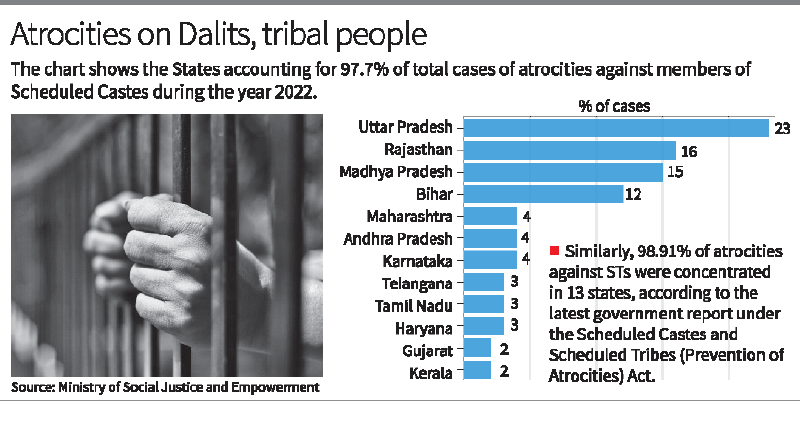
- 23 Sep 2024
In News:
According to the latest report under the Scheduled Castes and Scheduled Tribes (Prevention of Atrocities) Act by the Social Justice and Empowerment Ministry, the majority of atrocities against Scheduled Tribes (STs) were also concentrated in 13 states, which reported 98.91% of all cases in 2022.
- Case Statistics:
- Total cases of atrocities against Scheduled Castes (SCs): 51,656
- Total cases against Scheduled Tribes (STs): 9,735
- 97.7% of SC cases and 98.91% of ST cases reported from 13 states.
- States with Highest Incidents:
- SCs:
- Uttar Pradesh: 12,287 cases (23.78%)
- Rajasthan: 8,651 cases (16.75%)
- Madhya Pradesh: 7,732 cases (14.97%)
- Other significant states: Bihar (6,799), Odisha (3,576), Maharashtra (2,706)
- STs:
- Madhya Pradesh: 2,979 cases (30.61%)
- Rajasthan: 2,498 cases (25.66%)
- Odisha: 773 cases (7.94%)
- Other significant states: Maharashtra (691), Andhra Pradesh (499)
- SCs:
- Charge Sheets and Investigations:
- SC-related cases: 60.38% resulted in charge sheets; 14.78% ended with final reports (false claims/lack of evidence).
- ST-related cases: 63.32% led to charge sheets; 14.71% concluded similarly.
- Pending investigations by end of 2022: 17,166 SC cases, 2,702 ST cases.
- Conviction Rates:
- Decline from 39.2% in 2020 to 32.4% in 2022.
- Infrastructure Deficiencies:
- Only 194 out of 498 districts in 14 states have established special courts for these cases.
- Lack of identified atrocity-prone areas in states like Uttar Pradesh despite high case numbers.
- Protection Cells:
- SC/ST protection cells established in multiple states and union territories.
Reasons for Atrocities Against SCs and STs
- Caste Prejudice: Deep-rooted hierarchies and social exclusion lead to violence.
- Land Disputes: Conflicts over land access among historically deprived SC/ST communities.
- Economic Marginalization: Limited access to education and resources heightens vulnerability.
- Power Imbalance: Dominant castes wield political and social influence, perpetuating discrimination.
- Inadequate Law Enforcement: Weak implementation of protective laws and bureaucratic bias hinder justice.
- Political Exploitation: Caste tensions are sometimes used for electoral gains.
Scheduled Castes and Scheduled Tribes (Prevention of Atrocities) Act, 1989
- Objective: Protect SCs and STs from caste-based violence and discrimination.
- Key Provisions:
- Defines various offences against SC/ST members, prescribing stricter punishments.
- Excludes anticipatory bail provisions for accused under the Act.
- Mandates establishment of special courts for speedy trials.
- Investigations must be conducted by senior police officers and completed within stipulated time frames.
- Recent Amendments:
- 2015: Enhanced protections for SC/ST women.
- 2019: Restored original provisions for arrest procedures following a Supreme Court ruling.
Recommendations for Improvement
- Strengthen Legal Framework: Establish more special courts and train personnel in sensitive handling of SC/ST cases.
- Improve Reporting Mechanisms: Enhance systems for victims to report atrocities without fear.
- Awareness Campaigns: Educate communities on SC/ST rights and legal protections.
- Targeted Interventions: Identify and address issues in atrocity-prone districts.
- Monitoring and Evaluation: Implement frameworks for accountability and continuous improvement in addressing these issues.
- Collaborate with NGOs: Work with civil society to support victims and advocate for their rights.
100 YEARS OF ICAR-NISA
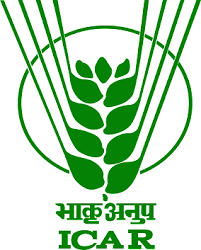
- 23 Sep 2024
Overview:
The ICAR-National Institute of Secondary Agriculture (NISA), originally established in 1924 as the Indian Institute of Natural Resins and Gums in Ranchi, Jharkhand, marks its centenary this year. Renamed in 2022, it operates under the Ministry of Agriculture and Farmers’ Welfare, focusing on enhancing the value of agricultural products.
Understanding Secondary Agriculture:
Secondary agriculture encompasses the transformation of primary agricultural products into higher-value commodities and includes activities such as:
- Beekeeping
- Poultry farming
- Agricultural tourism
This sector plays a crucial role in converting agricultural produce, residues, and by-products into valuable goods for various uses, including pharmaceuticals, food, and industrial applications. Examples of secondary agriculture practices include:
- Extracting vitamins from grains
- Producing oil from rice bran
- Making jaggery from sugarcane
- Cottage industries for jams and pickles
Growth Potential: The sector is poised for growth due to:
- Increasing consumer demand for value-added products like ready-to-eat meals.
- The need for innovative uses of renewable agro-bio resources.
- The significant availability of agricultural byproducts.
Significance of Secondary Agriculture:
- Environmental Sustainability: Proper utilization of crop residues can reduce waste and pollution.
- Enhanced Farmer Income: Activities like beekeeping and lac culture provide additional revenue streams for farmers.
- Value Addition: Processing agricultural products increases their shelf life and overall productivity.
- Promotion of Cottage Industries: Supports rural economies and fosters technology adoption.
Challenges Ahead: Despite its potential, secondary agriculture faces several hurdles:
- The industry for high-value products from agricultural byproducts, such as Active Pharmaceutical Ingredients, is still emerging.
- Small landholdings complicate the collection of crop residues.
- Limited research on suitable technologies hampers development.
- There is a lack of awareness among farmers regarding the processing of agricultural waste.
Conclusion
As ICAR-NISA celebrates its 100th anniversary, it remains crucial in shaping the future of secondary agriculture in India, addressing both challenges and opportunities to enhance sustainability and farmer livelihoods.
INDO-PACIFIC ECONOMIC FRAMEWORK (IPEF)
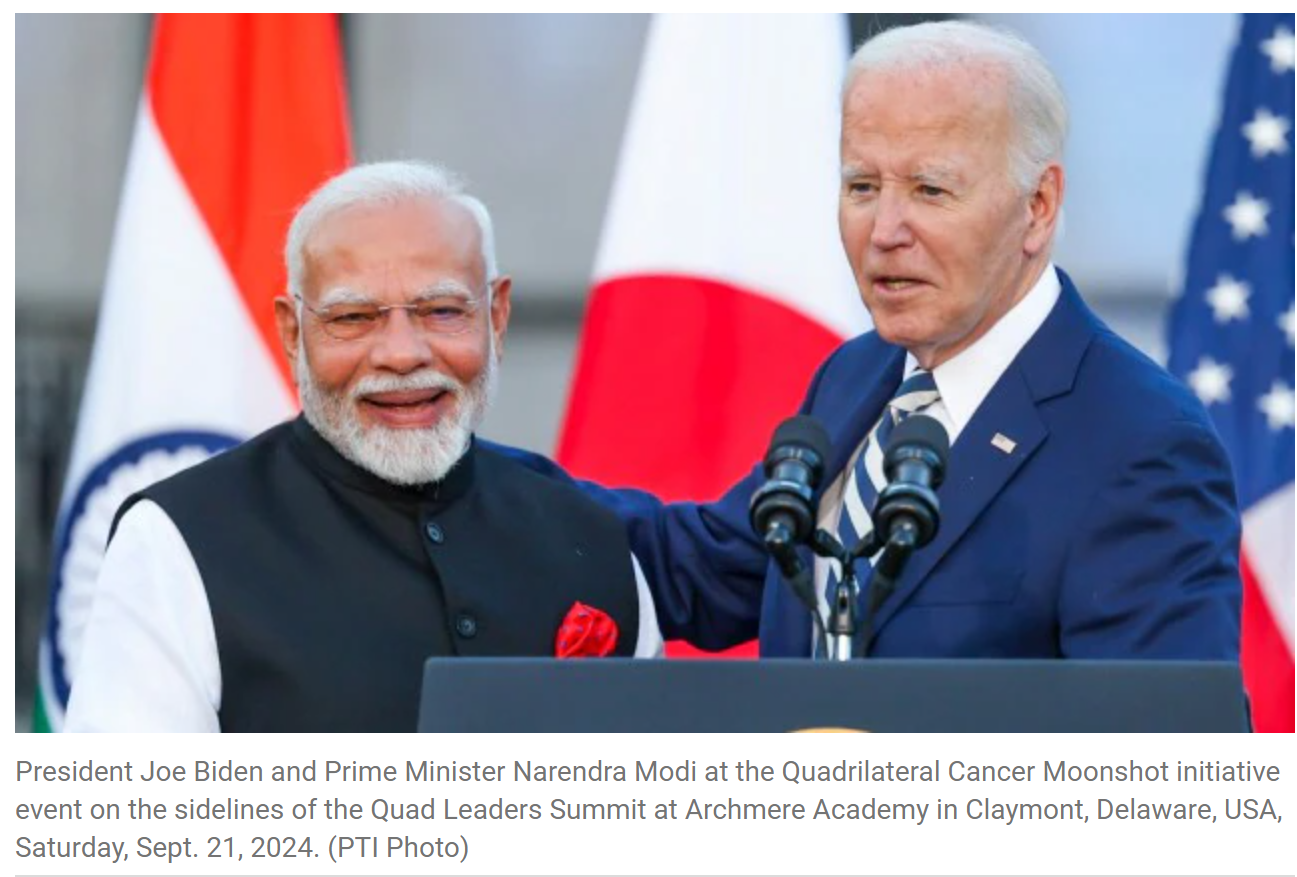
- 23 Sep 2024
In News:
India signed agreements within the US-led 14-member IPEF focused on a clean and fair economy.
- Objectives:
- Facilitate development, access, and deployment of clean energy and climate-friendly technologies.
- Strengthen anti-corruption measures and promote tax transparency among member countries.
- Clean Economy Agreement:
- Aims to accelerate energy security and mitigate greenhouse gas (GHG) emissions.
- Focuses on innovative methods to reduce reliance on fossil fuels and promote technical cooperation.
- Fair Economy Agreement:
- Seeks to create a transparent and predictable business environment to enhance trade and investment.
- Emphasizes information sharing, asset recovery facilitation, and strengthening cross-border investigations.
- Funding Mechanisms:
- IPEF offers platforms for technical assistance and concessional funding.
- IPEF Catalytic Capital Fund: Initial grant of $33 million aimed to catalyze $3.3 billion in private investments.
- PGI Investment Accelerator: Received $300 million from the US International Development Finance Corporation.
- Concerns Raised:
- Experts highlighted concerns over the secrecy of IPEF negotiations with limited public input.
- Expressed hope that India has not agreed to a non-derogation clause that could limit domestic regulatory flexibility for national projects.
- Potential Risks:
- Most standards discussed in IPEF are aligned with those in the US and OECD countries.
- India risks compliance pressures in future trade deals if it adopts these standards without adequate preparation.
- Strategic Importance of IPEF:
- Involves 14 member countries, focusing on economic cooperation through four key pillars: trade, supply chain resilience, clean economy, and fair economy.
- Represents 40% of the global economy and 28% of world trade, highlighting India's commitment to regional partnerships alongside the US, Japan, Australia, and other Indo-Pacific nations.
COP 29 AT BAKU
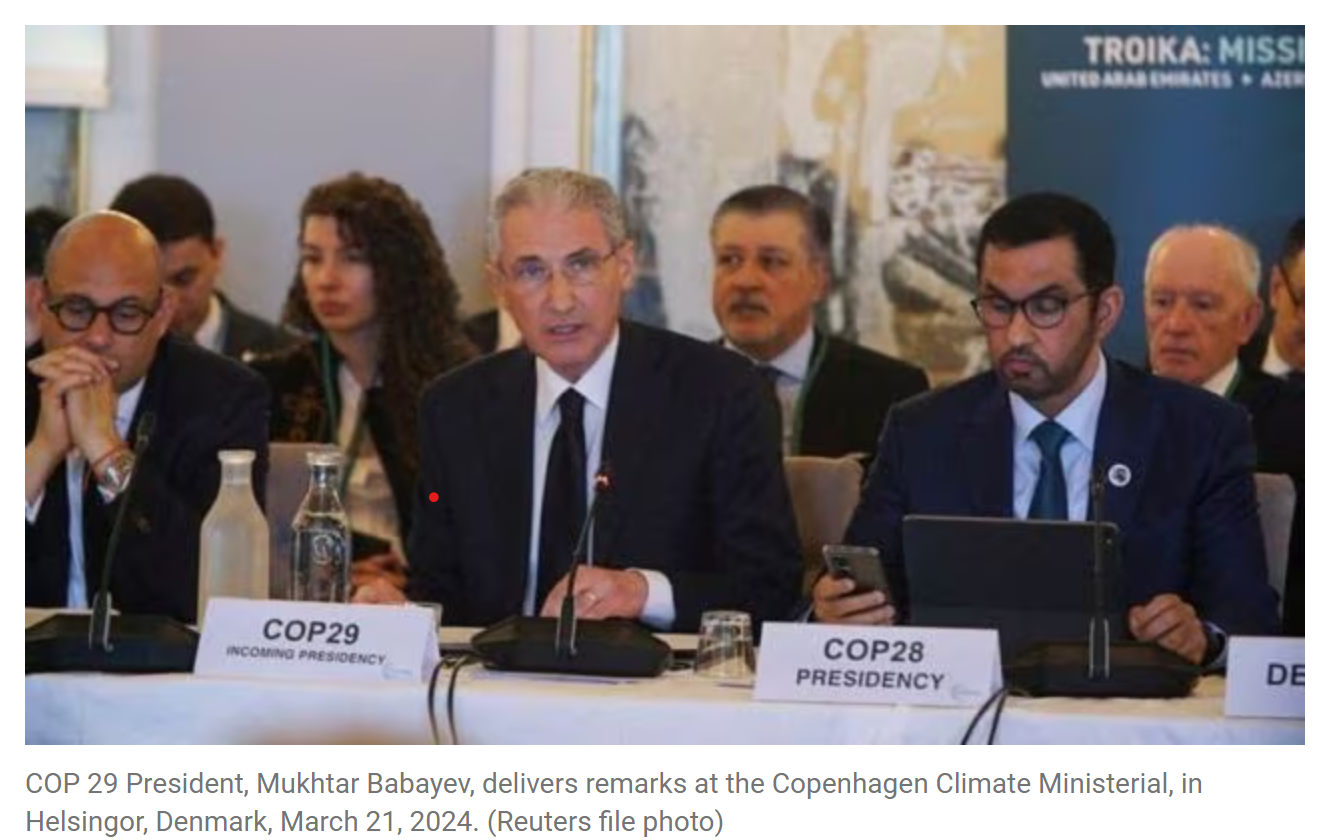
- 23 Sep 2024
In News:
Azerbaijan is making a significant move in the global climate finance landscape by proposing the Climate Finance Action Fund (CFAF) at the upcoming COP29 conference. This fund aims to gather voluntary contributions from fossil-fuel-producing nations and companies, with Azerbaijan itself making the initial investment. The fund’s goal is to support climate action in developing countries, which often struggle to finance their environmental initiatives.
Key Aspects of the CFAF:
- Voluntary Contributions: The fund seeks donations from fossil fuel entities, allowing them to contribute based on a fixed amount or production volumes.
- Bipartite Allocation: Proposed funds will be split equally—half for climate projects in developing nations and half for supporting those countries in executing their national climate action plans.
- Operational Threshold: The CFAF will only commence operations once it secures a minimum of $1 billion and commitments from at least ten countries to participate.
Context of COP29:
COP29, hosted in Baku from November 11 to 22, centers on finalizing a climate finance agreement, particularly the obligations of developed nations post-2025. This follows the ongoing struggle to meet the $100 billion annual financing target established in the Paris Agreement.
Additional Proposals:
Azerbaijan has also introduced several other initiatives as part of its agenda, including:
- Expanding Global Energy Storage: Aiming to increase capacity sixfold by 2030.
- Green Hydrogen Market: Fostering a global marketplace for green hydrogen.
- Minimizing Emissions from Digital Growth: Ensuring that the environmental impact of increasing digitalization and data centers is mitigated.
Challenges Ahead:
Despite the ambitious plans, there are significant hurdles to overcome, including establishing a robust framework for the CFAF, garnering international support, and ensuring compliance from contributors. As the conference approaches, ongoing negotiations will be crucial to achieving substantial agreements on climate finance that can lead to meaningful progress in combating climate change.
QUAD CANCER MOONSHOT
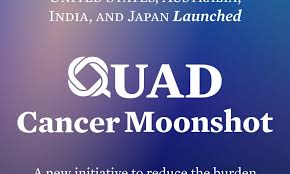
- 23 Sep 2024
In News:
The Quad Cancer Moonshot Initiative is a significant collaborative effort among the Quad countries—India, the United States, Australia, and Japan—aimed at combating cancer through innovative strategies. The initiative focuses on key areas such as preventing and detecting cancer, improving treatment, and alleviating the disease's impact on patients and families.
Key Highlights of the Quad Cancer Moonshot Initiative:
- Focus Areas:
- Cervical Cancer Screening: Enhancing access to screening programs.
- HPV Vaccination: Increasing vaccination rates against HPV, which is the leading cause of cervical cancer.
- Patient Treatment: Improving treatment protocols and accessibility for cancer patients.
- India’s Contributions:
- Financial Commitment: India has pledged $10 million to support the WHO’s Global Initiative on Digital Health, aimed at enhancing digital health technologies for cancer care in the Indo-Pacific region.
- Material Support: India will provide cervical cancer screening kits, detection tools, and HPV vaccines valued at $7.5 million to bolster healthcare initiatives in the region.
- AI-based Protocols: Development of AI-driven treatment protocols to improve care delivery for cancer patients.
- Capacity Building: India aims to enhance radiotherapy services and overall cancer prevention strategies in the Indo-Pacific.
This initiative represents a strong commitment to fostering international collaboration in healthcare, particularly in the prevention and treatment of cervical cancer. By empowering communities with accessible tools and resources, the Quad countries aim to significantly reduce the burden of cancer in the region.
AMUR FALCONS
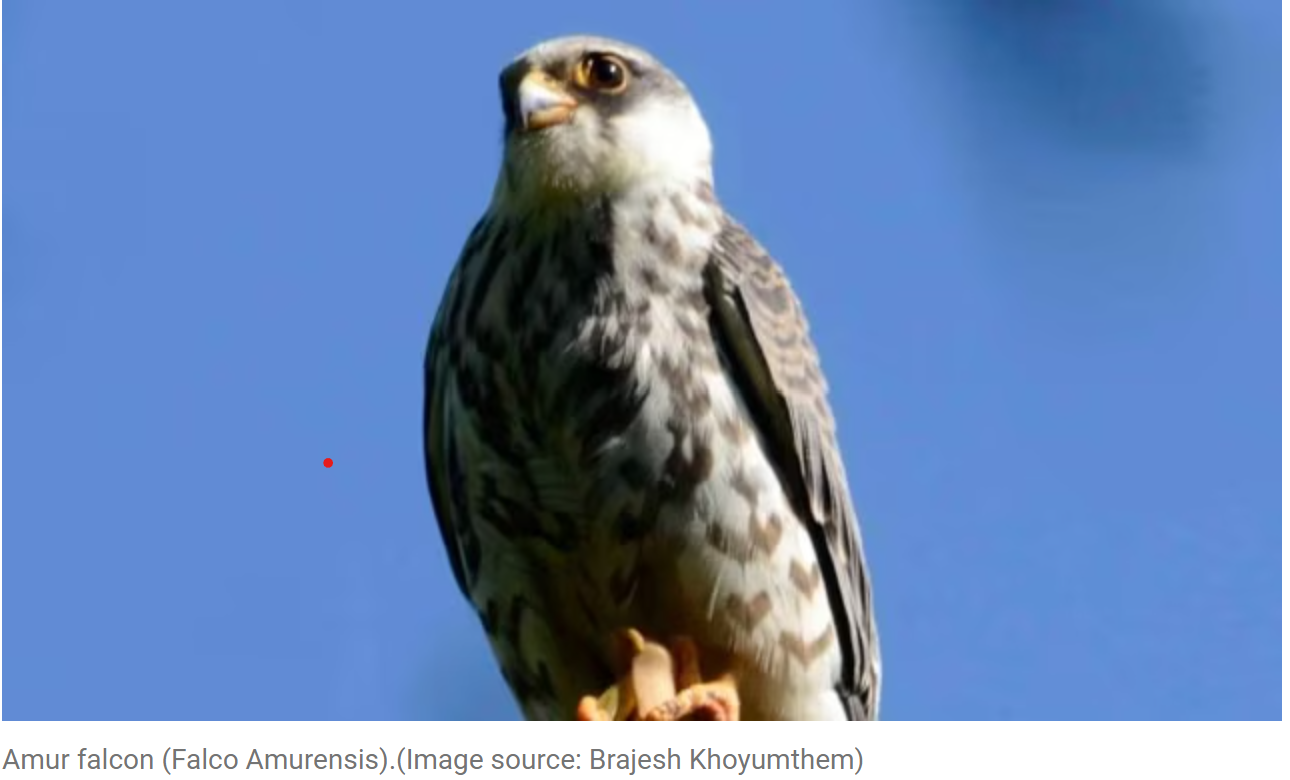
- 22 Sep 2024
In News:
An order issued by the District Magistrate directed the owners of air guns to deposit their hunting weapons at the offices of respective village authorities.
Amur Falcons: An Overview
Scientific Classification:
- Common Name: Amur Falcon
- Scientific Name: Falco amurensis
- Family: Falconidae
Physical Characteristics:
- Size: Small raptors, approximately 28-30 cm in length.
- Distinctive Features: Dark plumage with white wing linings; reddish-orange eyes and feet.
Migration Patterns:
- Breeding Grounds: Southeastern Russia and northern China.
- Migratory Route: They leave their breeding areas in autumn, traveling south to round the Himalayas, stopping in Nagaland, and then heading towards the Western Ghats before crossing the Indian Ocean to reach South Africa.
- Distance: These falcons undertake an incredible journey of around 22,000 kilometers annually, making them one of the most remarkable long-distance migrants among raptors.
Diet:
- Primarily insectivorous, they also consume small vertebrates when available.
Conservation Status:
- IUCN Status: Least Concern
- Legal Protection:
- Wildlife Protection Act, 1972: Schedule IV
- Convention on Migratory Species (CMS): Appendix II
Recent Conservation Efforts:
- Ban in Manipur: The Tamenglong district administration has imposed a ban on hunting, catching, killing, and selling Amur falcons in preparation for their migratory arrival.
- Tagging Program: In 2016, radio transmitters were used to monitor their migration routes.
- Awareness Initiatives: An annual ‘Amur Falcon Festival’ in Tamenglong district promotes awareness and celebrates these migratory birds.
Threats:
- Amur falcons face various threats including habitat loss, hunting, and illegal trapping.
Cultural Significance:
- Locally known as ‘Kahuaipuina’ in Manipur and ‘Molulem’ in Nagaland, these birds hold ecological and cultural significance, particularly in regions that serve as critical stopover points during migration.
Summary
The Amur falcon is a small but remarkable migratory raptor known for its long-distance travels from its breeding grounds in Asia to Africa. Conservation efforts in India, particularly in the Tamenglong district of Manipur, aim to protect these birds from hunting and habitat loss, ensuring their continued survival and highlighting their importance in the ecosystem.
WORLD RHINO DAY
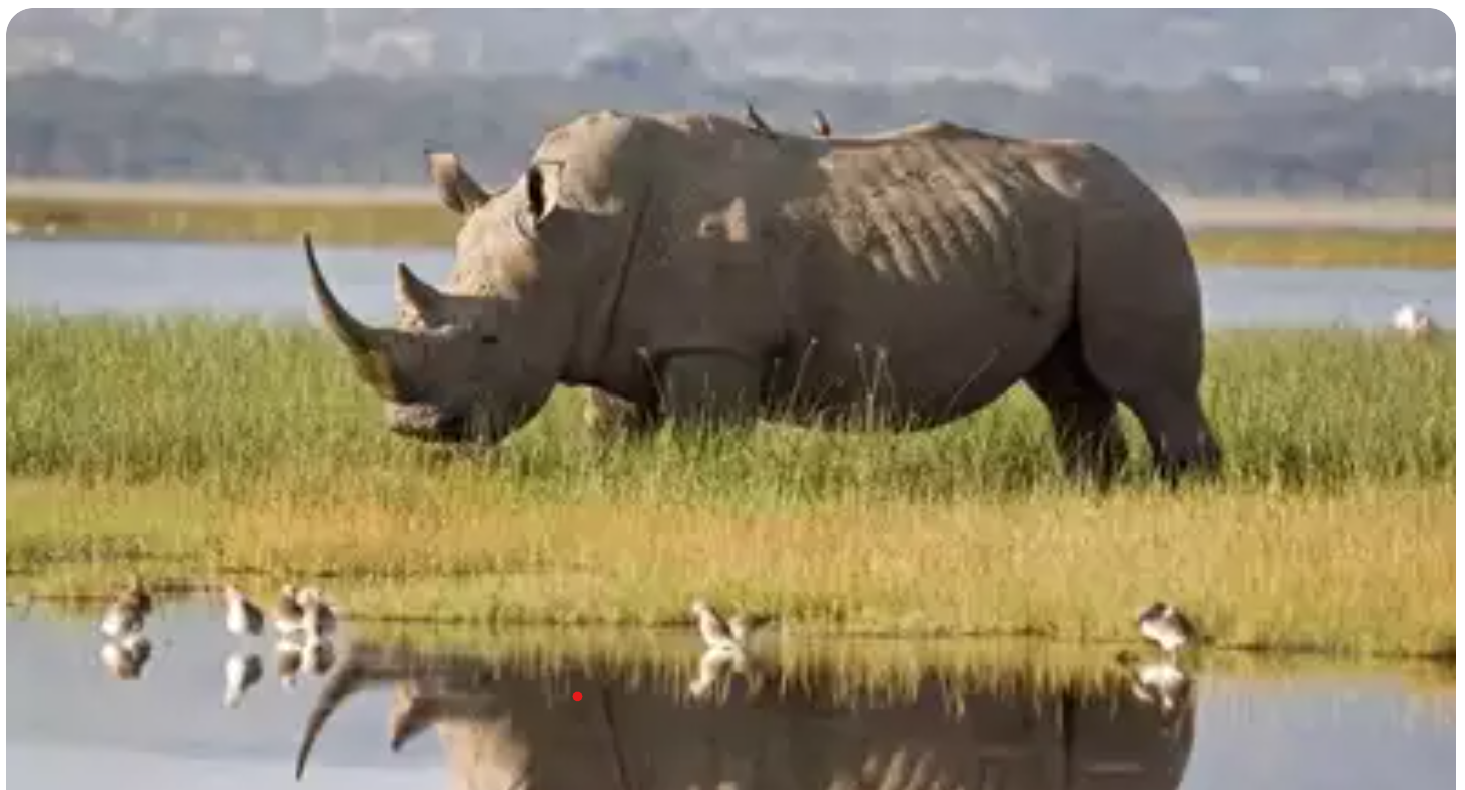
- 22 Sep 2024
In News:
Celebrated annually on September 22, World Rhino Day raises awareness about the critical conservation status of rhinoceroses and the myriad threats they face, such as poaching and habitat loss. This day, first initiated by the World Wildlife Fund South Africa in 2010, aims to highlight the need for the conservation of all five species of rhinos: the Javan, Sumatran, Black, Greater One-Horned, and White rhinos.
The Current Status of Rhino Species
- Among the five rhino species, three are classified as
- Critically Endangered: the Black, Javan, and Sumatran rhinos.
- The White Rhino is considered Near Threatened, with the Northern White Rhino itself critically endangered.
- The Greater One-Horned Rhino, primarily found in India, is listed as Vulnerable.
Notably, Kaziranga National Park in Assam is home to the largest population of Greater One-Horned Rhinos, boasting approximately 3,700 individuals.
Conservation Efforts
In India, initiatives like Project Rhino play a crucial role in safeguarding rhino populations. This project focuses on preventing poaching, enhancing habitat management, and increasing public awareness. It collaborates with various conservation groups and government agencies to strengthen law enforcement against poaching and to relocate rhinos to safer areas.
Another significant program is the Indian Rhino Vision 2020 (IRV 2020), aimed at boosting the population of Greater One-Horned Rhinos in Assam, particularly in regions where they had previously become extinct.
Surprising Facts About Rhinos
- Despite their thick skin, rhinos can get sunburned.
- Rhinos are related to zebras, horses, and tapirs.
- All five species are considered endangered.
- A group of rhinos is called a "crash."
- Rhinos' horns are made of keratin, the same protein found in human hair and nails.
- The term "rhinoceros" comes from two Greek words meaning "nose" and "horn."
- Rhinos and elephants are not natural enemies.
- One of the most famous depictions of a rhino is Albrecht Dürer's woodcut from 1515.
- The gestation period for rhinos can last up to 16 months.
- Rhinos have historically been used in traditional Asian medicine.
QUAD GROUPING
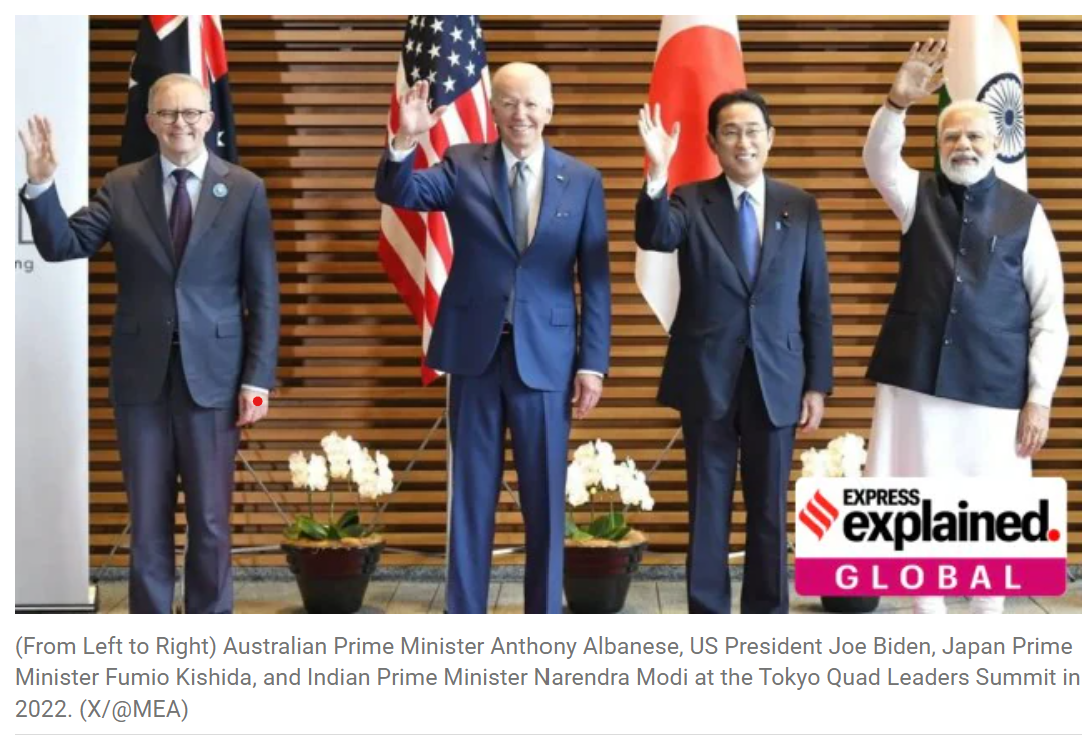
- 22 Sep 2024
In News:
Prime Minister Narendra Modi arrived in the United States, where he will participate in the fourth Quad Leaders Summit in Wilmington, Delaware.
What is the Quad Grouping?
The Quad, or Quadrilateral Security Dialogue, is an informal strategic alliance comprising India, the United States, Japan, and Australia. Originally formed in response to the Indian Ocean tsunami in 2004, the Quad aims to foster collaboration in various areas, but its primary focus has become countering the influence of China in the Indo-Pacific region.
Historical Background
- 2004: The Quad began as a response to the Indian Ocean tsunami, facilitating disaster relief.
- 2007: Japanese PM Shinzo Abe formalized the alliance.
- 2017: Amid rising Chinese assertiveness, the Quad was revitalized, expanding its objectives beyond maritime security.
Structure and Characteristics
- The Quad is not a formal organization; it lacks a secretariat or permanent decision-making body like the EU or UN.
- It focuses on strengthening bilateral and multilateral ties among member nations.
- Unlike NATO, the Quad does not include collective defense provisions but conducts joint military exercises to demonstrate unity.
Key Developments
- In 2020, the Malabar naval exercises expanded to include Australia, marking the first joint military exercises of the Quad since its resurgence.
- The first in-person summit took place in Washington, D.C. in 2021.
Objectives of the Quad
The Quad has outlined several primary objectives:
- Maritime Security: Ensuring safe and open sea routes in the Indo-Pacific.
- Climate Change: Addressing environmental challenges collaboratively.
- Investment Ecosystem: Creating opportunities for economic investment in the region.
- Technological Innovation: Promoting advancements and cooperation in technology.
- Public Health: Collaborating on initiatives like vaccine diplomacy during the COVID-19 pandemic.
Expansion and Future Directions
The Quad members have discussed expanding the partnership to include countries like South Korea, New Zealand, and Vietnam. In a joint statement, they reaffirmed their commitment to a free, open, resilient, and inclusive Indo-Pacific governed by international law.
Challenges and Opposition
China views the Quad as an effort to encircle and contain its influence. Beijing has criticized the grouping, labeling it as a strategy that incites discord among Asian nations.
JORDAN
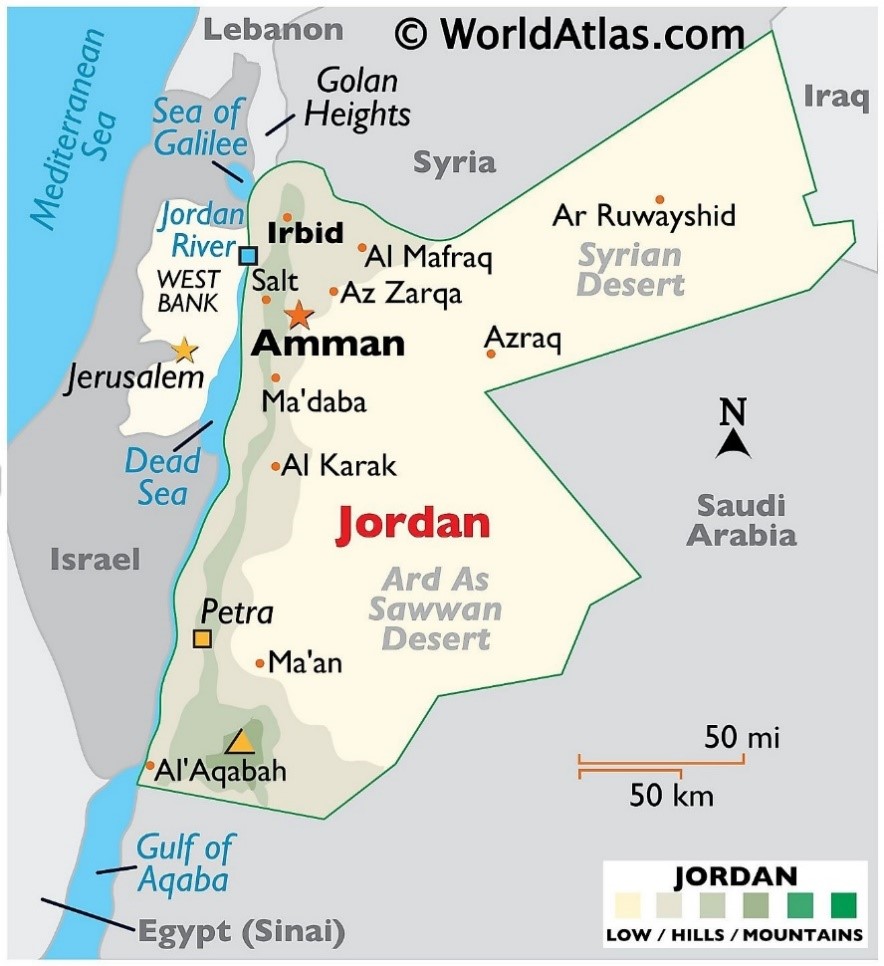
- 21 Sep 2024
In News:
Jordan has made history by becoming the first country in the world to be officially verified by the World Health Organization (WHO) as having eliminated leprosy. This achievement marks a significant advancement in global public health efforts.
Key Highlights:
- WHO Recognition: WHO Director-General Dr. Tedros Adhanom Ghebreyesus praised Jordan for this milestone, emphasizing the importance of stopping transmission and alleviating the suffering and stigma associated with leprosy.
- Historic Achievement: This success is not just about disease elimination but also about combating stigma and socio-economic harm.
- No Local Cases: Jordan has not reported any locally transmitted cases of leprosy for over two decades, demonstrating its effective public health strategies and strong political commitment.
- Independent Verification: WHO commissioned an independent team to conduct a thorough assessment, leading to the official recognition of leprosy elimination.
- Ongoing Vigilance: While celebrating this success, both the WHO and the Jordanian Ministry of Health emphasize the need for robust surveillance systems to detect and manage any future cases, including those from abroad.
Additional Context:
Leprosy, or Hansen's disease, is a chronic infectious condition caused by Mycobacterium leprae, primarily affecting the skin and nerves. Although it remains a neglected tropical disease, with over 200,000 new cases reported annually across more than 120 countries, Jordan's success showcases the potential for eradication through dedicated efforts.
This milestone serves as a beacon of hope, illustrating that with strong commitment, collaboration, and strategic planning, even longstanding public health challenges can be addressed effectively.
EXERCISE AIKYA
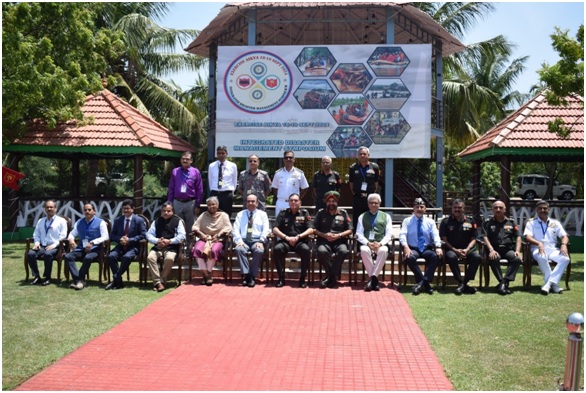
- 21 Sep 2024
In News:
The National Disaster Management Authority (NDMA), in partnership with the Indian Army's Southern Command and the Tamil Nadu State Disaster Management Authority (TNSDMA), recently conducted "EXERCISE AIKYA" in Chennai. This two-day Integrated Symposium and Table Top Exercise (TTEx) aimed to bolster disaster preparedness and response among key stakeholders across Peninsular India.
Key Highlights:
- Objective: "Aikya," meaning "Oneness" in Tamil, sought to unify India’s disaster management community by enhancing collaboration and preparedness.
- Participants: The exercise involved representatives from:
- Six southern states/UTs: Tamil Nadu, Kerala, Karnataka, Andhra Pradesh, Telangana, and Puducherry.
- Central ministries related to disaster management.
- State Disaster Management Authorities (SDMAs).
- Armed forces, including the Indian Army, Navy, and Air Force.
- Response agencies such as the NDRF, Indian Coast Guard, CRPF, CISF, and Railways.
- Early warning agencies including the IMD, NRSC, INCOIS, CWC, and FSI.
- Research institutions like NIDM, NIOT, IIT Madras, and DAE, with Prof. CVR Murty of IIT Madras serving as the Exercise Mentor.
- Focus Areas: The exercise simulated various emergency situations, covering:
- Tsunamis, landslides, floods, cyclones, industrial incidents, and forest fires.
- Recent disaster events in Tamil Nadu, Wayanad, and Andhra Pradesh.
- Discussions: Participants engaged in discussions about:
- Leveraging technology and AI for disaster management.
- Economic impacts of disasters.
- Vulnerabilities specific to the Peninsular region.
- Strategies for improving response times.
Future Plans
"EXERCISE AIKYA" marks a crucial step towards strengthening India’s disaster management framework. The NDMA and the Southern Command plan to conduct similar exercises with other military commands and institutions, including the Army War College and Naval War College, to further enhance national disaster preparedness and response capabilities.
EUROPA CLIPPER MISSION
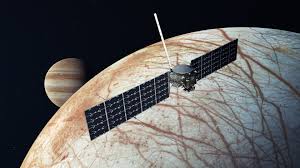
- 21 Sep 2024
In news:
NASA is preparing to launch the Europa Clipper mission, which aims to investigate Jupiter's icy moon, Europa.
Key Details:
- Objective: This mission will place a spacecraft in orbit around Jupiter to conduct a thorough study of Europa, focusing on its potential habitability.
- Significance: Europa Clipper will be NASA's first mission specifically designed to explore an ocean world beyond Earth. Europa is believed to have a subsurface ocean beneath its icy surface, which raises the possibility of supporting life.
- Spacecraft Specifications:
- The spacecraft measures 100 feet (30.5 meters) from end to end and 58 feet (17.6 meters) across, making it the largest NASA spacecraft ever built for a planetary mission.
- Mission Plan:
- Europa Clipper will orbit Jupiter and conduct 49 close flybys of Europa to gather critical data regarding its environment and potential habitability.
- Instrumentation:
- Equipped with nine scientific instruments and a gravity experiment that leverages its telecommunications system, the spacecraft will maximize data collection by operating all instruments simultaneously during each flyby. This approach will allow scientists to compile comprehensive data layers, creating an in-depth understanding of Europa.
- Power Source:
- The spacecraft is outfitted with large solar arrays to harness sunlight for its energy needs while operating in the challenging environment of the Jupiter system.
Solar Array
A solar array is a collection of solar panels interconnected to generate electrical power. When combined with other components like an inverter and battery, it forms a complete solar energy system.
GLOBAL CYBERSECURITY INDEX 2024
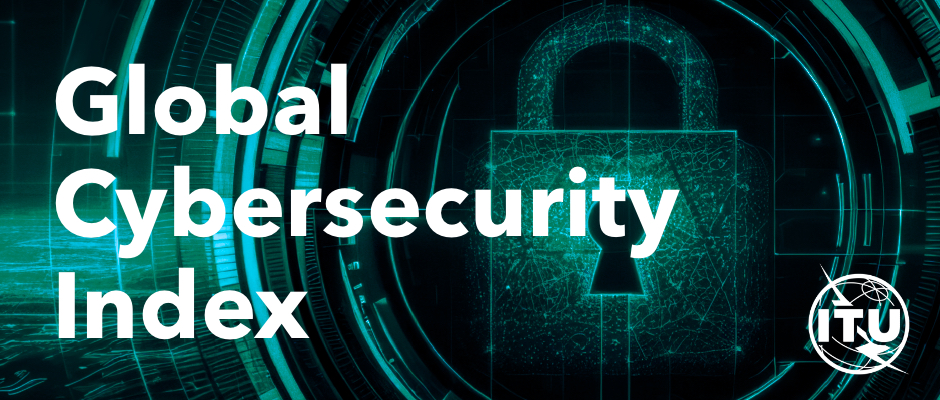
- 21 Sep 2024
In News:
- India has achieved Tier 1 status in the Global Cybersecurity Index (GCI) 2024, published by the International Telecommunication Union (ITU), with an impressive score of 98.49 out of 100.
Role-Modeling Country: This accomplishment places India among ‘role-modeling’ countries, reflecting a strong commitment to cybersecurity practices globally.
Assessment Criteria: The GCI 2024 evaluates national efforts based on five pillars:
-
- Legal Measures
- Technical Measures
- Organizational Measures
- Capacity Development
- Cooperation
- Evaluation Methodology: The index utilized a comprehensive questionnaire comprising 83 questions, which cover 20 indicators, 64 sub-indicators, and 28 micro-indicators, ensuring a thorough assessment of each country's cybersecurity landscape.
- Tier Classification: The GCI 2024 report categorized 46 countries in Tier 1, the highest tier, indicating a strong commitment across all five cybersecurity pillars. Most countries fall into lower tiers, either “establishing” (Tier 3) or “evolving” (Tier 4) their cybersecurity frameworks.
Key Achievements
- Global Standing: India ranks at the top level of global cybersecurity rankings, showcasing its dedication to enhancing cyber resilience and securing its digital infrastructure.
- Government Initiatives:
- Robust Frameworks: Establishment of comprehensive frameworks for cybersecurity and cybercrime laws.
- Sectoral Support: Implementation of Sectoral Computer Incident Response Teams (CSIRTs) that provide technical support and incident reporting across various industries.
- Educational Integration: Cybersecurity has been integrated into primary and secondary education curricula to foster informed digital citizens.
- Public Awareness: Targeted campaigns have promoted secure online practices across multiple sectors, including private industry and academia.
- Skill Development and Innovation: The government has provided incentives and grants to enhance skill development and promote research within the cybersecurity sector.
- International Collaborations: India has engaged in numerous bilateral and multilateral partnerships to strengthen its capacity-building and information-sharing efforts.
About the International Telecommunication Union (ITU)
- Overview: Established in 1865, the ITU is the United Nations specialized agency for information and communication technologies, becoming a UN agency in 1947.
- Membership: ITU has 193 member countries and over 1,000 associated organizations, including companies and universities.
- Functions: ITU coordinates global radio spectrum allocation, sets technical standards for telecommunication, and works to improve ICT access in underserved communities.
- India's Involvement: India has been an active ITU member since 1869 and a regular participant in the ITU Council since 1952.
INDIA JOINS THE INTERNATIONAL BIG CAT ALLIANCE (IBCA)
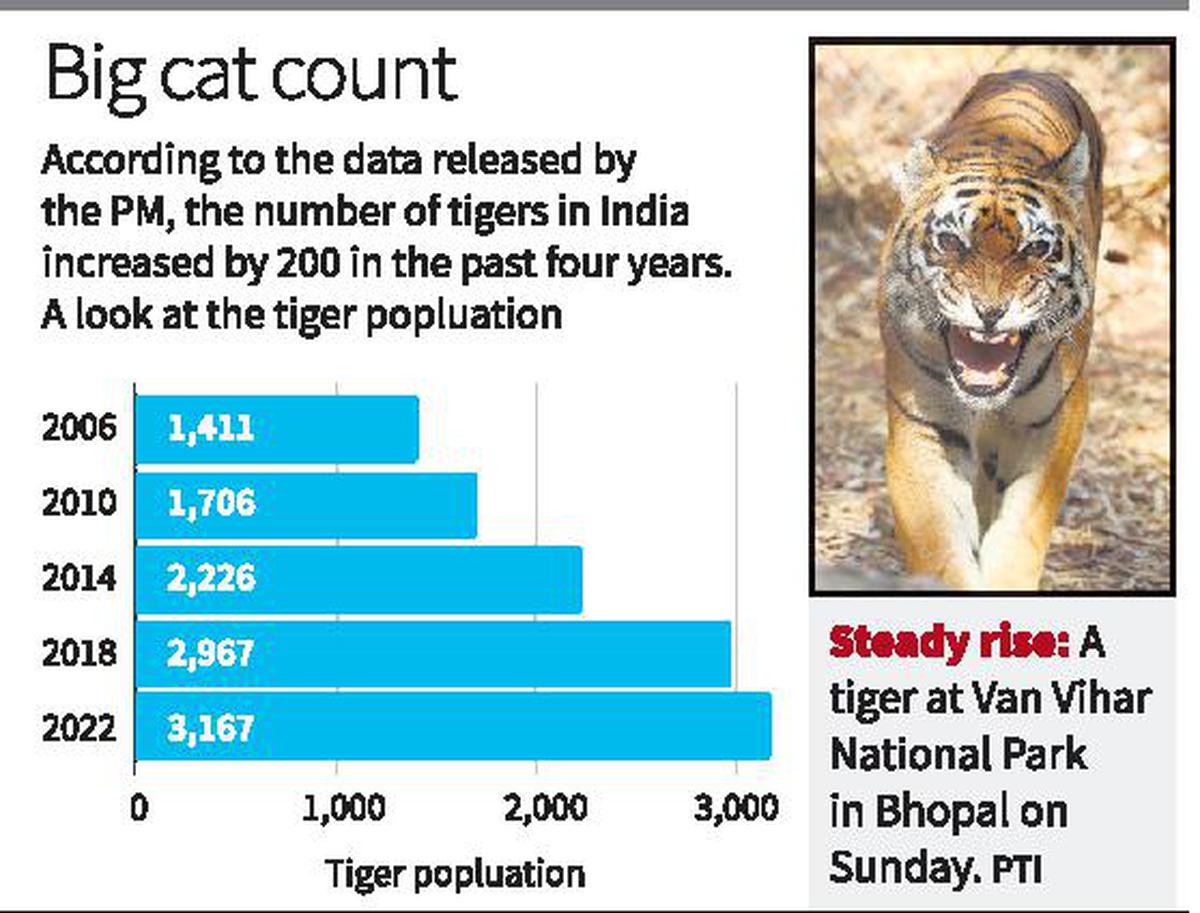
- 21 Sep 2024
In News:
India formally joined the International Big Cat Alliance (IBCA), launched by Prime Minister Narendra Modi on April 9, 2023, during the 50th anniversary of Project Tiger.
- Objective: The IBCA aims to conserve the world's seven big cat species: tiger, lion, leopard, snow leopard, cheetah, jaguar, and puma, focusing on their protection and natural habitats.
- Founding Members: India joins Nicaragua, Eswatini, and Somalia as founding members of the IBCA, which will collaborate with 24 countries and nine organizations.
- Headquarters: The IBCA will be headquartered in India, facilitating efforts to protect big cats and their ecosystems.
Purpose and Goals of IBCA
- Conservation Focus: The alliance addresses common challenges in the protection of the seven big cats, promoting sustainable resource use and tackling climate change.
- Collaboration and Support: The IBCA will provide a platform for member nations to share knowledge, expertise, and support recovery efforts in potential habitats.
- Mobilization of Resources: The alliance aims to mobilize financial and technical resources for effective conservation strategies based on global experiences.
Background and Evolution
- Inception: PM Modi proposed an international initiative against poaching and illegal wildlife trade in 2019, advocating for collaboration among tiger range countries.
- Extension of Project Tiger: The IBCA serves as an extension of India's long-standing commitment to wildlife protection, initially exemplified by the launch of Project Tiger in 1973.
Big Cat Species Overview
- Tiger (Endangered)
- Population: Approx. 3,167 in India, accounting for over 75% of the global population.
- Threats: Habitat loss, poaching, and climate change impacting their territory.
- Lion (Vulnerable)
- Population: Estimated 700 in India.
- Threats: Habitat reduction and targeted poaching.
- Leopard (Near Threatened)
- Population: Around 13,000 in India, with approximately 250,000 globally.
- Threats: Habitat loss and human-wildlife conflict.
- Snow Leopard (Vulnerable)
- Population: 400-700 in India, with global estimates of 4,000-6,500.
- Threats: Poaching, habitat loss, and human disturbances.
- Cheetah (Vulnerable)
- Population: Declined to less than 7,000 globally; declared extinct in India in 1952.
- Threats: Habitat loss, climate change, and illegal trafficking.
- Jaguar (Near Threatened)
- Population: Approximately 173,000 globally, primarily in South America.
- Threats: Deforestation, illegal hunting, and habitat fragmentation.
- Puma (Near Threatened)
- Population: Estimated 50,000, experiencing a decline.
- Threats: Habitat loss and human-wildlife conflict.
Future Initiatives
- Translocation Efforts: Following successful cheetah translocations from Namibia and South Africa, India plans to explore similar initiatives for other big cats.
- Global Cooperation: The IBCA will strengthen conservation efforts by working with a broader network of range countries to combat poaching and promote habitat preservation.
EARTH TO EXPERIENCE A TEMPORARY 'MINI-MOON' IN SEPTEMBER
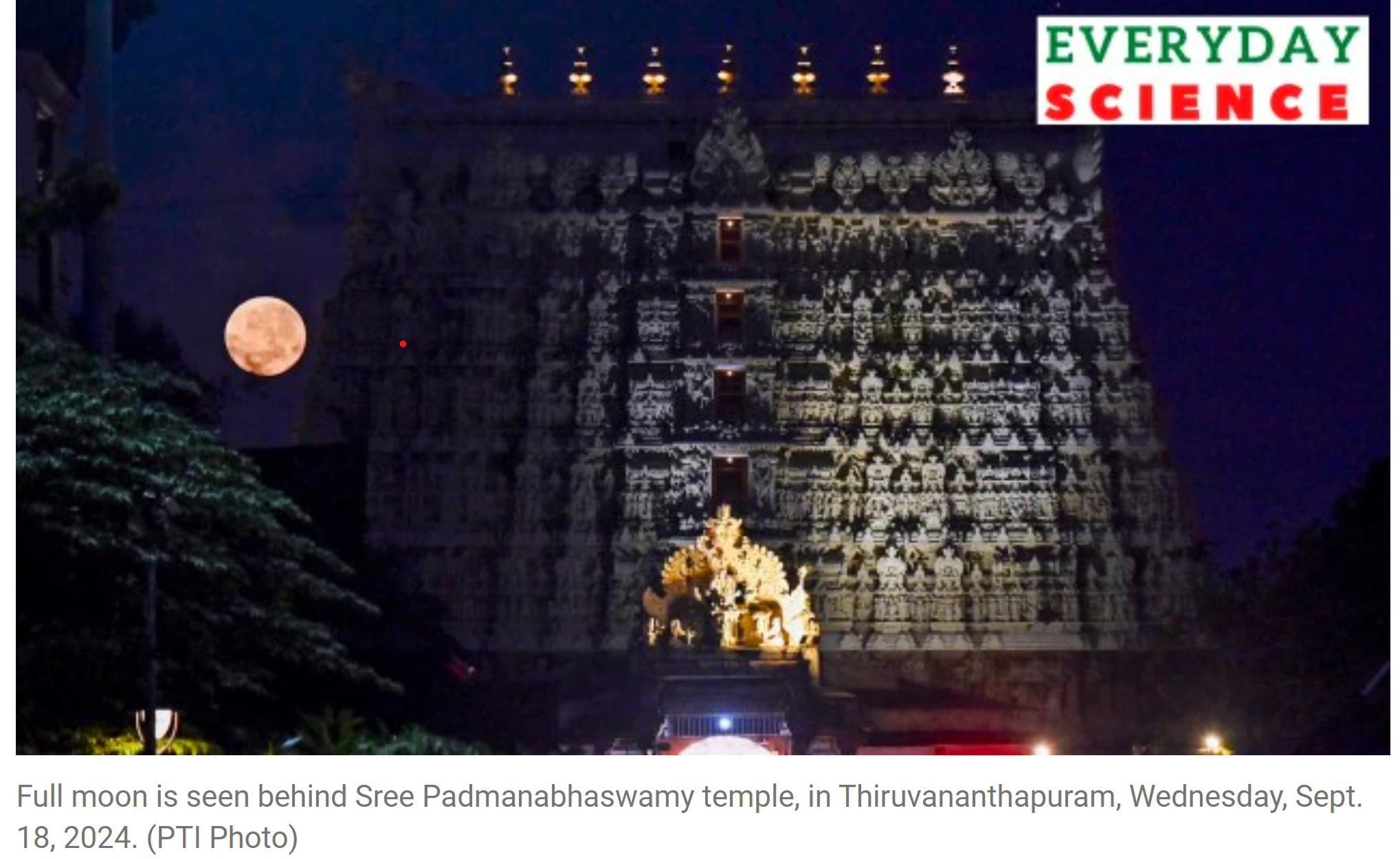
- 20 Sep 2024
In News:
In late September, Earth will temporarily capture a small asteroid known as 2024 PT5. This phenomenon, where an asteroid becomes a "mini-moon," will last for about two months before the asteroid escapes back into space. While Earth has gained mini-moons before, such occurrences are quite rare; most asteroids either miss the planet entirely or burn up upon entering the atmosphere.
What Is a 'Mini-Moon'?
Mini-moons are small asteroids that get temporarily captured by Earth's gravity, orbiting the planet for a limited time. These asteroids are typically small and difficult to detect—only four mini-moons have been identified in Earth's history, and none remain in orbit today. Some objects previously thought to be mini-moons were later determined to be space debris, including rocket stages and satellites.
Details About 2024 PT5
Discovered on August 7 through the NASA-funded Asteroid Terrestrial-impact Last Alert System (ATLAS), 2024 PT5 measures approximately 33 feet in length, making it invisible to the naked eye and standard amateur telescopes. However, it is detectable by professional astronomical equipment.
According to Carlos de la Fuente Marcos, a professor at the Complutense University of Madrid, 2024 PT5 originates from the Arjuna asteroid belt, which consists of space rocks that share similar orbits with Earth. There is also speculation that it could be a fragment resulting from an impact on the moon, as noted by Paul Chodas from NASA's Jet Propulsion Laboratory (JPL).
However, some experts argue that 2024 PT5 may not fully qualify as a mini-moon. For an asteroid to be classified as such, it must complete at least one full orbit around Earth. Instead, 2024 PT5 will follow a horseshoe-shaped path, leading Lance Benner, a principal investigator at JPL, to express skepticism about its classification as a mini-moon.
Significance of the Event
Studying 2024 PT5 will provide valuable insights into asteroids that pass near Earth and their potential for future collisions. Additionally, many asteroids are believed to contain precious minerals and water, which could be harvested for future space missions and resource utilization. Observing this mini-moon will enhance our understanding of these celestial bodies and their behavior in Earth's vicinity.
TRISHNA MISSION
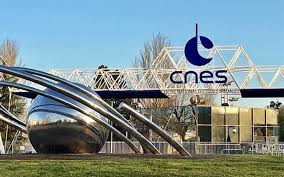
- 20 Sep 2024
In News:
During a recent event, the President of the French Space Agency, Centre National d’Etudes Spatiales (CNES), addressed various topics, celebrating 60 years of collaboration between France and India in space exploration, alongside discussions on the Gaganyaan and TRISHNA missions.
Overview of the TRISHNA Mission
The Thermal Infrared Imaging Satellite for High-resolution Natural Resource Assessment (TRISHNA) is a joint initiative by the Indian Space Research Organisation (ISRO) and CNES.
Mission Objectives
TRISHNA aims to provide high-resolution, timely observations of Earth's surface temperature, monitor vegetation health, and analyze water cycle dynamics. It will facilitate:
- Assessment of urban heat islands
- Detection of thermal anomalies related to volcanic activity and geothermal resources
- Monitoring of snowmelt runoff and glacier behavior
- Collection of data on aerosol optical depth, atmospheric water vapor, and cloud cover
Satellite Payloads
TRISHNA is equipped with two main payloads:
- Thermal Infra-Red (TIR) Payload: Supplied by CNES, this payload includes a four-channel long-wave infrared imaging sensor that enables high-resolution mapping of surface temperature and emissivity.
- Visible-Near Infra-Red-ShortWave Infra-Red (VNIR-SWIR) Payload: Developed by ISRO, this payload consists of seven spectral bands aimed at detailed mapping of surface reflectance, which is crucial for calculating biophysical and radiation budget variables.
The data retrieved from both payloads will aid in solving surface energy balance equations to estimate heat fluxes.
Operational Details
- TRISHNA will operate in a sun-synchronous orbit at an altitude of 761 km, with a scheduled overpass time of 12:30 PM at the equator.
- This orbit will achieve a spatial resolution of 57 meters for land and coastal regions, and 1 km for oceanic and polar areas.
- The mission is expected to have an operational lifespan of five years.
PROJECT 200
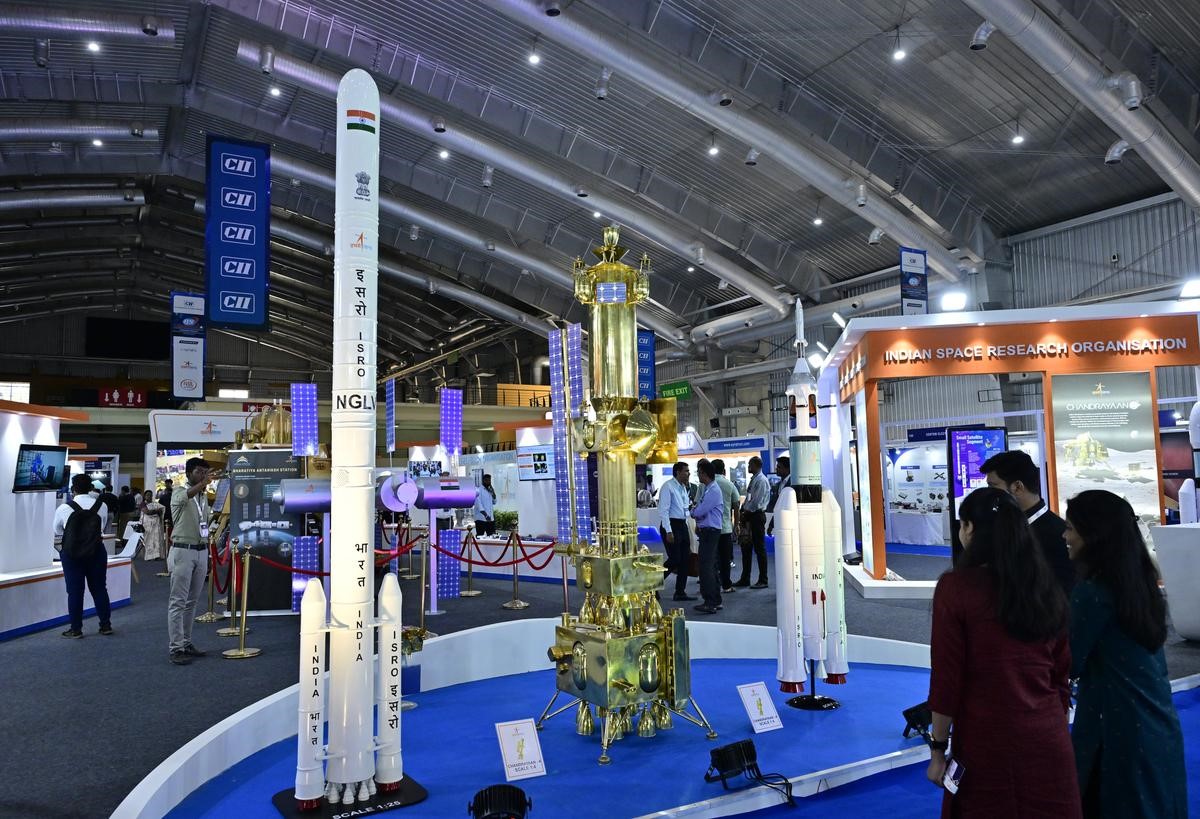
- 20 Sep 2024
In News:
At the Bengaluru Space Expo 2024, Bengaluru-based start-up Bellatrix Aerospace launched Project 200, a pioneering satellite designed to operate in the Ultra-Low Earth Orbit (ULEO) range of 180 km to 250 km.
Revolutionary Capabilities
Bellatrix Aerospace claims that operating in this orbit dramatically enhances satellite capabilities and redefines their connection to Earth. The satellite's launch is part of a technology demonstration mission, showcasing an innovative propulsion system tailored for this low altitude.
Breakthrough Propulsion Technology
Traditionally, satellites are positioned above 450 km to minimize atmospheric interference. However, deploying at 200 km can significantly enhance capabilities, which has been hindered by propulsion technology limitations until now.
Enhanced Performance Metrics
The new propulsion system allows satellites to maintain their orbits for years, avoiding rapid deorbiting due to atmospheric drag. Key benefits of Project 200 include:
- Reduced Communication Latency: Halves the delay in satellite communication.
- Improved Image Resolution: Enhances clarity threefold.
- Cost Efficiency: Significantly lowers overall satellite costs.
Bellatrix's innovative approach not only addresses current limitations but also positions its satellite as a transformative solution for applications in high-resolution Earth observation, telecommunications, and scientific research.
PRADHAN MANTRI JANJATIYA UNNAT GRAM ABHIYAN
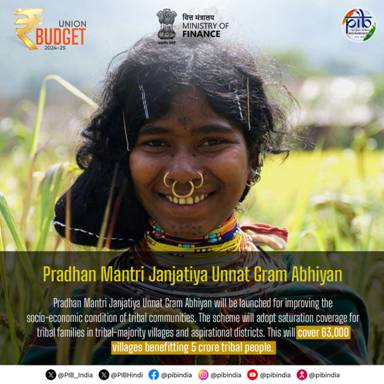
- 20 Sep 2024
In News:
The Union Cabinet, chaired by Prime Minister Narendra Modi, approved the Pradhan Mantri Janjatiya Unnat Gram Abhiyan. This mission aims to enhance the socio-economic conditions of tribal communities by saturating more than 63,000 tribal-majority villages and aspirational districts with a total budget of ?79,156 crore.
Budget Breakdown
- Total Outlay: ?79,156 crore
- Central Share: ?56,333 crore
- State Share: ?22,823 crore
Target Beneficiaries
The initiative is expected to benefit over 5 crore tribal people across 549 districts and 2,740 blocks in 30 States/UTs.
Context
- India's Scheduled Tribe (ST) population stands at 10.45 crore, according to the 2011 Census, with more than 705 tribal communities often residing in remote areas. This mission builds upon the successes of the Pradhan Mantri Janjati Adivasi Nyaya Maha Abhiyan (PM-JANMAN), launched on November 15, 2023.
Mission Objectives
- The mission aims to address critical gaps in social infrastructure, health, education, and livelihood through a comprehensive approach involving 25 interventions across 17 ministries.
Key Goals and Interventions
Goal 1: Developing Enabling Infrastructure
- Housing: Provision of pucca houses under the PMAY (Gramin) for eligible households, along with access to tapped water and electricity.
- Village Infrastructure: Improvement of all-weather road connectivity, mobile connectivity, and educational and health infrastructure.
Goal 2: Promotion of Economic Empowerment
- Skill Development: Enhanced training and self-employment opportunities for ST youth through initiatives like the Skill India Mission and support for tribal marketing.
Goal 3: Universal Access to Good Education
- Education Initiatives: Increase the gross enrollment ratio in schools and higher education, along with setting up tribal hostels for students.
Goal 4: Healthy Lives and Dignified Ageing
- Health Access: Provision of quality health facilities, aiming to meet national standards in maternal and child health indicators through mobile medical units.
Innovative Schemes
- Tribal Home Stay Initiative: Promotion of 1,000 homestays in tribal areas to boost tourism and provide alternate livelihoods. Each household can receive up to ?5 lakh for construction and ?3 lakh for renovations.
- Sustainable Livelihood for FRA Holders: Focus on 22 lakh FRA patta holders, enhancing their rights and providing livelihood support through various government schemes.
- Improving Educational Infrastructure: Upgrading tribal residential schools and hostels to improve local educational resources and retention rates.
- Sickle Cell Disease Management: Establishing Centers of Competence for affordable diagnostic services and prenatal care in regions where the disease is prevalent.
- Tribal Multipurpose Marketing Centres (TMMCs): Setting up 100 TMMCs to improve marketing of tribal products and facilitate better prices for producers.
WHITE REVOLUTION 2.0
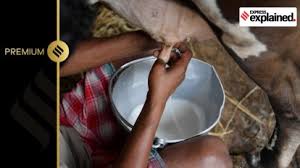
- 20 Sep 2024
- Overview:
- India is the world's largest milk producer, with production reaching 230.58 million tonnes in 2022-23.
- White Revolution 2.0 focuses on cooperative societies, similar to the foundation laid by Operation Flood in the 1970s.
- Objectives of White Revolution 2.0:
- Increase daily milk procurement from 660 lakh kg (2023-24) to 1,007 lakh kg by 2028-29.
- Enhance the market access for dairy farmers, especially in uncovered areas.
- Generate employment and empower women through increased dairy cooperative involvement.
- Current Landscape:
- The Ministry of Cooperation has prioritized expanding the cooperative network since its formation in 2021.
- Dairy cooperatives operate in 70% of India’s districts with approximately 1.7 lakh dairy cooperative societies (DCSs).
- These DCSs serve around 2 lakh villages (30% of total villages) and account for 10% of milk production and 16% of marketable surplus.
- Regional Coverage:
- States like Gujarat, Kerala, and Sikkim have over 70% village coverage by dairy cooperatives.
- In contrast, states such as Uttar Pradesh, Uttarakhand, and Madhya Pradesh have only 10-20% coverage.
- Less than 10% coverage is observed in West Bengal, Assam, and several smaller northeastern states.
- Expansion Plans:
- NDDB plans to establish 56,000 new multipurpose dairy cooperative societies over the next five years and strengthen 46,000 existing DCSs.
- A pilot project initiated in February 2023 aims to set up dairy cooperatives in uncovered gram panchayats in Haryana, Madhya Pradesh, and Karnataka.
- Funding Sources:
- The National Programme for Dairy Development (NPDD) 2.0 will primarily fund White Revolution 2.0.
- Financial assistance will support village-level milk procurement, chilling facilities, and training initiatives.
- Current Production Insights:
- India’s milk production has grown significantly from 17 million tonnes in 1951-52 to 230.58 million tonnes.
- Average yield per animal is 8.55 kg/day for exotic/crossbred and 3.44 kg/day for indigenous animals.
- Per Capita Milk Availability:
- National average: 459 grams/day, higher than the global average of 323 grams/day.
- Significant regional variation: from 329 grams in Maharashtra to 1,283 grams in Punjab.
- Top Milk Producing States:
- Uttar Pradesh (15.72%), Rajasthan (14.44%), Madhya Pradesh (8.73%), Gujarat (7.49%), Andhra Pradesh (6.70%) contribute to 53.08% of total production.
- Indigenous buffaloes contribute 31.94%, while crossbred cattle contribute 29.81%.
- Market Dynamics:
- About 63% of total milk production is marketed; two-thirds of this is in the unorganised sector.
- Cooperatives hold a significant share in the organised sector, providing livelihoods to over 8.5 crore individuals, primarily women.
- Economic Impact:
- The dairy sector represents 40% (?11.16 lakh crore) of the agricultural value output in 2022-23, surpassing cereals.
One Nation, One Election
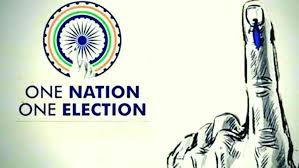
- 19 Sep 2024
In News:
The Union cabinet has recently approved the "One Nation, One Election" proposal, facilitating the conduct of simultaneous elections in India. This initiative follows a report submitted in March by a high-level committee chaired by former President Ram Nath Kovind, which unanimously recommended synchronizing Lok Sabha and State Assembly elections, along with local body polls, within 100 days.
What are Simultaneous Polls?
Simultaneous polls aim to align the timing of Lok Sabha and State Assembly elections across all states, thereby reducing the frequency of elections. Historically, simultaneous elections were held during the first four general election cycles (1952, 1957, 1962, and 1967), but this practice ended in 1959 after the dismissal of the Kerala government. Since then, due to premature dissolutions of various Assemblies, elections have been staggered. Currently, only four states—Andhra Pradesh, Odisha, Arunachal Pradesh, and Sikkim—hold simultaneous elections with the Lok Sabha.
Arguments For and Against
Proponents argue that simultaneous elections can significantly reduce election-related costs, which amounted to approximately ?3,870 crore during the 2014 general elections. They also highlight that the Model Code of Conduct triggers twice in a five-year cycle, leading to extended periods of governance downtime.
Opponents caution that this approach may favor larger political parties with national reach, potentially sidelining smaller regional parties. A 2015 study found that the likelihood of a party winning both Lok Sabha and Assembly elections when held simultaneously is 77%, dropping to 61% if elections are spaced six months apart.
Implementation Process
The committee proposed a two-step implementation:
- Simultaneous Elections: Conduct elections for both the Lok Sabha and State Legislative Assemblies together.
- Synchronizing Local Elections: Hold elections for municipalities and panchayats within 100 days following the general elections.
Following the announcement of the "appointed date," the terms of all State Assemblies constituted after that date would end with the Lok Sabha's term. This could lead to most State governments not completing their five-year terms, even if they maintain a majority.
Required Constitutional Changes
Several amendments to the Constitution have been proposed:
- Introduction of Article 82A: This would require all Legislative Assemblies elected after the appointed date to conclude with the Lok Sabha’s term.
- Amendment of Article 327: Expanding Parliament's powers to include the conduct of simultaneous elections.
- Revisions to Articles 83 and 172: Defining the five-year term as the "full term" and any remaining period after premature dissolution as the "unexpired term."
- Introduction of Article 324A: Empowering Parliament to ensure that municipality and panchayat elections occur alongside general elections.
- Amendments for Union Territories: Ensuring that Assembly elections in Union Territories align with simultaneous elections.
- Single Electoral Roll: Proposing a common electoral roll for all elections, to be managed by the Election Commission of India (ECI).
State Ratification
Under Article 368, amending the Constitution may require ratification by state legislatures. The panel believes that syncing Assembly elections with Lok Sabha elections will not need state ratification, but amendments for a common electoral roll and synchronization of local elections will require cooperation from the states. The ruling BJP, currently in power in several states, will need to navigate upcoming Assembly elections in Haryana, Maharashtra, and Jharkhand to secure this support.
Conclusion
The "One Nation, One Election" initiative aims to streamline India's electoral process, potentially enhancing governance and reducing costs. However, its success depends on achieving political consensus and implementing necessary constitutional amendments, which will require collaboration among various political parties and state governments.
Cabinet approves Chandrayaan-4 mission, first module of Bharatiya Antariksh Station, Venus mission, next-gen launcher
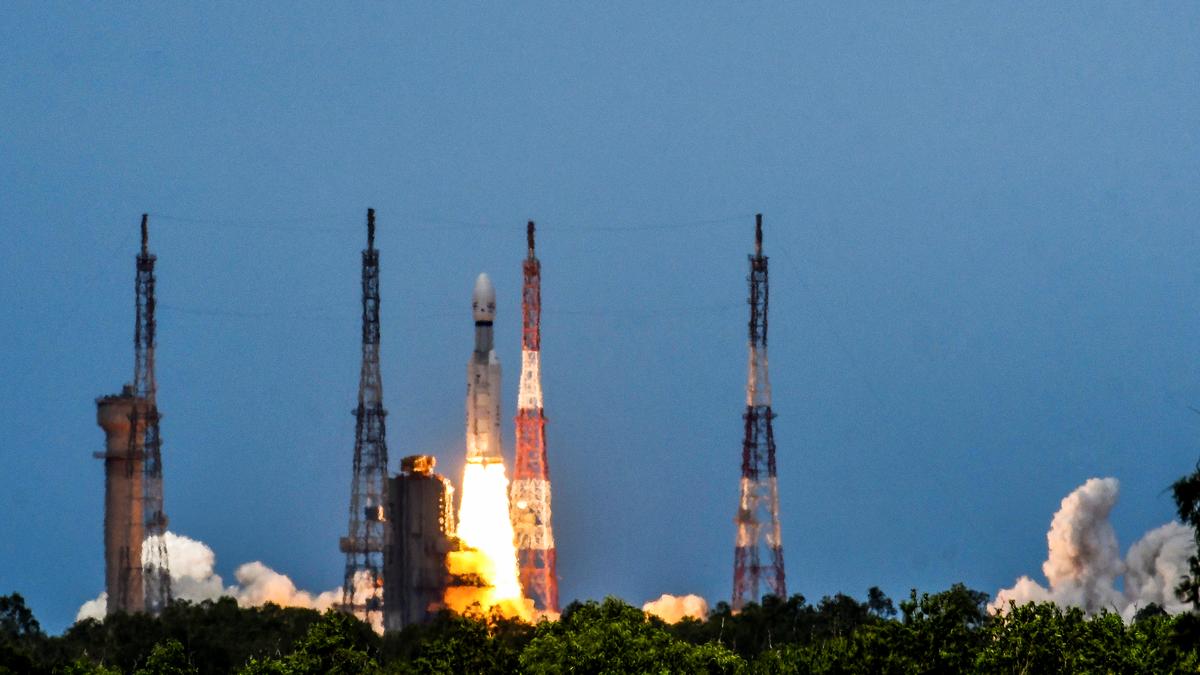
- 19 Sep 2024
In News:
The PM Modi-led Union Cabinet has approved several ambitious space initiatives, marking a significant leap for India's lunar and space exploration programs.
Chandrayaan-4 Mission
- Objective: The fourth lunar mission aims to collect lunar samples, return them safely to Earth, and analyze them.
- Timeline: Expected completion within 36 months post-approval, with a budget of ?2,104 crore.
- Significance: This mission will build foundational technological capabilities for a manned Moon landing planned by 2040.
- Remarks: ISRO Chairman S. Somanath emphasized that the mission's highlight is its low-cost execution and the step-by-step approach to developing the necessary technology.
Bharatiya Antariksh Station (BAS) and Gaganyaan
- BAS Development: Approval for the first module of the Bharatiya Antariksh Station, targeted for launch by 2028, with full completion by 2035.
- Gaganyaan Program: The program’s budget has been revised to ?20,193 crore, with an additional funding of ?11,170 crore to enhance its scope and include precursor missions for BAS.
- Mission Plan: Eight missions are envisaged by 2028, including four under the ongoing Gaganyaan program, development of BAS-1, and four additional missions for technology demonstration and validation.
Venus Orbiter Mission (VOM)
- Launch Timeline: Scheduled for March 2028, VOM will explore Venus's atmosphere, geology, and generate extensive scientific data.
- Budget: The Cabinet approved ?1,236 crore for VOM, with ?824 crore allocated for the spacecraft.
- Research Focus: The mission will provide insights into Venus's transformation and how different planetary environments evolve.
Next-Generation Launch Vehicle (NGLV)
- Development Approval: A reusable NGLV has been greenlit with a budget of ?8,240 crore.
- Capabilities: The new rocket will have three times the payload lifting capability compared to existing vehicles (10 tonnes to 30 tonnes to Low Earth Orbit) and will be cost-effective and commercially viable.
- Features: The NGLV will include reusability options and modular green propulsion systems, enhancing India's capacity for satellite launches.
Net Direct Tax inflows increase by 16.1%
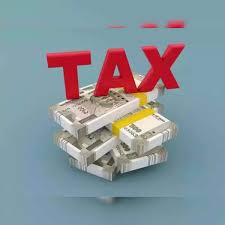
- 19 Sep 2024
In News:
- Advance tax payments from corporates and personal taxpayers have risen by 22.6%, surpassing ?4.36 lakh crore. This increase is driven by a 39.2% rise in Personal Income Tax (PIT) receipts and an 18.2% uptick in corporate taxes.
Key Details:
- Overall net direct tax receipts have reached approximately ?9.96 lakh crore, reflecting a 16.1% increase, though this marks a slowdown from the 22.5% growth recorded as of August 11.
- As of September 17, corporate tax collections grew by 10.5%, while inflows from PIT increased by 18.9%.
- Securities Transaction Tax collections nearly doubled to ?26,154 crore, and refunds surged by 56.5% to ?2.05 lakh crore, according to data from the Income Tax Department.
- Personal taxes continue to outpace corporate taxes, contributing 51.7% of net direct tax receipts for the year.
- Gross tax collections, before accounting for refunds, have risen by 21.5%, totaling ?12.01 lakh crore.
Fast-track special courts (FTSCs)
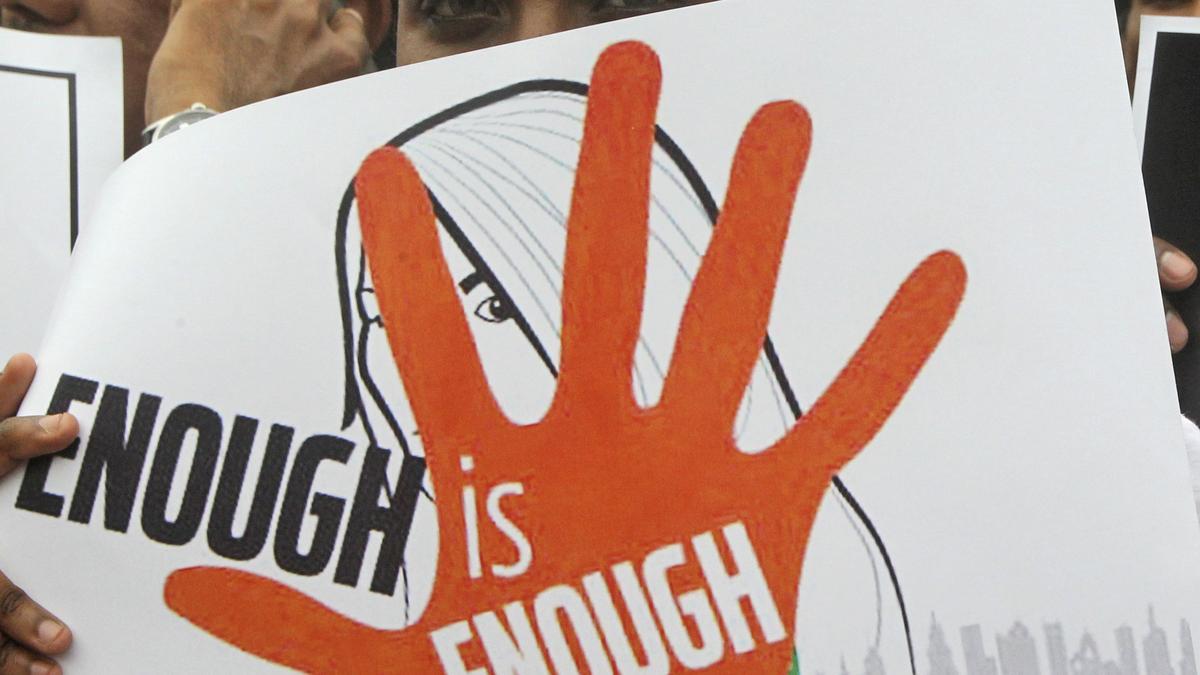
- 19 Sep 2024
In News:
Fast-track special courts (FTSCs) are much more efficient than other courts in handling rape cases and those related to the Protection of Children from Sexual Offences (POCSO) Act, a report released by the India Child Protection.
Key Details:
West Bengal's Performance
- West Bengal recorded less than a 2% disposal rate for rape and POCSO cases, the lowest in India.
- Only five out of 123 earmarked FTSCs are currently functioning in the state.
Overview of the India Child Protection (ICP)
- Established in 2005, the ICP is dedicated to combatting child sexual abuse and related crimes, including:
- Child trafficking
- Exploitation of children in the digital space
- Child marriage
Efficiency of FTSCs
- The ICP report titled "Fast Tracking Justice" highlighted that FTSCs disposed of 83% of cases in 2022, compared to 10% by conventional courts.
- As of August 2023, 755 out of 1,023 earmarked FTSCs were operational.
- Among these, 410 FTSCs are exclusively for POCSO cases.
Historical Context
- The FTSC scheme was launched by the Centre in October 2019, following a Supreme Court directive for ensuring the swift disposal of cases, related to rape and those coming under the Protection of Children from Sexual Offences (POCSO) Act.
- It is a centrally sponsored scheme.
- Implemented by the Department of Justice, Ministry of Law and Justice.
Case Disposal Statistics
- FTSCs have disposed of 52% of the 4,16,638 rape and POCSO cases since the scheme's inception.
- Disposal rates improved from 83% in 2022 to 94% in 2023.
State-wise Disposal Rates
- Top Performing States:
- Maharashtra: 79.5%
- Punjab: 71.3%
- Kerala (Southern India): 69.5%
- Karnataka: 62.2%
- Tamil Nadu: 58.4%
- Lowest Performing States:
- West Bengal: 1.6%
- Jammu and Kashmir: 25%
- Meghalaya: 26.6%
- Delhi: 28.3%
Note: No data was available for Arunachal Pradesh, Ladakh, and Sikkim.
Need for Additional FTSCs
- The ICP report states that India needs at least 1,000 more FTSCs to manage the backlog effectively.
- The backlog of pending cases rose from 2,81,049 in 2020 to 4,17,673 by the end of 2022.
Advocacy for Reform
- Bhuwan Ribhu, a child rights activist, emphasized the urgent need for FTSCs to ensure justice for victims:
- Investment in the safety and security of women and children is crucial.
- All pending cases should be resolved within the next three years.
- Rehabilitation and compensation for victims should be prioritized.
- Time-bound policies for case disposal across all courts are necessary.
Funding and Resource Utilization
- The ICP report recommends optimizing the Nirbhaya Fund, created after the 2012 Delhi gang rape, to support additional FTSCs.
- There is currently ?1,700 crore unutilized, while the requirement for operationalizing new FTSCs is ?1,302 crore.
Strategic Clean Energy Partnership (SCEP)
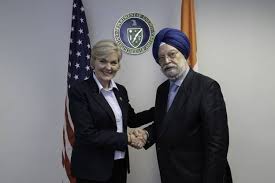
- 18 Sep 2024
In News
The recent Strategic Clean Energy Partnership (SCEP) Ministerial between the United States and India aimed to enhance collaboration in clean energy innovation, energy security, and the transition to clean energy.
About the Partnership
The meeting reviewed significant achievements and future initiatives across five core pillars:
- Power and Energy Efficiency
- Responsible Oil and Gas
- Renewable Energy
- Emerging Fuels & Technologies
- Sustainable Growth
The SCEP facilitates bilateral cooperation on clean energy, focusing on power, efficiency, renewable resources, emerging technologies, and sustainable practices.
Key Highlights of SCEP
Renewable Energy Technology Action Platform (RETAP)
Launched in August 2023, RETAP aims to create actionable roadmaps for:
- Hydrogen
- Long-duration energy storage
- Offshore wind
- Geothermal technologies
Energy Storage Task Force
This public-private initiative seeks to address:
- Policy
- Safety
- Regulatory challenges
It explores alternatives to lithium-ion technologies, with projects like Battery Energy Storage Systems (BESS) in Assam and Haryana focusing on grid integration and renewable energy storage.
Modernization of Power Distribution
The meeting underscored India’s advancements in:
- Smart metering
- Power market reforms
- The Indian Railways’ goal of achieving net-zero emissions by 2030
India has successfully procured 1.5 GW of round-the-clock renewable energy.
Sustainable Aviation Fuel (SAF) & Transport Electrification
A comprehensive workshop was launched to enhance R&D, certification, and partnerships for SAF. India’s PM eBus Sewa scheme aims to deploy 10,000 electric buses, promoting electrification in medium and heavy-duty transport.
Carbon Capture, Utilization, and Storage (CCUS) & Methane Abatement
Cooperation on CCUS technologies and regulatory frameworks has increased, alongside efforts to reduce methane emissions in the oil and gas sector through collaboration with India’s Directorate General of Hydrocarbons.
Public-Private Collaborations
The importance of public-private dialogues in shaping policies and reducing the costs of clean energy technologies was emphasized.
Initiatives Supporting Clean Energy
- International Solar Alliance (ISA): A global coalition led by India, promoting solar energy collaboration among solar-rich countries.
- Renewable Energy Technology Action Platform (RETAP): A US-India initiative focusing on hydrogen, energy storage, offshore wind, and geothermal technologies.
- Green Hydrogen Mission (India): Promotes green hydrogen as a clean energy alternative, especially in heavy industries and transportation.
- EU’s Green Deal: A European strategy aimed at achieving climate neutrality by 2050 through clean energy investments and policies.
- PM KUSUM Scheme (India): Supports solar power generation for irrigation, reducing fossil fuel reliance in agriculture.
India-China Disengagement Along the LAC
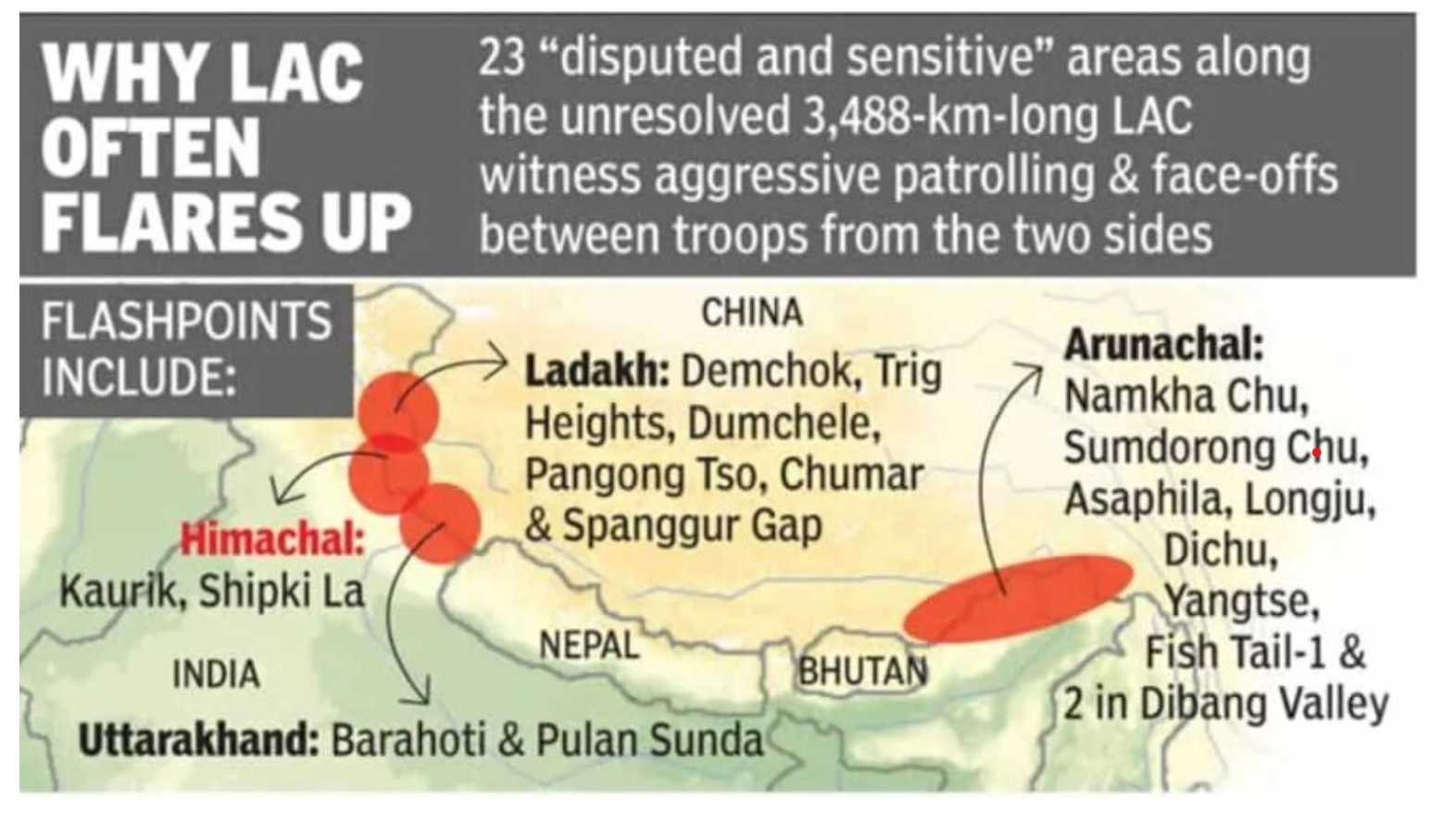
- 18 Sep 2024
Overview of Disengagement Progress
Recently, India’s External Affairs Minister announced that about 75% of the “disengagement problems” with China along the Line of Actual Control (LAC) in Ladakh have been “sorted out.” However, notable areas such as Demchok and the Depsang plains have seen no progress toward resolution over the past two years.
Recent Developments on India-China Disengagement
Verified Disengagement
India and China have mutually agreed to and verified disengagement from five friction points, including:
- Galwan Valley
- Pangong Tso
- Gogra-Hot Springs
Despite this, issues in Demchok and Depsang remain unresolved.
Diplomatic Efforts
Recent high-level diplomatic interactions have facilitated the disengagement along the LAC. Key meetings include:
- India’s National Security Advisor Ajit Doval meeting Chinese Foreign Minister Wang Yi at the BRICS NSAs meeting in St Petersburg, Russia.
- Anticipation for further disengagement is linked to the upcoming BRICS Summit in October in Kazan, Russia, where leaders from both nations are expected to meet.
Significance of Disengagement
The 31st meeting of the Working Mechanism for Consultation & Coordination on India-China Border Affairs (WMCC) was described as “frank, constructive, and forward-looking.” Participants urged both parties to “narrow down the differences” and “find early resolution of the outstanding issues.” The phrase "narrow down the differences" marks a hopeful shift in the dialogue surrounding the border standoff.
Strategic Importance of Depsang Plains and Demchok
Depsang Plains
The Depsang Plains hold strategic significance due to the following reasons:
- The People’s Liberation Army (PLA)’s control threatens India’s position over the Siachen Glacier, potentially encircling the Indian Army between China and Pakistan.
- A coordinated attack from both China and Pakistan would leave India’s military position on the Siachen Glacier vulnerable.
- The Indian Army identifies this region as particularly susceptible to mechanized warfare due to its flat terrain, which also offers direct access to Aksai Chin.
Demchok
Demchok is crucial for several reasons:
- It facilitates effective surveillance of Chinese movements and activities in the Aksai Chin region.
- It supports essential road and communication links that enable rapid military mobilization and logistical support.
Key Areas in the India-China Standoff
Pangong Lake Region
- This area frequently sees patrols from both India and China intersecting.
- The north bank of the lake is divided into eight "fingers," with India claiming territory up to Finger 8 and China disputing it down to Finger 4.
Demchok Region
- Recent reports indicated increased Chinese activity and heavy equipment movement.
Galwan River Basin
- Satellite imagery revealed Chinese tents near the Galwan River basin, suggesting incursions into traditionally held Indian territories.
Gogra Post
- A Chinese military buildup near the Gogra post has escalated tensions.
Daulat Beg Oldie (DBO)
- Chinese encroachments have been reported in the DBO sector, located on the Indian side.
- The DBO airstrip is critical for winter operations and reinforcements, accessible via the 255 km-long Darbuk-Shyok-DBO road.
Windfall tax on crude oil cut to zero
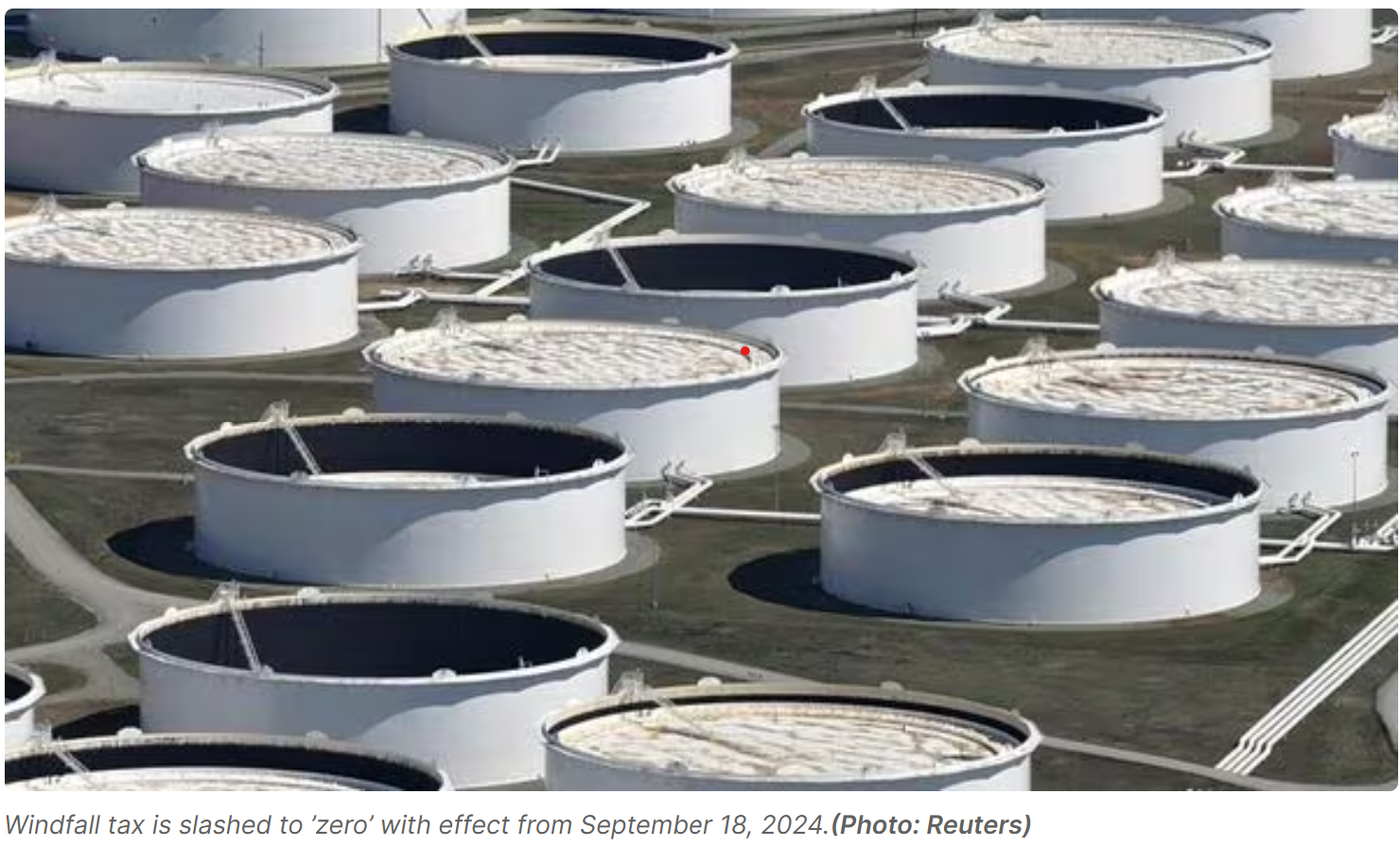
- 18 Sep 2024
In News:
The windfall tax on domestically produced crude oil will be slashed to ‘zero’ effective September 18. This marks its second reduction to nil since its introduction in July 2022.
Key Details:
- The windfall tax is revised every 15 days based on average oil prices over the previous two weeks, charged as Special Additional Excise Duty (SAED) on profits from domestically produced crude oil.
- The last revision, effective August 31, set the windfall tax at ?1,850 per tonne.
- The SAED on the export of diesel, petrol, and jet fuel (ATF) has been set to ‘nil’ following a major decline in crude oil prices.
- This is the second instance since the tax was imposed that it has been reduced to nil; the first reduction occurred on April 4, 2023.
Crude Oil Prices
- Crude oil prices increased by $1 per barrel due to supply chain issues; traders anticipate demand growth if the US Federal Reserve lowers borrowing costs.
- More than 12% of crude production from the US Gulf of Mexico was offline last week due to Hurricane Francine, contributing to price increases in three of the past four sessions. US crude futures rose by $1.31 (1.9%) to $71.40, while Brent crude futures increased by $1 (1.4%) to $73.75 per barrel.
- The windfall tax on crude oil companies was introduced in July 2022 to control extreme profits from gasoline, diesel, and aviation fuel exports.
What is a Windfall Tax?
- A windfall tax is a surtax imposed by governments on businesses or economic sectors that have benefited from economic expansion.
- The purpose is to redistribute excess profits in one area to raise funds for the greater social good; however, this can be a contentious ideal.
- Some individual taxes—such as inheritance tax or taxes on lottery or game-show winnings—can also be construed as a windfall tax.
Nipah viral infection
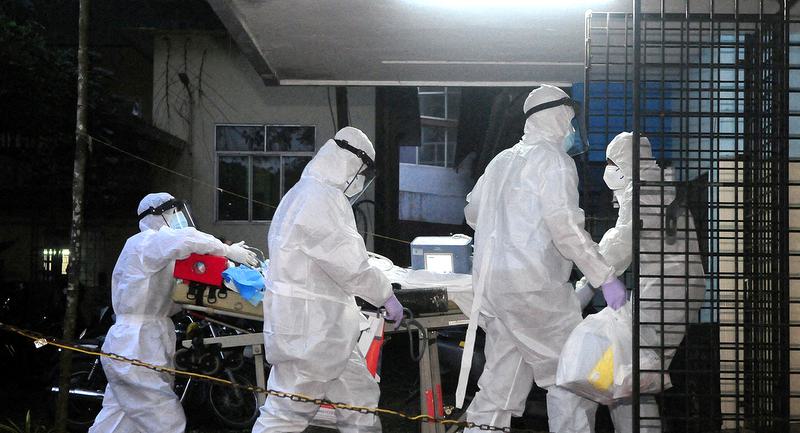
- 17 Sep 2024
In News:
- The district administration has imposed restrictions on social gatherings and made masks mandatory in Malappuram district after a 24-year-old man from Naduvath, near Wandoor, died from the Nipah viral infection.
- Five wards in Tiruvali and Mampad grama panchayats have been declared containment zones. Schools, colleges, madrasas, anganwadis and cinema halls in these zones will remain closed until further notice.
What is Nipah?
- Nipah is a viral infection that mainly affects animals such as bats, pigs, dogs and horses.
- It is known to cause infection in humans when they come in contact with saliva, urine, or faecal matter of infected animals — by eating fruits that have been bitten into by the animals or scaling trees were the bats live.
- It can also be transmitted human to human through close contact, but this is not the most common route of transmission.
- The case fatality ratio of Nipah can be extremely high at 40 to 75%. To compare, even at the peak of the Covid-19 pandemic, the case fatality ratio (CFR) – proportion of people who die among those who test positive – remained at around 3%.
What are the symptoms of Nipah?
People with Nipah start showing symptoms around four to 14 days after getting infected. The infection causes fever, headache, cough, sore throat and difficulty breathing. In later stages, the infection can also lead to brain swelling or encephalitis, leading to confusion, drowsiness, and seizures. With encephalitis, people can go into coma within 24 to 48 hours.
How does the Nipah monoclonal antibody work?
The monoclonal antibody binds with the part of the viral envelope that attaches to the human cells to gain entry. Given early in the disease, it prevents the virus from entering more and more cells, thereby stopping its proliferation and severe disease.
The monoclonal antibody has to be administered in the early stages of the disease, before encephalitis sets in.
India first imported 20 doses of the monoclonal antibodies — enough for ten patients — from a laboratory in Australia’s University of Queensland during the 2018 outbreak. Another 20 doses were requested last year. The monoclonal antibody has so far been used in 14 individuals globally and none of them died.
What can be done to protect yourself?
Usually, Nipah outbreaks are localised, meaning people from the rest of the country are not at risk of the infection at present. People from areas where cases are detected should refrain from coming in close contact with the family members and other contacts of the two case. With the infection transmitted by fruit bats, the government also suggests precautions like washing the fruits and peeling them before consumption. Fruits with signs of bat bites should be discarded. And, palm sap or juice must be boiled before consumption.
All-India Reservoir Status
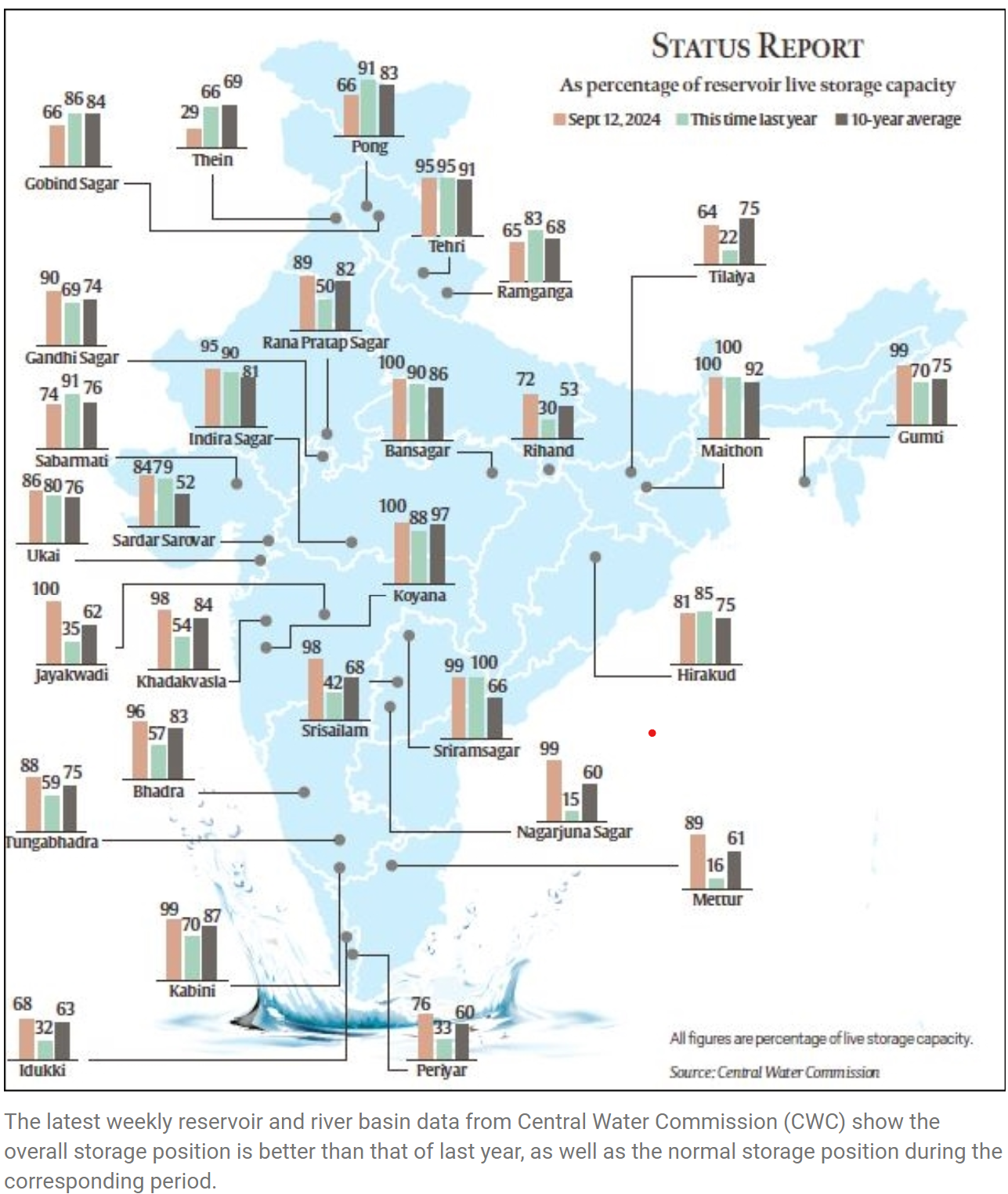
- 17 Sep 2024
In News:
The southwest monsoon has provided significant rainfall across India, with total precipitation at 836.7 mm as of September 12, marking an 8% surplus for this time of year. The Central Water Commission (CWC) reports that reservoir levels are notably higher compared to last year and the 10-year average.
All-India Reservoir Status
- Total Capacity: 180.852 billion cubic metres (BCM) across 155 reservoirs.
- Current Storage: 153.757 BCM, which is 85% of total capacity.
- Last Year Comparison: 119.451 BCM (66%) and 10-year average of 130.594 BCM.
Regional Reservoir Highlights:
- North: 11 reservoirs at 68% capacity (13.468 BCM). Storage is lower than last year (81%) and decadal average (82%). Himachal Pradesh and Punjab saw significant rainfall deficits.
- East: 25 reservoirs at 76% capacity (15.797 BCM), improved from last year's 58%. Despite deficits in Nagaland and Bihar, overall rainfall has supported reservoir levels.
- West: 50 reservoirs at 90% capacity (33.526 BCM), a marked increase from 75% last year. Heavy rainfall, particularly in Gujarat, has led to flooding but boosted water reserves.
- Central: 26 reservoirs at 89% capacity (42.808 BCM), better than last year's 76%. This region has enjoyed normal or above-average rainfall.
- South: 43 reservoirs at 88% capacity (48.158 BCM), significantly higher than 49% last year. Regions traditionally receiving less monsoon rain have also seen improvements.
Comparison to 2023
- Improved Storage: Notable increases in states like Jharkhand, Odisha, West Bengal, and several others.
- Stable: No change in Goa and Telangana.
- Declines: Himachal Pradesh, Punjab, and Uttarakhand show worse conditions compared to last year.
River Basin Status
Major river basins exhibit normal or above storage levels, including:
- Barak (98.72%)
- Krishna (94.53%)
- Cauvery (93.54%)
- Narmada (92.19%)
- Godavari (91.85%)
- Others range from 83% to 66%.
Overall, the 2024 monsoon has led to improved water storage conditions across much of India, benefiting numerous states while highlighting specific areas of concern.
Precision Farming
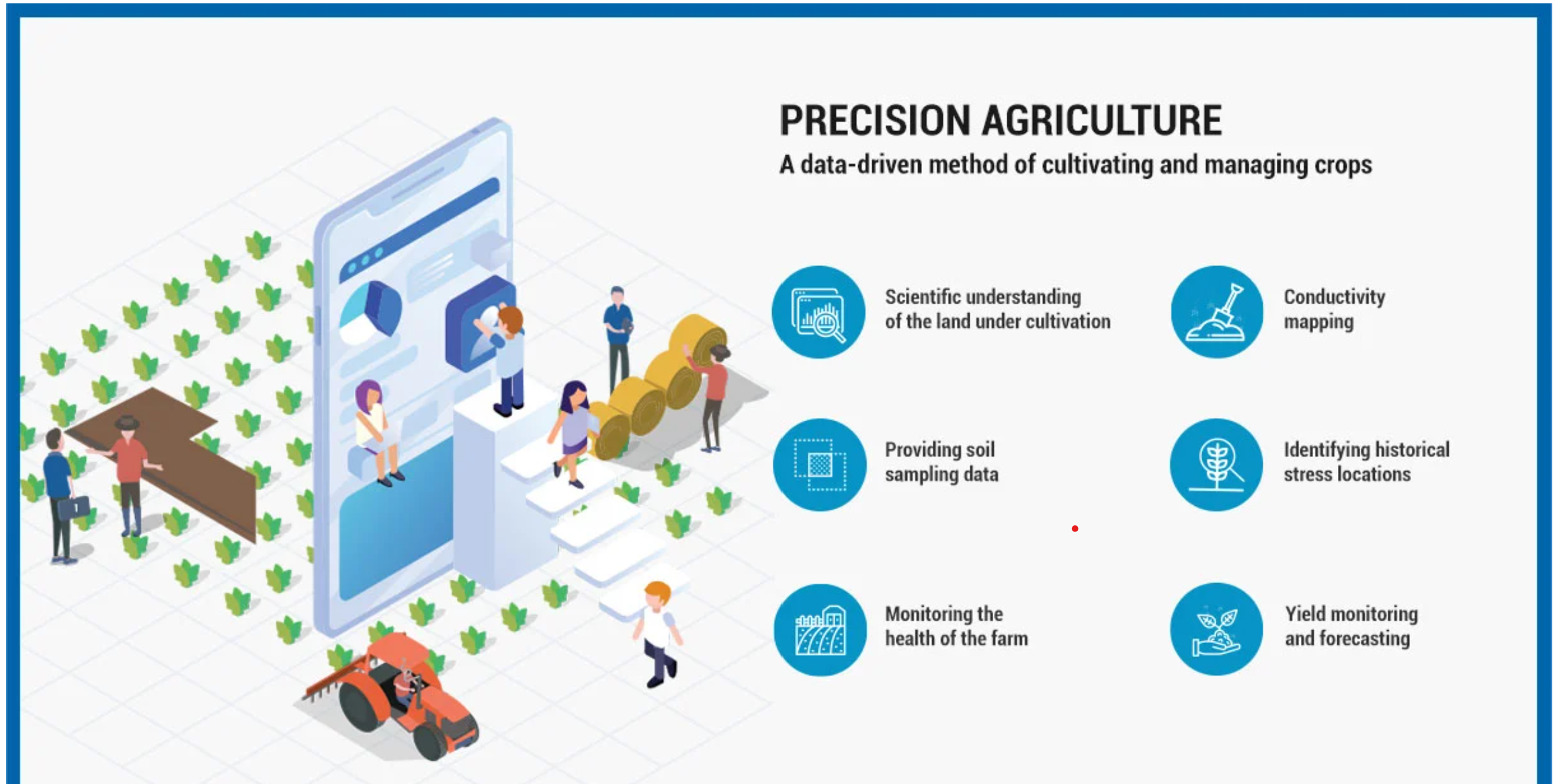
- 17 Sep 2024
In News:
The Centre is contemplating to earmark Rs 6,000 crore to promote precision farming, a modern approach that uses smart technology such as Internet of Things, Artificial Intelligence, drones and data analytics to boost production through maximal use of resources while minimising environmental impact.
Key Details:
- Union Ministry of Agriculture is planning a Smart Precision Horticulture Programme under the existing Mission for Integrated Development of Horticulture (MIDH) scheme.
- It will cover 15,000 acres of land in five years from 2024-25 to 2028-29 and is expected to benefit about 60,000 farmers.
- At present, the Agriculture Infrastructure Fund (AIF), launched during Covid-19, has provisions for financing infrastructure projects for smart and precision agriculture.
- Under AIF, individual farmers as well as farmers’ communities such as Farmer Producer Organization, Primary Agricultural Credit Societies and SHGs are eligible for loans with interest subvention of 3% for using technological solutions in farm practices. These practices include farm/ harvest automation; purchase of drones, putting up specialised sensors on field; use of blockchain and AI in agriculture; remote sensing and Internet of Things (IoT).
Positive impact
- Smart and precision agriculture maximises use of resources like water, fertilisers and pesticides to increase production quality and quantity, all while insulating farmers from vagaries of climate change and other uncertainties, besides ensuring sustainable farming.
Apart from offering financial support, the Centre is also considering collaborating with the Netherlands and Israel, where tech-based modern farming solutions are being used, through Centres of Excellences (CoEs). The number of CoEs is likely to be 100 in the next five years. Under Indo-Israel Agriculture Project, 32 CoEs have already been set up across 14 states.
The Centre has also set up 22 Precision Farming Development Centres (PFDCs) across the country to test new technologies and modify them according to local needs.
According to the Ministry, these 22 PFDCs are located across State/Central Agricultural Universities, ICAR Institutes and IITs in TN, Karnataka, Madhya Pradesh, Odisha, Rajasthan, Haryana, Telangana, West Bengal, Ladakh, UP, Punjab, Gujarat, Uttrakhand, Maharashtra, Chhattisgarh, Jharkhand, Bihar, Himachal Pradesh, Kerala, Manipur and Assam. Besides, funds are released to states/UTs for projects involving use of AI and machine learning, under schemes like the National e-Governance Plan in Agriculture.
What is Precision Agriculture?
- Precision Agriculture is a farm management concept that revolves around the process of observing, measuring, and responding to various inter-and intra-field variability inputs for modern agriculture.
- Popular definitions of Precision Agriculture (PA) or Site-Specific Crop Management (SSCM) describe the term as a technology-enabled approach to farming management that observes, measures, and analyzes the needs of individual fields and crops.
- The goal of precision agriculture is to increase efficiency and productivity, reduce input costs, and improve environmental sustainability.
- Key Advantages:
- A refined set of cultivation practices and choice of crops based on the suitability of land
- Elimination of volatility and risk
- Waste management
- Reduced production costs
- Minimum environmental impact
- Optimized use of fertilizers
- Water management with optimized irrigation practices
- Improved soil health
What is the current status of the introduction of African cheetahs?
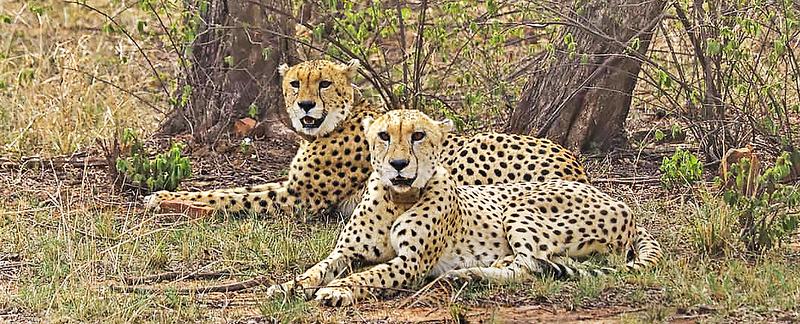
- 17 Sep 2024
In News:
Project Cheetah has encountered significant setbacks, including prolonged captivity and cheetah fatalities; with long-term success hinging on finding sufficient habitat, scientific management, and community support, the project’s future depends on overcoming these enormous challenges.
Overview of Project Cheetah:
- Cheetah Action Plan (CAP): India’s initiative to reintroduce African cheetahs, aimed at species conservation and ecosystem restoration.
- Long-term Commitment: Requires a minimum of 25 years of financial, technical, and administrative support from various governmental bodies.
Challenges Faced:
- Extended Captivity:
- Cheetahs have been held in captivity longer than planned, with only 12 of the original 20 surviving.
- Delays in the release process raise concerns about the cheetahs' fitness for survival in the wild.
- Health Issues and Fatalities:
- Several cheetahs have died due to pre-existing health conditions or management failures before being released.
- Captivity duration exceeds guidelines set by Namibian policy, rendering the cheetahs unfit for release.
- Environmental Adaptation Problems:
- Some deaths attributed to environmental stressors, such as heat stroke and improper management of conditions leading to health complications.
Location for Introduction:
- Kuno National Park: Chosen for its suitable habitat and prey base. However, many cheetahs remain confined, with release dates now pushed to late 2024 or early 2025.
- Additional Sites: Plans for a captive breeding facility in Gujarat and potential releases in Nauradehi Wildlife Sanctuary.
Management and Oversight:
- An expert committee, led by the National Tiger Conservation Authority (NTCA), oversees the project. Responsibilities include negotiating with African countries for cheetah procurement and implementing field activities.
Goals and Measurable Outcomes:
- Short-term Objectives: Achieve a 50% survival rate in the first year, establish home ranges, and generate eco-tourism revenue.
- Long-term Success: Establish a stable cheetah population, improve habitat quality, and support local economies.
Future Considerations:
- The project lacks a definitive sunset clause but will require ongoing management for decades.
- The key question remains whether India has sufficient habitat (4,000 to 8,000 sq. km) to support a viable population of free-ranging cheetahs.
Conclusion: Project Cheetah faces significant challenges in achieving its ambitious conservation goals, raising questions about its long-term viability and management practices.
Why is T.N.’s education funding on hold?
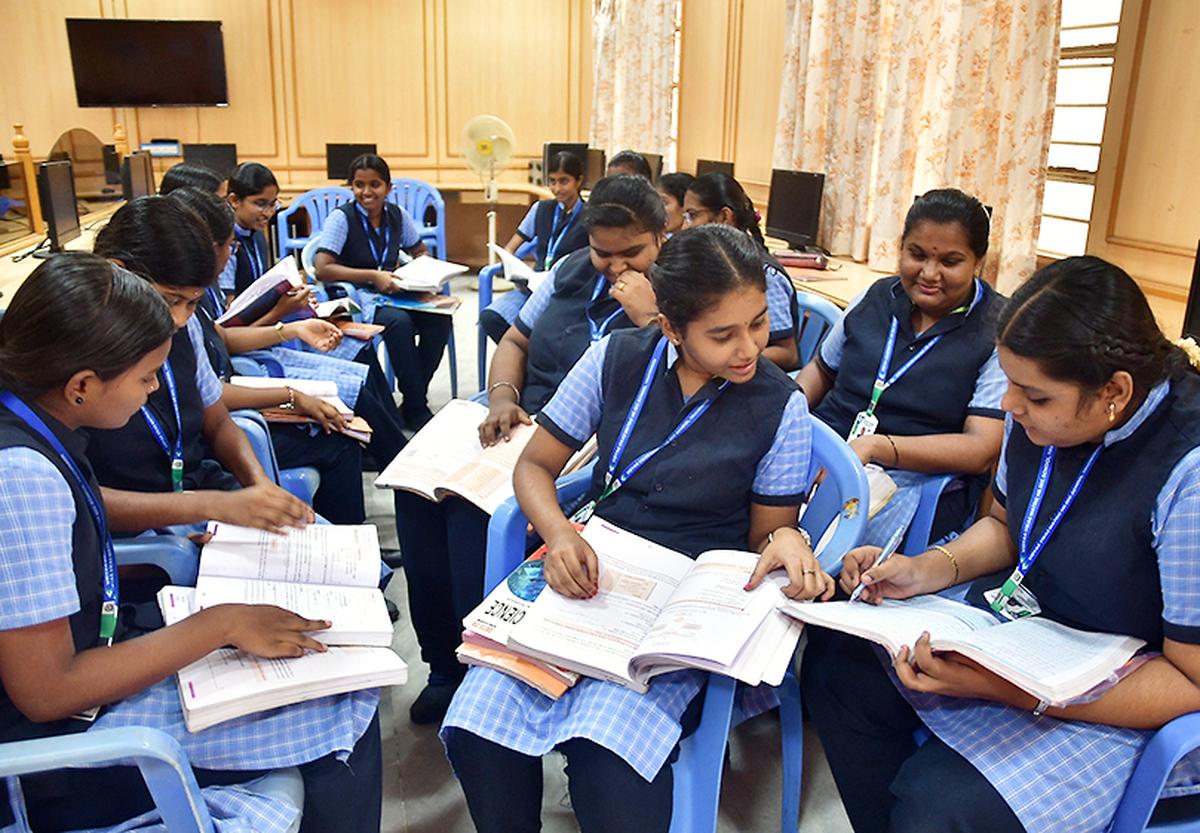
- 17 Sep 2024
In News:
Tamil Nadu is yet to receive this year’s funds from the Union government under the flagship education scheme Samagra Shiksha. According to the State government, the Centre has linked these funds to the complete implementation of the National Education Policy (NEP) 2020, which includes provisions that the State has opposed, including the contentious three-language formula.
What is Samagra Shiksha and why has Tamil Nadu not gotten funds under it?
- Samagra Shiksha is an integrated Centrally-sponsored scheme for school education from nursery till Class 12, with components for teacher training and salaries, special education, digital education, school infrastructure, administrative reform, vocational and sports education, with grants for textbooks, uniforms, and libraries, among others.
- The scheme’s estimated outlay between 2021 and 2026 is ?2.94 lakh crore, with the Centre and States contributing funds in a 60:40 ratio. For 2024-25, Tamil Nadu’s allocation under the scheme amounts to ?3,586 crore of which the Central share is ?2,152 crore, with a first quarterly instalment of ?573 crore, which has not yet arrived halfway through the financial year.
- In a letter to Prime Minister Narendra Modi last month, Tamil Nadu Chief Minister M.K. Stalin accused the Centre of imposing a prerequisite for the fund’s disbursal, namely, the signing of a Memorandum of Understanding (MoU) for another Centrally-sponsored education scheme called PM Schools for Rising India (PM Shri).
- This scheme, being run from 2022-2027, aims to create 14,500 model schools across the country to showcase the implementation of NEP 2020, and has a much smaller project cost of ?27,360 crore. The Centre has sent at least 10 letters to Tamil Nadu from September 2022, asking the State to sign the MoU, which included an agreement to fully implement the NEP.
In March 2024, Tamil Nadu committed to signing the PM Shri MoU due to its link to delayed funding for the larger Samagra Shiksha scheme. However, after signing a modified MoU in July that excluded NEP implementation, the Centre found it unacceptable. In August, Chief Minister M.K. Stalin noted that states signing the MoU received funds, accusing the Centre of “denying funds to the best-performing States” for not complying with NEP. The Union Education Ministry labeled these claims as misleading, but Tamil Nadu has not received Samagra Shiksha funds due to the incomplete MoU.
What is Tamil Nadu’s problem with the NEP 2020?
Tamil Nadu Education Minister highlighted the state's objections to specific NEP elements, such as the three-language formula and curriculum changes. He stated that Tamil Nadu is already implementing many acceptable aspects of the NEP through its own initiatives and warned that linking Samagra Shiksha funds to full NEP compliance infringes on the state's constitutional autonomy in education.
Tamil Nadu’s draft State Education Policy (SEP), submitted in July, clearly indicates that the State wants to stick to the 5+3+2+2 curricular formula, rather than the NEP, which includes the pre-school years. The SEP also proposes five years as the age of entry to Class 1, as against six years in the NEP. The State wants undergraduate college admissions to be based on Class 11 and 12 marks, rather than a common entrance test as proposed by the NEP. The biggest hurdle, however, is the NEP’s three-language formula.
Why does Tamil Nadu oppose the three-language formula?
The NEP 2020 recommends using the mother tongue or local language as the medium of instruction until Class 5, with all students learning at least three languages, including two native to India. This three-language formula has been part of every NEP since 1968 but has faced long-standing opposition in Tamil Nadu, rooted in historical movements against mandatory Hindi.
Tamil Nadu follows a two-language policy, requiring students to study Tamil and English, while allowing the choice of an optional third language, such as Hindi. Education Minister Anbil Mahesh emphasized Tamil's importance in the state's identity alongside English proficiency.
While the NEP offers flexibility and states that no language will be imposed on any state, allowing students to choose Tamil as a third language, all major political parties in Tamil Nadu have rejected the three-language formula. In response to concerns about opposing mother-tongue education, Mahesh affirmed the state prioritizes inclusive learning with Tamil at its core.
Pink Bollworm Attack
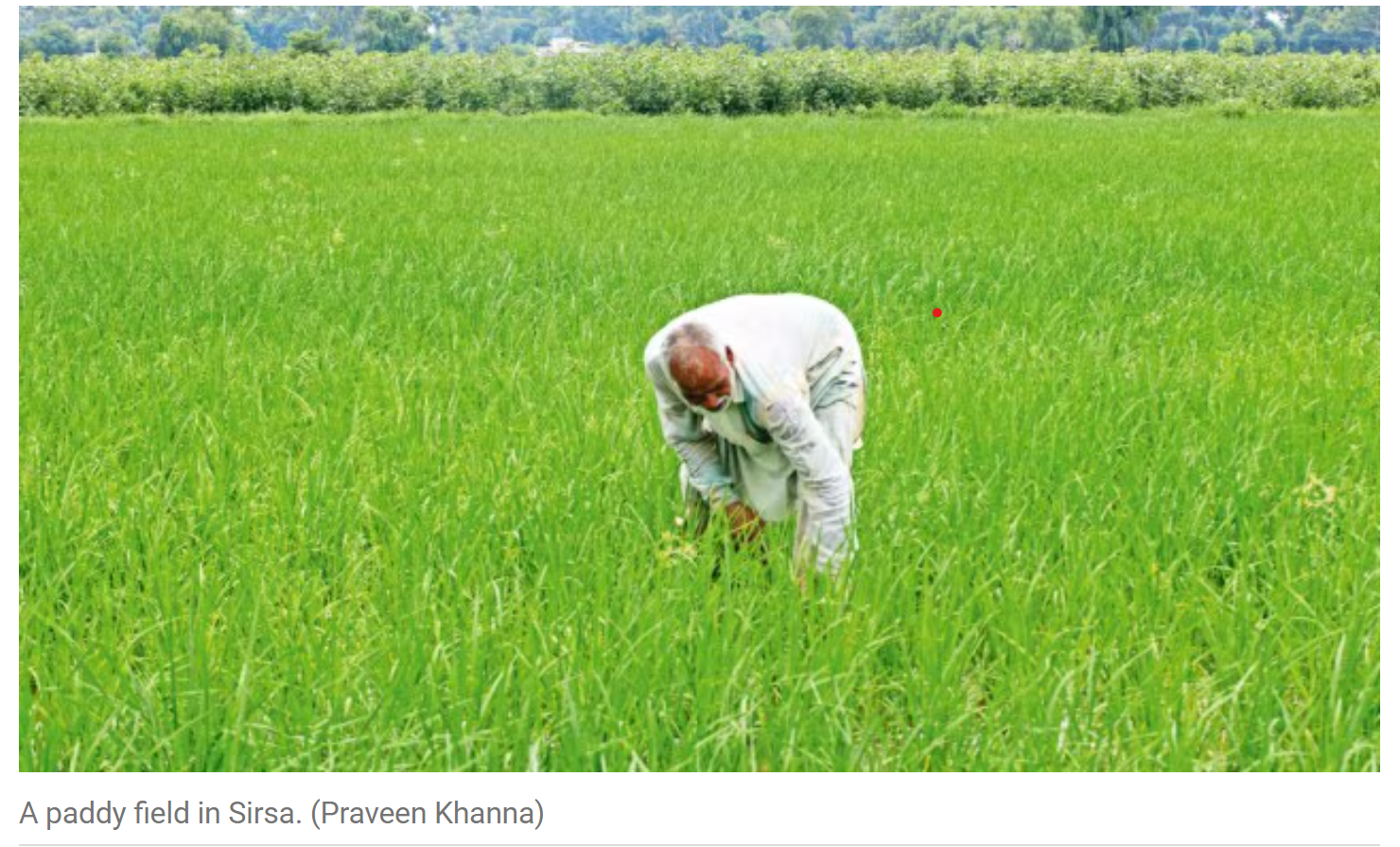
- 16 Sep 2024
In News:
Haryana has seen an overall fall in acreage under cotton cultivation to 4.76 lakh hectares (lh) this kharif season from 6.65 lh in 2023. This has been accompanied by an increase in the area under rice from 15.20 lh to an all-time-high of 16.44 lh in the state.
Key Details:
- The reduction in the cotton area — also reported in neighbouring Rajasthan (from 7.91 lh to 5.13 lh) and Punjab (2.14 lh to 1 lh) — has been attributed mainly to PBW infestation.
- In May-June this year, at the time of sowing, the price of kapas (raw unginned cotton) averaged Rs 6,700-6,800 per quintal in Haryana mandis. This was against the average Rs 11,100-11,200 per quintal two years ago.
Pink Bollworm (PBW) Infestation:
- Impact: The pink bollworm has devastated cotton yields by attacking the bolls, which affects the weight and quality of the cotton. This pest has been particularly damaging since its appearance in 2017-18 and has caused significant losses in Haryana, Rajasthan, and Punjab.
- Spread: PBW spreads through the air and infected crop residues, which harbor larvae and spread to future crops. This infestation has led to a dramatic decrease in cotton acreage.
The spread of pink bollworm
- The pink bollworm first appeared in north India during the 2017-18 season in a few districts in Haryana and Punjab, primarily cultivating Bt cotton, and spread to Rajasthan by 2021.
- PBW primarily spreads through the air. Residue of infected crops, often left by farmers on the field to be used as fuel, can also harbour PBW larvae which can then infect future crops. Infected cotton seeds are another reason behind the pest’s spread.
Economic Impacts:
- Price Decline: The price of kapas (raw cotton) has dropped from Rs 11,100-11,200 per quintal to Rs 6,700-6,800, significantly impacting farmers’ profitability.
- Farmer Losses: Farmers like Shyam Sundar have reported substantial losses due to low yields and poor quality, leading them to switch to more profitable and reliable crops like paddy and guar.
Transition to Paddy
Water Requirements:
- Challenges: Paddy requires much more water compared to cotton. Farmers need to flood their fields, which is challenging in regions where groundwater is saline or limited.
- Current Practices: Despite the increased water requirements, some farmers have transitioned to paddy due to its potentially better economic returns, especially when paddy prices are relatively high.
Monsoon and Irrigation:
- Weather Dependence: The monsoon this year has been favorable, allowing some farmers to successfully grow paddy. However, reliance on monsoon and supplementary irrigation from tubewells is not sustainable in the long term.
Government and Expert Perspectives
Government Incentives:
- Subsidies: The Haryana government is offering incentives for farmers switching to alternative crops and using water-saving techniques like direct seeding of paddy.
- Support: While there is support available, the effectiveness and reach of these measures are mixed, and some farmers have faced issues with insurance claims and financial aid.
Expert Opinions:
- Temporary Solution: Experts caution that while switching to paddy may be a temporary solution, it is not sustainable long-term due to water scarcity and environmental concerns.
- Environmental Impact: Paddy cultivation contributes to higher carbon and methane emissions, which adds to the environmental challenges in the region.
Economic and Industry Implications
Cotton Industry Concerns:
- Reduced Production: Lower cotton production affects the entire supply chain, from textile manufacturers to cottonseed oil and meal producers.
- Potential Recovery: There is hope that reduced PBW infestation this year may lead to a recovery in cotton yields, but the extent of this recovery remains uncertain.
NIDHI Companies

- 16 Sep 2024
In News:
The Registrar of Companies has imposed penalties on over two dozen Nidhi companies for breaches of the Companies Act, such as delayed financial filings and share allotment issues. Fines range from ?20,000 to ?12.5 lakh, with Sri Sathuragiri Nidhi receiving the highest penalty.
What is Nidhi Company?
A Nidhi Company is a unique NBFC regulated under the Companies Act, 2013, and the Nidhi Rules, 2014. Nidhi company signifies that these companies promote thrift and savings habits among their members by accepting deposits and providing loans. They primarily cater to their local communities and operate within a defined geographical area.
Requirements for Obtaining Nidhi Company Status:
Within One Year of Registration:
- Minimum Membership: A Nidhi company must have at least 200 members within one year of starting operations.
- Financial Strength: The company's net owned funds (equity share capital + free reserves - accumulated losses - intangible assets) must be ?10 lakh or more.
- Deposit Security: Unencumbered term deposits (deposits not pledged as security) must be at least 10% of the total outstanding deposits.
- Healthy Debt Ratio: The ratio of net owned funds to deposits should not exceed 1:20. This ensures the company has sufficient capital to back its deposit liabilities.
Compliance Filing:
If a Nidhi company meets all the above conditions within the first year, it must file form NDH-1 along with the prescribed fees within 90 days from the end of that financial year. The form needs to be certified by a practicing Chartered Accountant (CA), Company Secretary (CS), or Cost and Works Accountant (CWA).
Extension Option:
Companies that are unable to meet the requirements within the first year can apply for an extension of one additional financial year. To do so, they need to submit form NDH-2 to the Regional Director within 30 days from the end of the first financial year.
Strict Enforcement:
If a Nidhi company fails to meet the requirements even after the second financial year, it will be prohibited from accepting new deposits until it complies with the regulations. Additionally, it may face penalties for non-compliance.
Benefits of Nidhi Company Registration
Nidhi companies offer several advantages for entrepreneurs:
- Tax benefits: They can enjoy tax exemptions on their profits under certain conditions.
- Reduced regulatory burden: Compared to other NBFCs, Nidhi companies face less stringent regulations.
- Local focus: They cater to the specific financial needs of their communities, fostering local economic development.
- Enhanced credibility: Registration brings legitimacy and builds trust among members.
Eligibility for Nidhi Company Registration
For registration of Nidhi company, the following requirements must be met:
- Minimum members: A minimum of seven members are required at the time of incorporation.
- Minimum capital: The minimum paid-up capital must be Rs. 5 lakh.
- Business restrictions: Nidhi companies cannot undertake activities like issuing debentures or underwriting insurance.
- Profit distribution: They can only distribute a maximum of 20% of their net profit as dividend.
BHASKAR Platform
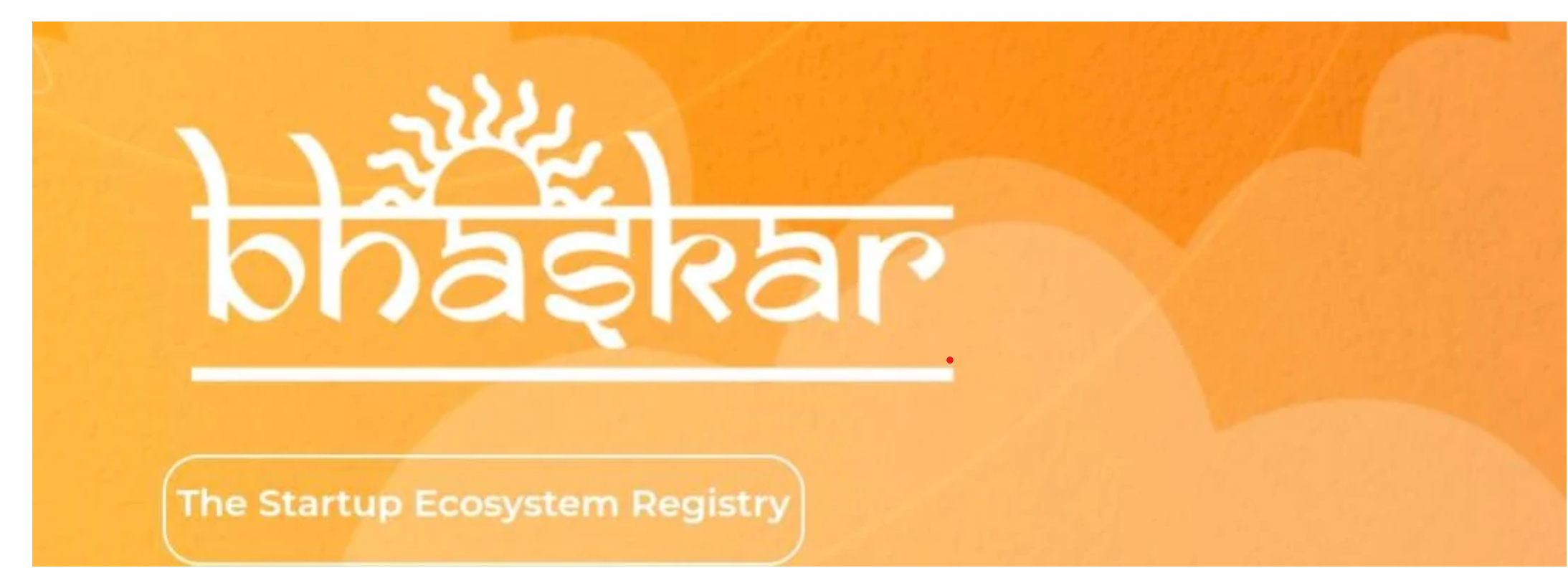
- 16 Sep 2024
In News:
The Department for Promotion of Industry and Internal Trade (DPIIT), Ministry of Commerce and Industry, is set to launch a groundbreaking digital platform aimed at strengthening India’s startup ecosystem.
Key Details:
- The Bharat Startup Knowledge Access Registry (BHASKAR) initiative, under the Startup India program, is a platform designed to centralize, streamline, and enhance collaboration among key stakeholders within the entrepreneurial ecosystem, including startups, investors, mentors, service providers, and government bodies.
- This initiative aligns with the Government of India’s vision to transform India into a global leader in innovation and entrepreneurship, reinforcing the country’s commitment to the startup movement.
Empowering Innovation Through a Centralized Platform
- India, home to over 1,46,000 DPIIT-recognized startups, has rapidly become one of the world’s most dynamic startup hubs. BHASKAR seeks to leverage this potential by providing an all-encompassing, one-stop digital platform that addresses the challenges faced by entrepreneurs and investors alike.
- By serving as a centralized registry, BHASKAR will enable seamless access to a wide array of resources, tools, and knowledge that will help fuel the entrepreneurial journey from ideation to execution.
- BHASKAR is designed to foster a conducive environment for networking, collaboration, and growth within the startup ecosystem.
- By providing personalized BHASKAR IDs for each stakeholder, the platform will facilitate easier interaction, enhance searchability, and allow for efficient discovery of relevant opportunities and partnerships.
Key Features of BHASKAR
- The primary goal of BHASKAR is to build the world’s largest digital registry for stakeholders within the startup ecosystem. To achieve this, the platform will offer several key features:
- Networking and Collaboration: BHASKAR will bridge the gap between startups, investors, mentors, and other stakeholders, allowing for seamless interaction across sectors.
- Providing Centralized Access to Resources: By consolidating resources, the platform will provide startups with immediate access to critical tools and knowledge, enabling faster decision-making and more efficient scaling.
- Creating Personalized Identification: Every stakeholder will be assigned a unique BHASKAR ID, ensuring personalized interactions and tailored experiences across the platform.
- Enhancing Discoverability: Through powerful search features, users can easily locate relevant resources, collaborators, and opportunities, ensuring faster decision-making and action.
- Supporting India’s Global Brand: BHASKAR will serve as a vehicle for promoting India’s global reputation as a hub for innovation, making cross-border collaborations more accessible to startups and investors alike.
Driving Forward India’s Startup Ecosystem
- The launch of BHASKAR marks a significant step forward in the government’s ongoing efforts to promote innovation, entrepreneurship, and job creation. It will serve as a central hub where startups, investors, service providers, and government bodies can come together to collaborate, exchange ideas, and accelerate growth.
- By facilitating easy access to knowledge and resources, BHASKAR will help unlock the full potential of India’s startup ecosystem, driving the country’s emergence as a global leader in entrepreneurship. The platform will be pivotal in creating a more resilient, inclusive, and innovation-driven economy, laying the foundation for a prosperous future.
BHASKAR: Shaping the Future of India's Startups
As India’s startup ecosystem continues to grow, BHASKAR will play a critical role in enhancing the country’s global standing in entrepreneurship. By fostering a culture of collaboration, the platform will help startups overcome challenges and build innovative solutions that address the needs of tomorrow.
With the launch of BHASKAR, the Government of India is reinforcing its commitment to making India a leader in global innovation, entrepreneurship, and economic growth.
International Day of Democracy
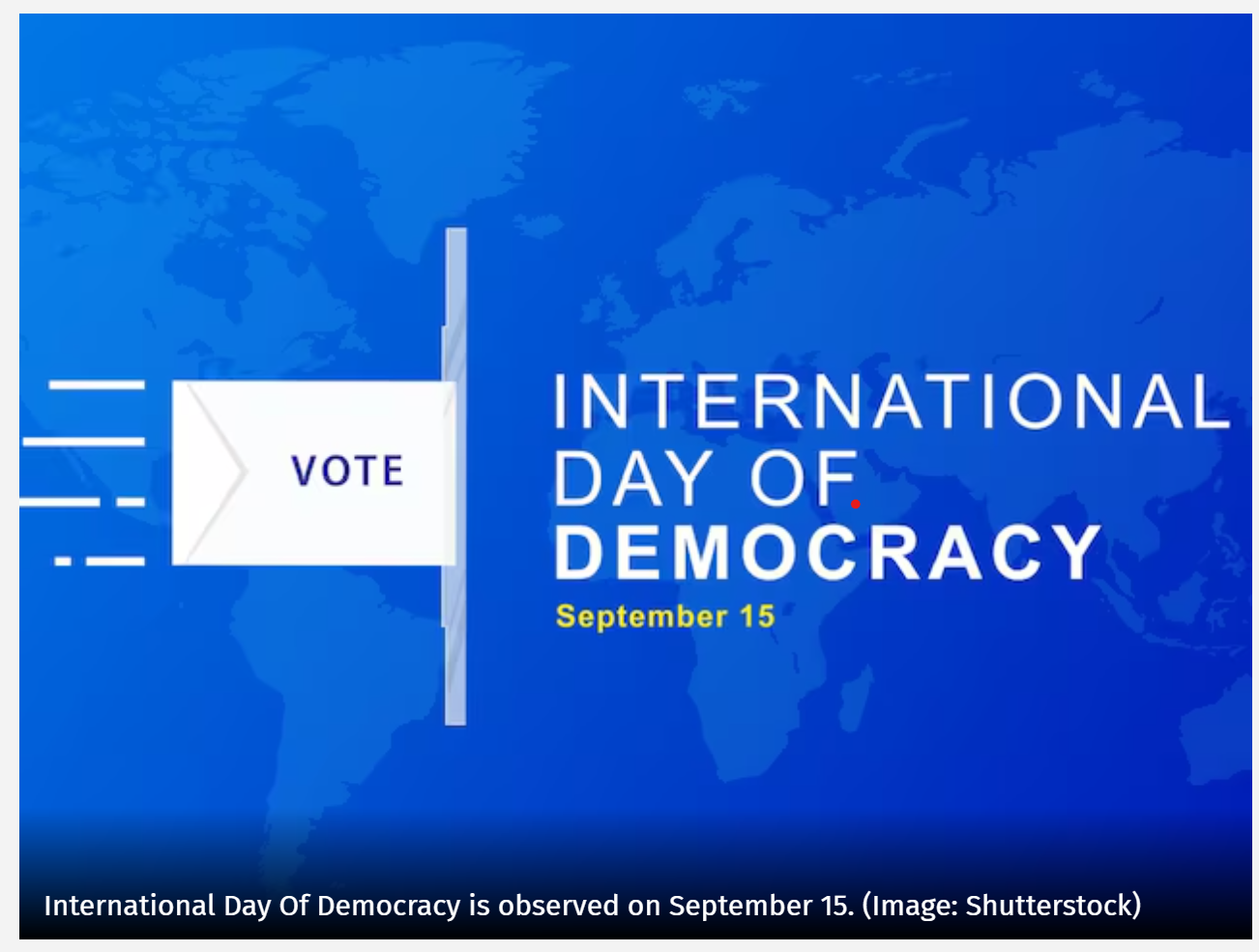
- 16 Sep 2024
In News:
Karnataka marked the 'International Day of Democracy' by forming a 'historic' 2,500-km-long human chain as a symbol of equality, unity, fraternity, and participative governance. The massive human chain, which according to the Karnataka government will be the "world's longest", is being formed across the state from Bidar to Chamarajanagar, covering all 31 districts.
Key Highlights:
- Democracy Day is an annual celebration observed on September 15.
- The United Nations General Assembly established this day in 2007 to emphasise the global significance of democracy. It serves as a reminder that democracy is not merely a fixed condition, but an ongoing pursuit. It calls for active engagement from international organizations, nation-states, civil society and people to pursue the democratic idea.
International Day of Democracy History
- The International Day of Democracy was accredited by the United Nations General Assembly (UNGA) on November 8, 2007, by passing a resolution entitled “Support by United Nations system of efforts of governments to promote and consolidate new or restored democracies.”
- September 15 was chosen to coincide with the anniversary of the Inter-Parliamentary Union’s Universal Declaration on Democracy, which was adopted in Geneva on September 15, 1997.
- This declaration outlines the tenets of democracy proclaiming that democracy is “a system of government based on the freely expressed will of the people to determine their own political, economic, social and cultural systems and their full participation, through free and fair periodic elections, in the composition of their representative government.”
- After the Universal Declaration on Democracy, Qatar spearheaded the campaign to observe an International Day of Democracy at the United Nations.
- The first-ever International Day of Democracy was held in 2008.
International Day of Democracy Significance
- The International Day of Democracy evaluates global democracy, emphasising that it requires commitment and engagement from the international community, the national state governments, civil societies and individuals.
- The day also reminds the nations of the need to uphold the principles of democracy such as the freedom of speech enshrined in Article 19 of the United Nations Universal Declaration of Human Rights.
Trilobite fossils from upstate New York reveal extra set of legs
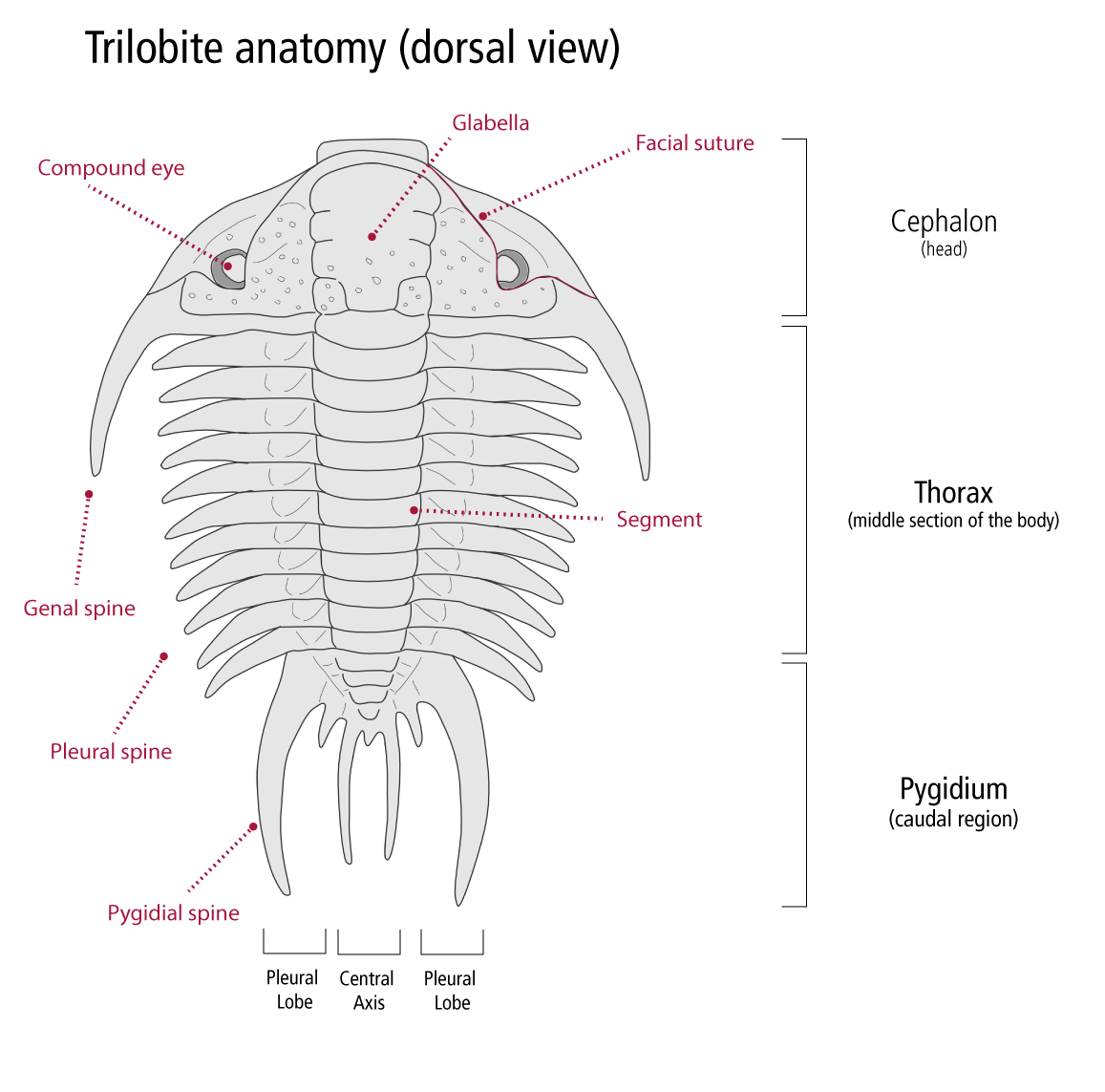
- 15 Sep 2024
In News:
A new study finds that a trilobite species with exceptionally well-preserved fossils from upstate New York has an additional set of legs underneath its head.
Key details:
- The research, led by the American Museum of Natural History and Nanjing University in China, suggests that having a fifth pair of head appendages might be more widespread among trilobites than once thought.
- Published in the journal Palaeontology, the study helps researchers better understand how trilobite heads are segmented.
Trilobites
- Trilobites are a group of extinct arthropods whose living relatives include lobsters and spiders.
- Like other arthropods, the bodies of trilobites are made up of many segments, with the head region comprised of several fused segments.
- As with other parts of the trilobite body (the thorax and tail), these segments were associated with appendages, which ranged in function from sensing to feeding to locomotion.
- Trilobites are a group of extinct marine arthropods that first appeared around 521 million years ago, shortly after the beginning of the Cambrian period, living through the majority of the Palaeozoic Era, for nearly 300 million years. They died out at the end of the Permian, 251 million years ago, killed by the end Permian mass extinction event that removed over 90% of all species on Earth. They were very diverse for much of the Palaeozoic, and today trilobite fossils are found all over the world.
- The name 'trilobite' comes from the distinctive three-fold longitudinal division of the dorsal exoskeleton into a central axis, flanked on either side by lateral (pleural) areas.
Two ways
The segments in the trilobite head can be counted in two different ways: by looking at the grooves (called furrows) on the upper side of the trilobite fossil’s hard exoskeleton, or by counting the pairs of preserved antennae and legs on the underside of the fossil. The soft appendages of trilobites are rarely preserved, though, and when looking at the segments in the trilobite head, researchers regularly find a mismatch between these two methods.
In the new study, researchers examined newly recovered specimens of the exceptionally preserved trilobite Triarthrus eatoni from upstate New York. These fossils, known for the gold shine of the pyrite replacement preserving them, show an additional, previously undescribed leg underneath the head.
Resolving mismatch
By making comparisons with another trilobite species, the exceptionally preserved Olenoides serratusfrom the Burgess Shale in British Columbia, the researchers propose a model for how appendages were attached to the head in relation to the grooves in the exoskeleton.
This model resolves the apparent mismatch and indicates that the trilobite head included six segments: an anterior segment associated with the developmental origin of the eyes and five additional segments, associated with one pair of antennae and four pairs of walking legs, respectively.
PM Gram Sadak Yojana-IV
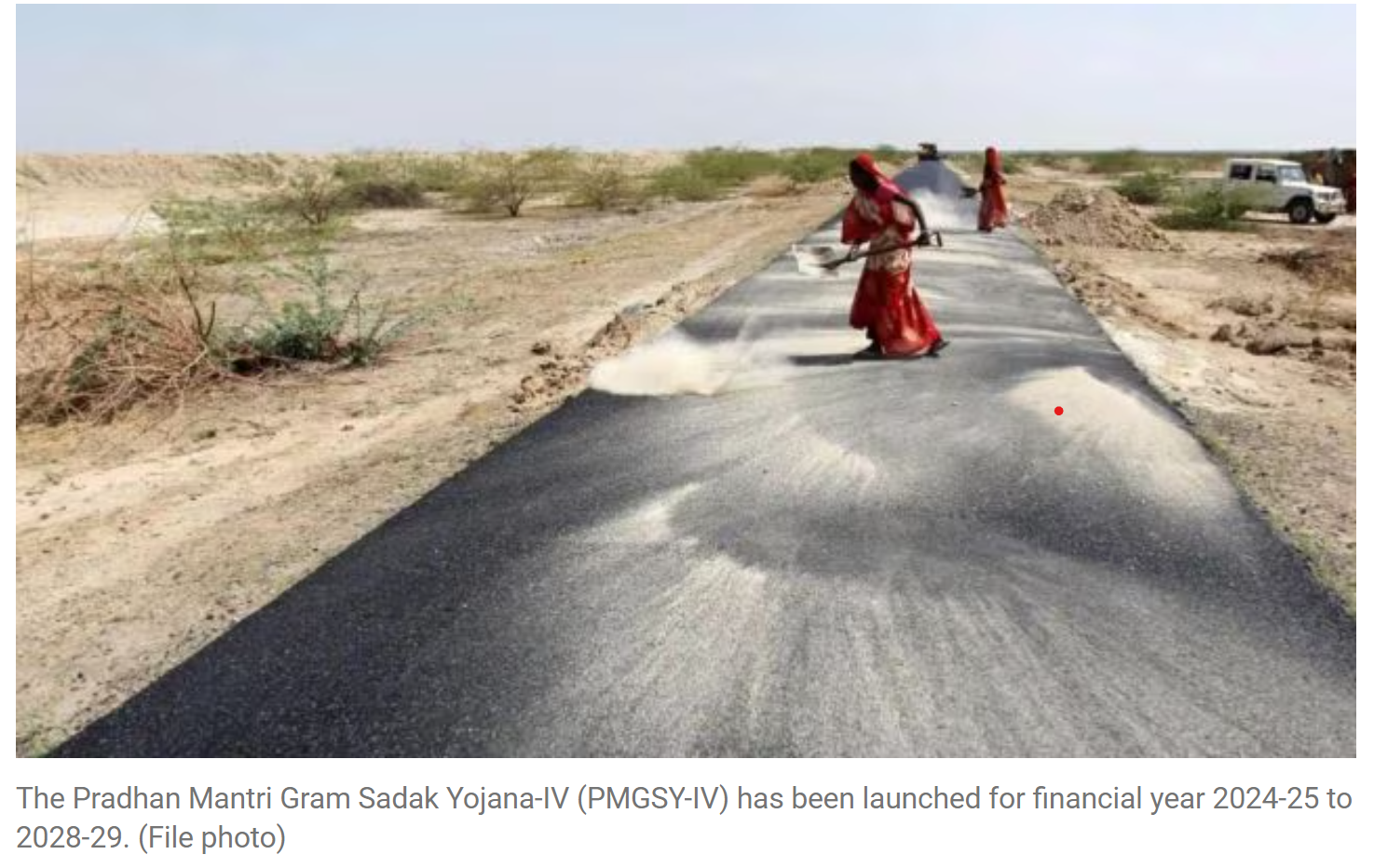
- 15 Sep 2024
In News:
- The Union Cabinet, chaired by the Prime Minister Shri Narendra Modi approved the proposal of the Department of Rural Development for “Implementation of the Pradhan Mantri Gram Sadak Yojana - IV (PMGSY-IV) during FY 2024-25 to 2028-29”.
- The financial assistance is to be provided for the construction of 62,500 Kms road for providing new connectivity to eligible 25,000 unconnected habitations and construction/upgradation of bridges on the new connectivity roads. Total outlay of this scheme will be Rs. 70,125 crore.
Details of the Scheme:
The details of the approval given by the Cabinet are as follows:
- Pradhan Mantri Gram Sadak Yojana -IV is launched for financial year 2024-25 to 2028-29. Total outlay of this scheme is Rs. 70,125 crore (Central Share of Rs. 49,087.50 crore and Sate Share of Rs. 21,037.50 crore).
- Under this scheme 25,000 unconnected habitations of population size 500+ in plains, 250+ in NE & Hill Sates/UTs, special category areas (Tribal Schedule V, Aspirational Districts/Blocks, Desert areas) and 100+ in LWE affected districts, as per Census 2011 will be covered.
- Under this scheme 62,500 Km of all-weather roads will be provided to unconnected habitations. Construction of required bridges along the alignment of the all-weather road will also be provided.
Benefits:
- 25,000 unconnected habitations will be provided all weather road connectivity.
- The all-weather roads will play the role of catalysts for the required socio-economic development and transformation of the remote rural areas. While connecting habitations, the nearby government educational, health, market, growth centers will be connected, as far as feasible, with the all-weather road for the benefit of the local people.
- The PMGSY -IV will incorporate international benchmarks and best practices under road constructions such as Cold Mix Technology and Waste Plastic, Panelled Cement concrete, Cell filled concrete, Full Depth Reclamation, use of construction waste and other wastes such as Fly Ash, Steel Slag, etc.
- PMGSY -IV road alignment planning will be undertaken through the PM Gati Shakti portal. The planning tool on PM Gati Shakti portal will also assist in DPR preparation.
Pradhan Mantri Gram Sadak Yojana (PMGSY)
- PMGSY is a central government scheme launched in 2000 to provide all-weather road connectivity to unconnected rural habitations.
- The scheme was originally a 100% centrally-sponsored initiative, but starting from the financial year 2015-16, the funding has been shared between the Central and State governments in a 60:40 ratio.
Chamran-1 satellite
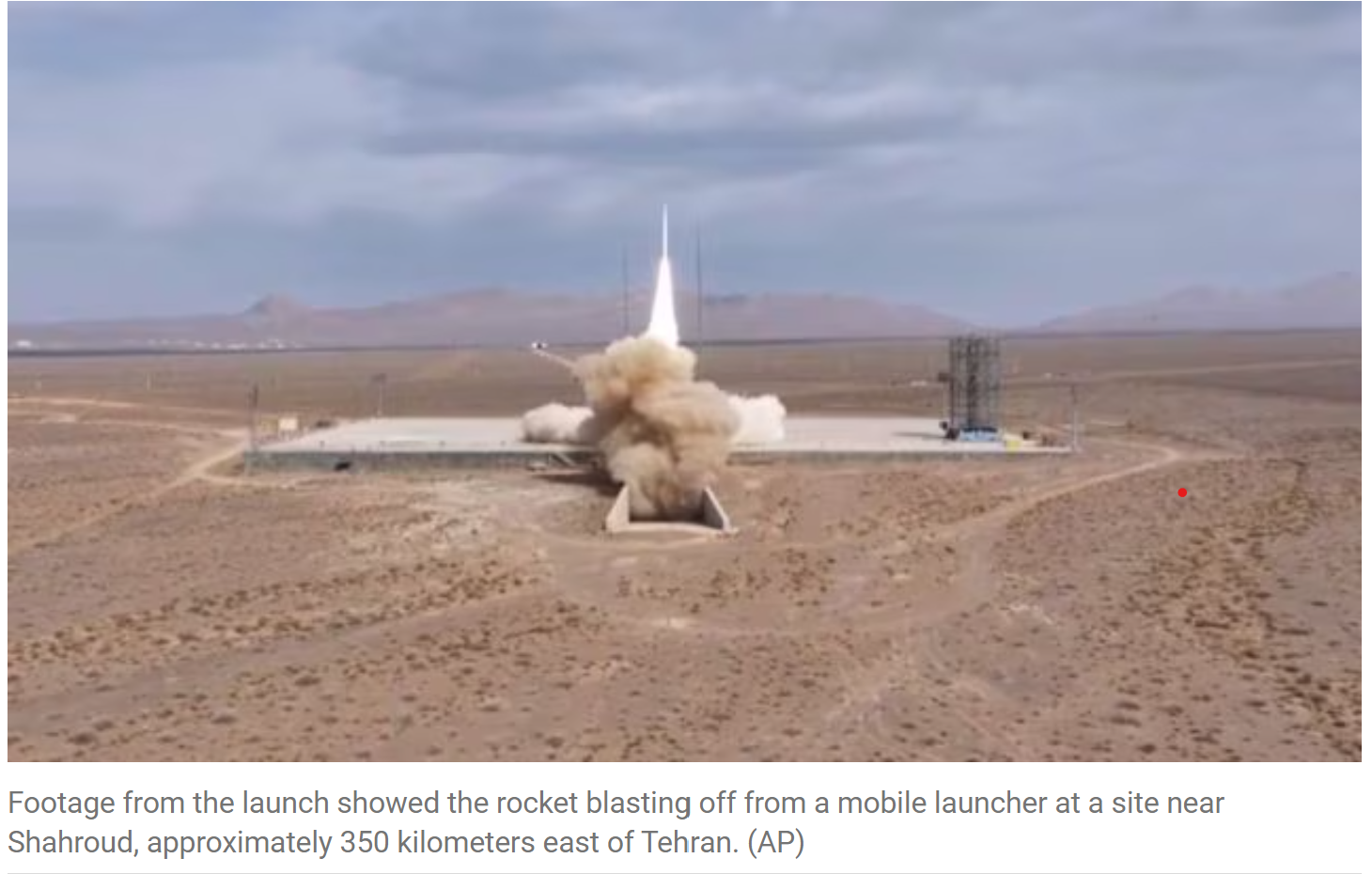
- 15 Sep 2024
In News:
Iran successfully launched its Chamran-1 research satellite into orbit, utilising the Qaem-100 rocket developed by the paramilitary Revolutionary Guard.
Key Highlights:
- Satellite Details: Chamran-1, a research satellite, was designed and manufactured by Iranian engineers at Iran Electronics Industries (SAIran) in collaboration with the Aerospace Research Institute and private firms. It weighs approximately 60 kilograms.
- Launch Vehicle: The satellite was launched into orbit using the Ghaem-100, Iran's first three-stage solid-fuel space launch vehicle (SLV), developed by the Aerospace Force of the Islamic Revolutionary Guard Corps (IRGC).
- Mission Objectives: The primary mission of Chamran-1 is to test hardware and software systems for validating orbital maneuver technology. Additionally, it aims to assess the performance of cold gas propulsion subsystems and evaluate navigation and attitude control subsystems.
- Orbit Details: The satellite was placed into a 550-kilometer (341 miles) orbit above Earth.
What are Intercontinental ballistic missiles?
- Intercontinental ballistic missiles (ICBMs) are a type of ballistic missile with a range greater than 5,500 kilometers and are primarily designed to deliver nuclear warheads.
- They can carry conventional, chemical, and biological weapons, although the latter types have rarely been deployed on ICBMs.
- The United States, Russia, China, France, India, the United Kingdom, Israel, and North Korea are known to possess operational ICBMs, with Pakistan being the only nuclear-armed state that does not have them.
Operation Sadbhav
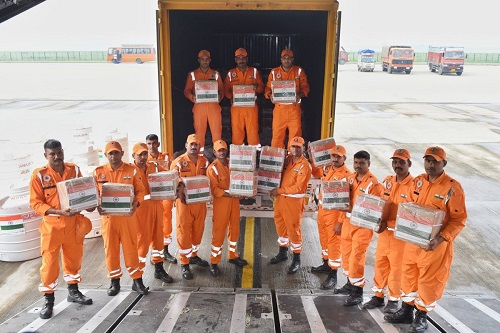
- 15 Sep 2024
In News:
India has launched Operation Sadbhav to deliver crucial humanitarian aid to Myanmar, Laos, and Vietnam, all of which have been devastated by Typhoon Yagi. This powerful storm, the most severe in Asia this year, has led to extensive flooding and widespread destruction across the affected countries.
Relief Efforts:
In response to the crisis, India has mobilized a significant amount of aid. The Indian naval ship INS Satpura has transported 10 tonnes of relief supplies, including dry rations, clothing, and medicines, to Myanmar. Concurrently, the Indian Air Force has dispatched a military transport aircraft with 35 tonnes of aid to Vietnam and an additional 10 tonnes to Laos. The aid includes essential items such as generators, water purification systems, hygiene kits, mosquito nets, blankets, and sleeping bags, which are crucial for addressing immediate needs during this emergency.
India's Proactive Approach:
Operation Sadbhav highlights India's proactive approach to humanitarian assistance and disaster relief, emphasizing its role as a leading responder in the region. This initiative reflects India's commitment to providing support to its neighboring countries in times of crisis and aligns with its broader 'Act East Policy,' which aims to strengthen relations with ASEAN member states through practical assistance and cooperation.
Strategic Importance:
The operation also underscores India's strategic goals of enhancing regional stability and reinforcing its position as a reliable partner in disaster management. By providing timely aid, India demonstrates its dedication to supporting regional stability and contributing to international humanitarian efforts.
Global Recognition and Cooperation:
India's response to Typhoon Yagi has received international acknowledgment for its effectiveness and promptness. The coordination of these relief efforts highlights the importance of global solidarity in addressing humanitarian crises and building resilience in disaster-affected regions.
Conclusion:
Operation Sadbhav is a clear demonstration of India's commitment to timely and substantial humanitarian assistance. It not only showcases India's proactive diplomacy but also strengthens its ties with ASEAN nations through meaningful cooperation in times of adversity. The ongoing relief efforts are a testament to India's role as a responsible global stakeholder in disaster response and recovery.
What is Operation Kawach, the new ‘war on drugs’ waged by Delhi Police?
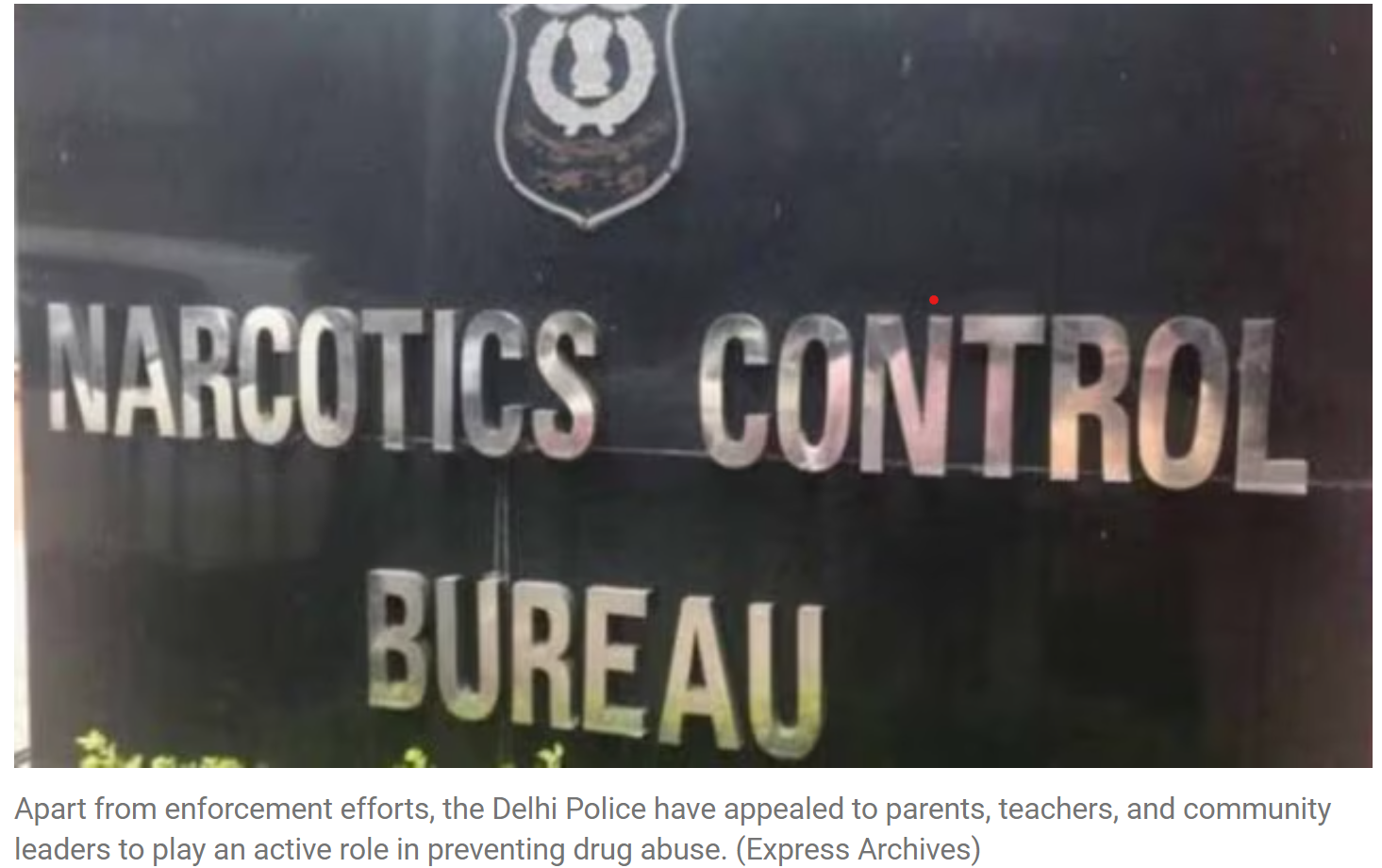
- 05 Sep 2024
Aimed at identifying and apprehending people involved in the trafficking and distribution of narcotics, 'Operation Kawach' is a joint initiative launched by the Crime Branch in coordination with all district units of the Delhi Police.
In a major crackdown on the menace of drugs in the national capital, the Crime Branch of the Delhi Police conducted widespread raids, swooping down on over 100 locations across Delhi. Earlier, raids conducted during the intervening night of May 12 and 13 had led to the arrest of 31 drug offenders in 30 cases under the Narcotic-Drugs and Psychotropic Substances Act 1985.
As many as 12 bootleggers were also arrested in six cases of the Excise Act. The operation also saw the seizure of 957.5 grams of heroin, 57.8 kilograms of marijuana and 782 bottles of illicit liquor.
What is Operation Kawach?
Aimed at identifying and apprehending people involved in the trafficking and distribution of narcotics, ‘Operation Kawach’ is a joint initiative launched by the Crime Branch in coordination with all district units of the Delhi Police. The initiative aims to combat the harmful influence of drug addiction on youth and children and underscores the authorities’ commitment to safeguarding the well-being of young individuals and curbing the distribution of illicit substances in educational settings.
Operation Kawach is primarily intended to save the youth from the menace of drugs. Although the focus is to take stringent action on the supply side, it is also appealed to society to create awareness and reduce the demand of drugs. The parents, teachers and the social reformers are specially requested to sensitise the youth about the grave consequences of drug addiction.
Operation Kawach: The story so far
According to the official, the joint operations, which utilised a variety of resources such as undercover officers, surveillance, canine support and intelligence gathering, targetted both street-level dealers and high-level traffickers and have both ‘top-to-bottom’ and ‘bottom-to-top’ approaches to effectively counter drug trafficking in the national capital.
In this year, Delhi Police has arrested 534 narco-offenders in 412 NDPS cases. Around 35 kg of heroin/smack, 15 kg of cocaine, 1,500 kg of ganja, 230 kg of opium, 10 kg of charas and 20 kg of poppy have been recovered during these operations.
Black Coat Syndrome
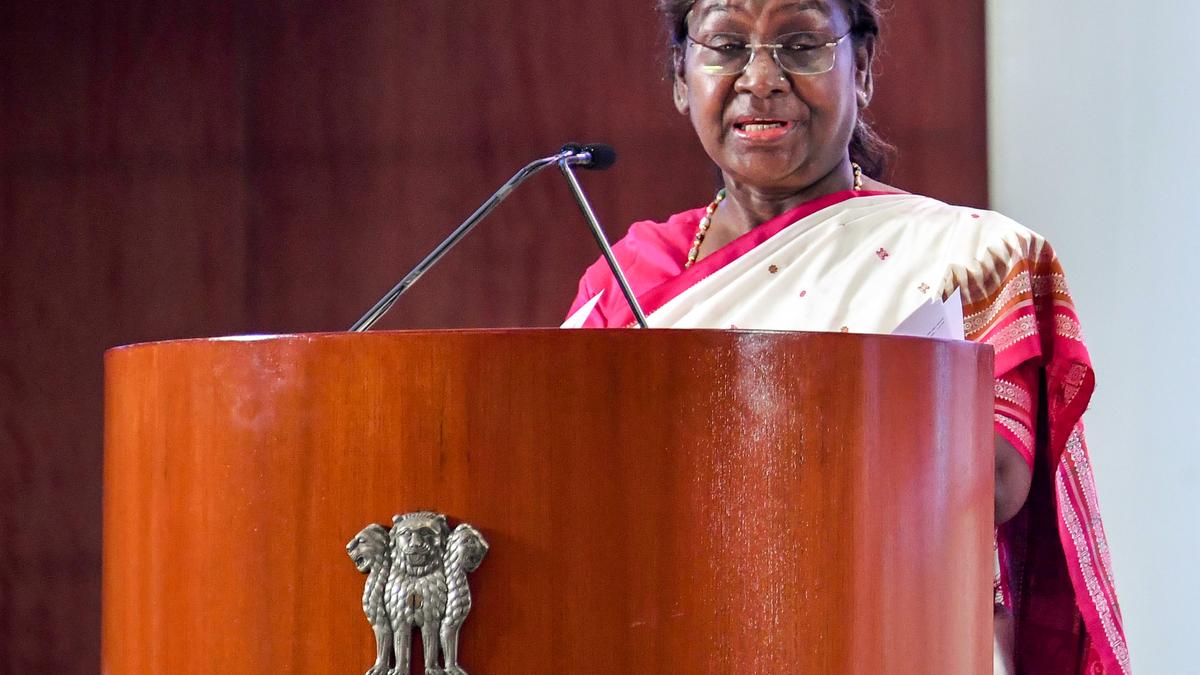
- 05 Sep 2024
In News:
In her recent speech at the National Conference of District Judiciary, President Droupadi Murmu introduced the concept of 'black coat syndrome' to address the persistent issue of case delays in Indian courts. This term is intended to reflect the anxiety and reluctance that people experience when dealing with the judicial system, similar to the 'white coat syndrome' seen in medical settings.
Current Challenges in India's Judicial System
- Case Pendency: As of October 2023, there are over five crore cases pending across various levels of the judiciary in India. The current number of judges—20,580—falls short of effectively managing this caseload.
- Infrastructure Deficiencies: Many courts lack essential infrastructure and modern technology. For example, as of September 2023, 19.7% of district courts did not have separate toilets for women.
- Judicial Vacancies: There are notable vacancies in the judiciary. High courts have 347 unfilled positions out of a total of 1,114 sanctioned posts. Similarly, 5,300 out of 25,081 district judge positions are vacant.
- Gender Representation: The Supreme Court has three female judges, making up 9.3% of its bench. High courts have 103 female judges, representing 13.42%, while the district judiciary has a more balanced representation with 36.33% female judges.
Ongoing Initiatives to Address Judicial Challenges
- Technological Advancements:
- e-SCR (Electronic Supreme Court Reports): Provides digital access to Supreme Court judgments.
- Virtual Court System: Facilitates court proceedings through videoconferencing.
- eCourts Portal: Serves as a comprehensive platform for interaction among litigants, advocates, government bodies, and the public.
- National Judicial Data Grid (NJDG): Makes case statistics available at various levels for public and research use.
- Legal Reforms and Alternative Dispute Resolution (ADR):
- National Mission for Justice Delivery and Legal Reforms (2011): Focuses on improving justice access by tackling delays and arrears.
- ADR Methods: Includes Lok Adalats, Gram Nyayalayas, and Online Dispute Resolution to expedite justice.
- Commercial Courts Act 2015: Enforces pre-institution mediation for commercial disputes.
- Fast Track Courts: Designed to speed up cases involving serious crimes, senior citizens, women, and children.
Strategies for Future Improvement
- Increasing Court Efficiency: The Chief Justice of India has stressed the need for courts to function beyond their current capacity of 71% to better align case disposal with new case inflows.
- Filling Judicial Positions: With 28% of district court positions vacant, a regularized recruitment schedule is suggested to address these gaps. Additionally, integrating judicial recruitment on a national scale is recommended to reduce regional biases.
- Enhancing Case Management: Establish District-Level Case Management Committees to better manage cases by reconstructing records and identifying priority cases. Encouraging pre-litigation dispute resolution can also help manage the case backlog.
- Adjusting Judicial Vacations: The 2003 Malimath Committee report proposed reducing vacation periods to help address the backlog of cases.
- Bridging Judiciary Gaps: Addressing the disparity between district courts and high courts is crucial to create a more cohesive and unified judicial system.
Poshan Tracker Initiative
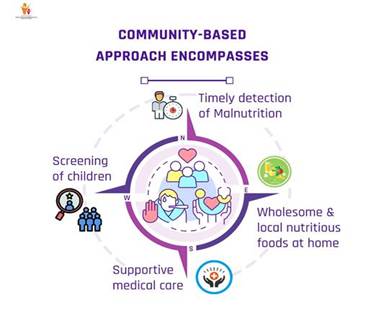
- 05 Sep 2024
In News:
The Ministry of Women and Child Development recently earned the National Award for e-Governance 2024 (Gold) for its Poshan Tracker initiative, which has made significant strides in enhancing child health and nutrition.
About the Poshan Tracker Initiative
The Poshan Tracker initiative focuses on identifying and addressing growth-related issues in children aged 0-6 years. By using real-time monitoring and WHO growth charts, the program ensures that children receive optimal nutrition.
Key components of the initiative include:
- Role of Anganwadi Workers (AWWs): These workers are essential in assessing children's health and implementing necessary interventions when deviations from expected growth are observed.
- Technology Integration: The program employs advanced ICT tools and Growth Measuring Devices (GMD) at Anganwadi Centers (AWCs) to enable precise data collection and regular monitoring.
- Impact: Real-time growth monitoring through the Poshan Tracker has substantially improved child health outcomes in India, benefiting millions of children under the Mission Poshan 2.0 initiative.
Key Features of the Poshan Tracker App
- Comprehensive Overview: The app offers a complete view of Anganwadi Centre activities, including service deliveries and beneficiary management for pregnant women, lactating mothers, and children under six.
- Digitization and Automation: It replaces physical registers used by workers with digital records, thereby enhancing the quality and efficiency of their work.
- Smartphone Provision: Anganwadi workers have been provided with smartphones through the Government e-Market (GeM) to streamline service delivery.
- Technical Support: Each state has a designated nodal person to provide technical assistance and resolve issues related to the Poshan Tracker application.
- Service Accessibility: Migrant workers who registered in their original state can access services at the nearest Anganwadi in their current location.
RHUMI-1
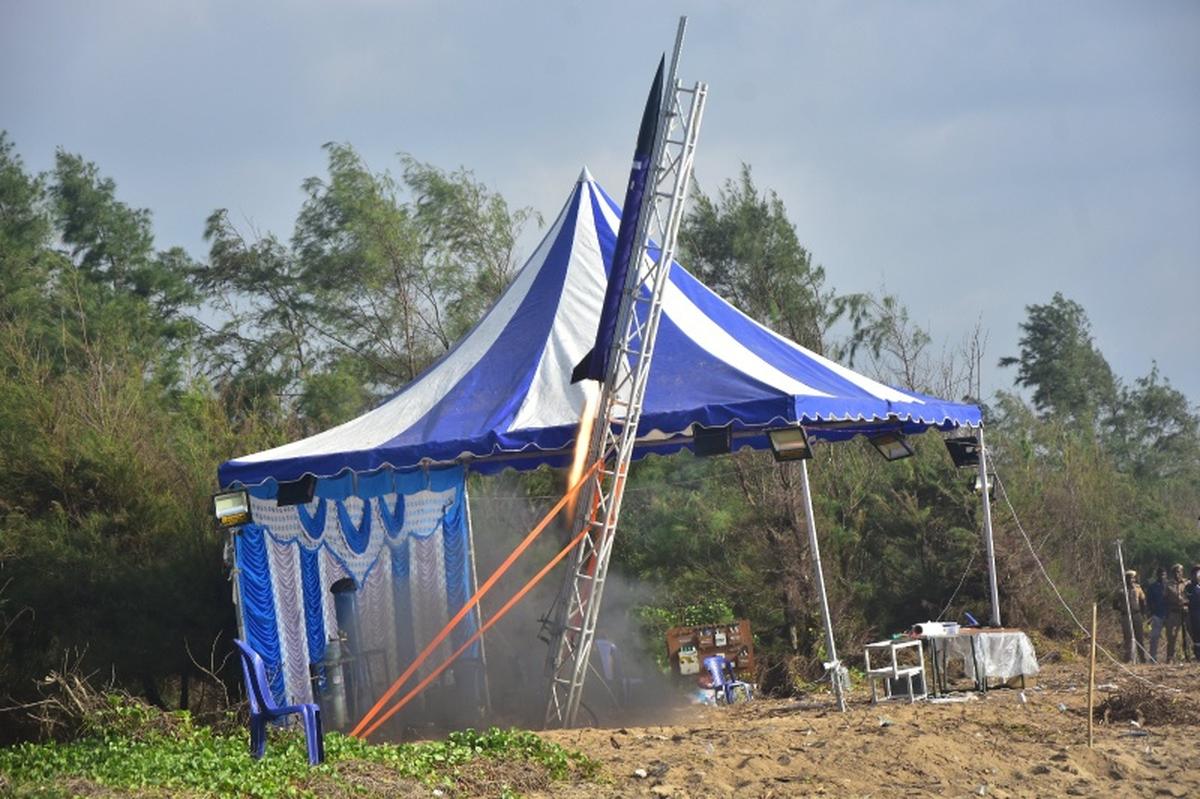
- 05 Sep 2024
In News:
India recently celebrated the launch of its first reusable hybrid rocket, RHUMI-1, developed by the Tamil Nadu-based start-up Space Zone India in collaboration with the Martin Group. The launch took place on August 24, 2024, from Thiruvidandhai in Chennai. This innovative rocket was propelled into a suborbital trajectory using a mobile launcher, carrying three Cube Satellites and fifty Pico Satellites designed to gather data on global warming and climate change.
Key Features of RHUMI-1:
- Hybrid Propulsion System: RHUMI-1 utilizes a combination of solid and liquid propellants, which enhances efficiency and lowers operational costs.
- Adjustable Launch Angle: The rocket's engine allows for precise trajectory control with adjustable angles ranging from 0 to 120 degrees.
- Electrically Triggered Parachute System: Equipped with an advanced and eco-friendly descent mechanism, this system ensures safe recovery of rocket components, offering both cost-effectiveness and environmental benefits.
- Environmentally Friendly: RHUMI-1 is entirely free of pyrotechnics and TNT, underlining its commitment to sustainability.
Reusable Launch Vehicles (RLVs):
Reusable Launch Vehicles are spacecraft designed to be launched, recovered, and reused multiple times. They offer several advantages:
- Cost Savings: RLVs can be up to 65% cheaper than constructing a new rocket for every launch.
- Reduced Space Debris: By minimizing discarded rocket components, RLVs help reduce space debris.
- Increased Launch Frequency: Shorter turnaround times allow for more frequent use of the rocket.
Unlike traditional multi-stage rockets, where the first stage is discarded after fuel depletion, RLVs recover and reuse the first stage. After separation, the first stage returns to Earth using engines or parachutes for a controlled landing.
Background on Space Zone India and Recent Missions:
Space Zone India is an aero-technology company based in Chennai, focusing on providing cost-effective, long-term solutions in the space industry. They offer hands-on training in aerodynamic principles, satellite technology, drone technology, and rocket technology while raising awareness about careers in the space sector. In 2023, Space Zone India conducted the "Dr. A.P.J Abdul Kalam Students Satellite Launch Mission," involving over 2,500 students from various schools across India. This mission resulted in the creation of a student satellite launch vehicle capable of carrying a payload of 150 Pico Satellites for research experiments.
Disaster Management (Amendment) Bill, 2024
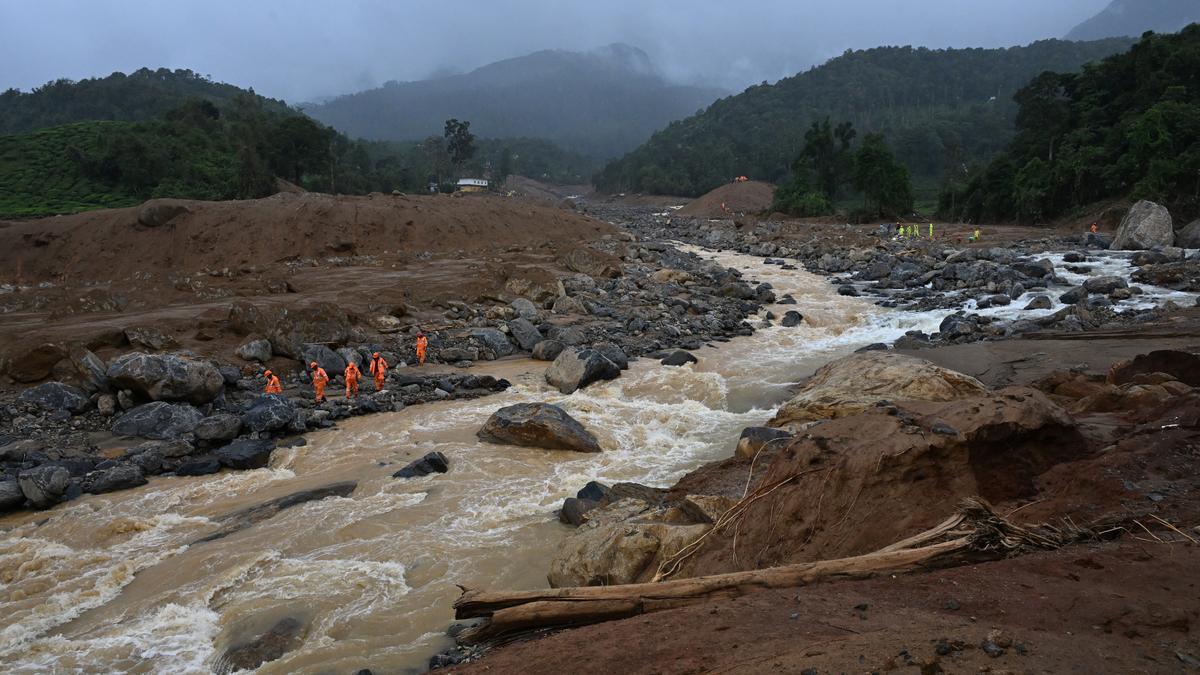
- 05 Sep 2024
In News:
On August 1, 2024, the central government introduced the Disaster Management (Amendment) Bill in the Lok Sabha. This Bill, aimed at amending the existing Disaster Management Act of 2005, has been proposed in response to the increasing frequency of climate-induced disasters. However, the Bill’s provisions have raised concerns about further centralisation of disaster management processes, which may complicate and delay disaster response efforts.
Centralisation Concerns
The Bill continues the trend of centralising disaster management, a feature already prevalent in the 2005 Act. It grants statutory status to existing bodies like the National Crisis Management Committee (NCMC) and the High-Level Committee (HLC), potentially complicating the disaster response process. This centralised approach has previously led to delays, such as the late disbursement of funds to Tamil Nadu and Karnataka, contrary to the Act's intended rapid response.
Proposed Changes
Strengthening NDMA and SDMAs: The Bill aims to bolster the role of the National Disaster Management Authority (NDMA) and State Disaster Management Authorities (SDMAs) by having them prepare disaster management plans directly. It also introduces Urban Disaster Management Authorities (UDMAs) for state capitals and major cities, although these bodies may face challenges due to insufficient financial devolution.
Database and Staffing: The Bill mandates the creation of comprehensive disaster databases at national and state levels and allows the NDMA to appoint its own staff, subject to central government approval.
Issues with the Current Definition of ‘Disaster’
Heatwaves Exclusion: On July 25, 2024, the Minister of State for Science, Technology, and Earth Sciences announced that heatwaves will not be classified as a notified disaster under the Act. This decision aligns with the 15th Finance Commission’s view and maintains a restricted list of disasters eligible for assistance, which includes cyclones, droughts, earthquakes, and floods, but excludes climate-induced phenomena like heatwaves.
Inadequate Definition: The existing definition of "disaster" in the Act and the Bill remains narrow, failing to encompass climate-induced events such as heatwaves, which are increasingly recognized globally as significant disasters. Data from the India Meteorological Department shows a record number of heatwave days and related fatalities, highlighting the need for a broader disaster definition.
Critical Issues
Central-State Dynamics: The Bill’s centralisation raises questions about the balance of power between central and state governments. There are concerns that states will remain heavily dependent on central funds, complicating disaster management and response.
Lessons Unlearned: Despite being an update to the 2005 Act, the Bill appears to overlook past shortcomings, including delays in financial preparedness and response. A focus on cooperative federalism and effective disaster management should prioritize practical solutions over a central versus state blame game.
Future Directions: Addressing the challenges of climate-induced disasters and ensuring effective financial and operational preparedness requires revisiting and refining the disaster management framework. Emphasizing cooperative federalism and proactive disaster management strategies will be crucial in improving disaster resilience and response in the face of escalating climate risks.
India-France Bilateral Naval Exercise VARUNA
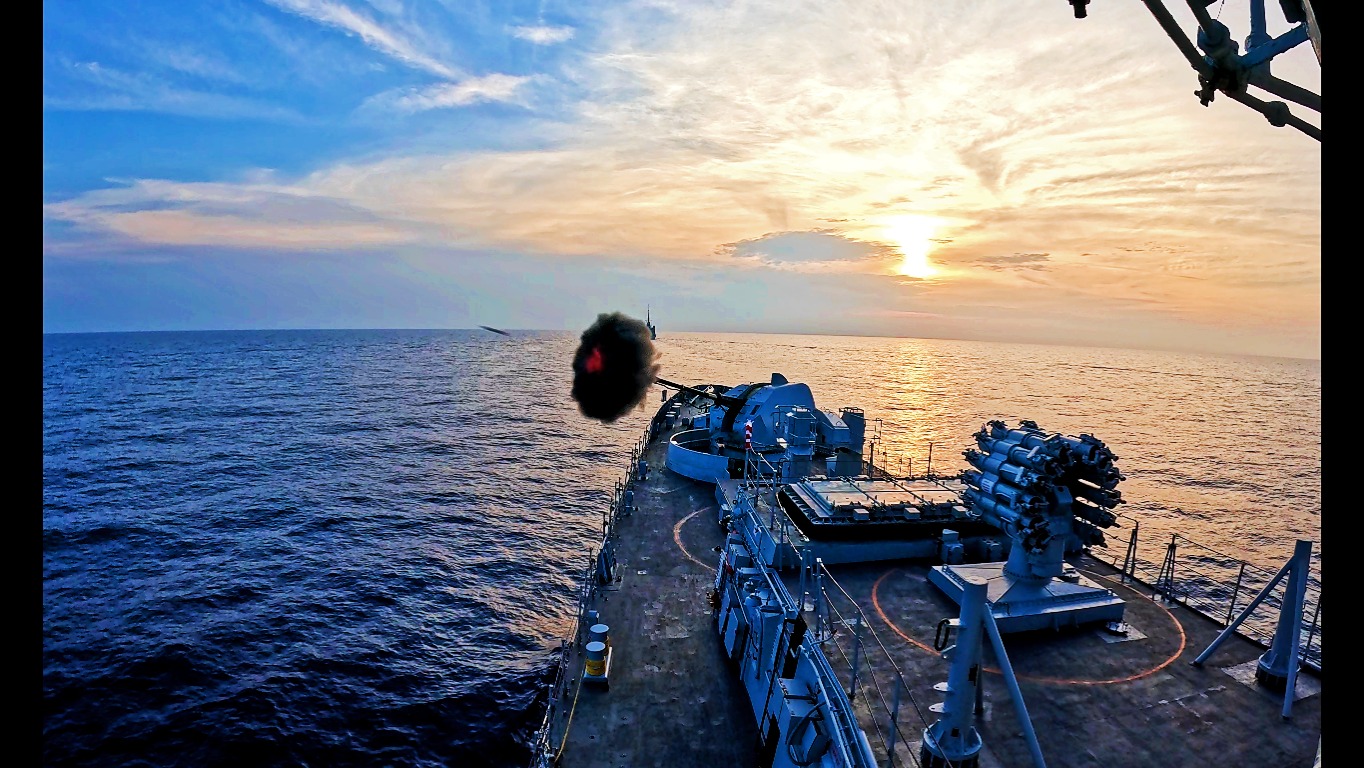
- 07 Sep 2024
In News:
The 22nd edition of the India-France bilateral naval exercise, VARUNA, took place in the Mediterranean Sea from September 2 to 4, 2024. This exercise highlights the strong maritime partnership between the Indian Navy and the French Navy, showcasing their commitment to enhancing interoperability and operational effectiveness.
Key Highlights:
- Participating Vessels and Aircraft:
- Indian Navy:
- INS Tabar: A frontline stealth frigate commanded by Captain MR Harish.
- Ship-borne Helicopter: Provided air support during the exercises.
- LRMR Aircraft P-8I: An advanced long-range maritime reconnaissance aircraft.
- French Navy:
- FS Provence: A French naval ship participating in the exercise.
- Submarine Suffren: A French attack submarine.
- Aircraft F-20: Providing air support.
- Atlantique 2: A French maritime patrol aircraft.
- Fighters MB339: Multi-role fighter aircraft.
- Helicopters NH90 and Dauphin: Providing additional aerial capabilities.
- Indian Navy:
- Exercise Activities:
- Tactical Maneuvers: Advanced maneuvers showcasing the operational capabilities of both navies.
- Anti-Submarine Warfare: Exercises designed to enhance capabilities in detecting and countering submarines.
- FLYEX (Flight Exercises): Coordinated air operations involving various aircraft.
- Air Defence Exercise: Training in defending against aerial threats.
- Live Weapon Firings: Demonstrations of weapon systems in action.
- PHOTO-EX (Photographic Exercise): Exercises designed for documenting and assessing naval operations.
- Steam Past: A ceremonial maneuver showcasing the participating ships.
- Significance of the Exercise:
- Evolution of VARUNA: Since its inception in 2001, VARUNA has become a key component of the India-France naval relationship. The exercise has evolved to improve interoperability and share best practices between the two navies.
- Strategic Importance: Conducting the exercise in the Mediterranean Sea reflects the Indian Navy's capability and commitment to operate far beyond the Indian Ocean Region (IOR). It underscores the strategic depth and outreach of the Indian Navy.
- Enhanced Interoperability: VARUNA demonstrates the mutual commitment of India and France to enhancing naval collaboration and operational effectiveness through joint exercises and shared experiences.
- Future Outlook:
- Commitment to Partnerships: The Indian Navy continues to prioritize building strong partnerships with like-minded navies worldwide. The VARUNA exercise is a testament to this ongoing commitment and the broader strategic goals of both India and France in strengthening maritime security and cooperation.
This bilateral exercise not only enhances the operational capabilities of both navies but also reinforces the strategic partnership between India and France in the maritime domain.
India’s $15 Billion Push for Chipmaking
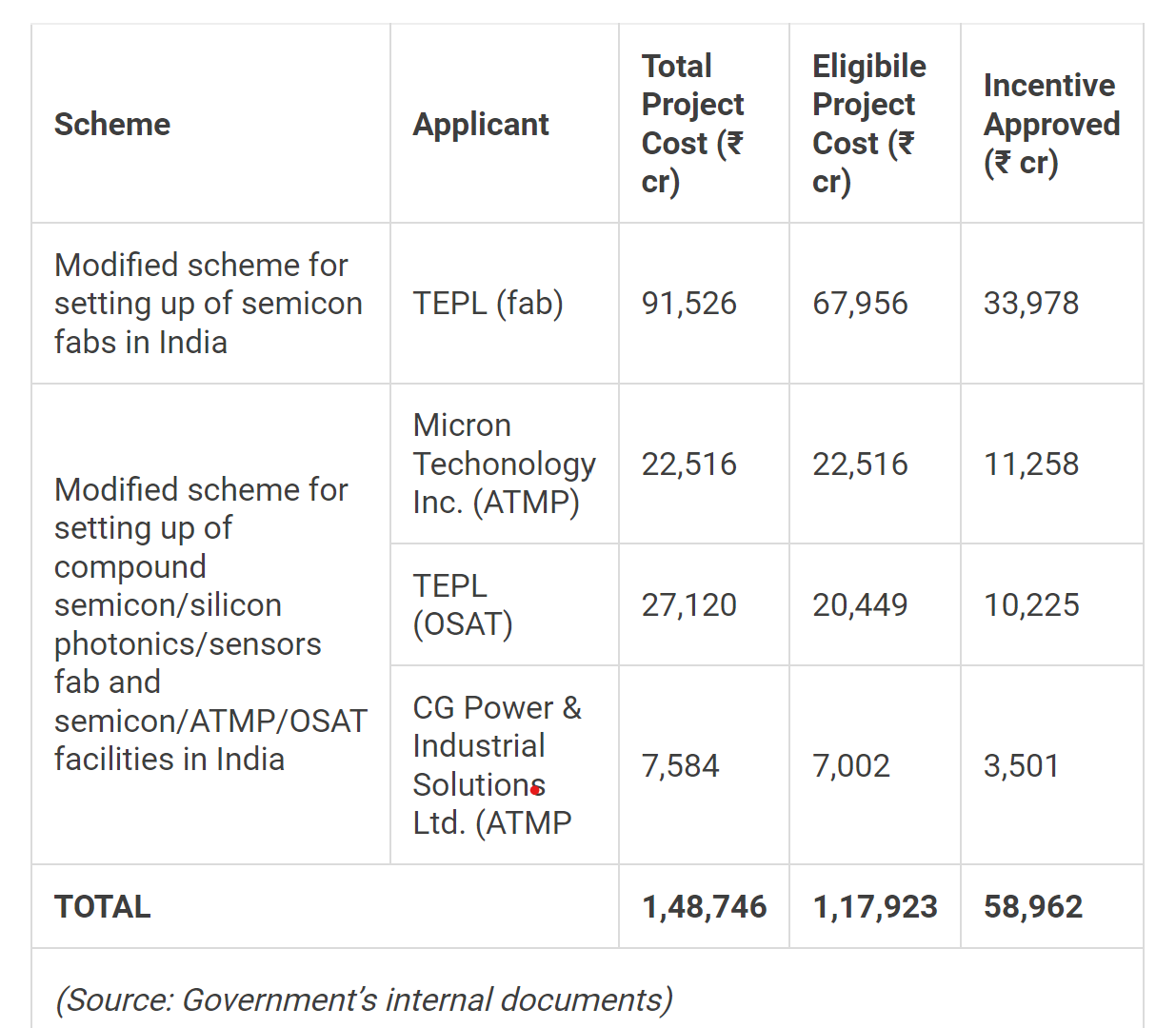
- 07 Sep 2024
In News:
India is significantly ramping up its efforts to establish a semiconductor manufacturing industry, with plans to invest $15 billion in the second phase of its chipmaking incentive policy. This move aims to bolster the country's position in the global semiconductor supply chain, where it currently has minimal presence.
Key Points:
- Government Funding and Projects:
- Increased Investment: The Indian government is boosting its funding for chipmaking incentives to $15 billion, up from the $10 billion committed in the first phase.
- Approved Projects: Four major semiconductor projects have been approved, totaling over Rs 1.48 lakh crore ($18 billion). This includes:
- Tata and PSMC Fabrication Plant: India’s first commercial semiconductor fabrication plant, with an investment of more than Rs 91,000 crore ($11 billion), developed in partnership with Taiwan’s Powerchip Semiconductor Manufacturing Corporation (PSMC).
- Assembly and Testing Plants (ATMP/OSAT): Three plants:
- Micron Technology is building the first plant, approved in June 2023.
- Tata is constructing an assembly plant in Assam.
- C G Power and Industrial Solutions, in partnership with Japan’s Renesas Electronics, is developing the third plant.
- Government Subsidies:
- Capex Subsidies: The central government will provide nearly Rs 59,000 crore ($7 billion) in capital expenditure subsidies for these projects.
- State Support: State governments are offering incentives such as discounted land and electricity rates.
- Strategic Importance:
- Economic and Strategic Impact: Semiconductor chips are critical to a wide range of industries, including defense, automotive, and consumer electronics. Developing domestic chipmaking capabilities is seen as essential for economic growth and strategic independence.
- Global Competition: India is entering a highly competitive field dominated by Taiwan and the US. The US has a $50 billion chip incentive scheme, while the EU has a similar program. India’s efforts are part of a broader strategy to reduce dependence on global chip supply chains and capitalize on geopolitical shifts.
- Challenges and Realities:
- Technology Barriers: The Tata-PSMC plant will not produce cutting-edge chips, as the technology for advanced nodes is currently beyond their reach. Manufacturing chips with smaller node sizes involves significant technological expertise and innovation, areas where leading companies like Taiwan Semiconductor Manufacturing Company (TSMC) excel.
- High Entry Barriers: The chipmaking industry has high entry barriers, and India’s new plants will face challenges in achieving technological and competitive parity with established global leaders.
India's push into semiconductor manufacturing represents a major step in its economic development and strategic planning, aiming to position itself as a significant player in the global tech landscape while addressing critical supply chain vulnerabilities.
India-Maldives Defence Talks
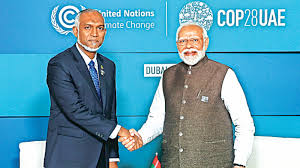
- 07 Sep 2024
In News:
- India and the Maldives held their first defence talks since India withdrew its military personnel early this year.
Significance of Talks:
- The dialogue is notable given recent tensions in bilateral relations. Relations soured after President Mohamed Muizzu's election on an "India Out" platform, leading to the withdrawal of Indian troops. The last defence cooperation dialogue was held in March 2023 under President Ibrahim Solih.
Discussion Topics:
-
- Expediting ongoing defence cooperation projects.
- Planning forthcoming bilateral military exercises.
- Enhancing high-level exchanges and capability development.
Context of Tensions:
-
- Mohamed Muizzu, who took office in November 2023, had called for the removal of Indian military personnel, a significant shift from the previous administration’s stance.
- India agreed to withdraw 80 military personnel between March and May 2024. Indian technical personnel now operate key equipment like helicopters and a Dornier aircraft in the Maldives.
Recent Developments:
-
- Maldives Foreign Minister Moosa Zameer visited India in May.
- President Muizzu attended PM Narendra Modi’s swearing-in ceremony in June.
- In August, Indian External Affairs Minister S. Jaishankar visited the Maldives to reaffirm bilateral ties.
Historical Defence Cooperation:
-
- India gifted a Dornier aircraft to the Maldives in 2020 and a patrol vessel in 2019.
- India provided a coastal radar system last year and laid the foundation for the 'Ekatha Harbour' project, enhancing Maldivian Coast Guard capabilities.
Ongoing Projects:
-
- Greater Male Connectivity Project (GMCP) - a $500 million initiative financed by India.
- Building a new Coast Guard base at Uthuru Thilafalhu (UTF) atoll.
- India’s grant for High Impact Community Development Projects (HICDPs).
Strategic Importance:
-
- For Maldives: India is a key security partner and crisis responder, with historical assistance during emergencies (Operation Neer, Vaccine Maitri). Maldives seeks to restore Indian tourist numbers, vital for its economy.
- For India: The Maldives is crucial to India's Neighbourhood First Policy and Vision SAGAR. Its strategic location between major Indian Ocean chokepoints makes it a vital partner for maritime security and countering China's influence.
Recent Changes:
-
- The Muizzu government decided not to renew a 2019 MoU for hydrographic surveying with India, ending joint hydrographic surveys conducted under the pact.
Travel and Trade:
-
- Both countries benefit from an open skies arrangement and visa-free access for tourism, medical, and business purposes
India-Middle East-Europe Economic Corridor (IMEC)
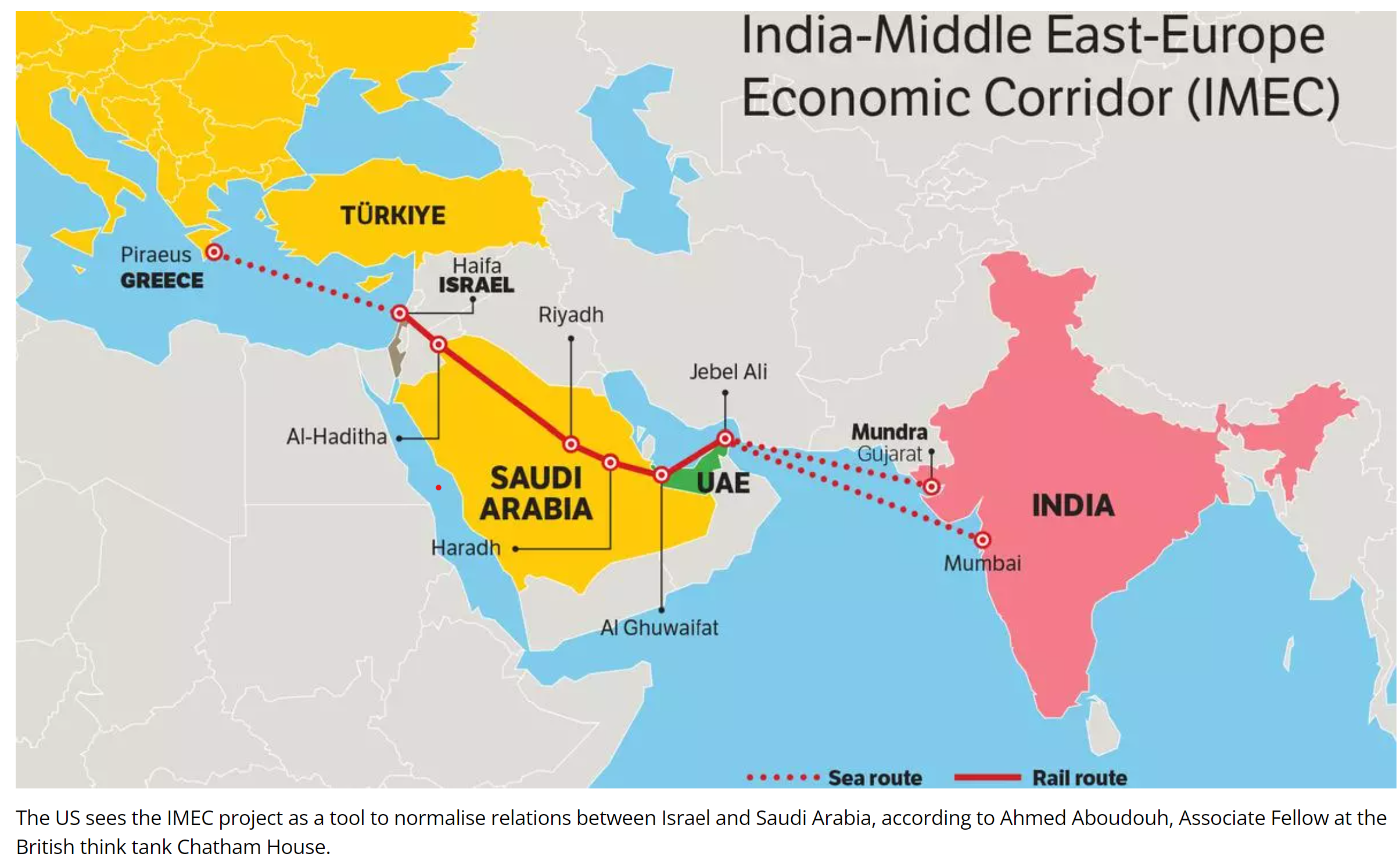
- 07 Sep 2024
In News:
IMEC is an important initiative that can add to India's maritime security and faster movement of goods between Europe and Asia, said Union Minister of Commerce & Industry at the Confederation of Indian Industry (CII) India-Mediterranean Business Conclave 2024 in New Delhi.
Key Details:
- Corridors:
- East Corridor: Connects India to the Gulf.
- Northern Corridor: Links the Gulf to Europe.
- Components:
- Railroad: Provides a reliable and cost-effective cross-border ship-to-rail transit network.
- Ship-to-Rail Networks: Integrates road, sea, and rail transport routes.
- Road Transport: Complements the overall transport infrastructure.
- Expected Benefits:
- Increased Efficiency: Enhances transit efficiency and reduces costs.
- Economic Unity: Promotes economic integration and job creation.
- Environmental Impact: Lowers greenhouse gas emissions.
- Transformative Integration: Connects Asia, Europe, and the Middle East.
- Additional Features:
- Infrastructure: Includes laying cables for electricity and digital connectivity, and pipes for clean hydrogen export.
- Implementation:
- MoU Commitments: Participants will collaboratively address technical design, financing, legal, and regulatory aspects.
- Action Plan: A meeting is planned within 60 days to develop an action plan with specific timetables.
Geoeconomic Perspective
- Economic Integration and Interdependence:
- Prosperity Through Integration: IMEC aims to foster trade and investment among India, the Middle East, and Europe, potentially leading to mutual prosperity and regional stability.
- Building Bridges: Aligns with the liberal international order by promoting economic interdependence to reduce tensions and create shared interests.
- Support from Major Powers: Backed by the US, Europe, and India, signaling a strong commitment to economic ties and regional stability.
- Economic Potential:
- Infrastructure and Trade Routes: Enhances infrastructure and trade routes, boosting economic activity, trade volumes, and investment opportunities.
- Regional Development: Promotes job creation and development in economically disadvantaged areas along the corridor.
Geopolitical Perspective
- Strategic Rivalry with China:
- Countering the BRI: IMEC is seen as a strategic counterbalance to China's Belt and Road Initiative (BRI), offering an alternative aligned with US, European, and Indian interests.
- Regional Influence: Aims to limit China’s influence in the Middle East and South Asia by establishing a competing corridor.
- Geopolitical Alliances:
- Aligning Interests: Involves strategic partnerships among the US, Europe, and India, reflecting concerns about China’s global strategy and shifting power dynamics.
- Rivalry and Competition: The IMEC could be viewed as a global positioning move, responding to China’s growing influence and securing strategic interests.
Reasons for Joining the IMEC
- Economic Enhancement:
- Boosts Indo-Gulf Relations: Enhances trade and economic ties with the Arab Gulf, addressing infrastructure gaps.
- Regional Connectivity: Links India with key partners like Israel and Jordan, boosting economic opportunities.
- Strategic Trade Routes:
- Alternative Routes: Complements existing routes like Chabahar Port and INSTC, connecting India to southern Eurasia.
- Bypassing Choke Points: Offers a shorter route to Eastern Mediterranean and Western Europe, avoiding strategic choke points.
- Energy and Trade Opportunities:
- Access to Resources: Provides potential access to Eastern Mediterranean gas fields.
- Trade Bloc Connectivity: Links India with the EU and GCC, opening up growth opportunities.
- Geopolitical Aspirations:
- Global Power Ambitions: Supports India’s goal to enhance global influence and integrate with eastern and western neighbors.
- Economic Growth: Leverages economic integration to support development and influence.
- Infrastructure Development:
- Economic Integration: Facilitates infrastructure creation for increased trade volumes and regional stability.
e-Sankhyiki portal
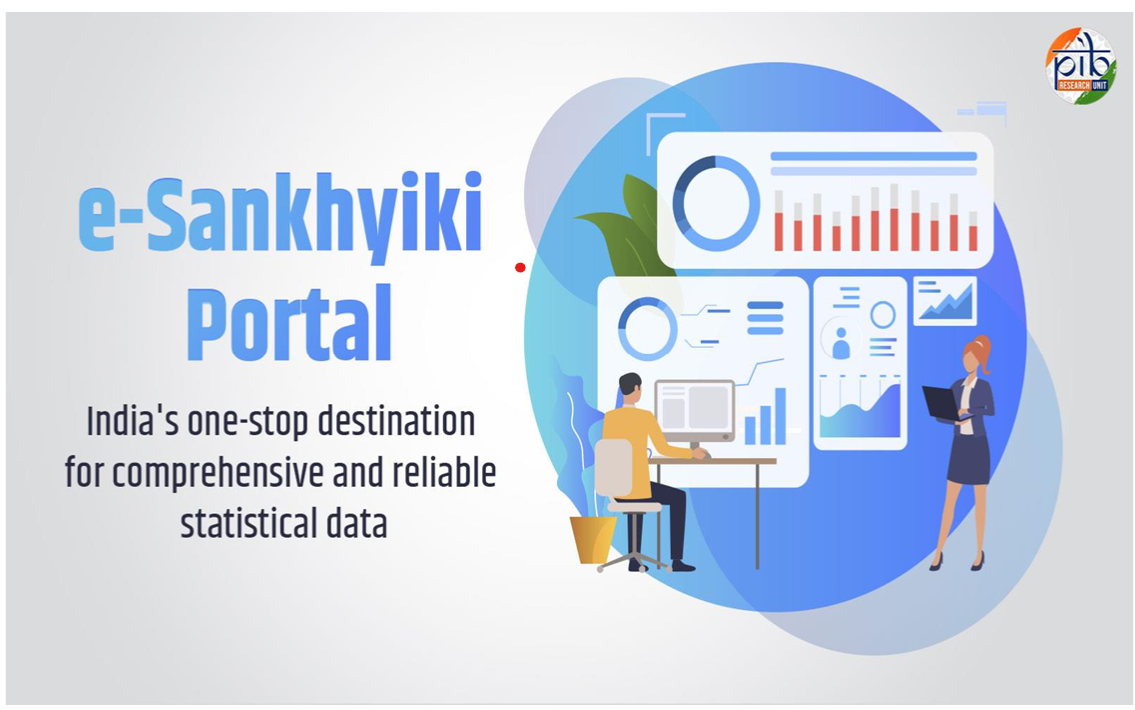
- 07 Sep 2024
In News:
The Ministry of Statistics and Programme Implementation (MoSPI) has launched e-Sankhyiki portal with the objective to establish a comprehensive data management and sharing system for ease of dissemination of official statistics in the country.
Key Highlights:
- Launched on National Statistics Day 2024, the e-Sankhyiki portal is designed to create a comprehensive system for managing and sharing data, facilitating the easy dissemination of official statistics across the country.
- The portal is also accessible at - https://esankhyiki.mospi.gov.in. It aims to provide timely and valuable data inputs for policymakers, researchers, and the general public.
- It provides time series data for key macroeconomic indicators, with features for filtering and visualising the data. Users can also download customised datasets and visualisations and access them through APIs, enhancing the data's reusability.
- It consists of two modules viz. Data Catalogue and Macro Indicators.
- Data Catalogue Module:
- This module catalogues the Ministry’s major data assets, simplifying users' access. It enables searching within datasets and tables, downloading relevant data, and enhancing its value and reusability.
- The Data Catalogue includes seven core data products:
- Consumer Price Index
- Index of Industrial Production
- National Accounts Statistics
- Periodic Labour Force Survey
- Annual Survey of Industries
- Household Consumption Expenditure Survey
- Multiple Indicator Survey.
- It currently hosts over 2,300 datasets, each accompanied by specific metadata and visualisations for user convenience.
- Macro Indicators module:
- This module provides time series data on key macro indicators, featuring tools for filtering and visualising data.
- It allows users to download custom datasets, generate visualisations, and share data through APIs, promoting greater reusability. The initial phase of this module covering data from the past decade includes four major MoSPI products:
- National Accounts Statistics
- Consumer Price Index
- Index of Industrial Production
- Annual Survey of Industries
- The portal currently features over 1.7 million records, providing access to extensive vital data.
- Data Catalogue Module:
Government Initiatives for Safe Data Dissemination
- In response to the rapid data expansion, the Government of India has instituted robust data safety measures. These include storing data in the cloud facilities provided by the National Informatics Centre (NIC), conducting comprehensive security audits of applications, and implementing Secure Sockets Layer (SSL) technology for domain protection.
- Additionally, the government has focused on vulnerability assessments and ensured compliance with guidelines issued by organisations such as NIC and the Indian Computer Emergency Response Team (CERT-In).
- In addition , CERT-In under the Ministry of Electronics and Information technology (MeitY) also undertakes various activities like issuance of advisories and guidelines for cyber/information security, conduct of sensitization programmes/trainings/workshops, operating Cyber Threat exchange platform & Cyber Swachhta Kendra, formulation of a Cyber Crisis Management Plan, setting up of National Cyber Coordination Centre (NCCC) and empanelment of security auditing organisations etc. for data safety.
Rashtriya Poshan Maah 2024
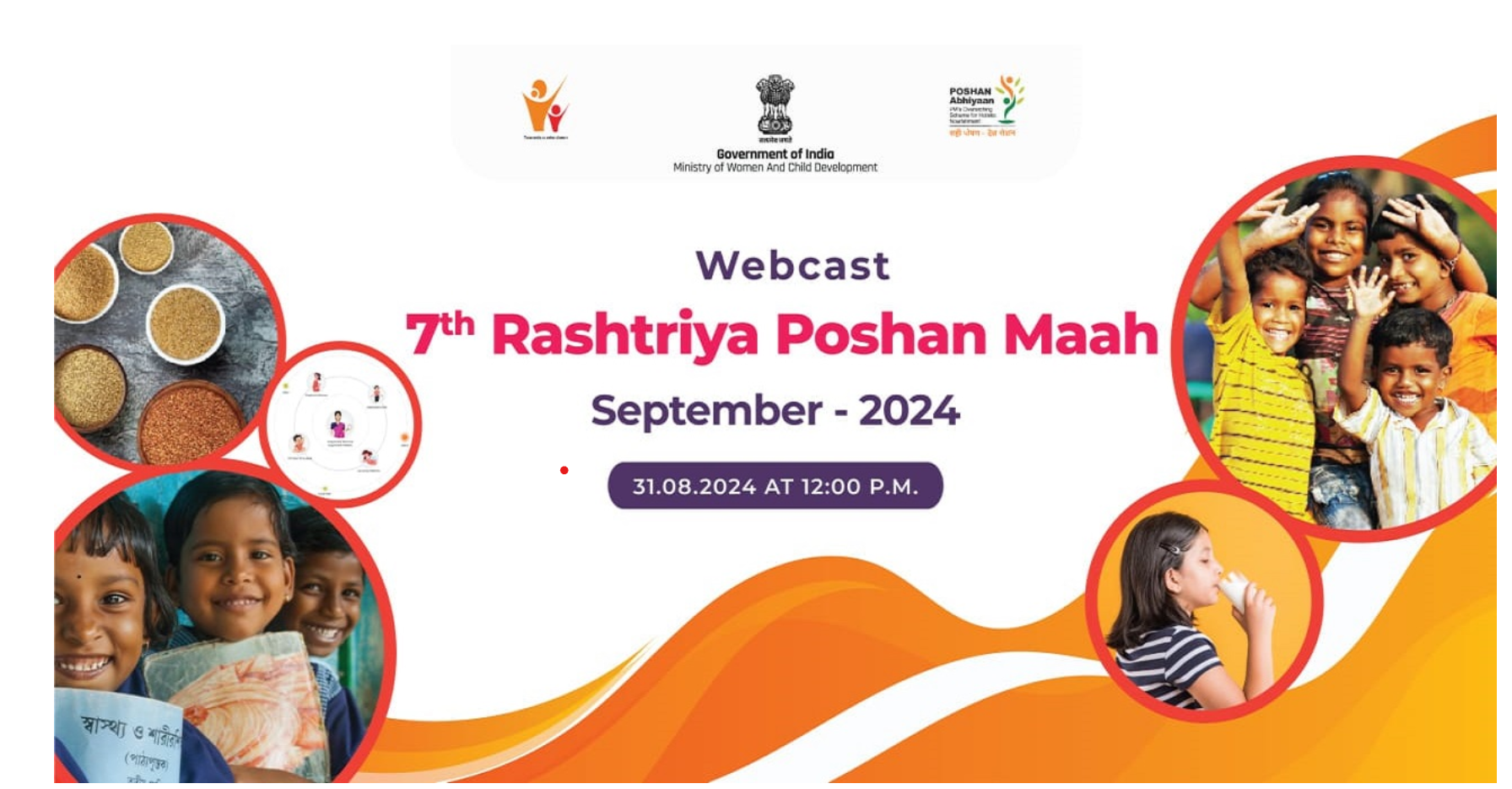
- 06 Sep 2024
In News:
Union Minister of State for Women and Child Development, launched the Rashtriya Poshan Maah 2024 in Dhar district of Madhya Pradesh on 1st September,2024.
Key Highlights:
- As part of the 7th Rashtriya POSHAN Maah, awareness programs are being organized at various levels.
- Under the ICDS (Integrated Child Development Services) Project, complementary feeding activities were conducted at Anganwadi Centres (AWC) Paduck Bagicha, South Andaman.
- Also, at AWC, Champin Nancowrie, Nicobar district (Andaman & Nicobar) under the ICDS Tribal initiative, local food items and nutrition sources were displayed.
- These efforts aim to further the Prime Minister's vision of a ‘Suposhit Bharat’ by conducting diverse large-scale activities, harnessing the potential of Gram Panchayats and Urban Local Bodies.
Rashtriya Poshan Maah:
- The programme is annually celebrated in the month of September, with a different theme each year, primarily focusing on addressing malnutrition by ensuring convergence of various nutrition-related schemes and programmes.
- The objective of the Poshan Maah is to ensure community mobilisation and bolster people’s participation for addressing malnutrition amongst young children, and women and to ensure health and nutrition for everyone.
Poshan Abhiyaan:
- POSHAN Abhiyan (Prime Minister's Overarching Scheme For Holistic Nourishment) focuses on advancing nutritional outcomes for children under six years, adolescent girls, pregnant women, and lactating mothers.
- To cultivate widespread awareness about nutrition at each stage of life, it is celebrated annually as Poshan Maah (1st—30th September) and Poshan Pakhwada (fortnight of March).
- POSHAN Abhiyan (National Nutrition Month) aims to strengthen efforts to end hunger and malnutrition.
- It focuses to improving the nutritional outcomes among children, adolescent girls, pregnant women, and lactating mothers by focusing on prenatal care, diet, and optimal breastfeeding.
- The Ministry of Women and Child Development plans month-long activities under Poshan Maah, focusing on issues such as the hygiene and sanitation, anaemia prevention, maternal and infant health, among others.
- There are outreach programmes, identification drives, camps, and fairs with a special focus on pregnant and lactating women, children below six years, and adolescent girls in order to realise the vision of ‘Swasth Bharat’.
SAMRIDH Scheme
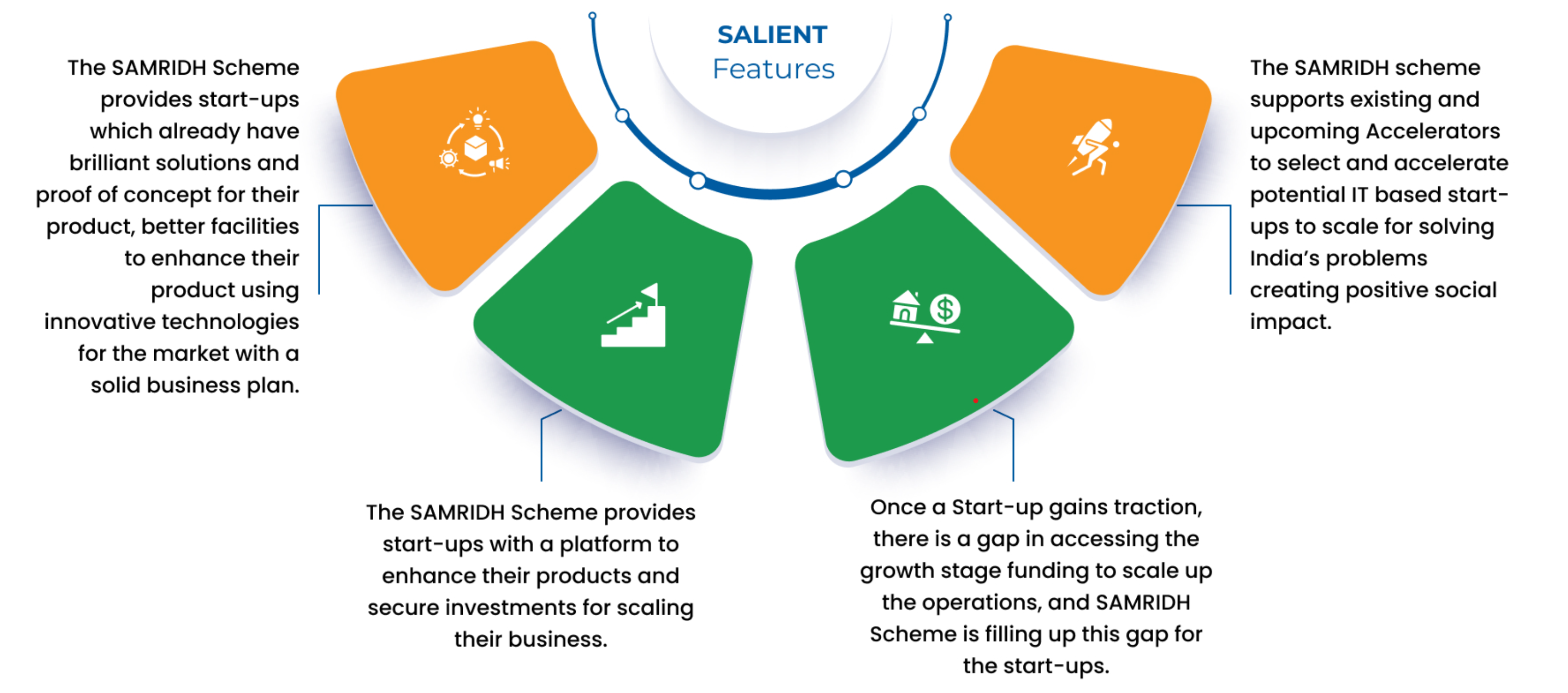
- 06 Sep 2024
In News:
- Ministry of Electronics and Information Technology (MeitY) launches 2nd Cohort of Startup Accelerators of MeitY for Product Innovation, Development and Growth (SAMRIDH).
About SAMRIDH Scheme:
- SAMRIDH is a flagship programme of MeitY for startups acceleration under National Policy on Software Products – 2019.
- The SAMRIDH programme, launched in August 2021 aims to support 300 software product startups with outlay of ?99 crore over a period of 4 years.
- SAMRIDH is being implemented through potential and established accelerators across India which provide services like making products market fit, business plan, investor connect and international expansion to startups plus matching funding upto ?40 lakh by MeitY.
- The scheme is being implemented by MeitY Start-up Hub (MSH), Digital India Corporation (DIC).
- In the first round of cohort, 22 Accelerators spread across 12 states are supporting 175 startups, selected through a multilevel screening process.
- Major Objective:
- The SAMRIDH scheme aims to support existing and upcoming Accelerators to select and accelerate potential IT-based startups to scale.
- Among others, the program focuses on accelerating the startups by providing customer connect, investors connect and connect to international markets
- Eligibility of Accelerator:
- Should be a registered Section-8/Society, [Not-for-Profit Company (eligible to hold equity)] having operations in India.
- The Accelerator and the team are recommended to have more than 3 years of startup experience and should have supported more than 50 start-ups of which at least 10 startups should have received investment from external Investors
- The Accelerator should have an experience of running startup program cohorts with activities listed as desirable under SAMRIDH program.
AgriSURE Fund and Krishi Nivesh Portal
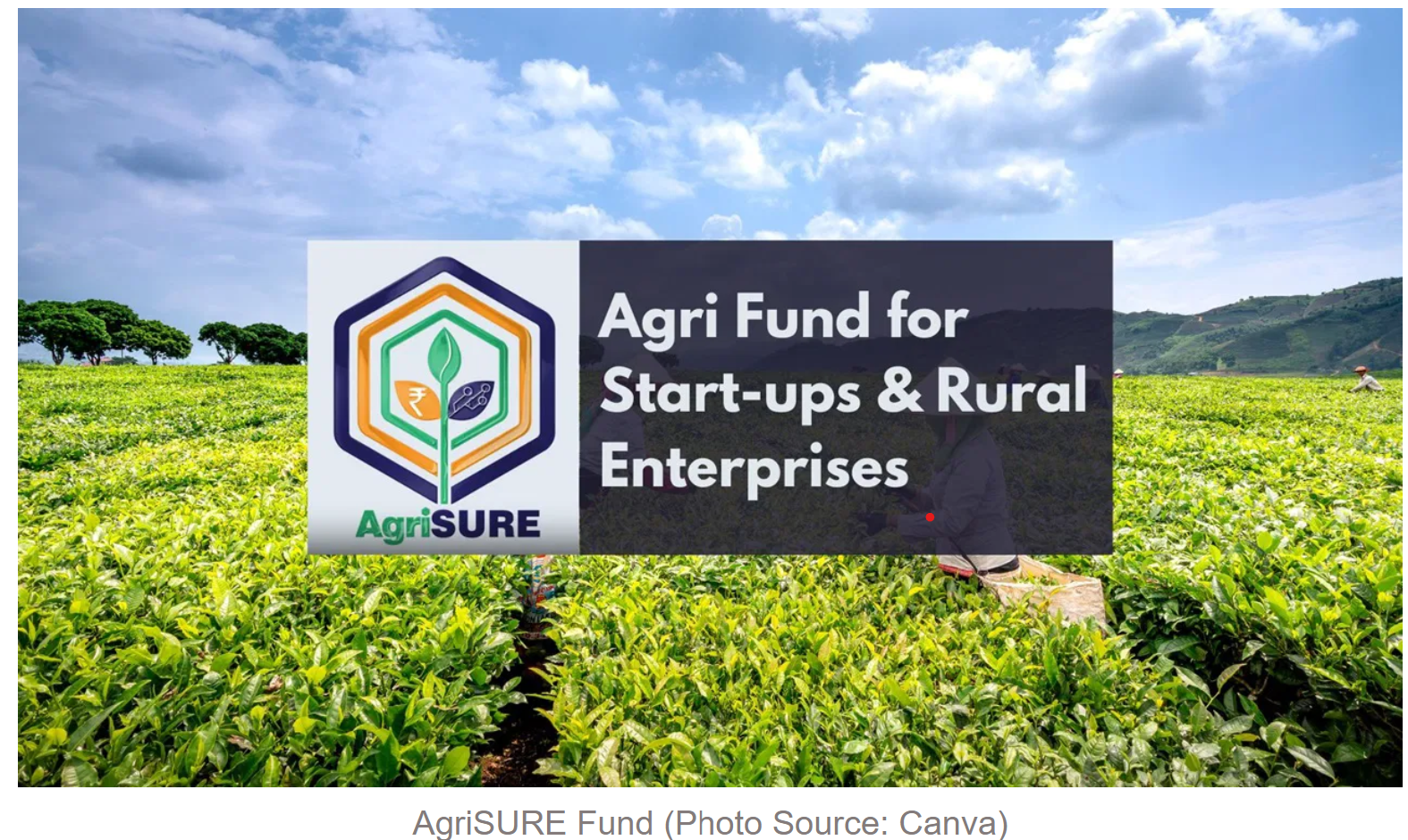
- 04 Sep 2024
In News:
- Recently, the Union agriculture minister Shivraj Singh Chouhan launched two initiatives — a fund aimed at boosting farm-sector startups, and a single-window portal to process investments — as part of a slew of measures being taken by Prime Minister Narendra Modi-led government in its third term to bolster the farm economy.
Key Details:
- AgriSure is a ?750-crore fund established to support agricultural startups.
- Krishi Nivesh Nidhi is a portal designed to expedite the clearance of project proposals.
- Both initiatives aim to enhance farm incomes.
Awards for Credit Disbursal:
- Scheduled banks were recognized for their credit disbursals under the government’s agriculture infrastructure fund.
- First prize: State Bank of India (SBI).
- Second prize: HDFC Bank.
- Third prize: Canara Bank.
Significance of Agriculture Sector:
- Agriculture contributes 16% to India’s GDP.
- Farmers play a crucial role as both producers and consumers in the economy.
PM Modi’s Strategy to Double Farmers’ Incomes:
- The strategy includes:
- Increasing output.
- Reducing input costs.
- Ensuring profitable prices.
- Promoting crop diversification.
- Supporting natural farming.
- Enhancing value addition to crops.
Details of AgriSure Fund:
- Blended capital fund with a total corpus of ?750 crore:
- ?250 crore each from the Department of Agriculture and NABARD.
- ?250 crore to be raised from financial institutions.
- Managed by NabVentures, a subsidiary of NABARD.
- Provides both equity and debt support to startups and agripreneurs.
- Focuses on high-risk, high-impact activities within the agriculture value chain.
Agriculture Infrastructure Fund:
- Mobilized projects worth ?78,000 crore with ?45,000 crore in financing so far.
- Expanded areas of coverage approved by the Union Cabinet on August 28.
- Aims to create durable farm assets, such as warehouses and processing plants.
- Can be used by agricultural produce marketing committees (APMCs) for market facility improvements.
Funding and Loan Details:
- Part of the ?20-lakh crore stimulus package introduced during the Covid-19 pandemic.
- Total funding of ?1 lakh crore over four years:
- ?10,000 crore for 2020-21.
- ?30,000 crore each for the subsequent three financial years.
- Provides medium-to-long term debt financing for rural projects.
- Interest subvention of 3% per annum on loans up to ?2 crore for seven years, with the government covering part of the interest.
eShram portal
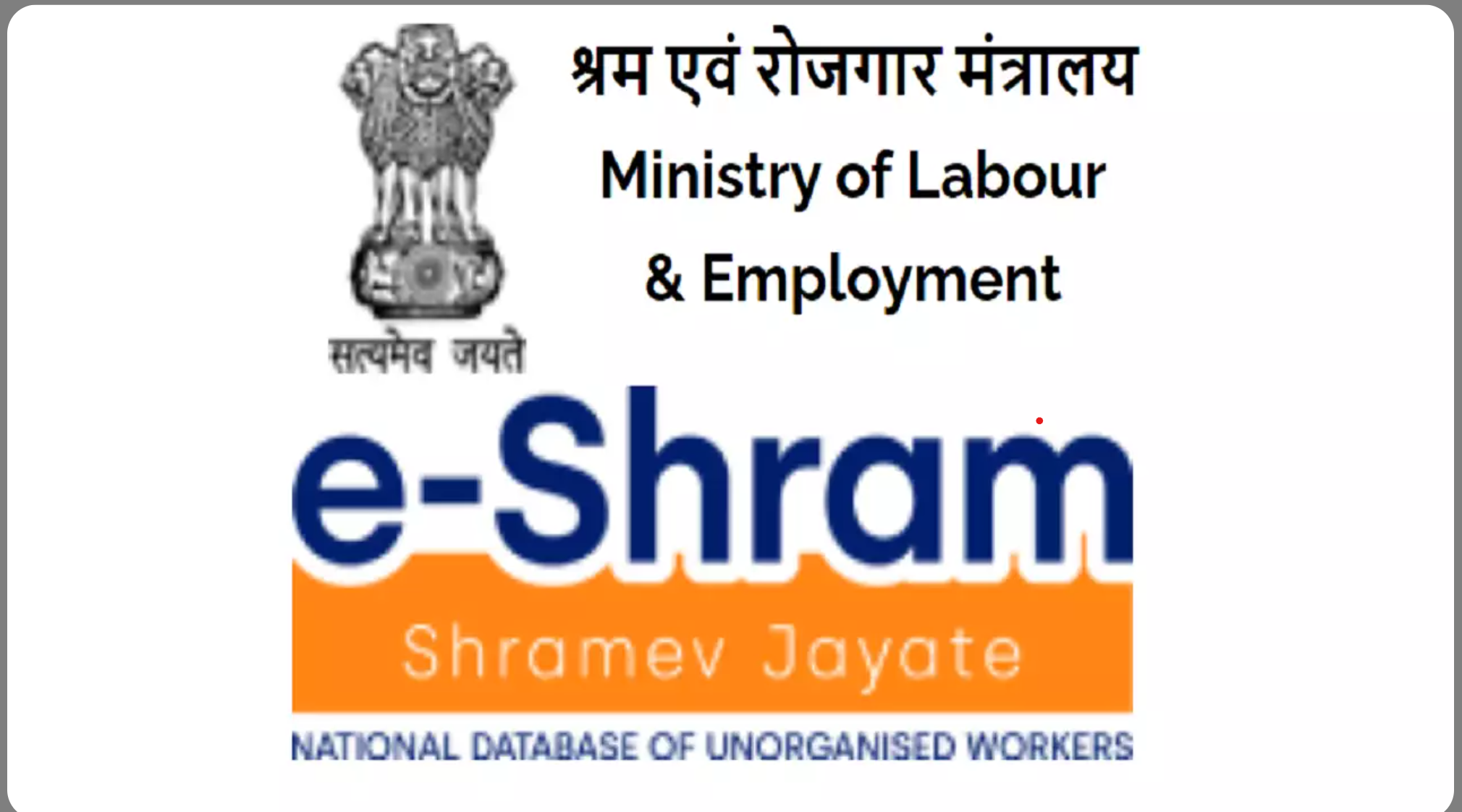
- 04 Sep 2024
In News:
The Ministry of Labour & Employment (MoLE) stated in a latest update that in the short span of three years since its launch, eShram has registered more than 30 crore unorganised workers, showcasing its rapid and widespread adoption among the unorganised workers.
Key Highlights:
- The Government envisages to establishing the eShram portal as a "One-Stop-Solution" for Country’s unorganised workers.
- During Budget speech 2024-25 it has been announced that, A comprehensive integration of eShram portal with other portals will facilitate such One-Stop-Solution.
- This initiative aims to facilitate access of various social security schemes being implemented by different Ministries/ Departments to unorganised workers through the eShram portal.
- As part of the eShram - One Stop Solution project, Ministry of Labour and Employment (MoLE) has been working to integrate major schemes like Pradhan Mantri Jeevan Jyoti Bima Yojana (PMJJBY), Pradhan Mantri Suraksha Bima Yojana (PMSBY), Ayushman Bharat Pradhan Mantri Jan Arogya Yojana (AB-PMJAY), Pradhan Mantri Street Vendors Atmanirbhar Nidhi (PM-SVANidhi), Mahatma Gandhi National Rural Employment Guarantee Act (MGNREGA), Pradhan Mantri Awas Yojana Gramin (PMAY-G), Ration Card scheme etc. for the benefit of the unorganised workers.
What is e-Shram and its purpose?
- e-Shram is a comprehensive National Database of Unorganised Workers (NDUW) launched by the Government of India under the Ministry of Labour & Employment.
- Its primary purpose is to facilitate delivery of welfare benefits and social security measures to unorganised sector workers across the country.
- The platform aims to register and provide identity cards to unorganised workers, enabling them to access various government schemes, benefits, and services more efficiently.
Who are unorganised workers?
Any worker who is a home-based worker, self-employed worker or a wage worker working in the unorganised sector and not a member of ESIC or EPFO, is called an unorganised worker.
What is unorganised sector?
Unorganised sector comprises of establishment/ units which are engaged in the production/ sale of goods/ services and employs less than 10 workers. These units are not covered under ESIC & EPFO.
What is UAN?
UAN or Universal Account Number is a 12 digit number uniquely assigned to each unorganised worker after registration on e-Shram portal. UAN is a permanent number i.e., once assigned, it will remain unchanged for any worker.
India Semiconductor Mission (ISM)
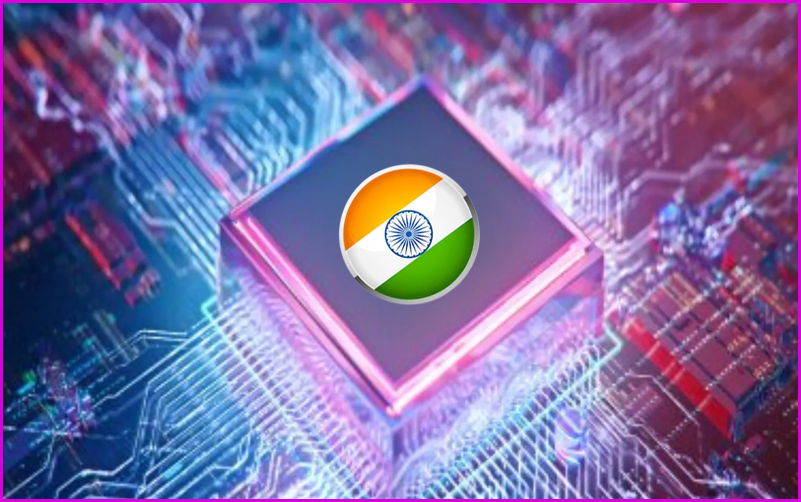
- 04 Sep 2024
In News:
The Union Cabinet, chaired by Prime Minister Narendra Modi, approved the proposal of Kaynes Semicon Pvt Ltd to setup a semiconductor unit in Sanand, Gujarat, with an investment of Rs 3,300 crore.
Key Highlights:
- The proposed unit, under the India Semiconductor Mission (ISM), will produce nearly 60 lakh chips per day.
- The chips produced in this unit will cater to a wide variety of applications which include segments such as industrial, automotive, electric vehicles, consumer electronics, telecom and mobile phones, etc.
- The initiative aligns with India’s goal of developing indigenous semiconductor capabilities.
- As per the reports, India’s semiconductor market is projected to reach $64 billion by 2026, positioning the country as a major global semiconductor hub.
- The first indigenously-developed chip is set to arrive in the country by the end of this year.
- In March, PM Modi laid the foundation stone of three semiconductor projects worth Rs 1.25 lakh crore.
- Tata Electronics is setting up a semiconductor fab in Dholera, Gujarat and one semiconductor unit in Morigaon, Assam.
- CG Power is setting up one semiconductor unit in Sanand. These units will produce lakhs of direct and indirect jobs.
- These four units will bring an investment of almost Rs 1.5 Lakh crore. The cumulative capacity of these units is about 7 crore chips per day, according to the Ministry of Electronics & IT.
- The Programme for Development of Semiconductors and Display Manufacturing Ecosystem in India was notified in 2021 with a total outlay of Rs 76,000 crore.
About India Semiconductor Mission (ISM)
- It is a specialized and independent Business Division within the Digital India Corporation that aims to build a vibrant semiconductor and display ecosystem to enable India’s emergence as a global hub for electronics manufacturing and design.
- ISM has all the administrative and financial powers and is tasked with the responsibility of catalysing the India Semiconductor ecosystem in manufacturing, packaging, and design.
- ISM has an advisory board consisting of some of the leading global experts in the field of semiconductors.
- ISM has been working as a nodal agency for the schemes approved under the Semicon India Programme.
Semicon India Programme:
- Launched in 2021 with a total budget of Rs. 76,000 crore, the ISM is overseen by the Ministry of Electronics and IT (MeitY), Government of India. This initiative is part of a broad effort to develop a sustainable semiconductor and display ecosystem within the country.
- The programme is designed to offer financial support to companies involved in semiconductor and display manufacturing and design. It also aims to foster the creation of domestic Intellectual Property (IP), and to promote and incentivize the Transfer of Technologies (ToT).
- Under this programme, four key schemes have been introduced:
- Scheme for establishing Semiconductor Fabs in India.
- Scheme for establishing Display Fabs in India.
- Scheme for setting up Compound Semiconductors/Silicon Photonics/Sensors Fabs and Semiconductor Assembly, Testing, Marking, and Packaging (ATMP)/OSAT facilities in India.
- Design Linked Incentive (DLI) Scheme.
Centre gives clearance for ‘Mission Mausam’
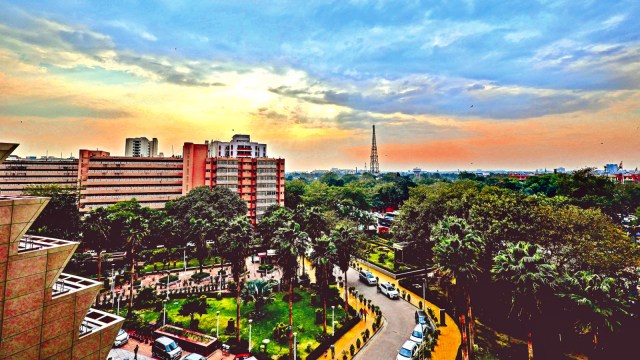
- 13 Sep 2024
The Union Cabinet approved 'Mission Mausam,' a groundbreaking initiative with an investment of ?2,000 crore over the next two years. The mission, spearheaded by the Ministry of Earth Sciences (MoES), aims to significantly advance India's capabilities in atmospheric sciences and climate resilience.
Objectives and Key Focus Areas
Mission Mausam is designed to improve the accuracy and effectiveness of weather forecasting and climate management through several critical components:
- Advanced Technology Deployment: The mission will focus on deploying next-generation radars and satellite systems equipped with advanced sensors. These technologies are crucial for enhancing weather surveillance and prediction accuracy.
- Research and Development: A key objective of Mission Mausam is to bolster research and development in atmospheric sciences. This will include the development of enhanced Earth system models and advanced weather forecasting techniques.
- GIS-Based Decision Support System: An automated decision support system based on Geographic Information Systems (GIS) will be developed to facilitate real-time data sharing and improve decision-making processes.
Institutional Framework and Implementation
The Ministry of Earth Sciences will oversee the implementation of Mission Mausam. The following institutions will play central roles in the mission:
- India Meteorological Department (IMD)
- Indian Institute of Tropical Meteorology
- National Centre for Medium-Range Weather Forecasting
Additional support will come from other MoES bodies:
- Indian National Centre for Ocean Information Services
- National Centre for Polar and Ocean Research
- National Institute of Ocean Technology
Sectoral Benefits
Mission Mausam is expected to bring significant improvements across various sectors:
- Agriculture: Enhanced agromet forecasts will aid farmers in optimizing crop management and increasing resilience to climatic variability.
- Disaster Management: Improved monitoring and early warning systems will enhance disaster preparedness and response, potentially reducing loss of life and property damage.
- Defence: Accurate weather forecasting will support strategic planning and operational efficiency within the defence sector.
- Energy and Water Resources: Better weather predictions will lead to more efficient management of energy and water resources.
- Aviation: Safer aviation will be supported by more reliable weather information, reducing risks and improving travel safety.
- Tourism: Sustainable tourism will benefit from accurate weather forecasting, contributing to safer and more enjoyable travel experiences.
Mission Mausam represents a significant investment in India’s ability to manage and mitigate the impacts of climate change and extreme weather events, ultimately aiming to enhance the resilience of communities and support sustainable development.
Delhi Declaration on Civil Aviation
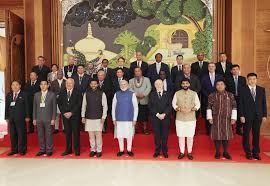
- 13 Sep 2024
In the News:
The Prime Minister has announced the adoption of the Delhi Declaration on Civil Aviation.
Overview:
The Delhi Declaration was unanimously accepted following the conclusion of the 2nd Asia Pacific Ministerial Conference held in New Delhi. This Declaration provides a thorough framework designed to boost regional cooperation, tackle emerging challenges, and promote sustainable growth within the civil aviation sector across the Asia-Pacific region. The conference also marks the 80th anniversary of the International Civil Aviation Organization (ICAO).
Key Announcements:
- Prime Minister Narendra Modi highlighted significant achievements in Indian aviation, noting that women make up 15% of Indian pilots, a figure that surpasses the global average.
- A proposal for establishing an International Buddhist Circuit was introduced to enhance regional tourism and connectivity.
- India plans to build between 350 and 400 new airports by 2047, aiming to increase its global aviation presence.
- A Pacific Small Island Developing States Liaison Office will be created to help smaller nations manage aviation-related issues.
- The ‘Ek Ped Ma Ke Naam’ campaign was launched, with a goal to plant 80,000 trees in honor of ICAO’s 80 years, emphasizing green aviation and sustainability in future initiatives.
Significance of the Delhi Declaration:
- It marks a significant advancement in enhancing regional cooperation in civil aviation within the rapidly growing Asia-Pacific region.
- The framework tackles crucial issues such as sustainability, green aviation, and safety, which are vital for the current aviation industry.
- Initiatives like the International Buddhist Circuit are in line with broader regional objectives to improve connectivity, tourism, and economic development throughout Asia.
- India aims to assert itself as a major global aviation player with its ambitious plan to construct 350-400 airports by 2047, thereby becoming a key contributor to aviation infrastructure development.
Civil Aviation Sector in India:
- India ranks as the third-largest domestic aviation market globally and is projected to become the third-largest overall by 2025.
- The sector is expanding through significant government programs such as the UDAN Scheme, Pradhan Mantri Gati Shakti Plan, and NCAP 2016.
- With 136 operational airports and plans for an additional 100, the government is focused on modernizing infrastructure, improving regional connectivity, and promoting public-private partnerships for airport development.
International Civil Aviation Organization (ICAO):
- Established in 1947 by the Chicago Convention (1944).
- Headquarters: Montreal, Canada.
- Functions:
- Ensures the safety and efficiency of international air transport.
- Sets standards for aviation safety, security, and environmental performance.
- Encourages regional and international agreements to liberalize aviation markets.
- Promotes cooperation and dialogue among its 193 member states.
- Develops legal frameworks for aviation laws and standards.
SAARTHI APP
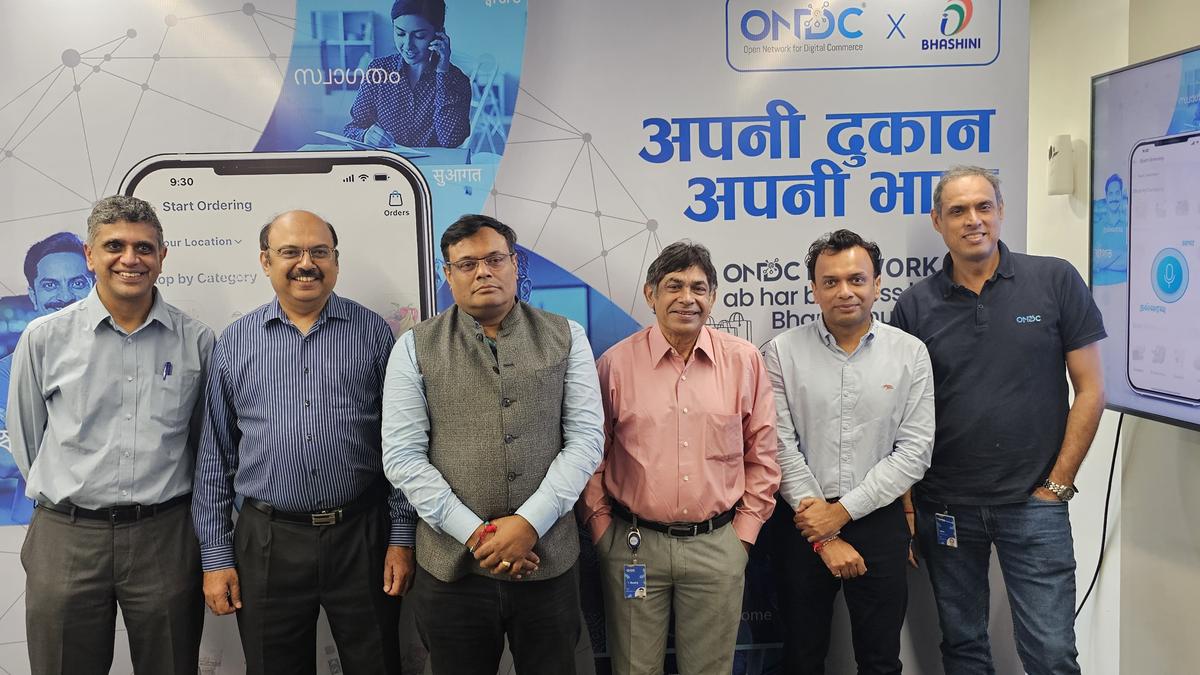
- 13 Sep 2024
In News:
Recently, the Open Network for Digital Commerce (ONDC) introduced the Saarthi app in partnership with Bhashini.
About the Saarthi App:
- The Saarthi app is a reference tool designed to help businesses create their own customized buyer-side applications.
- It facilitates network participants in developing buyer apps with multilingual capabilities. Initially, the app supports Hindi, English, Marathi, Bangla, and Tamil, with plans to expand to all 22 languages offered by Bhashini.
- The app features real-time translation, transliteration, and voice recognition, allowing businesses to broaden their market reach and attract customers from new regions.
What is Bhashini?
- Bhashini is India's AI-driven language translation platform. Its goal is to facilitate easy access to the internet and digital services in Indian languages, including through voice-based interactions, and to aid in the creation of content in these languages.
- The platform is designed to provide Artificial Intelligence and Natural Language Processing (NLP) resources to Indian MSMEs, startups, and individual innovators. This support will help developers offer all Indians access to the internet and digital services in their native languages.
- Additionally, Bhashini features a ‘Bhasadaan’ section for crowdsourcing contributions and is available through Android and iOS apps.
Exercise AL NAJAH
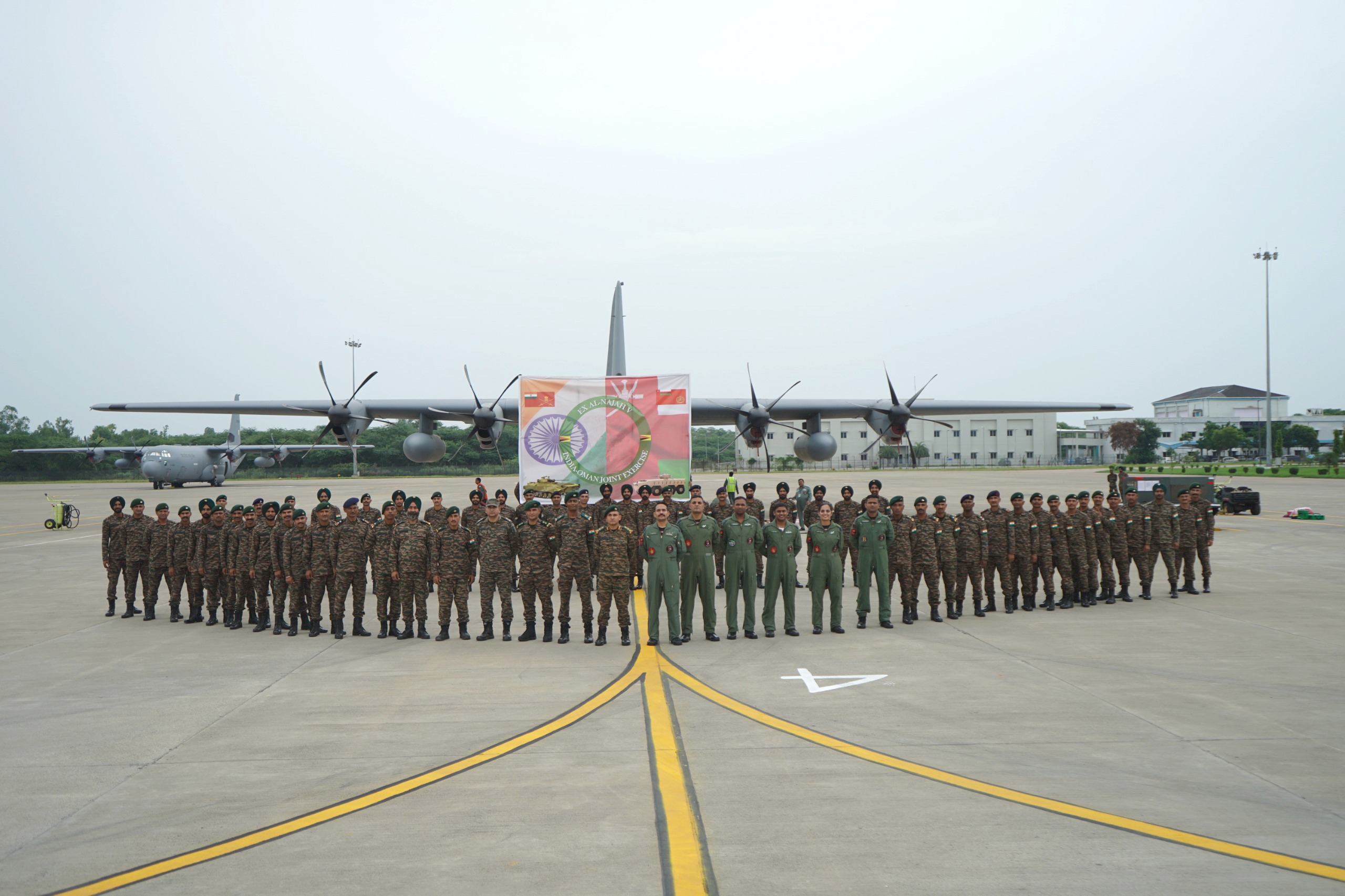
- 13 Sep 2024
In News:
- Indian Army contingent departed for the 5th edition of the India-Oman Joint Military Exercise AL NAJAH on September 12, 2024.
Key Details:
- Location: Rabkoot Training Area, Salalah, Oman.
- Frequency: Exercise AL NAJAH has been held biennially since 2015, alternating between India and Oman. Last edition was conducted at Mahajan, Rajasthan.
- Indian Army Contingent:
- Size: 60 personnel
- Composition: Battalion of the Mechanised Infantry Regiment, along with personnel from other arms and services.
- Royal Army of Oman Contingent:
- Size: 60 personnel
- Composition: Troops of the Frontier Force.
- Objective:
- Enhance joint military capability for counter-terrorism operations under Chapter VII of the United Nations Charter.
- Focus on operations in a desert environment.
- Tactical Drills:
- Joint Planning
- Cordon and Search Operation
- Fighting in Built-Up Areas
- Establishment of Mobile Vehicle Check Posts
- Counter Drone Operations
- Room Intervention
- Training Exercises:
- Combined field training exercises simulating real-world counter-terrorism missions.
- Outcomes Expected:
- Exchange of best practices in tactics, techniques, and procedures for joint operations.
- Foster interoperability, goodwill, and camaraderie between the two armies.
- Strengthen defense cooperation and enhance bilateral relations between India and Oman.
INDUS-X Summit 2024

- 14 Sep 2024
The third edition of the INDUS-X Summit, held on September 9-10, 2024, in California, marked a significant advancement in the collaborative defence innovation ecosystem between India and the USA. Co-organized by the U.S.-India Strategic Partnership Forum (USISPF) and Stanford University, the summit emphasized the deepening of defence cooperation through innovation, joint research, and investment.
Key Outcomes
A major highlight of the summit was the signing of a Memorandum of Understanding (MoU) between India’s Innovations for Defence Excellence (iDEX) and the US Department of Defense’s Defence Innovation Unit (DIU). This agreement aims to enhance collaboration in defence innovation. The summit also saw the release of the INDUS-X Impact Report and the launch of a dedicated webpage for the initiative on both iDEX and DIU platforms.
Technological Showcase and Expert Dialogue
The summit provided a platform for startups and MSMEs to present cutting-edge technologies. Additionally, two advisory forums—the Senior Advisory Group and the Senior Leaders Forum—facilitated in-depth discussions on future technology trends, defence supply chain resilience, and funding opportunities for defence innovation. The discussions included contributions from experts across the defence industry, investment sectors, academia, and think tanks from both countries.
Leadership and Commitment
The Indian delegation was led by Amit Satija, Joint Secretary (Defence Industries Promotion), who underscored the commitment of both India and the USA to advancing defence technology through strategic collaboration. Since its launch in June 2023 during the Indian Prime Minister’s visit to the US, INDUS-X has achieved significant milestones, reinforcing its role in strengthening the US-India defence innovation partnership.
NEUROMORPHIC COMPUTING
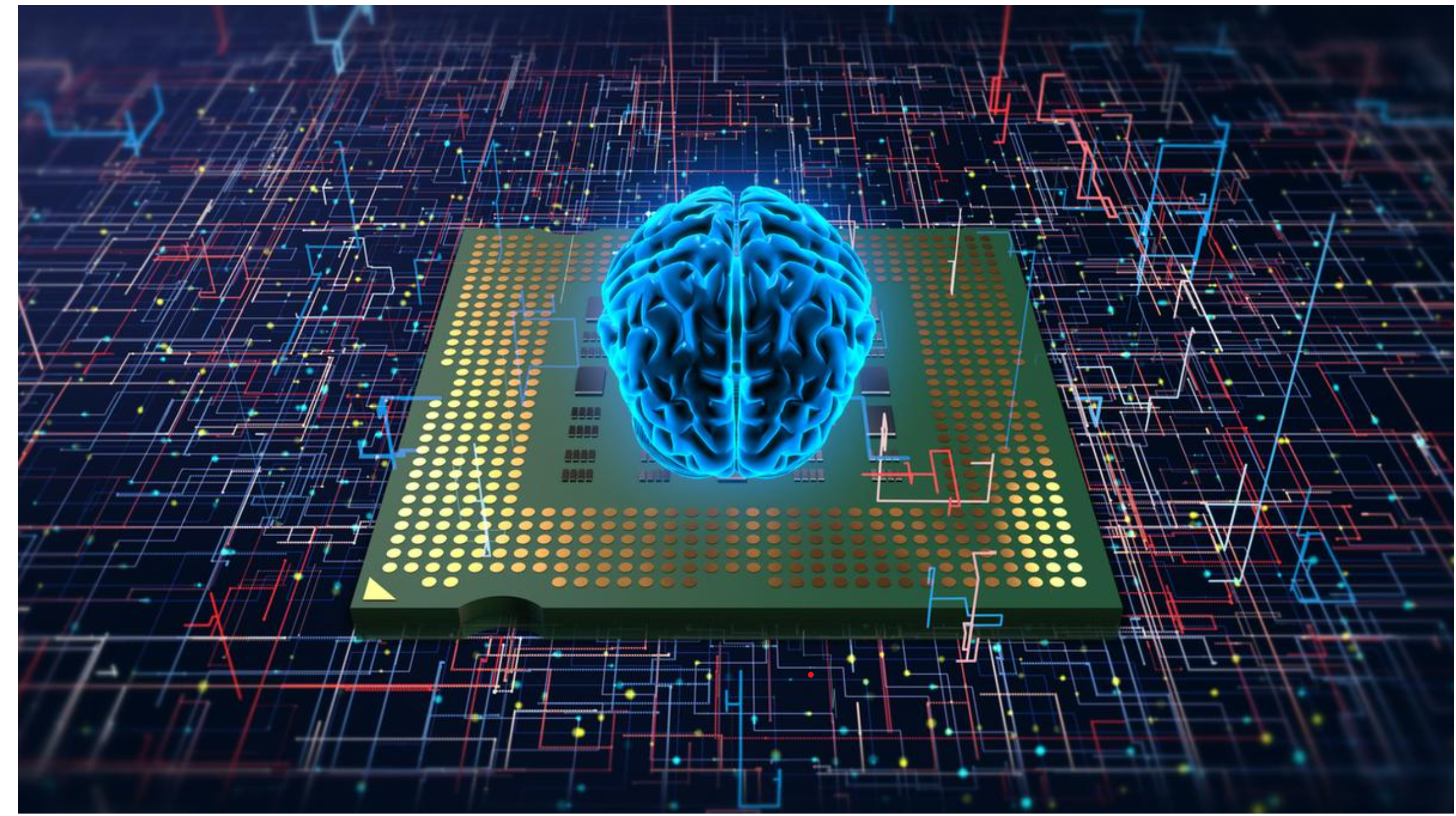
- 14 Sep 2024
Indian Researchers Advance Neuromorphic Computing with Innovative Molecular Film
Researchers at the Indian Institute of Science (IISc) have made a groundbreaking development in neuromorphic computing, creating an analog computing system that leverages molecular films. This new system can store and process data across 16,500 different states, a significant leap from conventional binary computing methods.
Understanding Neuromorphic Computing
Neuromorphic computing is an advanced computing paradigm designed to emulate the structure and function of the human brain. By using artificial neurons and synapses, this approach marks a departure from traditional binary computing, enabling systems to learn and adapt from their environments.
How Neuromorphic Computing Works
Neuromorphic computing relies on Artificial Neural Networks (ANNs), which consist of millions of artificial neurons similar to those found in the human brain. These neurons communicate through electrical spikes or signals, following the principles of Spiking Neural Networks (SNNs). This setup allows the system to replicate the brain’s neuro-biological networks, performing tasks such as visual recognition and data interpretation with high efficiency.
Key Features of Neuromorphic Systems
- Brain-Inspired Architecture: Neuromorphic systems mimic the brain's structure, particularly the neocortex, which is involved in higher cognitive functions like sensory perception and motor commands.
- Spiking Neural Networks: These networks use spiking neurons that interact through electrical signals, mirroring the behavior of biological neurons. This design facilitates parallel processing and real-time learning.
- Integrated Memory and Processing: Unlike traditional von Neumann architecture, which separates memory and processing functions, neuromorphic systems combine these functions, leading to improved computational efficiency.
Advantages of Neuromorphic Computing
- Enhanced Efficiency: Neuromorphic computing enables faster problem-solving, pattern recognition, and decision-making compared to conventional systems.
- Revolutionizing AI Hardware: It holds the potential to transform AI hardware, allowing for complex tasks, such as training Large Language Models (LLMs), to be performed on personal devices. This advancement addresses current limitations related to hardware resources and energy efficiency.
- Energy Efficiency: Current AI tools are confined to data centers due to their high energy demands. Neuromorphic computing could overcome these constraints by providing energy-efficient hardware solutions.
Integration with Molecular Films
Molecular films, ultrathin layers engineered with specific electrical and optical properties, are central to this new advancement. These films act as neuromorphic accelerators, enhancing data storage and processing capabilities. They simulate brain-like parallel processing, improving performance in tasks such as matrix multiplication.
The recent development involves a molecular film that supports 16,500 possible states, a significant advancement over traditional binary systems. This film uses molecular and ionic movements to represent memory states, mapped through precise electrical pulses, creating what can be described as a "molecular diary" of states.
Comparison with Traditional Computing
- Parallel Processing: Neuromorphic computers can handle multiple streams of information simultaneously, unlike traditional computers that process data sequentially.
- Energy Efficiency: These systems consume less power by computing only when relevant events occur, making them suitable for real-time data processing applications.
- Analog vs. Binary: Traditional binary computing operates with bits that are either 0 or 1, akin to a light switch being on or off. In contrast, analog computing involves continuous values, similar to a dimmer switch with varying brightness levels.
This breakthrough by IISc researchers signifies a major step forward in neuromorphic computing, potentially transforming the way we approach data processing and artificial intelligence.
4 Years of Pradhan Mantri Matsya Sampada Yojana (PMMSY)
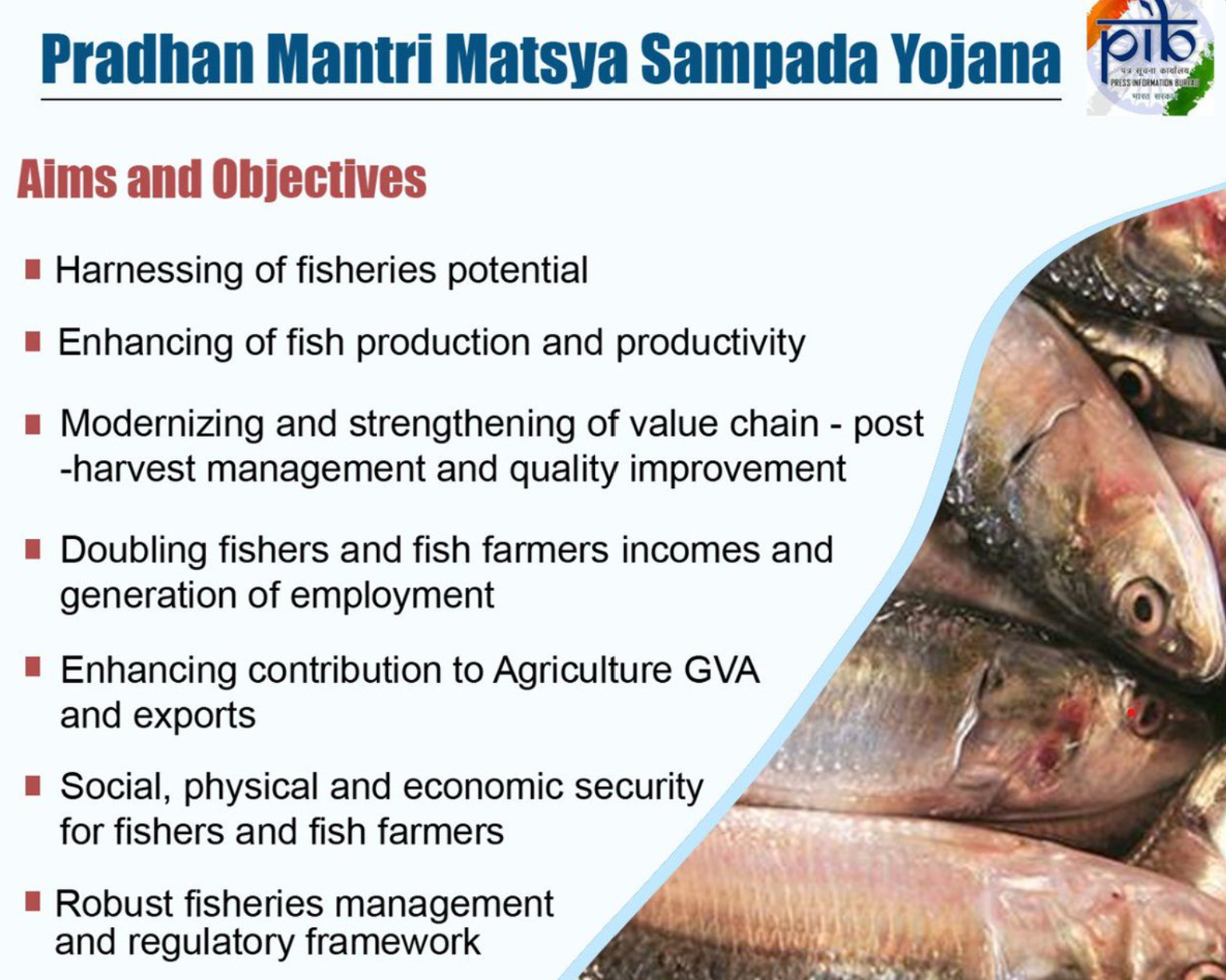
- 14 Sep 2024
Context:
Celebrating Four Years of Pradhan Mantri Matsya Sampada Yojana (PMMSY)
The Pradhan Mantri Matsya Sampada Yojana (PMMSY) has marked its fourth anniversary since its launch in 2020. This flagship scheme, managed by the Department of Fisheries under the Ministry of Fisheries, Animal Husbandry, and Dairying, aims to transform India’s fisheries sector into a vibrant and sustainable industry.
About PMMSY
The PMMSY is designed to invigorate the fisheries sector through a comprehensive approach that consolidates various existing schemes and initiatives. It operates as an umbrella scheme with two main components:
- Central Sector Scheme (CS)
- Centrally Sponsored Scheme (CSS)
The CSS component is divided into:
Non-Beneficiary Oriented Subcomponents:
- Enhancement of Production and Productivity
- Infrastructure and Post-Harvest Management
- Fisheries Management and Regulatory Framework
Fisheries Sector Overview
India stands as the third-largest fish producer globally and the second-largest in aquaculture production. It is also the fourth-largest exporter of fish and fisheries products, experiencing a notable 26.73% growth in exports from FY 2021-22 to FY 2022-23. Andhra Pradesh leads the country in fish production, followed by West Bengal and Gujarat. The sector supports the livelihoods of over 30 million people.
The Department of Fisheries is spearheading the PMMSY to foster a "Blue Revolution" through sustainable and responsible development of the fisheries sector.
Challenges Facing the Fisheries Sector
1. Overfishing: Excessive fishing pressure threatens fish stocks and disrupts ecosystem balance.
2. Illegal, Unreported, and Unregulated (IUU) Fishing: Practices such as fishing without proper authorization and using banned gear undermine conservation efforts.
3. Lack of Infrastructure and Technology: Outdated technology and inadequate storage and transportation facilities result in post-harvest losses and reduced productivity.
4. Poor Fisheries Management: Inefficient regulation enforcement and lack of comprehensive data exacerbate overfishing and IUU fishing.
5. Pollution and Habitat Destruction: Industrial pollution and habitat destruction from activities like coastal reclamation impact marine and freshwater ecosystems.
6. Climate Change: Altered oceanic and freshwater environments affect fish distribution and reproductive cycles, disrupting fisheries ecosystems.
7. Socio-Economic Issues: Poverty and limited livelihood options increase the vulnerability of fishing communities.
Government Initiatives for Sector Growth
1. National Fisheries Development Board (NFDB): Established in 2006, the NFDB plans and promotes fisheries development, enhancing production and infrastructure.
2. Blue Revolution: Launched in 2015, this initiative focuses on sustainable development, modern technology adoption, and strengthening fisheries governance.
3. Sagarmala Programme: Also launched in 2015, it aims to boost port-led development and includes projects to develop fishing harbors and cold chain infrastructure.
4. National Fisheries Policy: Introduced in 2020, this policy provides a framework for sustainable fisheries development, focusing on responsible management and socio-economic improvements.
5. Fish Farmers Development Agencies (FFDAs): Established at the district level to provide technical guidance and support to fish farmers.
6. Fisheries and Aquaculture Infrastructure Development Fund (FIDF): Created in 2018-19 with a fund of Rs 7,522.48 crore to address infrastructure needs, resulting in 121 approved projects.
7. Coastal Aquaculture Authority (CAA): Regulates coastal aquaculture to ensure sustainability and environmental conservation.
Way Forward
The fisheries sector in India holds immense potential due to its extensive coastline and water resources. Key measures to further enhance the sector include:
- Strengthening Monitoring and Enforcement: Combat IUU fishing with better monitoring and regulatory mechanisms.
- Supporting Sustainable Practices: Provide financial incentives for adopting modern technologies and sustainable practices.
- Protecting Aquatic Habitats: Ensure the conservation and restoration of vital habitats like mangroves and coral reefs.
- Improving Supply Chain Infrastructure: Develop better market linkages to ensure fair pricing and access to markets.
With these strategies, the PMMSY aims to drive the sustainable growth of India’s fisheries sector and bolster its contribution to the economy and livelihoods.
What is Helium & why is it used in rockets?

- 14 Sep 2024
The Crucial Role of Helium in Space Missions and the Challenges It Presents
Two NASA astronauts aboard Boeing’s Starliner will extend their stay on the International Space Station (ISS) due to issues with the spacecraft’s propulsion system, which includes problematic helium leaks. Meanwhile, SpaceX’s Polaris Dawn mission, which successfully launched on Tuesday, experienced delays due to similar helium-related issues with ground equipment.
The Importance of Helium in Spacecraft
Helium plays a critical role in space missions for several reasons. As an inert gas, it does not react with other substances or combust, which is crucial for maintaining the safety and stability of rocket systems. With an atomic number of 2, helium is the second lightest element after hydrogen. Its lightweight nature is essential for reducing the overall mass of rockets, which in turn minimizes fuel consumption and the need for more powerful (and costly) engines.
A key property of helium is its extremely low boiling point of –268.9 degrees Celsius. This allows it to remain in a gaseous state even in the super-cold environments where many rocket fuels are stored.
How Helium Is Utilized in Spacecraft
In spacecraft, helium is primarily used for:
- Pressurizing Fuel Tanks: Helium ensures that fuel flows smoothly to the rocket’s engines. As fuel and oxidizer are consumed during launch, helium fills the empty space in the tanks, maintaining consistent pressure.
- Cooling Systems: Helium is also used in cooling systems to manage the temperature of various components, preventing overheating and ensuring the proper functioning of the spacecraft.
Due to its non-reactive nature, helium can safely interact with the residual contents of the tanks without causing adverse reactions.
The Challenge of Helium Leaks
Despite its advantages, helium is prone to leakage. Its small atomic size and low molecular weight allow helium atoms to escape through even minor gaps or seals in storage tanks and fuel systems. This characteristic poses a significant challenge for space missions.
On Earth, helium leaks are easier to detect due to the gas’s rarity in the atmosphere. This makes helium a valuable tool for identifying potential faults in rocket or spacecraft fuel systems. The frequency of these leaks across various space missions, including those by ISRO and ESA, underscores a broader industry need for improved valve designs and more precise tightening mechanisms.
OpenAI’s powerful new AI model o1
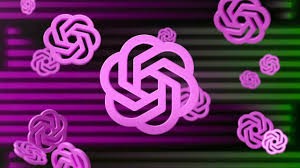
- 14 Sep 2024
OpenAI Unveils New AI Model: Key Features and Implications
OpenAI has introduced its latest AI model, a significant advancement that aims to elevate the capabilities of artificial intelligence. This new model, part of the enigmatic ‘Project Strawberry,’ is designed to think more like a human when solving complex problems, offering a glimpse into the future of AI reasoning.
Introduction of OpenAI o1
The new OpenAI o1 model marks the beginning of a series of "reasoning" models intended to address intricate tasks in fields such as science, coding, and mathematics. This model, released as part of a preview in both ChatGPT and the API, represents a major leap forward in AI technology. OpenAI has announced that this is just the start, with regular updates and enhancements expected. Additionally, evaluations for the next model update, currently under development, are included in this release.
How It Works
The o1 model is designed to approach queries with a level of careful consideration similar to human problem-solving processes. It learns to tackle problems from various angles, verify its outputs, and improve through feedback. According to OpenAI, this model performs at a level comparable to PhD students in disciplines such as physics, chemistry, and biology. It is particularly adept in mathematics and coding, solving 83% of problems in a challenging math contest— a notable improvement from previous versions that only managed 13%. In coding, it has outperformed 89% of participants.
Sub-Models and Their Features
Alongside the main o1 model, OpenAI has also launched the o1-Mini. This version is a more cost-effective alternative, being 80% cheaper than the o1-preview. The o1-Mini is designed to offer fast and efficient reasoning, particularly beneficial for developers focused on coding tasks.
Implications for Jobs and Research
The advanced problem-solving capabilities of the o1 model are expected to impact various job sectors, particularly those involving routine coding, data analysis, and mathematical modeling. While this could reduce the need for human intervention in some tasks, it may also create new roles in AI safety and maintenance. For researchers, the model offers a powerful tool for accelerating breakthroughs in fields like physics, chemistry, biology, and healthcare. Its ability to generate formulas and analyze large datasets positions it as a valuable asset for advancing scientific research.
Access and Usage
The OpenAI o1 model is now accessible to ChatGPT Plus and Team users. The o1-preview and o1-mini can be selected using the model picker, with weekly message limits set at 30 for o1-preview and 50 for o1-mini. This rollout marks a new era in AI capabilities, showcasing OpenAI’s commitment to pushing the boundaries of artificial intelligence.
Key Points to Note
1. Not Artificial General Intelligence (AGI): Despite its advanced capabilities, o1-preview is not a step towards AGI, which aims for AI systems to perform cognitive tasks as well as or better than humans. The o1 models, while more adept at reasoning, still fall short of human-level intelligence.
2. Impact on Competition: While o1 gives OpenAI a temporary edge, it is expected to prompt competitors like Google, Meta, and others to accelerate their development of similar advanced models. These companies have the expertise to quickly develop models that could rival or surpass o1's capabilities.
3. Unknowns About Model Operations: Details on how o1 operates remain limited. It combines various AI techniques, including "chain of thought" reasoning and reinforcement learning, but specifics about its training data and internal mechanisms are not fully disclosed.
4. Cost Considerations: Using o1-preview comes at a higher cost compared to previous models. OpenAI charges $15 per million input tokens and $60 per million output tokens for corporate customers, compared to $5 and $15, respectively, for GPT-4o. The model’s complex reasoning requires more tokens, potentially making it more expensive to use.
5. Chain of Thought Transparency: OpenAI has chosen not to reveal the chain of thought process used by o1, citing safety and competitive reasons. This decision may cause issues for enterprise customers who lack visibility into their usage and billing accuracy.
6. New Scaling Laws: OpenAI's o1 models reveal new "scaling laws" suggesting that longer inference times can improve accuracy. This could increase the computing power and costs required to run these models effectively.
7. Potential Risks: o1 models could enable powerful AI agents, but they also present risks. Instances of “reward hacking” and unintended actions suggest that companies must carefully manage these agents to avoid ethical, legal, or financial issues.
8. Safety Assessments: OpenAI reports that o1 is generally safer than previous models, though it still poses a "medium risk" of assisting in biological attacks. This rating has raised concerns among AI safety and national security experts.
9. Concerns About Persuasion and Deceptive Alignment: AI safety experts are wary of o1’s persuasive capabilities and the potential for “deceptive alignment,” where a model might deceive users to achieve hidden goals. These concerns highlight the ongoing challenges in ensuring AI safety and transparency.
Overall, while the o1 models represent a significant leap forward in AI reasoning and problem-solving, they also introduce new complexities and risks that will need to be managed as they become more integrated into various applications.
40% Amazon rainforest unprotected: why is this significant for climate change?
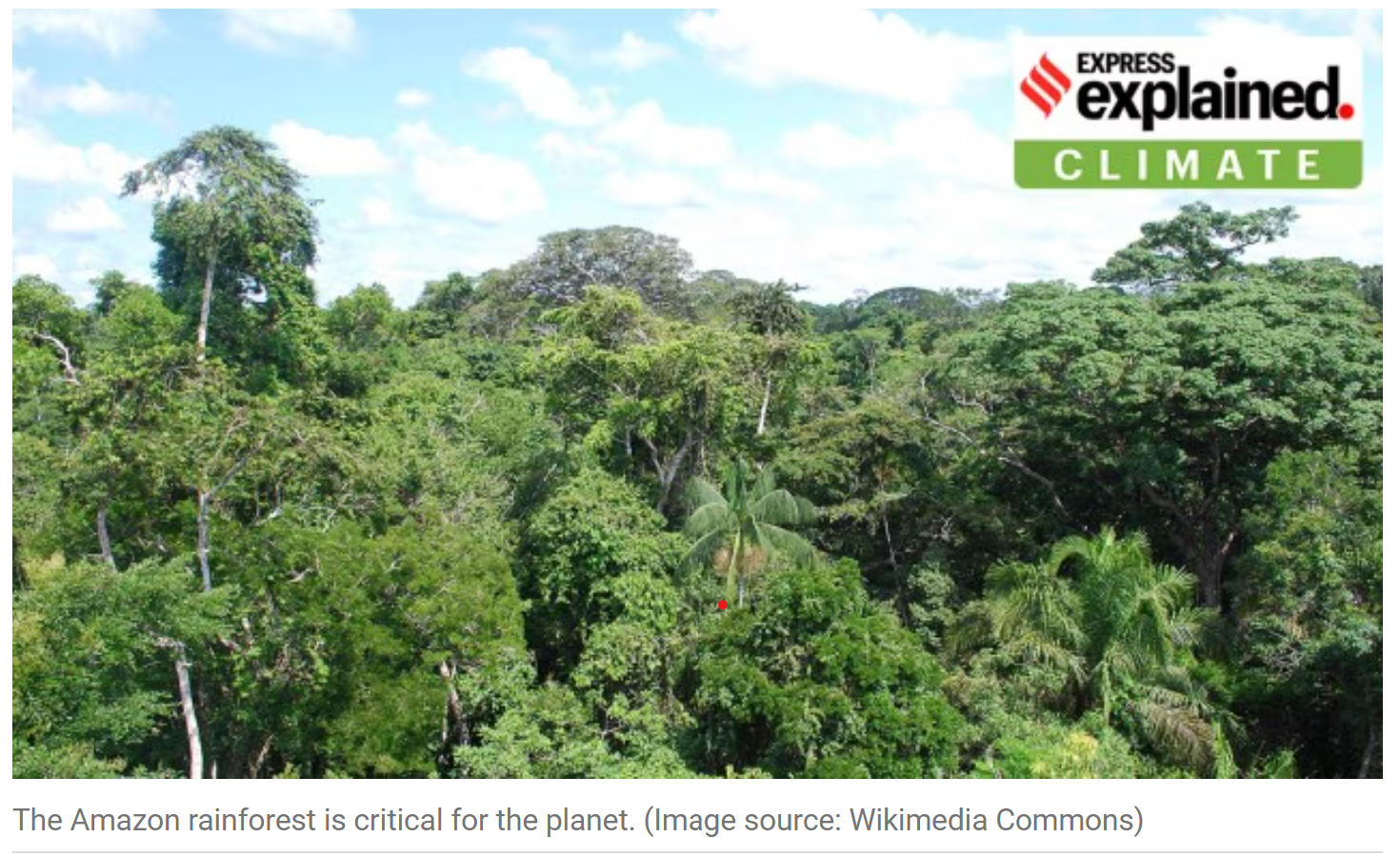
- 12 Sep 2024
In News
- Scientists agree that preserving the Amazon rainforest is critical to combating global warming, but new data published recently, indicate huge swathes of the jungles that are vital to the world’s climate remain unprotected.
- Nearly 40% of the areas of the Amazon rainforest most critical to curbing climate change have not been granted special government protection, as either nature or indigenous reserves, according to an analysis by nonprofit Amazon Conservation.
- The areas lie in the far southwest of the Amazon in Peru and the far northeast in Brazil, French Guiana, and Suriname, the data show.
- Those parts of the Amazon have the biggest, densest trees and the most continuous canopy cover. That means these areas hold the most carbon, which would be released into the atmosphere as climate-warming greenhouse gas if the jungle is destroyed by fire or logging.
What satellite data show
- Amazon Conservation analysed new data from the satellite imaging company Planet that used lasers to get a three-dimensional picture of the forest and combined it with machine-learning models.
- Only aboveground vegetation was considered, and not underground carbon in roots and soils.
- Amazon Conservation’s Monitoring of the Andean Amazon Project (MAAP)’s analysis shows that 61% of the peak carbon areas in the Amazon are protected as indigenous reserves or other protected lands, but the rest generally has no official designation.
- In Brazil, Suriname and French Guiana, only 51% of peak carbon areas are labeled for preservation. Peru protects a higher proportion of its critical areas, but some of the areas that have been left unprotected have been earmarked for logging.
Why the Amazon matters
- MAAP published an analysis last month showing that the Amazon contained 71.5 billion tonnes of carbon, roughly double the global carbon dioxide emissions for 2022. That analysis showed that the Amazon just barely absorbed more carbon than it released in the decade leading up to 2022, a positive signal for the world’s climate.
- But that remains an area of intense debate, with other studies showing the Amazon has flipped to become an emissions source.
- As the effects of anthropogenic climate change become more stark with each passing day, the Amazon becomes one of the most valuable assets for the planet’s health. Scientists say that if the Amazon becomes an emission source instead of a carbon sink — which absorbs carbon from the atmosphere — the impact on the planet may be cataclysmic.
Controversy over Mumbai's salt pans: why do these lands matter?
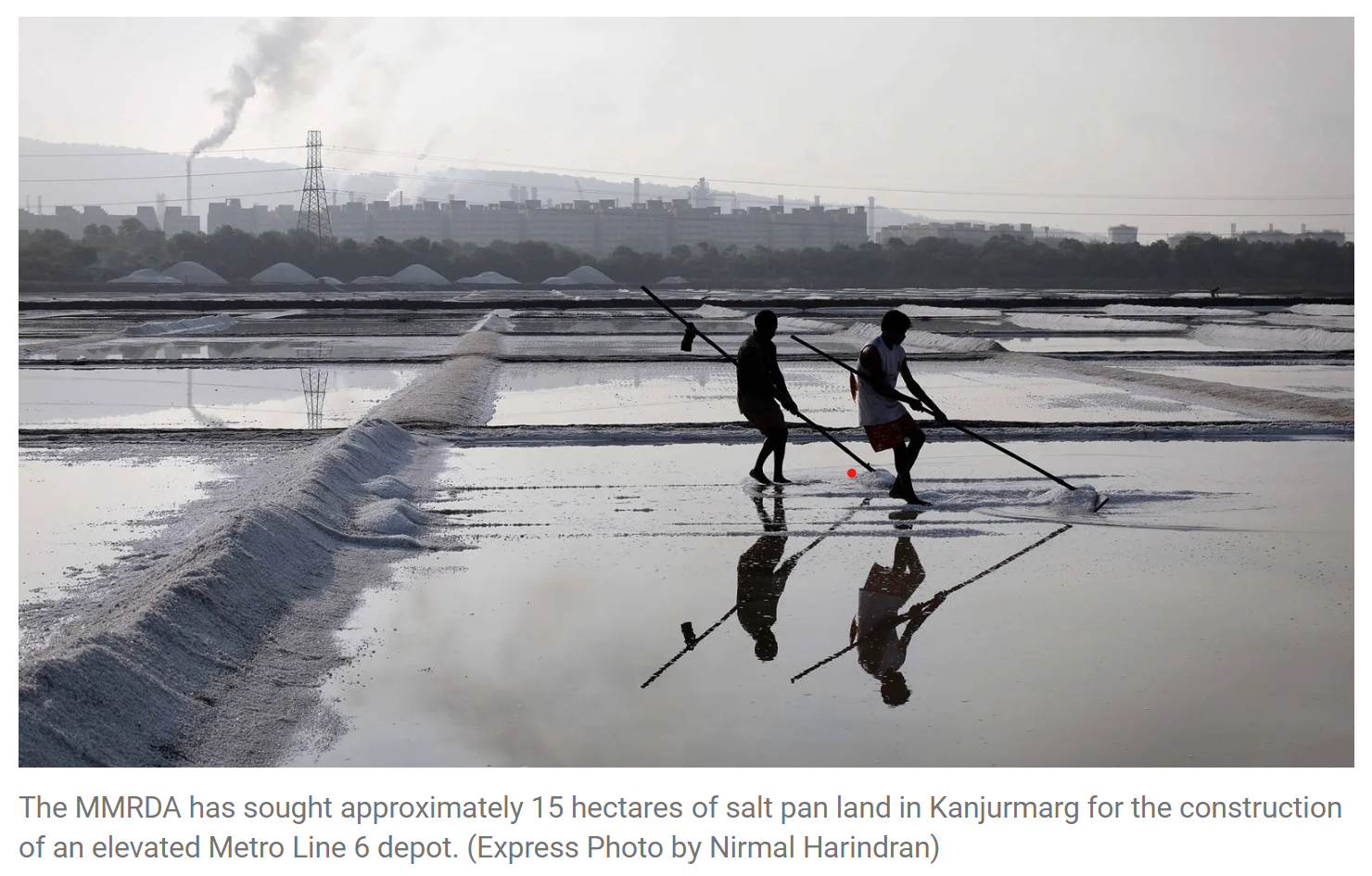
- 12 Sep 2024
In News:
Earlier this month, the Centre approved the transfer of 256 acres of salt pan land in Mumbai to the Dharavi Redevelopment Project Pvt Ltd (DRPPL), a joint venture between Adani Realty Group and the Maharashtra government, for building rental housing for slum dwellers.
What are salt pan lands?
- They comprise parcels of low-lying lands where seawater flows in at certain times, and leaves behind salt and other minerals. Along with Mumbai’s mangroves (also at risk due to development), this ecosystem is instrumental in protecting the city from flooding.
- According to the Coastal Regulation Zone (CRZ) notification of 2011, the ecologically sensitive salt pans fall under CRZ-1B category, where no economic activity is allowed with the exception of salt extraction and natural gas exploration.
- In all, 5,378 acres of land in Mumbai have been designated as salt pan lands, approximately nine times the size of the Dharavi slum. About 31% of this land is located in residential and commercial belts, and roughly 480 acres are encroached upon, a 2014 study by the state government found. The same study found that about 1,672 acres of Mumbai’s more than 5,000 acres of salt pan lands are “developable”.
- Nationally, some 60,000 acres have been demarcated as salt pan lands, spread across Maharashtra, Andhra Pradesh, Tamil Nadu, Odisha, Gujarat, and Karnataka. Andhra Pradesh (20,716 acres) boasts the largest expanse of such land, followed by Tamil Nadu (17,095 acres) and Maharashtra (12,662 acres).
Why are Mumbai’s salt pan lands at risk?
Development Pressure
- Land Scarcity: Mumbai faces severe land scarcity, with its burgeoning population and high demand for space. Salt pans, being some of the last undeveloped areas, are increasingly targeted for various projects.
- Development Plans: Multiple state governments have eyed salt pan lands for different uses.
Environmental Significance
- Flood Prevention: Salt pans are situated in low-lying areas that naturally collect rainwater and tidal flows, helping to mitigate flooding in Mumbai’s eastern suburbs. They act as natural buffers, absorbing excess water during heavy rains and high tides.
- Historical Context: During the July 2005 deluge, salt pans helped reduce the impact of flooding compared to other areas of Mumbai, highlighting their role in flood management.
- Ecosystems: Salt pans are home to various species of birds and insects and contribute to local biodiversity. The destruction of these lands could lead to loss of habitat and disruption of local ecosystems.
Risks of Development
- Flooding Concerns: Environmentalists argue that constructing on these low-lying areas will lead to increased flooding in areas like Vikhroli, Kanjurmarg, and Bhandup. This is because the land’s natural ability to absorb and manage water will be compromised.
- Quality of Life Issues: Relocating slum-dwellers to these areas raises concerns about their living conditions. Salt pans are prone to flooding, which could undermine the quality of life for new residents. The cost of making these lands habitable, including extensive land filling and waterproofing measures, could negate the benefits of affordable housing.
- Conflict with Climate Goals: There is a contradiction between Mumbai’s Climate Action Plan, which recognizes climate threats, and the push to develop areas critical for flood management.
Strengthening India-UAE Relations
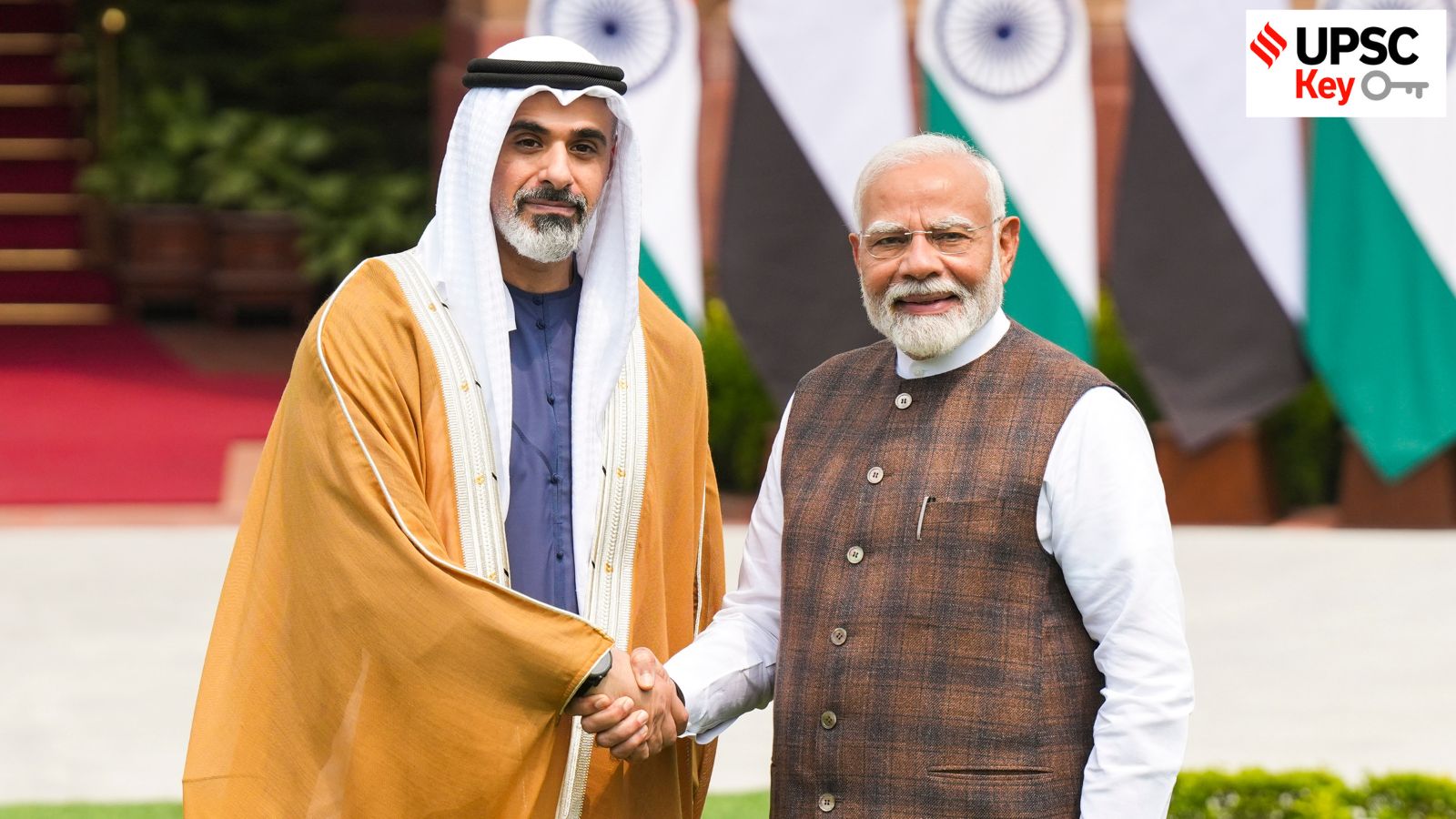
- 11 Sep 2024
The bilateral relationship between India and the UAE has flourished in recent years, marked by deepening strategic ties and multifaceted collaboration. The recent visit of Abu Dhabi's Crown Prince to India highlights the growing importance of this partnership. The UAE is now India's second-largest export destination, third-largest trading partner, and fourth-largest investor. The Comprehensive Economic Partnership Agreement (CEPA), effective from May 2022, has been transformative, boosting total trade by nearly 15% and increasing non-oil trade by 20% in the 2023-24 period.
Significance of the UAE for India
- Economic Gateway: The UAE is a crucial entry point for India into the Middle East and North Africa (MENA) region. As India's third-largest trading partner, bilateral trade reached USD 84.5 billion in FY 2022-23. The CEPA, removing tariffs on 80% of Indian exports to the UAE, has led to a 5.8% increase in non-oil trade early in 2023 and is expected to elevate trade to USD 100 billion by 2030. The UAE’s strategic location and infrastructure make it an ideal hub for re-exporting Indian goods to Africa and Europe.
- Energy Security: The UAE is India's fourth-largest crude oil supplier, with oil imports surging by 81% in January 2024. The partnership extends to renewable energy projects, aligning with India's goal of 500 GW renewable energy capacity by 2030, underscoring the UAE's role in India's energy transition.
- Investment Catalyst: FDI from the UAE to India has increased more than threefold, reaching USD 3.35 billion from USD 1.03 billion in 2021-22. The UAE-India High-Level Joint Task Force on Investments has played a key role, with significant investments like the Abu Dhabi Investment Authority’s Rs 4,966.80 crore in Reliance Retail Ventures Limited.
- Strategic Partner: The UAE has become a vital strategic ally for India in counterterrorism and maritime security. The bilateral naval exercise "Zayed Talwar" in 2021 and India's access to the UAE’s Al Dhafra air base highlight the expanding defense cooperation between the two nations.
- Remittances and Soft Power: The 3.5 million-strong Indian diaspora in the UAE is a major source of remittances and cultural influence. In 2022, India received nearly USD 111 billion in global remittances, with the UAE as a significant contributor. The diaspora also strengthens cultural ties, as evidenced by the BAPS Hindu Temple in Abu Dhabi, symbolizing the UAE’s commitment to religious tolerance.
- Tech and Innovation Hub: The UAE-India partnership is increasingly focused on technology and innovation. The I2U2 group (India, Israel, UAE, USA) aims to enhance cooperation in clean energy and food security. The UAE’s USD 2 billion investment in food parks in India and the UAE-India Artificial Intelligence Bridge, launched in 2018, facilitate joint research and position both countries at the forefront of technological advancement.
Areas of Friction
- Labor Rights: Persistent labor rights issues for Indian workers in the UAE, including passport confiscation and wage theft, remain a concern.
- Geopolitical Tensions: India’s growing ties with Israel and the UAE’s normalization with Israel complicate the geopolitical landscape, potentially entangling India in regional rivalries, especially with Iran. The UAE’s increasing ties with China also add strategic complexity.
- Energy Transition: Both nations’ commitments to net-zero targets—India by 2070 and the UAE by 2050—pose challenges to their traditional hydrocarbon-based relationship.
- Trade Imbalance: Despite growing trade, India’s trade deficit with the UAE stood at USD 16.78 billion in FY 2022-23. While the CEPA aims to address this, diversifying trade beyond hydrocarbons remains a challenge.
- Maritime Security: Coordinating responses to maritime security threats while respecting strategic autonomy is challenging. The UAE’s expanding naval presence and India’s growing maritime footprint require careful coordination.
Enhancing Relations
- Digital Diplomacy: India could use its IT capabilities to develop digital platforms for collaboration, including a real-time trade portal and a joint innovation hub, and expand cross-border digital payments.
- Green Energy Corridor: Proposing an "India-UAE Green Energy Corridor" could align with both nations’ climate goals through joint investments and research in renewable energy.
- Skill Bridge Program: A "Skill Bridge Program" could upskill Indian workers for the UAE job market, focusing on emerging sectors like AI and sustainable technologies.
- StartUp Synergy Scheme: Developing a "StartUp Synergy Scheme" could foster collaboration between Indian and UAE startups through joint incubation programs and market access facilitation.
- Maritime Cooperation Blueprint: Creating a comprehensive "India-UAE Maritime Cooperation Blueprint" could enhance collaboration in maritime security, blue economy initiatives, and port development, including joint patrols and deep-sea ports.
Polaris Dawn Mission: First Private Spacewalk Attempt

- 11 Sep 2024
Recently, a SpaceX Falcon 9 rocket launched from Florida, carrying American billionaire Jared Isaacman and three other astronauts into orbit for the Polaris Dawn mission. This five-day mission marks a milestone as it aims to achieve the world’s first private spacewalk. Polaris Dawn is the inaugural flight of the Polaris Program, a collaborative effort between Isaacman and SpaceX, led by Elon Musk. The program's goal is to develop innovative technologies for future Mars missions.
What is a Spacewalk?
A spacewalk, or “extravehicular activity” (EVA), involves an astronaut conducting activities outside a spacecraft while in space. The concept of a spacewalk dates back to March 18, 1965, when Soviet cosmonaut Alexei Leonov performed the first EVA during the Space Race. Leonov's spacewalk lasted just 10 minutes.
Modern spacewalks typically occur outside the International Space Station (ISS) and can last between five and eight hours. Astronauts conduct spacewalks for various purposes, such as performing scientific experiments, testing new equipment, or repairing satellites and spacecraft.
During a spacewalk, astronauts wear specially designed spacesuits and use safety tethers to prevent floating away into space. These tethers have one end attached to the astronaut and the other secured to the spacecraft. An alternative safety device is the SAFER (Simplified Aid for EVA Rescue), a backpack with small jet thrusters controlled by a joystick, which helps astronauts maneuver in space.
Objectives of the Polaris Dawn Mission
The Polaris Dawn mission, utilizing SpaceX’s Dragon capsule, aims to reach an altitude of approximately 1,400 km from Earth. This altitude exceeds the previous record set by NASA’s Gemini XI mission in 1966, which reached 1,372 km. At this height, the mission will be deep within the Van Allen radiation belts, which start around 1,000 km altitude and are known for their high levels of radiation. The crew will study the effects of spaceflight and radiation on human health.
Following this high-altitude phase, the Dragon capsule will descend to a lower orbit to facilitate the spacewalk scheduled for the third day of the mission, Thursday. During the spacewalk, the capsule will be depressurized, and the hatch will open, exposing the interior to the vacuum of space. Only two crew members, Isaacman and Gillis, will exit the capsule, while Poteet and Menon will remain inside to manage safety tethers and monitor the mission’s status.
The primary objective of the spacewalk is to test SpaceX’s newly developed EVA spacesuits. These suits, designed specifically for this mission, feature built-in cameras and heads-up displays to provide real-time information about the suit's condition. They also incorporate advanced thermal management systems.
After the spacewalk, Isaacman and Gillis will return to the capsule, which will then be repressurized before resuming its mission activities.
Additional Mission Activities
Throughout the mission, the crew will conduct 40 scientific experiments. These include attempting to capture X-ray images using natural space radiation instead of traditional X-ray equipment. The mission will also test SpaceX’s Starlink satellite network for laser-based communication, allowing satellite-to-satellite communication without relying on ground-based infrastructure.
Good Digital Public Infrastructure
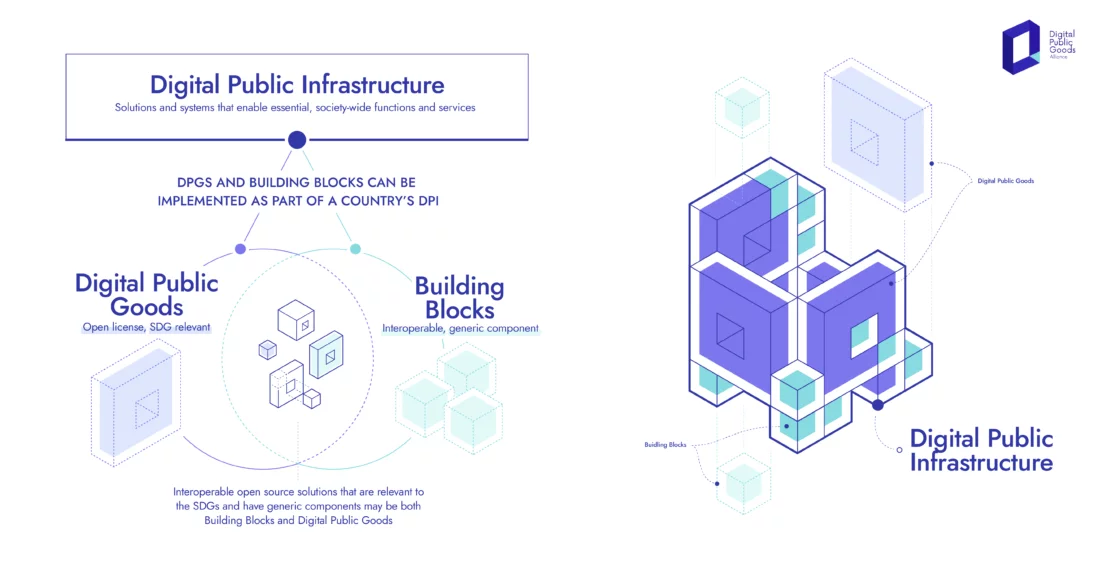
- 08 Sep 2024
Good digital public infrastructure (DPI) integrates technology with societal needs, ensuring that it is secure, scalable, and inclusive.
India’s achievement of over 80% financial inclusion in just six years has drawn international praise, particularly as a model for the Global South. This accomplishment underscores India’s success in achieving both digital and financial inclusion for over a billion people. Consequently, the G20 summit in New Delhi in 2023 highlighted the critical role of digital public infrastructure.
In response, India’s G20 task force has released a comprehensive report outlining a global strategy for DPI development. This positions India to support other nations in achieving digital sovereignty, financial inclusion, and self-reliance.
The evolving digital landscape is marked by a variety of stakeholders—including private enterprises, government bodies, non-profits, and think tanks—each working to advance their DPI solutions. This raises two key questions: How can we identify genuine and reliable DPIs from the plethora available? And what differentiates a “good DPI” from a “bad DPI”?
Identifying effective DPI involves assessing how well technology meets societal needs while ensuring security, scalability, and inclusivity. Authenticity and adherence to core principles are essential for evaluating DPIs.
The Citizen Stack Model
Citizen Stack, built upon the proven success of India Stack, emerges as a trusted ecosystem in digital infrastructure. India Stack, a robust digital platform, has demonstrated its effectiveness and security on a vast scale, serving over a billion citizens. This strong foundation enhances Citizen Stack’s credibility and reliability. Unlike DPI manufacturers, Citizen Stack functions as a regulatory body or auditor, certifying and authenticating DPIs to ensure they meet high standards of quality and security.
Citizen Stack’s approach is comprehensive, focusing on security, scalability, and inclusivity. The DPI platforms approved by Citizen Stack are designed to meet the diverse needs of large populations while maintaining stringent security measures to protect user data and privacy. As an auditor, Citizen Stack ensures that certified DPIs are dependable, secure, and beneficial to the public.
In an era of abundant digital solutions and promises, distinguishing genuinely reliable platforms is essential. Citizen Stack offers assurance as a gold standard for DPI solutions.
Guiding Principles of a “Good DPI”
Citizen Stack has established five core principles—referred to as sutras—that define a good DPI:
- Maintain Citizen Relationships: Ensure that digital infrastructure supports a fair relationship between citizens, the market, and the state, free from undue influence.
- Protect Empowerment and Privacy: Implement consent-based data sharing systems that prioritize individual empowerment and privacy.
- Prevent Monopolistic Lock-In: Ensure interoperability to avoid citizens being restricted by monopolistic entities.
- Combine Techno-Legal Regulation: Integrate technology with legal frameworks to govern ethical tech use, ensuring innovation while safeguarding security and societal rights.
- Foster Public-Private Innovation: Encourage collaboration between public and private sectors, while avoiding corporate dominance. The focus should be on public good rather than corporate monopolies, and technology should prevent exploitation by state or corporate actors.
Barakah Nuclear Energy Plant
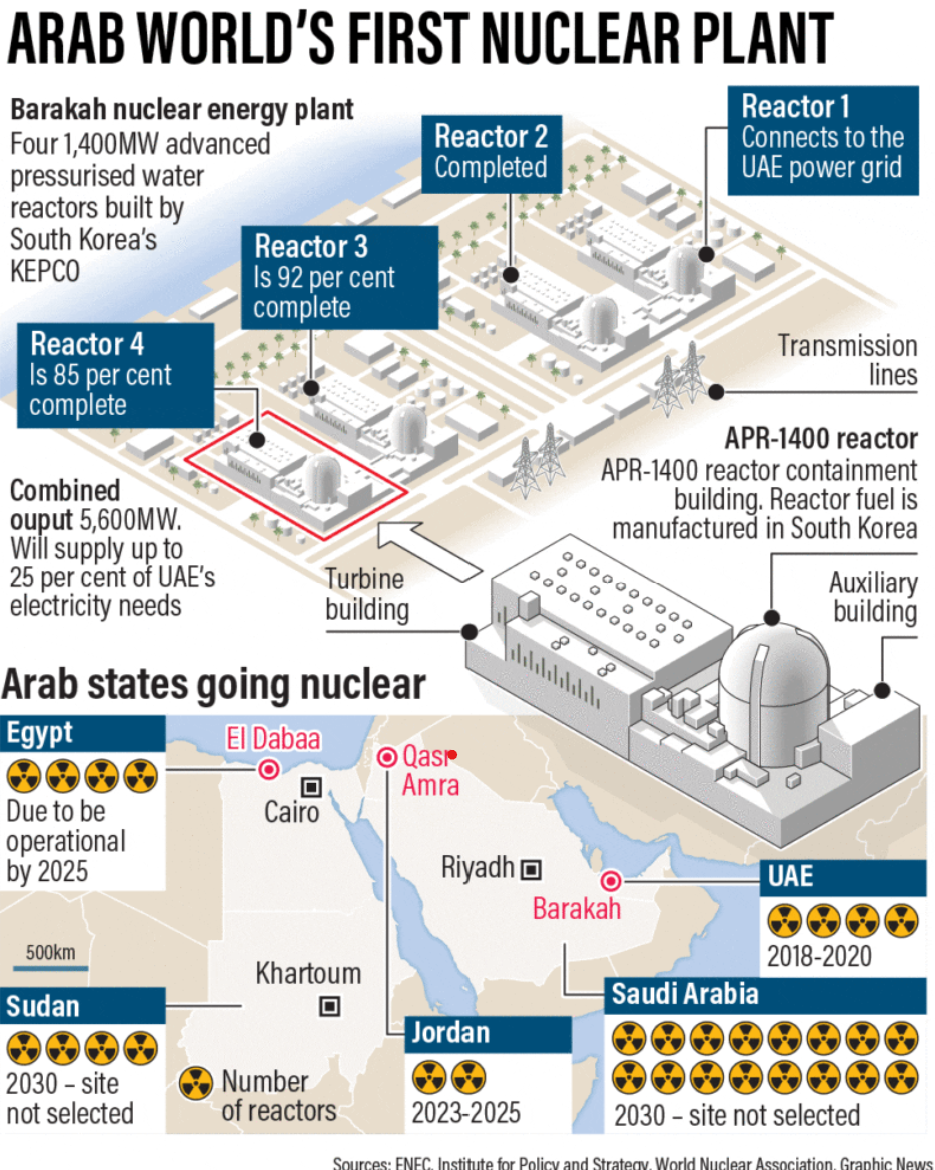
- 08 Sep 2024
Location: Situated in Al Dhafra, Emirate of Abu Dhabi.
Specifications:
- Reactor Count: Four nuclear reactors.
- Annual Output: 40 terawatt-hours (TWh) of electricity.
Objective and Significance:
- Energy Diversification: The plant is a key component of the UAE’s energy diversification efforts, providing clean and efficient power.
- Environmental Impact: It is projected to reduce carbon emissions by up to 22 million tons annually, equivalent to removing 4.8 million cars from the roads.
International Nuclear Energy Agreements
Purpose: Nuclear energy agreements are bilateral or multilateral treaties focused on the peaceful use of nuclear energy. They facilitate international cooperation in areas such as technology transfer, fuel supply, safety standards, and non-proliferation.
India’s Nuclear Energy Agreements:
- General Overview: India has established civil nuclear cooperation agreements with various countries including France, the United States, Russia, Namibia, Canada, Argentina, Kazakhstan, South Korea, Australia, Sri Lanka, and the United Kingdom.
Key Agreements:
- India-Russia: A longstanding partnership since the Cold War, with Russia significantly contributing to the construction of the Kudankulam Nuclear Power Plant in Tamil Nadu.
- India-US Civil Nuclear Agreement (2008): Known as the 123 Agreement, it marked India’s entry into the global nuclear market despite its non-signatory status to the Nuclear Non-Proliferation Treaty (NPT). This agreement enabled India to engage in nuclear trade with the US and other Nuclear Suppliers Group (NSG) members.
- India-France Civil Nuclear Agreement (2008): This agreement allows France to supply nuclear technology and fuel to India, including involvement in the proposed Jaitapur Nuclear Power Project in Maharashtra.
- India-Canada Nuclear Cooperation Agreement (2010): This historic deal marked a return to cooperation after a hiatus following Canada's sanctions in 1974, allowing uranium supply for India’s civilian reactors.
- India-Japan Nuclear Agreement (2016): This agreement facilitates the export of nuclear technology from Japan to India, reflecting Japan’s confidence in India's non-proliferation commitments.
- India-Kazakhstan: Agreements with Kazakhstan for uranium supply, given Kazakhstan’s status as a major uranium producer.
- India-Australia Civil Nuclear Cooperation Agreement: Permits Australia to export uranium for India’s civilian nuclear program. Notably, Australia typically exports uranium only to NPT signatories.
- India-United Kingdom Nuclear Agreement (2015): This agreement promotes collaboration on nuclear technology and research between India and the UK.
- India-UAE Civil Nuclear Energy Cooperation: Recently, India and the United Arab Emirates (UAE) formalized their collaboration in civil nuclear energy through an MoU.
National Initiative for Developing and Harnessing innovations (NIDHI) program
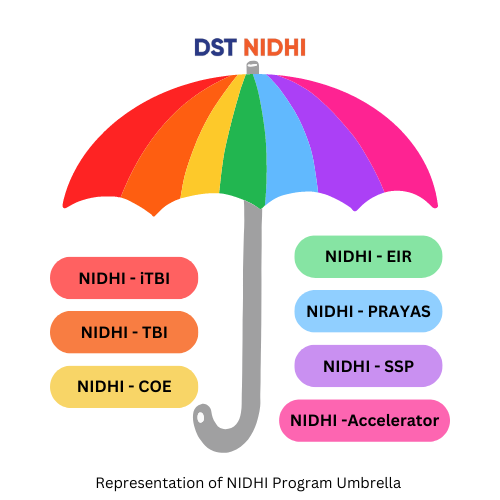
- 08 Sep 2024
- NIDHI is an umbrella programme conceived and developed by the Technology Translation and Innovation (TTI) Division/ National Science and Technology Entrepreneurship Development Board, of Department of Science & Technology, Government of India, for nurturing ideas and innovations (knowledge-based and technology-driven) into successful startups.
- The NIDHI programme works in line with the current national priorities and goals and its focus would be to build an innovation driven entrepreneurial ecosystem with an objective of national development through wealth and job creation.
- NIDHI aims to nurture Startups through scouting, supporting and scaling of innovations by providing them with a series of programme components tailored towards the critical initial phases of the Startup journey.
- The key stakeholders of NIDHI include Science & Technology based entrepreneurs, Startup Incubators, academic and R&D institutions, Startup mentors, financial institutions, angel investors, venture capitalists, relevant government & industry bodies and associations.
- NIDHI has been developed to suit the national aspirations and on the basis of DST’s three-decade long experience in propelling Startup Incubation centres and Science & Technology based entrepreneurs.
- The key components of NIDHI are :-
- NIDHI PRAYAS: Promotion and Acceleration of Young and Aspiring technology entrepreneurs – Support from Idea to Prototype
- NIDHI – EIR: Entrepreneur In Residence – Support system to reduce risk for entrepreneurs.
- NIDHI – TBI : Technology Business Incubator (NIDHI-TBI) – Converting Innovations to start-ups.
- NIDHI – iTBI : Inclusive- Technology Business Incubator – A new variant of the NIDHI-TBI launched in 2022-’23.
- NIDHI – Accelerator : Startup Acceleration Programme – Fast tracking a start-up through focused intervention.
- NIDHI – SSS : Seed Support System – Providing early stage investment
- NIDHI – COE : Centres of Excellence – Globally competitive facilities to help startups go global.
- While NSTEDB is the funding agency, the NIDHI programmes are implemented through Technology Business Incubators (TBIs) available around the country.
- Note: All the NIDHI-Startup funds and offerings are disbursed to eligible startups only through eligible NSTEDB associated incubators across India
Agni-4 ballistic missile successfully test-fired in Odisha
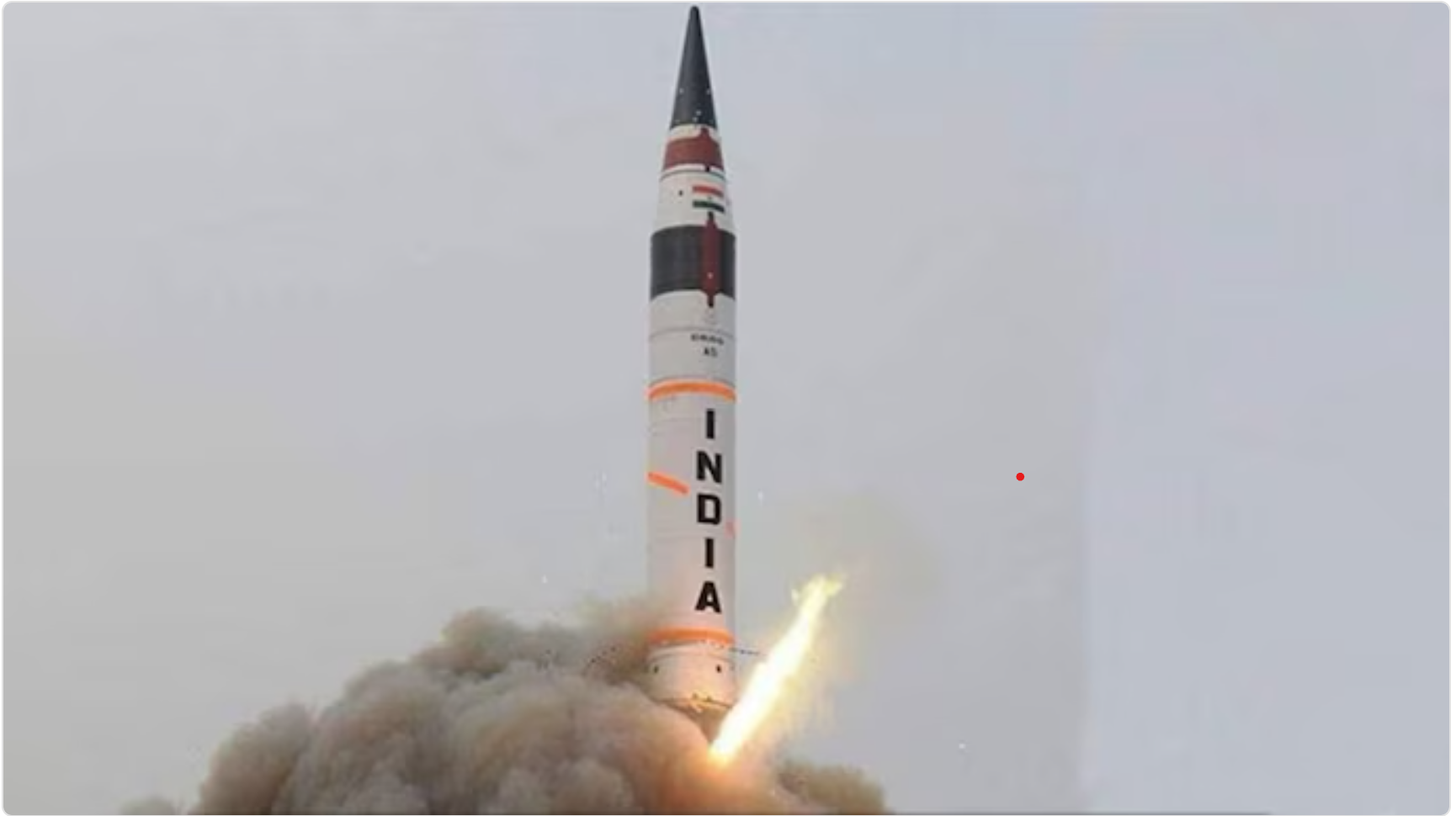
- 09 Sep 2024
In News:
India successfully test-fired the Agni-4 ballistic missile from the Integrated Test Range in Chandipur, Odisha. The test, conducted by the Strategic Forces Command (SFC) under India's Nuclear Command Authority (NCA), demonstrated the missile's operational and technical capabilities.
Key Details:
- Missile Specifications:
- Range: The Agni-4 missile has a maximum range of 4,000 kilometers.
- Payload: It can carry a payload of up to 1,000 kilograms.
- Length: The missile is approximately 20 meters long.
- Launch Platform: It is designed for deployment on a road-mobile launcher, enhancing its flexibility and mobility.
- Historical Context:
- Previous Test (2012): In its earlier test in 2012, Agni-4 successfully covered over 3,000 kilometers within 20 minutes. This was noted as the longest-range mission achieved by the Defence Research and Development Organisation (DRDO) at that time.
- Name Change: The Agni-4 was previously known as Agni-2 Prime.
- Development and Capabilities:
- Development: The Agni missiles, including the Agni-4, are developed by the DRDO, showcasing India's advancements in missile technology and strategic capabilities.
- Comparison with Agni-5: The Agni-4 is part of a series of Agni missiles that have progressively enhanced India's missile range and strike capabilities. The Agni-5 represents an even more advanced development in this series.
The successful test of Agni-4 underscores India's commitment to strengthening its strategic defense capabilities and maintaining its deterrence posture.
Jal Sanchay Jan Bhagidari Initiative
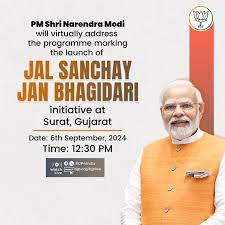
- 09 Sep 2024
In News:
Prime Minister Shri Narendra Modi recently launched the ‘Jal Sanchay Jan Bhagidari’ initiative via video conferencing from Surat, Gujarat.
Key Points:
- Campaign and Objectives:
- Objective: The initiative seeks to bolster water conservation through extensive public and governmental collaboration.
- Scope: About 24,800 rainwater harvesting structures will be constructed across Gujarat.
- Approach: Emphasizes a Whole-of-Society and Whole-of-Government approach to water management.
- Significance:
- Cultural Significance: PM Modi highlighted that water conservation is deeply embedded in Indian culture, with water revered as a divine entity and rivers considered Goddesses.
- Policy and Virtue: He stated that water conservation transcends policy and is both an effort and a virtue, reflecting social commitment and cultural consciousness.
- Future Challenges: The Prime Minister acknowledged the exacerbating impact of water scarcity due to climate change, urging a shift to the ‘Reduce, Reuse, Recharge, and Recycle’ mantra for sustainable water management.
- Impact of Drought and Water Scarcity:
- Recent Challenges: The drought affecting the Amazon region and other parts of India has highlighted the urgent need for effective water conservation strategies.
- Water Table Decline: Significant declines in river levels, such as the Rio Negro reaching its lowest minimum (12.7 meters) on record, and the death of endangered species due to low water levels underscore the crisis.
- Government Initiatives:
- Jal Jeevan Mission: Aims to provide piped water to every home, with significant progress noted from 3 crore households to over 15 crore.
- Jal Shakti Abhiyan: Focuses on renovation and construction of water sources with widespread public participation.
- Amrit Sarovar: Over 60,000 Amrit Sarovars have been constructed under this campaign, which began during the Azadi Ka Amrit Mahotsav.
- Innovative Solutions and Technological Integration:
- Drip Irrigation: Promotion of water-efficient farming techniques like drip irrigation to ensure sustainable agriculture.
- Support for Farmers: Encouragement for cultivating less water-intensive crops such as pulses and millets.
- Role of Industries:
- CSR Contributions: Industries have played a significant role in water conservation through initiatives like Net Zero Liquid Discharge Standards and the completion of 10,000 borewell recharge structures in Gujarat.
- Future Plans: The ‘Jal Sanchay-Jan Bhagidari Abhiyan’ aims to create an additional 24,000 recharge structures.
- Conclusion and Vision:
- Global Leadership: PM Modi expressed his belief that India can become a global leader in water conservation.
- Public Movement: Stressed the importance of continuing public participation in water conservation to make India a model for global sustainability.
Background: The ‘Jal Sanchay Jan Bhagidari’ initiative builds on the success of the earlier Jal Sanchay program by involving citizens, local bodies, and industries in water conservation efforts. The initiative aligns with the vision of water security and aims to mobilize collective action for long-term sustainability.
Key Data:
- Construction of 24,800 rainwater harvesting structures.
- Significant increase in tap water connections from 3 crore to over 15 crore households.
- Creation of more than 60,000 Amrit Sarovars across the country.
- Completion of 10,000 borewell recharge structures in Gujarat.
Climate change drives Amazon rainforest's record drought, study finds
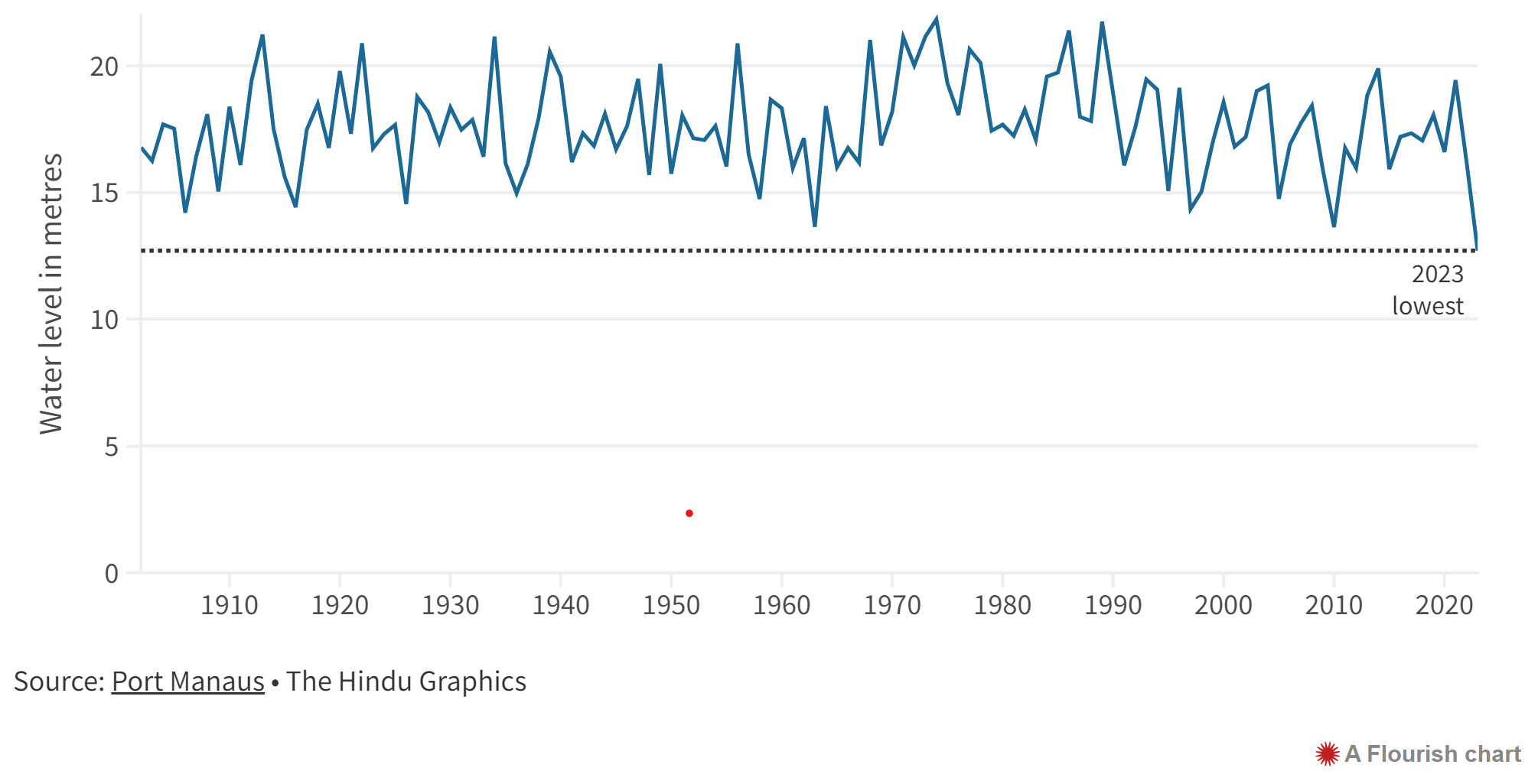
- 09 Sep 2024
In News:
The drought that hit all nine Amazon rainforest countries - including Brazil, Colombia, Venezuela and Peru - is expected to worsen in 2024
Role of Climate Change:
- Likelihood Increase: Climate change made the drought 30 times more likely.
- Temperature and Rainfall: It drove extreme high temperatures and contributed to lower rainfall.
Future Projections:
- Expected Worsening: The drought is predicted to worsen in 2024, with the rainy season expected to recede in May.
Impact on Ecosystems:
- River Levels: Rivers have reached their lowest levels on record, with the Rio Negro river falling to its lowest minimum (12.7 meters) since records began in 1902.
- Dolphin Deaths: At least 178 endangered pink and gray Amazon river dolphins died due to low water levels and high temperatures.
- Fish Deaths: Thousands of fish died from low oxygen levels in Amazon tributaries.
Impact on Human Life:
- Disruptions: Waterways dried up rapidly, forcing people to undertake long journeys across dried river sections to access essential goods like food and medicine.
Contributing Factors:
- El Niño Influence: Periodic warming in the Eastern Pacific Ocean (El Niño) contributed to decreased rainfall but not to higher temperatures.
Potential Consequences:
- Forest Fires and Biome Health: The drought could exacerbate forest fires, combined with climate change and deforestation, potentially pushing the Amazon toward a point of no return where it ceases to be a lush rainforest.
- Previous Droughts: While the region has experienced at least three intense droughts in the past 20 years, this one’s impact on the entire Amazon basin is unprecedented.
India, UAE ink pact for civil nuclear cooperation
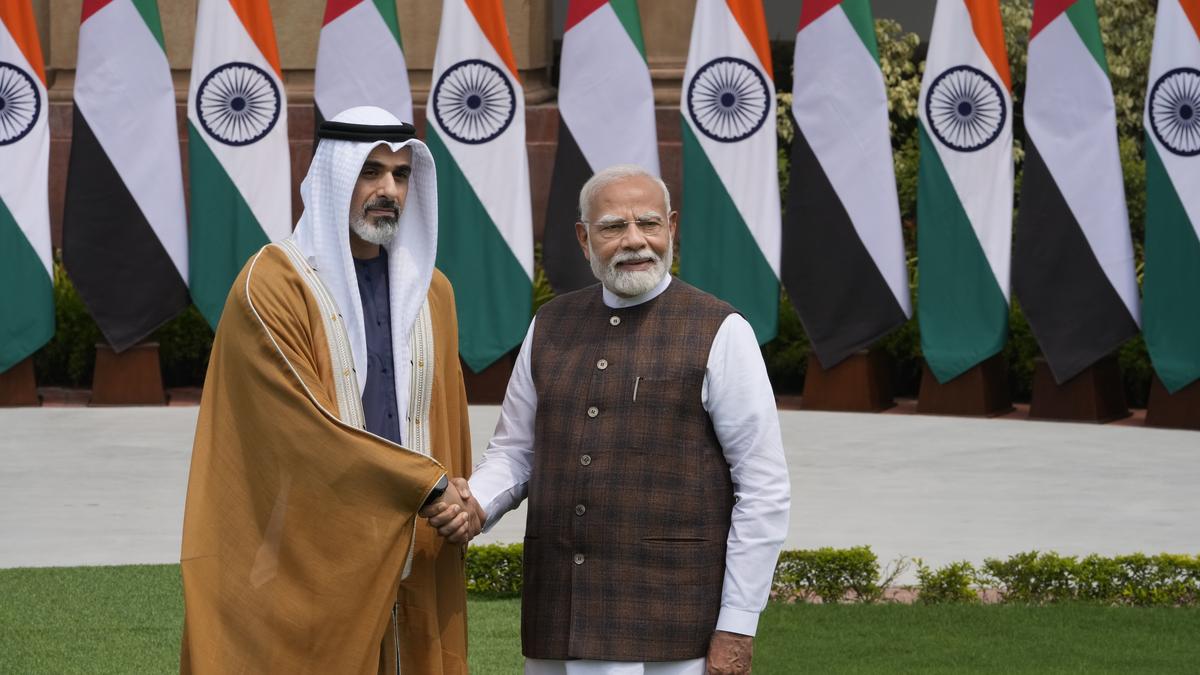
- 10 Sep 2024
In News:
- Recently, India and the United Arab Emirates (UAE) signed a significant Memorandum of Understanding (MoU) for civil nuclear cooperation.
- The agreement, established between the Nuclear Power Corporation of India Limited (NPCIL) and the Emirates Nuclear Energy Company (ENEC)-led Barakah Nuclear Power Plant Operations and Maintenance, was formalized during the visit of Sheikh Khalid bin Mohamed bin Zayed Al Nahyan, the Crown Prince of Abu Dhabi, to New Delhi.
Background:
- This MoU marks the first formal agreement of its kind between NPCIL and ENEC. The collaboration aligns with the broader commitment made during Prime Minister Narendra Modi’s visit to the UAE in August 2015, which focused on peaceful nuclear energy applications, including safety, health, agriculture, and science and technology.
Trilateral Cooperation:
- The agreement follows a series of discussions on nuclear cooperation between India and the UAE. On September 19, 2022, Foreign Ministers from France, India, and the UAE met in New York during the UN General Assembly and initiated a trilateral cooperation framework. This was further solidified by a phone call on February 4, 2023. The trilateral format aims to promote joint projects in energy, emphasizing solar and nuclear energy.
Additional Agreements:
During the Crown Prince’s visit, several other agreements were also signed:
- LNG Supply MoU: An agreement was reached between Abu Dhabi National Oil Company (ADNOC) and Indian Oil Corporation Limited for long-term LNG supply.
- Production Concession Agreement: Urja Bharat and ADNOC signed an agreement for Abu Dhabi Onshore Block 1.
- Food Parks Development: The Government of Gujarat and Abu Dhabi Developmental Holding Company PJSC (ADQ) signed an MoU for developing food parks in India. This initiative aligns with the I2U2 grouping (including Israel and the United States), which envisions food parks in Gujarat and Madhya Pradesh.
Conclusion:
The visit of the Crown Prince and the signing of these agreements reflect the strengthening ties between India and the UAE. This dynamic development coincides with the first India-Gulf Cooperation Council (GCC) Foreign Ministers’ meeting held in Riyadh on September 8-9. External Affairs Minister S. Jaishankar highlighted India's growing energy demands and its significant role in future global energy markets during his remarks at the meeting.
Govt dissolves Standing Committee on Statistics
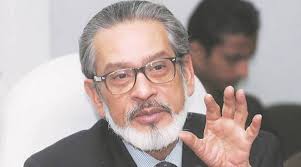
- 10 Sep 2024
In News:
The recent dissolution of the 14-member Standing Committee on Statistics (SCoS) by the Union Ministry of Statistics and Programme Implementation has sparked considerable controversy and debate. The committee, which was chaired by Pronab Sen, a renowned economist and former chief statistician of India, was reportedly disbanded after its members raised concerns about the delay in conducting the decennial census.
Key Points:
- Dissolution of the Committee:
- The SCoS, formed in July 2023, was responsible for advising the Union government on survey methodology and statistical frameworks. According to the experts the decision to dissolve the SCoS was due to an overlap in functions with the newly formed Steering Committee for National Sample Surveys.
- Concerns and Criticism:
- Dr. Pronab Sen and other committee members expressed concerns over the delay in conducting the census, which was due in 2021 but has yet to be carried out. The last census, conducted in 2011, is now outdated, impacting the accuracy of various statistical surveys.
- Members of the SCoS reportedly questioned the delay in census operations during their meetings, leading to speculation that their concerns may have contributed to the committee's dissolution.
- Formation of the New Steering Committee:
- The new Steering Committee for National Sample Surveys, chaired by Rajeeva Laxman Karandikar, was established following a recommendation by the National Statistical Commission (NSC). The roles of this new committee are said to overlap with those of the SCoS, which the Ministry cited as a reason for disbanding the latter.
Standing Committee on Statistics (SCoS)
- The Standing Committee on Statistics (SCoS) was established by renaming and expanding the scope of the Standing Committee on Economic Statistics (SCES), which was originally formed in December 2019.
- The SCES, with 28 members, was tasked with reviewing economic indicators related to the industrial sector, services sector, and labor force statistics, including datasets like the Periodic Labour Force Survey, the Annual Survey of Industries, and the Economic Census.
Current Structure and Members: The newly formed SCoS comprises 14 members, including:
- Four Non-Official Members
- Nine Official Members
- One Member Secretary
The committee's total membership can be extended up to 16 based on requirements.
Functions:
1. Review and Address Issues:
o The SCoS reviews the existing frameworks and addresses issues related to all surveys as presented by the Ministry of Statistics and Programme Implementation (MoSPI). This includes evaluating survey results and methodologies.
2. Advisory Role:
o It advises on various aspects of survey methodology, including sampling frames, sampling designs, and survey instruments. The committee is also responsible for finalizing the tabulation plans and results of surveys.
3. Data Collection and Production:
o The SCoS oversees the design and implementation of all data collection and production efforts. It ensures that data collected by MoSPI adheres to high standards of statistical quality and accuracy.
In a first, critically endangered elongated tortoise spotted in Aravallis
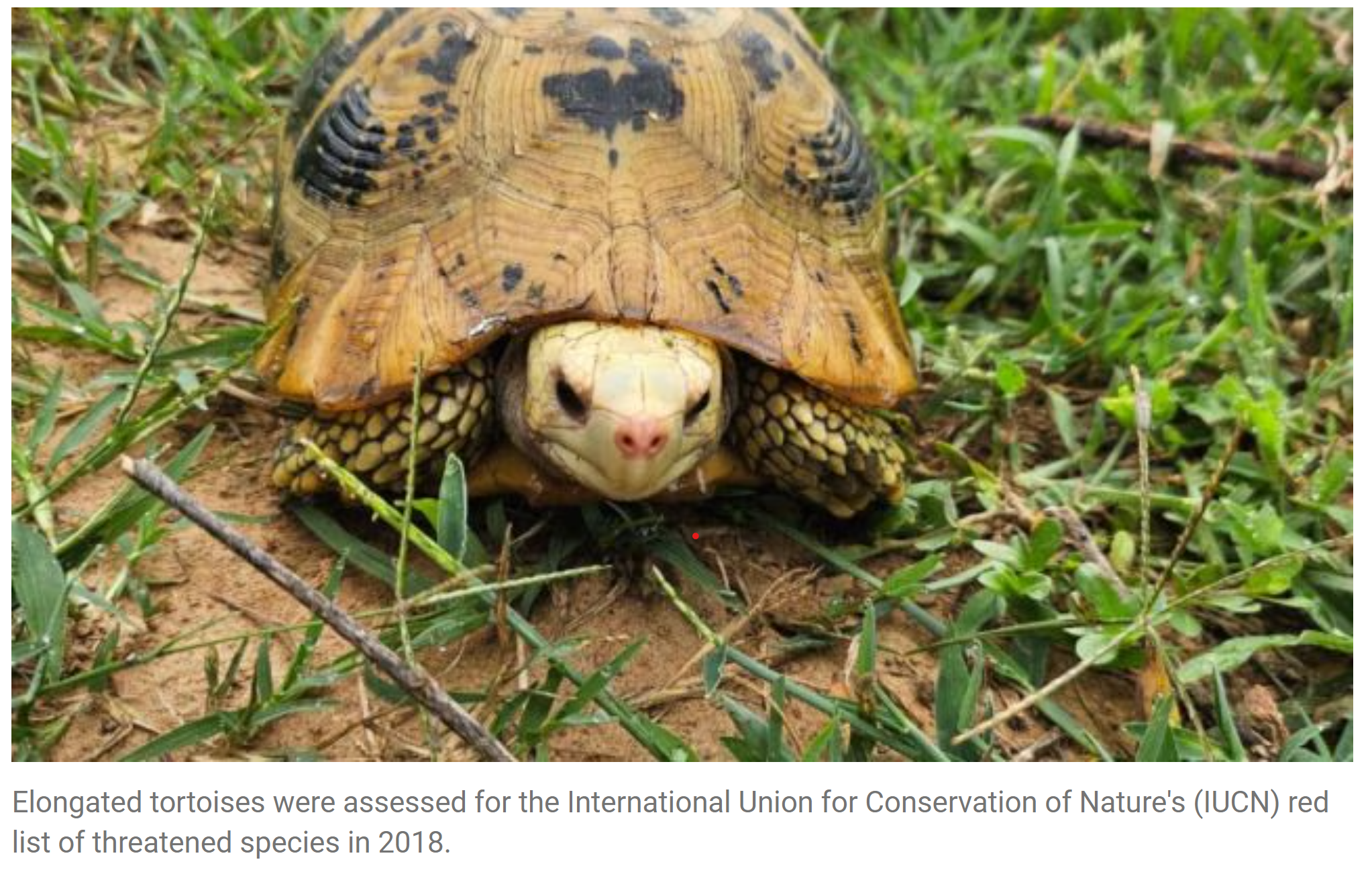
- 10 Sep 2024
In News:
- A critically endangered species, the elongated tortoise (Indotestudo elongata), was spotted in Haryana’s Damdama area during a research survey in the Aravallis.
Key Features:
- The tortoise is medium-sized with a yellowish brown or olive shell and distinct black blotches at the centre of each scute.
- The tortoise has on its nostril a pink ring, which appears in the breeding season.
- Mature individuals of both sexes develop a distinct pinkish colouration surrounding the nostrils and eyes during the season.
- Habitat:
- The tortoise, found in the Sal deciduous and hilly evergreen forests, is distributed across Southeast Asia from northern India, Nepal, Bhutan, and Bangladesh in the west, eastward through Myanmar, Thailand, and all of Indochina, north to Guangxi Province of China and south to Peninsular Malaysia.
- A disjunct tortoise population exists in the Chota Nagpur plateau in eastern India. It also inhabits lowlands and foothills of up to 1,000 m above sea level.
- There have not been enough surveys to ascertain its presence in Aravallis, but the tortoise is found in the foothills of the Himalayas.
- It inhabits wetter areas and discovering it here is an aberration than a norm, adding it cannot be ruled out that the tortoise was brought by trade.
Conservation Status:
- International Union for Conservation of Nature’s (IUCN) Status: Critically Endangered, under criteria A2cd.
Threats:
- Currently, I. elongata is heavily exploited for food and traditional medicine throughout its range.
- Local people often opportunistically capture tortoises while farming or extracting other forest resources. However, deliberate hunting also occurs and dogs continue to be widely used for finding tortoises.
India-Singapore Relations
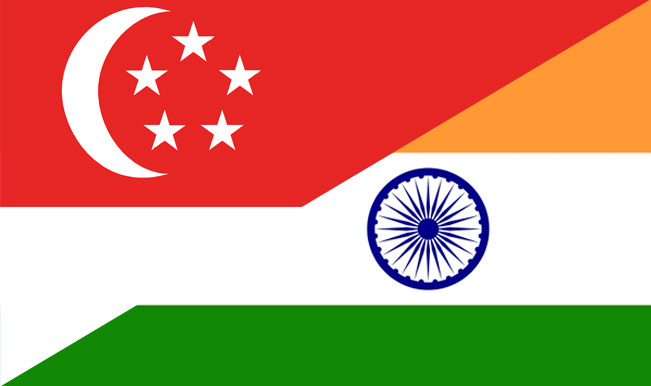
- 04 Sep 2024
- High-Level Inter-Governmental Contacts:
- Frequent and high-level exchanges, including the Prime Minister's upcoming visit.
- Recent second India-Singapore Ministerial Roundtable with senior Indian ministers.
- Key Areas of Cooperation:
- Digitalisation, skills development, sustainability, healthcare, advanced manufacturing, and connectivity.
- Broader contacts include parliamentary and judicial exchanges.
- Economic Ties:
- Singapore is India’s largest trading partner among ASEAN countries and the sixth largest globally.
- Singapore is also the largest source of foreign direct investment (FDI) for India.
- People-to-People Exchanges:
- Large concentration of IIT and IIM alumni in Singapore.
- Historical ties, including the Indian National Army's presence and the contributions of early Indian diaspora in Singapore.
- Regional Policy and Strategic Importance:
- Singapore has supported India’s “Look East” and “Act East” policies.
- Facilitated India’s dialogue partnership with ASEAN.
- Regional implications due to Myanmar’s instability, with India and Singapore both having stakes.
- Defence and Maritime Cooperation:
- Important defence component and maritime collaboration.
- Focus on the Indo-Pacific region amidst growing Chinese influence and new regional architectures like the QUAD.
- Trade and Economic Outlook:
- The visit provides an opportunity to review and expand trade and economic partnerships.
- Potential for increased Chinese FDI into India, with Singaporean entities likely to play a role.
- Complementarities and Challenges:
- Singapore's role as a global trading and investment hub complements India’s economic landscape.
- Highlights India's regulatory and structural inefficiencies, pointing to areas needing improvement for enhanced bilateral cooperation.
World Bank hikes India's economic projection to 7% for FY 2024-25
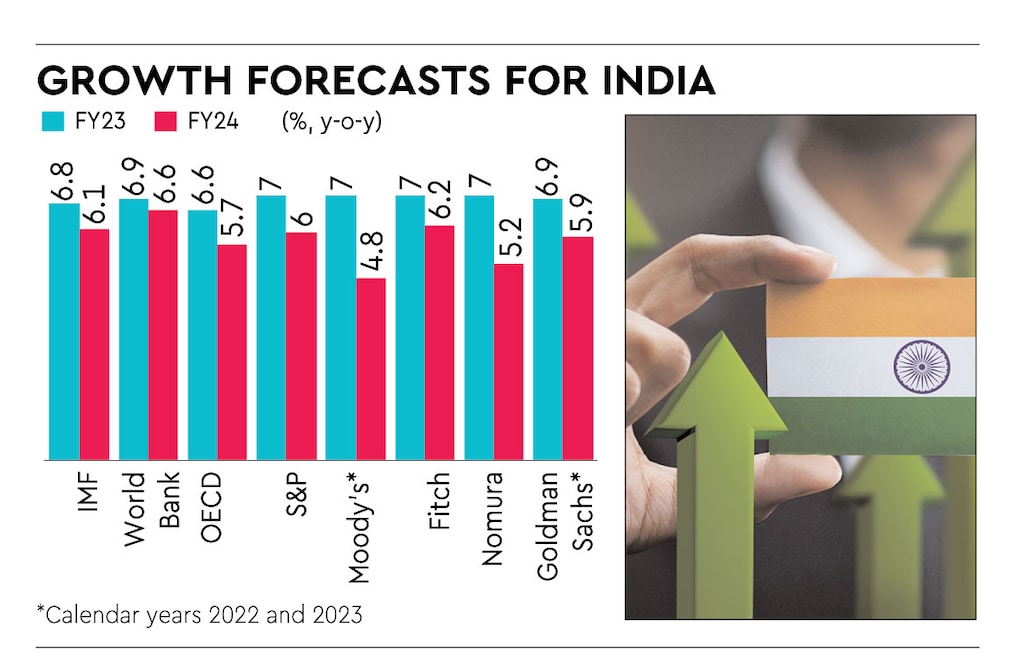
- 04 Sep 2024
- The World Bank has forecast a growth of 7% for the Indian economy for the current fiscal year, upping its earlier estimate of 6.6%.
- In its report, India Development Update: India’s Trade Opportunities in a Changing Global Context, the World Bank said India’s growth continued to be strong despite a challenging global environment.
- The World Bank growth projection is in line with those of the International Monetary Fund (IMF) and Asian Development Bank (ADB).
- Both the institutions have raised their forecast to 7% for the financial year ending March 2025.
- The India Development Update [IDU] observes that India remained the fastest-growing major economy and grew at a rapid clip of 8.2% in FY 23/24.
- Growth was boosted by public infrastructure investment and an upswing in household investments in real estate.
- On the supply side, it was supported by a buoyant manufacturing sector, which grew by 9.9%, and resilient services activity, which compensated for underperformance in agriculture.
- Reflecting these trends, urban unemployment has improved gradually since the pandemic, especially for female workers. While female urban unemployment fell to 8.5 % in early FY24/25, the urban youth unemployment remained elevated at 17%.
- India’s robust growth prospects, along with declining inflation rate will help to reduce extreme poverty
- India can boost its growth further by harnessing its global trade potential. In addition to IT, business services and pharma where it excels, India can diversify its export basket with increased exports in textiles, apparel, and footwear sectors, as well as electronics and green technology products.
- A recovery in agriculture will partially offset a marginal moderation in industry and all services will remain robust. The rural private consumption will recover, thanks to the expected recovery in agriculture.
- The report also highlights the critical role of trade for boosting growth. The global trade landscape has witnessed increased protectionism in recent years. The post pandemic reconfiguration of global value chains, triggered by the pandemic, has created opportunities for India.
- The IDU recommends a three-pronged approach towards achieving the $1 trillion merchandise export target by reducing trade costs further, lowering trade barriers, and deepening trade integration.
23rd Law Commission of India
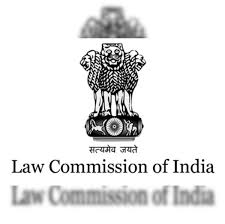
- 06 Sep 2024
Constitution and Tenure:
- Notification and Term:
- The 23rd Law Commission of India was notified by the Union government on September 2, with effect from September 1.
- The commission will have a three-year term, concluding on August 31, 2027.
- The tenure of the previous Law Commission, chaired by former Karnataka High Court Chief Justice Ritu Raj Awasthi, ended on August 31.
Role and Importance of the Law Commission:
- Purpose:
- The Law Commission is a non-statutory body formed by the Union Ministry of Law and Justice through a gazette notification.
- Its role includes reviewing the functioning of laws, recommending the repeal of obsolete legislation, and providing recommendations on issues referred by the government.
- Composition:
- Typically chaired by a retired Supreme Court or High Court judge.
- Includes legal scholars and can also have serving judges.
- Impact:
- Over the years, 22 Law Commissions have submitted 289 reports.
- Their recommendations have influenced significant legislation, such as the Code of Criminal Procedure, 1973 (CrPC), and the Right of Children to Free and Compulsory Education Act, 2009 (RTE Act).
Constitution of the 23rd Law Commission:
- Structure:
- The commission will consist of:
- A full-time chairperson.
- Four full-time members, including a member-secretary.
- Up to five part-time members.
- Ex officio members including the secretaries of the Legal Affairs and Legislative departments.
- The commission will consist of:
- Appointment and Remuneration:
- Chairperson and full-time members can be serving Supreme Court or High Court judges or other experts chosen by the government.
- The chairperson will receive a monthly salary of ?2.50 lakh, while members will receive ?2.25 lakh.
- The member-secretary must be an officer of the Indian Legal Service of the rank of Secretary.
- Serving judges appointed to the commission will serve until retirement or the end of the commission’s term, without additional remuneration.
Terms of Reference:
- Primary Tasks:
- Identify and recommend the repeal of obsolete or irrelevant laws.
- Create a Standard Operating Procedure (SOP) for periodic review and simplification of existing laws.
- Identify laws that are misaligned with current economic needs and suggest amendments.
- Directive Principles and Reforms:
- Examine laws in light of Directive Principles of State Policy and suggest improvements and new legislation to achieve constitutional objectives.
- Address laws affecting the poor, conduct post-enactment audits of socio-economic legislation, and review judicial administration for responsiveness.
Previous Commission's Contributions:
- Reports and Recommendations:
- The 22nd Law Commission produced 11 reports, including:
- A report in April 2023 recommending retention of Section 124A of the Indian Penal Code (sedition law), with suggested amendments for clarity.
- A report recommending a new law to protect trade secrets.
- A report on simultaneous elections, though it was not submitted to the government before the commission’s chairperson assumed office as a Lokpal member.
- The 22nd Law Commission produced 11 reports, including:
Upcoming Focus:
- The 23rd Law Commission is expected to continue examining key issues, including the implementation of a uniform civil code, which was also considered by the 22nd Commission but whose recommendations remain unpublished.
Addressing Vertical Fiscal Imbalance: The Role of the 16th Finance Commission
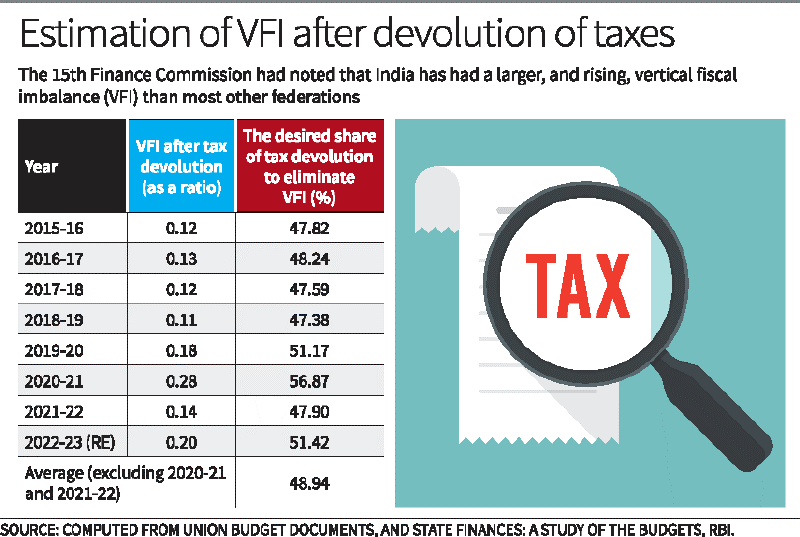
- 06 Sep 2024
In India, the financial relationship between the Union government and the States is characterized by vertical fiscal imbalance (VFI), where the Union government holds most of the revenue while States shoulder significant expenditure responsibilities. The 16th Finance Commission has a pivotal role in addressing this imbalance. Here's how it should approach the issue:
Understanding Vertical Fiscal Imbalance (VFI)
- Current Situation:
- States incur 61% of revenue expenditure but collect only 38% of revenue receipts.
- States rely heavily on transfers from the Union government, leading to a pronounced VFI.
- VFI Definition:
- VFI arises when the expenditure responsibilities of States exceed their revenue-raising capabilities, necessitating transfers from the Union.
Reasons to Address VFI
- Constitutional Allocation:
- Revenue duties and expenditure responsibilities are constitutionally divided.
- Union government collects Personal Income Tax, Corporation Tax, and part of indirect taxes for efficiency.
- States are better positioned to deliver publicly provided goods and services effectively.
- Historical Context:
- The 15th Finance Commission highlighted that India has experienced a rising VFI, exacerbated by crises like the COVID-19 pandemic.
- Finance Commission's Role:
- The Commission addresses VFI by determining how to allocate taxes collected by the Union to the States and how to distribute these among States.
Finance Commission Recommendations
- Tax Devolution:
- The Commission recommends devolving a portion of Union taxes to States.
- The 14th and 15th Finance Commissions recommended devolving 42% and 41% of net proceeds, respectively.
- To eliminate VFI, devolution should be around 48.94%.
- Grants and Transfers:
- The Commission also suggests grants under Article 275 for specific purposes.
- Transfers under Article 282, such as centrally sponsored and central sector schemes, are tied and include conditionalities, which are not untied resources.
Calculation and Recommendations for VFI
- Estimating VFI:
- Ratio = (Own Revenue Receipts + Tax Devolution) / Own Revenue Expenditure.
- A ratio less than 1 indicates insufficient revenue to meet expenditure, showing the VFI deficit.
- Empirical Findings:
- To address VFI, the share of net proceeds devolved to States should be around 49%.
- This increase would ensure that States have more untied resources, enhancing their ability to meet local needs and priorities.
Implications of Increased Tax Devolution
- Enhanced State Capacity:
- A higher share of tax devolution would empower States with more resources for untied expenditures.
- It would improve the alignment of State expenditures with local needs and priorities.
- Improved Efficiency:
- Enhanced devolution would lead to better efficiency in expenditure by allowing States to respond more effectively to jurisdictional requirements.
- Strengthened Fiscal Federalism:
- Addressing VFI through increased tax devolution contributes to a more balanced and cooperative fiscal federalism.
Conclusion: The 16th Finance Commission should focus on increasing the share of tax devolution to around 50% to address the vertical fiscal imbalance. This adjustment will provide States with the necessary resources to manage their expenditure responsibilities more effectively and ensure a more equitable distribution of fiscal resources in India’s federal structure.
Can Kerala access funds from the Loss and Damage Fund?
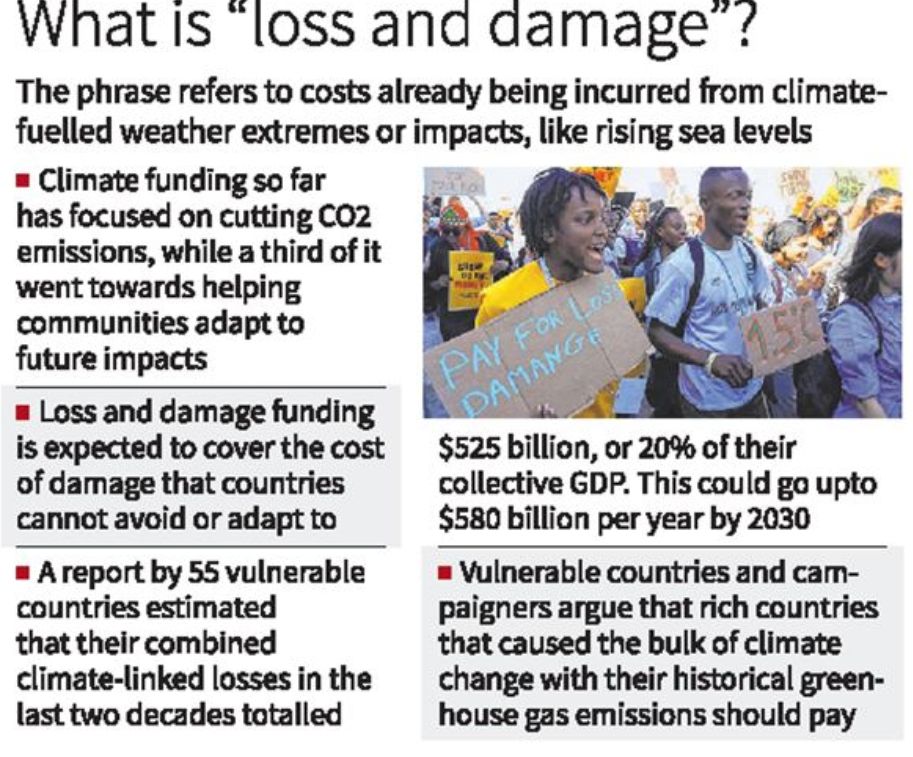
- 06 Sep 2024
In light of the recent landslides in Kerala’s Wayanad district, the question arises whether subnational entities like Kerala can access the United Nations Framework Convention on Climate Change (UNFCCC)’s Loss and Damage Fund (LDF). While the need for compensation is clear, the process of accessing climate funds is complex.
What is the Loss and Damage Fund (LDF)?
- Established at COP27 in Egypt, the LDF aims to support regions experiencing economic and non-economic losses from climate change.
- Includes extreme weather events and slow-onset processes like rising sea levels.
- Managed by a Governing Board, with the World Bank as the interim trustee.
- The Board is developing mechanisms for resource access, such as direct access, small grants, and rapid disbursement options.
- Concerns exist about the speed and accessibility of climate funds, which may affect their effectiveness in immediate disaster recovery.
What has been India’s Role?
- India faced over $56 billion in weather-related damages from 2019 to 2023. Despite this, its National Climate Action Policy prioritizes mitigation over adaptation, leading to limited engagement in Loss and Damage dialogues at COP meetings.
- High vulnerability in certain regions could benefit from active participation in these dialogues.
- India needs a clear legal and policy framework for climate finance, focusing on locally led adaptation, which is vital for vulnerable communities.
- The Union Budget 2024’s introduction of a climate finance taxonomy raises hopes for increased international climate finance.
- Without clear guidelines for accessing loss and damage funds, frontline communities remain at risk.
- India should advocate for decentralized fund disbursement methods from the LDF, contrasting with the centralized systems used for other climate funds.
What have been State Interventions?
- State governments, such as Kerala, often bear the financial burden of disaster recovery.
- Example: The Rebuild Kerala Development Programme post-August 2018 floods, funded by World Bank and KfW Development Bank loans.
- Focused on infrastructure reconstruction, including roads and bridges.
- Lack of a standardized method for comprehensive disaster damage assessments, especially for slow-onset events, may mean significant loss and damage needs go unassessed.
- This could hinder India’s ability to access the LDF.
- The Wayanad situation highlights broader challenges in accessing and managing climate finance for loss and damage.
- A clearer domestic policy framework focusing on locally led adaptation and defined guidelines for accessing loss and damage funds is needed for better climate change protection.
Vishvasya-Blockchain Technology Stack
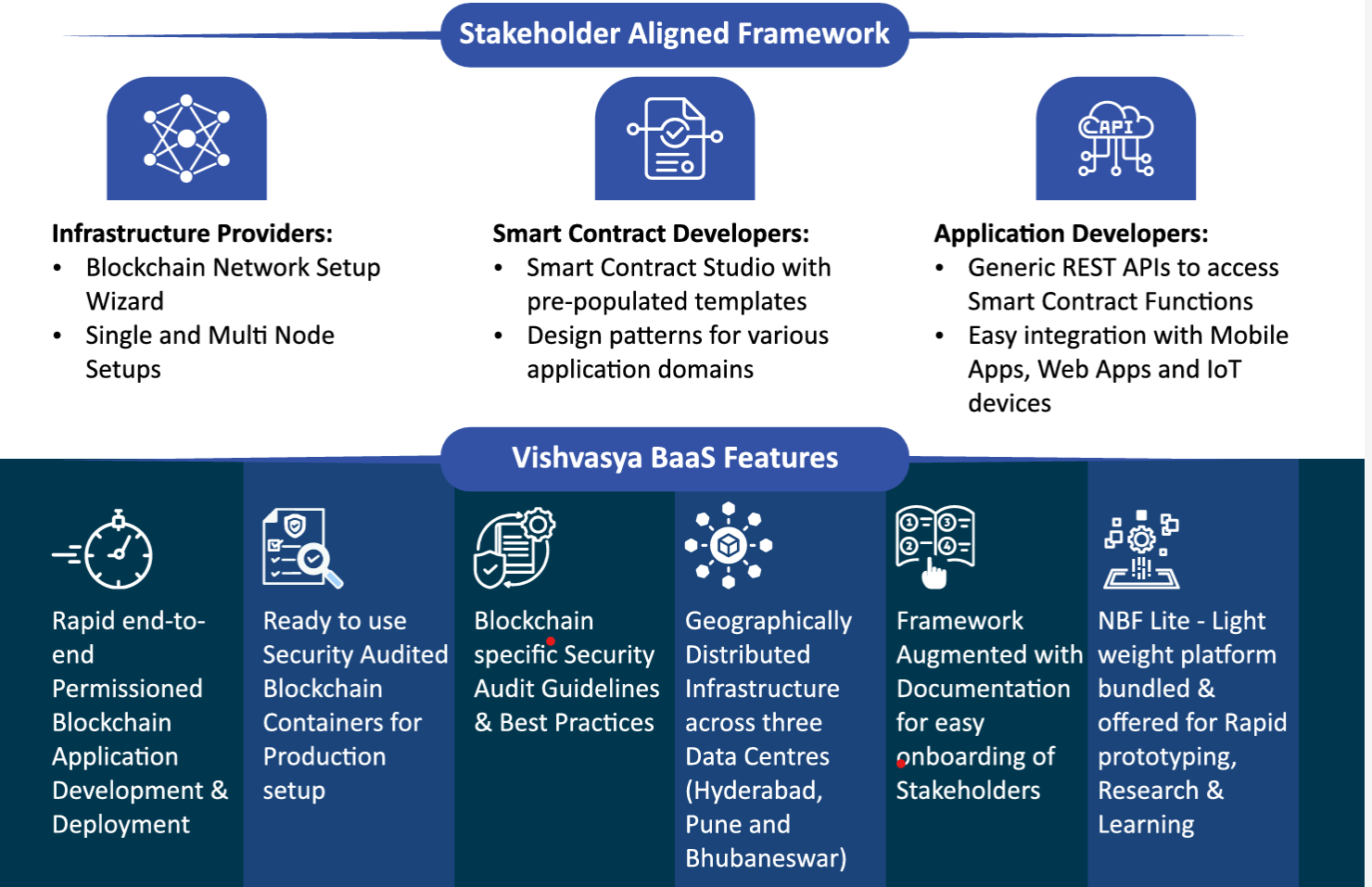
- 08 Sep 2024
The Government of India has recently introduced several significant initiatives to advance blockchain technology and its applications.
1. Vishvasya-Blockchain Technology Stack
- Purpose: The Vishvasya-Blockchain Technology Stack is designed to offer Blockchain-as-a-Service (BaaS) with a geographically distributed infrastructure. This stack supports various permissioned blockchain-based applications, enhancing the security and efficiency of digital services.
2. NBFLite
- Description: NBFLite is a lightweight blockchain platform intended as a sandbox for startups and academic institutions. It allows for rapid prototyping, research, and capacity building, fostering innovation in blockchain applications.
3. Praamaanik
- Purpose: Praamaanik is a blockchain-enabled solution for verifying the origin of mobile apps. This ensures that users can trust the source of their applications, contributing to enhanced digital security.
4. National Blockchain Portal
- Function: The National Blockchain Portal serves as a central hub for accessing blockchain technologies and services developed under the National Blockchain Framework (NBF).
5. National Blockchain Framework (NBF)
- Overview: The NBF is designed to promote secure, transparent, and trusted digital service delivery. It includes:
- Distributed Infrastructure: Hosted across NIC Data Centers in Bhubaneswar, Pune, and Hyderabad.
- Core Framework Functionality: Provides the backbone for various blockchain applications.
- Smart Contracts & API Gateway: Facilitates interactions with blockchain-based systems.
- Security, Privacy & Interoperability: Ensures robust security and privacy while supporting integration with other systems.
- Applications Development: Supports the creation and deployment of blockchain applications.
- Goals: The NBF aims to address challenges such as the need for skilled manpower, vendor lock-in, and issues related to security, interoperability, and performance.
6. Strategic Objectives
- Digital Trust and Service Delivery: The framework is part of the government's effort to create trusted digital platforms and improve service delivery to citizens.
- Global Leadership: The initiative seeks to position India as a global leader in blockchain technology, driving economic growth, social development, and digital empowerment.
- Governance Transformation: Blockchain technology is envisioned to enhance transparency, efficiency, and accountability in public services.
7. Collaborative Efforts
- Development: The technologies have been developed through the collaborative efforts of organizations including C-DAC, NIC, IDRBT Hyderabad, IIT Hyderabad, IIIT Hyderabad, and SETS Chennai, with support from MeitY.
- Research and Patents: The NBF project has already resulted in several patents and research publications, reflecting its innovative and research-driven approach.
8. Future Directions
- Scaling Applications: There is an emphasis on scaling blockchain applications across various states and departments.
- Exploring New Innovations: Efforts will continue to onboard new applications and innovative components on the NBF stack.
Global Species Action Plan (GSAP) SKILLS Platform
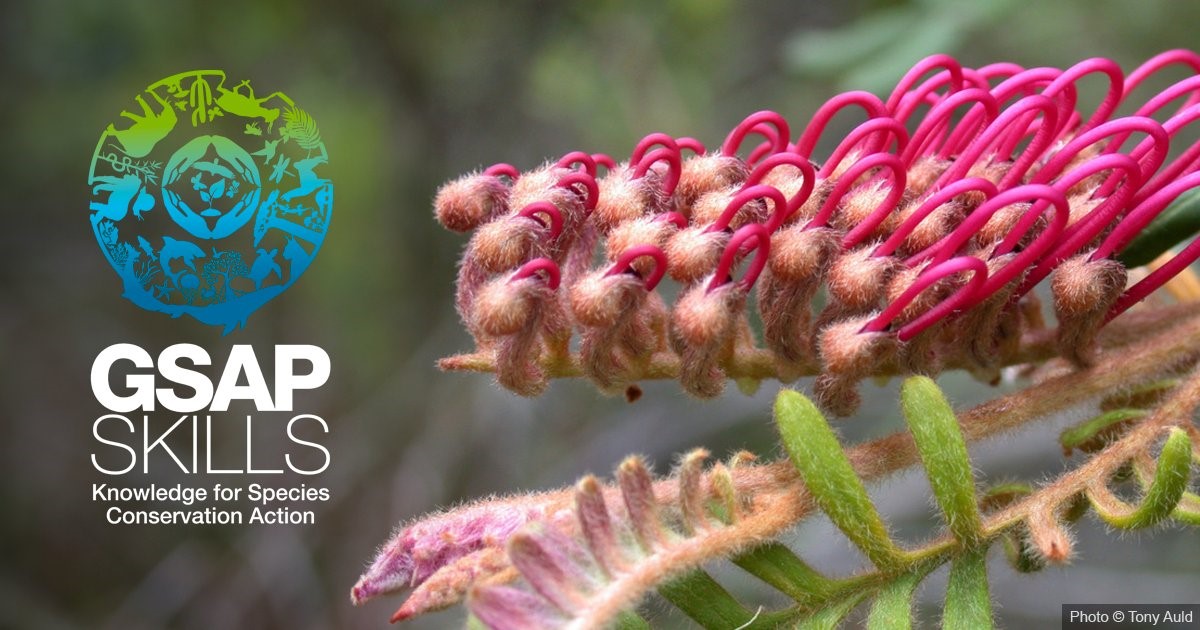
- 24 May 2024
Why is it in the News?
In response to the escalating biodiversity crisis, the Global Species Action Plan (GSAP) is designed to support the implementation of the Kunming-Montreal Global Biodiversity Framework (GBF).
About GSAP SKILLS Platform:
- The Global Species Action Plan (GSAP) SKILLS platform, standing for (Species Conservation Knowledge, Information, Learning, Leverage, and Sharing), brings the GSAP’s content online and enables real-time updates of technical tools and resources.
- This platform aims to facilitate global collaboration and partnership by connecting decision-makers, species conservation practitioners, and experts at all levels.
- It ensures accessibility and relevance by providing real-time updates on technical tools and resources.
- Each target within the Global Biodiversity Framework is accompanied by a summary and rationale for species conservation interventions, actions, and sub-actions, along with the actors involved and the technical tools and resources required, facilitating the scaling-up of implementation efforts.
- Managed proactively by the International Union for Conservation of Nature (IUCN), the platform meets the needs of governments and stakeholders to take decisive action for species conservation.
- The development of the GSAP SKILLS platform has been principally supported by the Ministry of Environment, Republic of Korea, with additional resources from the Tech4Nature Initiative, launched by IUCN and Huawei in 2020.
What is the Global Species Action Plan?
- It has been developed to support the implementation of the Kunming-Montreal Global Biodiversity Framework (GBF) and to address the increasing biodiversity loss worldwide.
- It outlines strategic interventions and actions to conserve and sustainably manage species while ensuring equitable benefits.
About Kunming-Montreal Global Biodiversity Framework:
- The Kunming-Montreal Global Biodiversity Framework (GBF) is an outcome of the 2022 United Nations Biodiversity Conference.
- Its tentative title had been the "Post-2020 Global Biodiversity Framework".
- The GBF was adopted by the 15th Conference of Parties (COP15) to the Convention on Biological Diversity (CBD) on 19 December 2022.
- It has been promoted as a "Paris Agreement for Nature".
- It is one of a handful of agreements under the auspices of the CBD, and it is the most significant to date.
- It has been hailed as a "huge, historic moment" and a "major win for our planet and for all of humanity."
- UN Secretary-General António Guterres speaking at the 2022 biodiversity conference in Montreal which led to this treaty
- The Framework is named after two cities, Kunming, which was scheduled to be the host city for COP15 in October 2020 but postponed and subsequently relinquished the hosting duties due to China's COVID policy, and Montreal, which is the seat of the Convention on Biological Diversity Secretariat and stepped in to host COP15 after Kunming's cancellation.
The League of Arab States (LAS)/Arab League
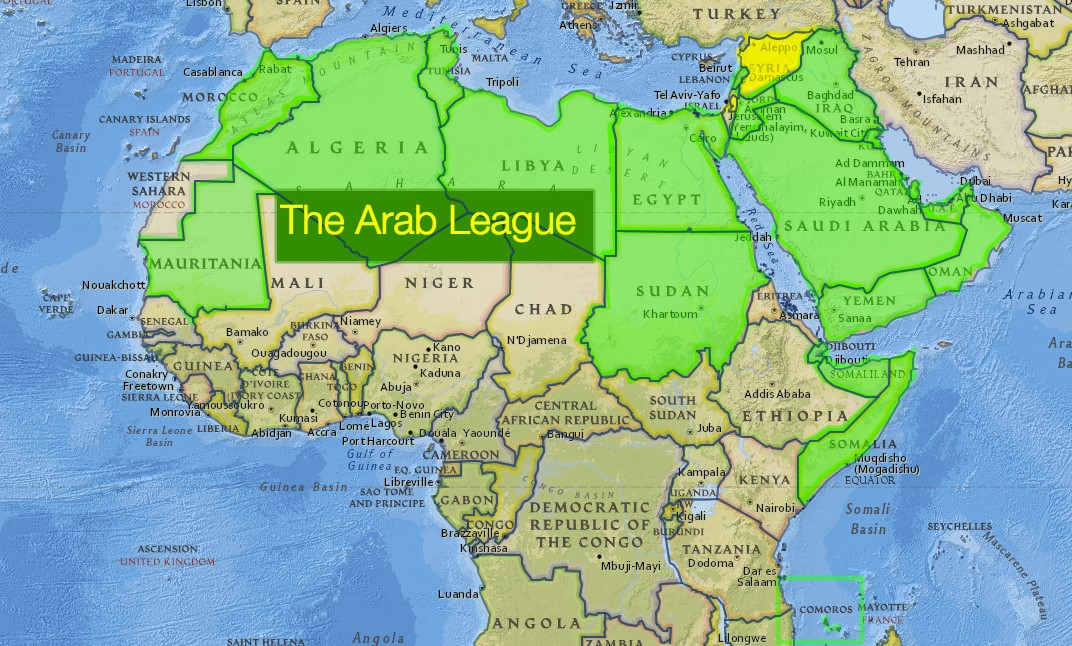
- 24 May 2024
Why is it in the News?
The Arab League called recently for a UN peacekeeping force in the "occupied Palestinian territories" at an international summit dominated by the war between Israel and Hamas.
What is the Arab League?
- The League of Arab States was formed in Cairo on 22 March 1945 with six members: Egypt, Iraq, Transjordan (later renamed Jordan), Lebanon, Saudi Arabia and Syria, with Yemen joining on 5 May 1945.
- It currently has 22 member states; Algeria, Bahrain, Comoros, Djibouti, Egypt, Iraq, Jordon, Kuwait, Lebanon, Libya, Mauritania, Morocco, Oman, Palestinian Authority, Qatar, Saudi Arabia, Somalia, Sudan, Syria, Tunisia, United Arab Emirates and Yemen.
- Four countries have been admitted as observers: Brazil, Eritrea, India and Venezuela.
- Each member state has one vote in the League Council, while decisions are binding only on those states that have voted for them.
- The official language of the Arab League and its 22 member states is Arabic.
- The league seeks to promote the political, social, and military interests of its members.
- The head of the league is known as the secretary-general.
- The secretary-general is appointed to a five-year term by a two-thirds majority of league members.
- Headquarters: Cairo, Egypt.
Goals:
- The overall aim of the league is to promote Arab interests.
- Its main goals are to strengthen and coordinate the political, cultural, economic, and social programs of its members and to try to settle disputes among them or between them and third parties.
- In 1950 the members also agreed to provide military support to help defend each other.
The Arab League Council:
- The League Council is the highest body of the Arab League and is composed of representatives of member states, typically foreign ministers, their representatives, or permanent delegates.
- Each member state has one vote.
- The Council meets twice a year, in March and September. Two or more members may request a special session if they desire.
- The general secretariat manages the daily operations of the league and is headed by the secretary-general.
- The general secretariat is the administrative body of the league, the executive body of the council, and the specialized ministerial councils.
Bay of Bengal Initiative for Multi-Sectoral Technical and Economic Cooperation (BIMSTEC)
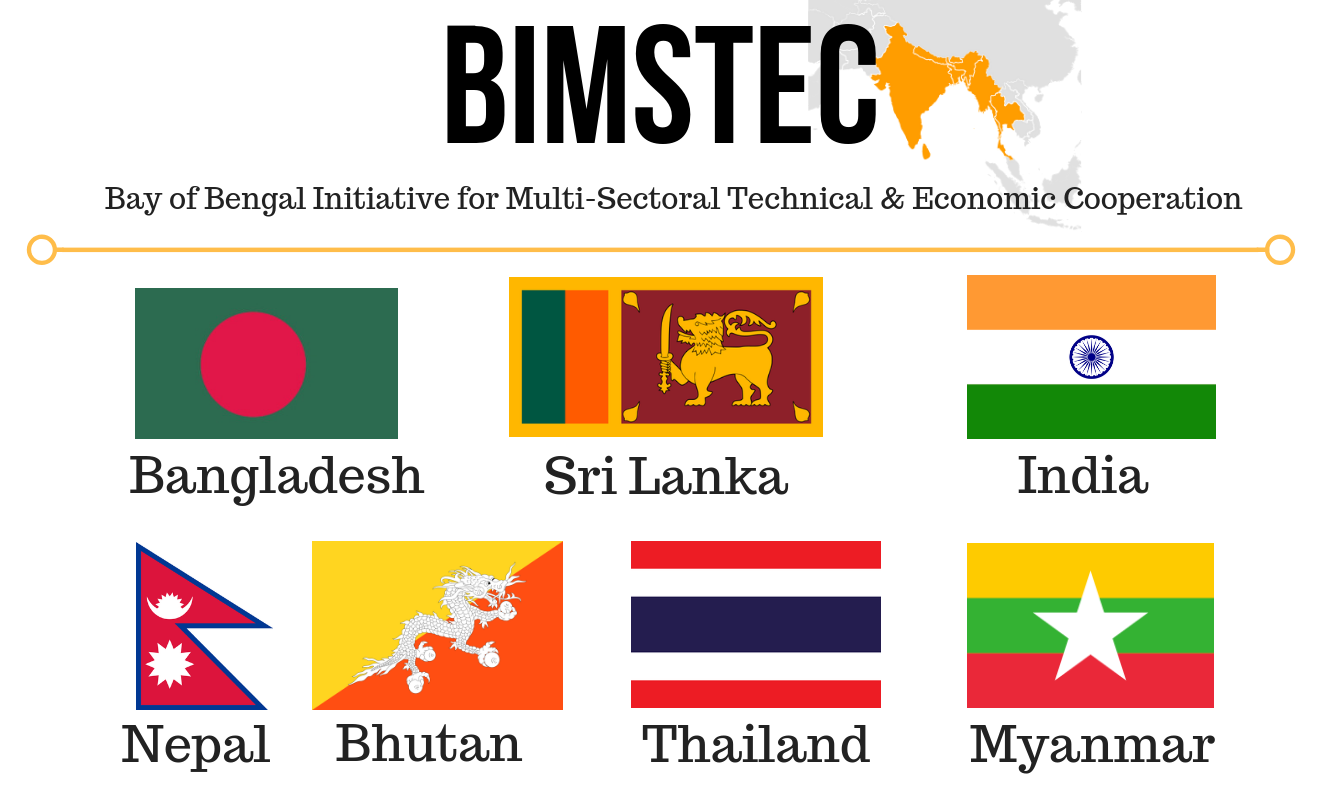
- 23 May 2024
Why is it in the News?
The Bay of Bengal Initiative for Multi-Sectoral Technical and Economic Cooperation (BIMSTEC) will now be open to new members and observers after a historic first charter of the grouping came into force on 20 May.
What is BIMSTEC?
- The Bay of Bengal Initiative for Multi-Sectoral Technical and Economic Cooperation (BIMSTEC) is a multilateral regional organization that brings together seven member states located in the littoral and adjacent areas of the Bay of Bengal, forming a contiguous regional unity.
- Aims: The primary aim of BIMSTEC is to accelerate shared growth and cooperation among littoral and adjacent countries in the Bay of Bengal region.
- Formation: The organization was initially founded as BIST-EC in June 1997, following the adoption of the Bangkok Declaration.
- The founding members included Bangladesh, India, Sri Lanka, and Thailand.
- With Myanmar's entry in late 1997, the organization evolved into BIMST-EC (Bangladesh, India, Myanmar, Sri Lanka, and Thailand Economic Cooperation).
- In 2004, the inclusion of Nepal and Bhutan led to the formation of BIMSTEC, as we know it today.
- The current member states comprise five South Asian nations: Bangladesh, Bhutan, India, Nepal, and Sri Lanka, and two Southeast Asian nations: Myanmar and Thailand.
- BIMSTEC's Permanent Secretariat is situated in Dhaka, Bangladesh, serving as a hub for regional cooperation and coordination among member states.
Areas of cooperation:
- BIMSTEC functions as a sector-driven cooperative organization, initially focusing on six key sectors: Trade, Technology, Energy, Transport, Tourism, and Fisheries.
- Over time, the scope of cooperation has expanded, and as of now, BIMSTEC has identified 14 priority areas of cooperation.
- The inclusion of Climate Change in 2008 marked the 14th priority area.
- Within these priority areas, each member country takes responsibility for leading specific sectors.
- This allows for focused efforts and utilization of regional expertise.
- India, for example, is the leading country in several crucial areas, including Transport & Communication, Tourism, Environment & Disaster Management, and Counter-Terrorism & Transnational Crime.
- This leadership role involves coordinating initiatives, sharing best practices, and driving collaborative efforts within these sectors to enhance regional development and cooperation.
Planetary Alignment

- 23 May 2024
Why is it in the News?
Next month, on June 3, there will be a planetary alignment that may actually allow you to witness six planets align in the sky.
What is a Planetary Alignment?
- Planetary alignment is a term used to describe the positioning of planets in the solar system such that they appear to be in a straight line or close to one when viewed from a specific vantage point, for us that's Earth.
- It is an astronomical event that happens when, by coincidence, the orbits of several of the planets of the Solar System bring them to roughly the same side of the Sun at the same time.
- This phenomenon is more an illusion of perspective rather than the planets being in a perfect line in space.
- It’s important to emphasise that the planets aren’t forming a straight line in space – that’s a much rarer astronomical event called a syzygy.
- However, because all the planets, including the Earth, orbit around the Sun in roughly the same orientation (moving in which we call the “Plane of the Ecliptic”), when they’re on the same side of the Sun as each other, they appear to form a line in the sky when we view them from Earth.”
- Planetary alignments are rather common within themselves, especially when two, three, or even four planets align in the sky.
- Five or more planets aligning, however, is less common.
- April 8, 2024, was the last time the planets were all in alignment.
Which planets will align?
- Mercury, Mars, Jupiter, Saturn, Uranus, and Neptune will form a near-straight line, offering an extraordinary opportunity to witness this cosmic phenomenon.
Which planets will be visible?
- While six planets align, not all of them will be visible to the naked eye, due to their vast distance from Earth.
- Meanwhile, the Moon will also play a spoilsport as it distorts the visibility.
- Mercury and Jupiter will be tricky to see in the sky due to their proximity to the Sun in their orbit.
- However, Mars and Saturn will be visible to the naked eye, though very dim.
- Meanwhile, keen observers will need telescopes or high-powered binoculars to spot the distant planets Uranus and Neptune.
Economic Capital Framework (ECF)
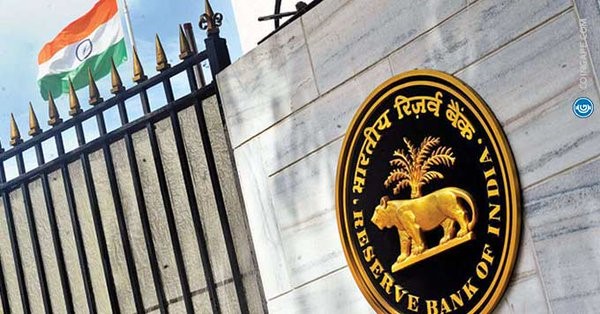
- 23 May 2024
Why is it in the News?
The Central Board of the Reserve Bank of India (RBI) has approved a record surplus transfer of Rs 2.11 lakh crore to the Central government for the fiscal year 2023-24, determined based on the Economic Capital Framework (ECF).
What is the Economic Capital Framework (ECF)?
- The Economic Capital Framework (ECF) is an objective, rule-based, transparent methodology for determining the appropriate level of risk provisions (fund allocation to capital reserve) that is to be made under Section 47 of the Reserve Bank of India Act.
- The Reserve Bank of India (RBI) developed an Economic Capital Framework (ECF) for determining the allocation of funds to its capital reserves so that any risk contingency can be met as well as to transfer the profit of the RBI to the government.
- There are two clear objectives for the ECF.
- First, the RBI as a macroeconomic institution has the responsibility to fight any disorder especially a crisis in the financial system. Here, to meet such a crisis, the RBI should have adequate funds attached under the capital reserve.
- Second, is transferring the remaining part of the net income to the government.
- The process of adding funds to the capital reserve is a yearly one where the RBI allots money out of its net income to the capital reserve.
- How much funds shall be added to the capital reserve each year depends upon the risky situation in the financial system and the economy.
- The process of allocation of funds is technically called as provisioning (risk provisioning etc.,) to the reserves.
- After allotting money to the capital reserve, the remaining net income of the RBI is transferred to the government as profit.
- Since the government is the shareholder of the RBI, the latter’s income (means profit) should be transferred to the Government (Section 47 of the RBI Act).
- Previously, there were several attempts to frame an ECF for the RBI. However, under the changed circumstances, the RBI central board constituted a new committee (under Bimal Jalan) to design an ECF in 2018.
What is a Bimal Jalan Committee?
- The Reserve Bank of India (RBI) in November 2018 had constituted a six-member committee, chaired by former governor Dr Bimal Jalan, to review the current economic capital framework (ECF), after the Ministry of Finance asked the central bank to follow global practices.
What did the Bimal Jalan Committee Recommend?
- According to the Committee, a better distinction between the two components of RBI's economic capital, realised equity and revaluation balances, was needed.
- The realised equity can be used as a buffer in meeting losses, whereas the revaluation balances will be used only during market risks as they are unrealised valuation gains and cannot be distributed.
- The Committee has recommended the adoption of Expected Shortfall (ES) under stressed conditions for measuring the RBI’s market risk and asked to adopt a target of ES 99.5 per cent confidence level.
- It also asked to maintain a Contingent Risk Buffer (CRB) within 6.5 per cent and 5.5 per cent of RBI's balance sheet.
- The Jalan Committee recommended a surplus distribution policy that follows the realised equity maintained by the RBI.
- The panel also suggested that the RBI’s ECF should be reviewed every five years.
- In August 2019, the Central Board of the RBI, chaired by Governor Shaktikanta Das, finalised the RBI’s accounts for 2018-19 using the revised framework to determine risk provisioning and surplus transfer. According to the reports, the RBI had over Rs 9 trillion of surplus capital with it.
Personality Rights
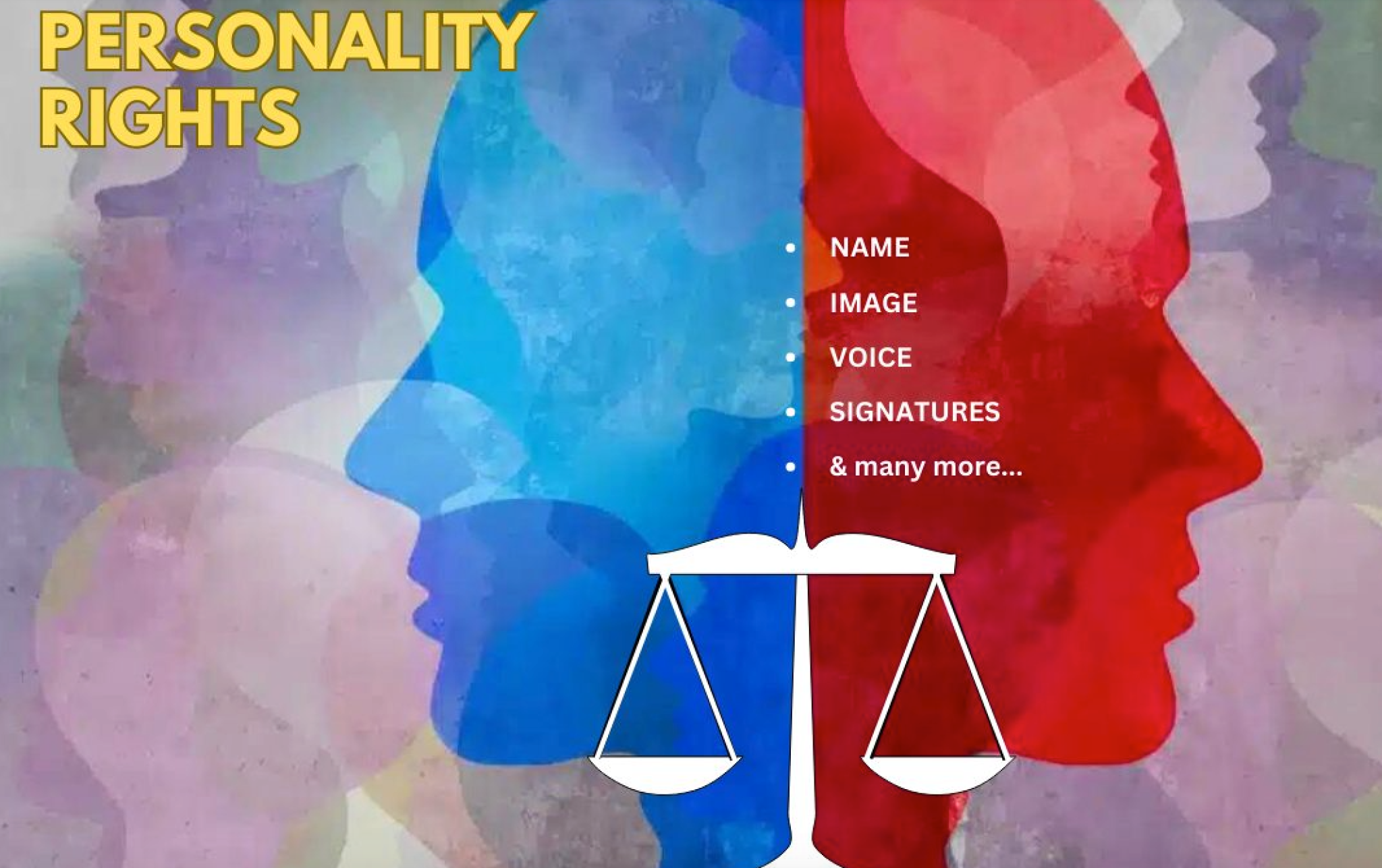
- 23 May 2024
Why is it in the News?
Hollywood actress Scarlett Johansson has said she was “shocked” and “angered” to hear the voice of GPT-4o, OpenAI’s latest AI model, as it sounded “eerily similar” to her own voice.
What are Personality Rights?
- Personality rights or publicity rights are a subset of “celebrity rights” – a much broader term used to refer to certain rights enjoyed by celebrities.
- Besides personality rights, celebrities also have “privacy rights”, which include the right to be left alone.
- The name, voice, signature, images, or any other feature easily identified by the public are markers of a celebrity’s personality and are referred to as “personality rights.”
- These could include poses, mannerisms, or any other distinct aspect of their public persona.
- Several celebrities register aspects of their personalities as trademarks to use them commercially.
- For instance, footballer Gareth Bale trademarked the heart shape he makes with his hands as part of goal celebrations.
- The rationale behind such rights is that only the creator or owner of the unique features can gain commercial benefit from them.
- Therefore, unauthorised use could lead to revenue losses.
- In India, actors such as Rajnikanth, Anil Kapoor and Jackie Shroff have approached the courts over “personality rights” in India.
- Recently, the Delhi HC protected the personality and publicity rights of actor Jackie Shroff while restraining various e-commerce stores, AI chatbots, and social media from misusing Shroff’s name, image, voice, and likeness without his consent.
How are Personality Rights Protected in India?
- Although personality rights or their protection are not explicitly defined in Indian statutes, they usually fall under the right(s) to privacy and property.
- Concepts in intellectual property rights cases, such as passing off and deception, are usually applied in such cases while ascertaining if protection is warranted.
- Protection can be given through damages and injunctions.
International Criminal Court (ICC)
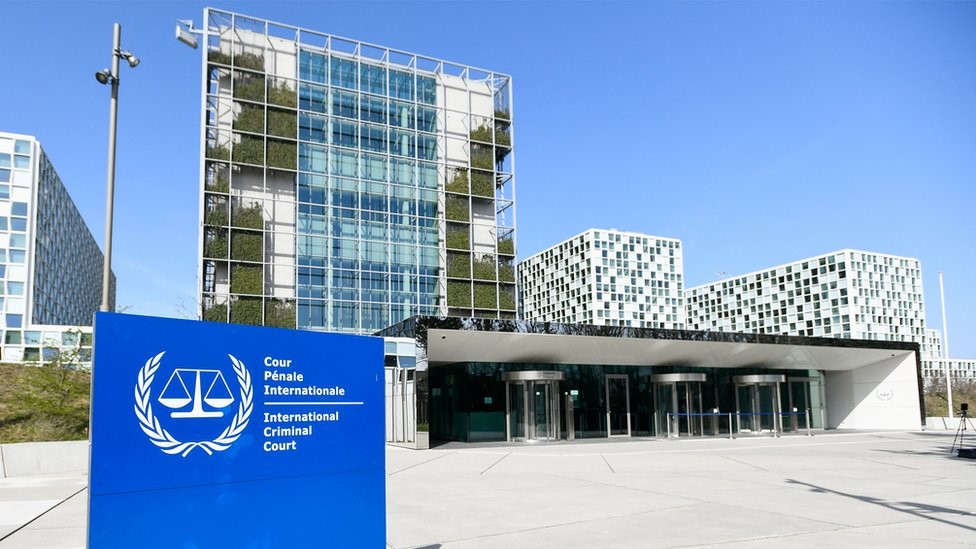
- 21 May 2024
Why is it in the News?
International Criminal Court (ICC) Chief Prosecutor recently announced that he has applied for arrest warrants against Israeli Prime Minister Benjamin Netanyahu and Defence Minister Yoav Gallant for crimes against humanity in the ongoing Gaza war.
What is the International Criminal Court (ICC)?
- The International Criminal Court (ICC) in The Hague (Netherlands) is a permanent global court established in 2002.
- The ICC was created as a result of the Rome Statute, a treaty established at a United Nations conference in Italy and signed in 1998 by 120 countries — giving the ICC its power.
- The ICC is independent of the United Nations (UN) but is endorsed by the UN General Assembly.
- It also maintains a cooperation agreement with the UN.
- It has the power to prosecute individuals and leaders for genocide, crimes against humanity and war crimes.
- Unlike the International Court of Justice (ICJ), which is an organ of the UN, the ICC does not prosecute states.
The Court does not have universal jurisdiction:
- Its jurisdiction only applies to crimes committed by nationals of States Parties or Non-States Parties that have recognized its jurisdiction through declaration and crimes committed in such States.
- The Court may also exercise its jurisdiction for crimes that have been referred to it by the United Nations Security Council, in accordance with a resolution adopted under Chapter VII of the Charter of the United Nations.
The Court’s jurisdiction is governed by the principle of complementarity:
- It does not relieve States of their primary responsibility and only intervenes when the States have been unable or did not wish, to try crimes under their jurisdiction.
- The Court is not a United Nations body. However, it is part of the international system to fight against impunity and prevent and handle crises.
How is the ICC governed?
- The Rome Statute created three bodies:
- The International Criminal Court
- The Assembly of States Parties
- The Trust Fund for Victims
- The Assembly of States Parties (ASP) is made up of representatives of States Parties.
- It provides general guidelines while respecting the independence of the Court and makes decisions relating to how it operates (in particular by electing judges and the Prosecutor and by approving the ICC’s budget).
- The Trust Fund for Victims was created by the ASP to grant individual reparations to victims by executing reparations orders handed down by the Court.
- It also contributes to their rehabilitation through psychological and physical recovery and material support.
- The Fund has financed projects in Uganda, the Central African Republic and the Democratic Republic of the Congo.
The International Criminal Court is made up of four bodies:
- The Presidency (made up of three judges) is responsible for external relations with States, organizes the Divisions’ judicial work and supervises the administrative work of the Registry;
- The Judicial Divisions – the Pre-Trial Division, the Trial Division and the Appeals Division – carry out judicial proceedings;
- The Office of the Prosecutor carries out preliminary analyses, investigations and prosecutions;
- The Registry carries out non-judicial activities related to safety, interpretation, information and outreach or support to lawyers for the defence and victims.
The recruitment process for judges at the ICC:
- Every three years, the ASP elects six new judges, a third of the 18 ICC judges, for a term of nine years.
- The candidates for the position of judge at the ICC are presented by the States Parties.
- The election of judges is governed by a unique procedure that aims to ensure, insofar as possible, that there is a balanced bench with regard to legal expertise, geographical representation and gender.
How does the International Criminal Court differ from the International Court of Justice?
International Criminal Court:
1. Part of the United Nations (UN)?
Ans. No, The International Criminal Court is independent but co-operates closely with the UN.
2. What is its aim?
Ans. To try individuals who are suspected of the crime of genocide, war crimes, crimes against humanity or the crime of aggression.
3. Where is it located?
Ans. The Hague
International Court of Justice:
1. Part of the United Nations (UN)?
Ans. No, The International Court of Justice is the principal judicial organ of the United Nations.
2. What is its aim?
Ans. To settle legal disputes between states,and to advise the UN on legal questions.
3. Where is it located?
Ans. The Hague
Nucleosynthesis
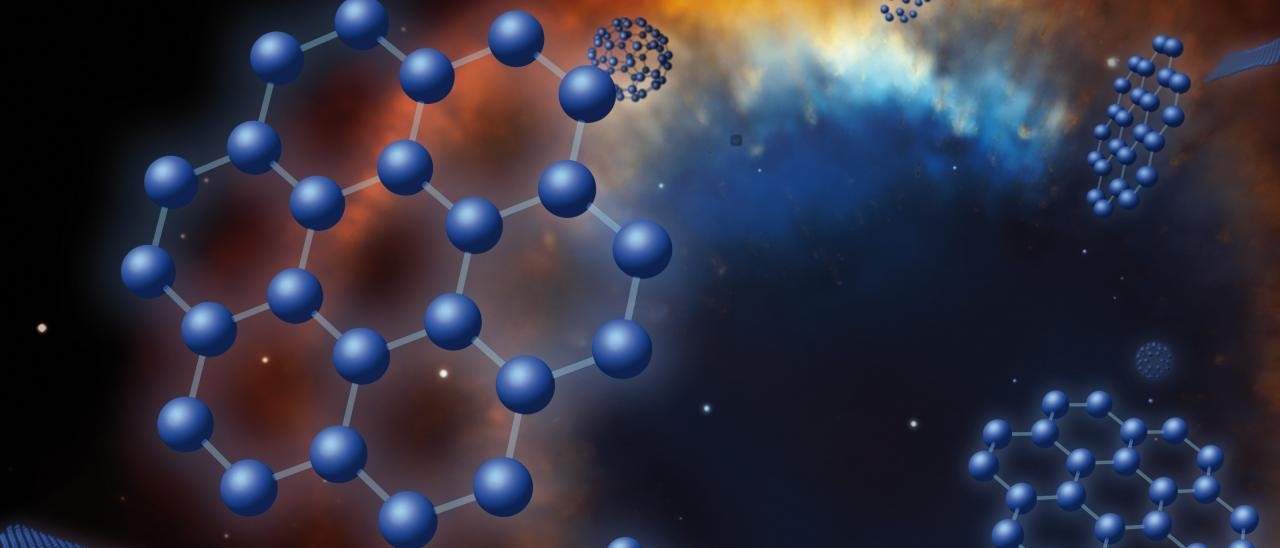
- 20 May 2024
Why is it in the News?
Stellar nucleosynthesis is the process by which stars forge elements inside their cores.
What is Nucleosynthesis?
- Nucleosynthesis is the process by which atomic nuclei undergo nuclear reactions and decay to form new nuclei.
- It is responsible for the production of new elements in the universe.
- Nucleosynthesis occurs in various environments, such as during the Big Bang, in the cores of stars through nuclear fusion, and in black hole accretion disks through nuclear burning.
- The process is temperature-dependent, and the rates of nuclear reactions are influenced by the temperature of the environment.
- The Big Bang Nucleosynthesis (BBN) model is a fundamental theory that explains the evolution of the early universe and predicts the abundance of light elements.
- Nucleosynthesis plays a crucial role in understanding the composition of the universe and can provide insights into physics beyond the standard model.
Types of nucleosynthesis:
- Nucleosynthesis occurs in several different environments and phases of the universe's evolution, including:
- Stellar Nucleosynthesis: This occurs within stars and is responsible for producing most of the chemical elements heavier than hydrogen and helium.
- As stars age and undergo various stages of nuclear fusion, they synthesize elements up to iron in their cores, and heavier elements during supernova explosions at the end of their life cycles.
- Big Bang Nucleosynthesis: This took place during the early moments of the universe's existence, shortly after the Big Bang.
- t primarily produced the lightest elements, hydrogen, and helium, along with trace amounts of lithium, beryllium, and boron.
- Cosmic Ray Spallation: High-energy cosmic rays interacting with interstellar matter can cause fragmentation of atomic nuclei, resulting in the production of lighter elements and isotopes.
Project Astra
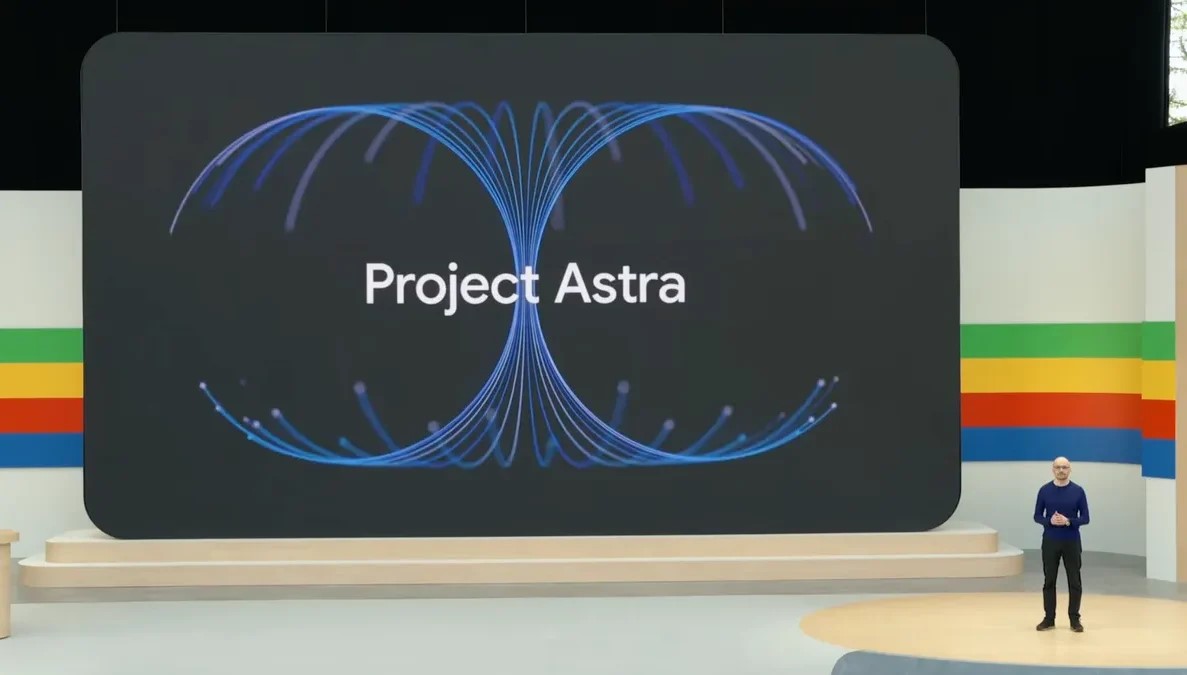
- 20 May 2024
Why is it in the News?
Recently, during the company's annual developer conference, Google unveiled an early version of Project Astra.
What is Project Astra?
- Project Astra is an experimental “multimodal” AI assistant developed by Google DeepMind.
- It's designed to be a versatile tool that can understand and respond to information from the real world through various means, like text, voice, images, and even videos.
- This makes it different from current AI assistants that mostly rely on internet searches and user input.
- Building on Google’s Gemini language model, Astra has multimodal capabilities to perceive visuals, sounds, and other real-world inputs.
- The aim is to create a universal AI helper that seamlessly assists us in daily life by comprehending the actual environment through sight and sound, not just text.
- Astra represents Google’s vision for next-gen AI assistants.
Key Features of Google's Project Astra:
- Visual Understanding: Astra can interpret and analyze visual input from its camera feed.
- It identifies objects, reads text, and describes scenes and environments in detail, allowing users to show Astra something and ask questions about it.
- Voice Interaction: Astra supports natural conversation without the need to repeatedly use wake words.
- It comprehends context and facilitates back-and-forth dialogue, even allowing users to interrupt its responses.
- Remembering Context: Astra retains memory of previous conversation parts, objects it has seen, and information provided by the user.
- This contextual awareness enhances the fluidity of interactions.
- Multimodal Integration: Astra integrates visual and auditory inputs to form a comprehensive understanding of the current situation, correlating what it sees and hears to fully grasp the context.
- Real-Time Assistance: Astra delivers real-time assistance by rapidly processing sensor data and queries, ensuring a responsive and interactive user experience.
What are Multimodal AI Models?
- Multimodal AI models are advanced artificial intelligence systems that process and integrate multiple types of data inputs, such as text, images, audio, and video, to develop a comprehensive understanding of context.
- By combining these different modalities, these models enhance their ability to interpret complex scenarios more accurately than unimodal systems.
- For instance, in autonomous vehicles, multimodal AI uses data from cameras, lidar, radar, and GPS for better navigation.
- In healthcare, these models integrate medical images with patient history for improved diagnostics.
- Applications also include virtual assistants, which understand and respond to spoken commands while recognizing objects in images, and educational tools that combine text, video, and interactive content for richer learning experiences.
- Multimodal AI models are often implemented using deep learning techniques, which allow the model to learn complex representations of the different data modalities and their interactions.
- As a result, these models can capture the rich, diverse information present in real-world scenarios, where data often comes in multiple forms.
Plunging Region of a Black Hole

- 18 May 2024
Why is it in the News?
For the first time, astronomers have observed the area right at the edge of a black hole where matter stops orbiting and plunges straight in at near-light speed.
What is the Plunging Region of a Black Hole?
- The plunging region of a black hole is an area where matter ceases to orbit the celestial object and instead falls directly into its incalculable depths.
- This phenomenon was initially predicted by Albert Einstein's groundbreaking theory of general relativity, which continues to shape our understanding of the cosmos.
- As matter approaches a black hole, it is torn apart and forms a rotating ring known as an accretion disc.
- According to general relativity, there exists an inner boundary within this disc, beyond which nothing can maintain its orbit around the black hole.
- Instead, the material is drawn towards the black hole at nearly the speed of light, marking the beginning of the plunging region.
- This region, situated just outside the event horizon, represents the point of no return for matter falling into a black hole.
- Despite the challenges posed by studying these enigmatic structures, researchers believe that investigating plunging regions could unveil new insights into the formation and evolution of black holes.
- Additionally, these studies may offer valuable information about the fundamental properties of space-time, potentially transforming our understanding of the universe and its most mysterious inhabitants.
What is a Black Hole?
- A black hole is a celestial phenomenon that arises from the remnants of a massive star that has exhausted its nuclear fuel and undergone gravitational collapse.
- It is characterized by an unfathomably dense core, known as a singularity, which is enveloped by a boundary called the event horizon.
- The event horizon serves as a point of no return; any matter or light that crosses this boundary is irrevocably drawn towards the singularity, making it impossible to escape the immense gravitational pull.
Black holes are classified into three categories based on their size and formation process:
- Stellar-mass black holes: These form when a massive star collapses at the end of its life cycle. They typically have masses ranging from approximately five to several dozen times that of our Sun.
- Supermassive black holes: Found at the centre of most galaxies, including our own Milky Way, these colossal structures boast masses that can reach billions of times the mass of the Sun.
- Intermediate-mass black holes: With masses between those of stellar mass and supermassive black holes, these entities are thought to form through the merger of smaller black holes or the collapse of dense clusters of stars.
- Due to their extreme nature, black holes have been the subject of extensive research and fascination in the scientific community.
- The study of these enigmatic structures continues to yield invaluable insights into the fundamental principles governing our universe.
Mitogenome
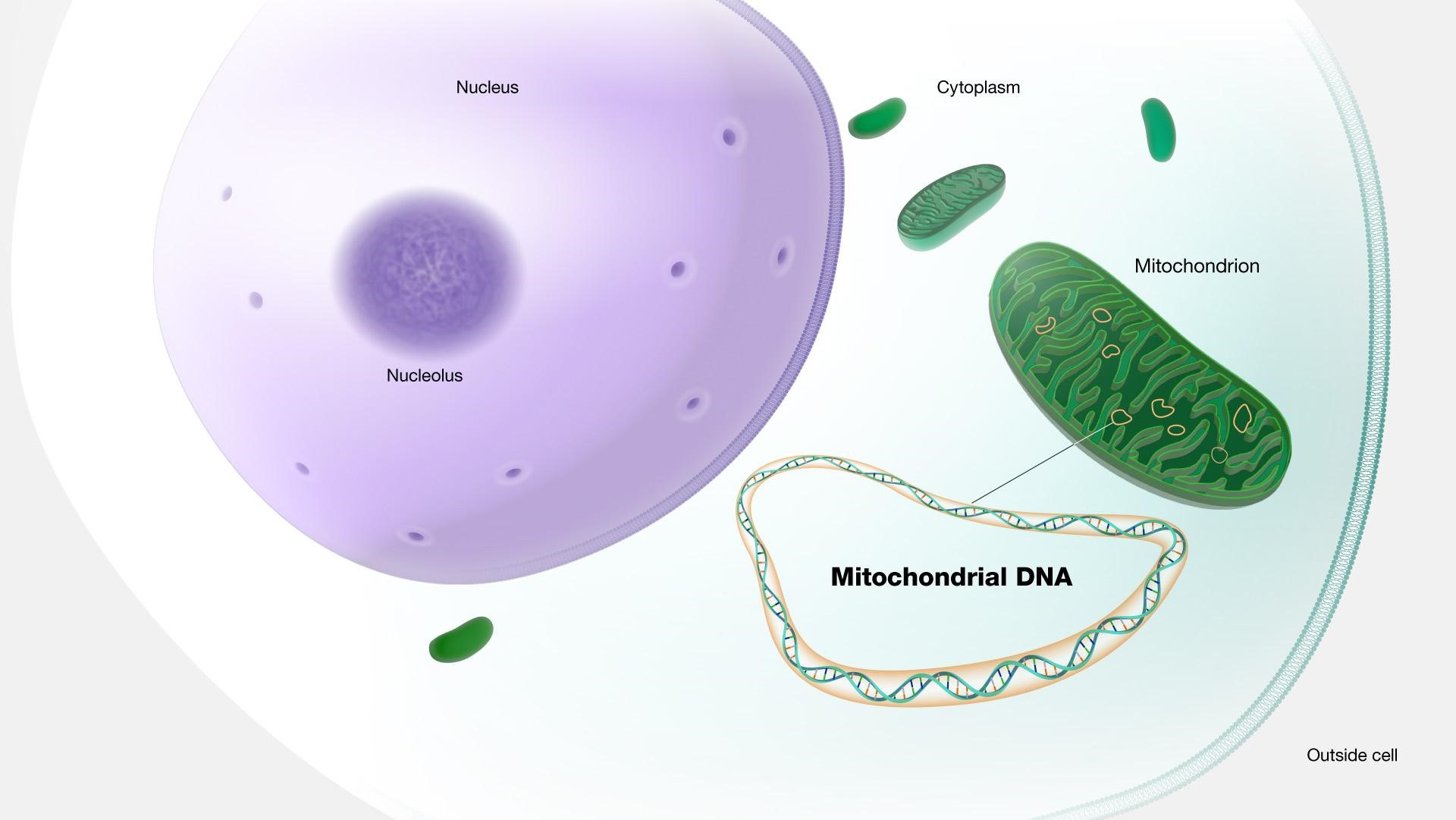
- 18 May 2024
Why is it in the News?
New research has found South African leopards originated from two unique clades in southern and central Africa approximately 0.8 million years ago.
What is a Mitogenome?
- DNA is found in the nucleus of cells and also in the mitochondrial genome, or mitogenome.
- Mitogenomes are DNA molecules that float around outside the nucleus of a cell.
- They store their own set of genetic information and are maternally inherited, which means they are only passed on from mother to offspring.
- Mitogenomes are a “genomic by-catch” when sequencing the whole genome.
- They are so abundant in cells that it is very easy to extract them.
- Studying mitogenomes is a reliable way to track the ancestry of a species.
- This is because genes mutate (change) at a regular rate over time.
- The changes in the mitogenome provide a picture of any species' evolution over hundreds of thousands of years.
What is DNA?
- DNA or Deoxyribonucleic Acid is the genetic material that codes the information for all the different processes that make an organism living like growth, replication, metabolism, etc.
- DNA is present in each cell (except for some viral species, RBCs, sieve cells, etc.) and is passed down from parents to their offspring. DNA is comprised of units called nucleotides.
- DNA is self-replicating, a long stretch of nucleotides.
- DNA is a form of nucleic acid and is one of the four major macromolecules that make up the living system.
- In eukaryotic cells, it is found in the nucleus of the cell whereas in prokaryotes it is found free-floating in the cell cytoplasm.
- Other than the nucleus DNA is also found in mitochondria, chloroplast, and in smaller forms called plasmid in certain bacterial species.
Baobab Tree
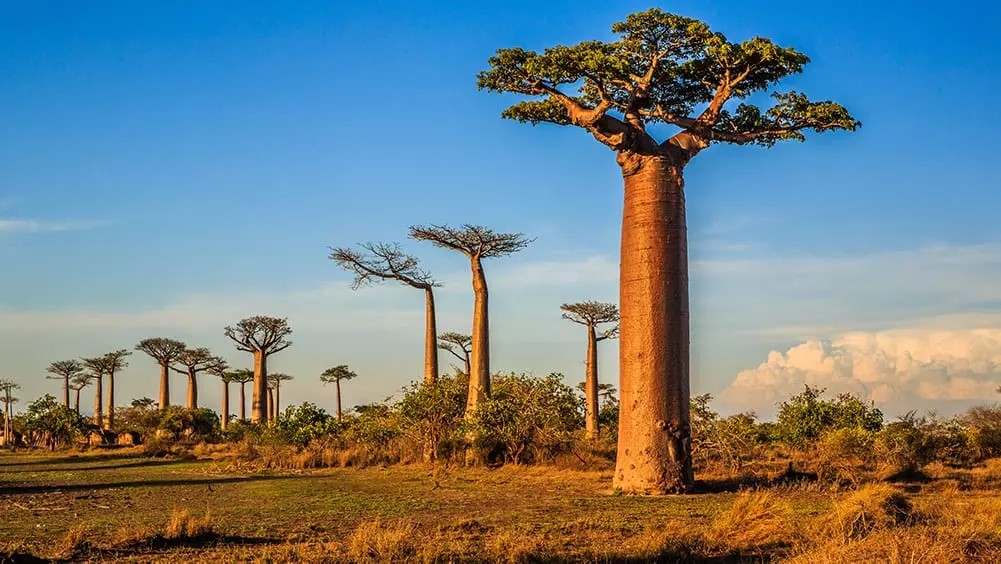
- 17 May 2024
Why is it in the News?
A new study has uncovered the origins of baobabs, the tall and uniquely shaped deciduous trees that are famously spotted on the island of Madagascar.
What are Baobab Trees?
- Baobabs are known for their great heights, with some extending up to 50 metres, and exceptionally long lifespans going up to 2,000 years.
- In India too, a few baobab trees exist, including one near the Golconda Fort in Andhra Pradesh that is believed to be more than 400 years old.
- The trees have trunks with large circumferences and thin, spindly branches.
- In local cultures, the trees are also revered because of the multiple uses their parts have, with the fruits and seeds being edible, the seed oil used for cooking and the bark fibre for clothing.
- They are also called “upside down” trees because of their tops resembling an uprooted plant turned upside down.
Essential for the ecosystem:
- Baobab trees are fundamental to the entire dry African savanna ecosystem.
- They help keep soil conditions humid, aid nutrient recycling, and slow soil erosion with their massive root systems.
- As a succulent, the tree absorbs and stores water from the rainy season in its massive trunk, producing a nutrient-dense fruit in the dry season, which can grow up to a foot long.
- The fruit contains tartaric acid and Vitamin C, serving as a vital nutrient and food source for many species.
- They are also an essential source of water and shelter for hundreds of animals, including birds, lizards, monkeys, and even elephants – which can eat their bark for moisture when there is no water nearby.
In human culture:
- For humans, the baobab’s fruit pulp can be eaten, soaked in water to make a refreshing drink, preserved into a jam, or roasted and ground to make a coffee-like substance.
- The bark can be pounded to make everything from rope, mats, and baskets to paper and cloth.
- Leaves are also used, they can be boiled and eaten, or glue can be made from their flower’s pollen.
What Did the Study Find?
- The study highlighted the threats facing baobab trees and examined their genetic makeup.
- It reported that three Madagascar species of baobab trees are threatened with extinction, according to the IUCN Red List of Threatened Species.
- The study identified various threats, including residential and commercial development and livestock farming, which require land clearing.
- However, even species not currently endangered show declining populations, suggesting that more rigorous conservation strategies are needed to ensure their long-term survival.
- This necessitates a detailed understanding of the baobabs' genetics.
- Genomic sequencing revealed a consensus on the monophyly of the Malagasy lineage from Madagascar.
- According to DNA studies, baobab trees first arose in Madagascar 21 million years ago, with their seeds later carried by ocean currents to Australia and mainland Africa, where they evolved into distinct species.
- The study also warned that climate change poses severe threats to Adansonia suarezensis from Madagascar, predicting its possible extinction by 2080.
- Due to their unique ecological roles and low genetic diversity, these species are likely to have reduced resilience to environmental changes and habitat fragmentation.
Leopard Cat

- 17 May 2024
Why is it in the News?
The leopard cat (Prionailurus bengalensis), a small wild cat native to South, Southeast and East Asia, was recently spotted in Maharashtra’s Pench, in what is being billed as Central India’s first sighting of the species.
About Leopard Cat:
- The Leopard cat (Prionailurus bengalensis) is a small wild cat native to continental South, Southeast, and East Asia.
- With its distinctive leopard-like colouring, this small wildcat is known for its remarkable adaptability and extensive distribution across Asia.
Habitat and Distribution:
- Leopard cats can be found in a variety of environments, ranging from the Amur region in Russia to the Korean Peninsula, China, Indochina, the Indian Subcontinent, northern Pakistan, and as far south as the Philippines and the Sunda Islands of Indonesia.
- Although they can inhabit agriculturally used areas, leopard cats prefer forested habitats, including tropical evergreen rainforests, subtropical deciduous and coniferous forests, and plantations at various altitudes.
Physical Characteristics:
- Size and appearance vary considerably across their range, with a length of 45 to 75 cm (18 to 30 inches), excluding their 23-35 cm (9-13.8 inches) tail.
- Their colouration ranges from pale tawny to yellow, red, or grey, with white underparts and distinctive spots.
- Most leopard cats have four black stripes running from their forehead to the nape, breaking into short bands and elongated spots on their shoulders.
Behaviour and Diet:
- As solitary and nocturnal carnivores, leopard cats primarily feed on rodents, tree shrews, and hares, playing a crucial role in maintaining the balance of their ecosystems.
Conservation Status:
- Listed as "Least Concern" on the IUCN Red List, leopard cats face threats from habitat loss, poaching, and human-wildlife conflict. Continued monitoring and conservation efforts are essential to protect this species and its vital role in Asia's diverse ecosystems.
Facts about Pench Tiger Reserve:
- Location: Situated in the southern reaches of the Satpura hills, the Pench Tiger Reserve spans Seoni and Chhindwara districts in Madhya Pradesh and extends into Nagpur district in Maharashtra as a separate Sanctuary.
- It derives its name from the Pench River, which flows from north to south through the Reserve.
- The reserve encompasses the Indira Priyadarshini Pench National Park, the Pench Mowgli Sanctuary, and a buffer zone.
- The area served as the inspiration for Rudyard Kipling's renowned work, "The Jungle Book."
- Vegetation: The undulating topography supports a diverse range of vegetation, from moist, sheltered valleys to open, dry deciduous forests.
- Flora: Pench Tiger Reserve boasts a rich variety of flora, including teak, saag, mahua, and various grasses and shrubs.
- Fauna: Renowned for its wildlife diversity, the reserve is home to large herds of Chital, Sambar, Nilgai, Gaur (Indian Bison), and wild boar.
- Key predators include the tiger, leopard, wild dogs, and wolf. Additionally, the reserve supports over 325 species of resident and migratory birds, including the Malabar Pied Hornbill, Indian Pitta, Osprey, Grey Headed Fishing Eagle, and White Eyed Buzzard.
Synchrotron
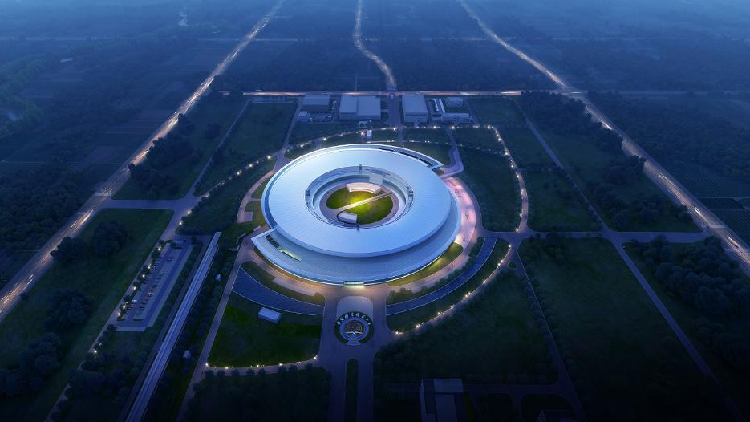
- 17 May 2024
Why is it in the News?
China's latest scientific achievement, the High Energy Photon Source (HEPS), is poised to become Asia's first fourth-generation synchrotron light source which is scheduled to commence operations by the end of this year.
What is a Synchrotron?
- A synchrotron is a type of circular particle accelerator where particles travel in a loop.
- It functions by accelerating charged particles, typically electrons, through sequences of magnets until they approach the speed of light.
How Does It Work?
- Acceleration: Charged particles are accelerated through magnets.
- Production of Light: These high-speed electrons generate extremely bright light, known as synchrotron light.
- This light, predominantly in the X-ray region, is millions of times brighter than conventional sources and 10 billion times brighter than the sun.
- Beamlines and Workstations: The intense light is directed down beamlines to experimental workstations for research purposes.
Applications:
- Research: Scientists use synchrotron light to study tiny matter such as atoms and molecules.
- By examining how a sample scatters, diffracts, absorbs, or reemits the synchrotron light, they can uncover details about its structure and chemical composition.
Global Presence:
- There are approximately 70 synchrotrons worldwide in various stages of development.
- They have varying technical specifications and uses, ranging from practical applications to fundamental theoretical research.
In India:
- India has a synchrotron facility known as the "Indus Synchrotron."
- It is located at the Raja Ramanna Centre for Advanced Technology (RRCAT) in Indore, Madhya Pradesh.
- The Indus Synchrotron is a third-generation synchrotron radiation source that is used for various research applications in fields such as materials science, biology, and environmental science.
What is the High Energy Photon Source (HEPS)?
- HEPS (High Energy Photon Source) is recognized as the brightest synchrotron X-ray source in Asia.
- Location: The HEPS facility is situated in Huairou, China, approximately 50 kilometres from Beijing.
- Acceleration Capabilities: HEPS is designed to accelerate electrons up to energies of 6 gigaelectron volts within its 36-kilometer circumference storage ring, producing high-energy X-rays for research purposes.
- Nanoscale Investigations: The high-energy X-rays generated by HEPS can penetrate deep into samples, allowing researchers to study intricate details at the nanometer scale.
- Diverse Research Applications: HEPS will cater to various research fields, including energy, condensed matter physics, materials innovation, and biomedicine, by providing access to 14 specialized beamlines.
- Superiority to Existing Synchrotrons: Compared to China's current most advanced synchrotron, the Shanghai Synchrotron Radiation Facility (with a circumference of 432 meters), HEPS will offer a time resolution 10,000 times better.
PREFIRE (Polar Radiant Energy in the Far-InfraRed Experiment) Mission
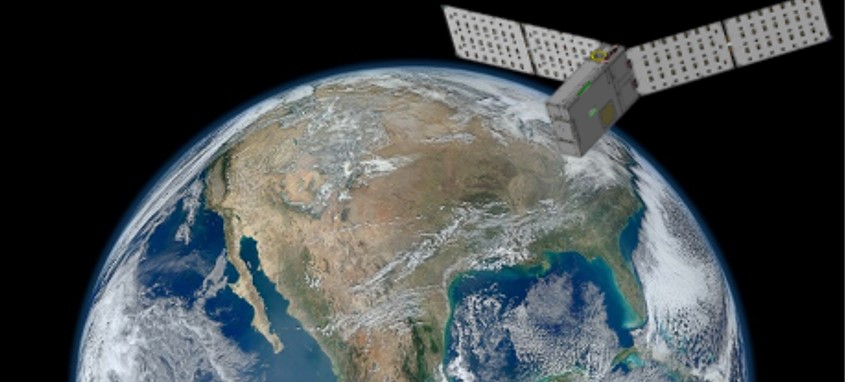
- 17 May 2024
Why is it in the News?
NASA is set to launch the two small satellites of the PREFIRE mission from New Zealand on May 22 aimed at filling in critical gaps in data from Earth's polar regions.
What is the PREFIRE Mission?
- PREFIRE (Polar Radiant Energy in the Far-InfraRed Experiment) is a NASA mission that involves sending two tiny twin spacecraft, known as CubeSats, to the Earth's polar regions to gather data on the heat energy radiated out to space and its impact on our climate.
- PREFIRE consists of two, 6U CubeSats with a baseline mission length of 10 months.
- These shoebox-sized satellites will orbit at altitudes between 292 and 403 miles, crossing paths in the atmosphere.
Objectives:
- The mission will help close a gap in understanding how much of Earth’s heat is lost to space, especially from the Arctic and Antarctica.
- Analysis of PREFIRE’s measurements will inform climate and ice models, providing better projections of how a warming world will affect sea ice loss, ice sheet melt, and sea level rise.
- Improving climate models can ultimately help to provide more accurate projections on the impacts of storm severity and frequency, as well as coastal erosion and flooding.
- By studying the far-infrared radiation emitted from these regions, PREFIRE will help improve the accuracy of climate models, enhancing our understanding of phenomena such as Arctic warming, sea ice loss, and ice-sheet melting.
The mission will help in:
- Uncover the reasons behind the Arctic warming more than 2½ times faster than the global average since the 1970s.
- Provide scientists with a clearer understanding of how efficiently far-infrared heat is emitted by materials such as snow and sea ice, and how clouds affect the amount of far-infrared radiation that escapes to space.
- Enhance predictions about future changes in the heat exchange between Earth and space, and how these changes will impact phenomena like ice sheet melting, atmospheric temperatures, and global weather patterns.
How will the Satellites Work?
- The mission with cube satellites about the size of a shoebox will be launched aboard an Electron launch vehicle.
- It is equipped with technology proven on Mars and will measure a “little-studied portion” of the radiant energy emitted by Earth.
- Two satellites carrying a thermal infrared spectrometer will be in asynchronous near-polar orbits and will be passing over a given spot on Earth at different times. To maximize coverage, they will be overlapping every few hours near the poles.
- The instruments weighing less than 6 pounds (3 kilograms) each will make readings using a device called a thermocouple, similar to the sensors found in many household thermostats.
Why is it Important to Study the Polar Regions?
- According to NASA, Earth's climate balance hinges on the equilibrium between the heat energy the planet receives from the Sun and the amount it radiates back into space.
- The difference between incoming and outgoing energy determines Earth's temperature and climate.
- The polar regions are crucial in this balance.
- Changes in the polar regions can significantly impact global weather patterns.
- Extreme storms, flooding, coastal erosion – all of these phenomena are influenced by what’s happening in the Arctic and Antarctic.
- This underscores the importance of understanding polar dynamics to predict and mitigate global climate effects.
Invasive Alien Species
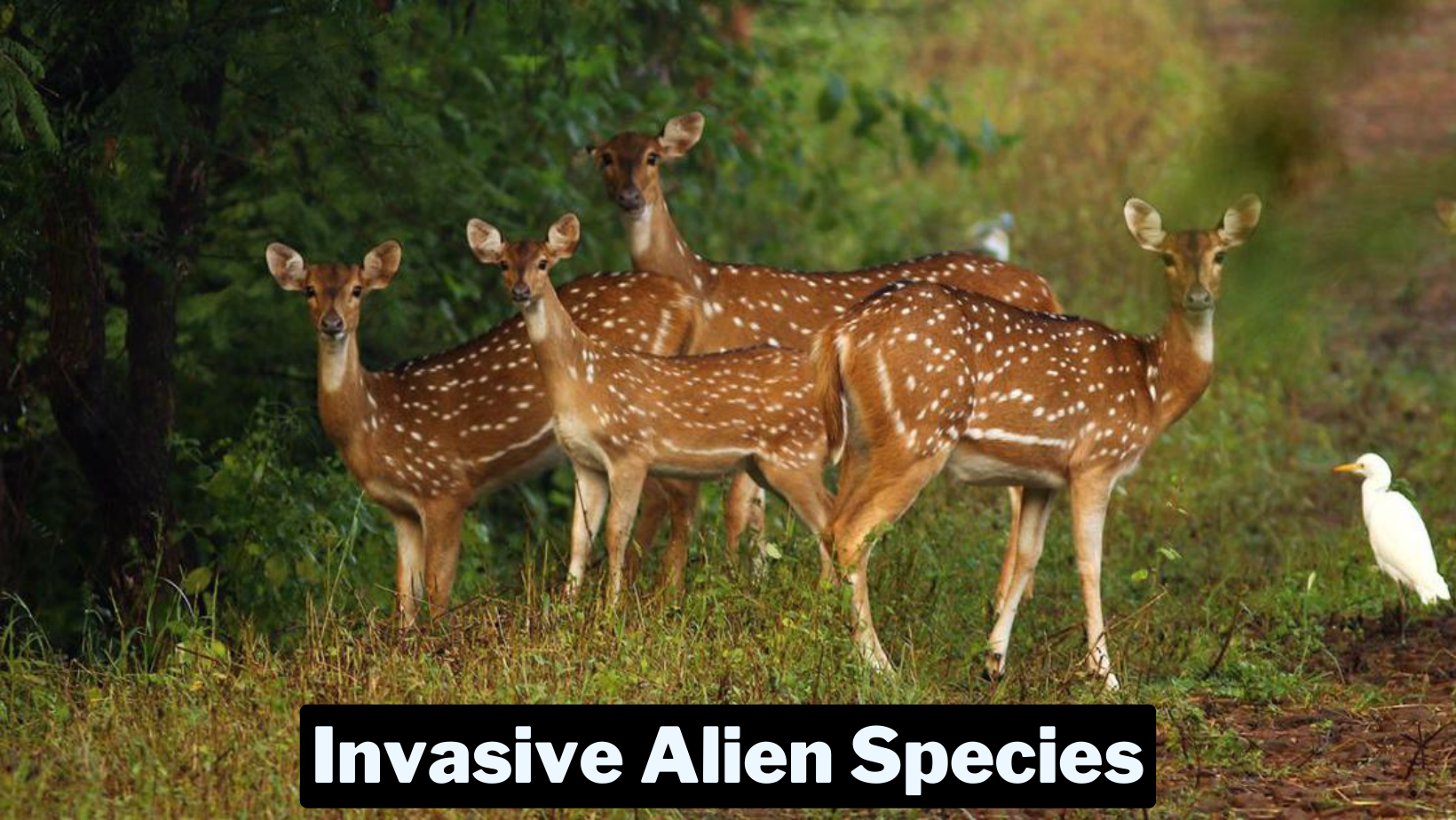
- 11 Apr 2024
Why is it in the News?
In a bid to manage the teeming population of chital (spotted deer) in Ross Island (officially known as the Netaji Subhash Chandra Bose Island), the Andaman and Nicobar Islands administration recently sought help from the Wildlife Institute of India.
What are Invasive Alien Species (IAS)?
- According to the Convention on Biological Diversity (CBD), Invasive alien species are plants, animals, pathogens, and other organisms that are non-native to an ecosystem, and which may cause economic or environmental harm or adversely affect human health.
- In particular, they impact adversely upon biodiversity, including the decline or elimination of native species - through competition, predation, or transmission of pathogens - and the disruption of local ecosystems and ecosystem functions.
- Invasive alien species, introduced and/or spread outside their natural habitats, have affected native biodiversity in almost every ecosystem type on Earth and are one of the greatest threats to biodiversity.
- Since the 17th century, invasive alien species have contributed to nearly 40% of all animal extinctions for which the cause is known (CBD, 2006).
- The problem continues to grow at great socio-economic, health, and ecological costs around the world.
- Invasive alien species exacerbate poverty and threaten development through their impact on agriculture, forestry, fisheries, and natural systems, which are an important basis of people’s livelihoods in developing countries.
- This damage is aggravated by climate change, pollution, habitat loss, and human-induced disturbance.
What are Some Examples of Invasive Wildlife in India?
- The list of invasive wildlife in India is dominated by certain species of fish such as the African catfish, Nile tilapia, red-bellied piranha, and alligator gar, and turtle species such as the red-eared slider.
- The red-eared slider, for instance, is a favorite among India’s exotic pet owners, and many have been abandoned in local water bodies.
- This turtle, native to North America, notoriously edges out local freshwater species, owing to its fast rates of reproduction, and the following competition for food.
- With regards to species of fish, many were introduced in India to feed the demand for those maintaining aquariums.
- For instance, the African catfish was brought over from Bangladesh specifically for aquaculture purposes. “
- The occurrence of C gariepinus (the species’ scientific name) has been reported from several inland systems of India including the mighty rivers like Ganga, Yamuna, Sutlej, Godavari, Periyar River, and the lakes like Vembanad Lake.
How do IAS Impact Native Flora and Fauna?
- The invasive species act as disruptors in the food chain and disturb the balance of the ecosystem.
- In habitats where there is no competition, invasive species can dominate the entire ecosystem
- For instance, “in Keoladeo Park, Bharatpur in Rajasthan, which is a UNESCO World Heritage site, the African catfish have been known to prey on waterfowls and migratory birds as well.
- Studies have shown that the proliferation of chital in the Andamans has affected the regeneration of native vegetation, as the deer are known to consume seeds and seedlings.
QS World University Rankings
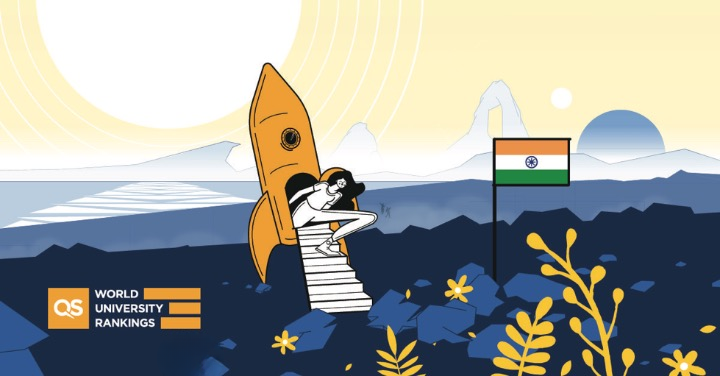
- 11 Apr 2024
Why is it in the News?
Sixty-nine Indian universities made it to the rankings with 424 entries in the 2024 QS World University Rankings by Subject. This marks a 19.4 percent rise from the previous year’s 355 entries.
About QS World University Rankings:
- The QS World University Rankings, curated annually by Quacquarelli Symonds, are a comprehensive assessment of the world's top 1,000 universities.
- In the latest 2024 edition, universities were meticulously evaluated across 55 specific subjects and five broader subject areas, offering a nuanced perspective on academic excellence.
Key Highlights from the 2024 Rankings:
- Massachusetts Institute of Technology (MIT) maintains its prestigious position as the top-ranked university globally for the 12th consecutive year, a testament to its enduring academic prowess.
- The Indian Institute of Technology Bombay (IITB) shines as the leading Indian institution, securing the 149th spot on the global stage.
- Noteworthy Progress: India demonstrates remarkable advancement with a total of 69 universities making their mark in the QS rankings, showcasing a notable 19.4% increase from the previous year.
- India stands as the second most represented country in Asia, highlighting its growing significance in the global academic landscape.
- Jawaharlal Nehru University (JNU) emerges as a standout, clinching the 20th position globally in development studies, reaffirming its commitment to excellence in specialized fields.
- India's Rise in Research: The nation exhibits a commendable 20% improvement in the Citations per Paper indicator, underscoring its burgeoning research capabilities.
- With a staggering 1.3 million academic papers produced, India emerges as the world's fourth-largest contributor to research, trailing only behind academic powerhouses like China, the United States, and the United Kingdom.
- Challenges Ahead: Despite significant strides, India grapples with the challenge of securing citations in premier global journals, with only 15% of its research receiving recognition in these esteemed publications between 2017 and 2021.
- Overall, India's journey in the QS World University Rankings reflects a narrative of progress, innovation, and resilience, while also highlighting areas for continued growth and enhancement in the global academic arena.
African Baobab Tree

- 11 Apr 2024
Why is it in the News?
In a groundbreaking conservation endeavor, the Global Society for the Preservation of Baobabs and Mangroves (GSPBM) has initiated a mission to rejuvenate the iconic Baobab trees.
About the African Baobab Tree:
- African baobab trees, scientifically known as Adansonia Digitata, are some of the oldest living organisms in the world.
- Baobab trees originated millions of years ago in West Africa and spread over time to other parts of the world, creating new species.
- There are 9 baobab species, of which 6 have originated in Madagascar, 2 in Australia, and 1 in Africa.
- These trees range in height from 5 to 20 meters and are typically found in deciduous forests composed primarily of broad-leaved trees that shed their leaves during one season.
- It is one of nine species of baobab, is native to mainland Africa, and also thrives in the African savanna ecosystem.
- The savanna features warm temperatures year-round and experiences its highest seasonal rainfall in the summer.
- It is characterized by grasses and dispersed trees, allowing ample sunlight to reach the ground.
- Age Record: Carbon-14 dating has revealed that an African baobab specimen in Namibia is approximately 1,275 years old, making it the oldest known angiosperm tree.
- Tree of Life: African baobabs, being succulents, absorb and store water in their expansive trunks during the rainy season.
- This unique adaptation enables them to produce nutrient-dense fruit during the dry season, even in arid environments.
- Utilization: Baobab trees, with lifespans exceeding a thousand years, offer a multitude of benefits including food, fodder for livestock, medicinal compounds, and raw materials for various purposes.
- Threats: Since 2005, nine of the thirteen oldest African baobab specimens and five of the six largest trees have either perished or experienced significant decline, possibly due to the impacts of climate change.
What are Angiosperms?
- Angiosperms, a taxonomic class of plants, are characterized by seeds enclosed within an ovule, such as those found in apples.
- This group is commonly known as hardwoods.
- Angiosperms typically comprise trees with broad leaves that undergo color changes and shed annually during autumn.
- Examples of deciduous angiosperms include oaks, maples, and dogwoods. However, certain angiosperms, such as rhododendrons, live oaks, and sweet bay magnolias, retain their leaves.
Gymnosperms:
- Gymnosperms, another taxonomic class, encompass plants with seeds not enclosed in an ovule, as seen in pine cones.
- The term "gymnosperm" translates to "naked seed," and this group is often referred to as softwoods.
- Gymnosperms commonly feature needle-like leaves that remain green throughout the year. Examples include pines, cedars, spruces, and firs.
- While many gymnosperms maintain their foliage year-round, some, like ginkgos, dawn redwoods, and bald cypresses, do shed their leaves.
Higgs Boson

- 10 Apr 2024
Why is it in the News?
Peter Higgs, the eminent theoretical physicist who first proposed the idea of what we now know as the “Higgs Boson,” died at the age of 94 on April 8.
What is the Higgs Boson?
- Particles make up everything in the universe but they did not have any mass when the universe began.
- They all sped around at the speed of light, according to the European Council for Nuclear Research (CERN).
- CERN, the European Council for Nuclear Research, is where the Large Hadron Collider (LHC) is located, and it's where the discovery of the Higgs Boson was made in 2012 through experiments conducted at the LHC.
- Everything we see like planets, stars, and life, emerged after particles gained their mass from a fundamental field associated with the particle known as the Higgs boson.
- The particle has a mass of 125 billion electron volts making it 130 times bigger than a proton?, according to CERN.
- Interestingly, the subatomic particles known as bosons are named after Indian Physicist Satyendra Nath Bose.
How does the Higgs Boson Work?
- The Higgs boson is a fundamental component of a theory formulated by Higgs and colleagues in the 1960s to elucidate how particles acquire mass.
- According to this theory, a pervasive Higgs energy field permeates the universe.
- As particles traverse this field, they interact with and draw in Higgs bosons, which congregate around the particles in varying quantities.
- Likewise, envision the universe akin to a party: less prominent guests can swiftly traverse the room without notice, while more popular guests attract clusters of people (the Higgs bosons), thus decelerating their movement through the room.
- Similarly, particles navigating the Higgs field experience a comparable phenomenon.
- Certain particles attract larger assemblies of Higgs bosons, and the more Higgs bosons a particle draws in, the greater its mass becomes.
Why is the Higgs Boson Called the “God Particle?”
- The Higgs boson is popularly known as the "God Particle".
- The name originated from Nobel Prize-winning physicist Leon Lederman's book on the particle which he titled the "Goddamn Particle", owing to frustration over how difficult it was to detect.
- However, his publishers changed the name to "The God Particle", which often draws ire from religious communities.
Who was Peter Higgs?
- Born in UK's Newcastle upon Tyne in 1929, Mr Higgs studied at King's College in London and has taught at the University of Edinburgh since the 1950s.
- Described as a modest man who published only a few scientific papers, he disliked his sudden fame calling it "a bit of a nuisance", even cringing when the term "Higgs boson" was used.
- Even as a lifelong atheist, he disliked the name "God particle".
- In 2013, Higgs and Francois Englert won the Physics Nobel Prize for their work on the particle which was thought to be a key to explaining the universe.
CDP-SURAKSHA
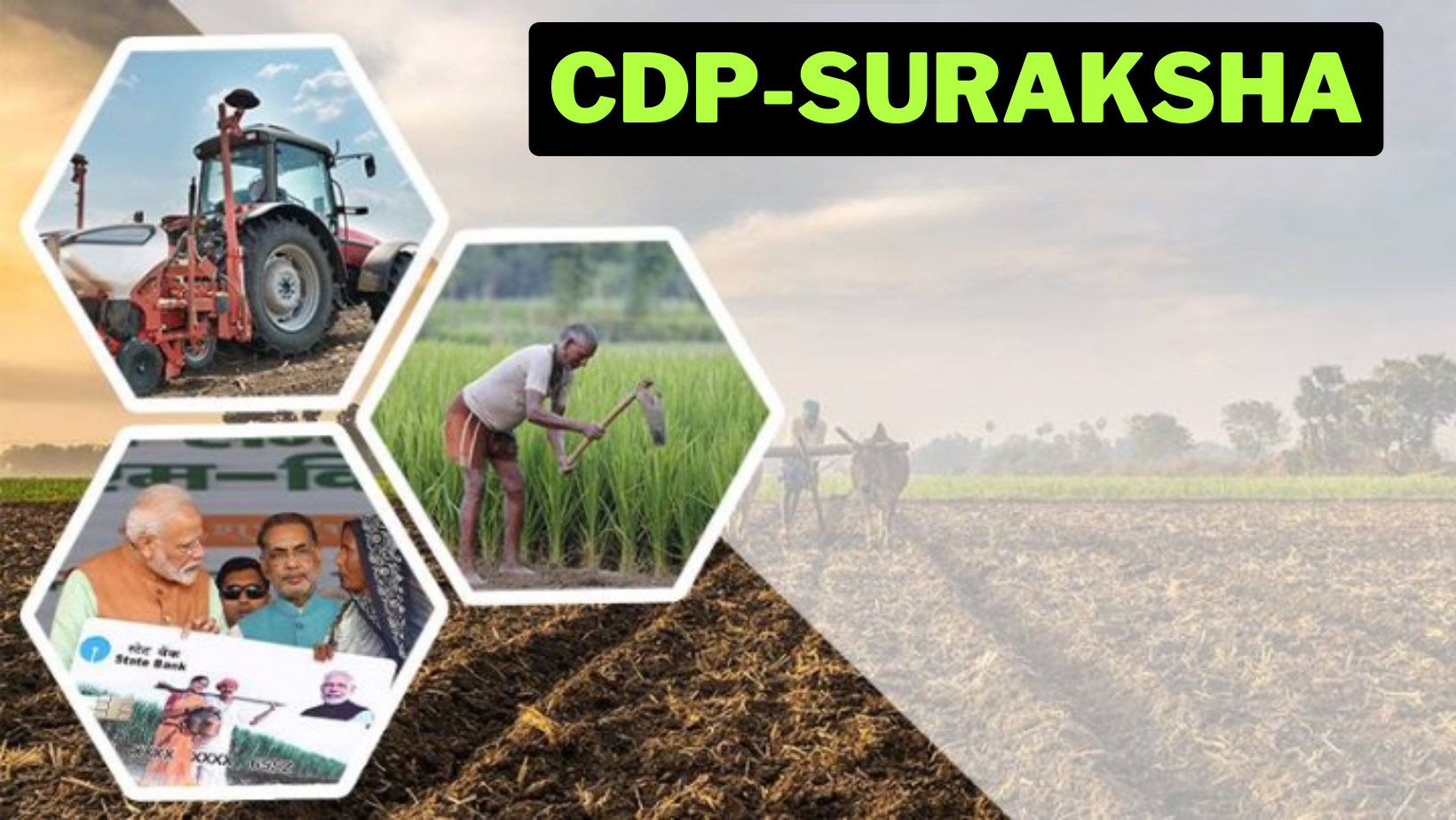
- 10 Apr 2024
Why is it in the News?
The government has come up with a new platform to disburse subsidies to horticulture farmers under the Cluster Development Programme (CDP) — the Centre’s initiative to promote horticulture crops.
What is the CDP-SURAKSHA?
- The CDP-SURAKSHA is essentially a digital platform.
- SURAKSHA stands for “System for Unified Resource Allocation, Knowledge, and Secure Horticulture Assistance.”
- The platform will allow an instant disbursal of subsidies to farmers in their bank accounts by utilizing the e-RUPI voucher from the National Payments Corporation of India (NPCI).
- The CDP-SURAKSHA has features such as database integration with PM-KISAN, cloud-based server space from NIC, UIDAI validation, eRUPI integration, local government directory (LGD), content management system, geotagging, and geo-fencing.
How does the CDP-SURAKSHA work?
- The platform allows access to farmers, vendors, implementing agencies (IA), cluster development agencies (CDAs), and officials of the National Horticulture Board (NHB).
- A farmer can log in using their mobile number and place an order for planting materials such as seeds, seedlings, and plants based on their requirement.
- Once the demand has been raised by the farmer, the system will ask them to contribute their share of the cost of planting material.
- The subsidy amount paid by the government will appear on the screen automatically.
- After the farmer pays their contribution, an e-RUPI voucher will be generated.
- This voucher will then be received by a vendor, who will provide the required planting material to the farmer.
- Once the ordered planting material is delivered to the farmer, they have to verify the delivery through geo-tagged photos and videos of their field.
- It is only after the verification that the IA will release the money to the vendor for the e-RUPI voucher.
- The vendor will be required to upload an invoice for the payment on the portal.
- The IA will collect all the documents and share them with the CDA for subsidy release, then only the subsidy will be released to the IA.
- However, the farmer, who raised the demand for the plant material using the platform, can avail of the subsidy at the first stage only.
What is e-RUPI?
- The CDP-SURAKSHA platform uses e-RUPI vouchers from the NPCI.
- The voucher is a one-time payment mechanism that can be redeemed without a card, digital payments app, or internet banking access, at the merchants accepting e-RUPI.
- According to the NPCI, the e-RUPI can be shared with the beneficiaries for a specific purpose or activity by organizations or government via SMS or QR code.
What is the Cluster Development Program (CDP)?
- The CDP is a component of the central sector scheme of NHB.
- It is aimed at leveraging “the geographical specialization of horticulture clusters and promoting integrated and market-led development of pre-production, production, post-harvest, logistics, branding, and marketing activities.”
- So far, 55 horticulture clusters have been identified, out of which 12 have been selected for the pilot.
- These clusters are in different stages of development.
- Four more clusters:
- A floriculture cluster in West Bengal
- Coconut clusters in Kerala and Tamil Nadu, and
- White onion clusters in Gujarat
- Each cluster will have an implementing agency and a cluster development agency (CDA).
- According to the government, about 9 lakh hectares of area will be covered through all 55 clusters, covering 10 lakh farmers.
- It is estimated that the initiative will attract private investment of Rs 8,250 crore, in addition to the government’s assistance, which is fixed according to the size of the cluster, up to Rs 25 crore for mini cluster (size up to 5,000 ha), up to Rs 50 crore for medium clusters (5,000 to 15,000), and up to Rs 100 crore for mega clusters (more than 15,000 ha).
C-Dome Defense System
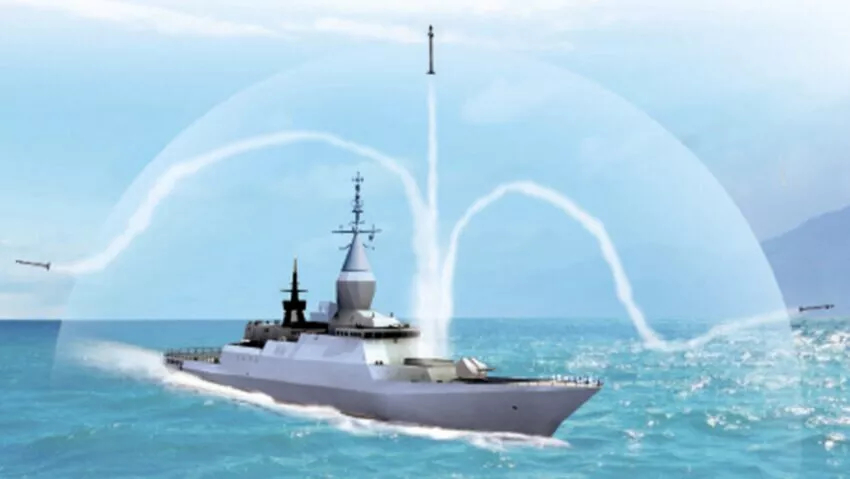
- 10 Apr 2024
Why is it in the News?
Israel for the first time used a seaborne missile defense system to shoot down a drone approaching from the Red Sea that had set off sirens in the port city of Eilat.
What is the C-Dome Defense System?
- The C-Dome is a naval version of Israel's Iron Dome air defense system, designed to protect against rocket and missile attacks.
- Drawing from Iron Dome's technology, C-Dome shares its 90% effectiveness rate and utilizes radars to detect and destroy short-range rockets with its missiles.
Operational Deployment and Integration:
- First unveiled in 2014 and declared operational in 2022, the C-Dome is mounted on Sa'ar 6-class corvettes and German-made warships.
- It employs the same interceptor as the Iron Dome but differs in its integration with the ship's radar for target detection, ensuring full-circular vessel protection.
Combatting Modern Threats:
- C-Dome's primary objective is to counter a wide range of modern maritime and coastal threats with high kill probability.
- Its successful deployment and performance underscore its pivotal role in safeguarding Israel's naval interests and assets against evolving security challenges.
About Iron Dome:
- Developed by Rafael Advanced Defense Systems and Israel Aerospace Industries, the Iron Dome is a cutting-edge air missile defense system that offers protection against short-range rockets by intercepting them above Israeli territory.
- With its multi-rocket handling capacity, Iron Dome became operational in 2011 and features:
- All-weather capabilities for day and night functionality
- Launching versatility with various interceptor missiles
- A range of approximately 40 miles
- Portable design for deployment on ships or land
- Adaptive defense through reloadable interceptors
Iron Dome consists of three key elements:
-
- Radar system for detecting incoming rockets
- Command-and-control mechanism to evaluate threat levels
- Interceptors are designed to neutralize incoming rockets before impact
- These components work in tandem to provide Israel with a robust and reliable defense against aerial threats.
India Imposed Import Restrictions on Solar PV Cells
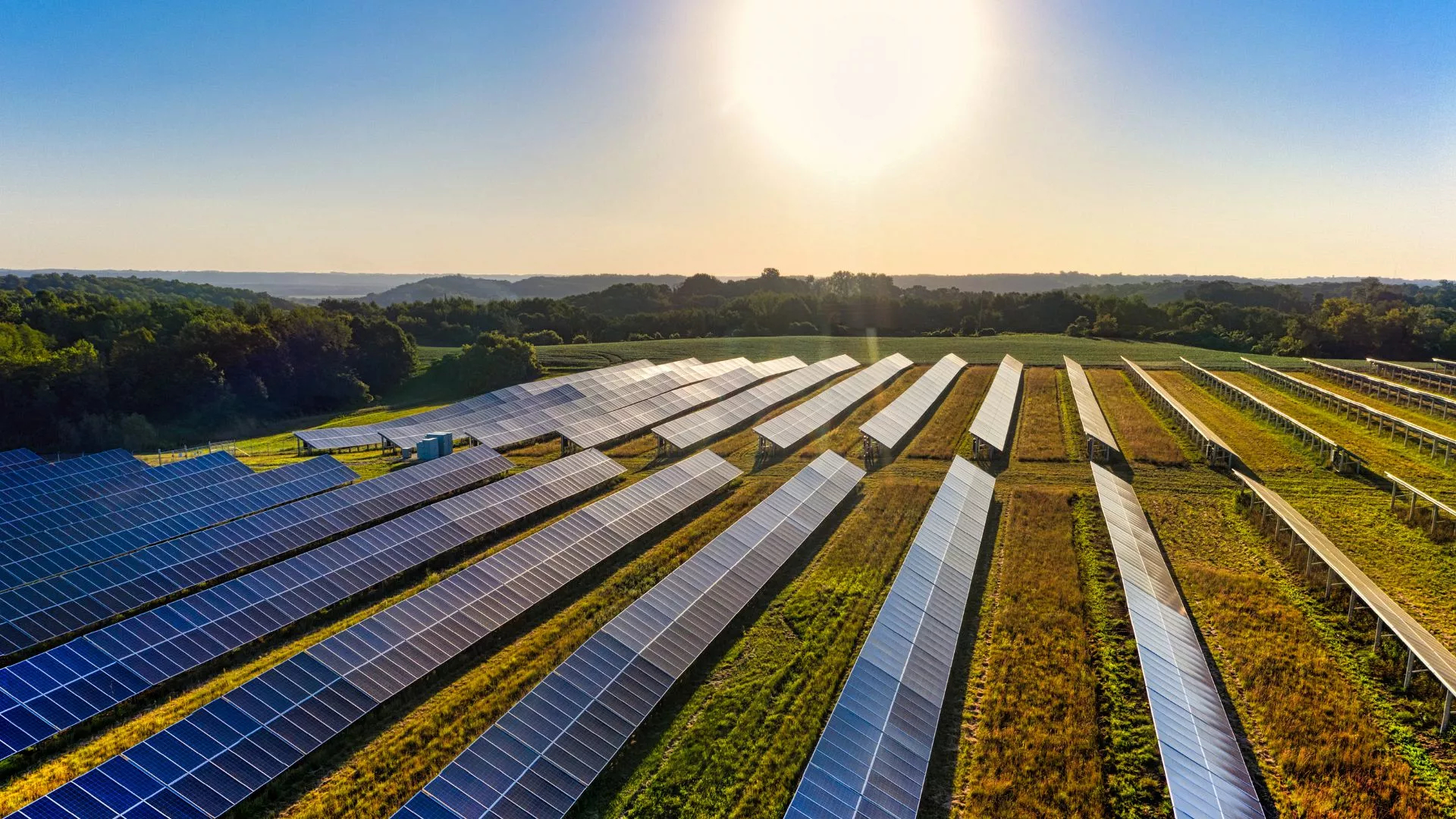
- 10 Apr 2024
Why is it in the News?
Recent government orders on attempts to increase local sourcing of solar modules to support India’s renewables manufacturing ecosystem have been widely reported in the media as ‘import restrictions’.
What is the Approved List of Models and Manufacturers (ALMM) List?
- The Approved List of Models and Manufacturers of Solar Photovoltaic Modules (ALMM) comprises government-approved manufacturers eligible for use in government projects, government-assisted projects, and schemes.
- ALMM aims to boost the domestic solar industry and reduce dependence on imports, particularly from China.
ALMM's Suspension and Reinstatement:
- The ALMM was kept in abeyance for two years to address concerns raised by renewable energy producers with pre-existing government contracts.
- During this period, India's domestic solar industry struggled to compete with cheap Chinese imports.
- To support local manufacturers, the government launched initiatives like the Production Linked Incentive (PLI) scheme under the Atmanirbhar Bharat ('Self-Reliant India') Programme.
- With the PLI scheme enhancing the competitiveness of Indian manufacturers, the ALMM was reinstated in March 2024.
- The government believes that domestic companies can now meet India's solar equipment demand, making the ALMM an essential tool for promoting import substitution and self-reliance in the renewable energy sector.
Solar PV Imports:
- India heavily relies on solar cell and module imports, with China and Vietnam being the primary suppliers.
- Government data reveals that India imported approximately $11.17 billion worth of solar cells and modules over the past five years.
- As of 2023-24, China accounted for 53% of solar cell imports and 63% of solar PV modules.
China's Competitive Edge:
- Several factors contribute to China's dominance in solar PV exports:
- Cost-effective manufacturing due to lower power costs
- Government policies prioritizing the solar PV sector
- Economies of scale and continuous innovation driven by growing domestic demand
- These advantages have made China the most cost-competitive location for producing solar PV components, making it challenging for other countries to match their production capabilities.
What is the Scope of Solar Energy in India?
- India's solar sector holds immense potential, driven by the government's target of achieving 500 GW of installed non-fossil fuel capacity by 2030.
- Moreover, the country's rapid growth in electricity demand, fueled by economic activities and climate adaptation measures, positions solar power as a critical resource.
- Solar energy accounted for one-third of renewable energy generation from April 2023 to February 2024, showcasing its significance in India's energy mix.
- Despite an estimated solar power potential of 748.99 GW, the country has yet to fully exploit this resource.
- To harness this potential, the government is implementing various schemes and programs, paving the way for a sustainable and prosperous solar future.
Coordinated Lunar Time (LTC)

- 10 Apr 2024
Why is it in the News?
Recently, the US White House has officially instructed NASA to create a lunar time standard for international and private sector coordination on the Moon.
What is Coordinated Lunar Time (LTC)?
- Coordinated Lunar Time (LTC) is a lunar-based time system being developed by NASA in collaboration with other government agencies to establish a standardized time zone for the Moon.
- LTC aims to provide a precise timekeeping benchmark for lunar spacecraft and satellites, synchronizing communication between astronauts, bases, and Earth.
Importance of LTC:
- As lunar exploration and commerce expand, a unified time standard becomes essential for managing operations, ensuring transaction reliability, and coordinating logistics.
- Furthermore, LTC addresses the discrepancy in timekeeping between Earth and the Moon due to differences in gravity, as time ticks faster on the Moon, causing Earth-based clocks to lose an average of 58.7 microseconds per day.
- Establishing LTC will prevent potential problems in spacecraft docking, data transfer, communication, and navigation.
How Will a Lunar Time Standard Be Established?
- Like on Earth, atomic clocks can be deployed on the lunar surface to set a time standard.
- These clocks have to be placed on the Moon at different locations since the Moon’s rotation and even local lumps of mass, called mascons, beneath the crust of the Moon affect the flow of time ever so slightly.
- Mascons or mass concentrations are so dense that they alter the Moon’s local gravity field.
- These effects are minor but the output from these clocks can be synthesized to give the Moon its own independent time, which can be tied back to UTC for seamless operations from Earth as well.
How Does Earth’s Time Standard Work?
- Most of the clocks and time zones of the world are based on Coordinated Universal Time (UTC), set by the International Bureau of Weights and Measures in Paris, France.
- UTC is essentially an internationally agreed-upon standard for world time.
- It is tracked by a weighted average of more than 400 atomic clocks placed in different parts of the globe.
- Atomic clocks measure time in terms of the resonant frequencies — the natural frequency of an object where it tends to vibrate at a higher amplitude — of atoms such as cesium-133.
- In atomic time, a second is defined as the period in which a cesium atom vibrates 9,192,631,770 times.
- As the vibration rates at which atoms absorb energy are highly stable and ultra-accurate, atomic clocks make for an excellent device for gauging the passage of time.
- To obtain their local time, countries must subtract or add a certain number of hours from UTC depending on how many time zones they are away from 0 degree longitude meridian, also known as the Greenwich meridian.
- If a country lies on the west of the Greenwich meridian, it has to subtract from the UTC, and if a country is located on the east of the meridian, it has to add.
Black Swan Event
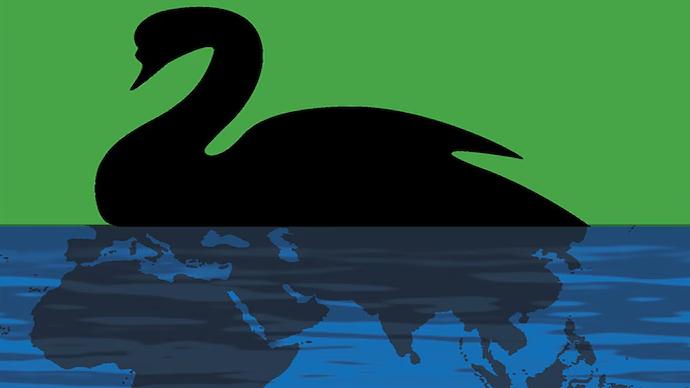
- 09 Apr 2024
Why is it in the News?
Army Chief Gen Manoj Pande on Monday called upon the force to be always prepared for 'black swan' events and "expect the unexpected" even as he identified technology as the new area for strategic competition among nations.
What is the Black Swan Event?
- A black swan is a rare, unpredictable event that comes as a surprise and has a significant impact on society or the world.
- These events are said to have three distinguishing characteristics:
- They are extremely rare and outside the realm of regular expectations
- They have a severe impact after they hit; and
- They seem probable in hindsight when plausible explanations appear.
When did the Term Originate?
- The black swan theory was put forward by author and investor Nassim Nicholas Taleb in 2001 and later popularised in his 2007 book – The Black Swan: The Impact of the Highly Improbable.
- In his book, Taleb does not try to lay out a method to predict such events but instead stresses building “robustness” in systems and strategies to deal with black swan occurrences and withstand their impact.
- The term itself is linked to the discovery of black swans.
- Europeans believed all swans to be white until 1697 when a Dutch explorer spotted the first black swan in Australia.
- The metaphor ‘black swan event’ is derived from this unprecedented spotting from the 17th century, and how it upended the West’s understanding of swans.
Implications of Black Swan Events:
- Black Swan events are characterized by their extreme rarity, severe impact, and widespread implications across various sectors.
- These unanticipated occurrences can trigger substantial disruptions, unveiling vulnerabilities in systems once thought resilient and prompting reassessments of risk management practices.
- Disruption: Black Swan events have the potential to disrupt economies, industries, and societies on a global scale.
- Their unforeseen nature can cause sudden shifts in financial markets, business operations, and everyday life, leaving lasting effects on the overall landscape.
- Uncertainty: The inability to predict Black Swan events using traditional methods injects considerable uncertainty into decision-making and planning for individuals, organizations, and governments.
- Navigating through such unpredictable circumstances can pose significant challenges for all affected parties.
- Vulnerability: These rare events can expose vulnerabilities in systems that were previously thought to be impervious or resilient.
- By doing so, Black Swan events emphasize the importance of preparedness and encourage the development of more robust risk management practices.
- Reassessment of Risk: In the aftermath of a Black Swan event, there is often a renewed focus on identifying and mitigating previously overlooked risks.
- This heightened awareness can lead to changes in investment strategies, regulatory policies, and overall risk management practices.
- Regulatory and Policy Responses: Governments and regulatory bodies may implement new regulations or policies in response to Black Swan events.
- These measures are designed to prevent or mitigate the impact of similar occurrences in the future, ultimately shaping the economic and social landscape.
- Behavioral and Attitude Changes: Black Swan events can significantly alter behaviors and attitudes as individuals and organizations adapt to the new reality.
- These shifts may include changes in consumer behavior, investment strategies, and approaches to risk management.
Examples of Black Swan Events:
- The Dot-com Bubble: In 2000, the valuation of many internet-based companies plummeted after a period of rapid growth.
- The 9/11 Terrorist Attacks: The events of September 11, 2001, had far-reaching consequences on global security, politics, and economies.
- The 2008 Financial Crisis: A series of shocks to Wall Street due to the unraveling of subprime lending practices caused significant economic turmoil.
- Brexit: The unexpected decision of the United Kingdom to leave the European Union in June 2016 caught many by surprise and caused the British pound to plummet against the US dollar.
- COVID-19 Pandemic: The ongoing global health crisis continues to significantly affect economies and markets worldwide.
- These instances illustrate the profound and widespread implications of Black Swan events, underscoring the importance of adaptability and resilience in an ever-changing global landscape.
Imposition of Anti-Dumping Duty on Sodium Cyanide

- 09 Apr 2024
Why is it in the News?
The Directorate General of Trade Remedies (DGTR) has now recommended the imposition of anti-dumping duty on sodium cyanide (NaCN) imported from China, the European Union, Japan, and Korea.
Key Facts About Sodium Cyanide:
- Sodium cyanide (NaCN) is a highly toxic, inorganic compound with a white, crystalline appearance.
- It is a solid at room temperature and has a high affinity for metals, making it useful in various industrial processes.
- Due to its toxic nature, proper handling and safety protocols must be followed when working with sodium cyanide.
Applications of Sodium Cyanide:
- Mining and Metallurgy: Sodium cyanide is widely used in the extraction of gold and silver from ores. It is employed in a technique called "cyanide heap leaching," where a dilute sodium cyanide solution is sprayed onto crushed ore.
- The cyanide forms a water-soluble complex with the precious metals, enabling their recovery from the ore.
- Electroplating: NaCN is utilized as an electrolyte in electroplating processes, particularly for the deposition of silver, gold, and other metals on various surfaces to improve their appearance, durability, or conductivity.
- Synthetic Fiber Production: Sodium cyanide is used in the manufacturing of synthetic fibers such as acrylic and nylon.
- It serves as a catalyst in the polymerization process, promoting the formation of long-chain polymers that make up the fibers.
- Pesticides: Due to its toxicity, sodium cyanide has been used as a fumigant to control pests and rodents.
- However, its use in this field has been largely phased out in many countries due to safety concerns and the development of safer alternatives.
- Dye and Pigment Production: NaCN can be used in the production of certain dyes and pigments, particularly those containing nitrogen.
- It acts as a precursor for the synthesis of these compounds.
What is Anti-Dumping Duty?
- An anti-dumping duty is a tariff imposed by a domestic government on foreign imports suspected of being sold at prices lower than those in the exporter's domestic market.
- This measure aims to prevent these products from undercutting local businesses and harming the local economy.
- The World Trade Organization (WTO) oversees a framework of international trade rules governing anti-dumping measures.
- Under this agreement, governments are permitted to address dumping practices if they pose a threat of significant harm to a domestic industry.
Calculation of Anti-Dumping Duty:
- The calculation of anti-dumping duty involves determining the difference between the normal value and the export value of the product.
- The normal value represents the market value of the product in the exporter's domestic market, while the export value denotes the price at which the product is sold when exported to India.
- The anti-dumping duty is levied to neutralize this price disparity and safeguard the domestic industry from the adverse effects of inexpensive imports.
Anti-Dumping Mechanism in India:
- India's anti-dumping mechanism is overseen by the Directorate General of Anti-Dumping and Allied Duties (DGAD) under the Ministry of Finance.
- The legal framework for anti-dumping in India is established by the Customs Tariff Act of 1975 and the Customs Tariff Rules of 1995.
- The DGAD conducts investigations to assess whether a surge in below-cost imports has negatively impacted the domestic industry.
Consumer Confidence Survey (CCS)
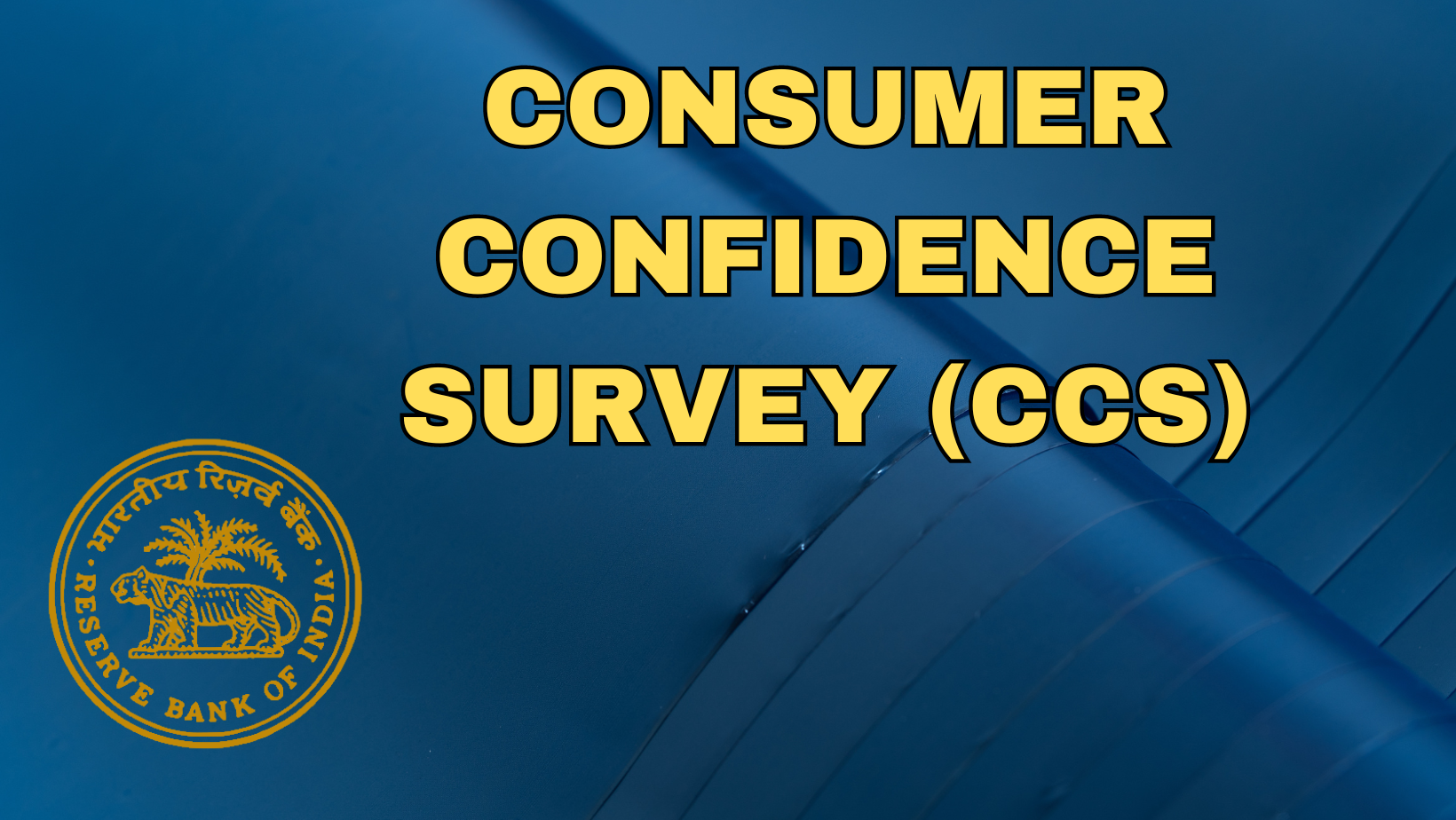
- 08 Apr 2024
Why is it in the News?
Consumer confidence for the year ahead has improved further on the back of higher optimism, which resulted in the Future Expectations Index (FEI) rising by 2.1 points to 125.2, the highest level since mid-2019, according to a Reserve Bank of India survey conducted in March 2024.
What is the Consumer Confidence Survey (CCS)?
- The Consumer Confidence Survey (CCS) is a comprehensive assessment conducted by the Reserve Bank of India (RBI) to gauge consumer perceptions of the current economic landscape.
- Administered across various cities, the CCS measures consumer confidence based on key indicators such as economic conditions, employment prospects, price levels, income, and spending patterns.
- The survey collects valuable insights into consumer sentiments by posing a series of questions about both present and future economic scenarios.
- These responses offer a glimpse into consumers' perceptions of the prevailing financial environment, shedding light on economic trends, opportunities, and potential challenges.
- As a vital tool for policymakers, the Consumer Confidence Survey contributes to shaping effective strategies aimed at fostering sustainable economic growth and improving overall financial stability.
Highlights of the Survey:
- The survey revealed optimistic consumer sentiments across all parameters, reflecting a positive outlook on the current and future economic landscape.
- Key indicators, such as the Current Situation Index (CSI) and Future Expectations Index (FEI), showcased significant improvements, reaching their highest levels since mid-2019.
- Current Situation Index (CSI): Measuring overall consumer perception of the present economic situation, the CSI experienced a notable increase of 3.4 points compared to the previous survey, currently standing at 98.5.
- Future Expectations Index (FEI): Evaluating consumer sentiment for the next 12 months, the FEI witnessed a substantial surge, reaching its highest point since mid-2019 and indicating a positive outlook for the upcoming year.
- The CSI and FEI are calculated based on net responses concerning the economic situation, income, spending, employment, and price levels, comparing the current period with one year ago and the anticipated changes in the year ahead, respectively.
- Households’ Inflation Expectation Survey: There was a slight increase in the proportion of households anticipating an overall rise in prices and inflation within the next three months and one year, as observed across general prices and most product categories when compared to the previous survey round.
- Additionally, the survey results revealed noteworthy enhancements in households' perceptions regarding the general economic situation and employment prospects, signaling a sense of optimism for both the current period and the years ahead.
Prevention of Money Laundering Act (PMLA)

- 08 Apr 2024
Why is it in the News?
In its manifesto for the Lok Sabha election, the primary opposition party pledged to cease the weaponization of the Prevention of Money Laundering Act (PMLA) if entrusted with power.
About the Prevention of Money Laundering Act:
- The Prevention of Money Laundering Act (PMLA) constitutes the cornerstone of India's legal framework aimed at combating money laundering, with its enactment and enforcement starting from July 1, 2005.
- Enacted by India's Parliament under Article 253, which authorizes legislation for implementing international conventions, the Act has three primary objectives:
- Prevention and control of money laundering
- Confiscation of proceeds derived from laundering, and
- Addressing related issues within India.
- The Act empowers the Director of the Financial Intelligence Unit-India (FIU-IND) and the Director (Enforcement) with exclusive and concurrent powers to enforce its provisions.
- Subsequent amendments were made in 2009 and 2012 through the Prevention of Money Laundering (Amendment) Acts.
What is Money Laundering?
- Money laundering is defined as the process through which an illegal fund, such as black money, is obtained from illegal activities and disguised as legal money, eventually portrayed as white money.
- The money laundered is passed on through various channels or phases of conversions and transfers to make it legal and eventually reach a legally acceptable institution, like a bank.
Brief History of the PMLA:
- In response to the emergence of global terrorism in the 1990s and the subsequent imperative to curb illicit financial flows, international efforts intensified, culminating in the establishment of the Financial Action Task Force (FATF) in 1989 to coordinate anti-money laundering endeavors worldwide.
Legislative Response:
- Against this backdrop, India, as a member of FATF, was prompted to enact domestic legislation to combat money laundering following the United Nations General Assembly's political declaration in 1998 urging member states to implement national anti-money laundering measures.
Enactment Process:
- The initial iteration of the Prevention of Money-Laundering Bill in 1998 was introduced by the NDA government, aiming to address various aspects such as the prevention of money laundering, confiscation of illicit proceeds, and establishment of coordinating agencies.
- However, concerns regarding potential misuse of the proposed law led to bipartisan opposition, prompting referral to the Department-related Standing Committee on Finance.
- Despite deliberations and amendments, the bill was eventually passed by Parliament in 2002, with enforcement commencing in 2005 following the formulation of accompanying rules under the subsequent UPA government.
Significant Amendments in the PMLA:
- Over the years, the Prevention of Money Laundering Act (PMLA) has undergone various revisions, but it was the amendments introduced in 2009 and 2012 that notably empowered the Enforcement Directorate (ED) to take coercive measures against politicians.
- In 2009, amendments expanded the PMLA's scope to include 'Criminal conspiracy' under Section 120B of the Indian Penal Code (IPC), enabling the ED to intervene in cases alleging conspiracy, even if the primary offense isn't listed in the PMLA.
- For instance, this broadening facilitated the ED's pursuit of cases like the land-grabbing accusations against a former Jharkhand CM, currently incarcerated in Ranchi.
- Furthermore, the 2009 amendments granted the ED international jurisdiction for tracking laundered money, enhancing its global reach.
- In 2012, the PMLA was amended to elevate the Prevention of Corruption Act, 1988 (PC Act) to Part A of the statute's schedule from Part B.
- This move imposed stricter bail conditions on corruption suspects, requiring courts to ascertain substantial evidence of guilt if bail opposition arises from the public prosecutor.
- Part A of the schedule encompassed various serious offenses, including acts like waging war against the nation, drug trafficking, and violations of the PC Act, among others.
Supreme Court's Verdicts on the Constitutionality of PMLA:
- In the case of Vijay Madanlal Choudhary & Ors vs Union of India (2022), a three-judge Bench of the Supreme Court upheld the constitutional validity of the Prevention of Money Laundering Act (PMLA), which faced challenges in over 200 individual petitions.
- One of the primary challenges was regarding the creation of an alternative criminal law system by the PMLA, as the Enforcement Directorate (ED) operates outside the ambit of the Code of Criminal Procedure (CrPC).
- Not being classified as 'police', the ED is not bound by CrPC provisions for searches, seizures, arrests, and property attachments.
- The judgment affirmed the ED's expansive powers, including the admissibility of statements made to it in court.
- In Nikesh Tarachand Shah v Union of India (2017), the PMLA, akin to the Unlawful Activities (Prevention) Act (UAPA), imposed stringent bail conditions, requiring accused individuals to prove the absence of a "prima facie" case against them and their commitment to refraining from future offenses.
- The Supreme Court initially struck down these provisions as unconstitutional.
- However, Parliament reintroduced them through an amendment to the PMLA via the Finance Act, of 2018, which the Supreme Court upheld in 2021.
- While certain aspects of the 2021 ruling, such as the ED's non-obligation to disclose the ECIR (similar to an FIR in criminal cases), are currently under review, the ruling stands as the prevailing law of the land.
Use of Green Hydrogen in the Transport Sector
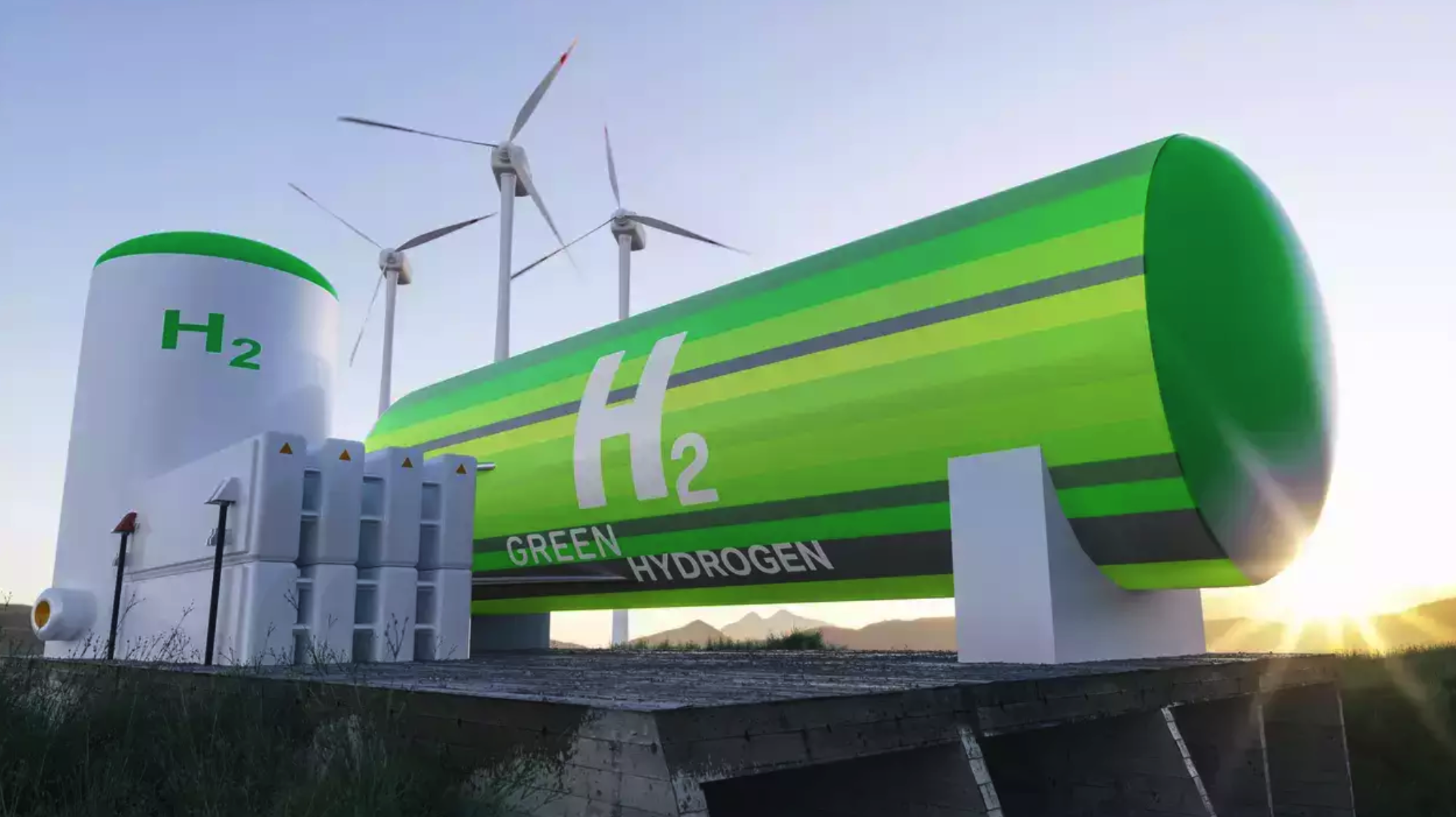
- 06 Apr 2024
Why is it in the News?
The Ministry of New and Renewable Energy (MNRE) has announced a Rs-496-crore (until 2025-26) scheme to support pilot projects that either test the viability of green hydrogen as a vehicle fuel or develop secure supporting infrastructure such as refueling stations.
What is Green Hydrogen?
- Green hydrogen is a form of hydrogen gas produced through a process called electrolysis, where water (H2O) is split into hydrogen (H2) and oxygen (O2) using electricity.
- The electricity used in this process is generated from renewable sources such as solar, wind, or hydroelectric power, hence the term "green" hydrogen.
- Unlike conventional methods of hydrogen production, which often rely on fossil fuels and emit greenhouse gases, green hydrogen production is considered environmentally friendly because it doesn't generate carbon dioxide emissions.
- It can be used as a clean energy carrier in various sectors, including transportation, industry, and energy storage.
- The production of green hydrogen is still relatively expensive compared to other forms of hydrogen production, but ongoing advancements in renewable energy technologies and electrolysis processes are expected to reduce costs and increase the viability of green hydrogen as a sustainable energy source in the future.
India's Push for Green Hydrogen in the Transportation Sector:
- India is aggressively pushing for the adoption of green hydrogen in its transportation sector:
- Major Indian commercial vehicle manufacturers like Tata Motors, Volvo Eicher, and Ashok Leyland are intensifying their efforts to develop hydrogen-powered trucks and buses.
- Simultaneously, Indian energy companies are ramping up efforts to increase the production of green hydrogen while striving to decrease costs, making it competitive with other fuels.
- Given its vast and expanding market for both vehicles and energy, India stands poised to reap substantial benefits from widespread green hydrogen adoption as a vehicular fuel.
- India anticipates numerous advantages from this transition, including mitigating pollution, achieving climate objectives, and reducing reliance on expensive fossil fuel imports.
- Moreover, India views this shift as a significant business opportunity, aiming to establish itself as a global hub for the production and export of green hydrogen.
Scheme for Use of Green Hydrogen in the Transport Sector:
- The Scheme for Use of Green Hydrogen in the Transport Sector focuses on several key objectives:
- Validating the technical feasibility and performance of green hydrogen as a transportation fuel.
- Evaluating the economic viability of vehicles powered by green hydrogen.
- Demonstrating the safe operation of hydrogen-powered vehicles and refueling stations.
- Under the scheme, the Ministry of Road Transport & Highways will designate a scheme implementation agency responsible for inviting proposals for pilot projects.
- Once selected, the chosen company or consortium will serve as the project's executing agency and must complete the pilot project within a two-year timeframe.
- To support these initiatives, the Ministry of New and Renewable Energy (MNRE) will consider approving viability gap funding (VGF) based on the recommendations of a Project Appraisal Committee.
- The VGF amount will be determined by assessing the specific needs, merits, and feasibility of each project.
Advantages of Green Hydrogen in the Transportation Sector:
- Hydrogen Internal Combustion Engine (ICE) vehicles utilize hydrogen through combustion, akin to traditional diesel and petrol vehicles, but without emitting carbon.
- Hydrogen Fuel Cell Electric Vehicles (FCEVs) convert hydrogen electrochemically into electricity, leaving water as the sole byproduct, offering a clean and efficient alternative.
- While hydrogen ICE vehicles emit no carbon, studies indicate that converting hydrogen into electricity in a fuel cell is more energy efficient than burning it.
- Unlike Battery Electric Vehicles (BEVs) where the battery is heavy, hydrogen FCEVs are typically lighter due to hydrogen being a lighter element.
- This lightweight characteristic of hydrogen fuel cell technology makes it particularly promising for heavy-duty trucks, providing a viable alternative to EV battery technology.
- Green hydrogen presents a significant opportunity to reduce carbon emissions in the transportation sector without compromising revenue-generating payload capacity, addressing both environmental and economic concerns.
Challenges to the Large-Scale Adoption of Green Hydrogen in the Transportation Sector:
- Cost Prohibitions: The production cost of green hydrogen remains high, posing challenges to its viability as a fuel option.
- To compete with Battery Electric Vehicles (BEVs), the cost of green hydrogen needs to be reduced to between $3 and $6.5 per kilogram by 2030.
- Retail green hydrogen prices in California reached as high as $30 per kilogram in 2023, underscoring the current cost disparity.
- However, ongoing technological innovations and scale-up efforts are expected to drive cost reductions soon.
- Insufficient Infrastructure: Building hydrogen fueling stations for trucks can cost up to 72% more than those for battery electric trucks, according to the California Transportation Commission.
- Challenges with supply complications and market factors have led to the closure of hydrogen refueling stations, exemplified by Shell's recent decision in California.
- Storage and Transportation Challenges: Hydrogen storage requires high-pressure cylinders, which are costly and pose technical challenges.
- Existing natural gas pipeline infrastructure is unsuitable for transporting hydrogen.
- Specialized cylinders capable of safely storing green hydrogen are under discussion, necessitating infrastructure development.
- Handling and Safety Concerns: Hydrogen's flammability necessitates stringent safety protocols and infrastructure at refueling stations.
- Developing robust safety standards is imperative before widespread adoption can occur.
- Long-Term Viability: Advancements in battery technologies are continuously improving the weight and efficiency of EV batteries, potentially challenging the long-term viability of green hydrogen-powered vehicles, particularly in heavy-duty commercial applications.
World Anti-Doping Agency (WADA)
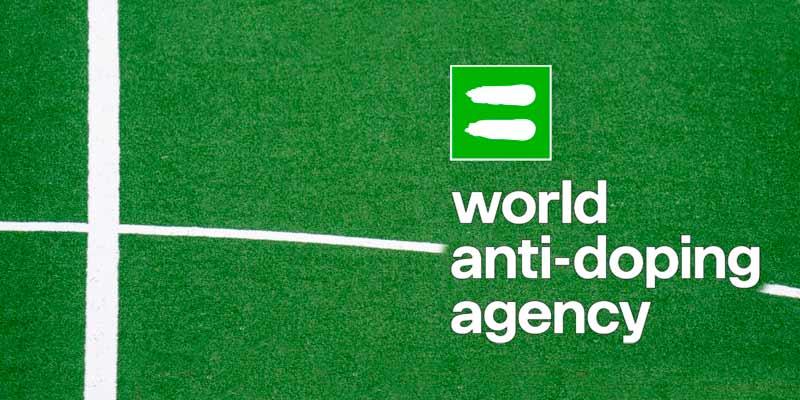
- 06 Apr 2024
Why is it in the News?
According to the recently released 2022 statistics by the World Anti-Doping Agency (WADA), out of 3865 samples handled by the National Anti-Doping Agency (NADA), 125 (3.2 percent) tested positive — the most in any country.
About World Anti-Doping Agency (WADA):
- WADA, or the World Anti-Doping Agency, is an international independent organization established in 1999.
- It operates with equal funding from both the global sports community and governments worldwide.
- WADA's primary objectives encompass scientific research, education, capacity-building in anti-doping measures, and oversight of the World Anti-Doping Code (Code), which standardizes anti-doping policies across all sports and nations.
- Headquartered in Montreal, Canada, WADA comprises various governing bodies, including a foundation board, executive committee, and several specialized committees.
- The foundation board, consisting of 42 members, holds the highest decision-making authority within WADA.
- It comprises equal representation from both the Olympic Movement and governments.
- Responsibilities for day-to-day operations and policy implementation are delegated by the foundation board to the executive committee, which comprises 12 members, also equally distributed between the Olympic Movement and governments.
- WADA's presidency is a voluntary role that alternates between representatives from the Olympic Movement and governments.
- Additionally, WADA's committees serve as advisory bodies, offering guidance and expertise to support the organization's programs and initiatives.
About National Anti-Doping Agency (NADA):
- The National Anti-Doping Agency (NADA) was established on November 24, 2005, under the Societies Registration Act of 1890.
- NADA operates to foster a culture of doping-free sports in India.
- NADA's key objectives include implementing anti-doping regulations in alignment with the World Anti-Doping Agency (WADA) code, regulating the doping control program, promoting education and research, and raising awareness about the detrimental effects of doping.
The primary functions of NADA are as follows:
- Enforcing the Anti-Doping Code to ensure compliance by all sports organizations in the country.
- Coordinating dope testing programs in collaboration with all relevant stakeholders.
- Facilitating anti-doping research and educational initiatives to instill the values of drug-free sports.
- Adopting best practices and quality standards to enhance the effectiveness and continual improvement of the anti-doping program.
Hydroponic Farming
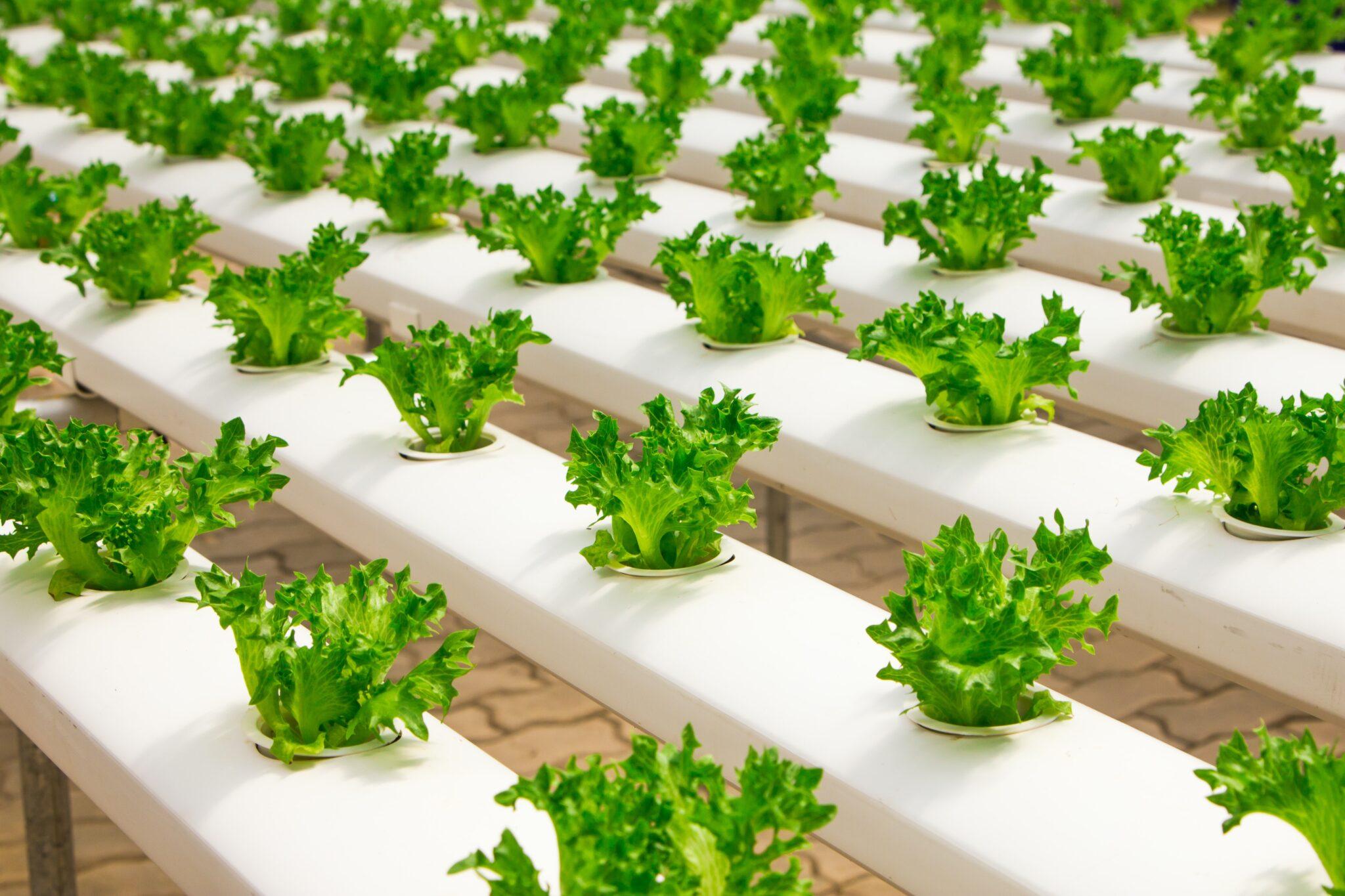
- 06 Apr 2024
Why is it in the News?
In the wake of evolving consumer preferences, India is at the forefront of an agricultural transformation, pivoting towards sustainable farming with an emphasis on health.
What is Hydroponics?
- Hydroponics is a method of growing plants without soil, utilizing nutrient-rich water as the primary source of essential minerals and elements.
- The technique involves the circulation of nutrient-enriched water through a network of pipes or channels, directly supplying the roots of plants with the necessary nourishment for their growth and development.
Key Features and Benefits:
- Soilless Cultivation: Hydroponics eliminates the need for soil by providing an alternative substrate or a soil-like medium, such as rock wool, perlite, or vermiculite, to support the plants' roots.
- Nutrient Control: This technique enables precise control over the nutrient composition, concentration, and pH levels in the water, ensuring optimal nutrient availability for plants.
- Water Efficiency: Hydroponics recirculates and reuses water, significantly reducing water consumption compared to traditional soil-based farming.
- Space Optimization: Due to the compact nature of hydroponic systems, they can be used in urban areas, greenhouses, and indoor facilities, maximizing yield per unit area.
- Year-round Cultivation: With controlled environmental conditions, hydroponics allows for continuous cultivation, regardless of seasonal changes or weather fluctuations.
- Hydroponics provides a sustainable, efficient, and adaptable approach to agriculture, with potential benefits in resource conservation, food security, and sustainable urban food production.
Hydroponics in India:
- According to a report by Datamintelligence, India’s hydroponic market is poised for a remarkable growth trajectory, with a projected Compound Annual Growth Rate (CAGR) of 13.53% by 2027, outpacing the global industry’s estimated growth of 6.8%.
- This surge underscores the vast potential of hydroponics in meeting the rising demand for sustainable food produce, particularly in metros and tier 1 cities where health-conscious consumers are willing to pay a premium for fresh, safe, and sustainably grown products.
- This transformative shift is not just a response to changing consumer preferences for fresh produce but also an adaptation to the geographical and environmental challenges that face traditional farming methods.
Suitable Regions for Hydroponic Farming:
- Hydroponic farming presents a viable solution in regions where traditional farming faces significant barriers:
- Areas with Limited Water Supply: Hydroponics drastically reduces water usage, making it ideal for drought-prone areas.
- Rocky Regions: In places where the terrain is unsuitable for soil-based agriculture, hydroponics offers a practical alternative.
- Low Soil Fertility Areas: Hydroponics bypasses the need for fertile soil, allowing cultivation in regions with poor soil quality.
- Demand-Driven Areas: Regions with a high demand for fresh products are perfect for hydroponic farms, catering to health-conscious consumers in urban and semi-urban locales
The Edge with Hydroponic Farming in India:
- Hydroponic farming’s ascendancy in India is attributed to several compelling benefits, underpinned by technological advancements that lower operational costs and facilitate scalability:
- Versatility in Location: It enables agriculture in environments traditionally deemed unsuitable, such as deserts or cold climates.
- Controlled Conditions: Farmers have precise control over nutrients, pH, and the growing environment, optimizing plant health and yield.
- Resource Efficiency: The recycling of water and nutrients significantly cuts down on input costs and environmental impact.
- Enhanced Growth Rates: Increased oxygen availability accelerates plant growth, leading to quicker harvest cycles.
- Pest and Disease Reduction: By eliminating soil, hydroponics reduces the risk of soil-borne diseases and pests.
- Higher Yields: The efficiency and controlled environment of hydroponic systems result in substantially higher crop yields.
- Labour and Maintenance Savings: The absence of weeding and traditional cultivation reduces labour requirements and costs.
- Improved Working Conditions: Elevating crops to a more accessible height improves ergonomics for farm workers, further reducing labour costs.
- No Need for Crop Rotation: Hydroponics eliminates the necessity for crop rotation, simplifying farm management.
- Reduced Transplant Shock: Plants grown hydroponically experience less stress when transplanted, enhancing survival rates.
India Abstains from UNHRC Resolution on Gaza Ceasefire
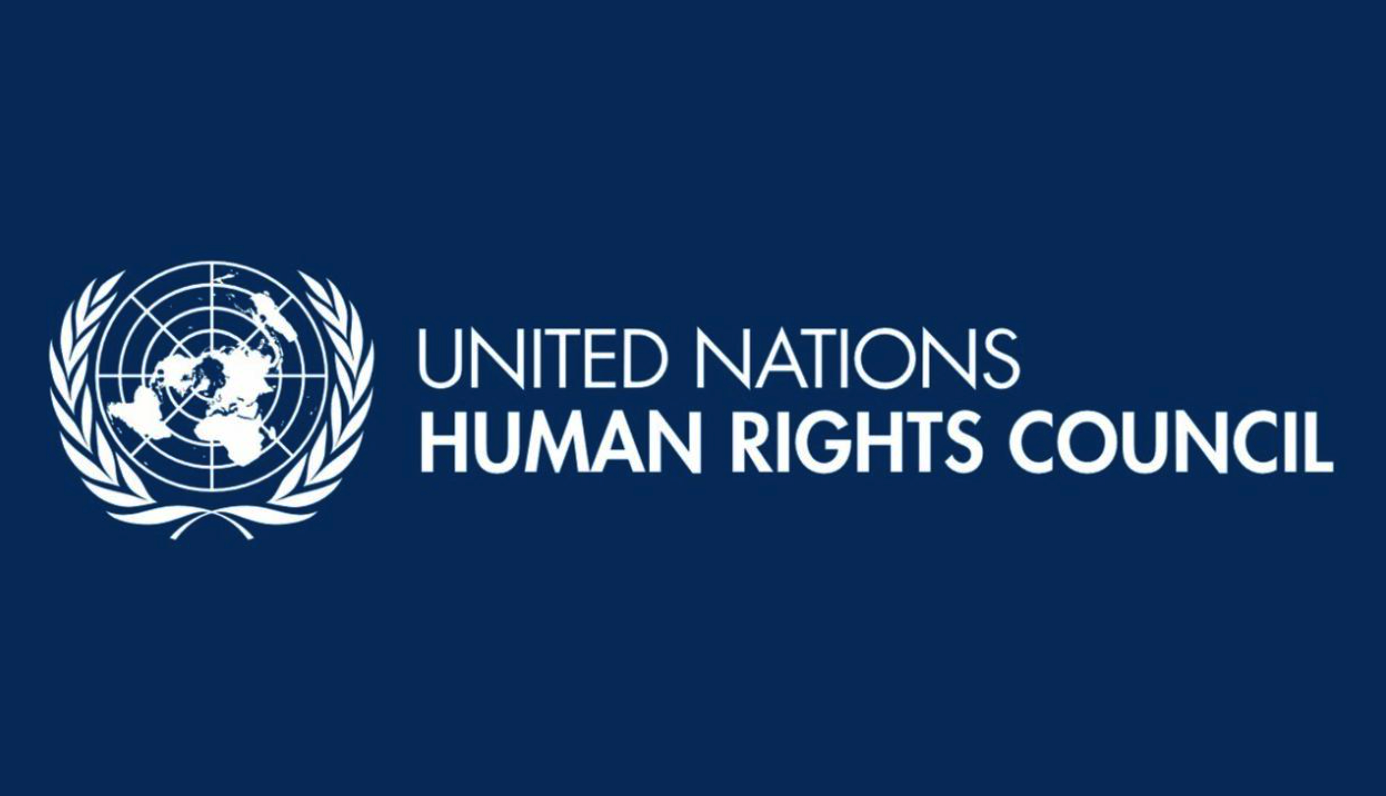
- 06 Apr 2024
Why is it in the News?
India recently abstained on a resolution at the Human Rights Council that called on Israel for an immediate ceasefire in Gaza.
India's Voting Pattern on Israel-Palestine Issues at the UNHRC:
- India's stance on the Israel-Palestine conflict has been reflected in its voting behavior at the United Nations Human Rights Council (UNHRC).
- While India has voted in favor of resolutions criticizing Israel for human rights violations, occupation of the Syrian Golan, and affirming Palestinian self-determination, it has also abstained from certain resolutions.
- In a significant development, India abstained from a resolution calling for an immediate ceasefire in Gaza and an arms embargo on Israel.
- This decision followed instances of violence, including the killing of aid workers and airstrikes.
- India's abstention is believed to be in line with its previous votes on resolutions involving "accountability."
- India's approach indicates its belief that both parties should be held accountable for their actions.
- As a result, it refrains from supporting resolutions that single out one side for condemnation.
- By taking a balanced stance, India aims to promote peace and stability in the region while advocating for the rights of all parties involved.
About the United Nations Human Rights Council (UNHRC):
- The United Nations Human Rights Council (UNHRC) is an inter-governmental body established by the United Nations General Assembly (UNGA) in 2006.
- Headquartered in Geneva, Switzerland, the council serves as a key platform for addressing human rights issues globally.
- The High Commissioner for Human Rights serves as the principal human rights official within the UN system.
- The council convenes three times annually to address human rights violations worldwide.
Membership:
- Comprising 47 member states, the council is responsible for promoting and safeguarding human rights across the globe.
- Member states are elected individually via secret ballot by a majority vote of the General Assembly.
- The election of members occurs within geographical groups to ensure equitable representation.
Tenure:
- Council members serve for a term of three years and are not eligible for immediate re-election after two consecutive terms.
The UNHRC's primary functions include:
- Promoting universal respect for human rights and fundamental freedoms.
- Addressing violations of human rights, including gross and systematic violations.
- Developing international human rights law and making recommendations to the UN General Assembly.
- Conducting investigations into alleged human rights abuses through special rapporteurs and working groups.
- Reviewing the human rights records of all UN member states through the Universal Periodic Review process.
Agni-Prime Ballistic Missile
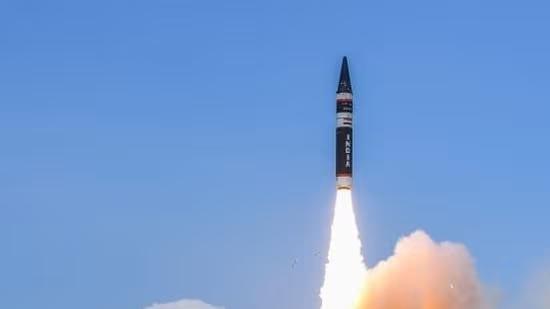
- 05 Apr 2024
Why is it in the News?
India has successfully flight-tested the new generation ballistic missile Agni-Prime from the APJ Abdul Kalam Island off the coast of Odisha.
About Agni-Prime Missile:
- Agni-P or Agni-Prime is a new generation nuclear-capable medium-range ballistic missile (MRBM) developed by the DRDO that incorporates technological advances from Agni-IV and Agni-V and is considered a successor for Agni-I and Agni-II missiles in the operational service of the SFC.
- Agni-Prime, with a strike range of 1,000 to 2,000 km, has significant upgrades, which include composite motor casing, maneuverable reentry vehicle (MaRV), improved propellants, and navigation and guidance systems.
- It is a two-stage, surface-to-surface, road-mobile, and solid-fueled missile that is transported by a truck and launched via a canister.
- It is a ballistic missile with a dual redundant navigation and guidance system.
Features:
- Although Agni-Prime looks similar to Agni-III, the weight is reduced by half.
- Agni-P will replace older generation missiles such as Prithvi-II (350 km), Agni-II (2,000 km), Agni-III (3,000 km), and Agni-4 (4,000 km) ballistic missiles.
- Agni-Prime incorporates upgrades such as propulsion systems, composite rocket motor casings, and advanced navigation and guidance systems.
- Along with Agni-V, Agni-P will provide India with stronger deterrence against countries such as China and Pakistan.
- While Agni-V brings all of China within its strike range, Agni-P seems to have been developed to counter Pakistan's forces.
- Agni-P is developed to achieve maximum maneuverability against missile defense systems and higher accuracy for precision strikes.
What is a Ballistic Missile and why is it named so?
- A Ballistic missile follows a ballistic flight path - which comprises three phases of flight.
- In the first phase or the boost phase, the solid-fuel rocket engine propels the missile upwards and it has to rapidly gain velocity and altitude, by knifing through the densest parts of the earth's atmosphere.
- The second and unpowered phase of flight happens in the upper reaches of the earth's atmosphere or in space, where the missile travels along its pre-determined path, but without the power of its engines.
- It is known as the coast phase or mid-course phase and during this time, it travels along a horizontal path.
- During the coasting, the missile is either in space or the upper atmosphere, where it faces minimal resistance or drag.
- In the third and final phase or the terminal phase, the missile descends and gets back into the earth's atmosphere and flies towards its target, while being guided by its on-board systems.
Microplastics
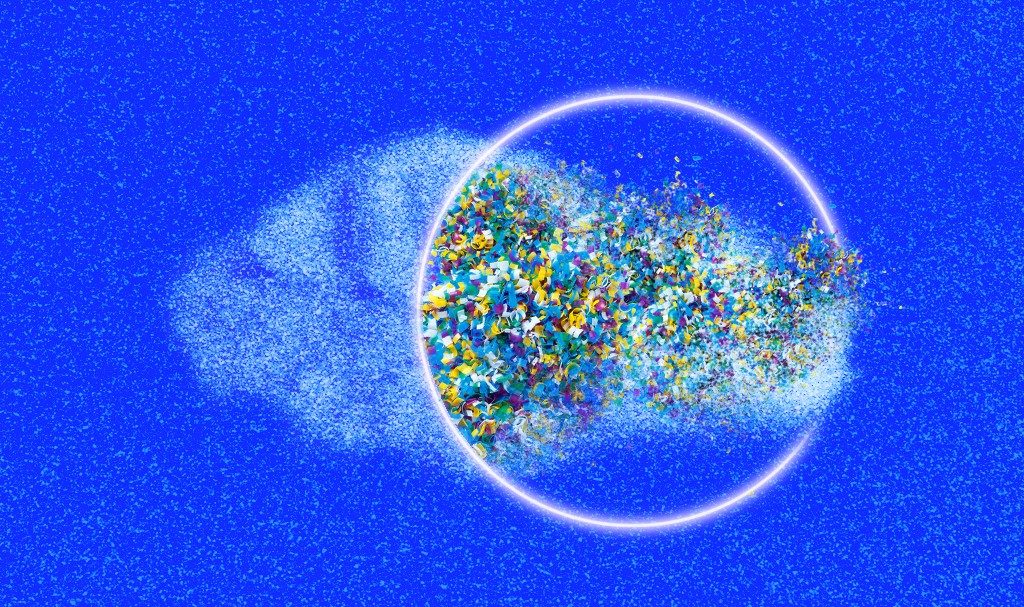
- 05 Apr 2024
Why is it in the News?
Recently, scientists have created plant-based plastic that doesn't create cancer-causing microplastics because 97% of it breaks down in the environment.
What is Microplastics?
- Microplastics are small plastic particles measuring less than 5 millimeters in diameter.
- These particles, which are distinguished from larger "macroplastics" like bottles and bags, stem from both commercial product development and the breakdown of larger plastics.
- Microplastics are commonly found in a variety of products, including cosmetics, synthetic clothing, plastic bags, and bottles.
- Unfortunately, many of these products can easily enter the environment as waste.
- Composed of carbon and hydrogen atoms linked in polymer chains, microplastics often contain additional chemicals such as phthalates, polybrominated diphenyl ethers (PBDEs), and tetrabromobisphenol A (TBBPA).
- There are two categories of microplastics: primary and secondary.
- Primary microplastics are intentionally designed for commercial use, including in cosmetics and microfibers shed from textiles like clothing and fishing nets.
- Secondary microplastics, on the other hand, result from larger plastic items breaking down due to environmental factors such as sunlight and ocean waves.
- Understanding the sources and types of microplastics is crucial for addressing their impact on the environment, wildlife, and human health, ultimately promoting more sustainable production and waste management practices.
Environmental Impacts of Microplastics:
- Microplastics pose significant environmental concerns due to their resistance to breaking down into harmless compounds, much like larger plastic items.
- Consequently, both primary and secondary microplastics accumulate and endure once introduced into the environment.
- In marine ecosystems, microplastics have the potential to amalgamate with harmful chemicals before being consumed by marine organisms.
- Despite efforts, conventional water treatment facilities struggle to completely eliminate microplastics from water sources.
- Additionally, microplastics contribute to air pollution as they are present in dust and airborne fibrous particles, further highlighting their pervasive impact on various environmental systems.
Wadge Bank
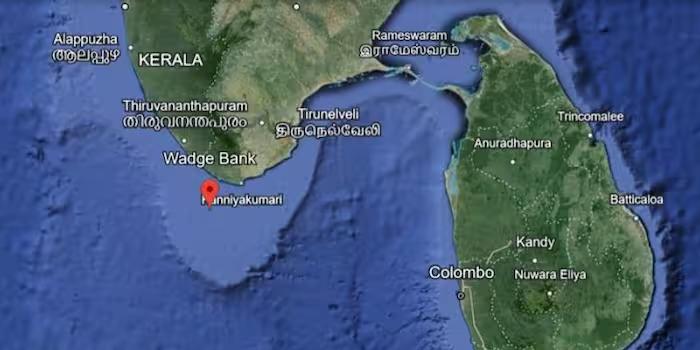
- 03 Apr 2024
Why is it in the News?
While India 'gave away' rights to Katchatheevu, in a subsequent pact, it secured sovereign rights in Wadge Bank near Kanyakumari.
What is Wadge Bank?
- Wadge Bank is a 10,000 square kilometer submarine plateau, of the sea south of Kanyakumari that is rich in biodiversity and considered India’s richest fishery resource.
- Wadge Bank, located near Cape Comorin, is home to more than 60 species of ornamental fish and other oceanic animals.
- It is a productive coastal area where three seas meet and tides create a rich fishing ground from May to October.
- Moreover, it is an invaluable treasure that indigenous people and communities depend on for food and resources, and is important to their culture.
How did India get control of the Wadge Bank?
- Wadge Bank came to India as part of the second of the two accords signed with Sri Lanka in the 1970s.
- Following the 1974 agreement under which Prime Minister Indira Gandhi ‘gave away’ Katchatheevu island to Sri Lanka, New Delhi, and Colombo signed another pact in 1976 under which the former bought Wadge Bank.
- On March 23, 1976, India and Sri Lanka signed the agreement on the maritime boundary in the Gulf of Mannar and the Bay of Bengal as part of which it was agreed that the Wadge Bank “lies within the exclusive economic zone of India, and India shall have sovereign rights over the area and its resources”.
- In the general description of Wadge Bank annexed with the treaty shared with the United Nations, it is described as “outside the territorial waters of India”.
- The Wadge Bank near Kanyakumari is rich in biodiversity and considered India’s richest fishery resource.
- As per the 1976 pact, Sri Lankan fishermen can’t engage in activities here.
- ??But at the request of Sri Lanka and as a gesture of goodwill, India agreed that Lankan fishing vessels licensed by the Government of India could fish in Wadge Bank for three years from its establishment as an exclusive economic zone of India with the stipulation that only six such vessels can fish and their catch cannot exceed 2,000 tonnes in a year.
- And, again at the request of the Sri Lankan government, India agreed to provide Colombo with 2,000 tonnes of fish of the quality, species, and at the price mutually agreed by the two sides for five years after the Lankans stopped fishing at the Wadge Bank.
BIMSTEC Charter
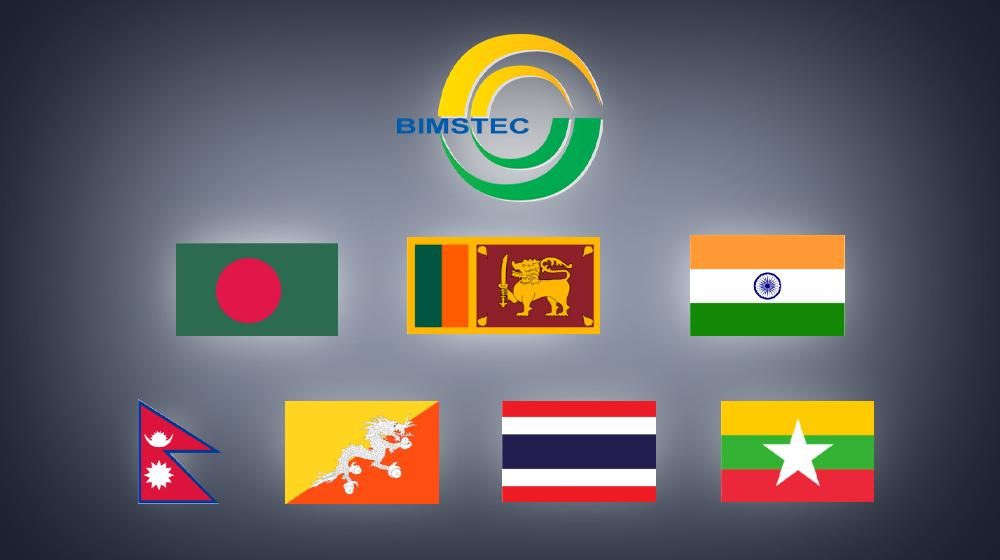
- 03 Apr 2024
Why is it in the News?
Recently, a significant majority in Nepal's Lower House backed the proposal to endorse the BIMSTEC Charter.
About the BIMSTEC Charter:
- The BIMSTEC Charter, officially signed and adopted during the Fifth BIMSTEC Summit in Colombo, Sri Lanka in 2022, serves as a cornerstone legal and institutional framework for the Bay of Bengal Initiative for Multi-Sectoral Technical and Economic Cooperation (BIMSTEC).
- This charter aims to establish a structured environment conducive to rapid economic development by delineating specific cooperation projects within the agreed areas of collaboration, along with potential expansions into additional areas as mutually agreed upon by Member States.
- Furthermore, the charter reaffirms the enduring commitment to the foundational principles and objectives of BIMSTEC, as articulated in the Bangkok Declaration of 1997.
The Importance of the BIMSTEC Charter:
- By officially adopting the BIMSTEC Charter, the organization transforms into a structured institution comprising member states situated along the Bay of Bengal, thereby formalizing their cooperation and dependence on this vital maritime region.
- The Charter grants BIMSTEC the authority to establish external relations with non-member states, developmental partners, as well as regional, UN, and international organizations, facilitating broader collaboration and engagement.
- Moreover, it underscores the imperative for a fair, just, equitable, and transparent global order while reiterating the commitment to multilateralism, with the United Nations at its core, and advocating for a rule-based international trading system.
About the Bay of Bengal Initiative for Multi-Sectoral Technical and Economic Cooperation (BIMSTEC):
- The Bay of Bengal Initiative for Multi-Sectoral Technical and Economic Cooperation (BIMSTEC) is a regional organization comprising seven Member States lying in the littoral and adjacent areas of the Bay of Bengal constituting a contiguous regional unity.
- This sub-regional organization came into being on 6 June 1997 through the Bangkok Declaration.
- It constitutes seven Member States:
- Five derive from South Asia, including Bangladesh, Bhutan, India, Nepal, and Sri Lanka, and
- Two from Southeast Asia, including Myanmar and Thailand.
- Initially, the economic bloc was formed with four Member States with the acronym ‘BIST-EC’ (Bangladesh, India, Sri Lanka, and Thailand Economic Cooperation).
- Following the inclusion of Myanmar on 22 December 1997 during a special Ministerial Meeting in Bangkok, the Group was renamed ‘BIMST-EC’ (Bangladesh, India, Myanmar, Sri Lanka and Thailand Economic Cooperation).
- With the admission of Nepal and Bhutan at the 6th Ministerial Meeting (February 2004, Thailand), the name of the grouping was changed to ‘Bay of Bengal Initiative for Multi-Sectoral Technical and Economic Cooperation’ (BIMSTEC).
Havana Syndrome
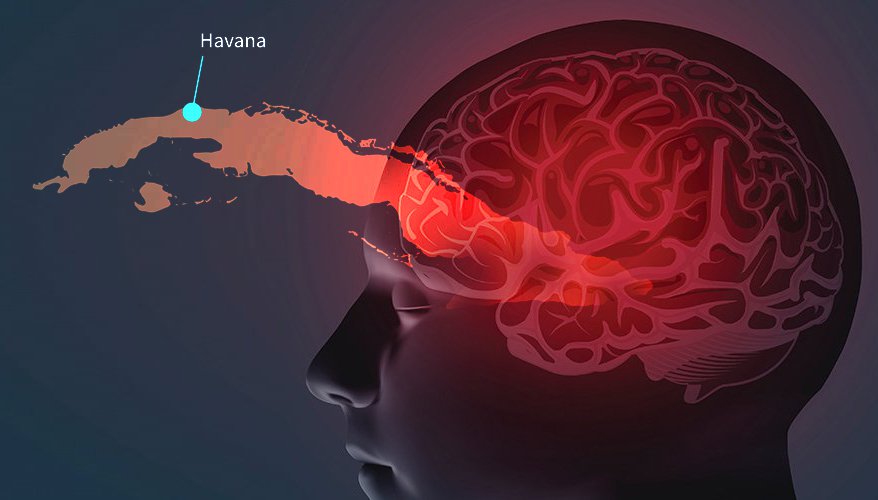
- 02 Apr 2024
Why is it in the News?
The mysterious so-called Havana Syndrome symptoms experienced by U.S. diplomats in recent years have been linked to a Russian intelligence unit, according to a joint media investigation released on April 1.
What is Havana Syndrome?
- Havana Syndrome is a term used to describe a set of mental health symptoms experienced by US intelligence and embassy officials in various countries.
- The symptoms include hearing sounds without any external noise, nausea, vertigo, headaches, memory loss, and balance issues.
- The syndrome first came to light in 2016 when US officials stationed at the country's embassy in Havana, Cuba, began reporting these symptoms.
- The exact cause of the syndrome remains unknown, but it has been linked to high-frequency microwave transmissions.
- The syndrome was named after the city where it was first reported, Havana, and has since been reported by US government officials and military personnel serving at various stations across the world.
- The symptoms of Havana Syndrome are diverse and range from pain and ringing in the ears to cognitive dysfunction.
- Some individuals have also reported hearing loss, memory loss, and nausea.
- The exact cause of these symptoms remains unknown, with theories ranging from sonic weapons to mass psychogenic illness.
- Despite ongoing investigations, there is currently no known cure for Havana Syndrome.
- Research continues into the potential causes and treatments for this perplexing condition.
Affected Regions:
- As per reports from US media outlets, over the past few years, officials have documented more than 130 instances worldwide, including in Moscow, Russia, Poland, Georgia, Taiwan, Colombia, Kyrgyzstan, Uzbekistan, and Austria, among others, with similar accusations emerging in early 2018 from US diplomats stationed in China.
- Status in India: The first such incident was reported in 2021 when a US intelligence officer accompanying CIA director William Burns to New Delhi exhibited symptoms of Havana Syndrome.
Recent Investigation Findings and Russia's Response:
- A year-long investigation revealed evidence suggesting that unexplained anomalous health incidents, commonly known as Havana Syndrome, may be linked to the use of directed energy weapons wielded by members of Russia's GRU Unit 29155, responsible for foreign operations and implicated in various international incidents, including the 2018 attempted poisoning of defector Sergei Skripal in Britain.
- Moscow has dismissed the allegations as "groundless," asserting the absence of convincing evidence, deeming the accusations baseless and unfounded.
What are Microwave Weapons?
- Microwave weapons, a type of directed energy weapon, utilize high-frequency electromagnetic radiation to generate heat in the water within a target's skin, resulting in pain and discomfort.
- Several nations are believed to have developed such weapons for use against both humans and electronic systems.
- China unveiled its "microwave weapon," the Poly WB-1, at an air show in 2014, while the United States has also designed a prototype called the "Active Denial System."
- The existence of these weapons has raised concerns regarding their potential misuse, and further research is necessary to understand their long-term effects and implications on human health and security.
Presence of Ozone on Jupiter's Moon Callisto
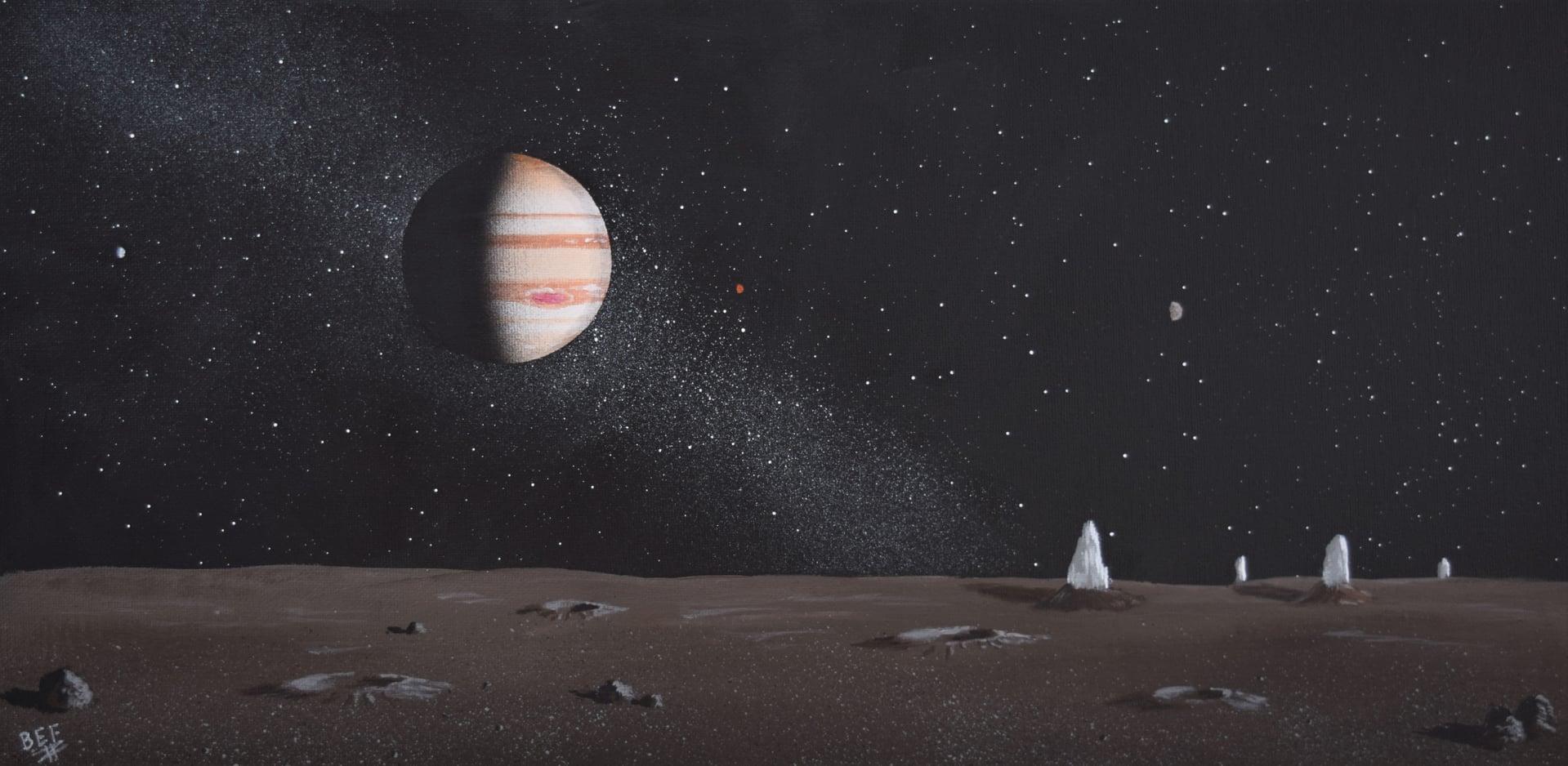
- 02 Apr 2024
Why is it in the News?
An international team of scientists, including from India, has discovered strong evidence indicating the presence of ozone on Jupiter’s moon Callisto, shedding light on the complex chemical processes taking place on icy celestial bodies in the Solar System.
Study on the Formation of Ozone in Callisto's Icy Environment:
- A recent study examined the chemical evolution of sulfur dioxide (SO2)-rich astrochemical ice found on Callisto's surface when exposed to ultraviolet (UV) radiation.
- The investigation revealed a unique signature indicating the formation of ozone, which could have implications for the potential habitability of the Jovian moon.
- Callisto is Jupiter's second-largest moon and the third-largest moon in our solar system.
- It has a relatively stable surface, which could play a vital role in preserving subsurface oceans or potential habitats beneath its icy crust.
- The study analyzed UV absorption spectra data from ice samples containing SO2, a primary component of Callisto's surface ice, and observed the generation of ozone under UV irradiation.
- Ozone formation on Callisto could have implications for the moon's astrobiological potential, as ozone can protect the surface from harmful radiation.
- Further research is needed to better understand the implications of this discovery on Callisto's habitability and the potential for future exploration missions.
Callisto's Distinctive Environment:
- Following Saturn, Jupiter boasts the second-highest number of moons in the Solar System, with Callisto ranking among its largest moons and holding the position of the third-largest moon overall, after Ganymede and Titan.
- Comprised predominantly of water ice, rocky elements, sulfur dioxide, and traces of organic compounds, Callisto presents a compelling potential for harboring life beyond Earth within the Solar System.
- The moon's extensively cratered surface bears witness to a lengthy history of impacts from asteroids and comets.
Importance of the Research:
- The identification of ozone on Callisto hints at the existence of oxygen, a crucial component essential for the development of intricate molecules vital for life, including amino acids, thus prompting inquiries into the moon's potential for sustaining life.
- This finding also has implications for other icy moons within our Solar System, offering insights that could broaden our comprehension of habitable environments beyond Earth.
Significance of Ozone:
- Consisting of three oxygen atoms bonded together, the ozone molecule plays a pivotal role in shielding life on Earth.
- Situated in the lower region of the Earth's stratosphere, approximately 15-35 kilometers above the surface, the ozone layer acts as a protective barrier.
- Without this layer, ultraviolet radiation would intensify, posing significant threats to various species and disrupting ecosystems.
- Ultraviolet-B and ultraviolet-C, with wavelengths ranging from 290 to 320 nanometers and 100 to 280 nanometers respectively, can cause DNA damage, and mutations, and elevate the risk of skin cancer and cataracts in humans.
- Furthermore, ultraviolet light can impede plant growth and adversely affect diverse organisms.
Voter Verifiable Paper Audit Trail (VVPAT)

- 02 Apr 2024
Why is it in the News?
The Congress has hailed as an “important first step” the Supreme Court’s notice to the Election Commission and the Centre on a plea seeking a complete count of VVPAT slips and said the matter should be decided before the Lok Sabha polls commence.
What is the Voter Verifiable Paper Audit Trail (VVPAT)?
- The Voter Verifiable Paper Audit Trail, or VVPAT system, was first introduced in 2014 for the first time during the 2014 Lok Sabha Elections.
- The ECI conducted pilot tests of VVPAT systems in a few constituencies in 2011, and after successful trials, VVPAT was gradually deployed across all polling stations in subsequent elections.
- It is connected to Electronic Voting Machines (EVM) and enables voters to confirm that their votes were cast as intended.
- The concept of VVPAT was to enhance the credibility and transparency of EVMs.
What are VVPAT Slips?
- VVPAT slips are an integral part of the EVMs used in elections.
- It provides a physical paper trail for voters to verify that their vote has been correctly recorded by the EVM.
- It ensures transparency and accountability in the electoral process by allowing voters to verify their vote before casting it finally.
- The VVPAT produces a paper slip that permits the voter to confirm the accuracy of their vote on the EVM.
- This slip displays the name and symbol of the party chosen by the voter.
- Additionally, the machine features a transparent window through which the voter can observe the printed slip.
- Subsequently, the slip is securely deposited into a sealed compartment within the machine.
- However, in the event of a dispute, this sealed box can be opened for further examination.
Controversies Surrounding VVPAT:
- Despite its intended purpose of enhancing transparency, VVPAT has been subject to several controversies over the years.
- Some critics have raised concerns about the reliability of VVPAT systems, citing instances of malfunctioning printers, paper jams, and discrepancies between electronic and paper records.
- The Opposition parties within the INDIA bloc have been advocating for the full counting of VVPATs, to bolster public trust in the EVMs, which itself has been subjected to intense scrutiny recently.
- Their concern has mostly stemmed from allegations of delay in the printing and displaying of VVPAT slips for every vote, which they claim can significantly increase the time required for vote counting.
Supreme Court’s intervention in VVPATs:
- In April 2019, the SC asked the poll panel to increase the number of EVMs that undergo VVPAT physical verification from one to five per assembly segment in a parliamentary constituency.
- In the month of May the same year, the Supreme Court dismissed a writ petition seeking 100 percent counting of VVPAT in the 2019 Lok Sabha elections.
- Earlier in the same month, the Supreme Court had also dismissed the review petition filed by opposition parties to increase verification of VVPAT-EVM to 50 percent.
Katchatheevu Island
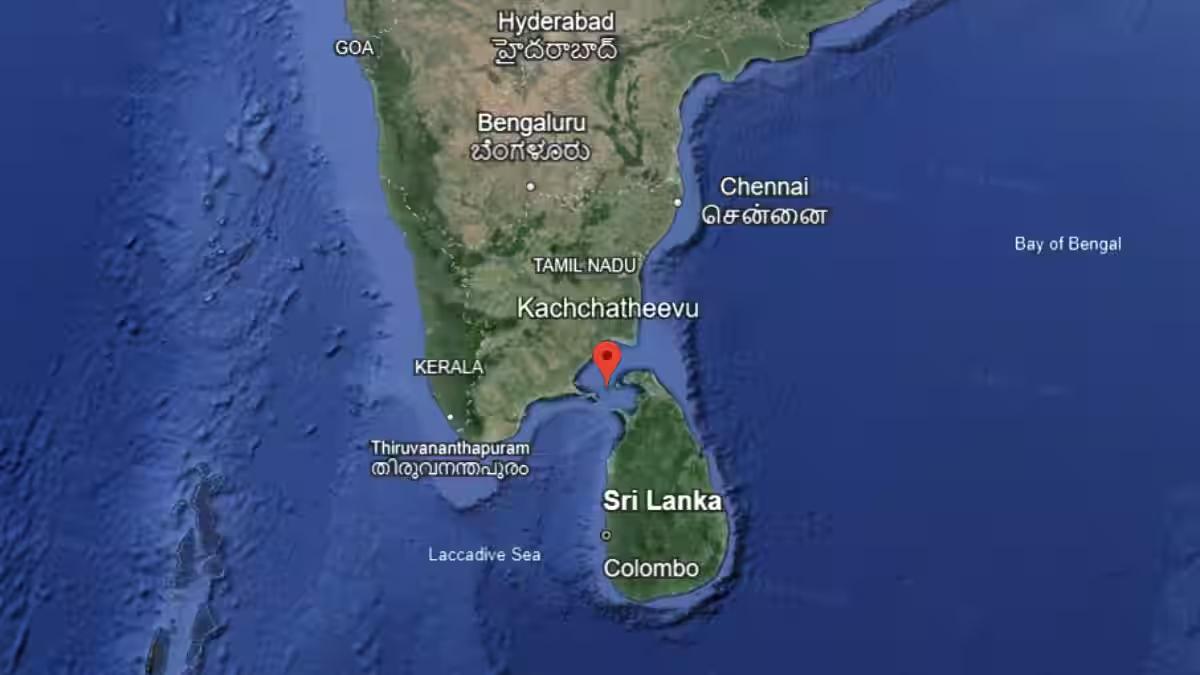
- 01 Apr 2024
Why is it in the News?
Prime Minister Narendra Modi once again attacked the Congress about its decision to “callously give away” the island of Katchatheevu.
About the Island of Katchatheevu:
- Katchatheevu is an uninhabited area located between India and Sri Lanka in the Palk Strait.
- It measures around 1.6 km in length and slightly over 300 m wide at its broadest point.
- Situated northeast of Rameswaram, it is approximately 33 km away from the Indian coast.
- Moreover, it is positioned about 62 km southwest of Jaffna, at the northern tip of Sri Lanka, and 24 km from the inhabited Delft Island, which is a part of Sri Lanka.
- Katchatheevu is not suited for permanent settlement as there is no source of drinking water on the island.
History of the island:
- Being the product of a 14-century volcanic eruption, Katchatheevu is relatively new in the geological timescale.
- In the early medieval period, it was controlled by the Jaffna kingdom of Sri Lanka.
- In the 17th century, control passed to the Ramnad zamindari based out of Ramanathapuram, about 55 km northwest of Rameswaram.
What is the dispute?
- The island became part of the Madras Presidency during the British Raj.
- But in 1921, both India and Sri Lanka, at the time British colonies, claimed Katchatheevu to determine fishing boundaries.
- A survey marked Katchatheevu in Sri Lanka, but a British delegation from India challenged this, citing ownership of the island by the Ramnad kingdom.
- This dispute was not settled until 1974.
What is the Agreement on Katchatheevu Island?
- In 1974, Indira Gandhi made attempts to settle the maritime border between India and Sri Lanka, once and for all.
- As a part of this settlement, known as the ‘Indo-Sri Lankan Maritime Agreement’, Indira Gandhi ‘ceded’ Katchatheevu to Sri Lanka.
- At the time, she thought the island had little strategic value and that ceasing India’s claim over the island would deepen its ties with its southern neighbor.
- Moreover, as per the agreement, Indian fishermen were still allowed to access Katchatheevu “hitherto”.
- Unfortunately, the issue of fishing rights was not ironed out by the agreement.
- Sri Lanka interpreted Indian fishermen’s right to access Katchatheevu to be limited to “rest, drying nets and for visit to the Catholic shrine without a visa”.
- Another agreement in 1976, during the period of Emergency in India, barred either country from fishing in the other’s Exclusive Economic Zone.
- Again, Katchatheevu lay right at the edge of the EEZs of either country, retaining a degree of uncertainty about fishing rights.
How did the Sri Lankan Civil War Impact Katchatheevu?
- Between 1983 and 2009, the border dispute remained on the back burner as a bloody civil war raged in Sri Lanka.
- With the Sri Lankan naval forces preoccupied with their task of cutting off supply lines of the LTTE based out of Jaffna, incursions by Indian fishermen well into Sri Lankan waters were commonplace.
- Bigger Indian trawlers were especially resented as they would not only tend to overfish but also damage Sri Lankan fishing nets and boats.
- In 2009, the war with the LTTE ended, and things dramatically changed. Colombo beefed up its maritime defenses and turned its focus to Indian fishermen.
- Facing a depletion of marine resources on the Indian side, they would frequently enter Sri Lankan waters as they had been doing for years, but finally began facing consequences.
- To date, the Sri Lankan navy routinely arrests Indian fishermen and there have been many allegations of custodial torture and death.
- The demand for Katchatheevu is revived each time such an incident happens.
Indian Government Stance on Katchatheevu Island:
- The Union government’s position on Katchatheevu has largely remained unchanged.
- It has argued that since the island had always been under dispute, “no territory belonging to India was ceded nor sovereignty relinquished.”
Kodaikanal Solar Observatory (KOSO)
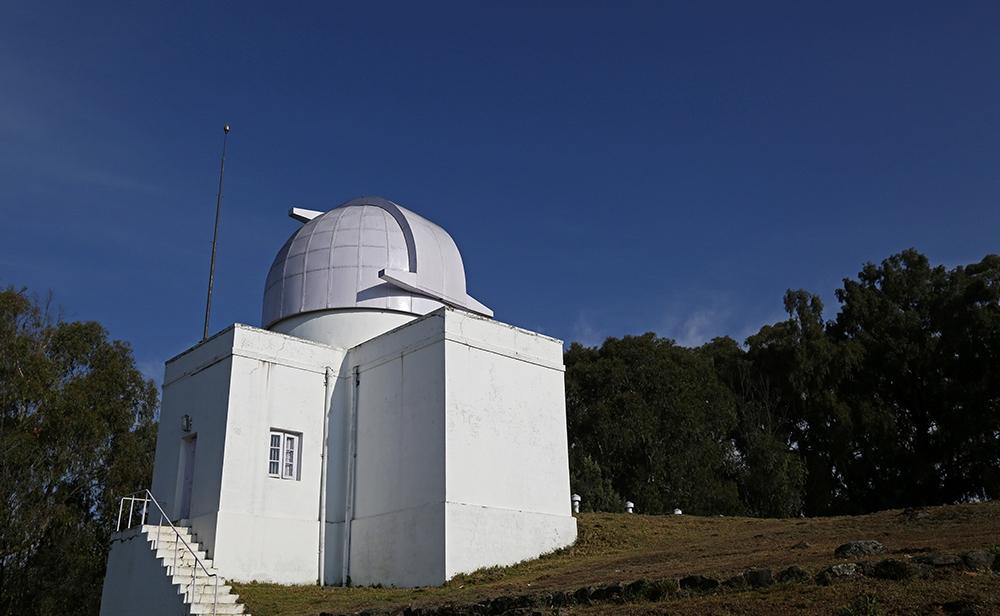
- 01 Apr 2024
Why is it in the News?
Since ancient times, seafarers, mathematicians, astronomers, and physicists have all diligently studied and tracked the Sun and its phenomena, with the establishment of the Madras Observatory by the British East India Company in 1792 marking a pioneering effort in this region.
About Kodaikanal Solar Observatory:
- The Kodaikanal Solar Observatory is a solar observatory owned and operated by the Indian Institute of Astrophysics (IIA), Bengaluru.
- It is on the southern tip of the Palani Hills 4 kilometers from Kodaikanal (Tamil Nadu).
- The Government of India separated Astrophysics from the India Meteorological Department (IMD) in April 1971.
- From solar data recorded on basic photographic plates or films, the 125-year-old KoSO boasts a mammoth digital repository containing 1.48 lakh digitized solar images of 10 terabytes.
- These include 33,500 white-light images (showing sunspots) and thousands of other images of the Sun recorded every day since the start of the 20th century.
- KoSO is the only observatory offering high-resolution digitized images for such a long period (with coverage of more than 75 percent).
- Today, it houses a spectrum of advanced instruments like the H-alpha telescope to perform full disc imaging, a White light Active Region Monitor (WARM) with calcium and sodium filters to make full disc simultaneous observations of the photosphere and chromosphere layers of the Sun, a solar tunnel telescope and more.
Links to the Great Drought:
- Scanty rainfall over south India during the winter monsoon of 1875 triggered one of the worst droughts the country had experienced till then.
- Multiple failed crops over the famine-stricken peninsular India killed 12.2 to 29.3 million people across the Madras and Mysore Provinces during 1875-1877.
- India, along with China, Egypt, Morocco, Ethiopia, southern Africa, Brazil, Columbia, and Venezuela, suffered concurrent multi-year droughts during 1876-1878, later named the Great Drought, and an associated global famine that killed nearly 50 million.
- The drought was thought to be due to multiple reasons:
- Solar activity
- Cool Pacific Ocean conditions followed by a record-breaking El Nino (1877-1878)
- Strong Indian Ocean Dipole and
- Warm North Atlantic Ocean conditions.
Solar Physics Observatory in Palani Hills:
- Established in response to the British Raj's acknowledgment of solar activity's link to India's weather patterns, the Palani Hills Solar Physics Observatory, also known as the Indian Solar Observatory, was founded to conduct systematic studies on solar phenomena and their correlation with Indian meteorology.
- Located in Kodaikanal, selected for its favorable atmospheric conditions after careful consideration by Charles Michie Smith (a Professor of Physics at the Madras Christian College), the observatory was officially sanctioned by the Government of India in August 1893 and inaugurated by Lord Wenlock (the then Governor of Madras) in 1895.
- Commencing systematic observations in 1901, it merged with the Madras Observatory, enriching its instrumentation.
- Notable discoveries ensued, including the identification of the Evershed Effect.
- Over time, the observatory expanded its research domains to encompass cosmic rays, radio astronomy, and ionospheric physics, among others, solidifying its status as a pioneering institution in the field of astrophysics.
- Notably, it initiated solar radio observations in 1952, marking a significant milestone in Indian solar research.
- Despite the closure of contemporaneous observatories, the Palani Hills Solar Physics Observatory has endured, continuing to contribute to our understanding of the Sun and its effects on Earth's climate and space weather.
Why Study the Sun?
- Being the primary source of energy, life on Earth is supported by the Sun.
- Any change on the solar surface or its periphery could significantly affect the Earth’s atmosphere.
- Powerful solar storms and solar flares can be potentially harmful to Earth’s satellite-based operations, power grids, and navigational networks.
- The KoSO (Kodaikanal Solar Observatory), which has been imaging the Sun for over a century now, has a rich repository of data.
- This is extremely useful not only to reconstruct the Sun’s historic past but also to link its behavioral changes to better understand and predict its future and its impact on life on Earth and Space weather.
Fukushima Water Issue
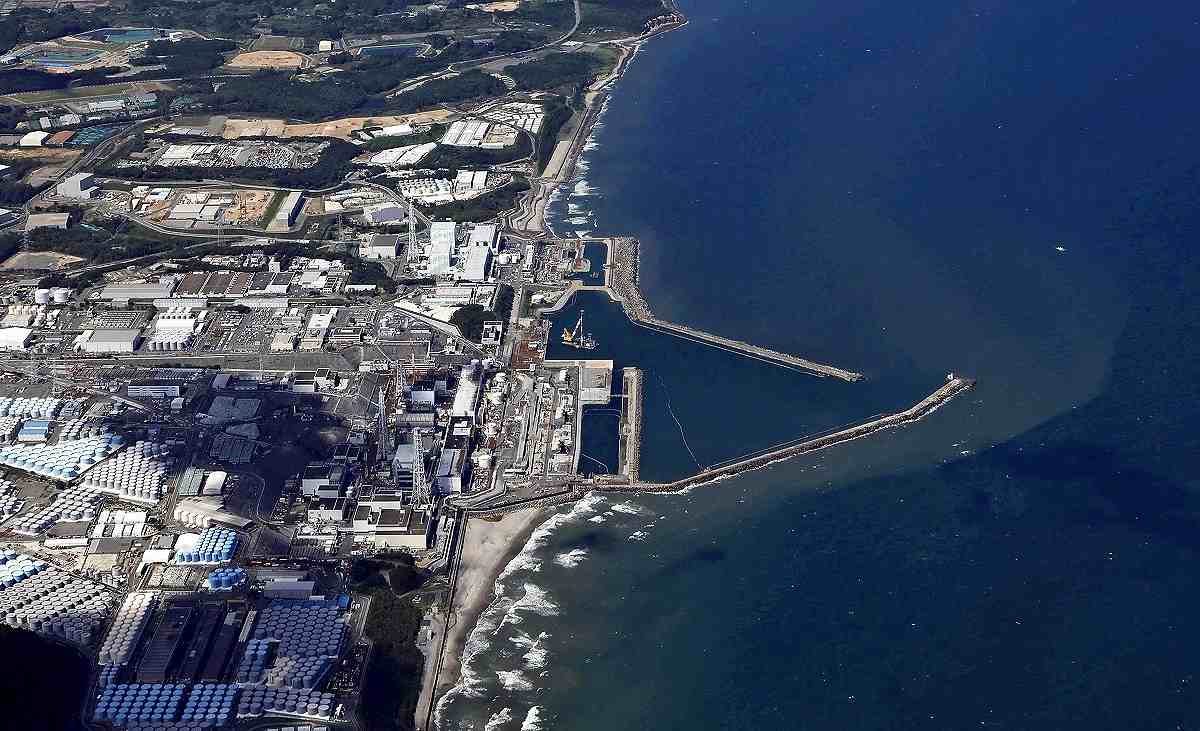
- 01 Apr 2024
Why is it in the News?
Recently, Japan announced that its experts have engaged in discussions with their Chinese counterparts to address Beijing's concerns regarding the release of treated radioactive wastewater from the damaged Fukushima Daiichi nuclear power plant into the sea.
What is the Fukushima Water Issue?
- In 2021, the Japanese government unveiled plans to gradually discharge over one million tonnes of contaminated water from the Fukushima nuclear plant into the ocean over the next three decades.
- The contaminated water is a residual product of the devastating 2011 earthquake and tsunami that incapacitated the Fukushima Daiichi nuclear power plant, resulting in the release of radioactive materials.
- After more than ten years of storing this wastewater, Japan asserts that they are facing storage space limitations and contends that the treated water is now safe for release.
Concerns Surrounding the Fukushima Water Discharge:
- Tritium and Carbon-14: The water from Fukushima undergoes filtration via the Advanced Liquid Processing System (ALPS), effectively reducing most radioactive contaminants to acceptable safety levels, except tritium and carbon-14.
- While both emit low levels of radiation, consumption in large quantities could potentially pose risks.
- Insufficient Research: Scientists emphasize the need for further investigation into the potential impact of the water discharge on the ocean bed and marine ecosystems.
- The Pacific Islands Forum regional group has labeled the proposed plan as "another significant nuclear contamination disaster," citing ongoing challenges faced by its member nations due to past US nuclear testing.
Pacific Islands Forum (PIF):
- The Pacific Islands Forum (PIF) is an inter-governmental organization that aims to enhance cooperation among countries and territories of Oceania, including the formation of a trade bloc and regional peacekeeping operations.
- It was founded in 1971 as the South Pacific Forum (SPF), and changed its name in 1999 to "Pacific Islands Forum", to be more inclusive of the Forum's Oceania-spanning membership of both north and south Pacific island countries, including Australia.
- It is a United Nations General Assembly observer.
- The PIF secretariat is located in Suva, the capital of Fiji.
Nuclear Incidents:
- A nuclear and radiation incident denotes an occurrence that has resulted in significant repercussions for individuals, the environment, or the facility involved.
- These may entail fatal consequences for individuals, substantial releases of radioactivity into the environment, or reactor core meltdowns.
- Globally, there have been a total of 99 incidents at nuclear power plants.
- Fifty-seven of these incidents have transpired since the Chornobyl disaster, with the United States accounting for 57% of all nuclear-related incidents.
- Noteworthy nuclear power plant mishaps encompass:
- Fukushima Daiichi nuclear disaster (2011)
- Chernobyl disaster (1986)
- Three Mile Island accident (1979), and
- The SL-1 accident (1961).
Real Estate (Regulation and Development) Act, 2016
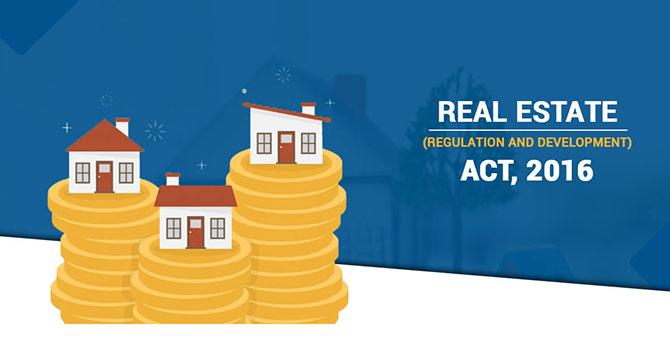
- 01 Apr 2024
Why is it in the News?
Eight years after Parliament passed the Real Estate (Regulation and Development) Act, 2016, the Union Ministry of Housing and Urban Affairs is in the process of reviewing the functioning of the Act, including by holding regular meetings with homebuyers and setting up a data collection unit within the Ministry.
What Is Real Estate (Regulation & Development) Act, 2016 (RERA)?
- The Real Estate (Regulation & Development) Act, 2016 is an act of the Parliament of India that strives to protect home buyers and helps escalate the investment made in the real estate industry.
- It was established under this Act to regulate the real estate sector.
- Additionally, it acts as the adjudicating body for faster dispute resolution related to the real estate industry.
The Primary Objectives of the Act:
- Ensuring Transparency: Promoting transparency in the real estate sector regarding the sale of flats, apartments, plots, buildings, or any real estate project.
- Establishing Dispute Resolution: Setting up an adjudicating mechanism to swiftly resolve disputes.
- Protecting Buyer Interests: Safeguarding the interests of buyers/allottees in the real estate domain.
- Building Trust: Fostering trust between buyers and promoters by leveraging regulatory authority.
- Furthermore, the Act mandates that Real Estate Regulatory Authorities establish and maintain a web portal containing pertinent details of all registered real estate projects for public access.
Reasons for RERA Implementation:
- The introduction of RERA was necessitated by challenges faced by the Indian real estate sector since 2012, including factors such as unemployment, recession, low rental yield, inventory pile-up, and ambiguous tax and arbitration frameworks.
Projects Covered by RERA:
- RERA covers commercial and residential projects, including plotted developments, that exceed 500 square meters or comprise more than 8 units.
- Additionally, projects lacking a Completion Certificate prior to the Act's commencement are subject to its provisions.
Benefits of RERA Implementation:
- Standardization: RERA ensures uniformity in the real estate sector concerning aspects like carpet areas and common areas, thereby preventing malpractices such as alterations in layout, area, agreements, and specifications.
- It also mandates disclosure of details regarding brokers, architects, and contractors.
- Timely Delivery: Developers are obligated to adhere to scheduled delivery timelines for office spaces or homes.
- Failure to comply may result in stringent penalties or imprisonment for the developer.
- Regulatory Compliance: RERA mandates obtaining clearance from government departments before the sale of any residential or commercial property.
- Financial Transparency: Developers are required to maintain separate bank accounts for each project, enhancing financial transparency and accountability.
- Warranty Protection: Buyers are empowered to report any structural defects in the building to the developer within one year of possession, with the developer obligated to rectify them free of charge.
Challenges Associated with RERA:
- Limited Scope: The regulations of RERA do not extend to ongoing projects or those stalled due to clearance issues, potentially leaving certain projects outside its jurisdiction.
- Approval Delays: Delays in approval and clearance from government agencies may impede the timely completion and delivery of real estate projects, affecting both developers and buyers.
- Exemption for Small Developers: Small-scale developers overseeing projects smaller than 500 square meters are exempt from RERA's provisions, and registration with the regulatory authority is not compulsory for them.
- Project Launch Delays: Projects cannot be launched without necessary clearances, which may result in delays in the commencement of new projects.
X-Class Solar Flares

- 30 Mar 2024
Why is it in the News?
Recently the Earth was hit by an X-class solar flare that was strong enough to ionize part of the planet's atmosphere.
What are Solar Flares?
- Solar flares are large explosions from the surface of the sun that emit intense bursts of electromagnetic radiation.
- The intensity of the explosion determines what classification the flare belongs to.
- The most powerful are X-class flares, followed by M-, C-, and B-class; A-class flares are the smallest.
- These flares can be visible as bright flashes in a particular region of the sun and can last several minutes.
- Solar flares occur when magnetic energy builds up in the solar atmosphere and is released suddenly.
- These outbursts are intrinsically linked to the solar cycle — an approximately 11-year cycle of solar activity driven by the sun's magnetic field.
What Causes Solar Flares?
- The sun's surface is a magnetically mixed-up place.
- Magnetic fields are created from electrically charged gases generating electrical currents that act as a magnetic dynamo inside the sun.
- These magnetic fields twist, tangle, and reorganize themselves due to the turbulent nature of the gases that create them.
- This unsettled magnetic field behavior — also known as solar activity — can trigger solar flare eruptions from the surface that release vast amounts of electromagnetic radiation — a form of energy that includes radio waves, microwaves, X-rays, gamma rays, and visible light.
- Solar flares tend to originate from regions of the solar surface that contain sunspots — darker, cooler portions of the solar surface where magnetic fields are particularly strong.
- As such, the number of sunspots can indicate the likelihood of a solar flare eruption.
- Solar activity follows an approximately 11-year cycle with the peak of sunspot activity coinciding with the solar maximum and a sunspot hiatus coinciding with the solar minimum.
- During periods of low solar activity when no sunspots are present, it is unlikely that a solar flare will occur.
What are X-Class Solar Flares?
- Solar flares are categorized into five classes based on the intensity of emitted X-rays, with each class letter denoting a 10-fold increase in energy output, akin to the Richter scale for earthquake strength assessment.
- X-class flares are the most powerful solar flares.
- Then there are M-class flares that are 10 times smaller than X-class flares, then C-class, B-class, and finally A-class flares which are too weak to significantly affect Earth.
- Within each letter class, a finer scale from 1 to 9 gives the flare assessment greater precision with larger numbers representing more powerful flares within the class.
- However, X-class flares can break this nine-point rating mold with higher ratings, since there is no class more powerful than X-class.
- Fortunately, X-class flares occur on average about 10 times per year.
How do Solar Flares Affect the Earth?
- Disruption of Satellite Communications: Solar flares can interfere with satellite communications, GPS signals, and radio transmissions, causing disruptions or blackouts in telecommunications and navigation systems.
- Auroral Displays: Intense solar flares can trigger colorful auroras, or Northern and Southern Lights, as charged particles interact with Earth's magnetic field, creating stunning light displays in the polar regions.
- Power Grid Disturbances: Severe solar flares have the potential to induce geomagnetic storms that can overload power grids, leading to widespread power outages and damage to electrical infrastructure.
- Radiation Hazards: Solar flares emit harmful radiation, particularly in the form of ultraviolet and X-rays, which can pose risks to astronauts in space and airline passengers at high altitudes.
- Impact on Electronics: The influx of charged particles during solar flares can induce currents in electrical circuits, potentially damaging or disrupting sensitive electronic devices, such as computers, satellites, and spacecraft.
India-led ‘Group of Friends’
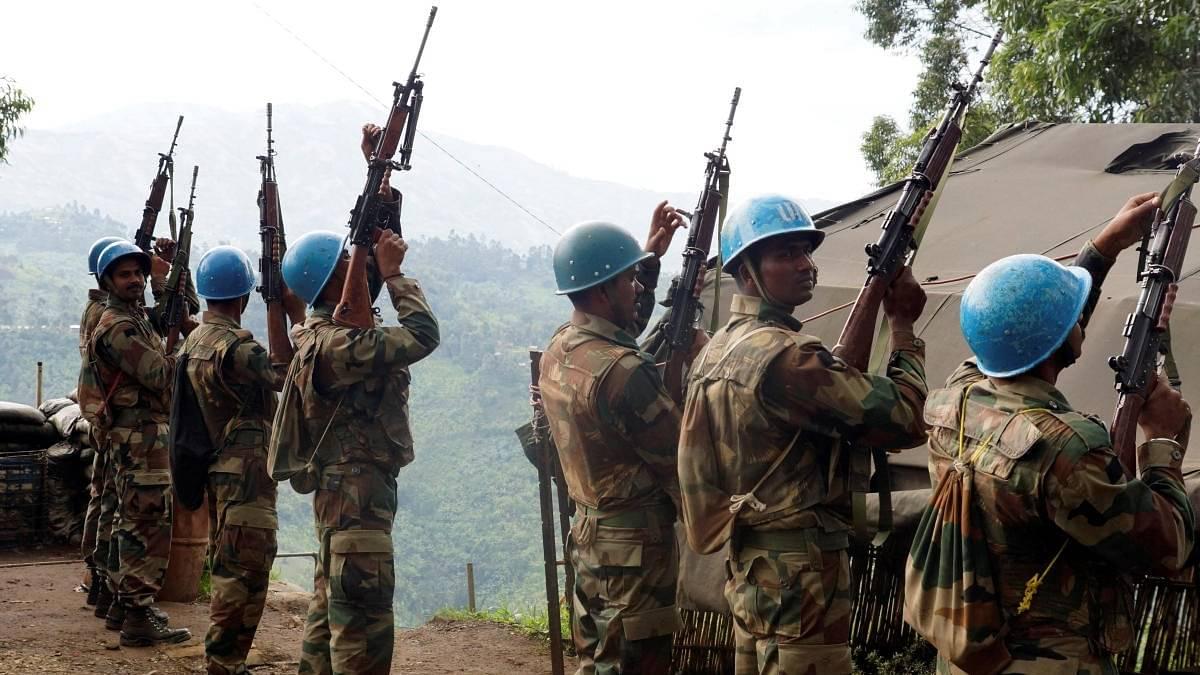
- 30 Mar 2024
Why is it in the News?
At a high-level meeting of the India-led 'Group of Friends (GOF), India launched a new database designed to record crimes against UN peacekeepers and monitor progress in holding perpetrators accountable.
About the 'Group of Friends':
- The Group of Friends (GOF) was launched by India in 2022 to promote accountability for crimes against the Blue Helmets during its presidency of the UN Security Council.
- India, Bangladesh, Egypt, France, Morocco, and Nepal are co-chairs of the GOF, which comprises 40 member states.
Key objectives of the group include:
- Engaging and sharing information with the UN Secretary-General to assist member states hosting or having hosted peacekeeping operations in bringing perpetrators of crimes against peacekeepers to justice.
- Serving as an informal platform at the UN to exchange information, share best practices, and mobilize resources to facilitate accountability for crimes against peacekeepers.
- Monitoring progress on bringing accountability for crimes against peacekeepers.
- The 'Group of Friends' will convene two meetings of its members per year and organize one event annually involving Permanent Missions and other stakeholders, ensuring greater safety and security for peacekeepers.
- This initiative represents the political will of member states, particularly troop and police contributing countries, to champion the implementation of UN Security Council resolution 2589, adopted in August 2021 under India's Presidency of the Council.
- Resolution 2589 called upon member states hosting or having hosted UN peacekeeping operations to take all appropriate measures to bring to justice perpetrators of violence against UN personnel, including their detention and abduction.
- The 'Group of Friends serves as a crucial platform for advancing this resolution, promoting accountability, and enhancing the protection of peacekeepers worldwide.
India's Significant Role in UN Peacekeeping:
- As a longstanding advocate for global peace and stability, India has demonstrated its commitment to United Nations (UN) peacekeeping operations.
- Over the past seven decades, India has contributed more than 260,000 peacekeepers, making it the largest cumulative contributor to UN peacekeeping missions.
- Despite the risks associated with such endeavors, India has remained steadfast in its support of peacekeeping efforts.
- Tragically, 177 Indian peacekeepers have made the ultimate sacrifice in the line of duty, reflecting India's dedication to fostering stability worldwide.
- Presently, India has more than 6,000 peacekeepers deployed in nine out of the twelve UN peacekeeping missions.
- As a strong proponent of accountability for crimes against peacekeepers, India plays a crucial role in advocating for the safety and security of these dedicated personnel.
C-Vigil App
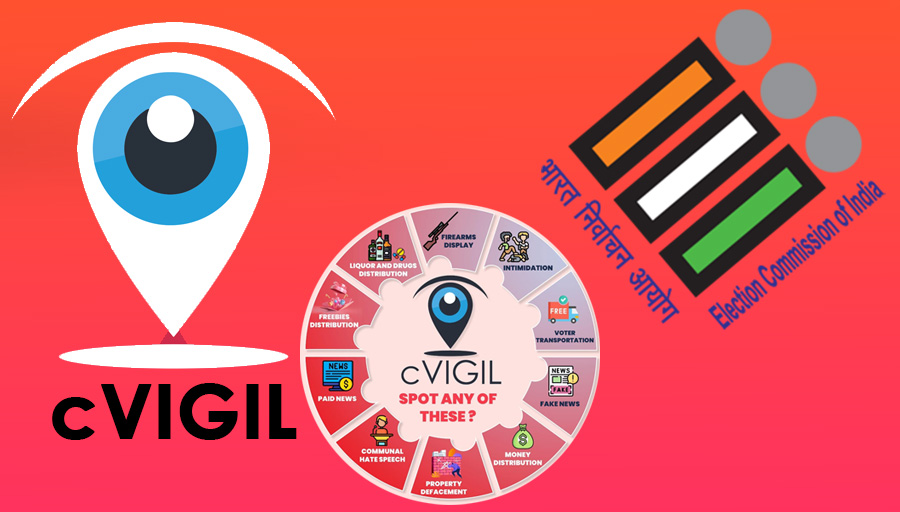
- 30 Mar 2024
Why is it in the News?
Ever since the general election was announced two weeks ago, a total of 79,000 violations have been reported on the Election Commission of India’s (ECI) cVigil app across the country.
About C-Vigil App:
- cVigil is a user-friendly and easy-to-operate application, that connects vigilant citizens with the District Control Room, Returning Officer and Field Unit (Flying Squads), or Static Surveillance Teams.
- By using this app, citizens can immediately report incidents of political misconduct within minutes and without having to rush to the office of the returning officer.
- As soon as the complaint is sent on the cVigil app, the complainant receives a unique ID, through which the person will be able to track the complaint on their mobile.
- This creates a rapid and accurate reporting, action, and monitoring system.
The cVIGIL app enabled voters to
- Register Complaints: The app allows every citizen within the election boundaries to report the Model Code of Conduct / Expenditure Violations by taking photos/audio/video through their mobile phones by signing into the application.
- Anonymous User: The app also allows the citizen to complain anonymously, without revealing their details/ identity.
- Geotagging: The app automatically enables a geo-tagging feature when users switch on their camera in the cVIGIL to report a violation, which helps the field unit to know the precise location of the incident.
Benefits of the Application:
- cVIGIL is a convenient and user-friendly app allowing citizens to send pictorial evidence of the model code of conduct violations in their vicinity.
- Each reported incident is tracked and scrutinized from the beginning to the endpoint, thus bringing accountability into the system.
- The immediate location verification feature of the cVIGIL will act as a strong deterrence for miscreants and wrong-doers as they can be easily tracked.
- A combination of all these factors will encourage citizens to keep vigil over unhealthy electoral practices and bring them to the notice of the Election Commission.
- This in turn will help the commission reach its objective of conducting free and fair elections.
Great Indian Bustard (GIB)

- 29 Mar 2024
Why is it in the News?
The Supreme Court last week said it will review its April 2021 order to bury underground all power lines in the habitat of the Great Indian Bustard (GIB), after the Centre found the order “practically impossible to implement” over long distances.
About Great Indian Bustard:
- Great Indian Bustard (GIB) is an agro-grassland bird endemic to the Indian Subcontinent.
- Known locally as Godawan in Rajasthan, it is a Critically Endangered species as per the IUCN Red List.
- It belongs to the family Otididae and exhibits sexual dimorphism.
- The GIB is an omnivorous bird.
- The species has a current viable population of around 150 individuals in India and mainly survives in the Thar Desert of Rajasthan which holds about 100 individuals.
- Of the remaining individuals, these birds are found in Gujarat, Maharashtra, Karnataka, and Andhra Pradesh respectively.
- With fewer than 150 individuals, they are caught in a deadly maze of power lines that crisscross its last refuge in the Kutch and Thar deserts of western India.
Why Do Power Lines Kill Bustards?
- Power lines pose a risk to all flying birds.
- In 2020, a study carried out by the Wildlife Institute of India (WII) in 4,200 sq km of GIB habitat in and around Desert National Park (DNP) in Rajasthan estimated that power lines killed around 84,000 birds of multiple species every year.
- GIBs are especially vulnerable because of their narrow frontal vision and large size.
- Unlike some birds that have a panoramic vision around the head, species like raptors and bustards have extensive blind areas above their heads.
- When they stretch their head forward to scan the ground below, they fly blind in the direction of travel.
Arguments of the Centre:
- The Centre said taking lines of 66 KV and higher voltage underground was not feasible for the evacuation of bulk power due to constraints such as transmission losses, maintenance challenges, multiple cable joints, increased time requirements, and safety concerns.
- The cost implications of undergrounding all power lines in the large area identified are very heavy — running into many thousands of crores and the cost of externalities that will burden the nation was “huge” and “disproportionate”.
- Harnessing renewable power from high-potential areas of Rajasthan and Gujarat was “essential for meeting rising power demand and India’s international commitments on climate change”.
Other threats faced by GIB:
- Free-ranging dogs pose a significant threat to the Great Indian Bustard (GIB) population, particularly in the Thar landscape, with feral packs responsible for a substantial portion of Chinkara depredation in the Desert National Park (DNP) as of 2017.
- Although sporadic hunting of GIBs persists, the prevalent use of pesticides in agricultural areas poses a more substantial risk to the bird's survival.
- Additionally, habitat loss, particularly the decline of grasslands essential for nesting, and diminishing support from local communities are growing concerns.
CoViNet
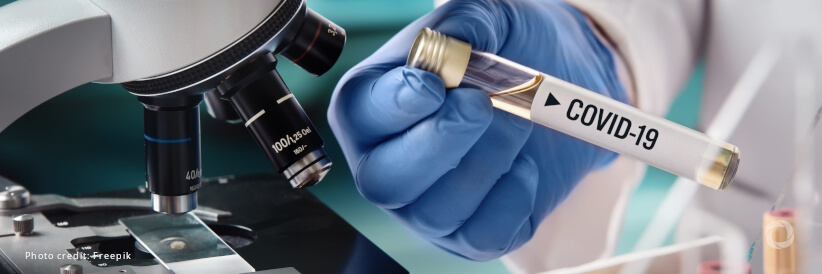
- 29 Mar 2024
Why is it in the News?
The World Health Organization (WHO) has launched a global network of laboratories to identify and monitor potentially novel coronaviruses that could emerge shortly.
What is CoViNet?
- The Coronavirus Network (CoViNet) is a global collaboration of laboratories with expertise in human, animal, and environmental coronavirus surveillance.
- This network aims to identify and monitor potential new coronaviruses that could emerge and impact public health worldwide.
- To enhance pandemic preparedness, CoViNet will expand its scope to include animal health and environmental surveillance, as well as timely risk assessments.
- This will allow the World Health Organization (WHO) to develop more informed policies and protective measures against future viral outbreaks.
- CoViNet will also play a pivotal role in building and supporting laboratory capacities in low- and middle-income countries to monitor MERS-CoV and other emerging coronaviruses of public health importance.
- By fostering knowledge exchange and capacity building, CoViNet aims to strengthen the global response to coronavirus threats.
- Furthermore, data generated through CoViNet's efforts will guide the work of the WHO's Technical Advisory Groups on Viral Evolution (TAG-VE) and Vaccine Composition (TAG-CO-VAC). These groups rely on cutting-edge research and surveillance data to inform public health policies and vaccination strategies.
- With 36 laboratories from 21 countries across all six WHO regions, CoViNet currently encompasses a wide range of expertise and resources.
- Three Indian institutions, namely, the Council of Scientific and Industrial Research-National Environmental Engineering Research Institute, the Indian Council of Medical Research-National Institute of Virology in Pune, and the Translational Health Science and Technology Institute, proudly represent the country in this global network dedicated to coronavirus surveillance and preparedness.
About the World Health Organization (WHO):
- The World Health Organization (WHO) stands as a paramount global health authority, dedicated to promoting health, preventing diseases, and improving healthcare systems worldwide.
- Established in 1948, WHO operates as a specialized agency of the United Nations, with its headquarters in Geneva, Switzerland.
- It collaborates with governments, international organizations, and civil society to address pressing health challenges and provide guidance and support to countries in need.
- WHO's mandate encompasses a wide array of health-related issues, including infectious diseases, non-communicable diseases, mental health, maternal and child health, and environmental health.
- Through research, policy development, and technical assistance, WHO plays a vital role in shaping health policies, setting standards, and coordinating responses to health emergencies such as pandemics and natural disasters.
- With a mission to ensure the highest attainable level of health for all people, WHO continues to lead efforts in global health governance, advocacy, and capacity-building, striving for a healthier, safer, and more equitable world.
Food Waste Index Report 2024
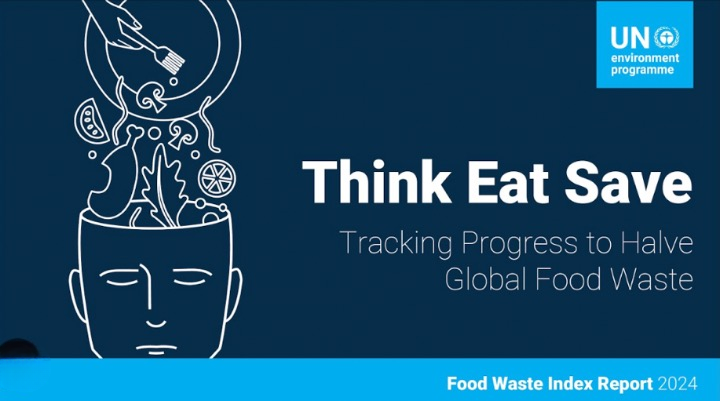
- 29 Mar 2024
Why is it in the News?
As per the Food Waste Index Report for 2024, households worldwide discarded more than one billion meals daily in 2022.
About UNEP Food Waste Index Report 2024:
- The United Nations Environment Programme (UNEP) Food Waste Index Report 2024, co-authored with the Waste and Resources Action Programme (WRAP), offers a comprehensive analysis of the state of global food waste.
- The report reveals alarming trends, including the wastage of over 1 billion meals per day in 2022, highlighting the urgency to address this critical issue.
Key findings from the report include:
- Per Capita Waste: The average annual food waste per person amounts to approximately 79 kilograms (or around 174 pounds).
- This equates to over a billion meals being wasted daily worldwide, underscoring the significant inefficiencies in current food consumption habits.
- Sources of Waste: Household waste constitutes the majority, around 60%, with food service establishments (such as restaurants) contributing approximately 28%, and retailers making up about 12%.
- This breakdown suggests that interventions targeting consumer behavior could have a substantial impact on reducing overall waste.
- Environmental Impact: Food loss and waste contribute to 8 to 10% of global greenhouse gas emissions.
- Comparatively, if food waste were considered a country, it would rank as the third-largest emitter of greenhouse gases globally, trailing only China and the United States.
- This stark comparison underscores the urgent need to address food waste not only for resource efficiency but also as a crucial aspect of climate action on a global scale.
- Global vs. Local Impact: The report highlights that food waste is a pervasive issue affecting both high-income and lower-income countries alike.
- This universality implies that solutions must be adaptable and scalable across various socioeconomic contexts.
- Collaborative Solutions: Governments, regional entities, industry stakeholders, and non-profit organizations are increasingly involved in public-private partnerships to combat food waste.
- Effective strategies, such as food redistribution through initiatives like food banks and charities, are recognized as vital for reducing waste while simultaneously supporting vulnerable communities.
Recommendations:
- The Food Waste Index Report by UNEP emphasizes the urgent need for comprehensive action, both globally and locally, to tackle the issue of food waste.
- By illuminating the extent and origins of waste, as well as its significant environmental and social repercussions, the report advocates for collaborative efforts across all sectors to establish sustainable food systems.
- The target of halving food waste by 2030 is not only in line with environmental goals but also represents a crucial step towards reducing global hunger and promoting a fairer distribution of food resources.
- As nations strive to achieve this objective, the report underscores the interconnectedness of food security, environmental sustainability, and economic viability.
- It presents addressing food waste not only as a moral and environmental imperative but also as a practical opportunity to bolster global food security and combat climate change.
Protection of Children from Sexual Offences (POCSO) Act

- 29 Mar 2024
Why is it in the News?
The Kerala High Court has held that a child charged with offenses under the Protection of Children from Sexual Offences (POCSO) Act, 2012, is to be prosecuted as per the provisions of the Juvenile Justice (Care and Protection of Children) (JJ) Act.
About the Protection of Children from Sexual Offences Act (POCSO Act):
- Enacted in 2012, the POCSO Act stands as India's pioneering legislation dedicated to addressing child sexual abuse comprehensively.
- Under the administration of the Ministry of Women and Child Development (MoWCD), its primary objective is safeguarding children under 18 from sexual assault, harassment, and exploitation, alongside establishing Special Courts to adjudicate such cases swiftly and efficiently, ensuring justice and protection for victims.
Salient Features of the Act:
- The POCSO Act adopts a gender-neutral approach, defining a child as "any person" under 18, ensuring inclusivity for all victims of child sexual abuse.
- It delineates various forms of sexual abuse, encompassing penetrative and non-penetrative assault, sexual harassment, and pornography.
- Certain circumstances, such as mental illness or abuse by a trusted individual like a family member, escalate the severity of sexual assault as per the Act.
- Individuals involved in trafficking children for sexual exploitation are subject to punishment under the Act's provisions on abetment.
- Attempting to commit an offense under the Act incurs penalties up to half the prescribed punishment for the completed offense.
- There's no time limit for reporting abuse, empowering victims to come forward at any point, regardless of when the abuse occurred.
- The Act mandates reporting of sexual abuse, penalizing failure to do so with imprisonment or fines.
- It includes child-friendly procedures for reporting, evidence recording, investigation, and trial, ensuring a supportive environment for victims.
- These procedures include recording the child's statement in a preferred location, preferably by a female officer, and avoiding aggressive questioning or character attacks.
- Medical examinations occur in the presence of a trusted individual, and the child is shielded from seeing the accused during testimony.
- Trials are held in camera, with the Special Court aiming to complete proceedings within a year of cognizance, prioritizing swift justice for victims.
Amendment to the Act:
- In 2019, the Act underwent its inaugural amendment to intensify penalties for particular offenses, aiming to dissuade perpetrators and safeguard the dignity of childhood.
- This amendment introduced the death penalty for aggravated penetrative sexual assault against children.
- Additionally, it empowered the imposition of fines and sentences of up to 20 years in prison to combat child pornography.
United Nations High Commissioner for Refugees (UNHCR)
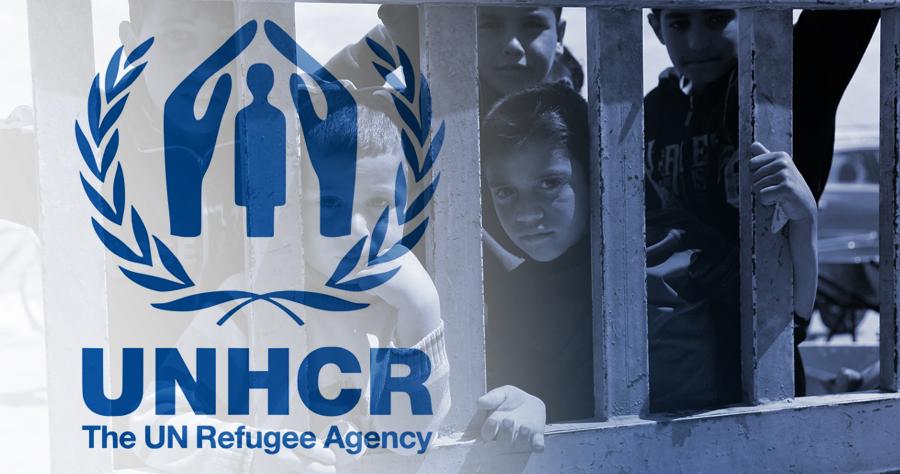
- 29 Mar 2024
Why is it in the News?
According to the United Nations High Commissioner for Refugees (UNHCR), in 2023, more than 4,500 Rohingya refugees embarked on a perilous journey across the Bay of Bengal and the Andaman Sea.
About the United Nations High Commissioner for Refugees (UNHCR):
- UNHCR, the UN Refugee Agency, is a global organization dedicated to saving lives, protecting rights, and building a better future for people forced to flee their homes because of conflict and persecution.
- It leads international action to protect refugees, forcibly displaced communities, and stateless people.
- Formally known as the Office of the High Commissioner for Refugees, UNHCR was established by the General Assembly of the United Nations in 1950 in the aftermath of the Second World War to help the millions of people who had lost their homes.
- Today, UNHCR operates in 137 countries and provides life-saving assistance, including shelter, food, water, and medical care for people forced to flee conflict and persecution, many of whom have nobody left to turn to.
- UNHCR defends their right to reach safety and helps them find a place to call home so they can rebuild their lives.
- UNHCR also collaborates with countries to improve and monitor refugee and asylum laws and policies, ensuring that human rights are upheld.
- UNHCR considers refugees and those forced to flee as partners, putting those most affected at the center of planning and decision-making.
Who are the Rohingya Refugees?
- Rohingya are an ethnic group, largely comprising Muslims, who predominantly live in the Western Myanmar province of Rakhine.
- They speak a dialect of Bengali, as opposed to the commonly spoken Burmese language.
- Though they have been living in the South East Asian country for generations, Myanmar considers them as persons who migrated to their land during Colonial rule so, it has not granted Rohingyas full citizenship.
- According to the 1982 Burmese citizenship law, a Rohingya (or any ethnic minority) is eligible for citizenship only if he/she provides proof that his/her ancestors have lived in the country before 1823. Otherwise, they are classified as “resident foreigners” or as “associate citizens” (even if one of the parent is a Myanmar citizen).
- Since they are not citizens, they are not entitled to be part of civil service. Their movements are also restricted within the Rakhine state.
T+0 Settlement Cycle

- 28 Mar 2024
Why is it in the News?
The BSE and NSE introduced trading in the T+0 rolling settlement cycle in the equity segment on an optional basis today.
What is Trade Settlement?
- Trade settlement encompasses the bilateral process of transferring funds and securities on the designated settlement date.
- It signifies the completion of a trade transaction when the purchased securities of a listed company are successfully delivered to the buyer, and the seller receives the agreed-upon payment.
- The evolution of the trade settlement cycle in India has seen notable adjustments over time.
- Initially shortened by SEBI to T+3 from T+5 in 2002 and further to T+2 in 2003, the current cycle in the Indian stock market stands at T+1.
- This migration to the T+1 cycle took effect in January 2023, positioning India as the second country globally, after China, to implement the T+1 settlement cycle for top-listed securities.
What is the T+0 Trading Settlement Cycle?
- In December last year, the capital markets regulator SEBI proposed to introduce a facility for clearing and settlement of funds and securities on T+0 (same day) on an optional basis, in addition to the existing T+1 settlement cycle.
- The regulator has also proposed to introduce optional instant settlement at a later stage.
- Under the T+0 trade cycle, the settlement of trades will happen on the same day after the closure of the T+0 market.
- If investors sell a share, they will get the money credited to their account the same day, and the buyer will also get the shares in their demat account on the very day of the transaction.
What are the Benefits of T+0 Trade Settlement?
- A shortened settlement cycle will bring cost and time efficiency, transparency in charges to investors, and strengthen risk management at clearing corporations and the overall securities market ecosystem.
- The T+0 trade cycle is expected to provide flexibility in terms of faster pay-out of the funds against the securities to the sellers and faster pay-out of securities against the funds to the buyers.
- It will allow better control over funds and securities by the investors.
- For the securities market ecosystem, a shorter settlement cycle will further free up capital in the securities market, thereby enhancing the overall market efficiency.
- It will enhance the overall risk management of Clearing Corporations (CCs) as the trades are backed by upfront funds and securities.
Who can Participate in the T+0 Settlement Cycle?
- All investors are eligible to participate in the segment for the T+0 trade settlement cycle if they are able to meet the timelines, process, and risk requirements as prescribed by the Market Infrastructure Institutions (MIIs).
Solar and Heliospheric Observatory (SOHO)

- 28 Mar 2024
Why is it in the News?
Recently, NASA's Soho mission, which is tasked with observing the Sun, has captured its 5000th comet as it dives around the star in our Solar System.
About Solar and Heliospheric Observatory (SOHO):
- SOHO was built as a general solar observatory, with twelve suites of scientific instruments to track all of these properties of the Sun.
- During its operations, it has provided important insights, including:
- Details about the interior of the Sun,
- What sunspots look like beneath the surface,
- Measurements of the speed of the solar wind,
- The charged particles that escape from the corona,
- Mapping the magnetic field behavior over the Sun’s surface; and
- Revealing new phenomena such as “solar tornadoes”.
- Built in Europe, SOHO is operated jointly by ESA and NASA, with contributions from a large number of scientists, engineers, and other staff around the world.
- The spacecraft was launched in 1995 with a planned two-year mission.
- Its work was successful enough to justify keeping the observatory going, and it’s still operating more than 20 years later.
- The probe orbits the Sun at a place where the gravity of the Sun and Earth balance each other out, known as the first Lagrange point (L1).
- Center for Astrophysics (CfA) scientists and engineers provided SOHO’s Ultraviolet Coronagraph Spectrometer (UVCS), which operated until 2013 and measured the ultraviolet spectrum of the hot solar atmosphere.
- UVCS provided the insight that the corona is too hot to be produced by ordinary thermal transfer, where particles collide and pass energy to each other.
- Instead, the corona and solar wind must be accelerated by the magnetic field interactions in some way.
- Other SOHO instruments measure the speed and composition of the solar wind; the seismic waves that travel across the Sun’s surface; the fluctuations in the temperature, composition, and density of different parts of the corona; and the motion of matter upward from the Sun’s interior to its surface.
Black Carbon
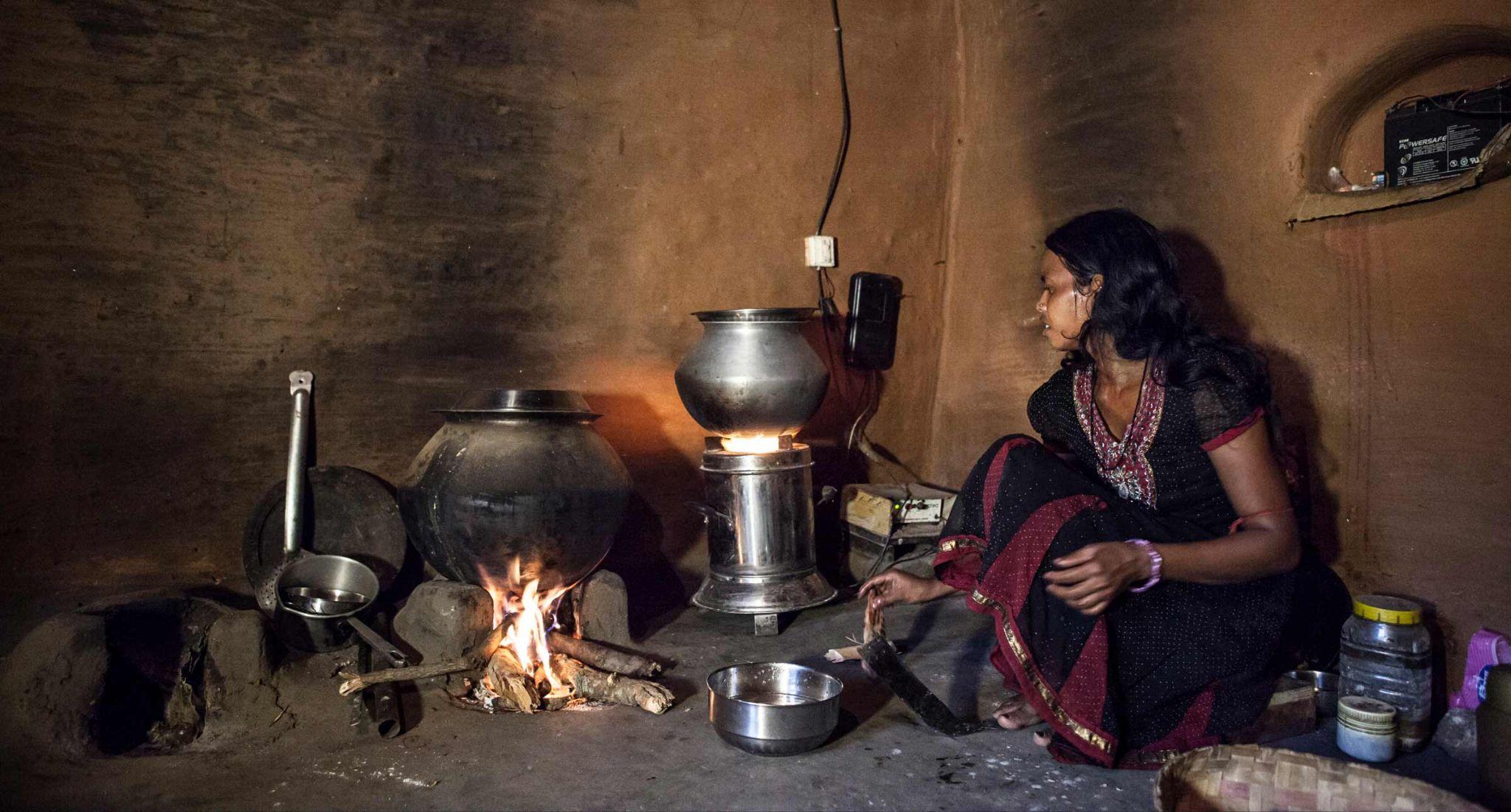
- 27 Mar 2024
Why is it in the News?
As per a study, the residential sector is responsible for 47% of India's overall black carbon emissions.
What is Black Carbon?
- Black carbon is the dark, sooty material emitted alongside other pollutants when biomass and fossil fuels are not fully combusted.
- It contributes to global warming and poses severe risks.
- Studies have found a direct link between exposure to black carbon and a higher risk of heart disease, birth complications, and premature death.
- Most black carbon emissions in India arise from burning biomass, such as cow dung or straw, in traditional cookstoves.
- According to a 2016 study, the residential sector contributes 47% of India’s total black carbon emissions.
- Industries contribute a further 22%, diesel vehicles 17%, open burning 12%, and other sources 2%.
- Decarbonization efforts in the industry and transport sectors in the past decade have yielded reductions in black carbon emissions, but the residential sector remains a challenge.
- Black carbon is a potent contributor to global warming due to its efficient absorption of light and subsequent heating of its surroundings.
- This process leads to the conversion of incoming solar radiation into heat.
- Moreover, black carbon influences cloud formation and affects regional circulation and precipitation patterns.
- When deposited on ice and snow, it diminishes surface albedo, reducing their ability to reflect sunlight and causing surface warming.
Impacts:
- Black carbon significantly contributes to global warming and poses substantial risks to human health.
- Exposure to black carbon has been linked to increased incidences of heart disease, birth complications, and premature mortality.
- Its warming effect on climate is estimated to be 460-1,500 times more potent than that of CO2.
Post-Vaccination Immunity
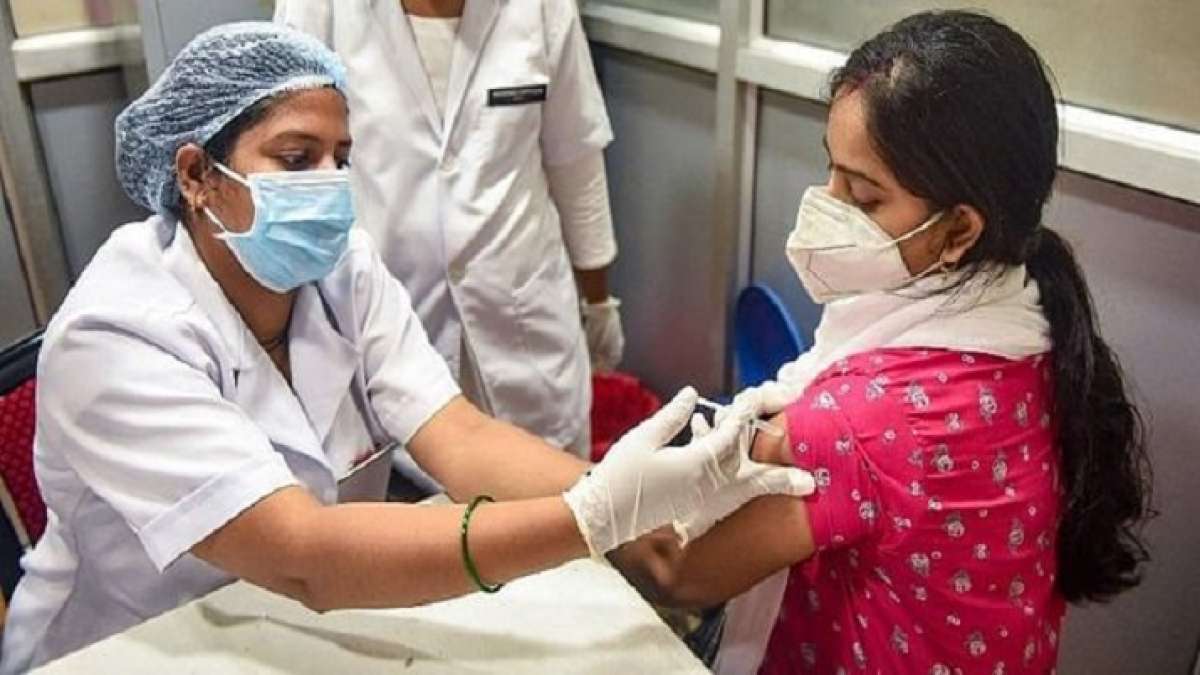
- 26 Mar 2024
Why is it in the News?
A recent review revealed that only a handful of vaccines offer durable protection lasting beyond 20 years.
About Post-vaccination immunity:
Mechanism:
- The fundamental immunological process involves the production of memory B cells in lymph nodes, providing long-term protection against diseases.
- These memory B cells recognize antigens delivered by vaccines, prompting the production of potent antibodies upon encountering similar antigens from foreign objects like viruses, effectively eliminating infections.
- T cell support is essential for the activation of memory B cells, thus vaccines stimulating T cells are capable of inducing their production.
- Notably, certain vaccines, such as polysaccharide typhoid and pneumococcal vaccines, may not prompt the production of B cells.
- To extend the duration of immunity conferred by memory B cells, frequent boosters may be necessary, ranging from six months to several years.
- However, the presence of memory B cells alone does not guarantee protection, as the effectiveness of vaccines in triggering their production varies.
- Long-lasting plasma cells (LLPCs) migrate from lymph nodes to the bone marrow, where they may persist for decades, constituting a crucial aspect of vaccine-induced immunity.
- Every vaccine aims to generate LLPCs in the bone marrow for lifelong protection, with vaccines like those for measles and rubella known to stimulate LLPC production.
- Notably, some potent vaccines, such as mRNA COVID-19 shots, may not effectively activate LLPCs in the bone marrow.
- For vaccines to confer long-term protection, they must generate both memory B cells and LLPCs in the bone marrow, with variations in vaccine effectiveness in producing these cells explaining differences in their durability.
Smart Meter National Programme (SMNP)

- 26 Mar 2024
Why is it in the News?
Kerala's shift towards an alternative approach for the implementation of smart electricity meters, sidelining the Central government's Rs 3 lakh crore project, poses a challenge to the Union Government's initiative of replacing 250 million traditional meters with smart meters in all households by March 2025.
About the Smart Meter National Programme (SMNP):
- The Indian government has initiated the Smart Meter National Programme (SMNP) to revolutionize the country's energy sector through the implementation of smart meters.
- By replacing 25 crore conventional meters, the SMNP aims to enhance the operational efficiency and revenue management of distribution companies (DISCOMs).
- Under the leadership of Energy Efficiency Services Limited (EESL), a joint venture of four National Public Sector Enterprises, the scheme is set to make waves in the energy sector.
- EESL, comprised of NTPC Limited, PFC, REC, and POWERGRID, operates under the Ministry of Power and is committed to undertaking the necessary capital and operational expenditures with zero upfront investment from states and utilities.
- The Build-Own-Operate-Transfer (BOOT) model facilitates the recovery of smart meter costs via the monetization of energy savings resulting from improved billing accuracy, reduced meter reading costs, and increased efficiency.
- In accordance with guidelines set forth by the Central Electricity Authority (CEA), the strategic deployment of these smart meters adheres to industry standards.
Smart meters offer a multitude of advantages:
-
- Consumers can monitor their electricity usage and make informed decisions to reduce their bills.
- Utilities benefit from enhanced operational efficiency, enabling better power demand management.
- Web-based Monitoring: The interconnected smart meter network can mitigate utilities' commercial losses, enhance revenue generation, and propel power sector reforms.
- The Smart Meter National Programme (SMNP) paves the way for a more efficient and sustainable energy landscape in India, revolutionizing the way utilities operate and consumers engage with their electricity usage.
What are Smart Meters?
- A smart meter serves as an advanced tool for recording electricity consumption and voltage levels, offering a significant upgrade over traditional metering systems.
- While conventional meters simply measure power usage, smart meters take it a step further by transmitting real-time data to utility providers at intervals of 15 minutes or hourly.
- Smart meters truly live up to their name by utilizing internet connectivity to facilitate two-way communication.
- On one hand, they empower consumers with up-to-date information on energy usage patterns, enabling them to make informed decisions and manage consumption more efficiently.
- On the other hand, utility providers gain valuable insights for monitoring purposes and ensuring accurate billing.
- In essence, smart meters pave the way for improved energy management, increased transparency, and enhanced efficiency, catering to the evolving needs of both consumers and utility providers in today's digital era.
ISRO’s Reusable Launch Vehicle (RLV) LEX 02 Landing Experiment
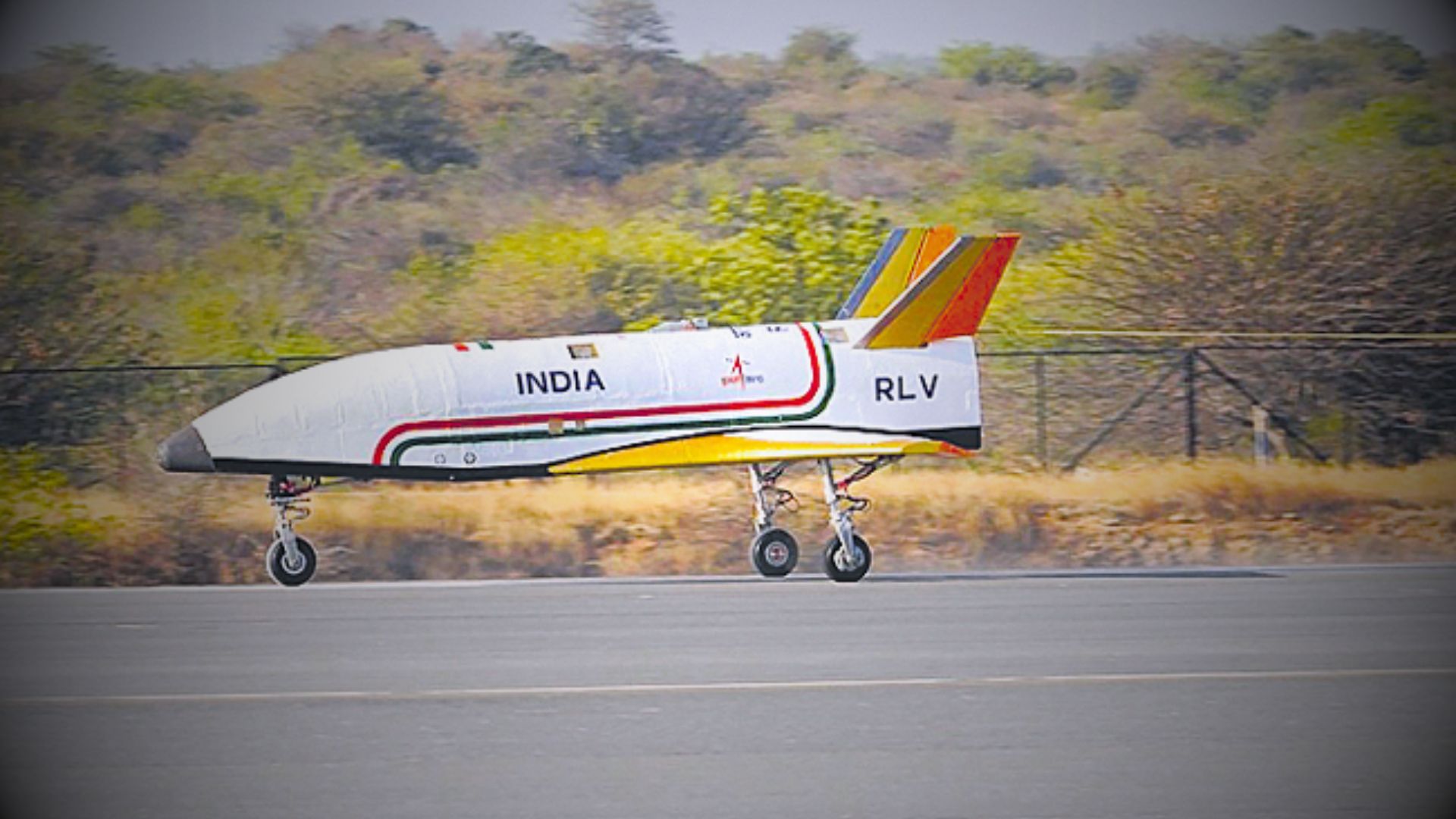
- 23 Mar 2024
Why is it in the News?
The Indian Space Research Organisation (ISRO) successfully conducted the Pushpak Reusable Landing Vehicle (RLV) LEX 02 landing experiment at the Aeronautical Test Range in Chitradurga recently.
What is a Reusable Landing Vehicle (RLV) LEX 02?
- Continuing our exploration into reusable landing vehicles, RLV-LEX-02 marks the second mission in our series conducted at the Aeronautical Test Range.
- Following the success of RLV-LEX-01 last year, this latest endeavor showcases the remarkable autonomous landing capability of our reusable launch vehicle (RLV).
- Notably, RLV-LEX-02 demonstrates the vehicle's ability to navigate and safely land from off-nominal initial conditions immediately upon release from a helicopter.
Methodology of the Experiment:
- The RLV LEX-02 mission showcased the autonomous landing prowess of our reusable launch vehicle under demanding circumstances following its release from a helicopter.
- Dubbed 'Pushpak', this winged vehicle was airlifted by an Indian Air Force Chinook helicopter and released from a height of 4.5 km.
- Navigating autonomously, it adeptly approached the runway, making precise cross-range corrections before executing a flawless landing.
- Utilizing a combination of its brake parachute, landing gear brakes, and nose wheel steering system, it safely came to a stop.
- Notably, the winged body and all flight systems previously employed in RLV-LEX-01 were repurposed for RLV-LEX-02 after undergoing necessary certification and clearances.
- This remarkable mission was executed collaboratively by the Vikram Sarabhai Space Centre (VSSC), the Liquid Propulsion System Centre (LPSC), and the ISRO Inertial Systems Unit (IISU).
What is the Reusable Launch Vehicle?
- The reusable launch vehicle represents a pioneering space plane design characterized by a low lift-to-drag ratio, which mandates high glide angles during approach and consequently requires landing at velocities reaching 350 kmph.
- Integral to its innovation are a multitude of indigenous systems developed meticulously. These encompass sophisticated navigation systems, leveraging pseudolite technology for precise localization, as well as instrumentation and sensor arrays, among other advancements, all spearheaded by ISRO.
Order of the Druk Gyalpo
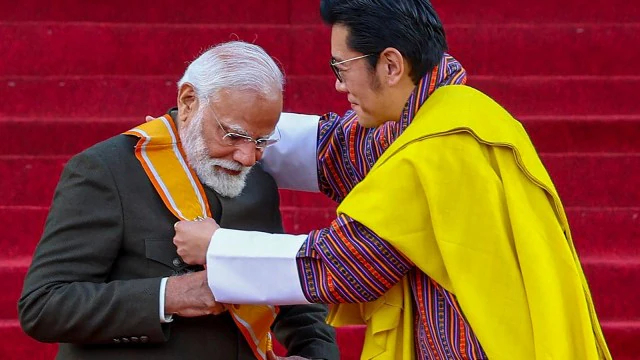
- 23 Mar 2024
Why is it in the News?
Prime Minister Narendra Modi recently received Bhutan’s highest civilian award, the ‘Order of the Druk Gyalpo’, during his two-day State visit to the neighboring nation.
What is the ‘Order of the Druk Gyalpo’ Award?
- The Order of the Druk Gyalpo, Bhutan's most prestigious civilian award, was recently conferred upon Indian Prime Minister Narendra Modi during his two-day State visit to the neighboring nation.
- As the first foreign Head of Government to receive this esteemed accolade, Prime Minister Modi joins a select group of individuals honored for their exceptional contributions to Bhutanese society, service, integrity, and leadership.
- According to the ranking and precedence established within Bhutan's honor system, the Order of the Druk Gyalpo represents the pinnacle of lifetime achievement, taking precedence over all other orders, decorations, and medals.
- Prime Minister Modi received the award in recognition of his outstanding contributions to strengthening India-Bhutan relations and his dedicated service to the Bhutanese nation and its people.
- Past recipients of the Order of the Druk Gyalpo include:
- Her Majesty The Royal Queen Grandmother Ashi Kesang Choden Wangchuck in 2008
- His Holiness Je Thrizur Tenzin Dendup in 2008, and
- His Holiness Je Khenpo Trulku Ngawang Jigme Choedra in 2018.
- With Prime Minister Modi's recent addition to this esteemed list, the Order of the Druk Gyalpo continues to symbolize Bhutan's appreciation for remarkable individuals who significantly impact the country and its people.
Netravati River
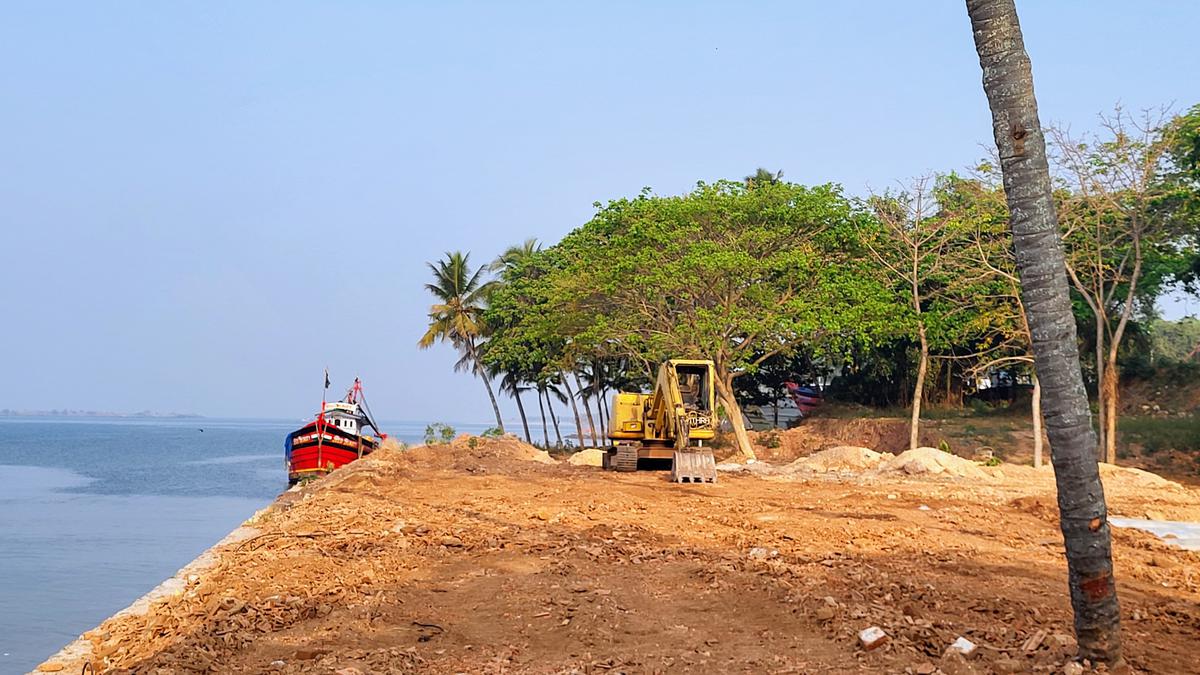
- 23 Mar 2024
Why is it in the News?
The principal bench of the National Green Tribunal (NGT) in New Delhi has initiated action on the Netravati Waterfront Promenade Development Project in Mangaluru.
About the Netravati River:
- The Netravati River, also known as Netravathi Nadi, originates from the Bangrabalige valley, Yelaneeru Ghat in Kudremukh, Chikkamagaluru district, Karnataka, India.
- It passes through the revered pilgrimage site Dharmasthala, earning recognition as one of India's sacred rivers.
- Converging with the Kumaradhara River at Uppinangadi, it eventually flows into the Arabian Sea, south of Mangalore city, serving as the primary water source for Bantwal and Mangalore.
- The Netravati railway bridge, a prominent structure, acts as the gateway to Mangalore.
- Historically known as the Bantwal River, it was documented as unfordable during the South-West Monsoon in the 1855 Gazetteer of Southern India.
- The river's navigability by small country craft and its influence on local geography and transport, including the naming of the Netravati Express train, underscores its significance in the region's history.
- Instances of flooding, notably in 1928 and 1974, have shaped the lives of residents, prompting relocations and resilience
About the National Green Tribunal:
- The National Green Tribunal (NGT) was established under the National Green Tribunal Act of 2010.
- While its principal seat is located in New Delhi, it also holds sessions in Bhopal, Pune, Kolkata, and Chennai.
- The NGT is entrusted with the responsibility of adjudicating applications or appeals, ensuring their final disposition within six months of filing.
Composition:
- The tribunal comprises a Chairperson, Judicial Members, and Expert Members, each serving a non-renewable term of five years.
- The appointment of the Chairperson is made by the Central Government in consultation with the Chief Justice of India (CJI).
- A Selection Committee, constituted by the Central Government, is responsible for appointing both Judicial and Expert Members.
- The tribunal can accommodate a minimum of 10 and a maximum of 20 full-time Judicial and Expert Members.
Powers & Jurisdiction:
- Established to efficiently handle cases concerning environmental protection and conservation of natural resources, including forests.
- It possesses appellate jurisdiction akin to a court.
- While not bound by the procedural formalities outlined in the Code of Civil Procedure, 1908, the NGT operates based on the principles of natural justice.
Shanghai Cooperation Organisation (SCO) Startup Forum
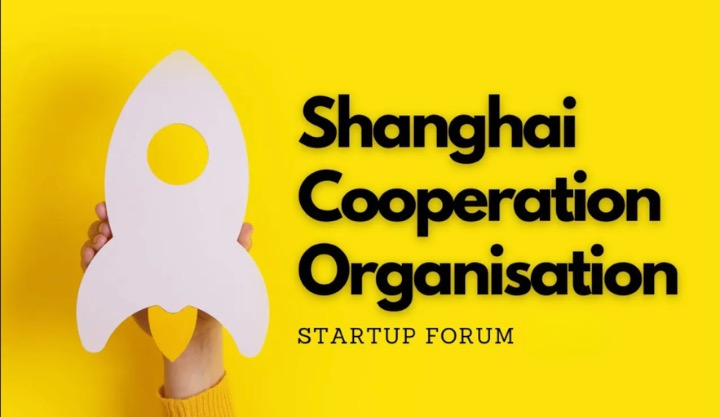
- 22 Mar 2024
Why is it in the News?
India will host the fifth meeting of the Shanghai Cooperation Organisation startup forum in January next year according to the commerce and industry ministry.
About the Shanghai Cooperation Organisation Startup Forum:
- The SCO Startup Forum is a platform for the stakeholders from the startup ecosystems from all SCO Member States to interact and collaborate.
- The entrepreneurial activities aim to empower the local startup communities in the SCO Member States.
- The SCO Startup Forum aims to create multilateral cooperation and engagement for startups among the SCO Member States.
- This engagement will empower the local startup ecosystems in the SCO Member States.
The following are the objectives of the engagement:
- Sharing of best practices to promote entrepreneurship and innovation to build knowledge-exchange systems
- Bringing Corporations and Investors across to work closely with startups and provide local entrepreneurs with much-needed support and market access
- Increasing scaling opportunities for startups by providing solutions in the field of social innovation and providing Governments with a plethora of innovative solutions
- Creating open procurement channels to enable matchmaking for procuring innovative solutions from startups
- Facilitating cross-border incubation and acceleration programs that will enable the startups to explore international markets and get focused mentorship.
Upcoming Events:
- India is set to host the second meeting of the Special Working Group for Startups and Innovation (SWG) in November 2024 and the SCO Startup Forum 5.0 in January 2025.
Past Initiatives:
- SCO Startup Forum 1.0: Established in 2020, laying the groundwork for multilateral cooperation among SCO Member States' startups.
- SCO Startup Forum 2.0: Held virtually in 2021, introducing the SCO Startup Hub, a centralized platform for the SCO startup ecosystem.
- SCO Startup Forum 3.0: Organized physically in 2023 by the Department for Promotion of Industry and Internal Trade (DPIIT), marking a significant milestone for SCO Member States' startup collaboration.
- 1st Meeting of the SWG: Led by India, the first meeting of the SCO Special Working Group on Startups and Innovation in 2023 focused on the theme 'Growing from Roots', emphasizing foundational growth within the startup ecosystem.
World Inequality Lab Report
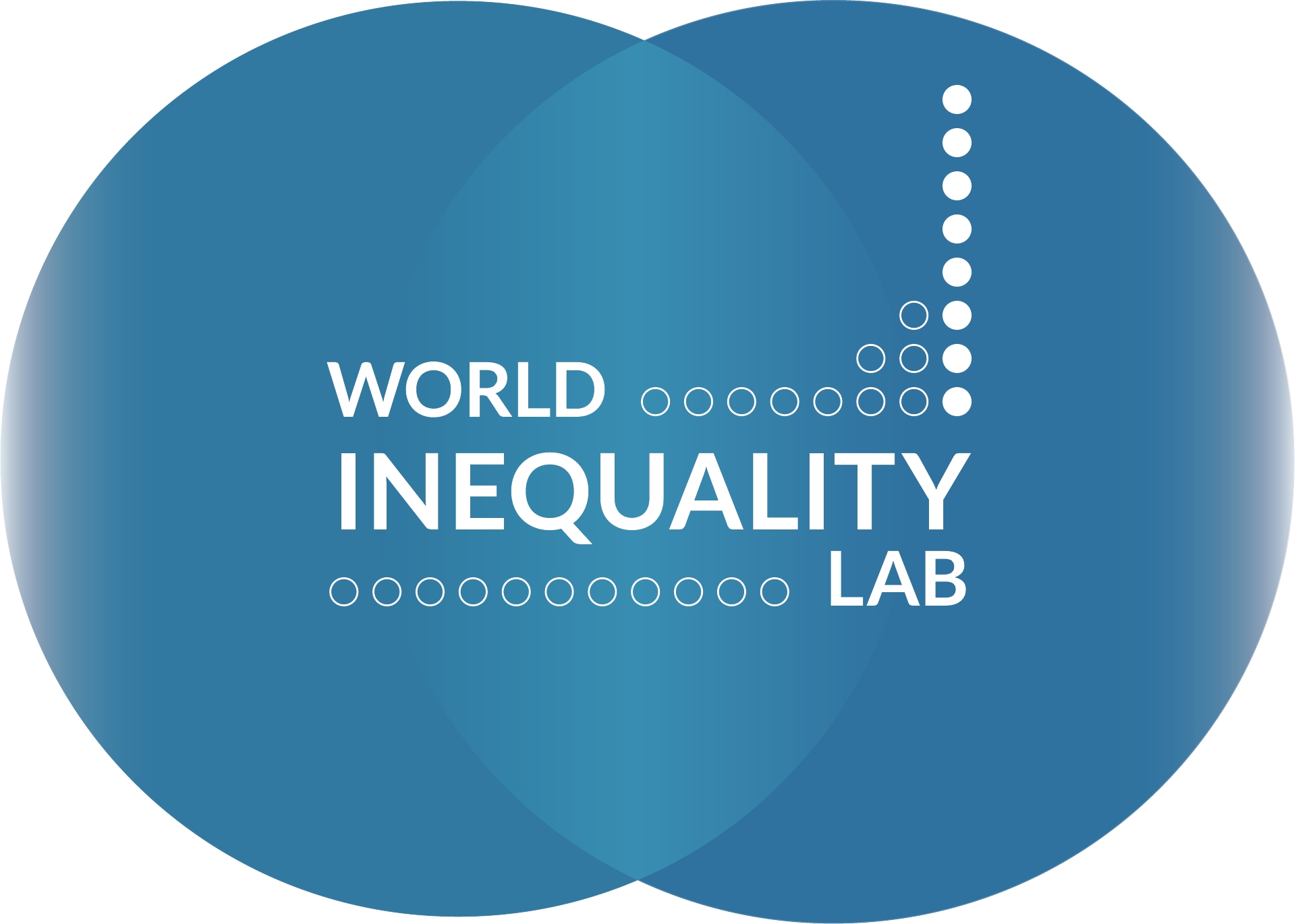
- 21 Mar 2024
Why is it in the News?
India’s top 1 percent income and wealth shares have reached historical highs and are among the very highest in the world, according to a paper released by World Inequality Lab.
What is the World Inequality Lab?
- The World Inequality Lab is a global research center that focuses on studying inequality and public policies that promote social, economic, and environmental justice.
The lab's main missions include:
- Expanding the World Inequality Database: The lab gathers and analyzes data on income, wealth, and capital asset distribution across various countries.
- Publishing research: The lab releases working papers, reports, and methodological handbooks to contribute to the understanding of global inequality dynamics.
- Collaborating with international researchers: The lab works with a network of researchers from around the world to compile and analyze data for the World Inequality Database.
- Promoting public debate: The lab aims to raise awareness about inequality by disseminating their findings and engaging in public discourse.
- The World Inequality Lab is known for producing the World Inequality Report, which offers up-to-date and comprehensive data on different aspects of inequality globally, including wealth, income, gender, and ecological inequality.
Key Insights from the Research Paper Released by the WIL:
- A team of four economists, including Nitin Kumar Bharti, Lucas Chancel, Thomas Piketty, and Anmol Somanchi, has compiled comprehensive time series data on income and wealth inequality in India.
- Titled "The Billionaire Raj," the paper asserts that India's current level of inequality surpasses that of the British Raj era.
- In the fiscal year 2022-23, India witnessed its highest recorded levels of income and wealth concentration among the top 1%: 22.6% and 40.1%, respectively.
- India's top 1% income share is noted to be among the highest globally, even surpassing countries like South Africa, Brazil, and the US.
- While India's top 1% holds a significant share of income, the wealth share of this segment is comparatively lower than in South Africa and Brazil.
- The paper accentuates the stark disparities among various income groups in India.
- For instance, the wealthiest 1% possess an average wealth of Rs 5.4 crore, 40 times the national average, whereas the bottom 50% and the middle 40% hold significantly lower amounts: Rs 1.7 lakh (0.1 times the national average) and Rs 9.6 lakh (0.7 times the national average), respectively.
- At the pinnacle of the wealth distribution, approximately 10,000 individuals out of 92 million Indian adults possess an average wealth of Rs 2,260 crore, a staggering 16,763 times the average Indian wealth.
Key Recommendations from the Research Paper:
- The research paper has meticulously compiled data from various sources to construct its estimates on income and wealth inequality.
- Given the absence of official income estimates and wealth statistics based on surveys in India, the paper underscores the necessity for reliable data sources in these domains.
- To tackle the issue of inequality in India, the paper proposes a range of policy interventions.
- These measures encompass a comprehensive overhaul of the tax structure to encompass both income and wealth considerations, alongside substantial public investments in critical areas such as healthcare, education, and nutrition.
- A notable suggestion outlined in the report is the implementation of a "super tax" of 2% on the net wealth of the 167 wealthiest families recorded in 2022-23. This levy is projected to generate revenues equivalent to 0.5% of the national income.
- Furthermore, the imposition of such a tax is envisaged not only to create fiscal leeway for essential investments but also to serve as an effective tool in combatting entrenched inequality within the society.
Project GR00T

- 21 Mar 2024
Why is it in the News?
AI chip leader Nvidia on Tuesday (March 19) announced Project GR00T or Generalist Robot 00 Technology, which promises to revolutionize the evolution of humanoid robots.
What is Project GR00T?
- Project GR00T stands for Generalist Robot 00 Technology.
- It is essentially a general-purpose foundation model for humanoid robots.
- This ambitious project aims to create a general-purpose foundation model for humanoid robots, enabling them to understand natural language, learn new skills from observing humans, and solve various tasks in real-time.
- Robots built on this platform are designed to understand natural language and emulate movements by observing human actions, such as instantly learning coordination, dexterity, and other skills.
- This can help the robots navigate and engage with the real world around them.
- The goal of Project GR00T is to advance the field of embodied artificial general intelligence (AGI) and drive breakthroughs in robotics.
- NVIDIA intends to leverage its expertise in AI and its technological resources to develop this foundational model, which would provide humanoid robots with human-like abilities, such as emotion, reaction, and movement.
The Potential Consequences of Project GR00T and Humanoid Robots in the Workforce:
- As humanoid robots, such as those envisioned by NVIDIA's Project GR00T, become more advanced and capable of handling various hazardous or repetitive tasks, concerns arise over potential job displacement.
- For instance, Nvidia's partnership with Hippocratic AI to develop AI-powered healthcare agents may lead to a reduction in the demand for nurses.
- However, proponents argue that these robots can serve as valuable aids for humans, enhancing their quality of life and complementing their skills rather than supplanting them entirely.
- Consequently, the impact of humanoid robots on the workforce may ultimately depend on their successful integration into existing labor structures, as well as the willingness and ability of society to adapt to this transformative technology.
Pusa Basmati Rice
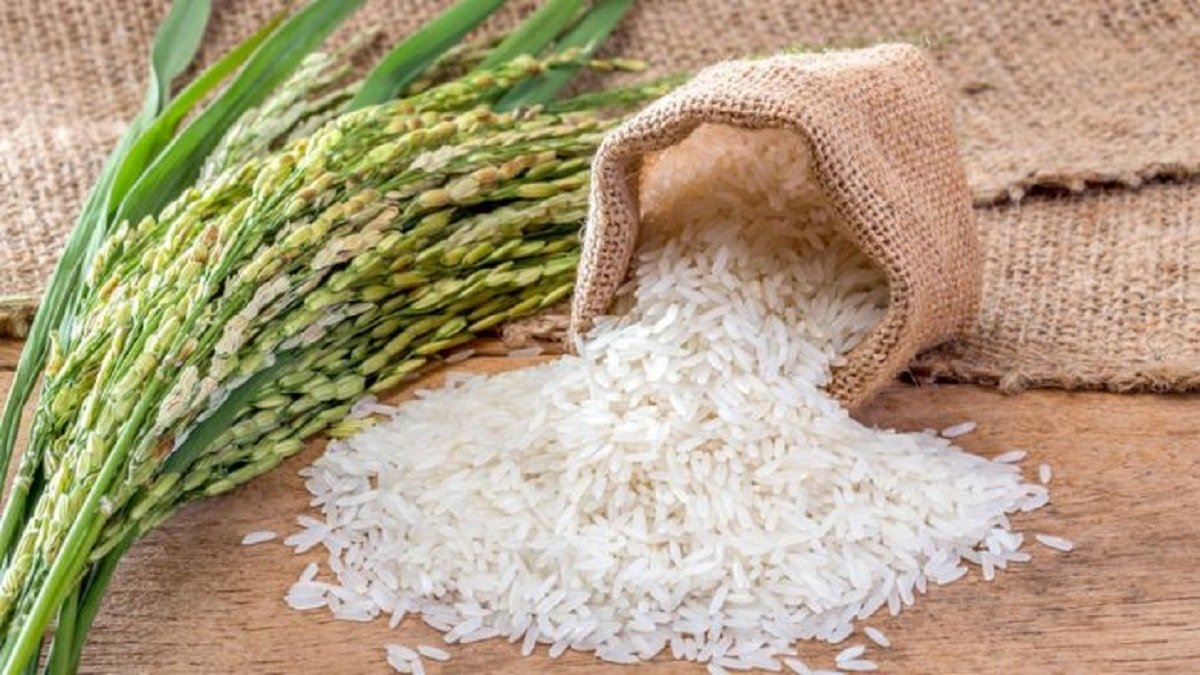
- 21 Mar 2024
Why is it in the News?
Even as basmati rice exports from the country are poised to scale a new high, scientists at the Indian Agricultural Research Institute (IARI) have red-flagged the “illegal” cultivation of its blockbuster varieties in Pakistan.
Unauthorized Cultivation and Export of Pusa Basmati Rice Varieties in Pakistan:
- Despite being officially registered and protected Indian varieties, several IARI-bred Basmati rice varieties, such as Pusa Basmati 1121, Pusa Basmati-6, and Pusa Basmati 1509, are being illegally cultivated and marketed in Pakistan.
- Recent YouTube videos even feature newer IARI varieties like Pusa Basmati-1847, PB-1885, and PB-1886, released in late 2021.
- Pakistan's unauthorized Basmati exports have been substantial, with 7.58 lt ($694.55 million) in 2021-22 and 5.95 lt ($650.42 million) in 2022-23 (July-June).
- This growth is partly due to the depreciation of the Pakistani rupee, allowing the country to offer lower export prices than India.
- The proliferation of these protected varieties in Pakistan can be attributed to the ease of seed multiplication.
- With just a small quantity of seeds, large-scale cultivation can be established within two years of the variety's release in India.
- This unauthorized cultivation not only undermines India's intellectual property rights but also impacts the competitiveness of India's Basmati rice exports in the global market.
What is the Basmati Crop Improvement Program?
- The Basmati Crop Improvement Program focuses on refining the unique qualities of Basmati rice, such as its distinct grain characteristics, cooking properties, and pleasing aroma.
- IARI has played a crucial role in the genetic enhancement, leading to the development of high-yielding, semi-dwarf, and photo-insensitive Basmati varieties like Pusa Basmati 1.
- These improvements have significantly reduced the crop duration from 160 to 120 days and increased productivity from 2.5 to 6-8 tons per hectare.
- As a result, these advanced Basmati varieties account for approximately 90% of India's projected $5.5 billion exports in 2023-24.
- This achievement contributes to substantial foreign exchange earnings and economic growth for the country.
Key Features of IARI-Developed Basmati Rice Varieties:
- IARI has cultivated various Basmati rice varieties with distinct characteristics, including:
- Pusa Basmati 1121: Known as the world's longest Basmati rice, it matures in 145 days with an average yield of 45 q/ha.
- Pusa Basmati 1509: Derived from Pusa 1121 x Pusa 1301, this variety addresses Pusa Basmati 1121's weaknesses, matures in 115 days, and yields 5 tons/ha.
- Improved Pusa Basmati 1 (Pusa 1460): This variety, the first product of molecular breeding in Indian rice, is an enhanced Pusa Basmati 1 with bacterial leaf blight resistance.
- Pusa Basmati 6 (Pusa 1401): Offering superior grain quality, this variety improves upon Pusa 1121's yielding ability, agronomy, and cooking quality.
- Pusa RH10: The world's first superfine grain aromatic rice hybrid, it was released in 2001 for commercial cultivation in specific irrigated ecosystems.
Registration and Cultivation Areas of Pusa Basmati Rice in India:
- All Pusa Basmati rice varieties are officially recognized under the Seeds Act 1966 and can be cultivated within the designated Geographical Indication (GI) area of Basmati rice in India, encompassing seven northern states.
- These varieties are further registered under the Protection of Plant Varieties and Farmers' Rights Act 2001, which permits only Indian farmers to sow, save, re-sow, exchange, or share the seeds of protected/registered varieties.
State of Global Climate Report 2023
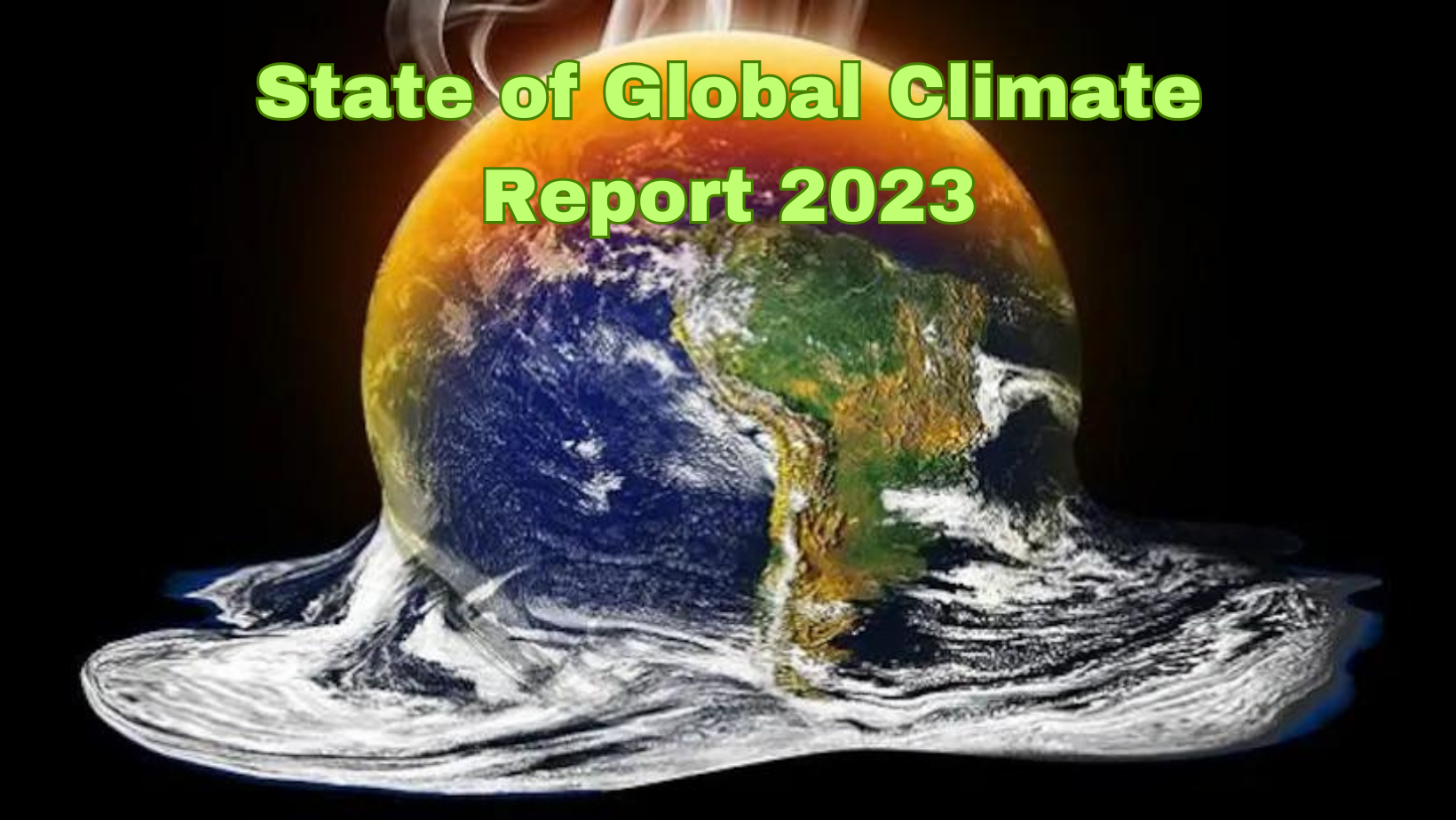
- 20 Mar 2024
Why is it in the News?
In line with a host of observations by climate agencies in the preceding three months, the World Meteorological Organisation (WMO) has officially confirmed 2023 to be the hottest year on record.
About the State of Global Climate Report 2023:
- Published annually by the World Meteorological Organization (WMO), the State of Global Climate Report provides a detailed analysis of the Earth's climate system.
- Contributors to the report include various UN organizations, National Meteorological and Hydrological Services, Global Data and Analysis Centers, Regional Climate Centres, the World Climate Research Programme (WCRP), and more.
Highlights of the 2023 Report:
- Record-Breaking Global Temperatures: 2023 was the hottest year on record, with a global average near-surface temperature of 1.45°Celsius (±0.12°C) above the pre-industrial baseline.
- The past ten years were also the warmest decade recorded.
- Extensive Marine Heatwaves: Nearly one-third of the global ocean experienced a marine heatwave on an average day in 2023.
- Over 90% of the ocean had faced heatwave conditions at some point during the year, negatively impacting ecosystems and food systems.
- Unprecedented Glacier Ice Loss: Preliminary data reveals the largest loss of ice since 1950 for the global set of reference glaciers, driven by extreme melt in western North America and Europe.
- Surge in Renewable Energy Capacity: Renewable capacity additions in 2023 increased by almost 50% from 2022, totaling 510 gigawatts (GW) and marking the highest rate in the past two decades.
- These findings emphasize the pressing need to address climate change through effective international cooperation, policymaking, and sustainable practices.
About the World Meteorological Organisation (WMO):
- The World Meteorological Organization (WMO) is a specialized agency of the United Nations that fosters international cooperation in atmospheric science, climatology, hydrology, and geophysics.
- Founded in 1950, WMO originated from the International Meteorological Organization established in 1873 to facilitate the exchange of weather data and research.
- Today, WMO comprises 193 member countries and territories and promotes the free exchange of meteorological and hydrological data, information, and research.
- By collaborating with various partners, WMO contributes to environmental protection, climate change mitigation, and sustainable development efforts worldwide.
- Headquarters: Geneva, Switzerland.
Small-Scale LNG (SSLNG)
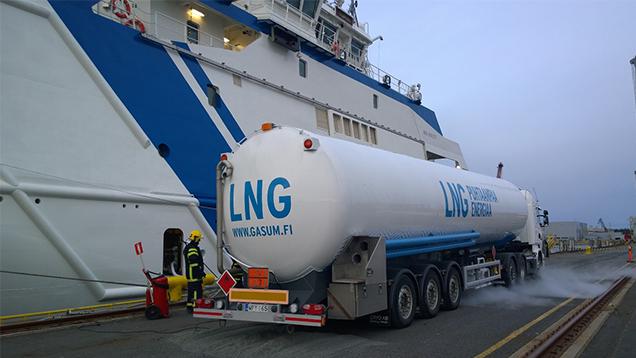
- 20 Mar 2024
Why is it in the News?
India's largest gas utility GAIL (India) Ltd commissioned the country's first SSLNG unit at its Vijaipur complex in Madhya Pradesh recently.
India Unveils Its First Small-Scale LNG Plant:
- In a significant step towards a cleaner energy mix, GAIL (India) Ltd. has commissioned India's first Small-Scale LNG (SSLNG) plant in Vijaipur, Madhya Pradesh.
- This plant will produce 36 tonnes of Liquefied Natural Gas (LNG) daily, utilizing cutting-edge technology like treatment skids and liquefaction skids to convert natural gas into LNG.
- As part of India's commitment to increasing the proportion of natural gas in its primary energy mix from 6% to 15% by 2030, the SSLNG plant will play a pivotal role in reducing pollution emissions while catering to the nation's growing energy demands.
- This milestone achievement paves the way for a greener future and positions India as a significant player in the global LNG landscape.
What is Small-Scale LNG?
- Small-scale LNG (SSLNG) is an emerging industry that offers a novel approach to natural gas distribution.
- While there is no standard international definition, SSLNG typically involves the liquefaction and transportation of natural gas in smaller quantities using specialized trucks and vessels.
- This allows for the supply of LNG to industrial and commercial consumers in regions without pipeline connectivity.
- SSLNG can be sourced from existing large-scale LNG import terminals or small liquefaction plants in gas-rich locations.
- End-users regasify the LNG using small vaporizers for traditional use cases like supplying Compressed Natural Gas (CNG) for vehicles and piped gas for households and industries.
- Alternatively, LNG can be supplied in its liquid form for direct use.
Benefits of Small-Scale LNG (SSLNG):
- Expanded Accessibility: SSLNG overcomes the constraints of traditional pipeline infrastructure, enabling natural gas delivery to regions previously lacking access.
- This opens new avenues for cleaner fuel alternatives and widespread energy availability.
- Operational Flexibility: SSLNG's modular design allows for rapid deployment in response to local demand fluctuations, making it an ideal solution for remote locations, industrial environments, and diverse transportation requirements.
- Sustainability Promotion: By fostering the adoption of cleaner fuels, SSLNG significantly reduces emissions in various transportation sectors, including trucks, buses, and marine vessels. This contributes to a greener future and combats climate change.
- Strengthened Energy Security: Decentralized SSLNG distribution systems diversify fuel sources and bolster energy security, ensuring reliable and stable energy supply amid global fluctuations and uncertainties.
Challenges of Small-Scale LNG (SSLNG) Implementation:
- Vehicle Availability Constraints: Limited options for LNG-powered vehicles impede the widespread adoption of LNG as a fuel source, underscoring the need for increased production and diversification of vehicle models.
- Insufficient Retail Infrastructure: The lack of a well-established LNG retail network hinders convenient consumer access to LNG fuel, emphasizing the importance of infrastructure expansion and enhancement.
- Higher Upfront Investment: The comparatively higher initial costs of LNG vehicles compared to traditional diesel options may deter potential buyers, necessitating innovative financial solutions and incentives.
- Financing Barriers: The absence of dedicated financing options for LNG vehicles poses obstacles for interested buyers, requiring tailored financial instruments to support SSLNG uptake.
- Restricted Pipeline Coverage: SSLNG faces logistical challenges in areas without existing natural gas pipeline networks, highlighting the need for infrastructure development to extend its reach to remote regions.
- Regulatory and Permitting Hurdles: SSLNG projects may encounter regulatory and permitting setbacks, including environmental and safety concerns, potentially prolonging project timelines and inflating costs.
- Addressing these challenges is essential for expediting SSLNG implementation and fostering its growth.
Reverse Flipping
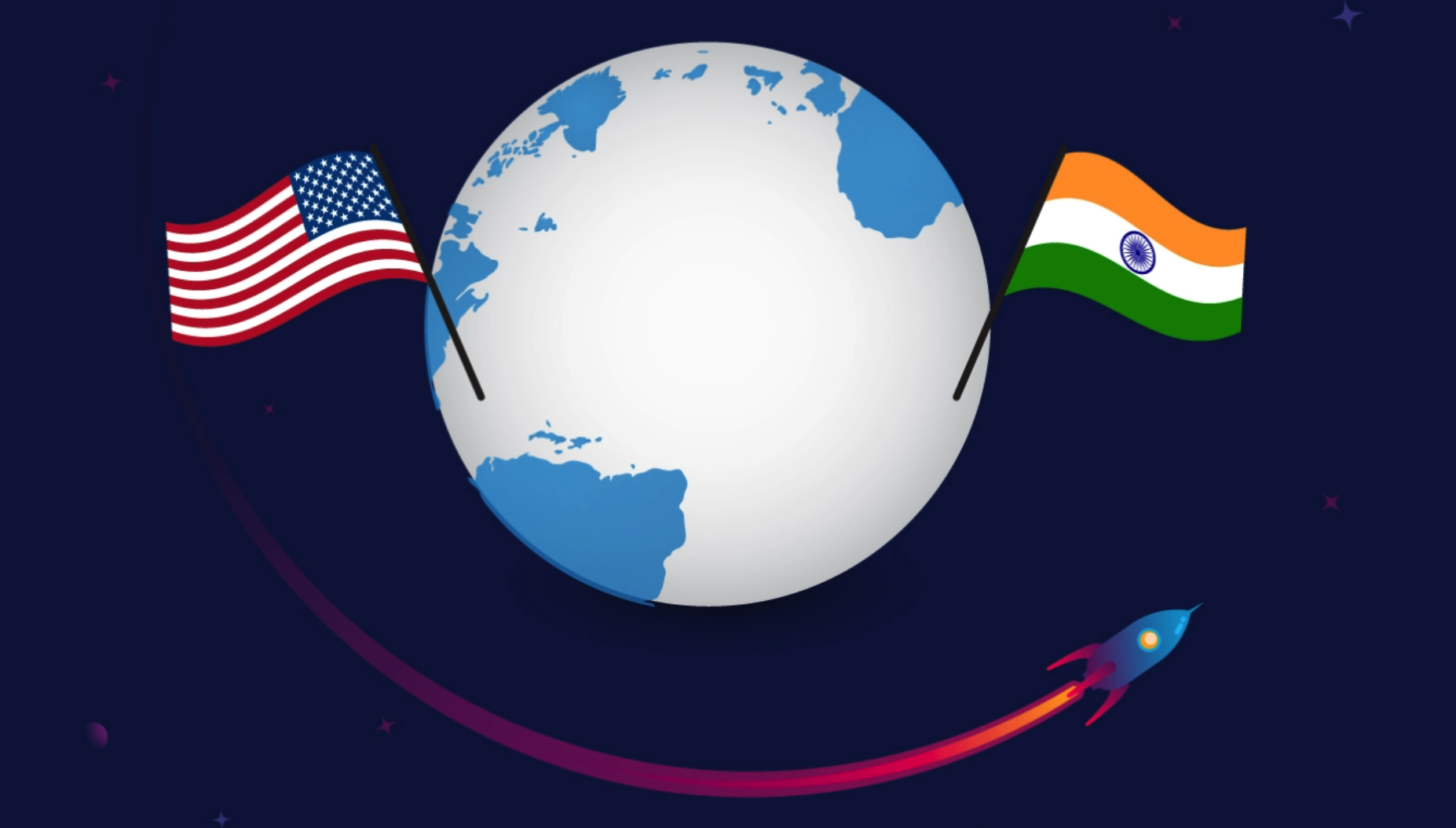
- 20 Mar 2024
Why is it in the News?
Payments major Pine Labs and quick commerce firm Zepto are among the startups looking to relocate their headquarters from foreign shores to India, to capitalize on the country's burgeoning tech landscape.
What is Reverse Flipping?
- Reverse flipping is a growing trend where overseas startups relocate their domicile to India and list on Indian stock exchanges.
- The primary motivation behind this shift is the potential for a higher valuation and more certain exit opportunities in India's thriving economic landscape.
Several factors contribute to the rise of reverse flipping:
- Access to a large, expanding economy: India's significant market size and sustained economic growth offer foreign startups attractive prospects for business expansion and success.
- Abundant venture capital: India's substantial venture capital resources provide a strong financial foundation for startups, fueling innovation and growth.
- Favorable tax policies: The country's tax regulations encourage foreign startups to establish operations in India, helping them maximize profits and minimize costs.
- Enhanced intellectual property protection: India's robust IP protection framework fosters innovation and creativity, safeguarding the unique ideas and technologies of startups.
- Skilled, youthful workforce: The availability of a talented, young, and educated population provides startups with a valuable human resource pool to drive growth and success.
- Supportive government policies: The Indian government actively promotes entrepreneurship and innovation through various initiatives and policies, creating a conducive environment for startups.
- The Economic Survey 2022-23 acknowledged the importance of reverse flipping and suggested measures to expedite the process, including simplifying tax vacation procedures, ESOP taxation, capital movement, and reducing tax layers.
- These efforts aim to further enhance India's appeal as a destination for foreign startups and foster economic growth.
What is Flipping?
- Flipping refers to the process by which an Indian company becomes a 100% subsidiary of a foreign entity after moving its headquarters overseas, involving a transfer of intellectual property (IP) and other assets.
- This transforms an Indian startup into a fully-owned subsidiary of a foreign entity, with founders and investors maintaining their ownership through the new overseas structure by exchanging their shares.
The process of flipping poses several concerns for India:
- The brain drain of entrepreneurial talent: As Indian startups move their operations overseas, India experiences a loss of innovative and entrepreneurial talent, which could otherwise contribute to the country's economic growth and development.
- Value creation in foreign jurisdictions: Flipping redirects potential value creation to foreign countries, depriving India of the economic benefits that could result from successful startups and innovations.
- Loss of Intellectual Property: When companies relocate and transfer their intellectual property overseas, India loses valuable IP assets, undermining the country's competitive advantage and innovation potential.
- Reduced tax revenue: Flipping also contributes to decreased tax revenue for India as companies shift their operations and profits to other jurisdictions, which may have more favorable tax policies.
Haemodialysis

- 19 Mar 2024
Why is it in the News?
Findings from a nationwide private hemodialysis network show that there is a variation in the survival of patients receiving hemodialysis in India depending on various factors, and stress on the need to standardize dialysis care across centers.
What is Hemodialysis?
- Haemodialysis, also known as dialysis, is a medical procedure that helps individuals with kidney failure by removing waste products and excess fluid from their blood.
- This procedure essentially performs the functions of the kidneys, which are responsible for filtering waste and maintaining the body's electrolyte balance.
Key points about hemodialysis:
- Process: During hemodialysis, a patient's blood is circulated through a machine with a semipermeable membrane, called a dialyzer or an artificial kidney.
- The dialyzer filters out waste products, such as urea and creatinine, and excess fluid from the blood, which is then discarded, while essential components are returned to the patient's bloodstream.
- Access: To perform hemodialysis, a patient typically requires vascular access, which is a surgically created connection between an artery and a vein, usually in the arm.
- This connection allows for the efficient flow of blood from the patient to the dialysis machine and back.
- Duration: Haemodialysis treatment typically lasts for around 3-5 hours and is performed several times per week, depending on the patient's needs and kidney function.
- Indications: Haemodialysis is prescribed for patients with end-stage kidney failure, also known as end-stage renal disease (ESRD), who need immediate intervention while waiting for a kidney transplant or when a transplant is not a suitable option.
- Side effects: Some common side effects of hemodialysis include low blood pressure, muscle cramps, itching, and fatigue.
- Complications such as infection, access problems, and blood clotting may also occur, but these risks can be minimized with proper medical supervision and management.
- In summary, hemodialysis is a life-sustaining treatment for patients with kidney failure, offering a means to maintain their health and well-being despite the loss of kidney function.
SAKHI App To Assist Gaganyaan Crew

- 19 Mar 2024
Why is it in the News?
The Vikram Sarabhai Space Centre (VSSC), the Indian Space Research Organisation (ISRO) facility at Thumba in Thiruvananthapuram, has developed a multi-purpose app that will help astronauts on the Gaganyaan space flight mission carry out a range of tasks such as looking up vital technical information or communicating with one another.
About SAKHI App:
- The Vikram Sarabhai Space Centre (VSSC), an ISRO facility in Thumba, Thiruvananthapuram, has created the versatile 'SAKHI' app for astronauts on the Gaganyaan space flight mission.
- SAKHI stands for 'Space-borne Assistant and Knowledge Hub for Crew Interaction'.
Purpose:
- During the mission, the app will assist Gaganyaan crew members in various tasks such as accessing vital technical information and communicating with each other.
Utility:
- Health Monitoring: It will monitor key health parameters like blood pressure, heart rate, and oxygen saturation, providing crucial insights into the crew's physical condition during the mission.
- Additionally, it will remind them of hydration, dietary schedules, and sleep patterns.
- Connectivity:
- Astronauts can use the app to maintain mission logs in various formats, including voice recordings, texts, and images.
- It will ensure seamless communication between the crew, the onboard computer, and ground-based stations.
- Current Status: An engineering model of the custom-built hand-held smart device featuring SAKHI has been tested, with the development of a flight model underway.
About the Gaganyaan Mission:
- The primary objective of the mission is to demonstrate the capability to launch and safely return three crew members to low Earth orbit.
- The Launch Vehicle Mark-3 (LVM3) is designated as the launch vehicle for the Gaganyaan mission.
- Crew Escape System (CES): A vital component of the mission, CES is powered by quick-acting, high-burn rate solid motors.
- It ensures the safe evacuation of the Crew Module and crew in case of emergencies during launch or ascent.
- Orbital Module: Comprising the Crew Module (CM) and Service Module (SM), the Orbital Module orbits the Earth, providing safety and support throughout the mission phases.
- Crew Module (CM): Designed to offer a habitable space with Earth-like conditions for the crew during their time in space.
- Service Module (SM): This module supports the CM during orbit, containing essential systems such as thermal, propulsion, power, avionics, and deployment mechanisms.
- This will mark ISRO's inaugural manned spaceflight mission, joining the ranks of the US, Russia, and China, which have previously conducted human spaceflights.
Nilgiris Forest Fire
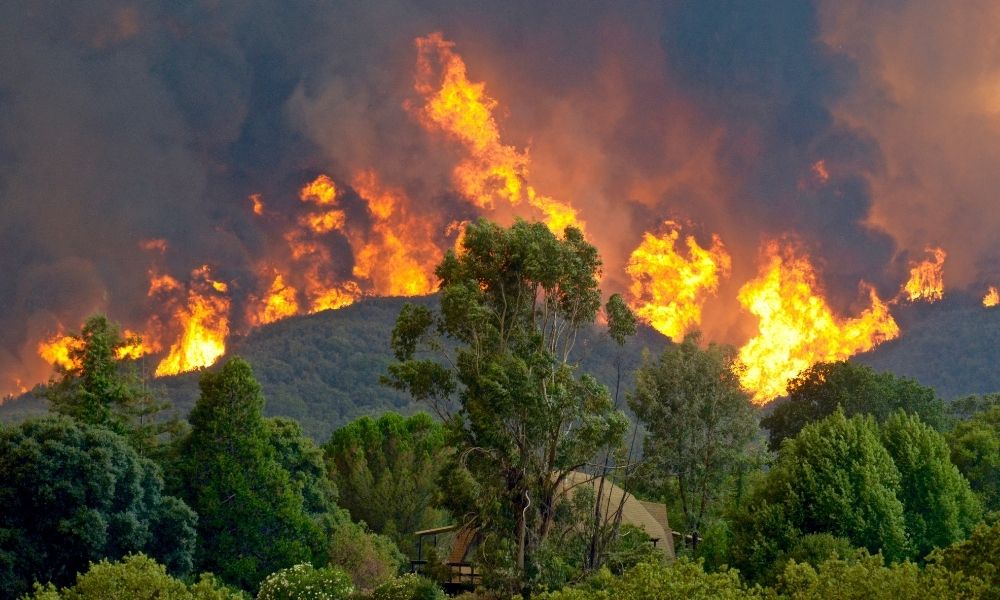
- 19 Mar 2024
Why is it in the News?
The Indian Air Force (IAF) has deployed its assets to aid the local administration in dousing the raging forest fire that started recently in Tamil Nadu's Nilgiris district.
What is a Forest Fire?
- A forest fire, also known as a wildfire, is an uncontrolled fire that occurs in forested areas or other vegetated landscapes.
- These fires can spread rapidly, fueled by dry vegetation, high temperatures, low humidity, and strong winds.
- Once ignited, they can quickly grow in size, consuming vast areas of land, vegetation, and wildlife habitat.
- Wildfires pose significant risks to human safety, property, ecosystems, and air quality.
Causes of Forest Fire:
- Forest fires are caused by Natural causes as well as man-made causes.
- Natural causes: Many forest fires start from natural causes such as lightning which sets trees on fire.
- However, rain extinguishes such fires without causing much damage. High atmospheric temperatures and dryness (low humidity) offer favorable circumstances for a fire to start.
- Man-made causes: Fire is caused when a source of fire like naked flame, cigarette or bidi, electric spark, or any source of ignition comes into contact with inflammable material.
- Natural causes: Many forest fires start from natural causes such as lightning which sets trees on fire.
Types of forest fire:
- Surface Fire: This type of forest fire spreads primarily along the ground, consuming surface litter such as dry leaves, twigs, and grasses.
- The flames engulf the forest floor as they advance.
- Underground Fire: Underground fires, also known as muck fires, burn with low intensity beneath the surface, consuming organic matter and surface litter.
- These fires often spread slowly and can continue burning for months, destroying vegetative cover.
- Ground Fire: Ground fires occur in sub-surface organic fuels such as duff layers under forest stands or organic soils of swamps.
- They burn herbaceous growth and organic matter beneath the surface, often transitioning from smoldering underground fires.
- Crown Fire: Crown fires involve the burning of the crowns of trees and shrubs, sustained by a surface fire.
- They are particularly hazardous in coniferous forests, where resinous material can fuel intense flames.
Frequency of Forest Fire in India:
- Seasonality: Forest fires in India are prevalent from November to June, with peak activity typically occurring in April and May, encompassing both small-scale and large-scale incidents.
- Vulnerability: The 2019 India State of Forest Report (ISFR) highlighted that over 36% of the country's forest cover is susceptible to frequent fires, with 4% categorized as extremely prone and an additional 6% as highly fire-prone.
- Affected Regions: Dry deciduous forests experience severe fires, with Northeast India, Odisha, Maharashtra, Jharkhand, Chhattisgarh, and Uttarakhand being particularly vulnerable areas.
- Recent Incidents: Notable fire outbreaks occurred in 2021 across Uttarakhand, Himachal Pradesh, Nagaland-Manipur border, Odisha, Madhya Pradesh, and Gujarat, including wildlife sanctuaries.
- In 2023, Goa faced large bushfires under investigation for potential human causes.
- 2024 Trends: Recent reports indicate heightened fire activity in Mizoram, Manipur, Assam, Meghalaya, and Maharashtra, with increased incidents along the Konkan belt, coastal Gujarat, southern Rajasthan, Madhya Pradesh, coastal Odisha, Jharkhand, Andhra Pradesh, Karnataka, and Tamil Nadu.
- Southern India: While Andhra Pradesh and Telangana witness fire incidents, forests in southern India, primarily evergreen or semi-evergreen, are less prone to fires, although Tamil Nadu has experienced recent wildfires.
Reasons Behind This Year's Fires:
- Climate Factors: Dry conditions, high temperatures, clear skies, and light winds have fueled forest fires in southern India.
- Temperature Trends: February 2024 was exceptionally hot, making it the hottest month in southern India since 1901.
- Heat Accumulation: Above-average temperatures over the past months led to a buildup of heat, drying out biomass in forests ahead of the summer season.
- Excess Heat Factor: Western Andhra Pradesh and Karnataka are experiencing higher-than-normal EHF values, increasing the risk of heat waves.
- Mild Aridity: Lack of rain and high temperatures have classified most districts in southern India as mildly arid.
Equity Issues in IPCC Reports
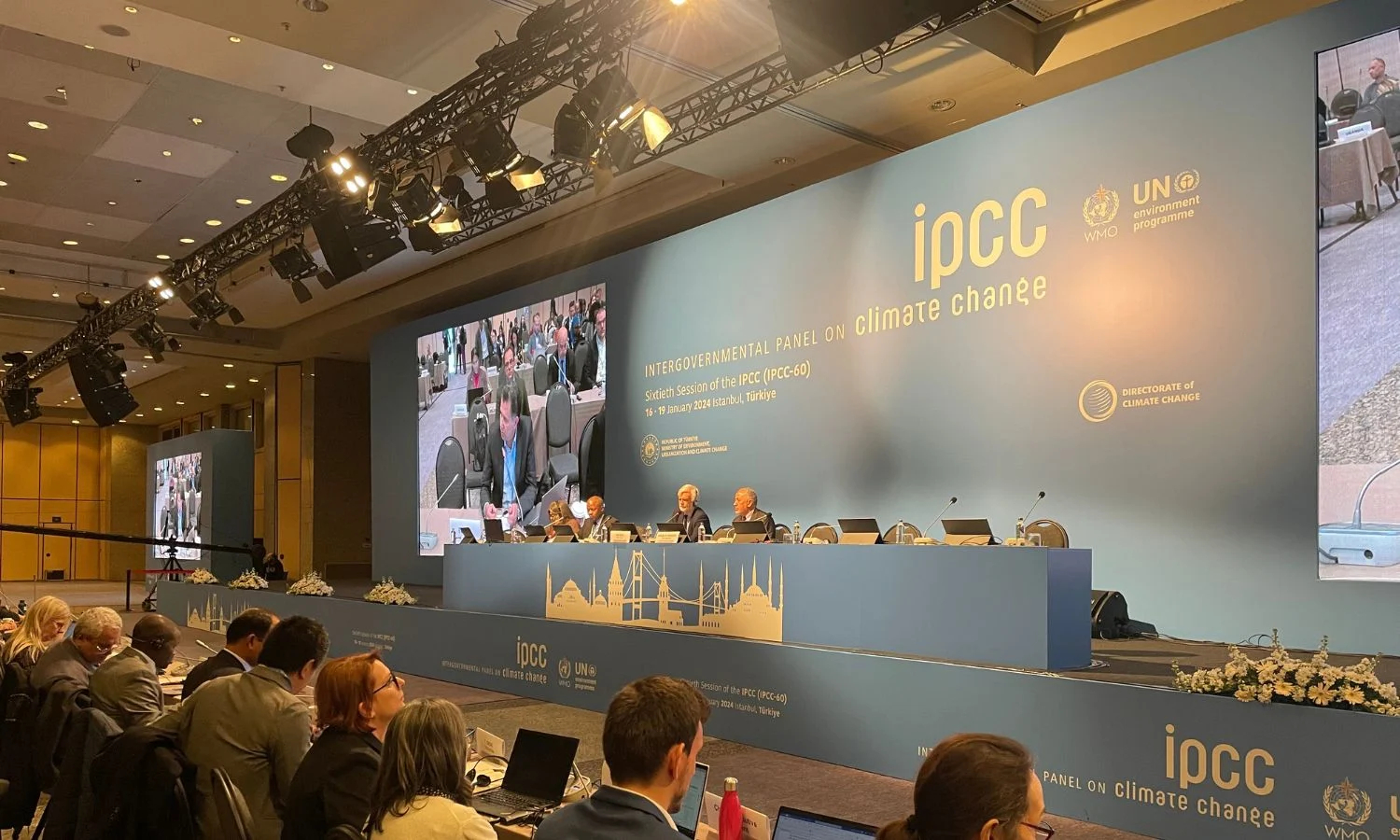
- 18 Mar 2024
Why is it in the News?
In a study published recently, researchers analyzed more than 500 future emissions scenarios the UN Intergovernmental Panel on Climate Change (IPCC) assessed in its latest reports.
About the Intergovernmental Panel on Climate Change (IPCC):
- The IPCC was created in 1988 by the World Meteorological Organization (WMO) and the United Nations Environment Programme (UNEP).
- It is the leading international body for the assessment of climate change.
- It is a key source of scientific information and technical guidance to the United Nations Framework Convention on Climate Change (UNFCCC) and the Paris Agreement.
- The IPCC provides governments with scientific information for use in developing climate policies.
- The IPCC currently has 195 members.
- The IPCC does not undertake new research. Instead, it synthesizes published and peer-reviewed literature to develop a comprehensive assessment of scientific understanding.
- These assessments are published in IPCC reports.
- They are subject to multiple drafting and review processes to promote an objective, comprehensive, and transparent assessment of current knowledge.
- The IPCC’s work is guided by principles and procedures that govern all main activities of the organization.
- IPCC member governments and observer organizations nominate experts and the IPCC's scientific governing body, the IPCC Bureau, selects authors and editors with expertise in a range of scientific, technical, and socio-economic fields.
What are IPCC Assessment Reports?
- Typically, IPCC reports comprise three Working Group reports:
- One on physical science
- One on climate adaptation, and
- One on mitigation action.
- One synthesis report consolidates findings from the three Working Group reports.
- Then there are thematic special reports.
- Each report assesses climate-related scientific literature to capture the state of scientific, technical, and socio-economic knowledge on climate change.
- The IPCC is currently in its Seventh Assessment cycle (AR7).
How Does it Assess Future Scenarios?
- The IPCC uses ‘modelled pathways’ to estimate what it will take to limit the warming of the earth’s surface.
- These pathways are drawn using Integrated Assessment Models (IAMs) that describe human and earth systems.
- IAMs are complex models that examine possible futures of the energy and climate systems and economies.
- Its macroeconomic models can point to future growth levels in terms of GDP;
- Its energy models can project future consumption
- Vegetation models can examine land-use changes; and
- Earth-system models use the laws of physics to understand how climate evolves.
- With such integration across disciplines, IAMs are meant to provide policy-relevant guidelines on climate action.
- However, these models also have shortcomings. They prioritize least-cost assessments — for example, the absolute cost of setting up a solar plant or undertaking afforestation in India is lower than in the U.S.
- However, experts have said they could exercise the option of enabling countries to equitably share the burden of action, where the richest undertake more drastic mitigation action more immediately.
About the Latest Study:
- Conducted by a team of specialists from Bengaluru and Chennai, the study scrutinized 556 scenarios outlined in the IPCC's AR6 report.
- Their findings indicate that by 2050, per-capita GDP in Sub-Saharan Africa, South Asia, West Asia, and other parts of Asia will remain below the global average.
- Collectively, these regions account for 60% of the global population.
- Additionally, the study highlighted disparities in the consumption of goods and services, as well as energy and fossil fuel consumption, between the Global North and the Global South.
Why Does Equity Matter?
- Equity is crucial in climate action as per the UNFCCC, which mandates developed nations to lead in combating climate change.
- However, current modeling approaches often overlook equity, burdening poorer nations disproportionately.
- Researchers highlight the need for modeling techniques that prioritize climate justice and equitable distribution of responsibilities.
- They argue that mitigation pathways should ensure developed regions accelerate towards net negative emissions and allocate carbon budgets to less developed regions.
- Addressing this gap requires a paradigm shift in scenario building, emphasizing both equity and environmental sustainability.
- This approach is vital for fostering global cooperation and achieving meaningful climate action.
Predictive AI: Its Applications and Advantages

- 18 Mar 2024
Why is it in the News?
Predictive AI is revolutionizing data analysis, decision-making, and industry leadership, offering businesses unprecedented insights and strategic advantages.
What is Predictive Artificial Intelligence (AI)?
- Predictive artificial intelligence (AI) utilizes machine learning techniques to analyze historical data and forecast future events, distinguishing it from traditional AI focused solely on retrospective analysis.
- This cutting-edge technology employs advanced algorithms and machine learning models to sift through extensive datasets, identifying subtle patterns and trends.
- Unlike conventional approaches, Predictive AI doesn't just analyze data; it transforms it into actionable insights, enabling organizations to:
- Anticipate future outcomes,
- Predict market shifts, and
- Make strategic decisions with unprecedented foresight.
- By continuously learning from past data and adapting to changing trends, Predictive AI becomes an invaluable tool, guiding businesses through uncertain landscapes.
How Predictive AI Work?
- Leveraging Big Data: Predictive AI relies on access to extensive datasets, often referred to as "big data," as larger datasets typically lead to more accurate analyses.
- Utilizing Machine Learning (ML): As a subset of AI, ML involves training computer programs to analyze data autonomously, without human intervention.
- In the realm of predictive AI, ML algorithms are applied to vast datasets to extract valuable insights.
- Autonomous Processing: Predictive AI models are capable of autonomously processing massive datasets, eliminating the need for human oversight.
- Pattern Recognition: Through ML techniques, predictive AI learns to recognize patterns within datasets, associating specific data points or occurrences with potential future events.
- By examining numerous factors, predictive AI can identify intricate patterns indicative of recurring events, enabling organizations to anticipate future outcomes effectively.
Difference Between Predictive AI and Generative AI:
- Predictive AI and generative AI both employ machine learning techniques and leverage extensive datasets to generate their outputs.
- However, while predictive AI utilizes machine learning to forecast future outcomes, generative AI employs machine learning to produce original content.
- For instance, a predictive AI model may inform fishermen about impending storms, whereas a generative AI model may craft a fictional narrative depicting various scenarios involving weather and fishing expeditions.
- While both types of AI rely on statistical analysis to discern patterns, their objectives, machine learning methodologies, and applications differ significantly.
Various Applications of Predictive AI:
- Assessing the Impact of Natural Disasters: With the recent eruption of a volcano in Iceland, the potential repercussions on air travel echo concerns from a similar event in 2010, which disrupted flights across Europe.
- Predictive AI leverages data analysis to identify patterns and anticipate the impact of such extreme weather events on air travel. Platforms like Yandex offer interactive maps for real-time monitoring of ash clouds post-eruption.
- Enhancing Oil and Gas Exploration: In the realm of oil and gas exploration, companies possess extensive historical geological data that can inform predictive AI systems.
- By analyzing past drilling successes, these systems can predict optimal locations for new oil wells.
- For instance, Saudi Aramco utilizes its meta-brain generative AI to optimize drilling plans, analyze geological data, and forecast drilling outcomes accurately.
- By analyzing past drilling successes, these systems can predict optimal locations for new oil wells.
- Inventory and Supply chain management: Predictive AI aids in inventory and supply chain management by identifying peak consumer demand periods, facilitating proactive stock adjustments, and optimizing resource allocation to address fluctuations in road congestion and meet increased user demands.
- Marketing campaigns: Just as predictive AI can anticipate user or customer behavior, it can help prognosticate what kinds of content or products prospective customers may be interested in.
- Advancing Medical Research: Predictive AI plays a pivotal role in drug discovery, a cornerstone of contemporary medical research.
- Pharmaceutical companies are increasingly collaborating to leverage predictive AI models for analyzing vast datasets and identifying potential drug candidates. Initiatives like the 'MELLODDY Project', supported by the EU Innovative
- Medicines Initiative and multiple pharmaceutical firms, exemplify this collaborative effort in pooling data and leveraging predictive AI for drug discovery.
MNRE to discuss specialized cylinders for hydrogen storage with stakeholders
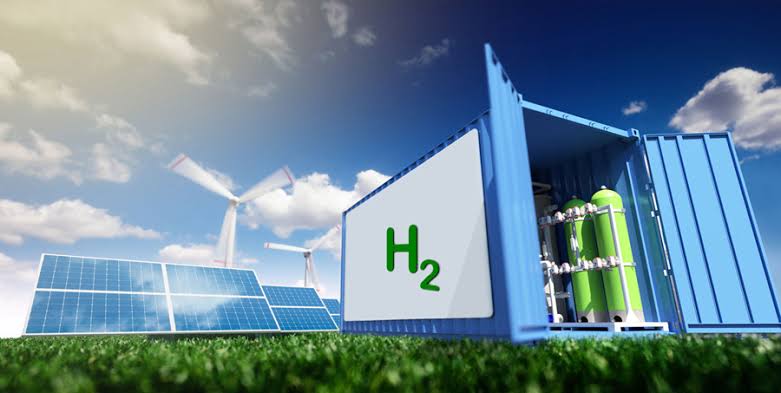
- 11 Mar 2024
Why is it in the News?
The Ministry of New and Renewable Energy (MNRE) plans to convene a meeting with relevant stakeholders to discuss the development of specialized cylinders for green hydrogen storage.
What is Green Hydrogen?
- Green Hydrogen is produced through the process of electrolysis of water, utilizing electricity generated from renewable energy sources.
- The carbon intensity of green hydrogen depends on the carbon neutrality of the electricity source, with higher renewable energy content resulting in greener hydrogen.
- With its potential to decarbonize various sectors, reduce carbon emissions, and achieve energy independence, green hydrogen holds significant promise.
- Its production from renewable sources like solar, wind, and hydropower makes it a sustainable and environmentally friendly alternative to traditional fossil fuels in transportation and industry, offering a consistent and reliable energy source.
- Storage: Hydrogen is stored in cylinders at high pressure, categorized into four types based on materials used. Type 1 and Type 2 are suited for storage, while Type 3 is ideal for storage and transportation, and Type 4 is recommended for on-board storage.
- Unlike compressed natural gas (CNG) stored at around 3,600 psi, hydrogen is stored at 5,000-10,000 psi.
- Vehicles can utilize hydrogen either by burning it in an internal combustion engine or by using a fuel cell to convert it into electricity to charge on-board batteries.
- Type 3 and Type 4 cylinders are reinforced with carbon fiber, making them lightweight and suitable for vehicles.
- Type 4 cylinders, lined with a polymer instead of aluminum like Type 3, are even lighter.
Application of Green Hydrogen:
- Green hydrogen finds diverse applications, including powering vehicles and generating electricity through fuel cells.
- It also serves in heating systems and the production of chemicals and fertilizers.
- Additionally, green hydrogen supports microgrids, facilitating electricity provision to remote areas and fostering energy independence.
Advantages and disadvantages of green hydrogen:
- 100 % sustainable: Green hydrogen does not emit polluting gasses either during combustion or during production.
- Storable: Hydrogen is easy to store, which allows it to be used subsequently for other purposes and at times other than immediately after its production.
- Versatile: Green hydrogen can be transformed into electricity or synthetic gas and used for commercial, industrial or mobility purposes.
However, green hydrogen also has negative aspects that should be borne in mind:
- High cost: Energy from renewable sources, which are key to generating green hydrogen through electrolysis, is more expensive to generate, which in turn makes hydrogen more expensive to obtain.
- High energy consumption: The production of hydrogen in general and green hydrogen in particular requires more energy than other fuels.
- Safety issues: Hydrogen is a highly volatile and flammable element and extensive safety measures are therefore required to prevent leakage and explosions.
NHAI to start rolling out satellite-based tolling on national highways soon
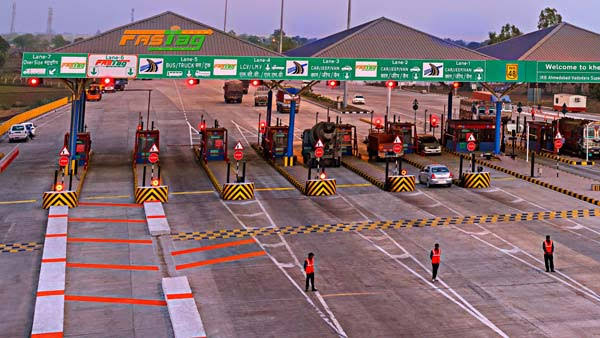
- 11 Mar 2024
Why is it in the News?
Road Transport and Highways Minister Nitin Gadkari said in Parliament in February that the government plans to implement a new highway toll collection system based on the global navigation satellite system before the model code of conduct for the 2024 election kicks in.
What is the Global Navigation Satellite System (GNSS)?
- GNSS refers to a constellation of satellites providing signals from space that transmit positioning and timing data to GNSS receivers.
- The receivers then use this data to determine location.
- Examples of GNSS include Europe’s Galileo, the USA’s GPS, Russia’s GLONASS and China’s BeiDou
How will the GNSS-Based Toll System work?
- The system will use an automatic number plate recognition (ANPR) system through cameras installed on highways and deduct tolls based on the distance traveled by a vehicle.
- The device monitors the movements while driving, accurately marking the entry and exit points on tolled segments. By analyzing travel distance, it computes the charges accordingly.
- This eliminates the uniformity of fixed tolls at booths, ensuring fairness for drivers traversing shorter distances.
Difference between FASTags and ANPR technology:
- FASTags streamline electronic toll payments at toll plazas equipped with scanners, enabling vehicles to pass through without stopping.
- Conversely, GNSS-based systems utilize ANPR technology to deduct tolls based on distance traveled, rendering traditional toll plazas unnecessary.
What are the Challenges?
- Detection of Non-Compliance: Without physical barriers, detecting non-compliant vehicles, such as those without an On-Board Unit (OBU) or engaging in fraudulent activities, poses a challenge.
- Infrastructure Requirements: Deploying gantry-mounted Automatic Number-Plate Recognition (ANPR) systems along highways is essential for capturing violations and enforcing toll payments.
- License Plate Quality: The effectiveness of ANPR systems relies on the quality of license plates; subpar plates hinder accurate recognition and enforcement efforts.
- Data Privacy and Security: GNSS-based toll systems entail collecting and processing sensitive location data, necessitating robust privacy and security measures.
Inflection AI rolls out new large language model to its Pi chatbot

- 11 Mar 2024
Why is it in the News?
Recently, Inflection AI launched its latest LLM, Inflection 2.5, an upgrade to its model that powers its friendly chatbot Pi personal assistant.
About Inflection 2.5:
- Inflection-2.5 is an “upgraded in-house model that is competitive with all the world’s leading LLMs like GPT-4 and Gemini.
- The newly upgraded LLM comes with its signature personality and uniquely empathetic fine-tuning.
- Its latest model achieved GPT-4’s performance with only 40 per cent of the OpenAI model’s computation power for training.
- Besides, it seems Inflection 2.5 has made some stellar strides in areas of IQ such as coding and mathematics.
- This means that the model has made substantial improvements on key benchmarks.
- With the new upgrade, Pi has now been endowed with world-class real-time web search capabilities to ensure that users get access to high-quality and up-to-date information in real-time.
What is the Pi chatbot?
- Pi is an advanced chatbot powered by Inflection AI's cutting-edge language model, Inflection 2.5 which allows one to have deep and meaningful conversations.
- To access the chatbot, one needs to log on to Inflection.AI, click on Meet Pi, and simply start talking to the chatbot right away.
- Pi is more humane and has been promoted as a chatbot that has a personality.
- In other words, Inflection AI dubbed it as a chatbot that is “supportive, smart, and there for you anytime”.
- Pi is more like a companion to humans and is free to use.
- The chatbot comes with a voice, in six distinct voices, to choose from adding life to conversations.
Pi chatbot boasts a number of impressive features that make it stand out from other conversational AI systems:
- Real-time web search capabilities: Pi can access and present up-to-date information on a wide range of topics, ensuring that users always have access to accurate and relevant information.
- Empathetic personality: Pi's unique empathetic fine-tuning allows it to understand and respond to the emotional nuances of human communication, making it a more engaging and personable conversational partner.
- Versatile conversation topics: Whether you're discussing current events, asking for local recommendations, studying for an exam, drafting a business plan, coding, or just talking about hobbies, Pi is equipped to handle a wide range of conversational topics.
- User-friendly interface: Designed with accessibility in mind, Pi's intuitive interface makes it easy for users of all technical abilities to engage with the chatbot and get the most out of their conversations.
India’s indigenous fifth-gen fighter jet AMCA
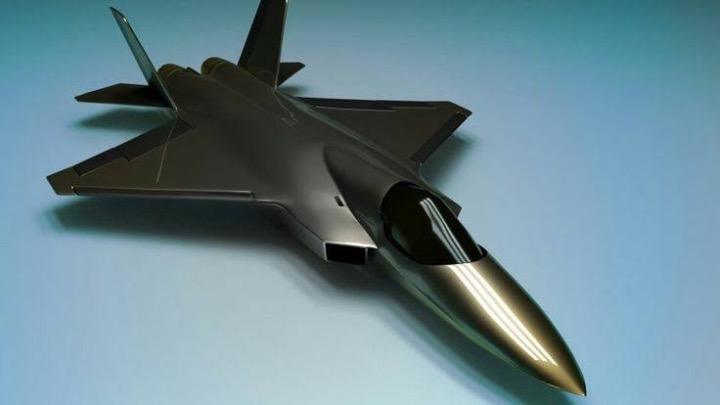
- 09 Mar 2024
Why is it in the News?
The Cabinet Committee on Security (CCS) this week cleared a Rs 15,000 crore project to design and develop the Advanced Medium Combat Aircraft (AMCA), India’s fifth-generation fighter multirole fighter jet.
About Advanced Medium Combat Aircraft (AMCA)?
- The AMCA will be India’s indigenous fifth-generation fighter aircraft.
- The indigenous Light Combat Aircraft (LCA) Tejas is a 4.5-generation single-engine multirole aircraft.
- The Aeronautical Development Agency (ADA) under the Defence Research and Development Organisation (DRDO) will be the nodal agency for executing the programme and designing the aircraft.
- It will be manufactured by state-owned Hindustan Aeronautics Limited (HAL).
- The aircraft will put India in a select group of nations that have their own fifth-generation fighter aircraft.
- Discussions for developing the AMCA started in 2007.
- The initial plan was to jointly develop the aircraft with Russia under a Fifth Generation Fighter Aircraft (FGFA) programme.
- However, India withdrew from the FGFA project in 2018.
Features of AMCA:
- Stealth: The 25-tonne twin-engine aircraft, which will be bigger that other fighters in the Indian Air Force inventory, will have advanced stealth features to avoid detection by enemy radar.
- With stealth features, this aircraft (AMCA) would be able to compete with other stealth fighters in the world.
- Fuel & Weapons: The aircraft will have a large, concealed internal fuel tank of 6.5-tonne capacity, and an internal weapons bay for a range of weapons, including indigenous weapons, to be buried in its belly.
- Engine: The AMCA Mk1 variant will have the US-built GE414 engine of the 90 kilonewton (kN) class, while the more advanced AMCA Mk2 will fly on the more powerful 110kN engine, which will be developed indigenously by DRDO’s Gas Turbine Research Establishment (GTRE) in collaboration with a foreign defense major.
- India has been talking with Safran SA of France, one of the world’s largest manufacturers of aircraft engines and related equipment, in order to finalize the roadmap for the development of the combat aircraft engine
- Another important aspect would be to ensure a higher utilization time and smaller serviceability or maintenance periods for the aircraft.
- This will be aided by the inclusion of a comprehensive Integrated Vehicle Health Management (IVHM) system to keep track of multiple structural components, and to assess the condition of the aircraft in real time.
- Other features such as a diverterless supersonic inlet for controlling air flow into the engines, and a serpentine air intake duct to shield the engines from radar emissions, are likely to be part of the AMCA.
Other Fifth-generation Fighters:
- Only a few countries have built a fifth-generation stealth fighter aircraft.
- The list of the aircraft currently in service includes:
- The F-22 Raptor and F-35A Lightning II of the US
- The Chinese J-20 Mighty Dragon, and
- The Russian Sukhoi Su-57.
India to restart Penicillin G manufacture

- 09 Mar 2024
Why is it in the News?
India will start manufacturing the common antibiotic Penicillin G later this year, three decades after the country’s last plant shut down, Union health minister Mansukh Mandaviya announced last week.
What is Penicillin G?
- Penicillin G serves as a key active pharmaceutical ingredient (API) utilized in the production of various common antibiotics.
- Its molecular formula is C16H18N2O4S.
- Penicillin G (potassium or sodium) is an FDA-approved antibacterial medication primarily indicated for treating severe bacterial infections like pneumonia, meningitis, gonorrhea, syphilis, among others.
- This natural penicillin antibiotic is typically administered intravenously or intramuscularly due to limited oral absorption.
- Additionally, Penicillin G may be employed in certain instances as prophylaxis against susceptible organisms.
Why did Penicillin Manufacturing Stopped in India?
- The discontinuation of Penicillin G production in India, along with numerous other active pharmaceutical ingredients (APIs), resulted from the influx of cheaper Chinese products driven by subsidies.
- Torrent Pharma in Ahmedabad was the final plant to halt Penicillin G production, with at least five companies, including Torrent, manufacturing the antibiotic in the country during the 1990s.
- In the early 1990s, India boasted nearly 2,000 API manufacturers, while approximately 10,000 units produced formulations. However, the allure of cheaper Chinese alternatives grew, particularly with the relaxation of customs rules during the country's economic liberalization.
- The Drug Prices Control Order, which imposed price caps on essential medicines, further incentivized companies to opt for cheaper imported products.
- While India previously sold Penicillin G for around Rs 800 per kg, China drastically reduced prices to nearly Rs 400 per kg, rendering domestic manufacturing economically unviable.
Why the Delay in Restarting Production?
- Lack of Urgency: Despite awareness within the industry and government about the decline in API production in India due to the availability of cheaper alternatives globally, there was limited emphasis on restarting domestic production.
- The supply chain disruptions caused by the pandemic highlighted the need for self-reliance, prompting the government to launch initiatives like the PLI scheme to bolster domestic manufacturing.
- High Initial Investment: API manufacturing, particularly for fermented compounds like Penicillin G, entails significant upfront costs.
- Establishing a production facility requires substantial capital investment, with companies often needing several years to break even.
- Dominance of China: China has emerged as a dominant supplier, significantly expanding its manufacturing capacity over the past three decades.
- Competing with Chinese prices would necessitate substantial investments in larger facilities.
What's the Impact of PLI Schemes?
- Reduction in API Imports: Since the implementation of the PLI scheme, there has been a notable decrease in API imports.
- For instance, the import dependency for paracetamol, which was previously two-thirds of the required volume, has now halved.
- Incentive Structure: The PLI scheme offers incentives structured as follows:
- 20% support for the first four years, gradually reducing to 15% in the fifth year and 5% in the sixth year for eligible sales of fermentation-based bulk drugs like antibiotics, enzymes, and hormones such as insulin.
- Chemically synthesized drugs receive a 10% incentive for six years on eligible sales.
Every village to have agricultural credit societies by 2027

- 09 Mar 2024
Why is it in the News?
Union Cooperation Minister Amit Shah Friday said that the Centre has decided to ensure formation of Primary Agricultural Credit Societies (PACS) in every village by 2027.
Context:
- Union Cooperation Minister Amit Shah recently announced the Centre's commitment to establishing Primary Agricultural Credit Societies (PACS) in every village by 2027, introducing 20 new activities to enhance their profitability.
- Emphasizing the significance of computerization in PACS, Shah highlighted its role in fostering development opportunities.
- He also inaugurated the National Cooperative Database and unveiled the 'National Cooperative Database 2023: A Report' to bridge existing gaps through comprehensive analysis.
- The database initiative progressed through three phases, including mapping approximately 2.64 lakh societies across agriculture, dairy, and fisheries sectors in the first phase.
- Subsequent phases involved data collection from various federations, banks, and mapping of the remaining 8 lakh primary cooperative societies in other sectors.
- The unveiling revealed over 8 lakh registered societies in the country, connecting more than 30 crore citizens.
What are Primary Agricultural Credit Societies (PACS)?
- PACS are grassroots cooperative credit societies, constituting the final tier in a three-tier cooperative credit system led by State Cooperative Banks (SCBs) at the state level.
- SCBs channel credit to District Central Cooperative Banks (DCCBs) operating at the district level, which collaborate with PACS, directly serving farmers.
- PACS operate as cooperative entities, with individual farmers as members and elected office-bearers from within the community. Villages may host multiple PACS.
- These societies extend short-term and medium-term agricultural loans to farmers for various farming activities.
Number of PACS in India:
- Established since 1904, India currently boasts over 1,00,000 PACS nationwide, engaging a significant member base exceeding 13 crore farmers.
- However, operational PACS stand at only 63,000, indicating the need for enhanced functionality and outreach.
Why are PACS Appealing?
- PACS offer crucial last-mile connectivity, ensuring farmers have access to capital at the onset of agricultural activities.
- They streamline credit extension processes, providing farmers with timely financial support with minimal paperwork, unlike traditional banks known for cumbersome procedures.
- PACS simplify paperwork and administrative tasks, offering farmers collective strength and assistance from PACS office-bearers.
- Unlike individual interactions required with commercial banks, PACS enable farmers to navigate loan processes collectively, reducing reliance on intermediaries.
Challenges Faced by PACS:
- Political influences often overshadow financial prudence within PACS, impacting loan recovery.
- Various committees have highlighted systemic issues within the cooperative system, including low member participation, lack of professionalism, inadequate governance, bureaucratic hurdles, and a workforce with aging and disengaged employees.
Union Cabinet approves India AI Mission with 10,372 cr outlay
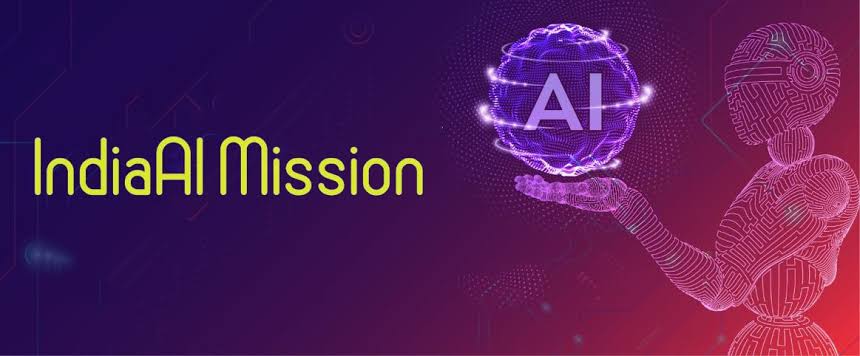
- 08 Mar 2024
Why is it in the News
India has made its first move to address a key shortcoming it currently has in unlocking opportunities around generative artificial intelligence (AI) – that of computing hardware.
What is IndiaAI Mission?
- India's AI Mission entails the launch of an artificial intelligence (AI) initiative, announced by the Prime Minister at the Global Partnership on Artificial Intelligence (GPAI) Summit 2023 in New Delhi, with implementation overseen by the 'IndiaAI' Independent Business Division (IBD) under Digital India Corporation (DIC).
- Led by the Ministry of Electronics and IT (MeitY), the mission aims to establish a computing capacity exceeding 10,000 graphics processing units (GPUs) and develop foundational models trained on datasets encompassing major Indian languages, focusing on priority sectors such as healthcare, agriculture, and governance.
- Additionally, the mission will involve the establishment of AI Curation Units (ACUs) in 50-line ministries and the creation of an AI marketplace to provide AI services and pre-trained models to AI application developers.
- Implementation of the AI computer infrastructure will follow a public-private partnership model, with 50% viability gap funding, with Rs 4,564 crore allocated from the total outlay of Rs 10,372 crore for building computing infrastructure.
Key Features of the IndiaAI Mission:
- IndiaAI Compute Capacity: Establishing a scalable AI computing ecosystem to meet the growing demands of India's burgeoning AI start-ups and research community.
- IndiaAI Innovation Centre: Focusing on the development and deployment of indigenous Large Multimodal Models (LMMs) and domain-specific foundational models in critical sectors.
- IndiaAI Datasets Platform: Streamlining access to high-quality non-personal datasets to fuel AI innovation.
- IndiaAI Application Development Initiative: Promoting the adoption of AI applications in critical sectors, addressing problem statements sourced from Central Ministries, State Departments, and other entities.
- IndiaAI FutureSkills: Mitigating barriers to entry into AI programs by expanding AI courses at undergraduate, master's, and Ph.D. levels.
- IndiaAI Startup Financing: Supporting and accelerating deep-tech AI startups by providing streamlined access to funding for futuristic AI projects.
- Safe & Trusted AI: Ensuring the responsible implementation of AI projects through the development of indigenous tools and frameworks to foster trust and safety in AI applications.
The Significance of the IndiaAI Mission:
- The IndiaAI Mission aligns with the vision of fostering indigenous AI development and leveraging AI technology for the benefit of India.
- It aims to demonstrate to the international community the positive impact of AI technology on society, thereby enhancing India's global competitiveness.
- By establishing a comprehensive ecosystem for AI innovation through strategic partnerships across public and private sectors, the mission will catalyze AI-driven advancements.
- It will foster creativity and bolster internal capabilities, ensuring India's technological sovereignty.
- Furthermore, the mission is poised to create employment opportunities that demand advanced skills, leveraging India's demographic advantage.
After 10 years struggle, Mendha gets separate Panchayat status under Gramdan Act
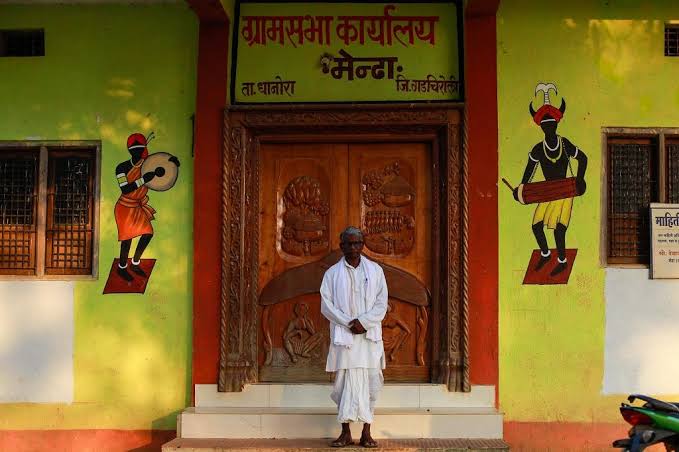
- 08 Mar 2024
Why is it in the News
The Maharashtra government recently notified Mendha, a village deep inside the forests of the state’s Gadchiroli district, as a separate Gram Panchayat under The Maharashtra Gramdan Act, 1964.
What is Gramdan?
- Gramdan is an expansion of the Bhoodan Movement started in 1951 by Aacharya Vinoba Bhave.
- ‘Bhoodan’ meant redistribution of land from bigger landowners to the landless.
- Under Gramdan, the entire village will put its land under a common trust.
- This way, the land will not be sold outside the village or to one who has not joined Gramdan in the village.
- But the landowners can continue to cultivate it and reap the benefits.
- The Movement paved the way for the protection of natural resources by giving equal rights and responsibilities to everyone in the community and empowering communities to move towards self-governance.
- Under the Act, at least 75 percent of landowners in the village should surrender land ownership to the village community for it to be declared as ‘gramdan’.
- Such land should at least be 60 percent of the village land. Five per cent of the surrendered land is distributed to the landless in the village for cultivation.
- Recipients of such land cannot transfer the same without the permission of the community.
- The rest remains with the donors.
- They and their descendants can work on it and reap the benefits.
- But they cannot sell it outside the village or to a village resident who has not joined Gramdan.
- Today, seven states in India have 3,660 Gramdan villages, the highest being in Odisha (1,309).
- The states are Andhra Pradesh, Bihar, Maharashtra, Odisha, Rajasthan, Tamil Nadu and Uttar Pradesh.
- In September 2022, the Assam government repealed the Assam Gramdan Act, 1961 and Assam Bhoodan Act, 1965, bypassing The Assam Land and Revenue Regulation (Amendment) Bill, 2022.
- This, it said, was done to counter encroachment on donated lands in the state.
- Till that time, Assam had 312 Gramdan villages.
About Mendha’s Village Struggle:
- The village, comprising around 500 Gond Adivasis, has fought for its forests for years.
- It is popular as the first village in India to secure community forest rights (CFR), following the passing of the Scheduled Tribes and Other Traditional Forest Dwellers (Recognition of Forest Rights) Act, 2006.
- Some 80 per cent of the area in the village is covered with dense forest.
- People here believe that land is not a private property but a collective resource that provides food and livelihood and should be saved and passed on to the next generation.
- All villagers in Mendha have surrendered their land, which is unique. In all other villages, only about 75-80 per cent of landowners had agreed to do so.
- The village fulfilled these conditions of the Act in 2013 and notified the district collector about its decision to implement the Act.
Amit Shah launches National Cooperative Database, to help in policy making
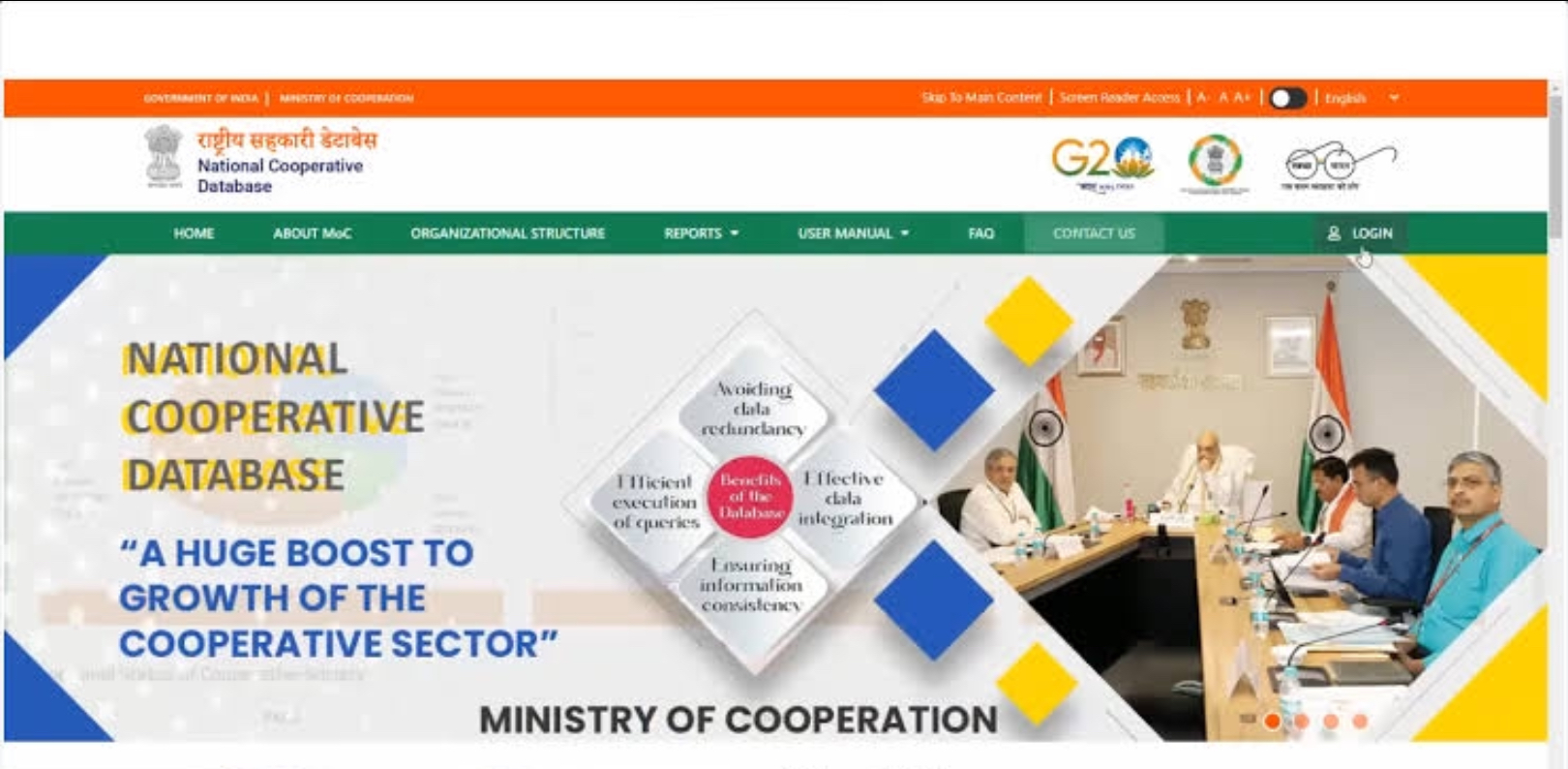
- 08 Mar 2024
Why is it in the News
Cooperation Minister Amit Shah on Friday launched the National Cooperative Database and stressed that it would help in policy making.
About National Cooperative Database (NCD):
- The National Cooperative Database (NCD) is an initiative spearheaded by the Ministry of Cooperation, responding to the pressing need for a robust database to effectively capture essential information concerning India's extensive cooperative sector.
- Developed collaboratively with State Governments, National Federations, and stakeholders, the NCD is designed to promote a cooperative-centric economic model, offering a web-based digital dashboard for seamless data management.
- Acting as a centralized repository, the NCD aggregates data from cooperative societies, including National/State Federations, with information entered and authenticated by nodal officials at RCS/DRCS offices for cooperative societies and provided by various national/state federations for federations.
- The collected data encompasses diverse parameters, such as registered names, locations, membership numbers, sectoral details, operational areas, financial statements, audit statuses, and more, providing a comprehensive overview of the cooperative landscape.
- Serving as a vital communication tool, the NCD facilitates efficient interaction between the Central Ministry, States/UTs, and Cooperative Societies, fostering collaboration and synergy within the cooperative sector.
- Key features and benefits of the NCD include single-point access, comprehensive and updated data, user-friendly interface, vertical and horizontal linkages, query-based reports and graphs, Management Information System (MIS) reports, data analytics, and geographical mapping capabilities.
Kerala declares man-animal conflict a state-specific disaster
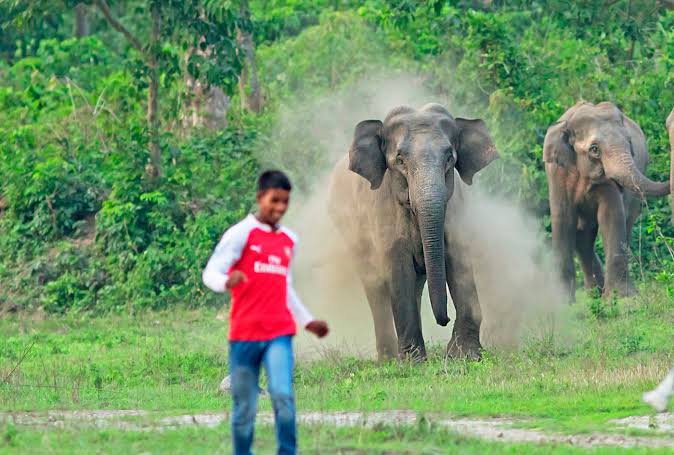
- 08 Mar 2024
Why is it in the News?
Amid repeated deaths from animal attacks and rising anger over them, Kerala recently declared man-animal conflict as a state-specific disaster, becoming the first state in the country to do so.
What is Man-animal Conflict?
- Man-animal conflict refers to the interaction between wild animals and humans, resulting in adverse outcomes for both people and wildlife, as well as their habitats.
- Escalating Conflict: In states across India, human-wildlife conflict has intensified, leading to a significant rise in human casualties.
- For instance, in Maharashtra, the conflict resulted in 86 in 2021 and 105 deaths in 2022, marking a sharp increase compared to previous decades.
Causes:
- Factors contributing to this conflict include the encroachment of grodeathswing human and animal populations into each other's territories, habitat fragmentation due to legal and illegal land use changes, alterations in cropping patterns attracting wildlife to agriculture, and habitat destruction from invasive alien species.
- Despite having over 700 protected areas, a substantial portion of elephant, lion, and tiger ranges lie outside these protected zones, exacerbating the conflict.
Ecologist Perspective:
- Ecologist Madhav Gadgil highlights that the Wildlife Protection Act of 1972 has inadvertently facilitated an environment where wild animals can invade human habitats with impunity.
- He cites the optimal foraging theory in ecology, which underscores animals' efforts to maximize nutrient intake while minimizing time, effort, and risks.
Solutions:
- Addressing the issue requires robust enforcement and pragmatic policies to mitigate conflict incidences.
- Engaging local communities, as suggested by the Future for All Report 2021 (by WWF and UNEP), fosters coexistence between humans and wildlife, acknowledging that complete elimination of conflicts is impractical.
- Additionally, awareness campaigns aimed at educating the public about man-animal conflict and skill development initiatives for communities living near forests can alleviate pressures on agricultural and forest lands.
Kerala's Decision to Declare Man-Animal Conflict as a State-Specific Disaster:
- Implications of the Decision: Currently, the management of man-animal conflict falls under the jurisdiction of the forest department, operating in accordance with the Wildlife Protection Act.
- By designating man-animal conflict as a state-specific disaster, the responsibility for addressing it shifts to the state disaster management authority, empowered by the Disaster Management Act, enabling swifter and more decisive action.
- Rationale for the Decision: Instances of loss of life due to man-animal conflict have prompted calls to tranquilize, capture, or eliminate the responsible animals.
- Presently, the chief wildlife warden, holding the sole authority in the state, makes decisions regarding wild animals causing disturbances in human settlements.
- Past decisions to tranquilize aggressive animals, like wild elephants, have faced legal challenges.
- Under the disaster management authority, actions can be taken that supersede other regulations, including those outlined in the Wildlife Protection Act.
- According to the Disaster Management Act, except for the Supreme Court or a High Court, no court has jurisdiction to entertain suits or proceedings regarding actions taken by relevant authorities in line with the Act.
- Additionally, the Act stipulates that its provisions hold precedence over any other law during the specific period of a declared disaster.
Kerala's Success in Managing Man-Animal Conflict:
- Kerala, with approximately 5,700 wild elephants in 2017, comprising 19% of the nationwide population of 30,000, witnessed a significantly lower incidence of human fatalities caused by elephants, accounting for only 81 (4%) of the 2,036 deaths recorded in India between 2018 and 2021.
- Factors Contributing to Kerala's Effective Management of Man-Animal Conflict:
- Maintenance of Unchanged Wilderness Boundaries: Kerala has largely preserved the boundaries between wilderness and civilization in recent years, contributing to the mitigation of man-animal conflicts.
- Evolution of Agricultural Practices: Changes in agricultural practices, such as the cultivation of crops like coffee, pepper, and tea, which hold less appeal for elephants, have helped reduce conflicts between humans and elephants.
- Unique Elephant Characteristics: Individual elephants are identified and named based on their distinct characteristics, such as Kabali, an elephant residing in the Athirapally jungle in Thrissur district, known for its tendency to attack or chase automobiles.
- These factors collectively contribute to Kerala's successful management of man-animal conflict, resulting in relatively fewer human fatalities caused by elephants compared to other regions in India.
Countries hope to bring BBNJ or High Seas treaty into force by 2025
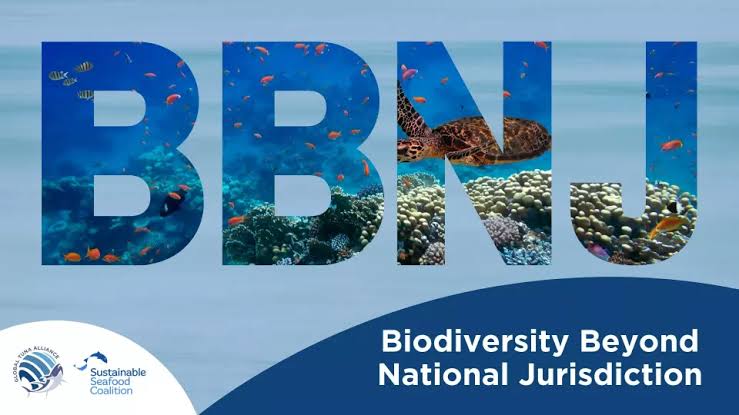
- 08 Mar 2024
Why is it in the News
The Blue Leaders High-Level Event on Biodiversity Beyond National Jurisdiction was held in Belgium on March 7, 2024, to urge nations to ratify a new treaty to protect the high seas from pollution, climate change and overfishing.
What is the BBNJ Treaty?
- The BBNJ Treaty, also referred to as the Treaty of the High Seas, is an international agreement aimed at conserving and sustainably managing marine biological diversity in areas beyond national jurisdiction, operating within the framework of the UNCLOS.
- These areas encompass the high seas beyond exclusive economic zones or national waters.
- It represents nearly half of the Earth's surface and is characterized by minimal regulation and understanding of their biodiversity, with only 1% currently under protection.
- Launched at the One Ocean Summit in February 2022, the High Ambition Coalition on Biodiversity Beyond National Jurisdiction seeks to unite various delegations involved in BBNJ negotiations toward a comprehensive and ambitious outcome.
- The negotiations focus on key elements agreed upon in 2015, including the conservation and sustainable use of marine genetic resources, area-based management tools such as marine protected areas, environmental impact assessments, and initiatives for capacity-building and technology transfer in marine science and management.
- India is yet to sign the treaty. However, it called on efforts for entry into force and implementation of the treaty at the G20 New Delhi Leaders’ Declaration held in September 2023.
The Importance of a Legally Binding Instrument for BBNJ:
- Biodiversity in areas beyond national jurisdiction is crucial for ocean health, coastal communities' welfare, and global sustainability, constituting 95% of the ocean and offering essential ecological, economic, social, cultural, scientific, and food-security benefits.
- Despite their significance, these areas face escalating threats such as pollution, overexploitation, and the impacts of climate change, compounded by the anticipated rise in demand for marine resources in the future.
- Even the deep seafloors, considered one of the most inhospitable habitats, are experiencing the onset of extinction processes, with alarming statistics showing that 62% of assessed mollusc species are threatened, including critically endangered, endangered, and vulnerable species, while the International Seabed Authority permits deep sea mining contracts.
- It is imperative to establish a legally binding framework for managing and regulating biodiversity in areas beyond national jurisdiction, as over 60% of this resource in the global seas remains unmanaged and unprotected, necessitating comprehensive conservation measures.
ISRO’s second rocket launchport in Tamil Nadu’s Kulasekarapattinam
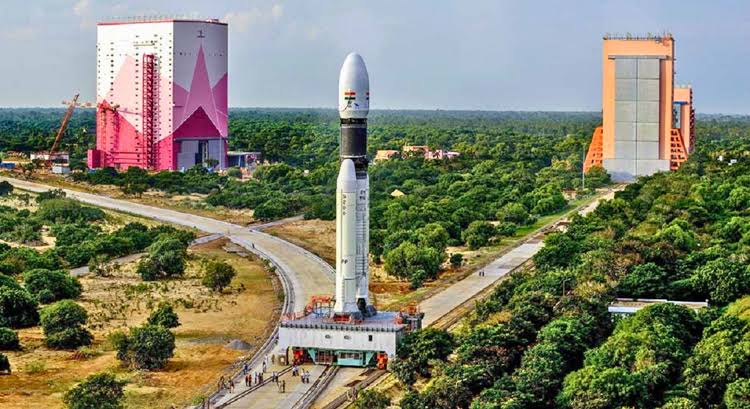
- 07 Mar 2024
Why is it in the News?
Prime Minister Narendra Modi laid the foundation stone of the second rocket launchport of the Indian Space Research Organisation (ISRO) at Kulasekarapattinam on February 28.
Why does India need a new launchport?
- With the Union government’s recent policy announcing the opening of the space sector to private players, a sharp rise in the number of commercial launches is certain.
- To ensure that ISRO’s first launchport, the Satish Dhawan Space Centre (SDSC) SHAR in Sriharikota, is not overburdened with a high number of launches, the space agency has decided to build another facility.
- While SHAR will be only used for launching bigger and heavy-lift-off missions, the Kulasekarapattinam launchport will be used to launch smaller payloads.
- SHAR will also be available for India’s big ticket missions to the Moon, Venus, and much touted human-flight mission, the Gaganyaan.
- Private players could develop space-qualified sub-systems, build satellites, and even launch vehicles using the new launchport.
- It will also facilitate dedicated launch infrastructure for all the on-demand commercial launches.
Why is the new ISRO launchport located in Tamil Nadu?
- Geographically, scientifically, and strategically, the Kulasekarapattinam launchport provides a natural advantage to ISRO’s future launches pertaining to the Small Satellite Launch Vehicle (SSLV).
- Allowing a direct southward and smaller launch trajectory for the light weight SSLVs carrying less fuel, the Kulasekarapattinam facility will boost ISRO’s attempts to enhance payload capacities.
- Currently, the trajectory followed by all launches from SHAR are longer as they follow a path which requires the vehicle to skirt eastwards around Sri Lanka before taking the actual southward flight.
- This consumes additional fuel. However, the same would not be required for future launches from Kulasekarapattinam, which is geographically located several kilometers to the west of Colombo, thereby allowing a straight southward flight and simultaneously saving the already limited fuel available onboard SSLV.
- Notably, both the launch ports are located in Southern India, near the equator.
- For a launch site close to equator the magnitude of the velocity imparted due to Earth’s rotation is about 450 m/s, which can lead to substantial increase in the payload for a given launch vehicle.
- Geostationary satellites must necessarily be in the equatorial plane.
- So, for such satellites, the closer the launch site is to the equator the better it is.
What are SSLVs?
- SSLV is the new small satellite launch vehicle developed by ISRO to cater for the launch of small satellites.
- It has a three-stage launch vehicle, having a lift-off weight of about 120 tonnes and is 34 meters in length and 2 meters in diameter.
- SSLV is designed with a three-stage solid propulsion and a liquid propulsion stage, which is the terminal stage.
- The SSLV missions are useful to launch small-sized satellites weighing anywhere between 10 to 500kg into the Low Earth Orbit.
- Going by their size and weight, these are typically referred to as mini, micro or nano satellites.
- They are low on cost and intended satellite insertion into orbits takes a shorter flight time.
- SSLV are best suited for commercial and on-demand launches.
- Previously, satellite projects built by college students and private players involved in the space sector have benefitted from SSLV missions.
What are the features of SHAR?
- SHAR is situated along the east coast of Andhra Pradesh and is located 80 km off Chennai.
- It currently provides launch infrastructure to all ISRO missions.
- It is equipped with a solid propellant processing setup, static testing, and launch vehicle integration facilities, telemetry services — tracking and command network to oversee the launch — and a mission control center.
- SHAR has two launch complexes that are routinely used to launch the Polar Satellite Launch Vehicle (PSLV), the Geosynchronous Space Launch Vehicles (GSLV) and the Geosynchronous Satellite Launch Vehicle Mk-III, now renamed as LVM3.
Haiper, the text-to-video model created by Google DeepMind and Tiktok alumni

- 07 Mar 2024
Why is it in the News?
Recently, a company founded by former members of Google DeepMind, TikTok, and top labs from research academia — introduced an eponymous new text-to-video model Haiper.
What is Haiper?
- Haiper is an all-in-one visual foundation model that allows everyone, with or without technical training, to generate high-quality video content with ease.
- The founders claim that Haiper brings forward cutting-edge machine learning with the belief that creativity should be “fun, surprising, and shareable”.
- The company has built Haiper as a powerful, industry-agnostic creativity tool.
- It was released by Google DeepMind and Tiktok alumni.
What does Haiper do?
- Haiper offers tools such as text-to-video, animated static images, video repainting tools, etc.
- Users can go on to the website, log in with their email addresses, and start generating videos for free by typing in text prompts.
- At present, users can only generate HD video spanning 2 seconds, and a slightly lower-quality video could go up to four seconds.
Strengths and limitations:
- While the short length is a limitation, the company is working towards extending the video outputs.
- Presently, the tool is free to use, with an aim to build a community.
- While OpenAI’s Sora is still not available for the public, Haiper is offering users to try its tool for free on its website.
Trees in Corbett fell prey to greedy nexus, says Supreme Court
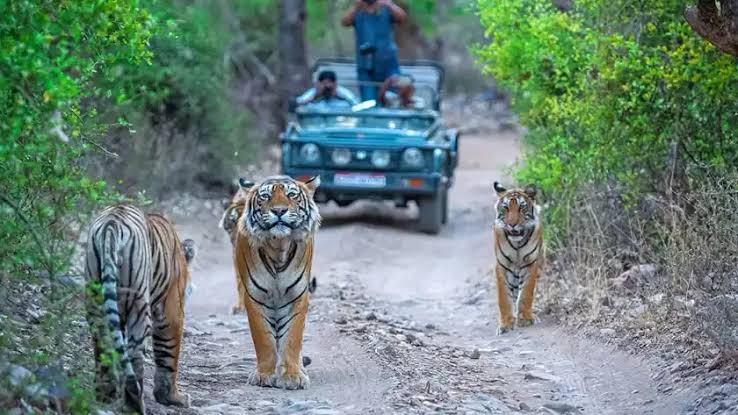
- 07 Mar 2024
Why is it in the News?
The Supreme Court on Wednesday condemned the illegal felling of over 6,000 trees to construct buildings, ostensibly for “eco-tourism” at the Jim Corbett National Park in Uttarakhand, as a “classic case” of nexus between politicians and officials working to ransack the environment for short-term commercial ends.
News Summary:
- In 2023, a series of applications brought attention to the creation of alleged illegal buildings and encroachment on water bodies, prompting court intervention.
- Petitioners highlighted violations of environmental norms and encroachment into core wildlife habitats.
- Evidence presented during proceedings revealed unauthorized constructions within the national park, including concrete and iron enclosures purportedly intended for a 'safari' experience.
- Moreover, it was disclosed that over 6,000 trees had been felled in the national park under the pretext of safari development.
Supreme Court’s Observations:
- The Court has raised concerns regarding the necessity of developing facilities within natural forest environments, particularly in areas designated for the protection of endangered species like tigers.
- Directing the Government to establish a committee, the Supreme Court seeks recommendations on whether tiger safaris should be permitted in buffer or fringe areas and what guidelines should govern their establishment if allowed.
- Additionally, the Court has strongly criticized the illegal constructions and extensive tree felling in Uttarakhand's Corbett National Park.
What are the Core and Buffer Areas in Tiger Reserves?
- As per the Wild Life (Protection) Amendment Act of 2006, a Tiger Reserve comprises core or critical habitat and a buffer zone surrounding it.
- Core areas hold the legal status of a National Park or a Sanctuary.
- Buffer zones consist of a mix of forest and non-forest land, managed as a multiple-use area.
- The buffer area acts as a protective barrier, absorbing the impact of poaching pressure on tiger and other wildlife populations.
About Jim Corbett National Park:
- Location: Situated in the Nainital district of Uttarakhand, Jim Corbett National Park is renowned for its rich biodiversity.
Key Facts:
- Established in 1935, it is India’s oldest national park.
- Initially named Hailey National Park after its founder Sir Malcolm Hailey, it was renamed Corbett National Park in 1956 to honor Jim Corbett's contributions to wildlife preservation in India.
- Corbett National Park boasts the highest population of tigers in India, highlighting its importance for tiger conservation efforts.
- Flora: Dominated by Sal, Semal, Kharpat, Sissoo, Khair, Dhak, Khingan, Bakli, Bel, Ber, Bamboo, Khingam, Jamun, Kanju, Rohini, and Pula trees.
- Sal, Khair, and Sissoo are prominently featured throughout the park.
- Fauna: Home to diverse wildlife including Tiger, Leopard, Elephant, Chital Deer, Sambar Deer, Hogg Deer, Barking Deer, Wild Boar, Langur, Wild pig, Rhesus Monkey, Jackal, Rabbit, Yellow Throated Martin, and Otters.
- Various reptiles such as Crocodile, Gharial, King Cobra, Common Krait, Cobra, Russell's Viper, Rock Python, and Monitor Lizard inhabit the park.
- The Kosi River feeds the eastern periphery of Corbett National Park.
- The Ramganga River (West) and its tributaries Sonanadi, Palain, and Mandal serve as significant hydrological resources for the park.
Vaishnaw bats for further simplification of economic laws at ‘NITI for States’ platform launch
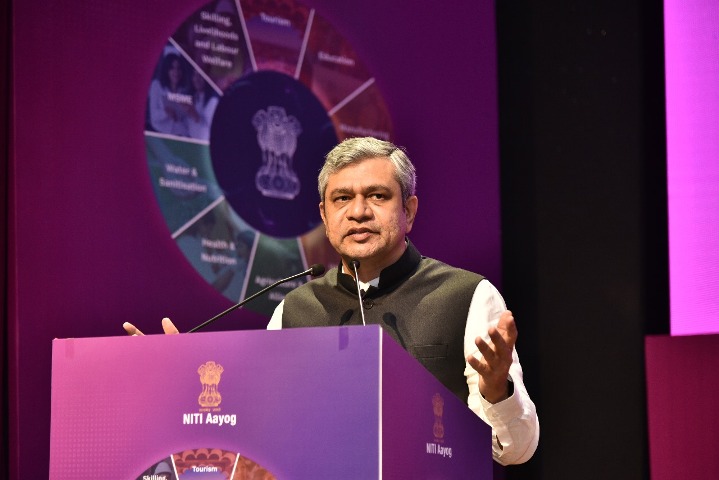
- 07 Mar 2024
Why is it in the News?
The Union IT, Communications, and Railways Minister Ashwini Vaishnaw Thursday stressed on the need to further simplify economic laws in a modern and relevant way at the launch of NITI Aayog’s ‘NITI for States’ platform.
About “NITI For States” Platform:
- It serves as a cross-sectoral knowledge hub envisioned to be a Digital Public Infrastructure (DPI) for Policy and Good Governance.
Key features include:
- A comprehensive repository comprising Best Practices, Policy documents, datasets, data profiles, and NITI publications across various sectors.
- Knowledge products spanning 10 sectors and two cross-cutting themes (Gender and Climate Change), such as Agriculture, Education, Energy, Health, Manufacturing, MSME, Tourism, Urban, and Water resources & WASH.
- An intuitive and user-friendly interface accessible via multiple devices, including mobile phones.
- The platform aims to catalyze digital governance transformation by providing government officials with contextualized, actionable knowledge and insights, thereby enhancing decision-making quality.
- It supports district collectors and block-level functionaries by granting access to innovative best practices from various States and Union Territories.
What is the Viksit Bharat Strategy Room?
- It serves as an interactive platform enabling users to visualize data, trends, best practices, and policies in an immersive manner, facilitating a comprehensive assessment of any problem statement.
- The platform features voice-enabled AI for user interaction and facilitates connectivity with multiple stakeholders through video conferencing.
- Designed as a plug-and-play model, it enables replication by states, districts, and blocks for widespread adoption.
- Collaboration with various government organizations by NITI Aayog includes:
- iGOT Karmayogi's "SAMARTH" online training modules accessible through the platform.
- Integration of NITI Aayog’s National Data and Analytics Platform (NDAP) to provide access to government datasets.
- Support from the National E-Governance Division (NeGD) in developing the innovative Viksit Bharat Strategy Room.
- Multi-lingual support provided by Bhashini.
- Integration of PM Gatishakti BISAG-N team, with DPIIT support, to offer geospatial tools for Area Based Planning.
INS Jatayu, India’s new naval base in Lakshadweep
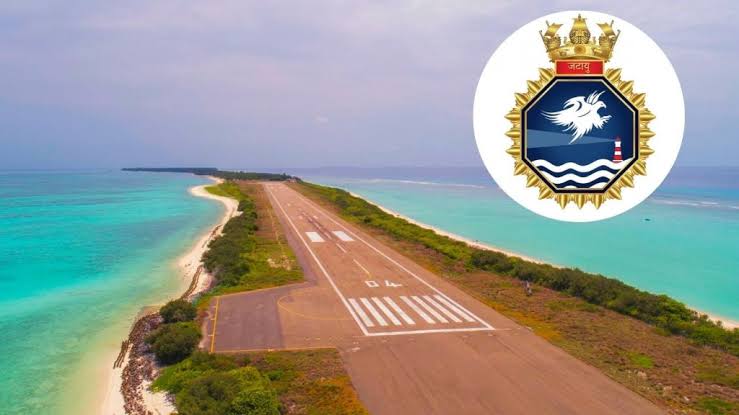
- 06 Mar 2024
Why is it in the News?
On Wednesday (March 6), Naval Detachment Minicoy will be commissioned as INS Jatayu, an upgraded naval base, marking an important milestone in the Indian Navy’s resolve to incrementally augment security infrastructure at the strategic Lakshadweep Islands.
About INS Jatayu Naval Base:
- The existing Naval Detachment Minicoy, which is under the operational command of the Naval Officer-in-Charge (Lakshadweep), will be commissioned as INS Jatayu.
- A naval detachment has administrative, logistics, and medical facilities.
- INS Jatayu will be upgraded to a naval base with additional infrastructure such as an airfield, housing, and personnel, after obtaining the requisite environmental and other clearances.
- The fragile ecology of the island may pose challenges for the construction but there are plans to construct a new airfield that will be capable of operating both military and civil aircraft.
Significance of INS Jatayu?
- The basing of an independent naval unit with requisite infrastructure and resources will enhance its overall operational capability in the islands.
- The establishment of the base is in line with the government’s focus on comprehensive development of the islands.
- The base will enhance its operational reach, facilitate its anti-piracy and anti-narcotics operations in the western Arabian Sea, and augment its capability as the first responder in the region.
- With the commissioning of INS Jatayu, the Indian Navy will add to its strength on the western seaboard.
- The proposed airfield will allow operations for a range of aircraft, including P8I maritime reconnaissance aircraft and fighter jets, and extend the Navy’s reach and operational surveillance capabilities at a time when India is seeking to counter the growing Chinese influence in the Indian Ocean Region.
- This has an immediate bearing at a time when India’s relations with the Maldives have come under strain since the election of the pro-China President Mohamed Muizzu.
About the Lakshadweep Islands:
- Lakshadweep, ‘a hundred thousand islands’ in Sanskrit and Malayalam, is an archipelago of 36 islands located between 220 km and 440 km from Kochi.
- The islands, only 11 of which are inhabited, have a total area of only 32 sq km.
- The Lakshadweep are part of a chain of coralline islands in the Indian Ocean that includes Maldives to the south, and the Chagos archipelago farther beyond, to the south of the equator.
- Given their location in the Indian Ocean, the Lakshadweep are of huge strategic importance to India.
- Minicoy straddles vital Sea Lines of Communications (SLOCs) — the world’s main maritime highways — including the Eight Degree Channel (between Minicoy and Maldives) and the Nine Degree Channel (between Minicoy and the main cluster of Lakshadweep islands).
- In consequence, the Lakshadweep Islands are also vulnerable to marine pollution.
Exclusive-World on brink of fourth mass coral reef bleaching event- NOAA
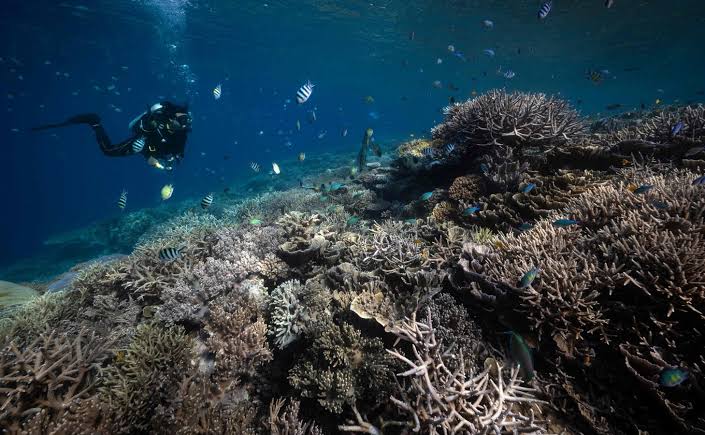
- 06 Mar 2024
Why is it in the News?
The world stands on the brink of witnessing its fourth mass coral bleaching event, a phenomenon that threatens to hit vast expanses of tropical reefs, including significant portions of Australia's iconic Great Barrier Reef.
Key Findings from the National Oceanic and Atmospheric Administration (NOAA):
- Impending Fourth Mass Coral Bleaching Event: The world is on the brink of a fourth mass coral bleaching event, following those in 1998, 2010, and 2014.
- To classify as global, widespread bleaching must occur across three ocean basins: the Atlantic, Pacific, and Indian.
- Impact of Previous Events: The last global mass coral bleaching event occurred from 2014 to 2017, resulting in the loss of nearly a third of the Great Barrier Reef's corals.
- Preliminary data indicates that approximately 15% of the world's reefs experienced significant coral die-offs during this event.
- Current Situation: This year is witnessing even more severe bleaching events, with the Caribbean experiencing its worst coral bleaching on record following the Northern Hemisphere summer last year.
- Link to Climate Phenomena: Coral bleaching is often associated with the naturally occurring El Niño climate phenomenon, which leads to warmer ocean waters.
- Climate Change Impact: The world recently experienced its first 12-month period with an average temperature exceeding 1.5 degrees Celsius (2.7 degrees Fahrenheit) above pre-industrial levels.
- A temperature rise of 1.5°C is considered the tipping point for mass coral die-offs, with scientists estimating that 90% of the world's corals could be lost as a result.
About the Corals and Coral Reefs:
- Corals: Corals are animals known as polyps, which engage in a symbiotic relationship with tiny algae called zooxanthellae.
- These algae provide corals with food and oxygen, while corals offer them a safe habitat.
- Coral Reefs: Coral reefs are limestone structures formed by thousands of tiny coral animals and are predominantly found in tropical climates.
Coral Bleaching and Its Concerns:
- Coral bleaching occurs when corals are exposed to stressful conditions like high temperatures, pollution, or changes in water chemistry, leading them to expel the zooxanthellae.
- Without these algae, corals lose their color and turn white, hence the term 'bleaching,' and cannot survive for long in this state.
- Recovery Potential: Despite its severity, coral bleaching doesn't necessarily mean the end of the reef; timely removal of stressors can facilitate the return of zooxanthellae and coral recovery.
- Ecological Importance: Coral reefs serve as habitats and food sources for numerous fish and marine species.
- They also offer coastal protection from erosion and storms and play a critical role in regulating the Earth's climate by absorbing and storing carbon dioxide.
- Cultural and Aesthetic Value: Beyond their ecological functions, coral reefs represent stunning biodiversity and natural beauty, making their loss a tragic prospect for future generations.
- Impacts: When coral reefs suffer, so do the ecosystems and communities reliant on them, underscoring the far-reaching consequences of coral degradation.
Google-backed satellite to track global oil industry methane emissions
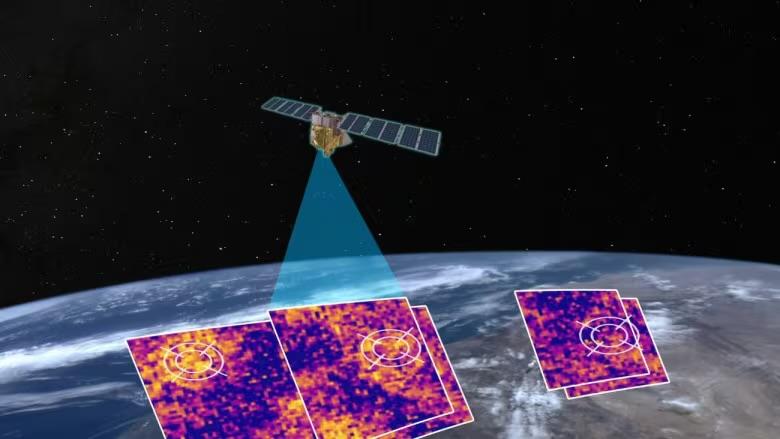
- 06 Mar 2024
Why is it in the News?
MethaneSAT — a satellite which will track and measure methane emissions at a global scale — was launched aboard a SpaceX Falcon9 rocket from California recently.
What is MethaneSAT?
- MethaneSAT will orbit the Earth 15 times a day, monitoring the oil and gas sector.
- It will create a large amount of data, which will tell “how much methane is coming from where, who’s responsible, and are those emissions going up or down over time”.
- The data collected by MethaneSAT will be made public for free in near real-time.
- This will allow stakeholders and regulators to take action to reduce methane emissions.
Institutions involved in the development:
- The entity behind MethaneSAT is the Environmental Defense Fund (EDF) — a US-based nonprofit environmental advocacy group.
- To develop the satellite, EDF partnered with Harvard University, the Smithsonian Astrophysical Observatory, and the New Zealand Space Agency.
Features of MethaneSAT:
- Historically, tracking the source of methane emissions and measuring them has been quite challenging.
- ?While some satellites can provide high-resolution data, they can only scan specific, pre-targeted sites.
- Others can examine larger areas and detect large emitting events, but cannot scan “smaller sources that account for the majority of emissions in many, if not most, regions,” the EDF statement added.
- Due to this discrepancy, according to an International Energy Agency (IEA) report, global methane emissions are about 70 per cent higher than levels reported by national governments.
- MethaneSAT is expected to fix the issue.
- Equipped with a high-resolution infrared sensor and a spectrometer, the satellite will fill critical data gaps.
- It can track differences in methane concentrations as small as three parts per billion in the atmosphere, which enables it to pick up smaller emissions sources than the previous satellites.
- MethaneSAT also has a wide-camera view — of about 200 km by 200 km — allowing it to identify larger emitters so-called “super emitters”.
Significance of MethaneSAT:
- Advancing the Goals of the Global Methane Pledge 2021: The Global Methane Pledge, signed by over 150 countries in 2021, aims to reduce collective methane emissions by at least 30% from 2020 levels by 2030.
- During the previous year's COP, over 50 companies pledged to significantly reduce methane emissions and routine flaring.
- MethaneSAT will play a crucial role in helping these entities achieve their targets.
- Enhancing Transparency: The satellite will usher in a new era of transparency by providing publicly available data accessible to anyone worldwide.
- This data will enable monitoring of methane commitments made by governments and corporations, promoting accountability and transparency in emission reduction efforts."
Why Do We Need to Track and Measure Methane Emission?
- Methane is an invisible but strong greenhouse gas, and the second largest contributor to global warming after carbon dioxide, responsible for 30 percent of global heating since the Industrial Revolution.
- According to the United Nations Environment Programme, over a period of 20 years, methane is 80 times more potent at warming than carbon dioxide.
- The gas also contributes to the formation of ground-level ozone — a colorless and highly irritating gas that forms just above the Earth’s surface.
- According to a 2022 report, exposure to ground-level ozone could be contributing to one million premature deaths every year.
- Therefore, it is crucial to cut methane emissions and the main culprit, fossil fuel operations, which account for about 40 percent of all human-caused methane emissions.
- The objective of MethaneSAT is to help achieve this goal.
India halts Pakistan-bound ship suspected of carrying CNC machines from China
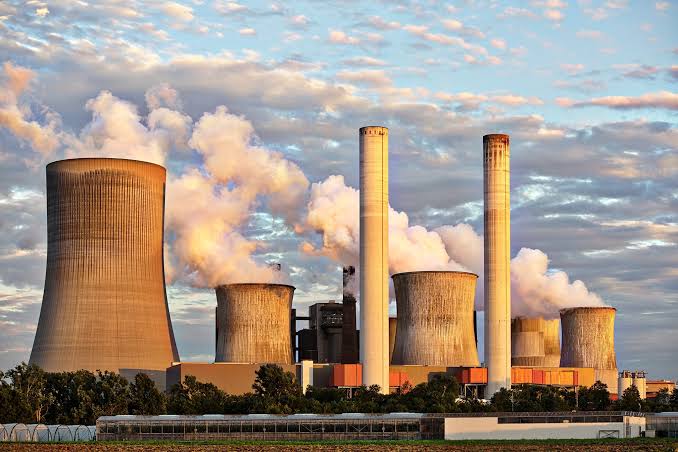
- 05 Mar 2024
Why is it in the News?
Recently, Prime Minister Narendra Modi witnessed the start of the process of core-loading the indigenous prototype fast breeder reactor (PFBR) at the Madras Atomic Power Station in Kalpakkam, Tamil Nadu.
What is the PFBR?
- The PFBR, or Prototype Fast Breeder Reactor, is a nuclear reactor designed to produce more nuclear fuel than it consumes.
- In nuclear fission, the nucleus of an atom absorbs a neutron, becomes unstable, and splits into two, releasing energy.
- If the unstable nucleus releases additional neutrons, the reactor’s facilities can utilize them to initiate more fission reactions.
How does the PFBR work?
- PHWRs use natural or low-enriched U-238 as the fissile material and produce Pu-239 as a byproduct.
- This Pu-239 is combined with more U-238 into a mixed oxide and loaded into the core of a new reactor together with a blanket.
- This is a material the fission products in the core react with to produce more Pu-239.
- A breeder reactor is a nuclear reactor that produces more fissile material than it consumes.
- In a ‘fast’ breeder reactor, the neutrons aren’t slowed, allowing them to trigger specific fission reactions.
- The PFBR is designed to produce more Pu-239 than it consumes.
- It uses liquid sodium, a highly reactive substance, as coolant in two circuits. Coolant in the first circuit enters the reactor and leaves with (heat) energy and radioactivity.
- Via heat-exchangers, it transfers only the heat to the coolant in a secondary circuit.
- The latter transfers the heat to generators to produce electricity.
DoT launches Digital Intelligence Portal, ‘Chakshu’ facility to curb cyber crimes, financial frauds
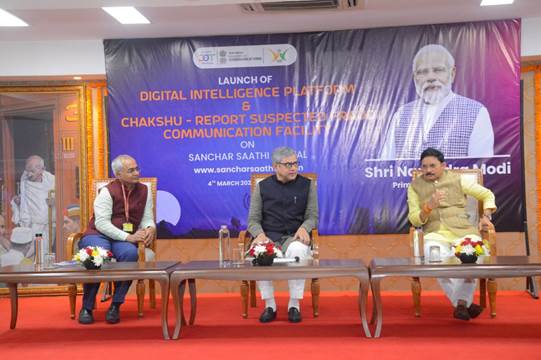
- 05 Mar 2024
Why is it in the News?
The Department of Telecommunications (DoT) recently launched its ‘Digital Intelligence Platform (DIP)’ to curb the misuse of telecom resources in cybercrimes and financial frauds, and the ‘Chakshu’ facility on the Sanchar Saathi portal to enable citizens to report suspected fraud communication.
About Digital Intelligence Platform (DIP):
- Digital Intelligence Platform (DIP) is developed by the Department of Telecommunications.
- It is a secure and integrated platform for real time intelligence sharing, information exchange and coordination among the stakeholders i.e. Telecom Service Providers (TSPs), law enforcement agencies (LEAs), banks and financial institutions (FIs), social media platforms, identity document issuing authorities etc.
- The portal also contains information regarding the cases detected as misuse of telecom resources. The shared information could be useful to the stakeholders in their respective domains.
- It also works as a backend repository for the citizen-initiated requests on the Sanchar Saathi portal for action by the stakeholders.
- The DIP is accessible to the stakeholders over secure connectivity and the relevant information is shared based on their respective roles.
- The said platform is not accessible to citizens.
What is the Chakshu Facility?
- Chakshu is the latest addition to the citizen centric facilities already available on the Sanchar Saathi portal of DoT.
- It facilitates citizens to report suspected fraud communication received over call, SMS or WhatsApp with the intention of defrauding like KYC expiry or update of bank account / payment wallet / SIM / gas connection / electricity connection, sextortion, impersonation as government official / relative for sending money, disconnection of all mobile numbers by Department of Telecommunications etc.
- In case, a citizen is already a victim of cyber-crime or financial fraud, it is advised to report at cyber-crime helpline number 1930 or website https://www.cybercrime.gov.in of Government of India.
Carbon Capture and How it Can Help Save the Planet
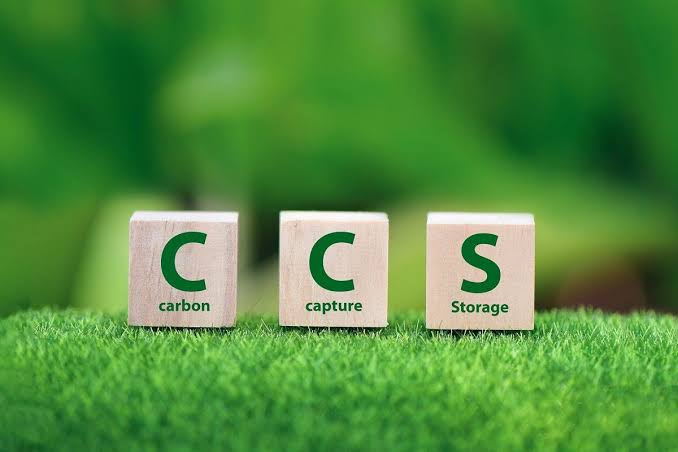
- 05 Mar 2024
Why is it in the News?
Germany has recently declared its approval for carbon capture and offshore storage for specific industrial sectors.
What is Carbon Capture and Storage?
- CCS refers to a host of different technologies that capture CO2 emissions from large point sources like refineries or power plants and trap them beneath the Earth.
- Notably, CCS is different from carbon dioxide removal (CDR), where CO2 is removed from the atmosphere.
- CCS involves three different techniques of capturing carbon, including: Post-combustion, Pre-combustion, and Oxyfuel combustion.
- In post-combustion, CO2 is removed after the fossil fuel has been burnt. By using a chemical solvent, CO2 is separated from the exhaust or ‘flue’ gasses and then captured.
- Pre-combustion involves removing CO2 before burning the fossil fuel. “First, the fossil fuel is partially burned in a ‘gasifier’ to form synthetic gas. CO2 can be captured from this relatively pure exhaust stream,” according to a report by the British Geological Survey. The method also generates hydrogen, which is separated and can be used as fuel.
- In oxyfuel combustion, the fossil fuel is burnt with almost pure oxygen, which produces CO2 and water vapor. The water is condensed through cooling and CO2 is separated and captured. Out of the three methods, oxyfuel combustion is the most efficient but the oxygen burning process needs a lot of energy.
- Post-combustion and oxyfuel combustion equipment can be retro-fitted in existing plants that were originally built without them. Pre-combustion equipment, however, needs “larger modifications to the operation of the facility and are therefore more suitable to new plants.
- After capture, CO2 is compressed into a liquid state and transported to suitable storage sites.
- Although CO2 can be transported through ship, rail, or road tanker, pipeline is the cheapest and most reliable method.
Can Carbon Capture Help Save the world?
- Operational CCS projects generally claim to be 90 percent efficient, meaning they can capture 90 per cent of carbon and store it.
- Studies, however, have shown that a number of these projects are not as efficient as they claim to be.
- For example, a 2022 study by the Institute for Energy Economics and Financial Analysis (IEEFA) found most of the 13 flagship CCS projects worldwide that it analyzed have either underperformed or failed entirely.
- Moreover, CCS technologies are quite expensive.
- When CCS is attached to coal and gas power stations it is likely to be at least six times more expensive than electricity generated from wind power backed by battery storage.
- It is far cheaper and more efficient to avoid CO2 emissions in the first place.
- There are also only a few operational CCS projects across the world even though the technology has been pushed for decades.
- According to the International Energy Agency (IEA), there were 40 operational CCS projects in 2023, which captured more than 45 metric tonnes (Mt) of CO2 annually.
- To ensure the planet doesn’t breach the 1.5 degree Celsius temperature increase limit, it would take an “inconceivable” amount of carbon capture “if oil and natural gas consumption were to evolve as projected under today’s policy settings.
- It added that the electricity required to capture that level of carbon as of 2050 would be more than the entire planet’s use of electricity in 2022.
- Therefore, there couldn’t be an overreliance on carbon capture as a solution to tackle climate change.
Grey-zone Warfare Latest Entry in Lexicon of Warfare
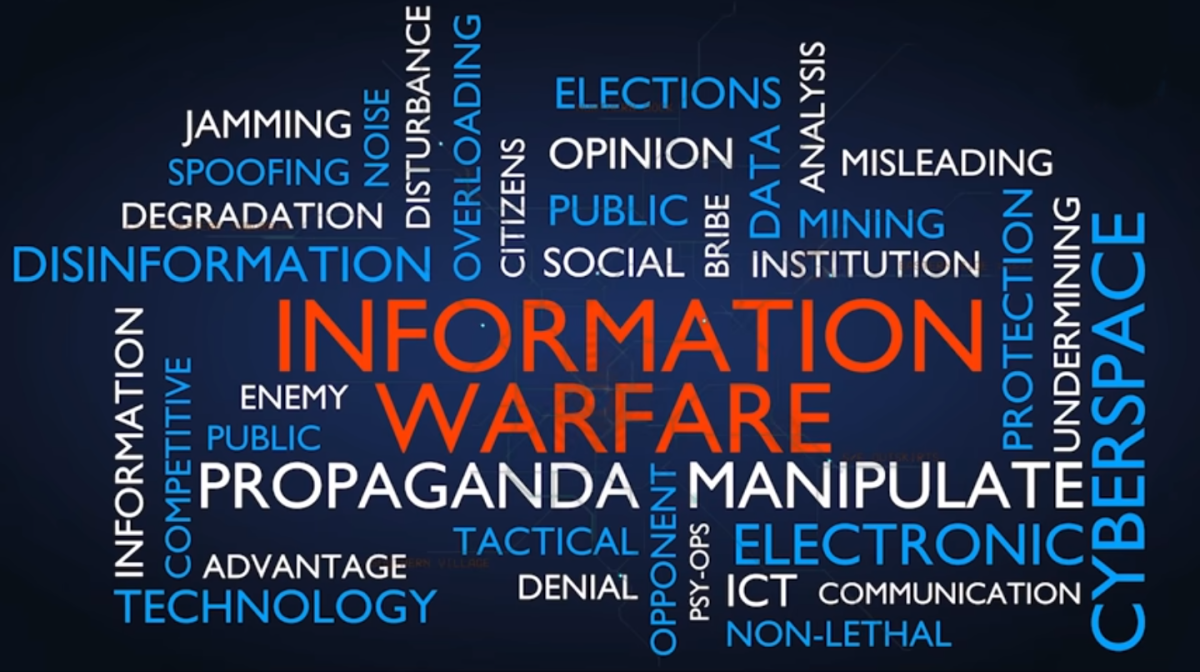
- 04 Mar 2024
Why is it in the News?
On the last day of the 2024 Raisina Dialogue (February 24), India’s Chief of Defence Staff General Anil Chauhan said that “grey zone warfare” is the latest in informal warfare.
What is the Grey Zone Warfare?
- Grey zone warfare refers to a strategic approach where a nation seeks to gain advantages over others without engaging in overt conflict.
- It involves a series of tactics, including cyberattacks, disinformation campaigns, and economic pressures, aimed at subtly undermining or destabilizing adversaries.
- China has notably employed this strategy against India and neighboring countries.
What are the China's Grey Zone Tactics Against India?
- South China Sea Activities: China asserts its dominance in the South China Sea using naval and civilian vessels, raising tensions with neighboring countries like India.
- Infrastructure Near Borders: China constructs infrastructure and settlements near India's borders, bolstering territorial claims and strategic positioning.
- Digital Investments: China invests in Indian digital platforms and media, influencing public narratives and perceptions.
India's Counter-Measures:
- Inter-Agency Collaboration: India promotes collaboration among defense, intelligence, and law enforcement agencies to devise comprehensive strategies to counter grey zone threats.
- Enhanced Vigilance: India increases surveillance and presence in border areas and strategic locations to detect and respond to covert Chinese activities.
- Regulating Foreign Investments: India scrutinizes foreign investments in critical sectors, particularly technology, to safeguard national security interests.
Long-Term Implications for India:
- Information Warfare: Grey zone conflicts often involve digital misinformation, influencing public opinion and perceptions.
- Economic Leverage: Dependency on foreign investments poses vulnerabilities if used as leverage by investing nations.
- Technology Dependency: Heavy reliance on foreign technology exposes India to risks, emphasizing the need to bolster indigenous technological capabilities.
Conclusion
Grey zone warfare encompasses a multifaceted strategic landscape, blending digital, economic, and geopolitical tactics. India recognizes these challenges and is actively devising strategies to navigate this complex terrain.
PM Modi hails those supporting wildlife conservation efforts on World Wildlife Day
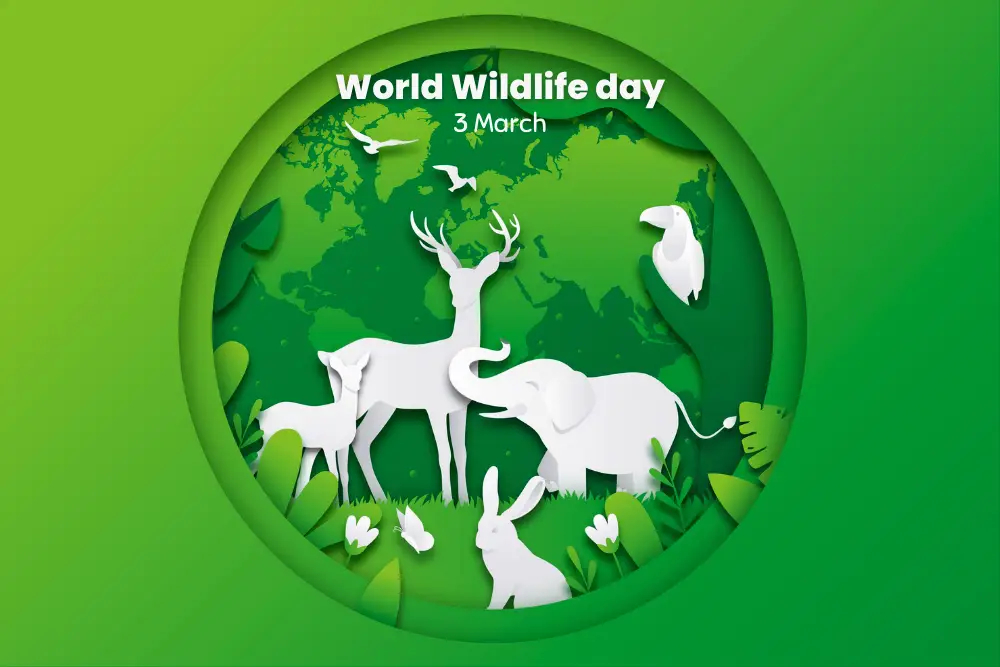
- 04 Mar 2024
Why is it in the News?
On the occasion of World Wildlife Day on March 3, Prime Minister Narendra Modi lauded those at the forefront of sustainable practices and supporting wildlife conservation efforts.
About the World Wildlife Day:
- World Wildlife Day is observed to advocate for sustainable practices that contribute to biodiversity conservation and to enhance public consciousness about the importance of safeguarding and nurturing animals.
- It endeavors to underscore the interconnectedness of all life forms on Earth and to foster harmonious coexistence between humans and animals through activism, advocacy, and education.
Origins:
- Initially proposed by Thailand to the UN General Assembly in 2013, World Wildlife Day aimed to dedicate a day to spotlight the significance of wild animals and plants worldwide.
- On December 20, 2013, the General Assembly adopted a resolution, designating March 3 as World Wildlife Day from 2014 onwards.
- Coinciding with the day, the Convention on International Trade in Endangered Species of Wild Fauna and Flora (CITES) was signed in 1973, emphasizing the importance of safeguarding species from the threats of international trade.
The theme of WWD 2024:
- The theme, "Connecting People and Planet: Exploring Digital Innovation in Wildlife Conservation," underscores the potential of technological advancements to revolutionize conservation efforts.
- In today's digital era, technological breakthroughs offer novel solutions to persistent conservation challenges, making this theme particularly relevant.
Significance:
- World Wildlife Day serves as a vital global awareness platform for animal protection and conservation.
- It reinforces the intrinsic value of animals and advocates for treating them with compassion, integrity, and reverence.
About the Convention on International Trade in Endangered Species of Wild Fauna and Flora (CITES):
- CITES is an international treaty that aims to regulate and monitor the trade of endangered plants and animals, including their parts and derivatives, to ensure their survival in the wild.
- Under CITES, member countries are required to regulate and monitor the trade of endangered species through a system of permits and quotas.
- They must also report regularly on their implementation of the treaty and collaborate with other countries to ensure its effectiveness.
- Currently, CITES has 184 parties.
Several OPEC+ nations extend oil cuts to boost prices
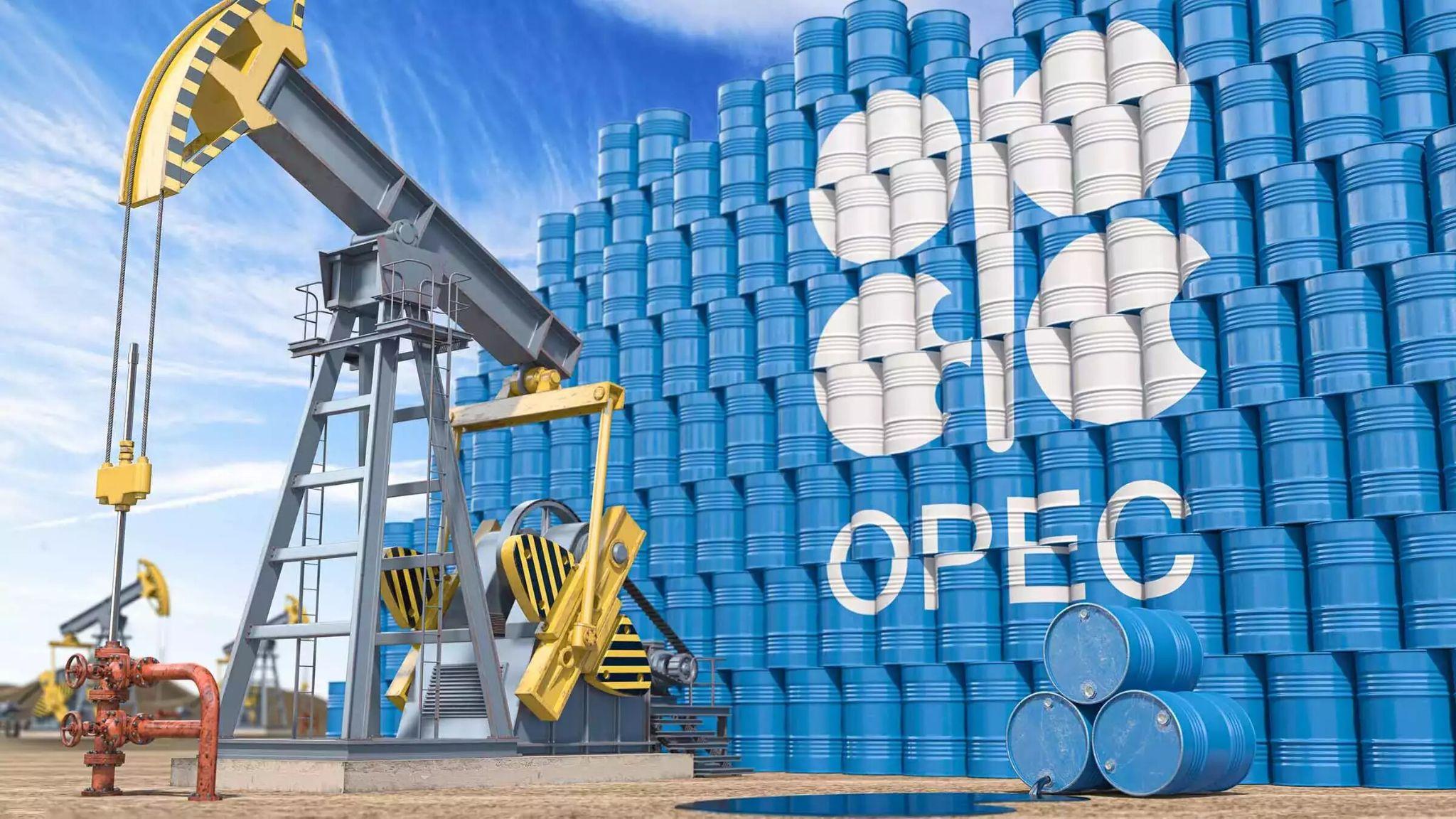
- 04 Mar 2024
Why is it in the News?
Moscow, Riyadh, and several other OPEC+ members announced extensions to oil production cuts first announced in 2023 as part of an agreement among oil producers to boost prices following economic uncertainty.
What is the OPEC+ Oil Alliance?
- OPEC+ is a coalition of oil-exporting nations that convenes regularly to determine the quantity of crude oil to offer on the global market.
- Origin: This alliance was established in late 2016 to formalize a framework for collaboration between OPEC and non-OPEC oil-producing nations on a consistent and sustainable basis.
- The primary objective of these nations is to collaborate on regulating crude oil production to stabilize the oil market.
- OPEC+ collectively controls approximately 40% of global oil supplies and holds over 80% of proven oil reserves.
- At its core, OPEC+ consists of OPEC member states, predominantly comprising nations from the Middle East and Africa.
- Membership: It includes OPEC member states along with Azerbaijan, Bahrain, Brunei, Kazakhstan, Russia, Mexico, Malaysia, South Sudan, Sudan, and Oman.
About the Organization of the Petroleum Exporting Countries (OPEC):
- OPEC, short for the Organization of the Petroleum Exporting Countries, is a permanent intergovernmental organization comprised of oil-exporting nations.
Mission:
- To coordinate and harmonize the petroleum policies of its member countries.
- To ensure the stability of oil prices in global oil markets, aiming to eliminate detrimental and unnecessary fluctuations.
- Formation: Founded in 1960 by the five original members - Iran, Iraq, Kuwait, Saudi Arabia, and Venezuela.
- Presently, it consists of 13 member countries, which include Algeria, Angola, Congo, Equatorial Guinea, Gabon, Libya, Nigeria, and the United Arab Emirates.
- Headquarters: Located in Vienna, Austria.
India halts Pakistan-bound ship suspected of carrying CNC machines from China
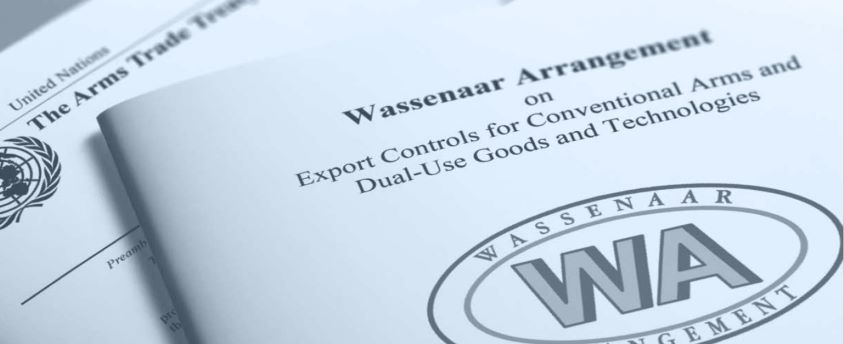
- 04 Mar 2024
Why is it in the News?
Recently, Indian security agencies have intercepted a Pakistan-bound ship from China at Mumbai's Nhava Sheva port.
What are CNC Machines and Wassenaar Arrangements?
- CNC machines are controlled by a computer and offer efficiency, consistency, and accuracy not possible manually.
- These machines have been included in the Wassenaar Arrangement since 1996.
- This international arms control regime aims to stop the proliferation of equipment with both civilian and military uses, with India being among the 42 member countries exchanging information on transfers of conventional weapons and dual-use goods and technologies.
About the Wassenaar Arrangement:
- The Wassenaar Arrangement is a voluntary export control framework established in July 1996.
- Comprising 42 member nations, it facilitates the exchange of information regarding transfers of conventional weaponry and dual-use goods and technologies.
- Dual-use items possess the capacity for both civilian and military applications.
- The arrangement's secretariat is headquartered in Vienna, Austria.
Membership:
- The arrangement boasts 42 member states, predominantly consisting of NATO and EU nations.
- Members are obligated to report arms transfers and dual-use goods and technology transfers or denials to destinations beyond the arrangement biannually.
- India became a member of the Arrangement in 2017.
Objectives:
- Central to its operation is the continual exchange of technology-related information, encompassing both conventional and nuclear-capable technologies, among member states.
- This information exchange involves the maintenance and refinement of comprehensive lists of materials, technologies, processes, and products deemed militarily significant.
- The primary goal is to regulate the movement of technology, materials, or components to entities or nations that could jeopardize global security and stability.
Wassenaar Arrangement Plenary:
- The WA Plenary is the decision-making and governing body of the Arrangement.
- It is composed of representatives of all Participating States who normally meet once a year, usually in December.
- Chairmanship of the Plenary is subject to annual rotation among Participating States.
- In 2018, the United Kingdom held the Plenary Chair, while Greece assumed the position in 2019.
- Decisions within the Plenary are made through consensus.
Bengaluru's Rameshwaram cafe blast puts the spotlight on IEDs
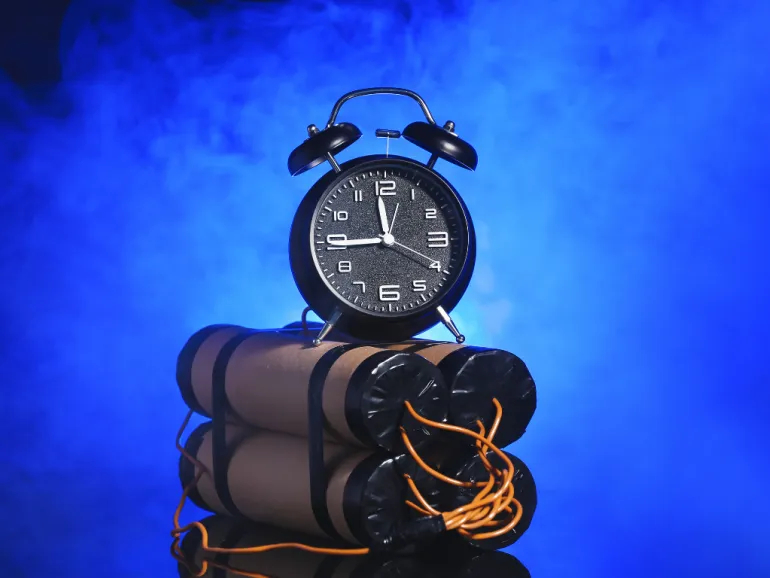
- 02 Mar 2024
Why is it in the News?
At least nine people were injured after an explosion at the bustling Rameshwaram Cafe in Bengaluru’s Whitefield area recently, possibly by an improvised explosive device (IED).
What is Improvised Explosive Devices (IEDs)?
- An Improvised Explosive Device (IED) refers to a makeshift explosive device constructed and deployed unorthodoxly or improvised.
- These devices are typically crafted using commonly available materials, including explosives, triggers, and containers, often to cause destruction, injury, or death.
- IEDs can vary widely in design and complexity, ranging from simple pipe bombs to more intricate devices incorporating timers, remote controls, or even cellular communication for activation.
- IEDs can be deployed using a vehicle, carried, placed, or thrown by a person, delivered in a package, or concealed on the roadside.
- Due to their adaptable nature, IEDs are commonly used by insurgents, terrorists, and other malicious actors to carry out attacks against both military and civilian targets.
- Their unpredictable nature and often concealed placement make them particularly challenging for security forces to detect and mitigate.
- Efforts to counter IED threats involve a combination of technological advancements, intelligence gathering, and counterinsurgency strategies aimed at identifying and neutralizing these devices before they can cause harm.
Types of IEDs:
- Vehicle-Borne IEDs: Among the most destructive forms of IEDs are those concealed within vehicles. These can be driven to specific locations and detonated, causing massive explosions capable of levelling buildings.
- Suicide Bombings: Suicide bombings involve individuals strapping IEDs to their bodies, becoming human carriers of destruction. This method inflicts maximum damage in densely populated areas.
- Package IEDs: Package IEDs are small devices hidden in innocuous-looking packages. They are often placed in public spaces, targeting unsuspecting victims.
Methods of IED Initiation:
- Remote Control: IEDs can be remotely triggered using various methods, such as cell phones or radio signals, allowing attackers to maintain a safe distance from the explosion.
- Pressure Activation: Pressure-sensitive IEDs detonate when a certain amount of pressure is applied, making them lethal traps for those who inadvertently trigger them.
- Timers: IEDs can also be equipped with timers, which delay the explosion to occur at a specific time, further complicating detection and prevention.
The Devastating Impact of IEDs:
- The aftermath of IED explosions is often catastrophic, leading to loss of life, severe injuries, and widespread damage to infrastructure.
- The psychological impact on survivors and affected communities can be long-lasting.
Detection Technologies and Challenges:
- Detection technologies such as (Metal Detectors, X-ray and Imaging Scanners, Explosive Trace Detection (ETD), and Sniffer Dogs) play a critical role in countering the threat of Improvised Explosive Devices (IEDs), but they also face numerous challenges due to the evolving nature of these devices.
India to Make Climate Risk Disclosures Mandatory for Banks
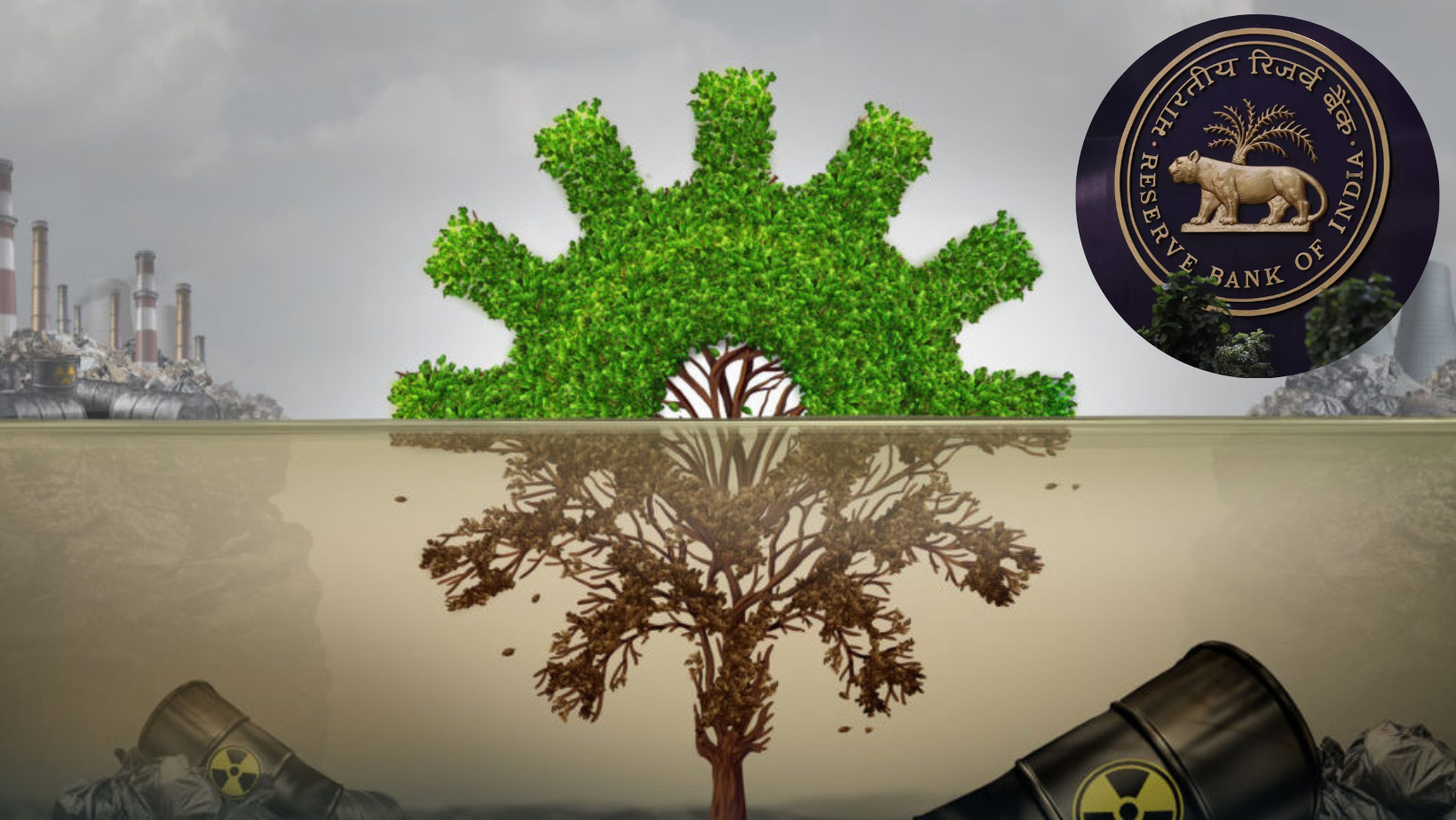
- 02 Mar 2024
Why is it in the News?
While acknowledging the importance of the environment and its long-term impact on organizations and the economy as a whole, the Reserve Bank of India (RBI) has now released a draft framework for banks to follow.
What are Climate-led Financial Risks?
- “Climate-related financial risks” means the potential risks that may arise from climate change or from efforts to mitigate climate change, their related impacts, and economic and financial consequences according to RBI.
- These risks manifest through two primary channels: physical risks and transition risks.
- Physical Risks: These entail the economic and financial consequences arising from the escalating frequency and severity of extreme weather events linked to climate change. Such events can exert pressure on the financial sector in various ways:
- Renewable Energy Sector (REs) Vulnerability: The occurrence of local or regional weather events may strain the anticipated cash flows to REs, impacting their financial stability. Furthermore, chronic flooding or landslides pose risks to the collateral that REs have pledged as security for loans.
- Infrastructure and Property Damage: Severe weather phenomena can inflict damage on the physical assets and data centres owned or leased by REs, impairing their capacity to deliver financial services effectively.
- Transition Risks: These risks stem from the transition toward a low-carbon economy, influenced by factors such as evolving climate-related policies, technological advancements, and changing consumer behaviours. Key considerations include:
- Policy and Regulatory Shifts: Changes in climate-related regulations and policies, along with advancements in technologies, can significantly influence the transition process. Moreover, alterations in customer sentiments and behaviour patterns play a pivotal role in shaping this transition.
- Economic Impact: The transition toward reducing carbon emissions carries substantial implications for the economy at large. It entails a shift toward sustainable practices and investments, which can impact various sectors and industries differently.
- Recognizing and addressing these climate-related financial risks is imperative for ensuring the resilience and stability of the financial sector in the face of evolving environmental challenges.
About the Framework:
- Commencing from the financial year 2025-26, all major financial institutions across India, including top-tier NBFCs and renowned NBFCs, will be mandated to furnish details about governance, strategy, and risk management strategies.
- Additionally, they will be required to initiate disclosure of metrics and targets from the fiscal year 2027-28.
Key highlights of the framework include:
- Enhanced Disclosure Requirements: Banks will be obligated to unveil climate-related risks that could potentially impact their financial stability.
- This measure aims to facilitate a comprehensive understanding of climate-related financial risks and opportunities, fostering early assessment and proactive management.
- Scope of Coverage: The framework encompasses various financial entities, including scheduled commercial banks (excluding local area banks, payments banks, and regional rural banks), Tier-IV primary urban cooperative banks (UCBs), and top and upper layer non-banking financial companies (NBFCs).
- Disclosure Obligations for Renewable Energy Sector (REs): REs are mandated to disclose crucial information related to climate-related risks and opportunities across short-, medium-, and long-term horizons. Key areas of disclosure include:
- Identification of Climate-Related Risks and Opportunities: REs are required to identify and disclose climate-related risks and opportunities relevant to their operations and financial outlook.
- Assessment of Impact: REs must delineate the impact of climate-related risks and opportunities on their business strategies and financial planning, enabling stakeholders to comprehend the implications on their overall strategy.
- Resilience Evaluation: REs are tasked with evaluating the resilience of their strategies in light of diverse climate scenarios, thereby ensuring robustness in navigating potential challenges and capitalizing on emerging opportunities.
Significance:
- A pressing requirement exists for an improved and standardized disclosure framework for regulated entities to mitigate financial risks.
- Without such a framework, there is a risk of assets being mispriced and capital being misallocated, which could have adverse repercussions on financial stability. Consequently, the imperative for a standardized disclosure framework on climate-related financial risks became evident.
How India’s first semiconductor fabrication plant can help plug into the global value chain
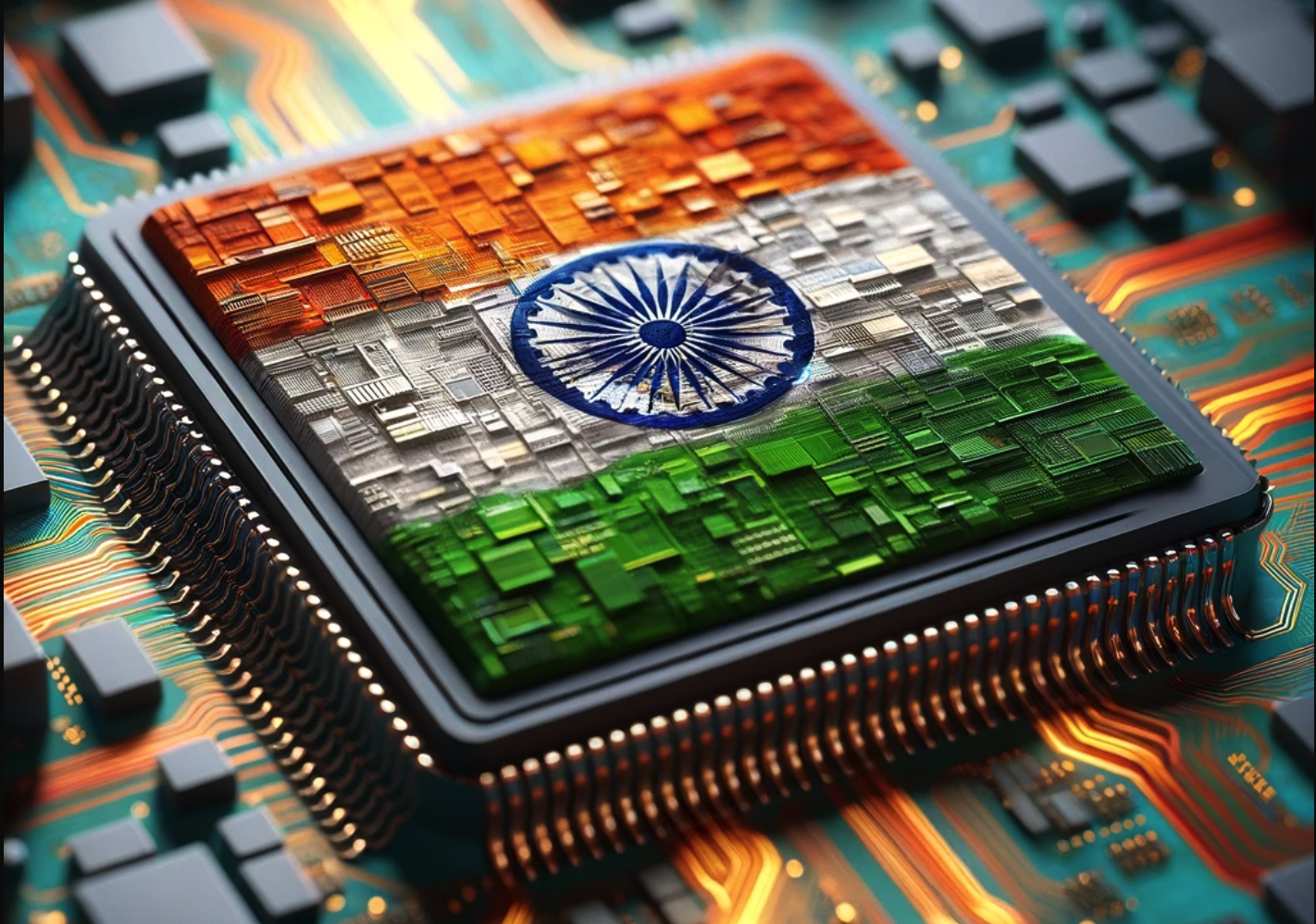
- 02 Mar 2024
Why is it in the News?
The Union Cabinet recently approved the country's first semiconductor fab to be made by the Tata Group in collaboration with Powerchip Taiwan.
What is Semiconductor Fabrication?
- The semiconductor fabrication process is a complex and highly specialized series of steps that transform raw materials into functional electronic components.
- This process involves a multitude of techniques and technologies, with each stage requiring precise control and attention to detail.
- A semiconductor fab -- short for fabrication -- is a manufacturing plant in which raw silicon wafers are turned into integrated circuits (ICs).
- A fab lab features a clean room where ICs are etched onto wafers.
- The completed chips are sent to a back-end assembly and test facility before they are packaged and sold.
- A semiconductor fab facility always includes a clean room -- so known because its environment is carefully controlled to eliminate dust and vibrations and to keep the temperature and humidity within a specific narrow range.
- Contamination can enter the fab environment through external sources, resulting in damage to products that can affect overall yield.
- To minimize the losses, all potential sources of contamination are thoroughly analysed and cleaned.
- For example, the tools used in the chip manufacturing process have low levels of particulates and fibres.
- The goal is to ensure that extraneous contamination is not introduced into the semiconductor fab to ensure the highest quality of the final products.
Technology Used in Semiconductor Fab Labs:
- Photolithography: Photolithography is a crucial optical process in the fabrication process, as it is used to create intricate circuit patterns on a single wafer's surface.
- This is achieved by coating the wafer with a photosensitive material, called a photoresist, and then exposing it to high-wavelength deep ultraviolet (DUV) or extreme ultraviolet (EUV) light through a mask containing the desired pattern.
- The exposed photoresist undergoes a chemical change, which allows it to be selectively removed.
- It leaves behind a patterned layer that serves as a protective layer for subsequent processing steps, such as etching and deposition.
Minimum age to cast postal ballots hiked to 85 years
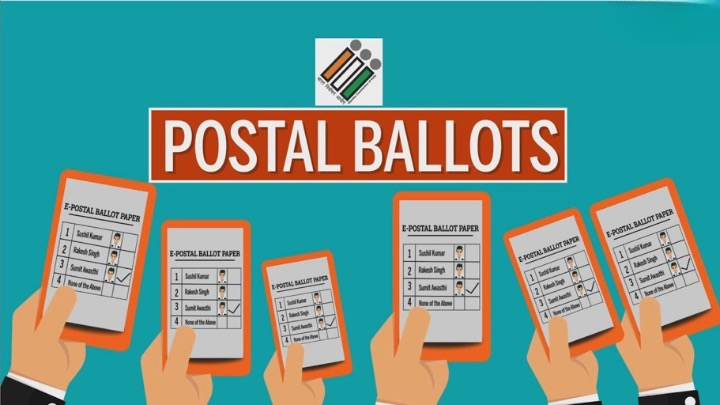
- 02 Mar 2024
Why is it in the News?
For the upcoming Lok Sabha and State Assembly elections, senior citizens who are 85 years and older will be able to opt for postal ballots as the government recently amended the rule to increase the eligibility from the current limit of 80 years and above.
News Summary:
- The government, in collaboration with the Election Commission, has introduced amendments to the Conduct of Election Rules (1961), specifically targeting the eligibility criteria for voting by postal ballot.
- Notably, the minimum age for senior citizens eligible for postal voting has been increased from 80 years to 85 years.
- Previously, Rule 27A of the Conduct of Election Rules had extended the postal ballot facility to senior citizens above 80 years, persons with disabilities, poll officers, and individuals diagnosed with COVID-19.
- This provision was first implemented during the 2020 Bihar assembly polls, coinciding with the onset of the pandemic.
- Despite the initial extension of postal voting rights to senior citizens aged 80 and above, a subsequent review by the Election Commission revealed that only a small fraction, approximately 2-3%, of eligible voters in this age group opted for postal ballots.
- The majority preferred to physically visit polling stations to cast their votes.
- Considering the statistics indicating that the total number of senior citizens above 80 years stands at 1.75 crore, with 98 lakh falling within the age range of 80-85 years, the government deemed it necessary to amend the existing rule.
- This adjustment reflects a nuanced approach aimed at ensuring efficient electoral processes while addressing the preferences and needs of elderly voters.
What is Postal Voting?
- Postal voting is only available to a specific group of voters.
- By retyping her choices on the ballot paper and returning it to the inspection officer before counting, a voter can remotely cast her ballot using this feature.
Who Can Avail This?
- Armed forces members such as those in the Army, Navy, and Air Force, armed police officers serving outside their home states, government workers stationed outside of India, and their wives are only eligible to vote by mail.
Features:
- Voters may use this service from any location outside of the designated constituency.
- This system makes it easier to create voter electoral roll data for services.
- It has two layers of security, making it a secure system:
- 1. Downloading the encrypted electronically transmitted postal ballot (ETPB) file requires an OTP (one-time password).
- 2. To decrypt, print, and deliver ETPB, a PIN is necessary.
- By sending postal ballots electronically to eligible service voters, this system addresses the time constraint associated with mailing postal ballots.
- The specific quick response code ensures confidentiality and prevents the duplication of cast ETPB.
Concerned Raised by Political Parties:
- Parties argue that allowing voters 65 and older to cast postal ballots violates voting confidentiality since many of the population lacks education and may ask for help from others at various points, ultimately identifying their chosen candidate.
- Their exposure to "administrative influence or influence by the government or the ruling party" also results from this.
How the development of Agaléga figures in India’s vision for its maritime neighbourhood
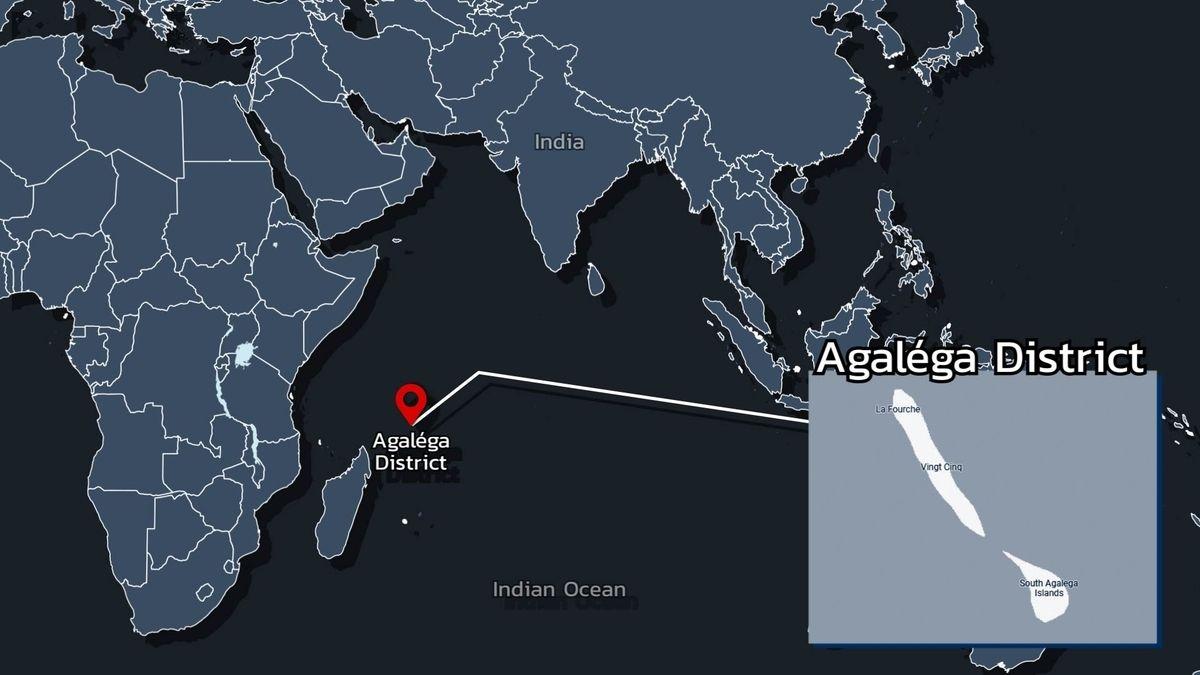
- 02 Mar 2024
Why is it in the News?
Recently, Prime Ministers Narendra Modi and Pravind Jugnauth jointly inaugurated an airstrip and the St James Jetty on North Agaléga Island in the Indian Ocean.
About Agalega Islands:
- Agaléga Island comprises two islets, a long and thin northern island and a shorter, round southern island.
- It is slightly over 3,000 kilometres from the nearest mainland Indian coast, deep in the Indian Ocean near Madagascar.
- Despite its pristine appeal, Agaléga remains largely undiscovered by tourists and there are no hotels, water bungalows, or bustling tourist shops.
- Instead, approximately 300 islanders sustain themselves through coconut cultivation and fishing, maintaining a way of life passed down through generations.
Importance of Agalega Islands:
- The development of the Agalega Islands holds significant socio-economic and national security implications for Mauritius, aligning closely with India's maritime vision.
- Despite being a dependency of Mauritius, the islands have long remained underdeveloped, posing challenges to the sustainability and well-being of their inhabitants.
- Necessities often required referral to Mauritius due to the lack of infrastructure.
- Moreover, the absence of an official government or security presence posed a serious vulnerability, necessitating urgent attention.
- Recognizing the potential to transform this vulnerability into a strategic asset, Mauritius prioritized the development of the islands and the establishment of facilities capable of accommodating ships and aircraft.
- In this regard, the construction of a jetty and an airstrip emerged as imperative steps to bolster the islands' infrastructure.
- Given the shared interests and cooperation between Mauritius and India, the government of Mauritius selected India as its preferred development partner for this ambitious initiative.
Why did Mauritians Choose India?
- Ties between India and Mauritius go back to 1948, 20 years before the country’s independence from Britain.
- Seventy percent of the inhabitants of Mauritius are of Indian origin, and the two countries share deep historical, social, and cultural bonds.
- The consistent feature in the history of bilateral relations has been friendship and trust at all levels — the political leadership, the diplomatic and military communities, as well as between the peoples of the two countries.
- The development of these strategically located islands required trust more than anything else. India was the obvious choice.
Significance for India:
- The goodwill and trust between the two countries will be further enhanced. India will welcome opportunities to further develop these islands in collaboration with Mauritius as the latter deems appropriate.
- The joint development of Agaléga underscores India’s commitment to the vision of Security And Growth for All in the Region (SAGAR), and its willingness to assist smaller maritime nations in building capacity and developing capability.
- It will indicate to other maritime neighbours that India is a benign and friendly country that respects the sovereignty of independent nations.
- India would like to emerge as the preferred development and security partner in the Indian Ocean Region.
Doomsday Glacier has lost 50 billion tons of ice, melting began 80 years ago
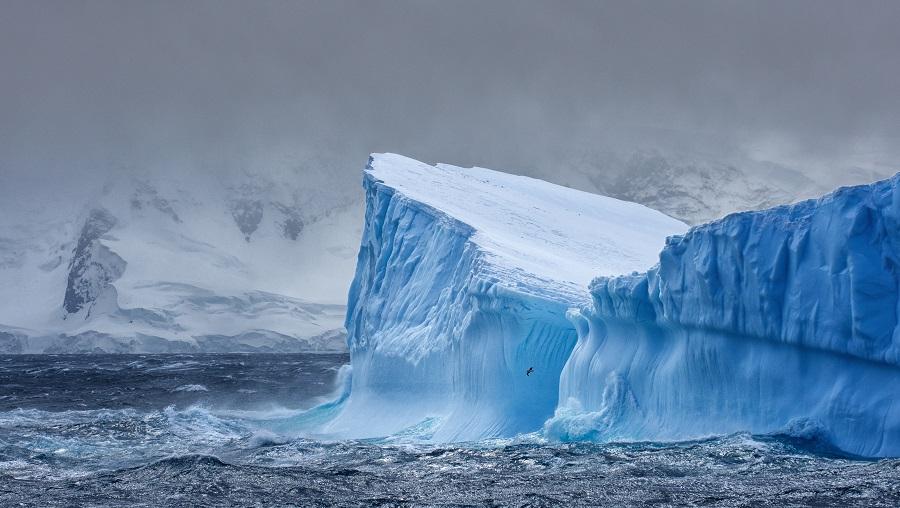
- 01 Mar 2024
Why is it in the News?
Antarctica's Doomsday Glacier, the world's widest glacier, has lost over 50 billion tons of ice and the melting rate is on the rise as the continent gets warmer.
What is Doomsday Glacier?
- The Thwaites Glacier (also known as Doomsday Glacier), a massive and world’s widest glacier is located in West Antarctica.
- The Doomsday nickname reflects the potential for catastrophic flooding if the glacier were to collapse completely.
- Scientists are particularly concerned about Thwaites Glacier because of its size and location.
- If it were to collapse or significantly retreat, it could lead to a more rapid flow of ice from the interior of West Antarctica into the ocean, contributing to rising sea levels.
- The collapse could lead to a 65 cm rise in global sea level.
- The ice loss in the region has been observed to be accelerating since the 1970s, however, so far it remained unclear as to when this retreat began.
- The significant glacial retreat began in the 1940s and the findings coincide with previous work that studied retreat on Pine Island Glacier and found glacial retreat began in the ‘40s as well.
- This change is not random nor specific to one glacier but It is part of a larger context of a changing climate.
Why Did the Melting Begin?
- The meeting was kicked off by an extreme El Nino climate pattern that warmed the west Antarctic, and since then the glacier has not been able to recover from the damage.
- It is significant that El Niño only lasted a couple of years, but the two glaciers, Thwaites and Pine Island remain in significant retreat.
- Once the system is kicked out of balance, the retreat is ongoing.
- The Doomsday Glacier's melting remains one of the most crucial events triggered and accelerated by climate change and could lead to the submergence of several coastal regions of the world.
India to set up International Big Cat Alliance
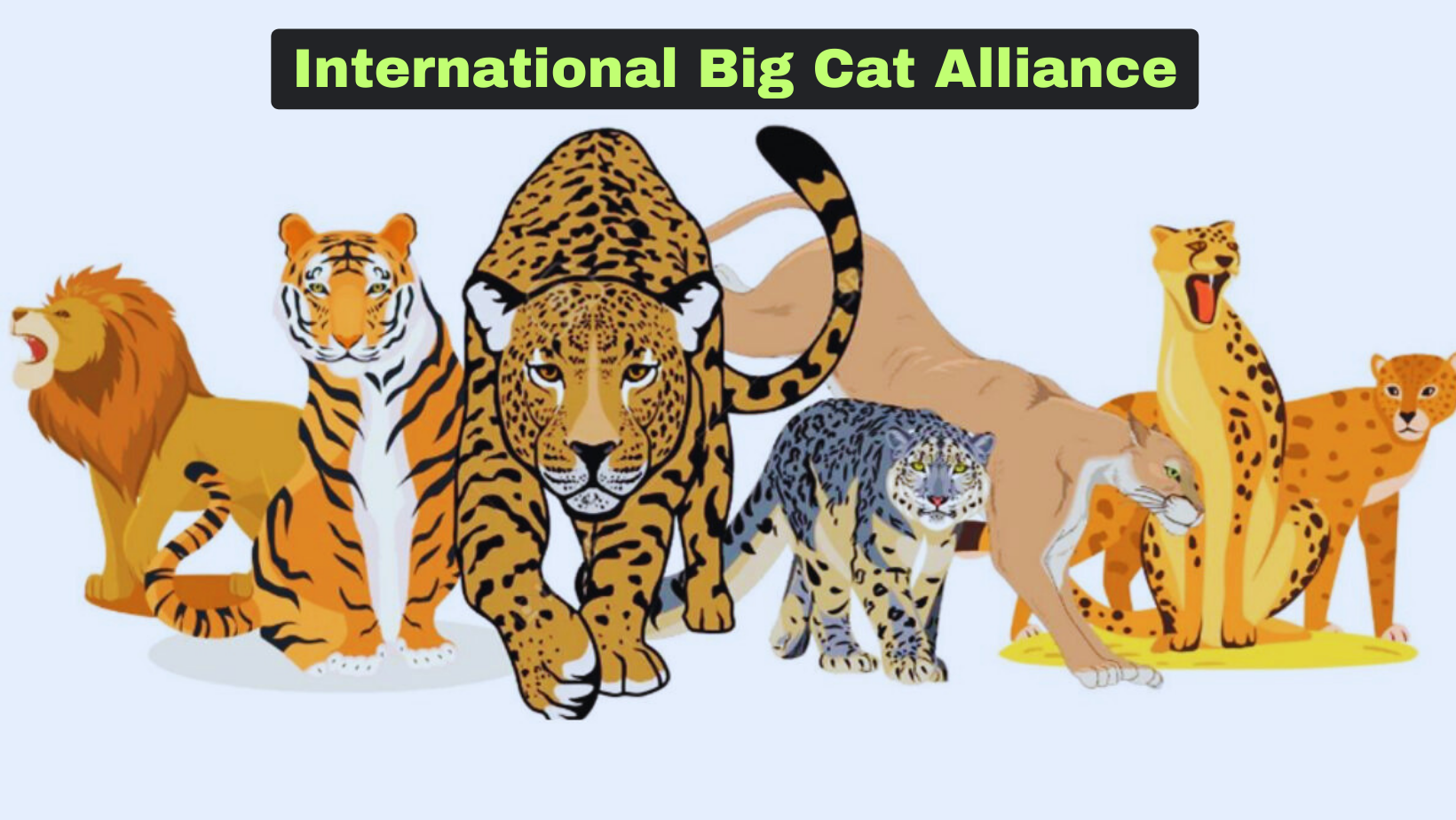
- 01 Mar 2024
Why is it in the News?
The Union Environment Ministry plans to set up and coordinate an International Big Cat Alliance (IBCA), along the lines of the International Solar Alliance, an India-headquartered initiative to promote solar installations globally.
About the International Big Cat Alliance (IBCA):
- The idea of the International Big Cat Alliance (IBCA) was first given by Prime Minister Modi during his speech on the occasion of Global Tiger Day in 2019.
- He called for developing an alliance of global leaders to curb poaching in Asia.
- The alliance was formally announced on April 9, 202, in Mysuru, as India commemorated the completion of 50 years of Project Tiger.
- The alliance will focus on the conservation of seven big cats, which include Tiger, Lion, Leopard, Snow Leopard, Puma, Jaguar, and Cheetah. Out of these, five are found in India.
- Membership to the IBCA is open to 97 'range' countries, encompassing the natural habitats of these big cats, as well as other interested nations and international organizations.
- The alliance aims to facilitate cooperation among countries to advance the conservation agenda for mutual benefit.
- Operating with a multifaceted approach, the IBCA endeavours to establish robust linkages across various domains, including knowledge sharing, capacity building, networking, advocacy, financial and resource support, research, technical assistance, education, and awareness.
- Governance of the alliance consists of a General Assembly comprising all member countries, a Council comprised of seven to fifteen member countries elected by the General Assembly for a five-year term, and a Secretariat.
- The IBCA Secretary General, appointed by the General Assembly upon the Council's recommendation, serves a specific term.
- To support its initiatives, the IBCA has secured initial funding of Rs. 150 crore from the Government of India for the period spanning from 2023-24 to 2027-28.
RBI tweaks norms related to the Regulatory Sandbox scheme

- 29 Feb 2024
Why is it in the News?
The Reserve Bank recently tweaked guidelines for the Regulatory Sandbox (RS) scheme under which participating entities will have to comply with digital personal data protection norms.
About the Regulatory Sandbox Scheme:
- The Regulatory Sandbox scheme denotes a controlled regulatory environment where new products or services can undergo live testing.
- Functioning as a "safe space" for businesses, regulators may offer certain relaxations for testing purposes within this environment.
- It serves as a structured platform for regulators to engage with the industry and develop regulations that foster innovation and enable the delivery of cost-effective financial products.
- The scheme holds potential as a tool for creating dynamic regulatory environments that adapt to emerging technologies through evidence-based learning.
Objectives:
- Offering innovative technology-led entities an opportunity for limited-scale testing of new products or services, potentially involving regulatory relaxations before broader implementation.
- At its core, the Regulatory Sandbox is a formal program allowing market participants to test new products, services, or business models in live settings, under appropriate oversight.
- Proposed financial services under the scheme should leverage new or emerging technology to address consumer needs or offer benefits.
- The overarching goal is to promote responsible innovation in financial services, enhance efficiency, and deliver consumer benefits.
- The Reserve Bank of India (RBI) introduced the 'Enabling Framework for Regulatory Sandbox' in August 2019 after extensive consultations.
- The updated framework mandates compliance with the Digital Personal Data Protection Act of 2023 for sandbox entities.
- Furthermore, the timeline for various stages of the Regulatory Sandbox process has been extended from seven to nine months.
- Fintech companies, including startups, banks, financial institutions, and other entities providing support to financial services businesses, are among the target applicants for entry into the Regulatory Sandbox.
European Parliament adopts nature restoration law
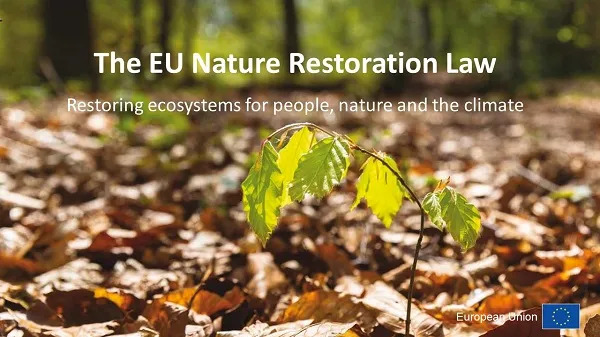
- 29 Feb 2024
Why is it in the News?
The European Parliament recently adopted the first European Union (EU) law to restore degraded ecosystems across the 27-nation political and economic bloc.
About the Nature Restoration Law:
- The Nature Restoration Law is hailed as a significant stride toward rejuvenating Europe’s natural habitats, with a staggering 81% currently classified as being in poor health.
- It sets a pioneering example for global emulation, emphasizing the criticality of safeguarding and revitalizing our natural environment for the welfare of forthcoming generations.
Objectives:
- This legislation aims to rejuvenate ecosystems, habitats, and species across the European Union's (EU) terrestrial and marine domains, fostering the enduring recuperation of diverse and robust nature.
- Additionally, it endeavors to contribute to the EU's climate mitigation and adaptation objectives while fulfilling international commitments.
- These directives aspire to encompass a minimum of 20% of the EU's land and marine territories by 2030, with the ultimate goal of restoring all ecosystems in need by 2050.
Specific Targets:
- Wetlands, forests, grasslands, rivers, lakes, heath & scrub, rocky habitats, and dunes: The objective is to enhance and restore biodiverse habitats on a large scale, fostering the recovery of species populations through habitat improvement and expansion.
- Pollinating Insects: The target is to reverse the decline of pollinator populations by 2030, aiming for a positive trajectory in pollinator numbers.
- Forest Ecosystems: The aim is to promote an upward trend in standing and fallen deadwood, varied aged forests, forest connectivity, common forest bird populations, and organic carbon reserves.
- Urban Ecosystems: The objective is to achieve zero net loss of green urban spaces by 2030 and expand the total area covered by green urban spaces by 2040 and 2050.
- Agricultural Ecosystems: The goal is to bolster grassland butterfly and farmland bird populations, increase organic carbon reserves in cropland mineral soils, and augment the proportion of agricultural land featuring diverse landscape characteristics.
About the European Union (EU):
- The European Union (EU) is a political and economic union of 27 European countries that collaborate on various issues, including trade, security, and environmental protection.
- Founded after World War II to promote peace and economic cooperation, the EU has evolved into a complex organization with its own institutions, laws, and currency (the euro).
- It operates on the principles of democracy, human rights, and the rule of law, with the European Commission, European Parliament, and European Council among its key decision-making bodies.
- The EU's single market allows for the free movement of goods, services, capital, and people across member states, fostering economic growth and prosperity.
- Additionally, the EU plays a prominent role in global affairs, advocating for multilateralism, sustainable development, and climate action.
Scientists are closer to creating a reference genome for Indians; 10,000 samples sequenced already
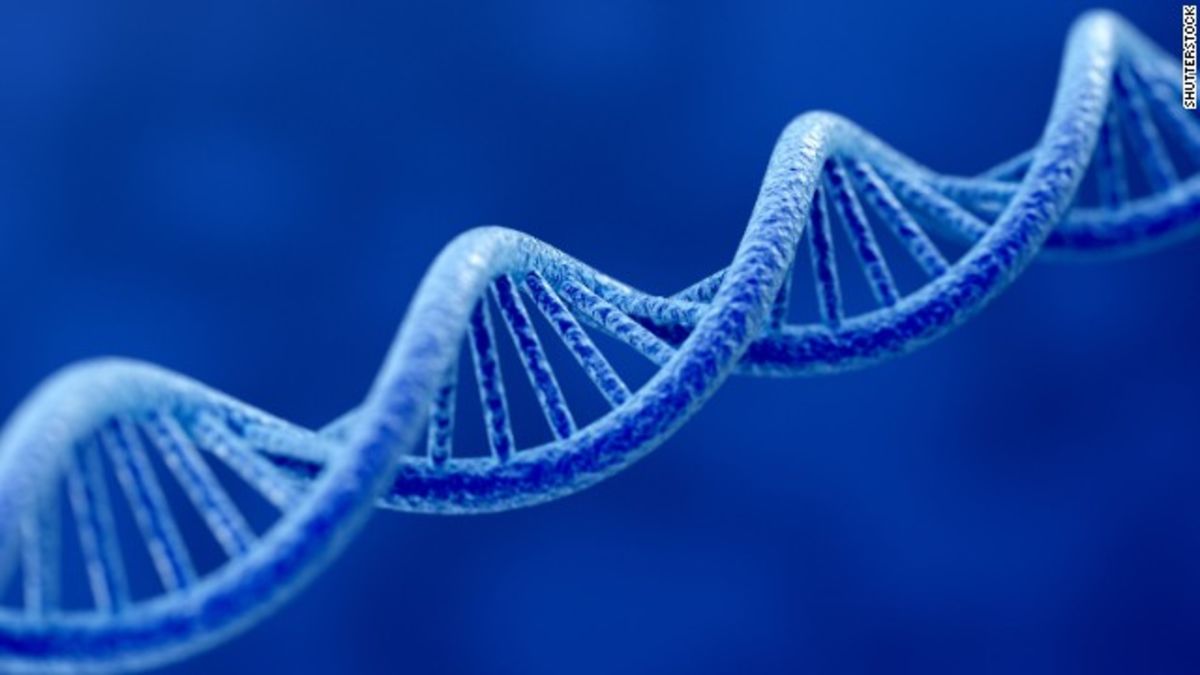
- 28 Feb 2024
Why is it in the News?
The Government’s ambitious Genome India initiative achieved a significant milestone Tuesday as researchers completed sequencing 10,000 healthy genomes from different regions of the country, representing 99 distinct populations.
News Summary:
- The Department of Biotechnology has announced the successful completion of India's '10,000 genome' project, aimed at establishing a comprehensive reference database of whole-genome sequences within the country.
- This milestone marks the creation of a detailed genetic map of India, offering significant potential for both clinicians and researchers in diverse fields.
- With India emerging as the largest genetic laboratory globally, this rich dataset is poised to catalyze advancements in the country's biology sector.
- Notably, India's bio-economy has witnessed remarkable growth, expanding from $10 billion in 2014 to over $130 billion in 2024, signaling a promising trajectory for future development.
- The entirety of the genomic dataset will be housed at the Indian Biological Data Centre (IBDC), serving as a valuable digital resource for research purposes.
- Established in 2022, the IBDC represents India's sole indigenous databank, eliminating the need for Indian researchers to rely on foreign servers for hosting biological datasets.
What is Genome Sequencing?
- Genome sequencing is the process of determining the exact order of the building blocks (nucleotides) that make up an organism's entire DNA, or genome.
- It's like reading the complete instruction manual for life, containing the information needed to create and maintain an organism.
Applications of Genome Sequencing:
- Healthcare: Doctors can diagnose diseases with greater accuracy, personalize treatments, and uncover the causes of rare conditions.
- Agriculture: Scientists can engineer crops with desired traits like disease resistance and improved yield, while breeders select animals with specific characteristics.
- Forensics: DNA profiling aids criminal investigations and paternity testing.
- Conservation: Studying the genetic diversity of endangered species helps with conservation efforts while analyzing invasive species' origins aids in controlling their spread.
What is the Human Genome Project (HGP)?
- Initiated in 1990, the Human Genome Project aimed to elucidate the entire sequence of the human genome.
- In 2023, the project culminated in the release of the latest version of the complete human genome, boasting a mere 0.3% error margin.
- Enabled by the Human Genome Project, whole-genome sequencing facilitates the examination of an individual's genome to uncover deviations from the average human genome.
- These deviations, or mutations, offer insights into an individual's susceptibility to diseases, their responsiveness to specific stimuli, and other pertinent genetic attributes.
About the Genome India Project:
- The Genome India Project stands as a pioneering initiative approved by the Department of Biotechnology, geared towards gene mapping.
- This project sets out with the ambitious objective of compiling an exhaustive repository documenting genetic diversity across the Indian populace.
- At its core, the endeavor seeks to conduct genome sequencing for more than 10,000 individuals spanning various geographic and ethnic backgrounds within India, ultimately laying the groundwork for a standardized reference genome specific to the Indian demographic.
Significance of the Genome India Project:
- Unveiling Unique Genetic Variants: The Genome India Project holds the key to unraveling genetic variants exclusive to India’s diverse population, enabling tailored drug formulations and therapeutic interventions.
- For instance, mutations like MYBPC3, linked to premature cardiac arrest and prevalent in 4.5% of Indians, underscore the necessity of region-specific genetic insights, contrasting with global rarity.
- Similarly, the discovery of the LAMB3 mutation, causing a severe skin disorder and impacting nearly 4% of the population around Madurai, emphasizes the localized genetic complexities absent in global databases.
- Comprehensive Database for India's Population: With a colossal population exceeding 1.3 billion, India boasts a mosaic of over 4,600 distinct population groups, many practicing endogamy.
- This vast demographic diversity underscores the need for a comprehensive genetic database tailored to India's populace, crucial for identifying and addressing disease-causing mutations prevalent within specific groups.
- Unlike extrapolating findings from global datasets, the Genome India Project provides precise genetic insights essential for Indian-centric healthcare strategies.
Google unveils Genie AI which can create video games from text and image prompts

- 28 Feb 2024
Why is it in the News?
Recently, Google DeepMind unveiled Genie, a novel model capable of creating interactive video games based solely on textual or image prompts.
What is Genie AI?
- Genie is a foundation world model that is trained on videos sourced from the Internet.
- The model can “generate an endless variety of playable (action-controllable) worlds from synthetic images, photographs, and even sketches.”
- It is the first generative interactive environment that has been trained in an unsupervised manner from unlabelled internet videos.
- When it comes to size, Genie stands at 11B parameters and consists of a spatiotemporal video tokenizer, an autoregressive dynamics model, and a simple and scalable latent action model.
- These technical specifications let Genie act in generated environments on a frame-by-frame basis even in the absence of training, labels, or any other domain-specific requirements.
What does Genie do?
- Genie is a new kind of generative AI that enables anyone – even children – to dream up and step into generated worlds similar to human-designed simulated environments.
- It can be prompted to generate a diverse set of interactive and controllable environments although it is trained on video-only data.
- It is a breakthrough as it makes playable environments from a single image prompt.
- According to Google DeepMind, Genie can be prompted with images it has never seen.
- This includes real-world photographs, and sketches, allowing people to interact with their imagined virtual worlds.
- When it comes to training, they focus more on videos of 2D platformer games and robotics.
- Genie is trained on a general method, allowing it to function on any type of domain, and it is scalable to even larger Internet datasets.
Why is it Important?
- The standout aspect of Genie is its ability to learn and reproduce controls for in-game characters exclusively from internet videos.
- This is noteworthy because internet videos do not have labels about the action that is performed in the video, or even which part of the image should be controlled.
- It allows you to create an entirely new interactive environment from a single image.
- This opens up many possibilities, especially new ways to create and step into virtual worlds.
- With Genie, anyone will be able to create their own entirely imagined virtual worlds.
Ex-SC Judge Justice AM Khanwilkar Appointed As Lokpal Chairperson
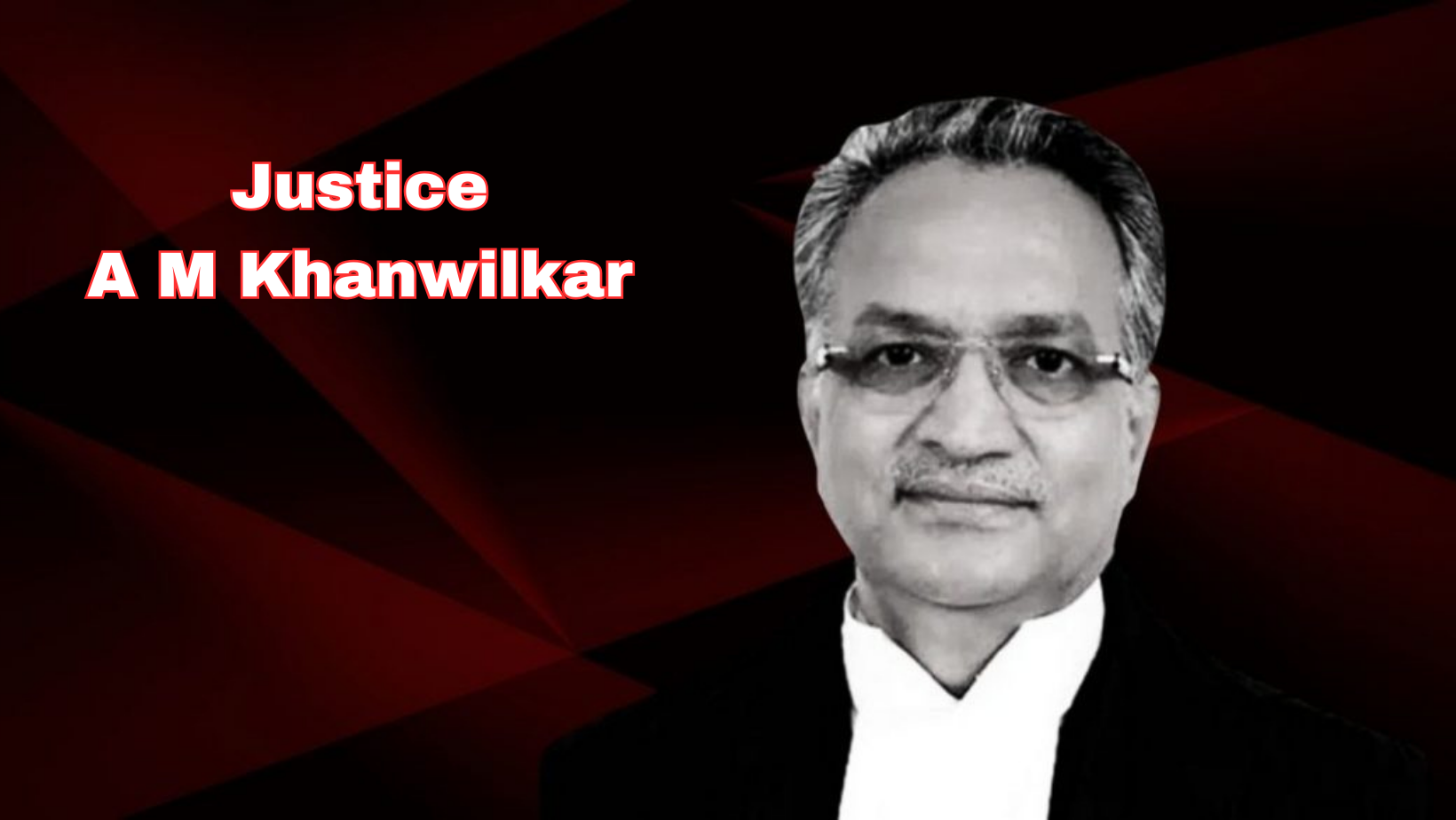
- 28 Feb 2024
Why is it in the News?
Nearly 19 months after he retired as a Supreme Court judge, Justice A M Khanwilkar was appointed the chairperson of the anti-corruption ombudsman Lokpal on Tuesday. The post fell vacant nearly two years ago.
Who is AM Khanwilkar?
- Justice Ajay Manikrao Khanwilkar was a Supreme Court judge between May 2016 and July 2022.
- He has also served as chief justice of the Madhya Pradesh High Court and the Himachal Pradesh High Court and as a judge of the Bombay High Court.
- Recently appointed as the Chairperson of the anti-corruption ombudsman Lokpal on Tuesday.
- The appointment came nearly two years after the post fell vacant.
- Khanwilkar was elected for the post following discussions by a high-level committee, which included:
- Prime Minister Narendra Modi
- Chief Justice of India DY Chandrachud
- Leader of the Opposition in Lok Sabha, Adhir Ranjan Chowdhury
- The Lokpal has been functioning without its permanent chief since the conclusion of Justice Pinaki Chandra Ghose's term on May 27, 2022.
About Lokpal:
- The Lokpal is a statutory body established under the Lokpal and Lokayuktas Act of 2013.
- Its primary mandate is to investigate allegations of corruption against certain public officials and handle related matters.
- The organizational structure of Lokpal includes a chairperson and a maximum of eight members.
- The chairperson must be a former Chief Justice of India, a former Judge of the Supreme Court, or an eminent individual meeting specified eligibility criteria.
- Half of the maximum eight members are judicial members, who must be former Judges of the Supreme Court or former Chief Justices of High Courts.
- Additionally, a minimum of fifty percent of the members are drawn from SC/ST/OBC/minority backgrounds and include women.
How are Members Appointed?
- The President of India appoints the Chairperson and Members based on recommendations from a selection committee.
- This committee comprises the Prime Minister as Chairperson, the Speaker of Lok Sabha, the Leader of Opposition in Lok Sabha, the Chief Justice of India or a nominated Judge, and one eminent jurist.
- Members serve a term of five years or until they reach 70 years of age, whichever comes first, starting from the date they assume office.
- The Chairperson receives salary, allowances, and other benefits equivalent to those of the Chief Justice of India.
- Similarly, Members receive salary, allowances, and other benefits equivalent to those of a Judge of the Supreme Court.
Jurisdiction:
- The Lokpal has the authority to investigate allegations of corruption against current or former Prime Ministers, Union Ministers, Members of Parliament, and officials from various levels of the Union Government categorized under Groups A, B, C, and D.
- Its jurisdiction extends to include chairpersons, members, officers, and directors of entities established by parliamentary acts or financed by the Union or State government, as well as any organization receiving foreign contributions exceeding Rs 10 lakh.
- However, there are exceptions regarding the Prime Minister's jurisdiction. The Lokpal cannot investigate allegations related to international relations, external/internal security, public order, atomic energy, and space. Moreover, complaints against the PM require approval from at least two-thirds of the Lokpal's members before initiation of an inquiry.
Powers of Lokpal:
- The Lokpal possesses the authority to oversee and issue directives to the Central Bureau of Investigation (CBI).
- Once the Lokpal has referred a case to the CBI, the investigating officer cannot be transferred without the Lokpal's approval.
- It holds the power to authorize the CBI to conduct search and seizure operations related to these cases.
- The Inquiry Wing of the Lokpal is endowed with powers akin to those of a civil court.
- In specific circumstances, the Lokpal can confiscate assets, proceeds, receipts, and benefits obtained through corrupt means.
- It is empowered to recommend the transfer or suspension of public servants implicated in corruption allegations.
- The Lokpal can issue directives to prevent the destruction of records during the preliminary inquiry phase.
- As per Section 48 of the Act, the Lokpal is mandated to submit an annual report on its activities to the President, which is subsequently laid before both Houses of Parliament.
RBI Allows Lending And Borrowing Govt Securities
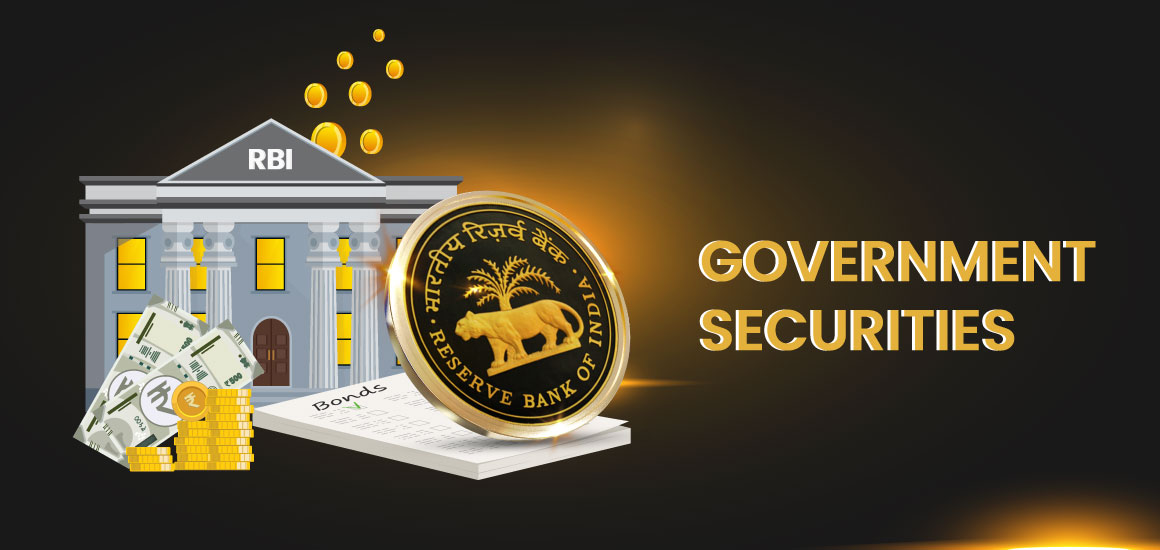
- 27 Feb 2024
Why is it in the News?
In a bid to deepen the bond market, the Reserve Bank of India on Wednesday issued guidelines for lending and borrowing in government securities.
What are Government Securities?
- Government securities, also known as G-Secs, refer to the debt instruments issued by the government to finance its fiscal requirements.
- These securities are backed by the government’s guarantee of repayment and are considered risk-free investments.
- They are an integral part of the fixed-income market and are traded on the government securities market.
- Government securities serve as a means for the government to raise funds from the public to meet its expenditure needs, bridge budget deficits, and fund developmental projects.
- Investors who purchase these securities lend money to the government in return for regular interest payments and the principal amount at maturity.
- These securities come in mainly two categories:
- Short-Term: Often known as “Treasury Bills,” these have initial maturities of less than a year.
- Long-Term: Typically referred to as Government Bonds or Dated Securities, these have an original maturity of one year or more.
- In India, the Central Government issues both treasury bills and bonds or dated securities while the State Governments issue only bonds or dated securities, which are called State Development Loans (SDLs).
Treasury Bills (Short-Term G-Secs)
- Treasury Bills, commonly known as T-Bills, are short-term government securities with a maturity period of less than one year.
- They are issued at a discount to their face value and are highly liquid instruments.
- T-Bills serve as a mechanism for the government to efficiently manage its short-term funding requirements.
Dated Securities (Long-Term G-Secs)
- Dated Securities are long-term government securities with a fixed maturity period, typically 5 to 40 years.
- They pay regular interest to investors, known as coupon payments, and return the principal amount at maturity.
- Dated Securities are vital for financing long-term projects and meeting government borrowing needs.
India gets desi Garbhini GA2 for evaluation of foetal growth
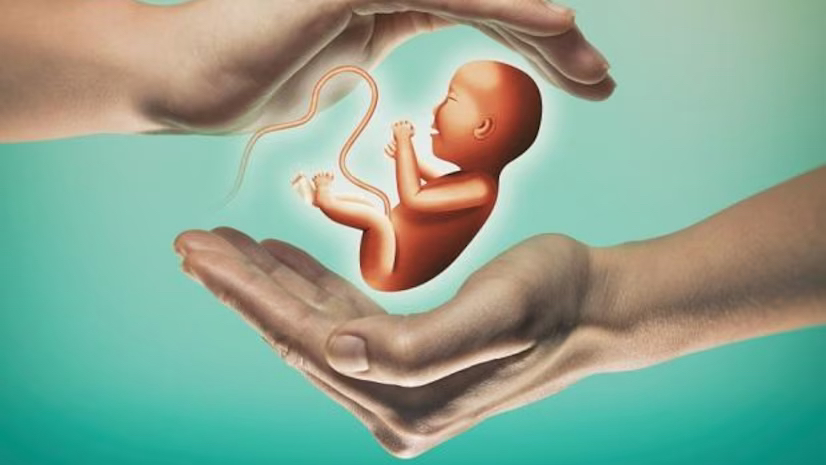
- 27 Feb 2024
Why is it in the News?
Specifically tailored to address the unique characteristics of foetal growth within the Indian population, India has finally got its locally made ‘Garbhini-GA2’, a groundbreaking Artificial Intelligence model.
What is Garbhini-GA2?
- The Garbhini-GA2 model, developed as part of the DBT India initiative (GARBH-Ini) program by researchers at the Indian Institute of Technology (IIT) Madras and the Translational Health Science and Technology Institute (THSTI), Faridabad, addresses the challenge of accurately estimating foetal age (gestational age, GA) in the Indian population, particularly in the second and third trimesters.
- Unlike existing formulas designed for Western populations, Garbhini-GA2 accounts for variations in foetal growth specific to the Indian context, significantly reducing estimation errors by nearly threefold.
- This innovative model is crucial for ensuring precise prenatal care and determining accurate delivery dates, thereby enhancing maternal and foetal health outcomes.
- Garbhini-GA2 marks a milestone as the first late-trimester GA estimation model validated using Indian population data, offering a tailored approach to foetal age determination that is essential for effective maternal healthcare."
About Translational Health Science and Technology Institute (THSTI):
- THSTI, an autonomous institute under the Ministry of Science and Technology, was founded in 2009 in Faridabad, Haryana, with a core commitment to advancing research beyond mere discovery.
- By fostering collaboration among diverse teams in medicine, science, and technology, THSTI leverages translational expertise to drive clinical research and innovation.
- In addition to its core mission, THSTI plays a pivotal role in fostering social innovation and entrepreneurial endeavors, particularly in the domain of maternal and child healthcare.
PM Modi Inaugurates 'Sudarshan Setu', India's Longest Cable-Stayed Bridge
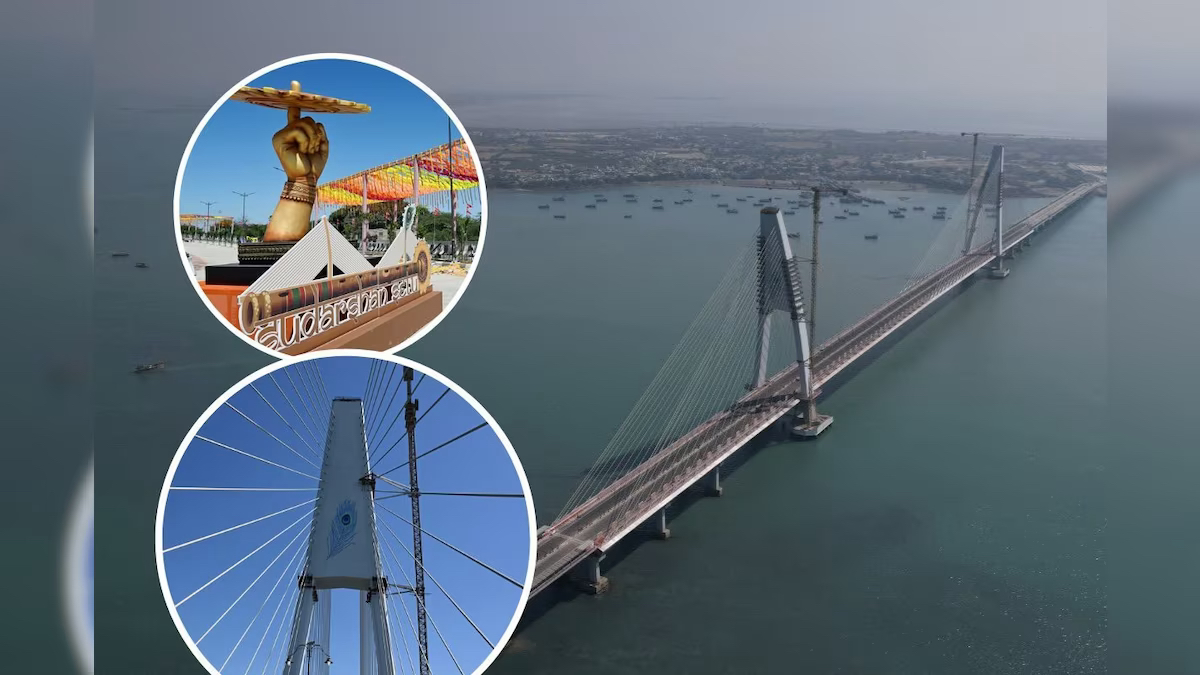
- 26 Feb 2024
Why is it in the News?
PM Modi recently inaugurated the Sudarshan Setu, a four-lane cable-stayed bridge connecting Okha to Beyt Dwarka island in Gujarat.
About the Sudarshan Setu:
- 'Sudarshan Setu' is the country's longest cable-stayed bridge 2.32 km on the Arabian Sea connecting Beyt Dwarka island to mainland Okha in Gujarat's Devbhumi Dwarka district.
- It boasts a unique design, featuring a footpath adorned with verses from the Bhagavad Gita and images of Lord Krishna on both sides.
- It also has solar panels installed on the upper portions of the footpath, generating one megawatt of electricity.
- The 2.32 km bridge, including 900 metres of a central double-span cable-stayed portion and a 2.45 km long approach road, has been constructed at a cost of Rs 979 crore.
About Beyt Dwarka:
- Bet/Beyt (pronounced ‘Bait’ Dwarka also known as Shankhodara, is an island located near the shores of Okha which is situated around 30 km from Dwarka, in the Gulf of Kutch.
- It said that Lord Krishna resided here while Dwarka was his constitutional seat.
History:
- Bet Dwarka derived its name from the word ‘bet’ which translates to ‘gift’ and is believed that Lord Krishna received it from his friend Sudama.
- In the ancient epic, Mahabharata, Bet Dwarka is known by the name of ‘Antardvipa’ to which people of the Yadava clan needed to travel by boat.
- Explorations and excavations carried out under the sea have revealed the presence of settlements whose age can be traced back to the era of the Harappan civilisation and that of the Mauryan rule.
- In the later years, the region was under the administration of the Gaekwad clan of the state of Baroda.
- During the revolt of 1857, Vaghers attacked the region and captured it, but had to concede defeat in two years and return the region back to the Gaekwads.
Ladakh: Centre agrees to examine demand for statehood, inclusion in Sixth Schedule of Constitution
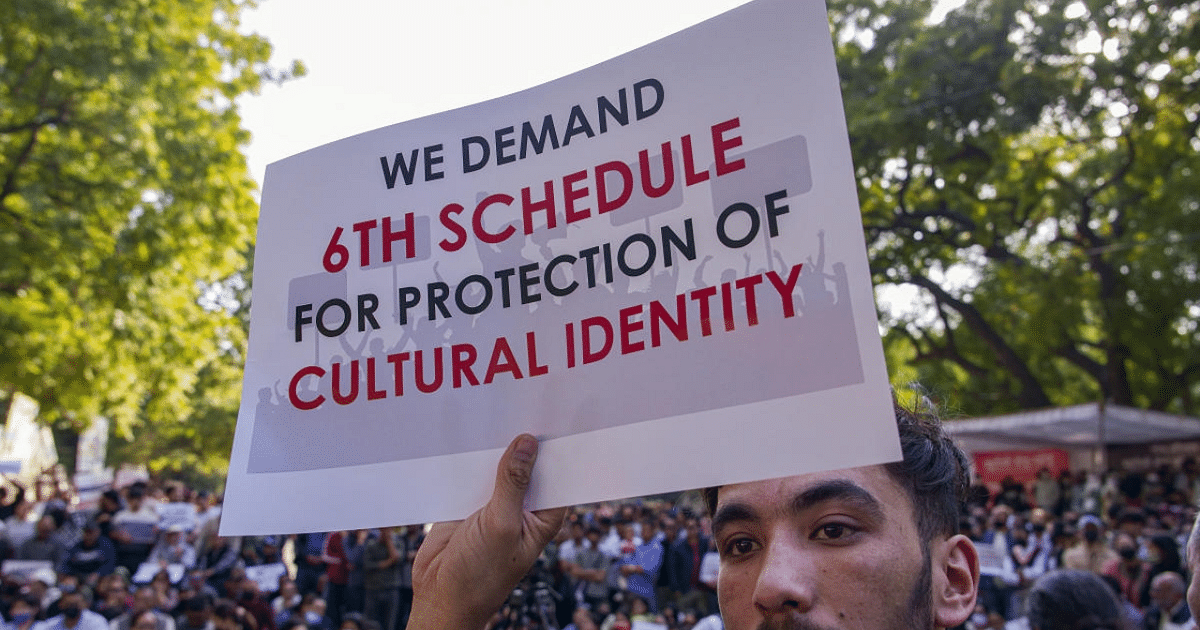
- 26 Feb 2024
Why is it in the News?
Recently, the Centre has agreed to examine whether the provisions of the Sixth Schedule of the Constitution can be implemented in Ladakh.
What is the Sixth Schedule?
- The Sixth Schedule under Article 244 provides for the formation of autonomous administrative divisions — Autonomous District Councils (ADCs) — that have some legislative, judicial, and administrative autonomy within a state.
- ADCs have up to 30 members with a term of 5 years and can make laws, rules and regulations with regard to land, forest, water, agriculture, village councils, health, sanitation, village- and town-level policing, inheritance, marriage and divorce, social customs and mining, etc.
- The Bodoland Territorial Council in Assam is an exception with more than 40 members and the right to make laws on 39 issues.
- The Sixth Schedule applies to the Northeastern states of Assam, Meghalaya, Mizoram (three Councils each), and Tripura (one Council).
Why does Ladakh want to be part of the Sixth Schedule?
- There was much enthusiasm initially, mostly in Leh, after the August 5, 2019 decisions that created two new Union Territories.
- The Buddhist-dominated Leh district had long demanded UT status because it felt neglected by the erstwhile state government, which was dominated by politicians from Kashmir and Jammu.
- This development has sparked concerns among locals regarding potential challenges related to identity preservation, resource allocation, and administrative oversight.
- Also, the changed domicile policy in Jammu and Kashmir has raised fears in the region about its own land, employment, demography, and cultural identity.
- The UT has two Hill councils in Leh and Kargil, but neither is under the Sixth Schedule.
- Their powers are limited to the collection of some local taxes such as parking fees and allotment and use of land vested by the Centre.
- The Sixth Schedule empowers the Governor of the State to designate specific areas as administrative units within the Autonomous Districts and Autonomous Regions.
Can Ladakh be included in the Sixth Schedule?
- In September 2019, the National Commission for Scheduled Tribes recommended the inclusion of Ladakh under the Sixth Schedule, noting that the new UT was predominantly tribal (more than 97%), people from other parts of the country had been restricted from purchasing or acquiring land there, and its distinct cultural heritage needed preservation.
- Notably, no region outside the Northeast has been included in the Sixth Schedule.
- In fact, even in Manipur, which has predominantly tribal populations in some places, the autonomous councils are not included in the Sixth Schedule.
- Nagaland and Arunachal Pradesh, which are totally tribal, are also not in the Sixth Schedule.
- “Ladakh’s inclusion in the Sixth Schedule would be difficult.
- The Constitution is very clear, the Sixth Schedule is for the Northeast.
- For tribal areas in the rest of the country, there is the Fifth Schedule.
- However, it remains the prerogative of the government — it can, if it so decides, bring a Bill to amend the Constitution for this purpose.
Analysis of Household Consumption Expenditure Survey 2022-23 Report

- 26 Feb 2024
Why is it in the News?
The per capita monthly household expenditure more than doubled in 2022-23 as compared to 2011-12, according to the latest study by the National Sample Survey Office (NSSO).
Context:
- As per the 2022-23 report, rising inequality between the top and bottom of the pyramid.
- Urban and rural households register higher expenditure, spending less on food items.
- New methodology and questionnaire used in Household Consumption Expenditure Survey (HCES) 2022-23.
About the National Sample Survey Office (NSSO):
- The National Sample Survey Office (NSSO) comes under the Ministry of Statistics and Program Implementation headed by a Director General.
- It is responsible for the conduct of large-scale sample surveys in diverse fields on an All-India basis.
- Primarily data are collected through nationwide household surveys on various socio-economic subjects, Annual Survey of Industries (ASI), etc.
- Besides these surveys, NSSO collects data on rural and urban prices and plays a significant role in the improvement of crop statistics through supervision of the area enumeration and crop estimation surveys of the State agencies.
- It also maintains a frame of urban area units for use in sample surveys in urban areas.
The NSSO has four Divisions:
- Survey Design and Research Division (SDRD): This Division, located at Kolkata, is responsible for the technical planning of surveys, formulation of concepts and definitions, sampling design, designing of inquiry schedules, drawing up of tabulation plans, and analysis and presentation of survey results.
- Field Operations Division (FOD): The Division, with its headquarters at Delhi/Faridabad, is responsible for the collection of primary data for the surveys undertaken by NSS.
- Data Processing Division (DPD): The Division, with its headquarters at Kolkata is responsible for sample selection, software development, processing, validation and tabulation of the data collected through surveys.
- Survey Coordination Division (SCD): This Division, located in New Delhi, coordinates all the activities of different Divisions of NSS.
- It also brings out the bi-annual journal of NSS, titled “Sarvekshana”, and organizes National Seminars on the results of various Socio-economic surveys undertaken by NSS.
Key Insights From the 2022-23 Survey:
- Evolution of Food Expenditure: Over the past two decades, there has been a notable shift in spending patterns on food in India.
- Between 1999-2000 and 2022-23, both urban and rural households witnessed a gradual decline in the share of expenditure allocated to food.
- This period marks the first instance where food expenditure has dropped to below 50% in rural India and below 40% in urban India.
- Changing Dietary Preferences: The composition of food consumption has also undergone significant changes.
- Cereals and pulses have seen a reduction in their share of overall food consumption expenditure, while spending on milk has surged, surpassing that on cereals and pulses combined.
- In a noteworthy shift, the average Indian now spends more on fruits and vegetables than on food grains.
- Furthermore, expenditure on animal proteins like eggs, fish, and meat has shown a growing trend, indicating a preference for animal-based proteins over plant-based ones.
- Rise in Processed Food Consumption: There has been an observed increase in the share of expenditure allocated to processed foods, beverages, and purchased cooked meals.
- This trend aligns with the Engel Curve hypothesis, suggesting that as incomes rise, households allocate a smaller proportion of their spending to food and tend to prefer superior items over inferior ones.
- Closing Rural-Urban Consumption Gap: Consumption growth in rural areas has outpaced that in urban areas, leading to a narrowing of the rural-urban consumption divide.
- If this trend continues, it could potentially lead to parity in urban and rural incomes and consumption patterns in the future.
- Challenges in Inflation Calculation: The findings of the latest Household Consumption Expenditure (HCE) Survey underscore the need to review the inflation basket.
- The current Consumer Price Index (CPI)-based inflation calculation, established in 2012, may not accurately reflect contemporary consumption patterns.
- For instance, the disparity between the weightage assigned to cereals in the CPI basket and actual expenditure on cereals by rural households highlights the need for recalibration.
- Insights on Poverty Reduction: According to NITI Aayog CEO B V R Subrahmanyam, the latest survey indicates a reduction in poverty to five per cent nationwide.
- Both rural and urban areas are witnessing increased prosperity, as evidenced by rising per capita monthly expenditure.
- Demand for Legal Guarantee to MSP: While there is a demand for a legal guarantee to Minimum Support Price (MSP) for 23 crops, including food grains and sugarcane, the survey data suggests that the growth in the farm sector is being primarily driven by livestock, fisheries, and horticulture crops.
- This poses a pertinent question regarding the promotion of production: should the focus be on crops outside the MSP purview, such as milk, fish, poultry products, fruits, and vegetables, given their growing consumption trends?
BharatGPT Unveils Hanooman, a New Suite of Indic Generative AI Models
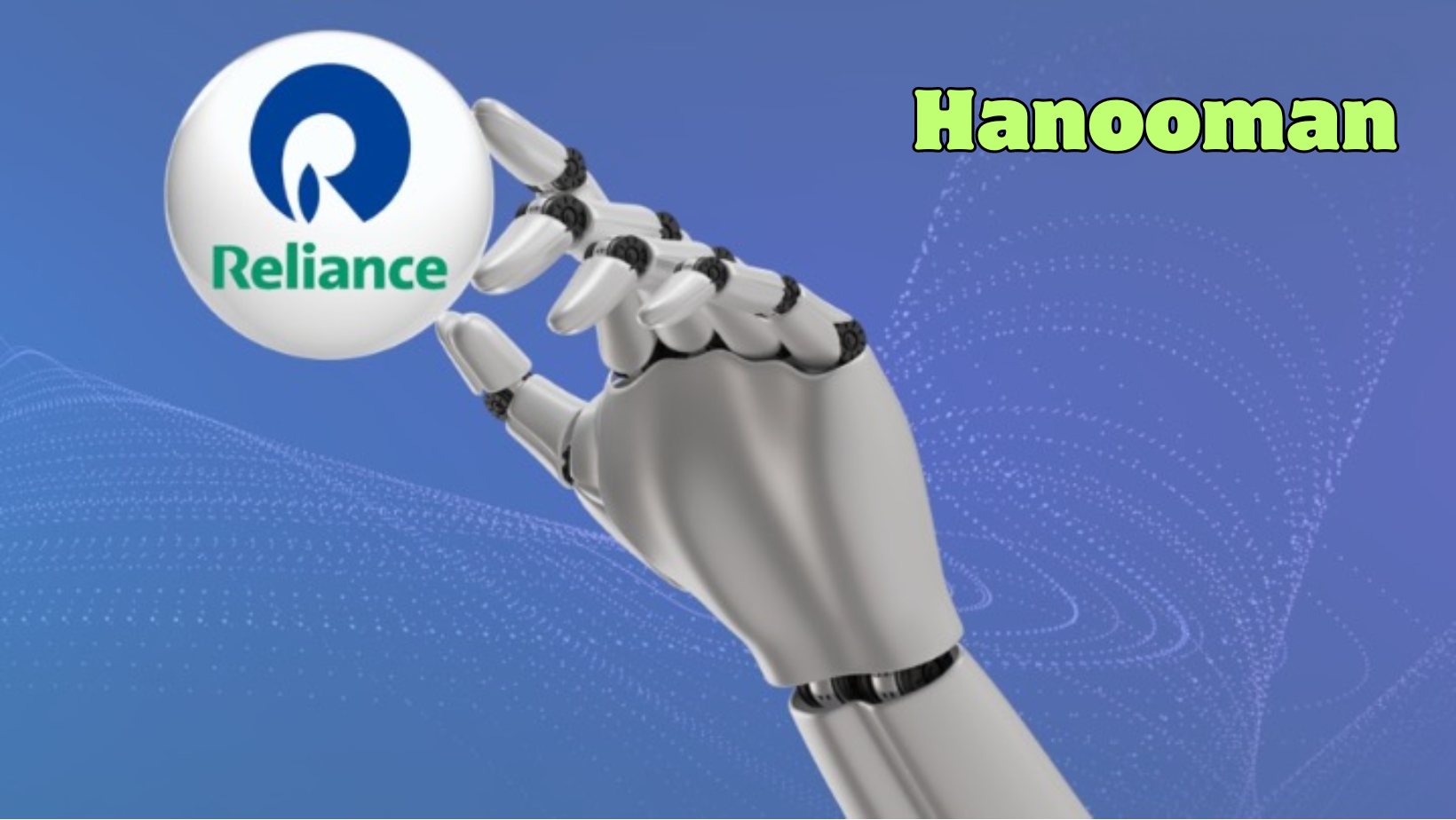
- 24 Feb 2024
Why is it in the News?
Recently, the BharatGPT group, led by IIT Bombay along with seven other elite Indian engineering institutes announced that it would launch its first ChatGPT-like service next month.
What is Hanooman?
- Hanooman is a series of large language models (LLMs) that can respond in 11 Indian languages like Hindi, Tamil, and Marathi, with plans to expand to more than 20 languages.
- It is unveiled by Seetha Mahalaxmi Healthcare (SML) in partnership with the IIT Bombay-led BharatGPT ecosystem.
- The BharatGPT group, which is backed by Reliance Industries.
- Hanooman has been designed to work in four fields, including health care, governance, financial services, and education.
- According to BharatGPT, the series isn’t just a chatbot but It is a multimodal AI tool, which can generate text, speech, videos and more in multiple Indian languages.
- One of the first customised versions is VizzhyGPT, an AI model fine-tuned for healthcare using reams of medical data.
- The size of these AI models ranges from 1.5 billion to a whopping 40 billion parameters.
Are There Any Other Indian Language Models?
- Apart from BharatGPT, a host of different startups like Sarvam and Krutrim, backed by prominent VC investors such as Lightspeed Venture Partners and billionaire Vinod Khosla’s fund, are also building AI models customised for India
What are Large Language Models (LLMs)?
- Large language models use deep learning techniques to process large amounts of text.
- They work by processing vast amounts of text, understanding the structure and meaning, and learning from it.
- LLMs are ‘trained’ to identify meanings and relationships between words.
- The greater the amount of training data a model is fed, the smarter it gets at understanding and producing text.
- The training data is usually large datasets, such as Wikipedia, OpenWebText, and the Common Crawl Corpus.
- These contain large amounts of text data, which the models use to understand and generate natural language.
The NB8 visit to India focuses on cooperation and trust
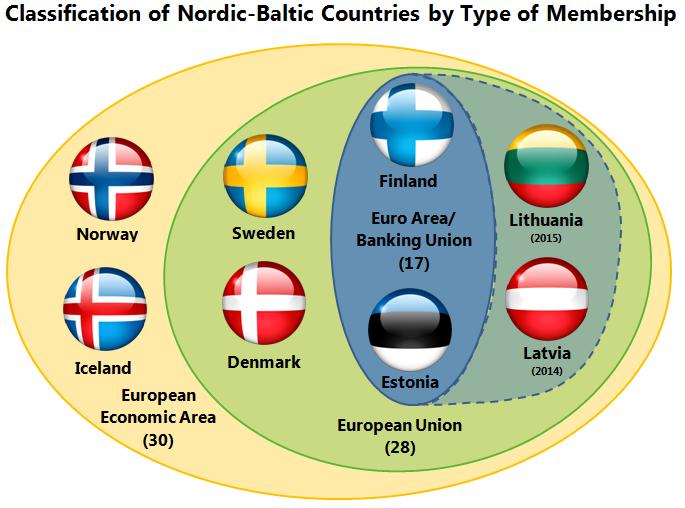
- 24 Feb 2024
Why is it in the News?
External Affairs Minister S Jaishankar hosted the India-Nordic-Baltic meeting on the sidelines of the ongoing Raisina Dialogue 2024 recently.
What are the Nordic-Baltic Countries?
- The Nordic-Baltic countries, also known as the NB8, are a group of Northern European countries that share historical, cultural, and geopolitical ties.
- The group includes
- Nordic countries of Denmark, Finland, Iceland, Norway, and Sweden, and
- Baltic countries of Estonia, Latvia, and Lithuania.
- These countries collaborate on various regional issues, such as security, economy, environment, and culture, and often work together within international organisations and forums.
- The term "Nordic-Baltic" highlights the close relationship and cooperation between these neighbouring states in the Baltic Sea region.
India's Relations with NB8 Countries:
- India's collaboration with NB8 nations is broadening, exemplified by initiatives like the India-Denmark Green Strategic Partnership, the India-Norway Task Force on Blue Economy, and cooperation on sustainability and ICT with Finland, including the 'LeadIT' (Leadership for Industry Transition) initiative with Sweden.
- Cooperation extends across various sectors, including innovation, green transition, maritime affairs, healthcare, intellectual property rights, emerging technologies, space exploration, and artificial intelligence.
- Trade and investment between the NB8 region and India are on a steady rise, reflecting deepening economic ties.
- Moreover, the security dynamics of the Nordic-Baltic region and the Indo-Pacific are intertwined, underlining the interconnectedness of regional security challenges.
Significance of NB8:
- The NB8 nations embody advanced economies characterised by their outward orientation, emphasis on innovation, complementarity, and seamless integration into the European Common Market, the world's largest single market area.
- The Baltic states, in particular, stand out as pioneers in IT, digitization, cyber technology, and green innovations, showcasing their leadership in these critical domains.
- Moreover, all NB8 members share a steadfast commitment to democracy and human rights, serving as advocates for an international order grounded in principles of multilateralism and adherence to international law.
NB8 Proposals for India:
- In light of the Ukraine conflict and its ripple effects on global food and energy security, supply chains, macro-financial stability, inflation, and growth, the NB8 seeks to collaborate with India in the following ways:
- Recognizing Shared Challenges: In an increasingly interconnected world, challenges such as the Ukraine conflict, global health crises, climate-related events, and geopolitical tensions affect us all.
- Acknowledging these shared challenges underscores the necessity for collaborative efforts to address them effectively.
- Embracing a Positive Agenda: There is an urgent imperative to pivot towards a more positive agenda for global cooperation.
- Leveraging our mutual commitment to the multilateral system, the NB8 proposes to enhance dialogue and cooperation on issues that are paramount to India's priorities and those of other global partners.
Govt amends electricity rules to speed up new connections, promote EVs and solar PV systems
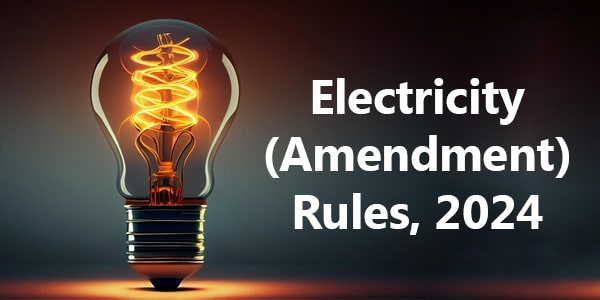
- 24 Feb 2024
Why is it in the News?
Recently, the government amended the Electricity (Rights of Consumers) Rules 2020, allowing consumers to now obtain separate electricity connections for charging their electric vehicles, and reducing the time period for obtaining a new electricity connection.
Context:
- The Government of India has recently approved the amendments to the Electricity (Rights of Consumers) Rules, 2020.
- According to the Union Minister for Power and New & Renewable Energy, Shri R. K. Singh, these amendments aim to expedite the process of obtaining new electricity connections.
- Encompassing various facets including billing, grievance redressal, compensation, and timeframes for new connections, these rules are designed to streamline consumer experiences.
- Moreover, they extend support to prosumers engaged in renewable energy generation.
- The amendments, as highlighted by the Minister, are poised to enhance consumer empowerment, fostering a more consumer-centric electricity ecosystem.
Major Amendments to the Electricity (Rights of Consumers) Rules, 2020:
- Streamlining Rooftop Solar Installation: Amendments exempt the requirement for technical feasibility studies for rooftop solar systems up to 10 kW capacity.
- For systems exceeding 10 kW, the timeframe for feasibility studies has been condensed from twenty to fifteen days, with automatic approval if deadlines are missed.
- Commissioning timelines for distribution licensees have been shortened from thirty to fifteen days.
- Dedicated Connections for Electric Vehicle Charging: Consumers can now secure separate electricity connections for charging Electric Vehicles (EVs), aligning with national emission reduction targets and Net Zero aspirations by 2070.
- Accelerated Connection Processes: New electricity connection timelines have been slashed from seven to three days in metropolitan areas, from fifteen to seven days in other municipal areas, and from thirty to fifteen days in rural regions.
- Exceptions apply in rural hilly terrains, maintaining the existing thirty-day period.
- Enhanced Consumer Rights in Residential Complexes: Residents in cooperative housing societies and residential colonies gain the option of individual or single-point connections, decided through transparent ballots conducted by Distribution Companies.
- Tariff parity is ensured between single-point and individual connections.
- Prompt Meter Installation for Complaints: Distribution licensees are mandated to install additional metres within five days of receiving complaints to verify consumption for a minimum of three months, enhancing consumer confidence and billing accuracy.
First moon-landing by private company

- 24 Feb 2024
Why is it in the News?
Fifty-two years after the last successful Apollo mission, a US-made spacecraft landed on the Moon recently which also marks the arrival of private space companies on the lunar surface.
What is Odysseus Lunar Exploration?
- Odysseus is a spacecraft built by Intuitive Machines, embarked on its journey from Earth aboard a Falcon 9 rocket by SpaceX recently.
- Intuitive Machines, headquartered in Houston, USA, boasts a decade-long legacy in space exploration endeavours.
- Loaded with six NASA payloads, Odysseus set its course for the Moon.
- Its lander module, Nova-C, achieved the milestone of landing in the Moon's south pole region, following Chandrayaan-3's similar feat last year.
- This marks the third successful moon-landing event in under a year, alongside Chandrayaan-3 and Japan's SLIM (Smart Lander for Investigating Moon).
Mission Objectives:
- The primary aim of the lunar lander is to assess the environmental conditions at the Moon's south pole.
- This assessment holds significant importance as NASA gears up for a crewed mission in September 2026 with Artemis III.
- Before sending astronauts to this area, NASA seeks to gather crucial data, including insights into water presence and accessibility, to inform mission planning.
Funding:
- Under the Commercial Lunar Payload Services (CLPS) program, NASA allocated $118 million to Intuitive Machines for this mission.
- CLPS has engaged at least 14 private companies to ferry NASA payloads to the Moon, fostering a collaborative environment aimed at nurturing the private space industry's capabilities in lunar exploration technology and science.
The Significance of Odysseus:
- Advancing Long-Term Lunar Presence: Odysseus' successful landing heralds a transformative phase in lunar exploration, aiming to establish infrastructure and a technological ecosystem capable of sustaining extended human presence.
- Diverging from Past Lunar Missions: In contrast to the moon landings of the 1960s and 1970s spearheaded by the US and the Soviet Union, Odysseus' mission focuses on leveraging lunar resources for sustained exploration.
- While historic moon landings were remarkable feats, technological limitations of the time hindered the immediate utilisation of lunar resources such as mining.
- Supporting US Commitment to Moon Exploration via Artemis Program: Odysseus' touchdown aligns with the US commitment to rekindle lunar exploration through the ambitious Artemis program.
- This endeavour transcends mere lunar landing missions, aiming to establish essential infrastructure and a thriving lunar economy conducive to comprehensive exploration.
- Unlocking Lunar Potential as a Gateway to Deep Space: By laying the groundwork for lunar infrastructure and economic activity, missions like Odysseus pave the way for leveraging the Moon as a springboard for deeper space exploration, offering nations unprecedented opportunities for cosmic discovery.
Kiru Hydropower Corruption Case: CBI Searches J&K Ex-Governor Satya Pal Malik’s Premises
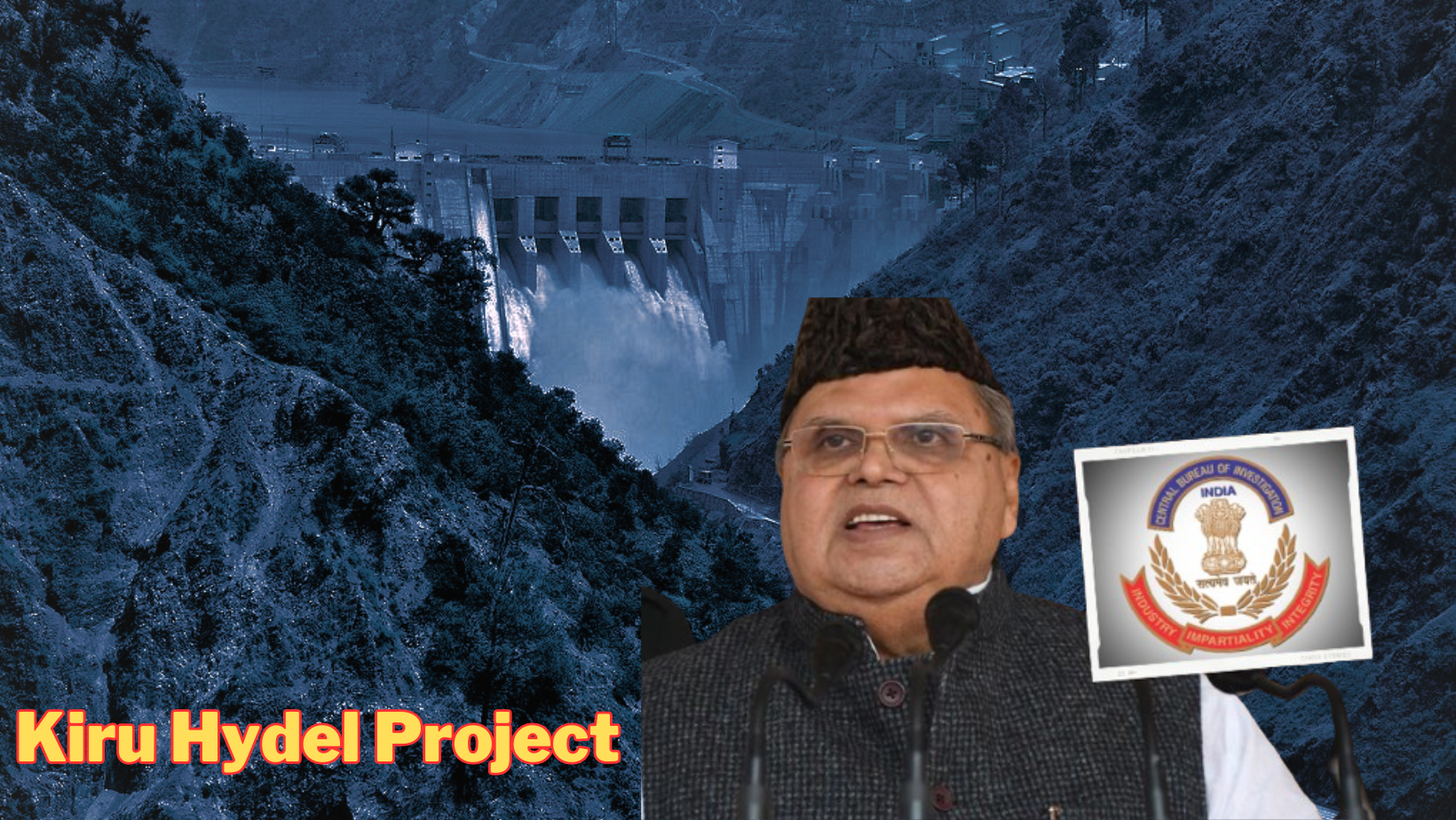
- 23 Feb 2024
Why is it in the News?
The CBI conducted searches at the premises of former Jammu and Kashmir governor Satya Pal Malik and 29 other locations recently in connection with alleged corruption in the Rs 2,200-crore Kiru Hydropower project.
What are the Corruption Allegations Surrounding the Kiru Hydel Project?
- During his tenure as the governor of Jammu and Kashmir from August 23, 2018, to October 30, 2019, Satya Pal Malik claimed that he was offered a Rs 300-crore bribe to approve two files, one of which pertained to the project.
- In 2022, the J&K government requested a CBI investigation into alleged misconduct, previously highlighted by Satya Pal Malik, in the awarding of two government contracts.
- Concerns have been raised regarding the award of civil works, particularly to Patel Engineering Ltd, a prominent infrastructure and construction company established in 1949.
- The CBI has initiated action against the former CVPPPL chairman, MD, and Directors, as well as Patel Engineering.
- According to the FIR, an inquiry by the J&K Anti-Corruption Bureau and the Power Department had been conducted.
- The FIR alleges non-compliance with e-tendering guidelines in the awarding of civil works for the project.
- Additionally, accusations of substandard work and failure to employ local youth have been levelled against the hydel project.
What is the Kiru Hydel Power Project?
- The 624MW Kiru hydroelectric project is being developed as a run-of-river scheme in the Kishtwar district of Jammu and Kashmir, a union territory in India.
- Location of the Kiru project: The Kiru hydropower project is being built along the Chenab River near the villages of Patharnakki and Kiru, approximately 42 km from Kishtwar.
- It will be located between the Kirthai II hydroelectric project to its upstream and the Kwar hydroelectric project to its downstream.
- The project is being developed by the Chenab Valley Power Projects (CVPPPL) joint venture (JV) between:
- National Hydroelectric Power (NHPC, 49%)
- Jammu & Kashmir State Power Development (JKSPDC, 49%) and
- The Power Trading Corporation (PTC, 2%)
- The Ministry of Environment Forests and Climate Change (MoEF&CC) awarded environmental clearance for the hydroelectric project in 2016 while the foundation stone was laid in February 2019.
- The project is being constructed at an estimated cost of Rs 4,287 crore and is expected to start commercial operations in July 2025.
- The Cabinet Committee on Economic Affairs (CCEA) approved the investment in the project in March 2019.
- Apart from helping address the energy demand across northern India and the state’s rural areas, it could aid small-scale and cottage industries.
Advantages of the Kiru Hydroelectric Power Project:
- This project aims to alleviate the energy shortage in Northern India while also enhancing the transportation, education, healthcare, and road infrastructure in the area.
- By bringing electricity to rural communities, the project will lessen the reliance of residents on alternative energy sources.
- The heightened power availability will foster the growth of small-scale and cottage industries, generating employment opportunities and revenue for the local populace.
What is a Run-of-river Project?
- Run-of-river hydropower is a facility that channels flowing water from a river through a canal or penstock to spin a turbine.
- Typically a run-of-river project will have little or no storage facility.
- Run-of-river provides a continuous supply of electricity (base load), with some flexibility of operation for daily fluctuations in demand through water flow that is regulated by the facility.
Race to the global eradication of Guinea worm disease nears the finish line
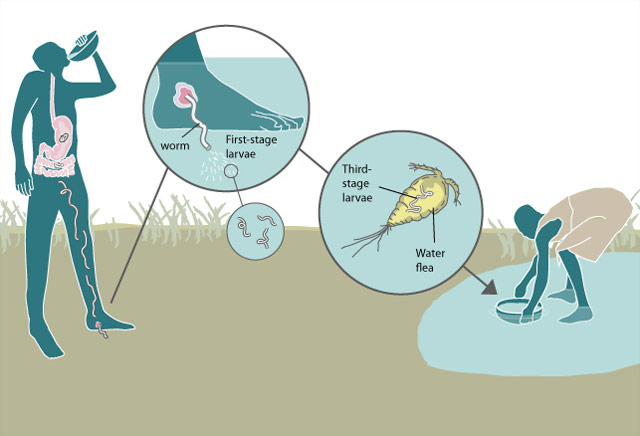
- 23 Feb 2024
Why is it in the News?
The world is on the brink of a public health triumph as it closes in on eradicating Guinea worm disease. There were more than 3.5 million cases of this disease in the 1980s, but according to the WHO, they dwindled to 14 cases in 2021, 13 in 2022, and just six in 2023.
What is Guinea Worm Disease?
- Dracunculiasis is also called guinea worm disease (GWD).
- It is an infection caused by a parasite called Dracunculus medinensis (guinea worm).
- This parasite is an organism that survives by deriving nutrients and feeding off another organism.
- GWD spreads through drinking contaminated water.
- It is presently eradicated in most parts of the world but is still seen in remote parts of Africa and some remote rural areas in the world where there is no access to clean drinking water.
- GWD is considered endemic in three African countries, Sudan, Ethiopia, and Mali.
- In recent years, a few cases of GWD in animals, especially dogs, have been reported in developed countries as well.
- GWD is a serious condition, that causes debilitating pain and complications, affecting the quality of life
Symptoms:
- People infected with Guinea worm don’t typically have any symptoms until about a year after they're first infected.
- It’s not until the worm is about to erupt from the skin that people start to feel sick.
- What that happens, the symptoms of Guinea worm disease can include Fever, Nausea and vomiting, Diarrhoea, Shortness of breath, Burning, itching, pain, and swelling where the worm is in the body (often the legs and feet) and Blister where the worm breaks through the skin.
Impact:
- Guinea worm disease isn’t often deadly, but it can cause serious complications, lifelong disabilities, and financial hardship for those involved.
- The pain involved is often so intense that it’s difficult for people to work, go to school, or care for themselves or others.
- This lasts an average of 8.5 weeks, though lifelong disability is common.
Dracunculiasis Treatment:
- There is no vaccine or drug developed to prevent or treat this disease.
- The only means available is the management of the disease which is removing the whole worm and caring for the wound caused by it and avoiding infection in the process or exposure to the guinea worm larvae at all costs, especially by avoiding contaminated drinking water and stagnant water sources.
- Without proper treatment, wounds caused by the worm can become infected by bacteria, leading to sepsis, septic arthritis, and contractures (when joints lock and deform).
- In some cases, these infections become life-threatening.
In a first, CERN scientists carry out laser cooling of Positronium
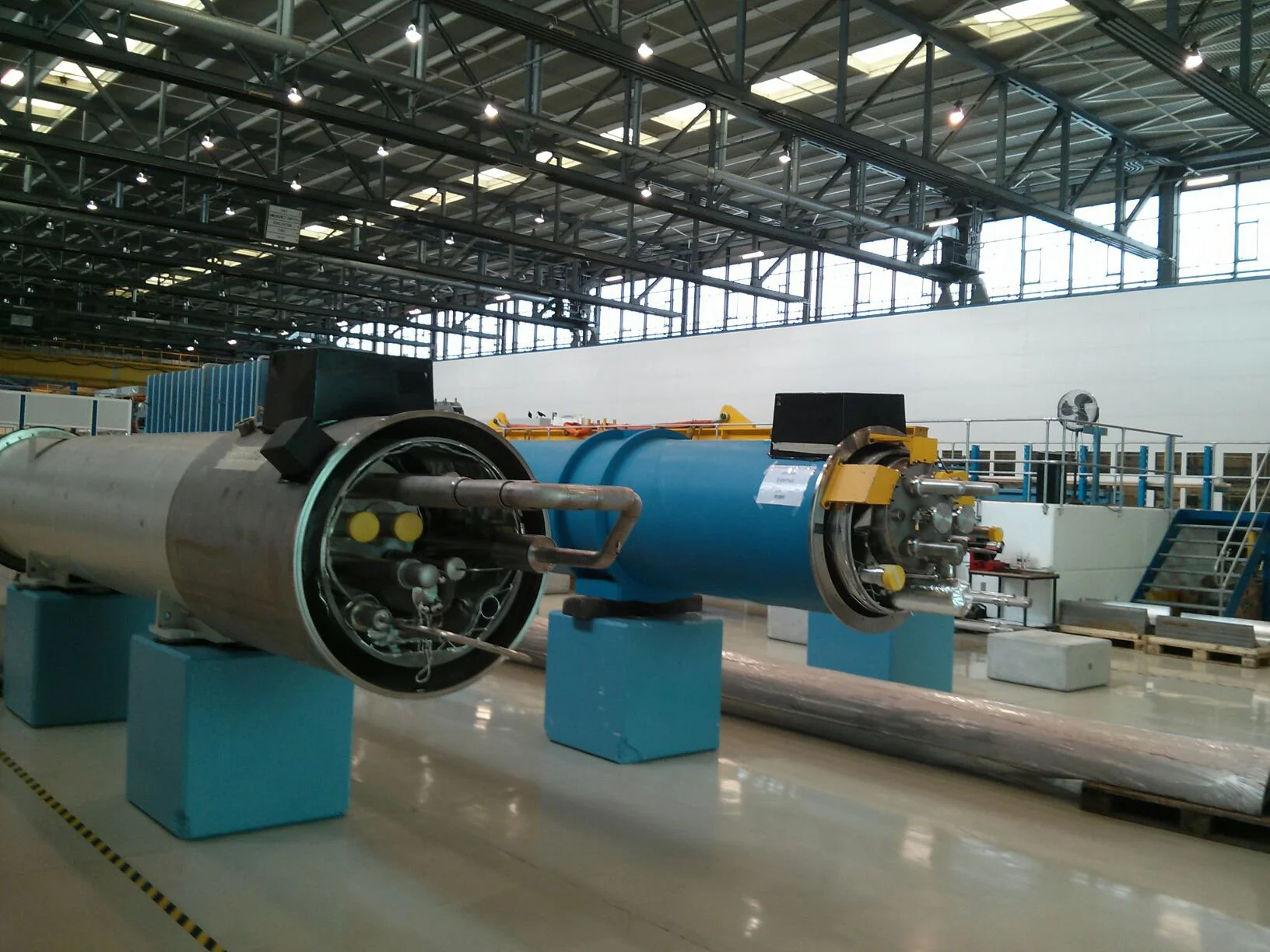
- 23 Feb 2024
Why is it in the News?
In a first, an international team of physicists from the Anti-hydrogen Experiment: Gravity, Interferometry, Spectroscopy (AEgIS) collaboration has achieved a breakthrough by demonstrating the laser cooling of Positronium.
About Anti-hydrogen Experiment: Gravity, Interferometry, Spectroscopy (AEgIS):
- AEgIS is an experiment at the Antiproton Decelerator facility at CERN (European Organization for Nuclear Research).
- It is a collaboration of physicists from a number of countries in Europe and from India.
- In 2018, AEgIS demonstrated the first pulsed production of antihydrogen atoms, by interacting pulse-produced positronium (an atom consisting of only an electron and a positron) with cold, trapped antiprotons.
- The primary scientific goal of the Antihydrogen Experiment: Gravity, Interferometry, Spectroscopy (AEgIS) is the direct measurement of the Earth's gravitational acceleration, g, on antihydrogen.
What is Positronium?
- Positronium is a bound state system of a positron and an electron, similar to the hydrogen atom, where an electron orbits around a proton.
- In the case of positronium, the positron and the electron orbit around their common centre of mass.
- The system is unstable, and the two particles eventually annihilate each other, releasing two or more gamma ray photons.
- Positronium has two possible states:
- The singlet state (para-positronium), in which the electron and the positron spins are antiparallel and the system has a shorter lifetime, and
- The triplet state (ortho-positronium), in which the electron and the positron spins are parallel, and the system has a longer lifetime.
- Positronium has been studied extensively in experimental and theoretical physics because it provides a simple system for testing quantum electrodynamics (QED) and for studying the properties of matter and antimatter.
- It also has potential applications in fields such as material science, plasma physics, and astrophysics.
What is Antimatter?
- Antimatter shares similarities with ordinary matter, except for its opposite electric charge.
- Often referred to as "mirror" matter, antimatter pairs with ordinary matter particles.
- For example, while an electron possesses a negative charge, its antimatter counterpart is a positron, which carries a positive charge and has the same mass as an electron.
- Positrons, antiprotons, and antineutrons are the antimatter counterparts of electrons, protons, and neutrons, respectively, collectively known as antiparticles.
- These antiparticles can combine to form anti-atoms and theoretically could lead to the formation of antimatter regions within our universe.
- However, the coexistence of matter and antimatter is short-lived due to their tendency to annihilate upon contact, resulting in the release of substantial energy in the form of gamma rays or elementary particles.
- Antimatter, like matter, emerged during the Big Bang.
- Scientists have produced antimatter particles through high-speed collisions in large particle accelerators like the Large Hadron Collider operated by CERN outside Geneva.
- Additionally, antiparticles are sporadically generated throughout the universe through natural processes.
Eminent Jurist Senior Advocate Fali Nariman passes away

- 22 Feb 2024
Why is it in the News?
Recently, eminent jurist and senior advocate of the Supreme Court Fali S Nariman died at the age of 95.
Who was Fali S Nariman?
- Fali S Nariman was born on January 10, 1929, in Rangoon, then part of British India.
- He began his legal career by enrolling as an advocate of the Bombay High Court in November 1950.
- His stature grew, and he was designated as a senior advocate in 1961.
- In 1972, he moved to New Delhi to practise in the Supreme Court of India.
- In May 1972, Nariman assumed the role of additional solicitor-general of India; however, he resigned a day after the Emergency was imposed on June 26, 1975.
- He also served as the president of the International Council for Commercial Arbitration and chaired the Executive Committee of the International Commission of Jurists, Geneva, from 1995 to 1997.
- His son, Justice Rohinton F Nariman, formerly served as a judge on the Supreme Court.
- Nariman received the Padma Bhushan in January 1991 and in 2007 he was awarded the Padma Vibhushan.
What Were Some of Nariman's Landmark Cases?
- The Golak Nath case: In the historic judgement, the Supreme Court held that the Parliament cannot make a law which is capable of infringing the fundamental rights of citizens.
- It came up after two brothers in Punjab challenged the Constitution (17) Amendment Act, 1964, which came into effect by amending Article 31A of the Constitution. (This article deals with the acquisition of estates).
- Nariman, not only supported the petitioners but also appeared to argue on the issue representing the intervenors in the case.
- They argued that Parliament’s power to amend the Constitution under Article 368 did not include articles contained in Part III of the Constitution dealing with fundamental rights.
- Following the hearing of the case submitted in 1967, an eleven-judge bench agreed with the petitioner’s submissions pointing out that Article 13(2) states that Parliament cannot make a law which infringes fundamental rights.
- The Kesavananda Bharati case: The Kesavananda Bharati case is known for setting a benchmark in the Indian judiciary and had Nariman’s prompt representation in the SC.
- He assisted noted Advocate Nanabhoy Palkhivala in the famous case that led to the path-breaking judgement laying down the basic structure doctrine of the Constitution, clipping Parliament’s power to amend the Constitution.
- The 1973 verdict simultaneously gave the judiciary the authority to review any constitutional amendment on grounds of violation of the basic structure of the Constitution.
- The Bhopal Gas Tragedy case: In 1984, the Bhopal gas tragedy where 42 tons of toxic chemicals leaked from a pesticide plant owned by Union Carbide India Limited, resulting in thousands of deaths and environmental damage in the following years.
- The Supreme Court began hearing the case for compensation to the victims in 1988.
- Senior Advocate Nariman appeared, representing Union Carbide, and offered to pay a sum of 426 million dollars as compensation to the victims of the tragedy.
- In 1989, Union Carbide settled with the central government and agreed to pay 470 million dollars as compensation.
- The Cauvery Water Dispute case: Nariman represented Karnataka for over 30 years in the water-sharing dispute with Tamil Nadu.
- In 2016, the Supreme Court ordered the Karnataka government to release 6,000 cusecs (cubic feet per second) of water from September 21 to September 27.
- The Karnataka legislative assembly, however, passed a resolution stating that they did not have water to spare and chose to defy the court’s orders.
- Due to this non-compliance, Nariman refused to argue the case on behalf of the Karnataka government any further.
- On February 16, 2018, the court in its final judgement took note of Nariman’s stance on the issue and necessarily mentioned that Nariman had courageously lived up to the highest tradition of the Bar.
- The court then proceeded to reduce Karnataka’s annual water releases to 177.25 thousand million cubic feet (TMC) from 192 TMC.
- Disproportionate assets case against former Tamil Nadu Chief Minister J Jayalalithaa: AIADMK leader and former- Tamil Nadu CM Jayalalitha had been accused of misappropriating funds during her tenure between 1991 and 1995.
- A Sessions Court in Bangalore in September 2014 found that she had acquired property disproportionate to her known income and imposed a Rs 100 crore fine on her.
- This sentence was upheld by the Karnataka High Court a month later leading to an appeal at the Supreme Court.
- Nariman appeared on behalf of Jayalalitha in October 2014 and convinced the court to grant bail against executing the fine and suspend the sentence passed by the Sessions judge in Bangalore.
- The 1981 Second Judges case: The Supreme Court held that the primacy of the Chief Justice of India’s recommendation in judicial appointment and transfer can be turned down on cogent grounds by the government.
- However, the judicial discussions finally led to the creation of the collegium system of appointment of judges to constitutional courts in 1993, when the top court came out with its judgement in the second judge’s case.
- Nariman had stated that the advice given through consultation with the CJI must be seen as binding to protect the independence of the judiciary, as judges would be in a better position to determine the suitability and competence of candidates.
- In 1993, the nine-judge bench agreed with Nariman’s arguments and established the Supreme Court Collegium.
- The COVID-19 case: Nariman represented the Parsi community in its dispute over the protocol and standard operating procedure for handling of dead bodies of Parsi Zoroastrian COVID-19 victims under which metallic nets were to be installed above ‘Tower of Silence’ so that birds did not feed on the corpses and carry the killer virus elsewhere
Cabinet approves Flood Management and Border Areas Programme (FMBAP) for the period 2021-26
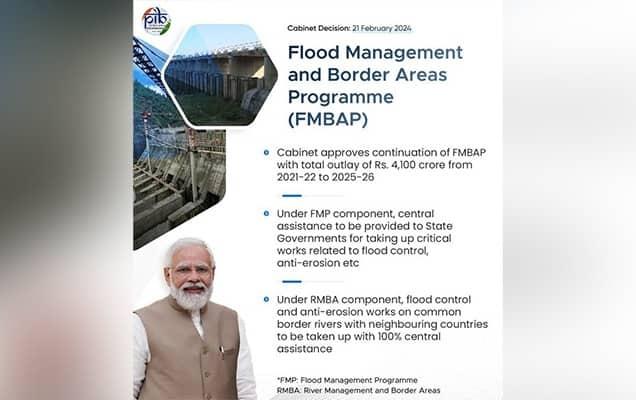
- 22 Feb 2024
Why is it in the News?
Recently, the Union Cabinet approved the continuation of “Flood Management and Border Areas Programme (FMBAP)” with a total outlay of Rs. 4,100 crore for a period of 5 years from 2021-22 to 2025-26.
About the Flood Management and Border Areas Programme (FMBAP):
- The FMBAP Scheme is being implemented throughout the country for effective flood management, erosion control and anti-sea erosion and to help in maintaining peace along the border.
- The scheme benefits towns, villages, industrial establishments, communication links, agricultural fields, infrastructure etc. from floods and erosion in the country.
- The catchment area treatment works will help in the reduction of sediment load into rivers.
- The Scheme aims at the completion of the ongoing projects already approved under FMP.
The Scheme has two components:
- Under the Flood Management Programme (FMP) component of FMBAP with an outlay of Rs. 2940 crore, central assistance will be provided to State Governments for taking up critical works related to flood control, anti-erosion, drainage development and anti-sea erosion, etc.
- The pattern of funding to be followed is 90% (Centre): 10% (State) for Special Category States (8 North-Eastern States and Hilly States of Himachal Pradesh, Uttarakhand and UT of Jammu & Kashmir) and 60% (Centre):40% (State) for General/ Non-Special Category States.
- Under the River Management and Border Areas (RMBA) component of FMBAP with an outlay of Rs. 1160 crore, flood control and anti-erosion work on common border rivers with neighbouring countries including hydrological observations and flood forecasting, and investigation & pre-construction activities of joint water resources projects (with neighbouring countries) on common border rivers will be taken up with 100% central assistance.
- The Scheme has the provision of incentivizing the States which implement flood plain zoning, recognized as an effective non-structural measure for flood management.
Importance:
- While the primary duty of flood management lies with the State Governments, the Union Government actively promotes and advocates for the adoption of modern technology and innovative approaches.
- Additionally, projects executed under the RMBA component serve to safeguard critical installations of security agencies and border outposts situated along border rivers from the perils of floods and erosion.
- Furthermore, the scheme includes provisions for incentivizing states that implement flood plain zoning, a recognized and effective non-structural measure for flood management.
Unauthorised online lending apps high on the FSDC scanner

- 22 Feb 2024
Why is it in the News?
Fresh measures to curb unauthorised online lending apps’ operations could be on the anvil, following deliberations on the issue at the Financial Stability and Development Council (FSDC) chaired by Finance Minister Nirmala Sitharaman recently.
About the Financial Stability and Development Council (FSDC):
- The Financial Stability and Development Council (FSDC) is a high-level body established by the Government of India in 2010 to address macroeconomic and financial stability issues.
- Although not a statutory body, it operates under the Financial Stability Division of the Department of Economic Affairs within the Ministry of Finance.
Background:
- In response to the global financial crisis of 2008, recommendations were made by the Raghuram Rajan Committee for the creation of a centralised regulatory body to oversee India's financial system.
- The establishment of FSDC reflects India's proactive approach to enhance preparedness for future financial challenges.
Composition:
- Chaired by the Union Finance Minister, the council comprises key stakeholders including the Governor of the Reserve Bank of India (RBI), finance and economic affairs officials, regulatory body chairpersons, and other relevant authorities.
- The Secretary of the Department of Economic Affairs serves as the council's secretary.
Responsibilities:
- FSDC is entrusted with the task of promoting financial stability, coordinating policy responses to systemic risks, and fostering the development of India's financial sector.
Concerns and Future Directions:
- Concerns have been raised about potential encroachment on the autonomy of sectoral regulators due to FSDC's leadership by the Union Finance Minister.
- To address this, it's crucial to safeguard the independence of regulatory bodies and establish clear guidelines to ensure effective coordination without undermining regulatory authority.
What is Digital Lending?
- Digital lending refers to the process of accessing credit online, facilitated through web platforms or mobile applications.
- This approach leverages technology across various stages of the lending process, including customer acquisition, credit assessment, approval, fund disbursement, recovery, and customer service.
Key Features:
- Utilises technology for end-to-end lending operations, enhancing efficiency and accessibility.
- Offers flexibility in credit options and facilitates swift transactions, appealing to modern borrowers.
- Prominent examples include Buy Now, Pay Later (BNPL) schemes, which provide short-term financing for purchases, allowing consumers to defer immediate payments.
Drivers of Growth:
- Increased adoption is driven by widespread smartphone usage and the convenience of online transactions.
- Flexibility in credit offerings and simplified application processes contribute to the popularity of digital lending platforms.
- BNPL services, in particular, cater to consumers seeking deferred payment options for purchases and services.
Centre increases Fair and Remunerative Prices of sugarcane
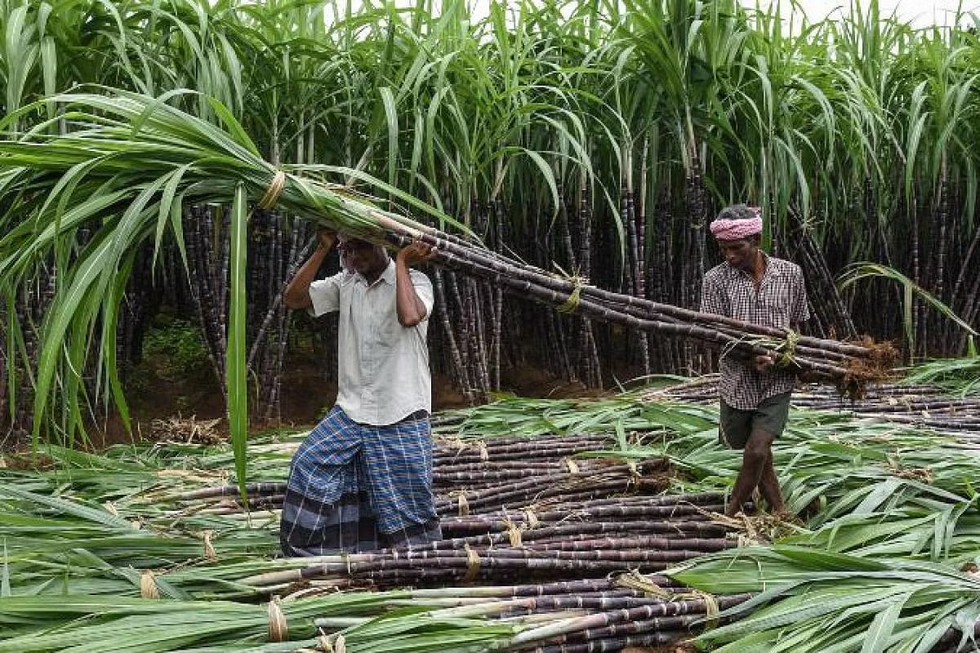
- 22 Feb 2024
Why is it in the News?
The Cabinet Committee on Economic Affairs recently approved ?340/quintal as the Fair and Remunerative Price (FRP) of sugarcane for the sugar season 2024-25 at a sugar recovery rate of 10.25%.
What is the Fair and Remunerative Price (FRP)?
- FRP was introduced by the government in 2009 by an amendment to the Sugarcane (Control) Order, 1966.
- It replaced the Statutory Minimum Price (SMP) on the Commission for Agricultural Costs and Prices (CACP) consultation.
- The FRP system assured timely payment to farmers, irrespective of the profit and loss to sugar mills.
- Further, the new system made it mandatory for sugar mills to pay the farmers within 14 days of delivery of sugarcane.
- Additionally, the FRP system introduced grading on the basis of sugar recovery rate from sugarcane wherein a premium was paid to the farmer on higher recovery and a reduction in rates on lower recovery.
- The FRP is based on the Rangarajan Committee report on reorganising the sugarcane industry.
Factors Considered for Announcing FRP:
-
- Cost of production of sugarcane
- Return to the growers from alternative crops and the general trend of prices of agricultural commodities
- Availability of sugar to consumers at a fair price
- The price at which sugar produced from sugarcane is sold by sugar producers
- Recovery of sugar from sugarcane
- The realisation made from the sale of by-products viz. molasses, bagasse and press mud or their imputed value
- Reasonable margins for the growers of sugarcane on account of risk and profits
Effect of the New FRP:
- Sugar production in India was hit hard in the October-December 2023 quarter as production fell by 11.21 million metric tonnes;
- It was 12 million in the same quarter the previous year.
- The increase in FRP is going to increase the cost for producers.
- The increased FRP will benefit over five crore sugarcane farmers in the country, however, the increase in production cost could affect end-consumers as well.
- Factors such as FRP hikes, akin to MSP, make it attractive to farmers but also increase prices in the local market as mills pass on that cost to consumers
Malta becomes the 119th member of the International Solar Alliance

- 21 Feb 2024
Why is it in the News?
Malta became the 119th country to join the International Solar Alliance recently.
About the International Solar Alliance (ISA):
- The International Solar Alliance (ISA) is an alliance of more than 120 signatory countries that aims to reduce the dependence on non-renewable sources of energy like fossil fuels.
- Currently, 118 countries are signatories to the ISA Framework Agreement.
- The ISA is an action-oriented, member-driven, collaborative platform for increased deployment of solar energy technologies as a means for bringing energy access, ensuring energy security, and driving energy transition in its member countries.
- The platform strives to develop and deploy cost-effective and transformational energy solutions powered by the sun to help member countries develop low-carbon growth trajectories, with a particular focus on delivering impact in countries categorised as Least Developed Countries (LDCs) and the Small Island Developing States (SIDS).
- The ISA was conceived as a joint effort by India and France to mobilise efforts against climate change through the deployment of solar energy solutions.
- It was conceptualised on the sidelines of the 21st Conference of Parties (COP21) to the United Nations Framework Convention on Climate Change (UNFCCC) held in Paris in 2015.
Role of India:
- As a founding member, India holds a pivotal position within the alliance, serving both as a host nation and a major contributor to achieving its objectives.
- The ISA marks a historic milestone as the first international organisation to establish its secretariat in India.
- With a target of generating 100 GW of solar energy by 2022, India's commitment represents a significant portion of the ISA's overall goal.
Recent Developments:
- The ISA was granted Observer Status by the UN General Assembly, fostering closer collaboration between the alliance and the United Nations to advance global energy growth and development.
- The approval of the 'Solar Facility' by the ISA introduces a payment guarantee mechanism aimed at incentivizing investments in solar projects, further driving progress towards sustainable energy initiatives.
India contributes $1 million to fund combating poverty and hunger
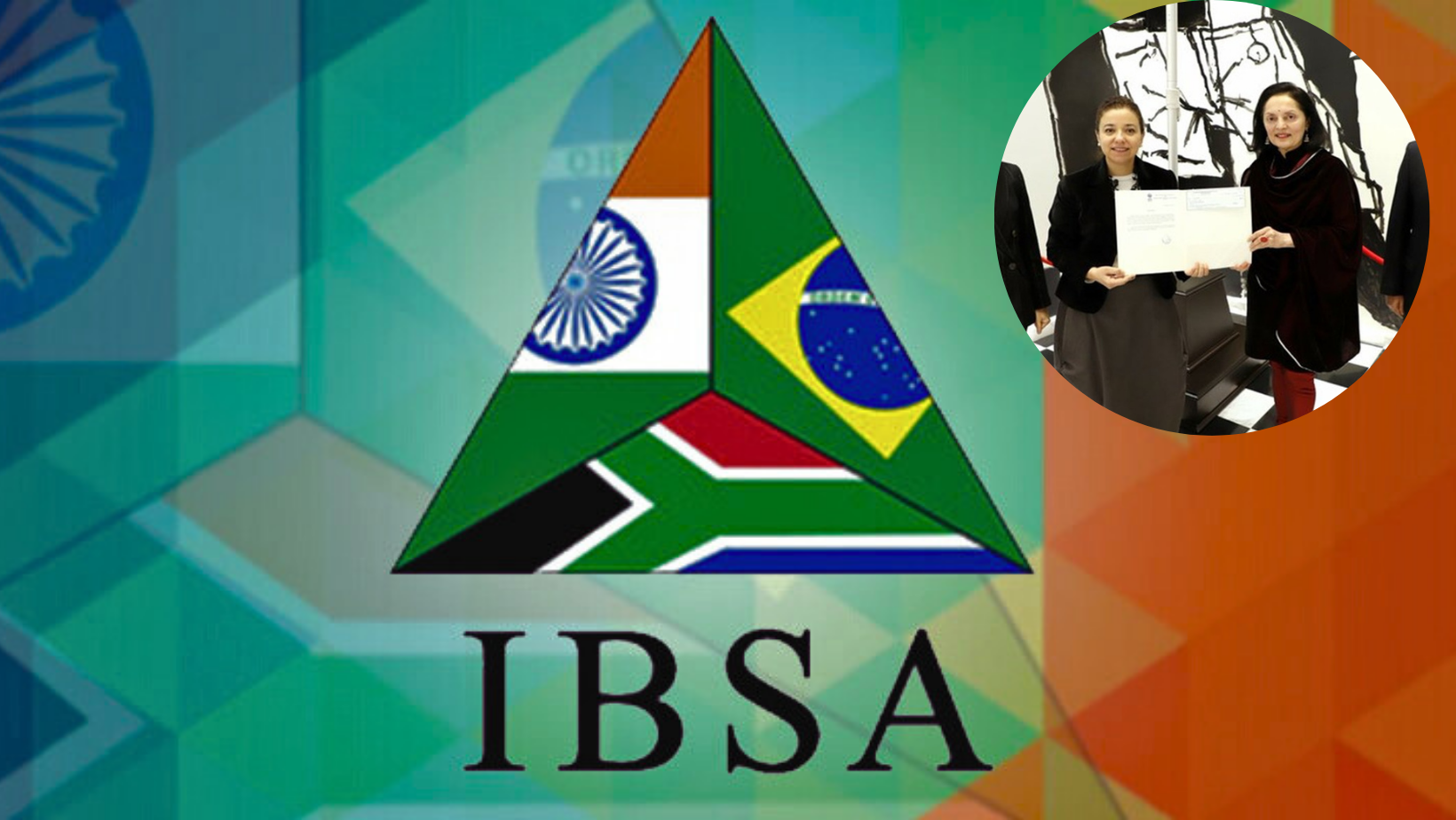
- 21 Feb 2024
Why is it in the News?
Recently, India has contributed 1 million US Dollars to the Poverty and Hunger Alleviation Fund established by India, Brazil, and South Africa, IBSA.
What is the IBSA Fund?
- Established in 2004 and operational since 2006, the IBSA Fund embodies the collaborative efforts of India, Brazil, and South Africa.
- Contributing one million dollars annually each, the IBSA countries unite in a spirit of partnership to champion Southern-led, demand-driven projects in developing nations.
- With a focus on identifying replicable and scalable initiatives, the fund aims to address pressing development challenges in recipient countries.
- Supported projects align with partner countries' national priorities and international development agendas, including the Sustainable Development Goals (SDGs).
- The fund's objectives encompass diverse areas such as promoting food security, combating HIV/AIDS, and expanding access to safe drinking water, among others, to advance sustainable development.
- To date, the IBSA Fund has allocated USD 50.6 million, funding 45 projects across 37 countries in the Global South.
- The United Nations Office for South-South Cooperation (UNOSSC) fulfils the roles of Fund Manager and Secretariat for the IBSA Fund.
What is IBSA?
- IBSA stands for the India, Brazil, and South Africa Dialogue Forum, a unique platform that unites three major democracies and significant economies from diverse continents, collectively addressing common challenges.
- Formally established as the IBSA Dialogue Forum during a historic meeting of the Foreign Ministers from India, Brazil, and South Africa in Brasilia on June 6, 2003, the forum's inception was marked by the issuance of the Brasilia Declaration.
- To date, five IBSA Leadership Summits have been convened, with the 5th Summit held in Pretoria on October 18, 2011.
- In 2021, India held the chairmanship of IBSA under the theme "Democracy for Demography and Development."
- On March 2, 2023, Brazil assumed the rotating presidency of the India, Brazil, South Africa Dialogue Forum (IBSA), further advancing the forum's collaborative agenda.
Global leaders converge in Delhi for Raisina Dialogue 2024
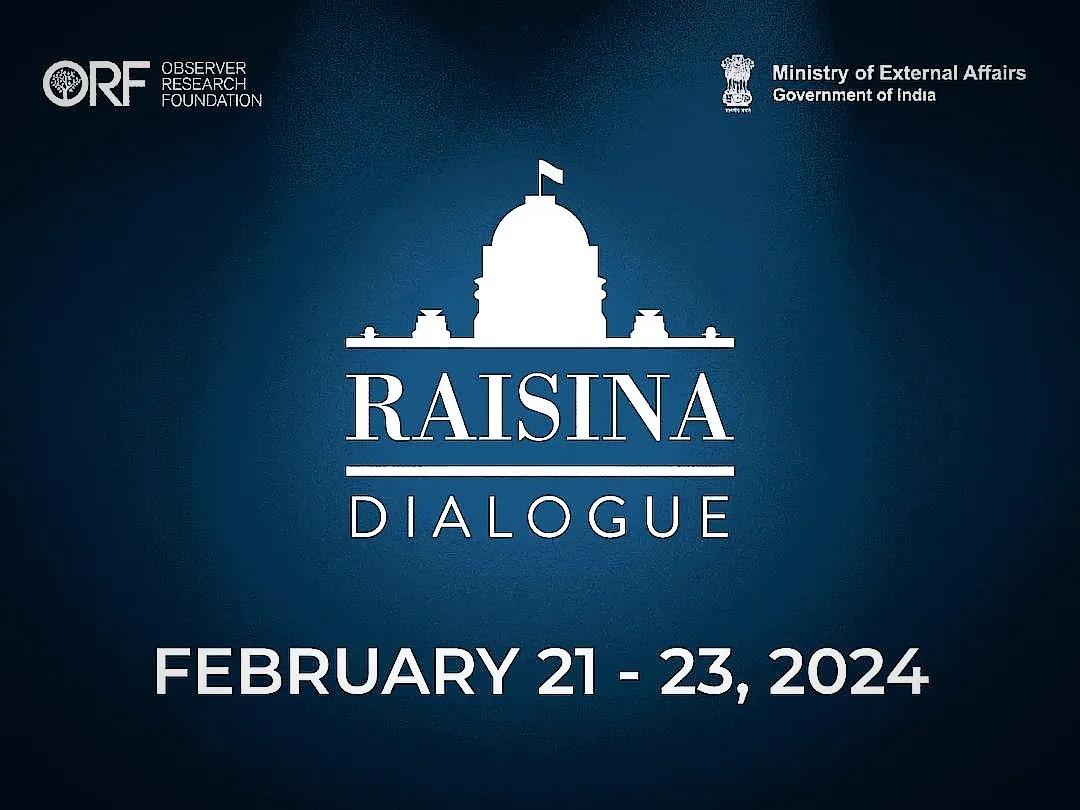
- 21 Feb 2024
Why is it in the News?
The ninth edition of the Raisina Dialogue will be held from today till Friday (February 23) in New Delhi.
What is the Raisina Dialogue?
- The Raisina Dialogue is India’s premier conference on geopolitics and geoeconomics committed to addressing the most challenging issues facing the global community.
- Every year, leaders in politics, business, media, and civil society converge in New Delhi to discuss the state of the world and explore opportunities for cooperation on a wide range of contemporary matters.
- The Dialogue is structured as a multi-stakeholder, cross-sectoral discussion, involving heads of state, cabinet ministers and local government officials, who are joined by thought leaders from the private sector, media and academia.
- The conference is hosted by the Observer Research Foundation in partnership with the Ministry of External Affairs, Government of India.
- This effort is supported by a number of institutions, organisations and individuals, who are committed to the mission of the conference.
- The theme of the 2024 edition is “Chaturanga: Conflict, Contest, Cooperate, Create”.
- During the three-day conference, the participants will engage with each other over six “thematic pillars”. These include:
- Tech Frontiers: Regulations & Realities
- Peace with the Planet: Invest & Innovate
- War & Peace: Armouries & Asymmetries
- Decolonising Multilateralism: Institutions & Inclusion
- The Post 2030 Agenda: People & Progress; and
- Defending Democracy: Society & Sovereignty.
India, and ASEAN discuss the review of the trade agreement
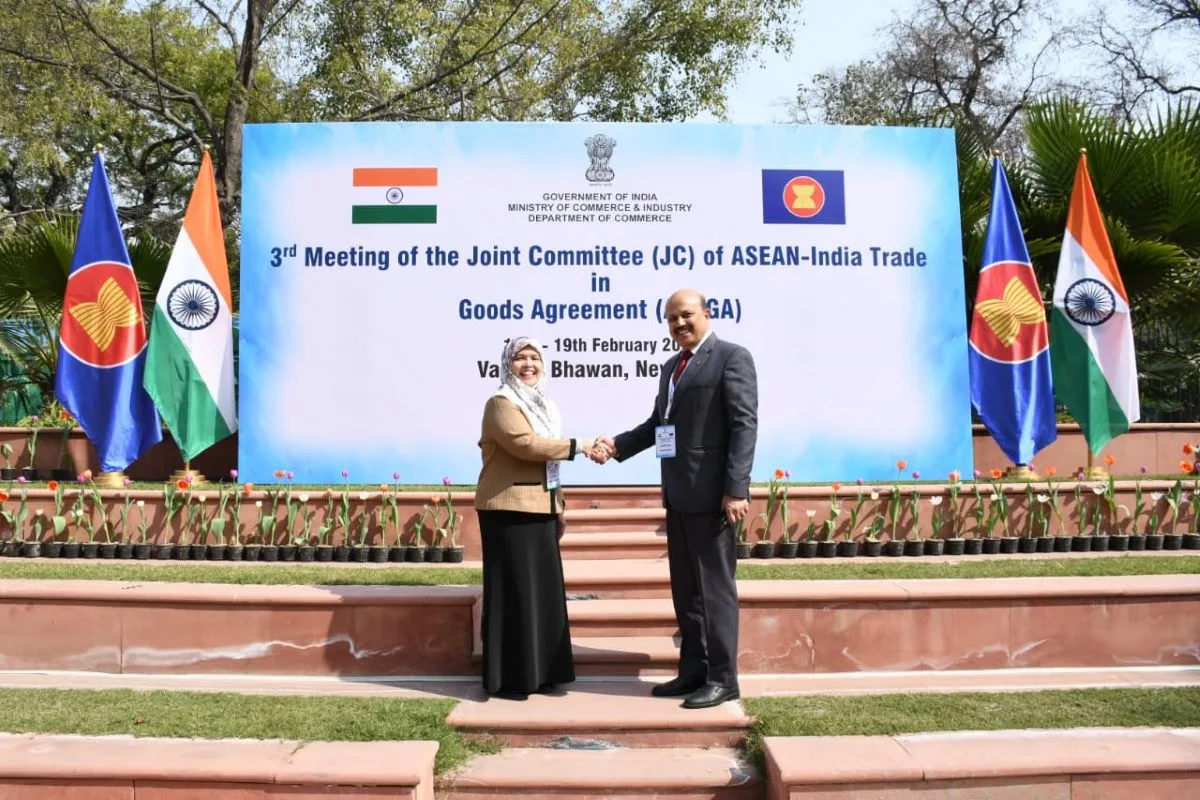
- 20 Feb 2024
Why is it in the News?
India hosted the 3rd meeting of the AITIGA Joint Committee, which focused on reviewing the ASEAN-India Trade in Goods Agreement at Vanijya Bhawan in New Delhi from February 16th to 19th, 2024.
About the ASEAN-India Trade in Goods Agreement (AITIGA):
- The ASEAN-India Trade in Goods Agreement (AITIGA) is a trade deal between the ten member states of ASEAN and India.
- ASEAN and India signed the Agreement at the 7th ASEAN Economic Ministers-India Consultations in Bangkok, Thailand in 2009.
- The Agreement, which came into effect in 2010, is sometimes referred to as the ASEAN-India Free Trade Agreement.
- The Agreement originated out of the Framework Agreement on Comprehensive Economic Cooperation between India and ASEAN created in 2003.
- The Framework Agreement laid a sound basis for the establishment of an ASEAN-India Free Trade Area (FTA), which includes FTA in goods, services and investment.
- The Agreement has led to steadily increasing trade between ASEAN and India since its signing.
- In 2019-20, trade between India and ASEAN was worth US$86 billion.
About ASEAN:
- The Association of Southeast Asian Nations, or ASEAN is an intergovernmental organization of ten Southeast Asian countries:
- Brunei, Cambodia, Indonesia, Laos, Malaysia, Myanmar, the Philippines, Singapore, Thailand, and Vietnam.
- ASEAN's primary objectives are to promote political and economic cooperation and regional stability among its member states.
- The organization operates on the principles of mutual respect, non-interference in internal affairs, and consensus-building. ASEAN's motto, "One Vision, One Identity, One Community," underscores its commitment to fostering unity and solidarity among Southeast Asian nations.
- Economically, ASEAN has made significant strides towards integration through initiatives like the ASEAN Economic Community (AEC), aimed at creating a single market and production base.
- This has facilitated trade, investment, and economic development within the region.
- Additionally, ASEAN serves as a platform for dialogue and cooperation on a wide range of issues, including security, environmental sustainability, cultural exchange, and disaster management.
BSNL floats Rs 65,000 crore tender for phase-III BharatNet project
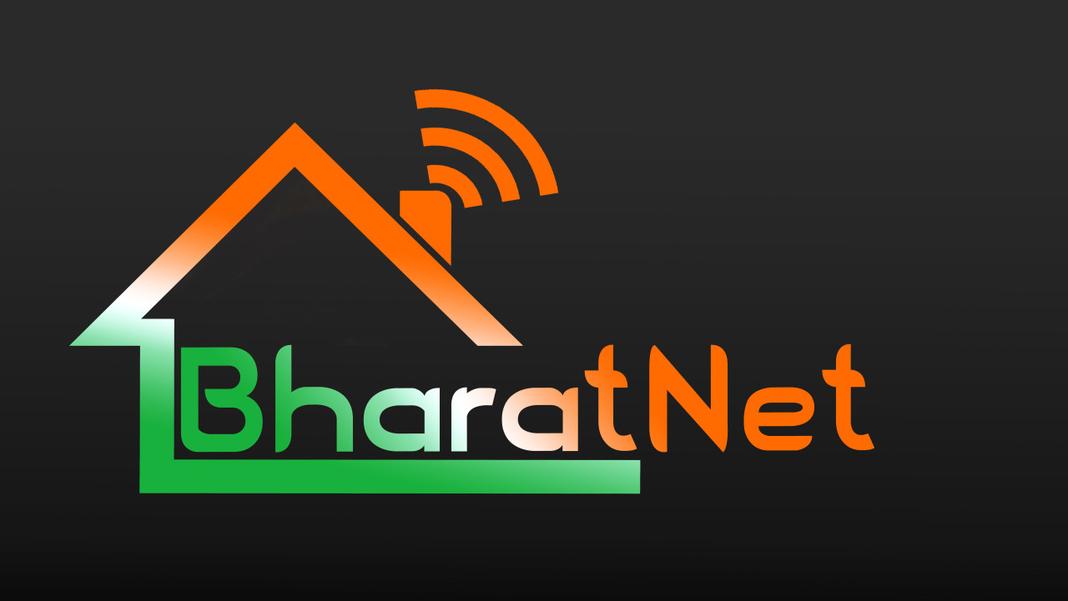
- 20 Feb 2024
Why is it in the News?
BSNL, the state-owned telecommunications company, has initiated a tender process amounting to approximately Rs 65,000 crore for the implementation of the phase-III BharatNet project.
What is the BharatNet Phase III Project?
- The BharatNet phase-III project adopts a three-level architecture:
- Internet leased line bandwidth
- Middle-mile connectivity, and
- Last-mile connectivity
- It aims to involve village-level entrepreneurs or Udyamis in providing last-mile connectivity to households on a revenue-sharing basis.
- BSNL aims to provide 15 million home fibre connections over five years using the BharatNet Udyami model.
About BharatNet Project:
- The BharatNet Project is one of the largest rural telecom projects in the world.
- It aimed at providing broadband connectivity to all Gram Panchayats across India in a phased manner.
- Its core objective is to ensure equitable access to broadband services for all telecom service providers, fostering the deployment of services like e-health, e-education, and e-governance in rural and remote areas.
- Initiated in 2011 and executed by Bharat Broadband Network Limited (BBNL), a Special Purpose Vehicle established in 2012, the project operates in three phases.
- Phase I launched in 2011, focused on creating the National Optical Fibre Network, leveraging existing infrastructure and laying additional fibre to bridge connectivity gaps up to the Gram Panchayat level.
- Phase II, approved in 2017, builds upon Phase I’s experiences, aligning with the Digital India vision.
- It adopts a flexible approach, integrating various media such as Optical Fibre Cable (OFC), Radio, and satellite to connect Gram Panchayats, utilizing models like State-led, Private Sector, and CPSU Models for implementation.
- Phase III, spanning from 2019 to 2023, aims to establish a robust, future-ready network with district-to-block fibre connectivity, featuring ring topology for redundancy.
- This comprehensive approach ensures the creation of a resilient and inclusive telecom infrastructure, facilitating socio-economic development in rural India.
